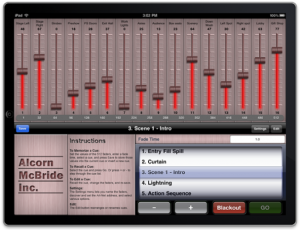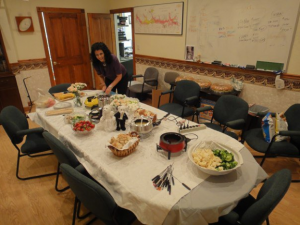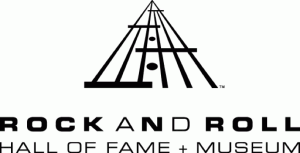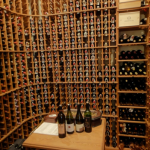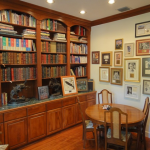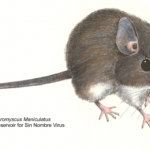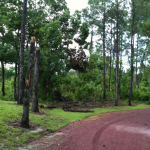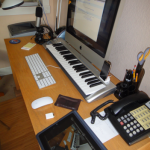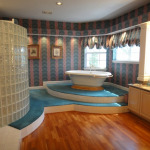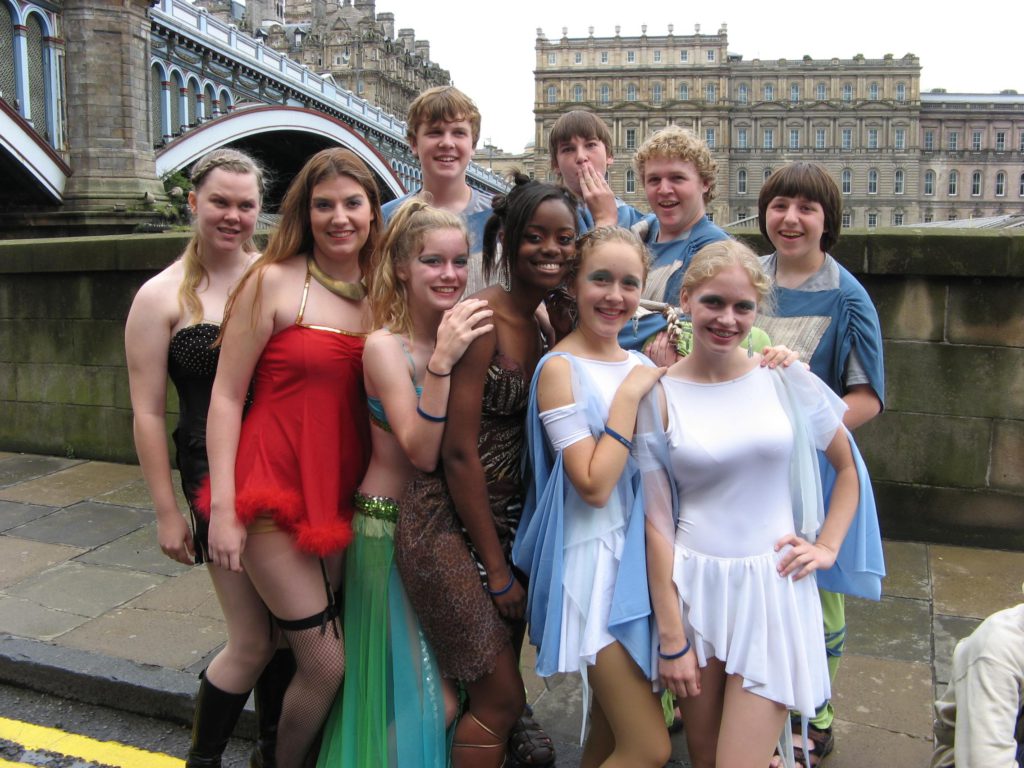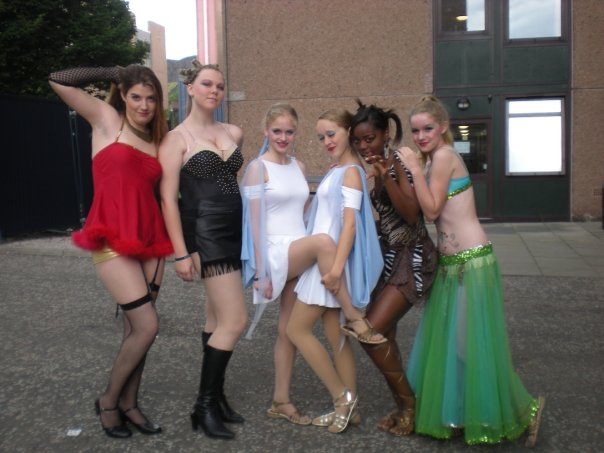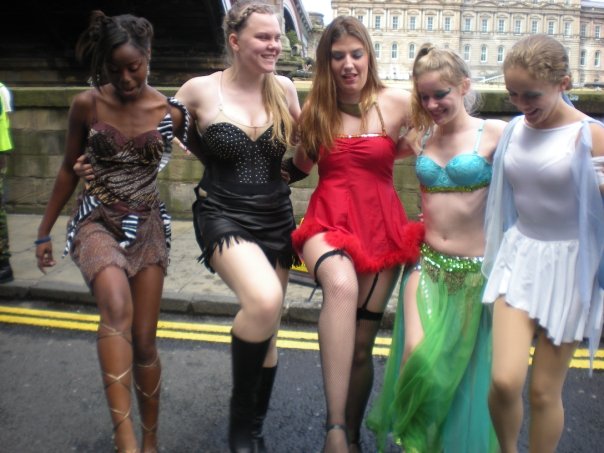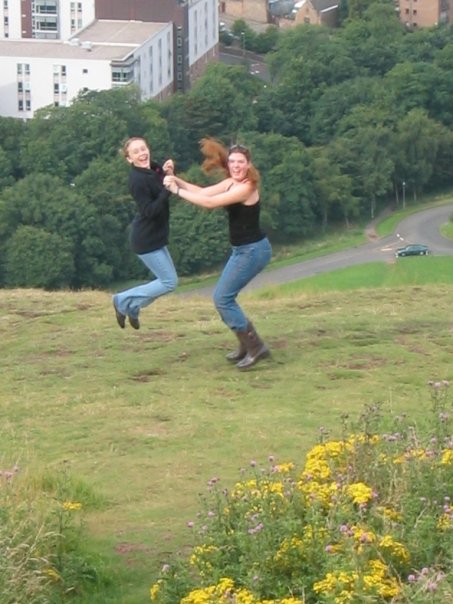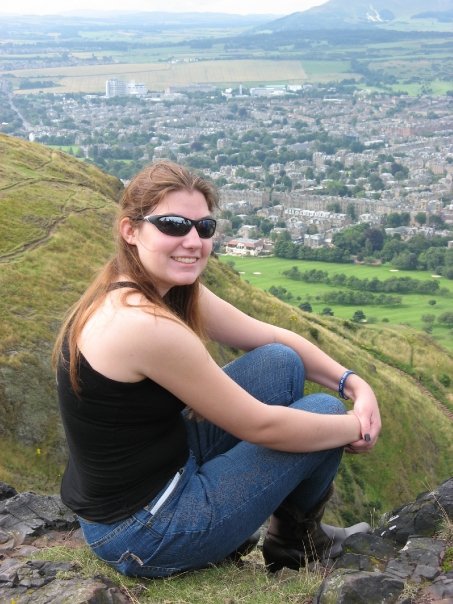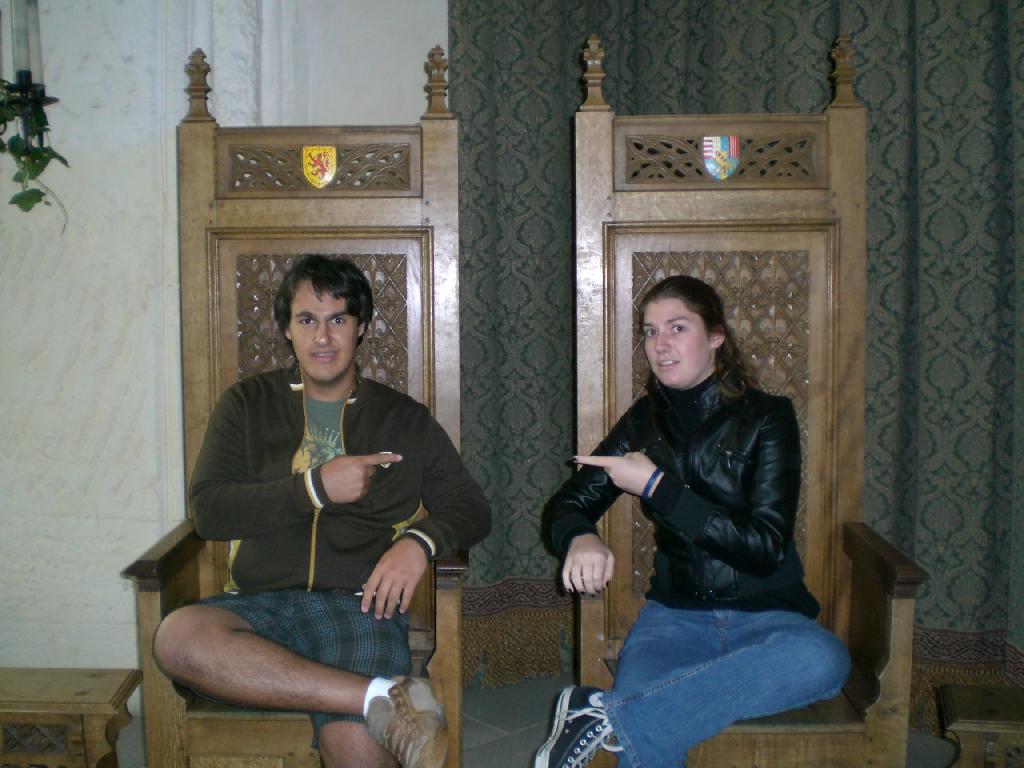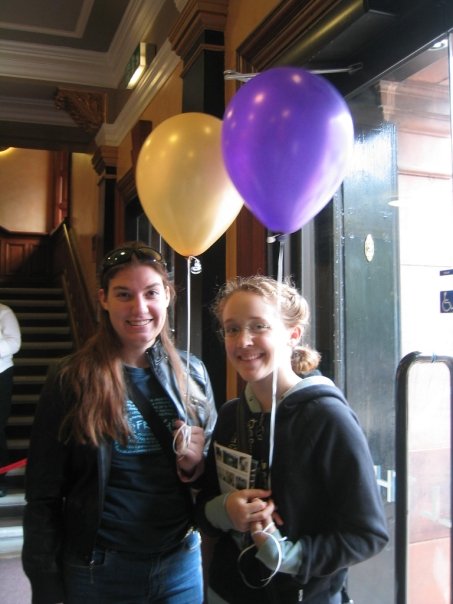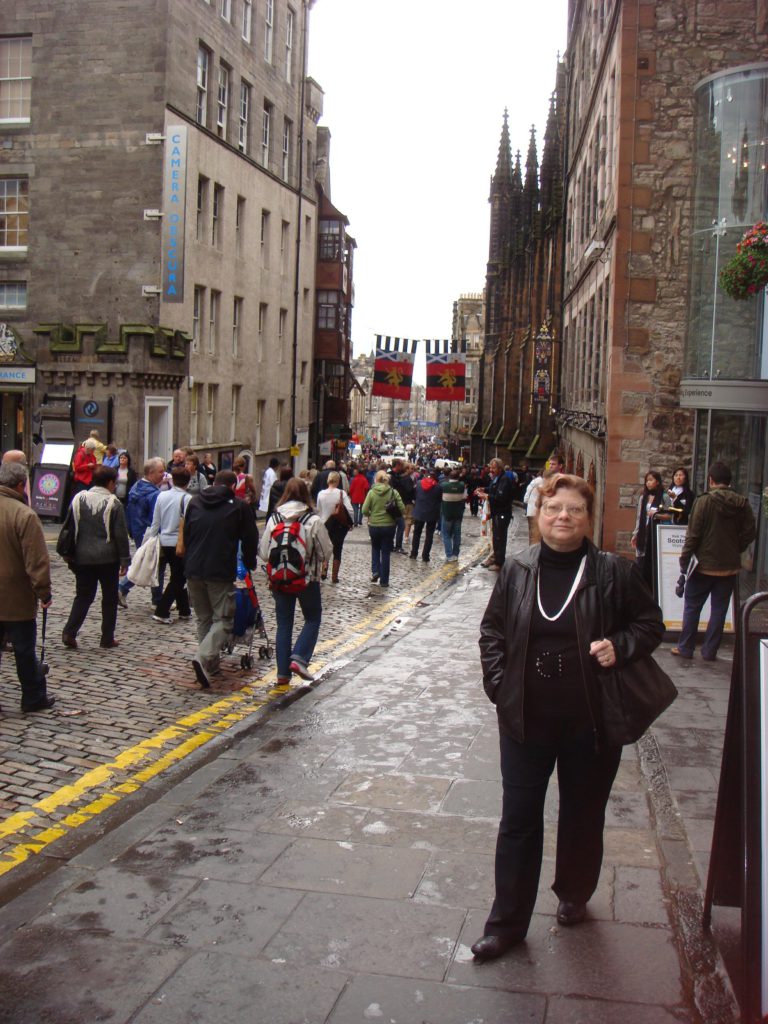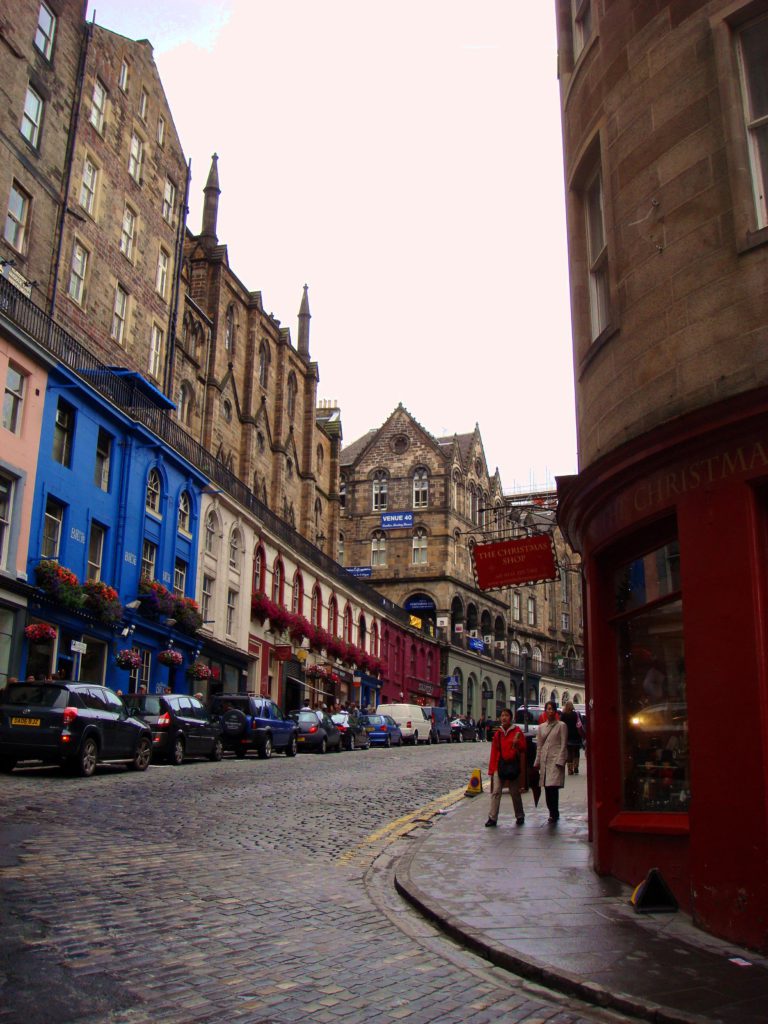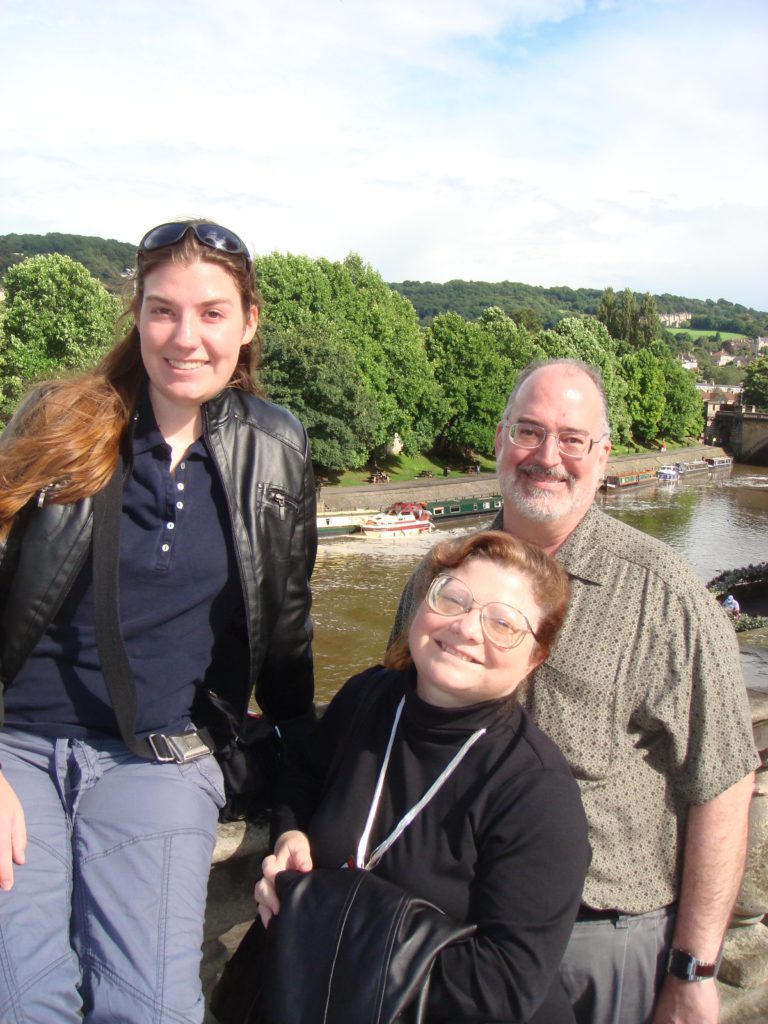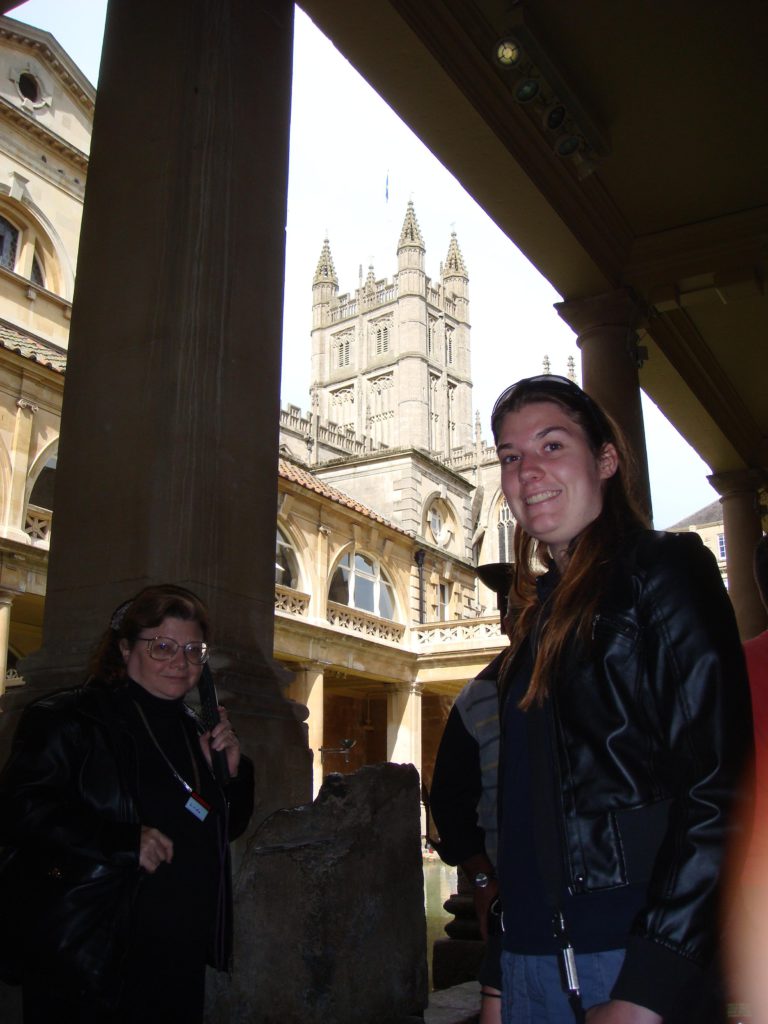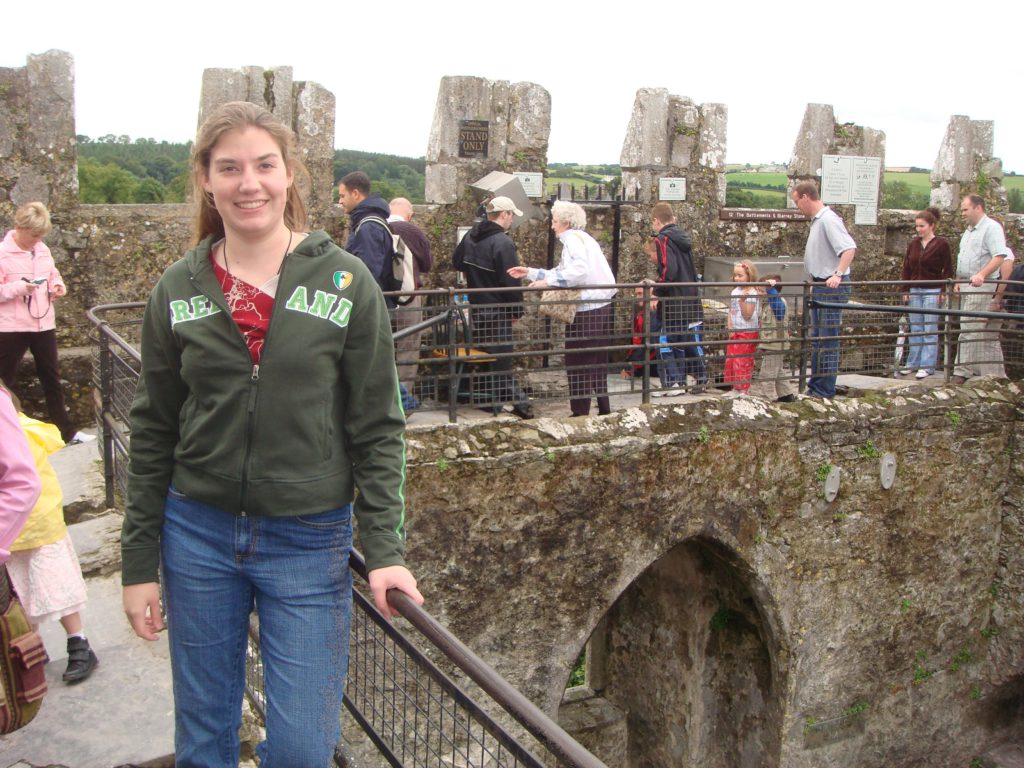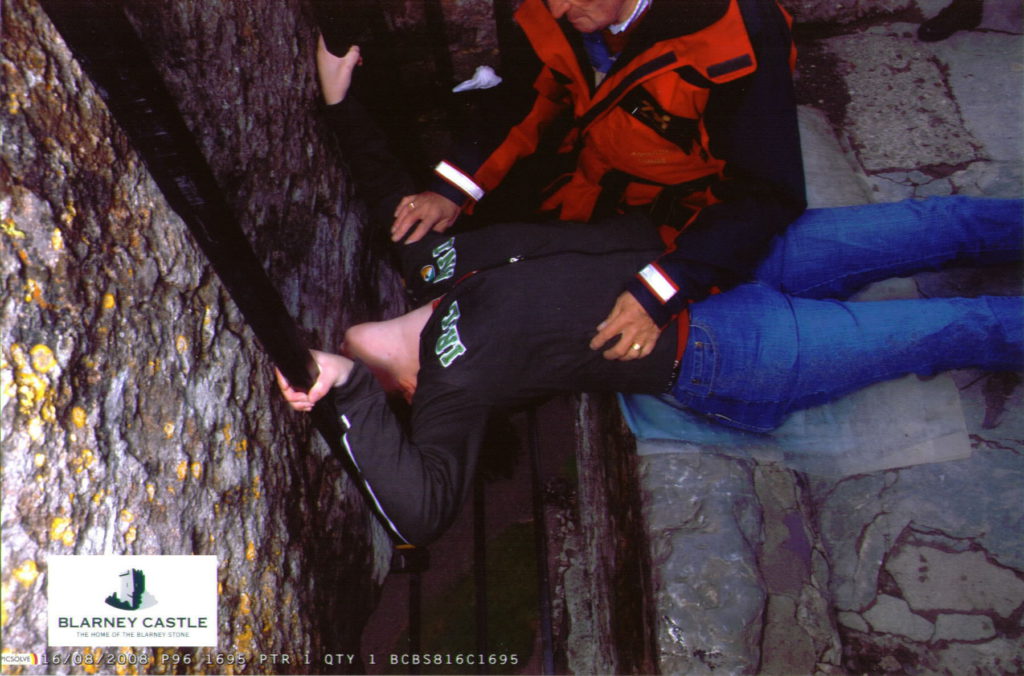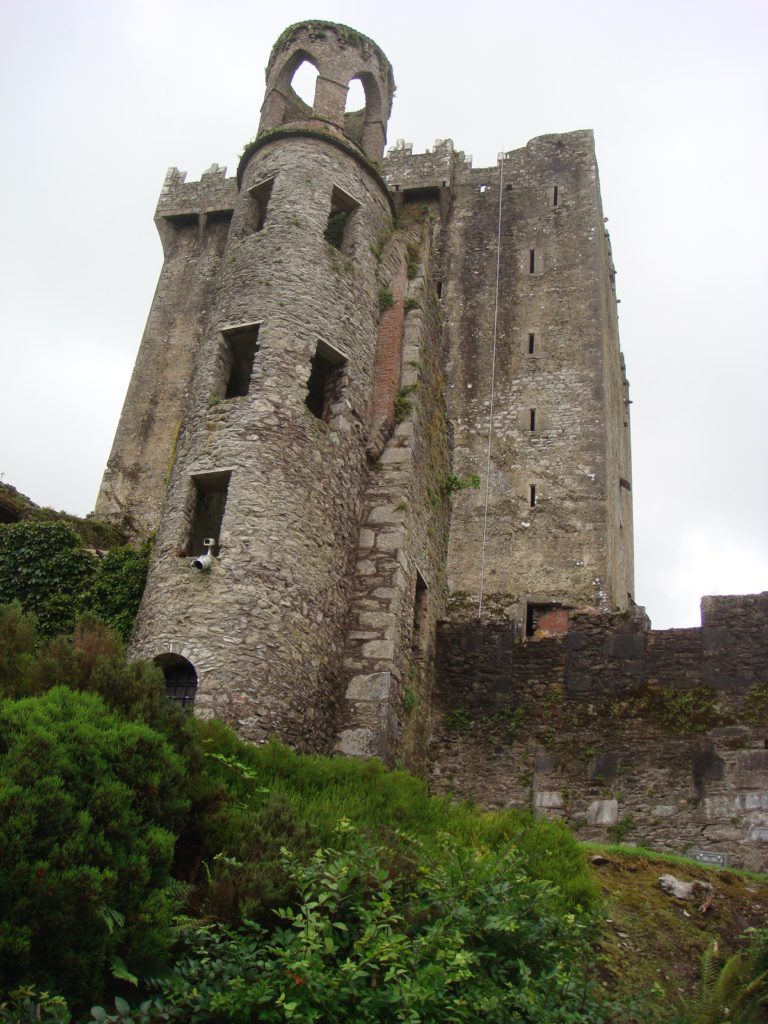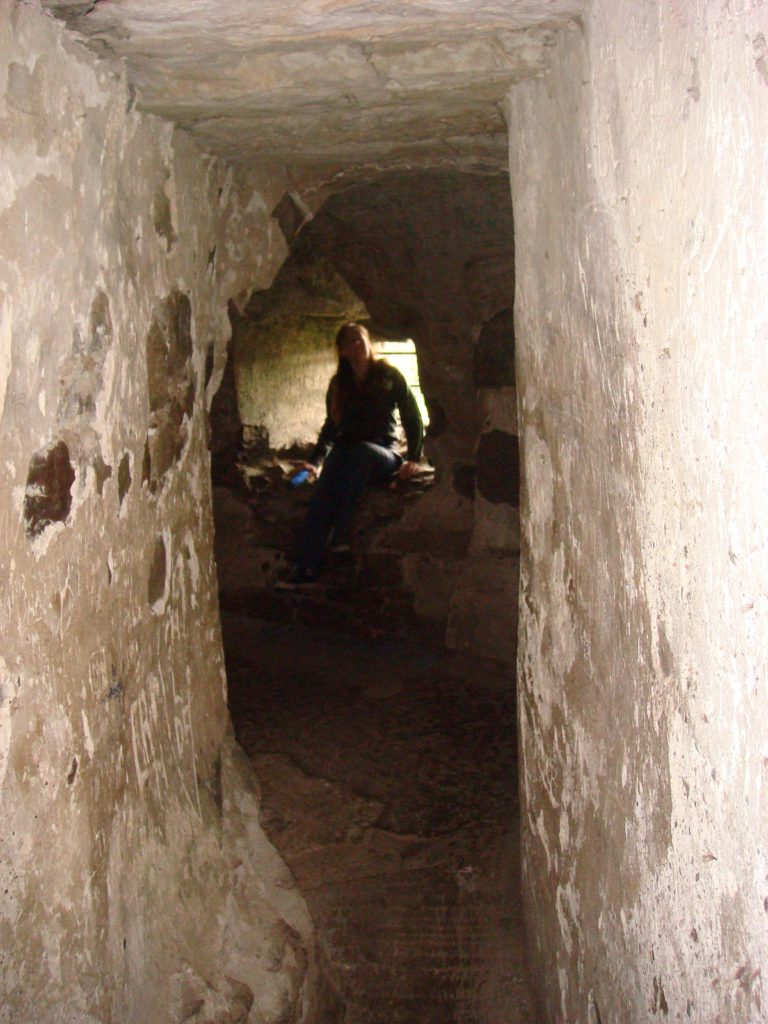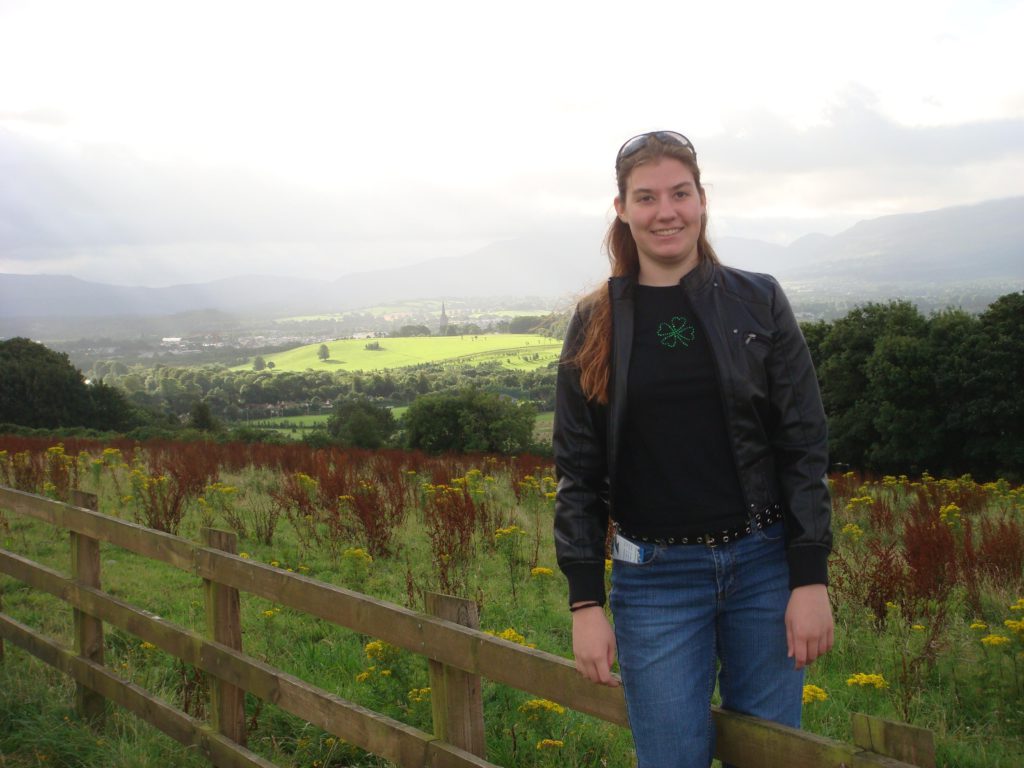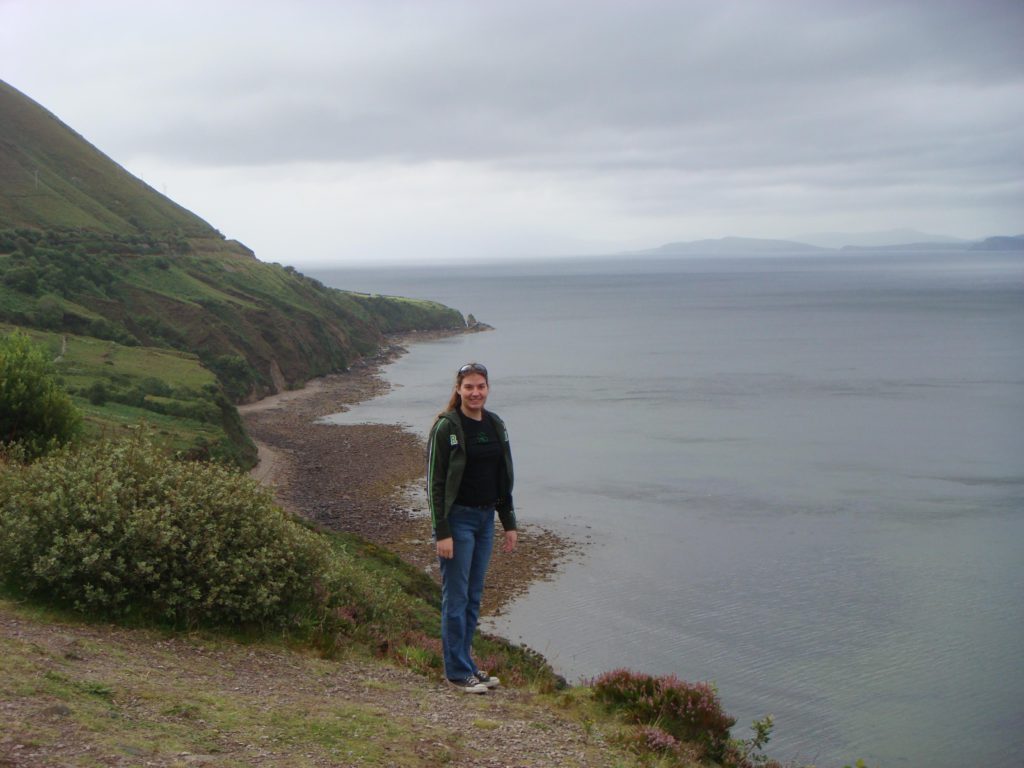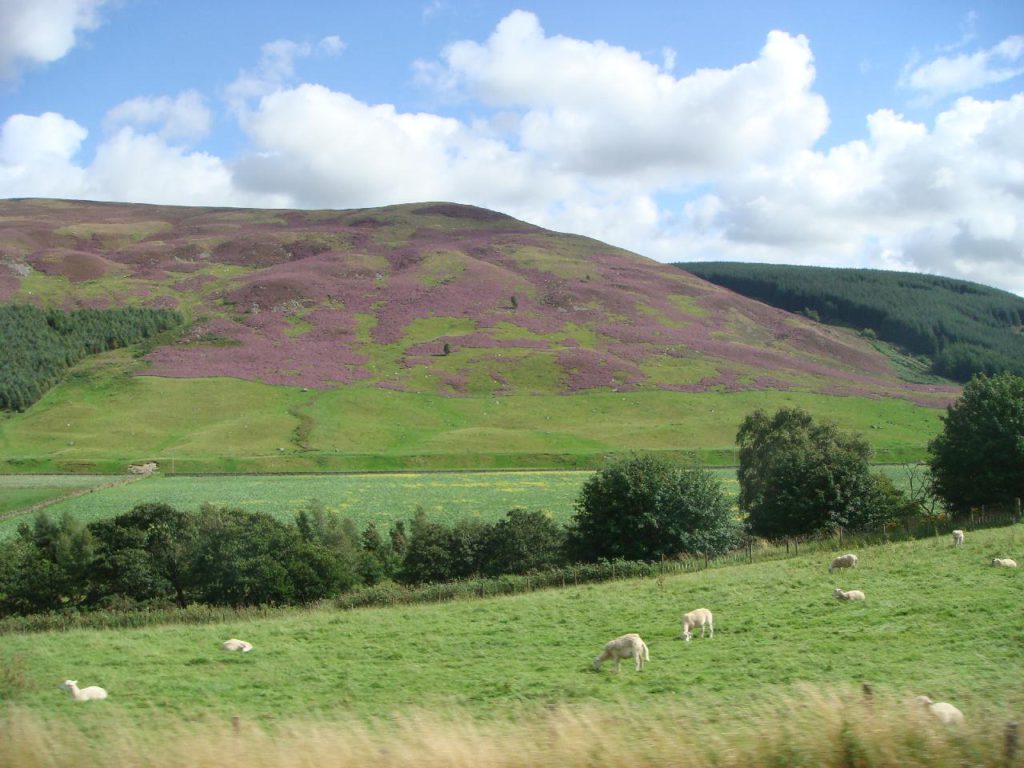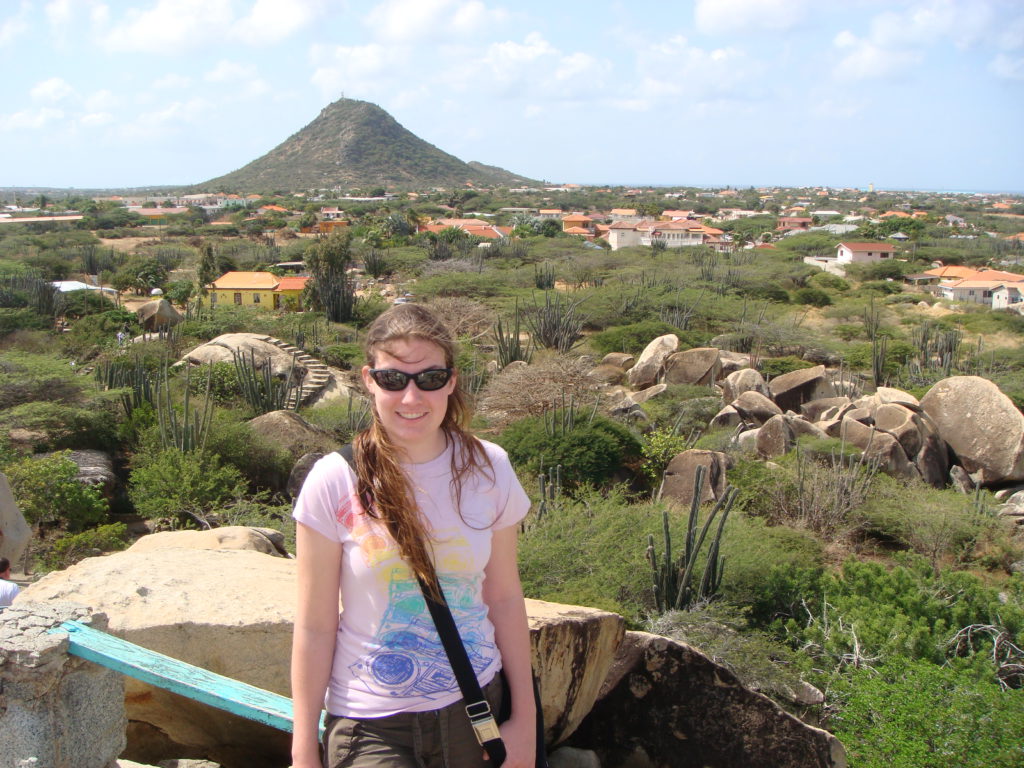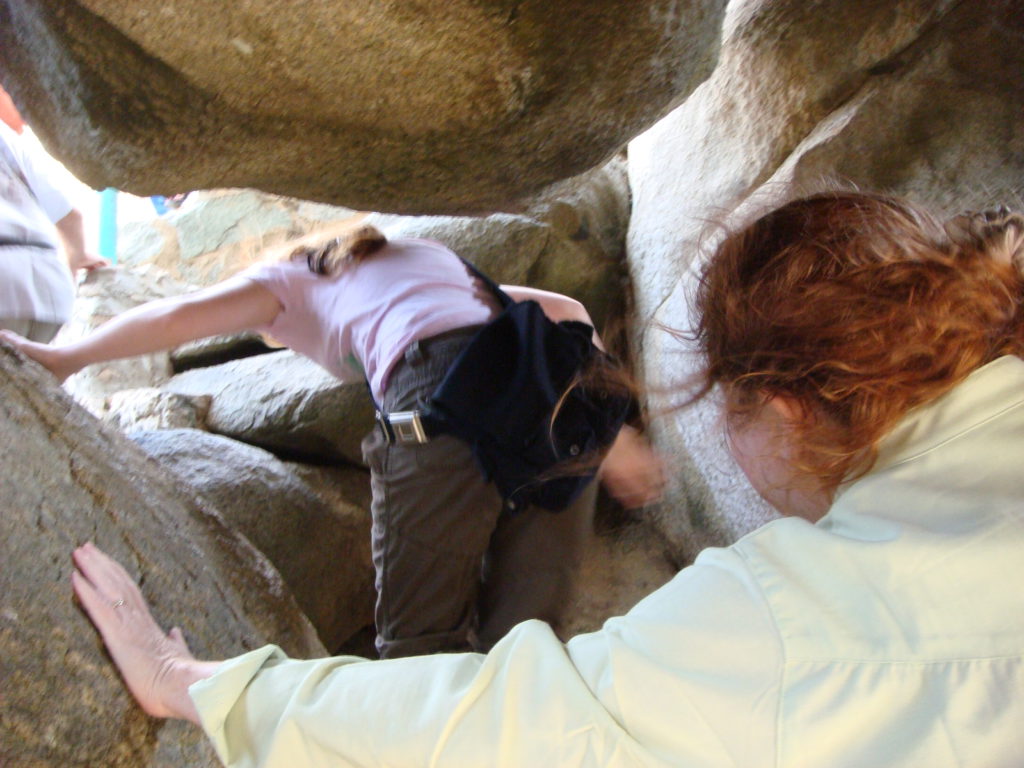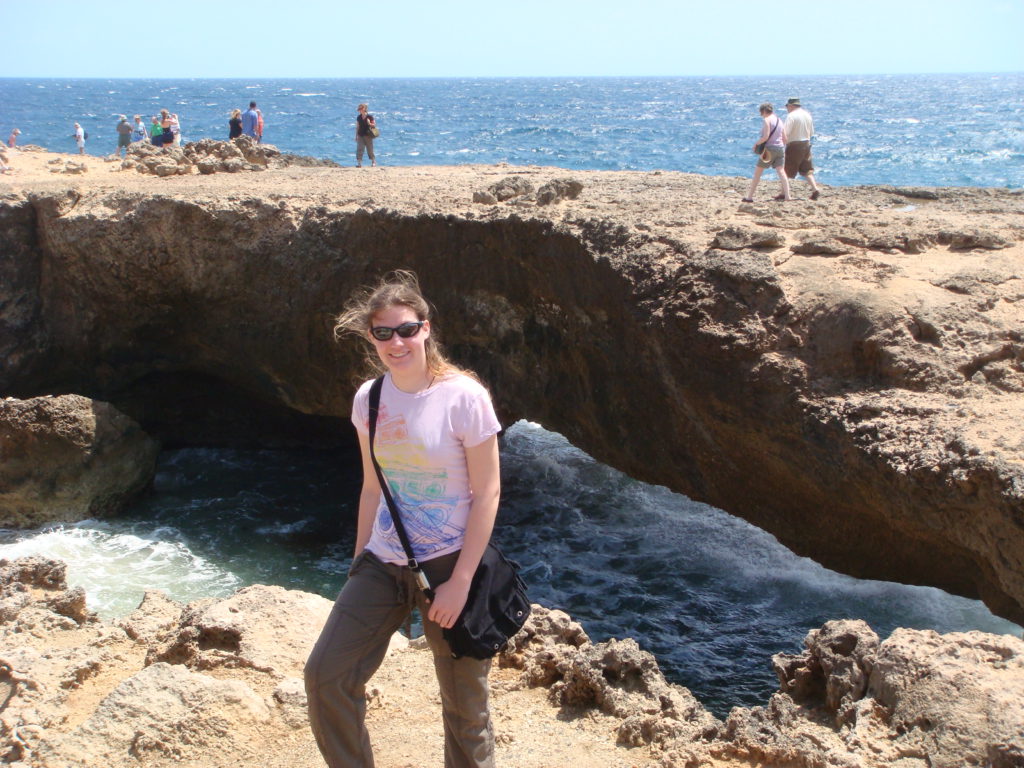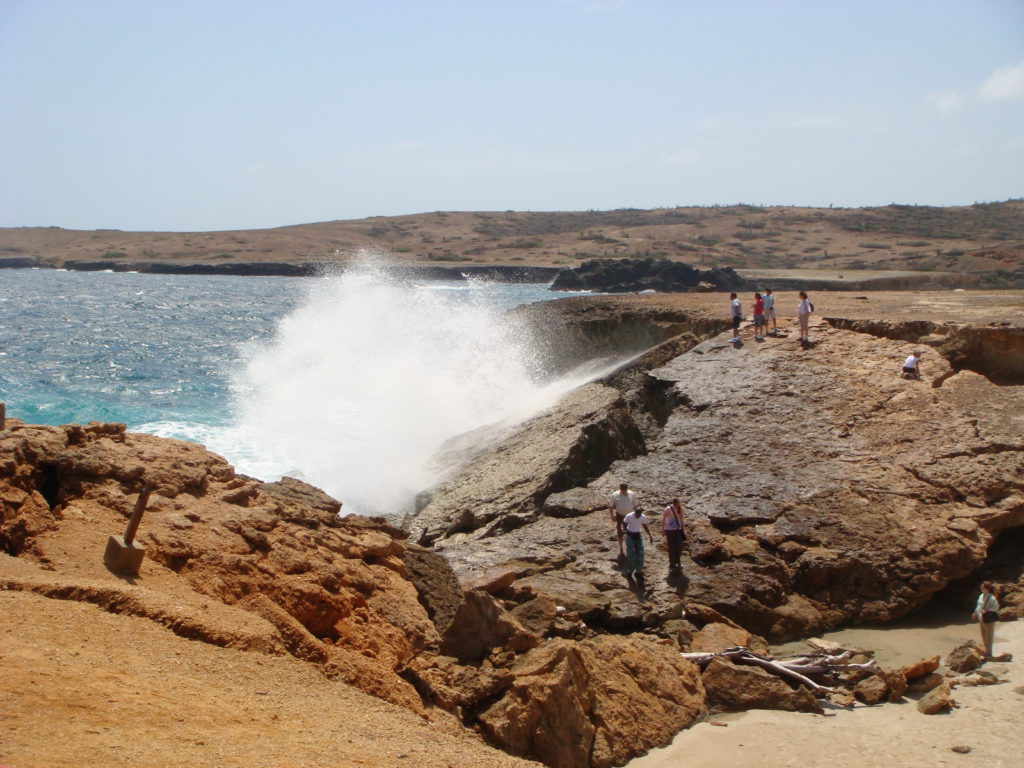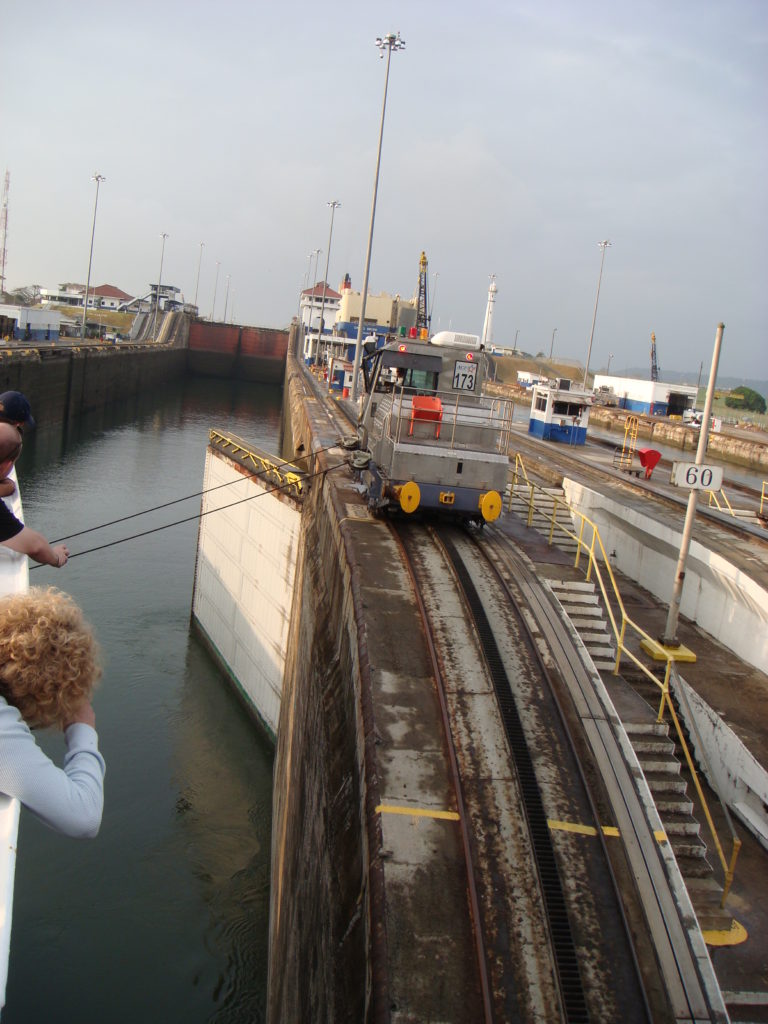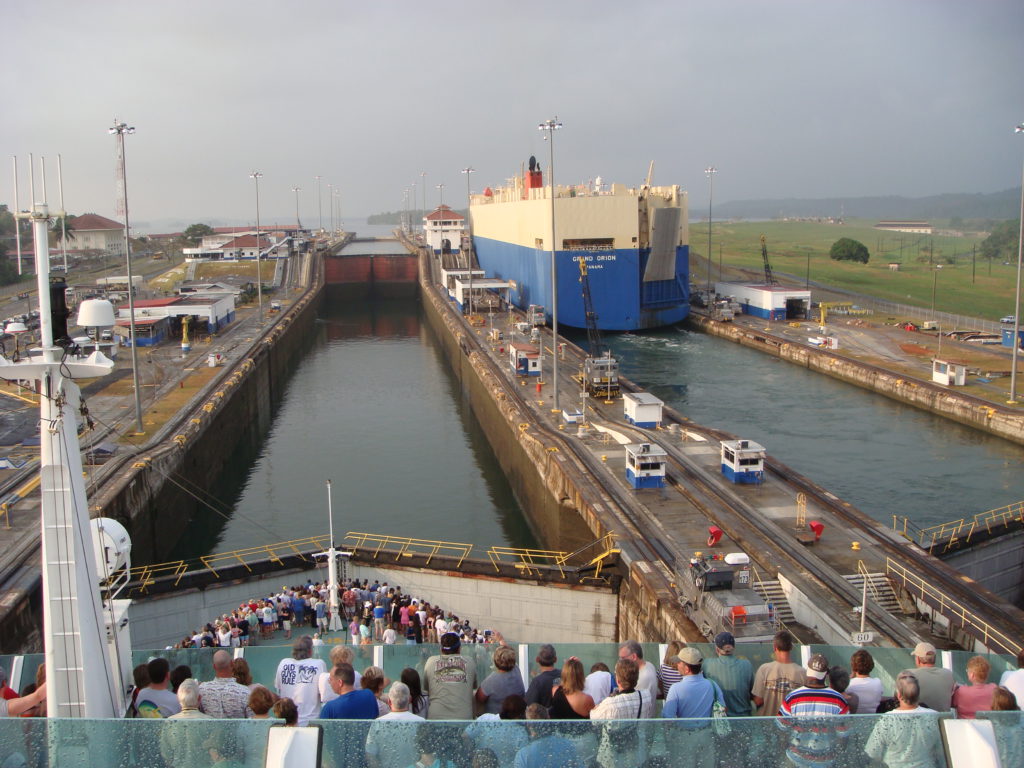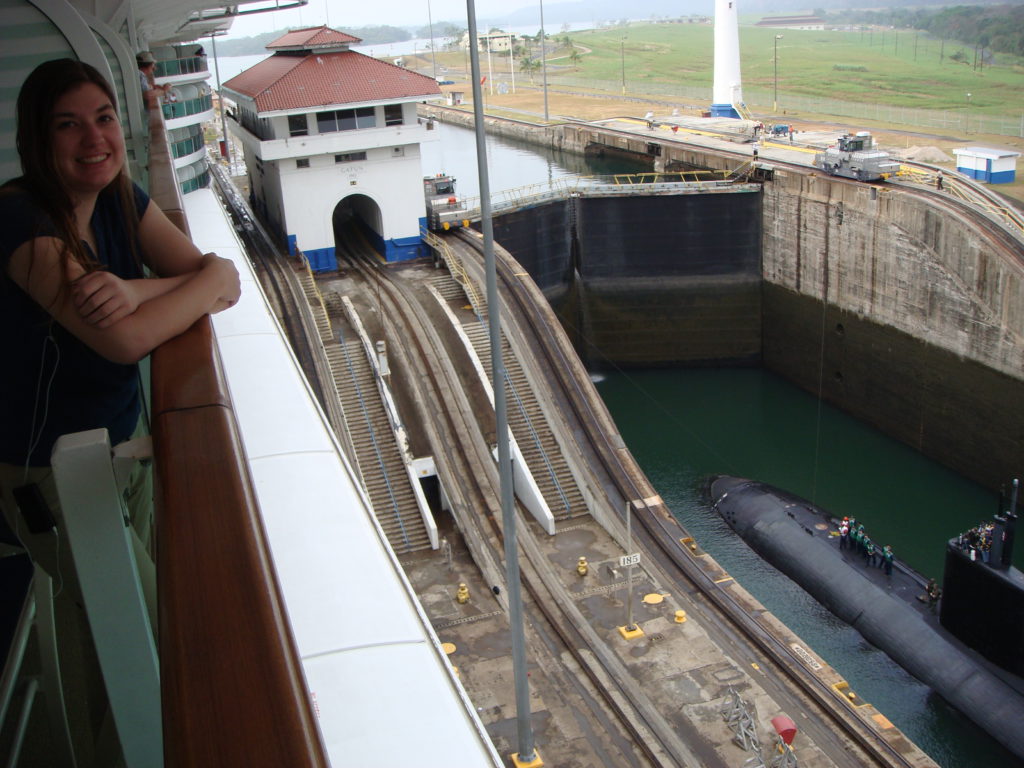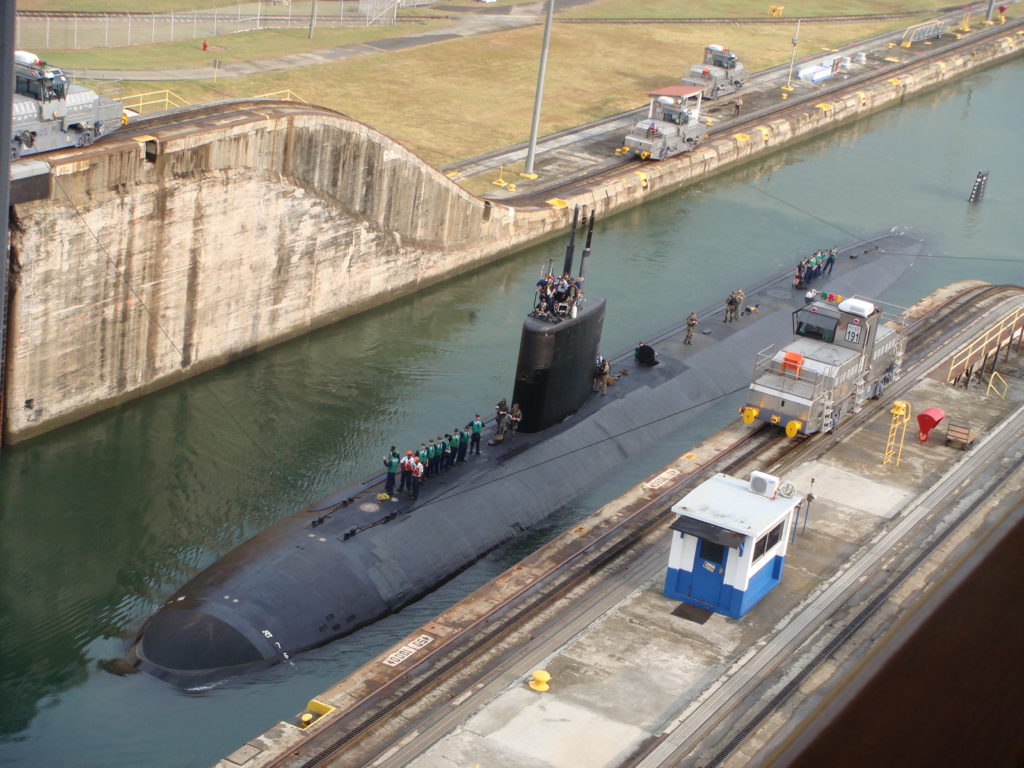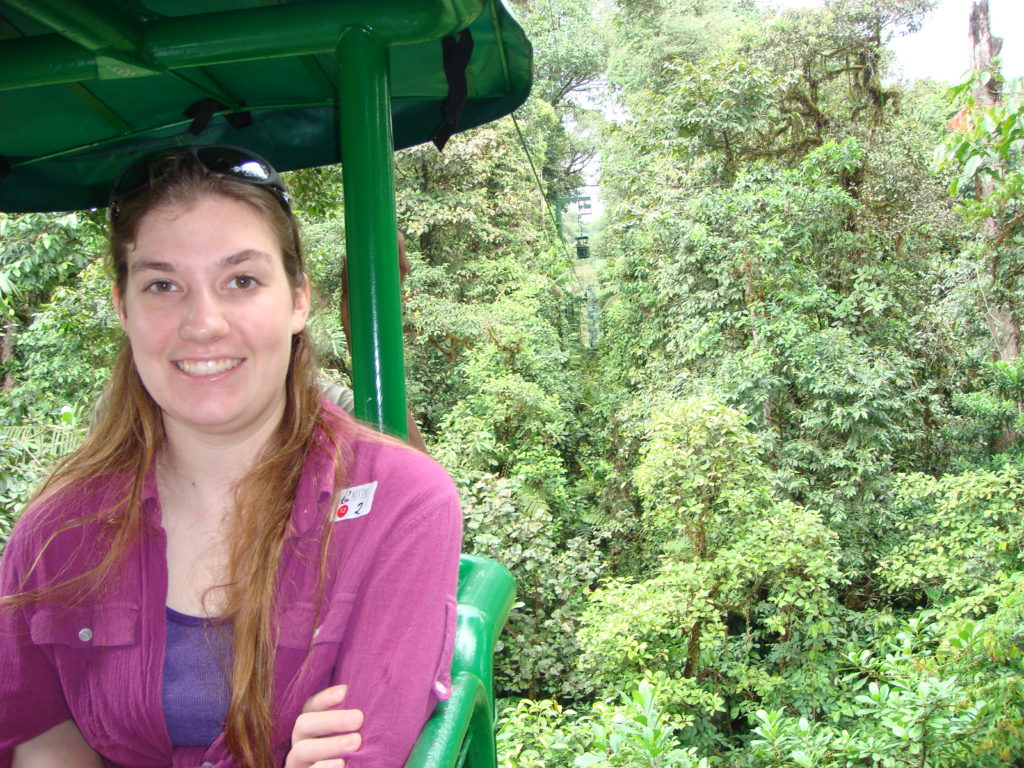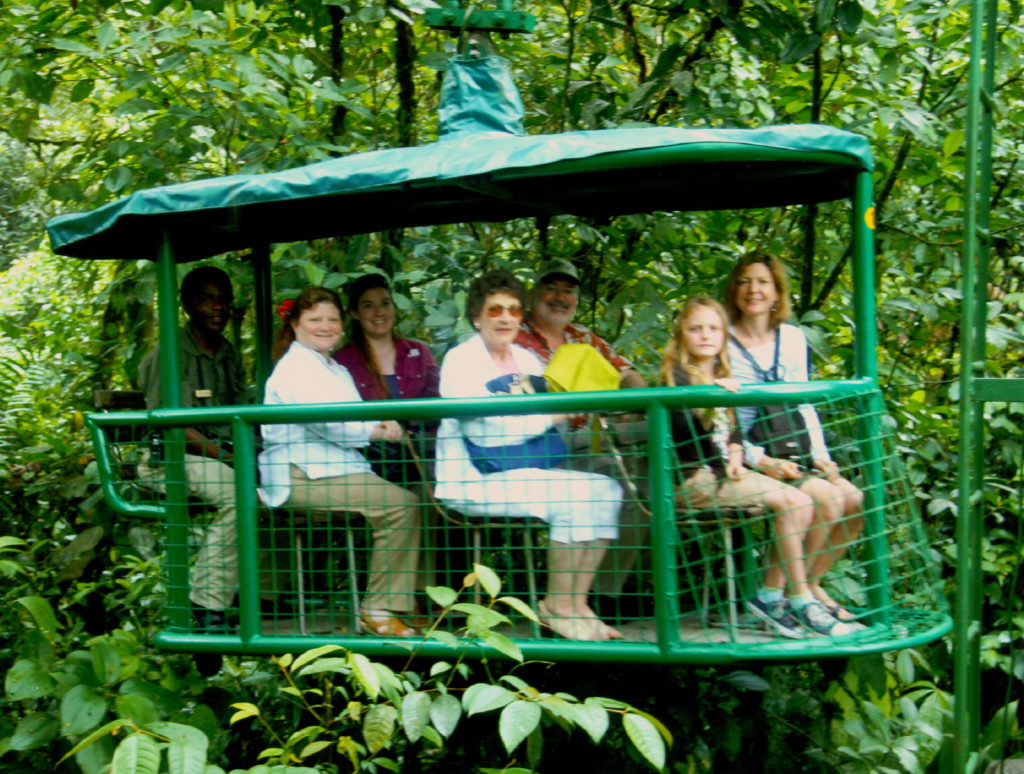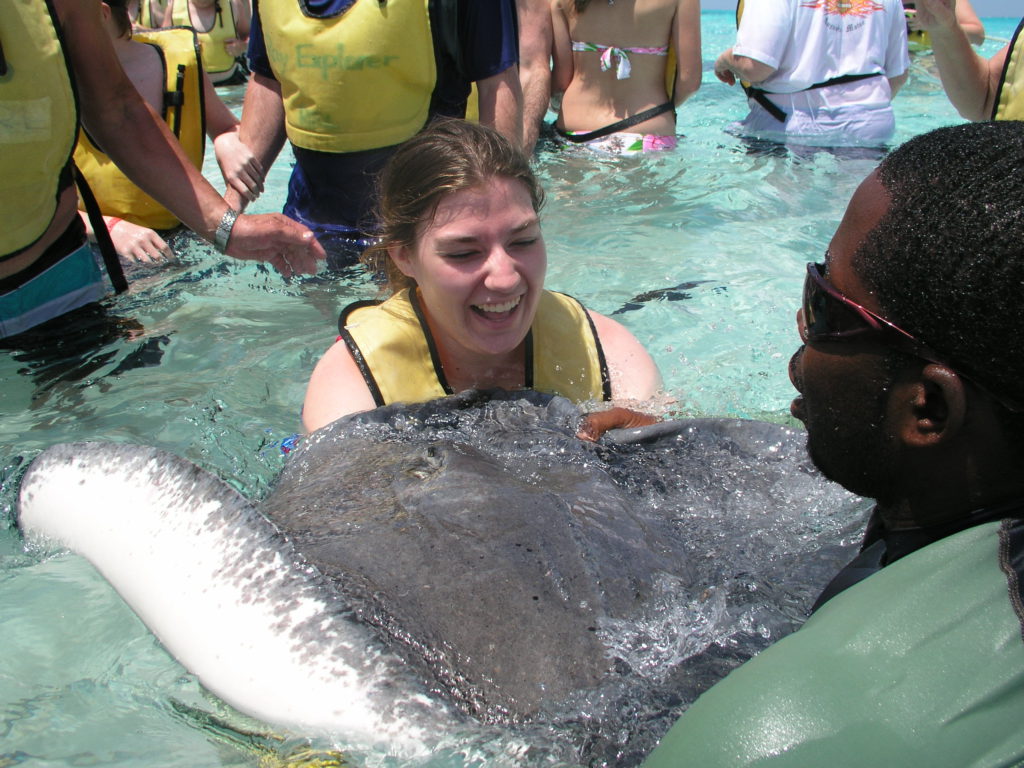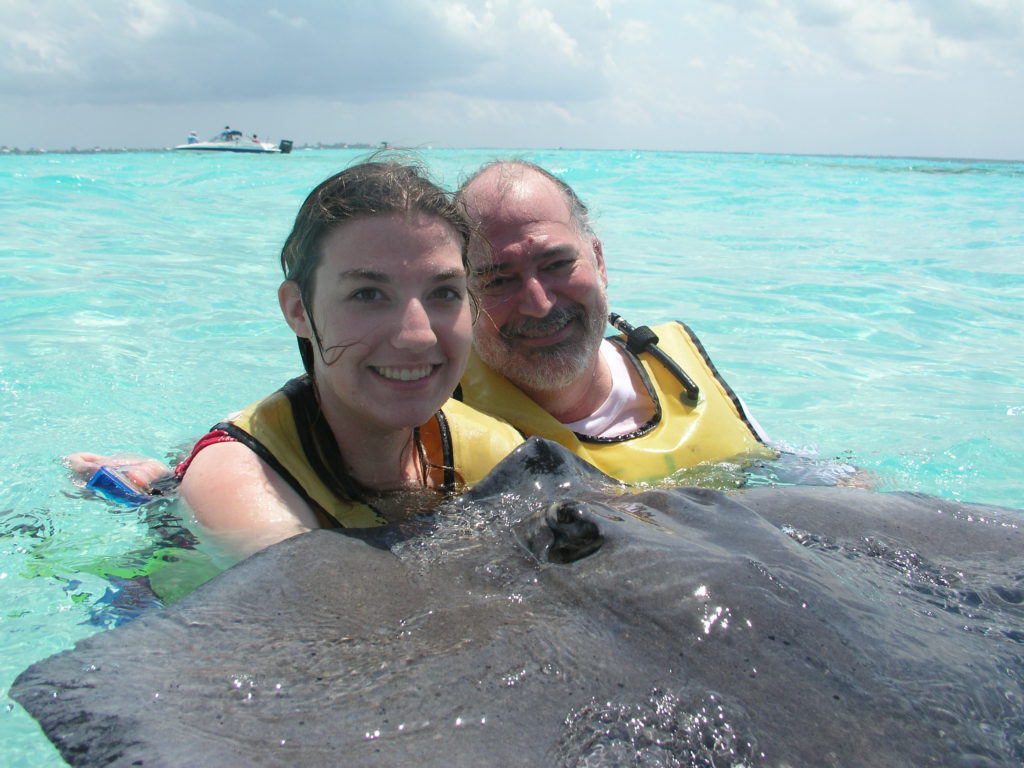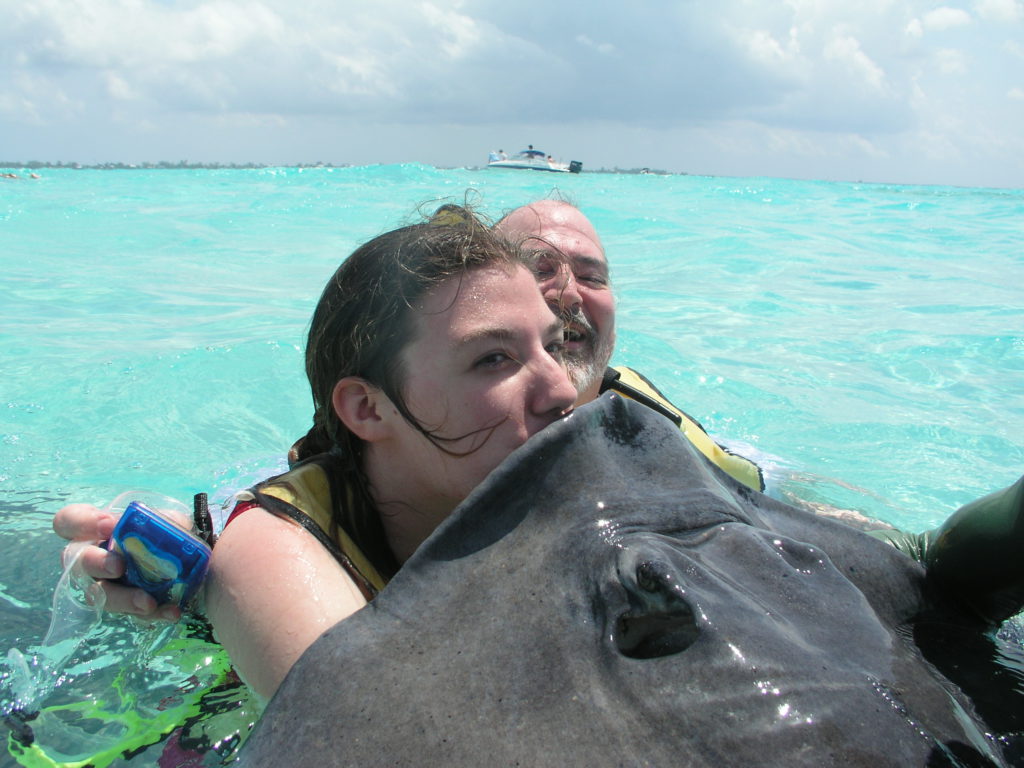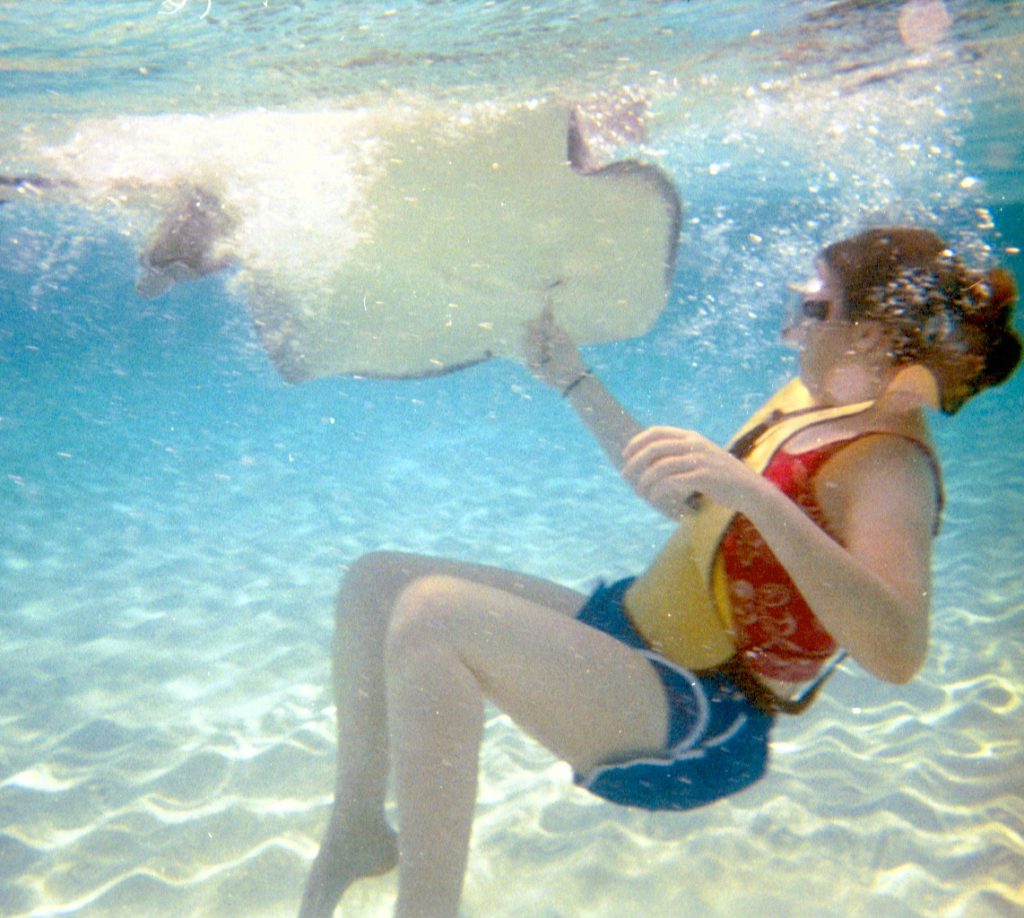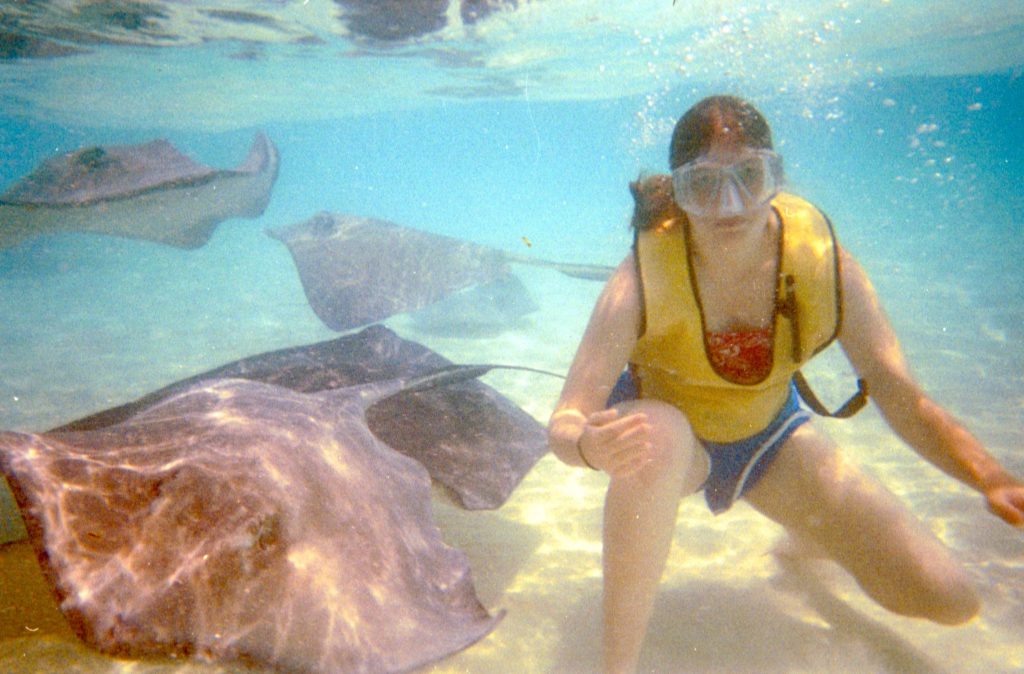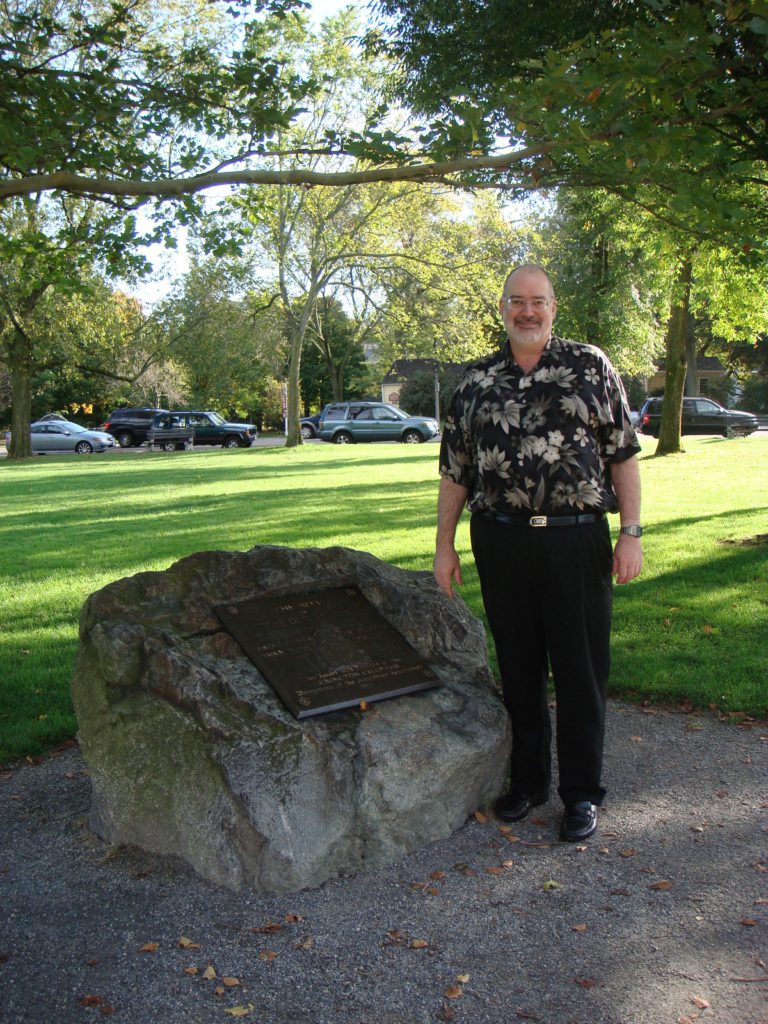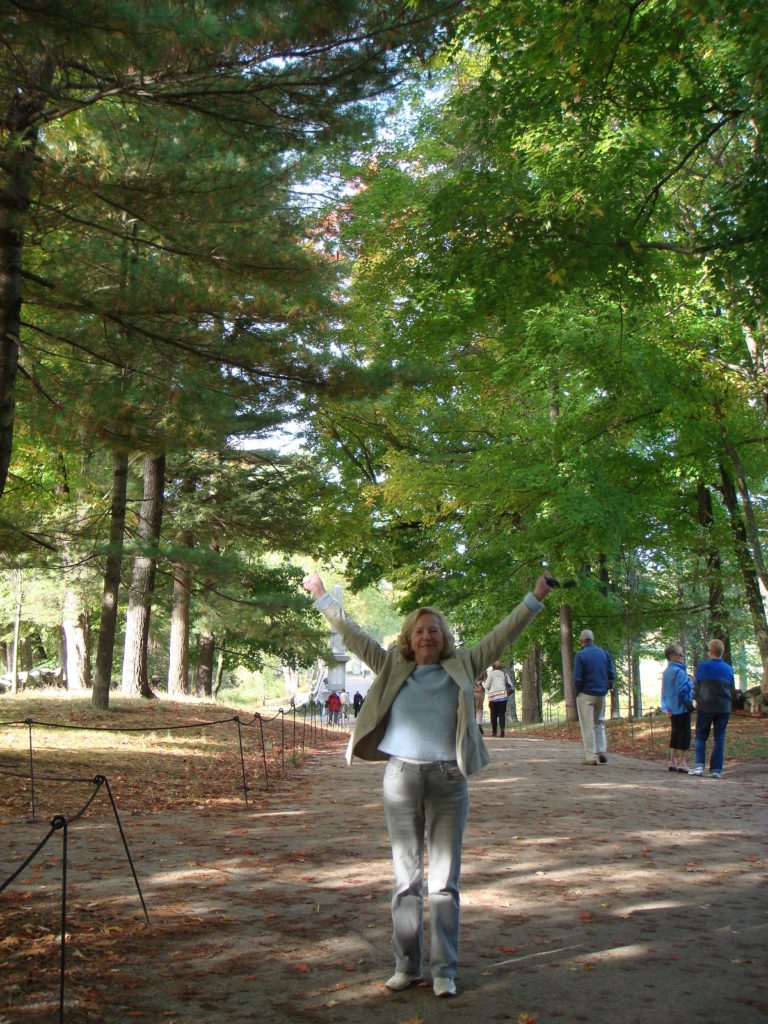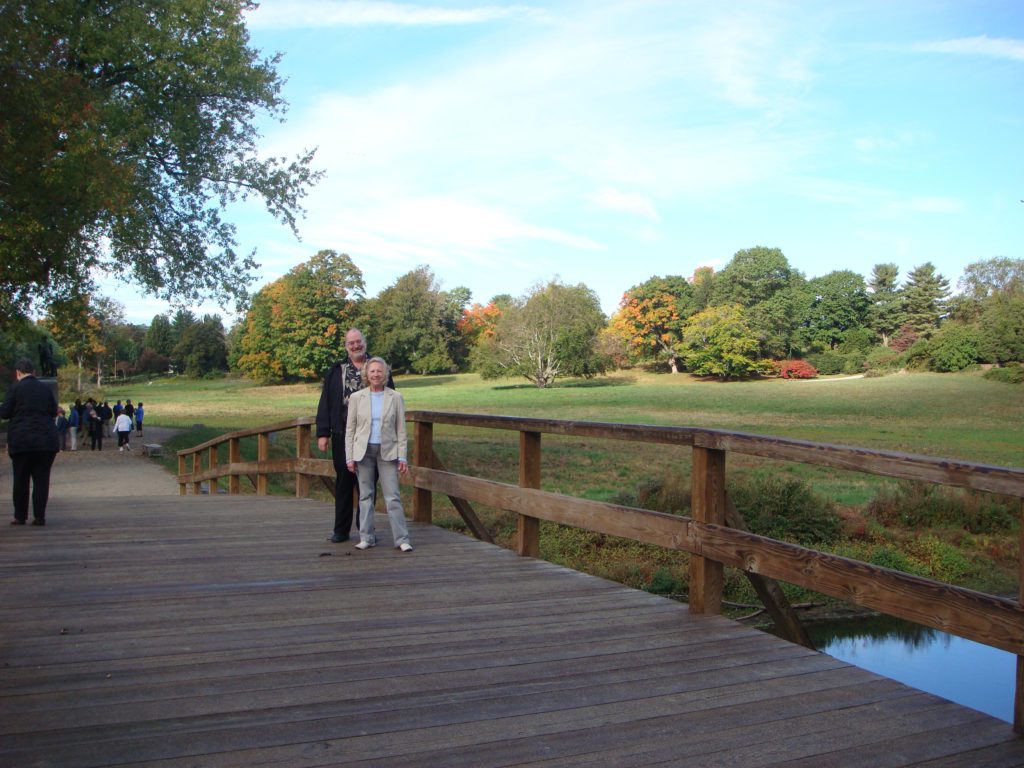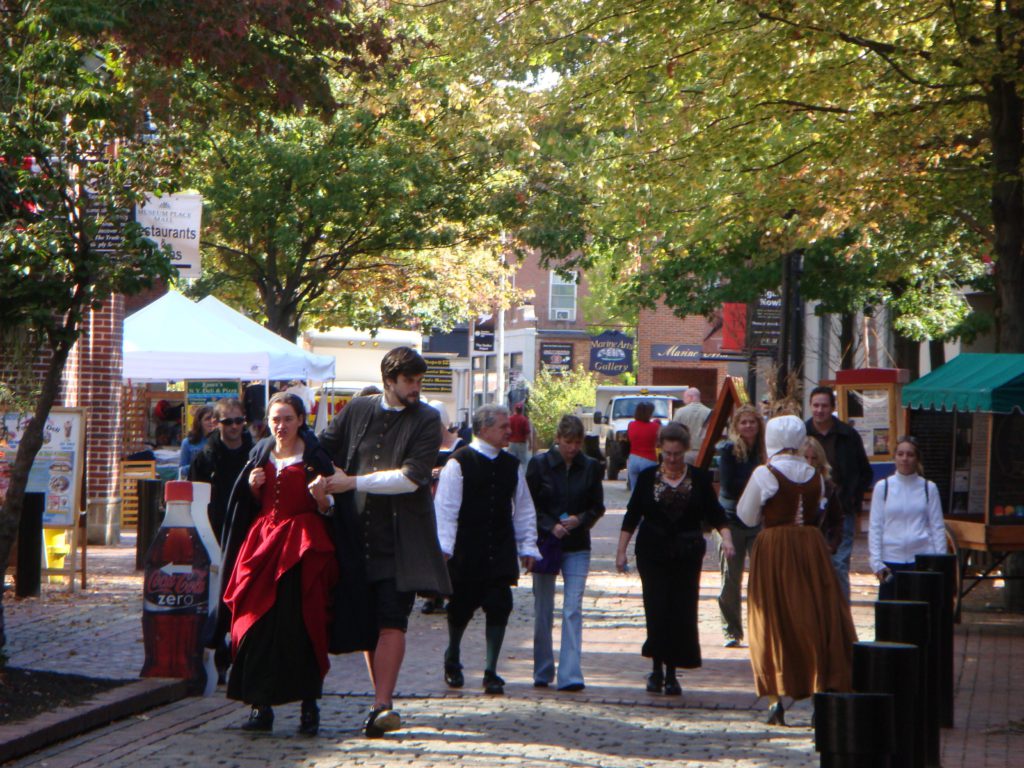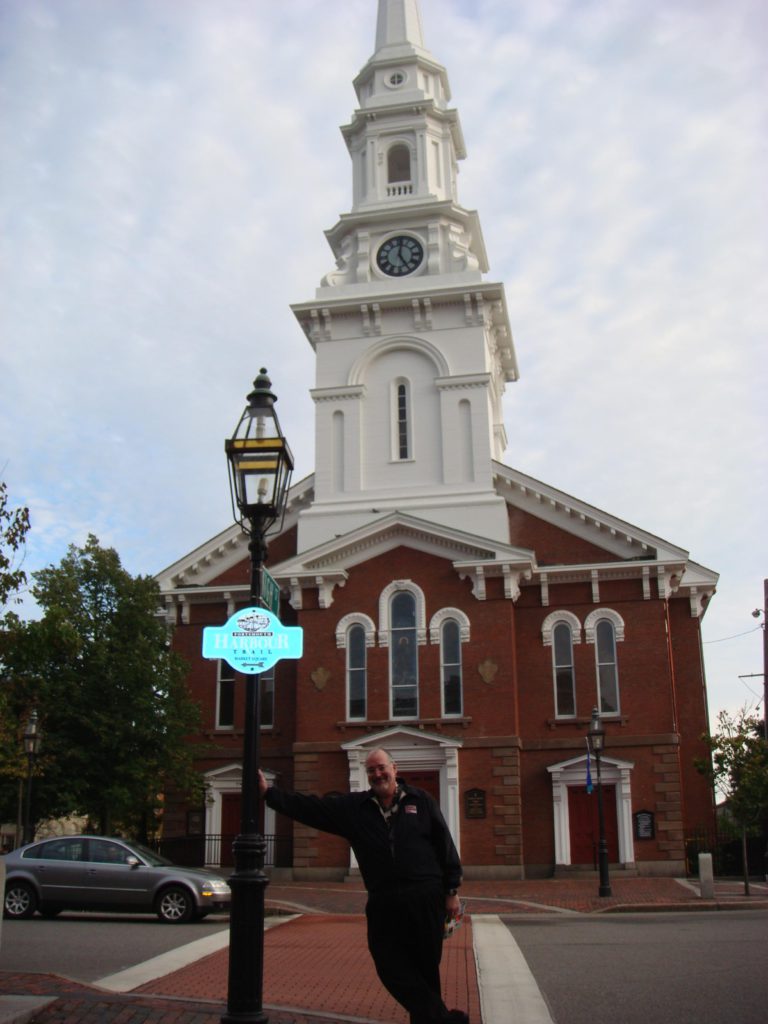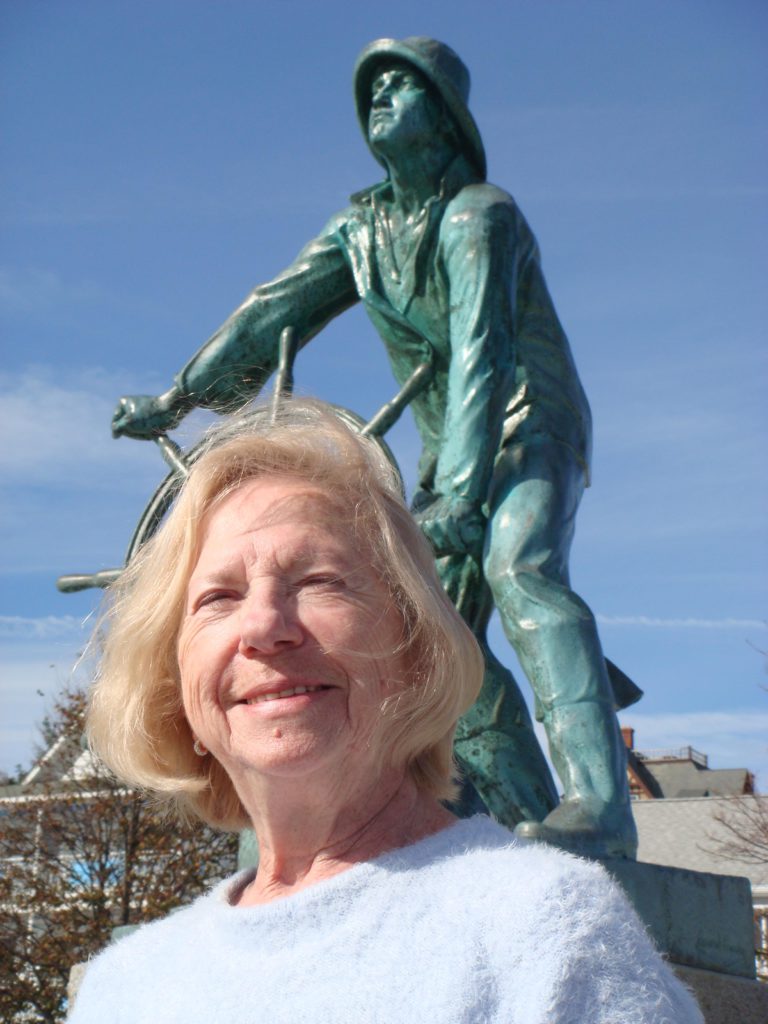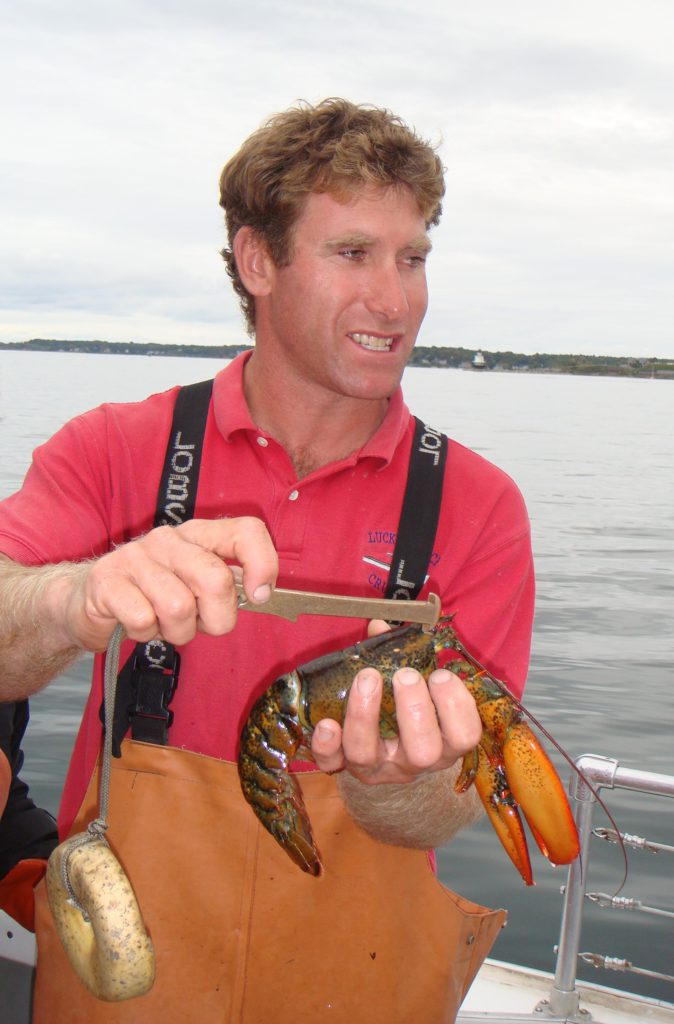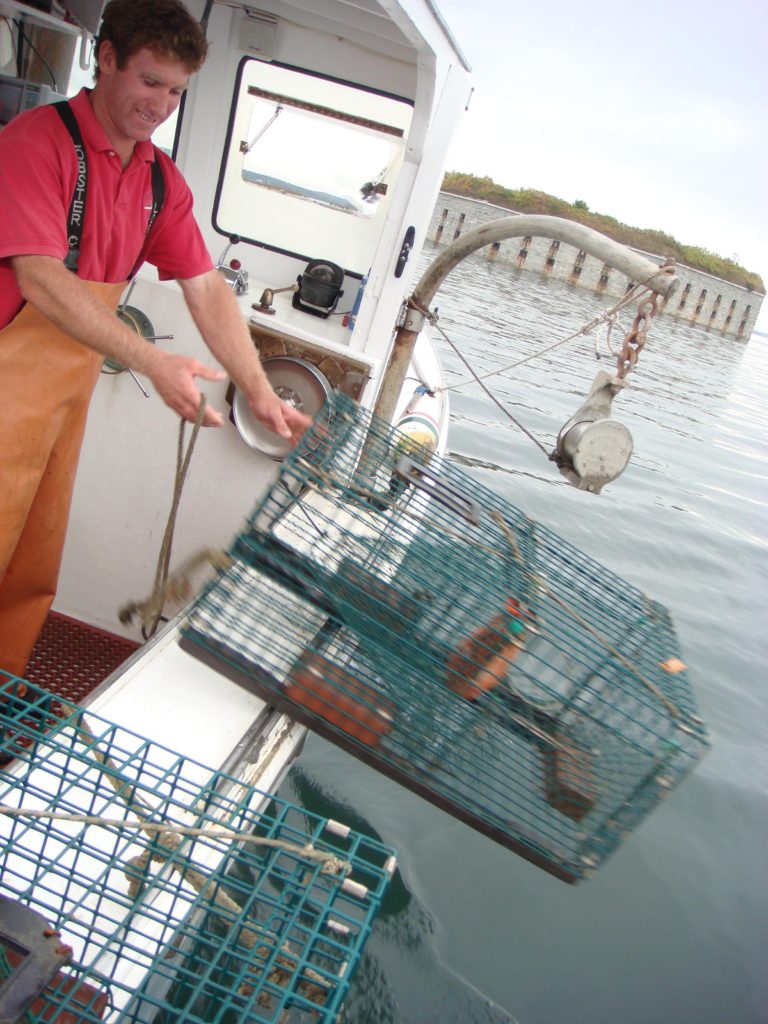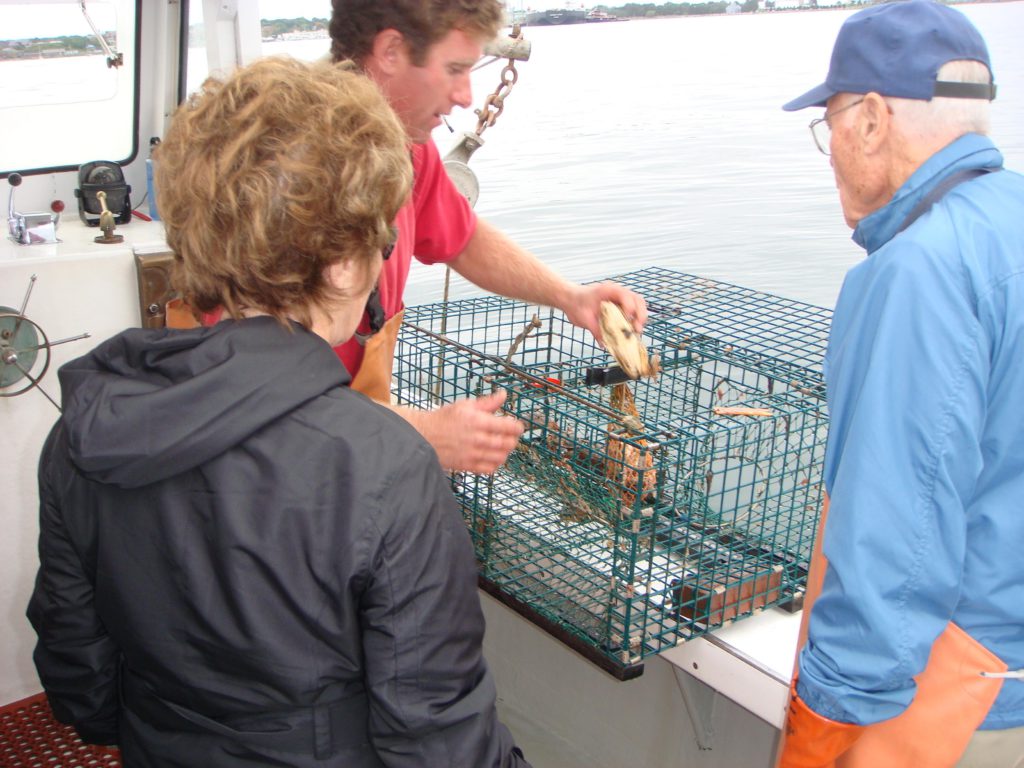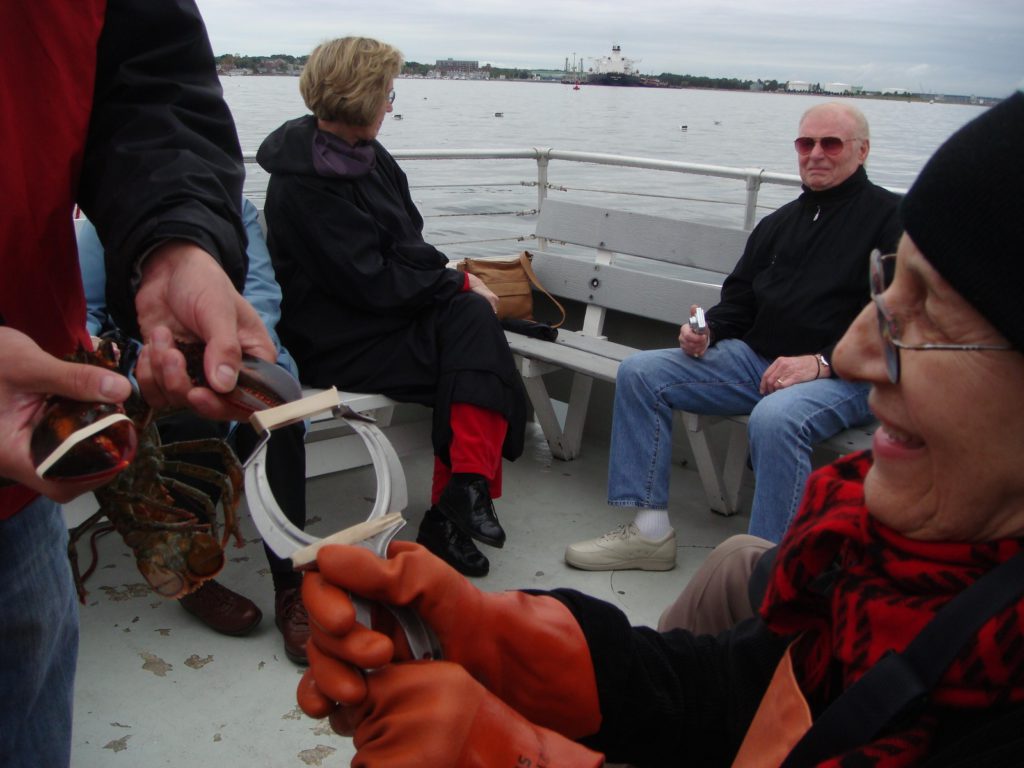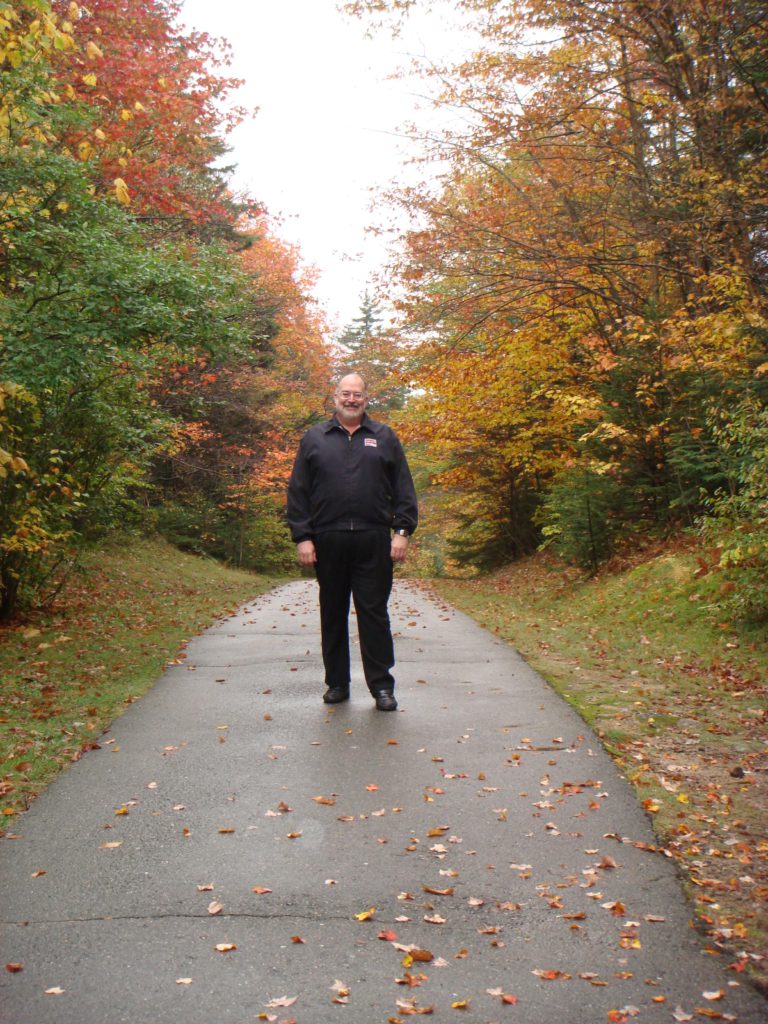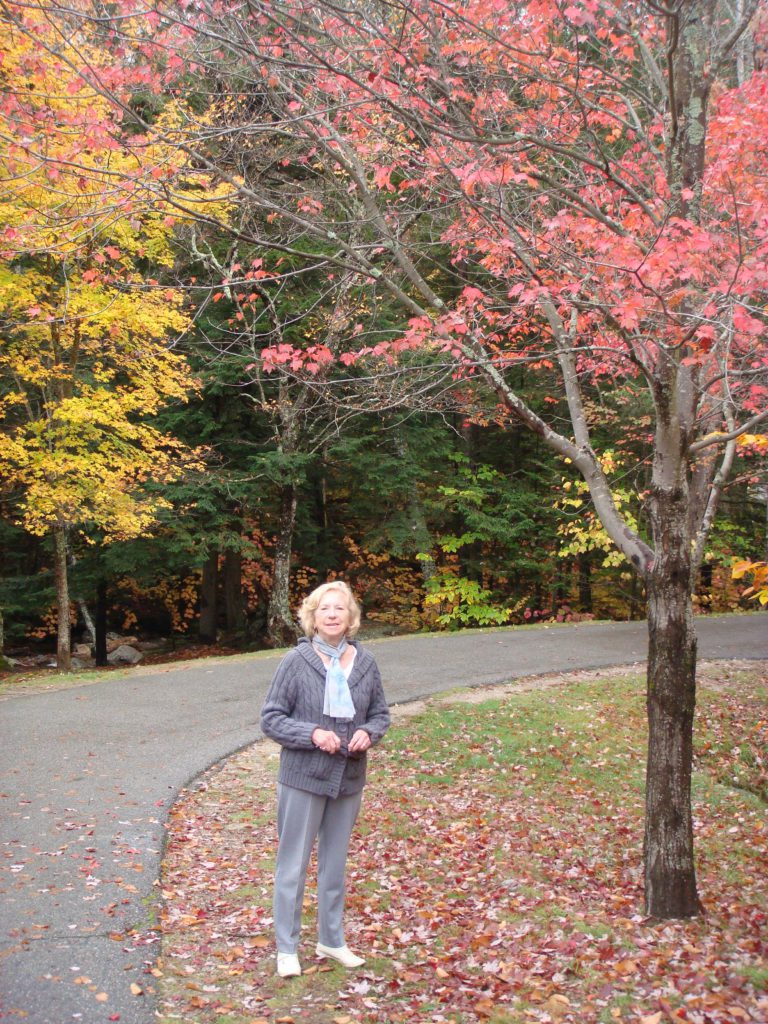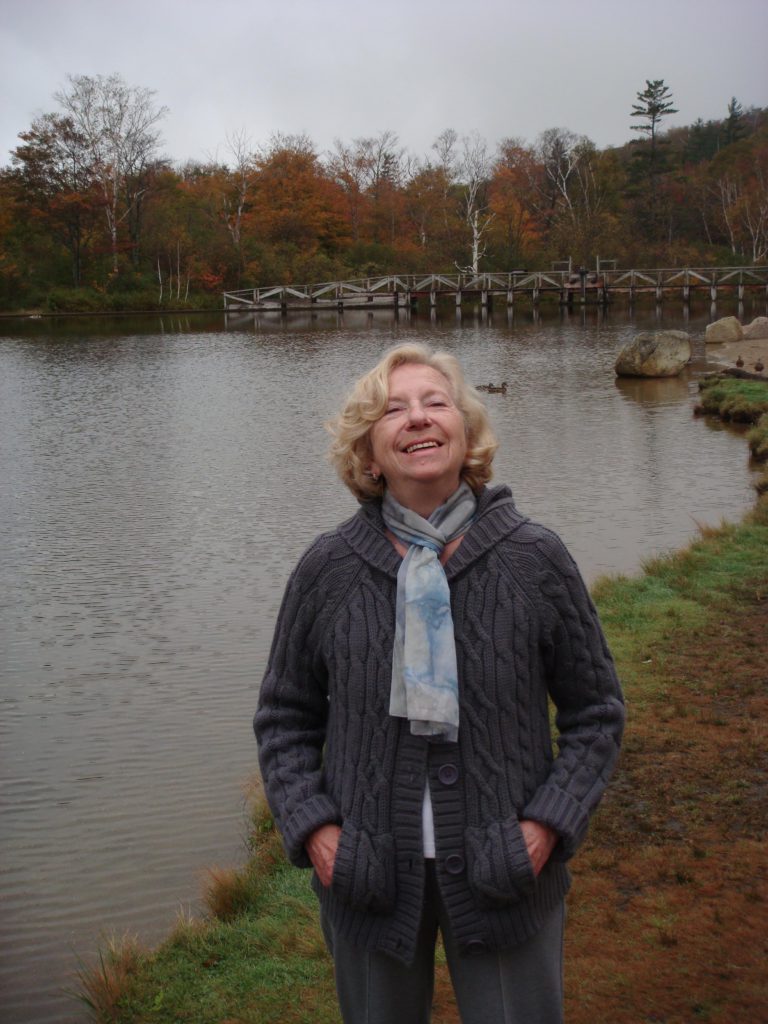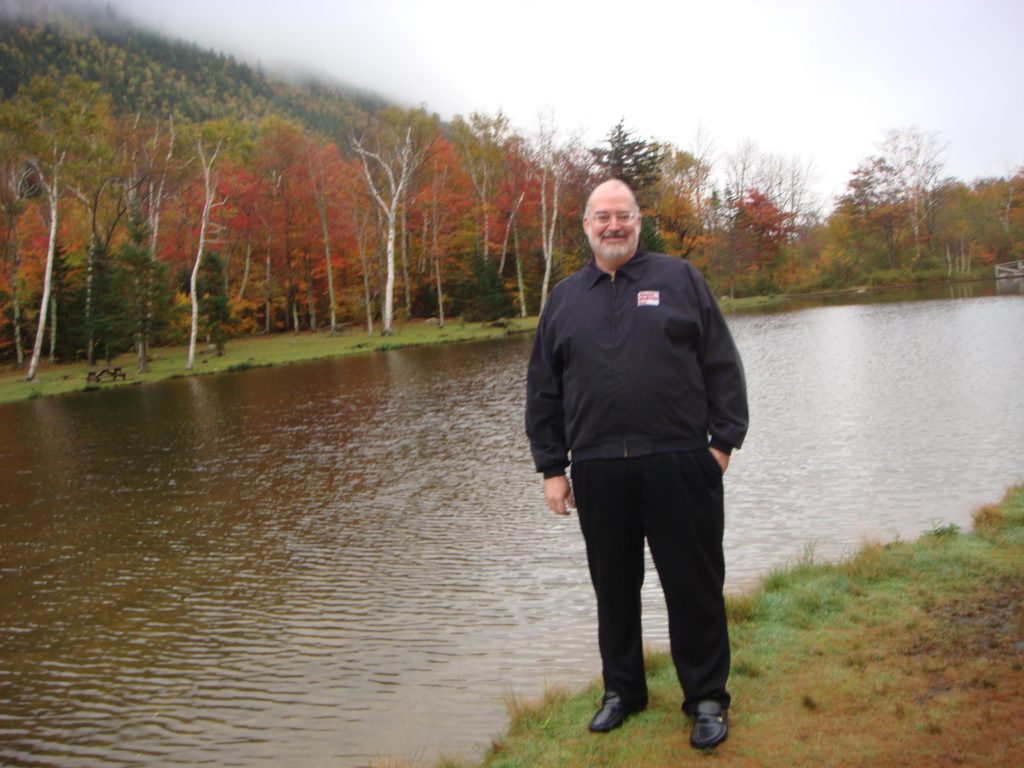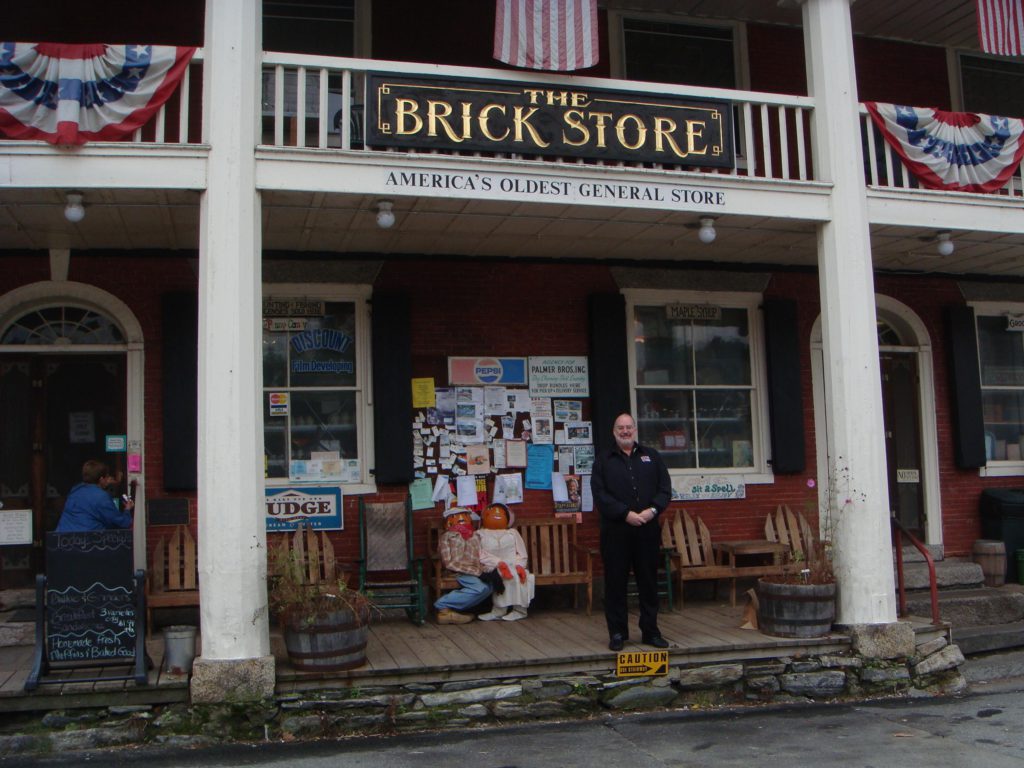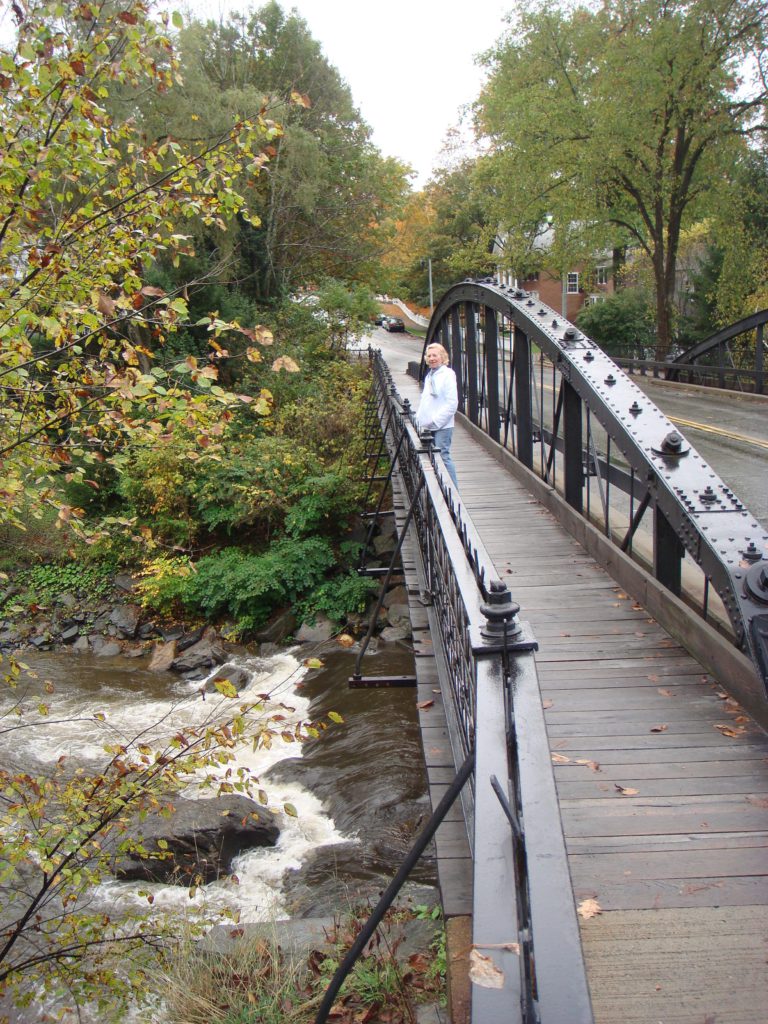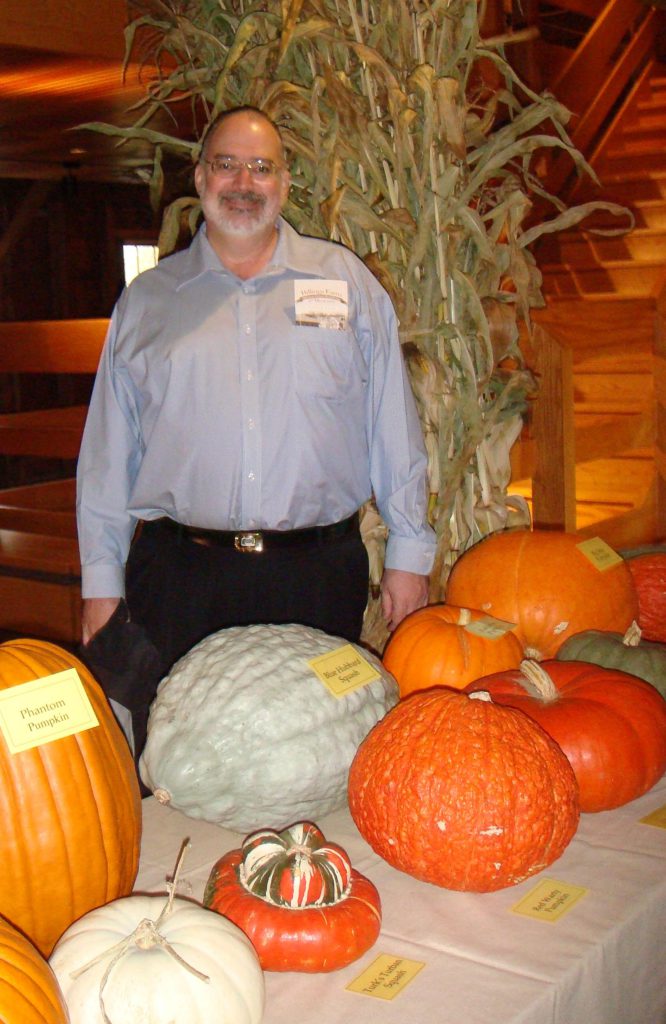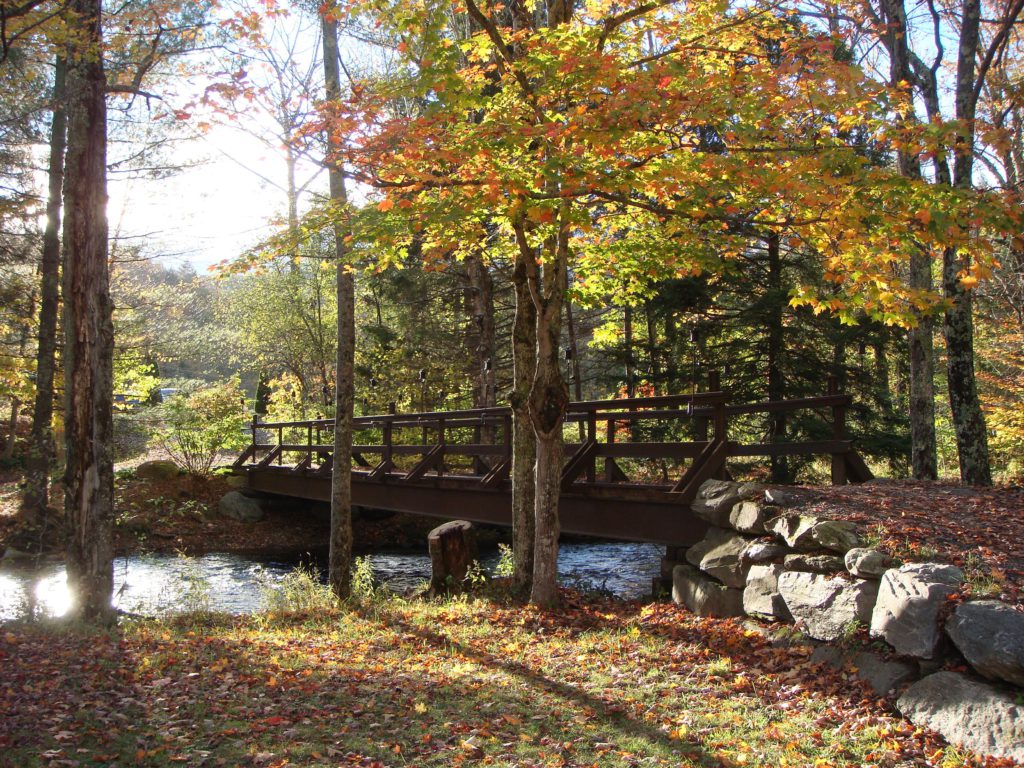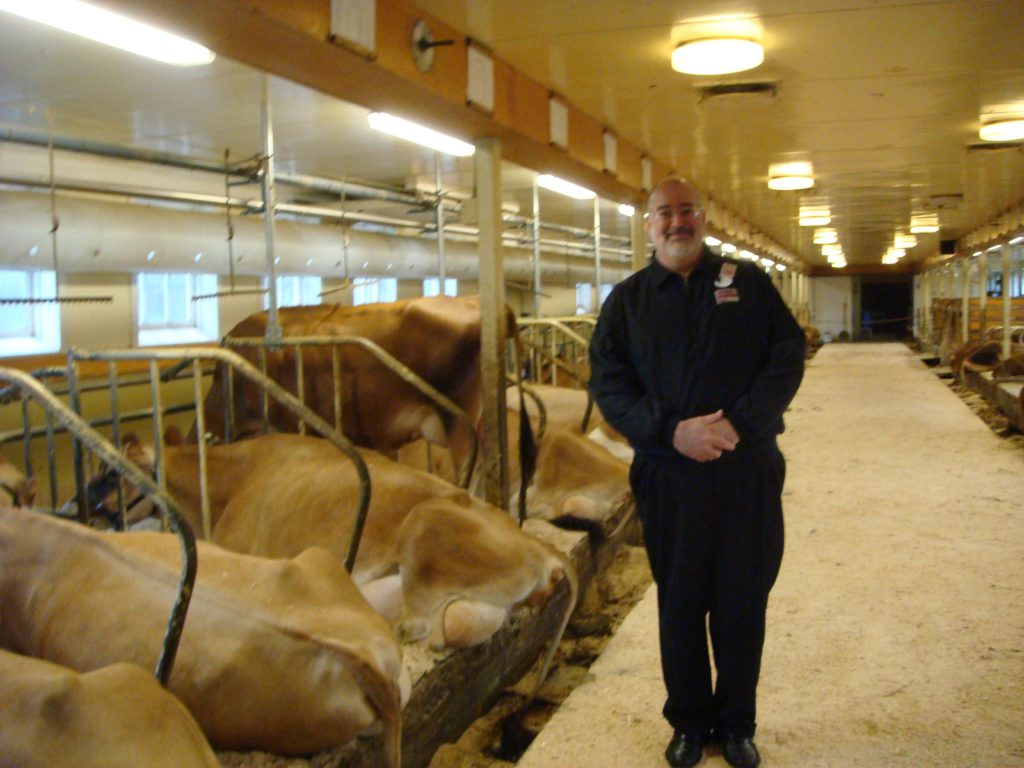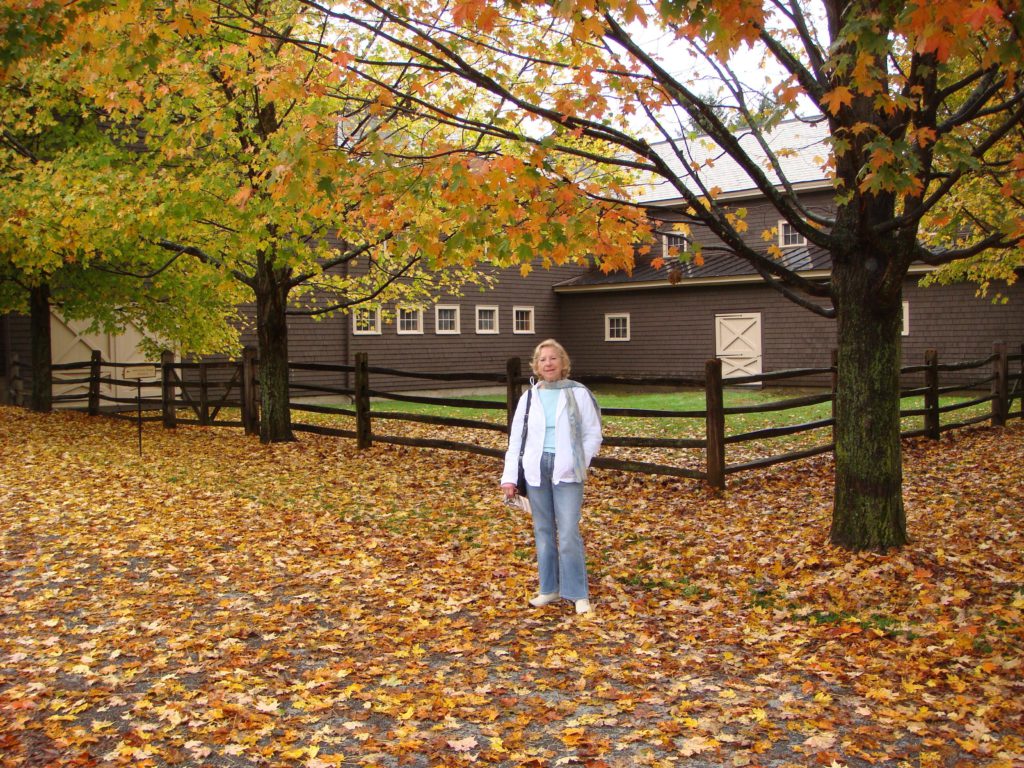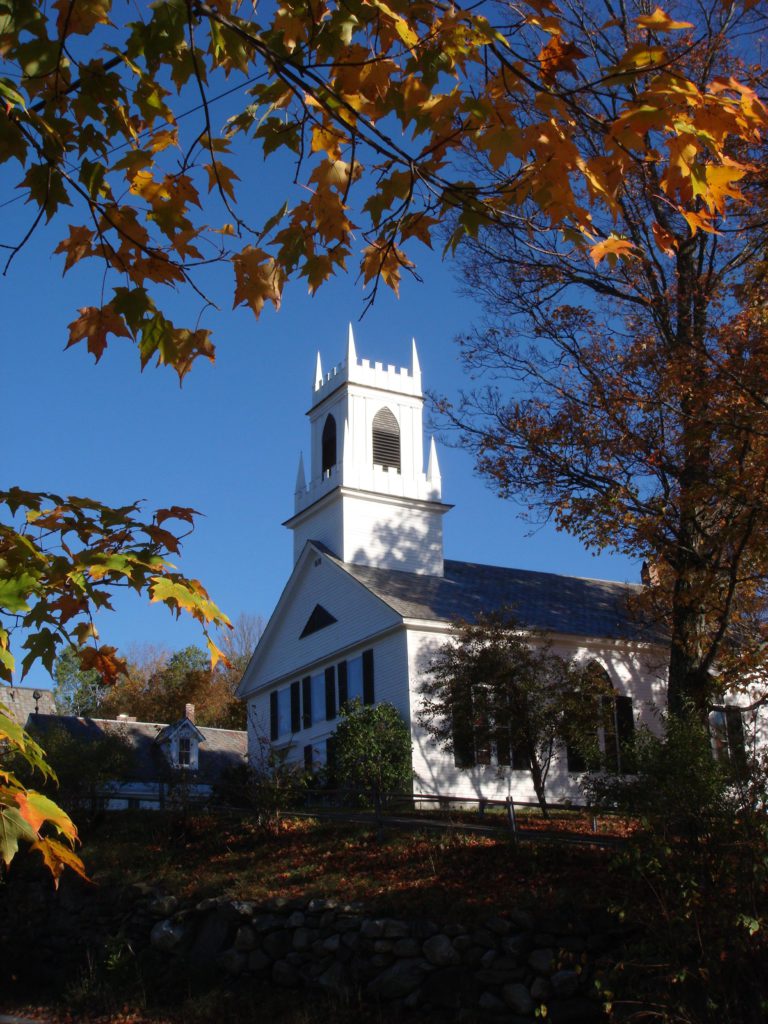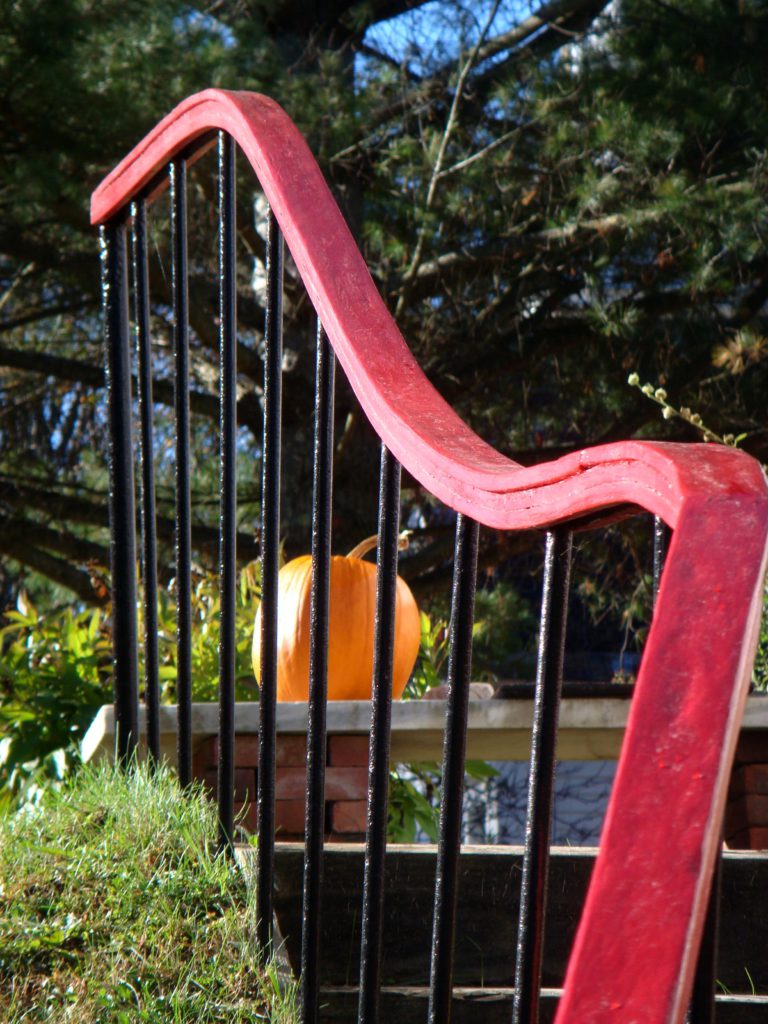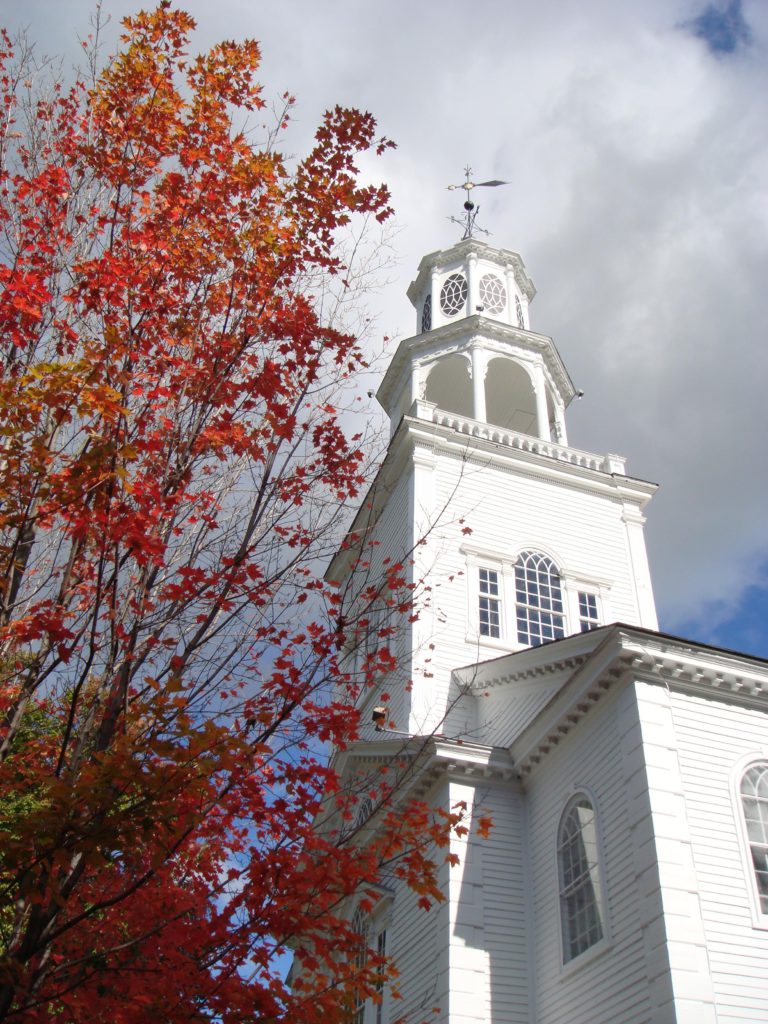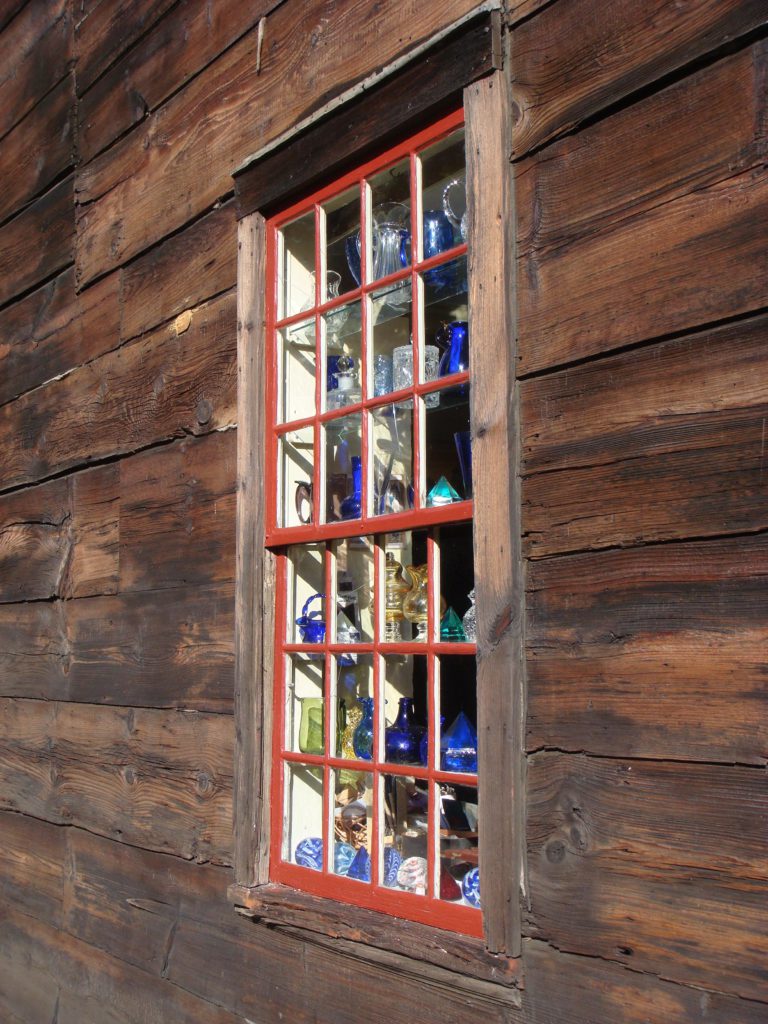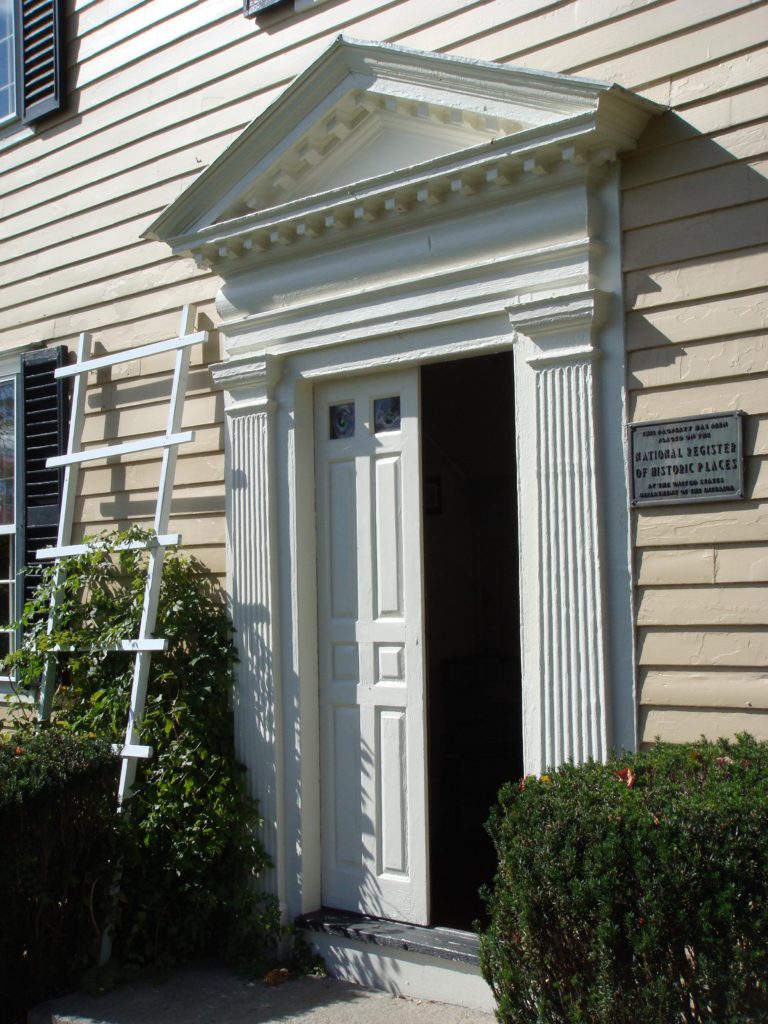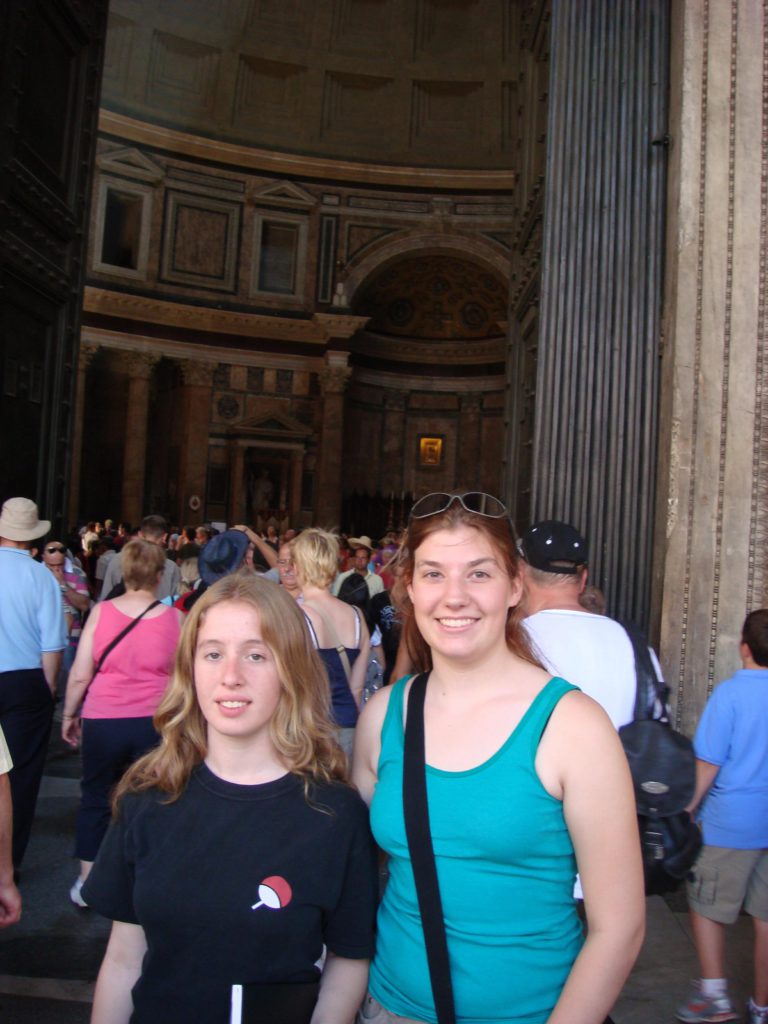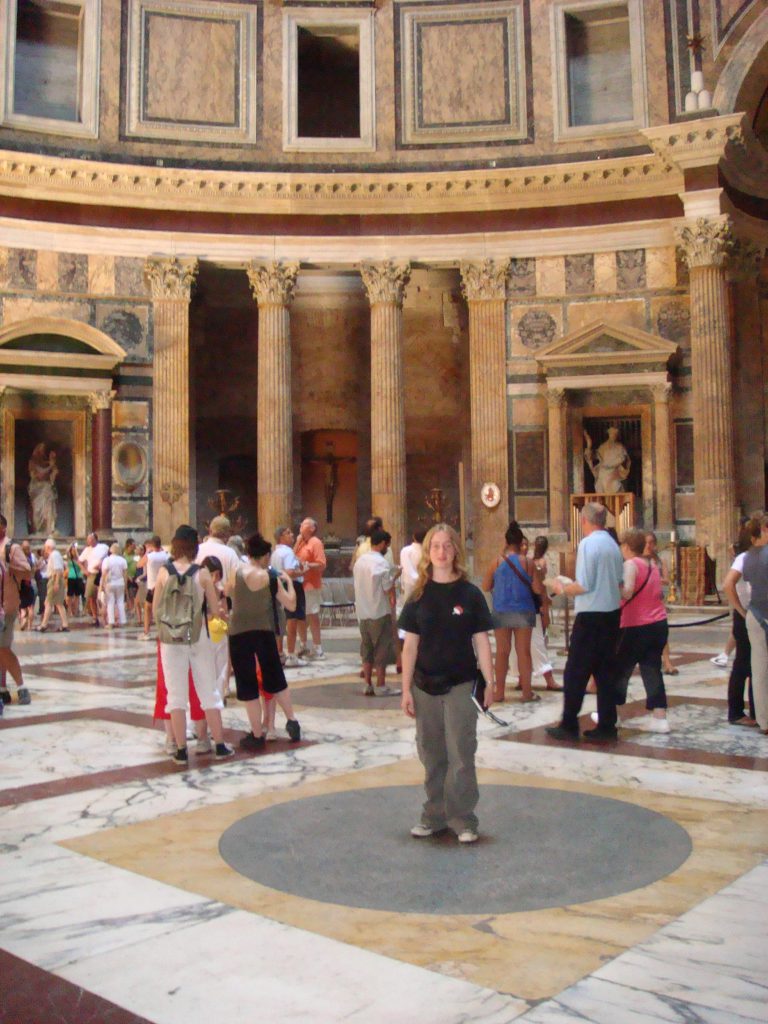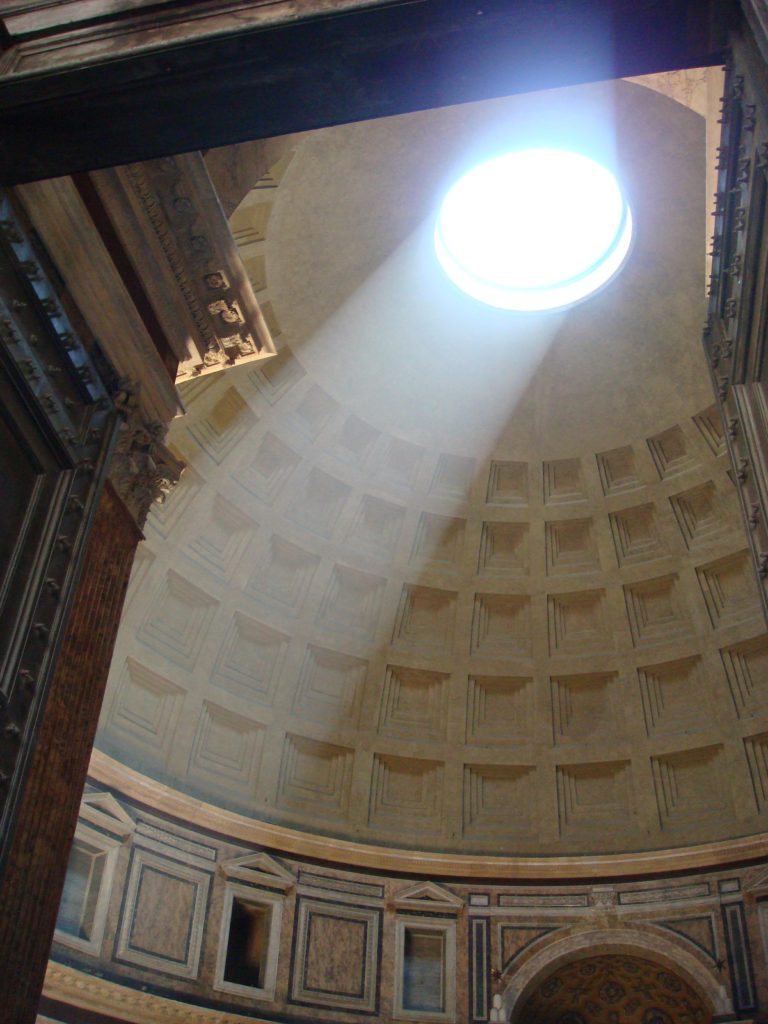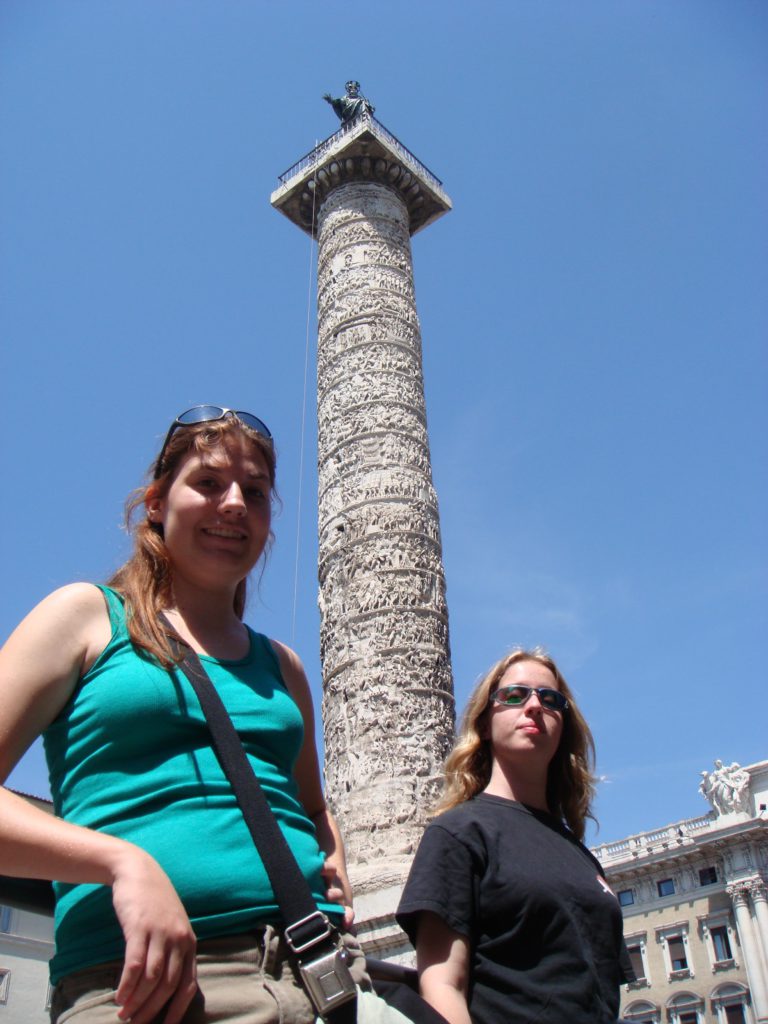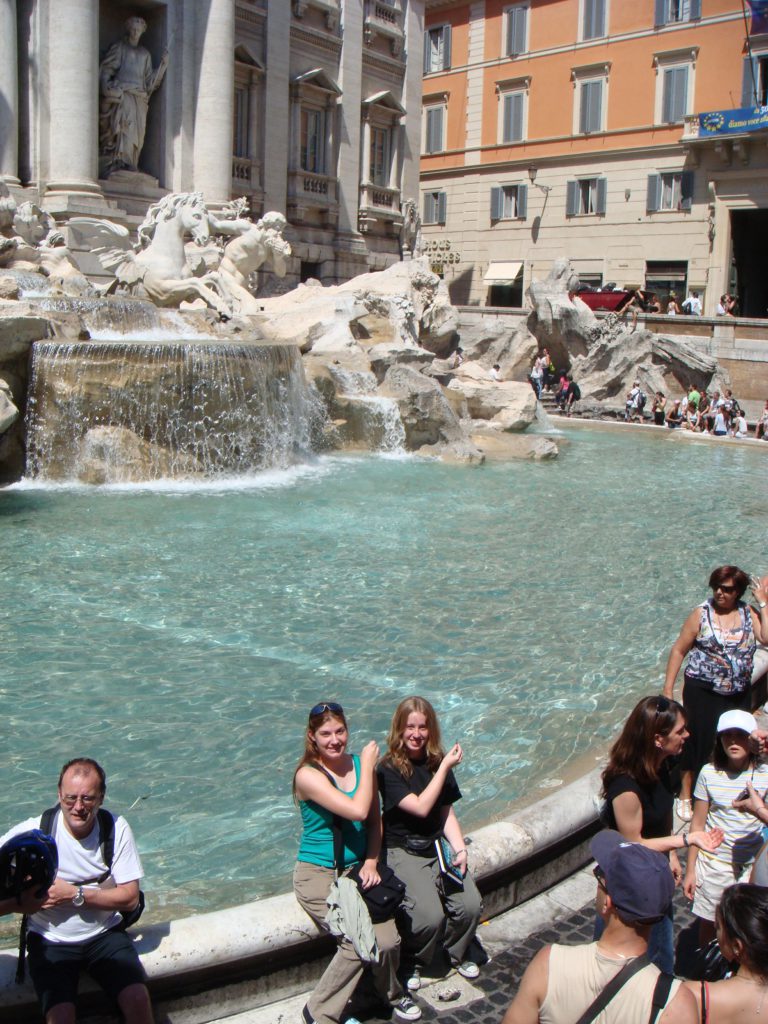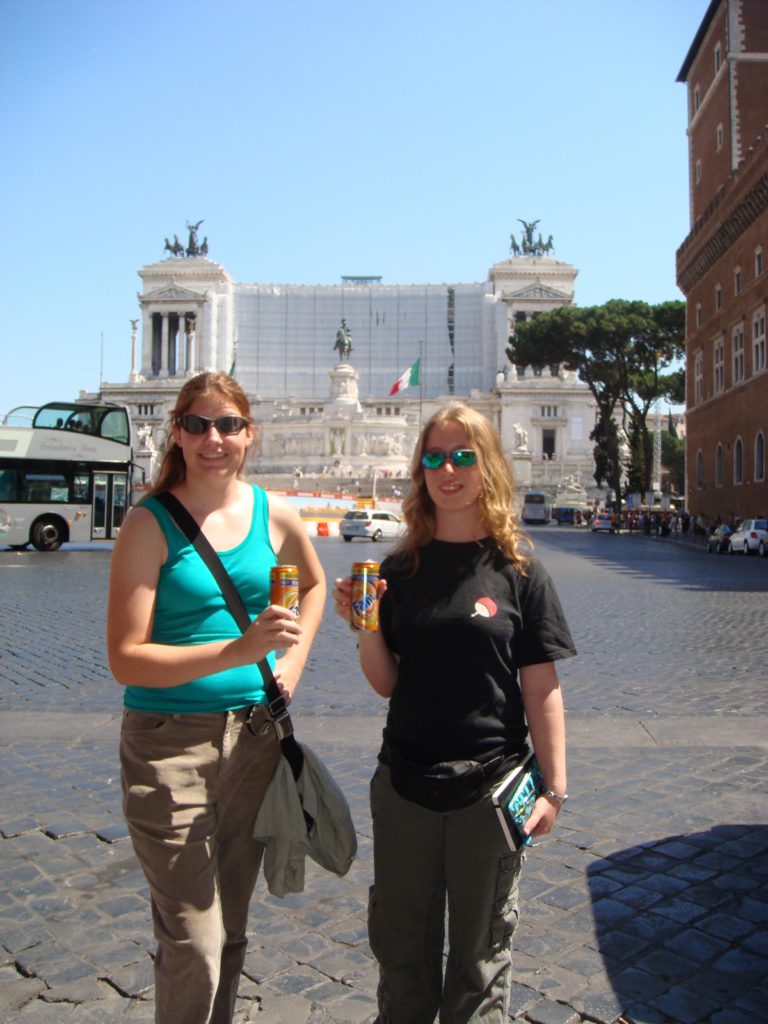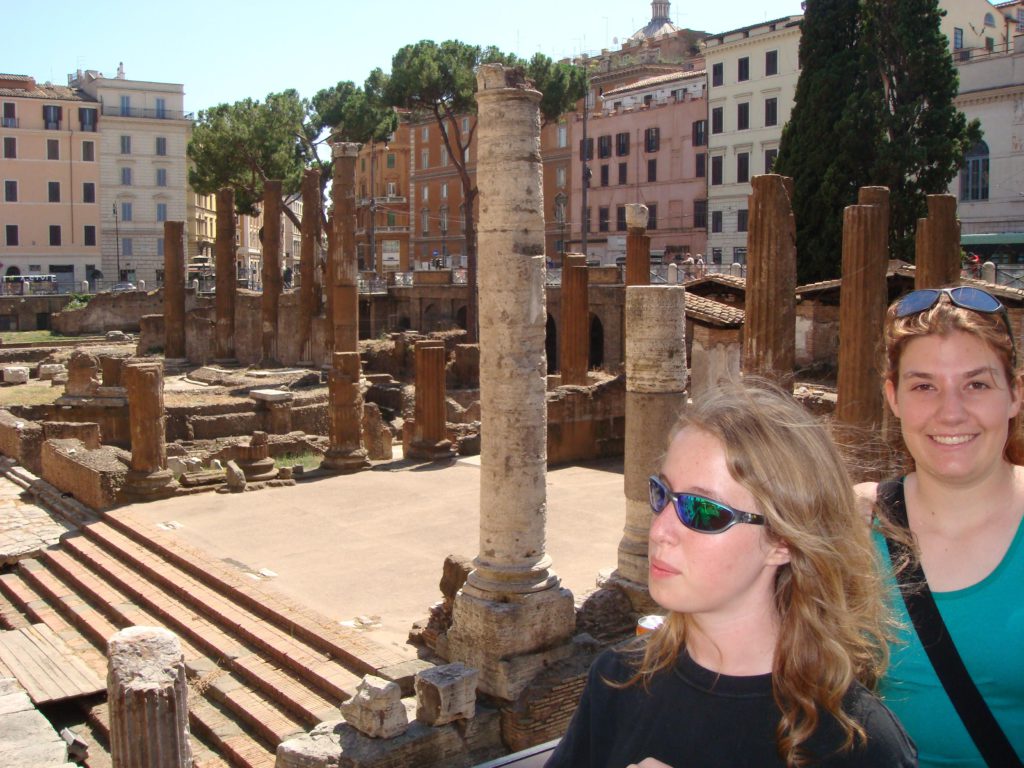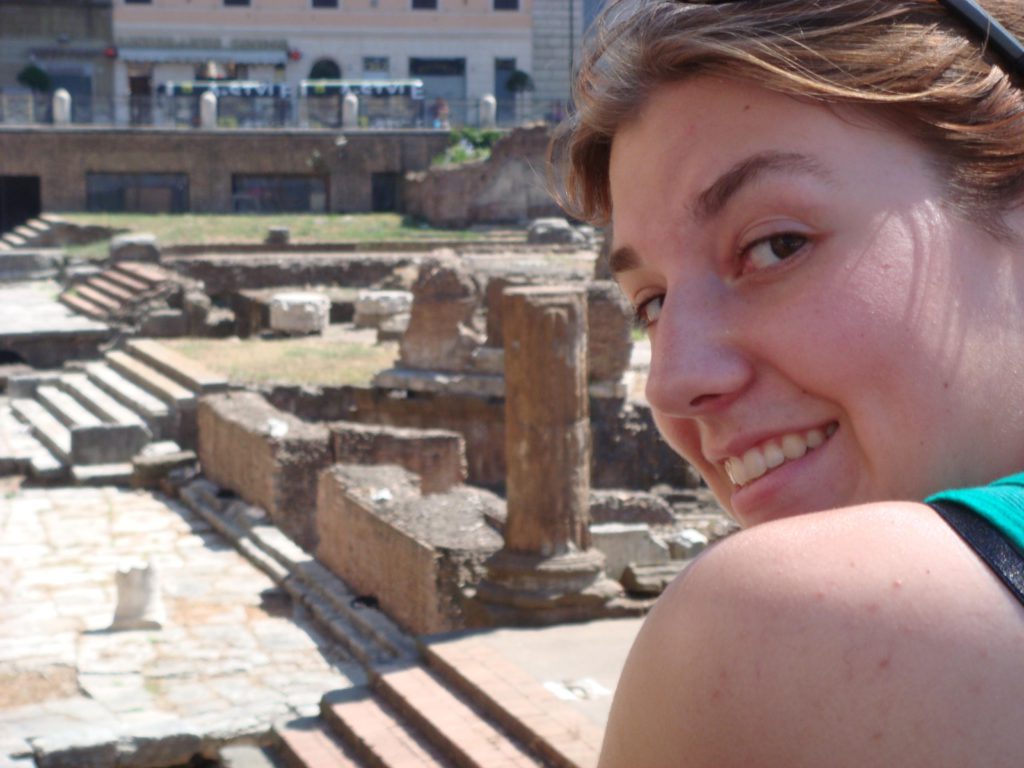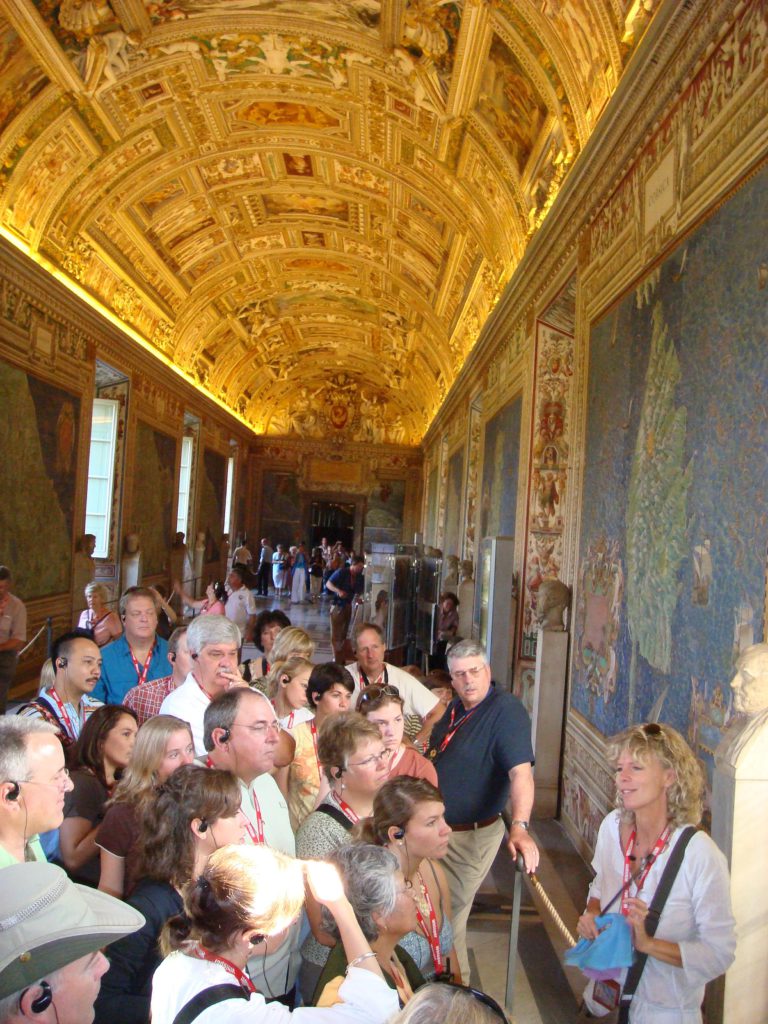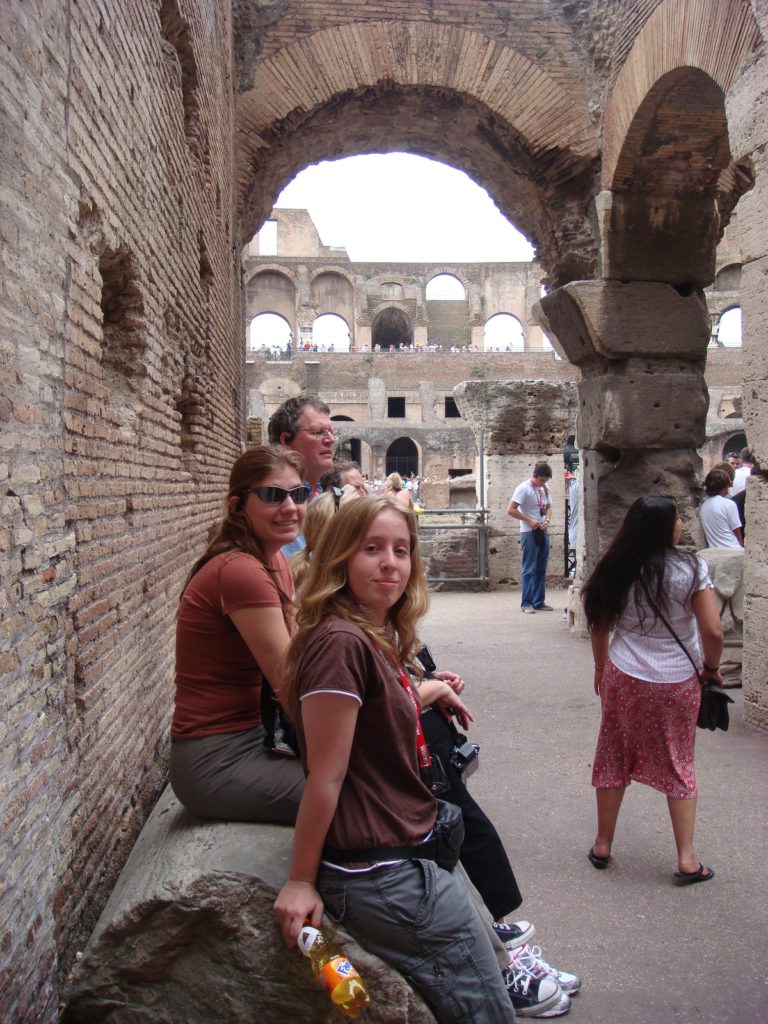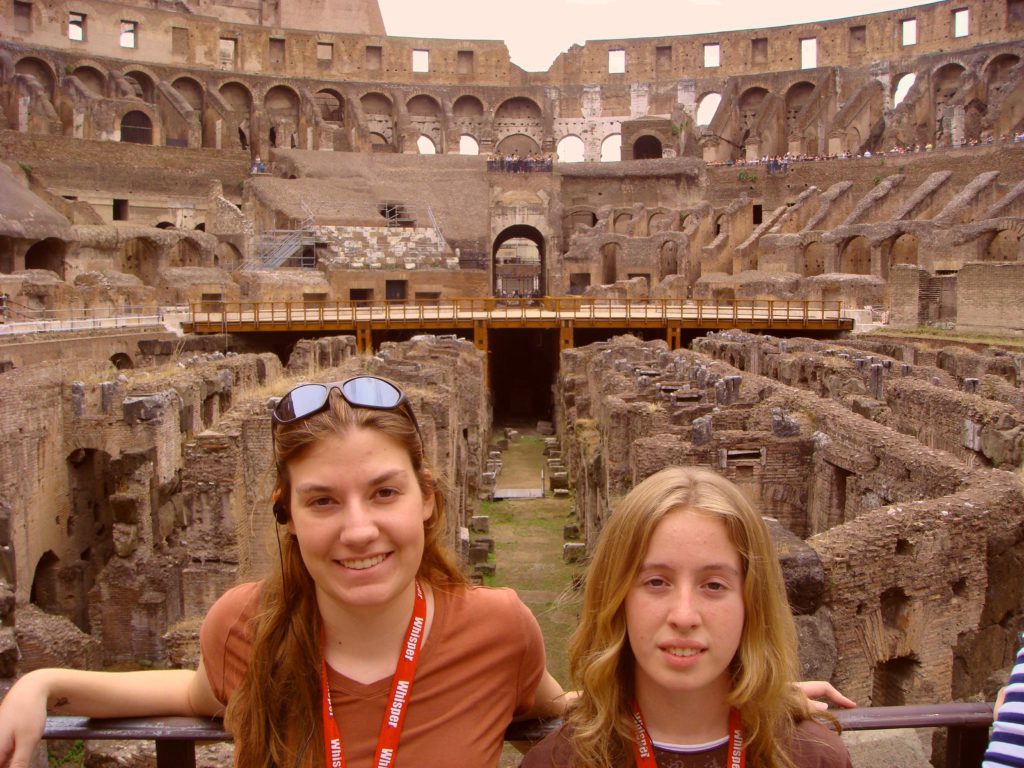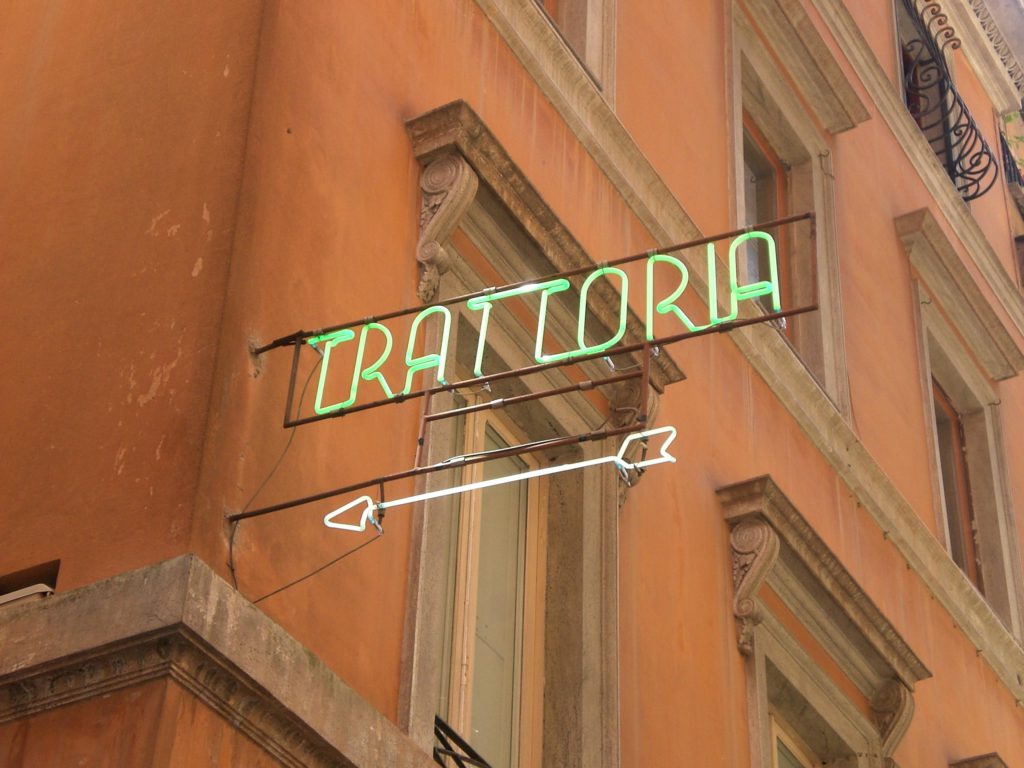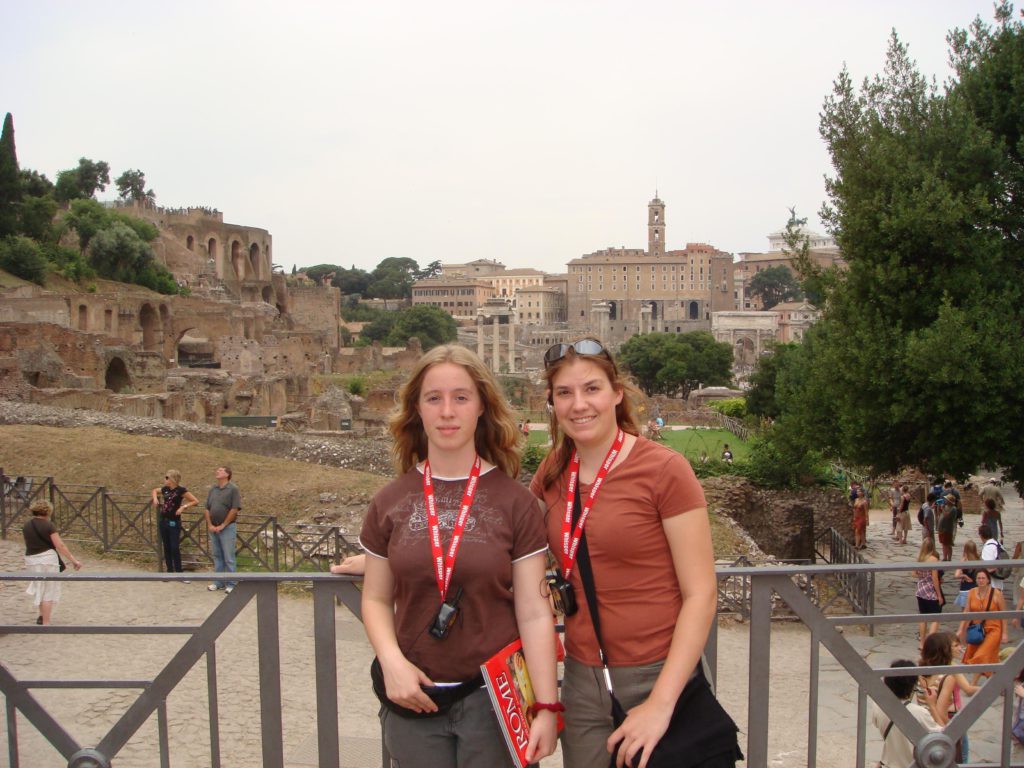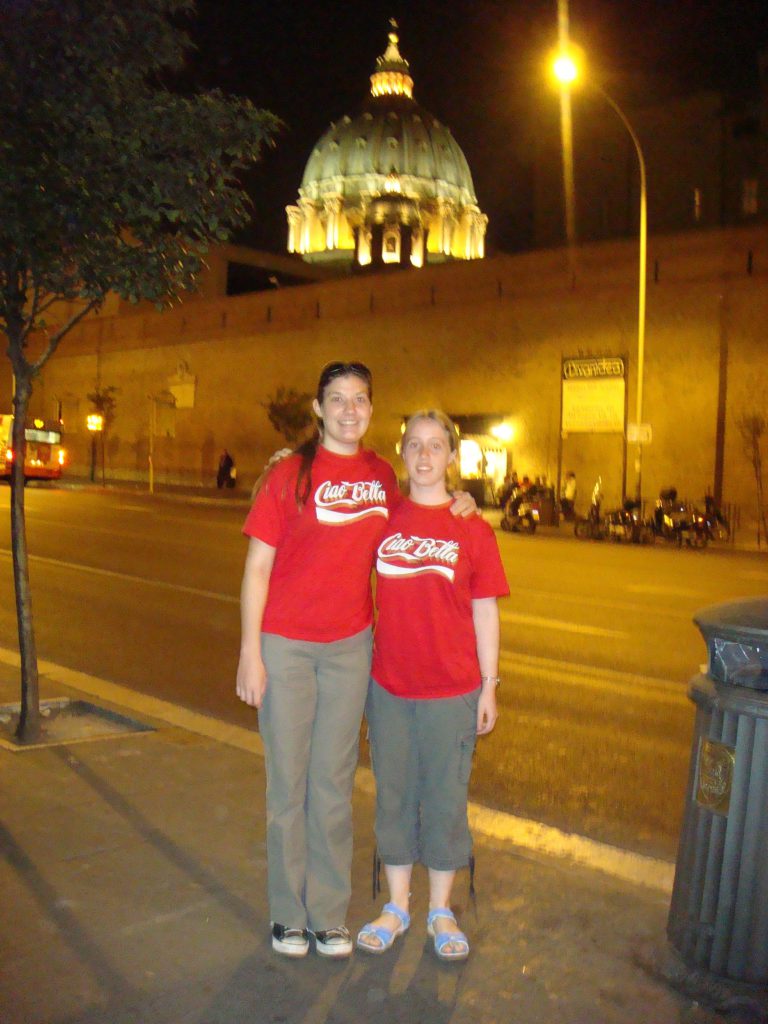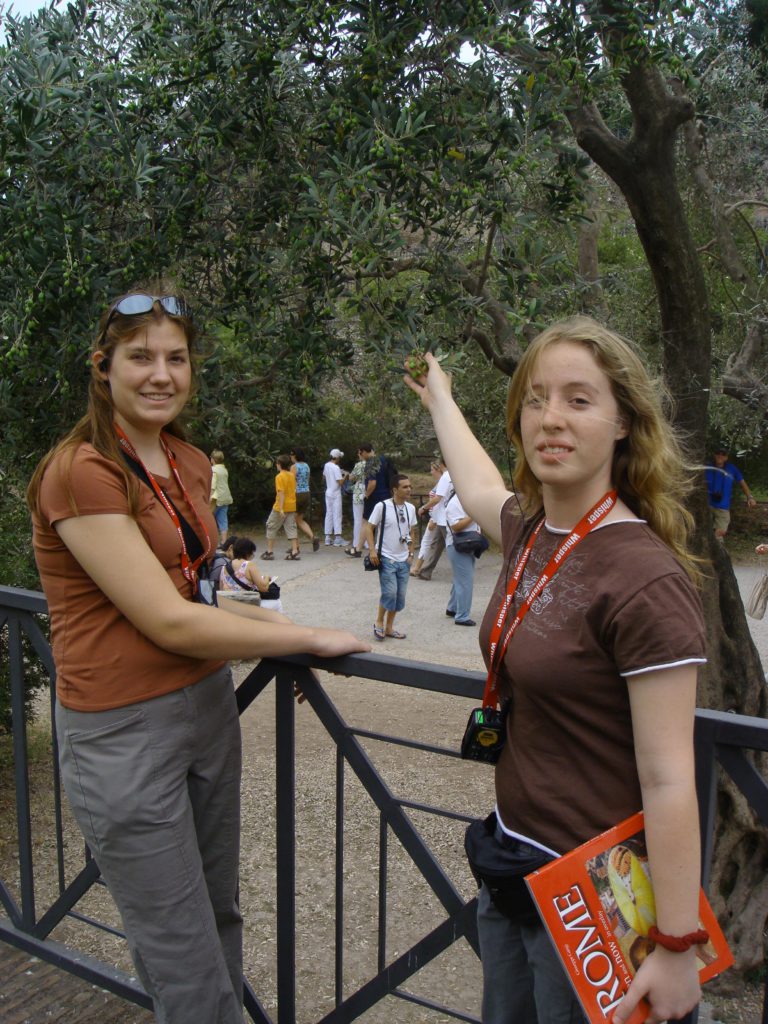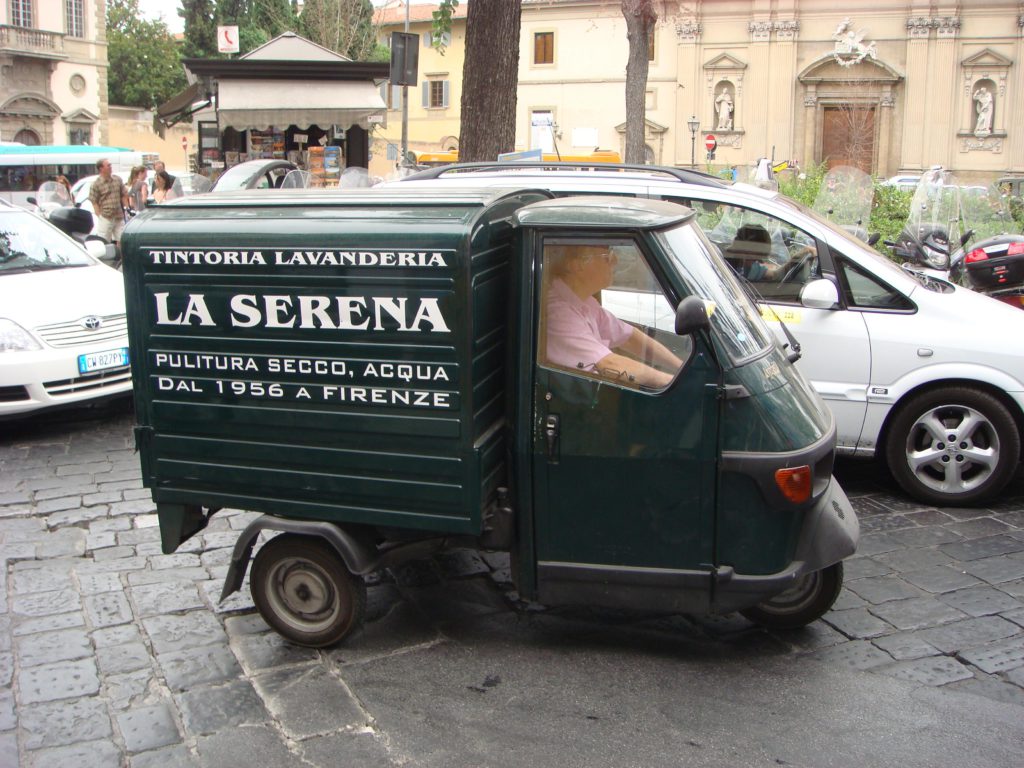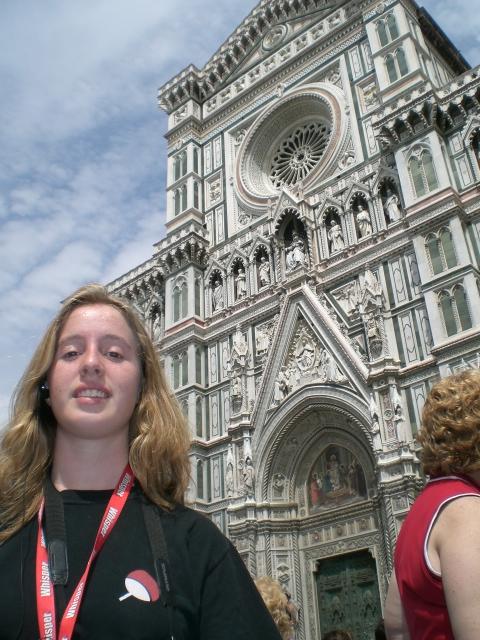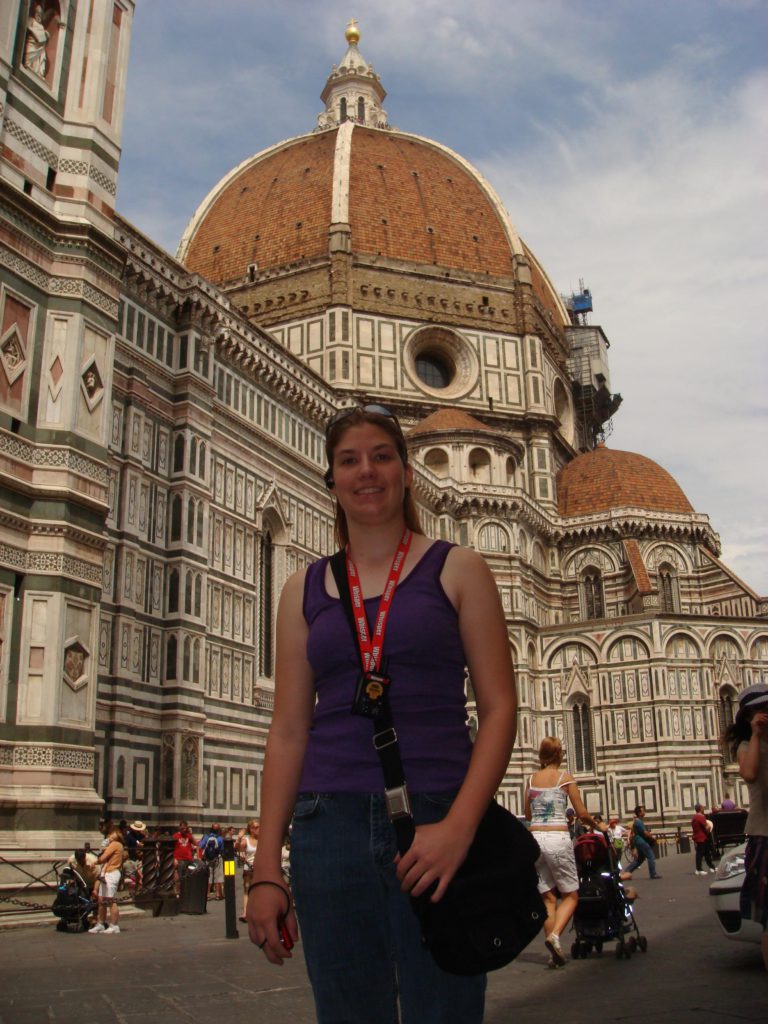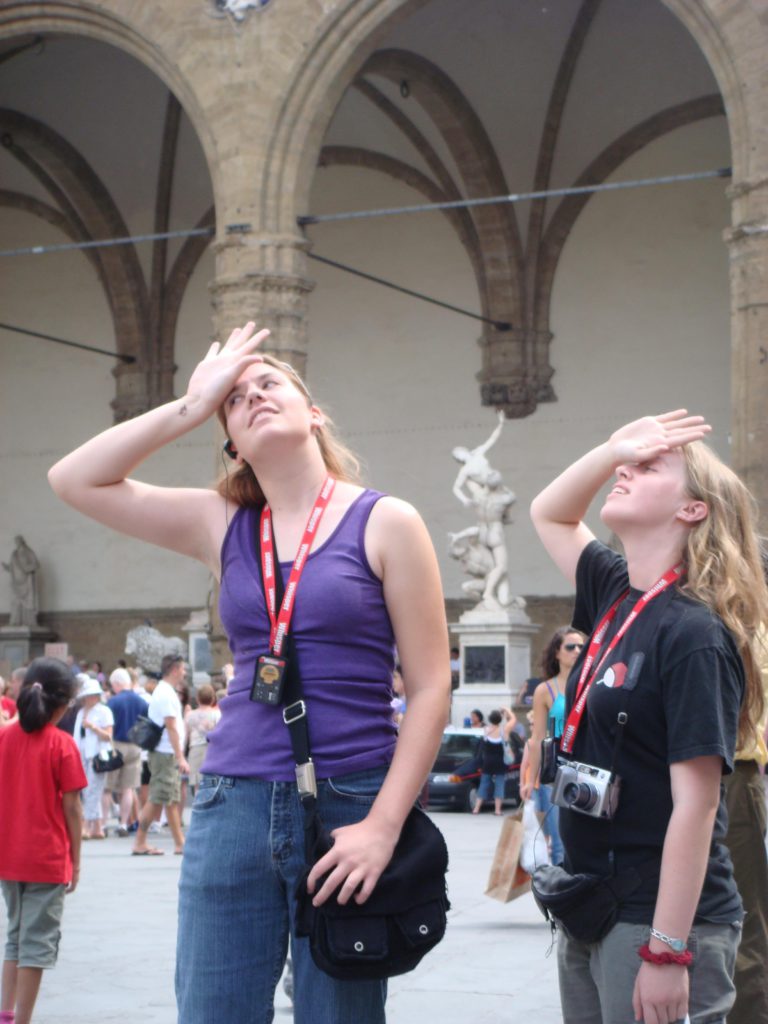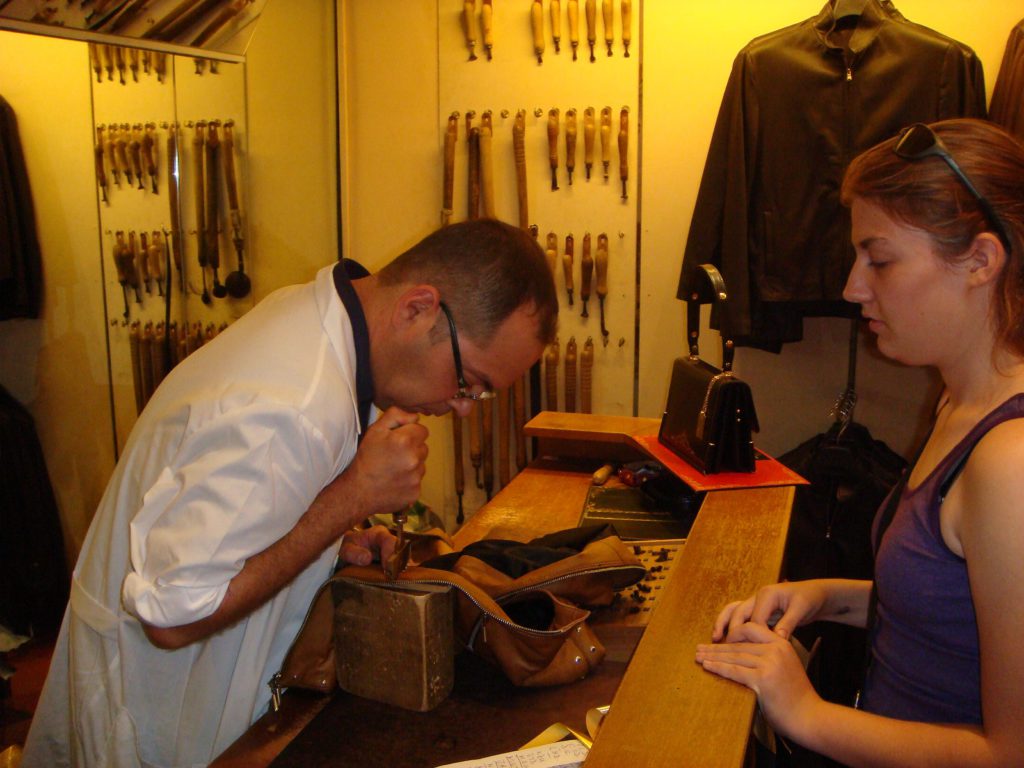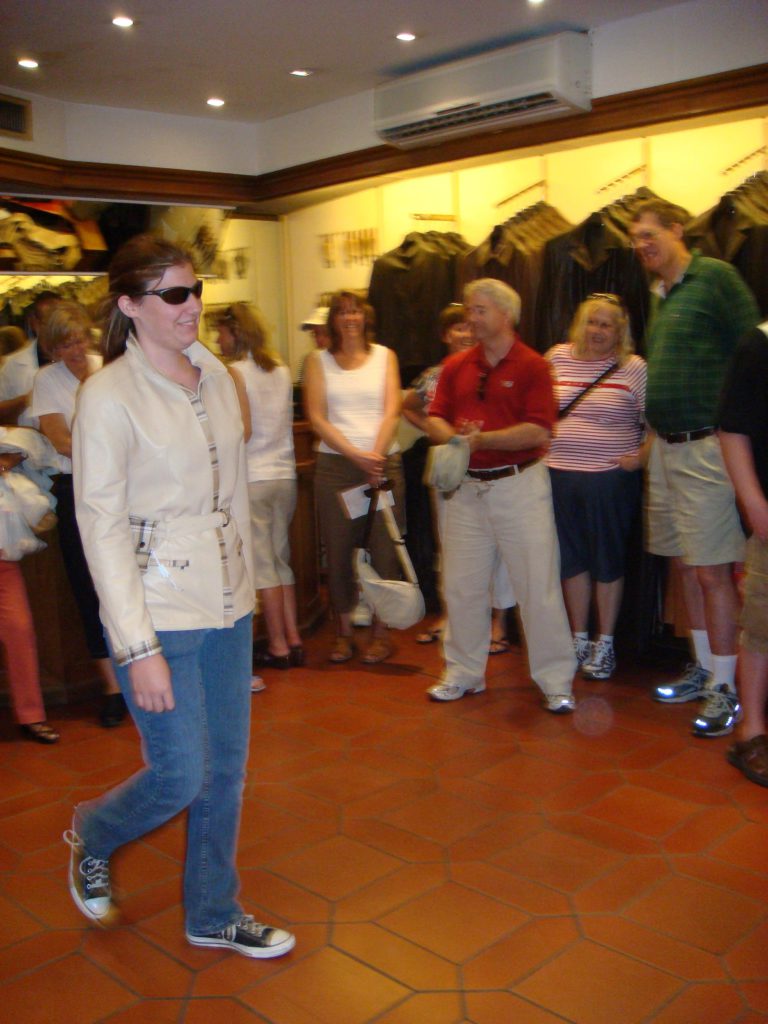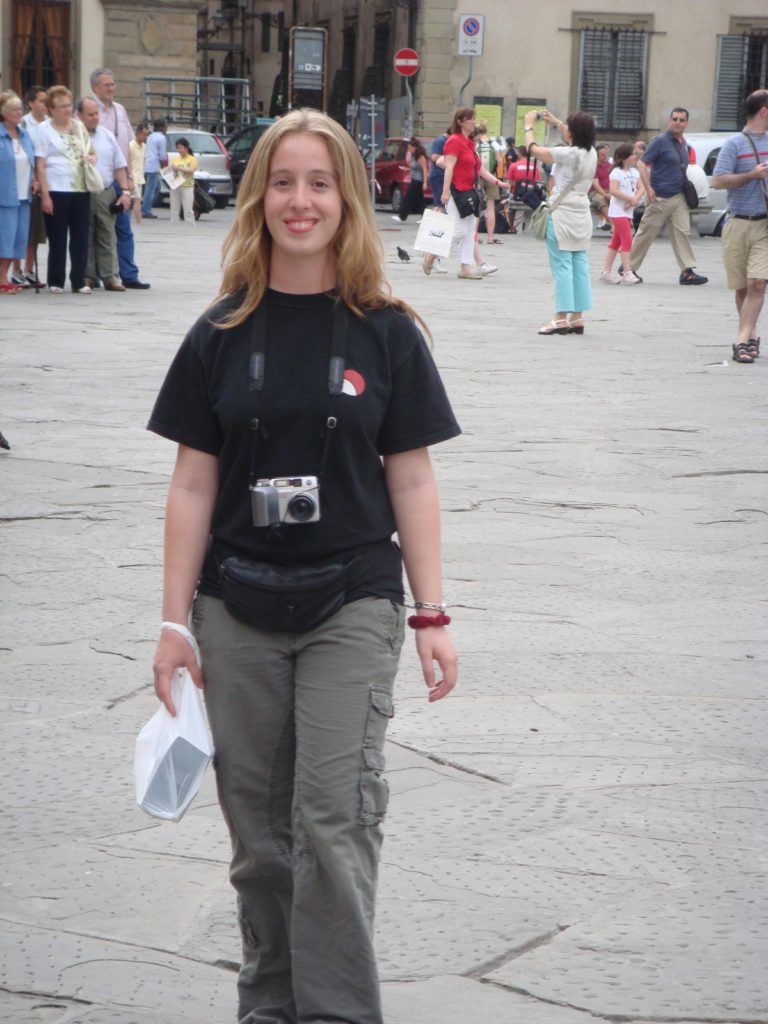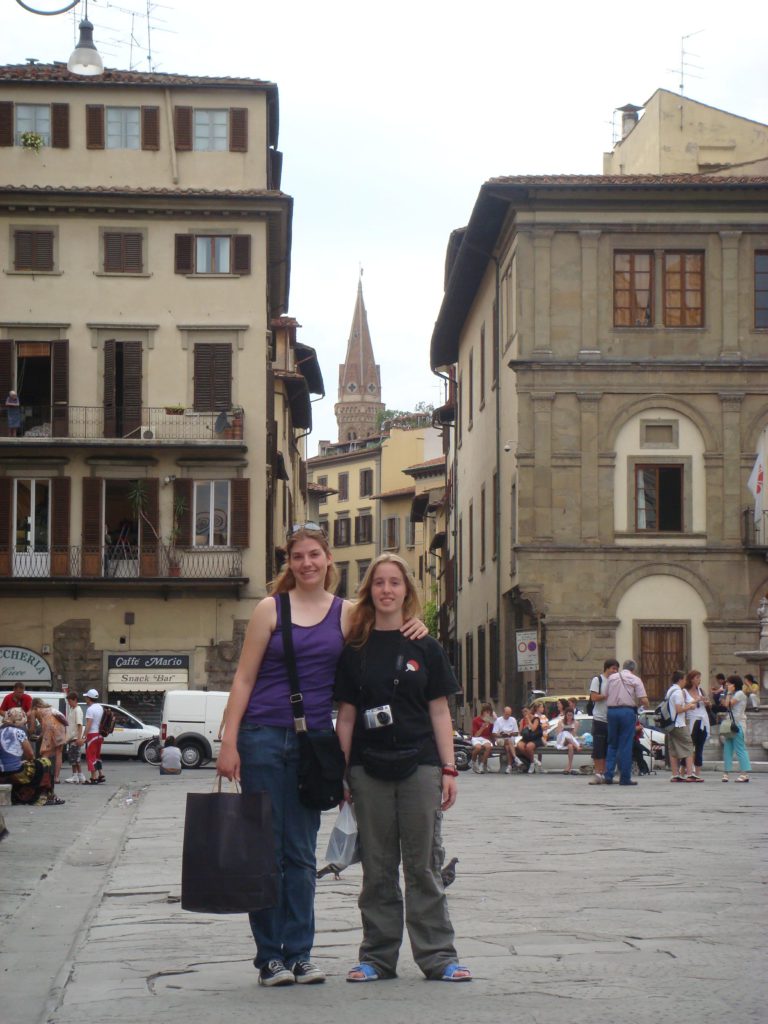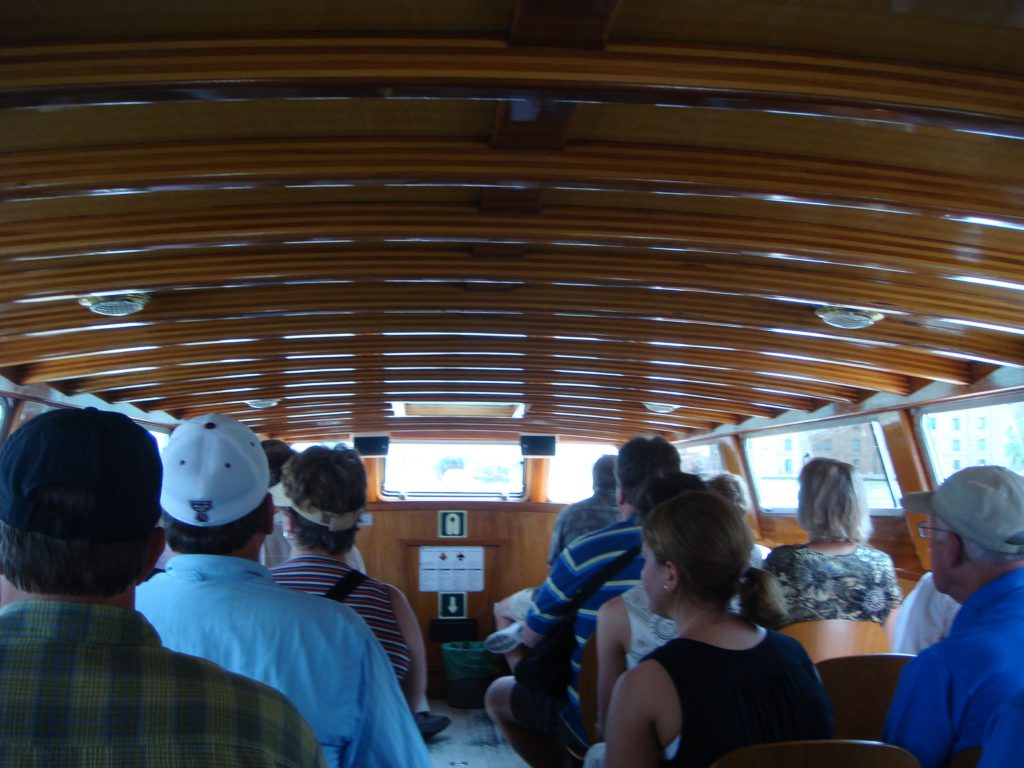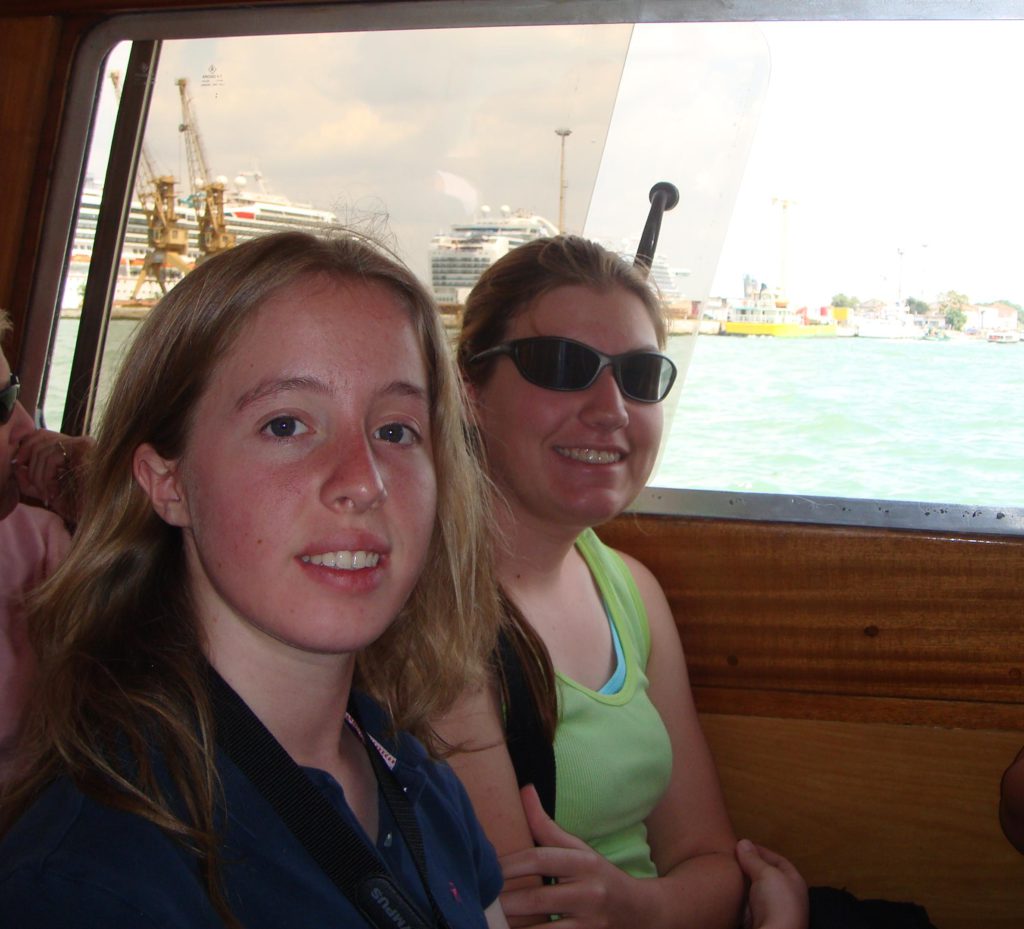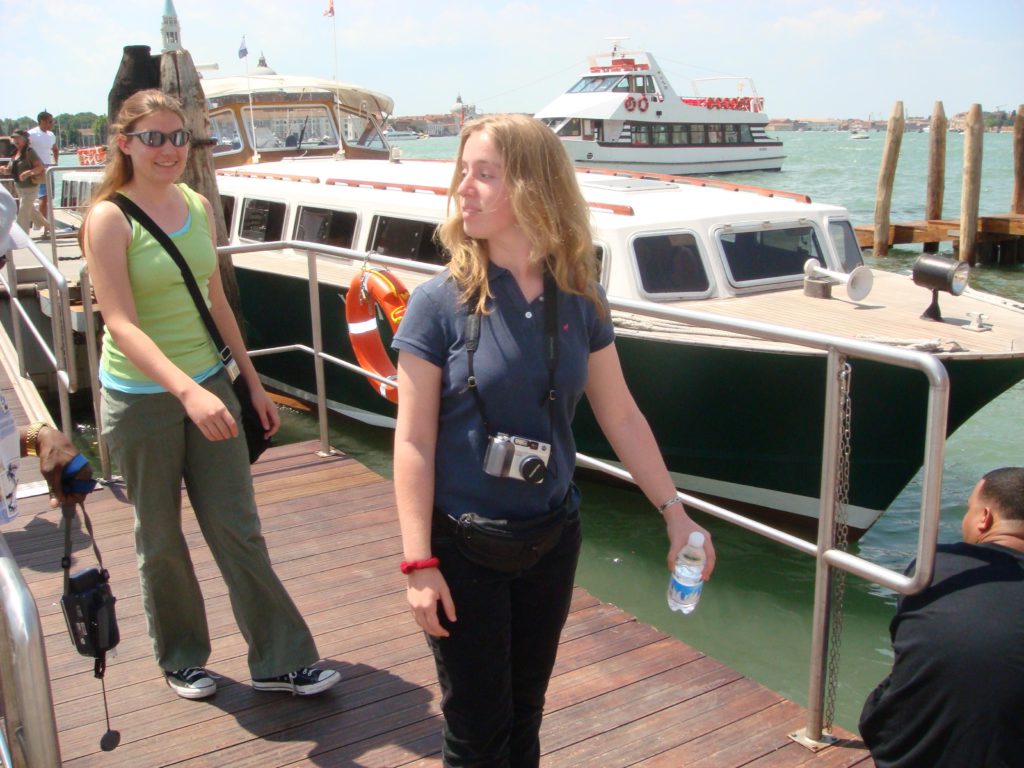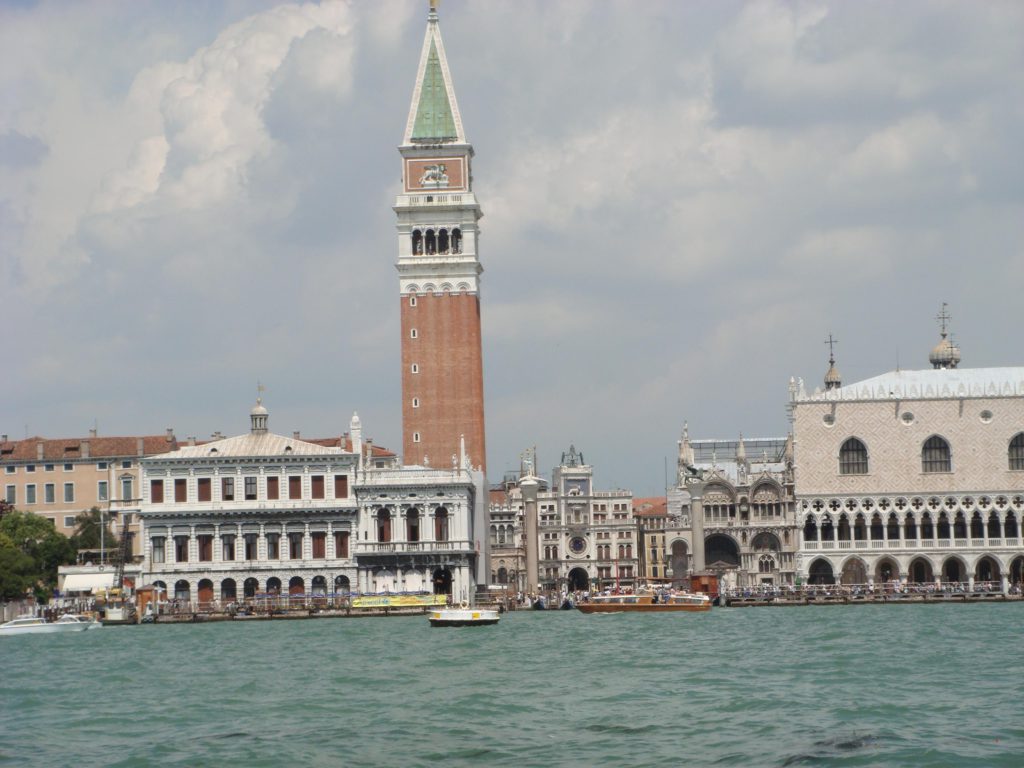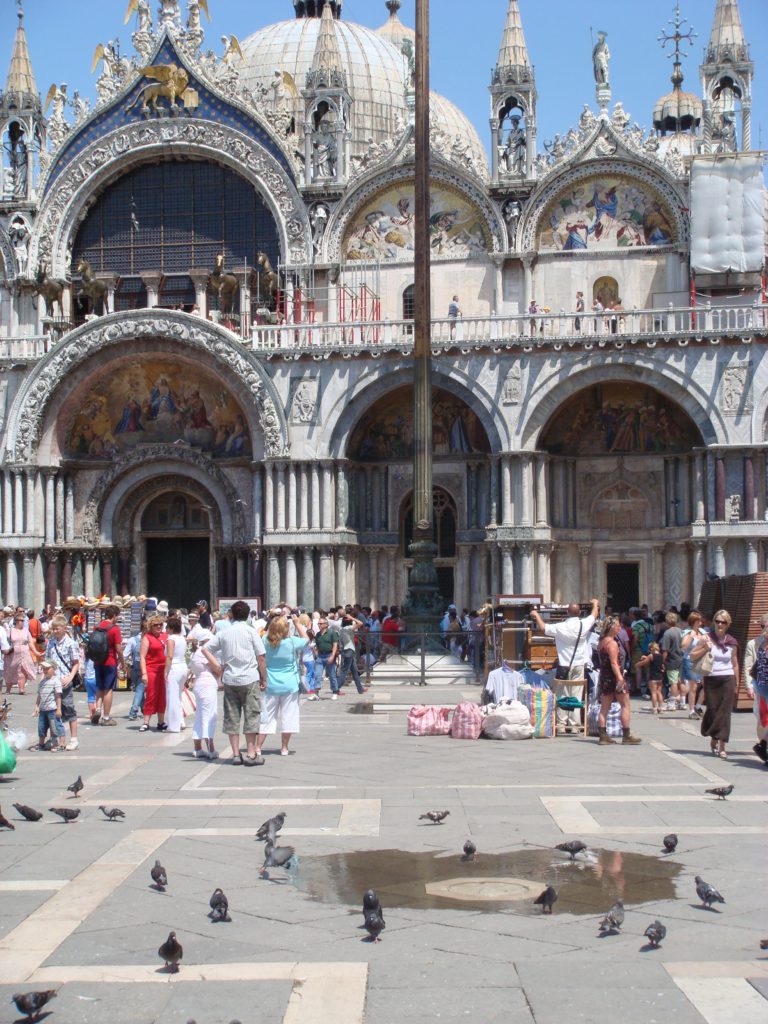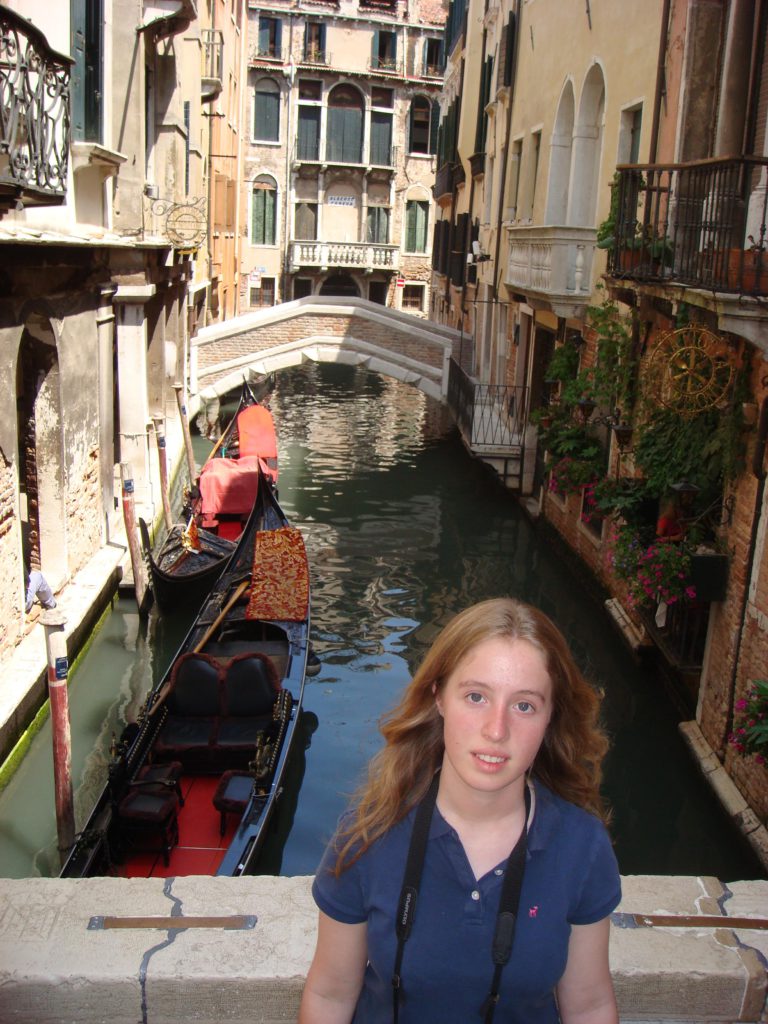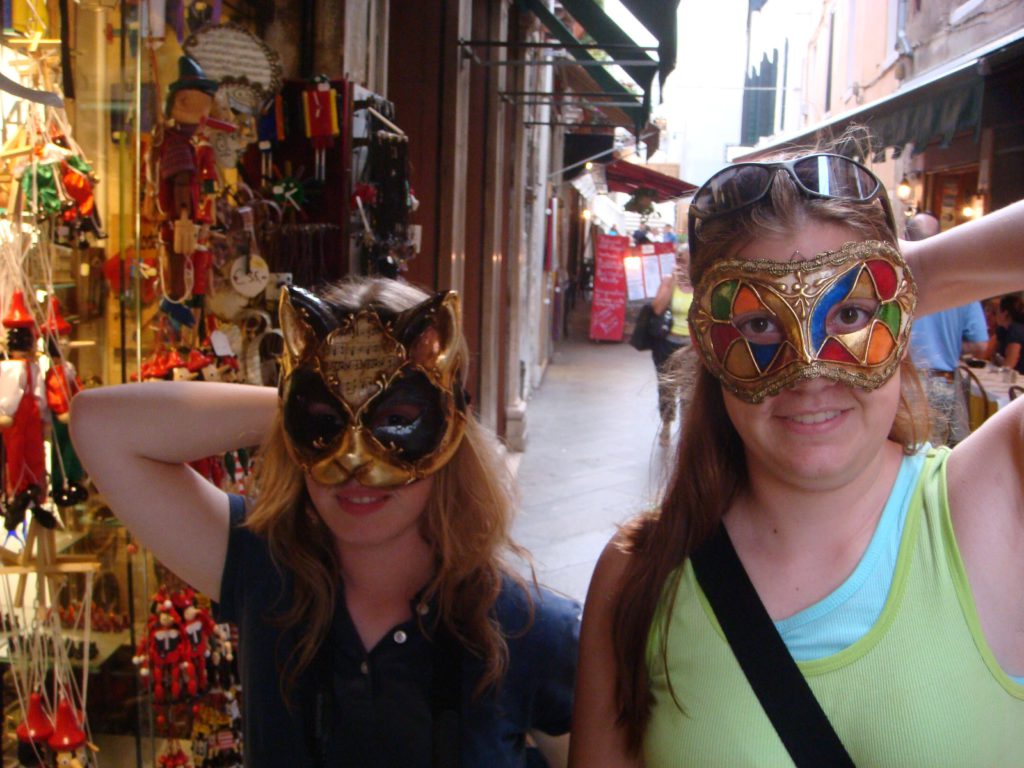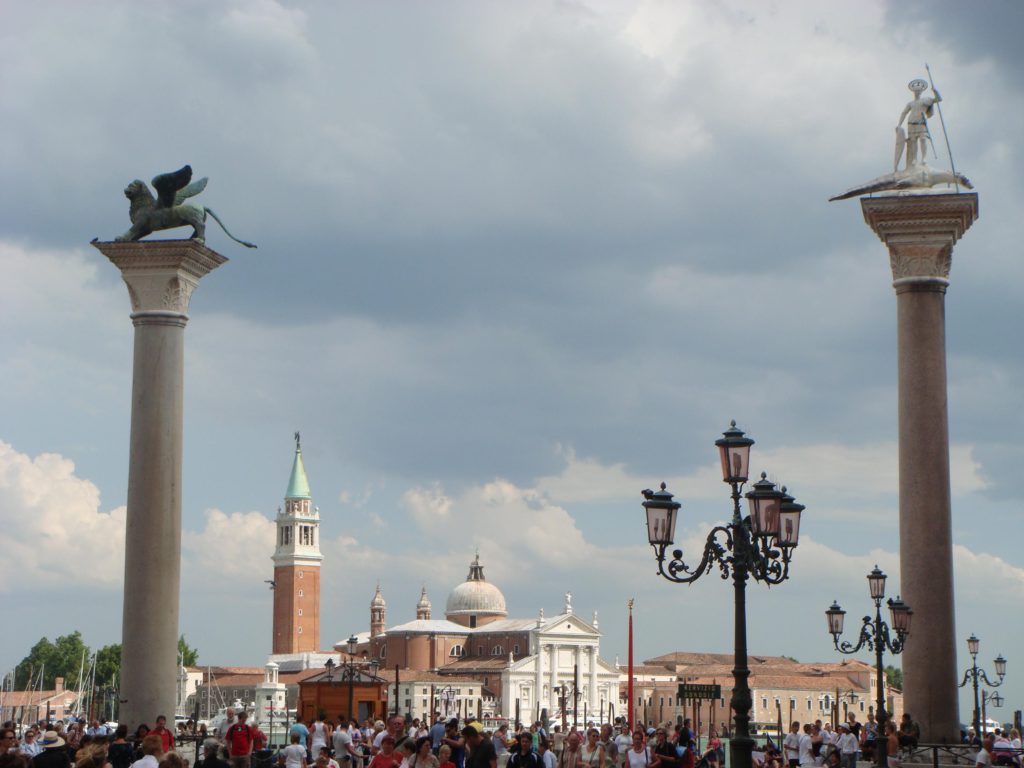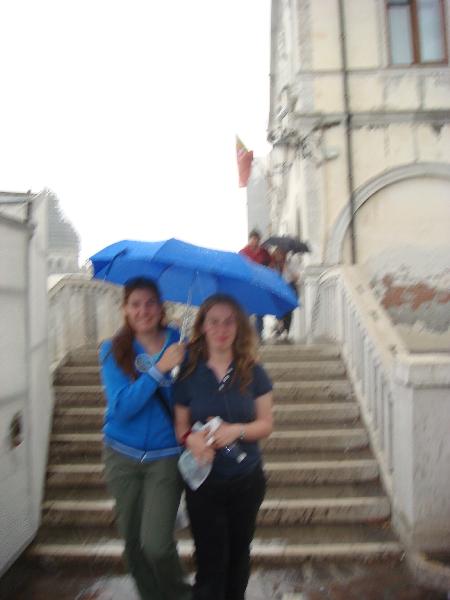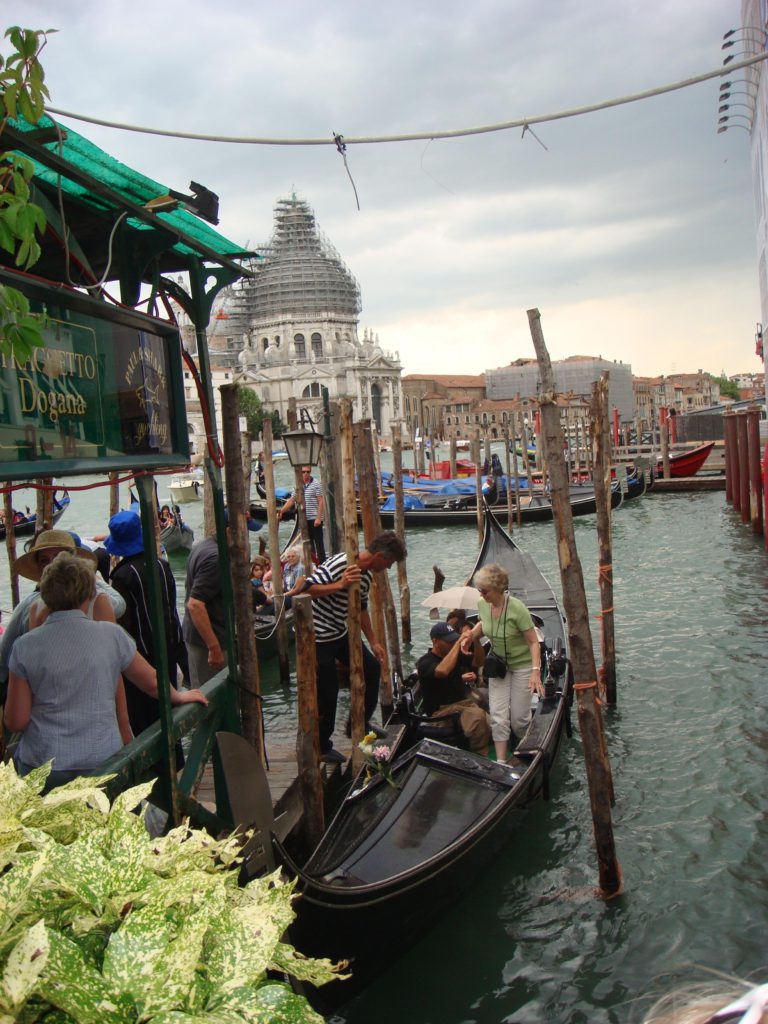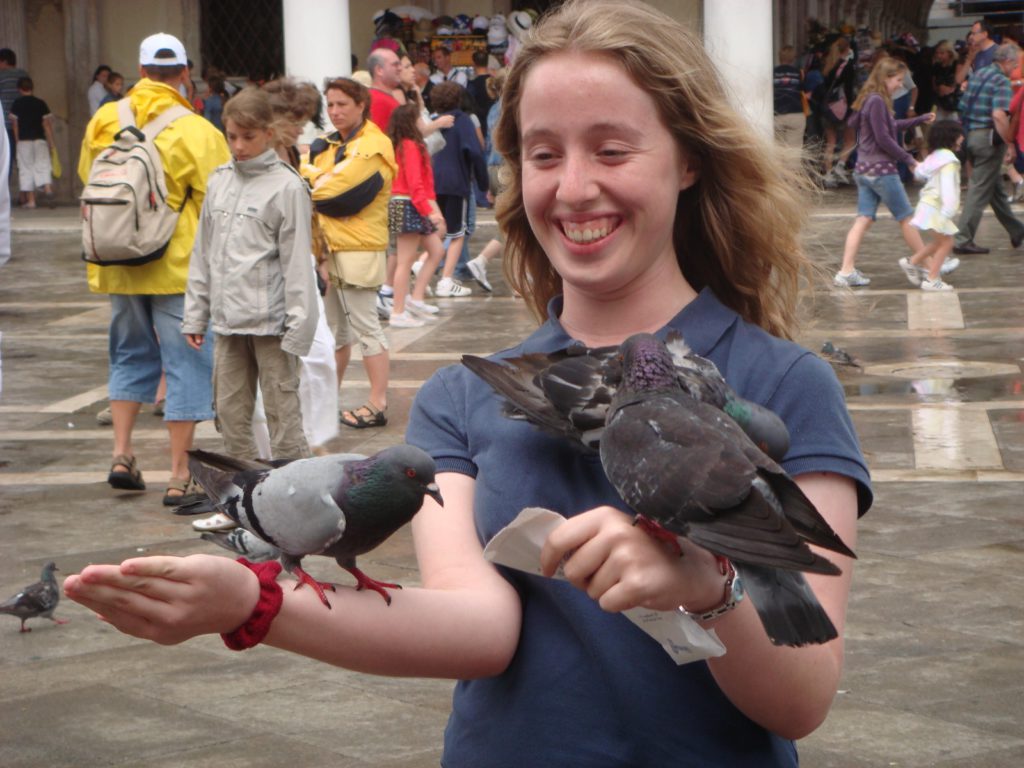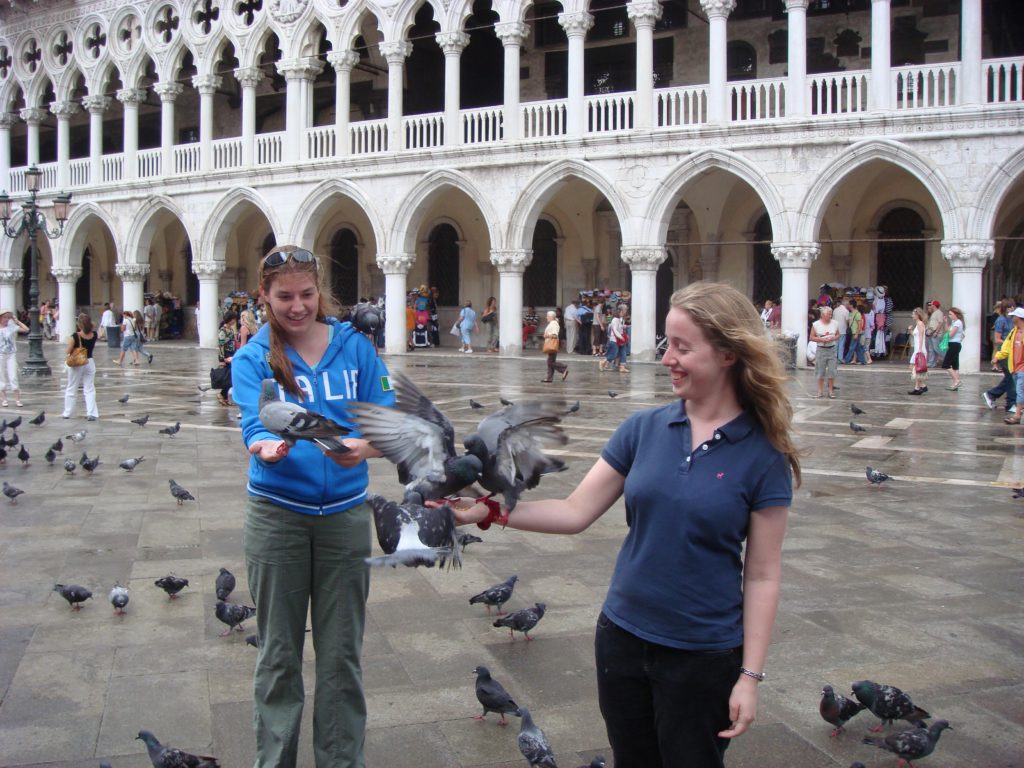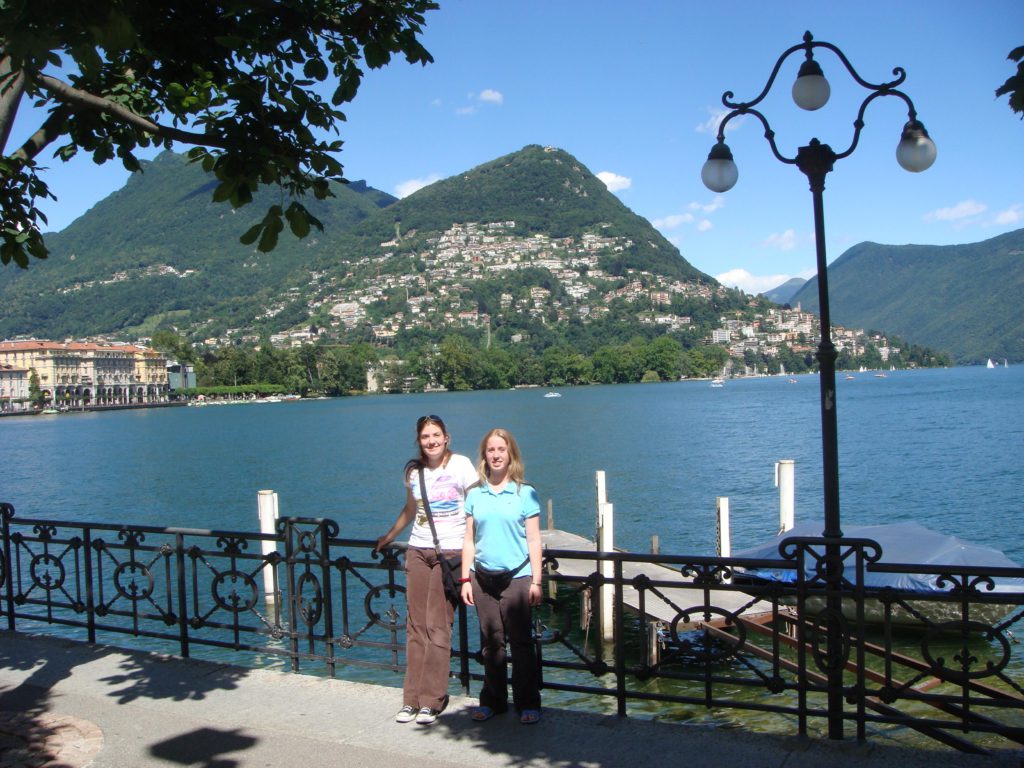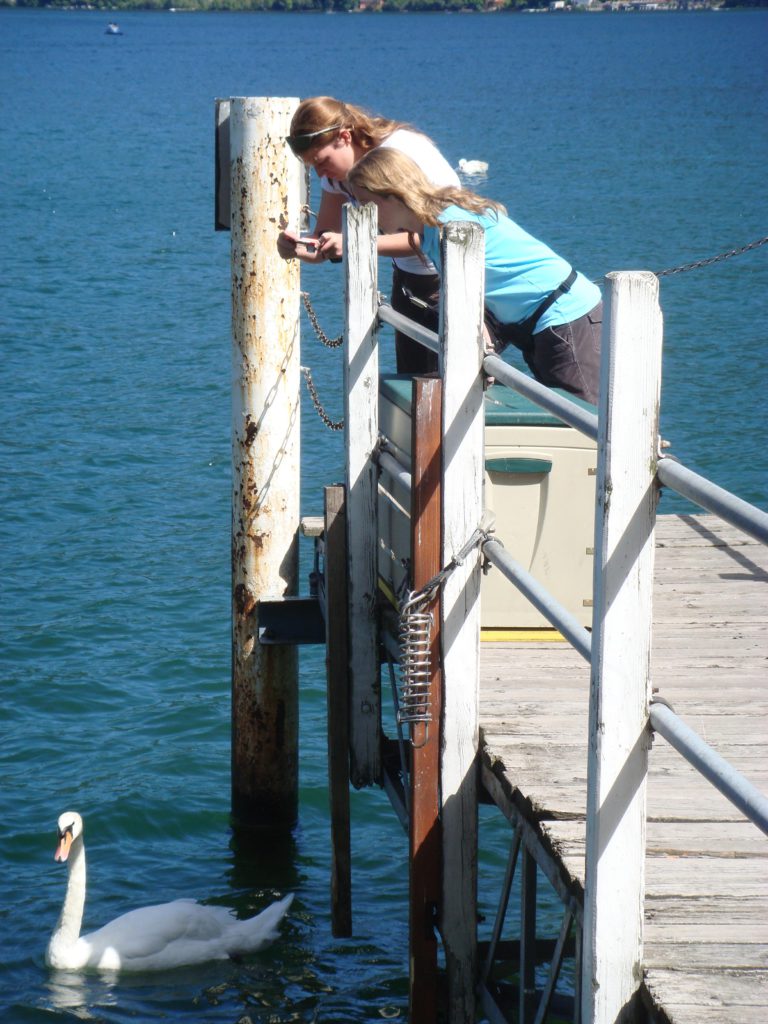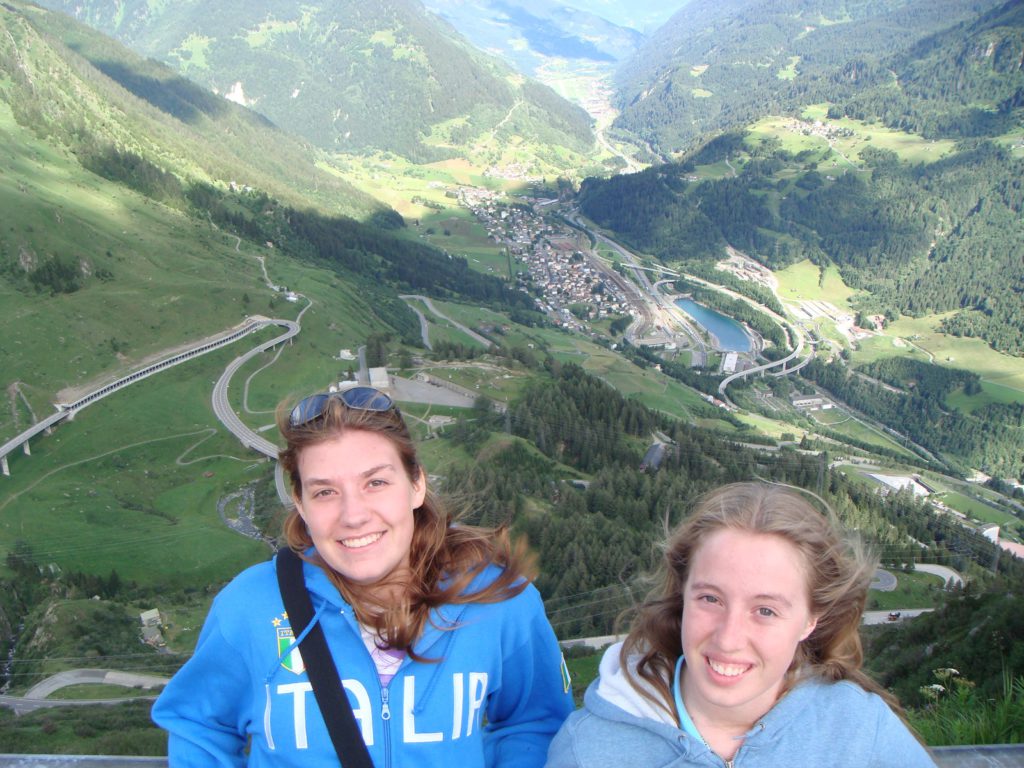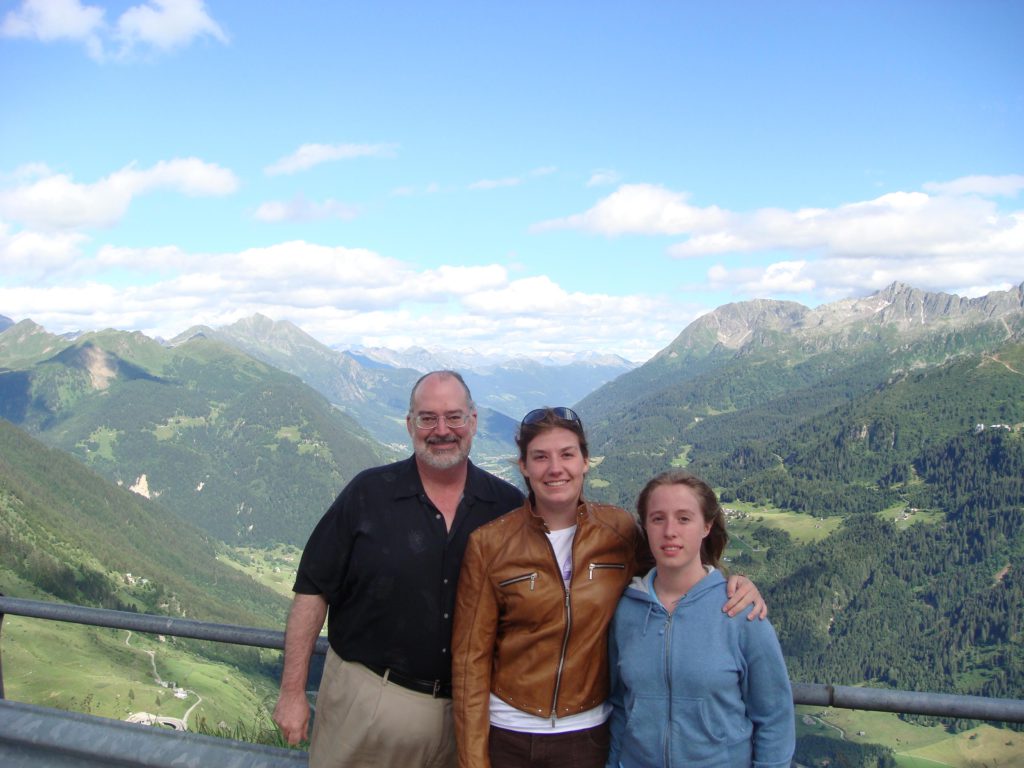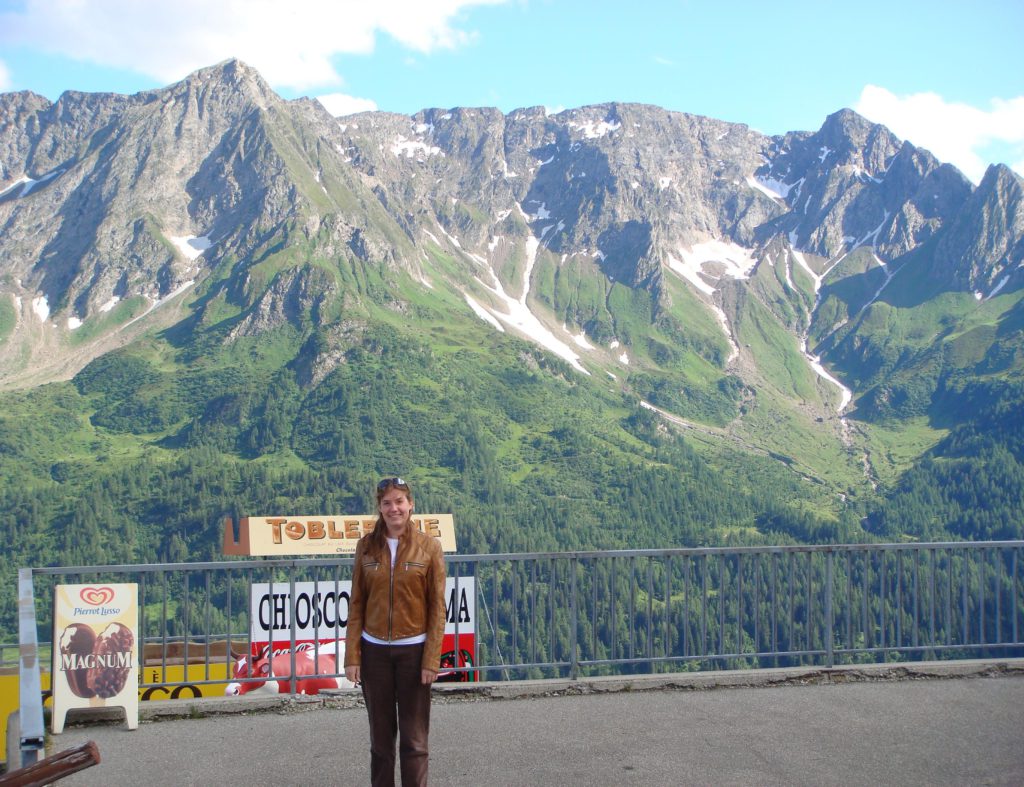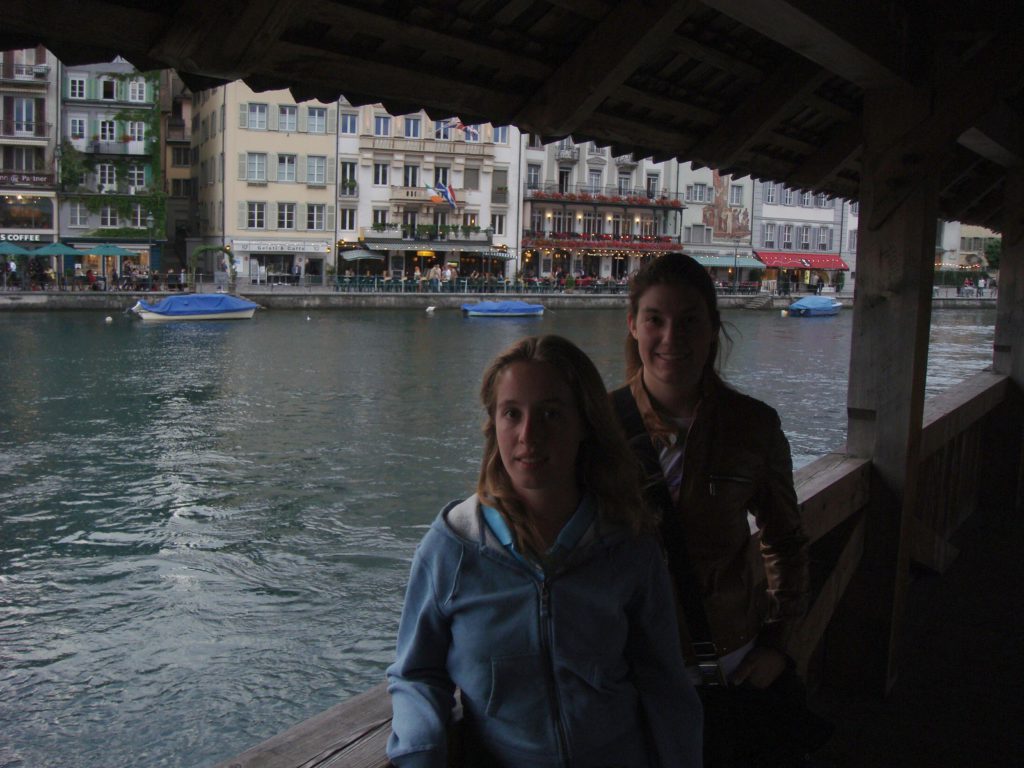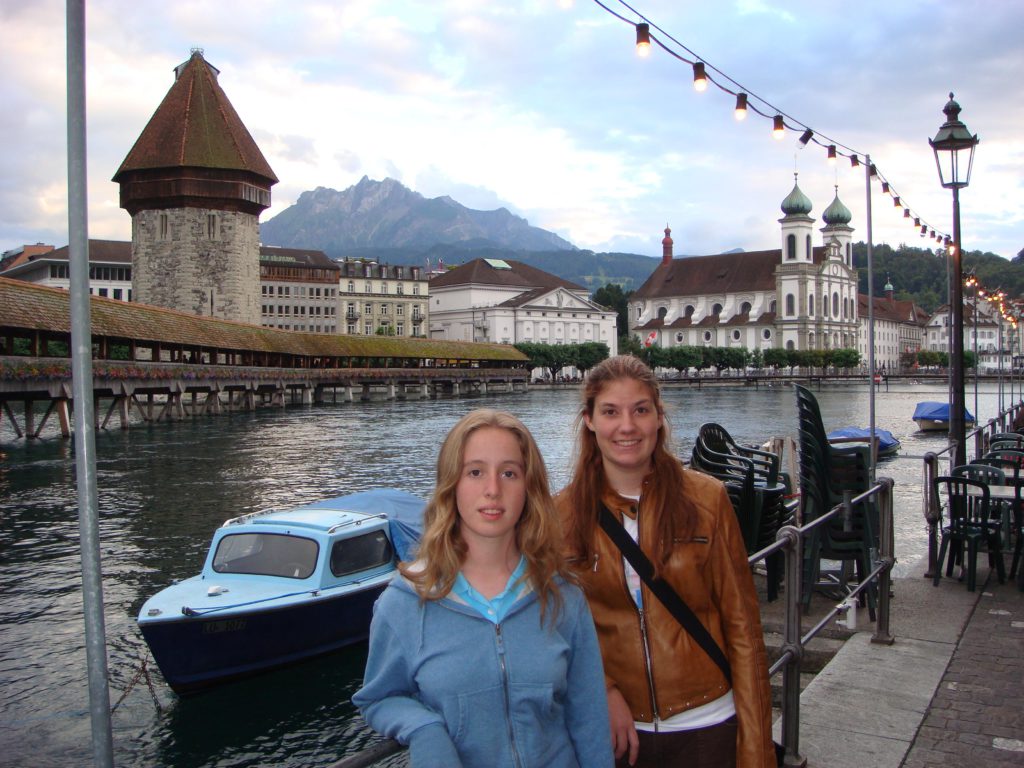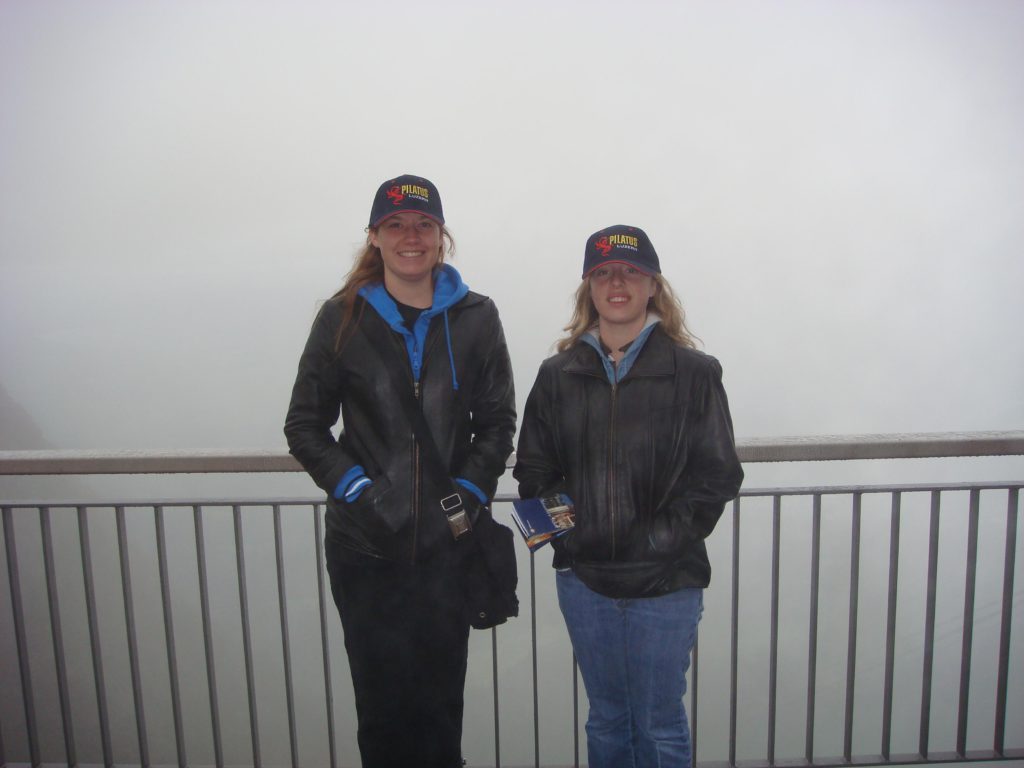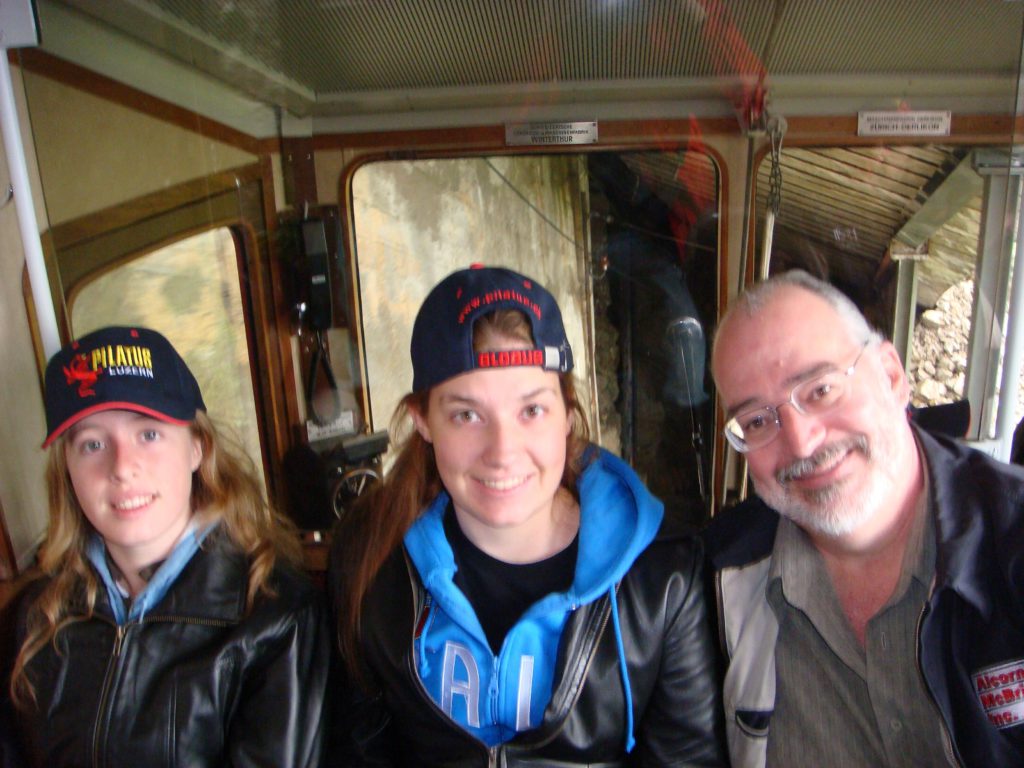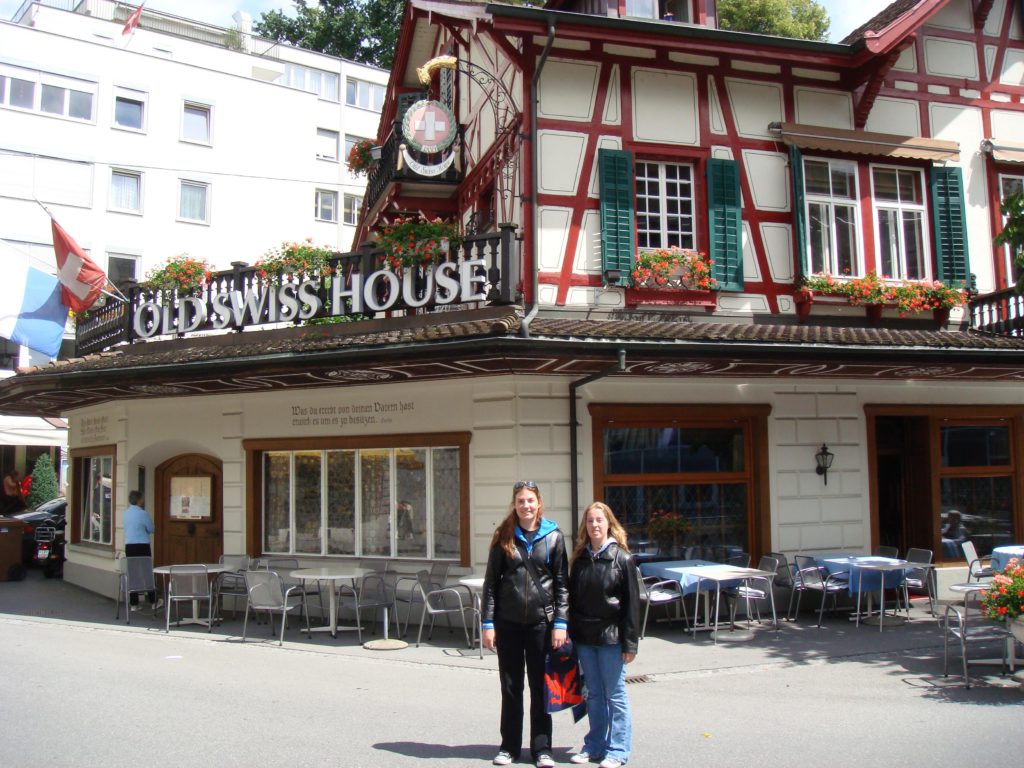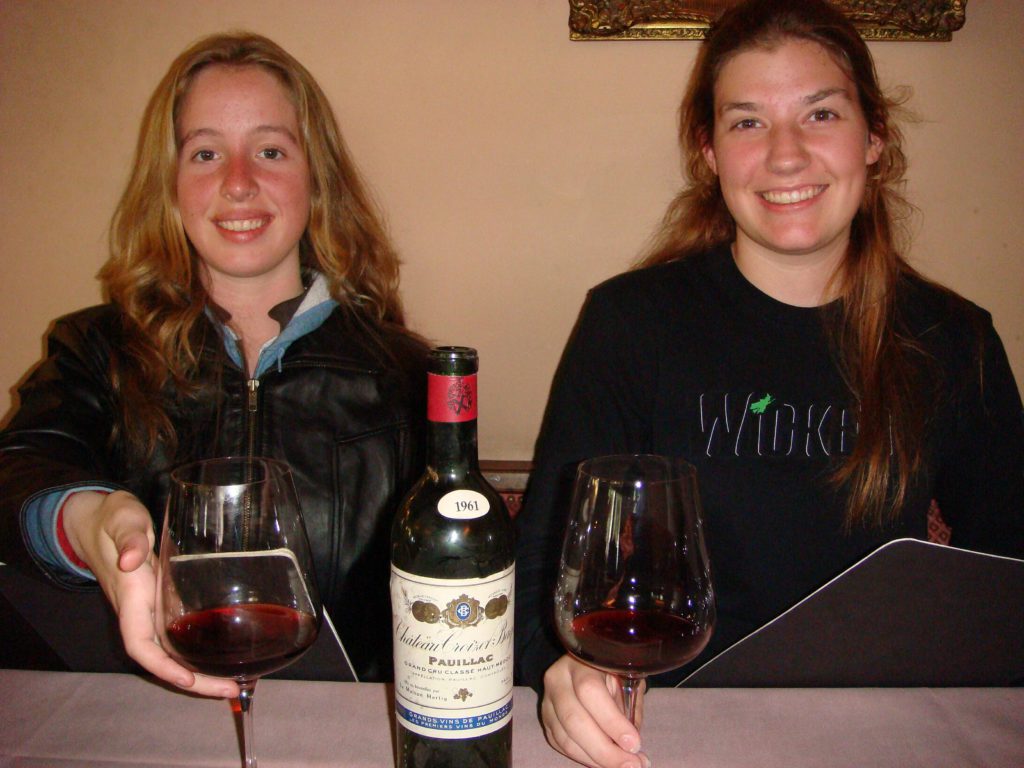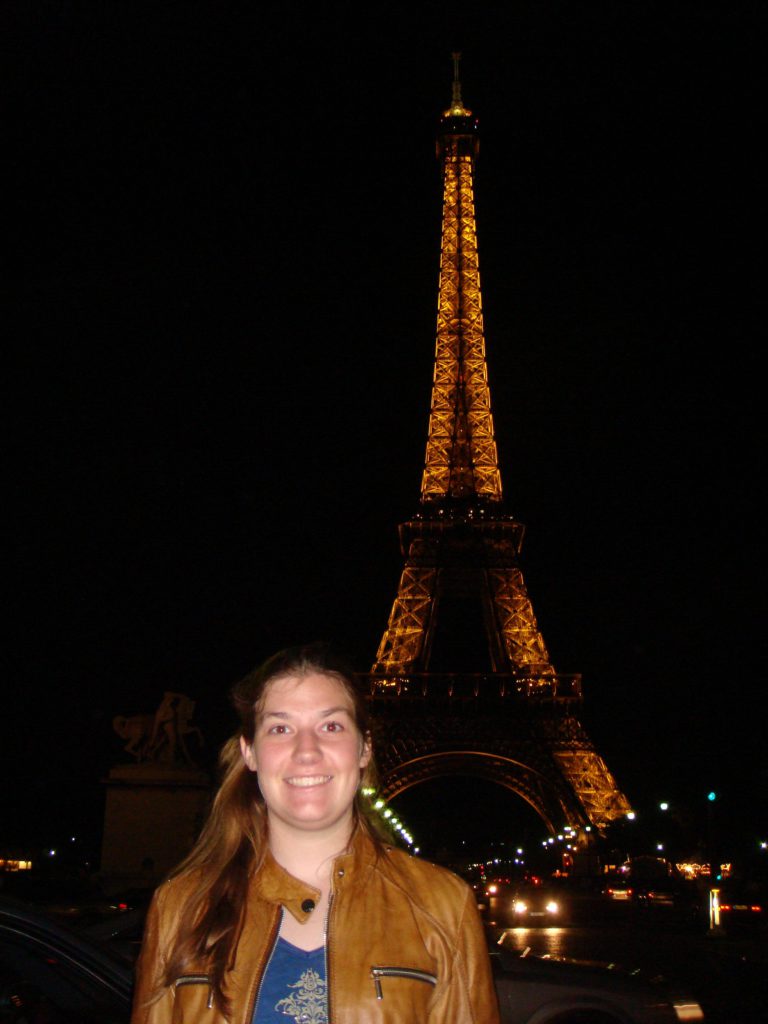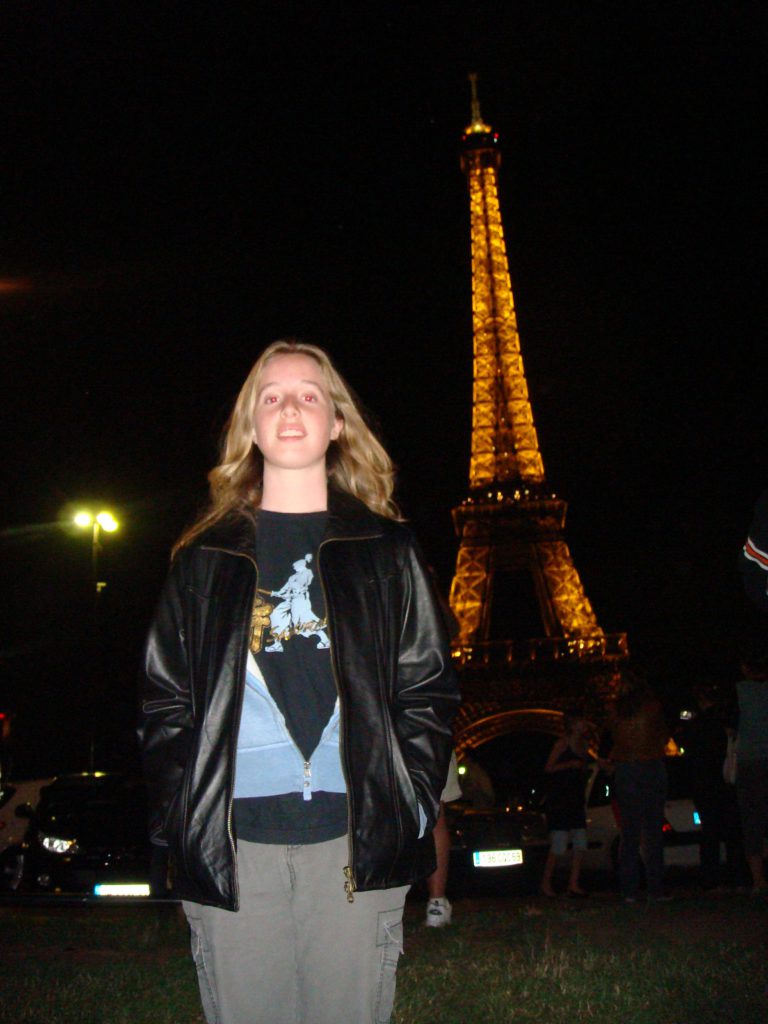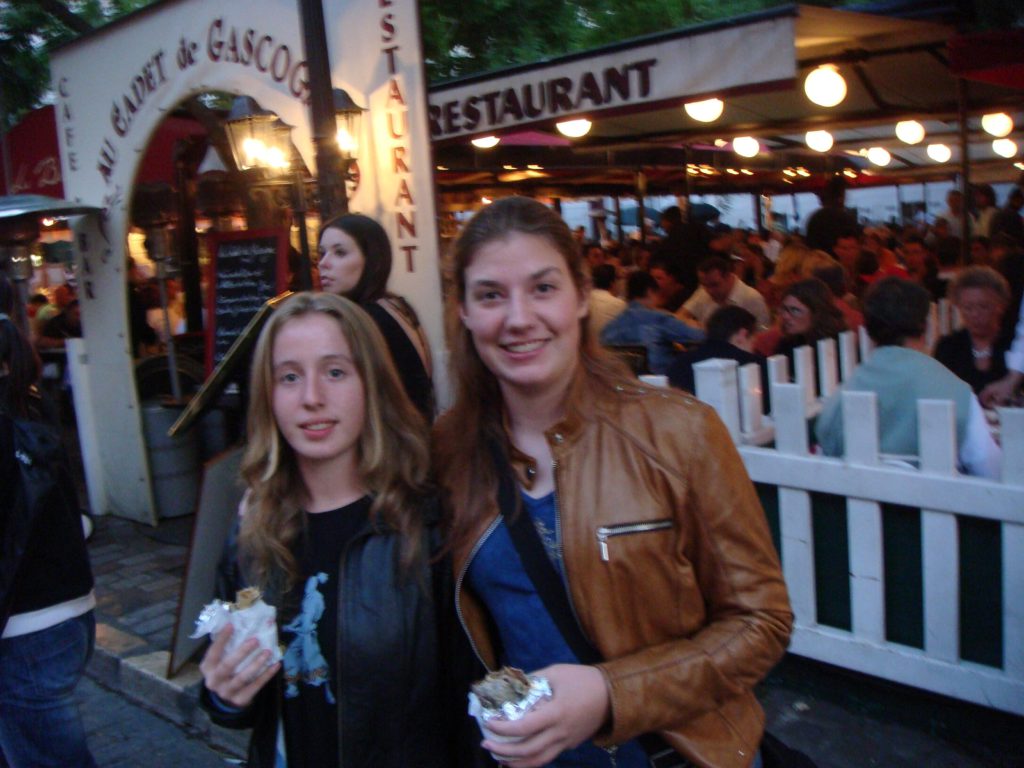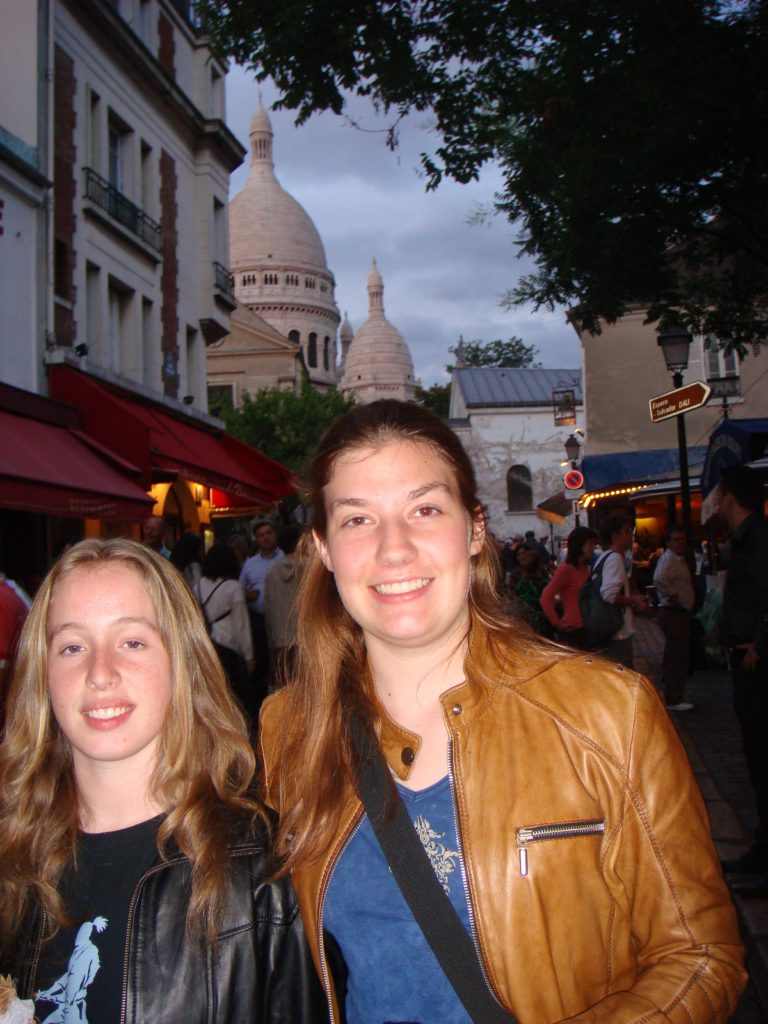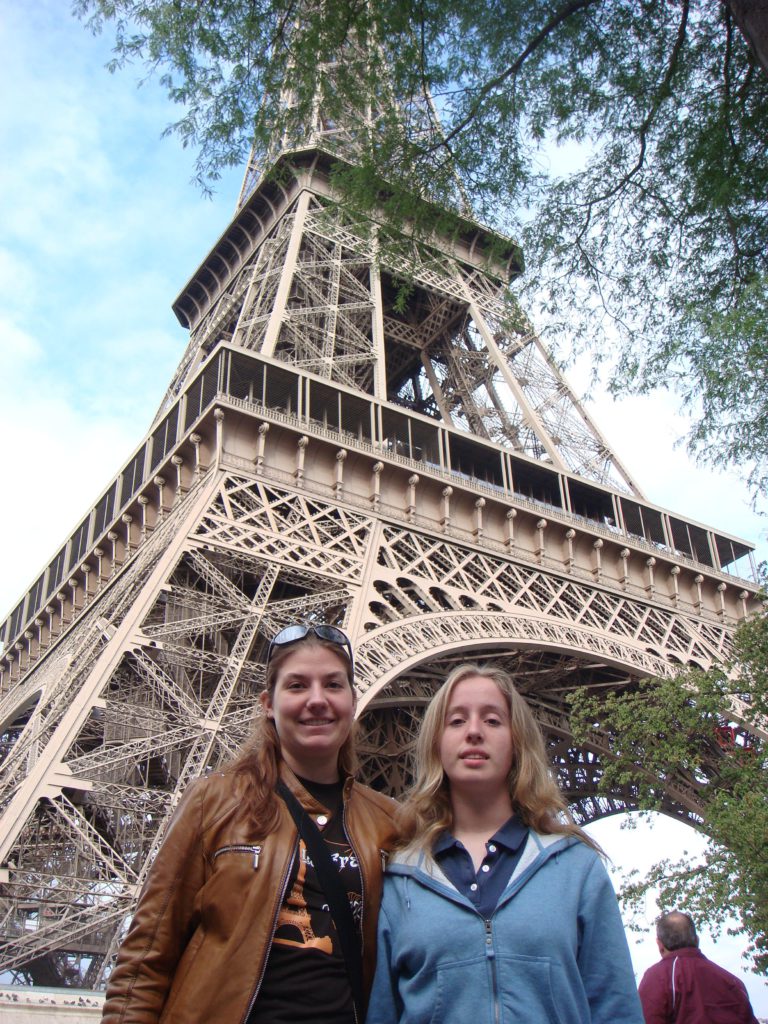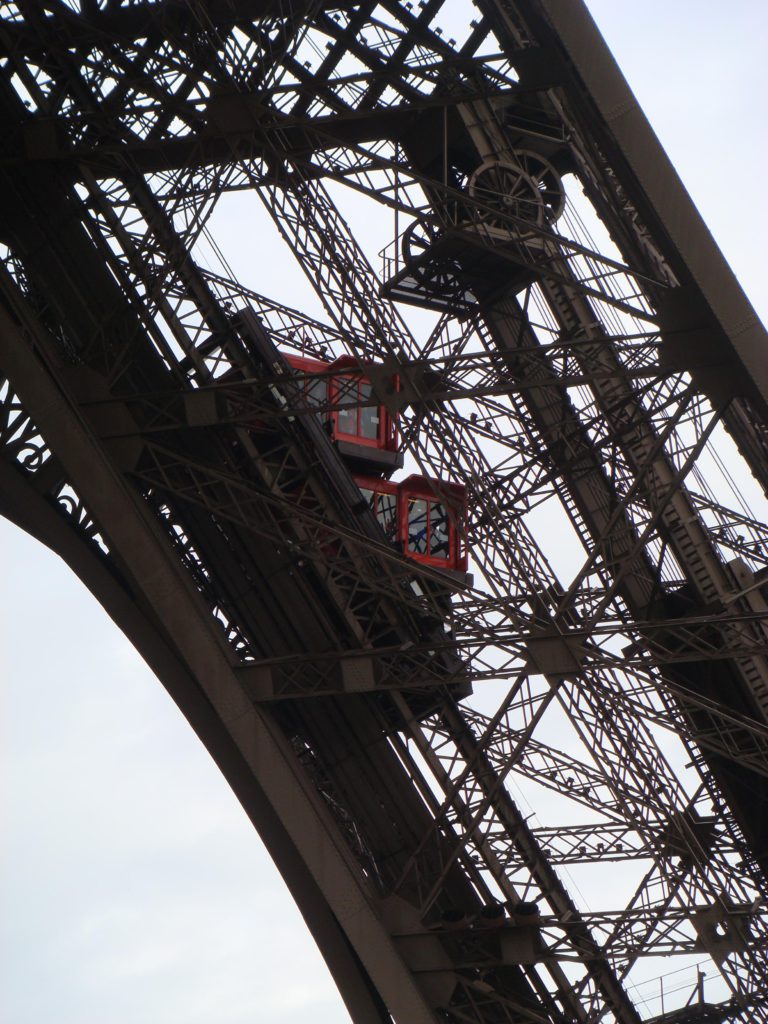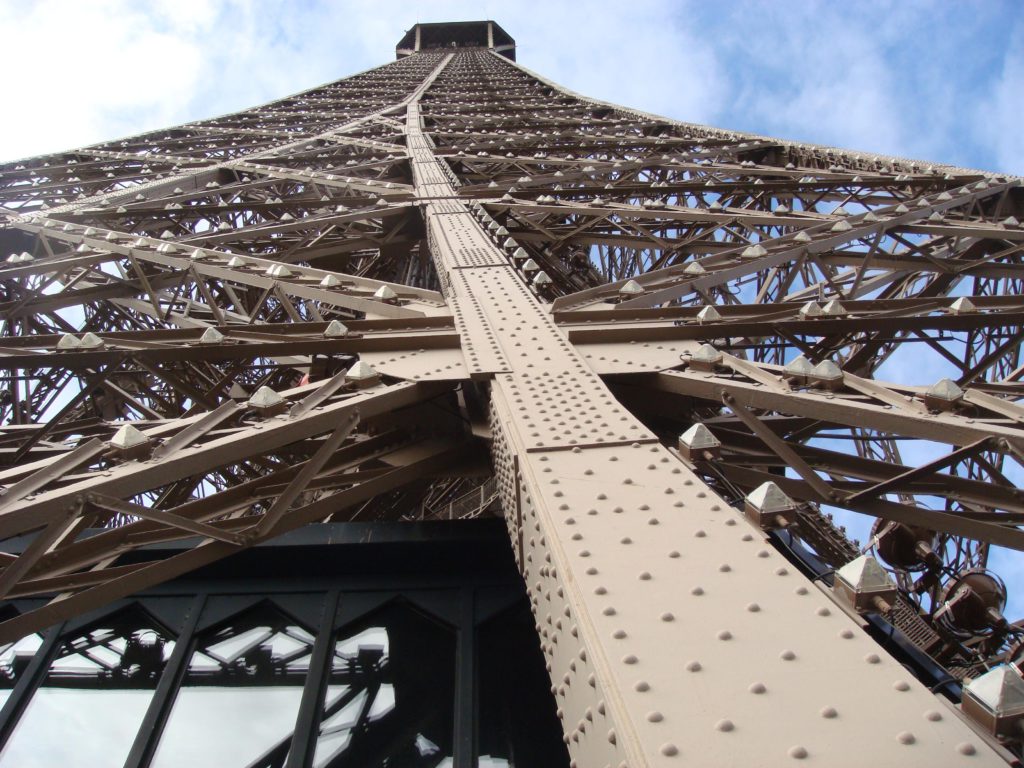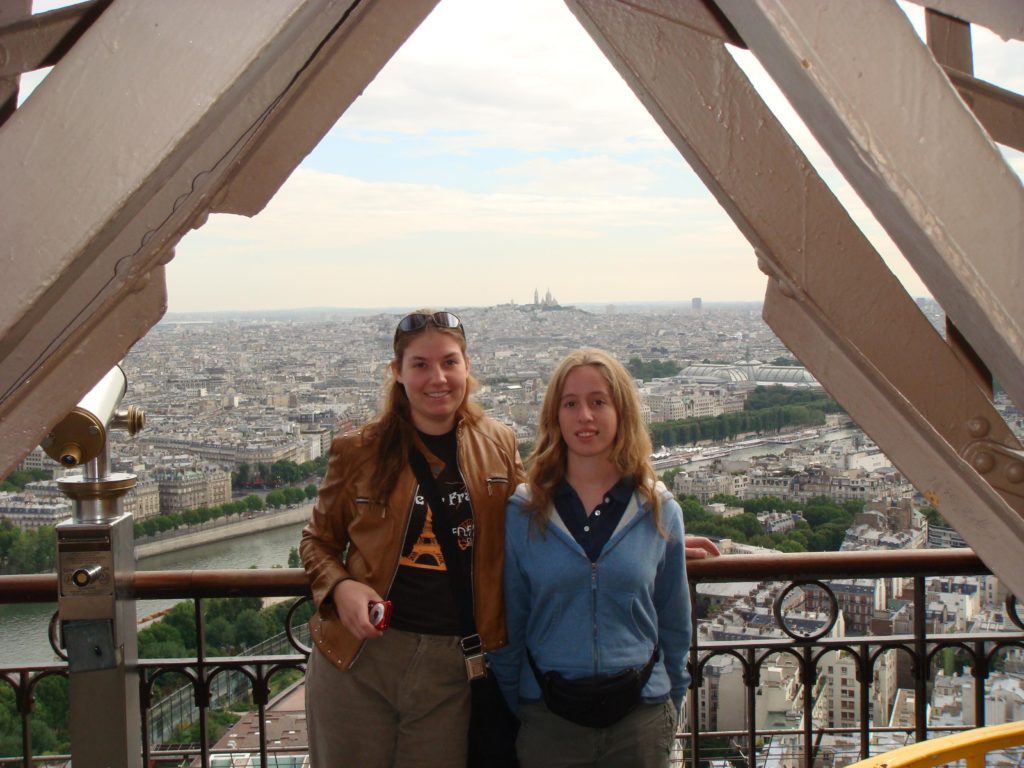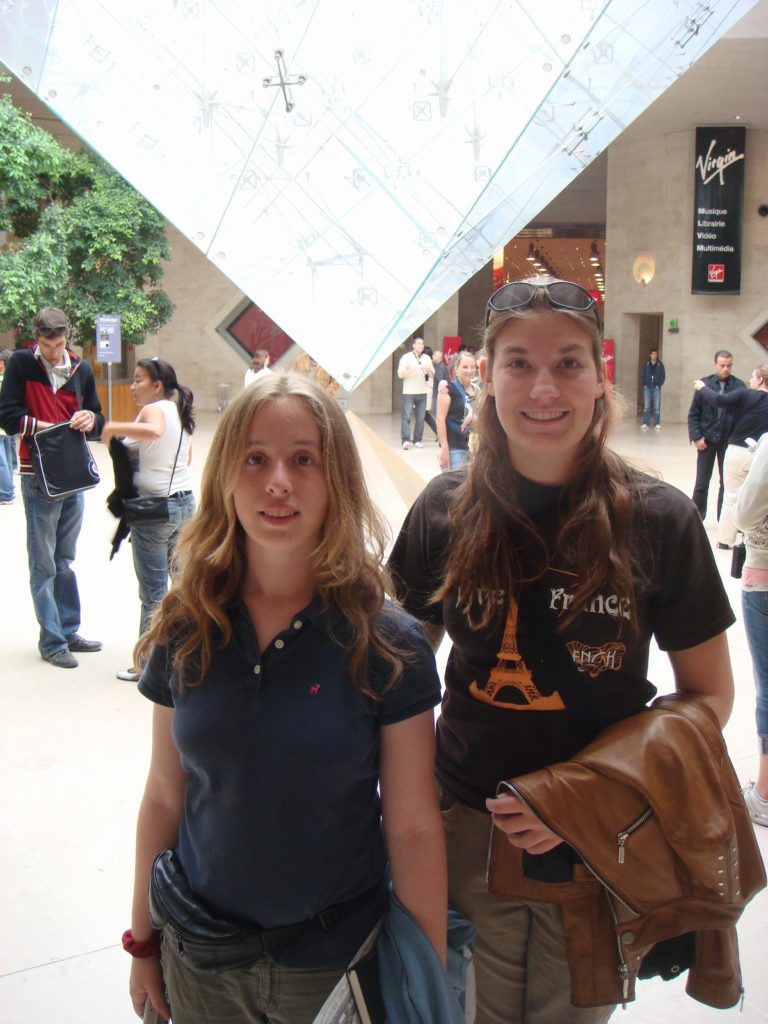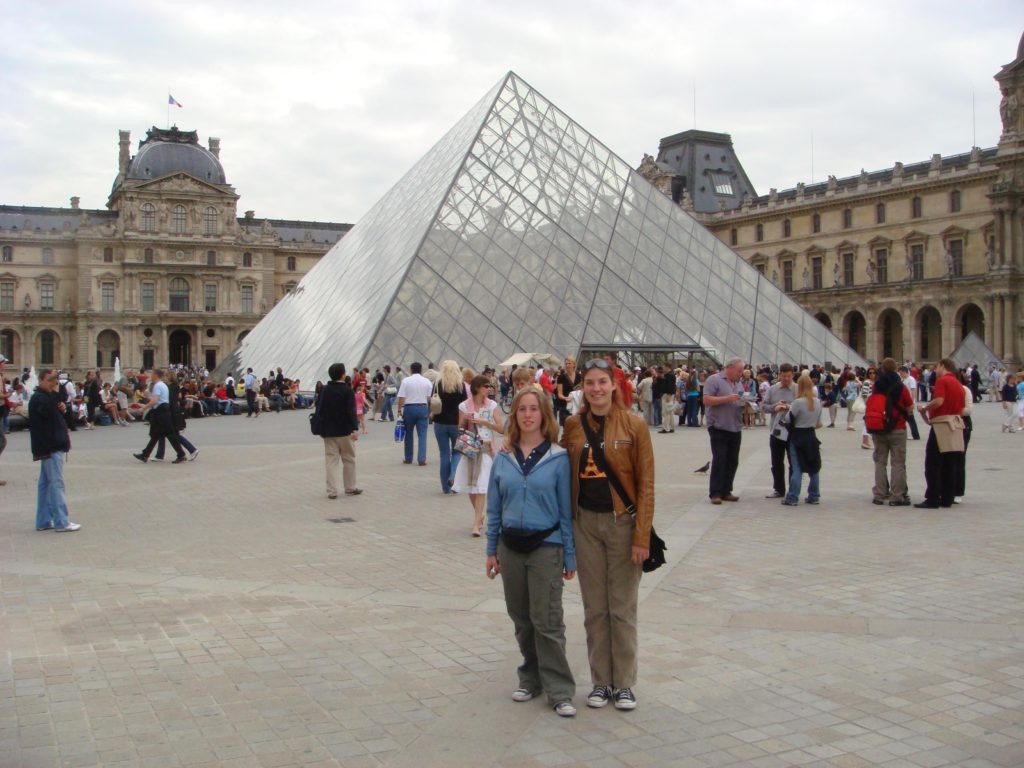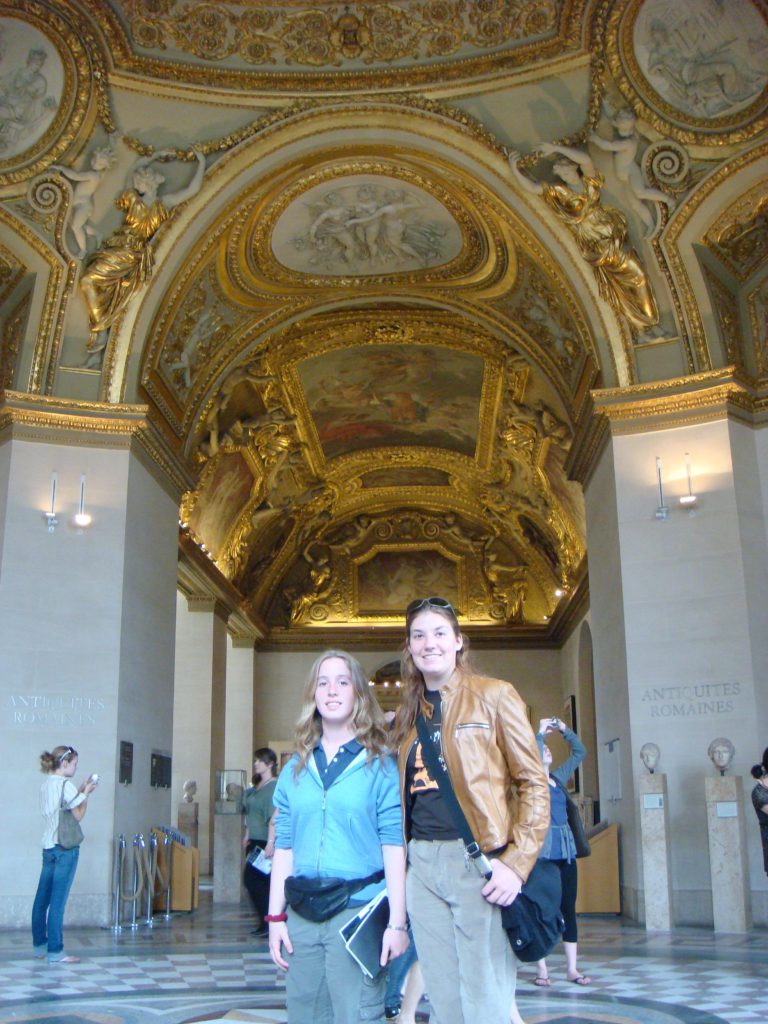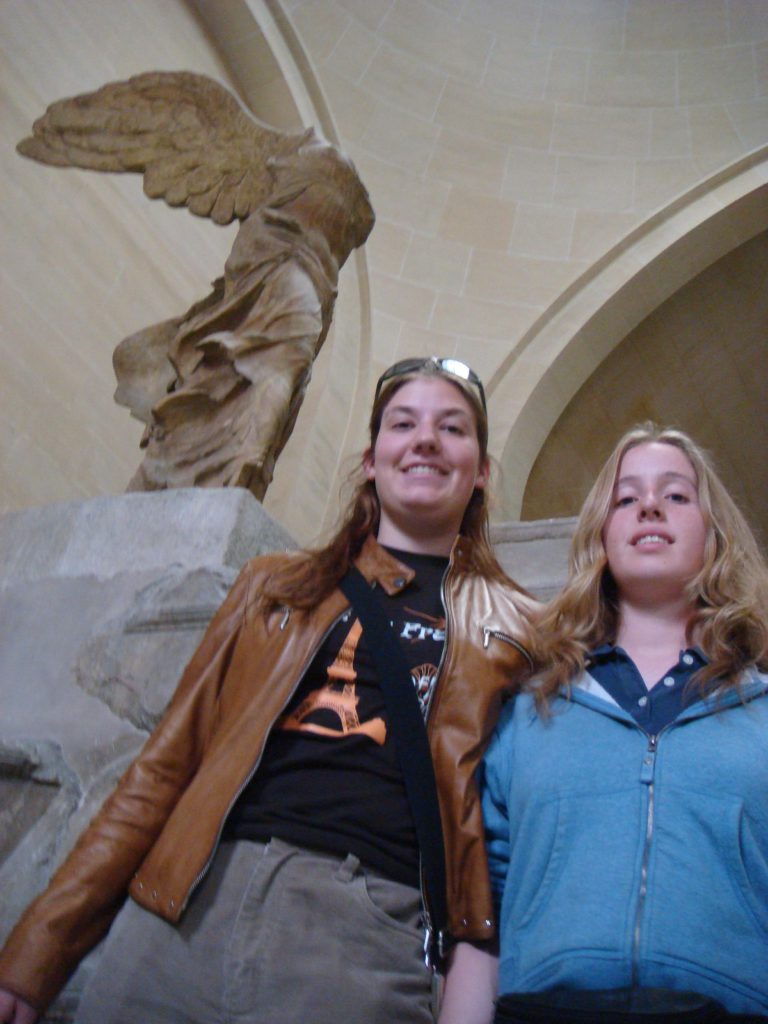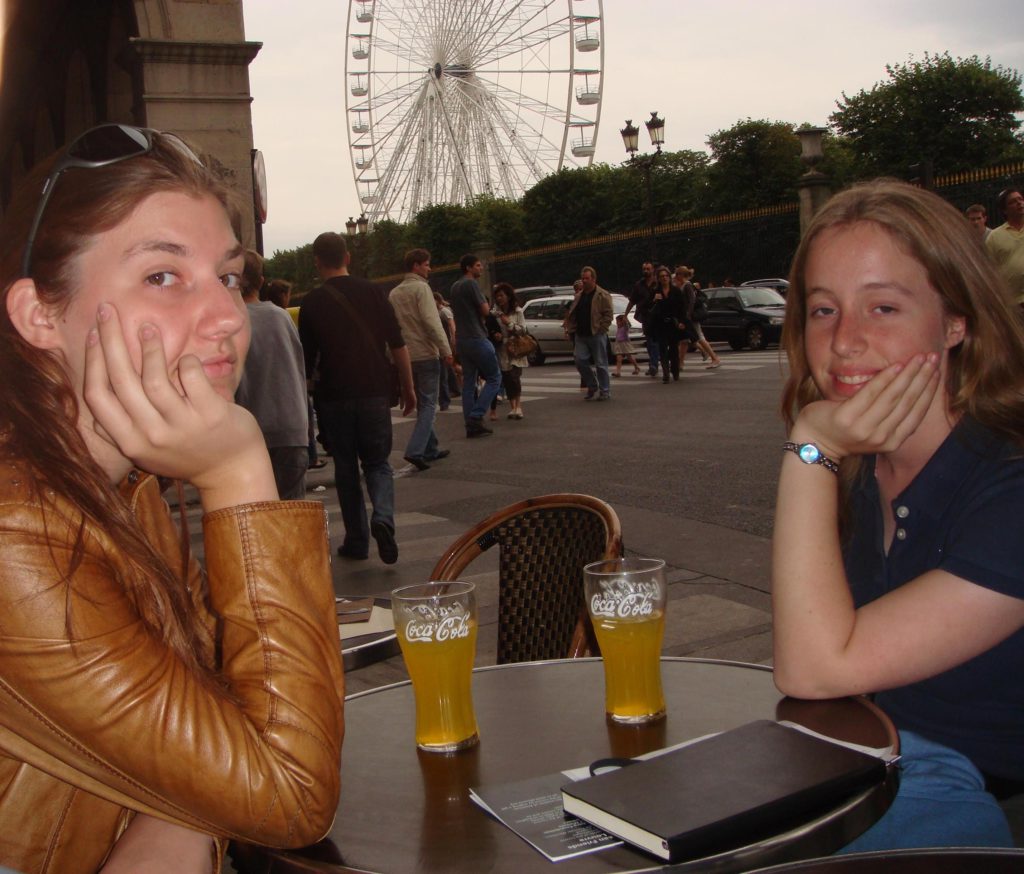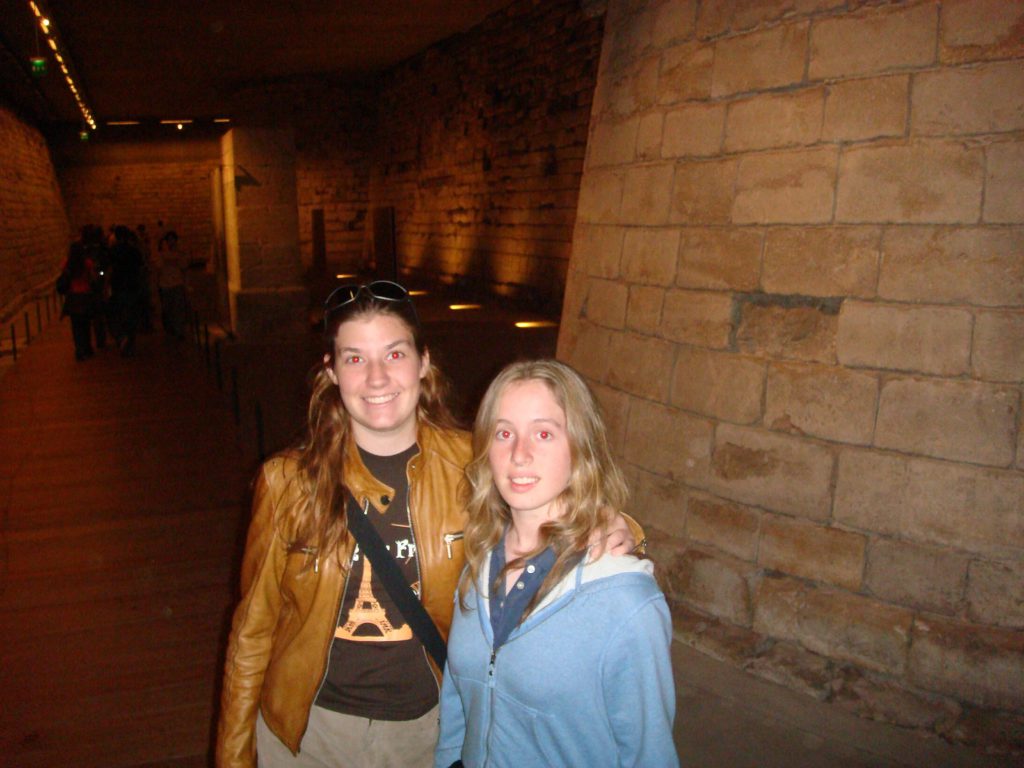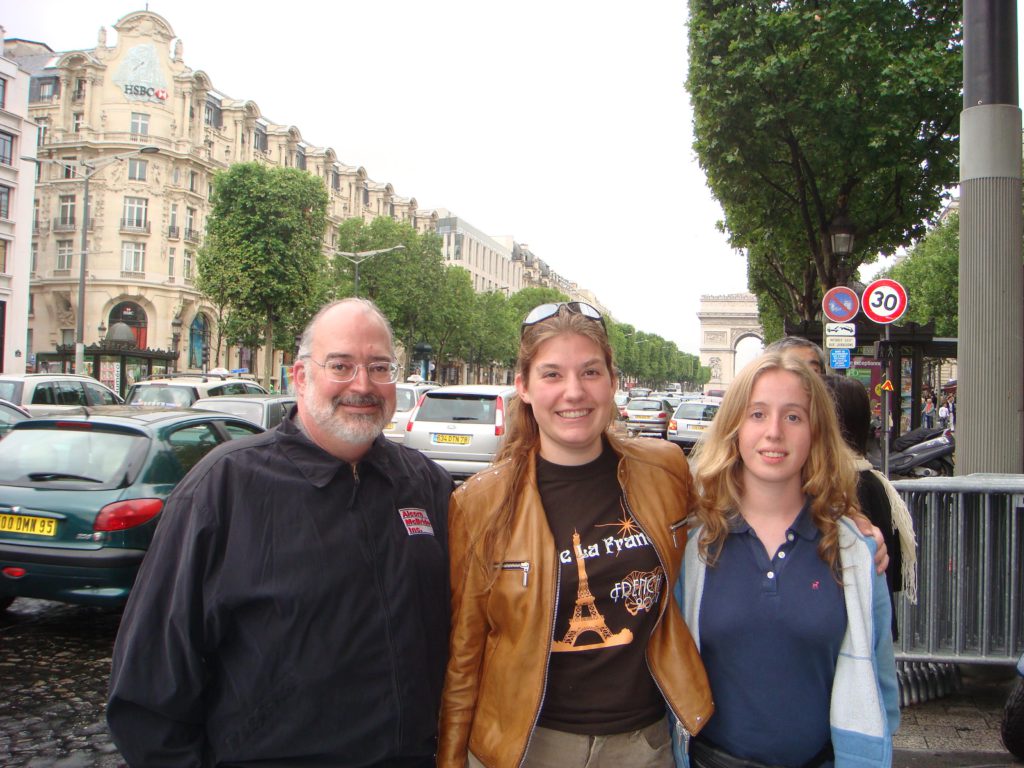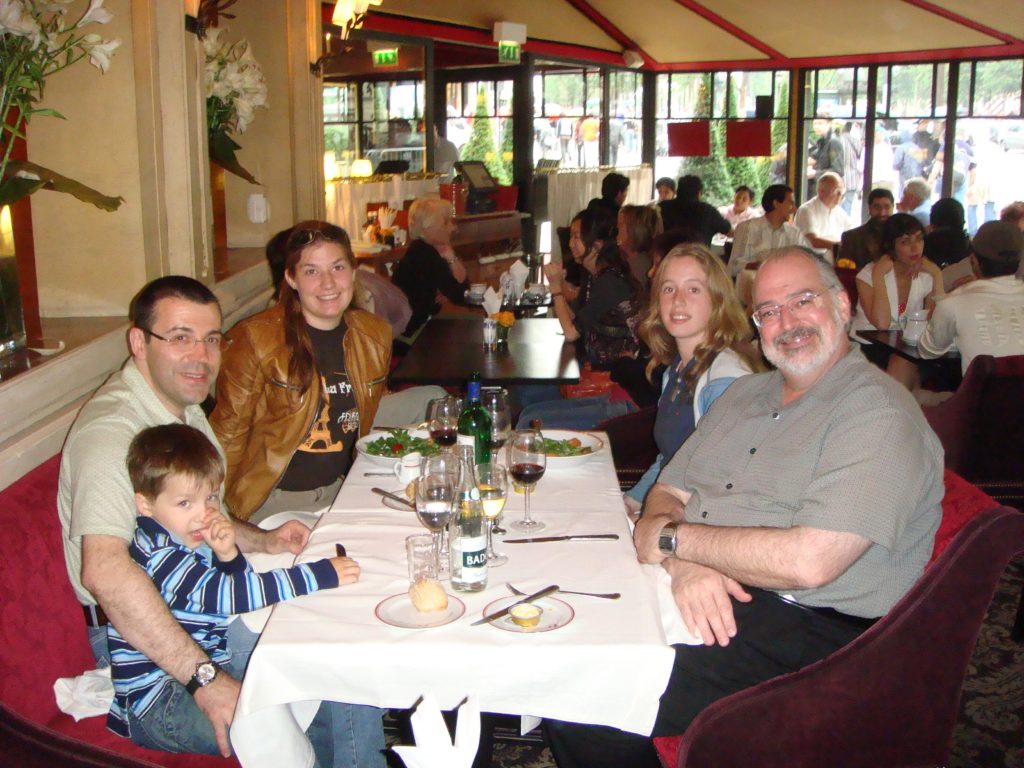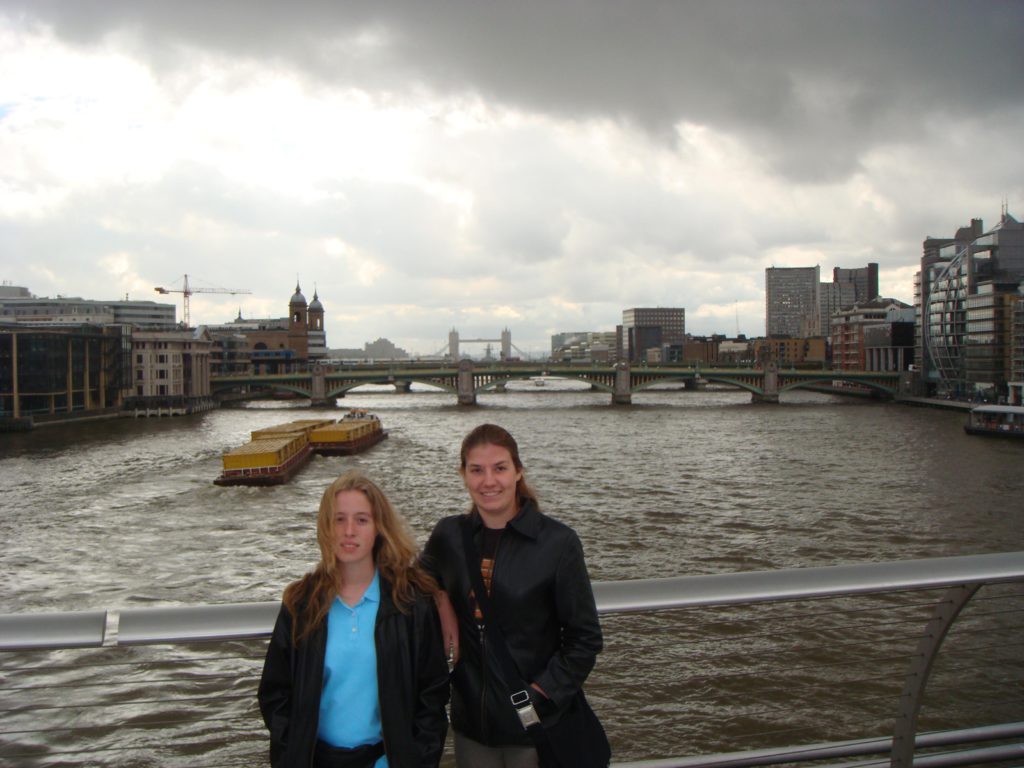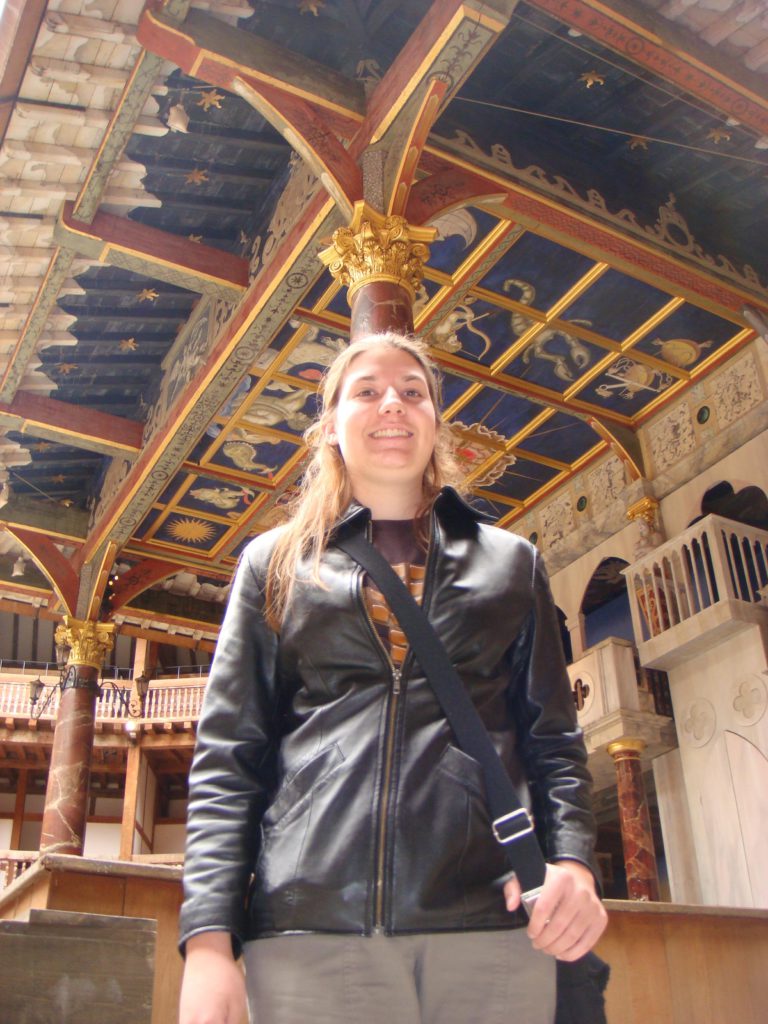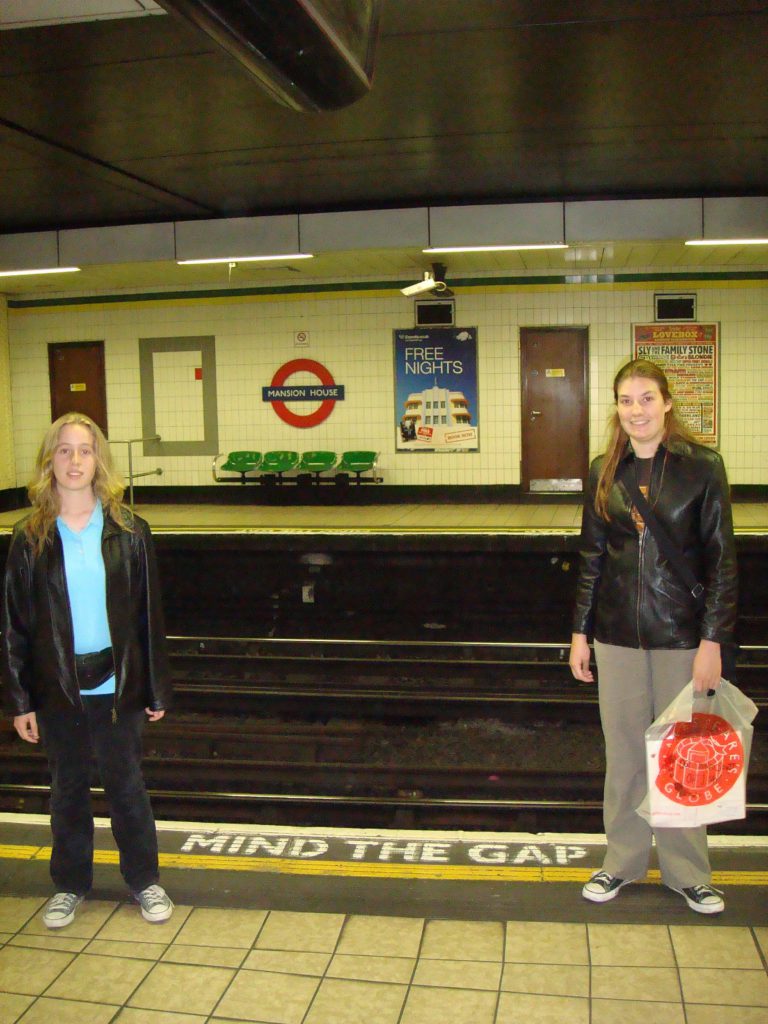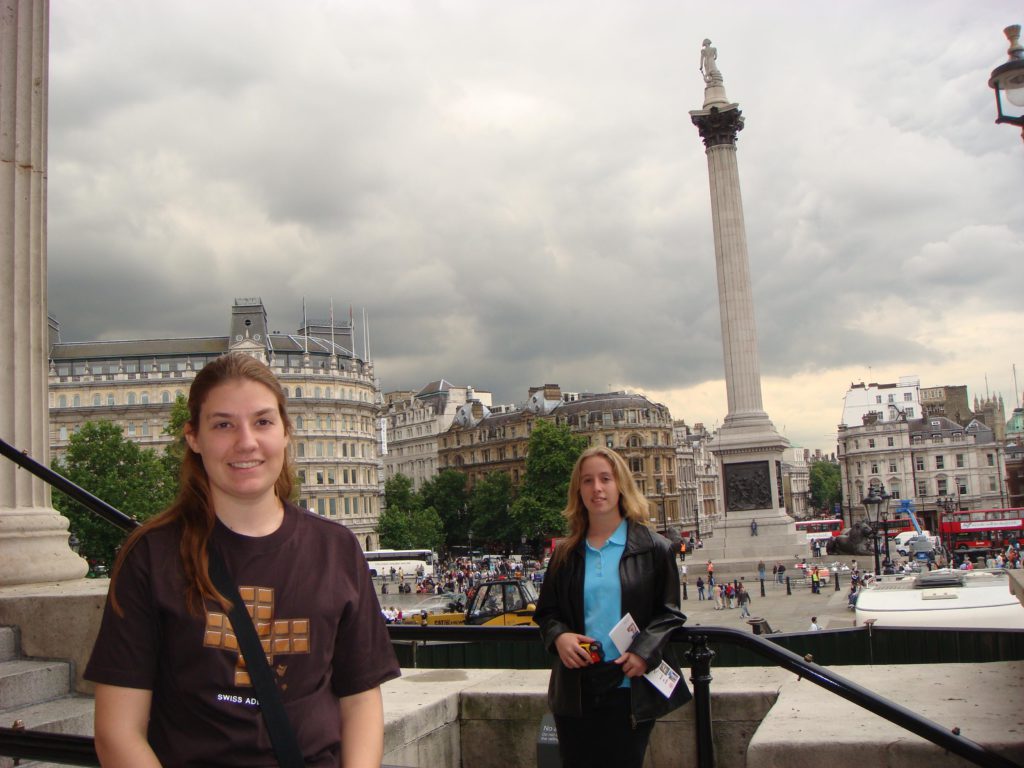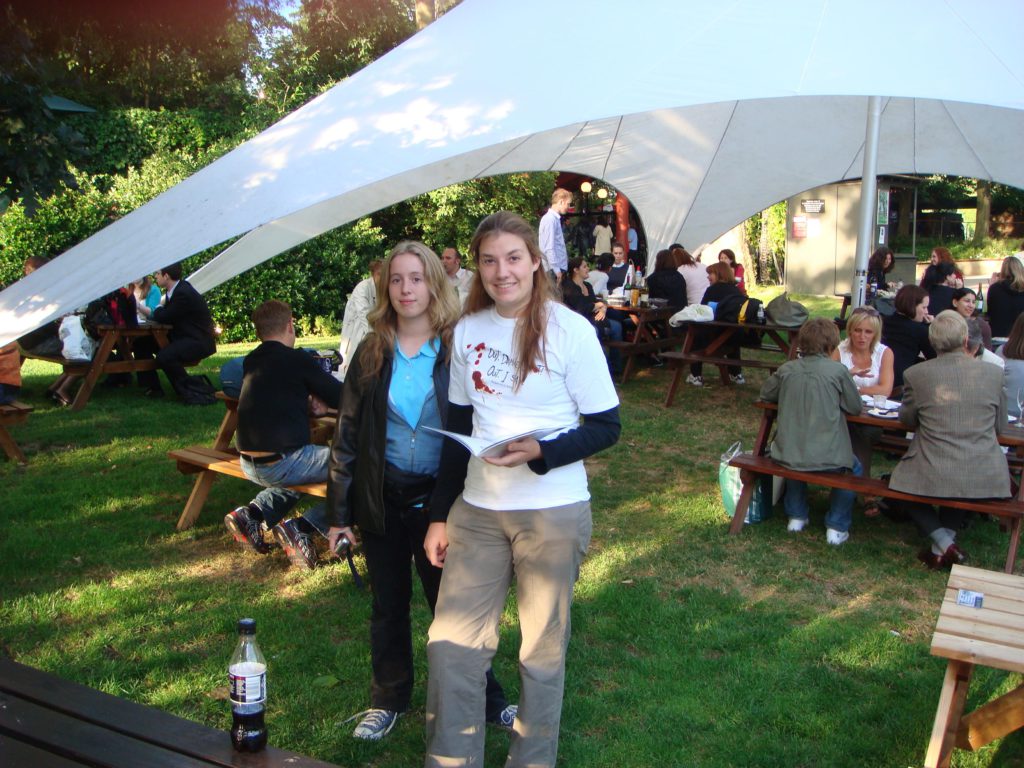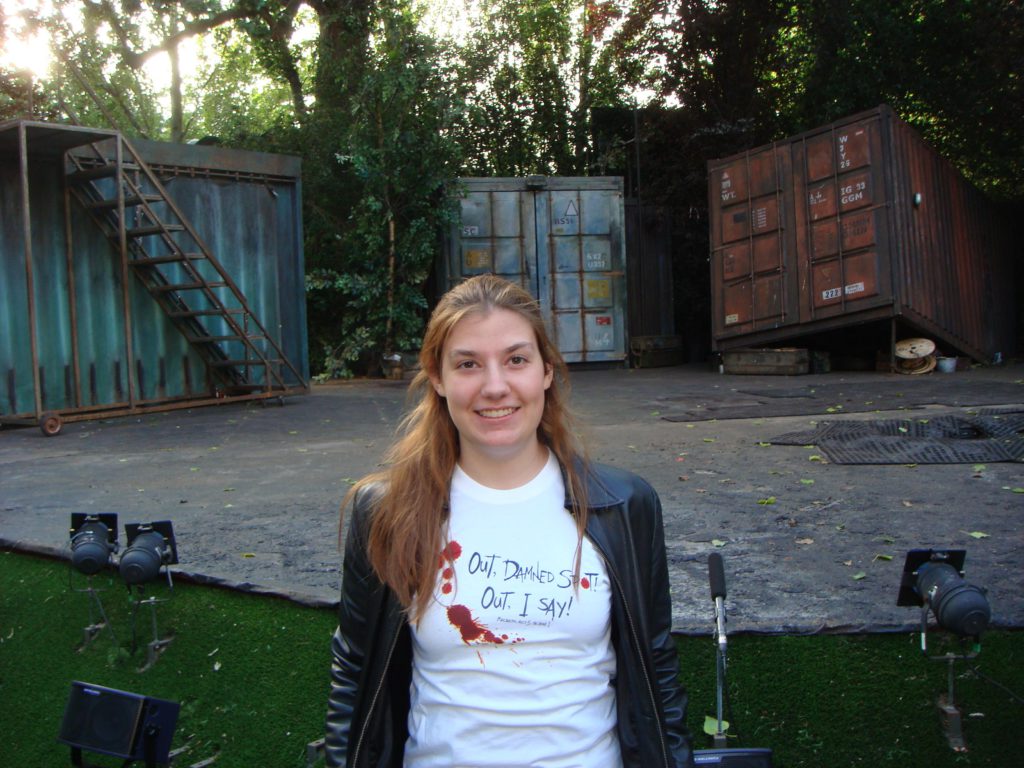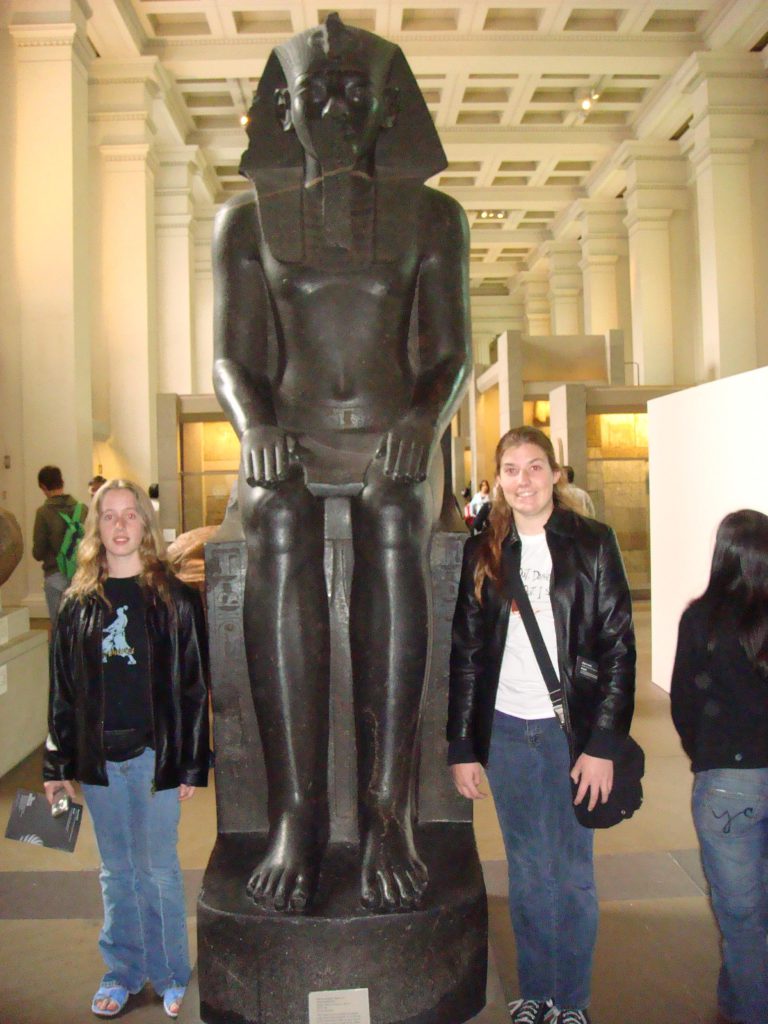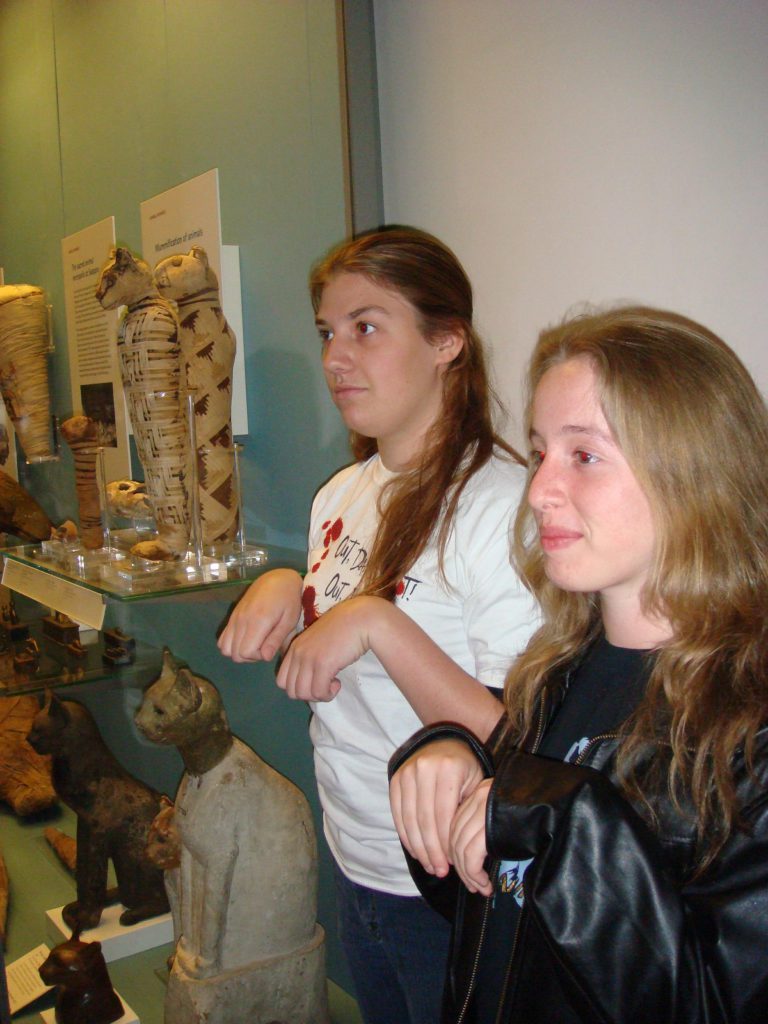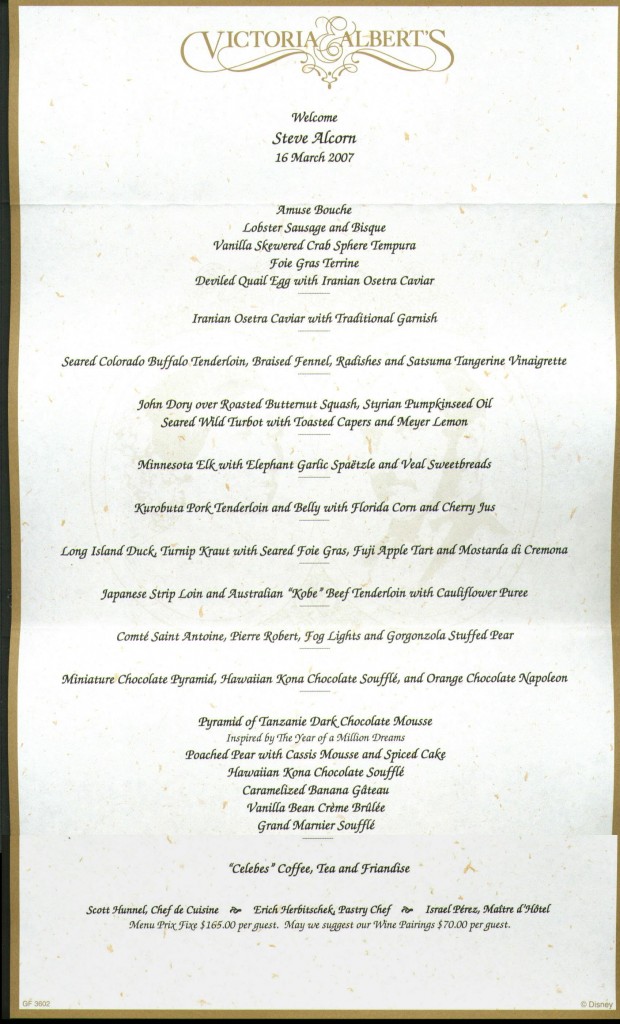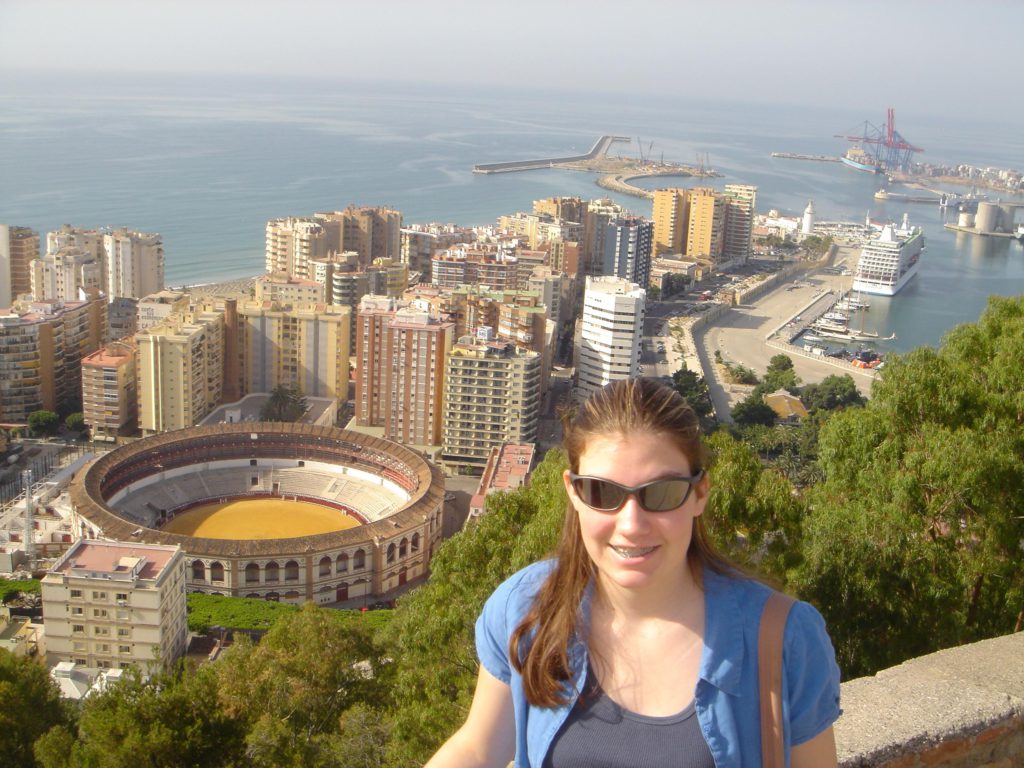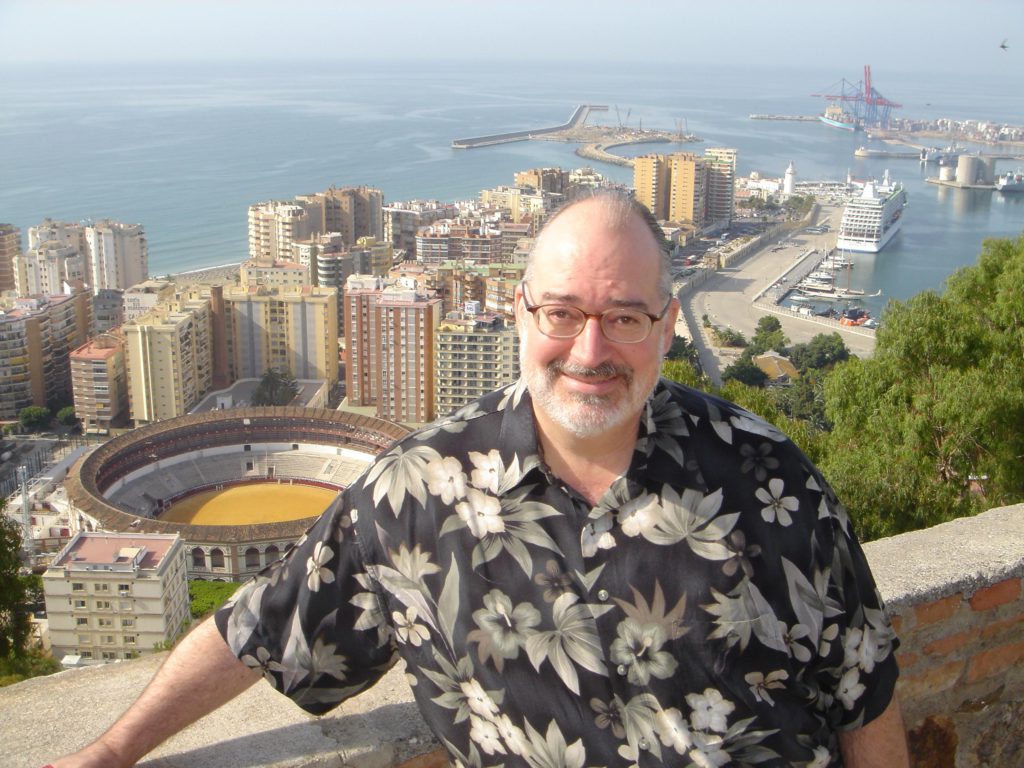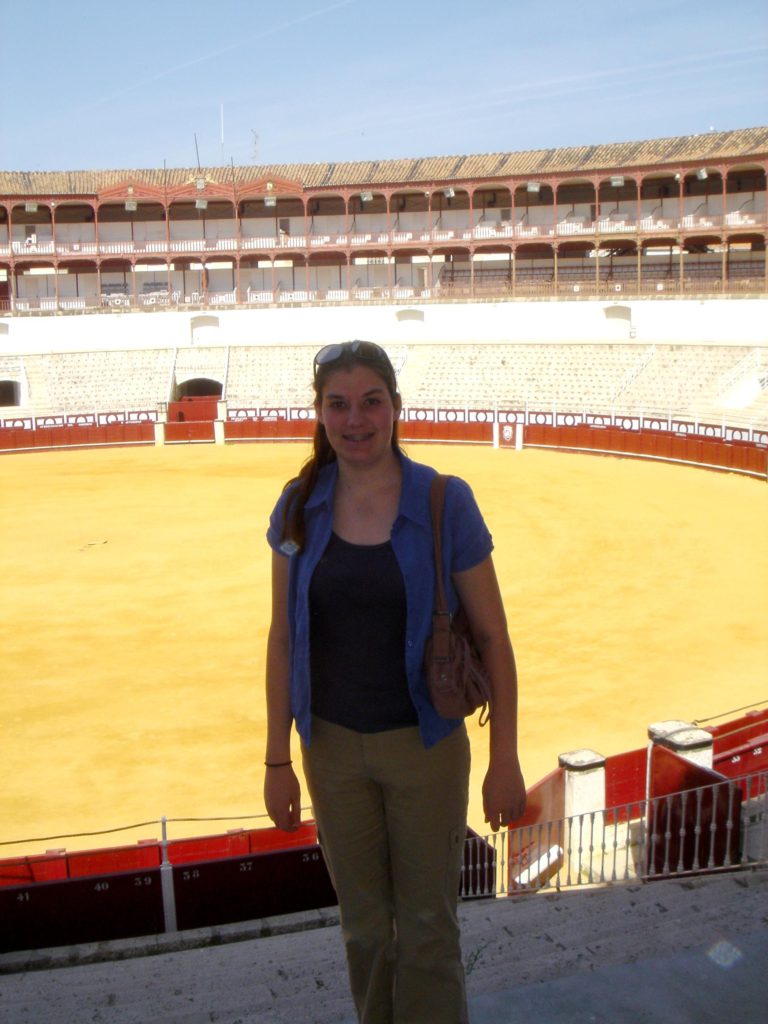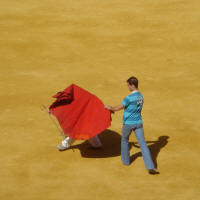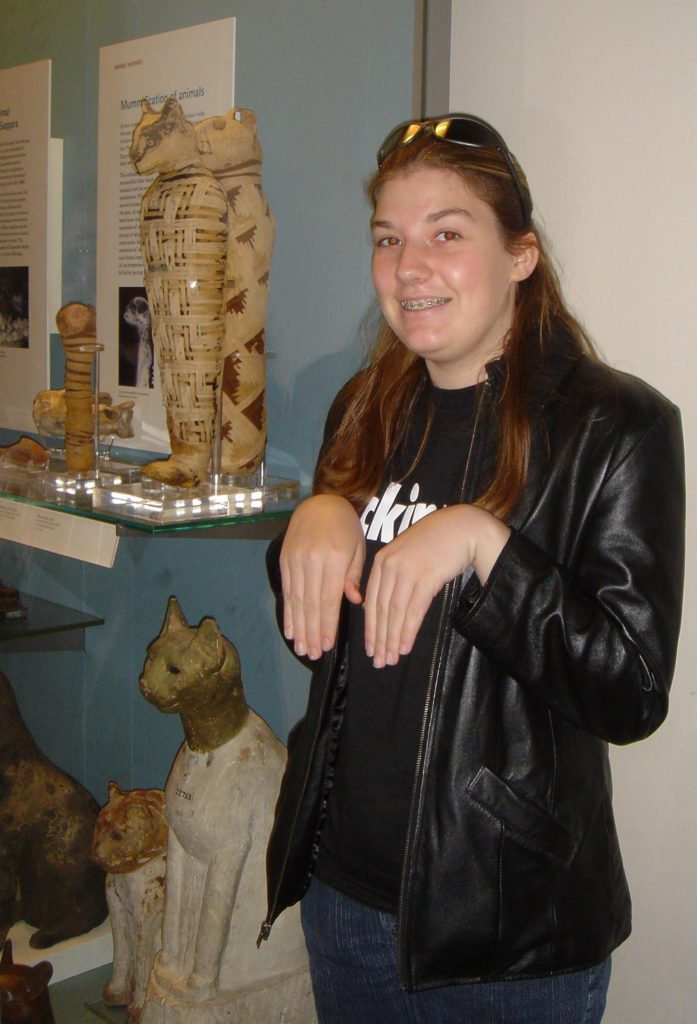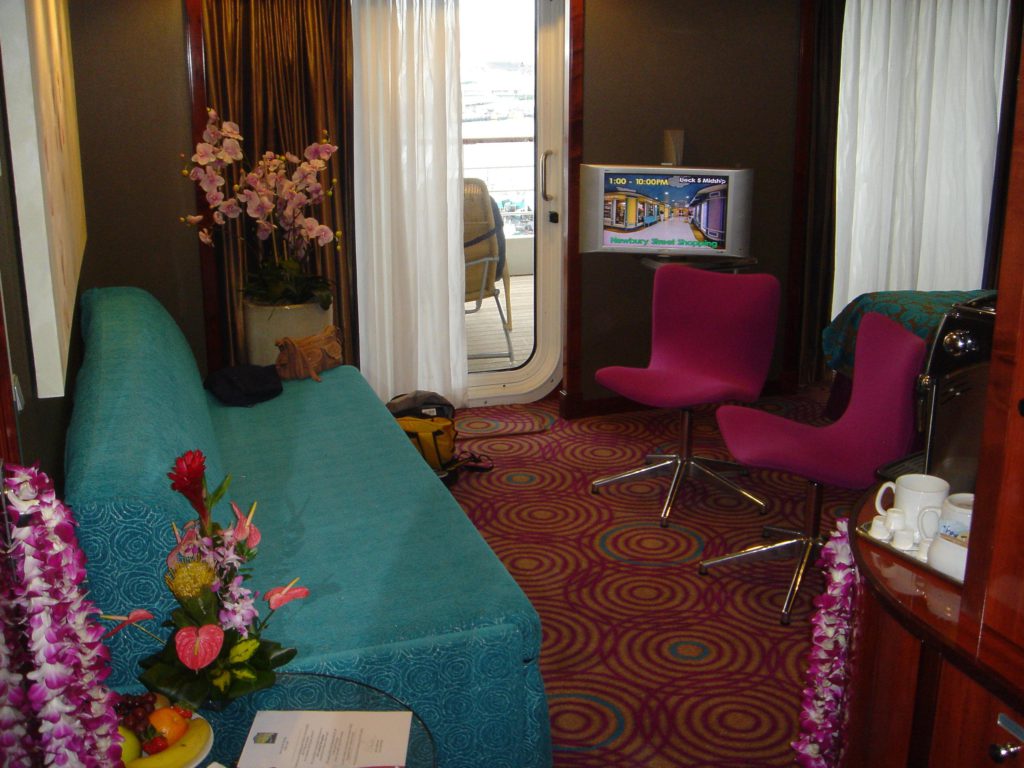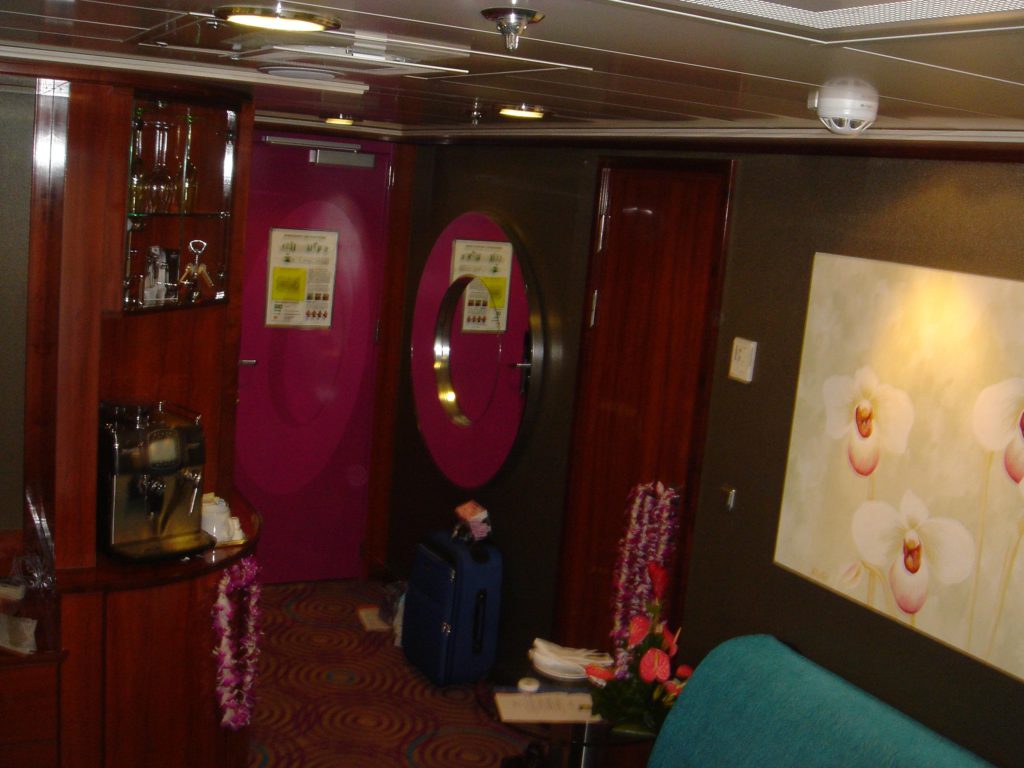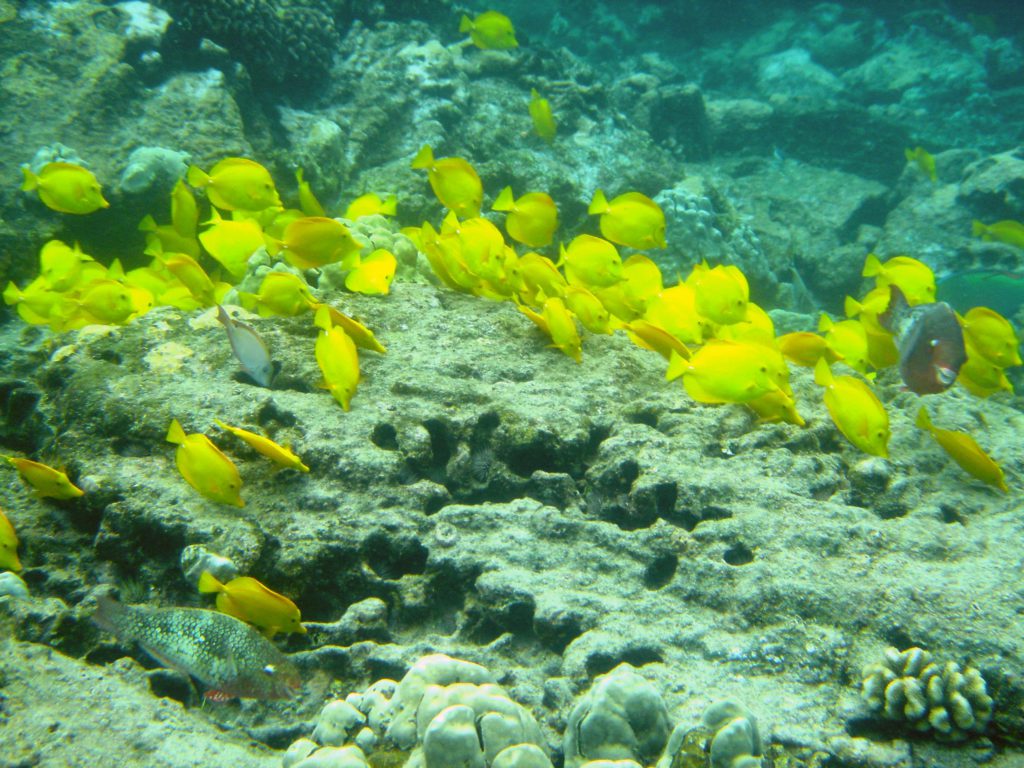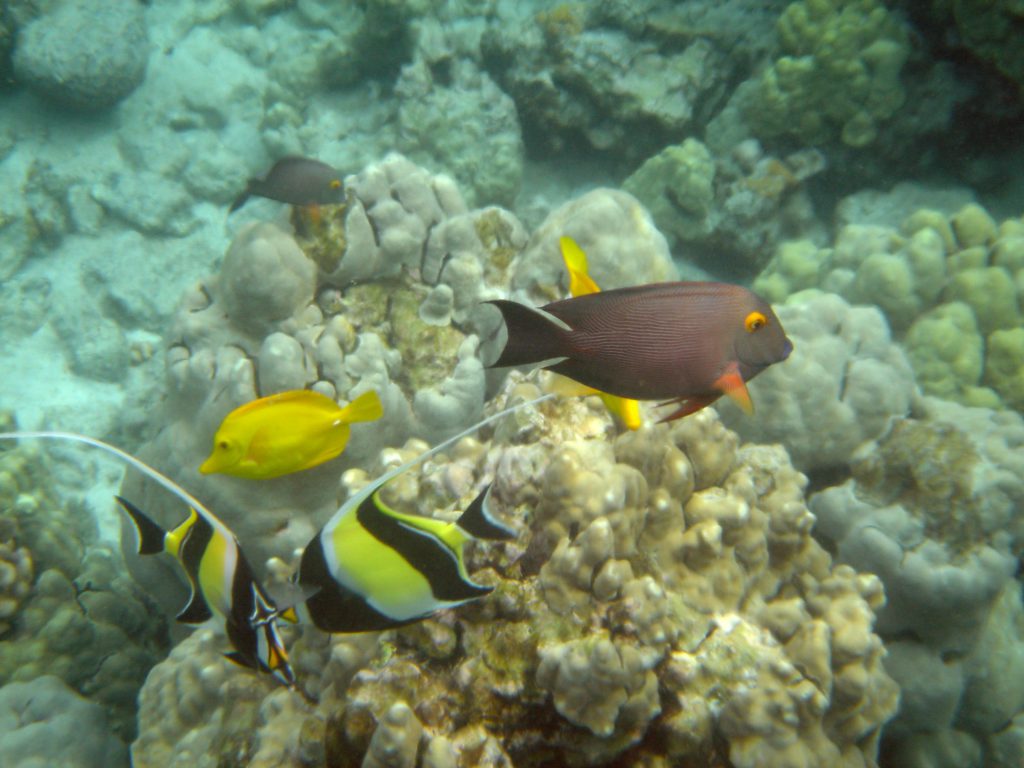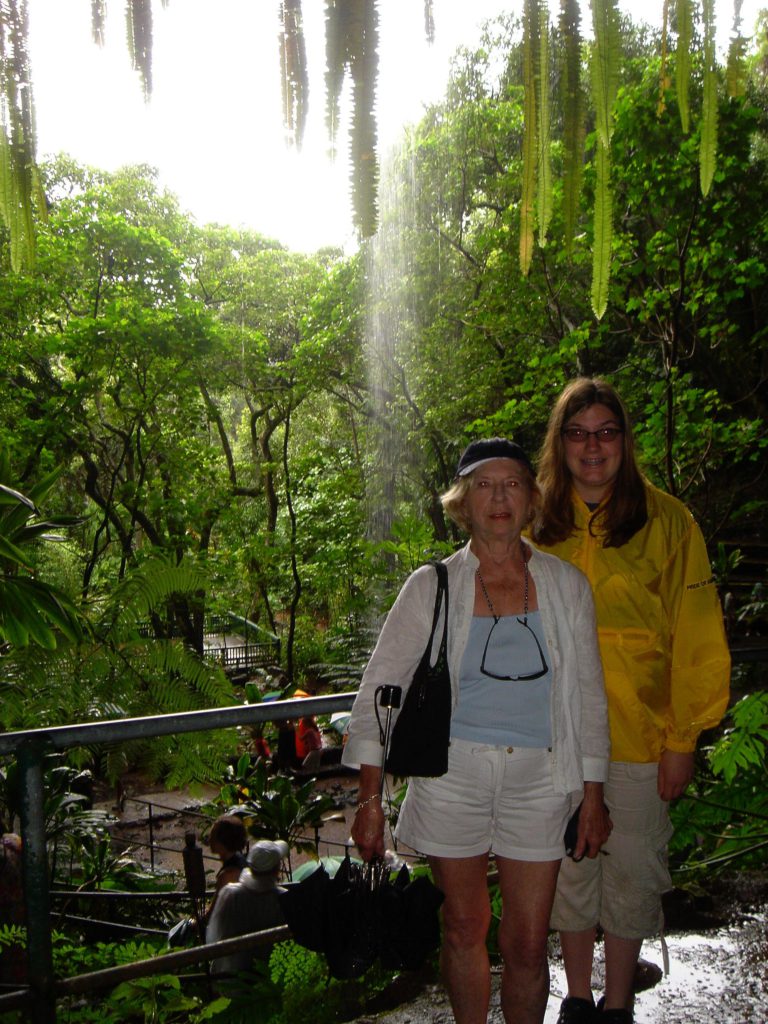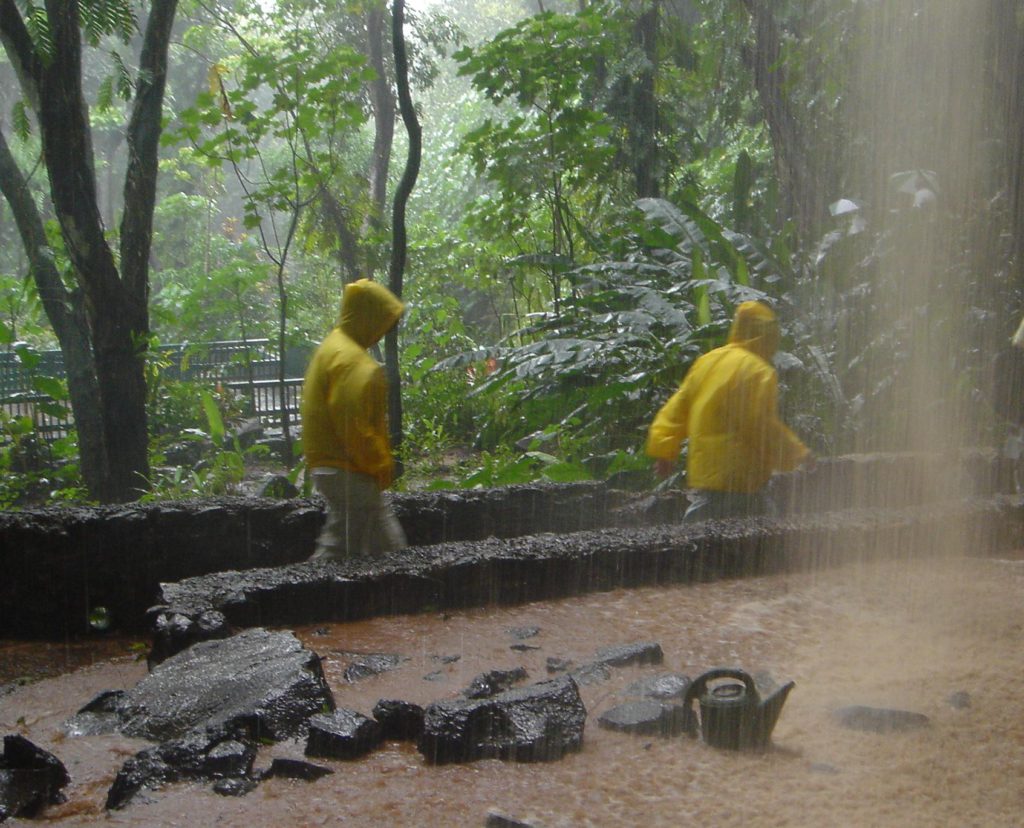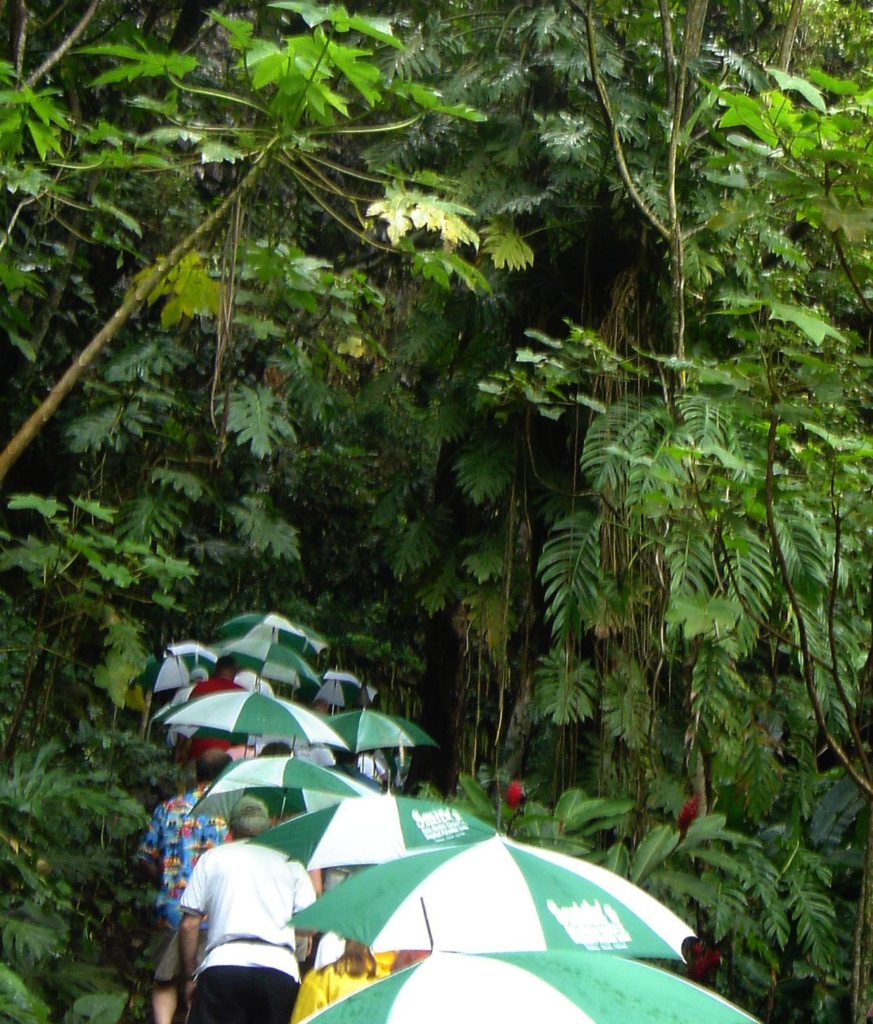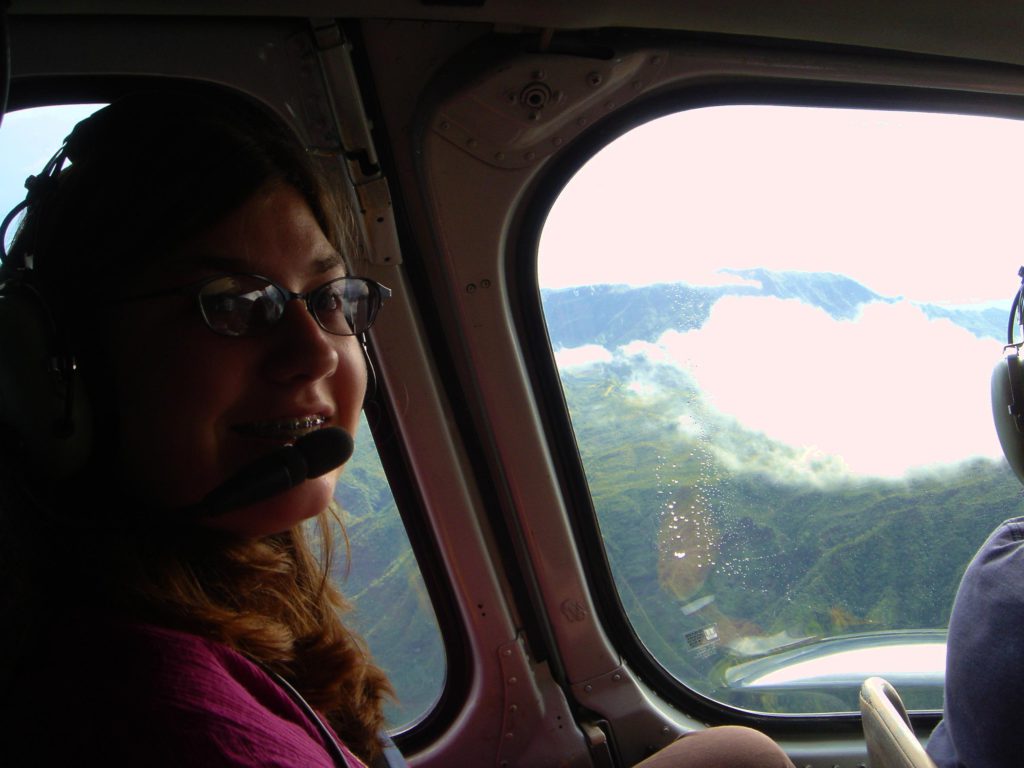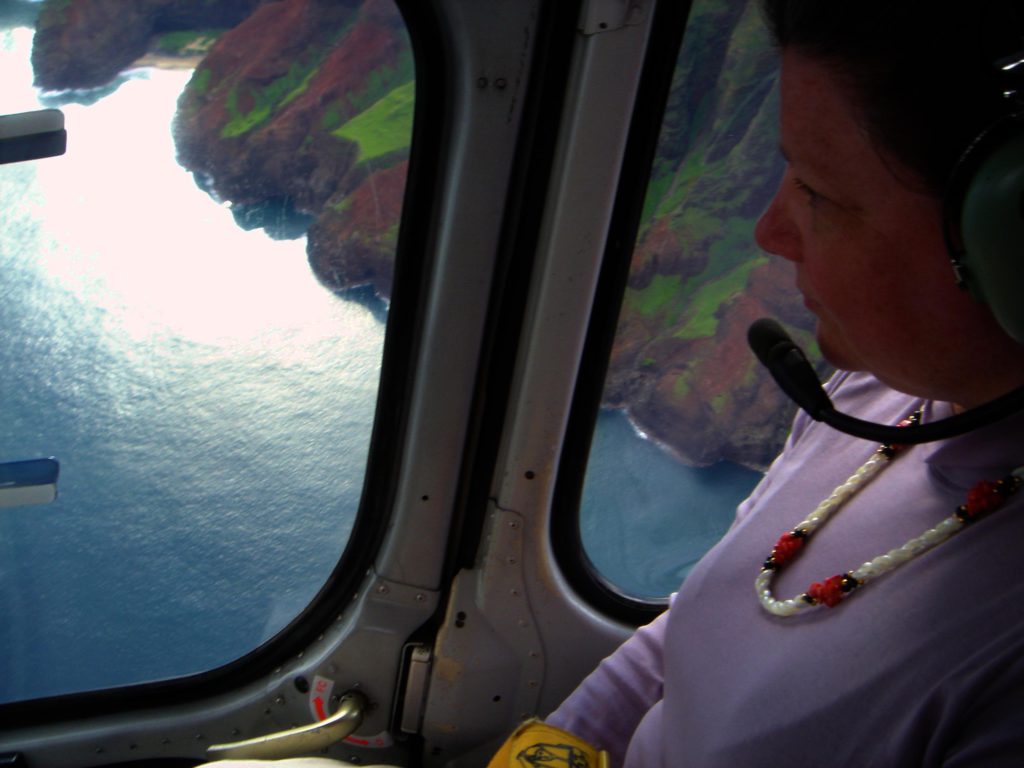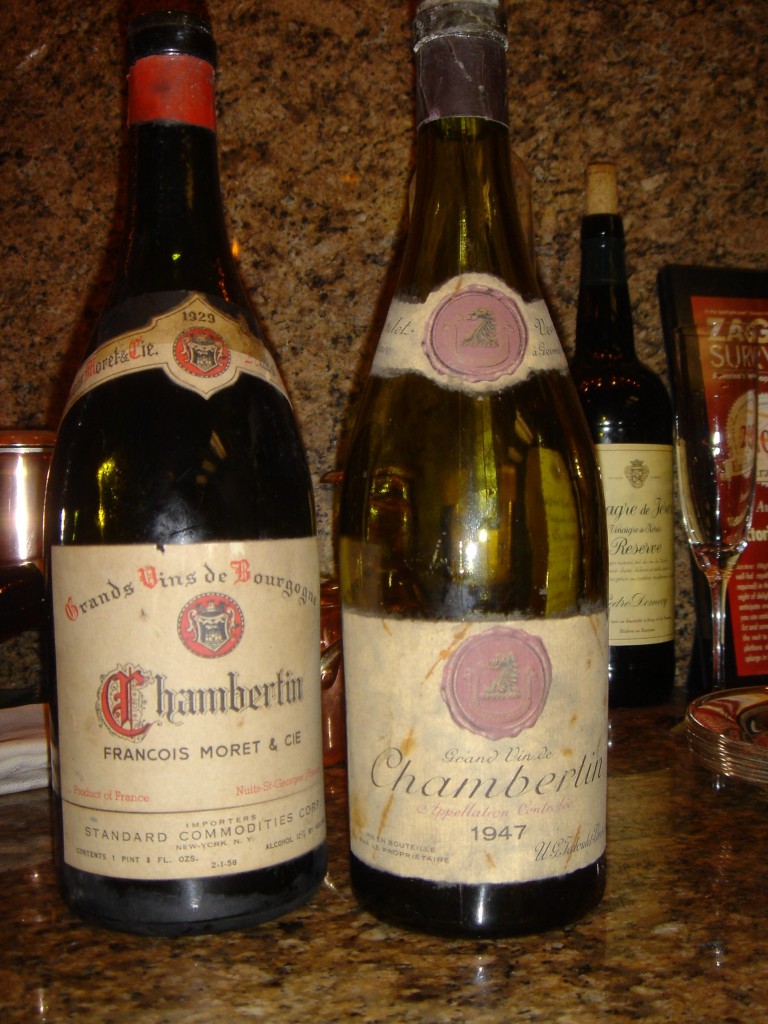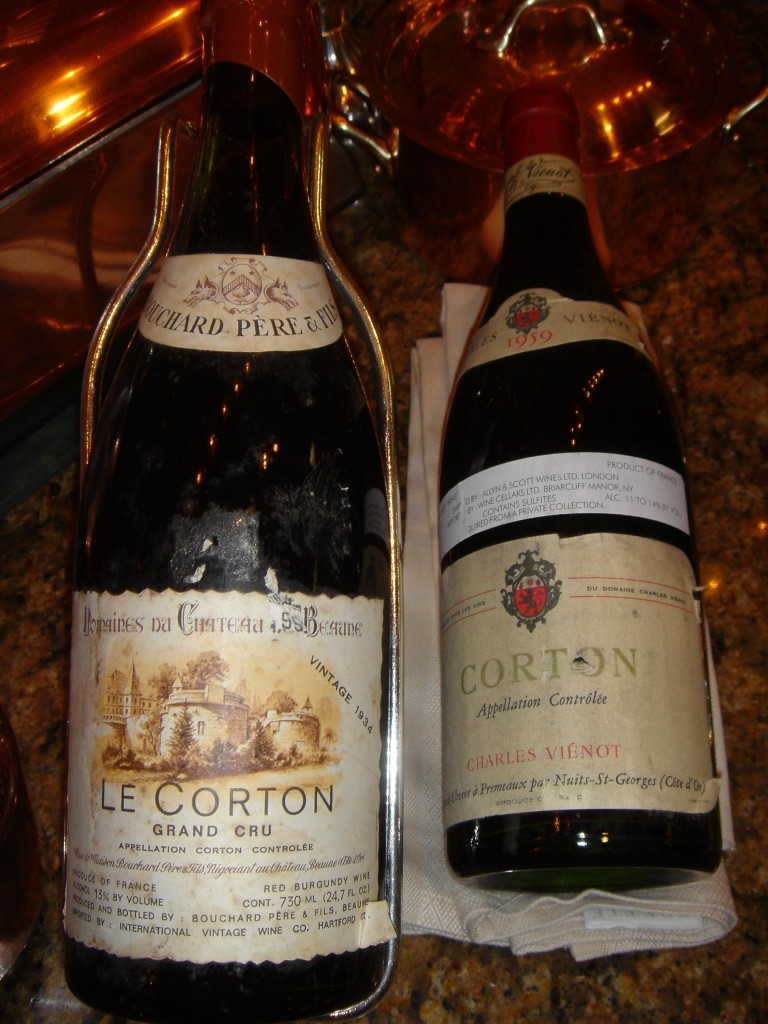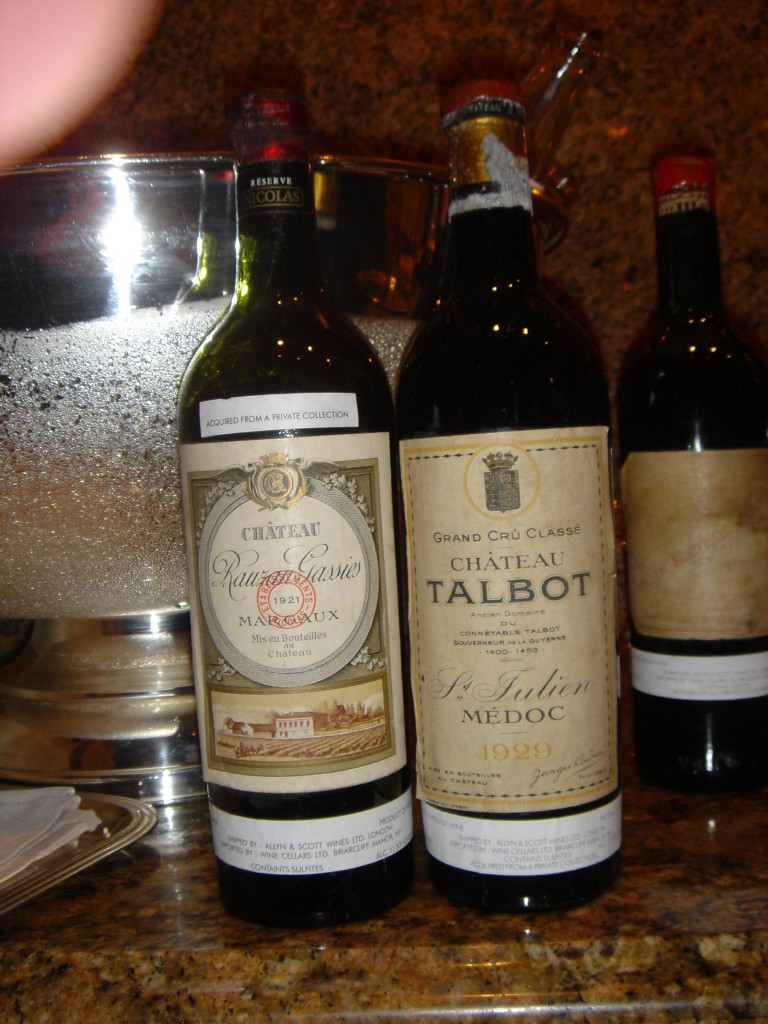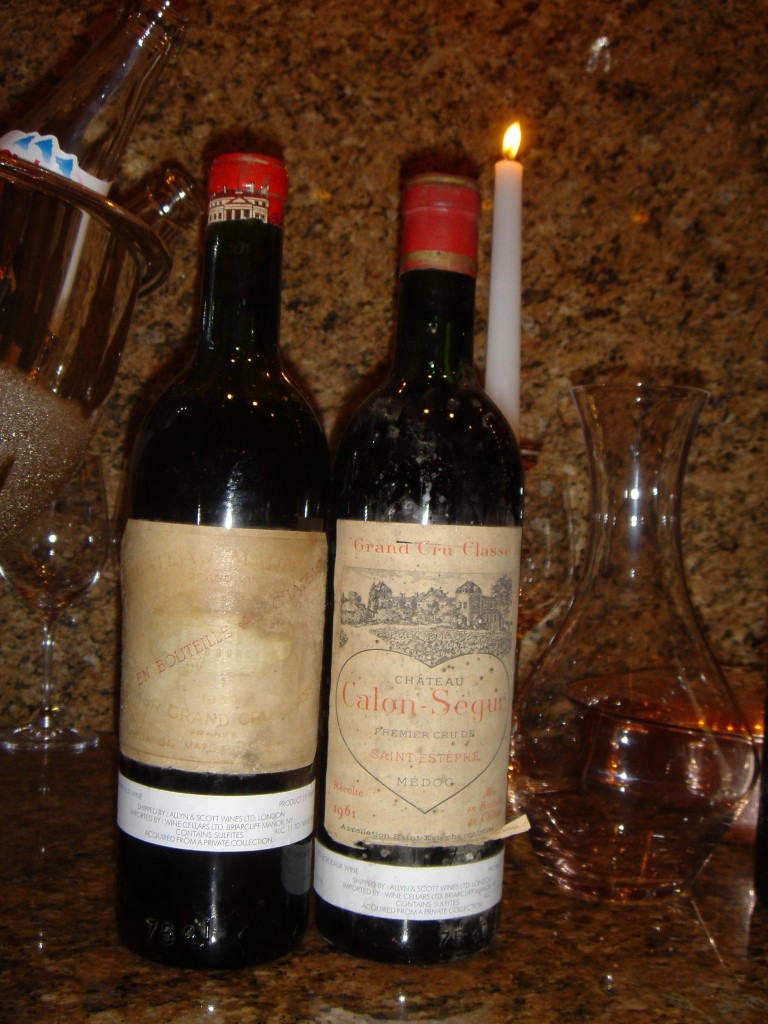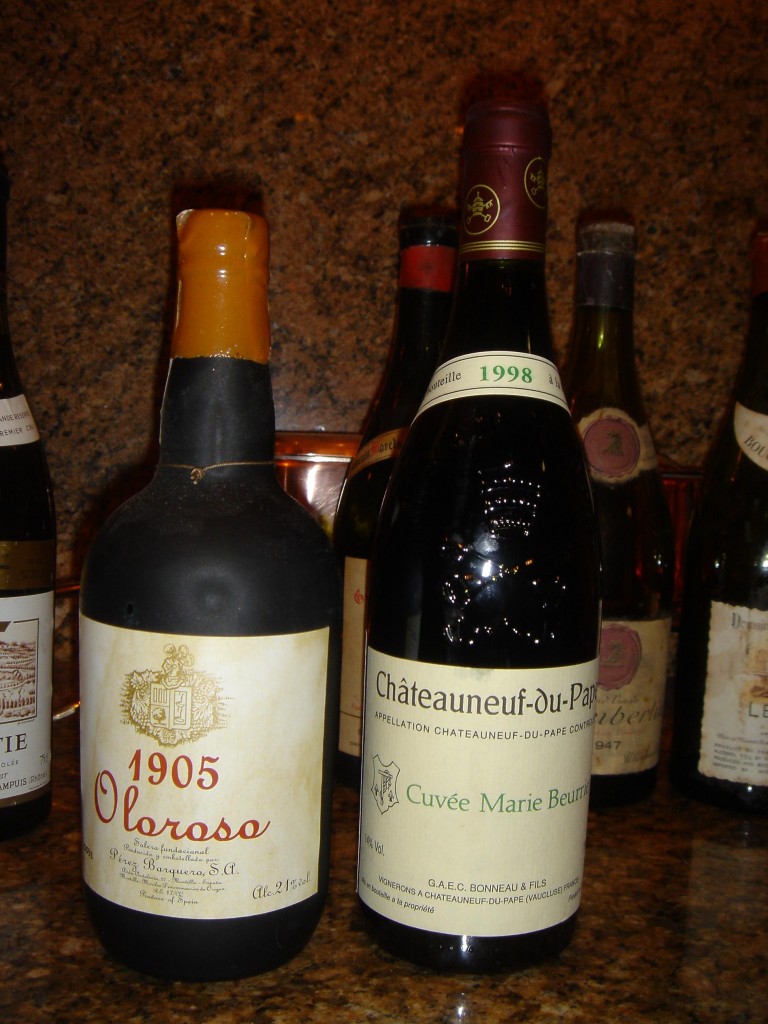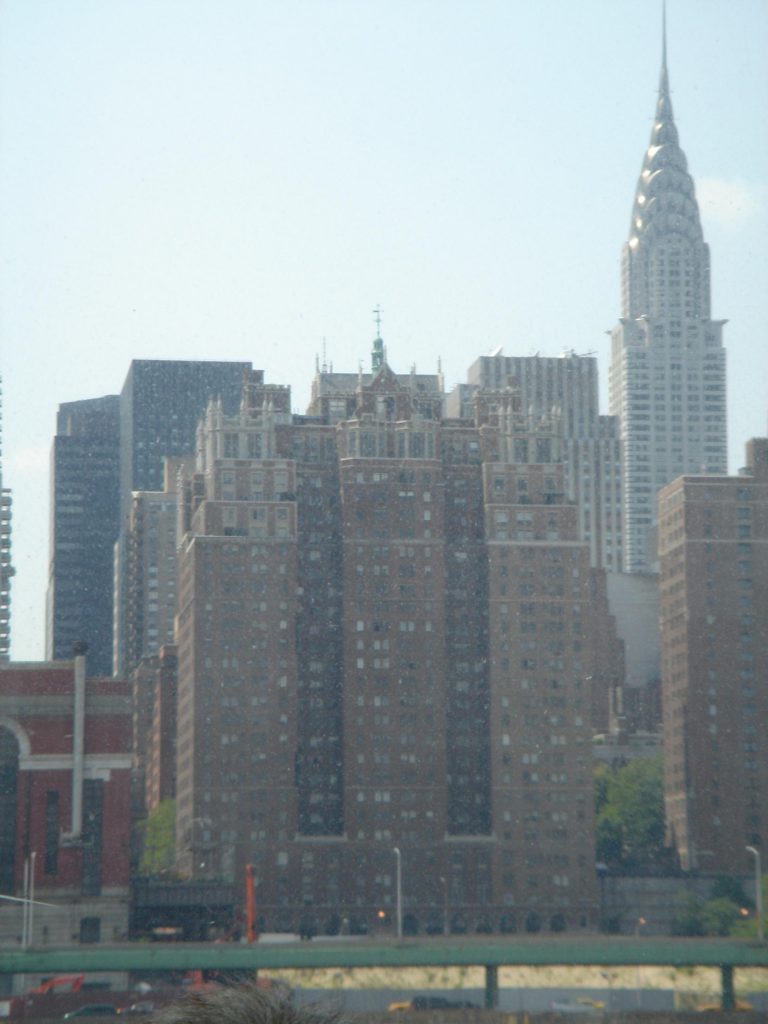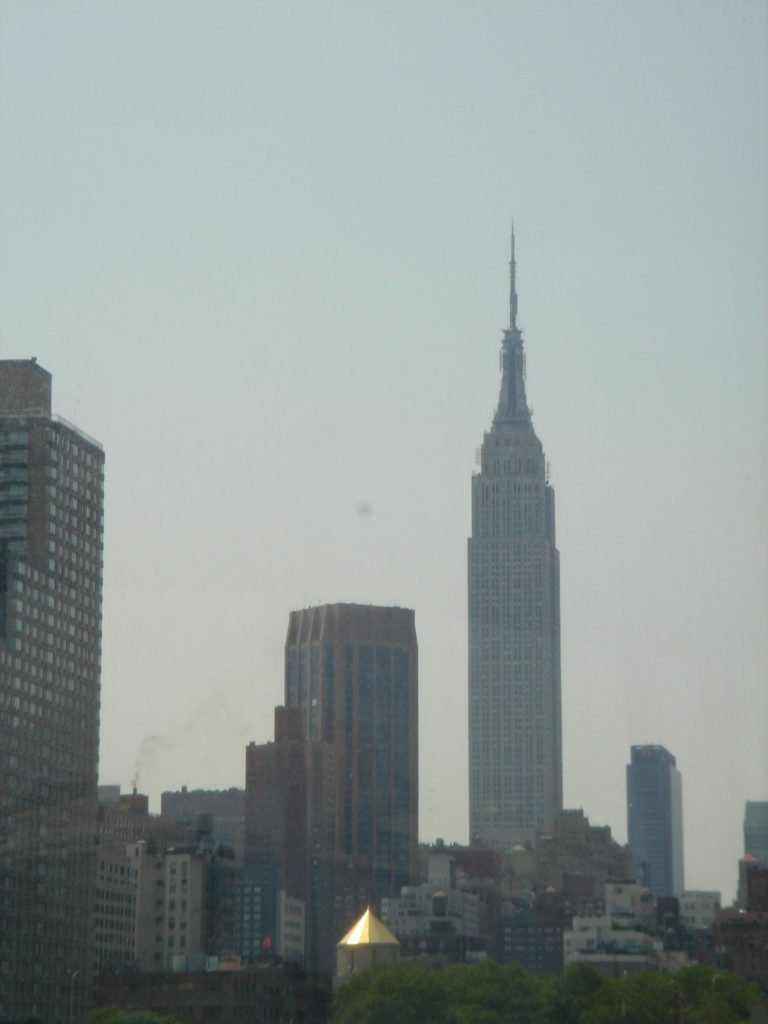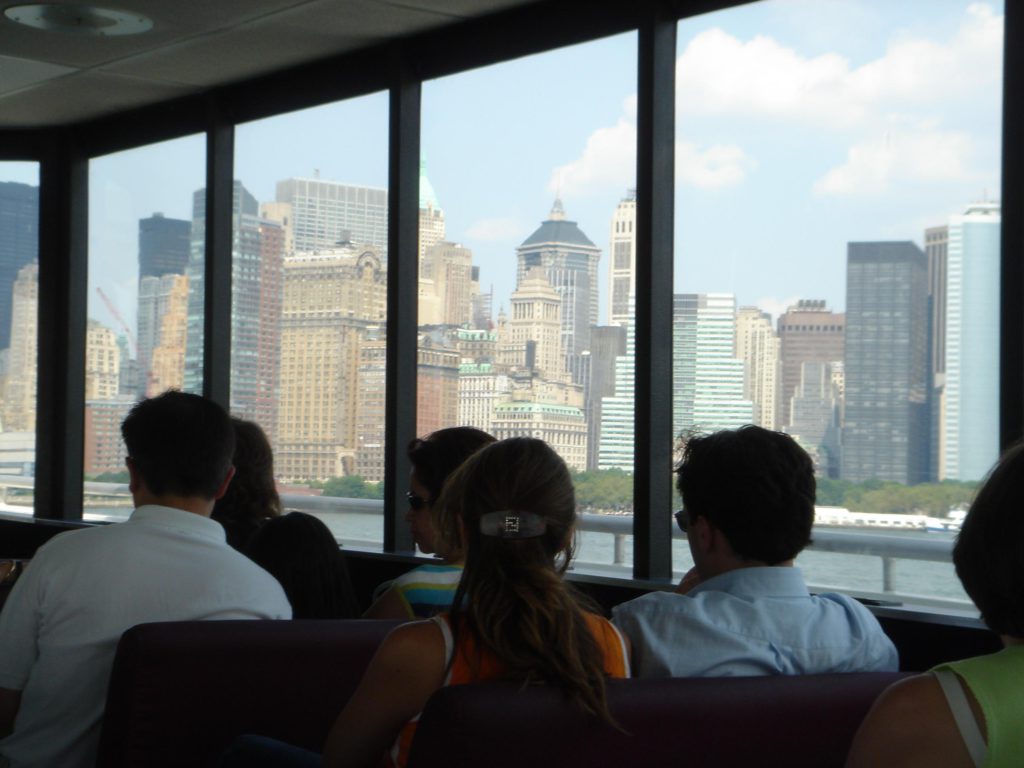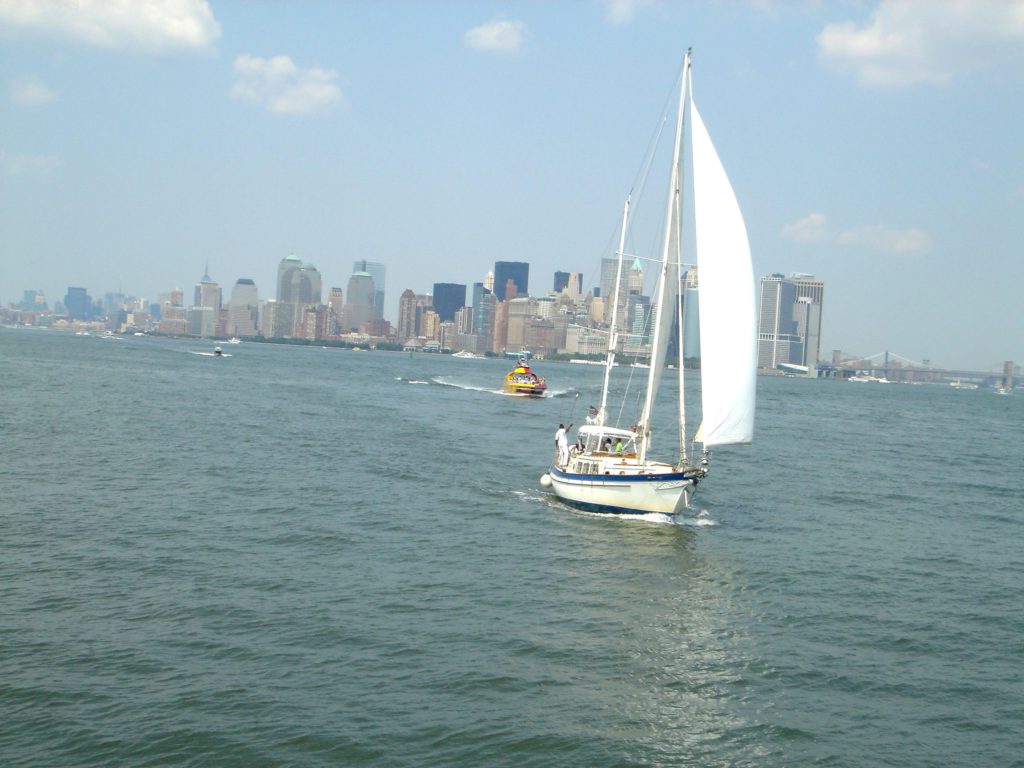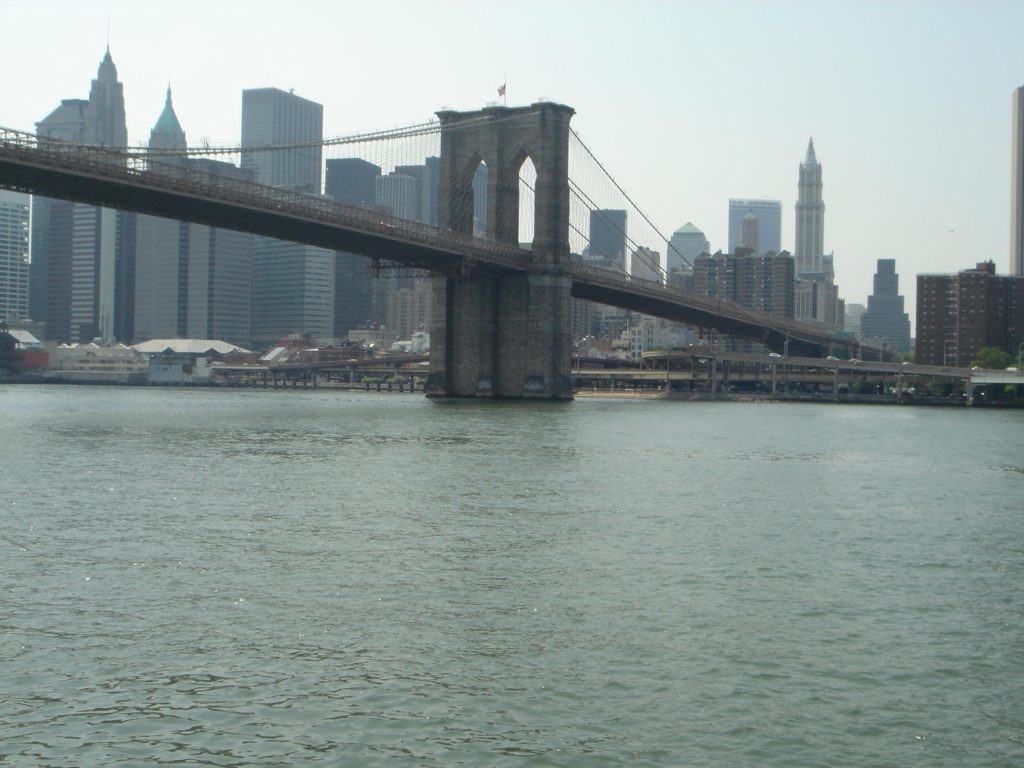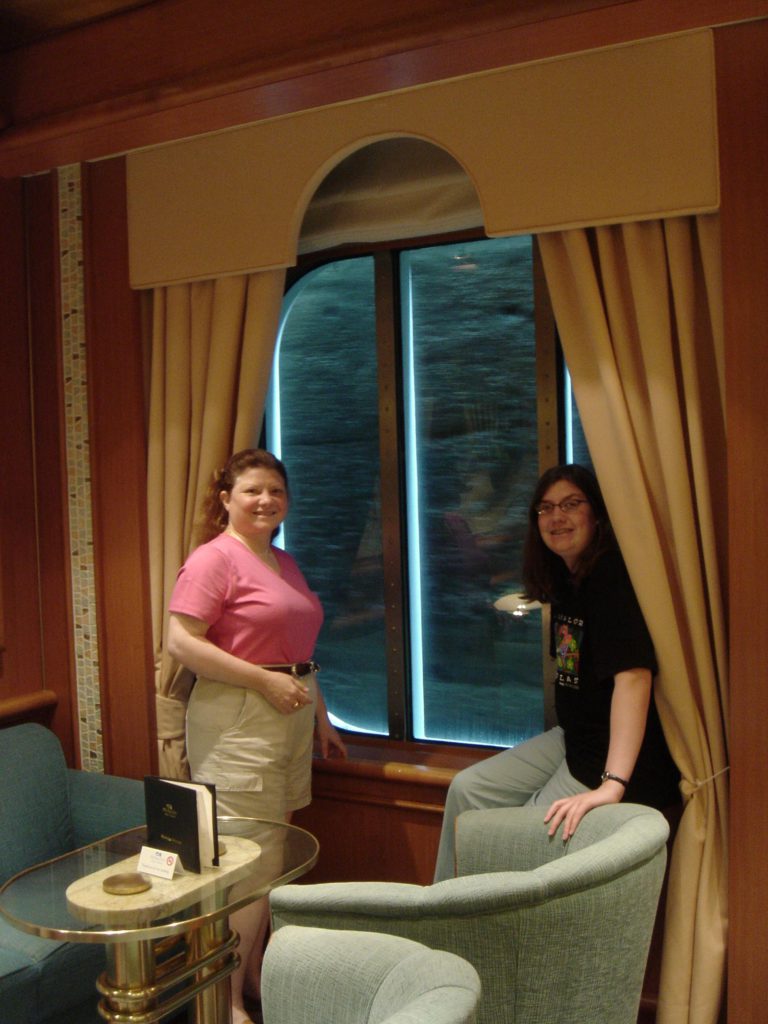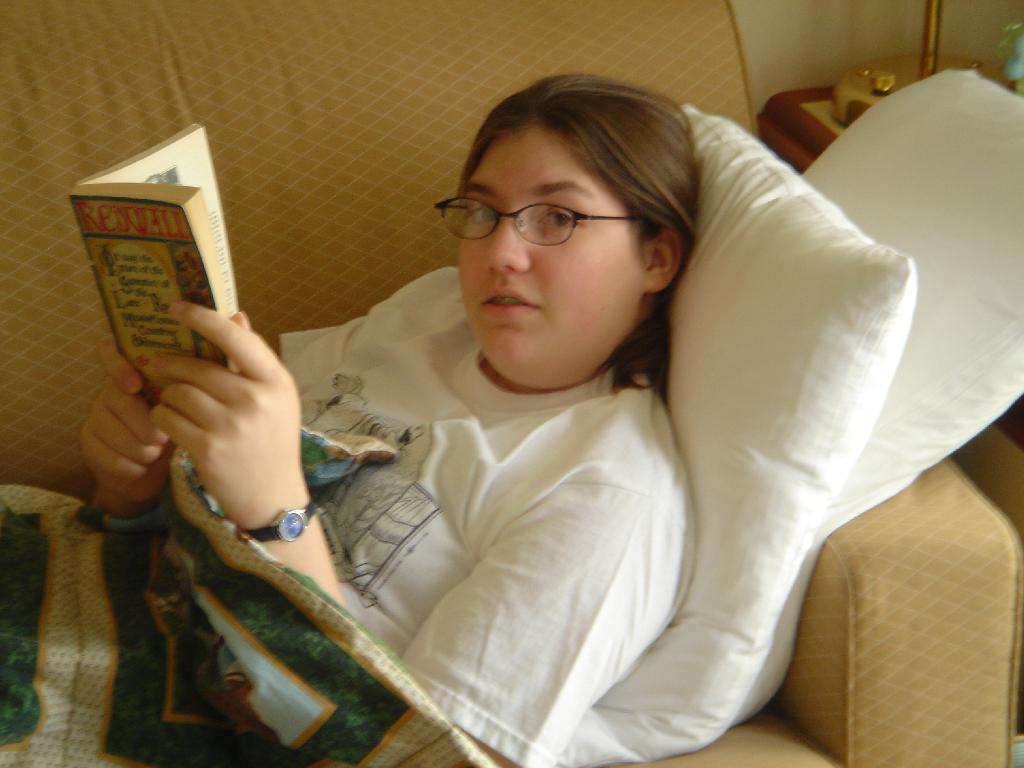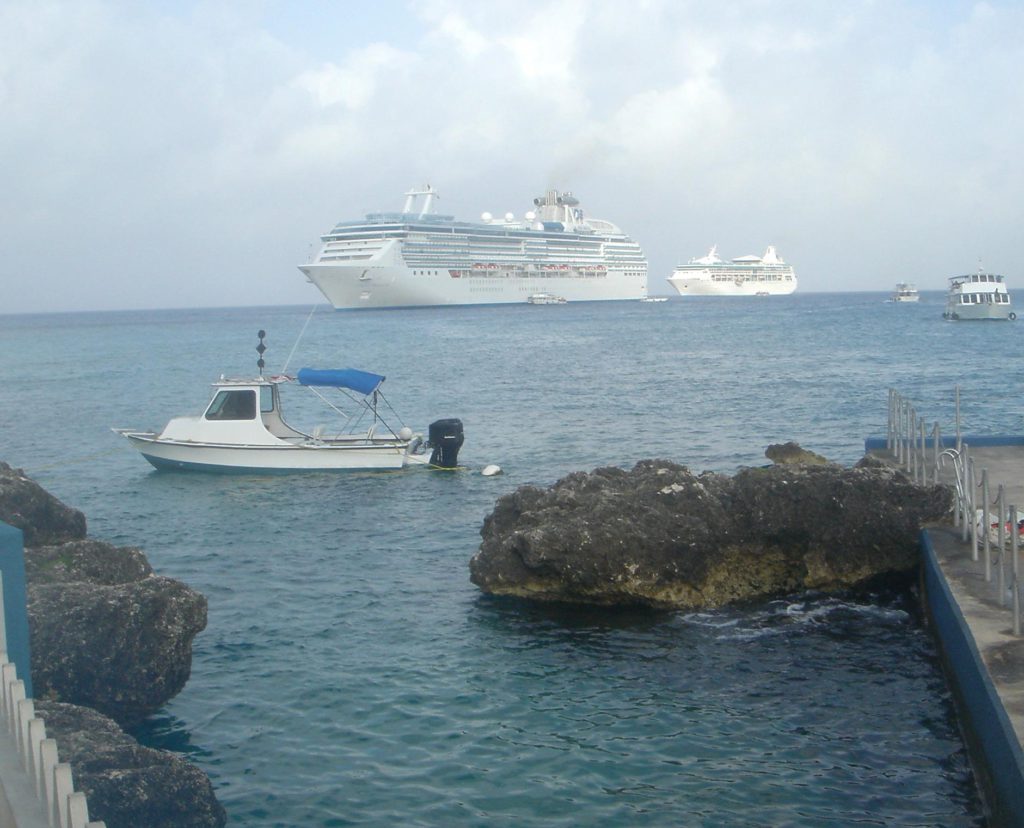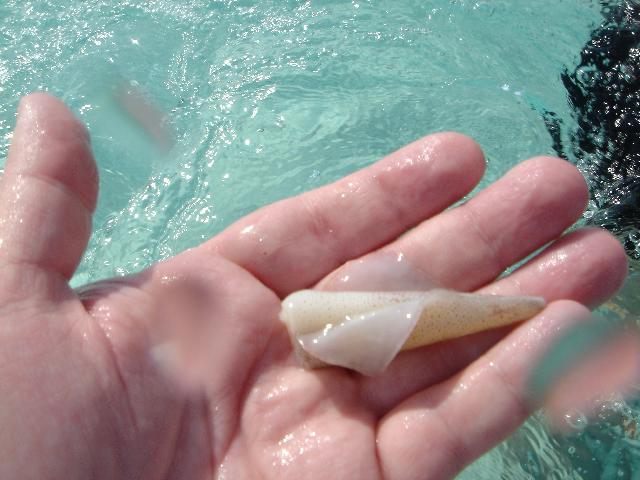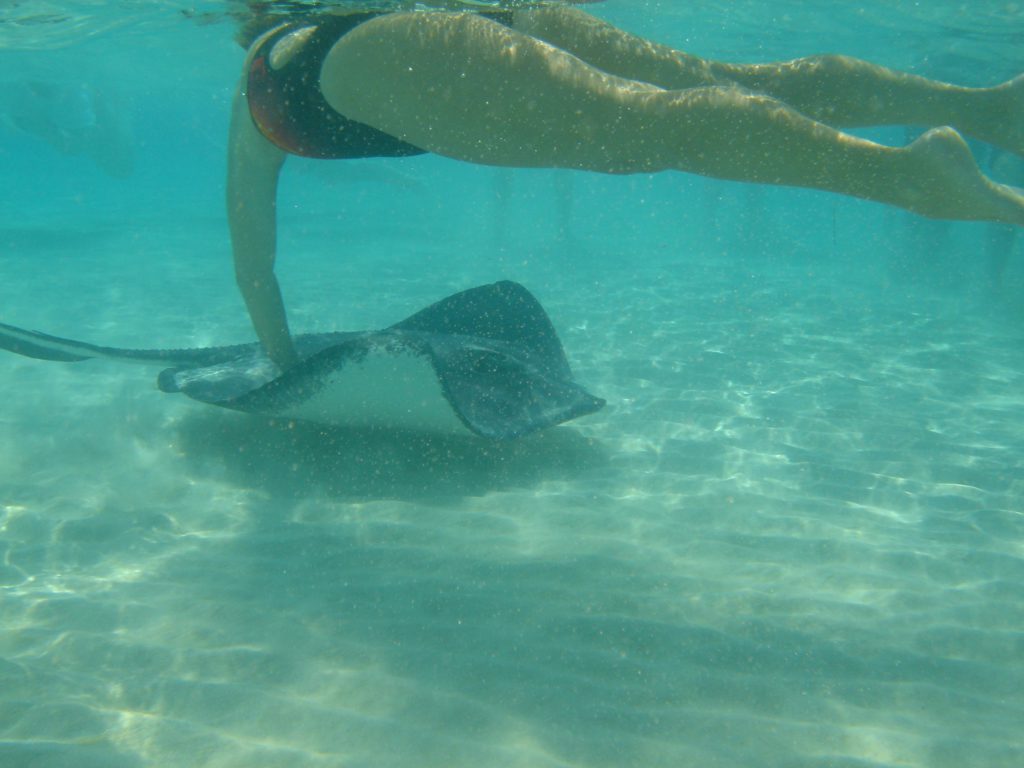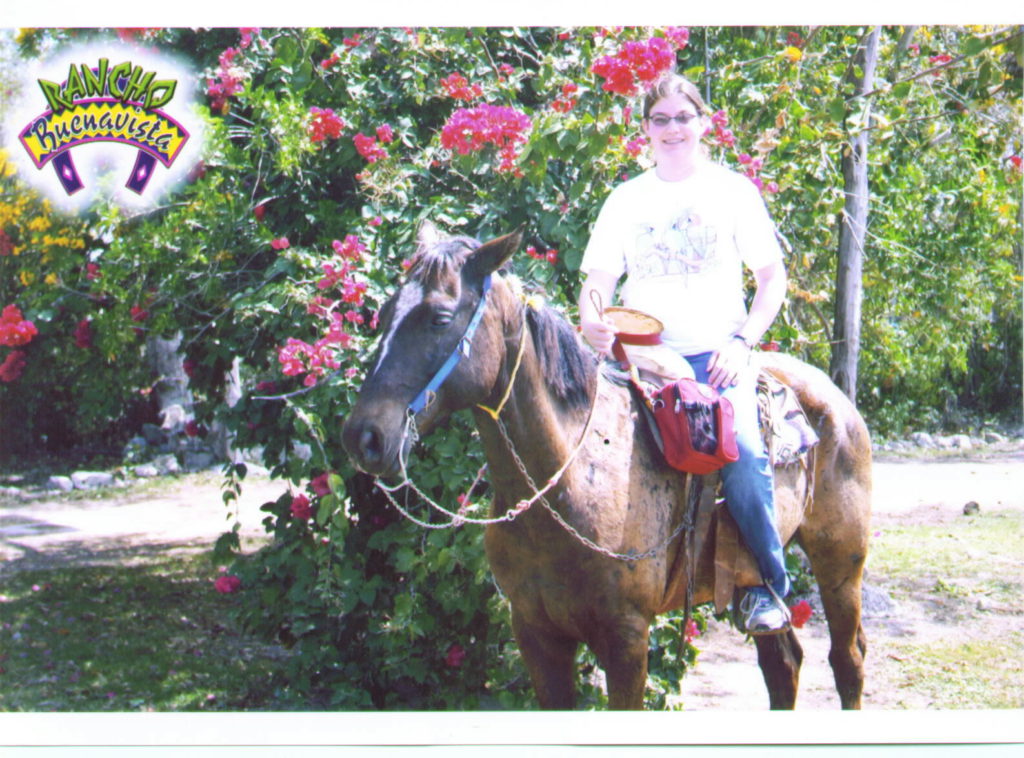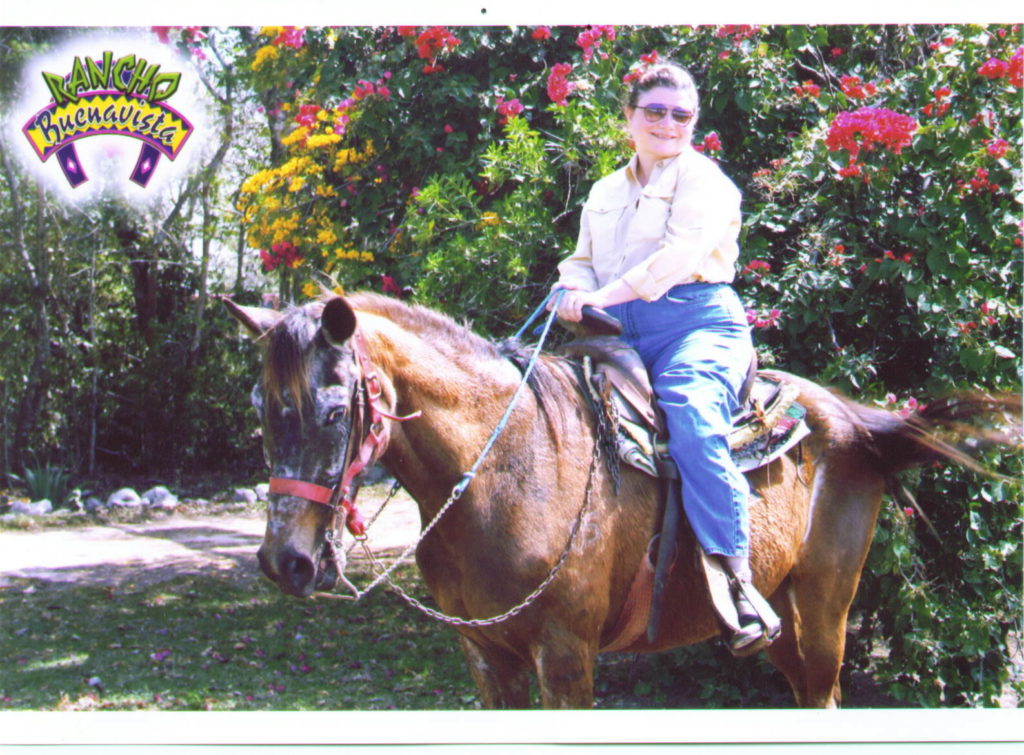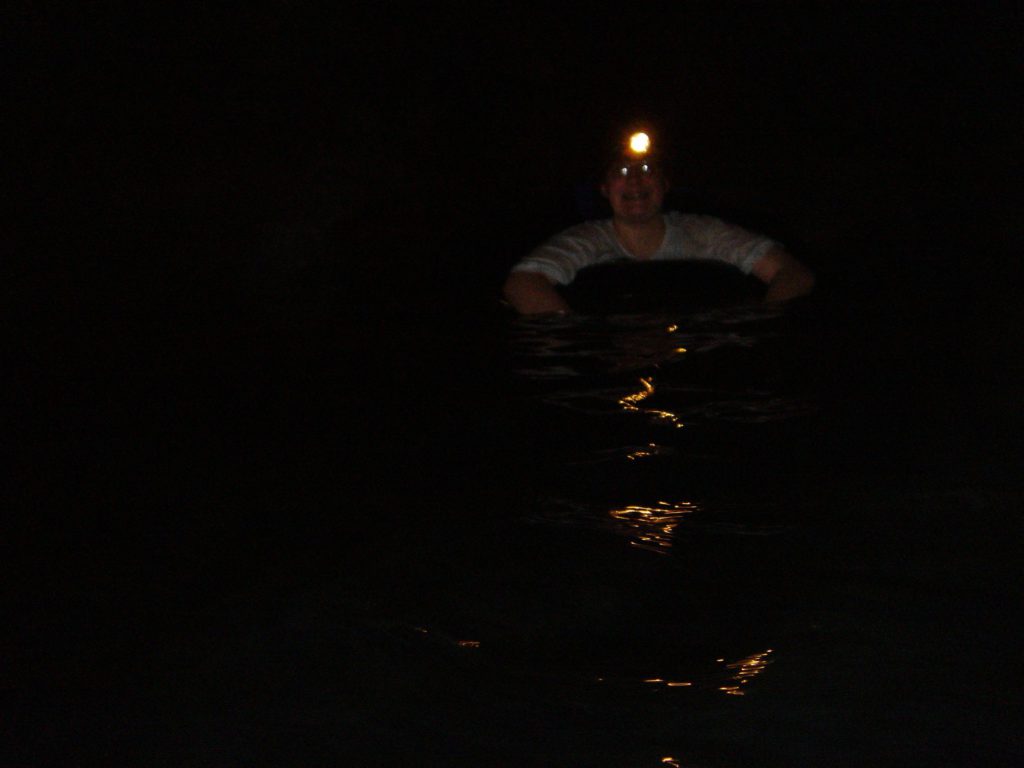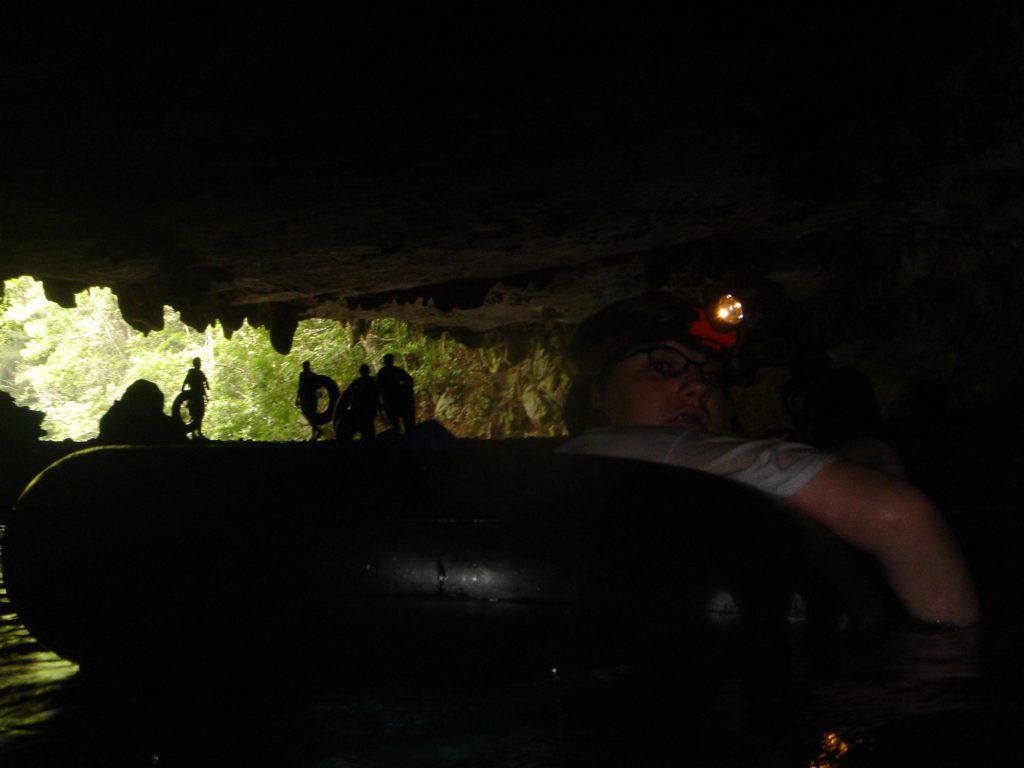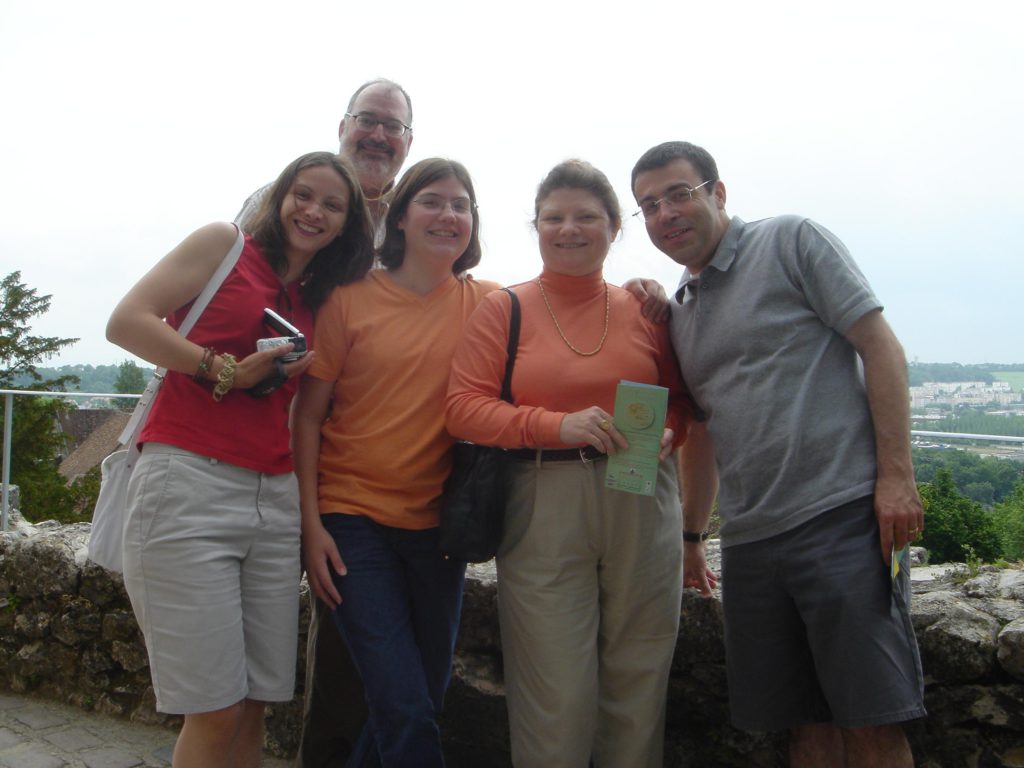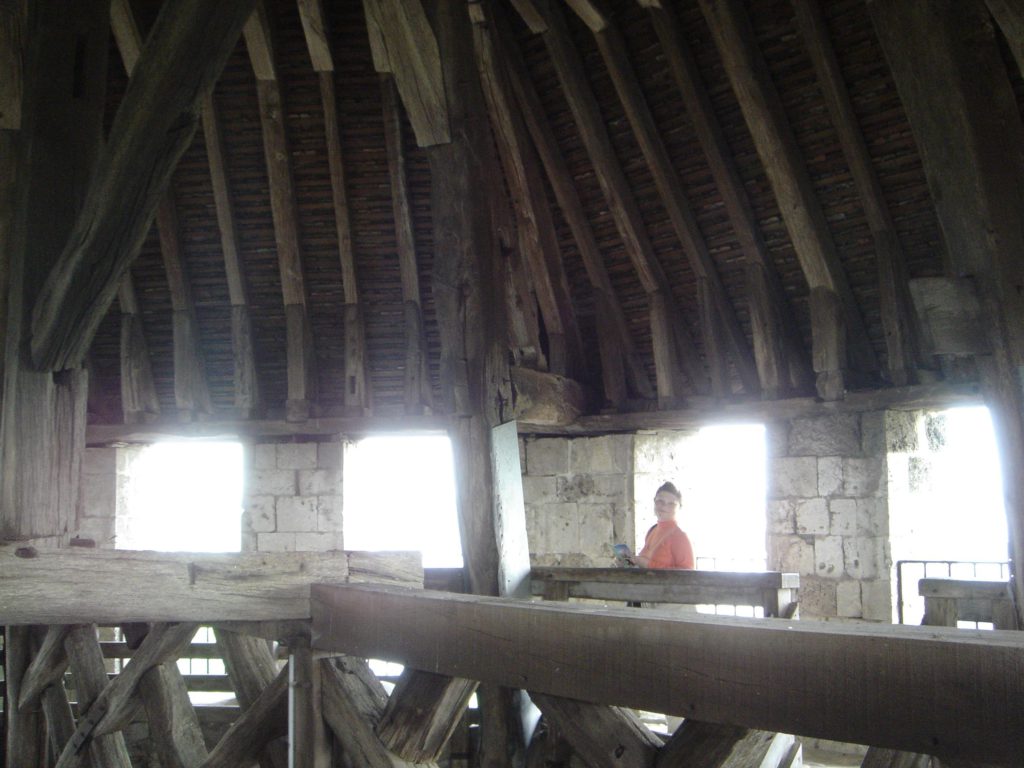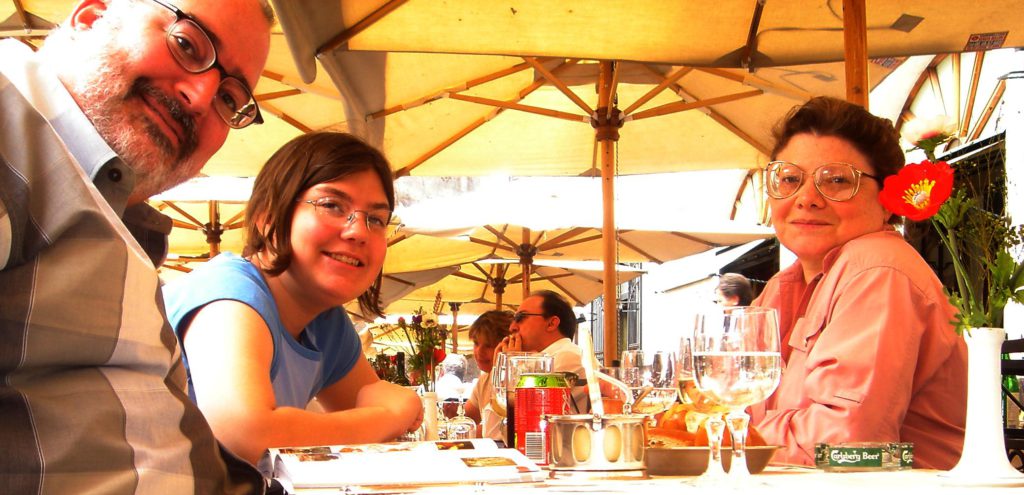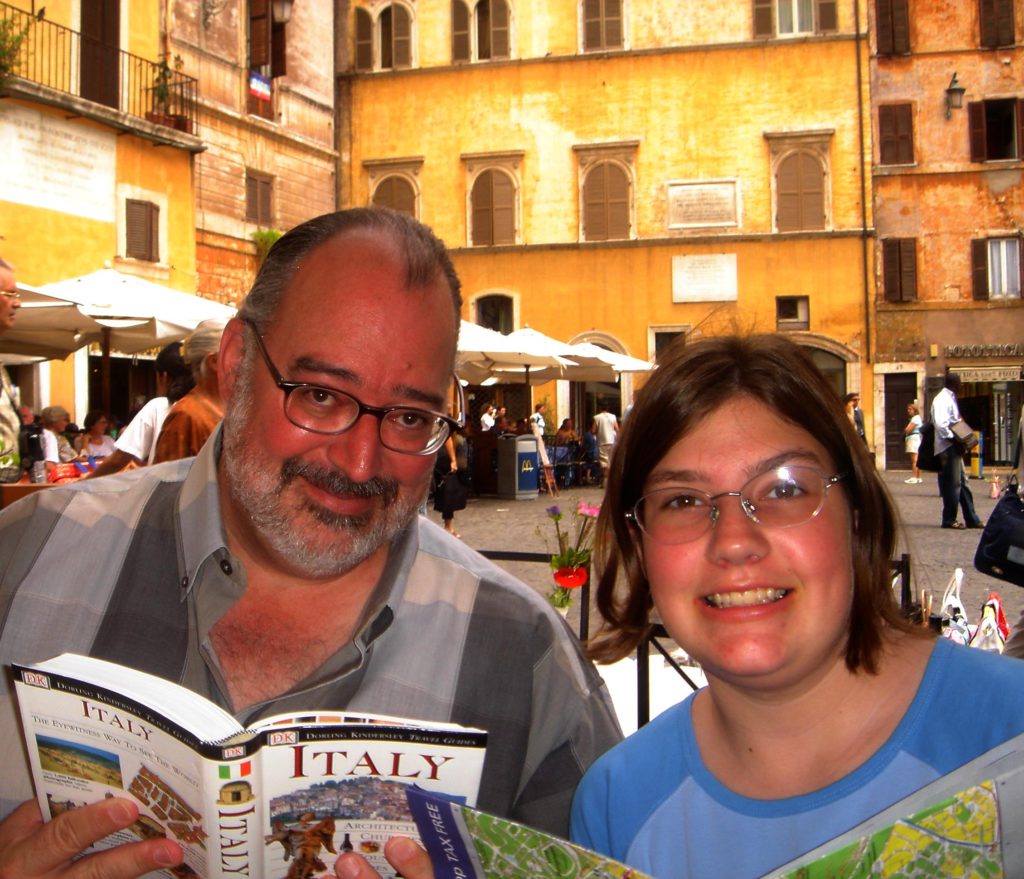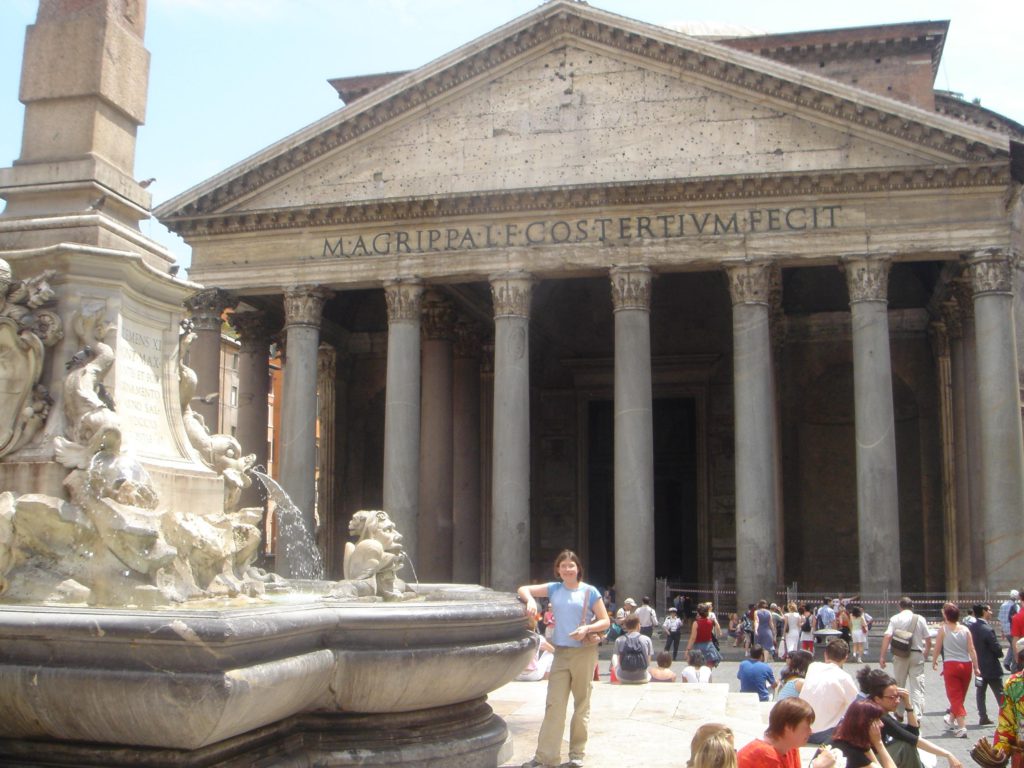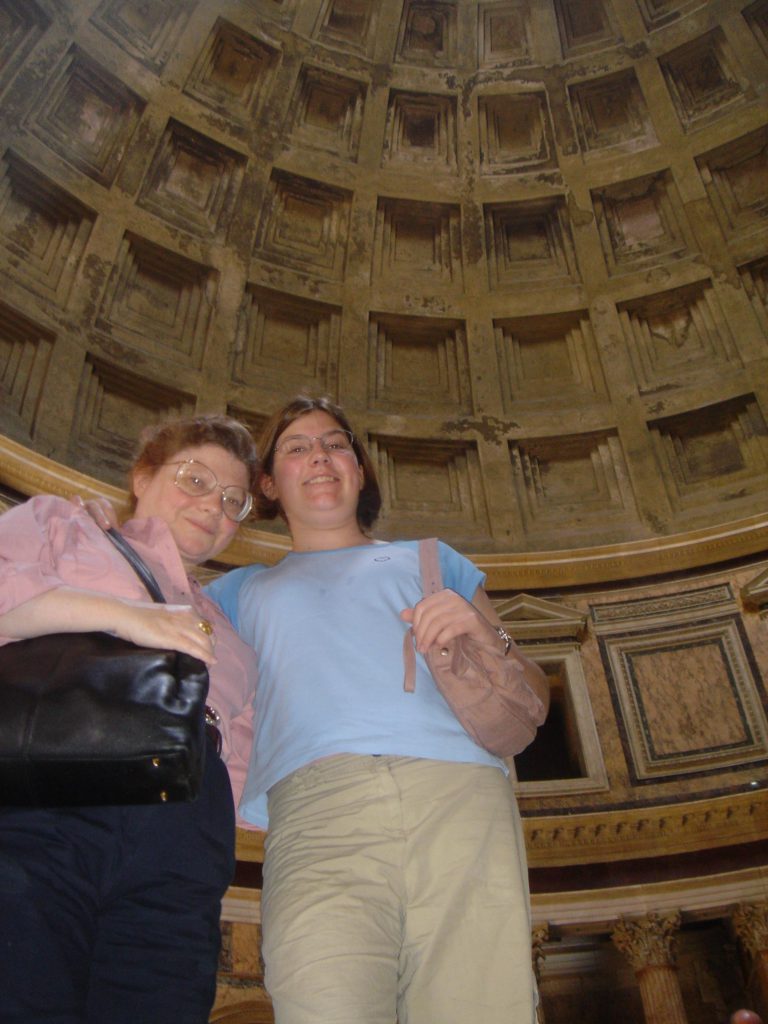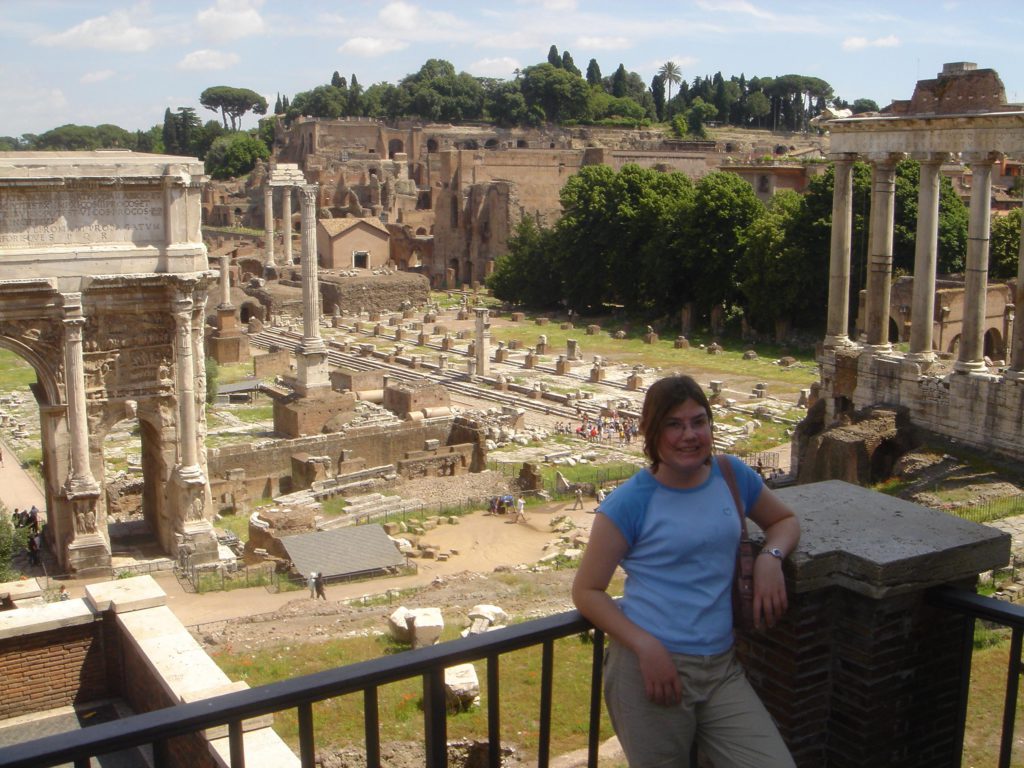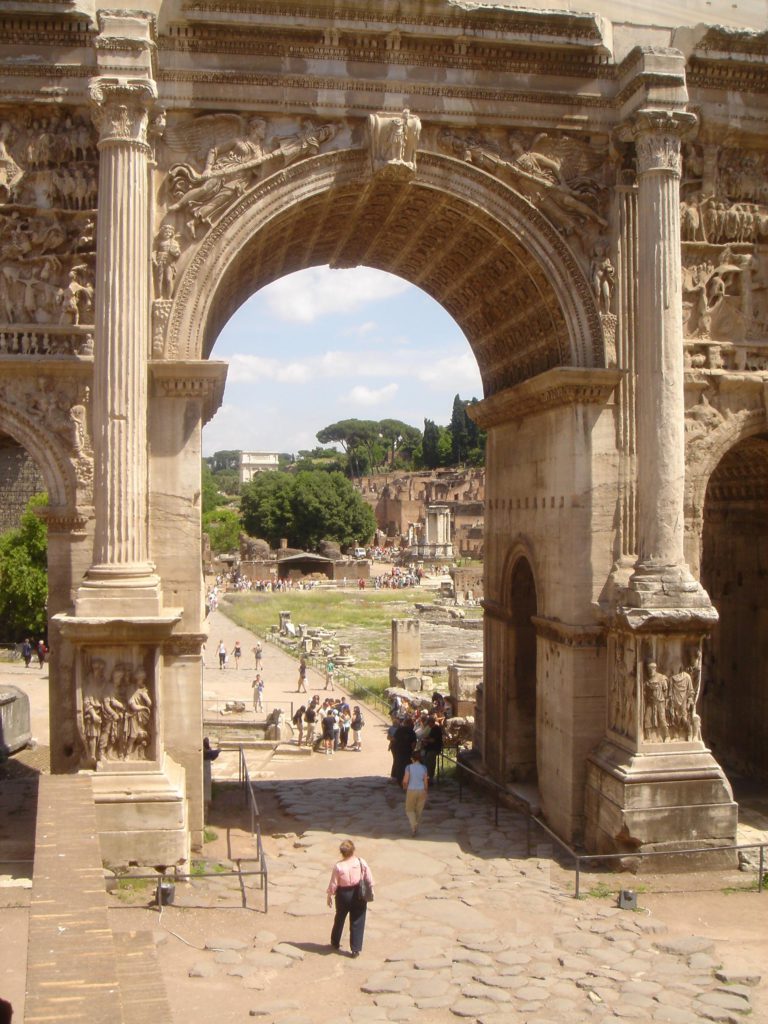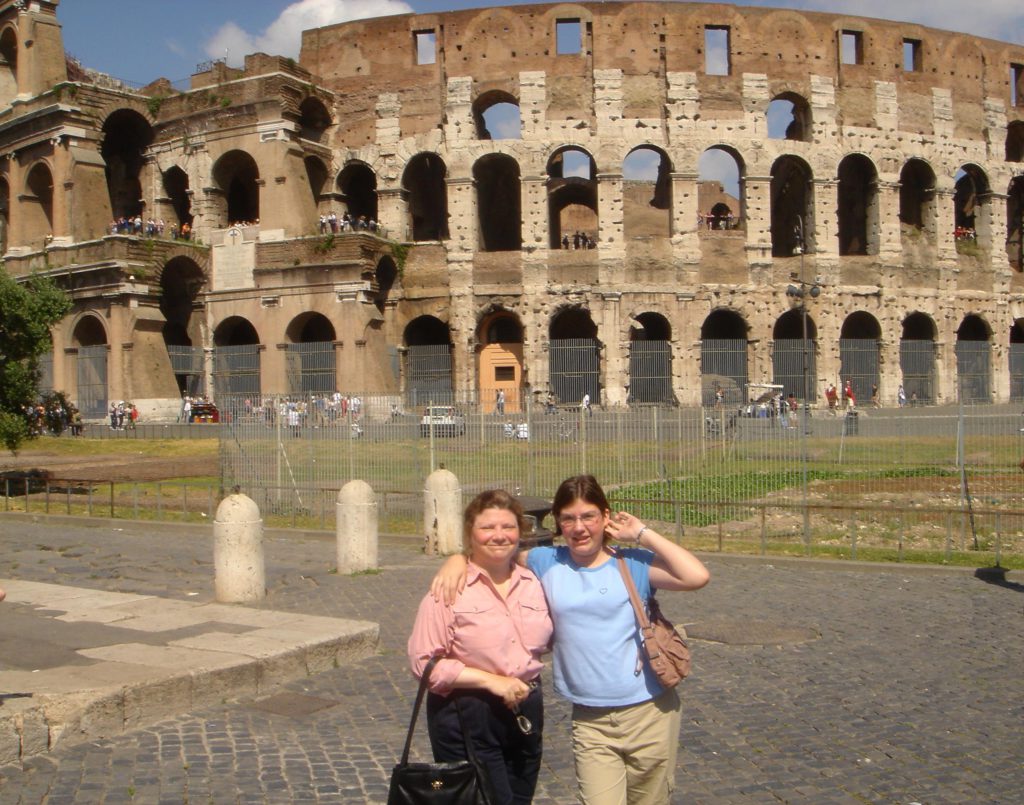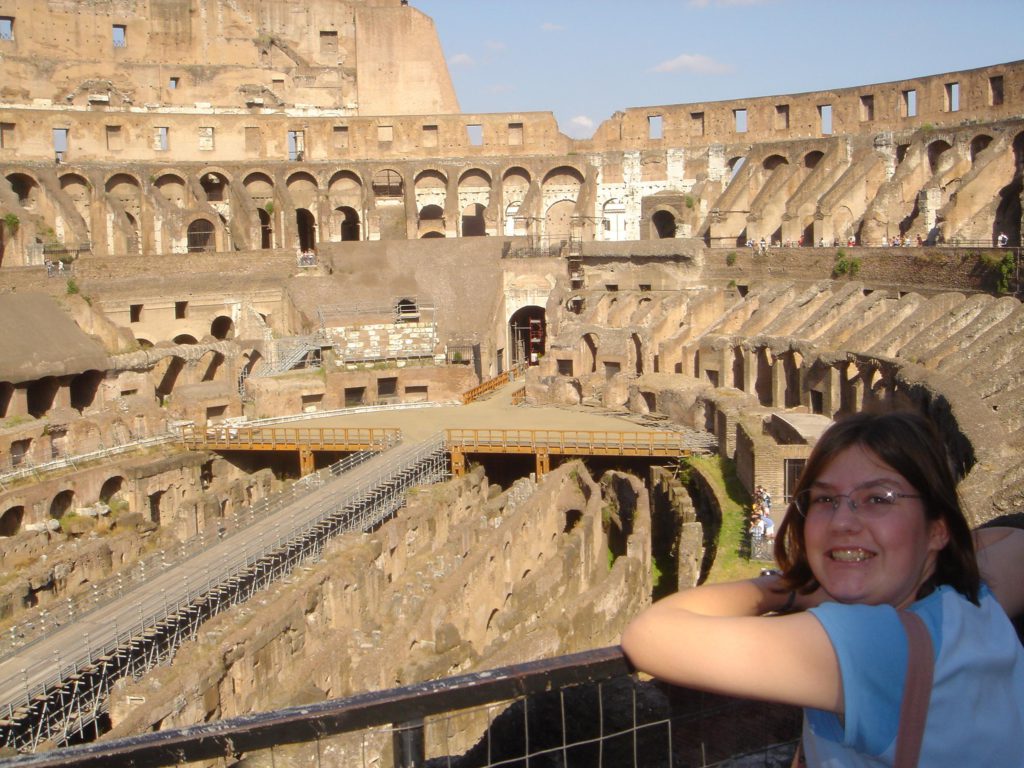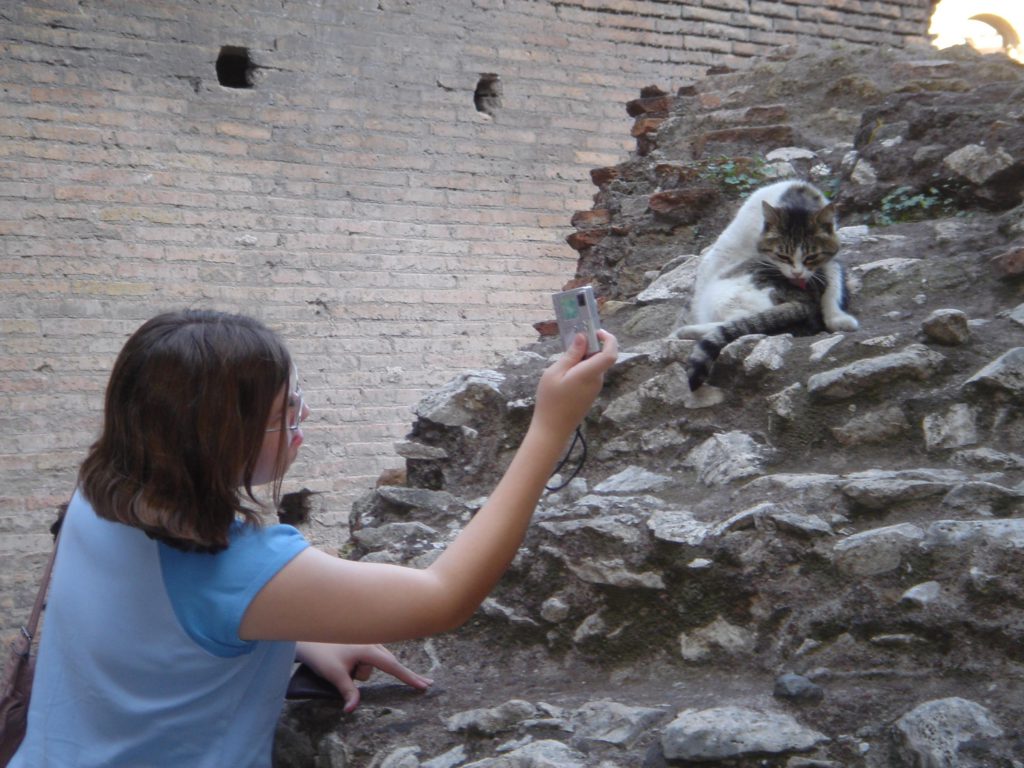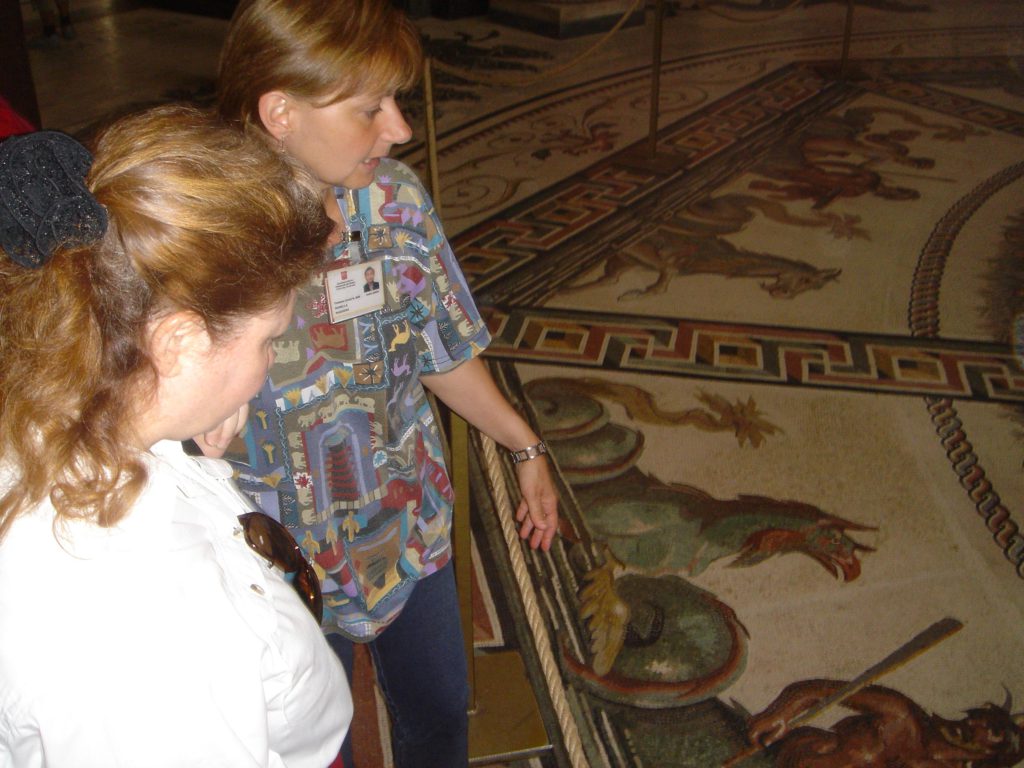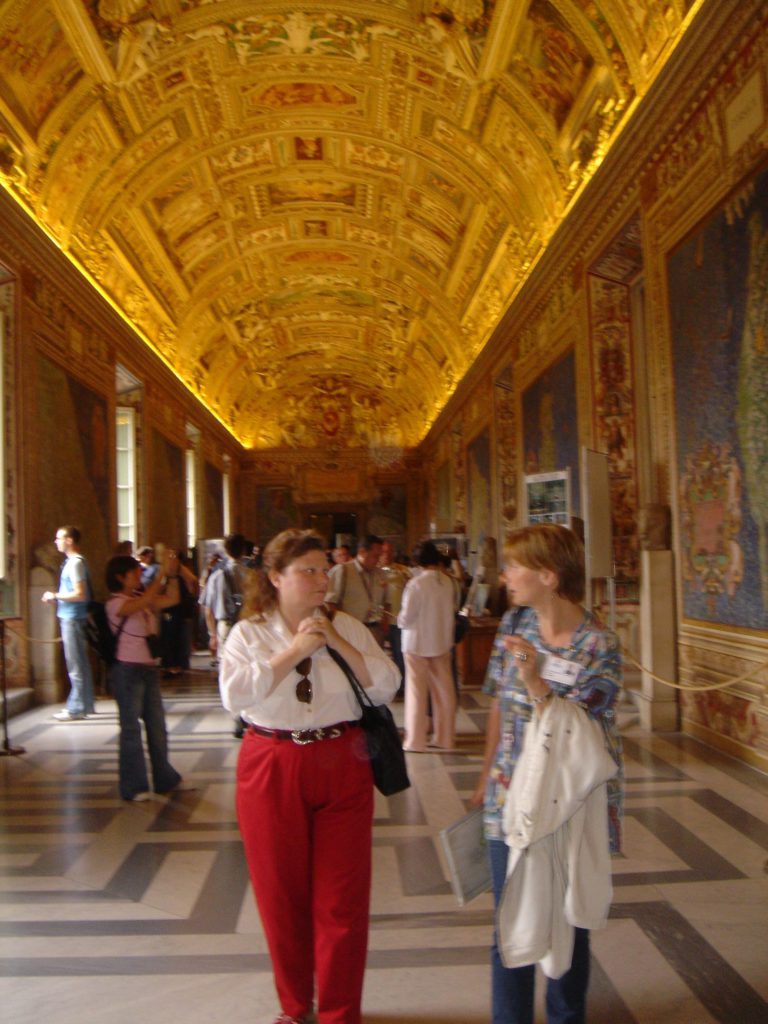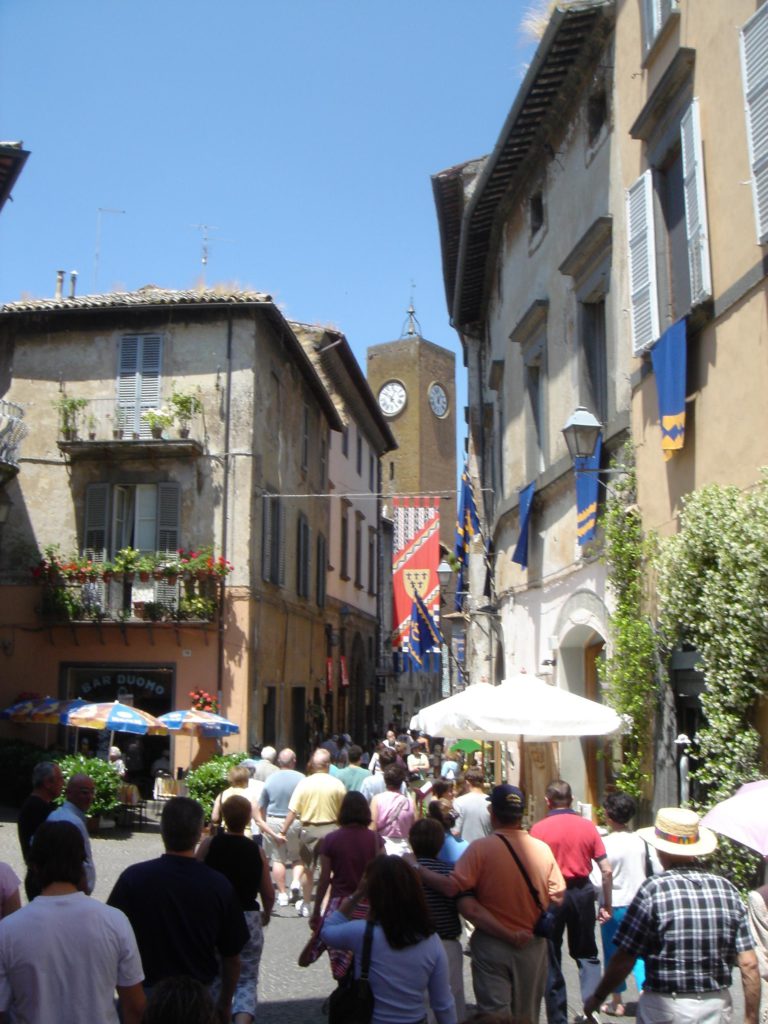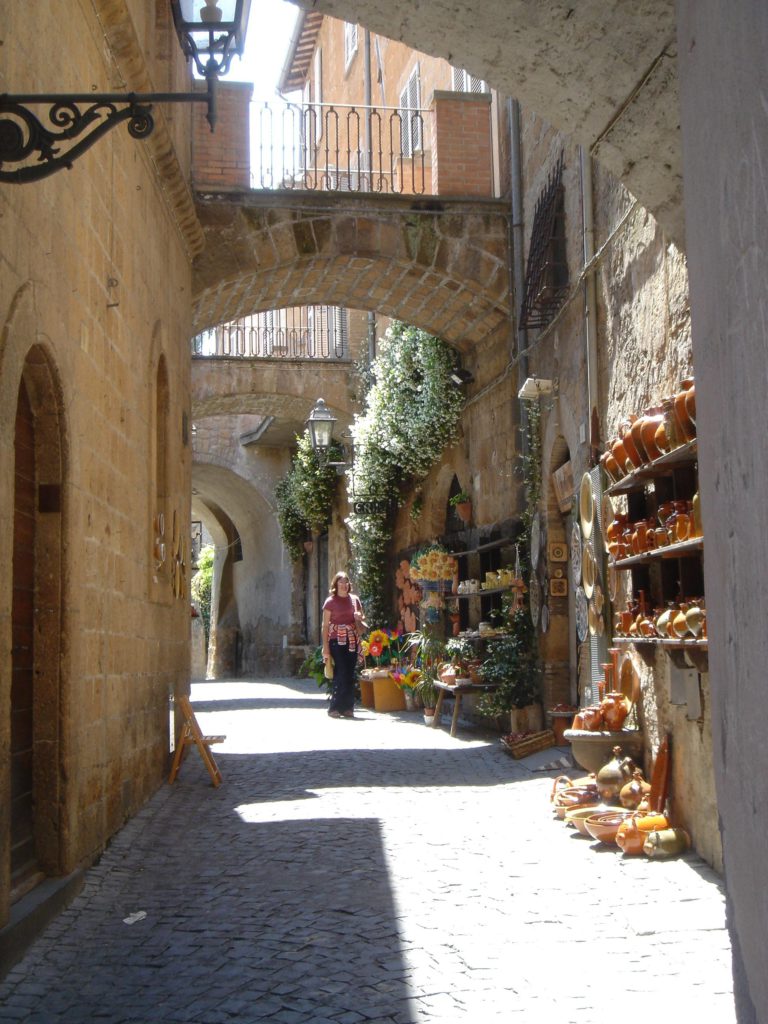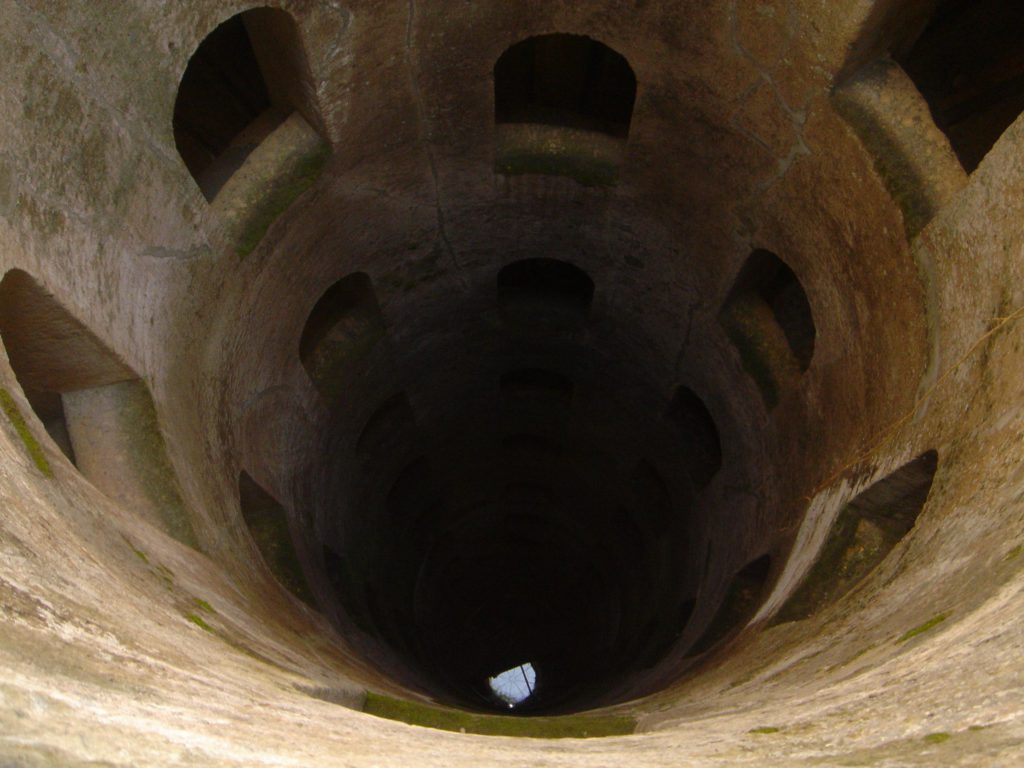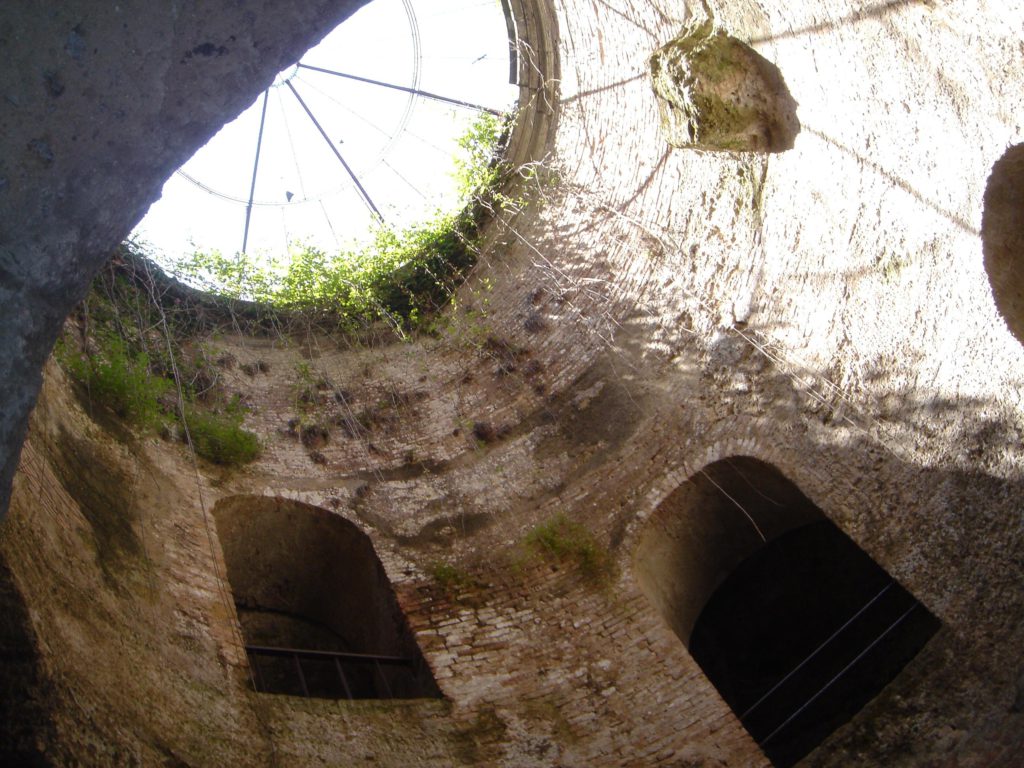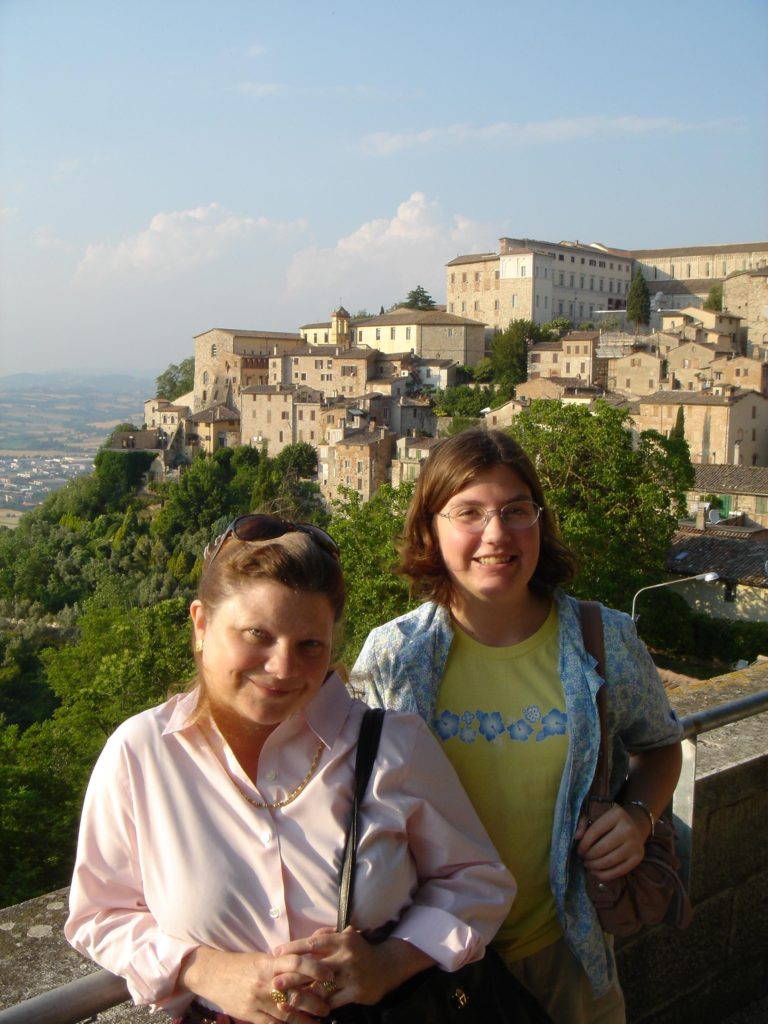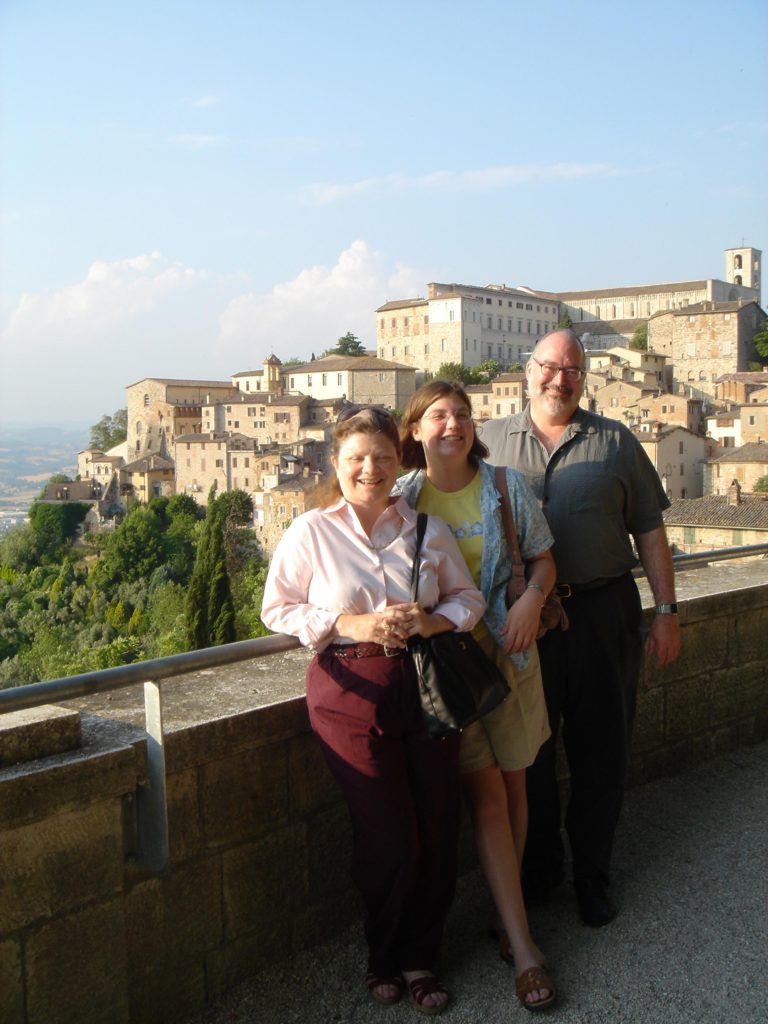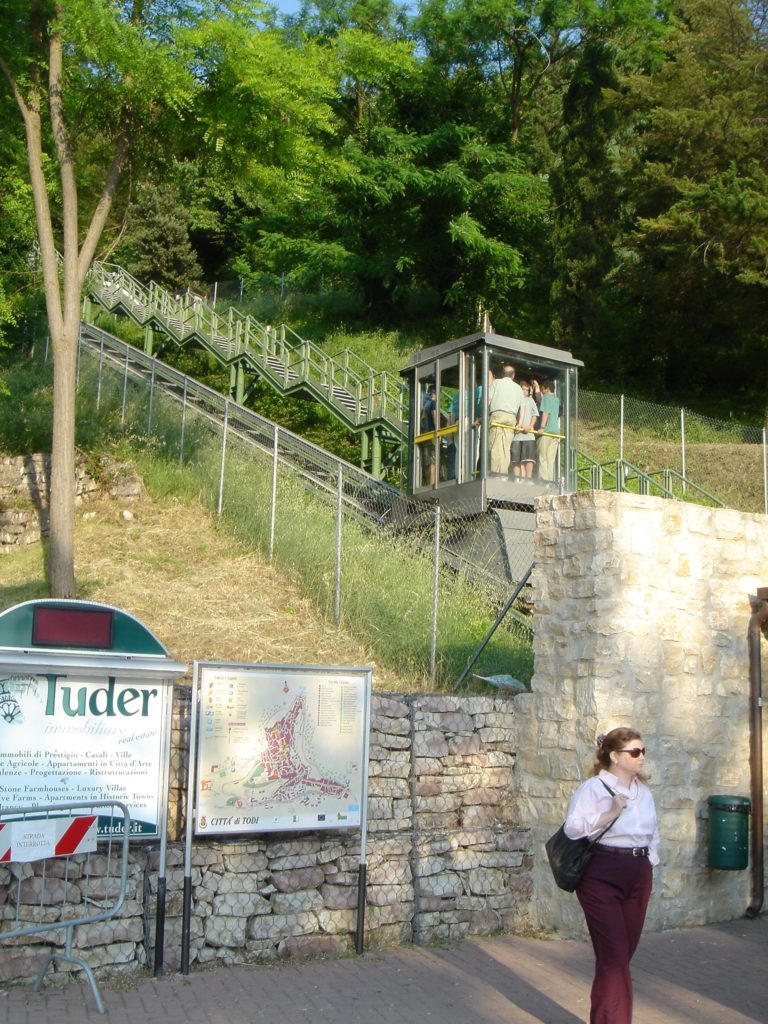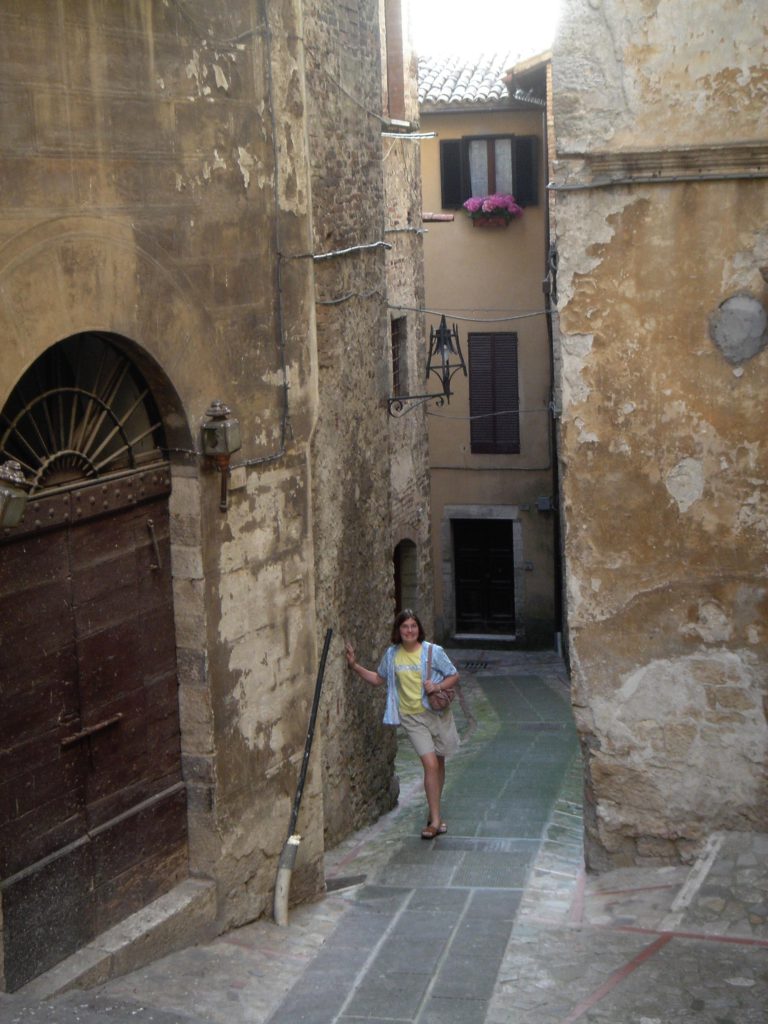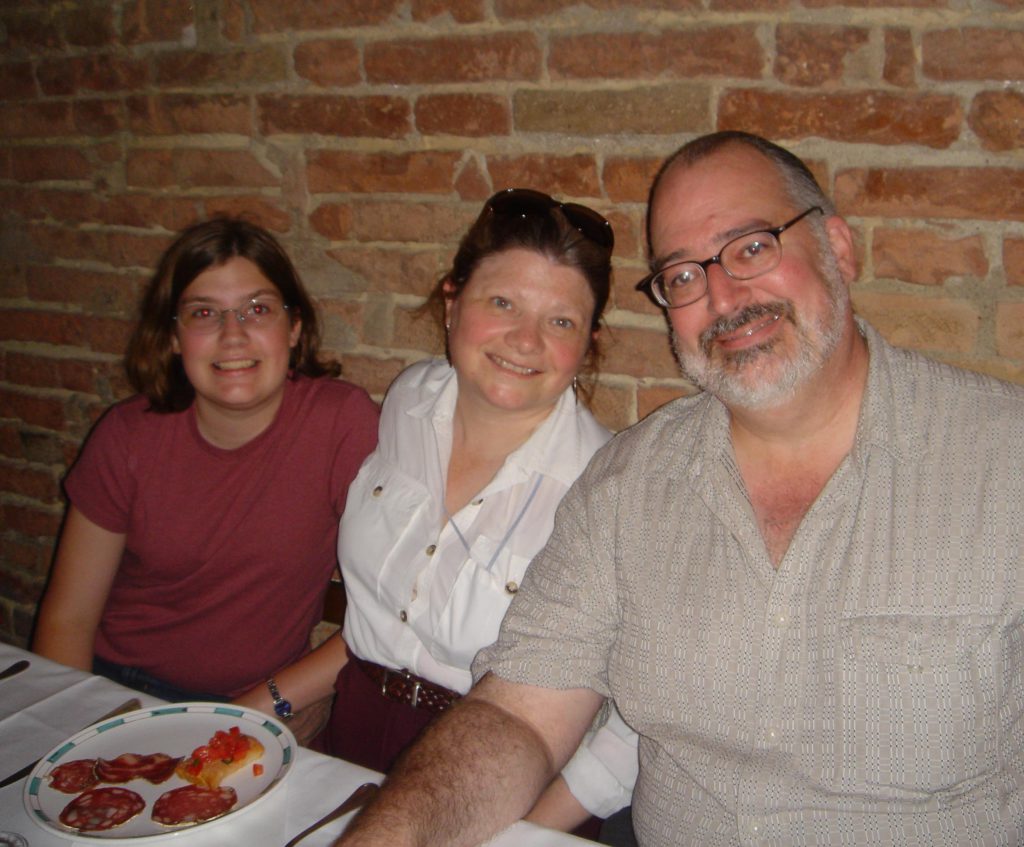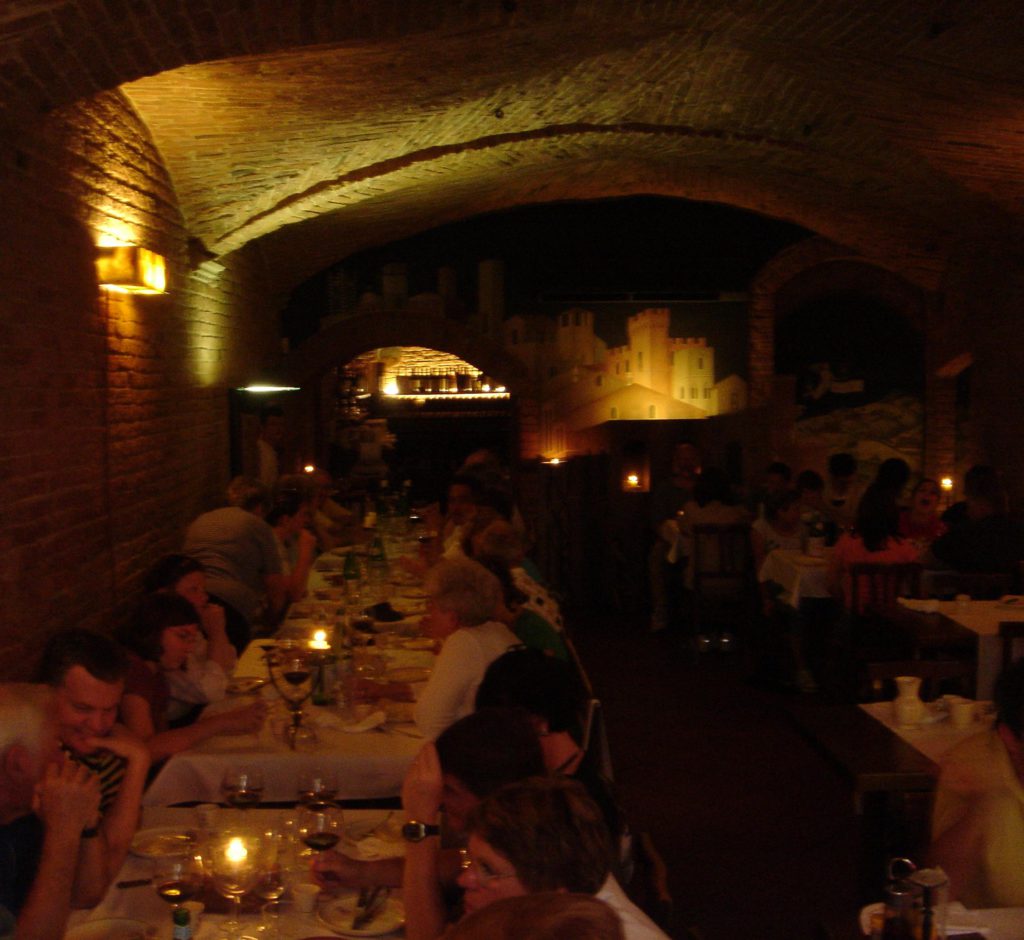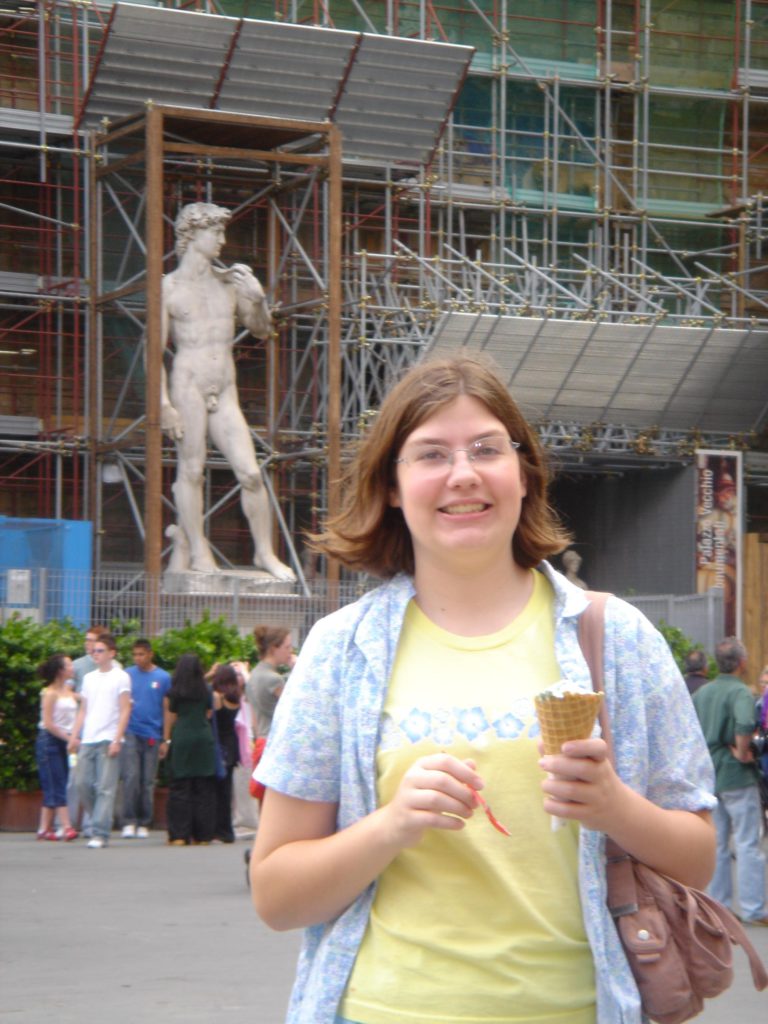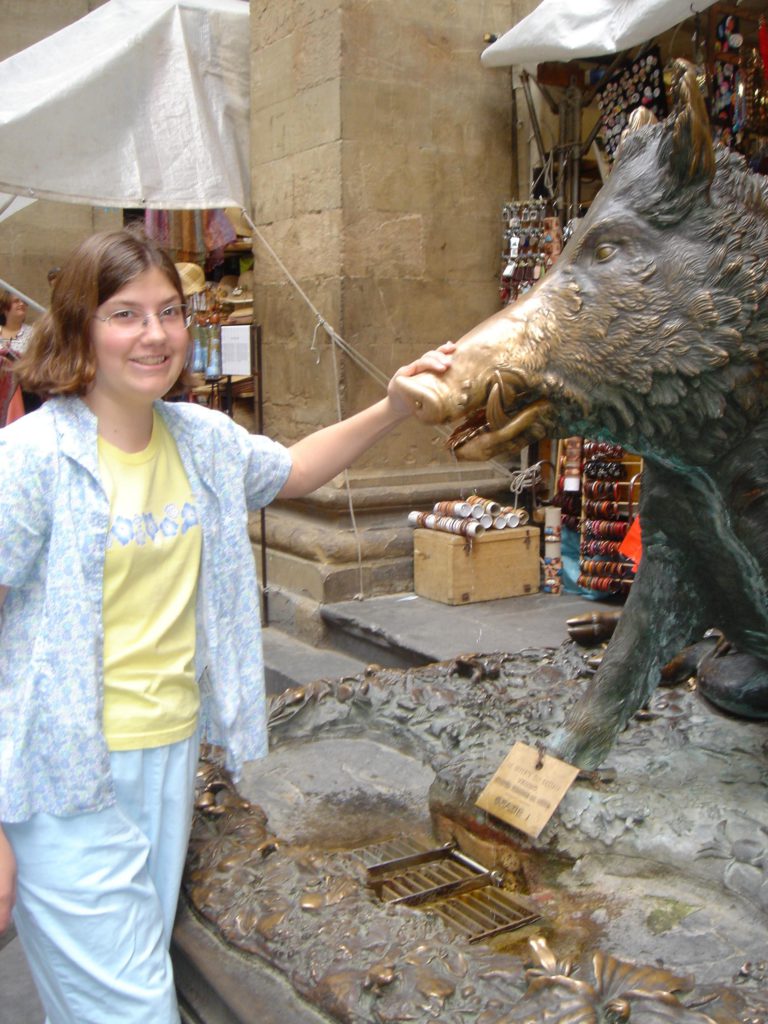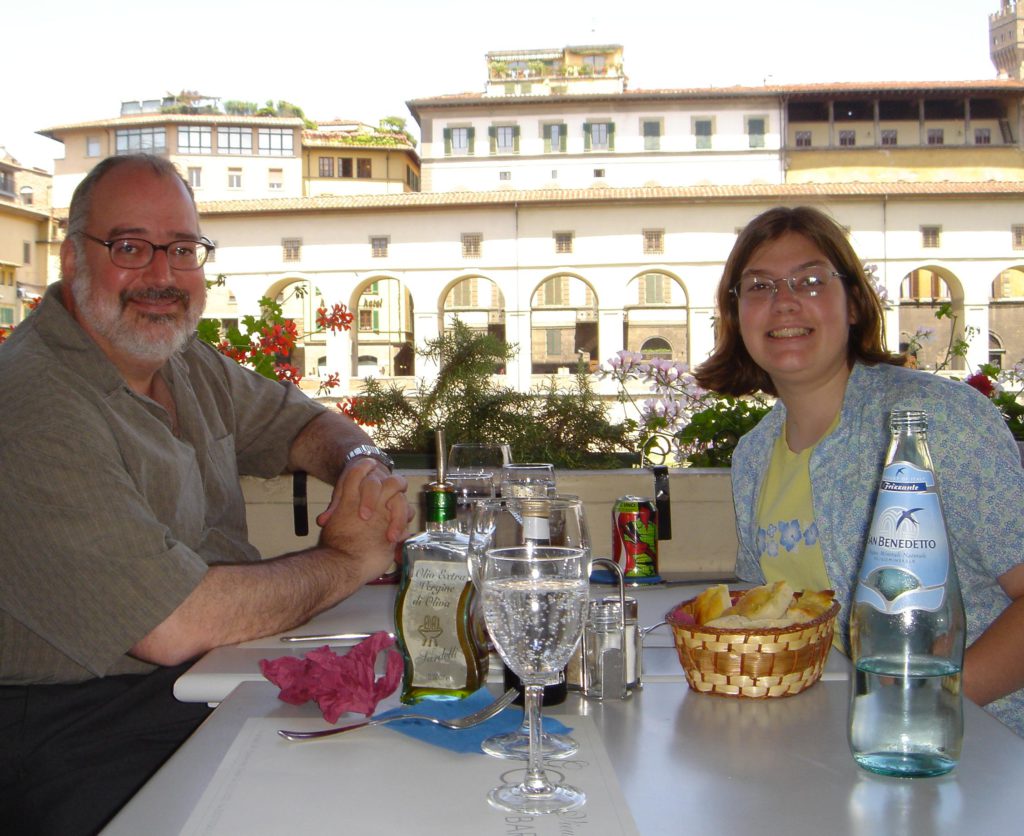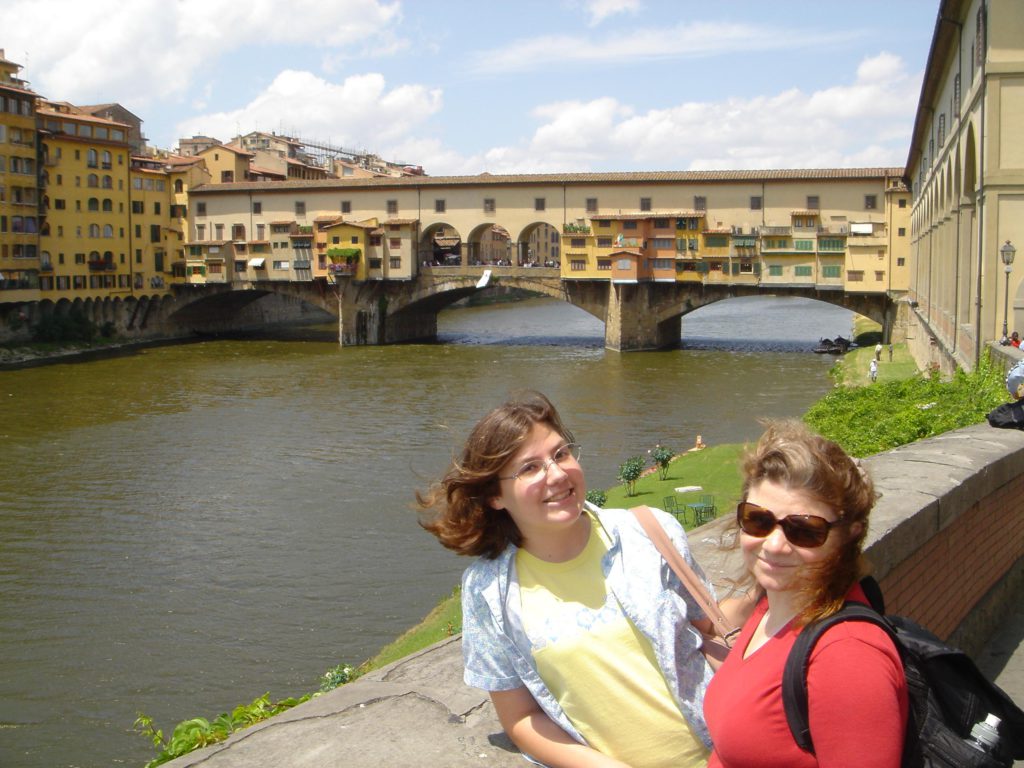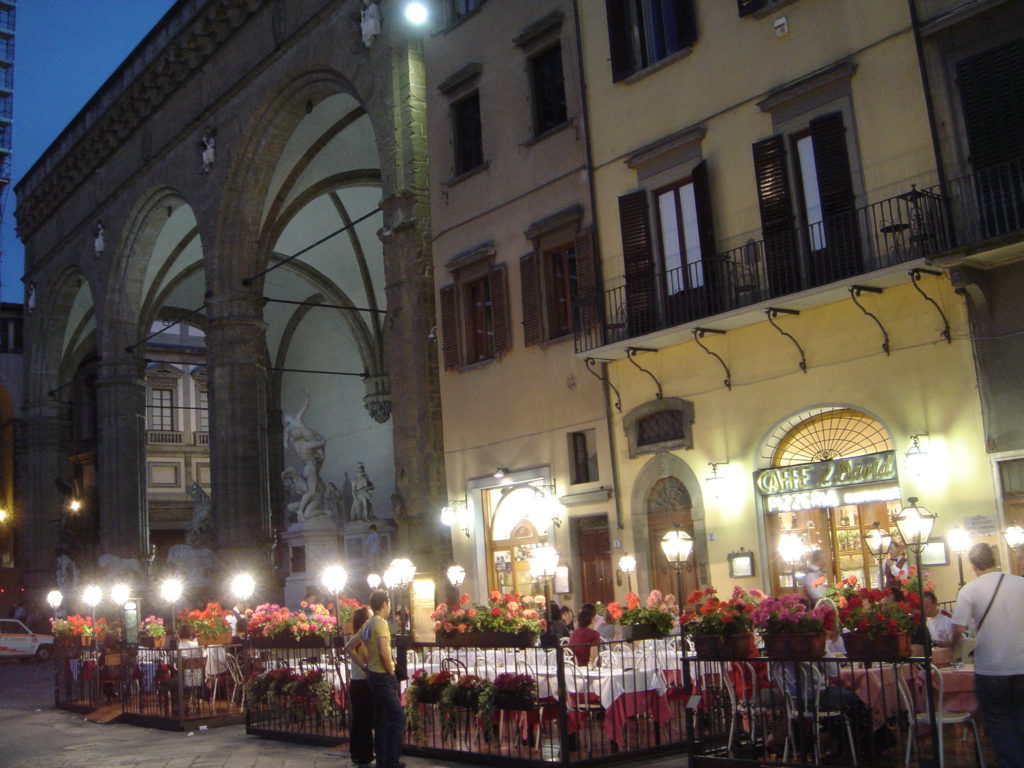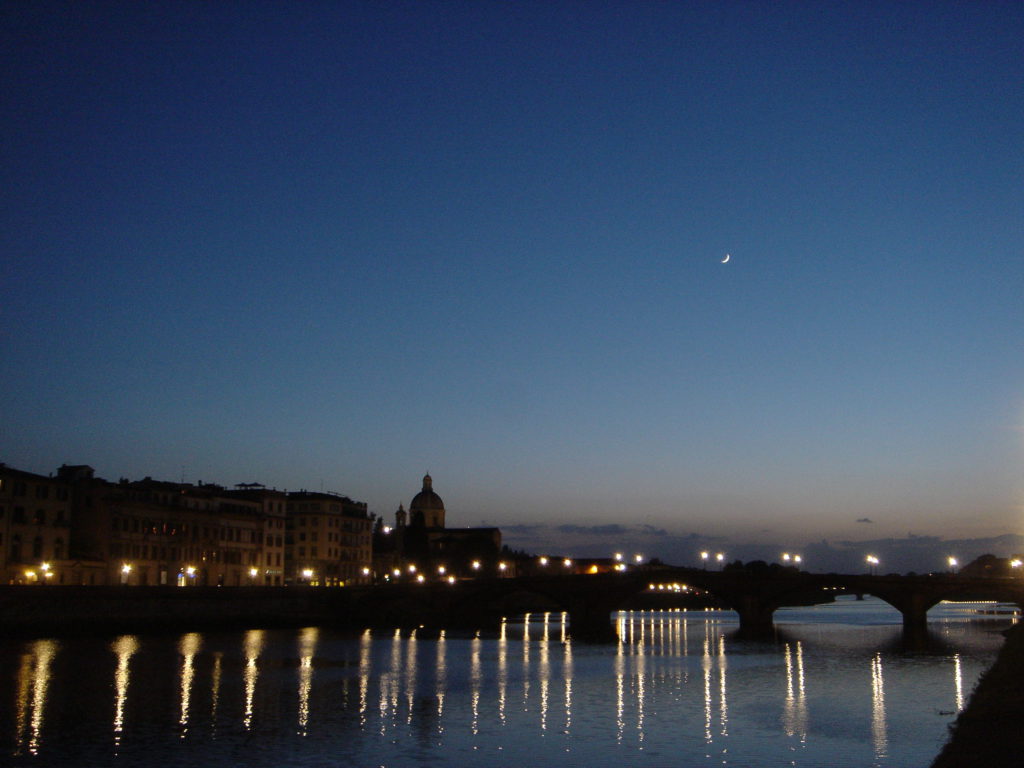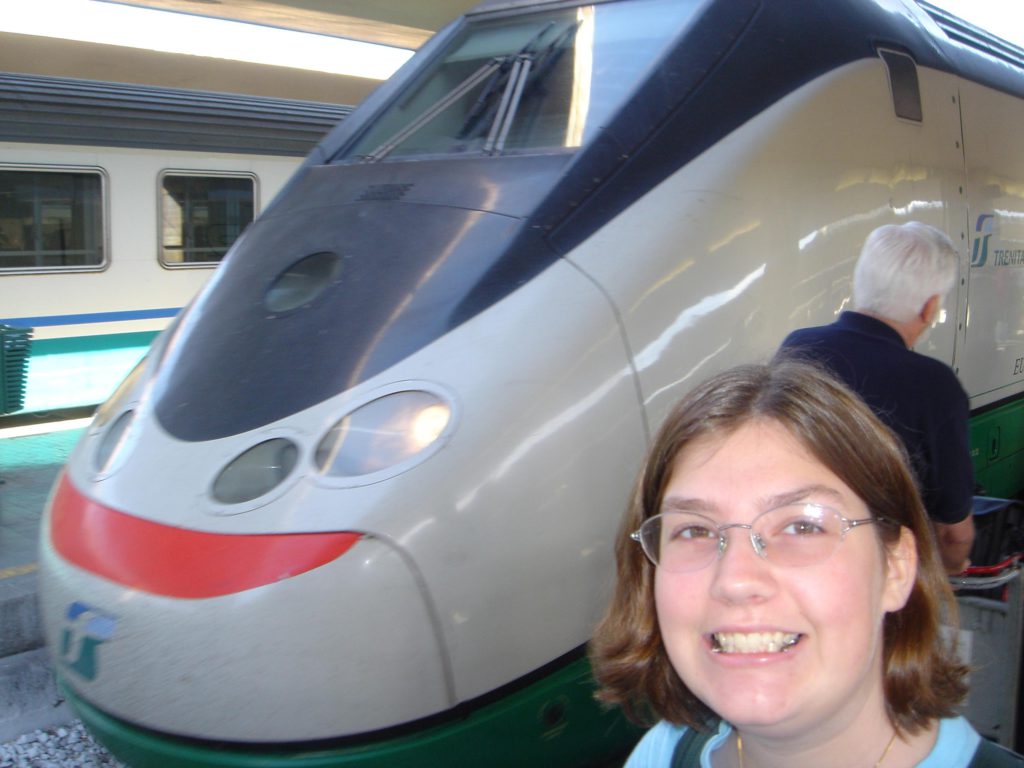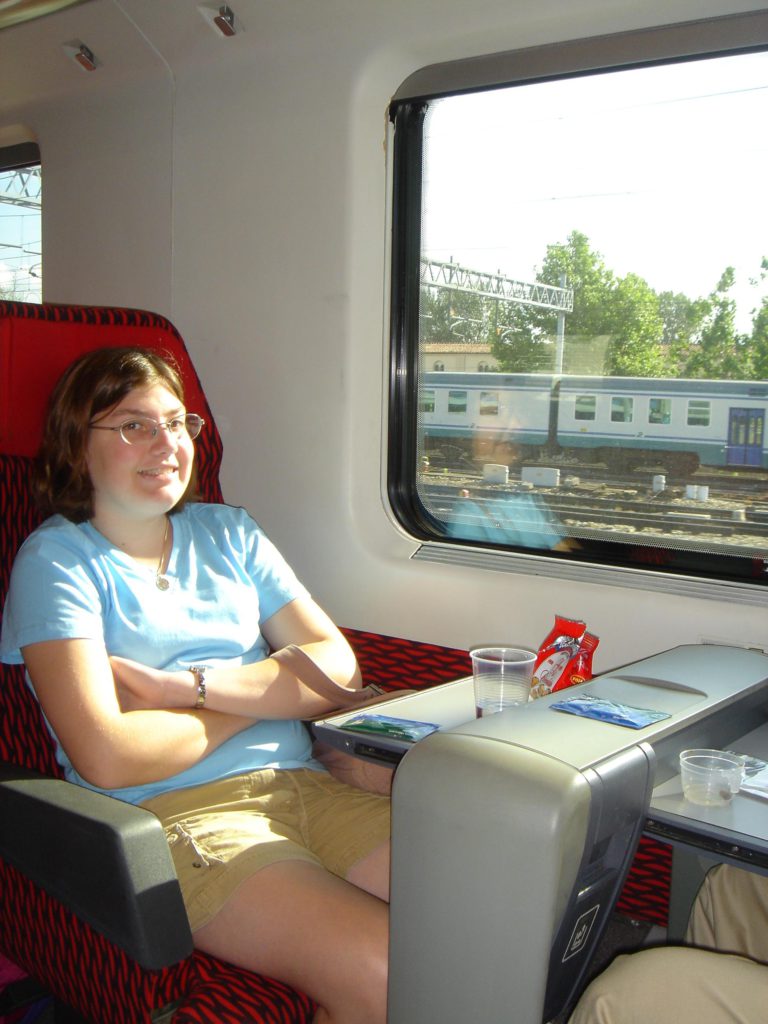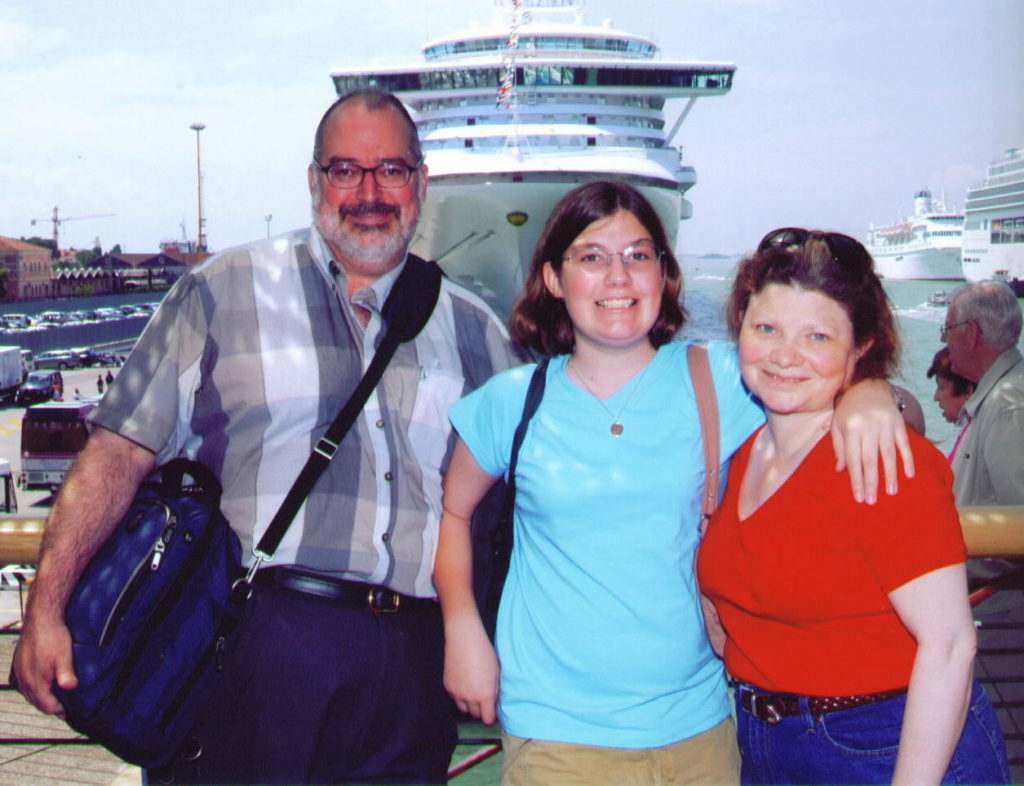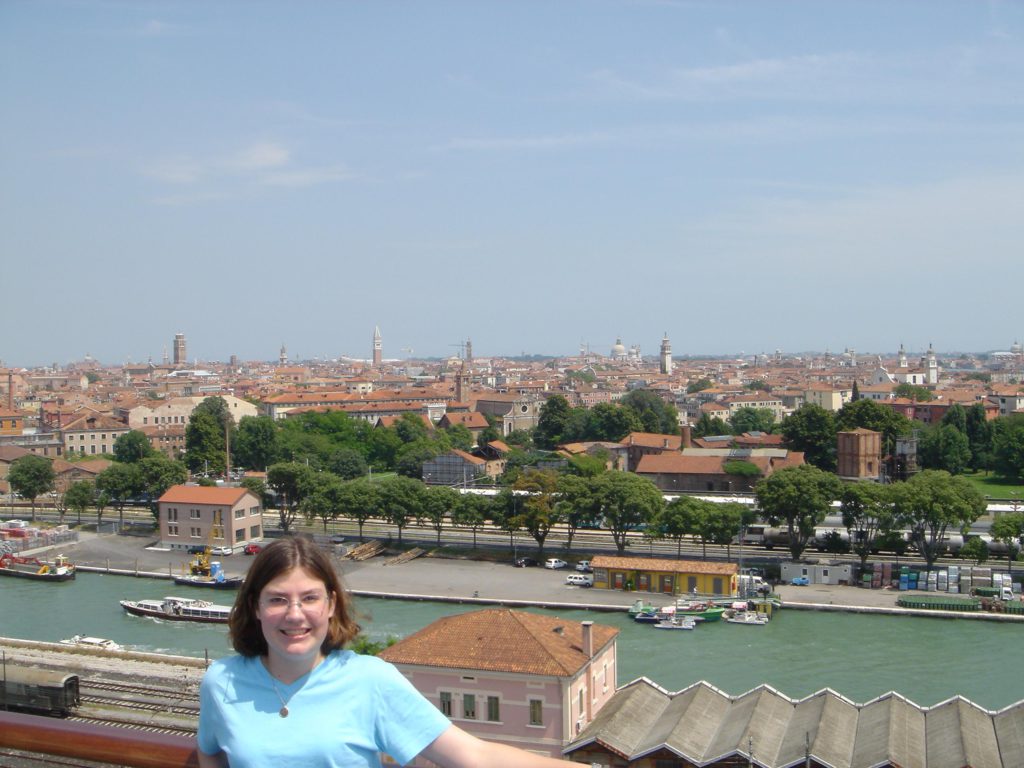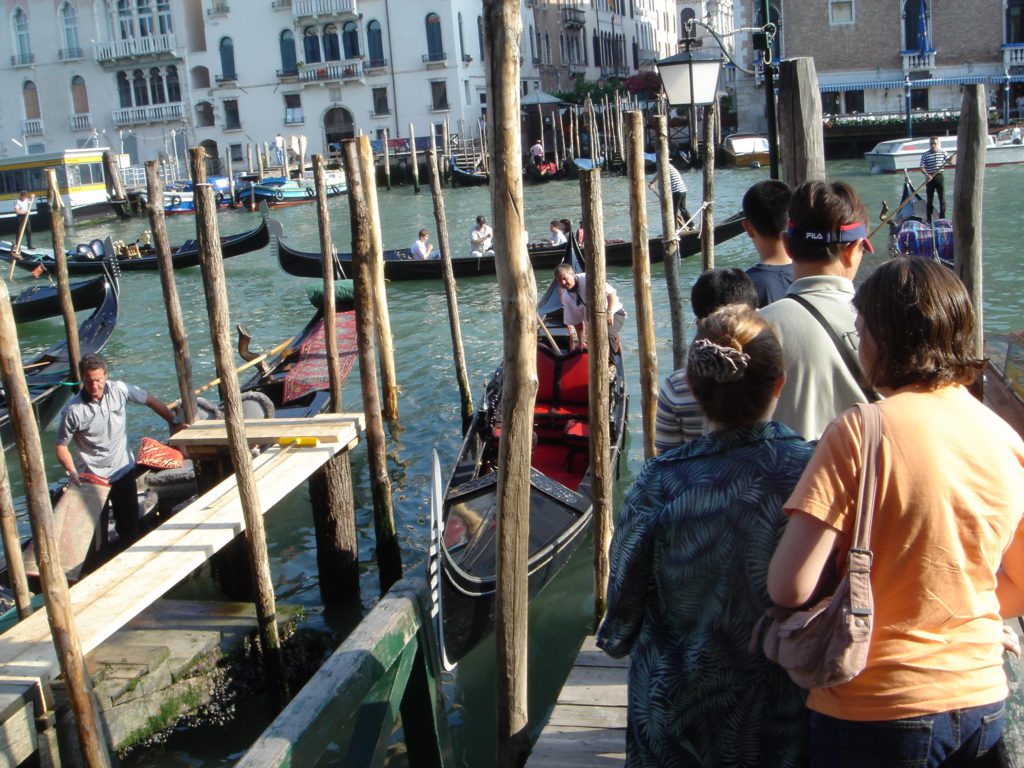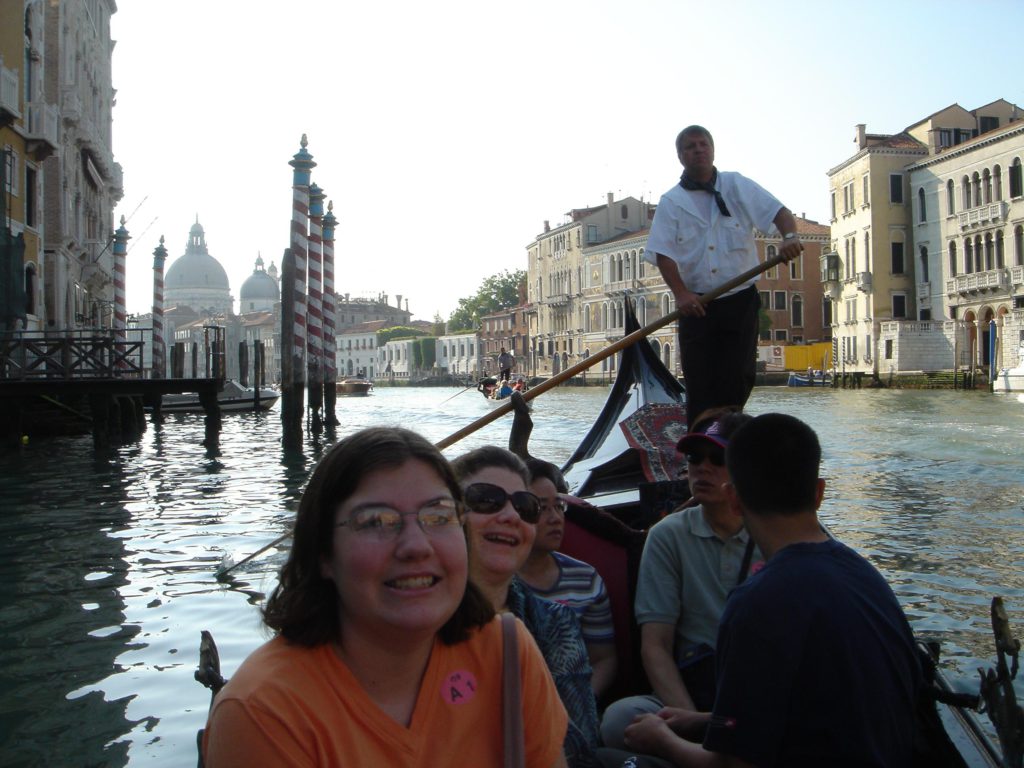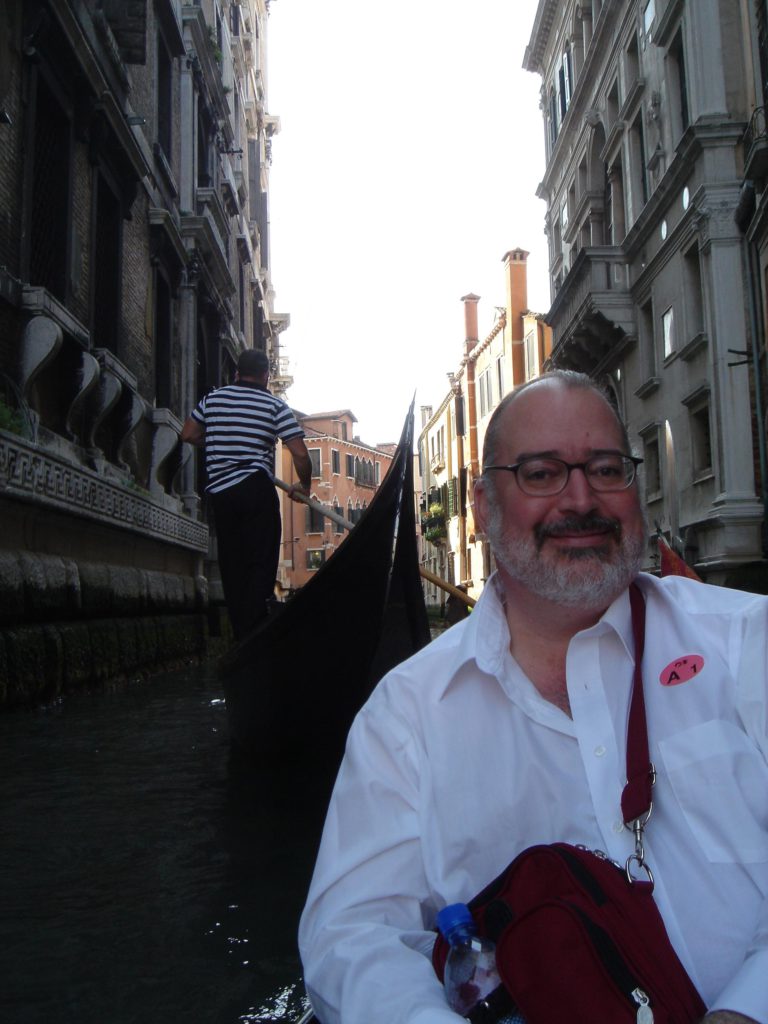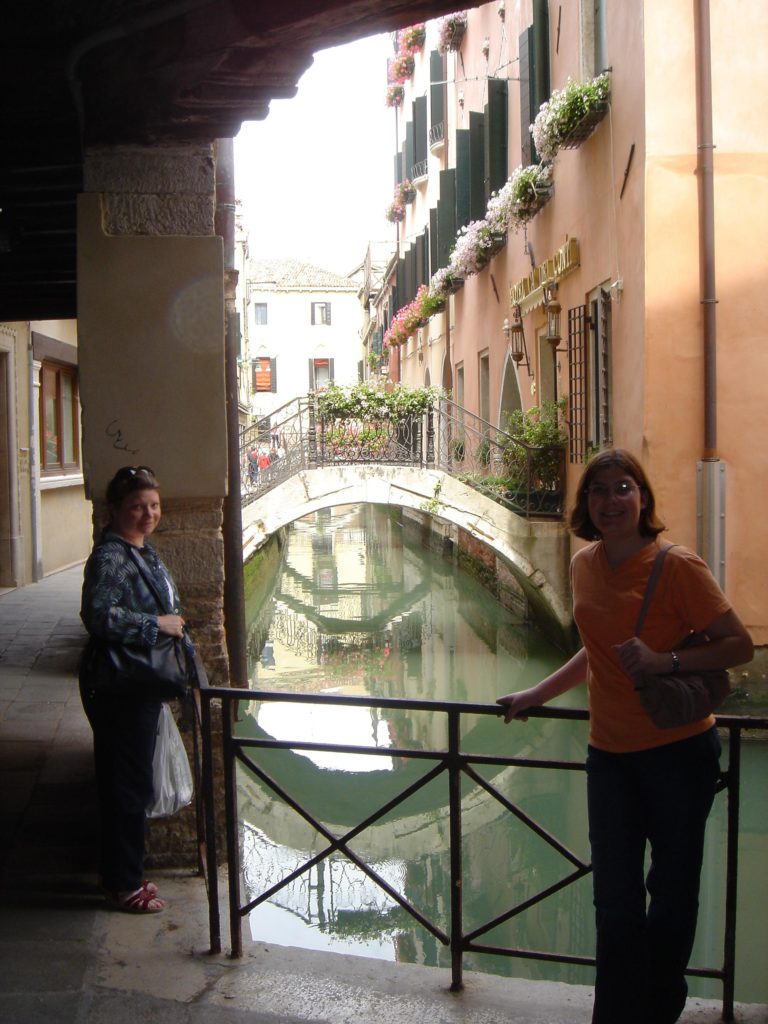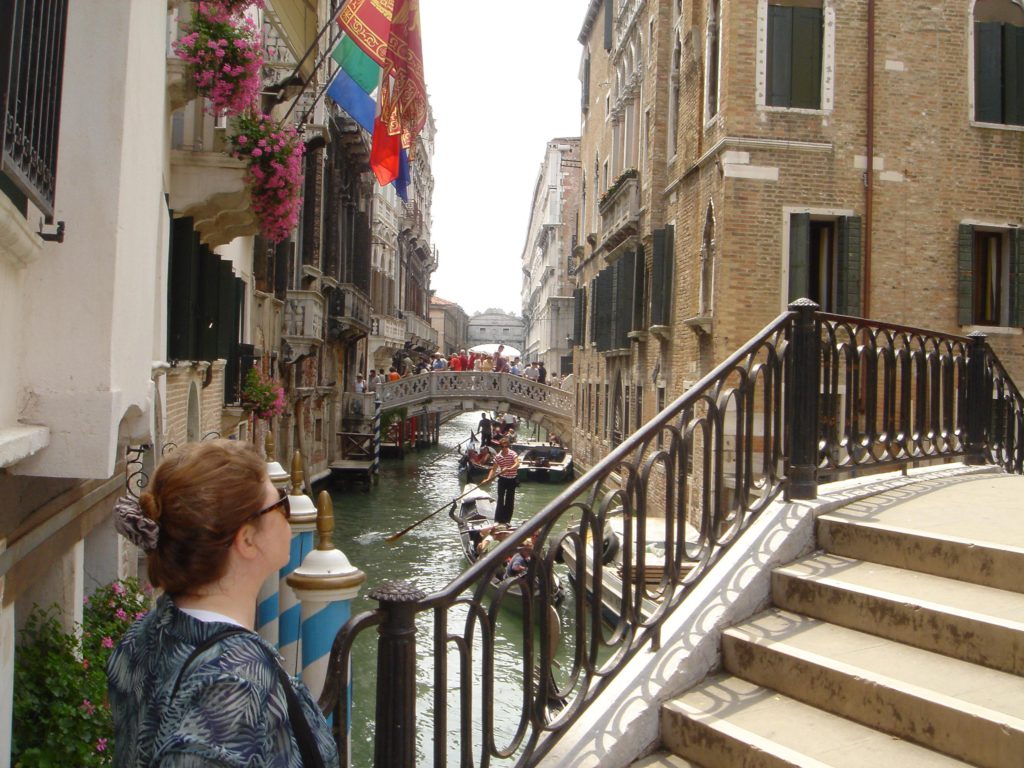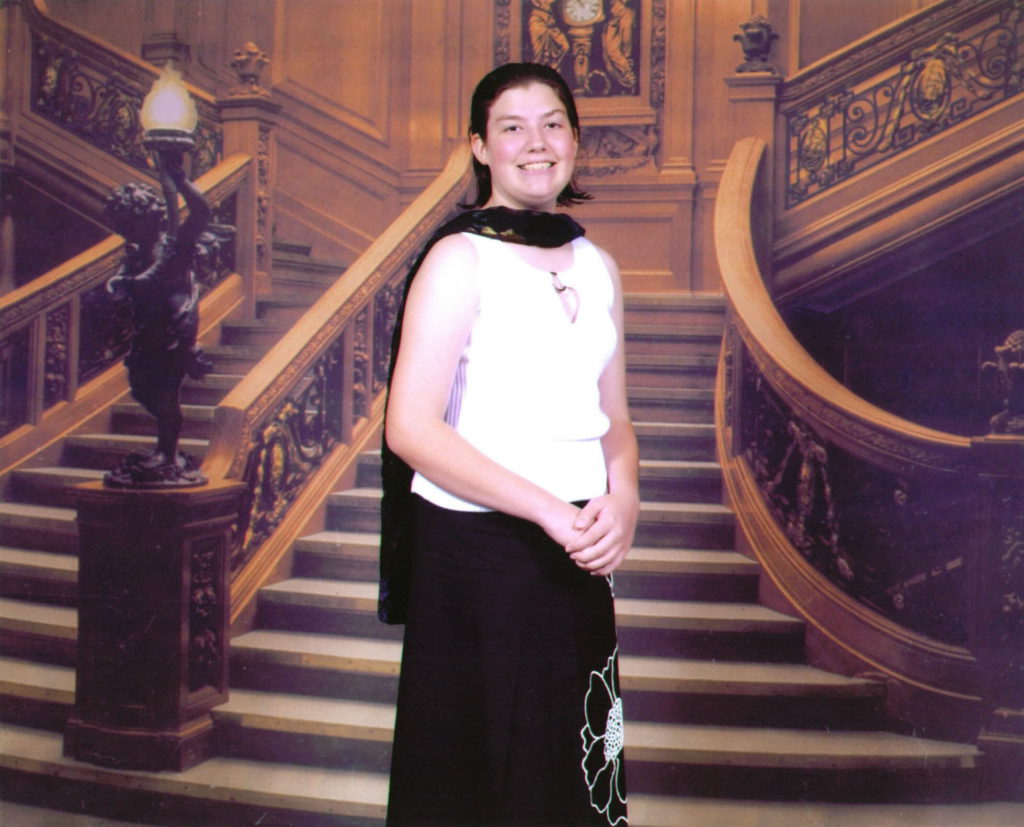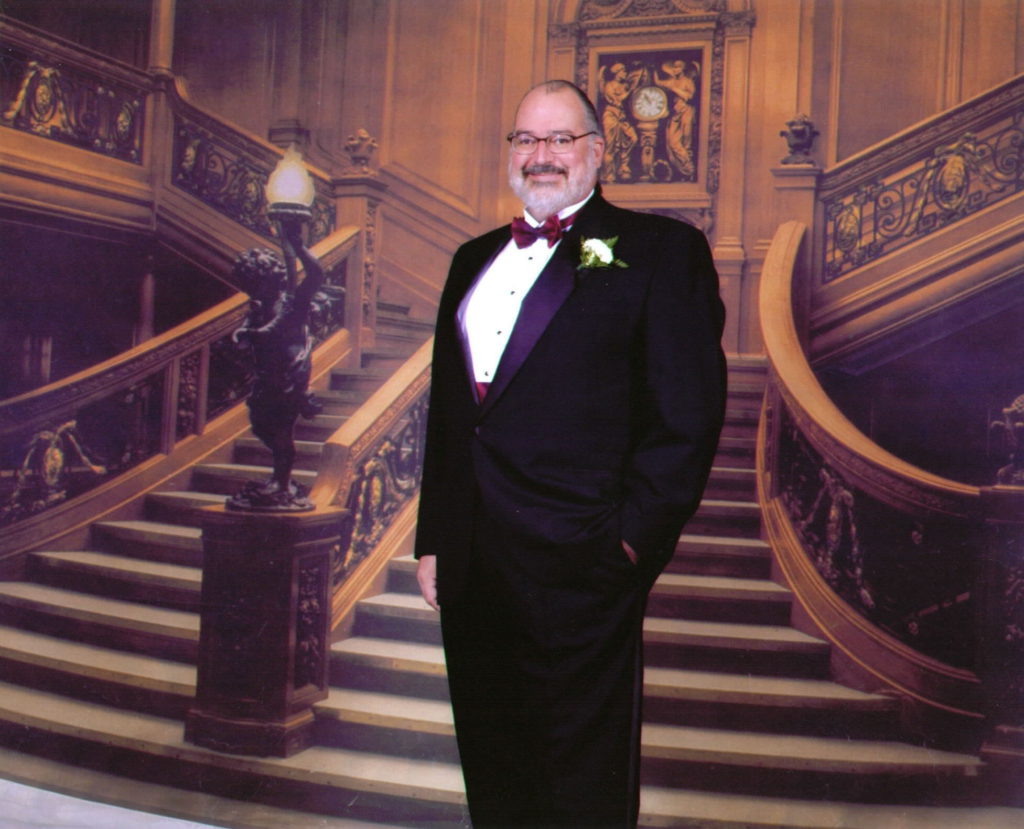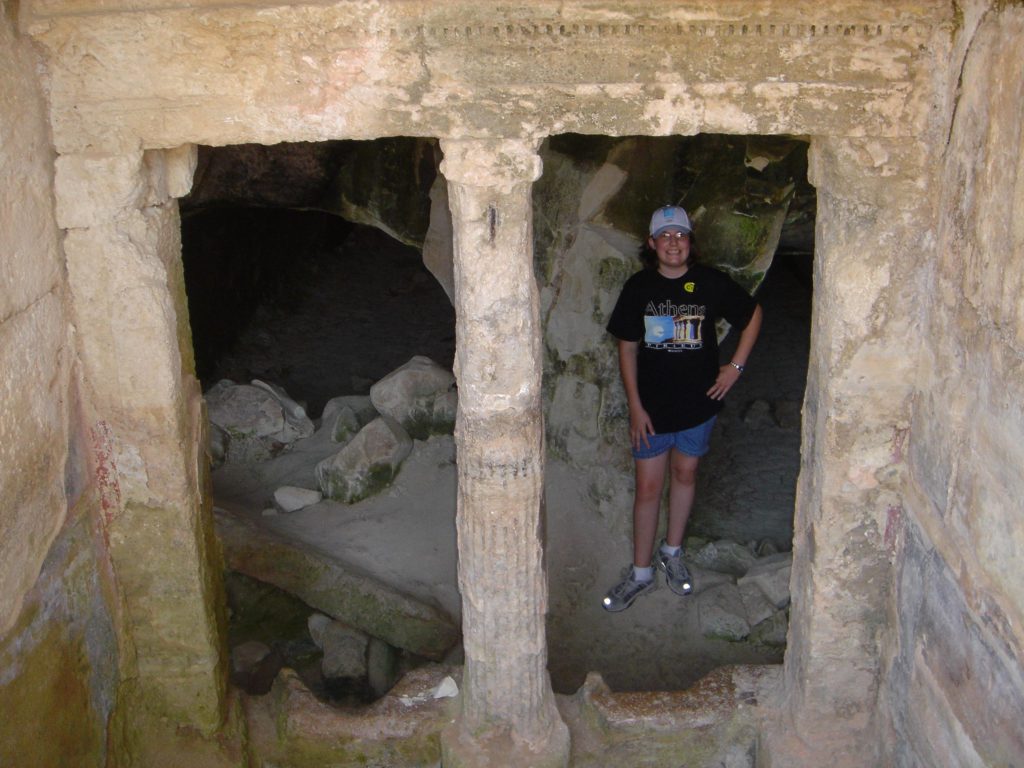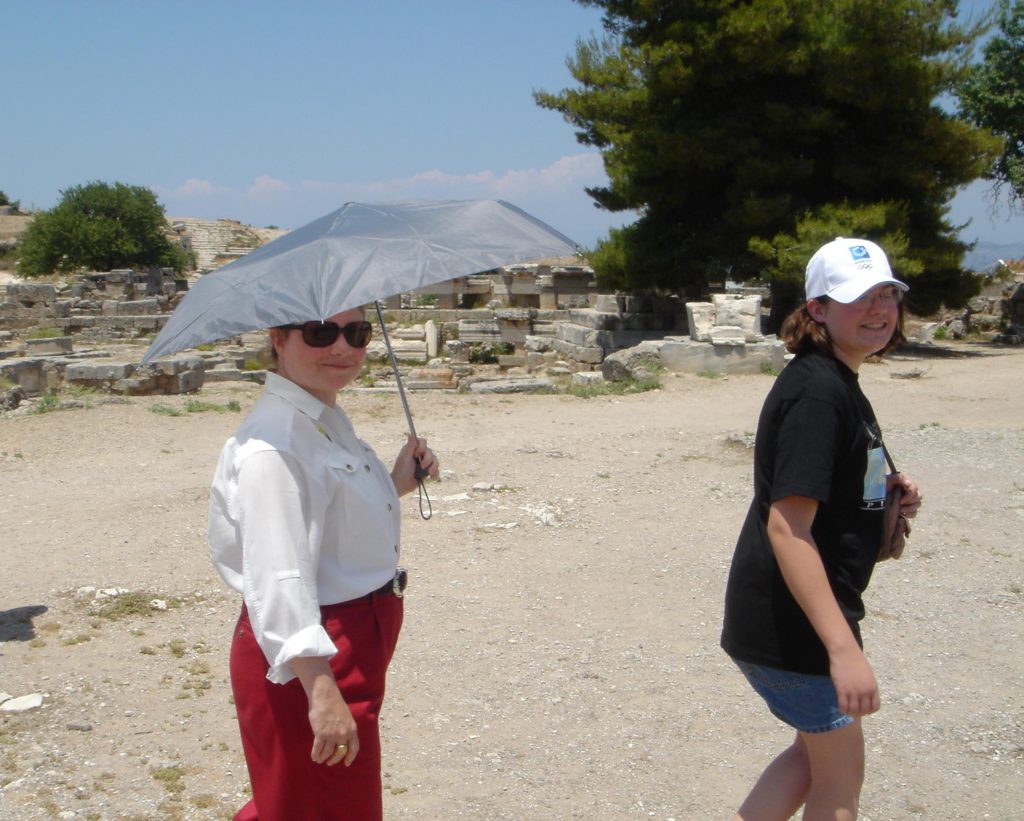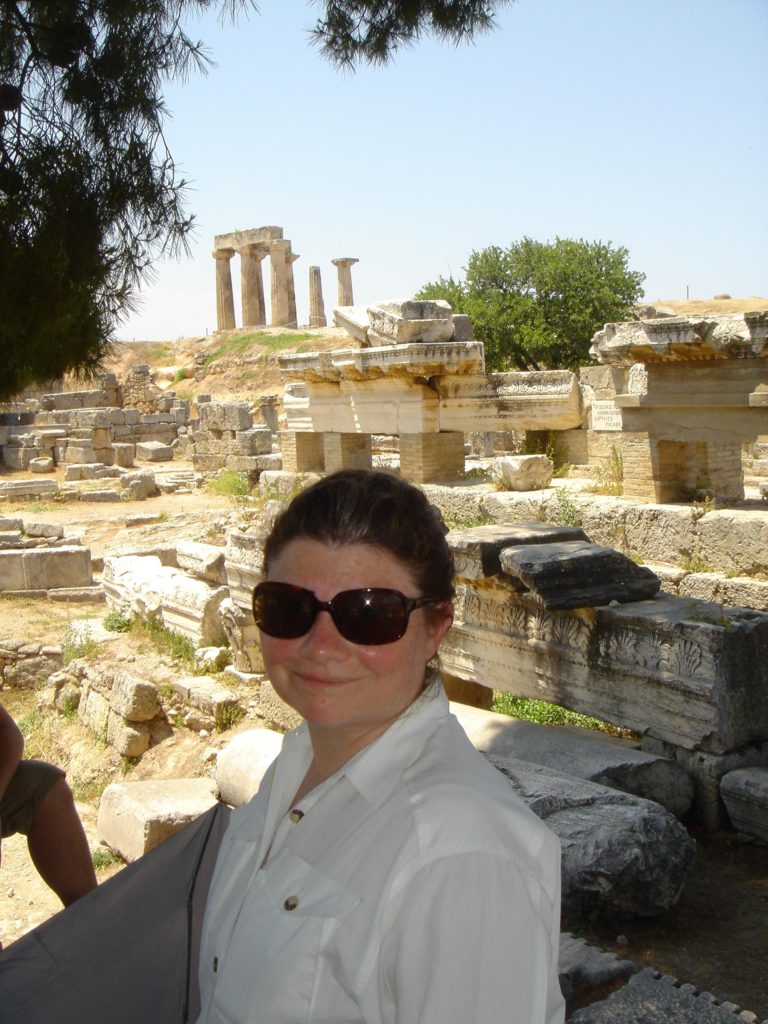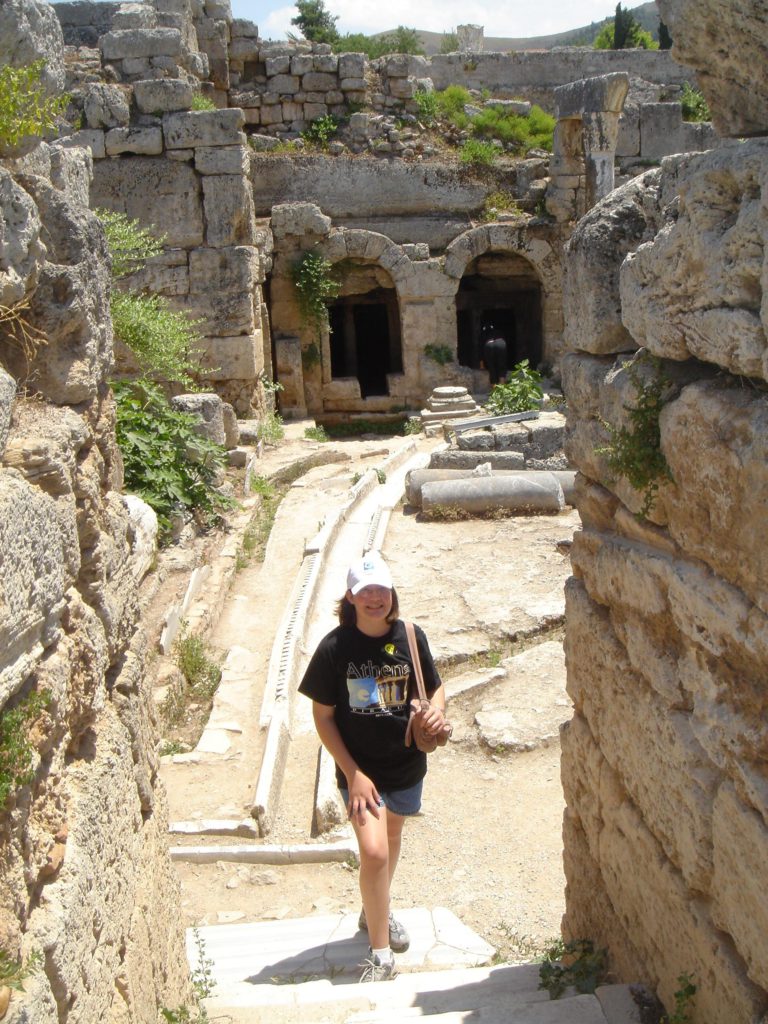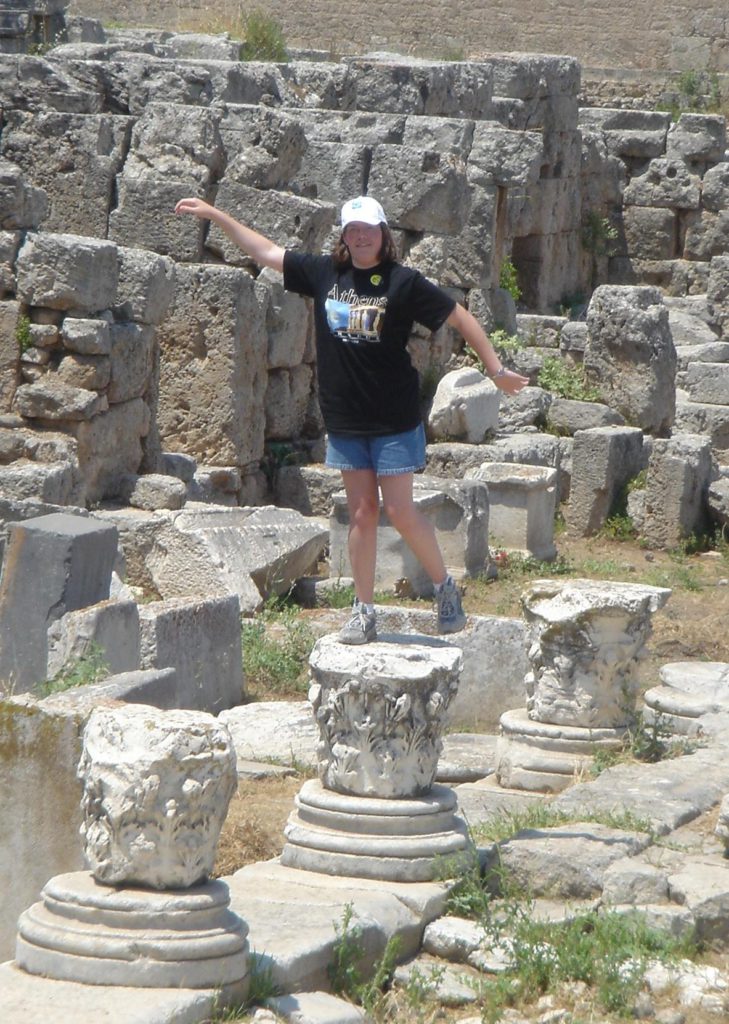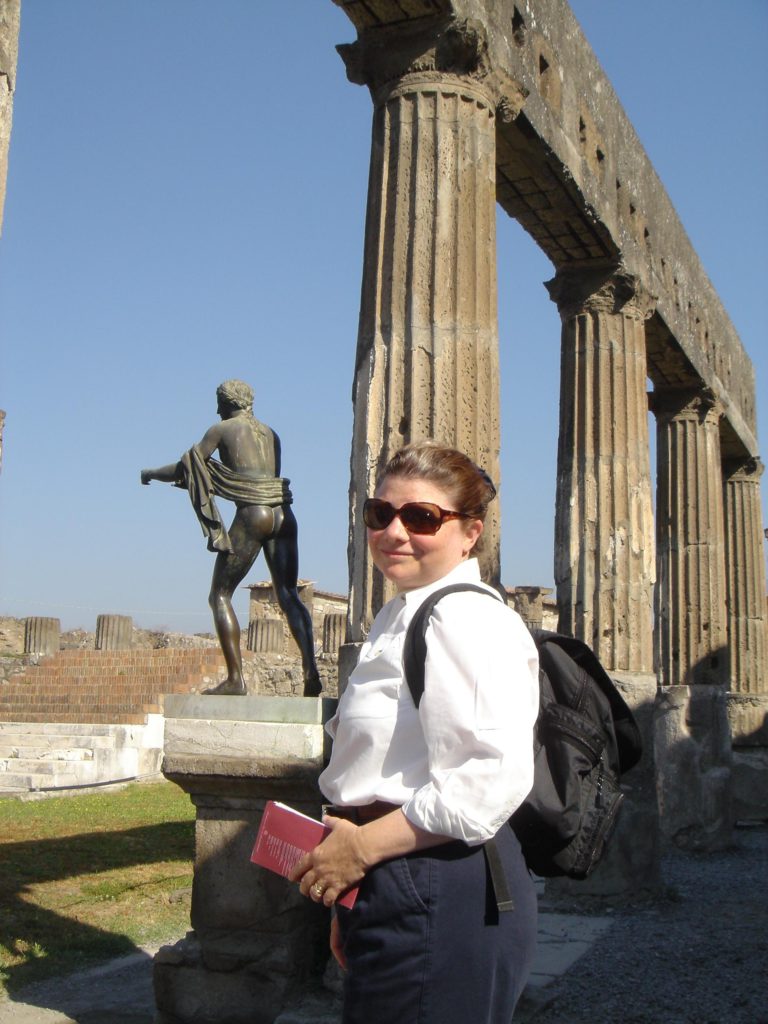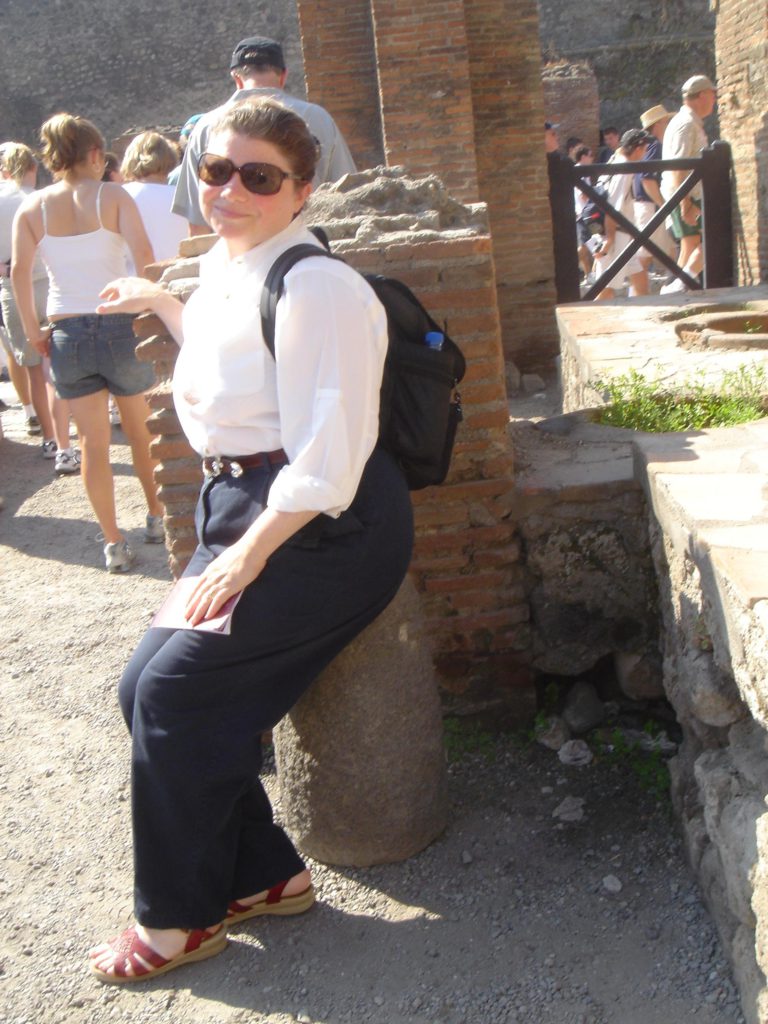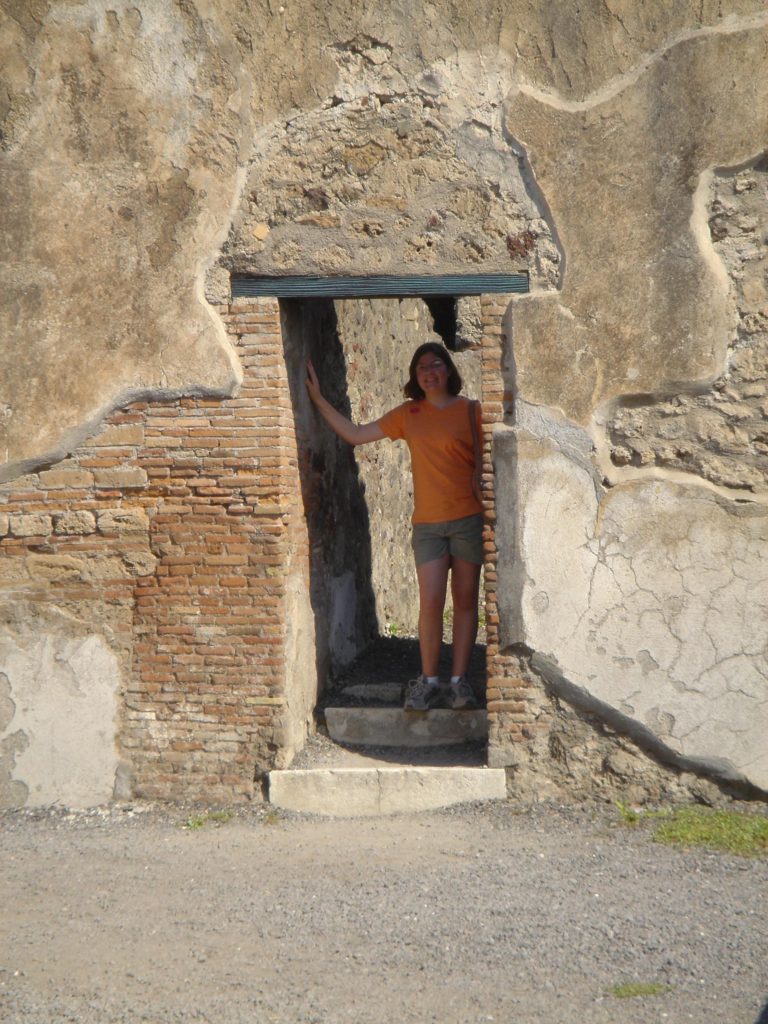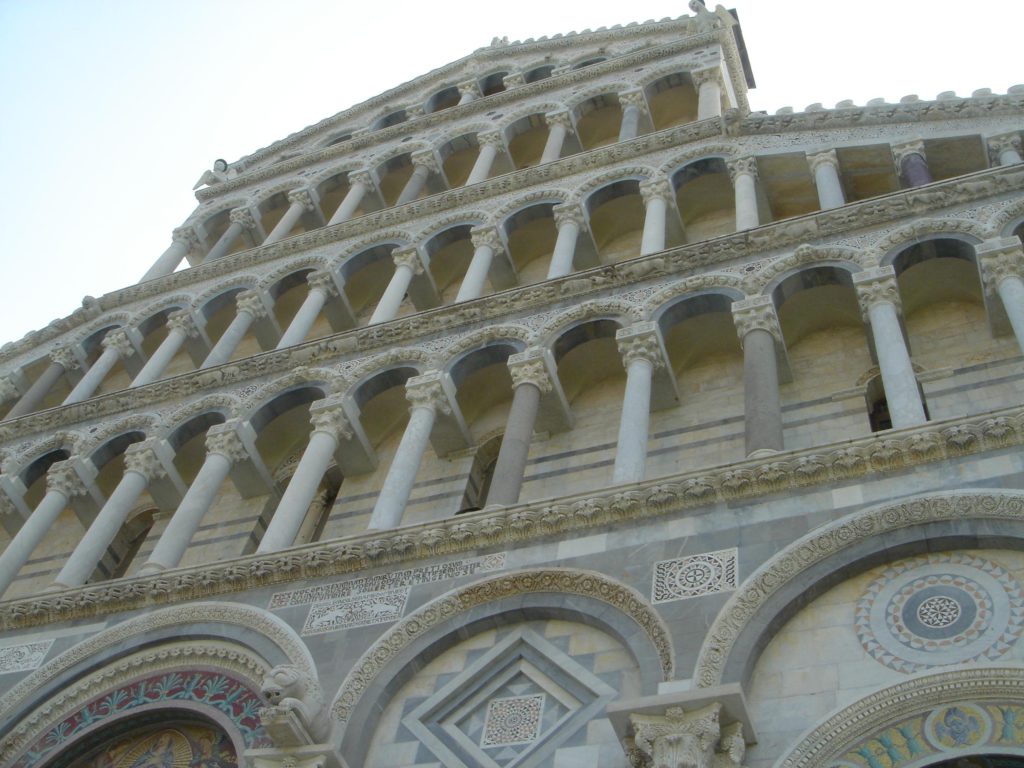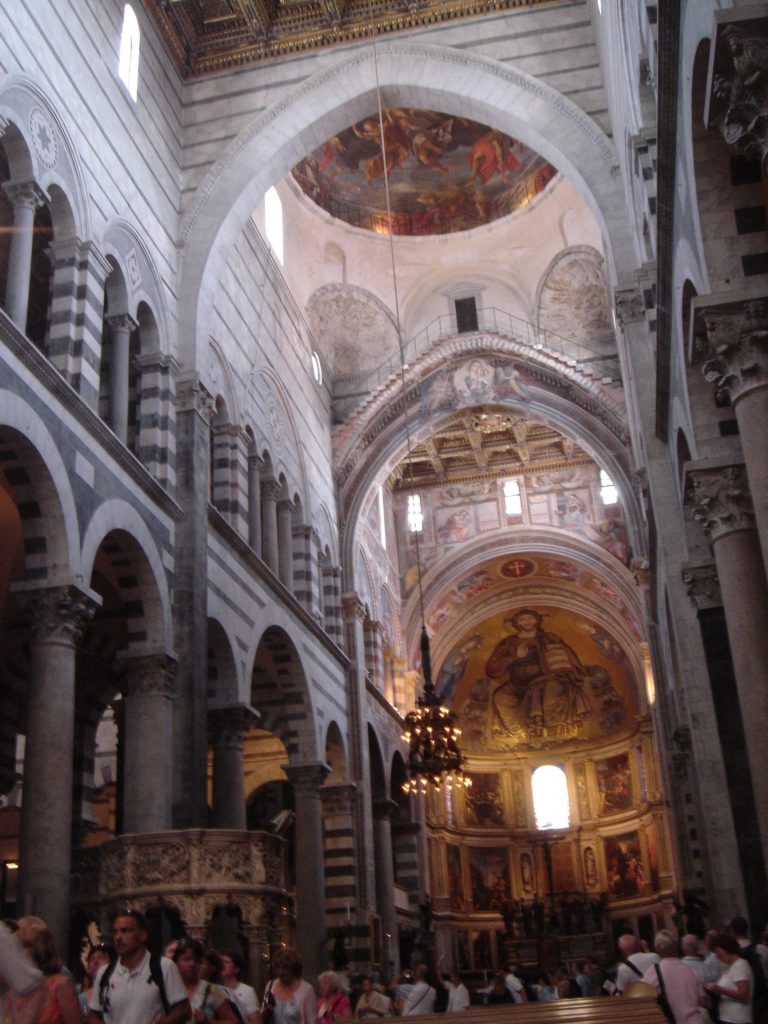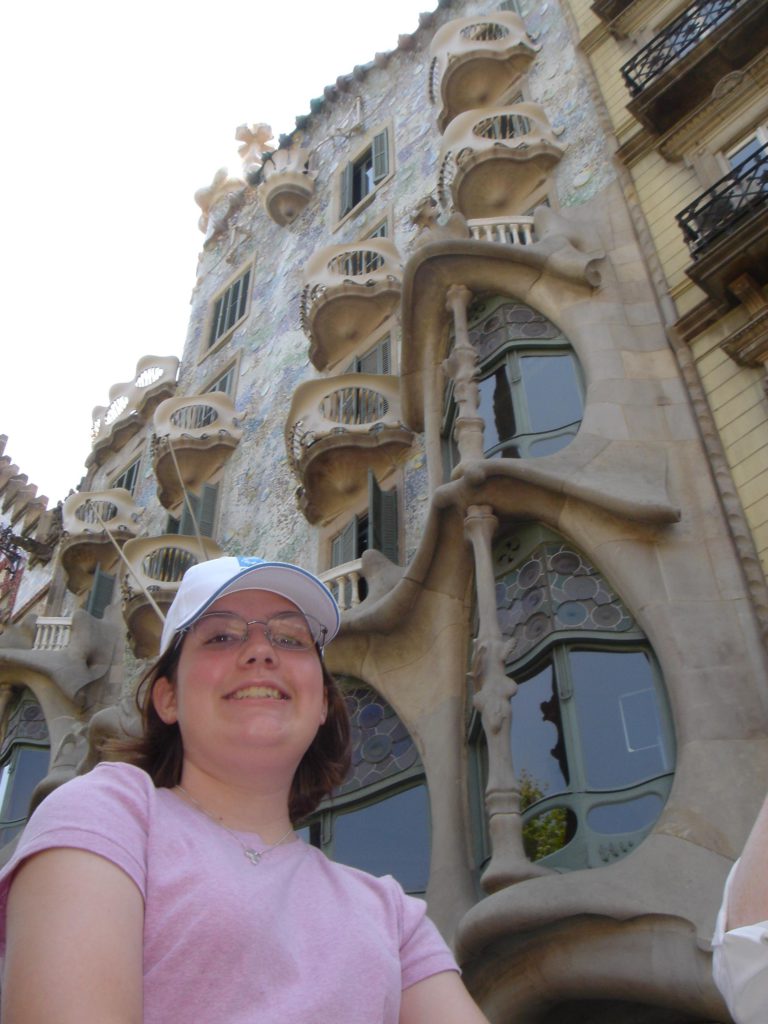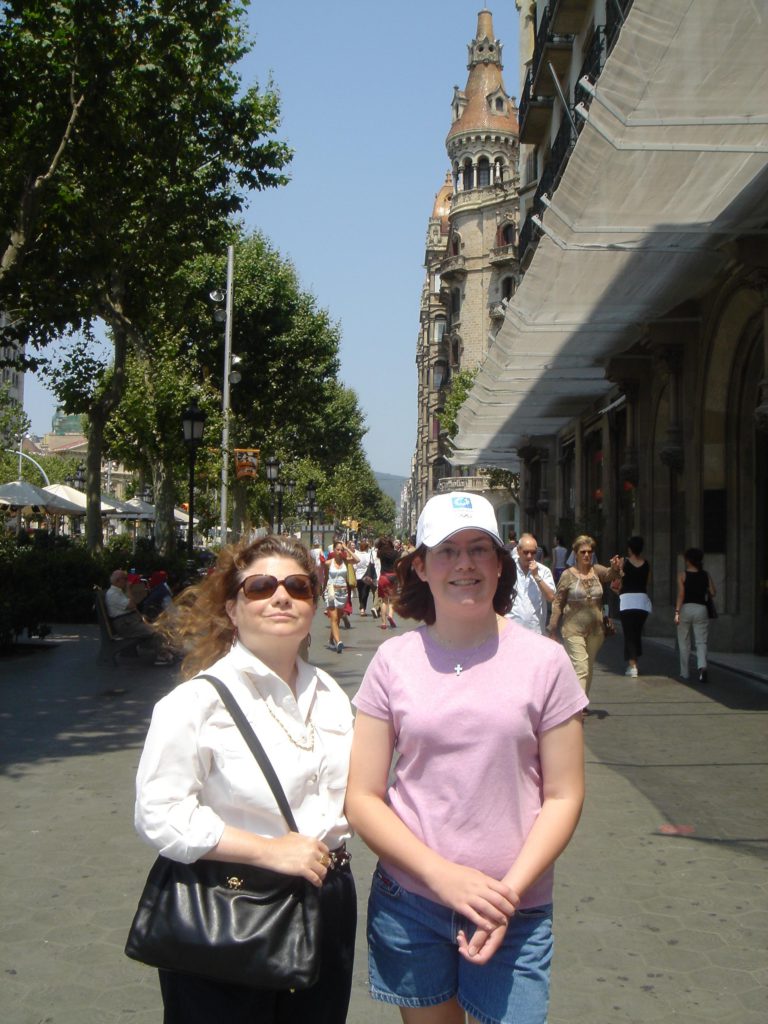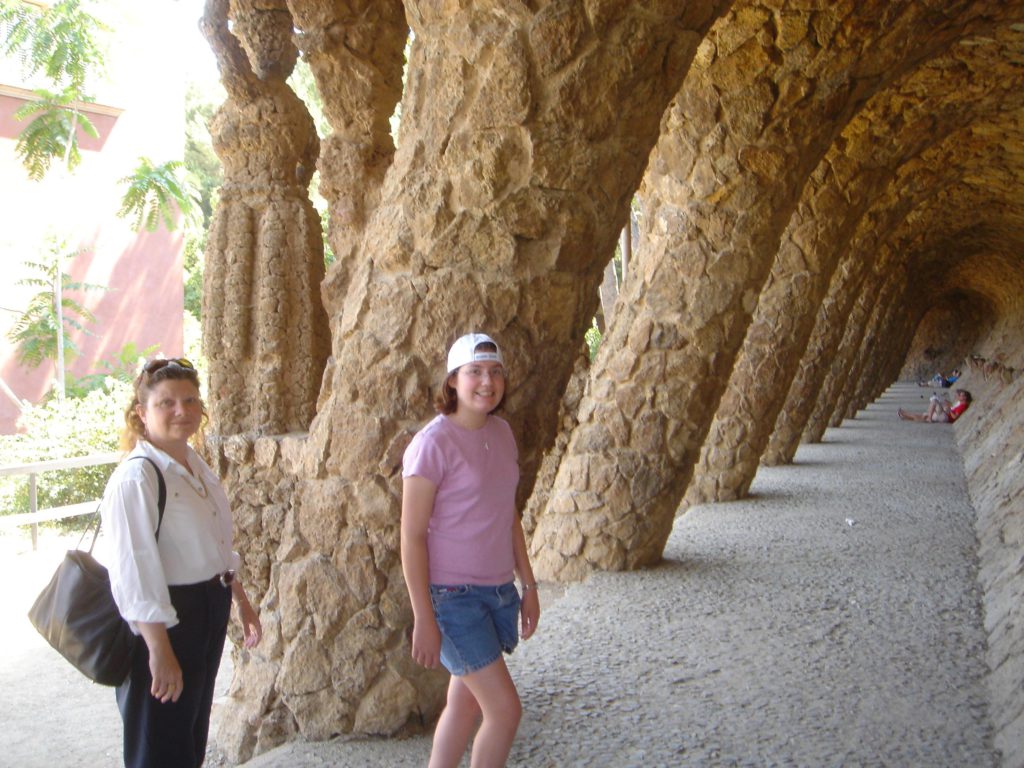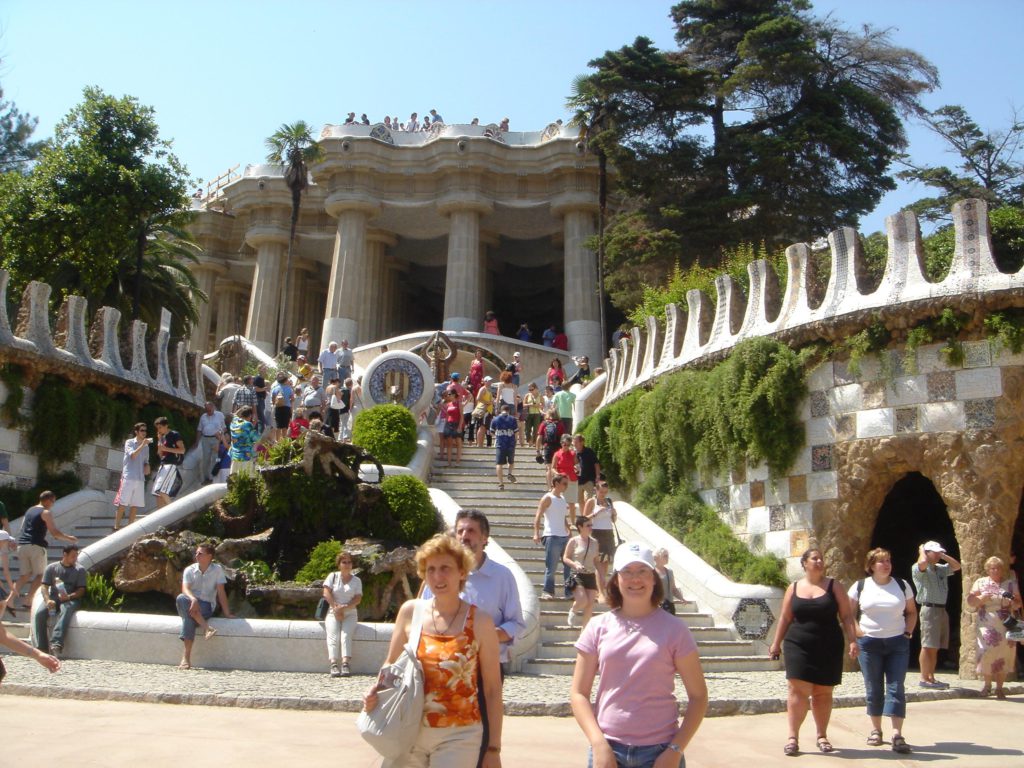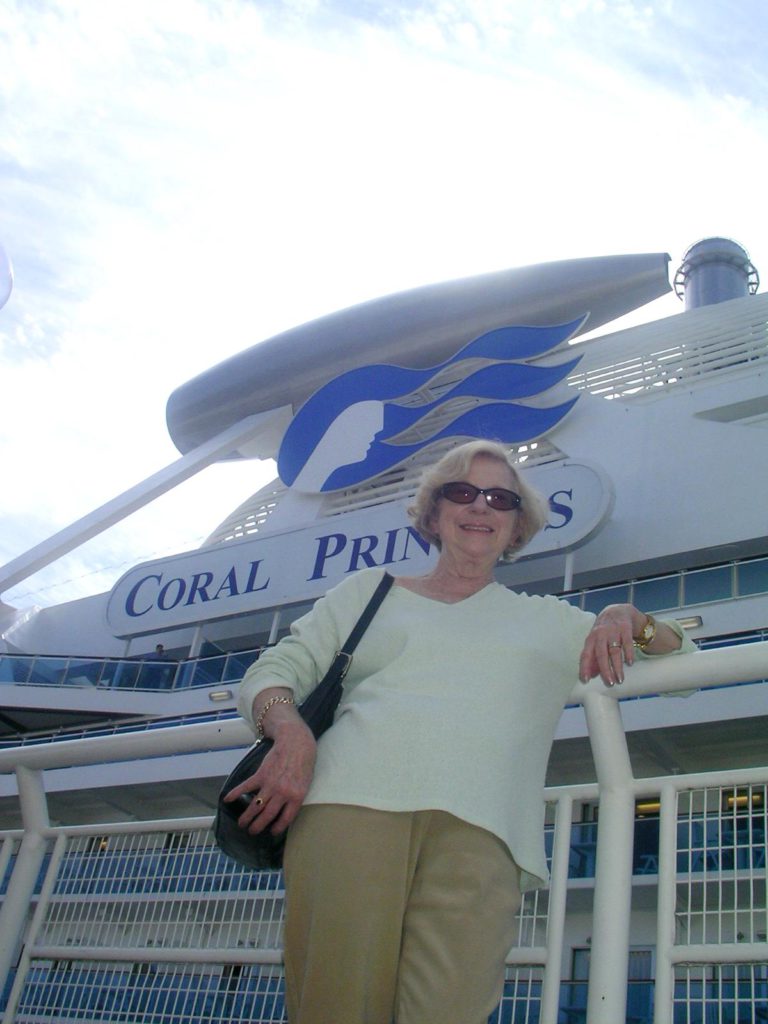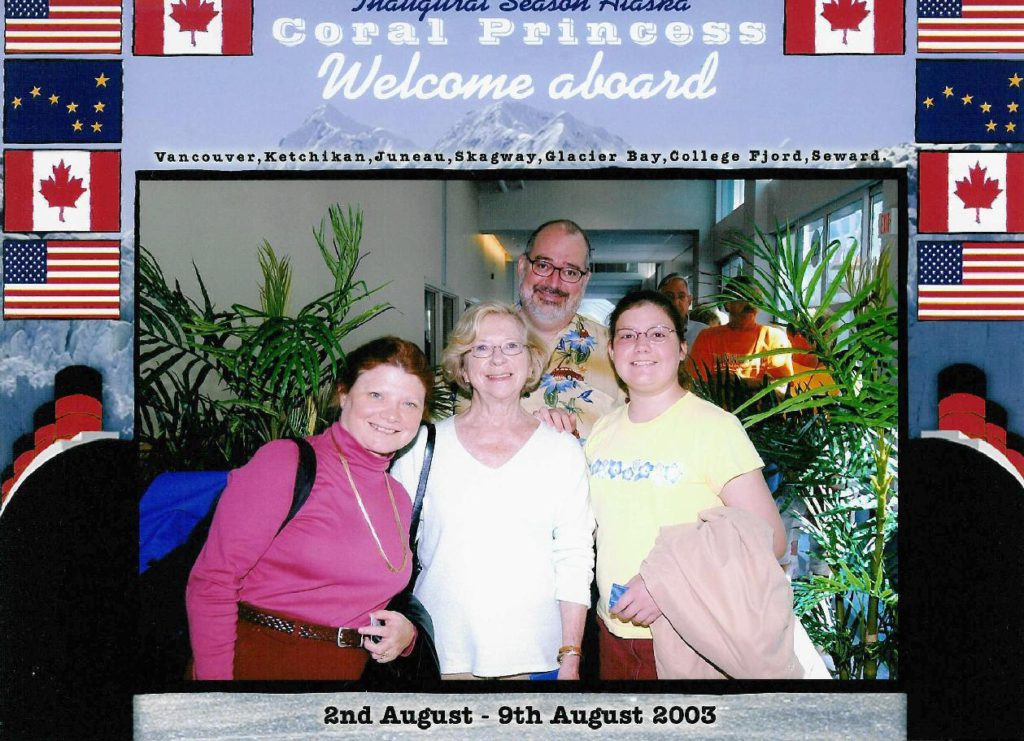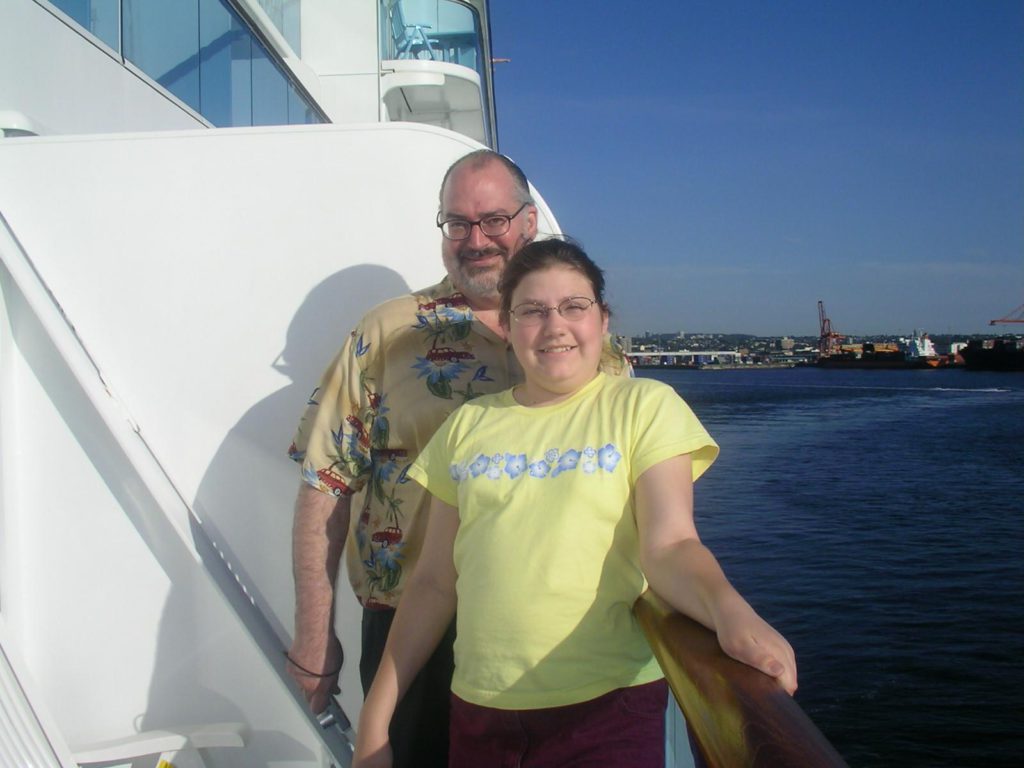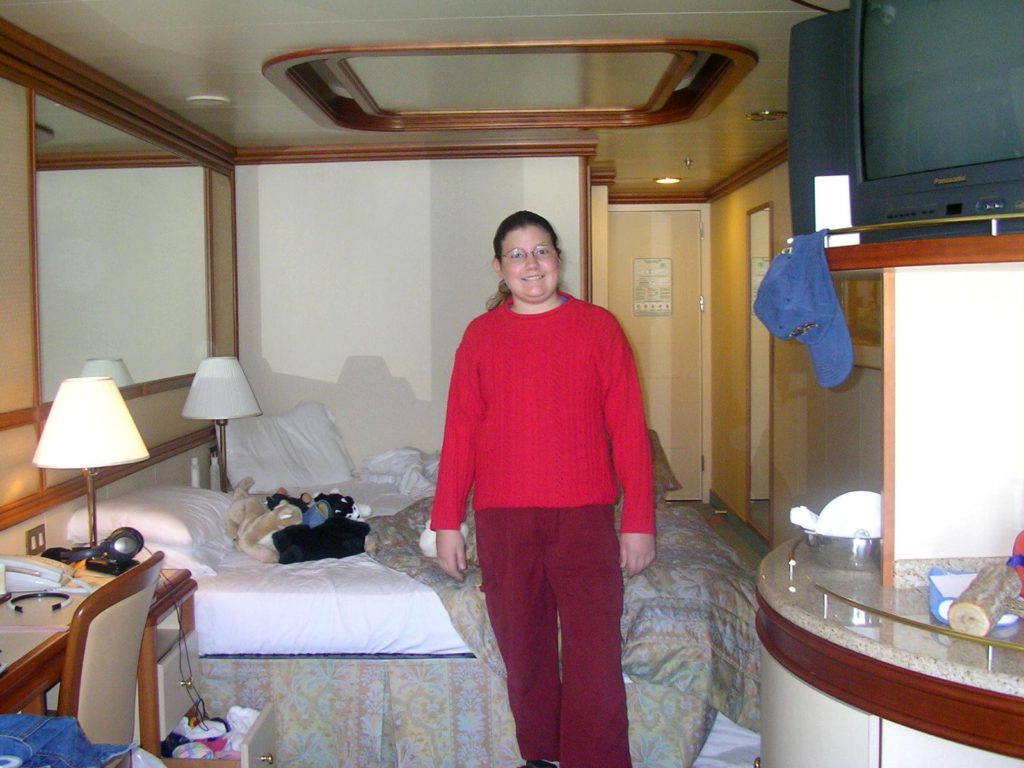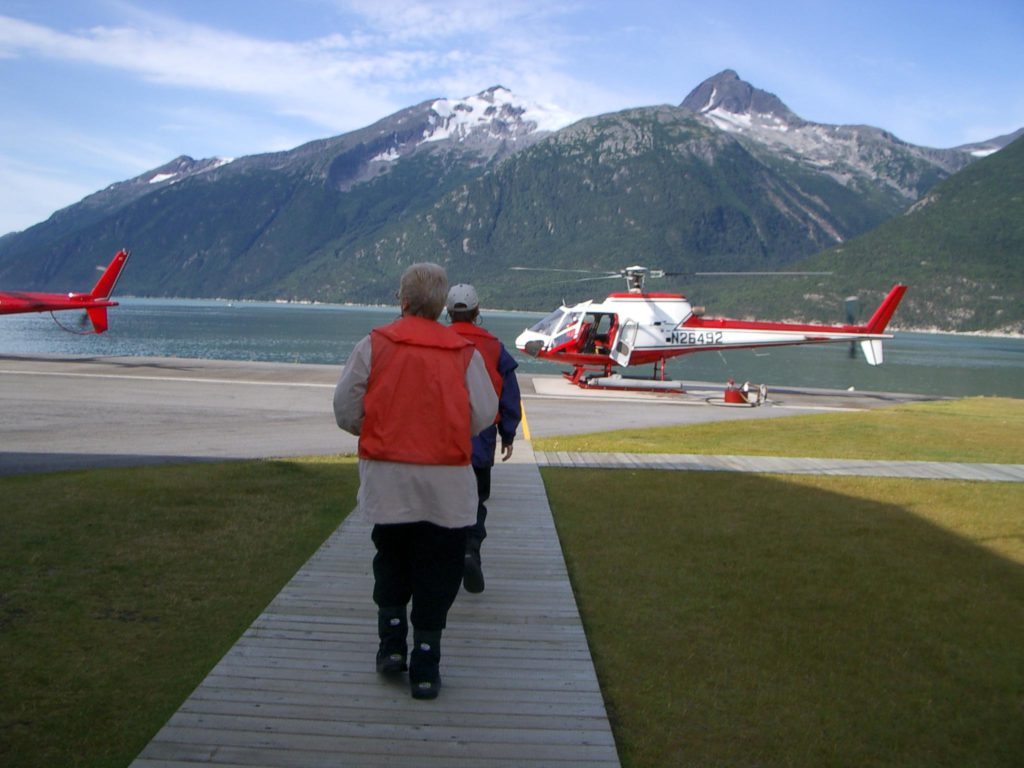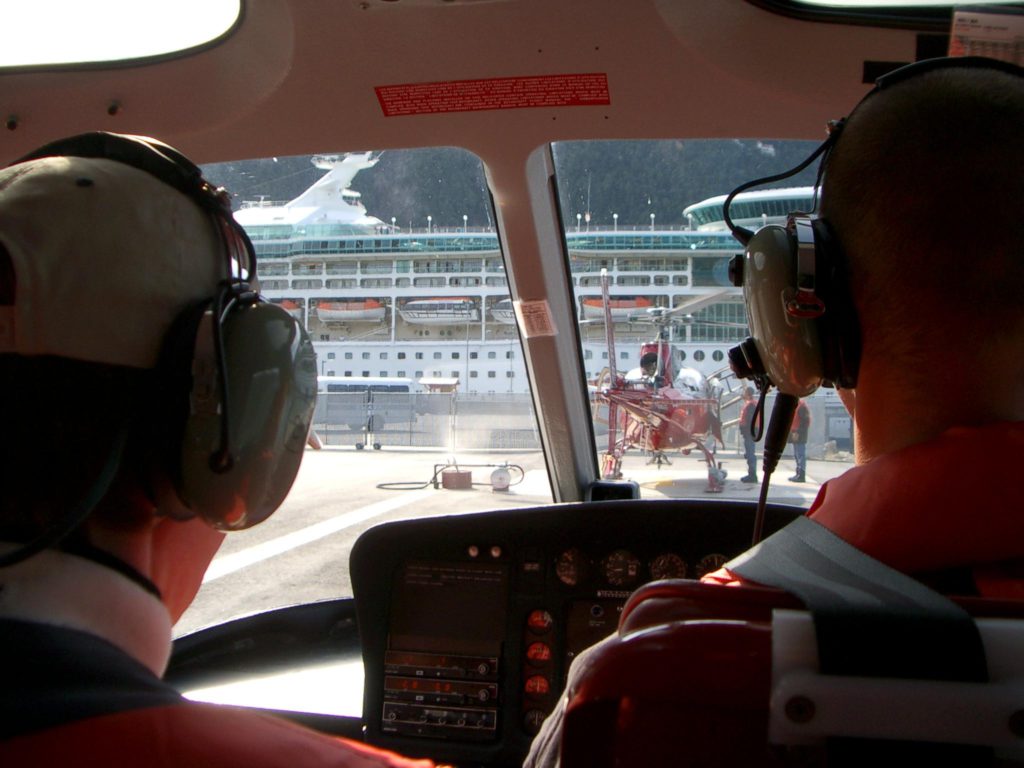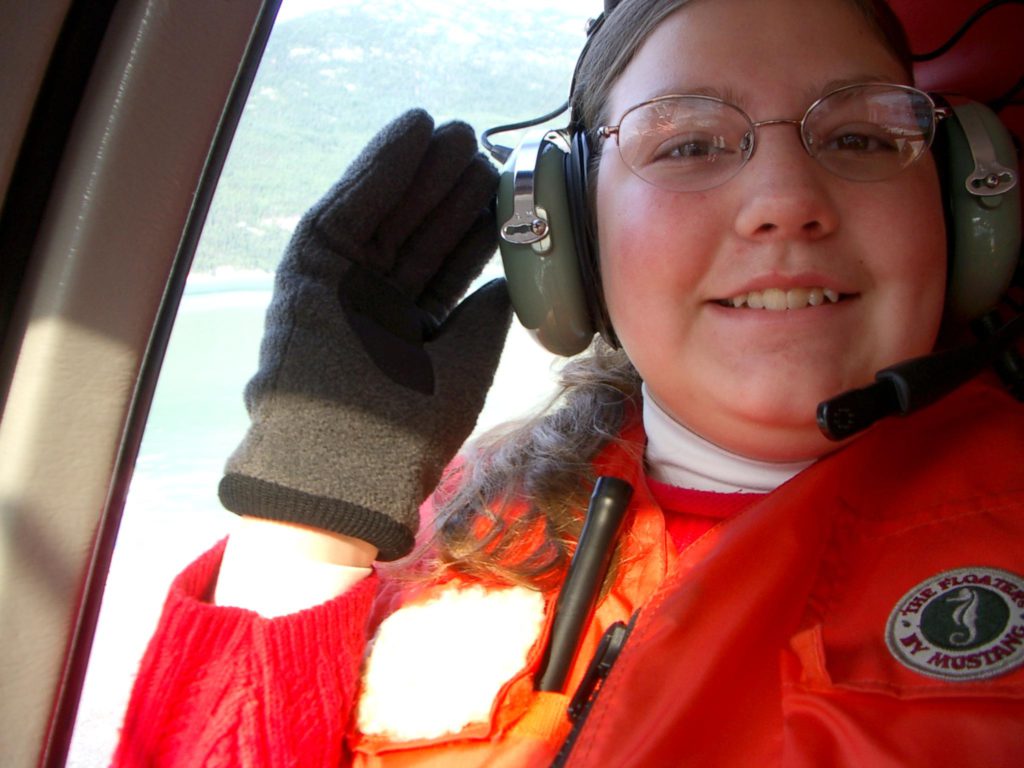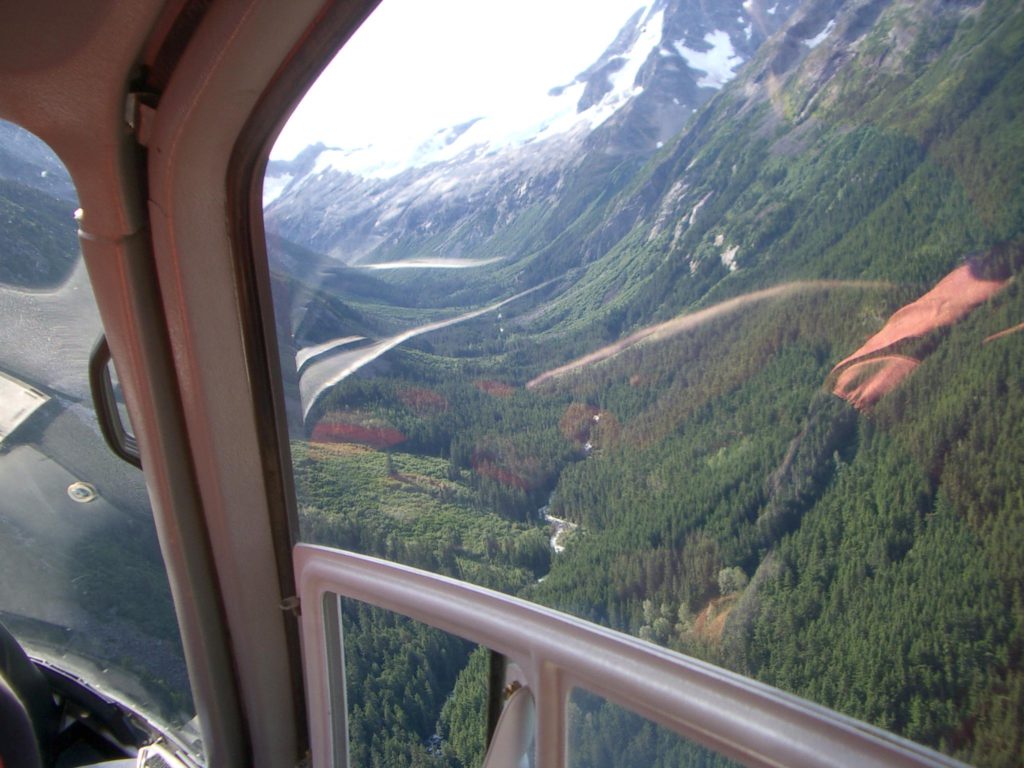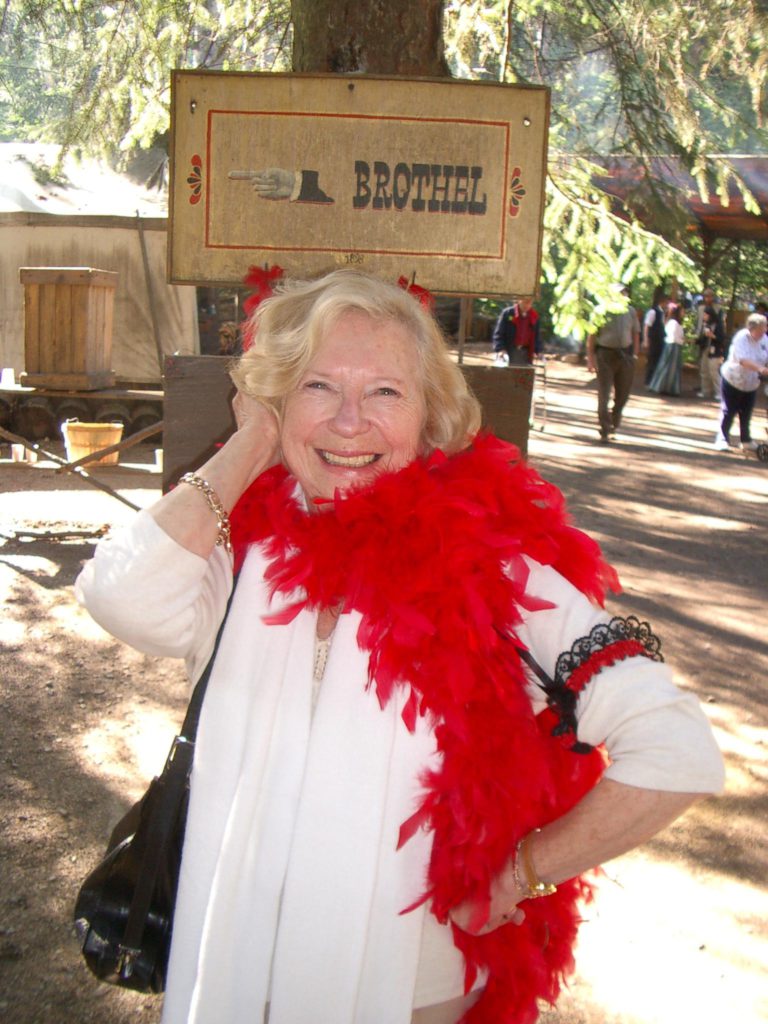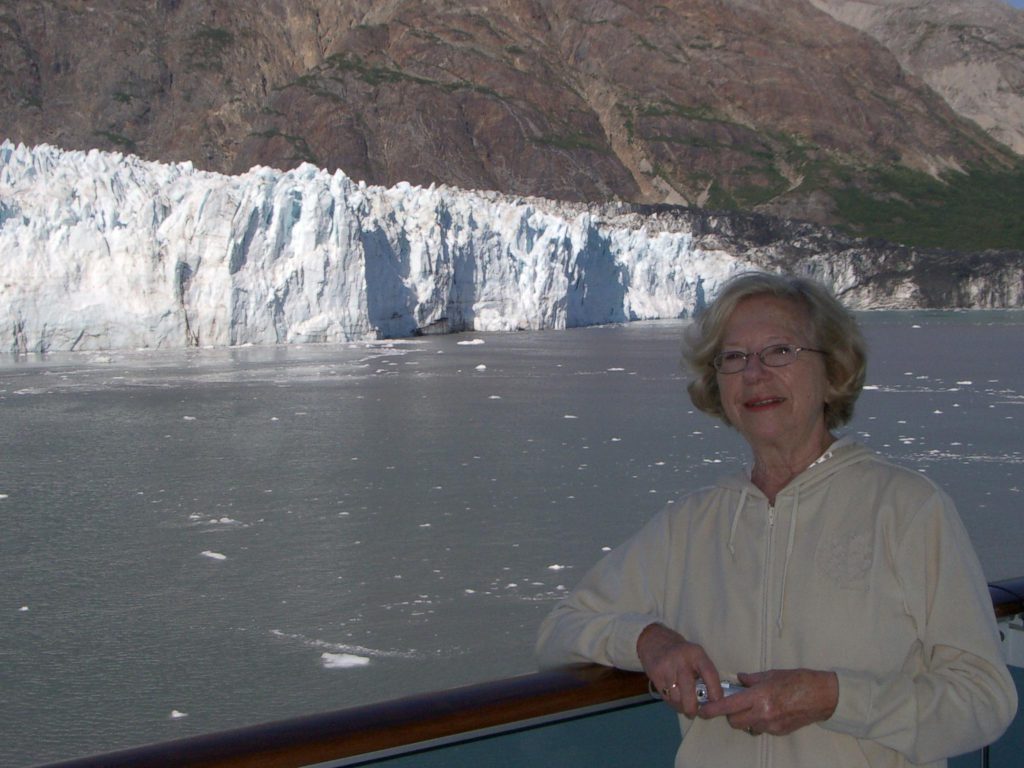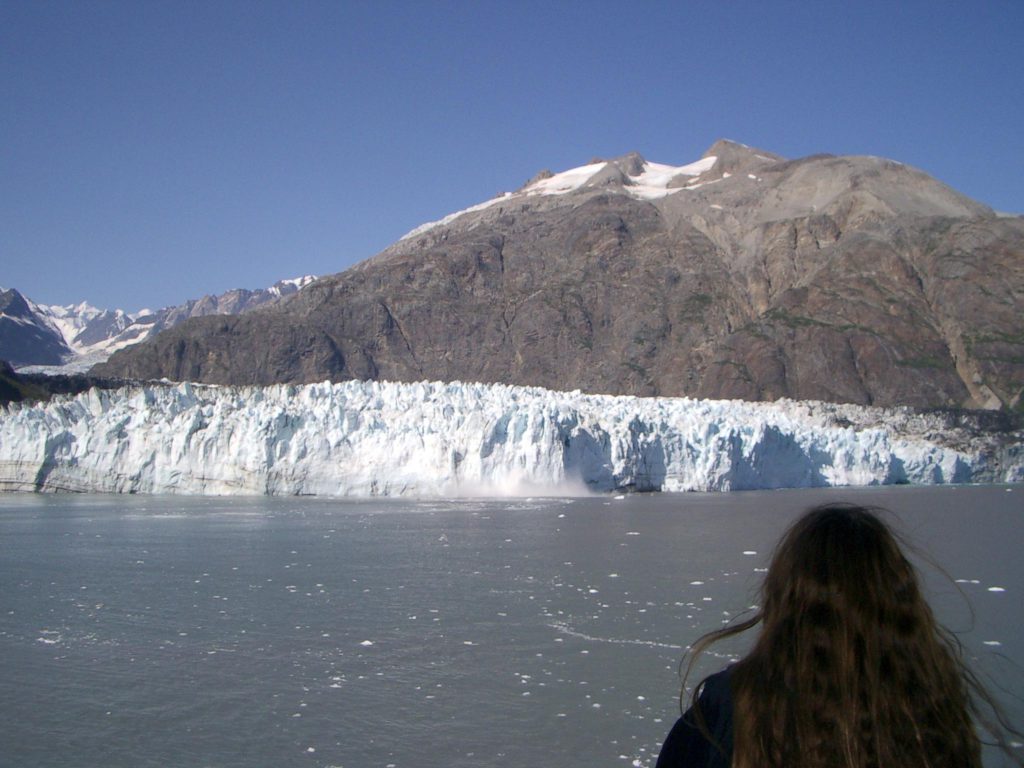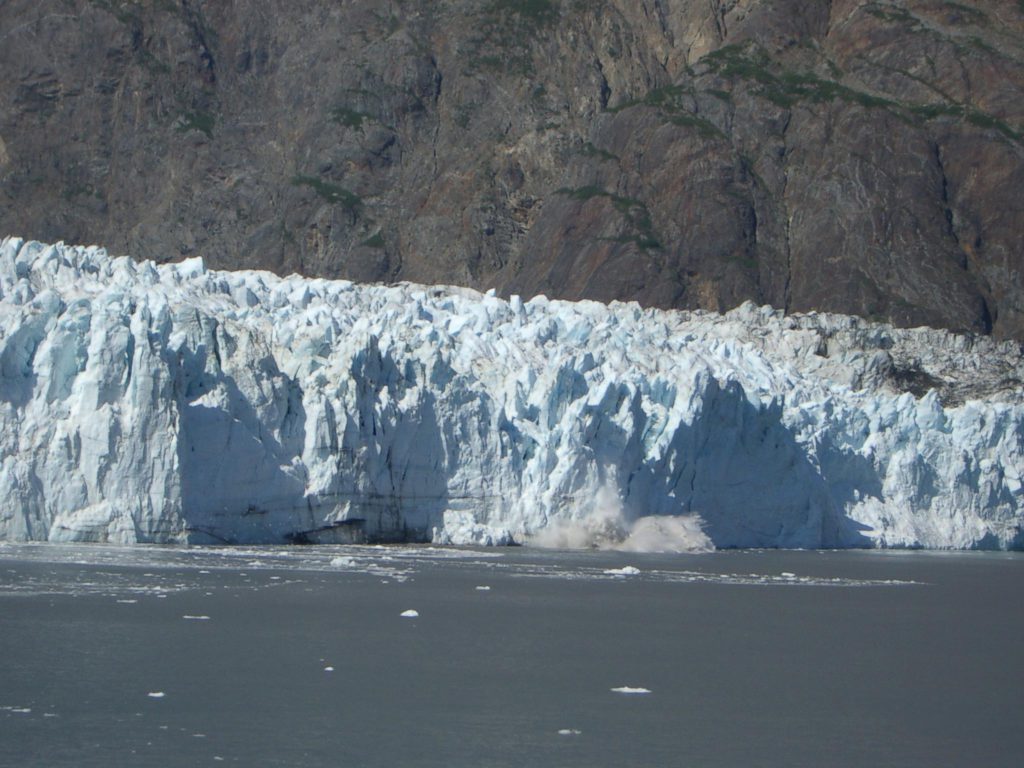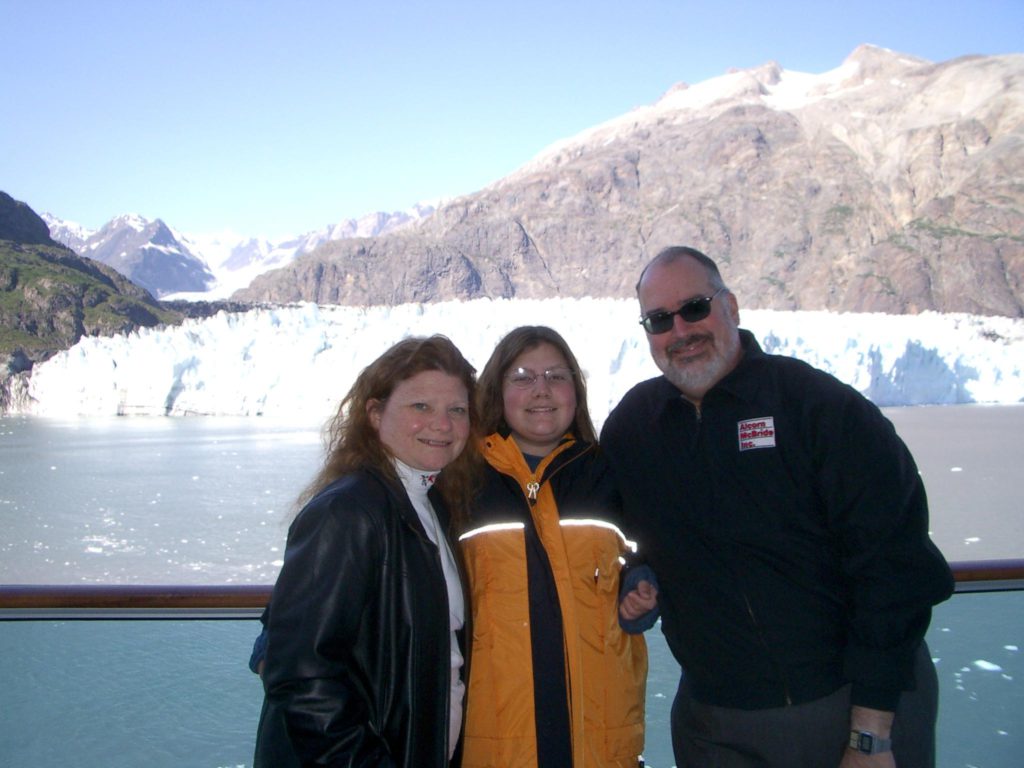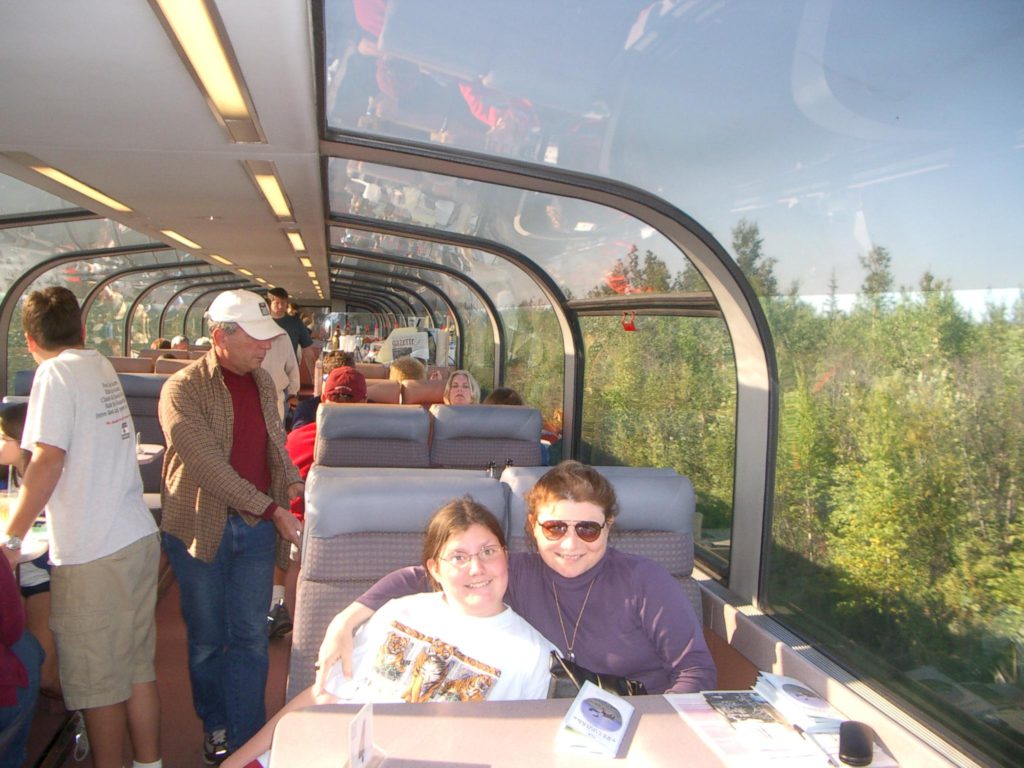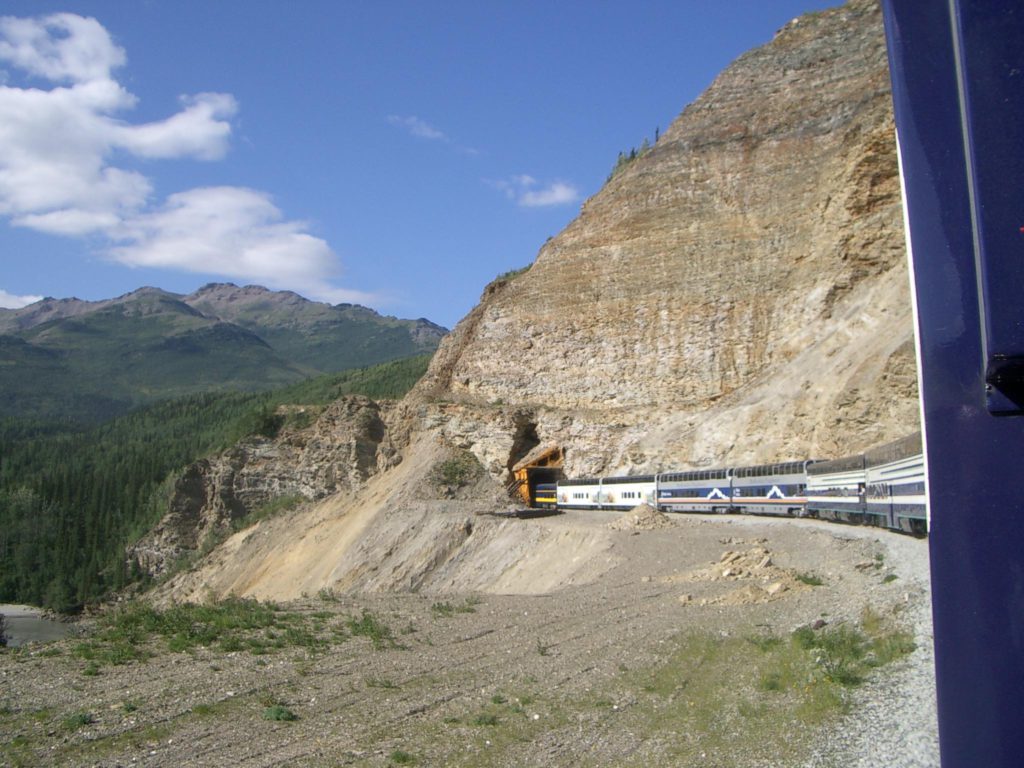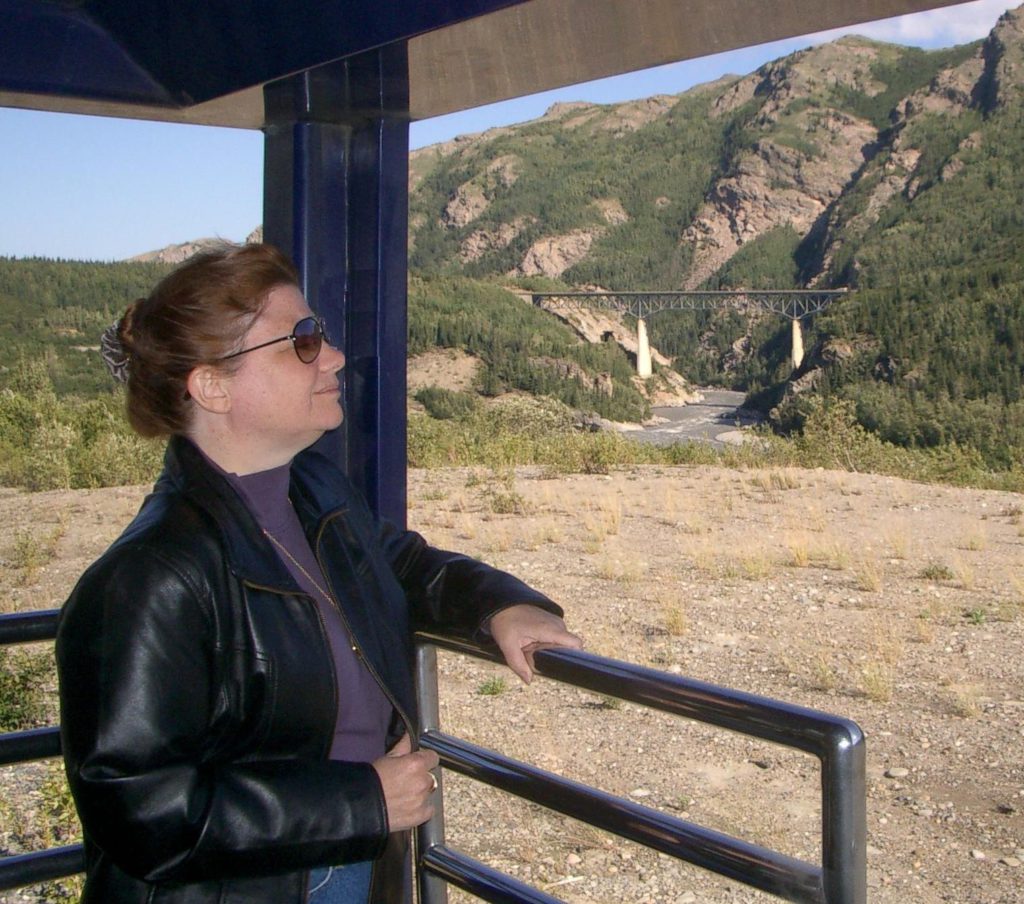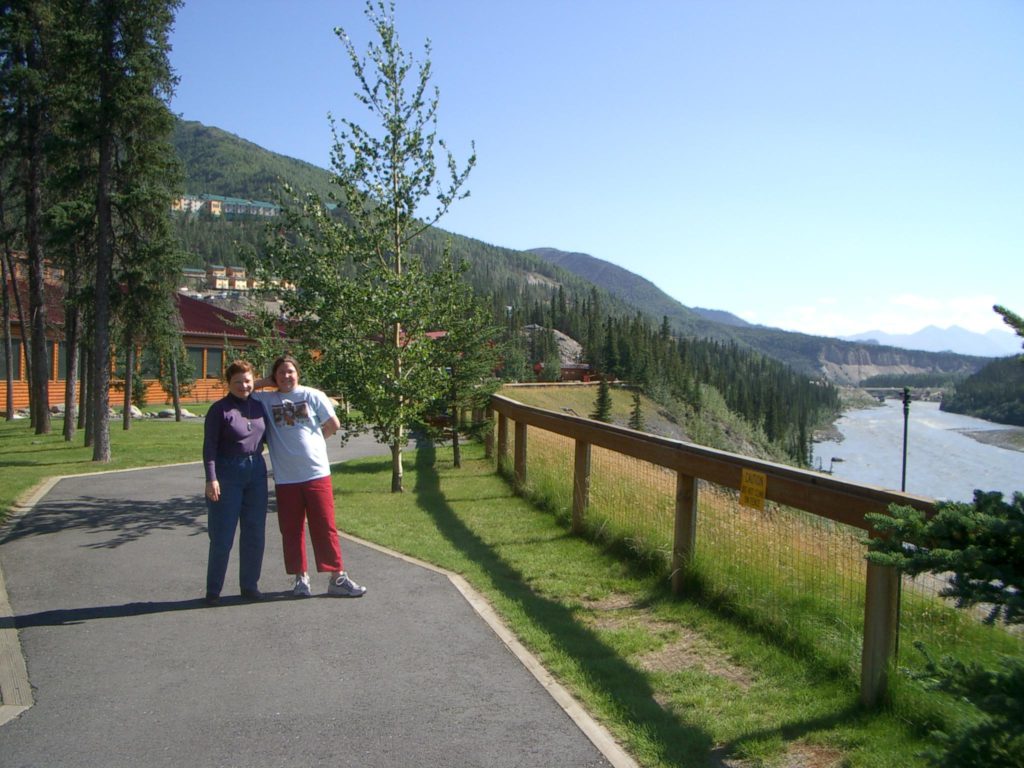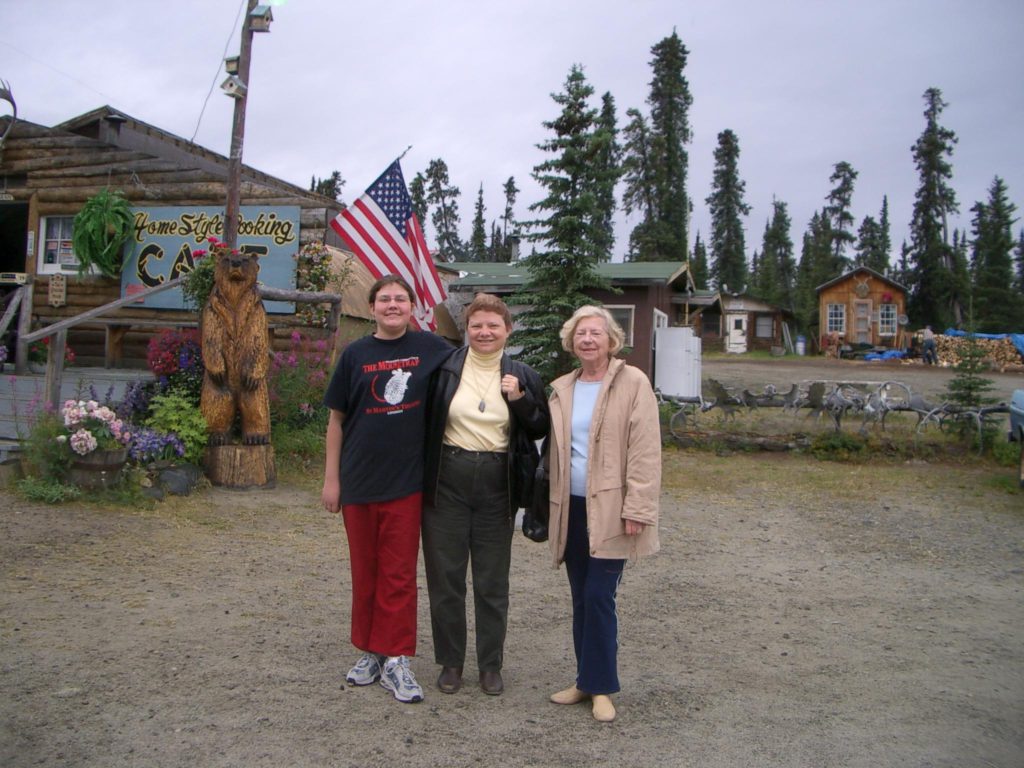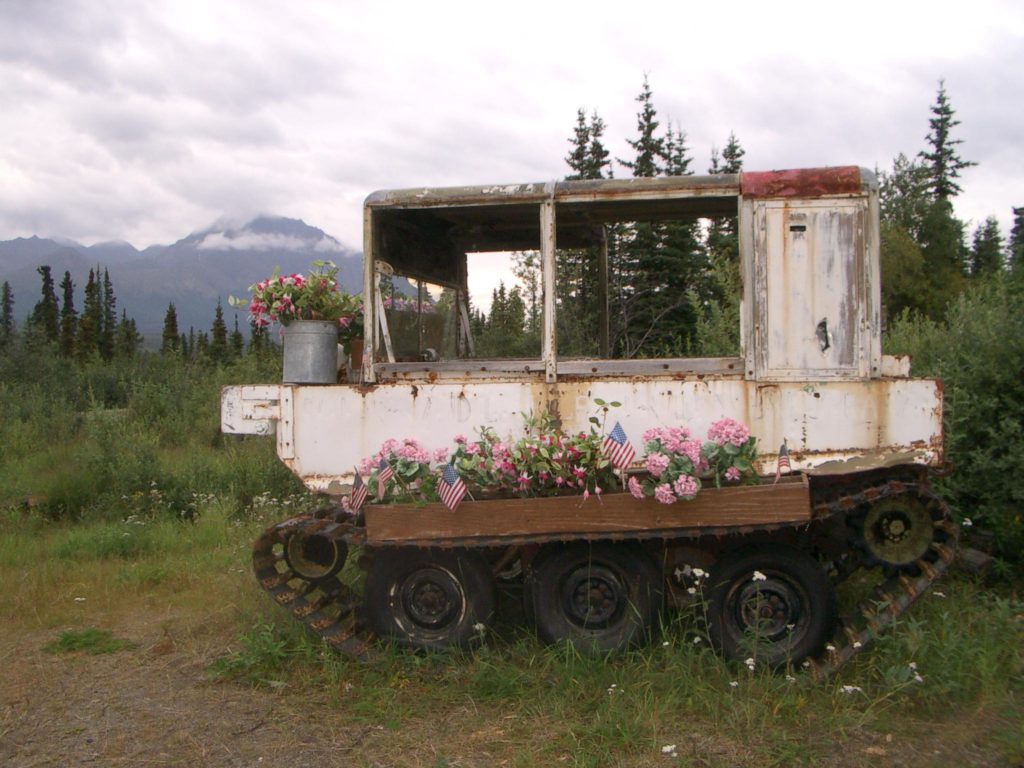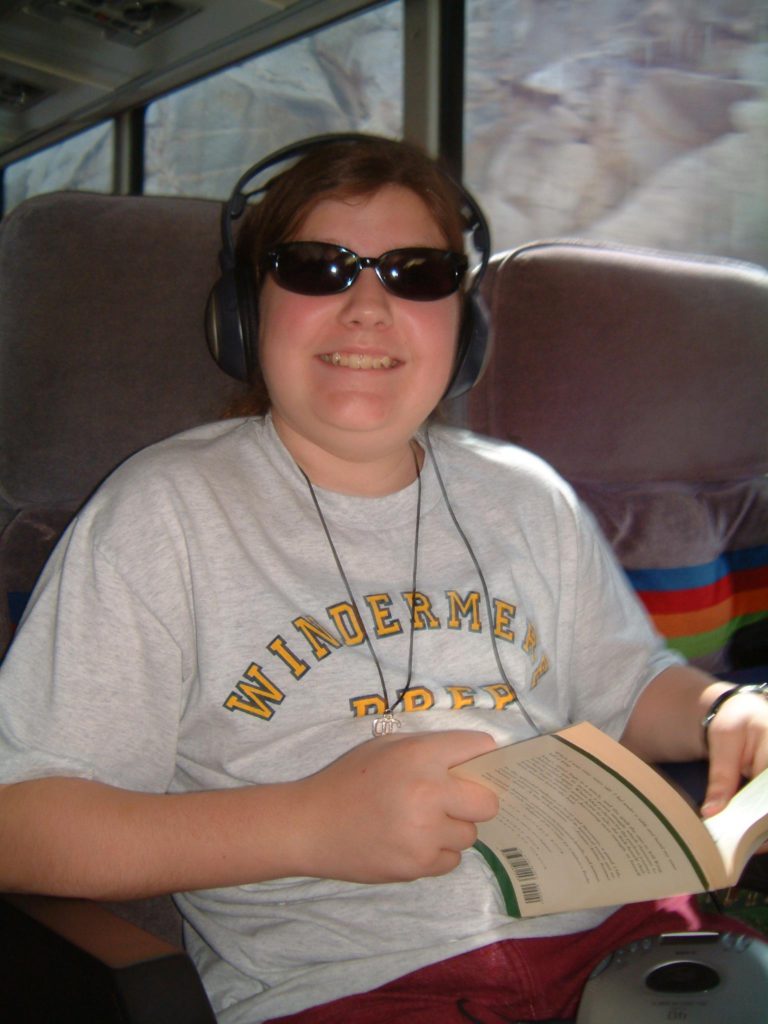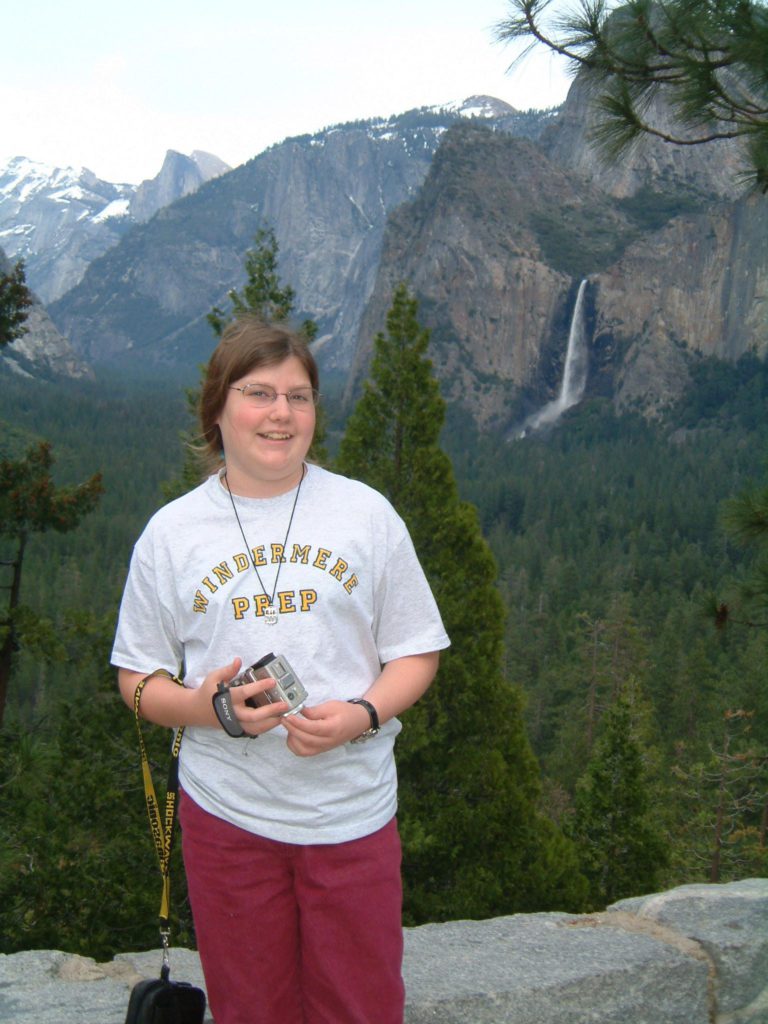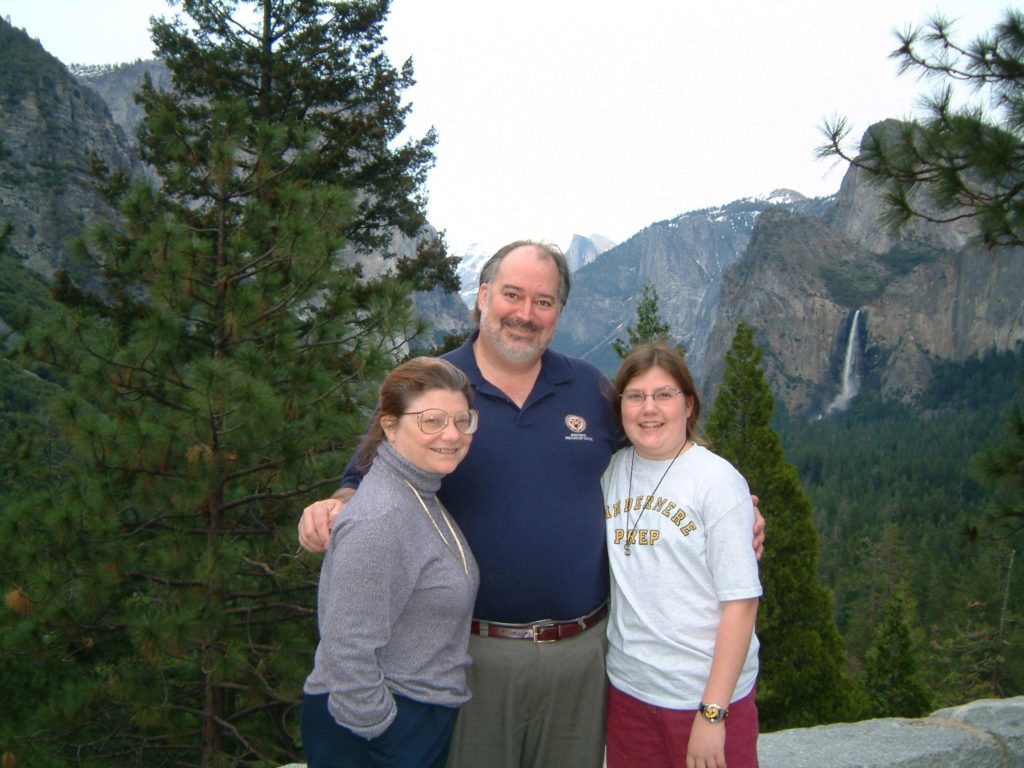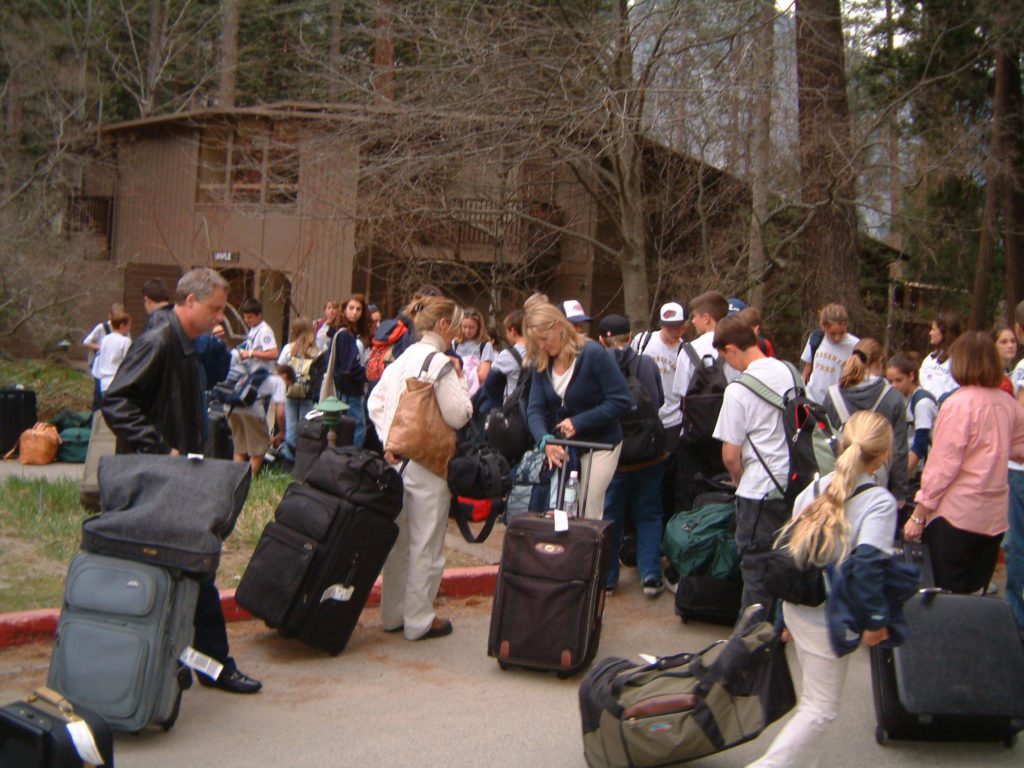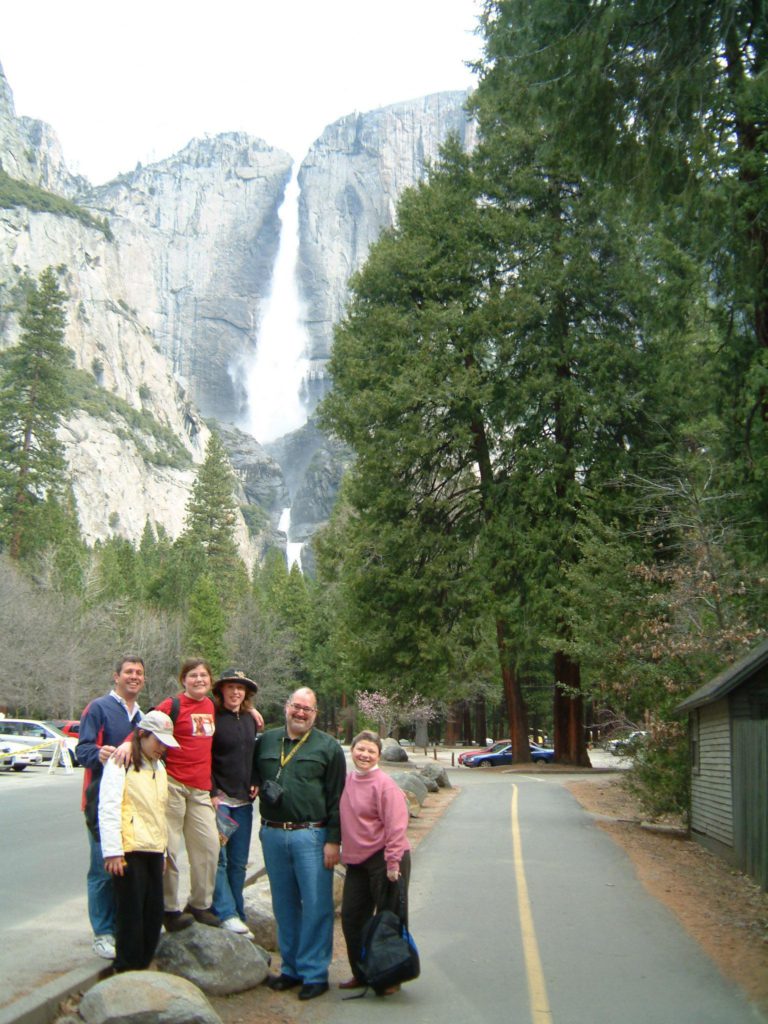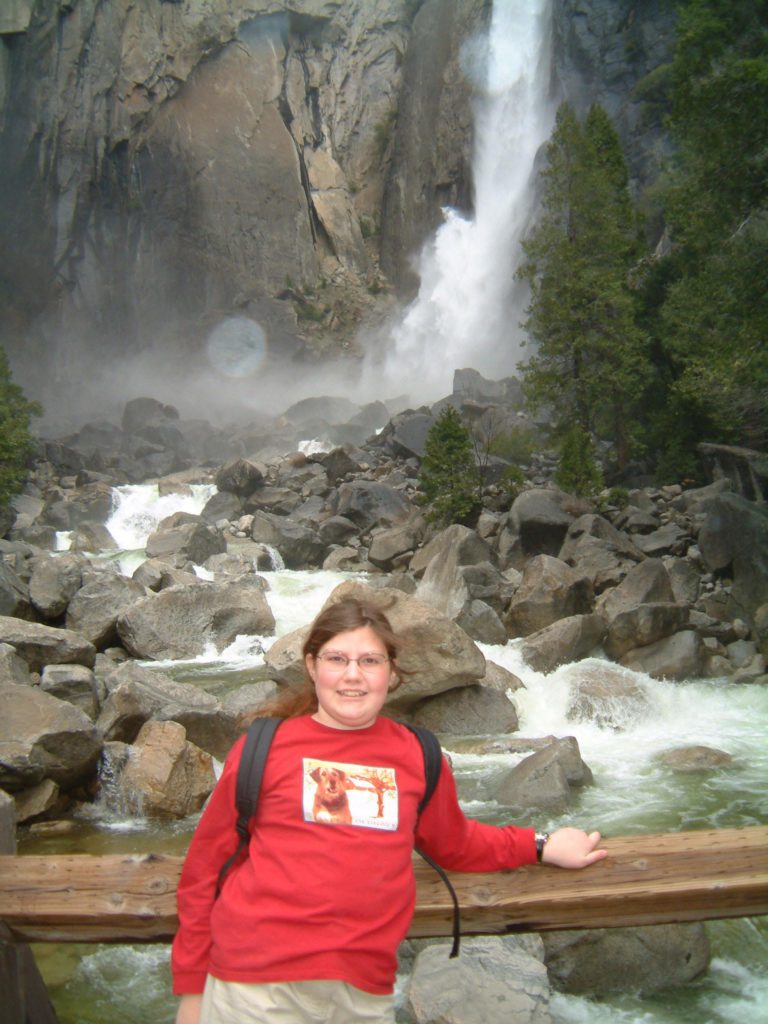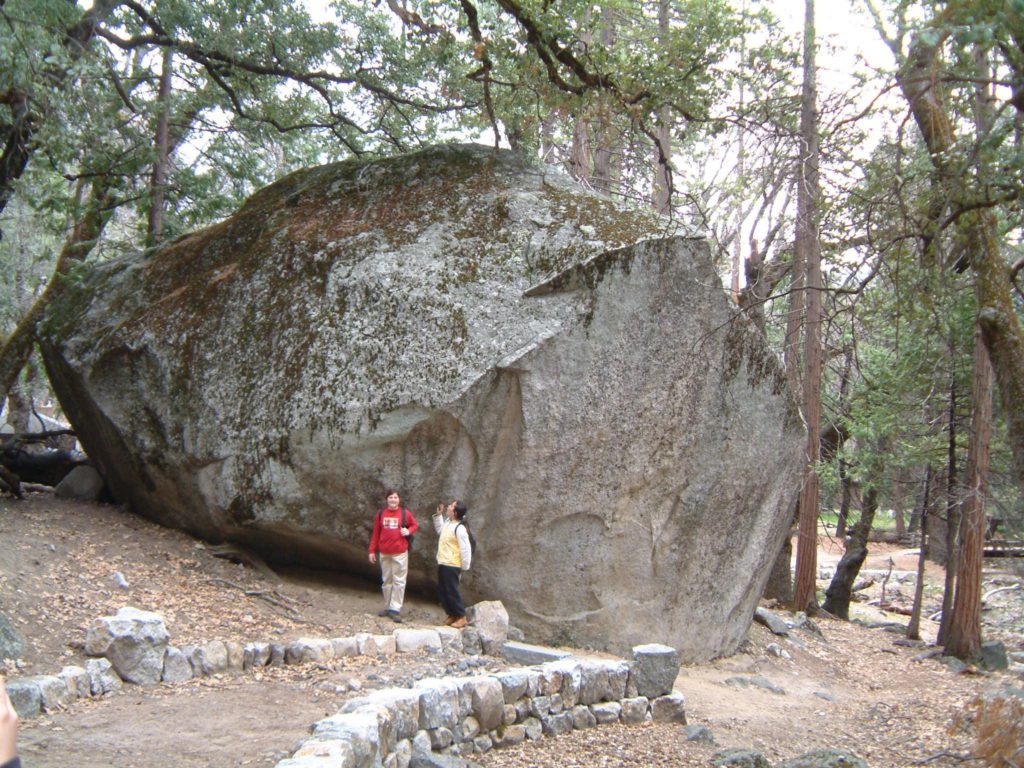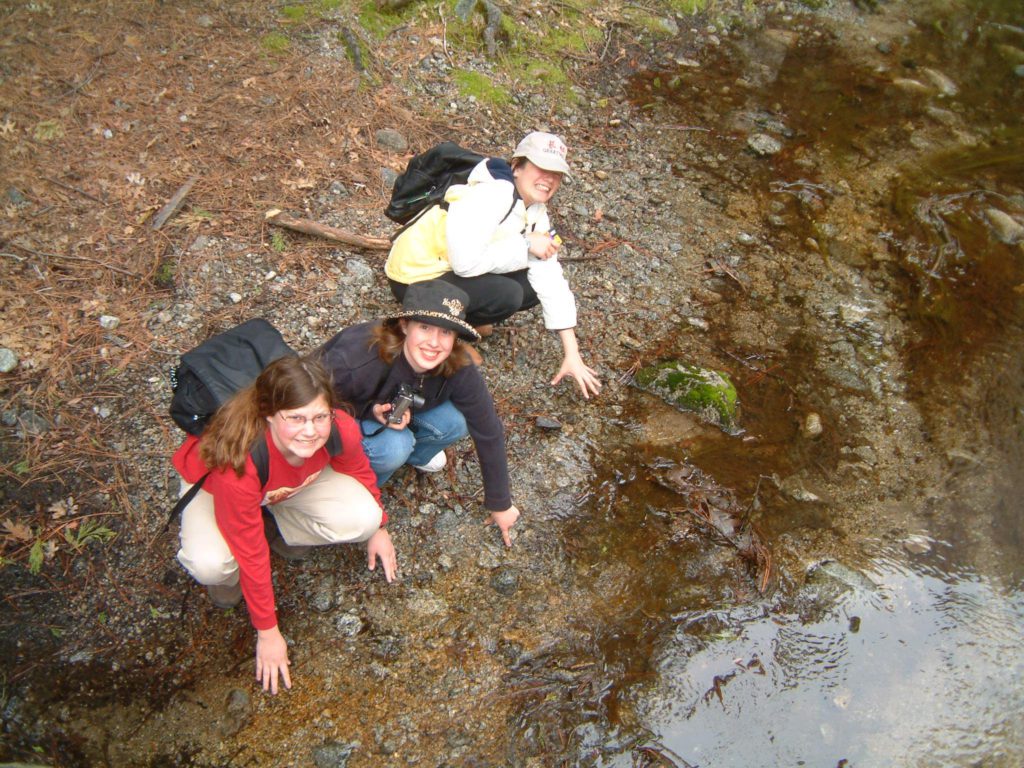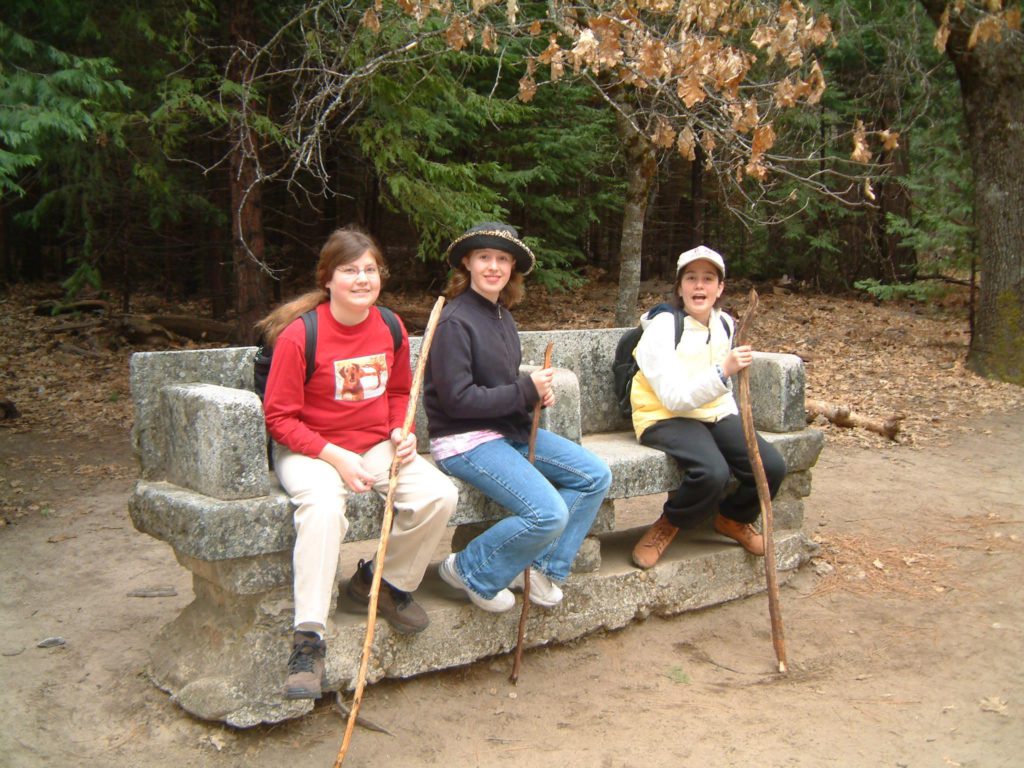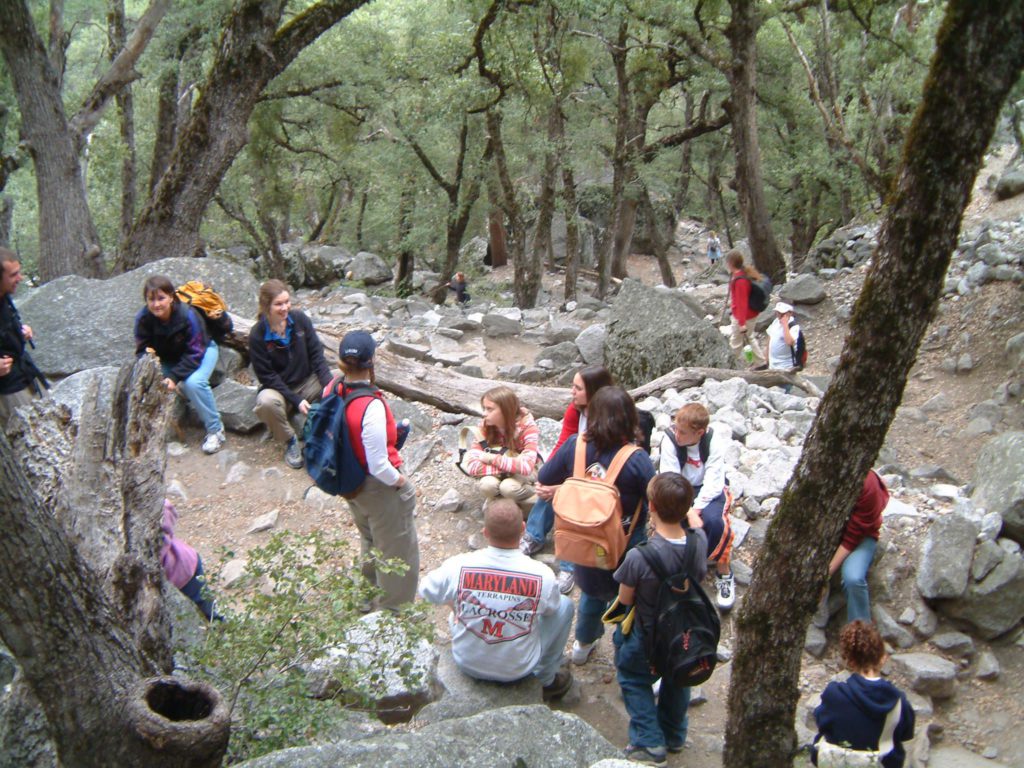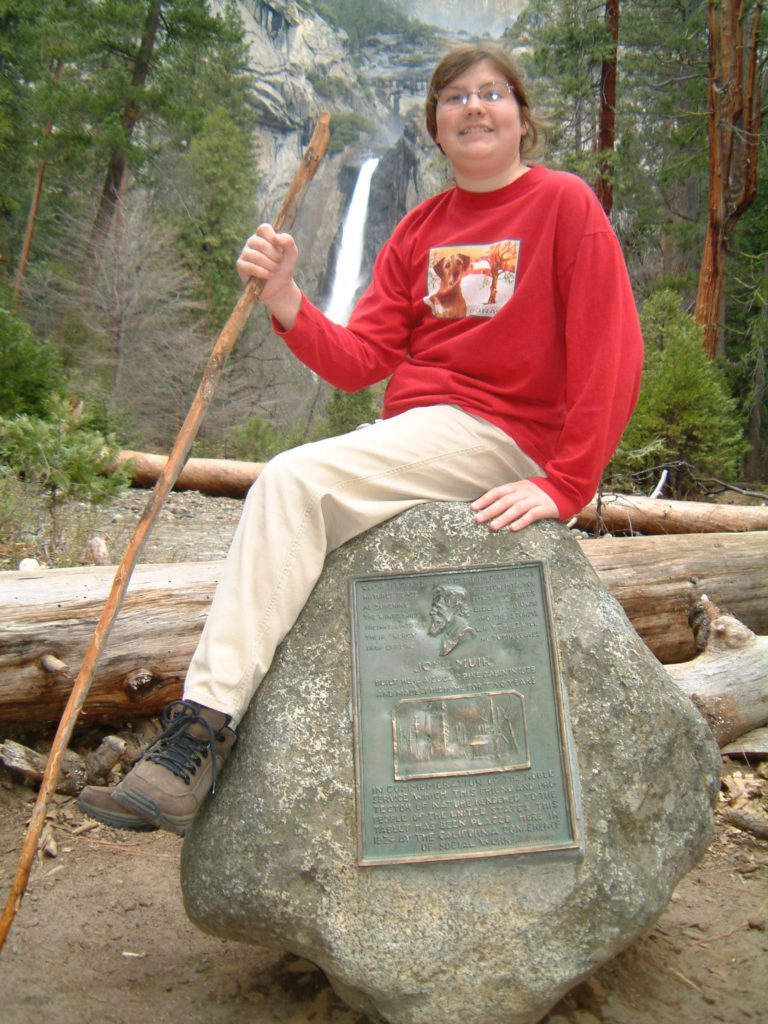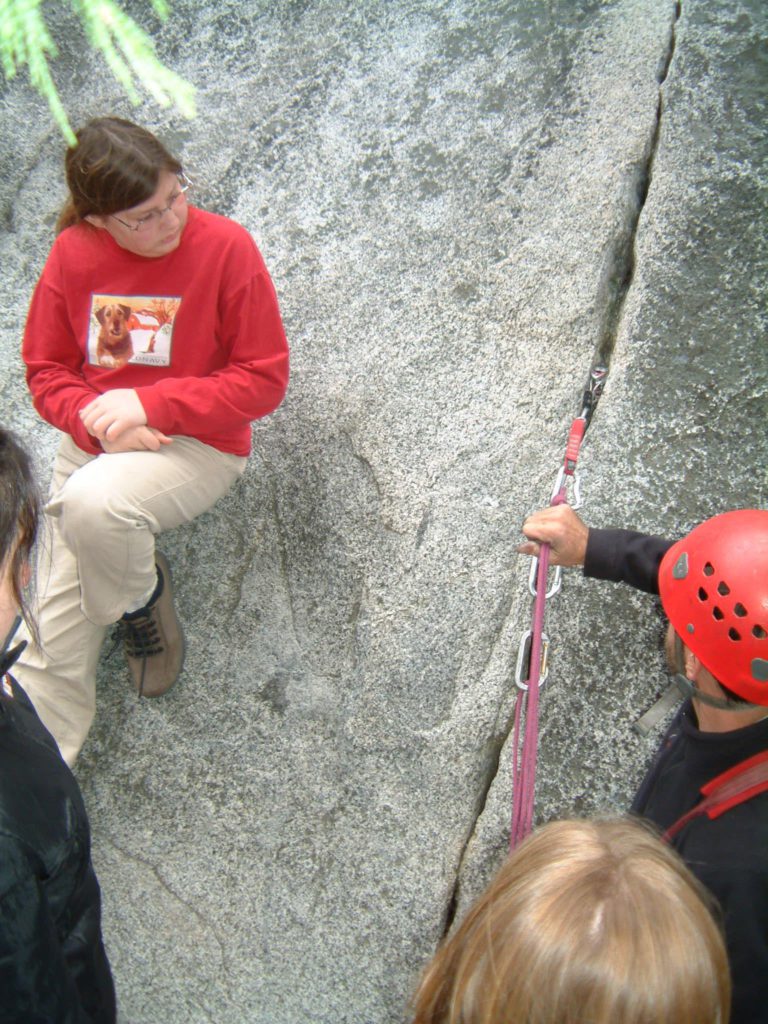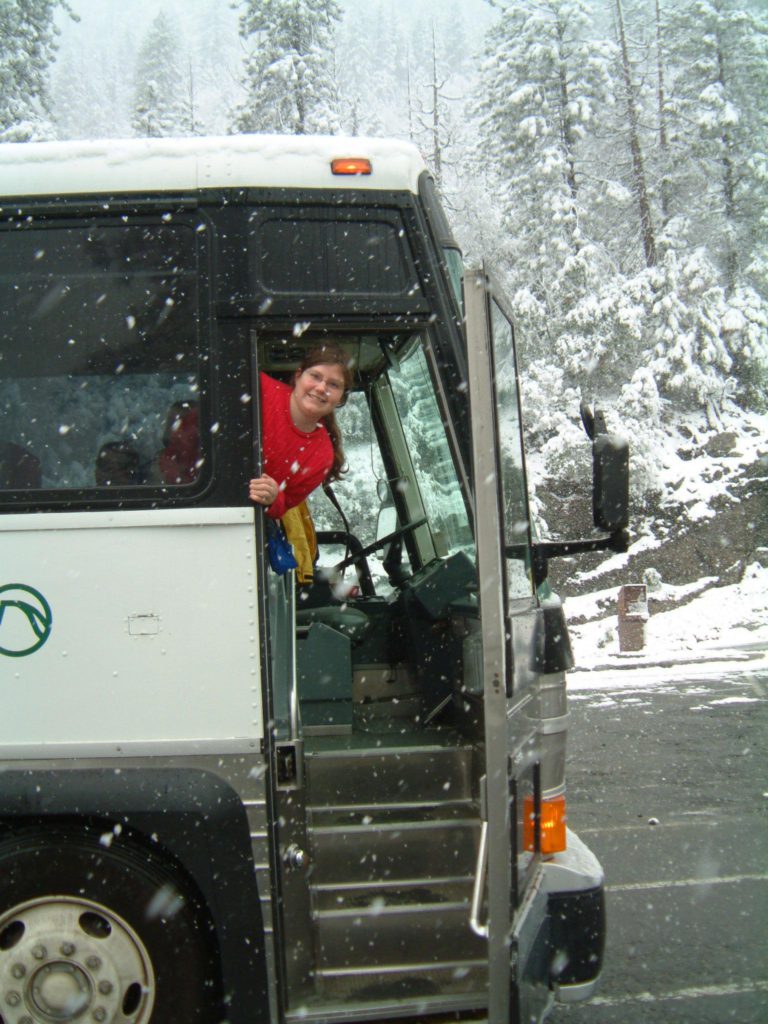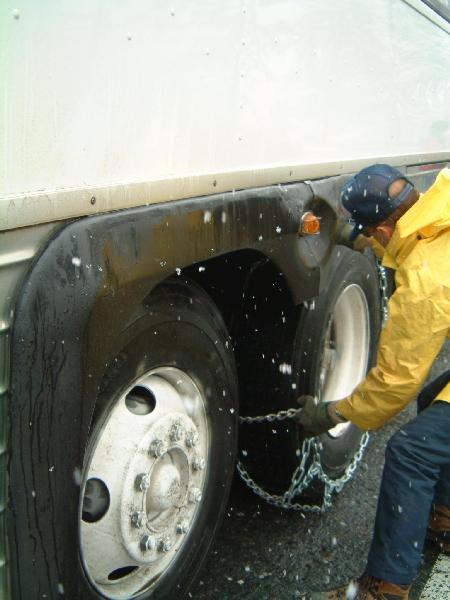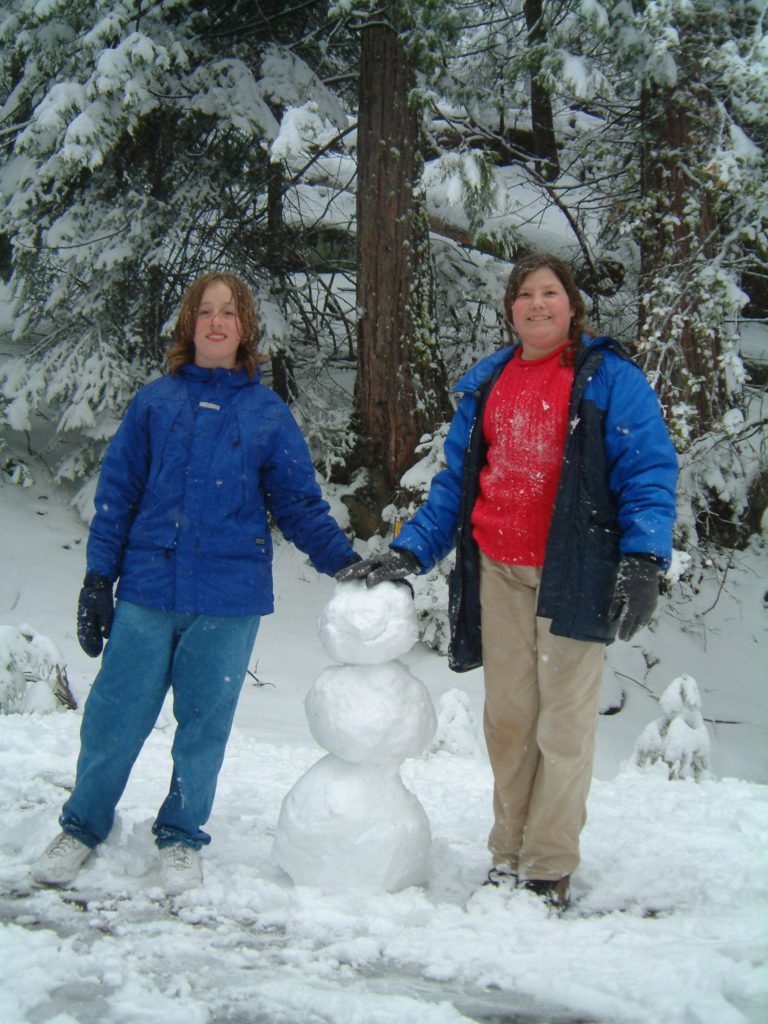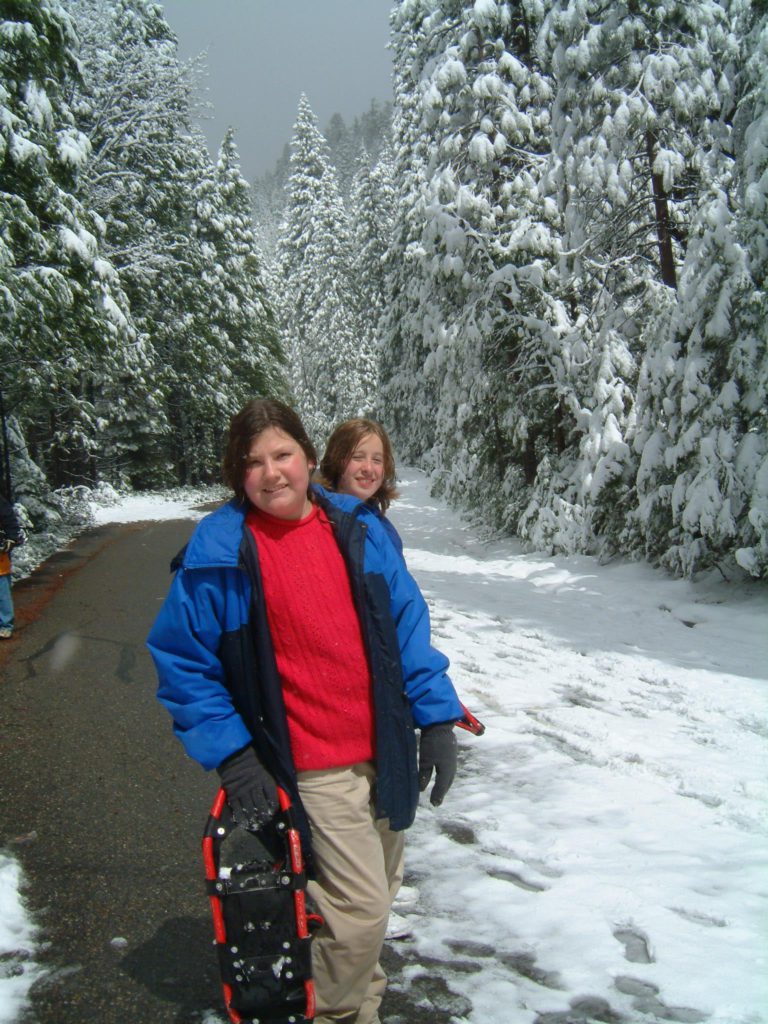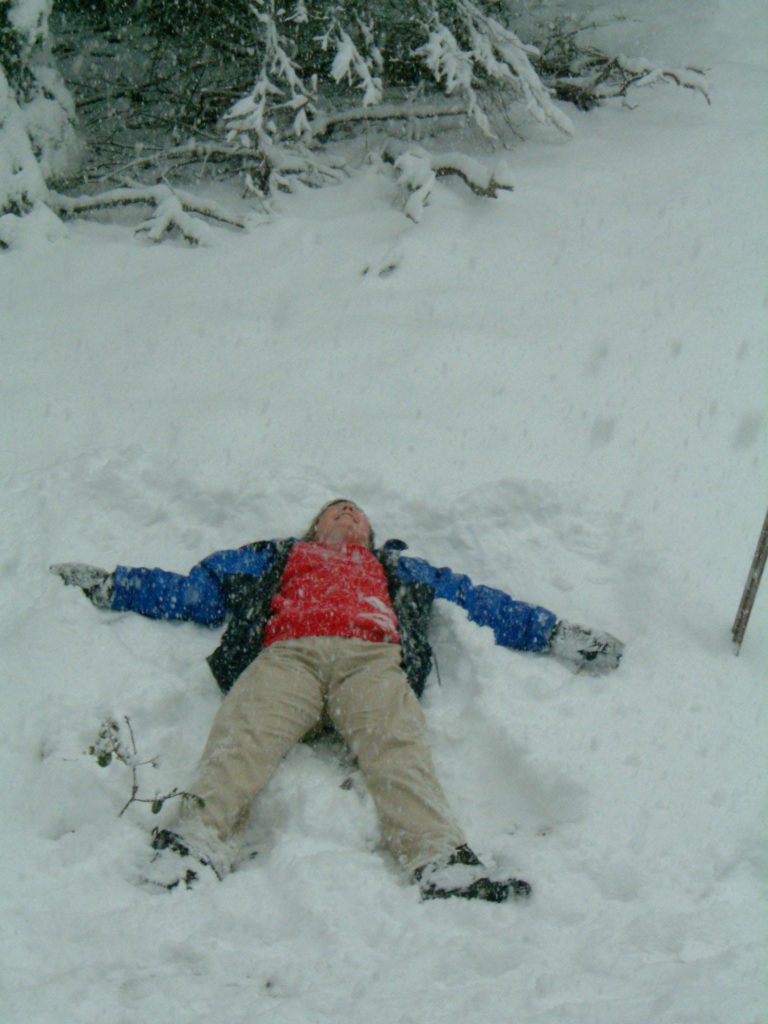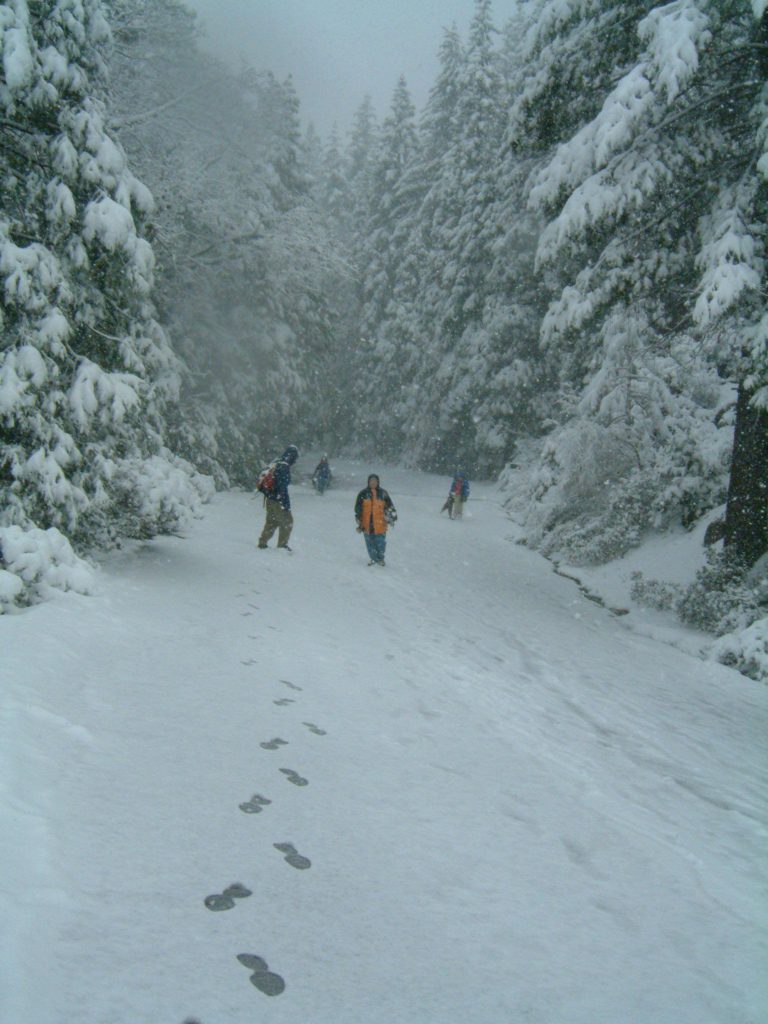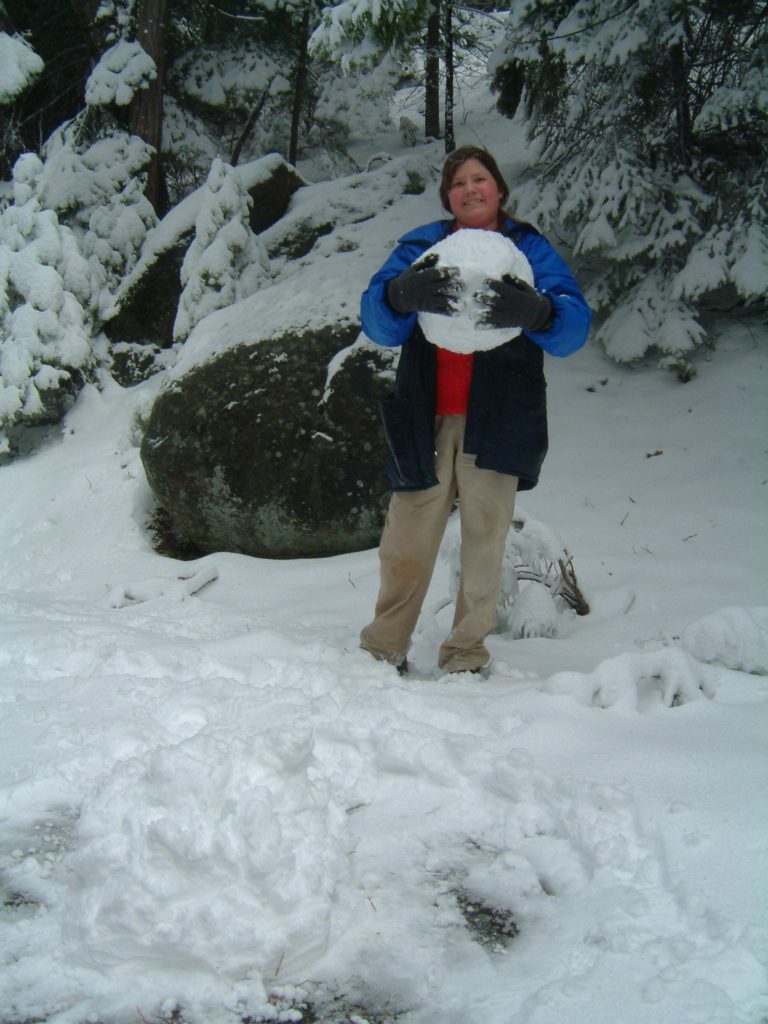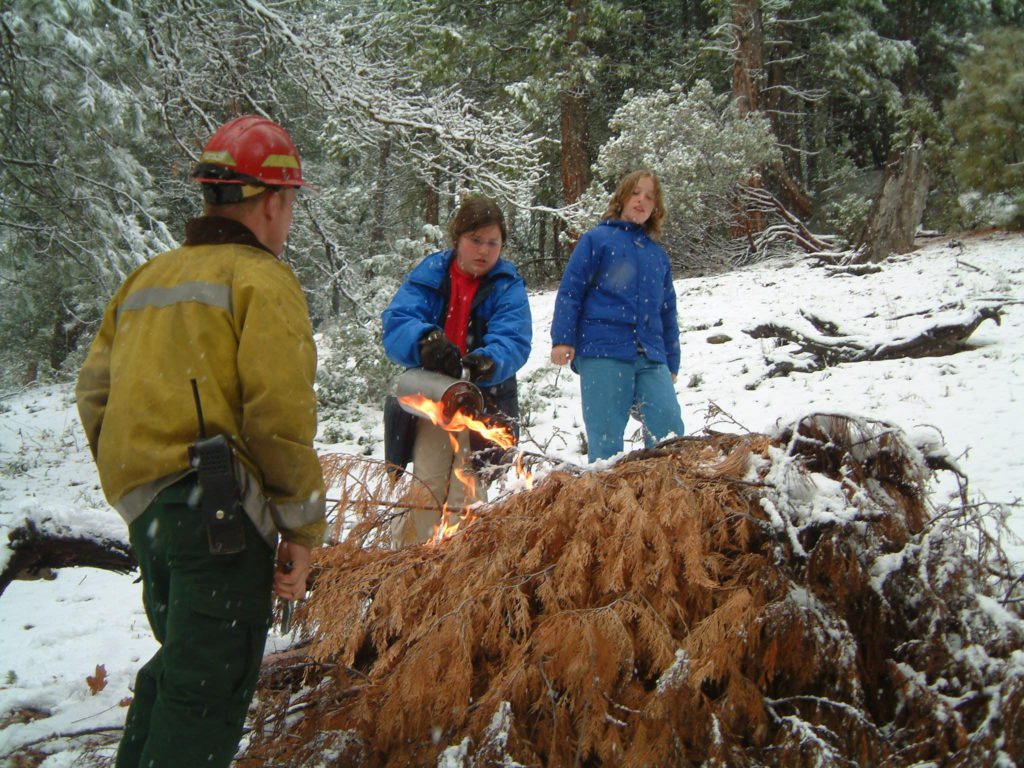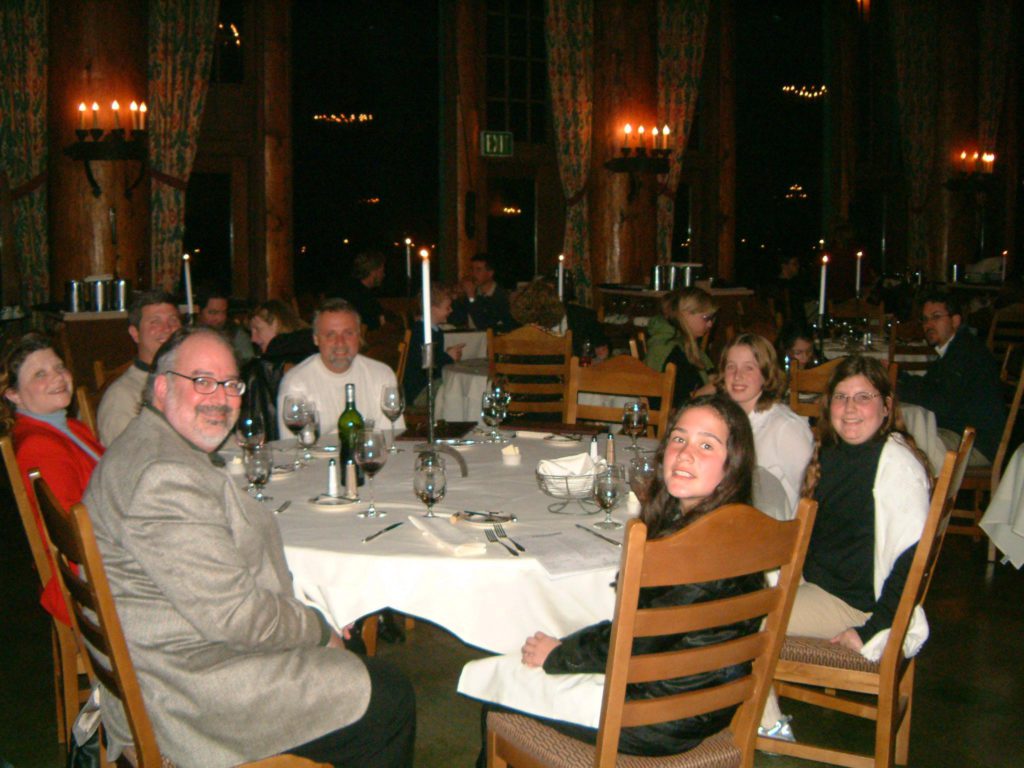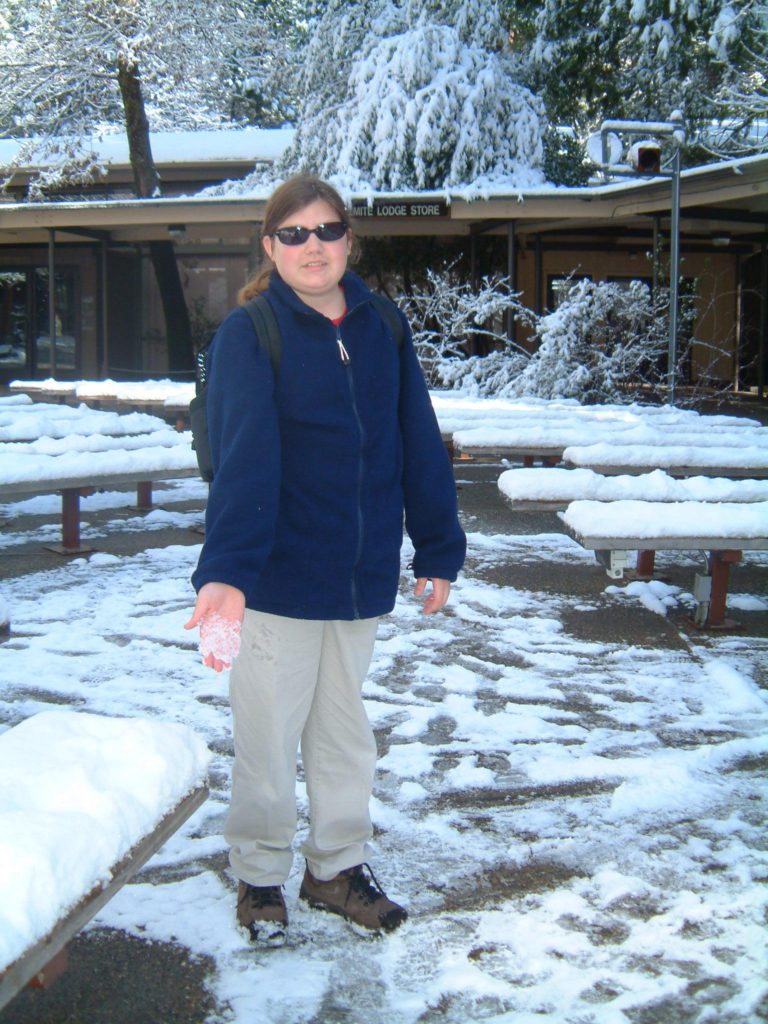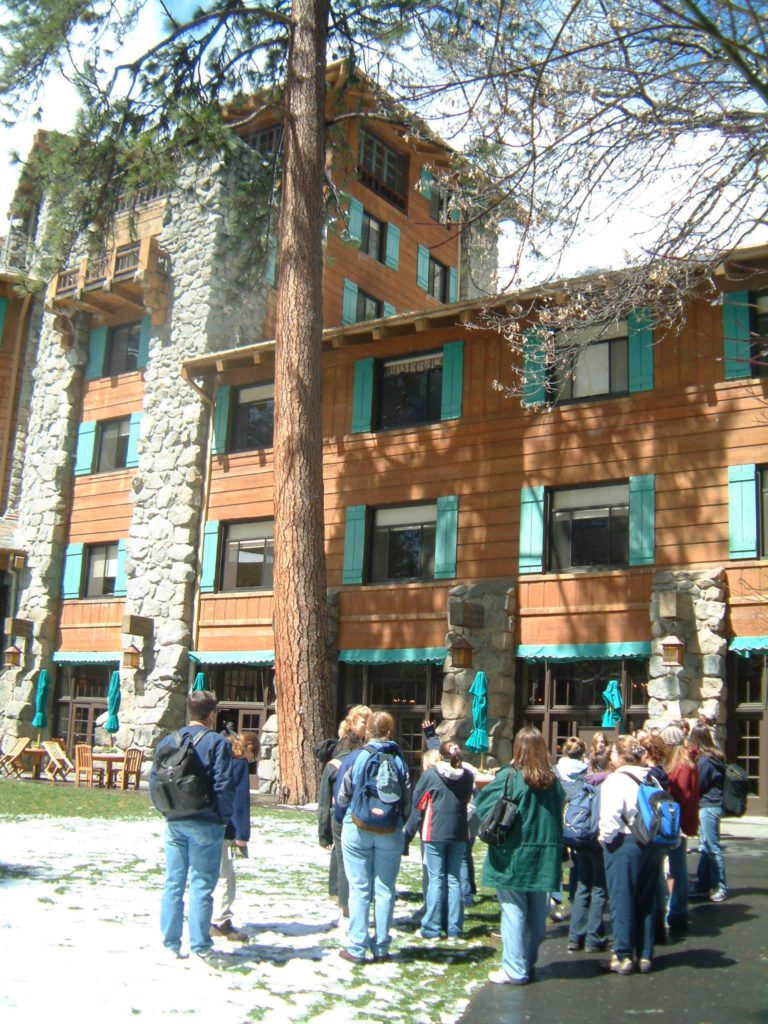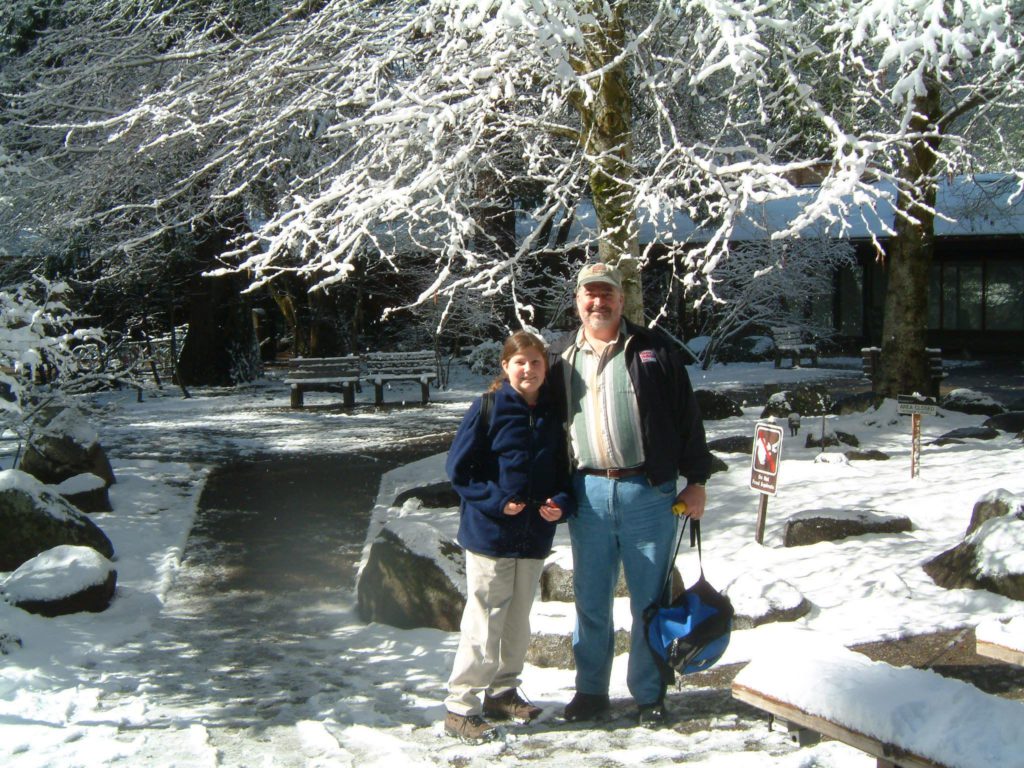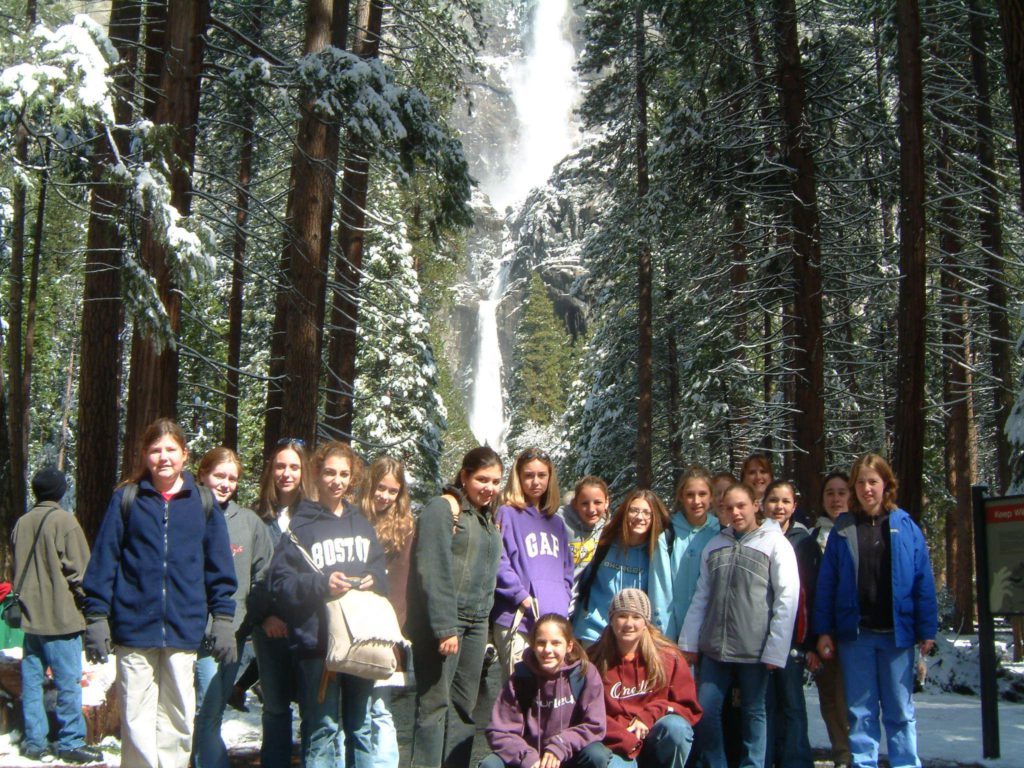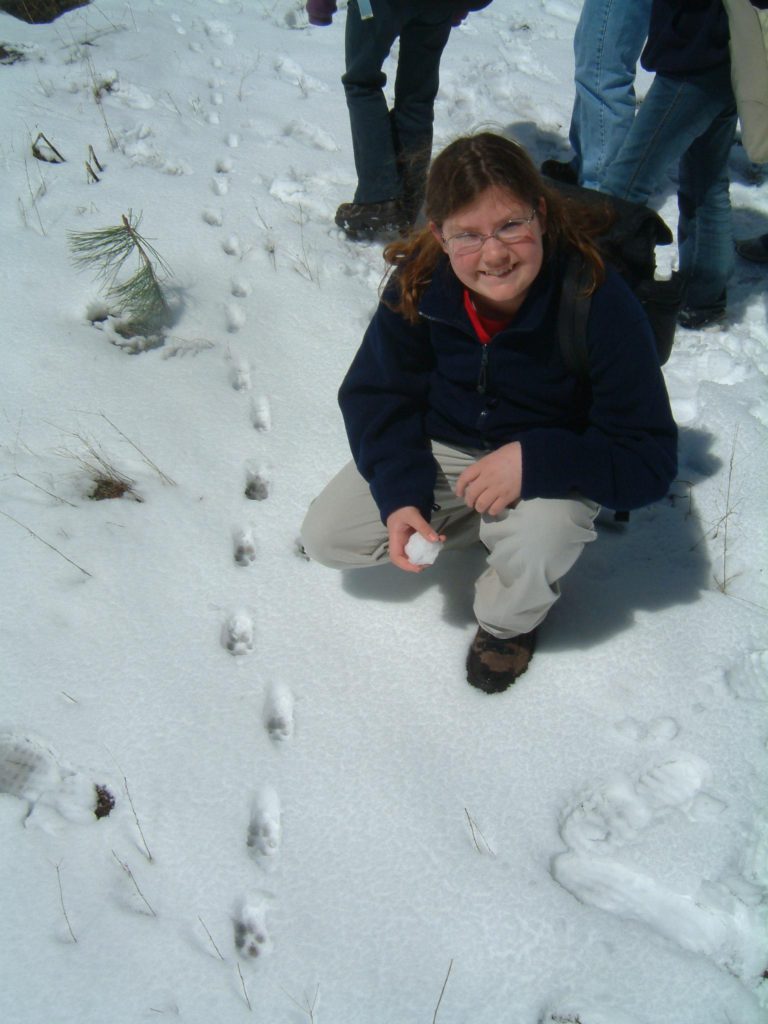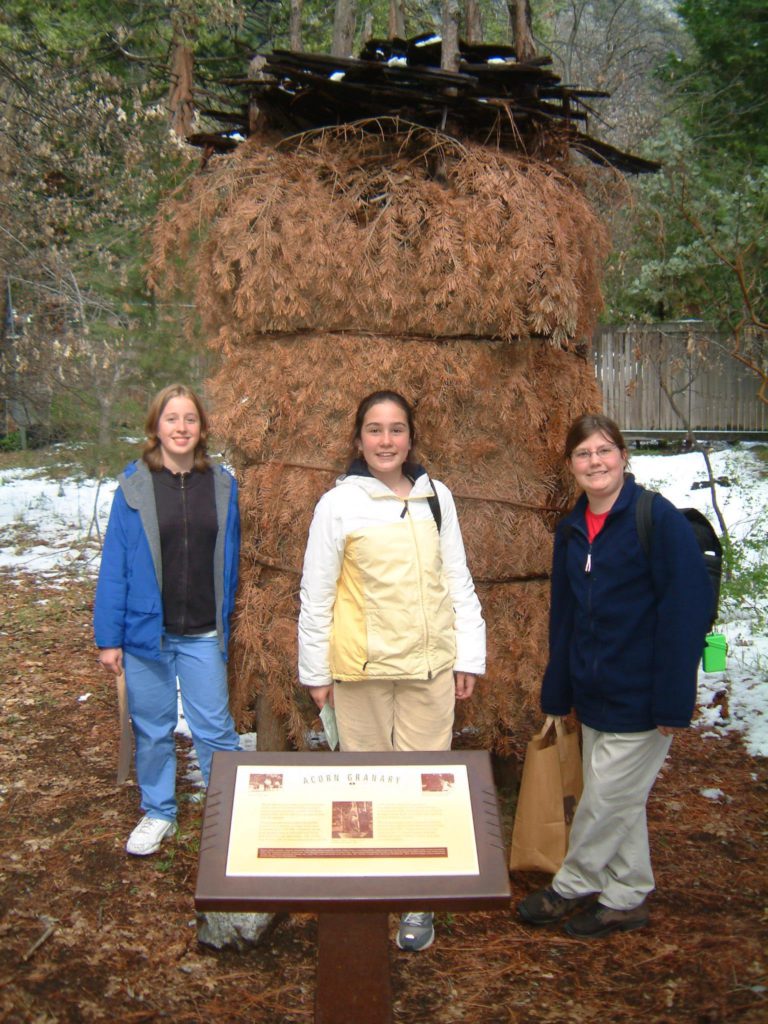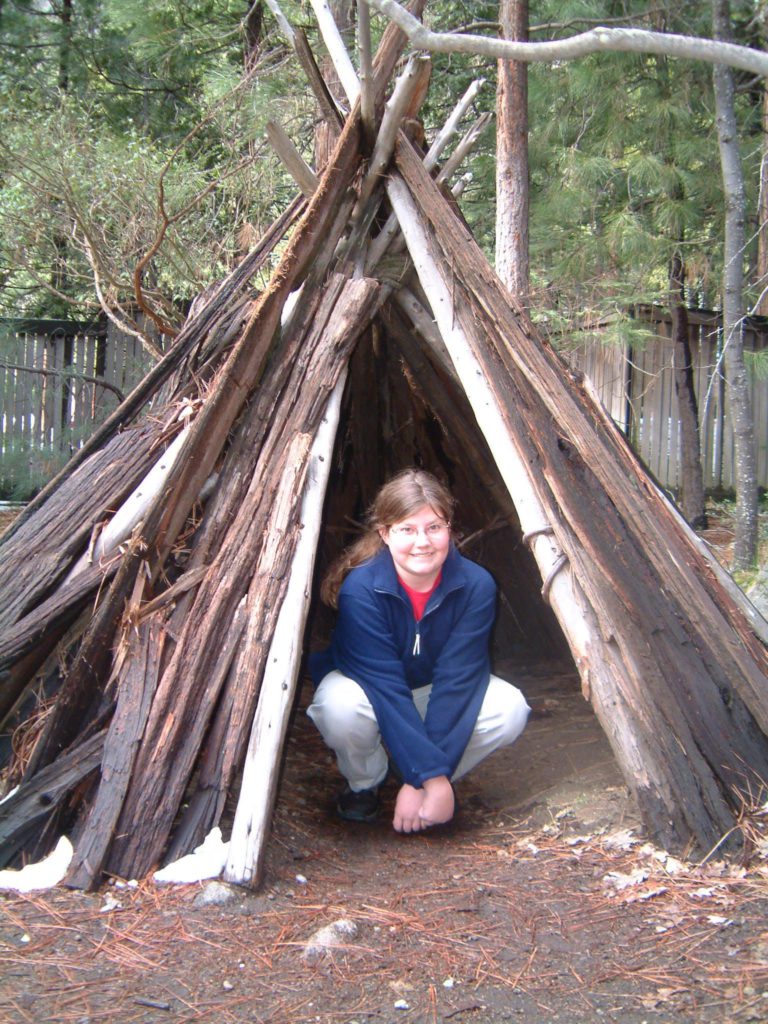Ryan Davies, my 17 year old programmer helper from England, finished the changes on my LightingPad app for the iPad, just in time for it to go with Jeremy to InfoComm in Las Vegas. It looks cool!
Author: steve
Fondue
Rock & Roll
A busy day back at work after the long weekend. Last month was the first time we broke $800K in a month. This month looks good, too, with a proposal out for the Rock & Roll Hall of Fame that specifies $220K of our gear.
Memorial Chairs
 It’s Memorial Day, a day when we honor those who’ve given their lives for this country, and Chinese people who manufacture rolling chairs. After lunch at Uno, I took Linda to Staples where she picked up a new chair for her desk in the kitchen. You wouldn’t think a chair would come in this many parts, but she got it together.
It’s Memorial Day, a day when we honor those who’ve given their lives for this country, and Chinese people who manufacture rolling chairs. After lunch at Uno, I took Linda to Staples where she picked up a new chair for her desk in the kitchen. You wouldn’t think a chair would come in this many parts, but she got it together.
A Surprise in the Night
These are some more shots taken around the house using the TX7’s HDR mode.
Last night I was awakened to a scrabbling sound, and woke up to find something on my pillow. I leapt out of bed and turned the light on. Sitting in the middle of the pillow, nibbling on it unconcernedly, was a mouse. He seemed completely unperturbed by my movements and the light. He calmly continued nibbling as I opened the door and gave him a pillow ride outside. I finally had to push him off the pillow to get him to say goodbye. I’ve had pets that weren’t as tame as that mouse!
New Camera, New Journal
I thought it would be fun to keep a journal this summer, since I’m planning to travel this summer, and to spend much of it with Dani, in Evanston, Illinois. So I downloaded a journal writing application to see whether or not I can use it, combined with Dragon Dictation in order to make it easy to create a journal and include pictures of what I do everyday. I’ll be using the iPad, which has proven far more useful than I expected, and also a new Sony DSC-TX7 camera.
So this is my trial run, to see if these tools work together.
Last weekend a thunderstorm snapped off some of the dead trees in front of our house. Defying Murphy’s law, they landed neatly by the side of the driveway, ready to be picked up.
The Sony DSC-TX7 is a lot like my previous TX1, but has an HDR mode that produces great color depth and contrast range by shooting two exposures. These are some shots I took around the house.
Scotland & Ireland 2008
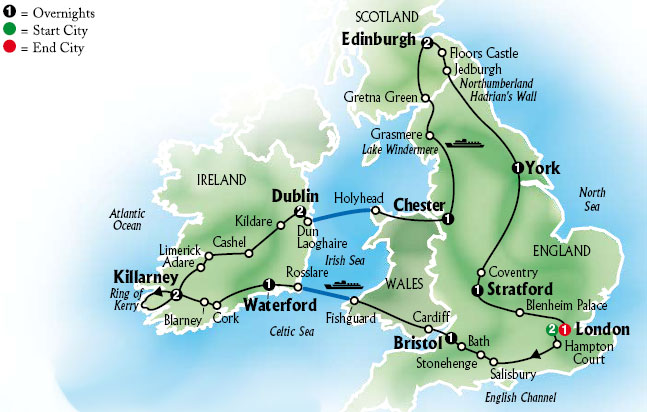
We scheduled this extended trip to the UK to coincide with Dani and her friends from Trinity Prep performing at the Edinburgh Fringe Festival. Dani departed ahead of us, on Tuesday, July 29th, with her school group. They spent a couple of days in London and then took the train to Edinburgh to prepare for their run in A Funny Thing Happened on the Way to the Forum. It’s one of over 2000(!) shows running in this year’s Fringe Festival. Here’s what they did before Linda and I left Orlando:
Wednesday, July 30th Arrival, Half day panoramic tour of London, Check in
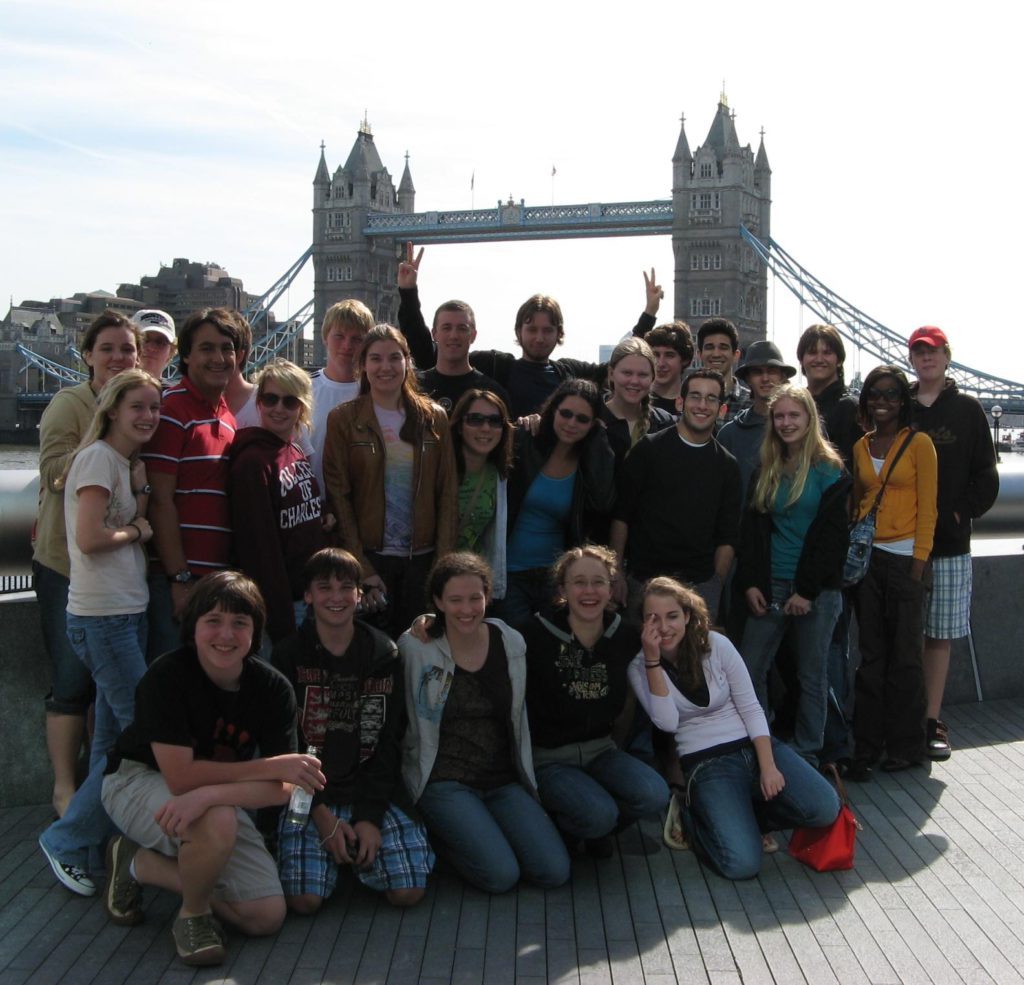
Thursday, July 31st Workshop at Shakespeare’s Globe and attend “Billy Elliot”
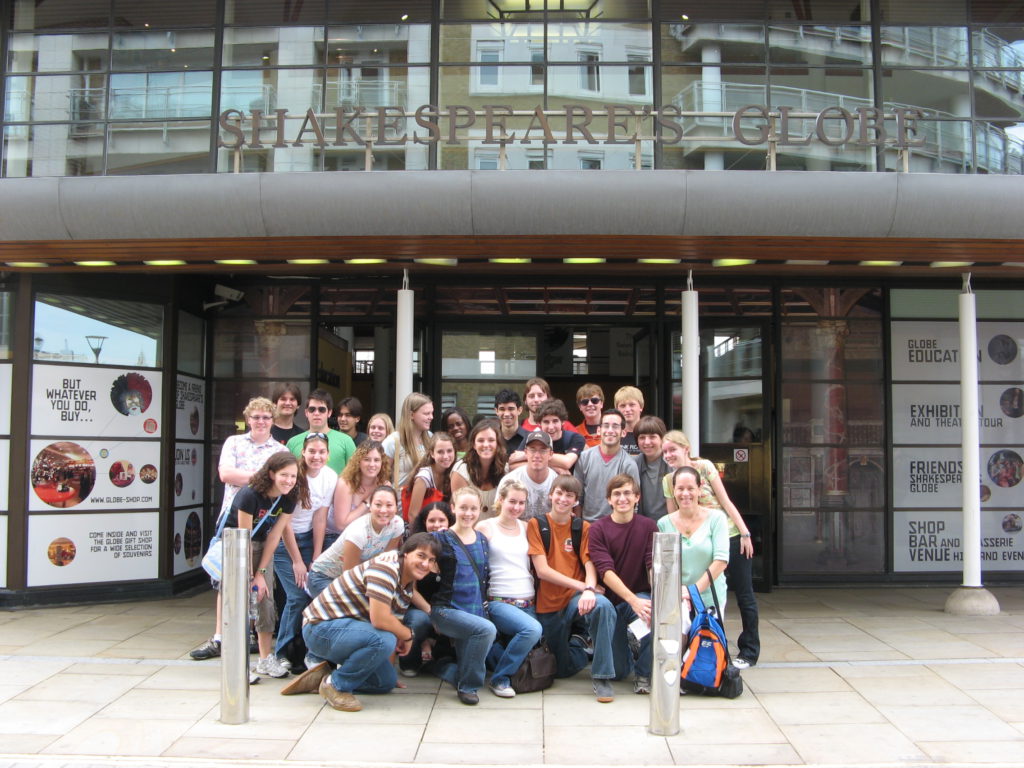
Middle: Maggie, Dani, ?, Kyra, Stephanie, James, Gabe, Tommy, Laura
Rear: Adam, Sven, James, David, Emma, Laura, Denee, Alex, Daniel, Jamie, ?, ?
Friday, August 1st Early train to Edinburgh, sightseeing
Saturday, August 2, 2008
Orlando to London
Linda and I departed on Delta through Atlanta. Dani was already in Edinburgh with the 30+ person group from Trinity Prep, getting ready to perform A Funny Thing Happened on the Way to the Forum. We’ll join them in Edinburgh in a few days, although we’re doing our own thing.
Meanwhile, in Edinburgh, Dani and her troup had a Technical Rehearsal.
Sunday, August 3, 2008
London
Upon arrival we took the Gattwick Express Victoria Station, and walked about four blocks to the Goring Hotel. It’s a very nice hotel located very conveniently to Buckingham Palace, The victoria Place Theatre and Victoria Station. I wasn’t feeling well, so we took it easy the rest of the day, and had a late night dinner in the basement bar: roast beef and horseradish sandwiches, and smoked salmon, both delicious.
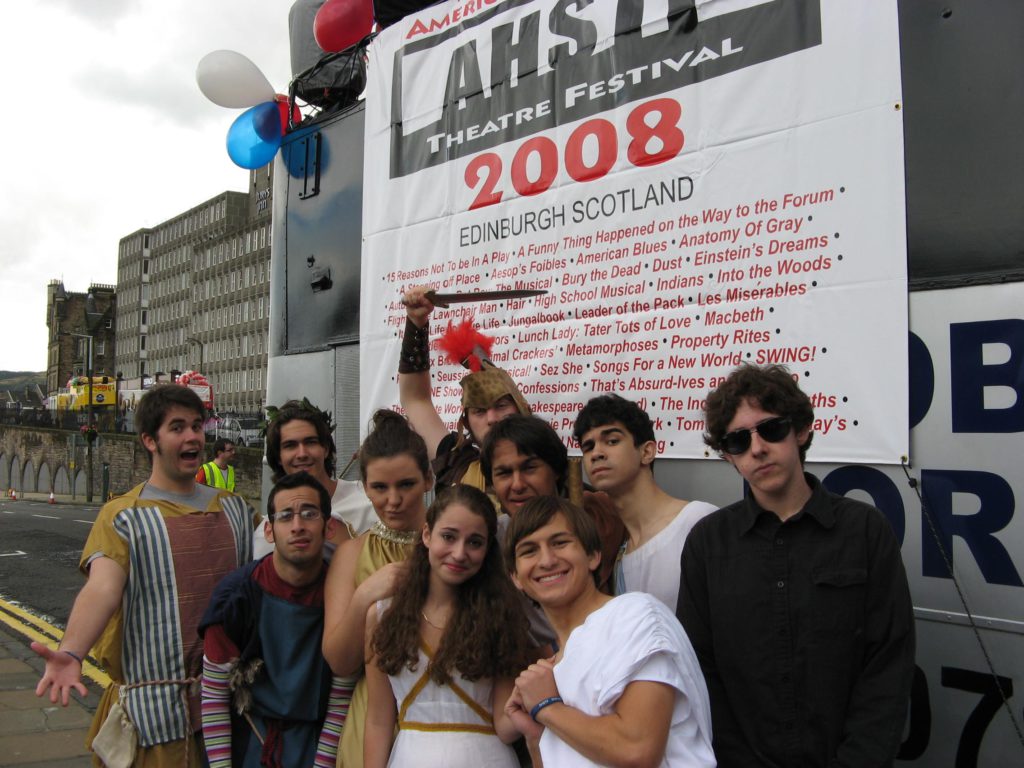
From Janine Papin, Director of A Funny Thing Happened on the Way to the Forum:
A wonderful day. Our group was one of two that got to ride on the top of the open bus and sing as the Cavalcade paraded down the main streets of Edinburgh. They had a great sound system on the bus plus microphones and we had a few tracks that Peter (our sound guy) had recorded after the last rehearsal at Trinity. The crowd clapped along while they sang Comedy Tonight while some of our ensemble gave out post cards advertising our show.
It was a HUGE parade and the streets of Edinburgh were packed! After that we performed on the the Royal Mile, our group sang a few songs and successfully attracted a nice crowd to perform to.
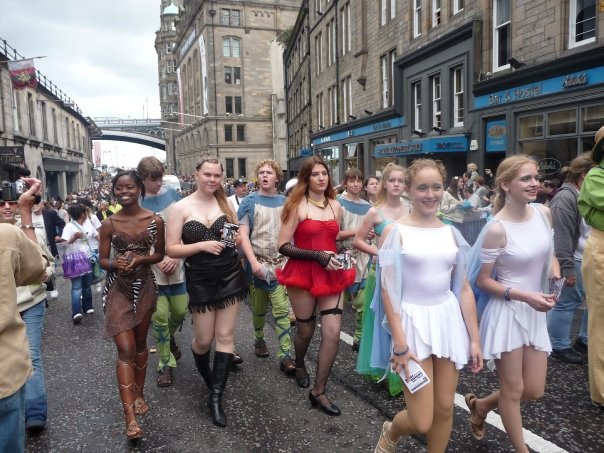
Last night was a big dance (pronounced Kaley, even though it is not at all spelled like that). The kids were taught traditional Scottish dances and had a blast! Our kids were among the last to leave and overall participated more than the other kids in the other schools. I am so proud of all my boys that wanted to learn and were such enthusiastic participants! The kids are excited and nervous but I am sure that it will be wonderful.
Monday, August 4, 2008
London
We met Henry at Le Gavroche for lunch. It was totally forgettable, like a different restaurant from our last two visits, hardly what you’d expect of a Michelin two star. Because of the week dollar, everything in London is very expensive — about double the US price. So it was kind of Henry to pick up the cost of this meal, and we’ll treat him to the show and dinner.
In the evening we walked the two blocks from our hotel to the Victoria Palace Theatre to meet Henry and saw Billy Elliot. We had the front row of the dress circle, which is the first balcony, and it was really neat to be able to see the stage. At previous shows we’d had close seats in the orchestra, but the stage floor was above eye level, which is weird for a dancing show. This Billy was older and slightly darker than the others we’ve seen. His voice wasn’t as high or good, but his dancing was better.
Afterwards we had a delicious pizza at Bella, a tourist restaurant next to the theatre. It was better than lunch!
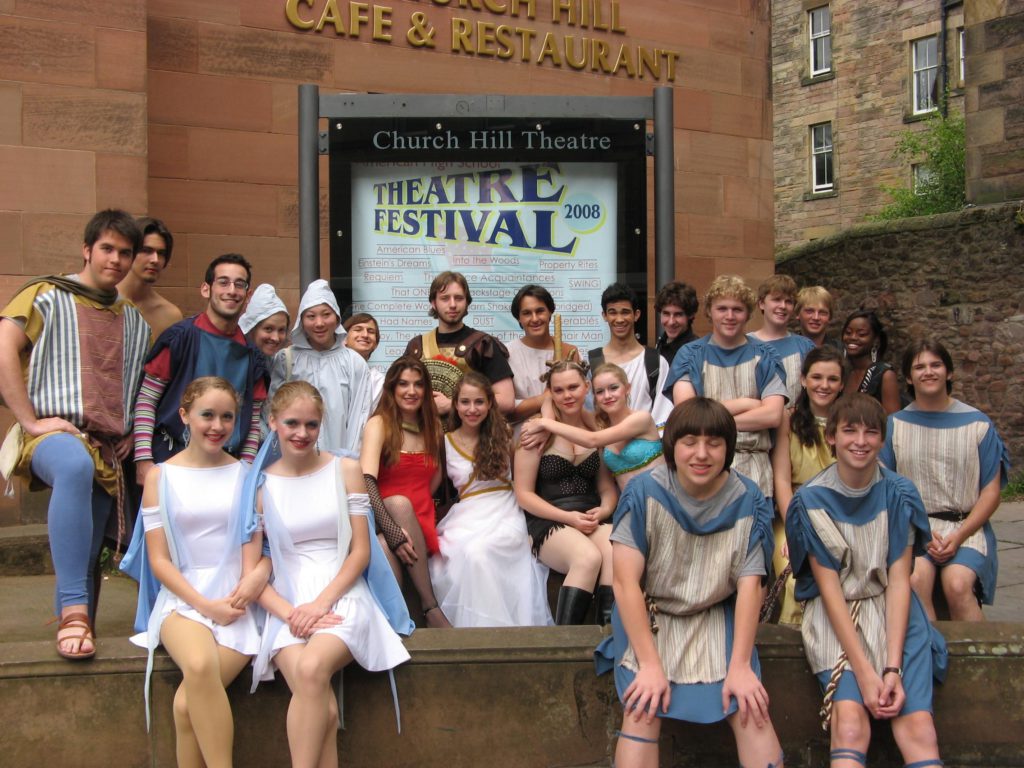
In Edinburgh, Forum opened and the cast attended another show, too.
Tuesday, August 5, 2008
Edinburgh
We took a cab to Train Station, our first good experience with a London cab driver. The train ride to Edinburgh is 4-1/2 hours, with just a few stops. The track is smooth, the seats spacious, and you have a table to work on, free wireless internet and even electrical outlets. If only air travel were like this!
The scenery was lovely: rolling pastures, farmhouses, cattle, and for a while we skirted the coast. In Edinburgh the Balmoral is adjacent to Edinburgh Station, but if you have suitcases you have to go out and around, up a really steep hill to get to the front door. There were people everywhere, here for the Fringe Festival.
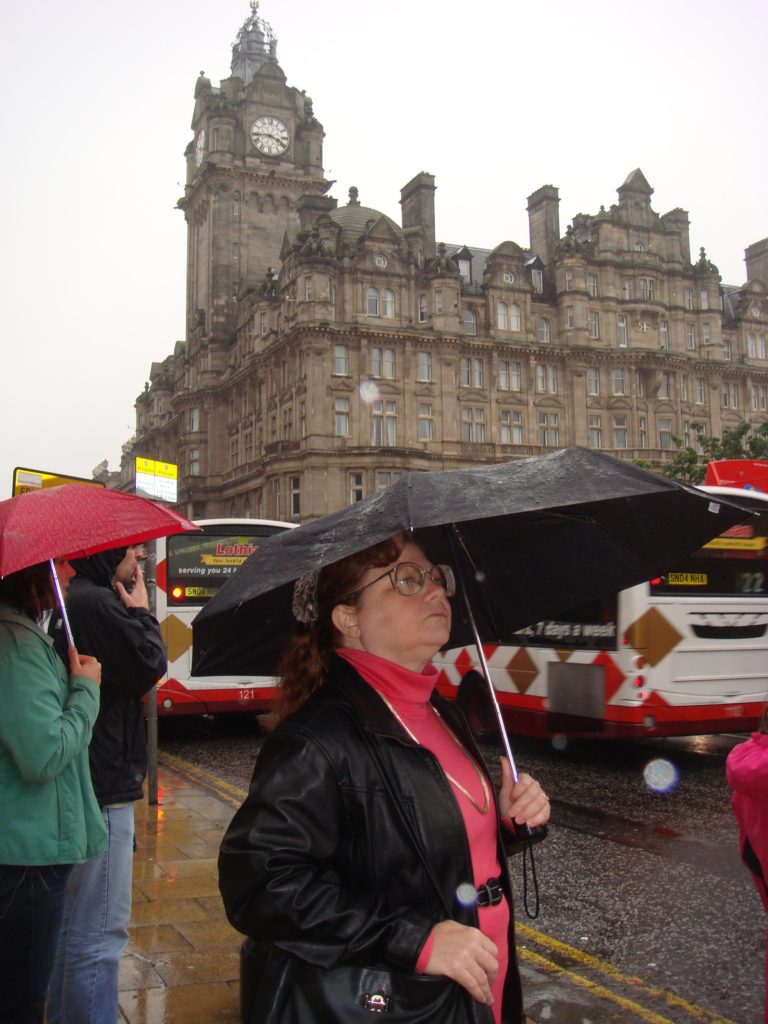
The Balmoral is an exceptional hotel. The staff are extraordinarily helpful, and our room is spacious, and has a great view of Edinburgh castle. It’s really expensive, thought, so after four days we’ll move to The Knight Residence, where we can also do the laundry for the second half of the trip.
In the evening we had dinner at the Balmoral’s Michelin one star, restaurant Number One. It was the equal of any dinner we’ve had. The Chef’s seven course tasting menu was creative and superb, light enough not to be overwhelming, and at fifty pounds it was a bargain. The wines with each course were the most perfect food pairings we’ve ever experienced.
From Janine Papin:
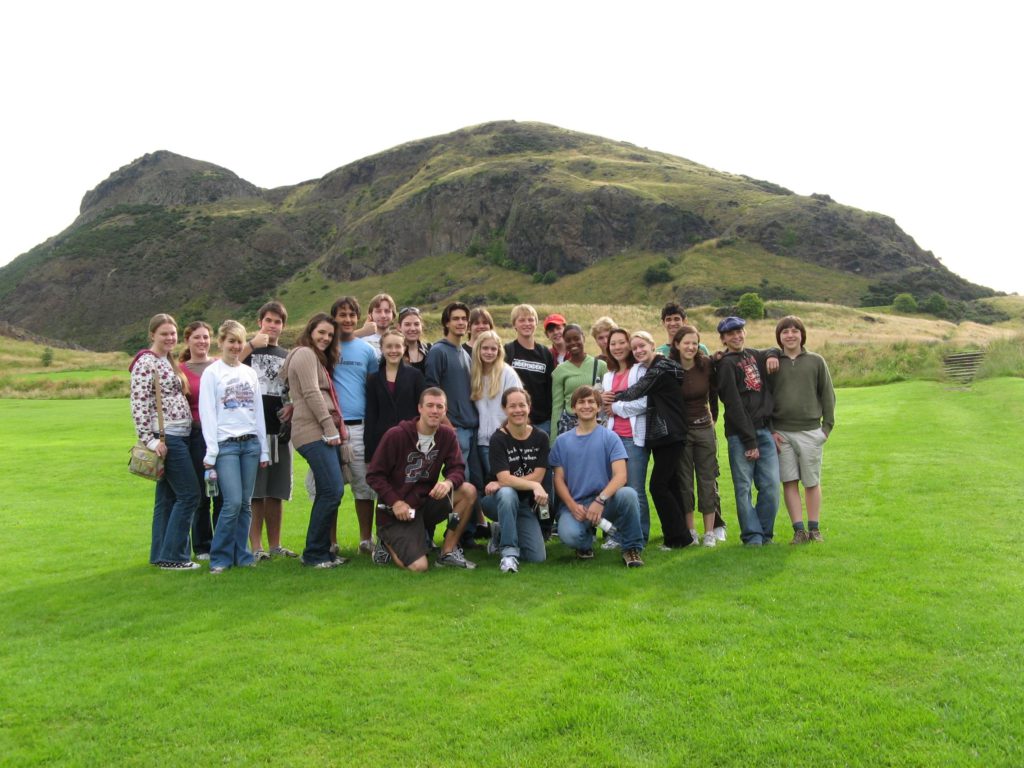
The days are so busy and wonderful! We opened Forum successfully and the the kids did beautifully! We climbed Arthur’s seat (a inactive volcano) and saw the Military Tattoo at Edinburgh Castle. We have seen more shows, shopped, had afternoon tea, and have spent time laughing and talking.
Wednesday, August 6, 2008
Edinburgh
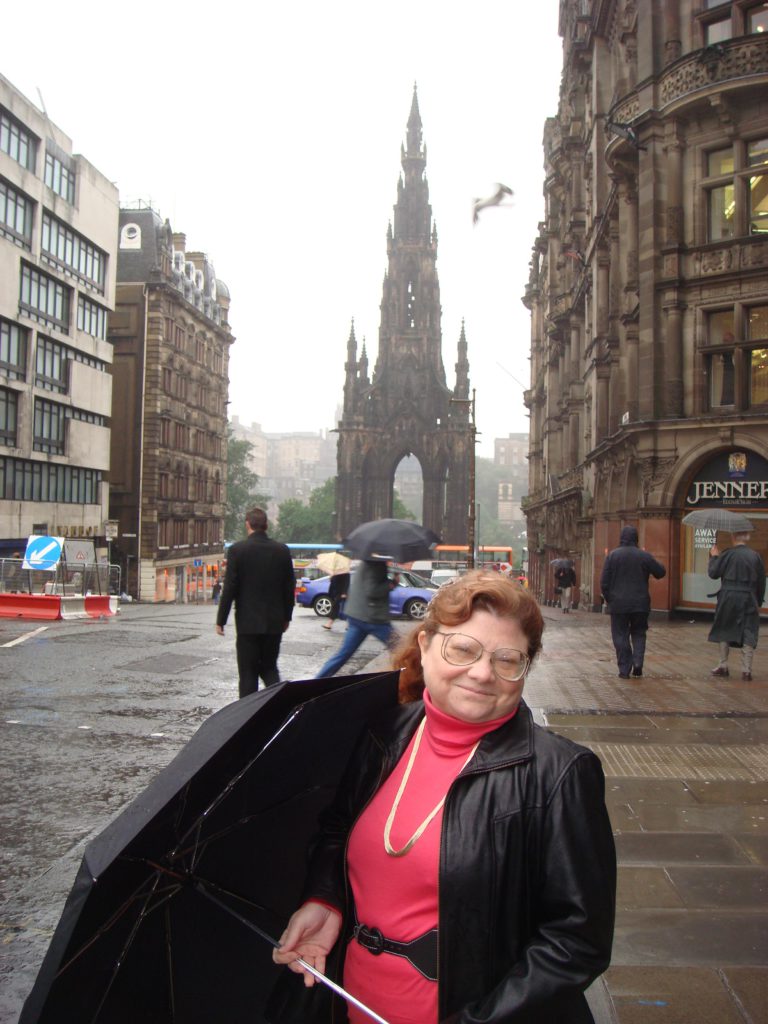
Dani called this morning (well, she woke us up at about 11:30!) and we got caught up. It sounds like they’re having a great time.
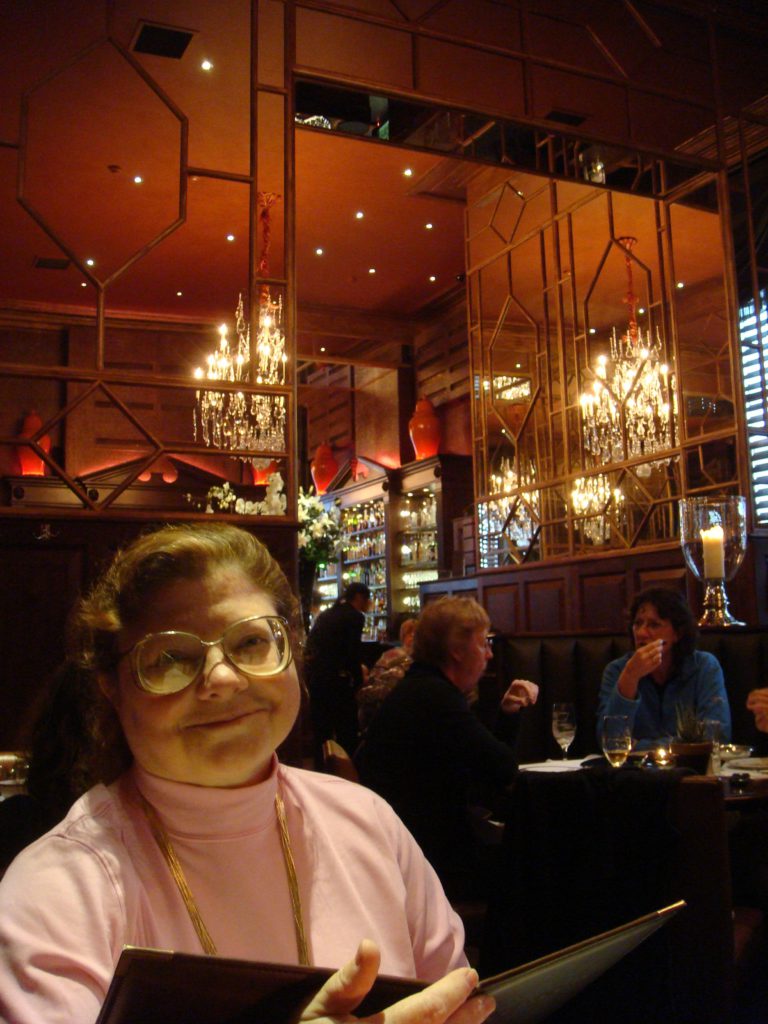
The day was drizzly. We walked a few block to a restaurant out concierge recommended called The Dome. It’s actually a converted home, if you classify the Parthenon as a home. There are two restaurants there. The Grill Room is fancier and has a glass dome. We ate in the cozier Club Room, where we had that traditional Scottish dish, Nachos. They were excellent and huge, so we didn’t order anything else. We ended up in a long conversation with a delightful English couple whose daughter lives in Edinburgh. They were very well traveled, and we spent an out or so swapping stories.
On the way back, Linda did a bit of shoe shopping at the decrepit Princes Mall next to the hotel. About 60% of the storefront are vacant, and the rest are closeout places. Weird, in such a central and upscale part of town.
For dinner we went to Martin Wishard, the eponymous restaurant of Scotland’s number one celebrity chef. It’s also a Michelin one star, so we were expecting a lot, but it failed to deliver. Although there were a couple of notable dishes, the chef’s tasting menu paled in comparison to last night’s dinner at Number One, and the wine matching can only be described as oafish. Not only were the wines odd, the wine service was bizarre, with the wines poured in the kitchen and then described by someone with a thick German accent. Not recommended.
Our cab driver for our return trip was a lot of fun. He was really the first person we’ve encountered with a Scottish accent thick enough that we couldn’t completely understand him. Most of the service industry people we’ve encountered have actually been Eastern European, a reflection of the service level skilled labor shortage in the UK.
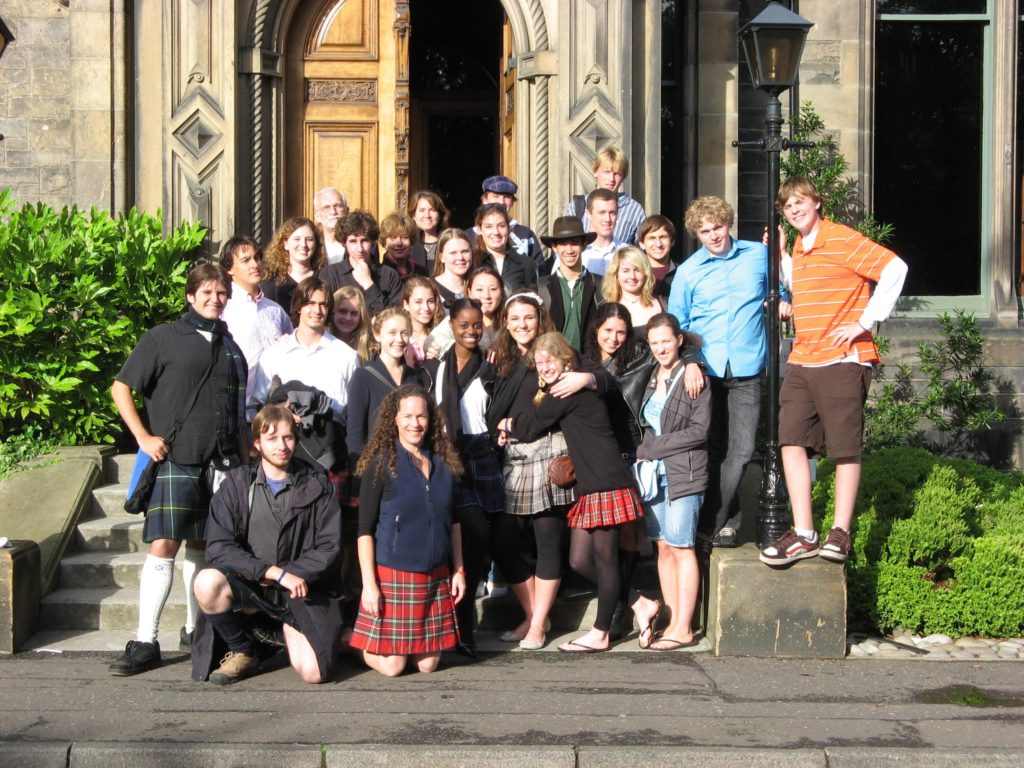
Meanwhile, Trinity performed Forum at 6pm to rave reviews:
A review of Forum:

Roman Farce Unleashed with Youthful Zeal
4 Stars
A Funny Thing Happened On the Way to the Forum
(2008) American High School Theatre Festival Church Hill Theatre. 4th-8th August. Various Times (1h30)
A strong old Broadway warhorse,”A Funny Thing Happened on the Way to the Forum” originally opened with Zero Mostel in the lead followed by Frankie Howerd in the UK. A mixed bag of plot lines from Plautus are woven into a finely honed hit – it ran for years.
This production from the American High School Theatre Festival deserves to run just as long. It’s a bubbling, vibrant production played with consumate skills by actors still in their teens. Every farcical device is employed – cheating on wives, transgressed taboos, desire – and what could easily turn into a confused mess is neatly and cleanly played out.
The performance bubbled with energy, the direction was tight and inventive and the choreography caught the spirit of the piece. James Everett as Pseudolus directed the traffic of the piece with fine comic timing and Alex Ferguson as Lycus was outstanding.
Ian Billings
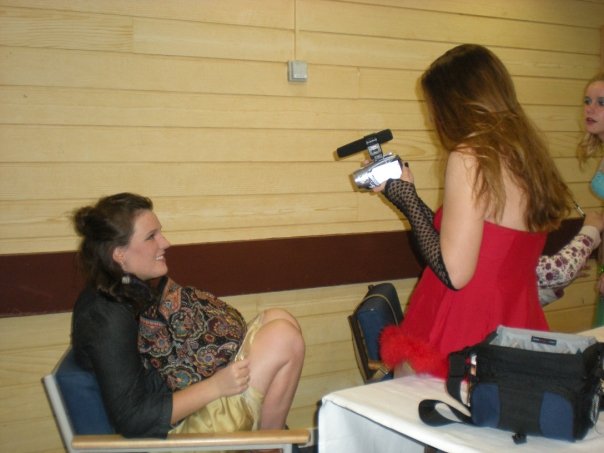
An audience member writes in review:
Look at the way it is today, things are getting out of hand – there’s no decorum in the forum 07 Aug 2008
reviewer: Yahadriel, Cornwall (yeah i know we haven’t got independence yet but it’s a matter of time)
Frankie Howard would have loved this. The vaudeville elements were performed stunningly. The best scene? Everybody Ought To Have A Maid – it was fantastically impressive. I’ve never seen the play before but now that i have the film and the CD pales into insignificance. James Everett as Pseudolus held the story together masterfully. Alex Ferguson as Marcus Lycus was brilliant – move over Phil Silvers. And Gabe Gonzales as Hysterium – well, he was just amazing. A comic actor of the highest order. Other special mentions go to Christine Pappas as Domina and Kyra Bloom as Philia. Great actors and wonderful singers. All in all a great show. It was certainly worth getting soaked to the skin in the Edinburgh rain to watch this.

The review from The Scotsmen, Scotland’s number one paper:
Musicals & Opera: A Funny Thing Happened on the Way to the Forum
4-Star Rated
CHURCH HILL THEATRE (VENUE 137)
I DON’T know about the forum, but plenty of funny things happened on stage, courtesy of Florida’s Trinity Preparatory School. These are schoolkids? Never mind the voice, you have to be pretty bright to get the best out of a Stephen Sondheim score. And many a professional actor has fallen flat on their face tackling farce.
But not these teens – they stride on to the stage with huge self-confidence and make the 2,000-year-old tales of Plautus live. Songs aren’t so much delivered as presented with flowers and chocolate. It helps that the script, by Burt Shevelove and Larry (M*A*S*H) Gelbart, has zingy one-liners by the score.
James Everett as Pseudolus the slave is terribly funny as he drives the action. Matthew Prast is dashing and Kyra Bloom sweet as young lovers Hero and Phylia. But stealing a show in which there’s no weak link is Gabe Gonzalez as Hysterium, the loyal house servant and reluctant cross-dresser.
A presentation of the American High School Theatre Festival, this is a tad away from the centre of the Fringe, but if you like musicals even a bit, make the effort. The cast, band and crew will make your day.
Until today, 6:15pm
Martin Gray
Thursday, August 7, 2008
Edinburgh
We rose early — well, early in the afternoon, anyway — and decided to return to The Club Room at The Dome, as it’s one of the few nice places that serve lunch at 3:00 in the afternoon. It was still drizzly, so on the way back we spent an hour at the Royal Scottish Academy, which is almost next to our hotel. They have a special exhibit of impressionist paintings, and it was almost overwhelming to see so many paintings by all of the master impressionists. I was actually most impressed by a painter new to me, Sir John Lavery, an Irish Impressionist.
We had a casual late dinner at the hotel’s Hadrian’s Brasserie. Nothing special.
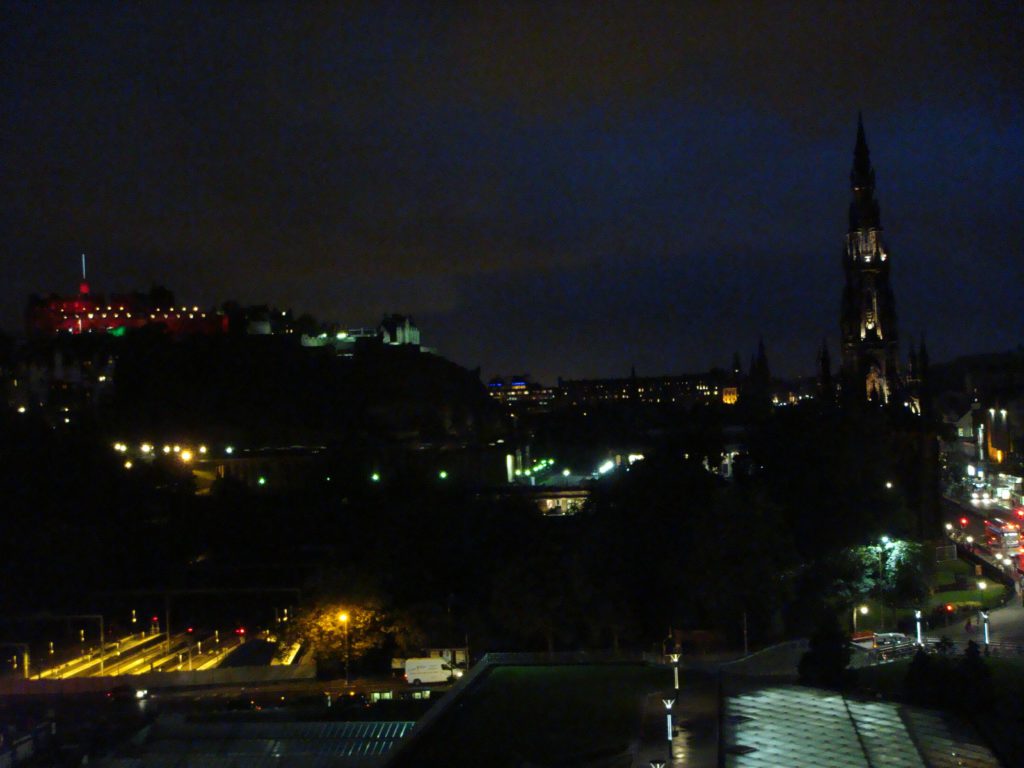
Friday, August 8, 2008
Edinburgh
I hadn’t quite drifted off to sleep last night when the fire alarm summoned everyone to the lobby for an amusing pajama party. After about fifteen minutes it was determined to be a false alarm. The hotel sent out a note of apology in the morning.
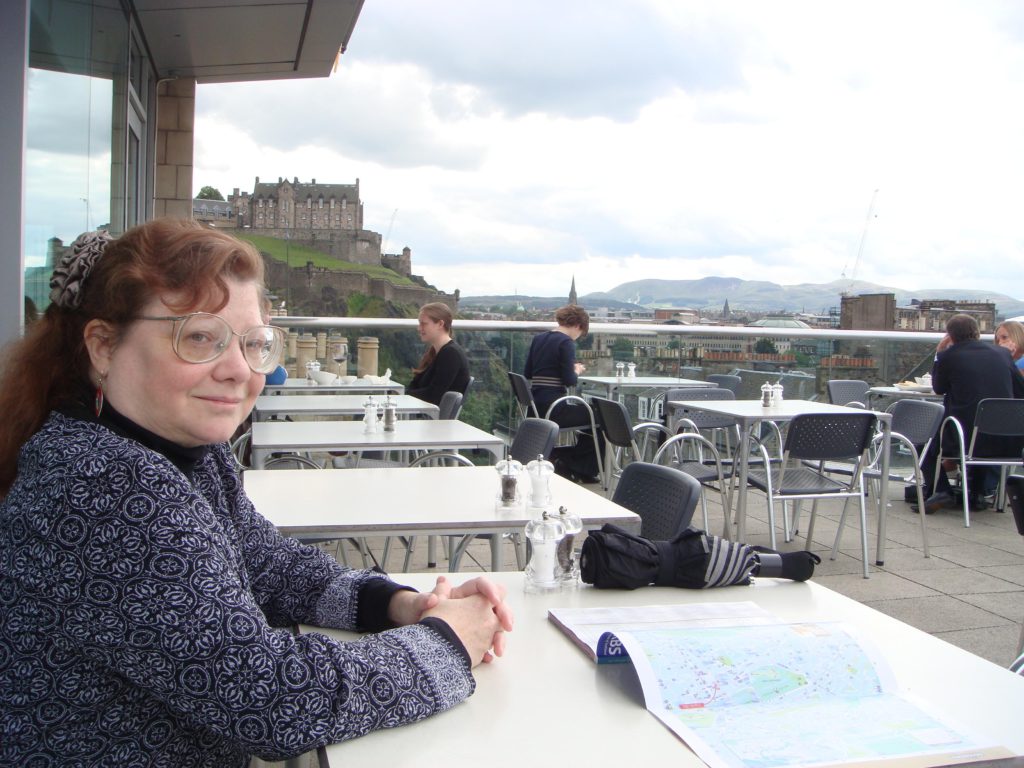
We picked up our tickets for tonight’s final performance of Forum and then walked to Oloroso, a restaurant on top of an office building in New Town. I’d made a reservation for inside, but since the rain had cleared off we ate on the terrace, which had a more casual menu that was fine but nothing special. But the weather was great, with occasional sun, and temperatures in the high 60s. The terrace has a wonderful view in almost every direction including Edinburgh Castle.
In the evening we took a cab a few miles to the Church Hill Theatre for the closing night performance of A Funny Thing Happened On The Way To The Forum. Because of the good reviews, word of mouth, and the patronage of other American High School Theatre groups, there was a good crowd of about 150 people. The theatre was perfect for the show, with a real orchestra pit and excellent acoustics.
Both the show and audience were high energy, feeding off of each other, and it was easily the best of the run, with thunderous applause and cheering after many of the numbers. Outside the kids received more cheering as they emerged from backstage to board their bus. I’m sure there were many bittersweet moments as they realized they’ll never perform together again, as much of the cast disperses to different colleges across the country in a few weeks. But what a great way to go out!
Saturday, August 9, 2008
Edinburgh
We checked out of The Balmoral and took a cab from New Town to Old Town, where we checked into The Knight Residence. What a fabulous place for an extended stay! It’s too bad we’ll only be here until Monday.
The building is brand new, with 19 lovely flats. Ours is a spacious one bedroom. It’s beautifully decorated and comes with CDs, DVDs, breakfast foods, a fully outfitted kitchen, teeny washer/dryer (our reason for staying here) and more. The charming Christopher runs the front desk. I had previously corresponded with him by email, and he was every bit as gracious in person. At about one third the price of the Balmoral it’s a real find.
The Knight Residence is in an interesting area. It’s just a couple of blocks from the Royal Mile, the concatenation of four streets that run from Edinburgh castle to The Palace of Holyroodhouse. In the same block as the hotel are six antique books stores and three strip clubs (yes, there’s lap dancing in Scotland).
Indeed, it’s very close to Edinburgh Castle. We strolled through the Grass Market, where they were having a rummage sale, and climbed the hill to the castle. The road is lined with old stone buildings that are now tourist shops. The street was filled with Fringe performers and visitors. Near the entrance to the castle is The Witchery, a fine dining restaurant where we had a cordial but not particularly noteworthy lunch. The couple next to us happened to also be American parents whose daughter is in another of the high school productions. Small world.
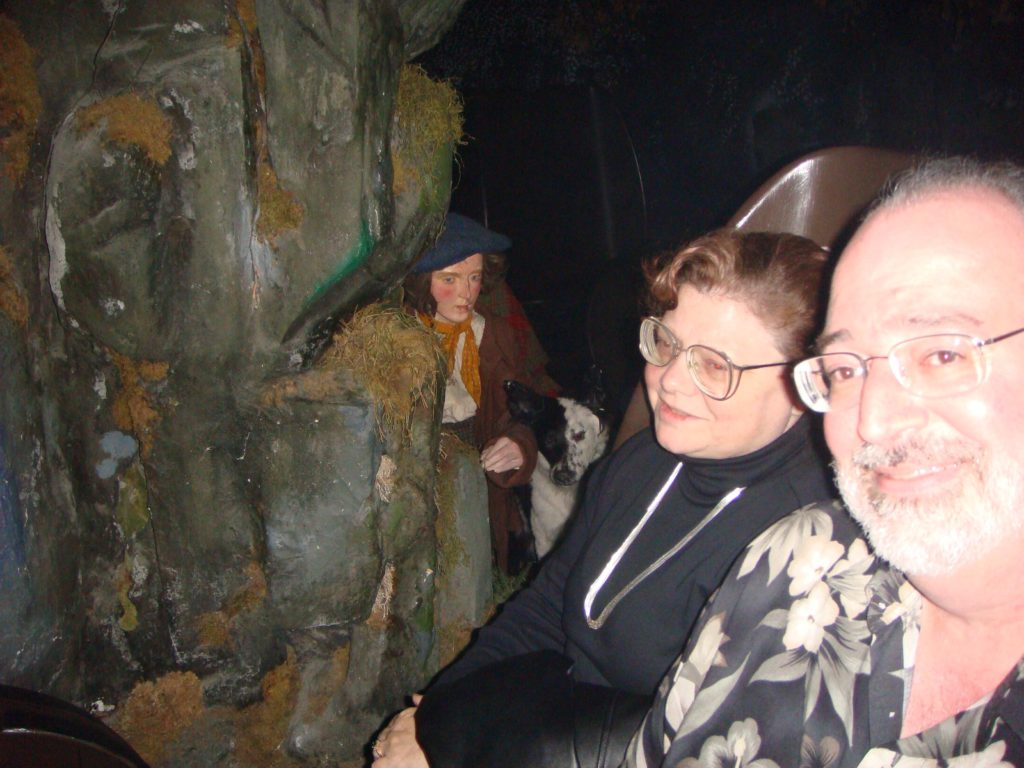
Next to the Witchery is the Whisky Heritage Centre, where we went on a dark ride called The Scotch Whisky Experience. The story was well conveyed, with good on-board audio and well done lighting and set decoration. The vehicles were wire guided, and moved only about 6 inches per second. It was surprising that many of the set pieces — including some quite delicate objects — where within inches as we passed, yet everything seemed to be unmolested. Afterwards we were served a dram of Tormore 12 year old Speyside Single Malt, which was excellent: caramel and fruit nose, very smooth. Even Linda liked it.
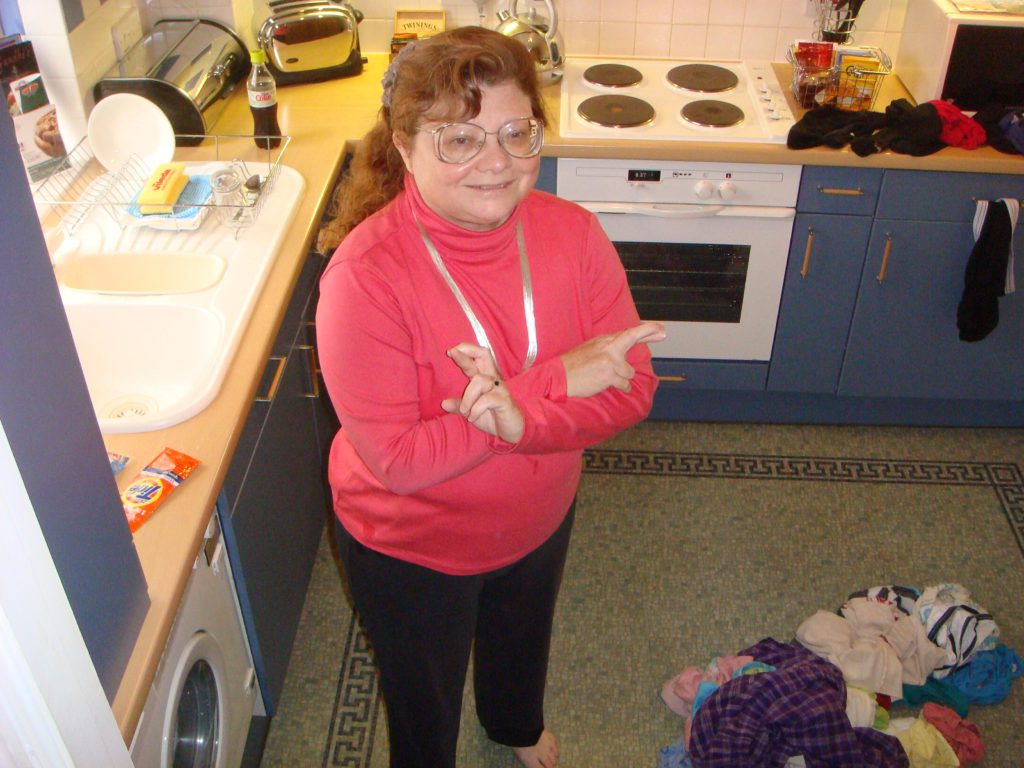
After a quiet afternoon experimenting with the washer/dryer (we found French and German manuals online — it’s very complicated) we strolled through the rain to the Grass Market, where we had a pleasant Italian meal. Things were still hopping well past midnight.
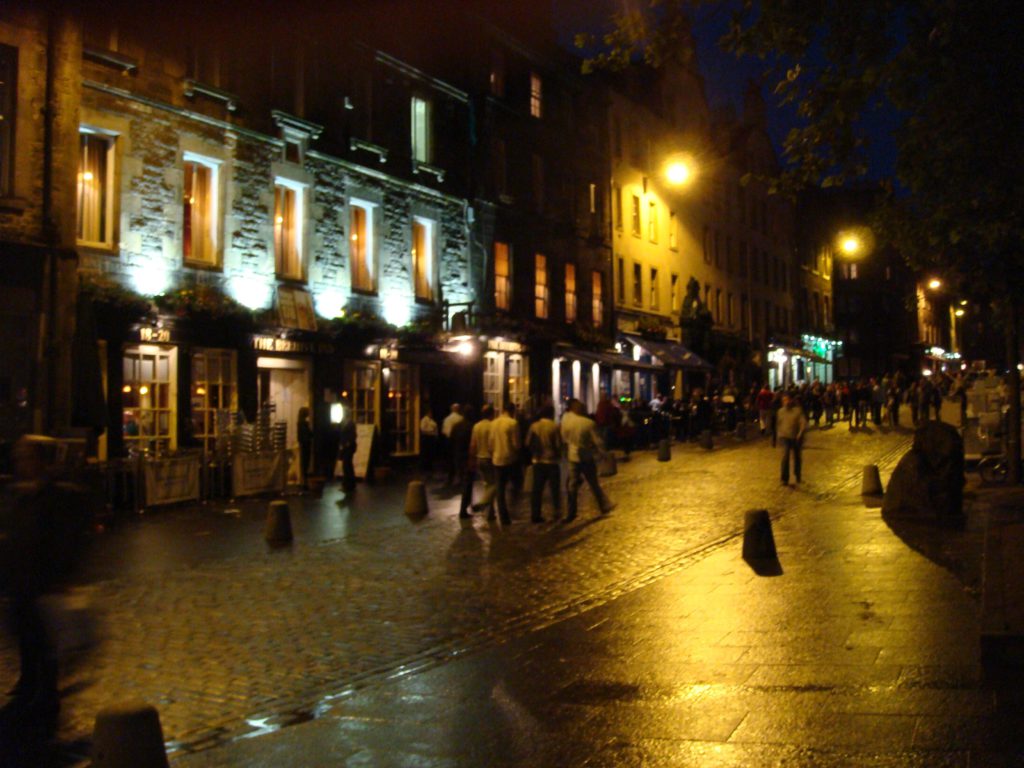
Dani Spent the day with her group, sightseeing outside the city.
Sunday, August 10, 2008
Orlando
In the morning we took a cab over to Pollock Halls and picked up Dani’s luggage. We had lunch at a baguette shop and Linda spent the afternoon doing one teeny tiny load of laundry after another.
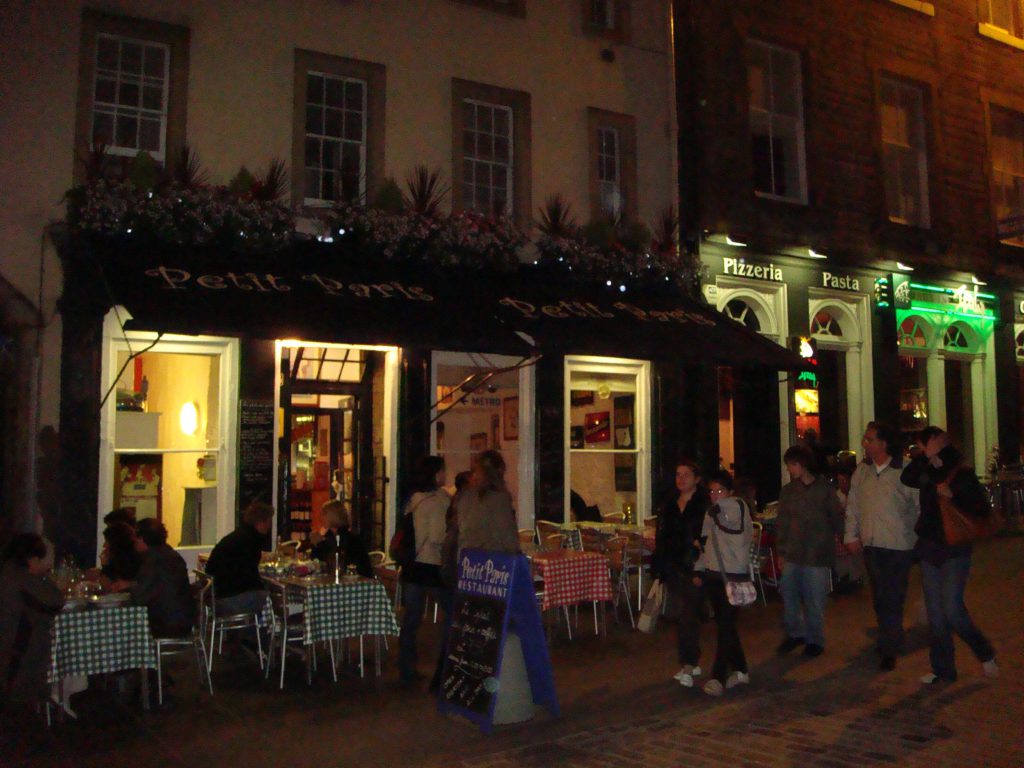
We enjoyed an authentic French dinner at Petit Paris, a small bistro at the Grass Market.
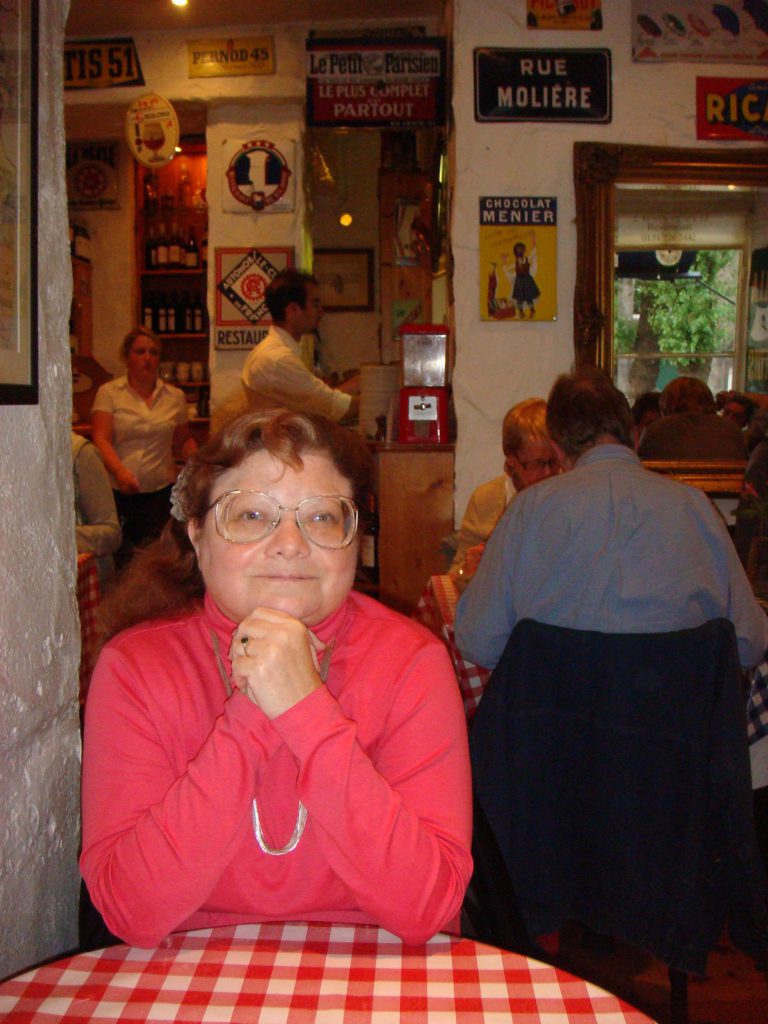
Dani attended the closing ceremony for the high school groups, where she was selected to deliver a speech to all of the various schools participating, and then went to Fringe Sunday at the Meadows and had dinner with her friends before we picked her up near midnight.
Monday, August 11, 2008
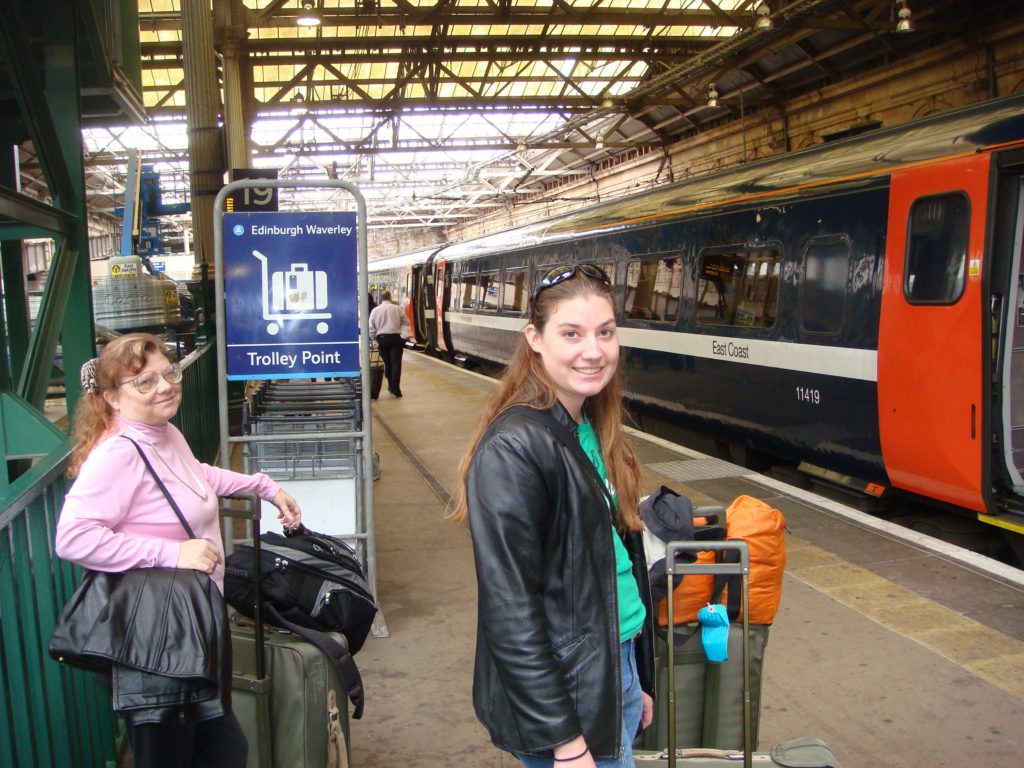
Edinburgh to London
We sort of slept in, although this being Monday, the construction site across the street was gearing back up. We checked out at noon and took a taxi to Waverly Station for our return trip to London. Once again I was able to get a lot done on the train. We arrived at King’s Cross Station at 6:30pm — a good time, because the cross town cab ride took only about 20 minutes to get us to Hammersmith, and the Novotel London West. It’s an enormous and fairly nice hotel in a great district for restaurants.
We walked about a mile down King Street to Indian Zing, a place I found online, and it didn’t disappoint. The weather was temperate and it was a great evening for a stroll.
Tuesday, August 12, 2008
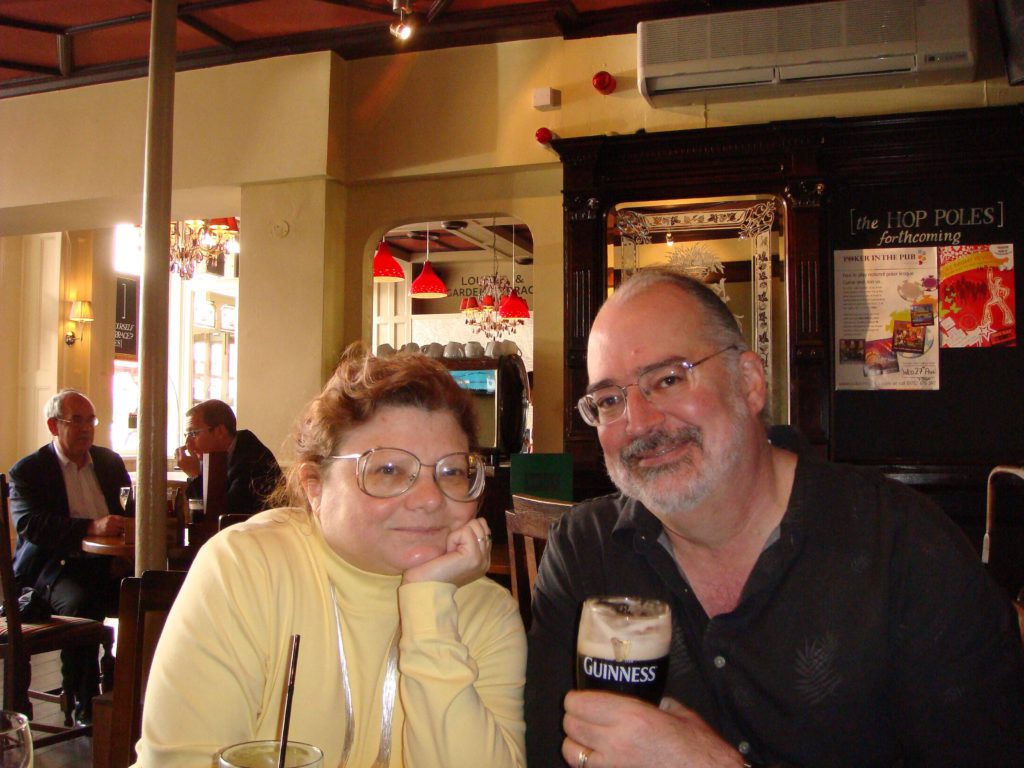
London
Dani has a bit of a cold, so we spent a lazy day in Hammersmith. Linda and I walked a couple of blocks to a pub for lunch, and then in the evening we all took the tube to see They’re Playing Our Song at the The Menier Chocolate Factory, a converted factory building in the interesting district just south of London Bridge. Linda and I saw this show with the original Broadway cast, Kevin Klein and Lucy Arnaz, when we were first married, thirty years ago, and it’s always been one of my favorites. Although it’s never been revived, we all knew the music and were anxious to see it.
The Chocolate Factory is an interesting place. You enter through a restaurant, and then negotiate a random assortment of steps, up and down, to access the theatre, an intimate space with padded bleachers that seat about 150. Despite a tepid review, the show was sold out. Most of the audience were in their sixties, and seemed to have seen the show in its original London run almost thirty years ago.
The show was performed as a period piece. I felt the material held up well, although the two leads lacked the comedic timing to make it funny. However their singing was superb, and the staging, which used the floor as a giant revolving LP, was inventive and fun. It was definitely worth the reasonable 25 pound admission price.
Back at the hotel, Linda and I had a late supper in the bar while Dani went off to bed.
Wednesday, August 13, 2008
London
We decided to skip the city tour of London and relax today so that Dani can get over her cold. It’s not like we haven’t seen St. Pauls, the changing of the guard and so on. In an effort to avoid pub food, Linda and I walked to a Thai restaurant for lunch.
On the spur of the moment, we decided to see if we could get tickets tot he new musical Zorro. Somehow we ended up in the fifth row, even though the show was sold out. It was lavishly staged, with great talent and excellent songs. Somehow it didn’t quite work for us, but it seemed fixable. And since it received four stars from virtually all of the press, and it’s sold out on a Wednesday night, it may do well. It just needs more story and a bit less Flamenco stomping, but the talent is certainly there.
Thursday, August 14, 2008
Bath, Bristol
Today we met our Globus tour group and our guide, Liz, and set out on our tour. It’s easy to see whose currencies are up and whose are down: the tour is more than half Australians and New Zealanders.
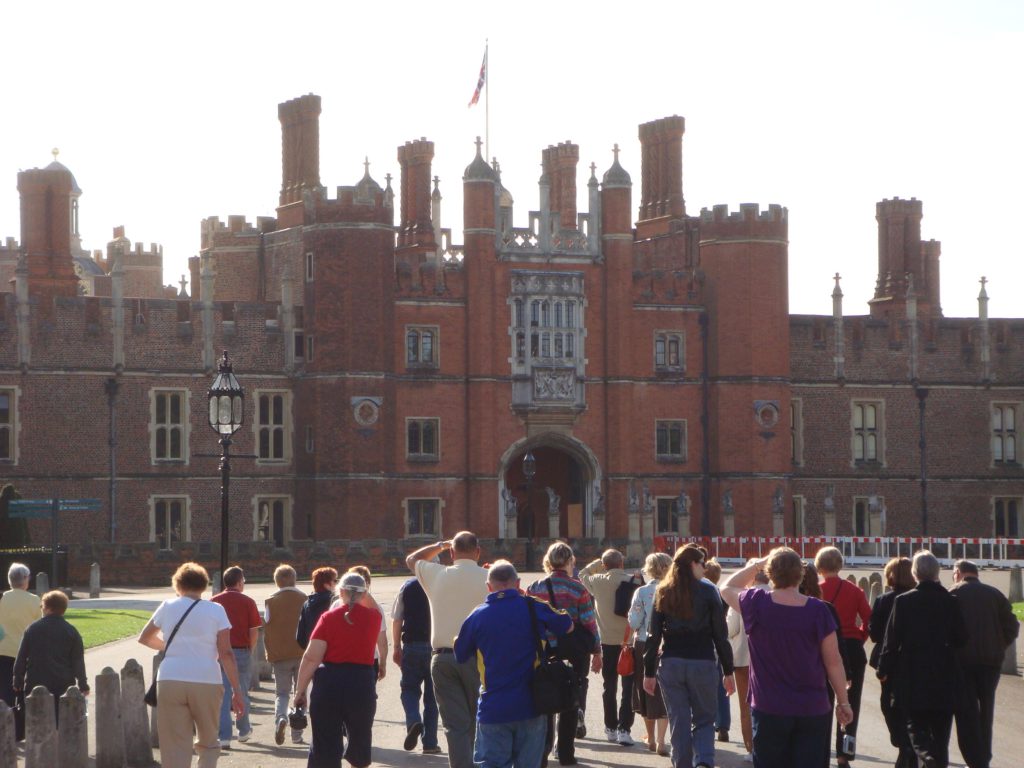
The first stop was Henry the Eighth’s old house, Hampton Court, where we walked through the gardens.
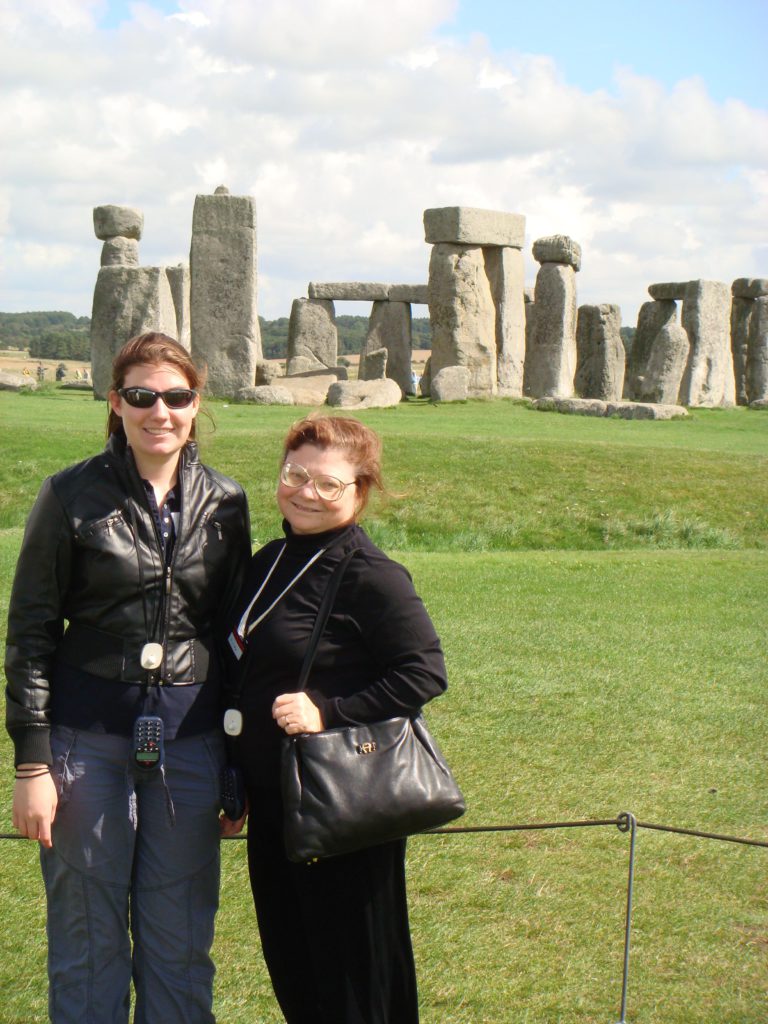
Then it was on to Stonehenge, which Linda hadn’t seen before. None of the stones had moved since our last visit.
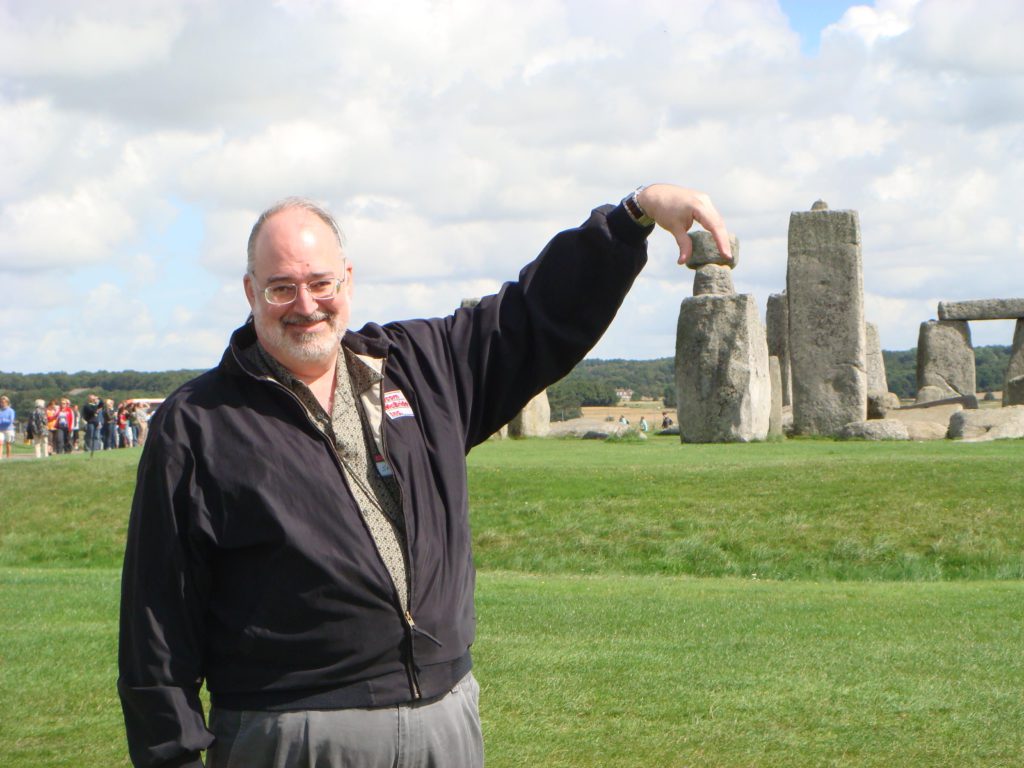
We retraced our steps to Salisbury for a mediocre pub lunch. It would have been better to simply press on the Bath, which was our next stop anyway. The Roman baths are really interesting, and we spent almost two hours on the self guided tour, leaving just enough time for some scenic portraits overlooking the Avon.
It was a short drive to Bristol, where we had a lovely room at the Jury’s hotel overlooking the water. There was a welcome dinner for the group (let’s just say it was food as only the English can prepare it), and then we called an end to a long day.
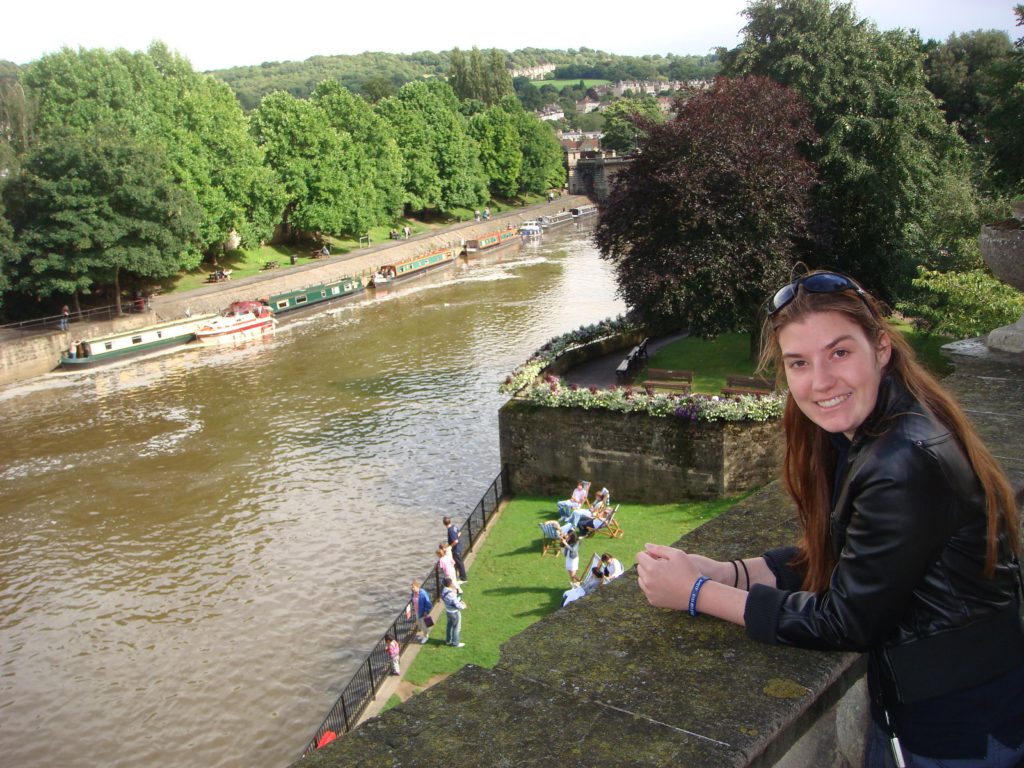
Friday, August 15, 2008
Waterford, Ireland
This morning I had lots of catching up on my online classes, and a high speed Internet line, so I skipped breakfast. We left the hotel at 8am for the drive to Cardiff and a fairly pointless stop outside the castle, plus a stroll through the mall, just like 500,000 other malls. Then we crossed into Wales. Southern Wales is a country of rolling green hills, scattered farms and villages, and many cows.
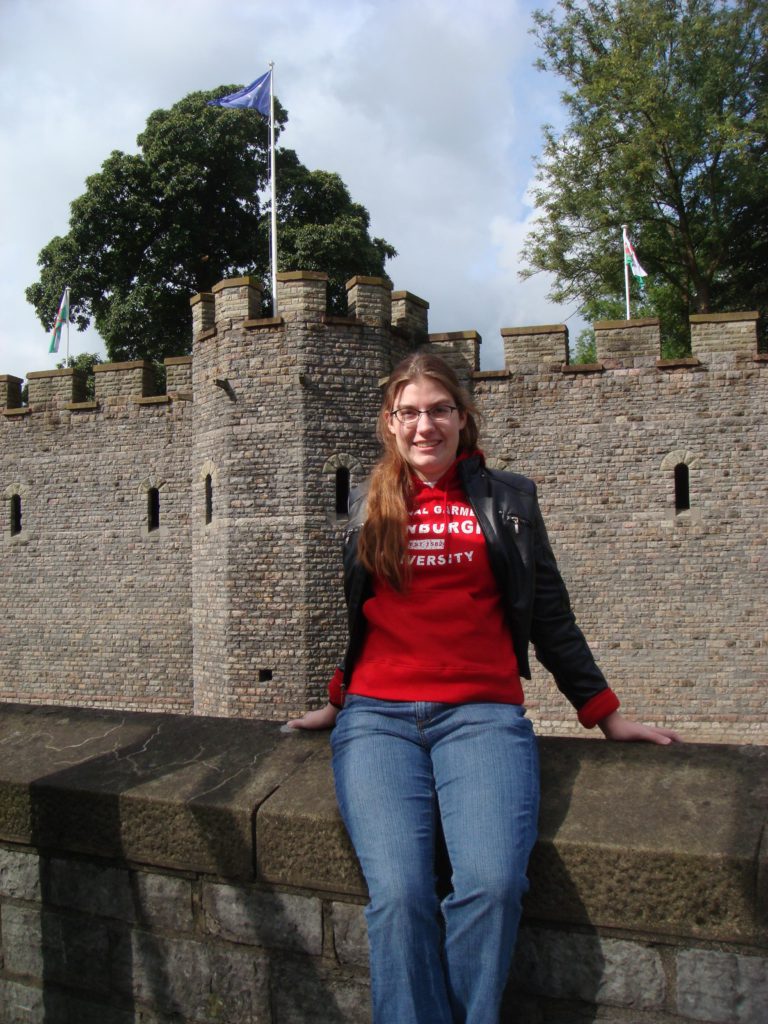
Gaelic is the official second language of Wales. Although we didn’t hear it spoken, the government certainly is promoting it, with mandatory education. It’s also a second language on all the highway signs. Its absence from all commercial signs and billboards is telling, though.
After a long drive and a snack at a rest stop we finally arrived on the western coast town of Fishguard where the entire tour bus drove onto the ferry. The crossing was calm, and we spent the time in the sports bar ignoring the Summer Olympics. Dani has started work on a second novel, now that she’s finished The Last Telepath. In just a few hours she’s almost finished structuring it, defining characters and writing her outline.
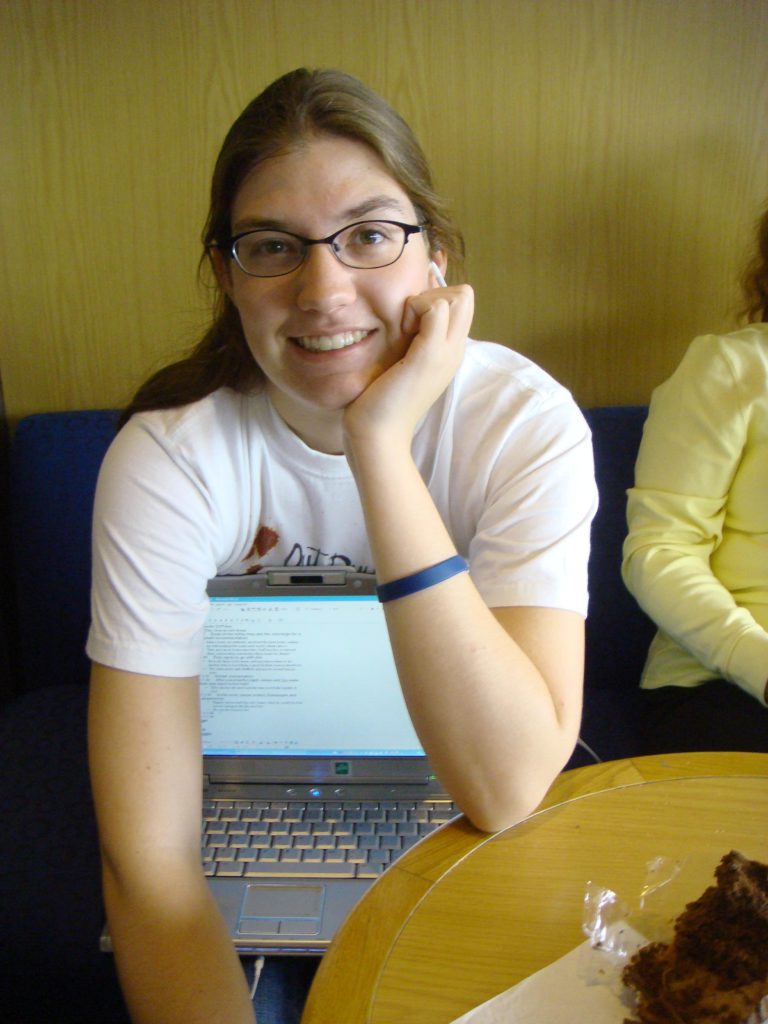
Three and a half hours later we drove off the ferry in Rosslare on the southeast coast of Ireland. Ireland is a country of rolling green hills, scattered farms and villages, and many cows.
An hour’s drive brought us to the city of Waterford, Ireland’s fourth largest. Our hotel is the somewhat seedy Tower, although our room is spacious by European standards and overlooks the river Suir (pronounced ‘shus,’ not ‘sever’) and the historic Tower for which the hotel is named. (Gaelic is also prevalent in Ireland. ) Dinner was decent, and we made it an early night after a long day of driving and many cows.
Saturday, August 16, 2008
Waterford Factory and Blarney
We set out on a rainy morning for the nearby Waterford Crystal Factory. Having visited artisan glass works in Oslo and Venice, I was expecting more artists and less factory, but Waterford is indeed a factory. Although there are artists there who do custom engraving, most of the 700 workers are dedicated to churning out the stuff you see in department stores, which looks clunky and dated compared to the fine art of, say, Murano glass.
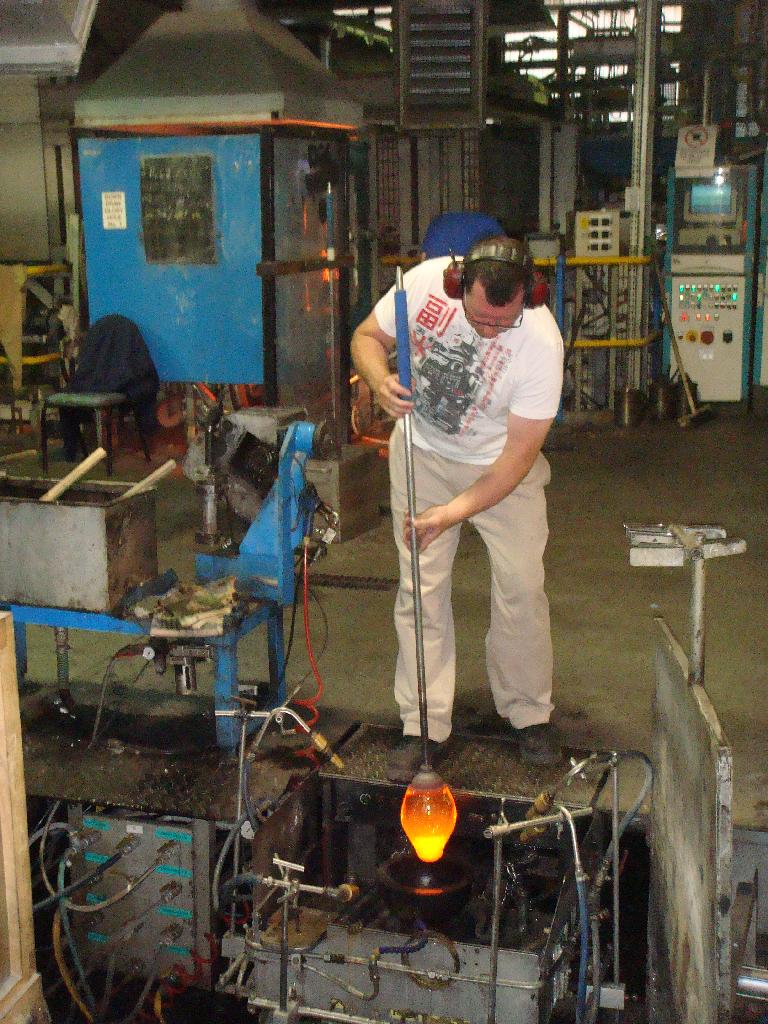
We then had a long drive through a country of rolling green hills, scattered farms and villages, and many wet cows. Reaching the west coast, we passed through Cork, Ireland’s second largest city, and on to Blarney Castle.
We were lucky, and the rain abated for our exploration of Blarney castle, where Dani enjoyed exploring the twisty stone stairways, cramped tunnels and caves. At the top of the six story climb she leaned out over the parapet backwards and kissed the Blarney stone, which is supposed to impart the gift of eloquence.
Afterwards we had lunch in the nearby pub and then drove on to Killarney in County Kerry, and an afternoon check in at the Scotts Hotel. There are many, many towns in Ireland that start with ‘kill’ because the Gaelic word for church is ‘cil. ‘
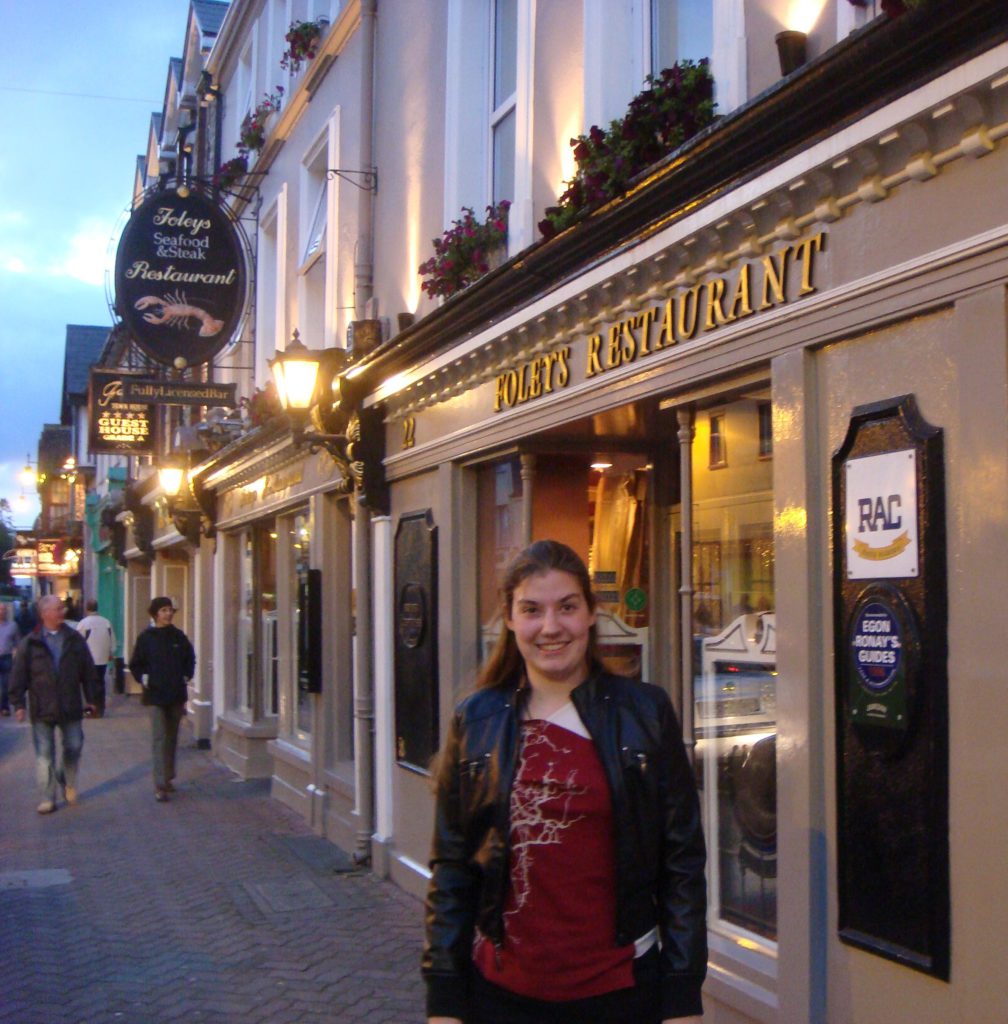
Much of our tour group went to an evening folklore event, but we’ve learned over the years that we’re allergic to contrived revelry, so we walked to Foley’s, a nice fish restaurant a few blocks away. In fact, we’re skipping all the optional excursions on this trip except for a tour of the royal yacht in Edinburgh.
Sunday, August 17, 2008
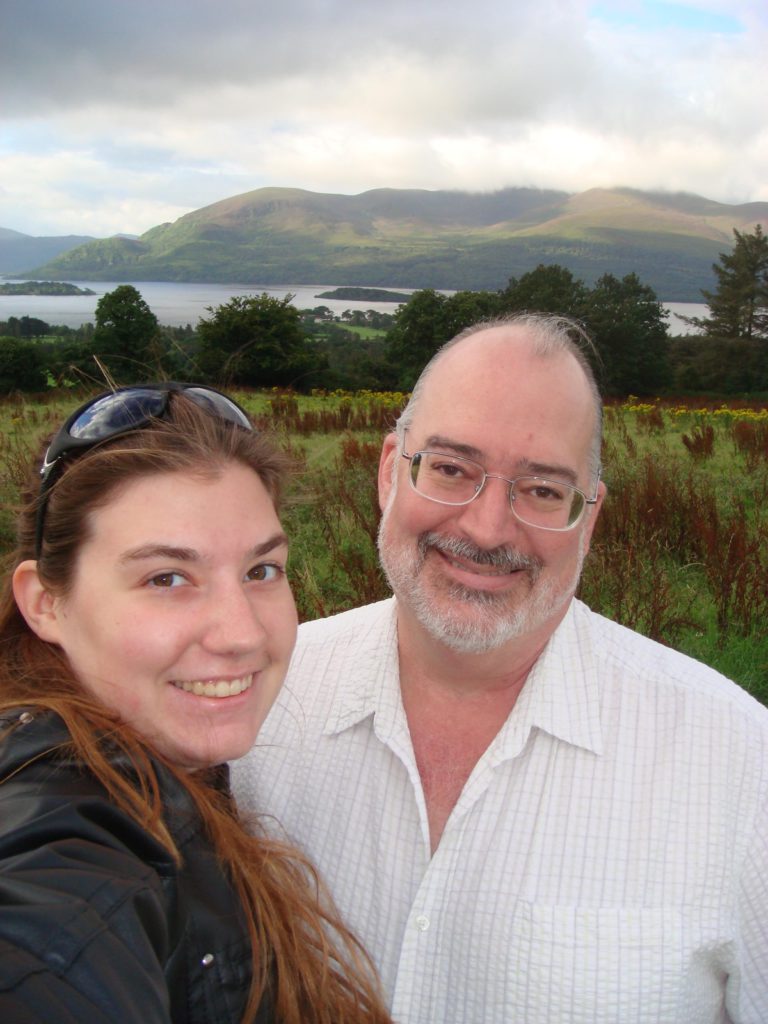
Killarney
Linda has Dani’s cold, so she opted to rest today. Our group set out on an approximately 100 mile loop called the Ring of Kerry, which circles County Kerry. The weather cooperated at first, and we got some nice vistas of lakes, mountains and rivers. But by 11am rain and mist had settled in.
The sheep didn’t mind. We passed thousands of them. Most looked a bit odd, because they’ve been spray pained with red or green markings to indicate ownership and parentage. We also passed several bogs, and saw peat that had been cut and stacked to dry.
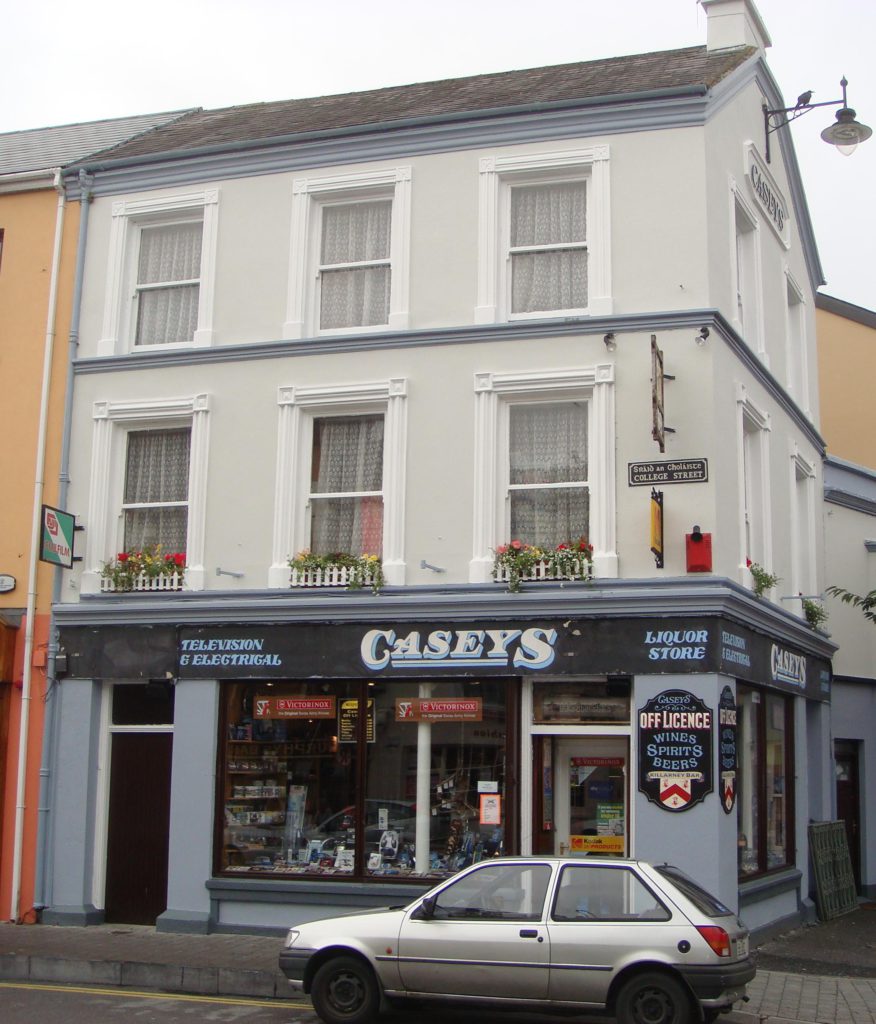
After an ill-conceived lunch stop at a village with no open restaurants, we continued on to “the best view in Ireland,” which today consisted of a post shrouded in fog. Allegedly there was sea, peninsulas and islands somewhere out there. The drive back to Killarney was through much rockier terrain, as the road twisted down the mountains (at 3000 feet, the tallest in Ireland) and through the national park, where there were many scenic views of rivers, fairly large pines and oaks, and three large lakes.
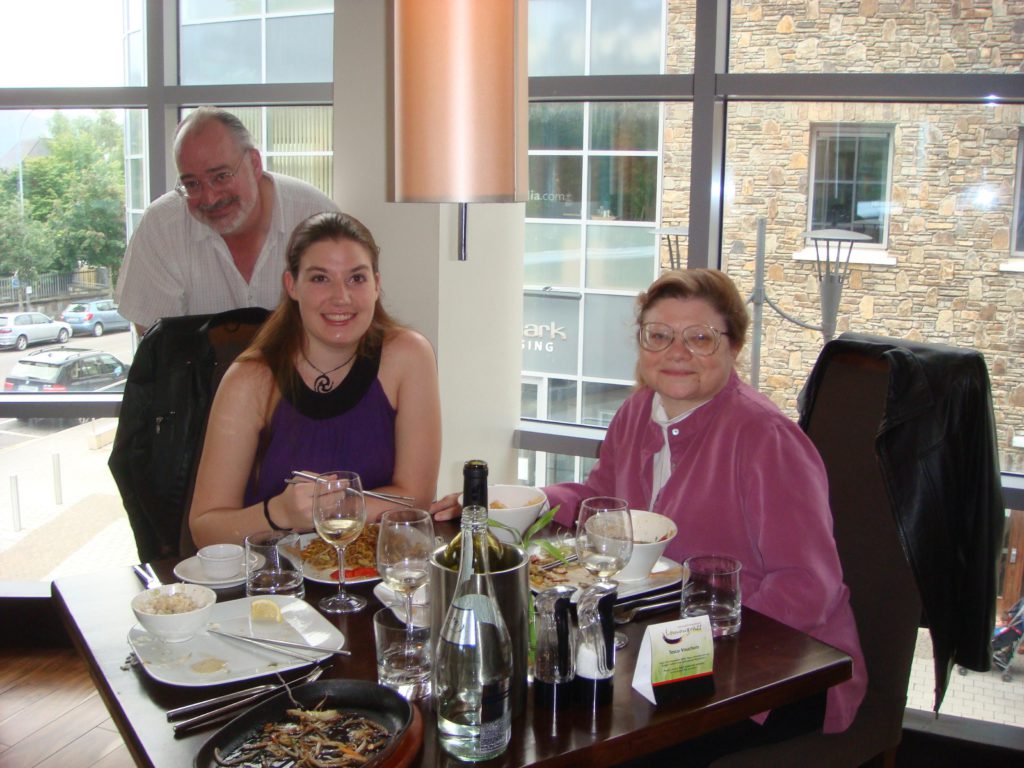
We had a delicious dinner at a restaurant upstairs next to the hotel. It was called Lemon Grass, and offered a fusion of different Asian cuisines. My sushi appetizer was some of the best sushi I’ve ever had.
Monday, August 18, 2008
Limerick, Tiperary and Dublin
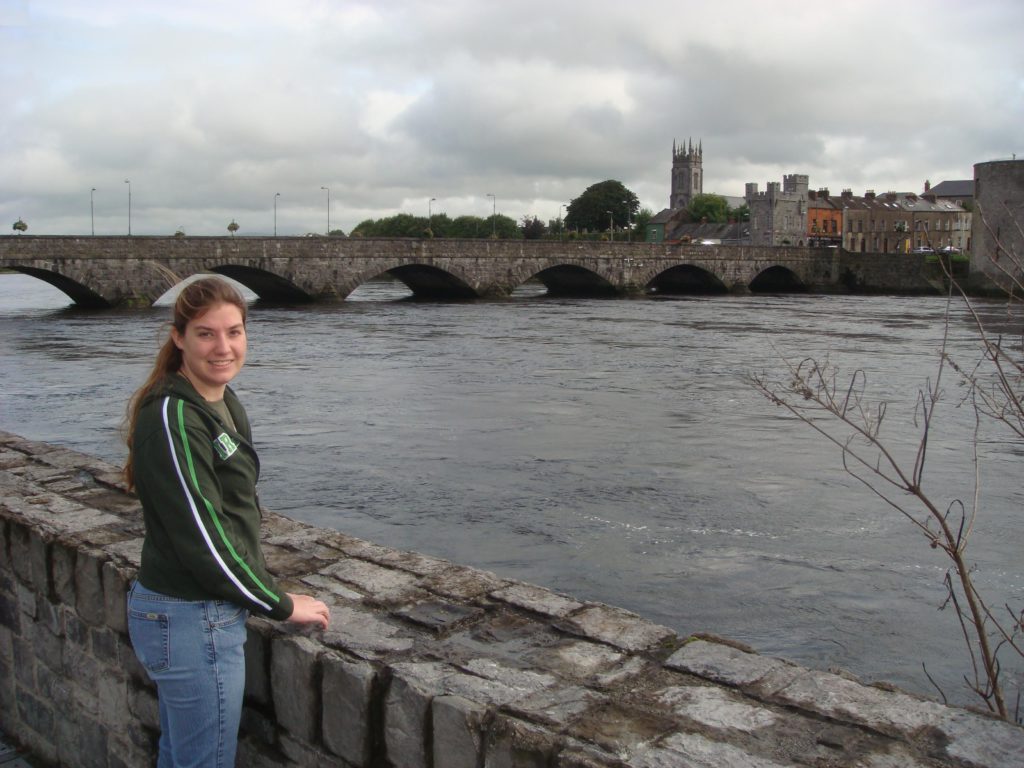
Today we drove across Ireland, from Killarney to Dublin, in just a few hours. It was another wet day. This is the wettest summer in Ireland, perhaps ever, and there were signs of flooding in several spots, and many swollen rivers. Last Saturday alone they got a whole month’s rainfall in a couple of hours.
We drove through Tiperary and Limerick (yes, there really are such places), and watched the names on the businesses alternate between all the cliche Irish names you’ve ever hear.
After another annoying lunch stop in a town with no open restaurants we drove on to the Irish National Stud, where we learned about thoroughbred racecourses and the economics of breeding them. A few of the random things I learned:
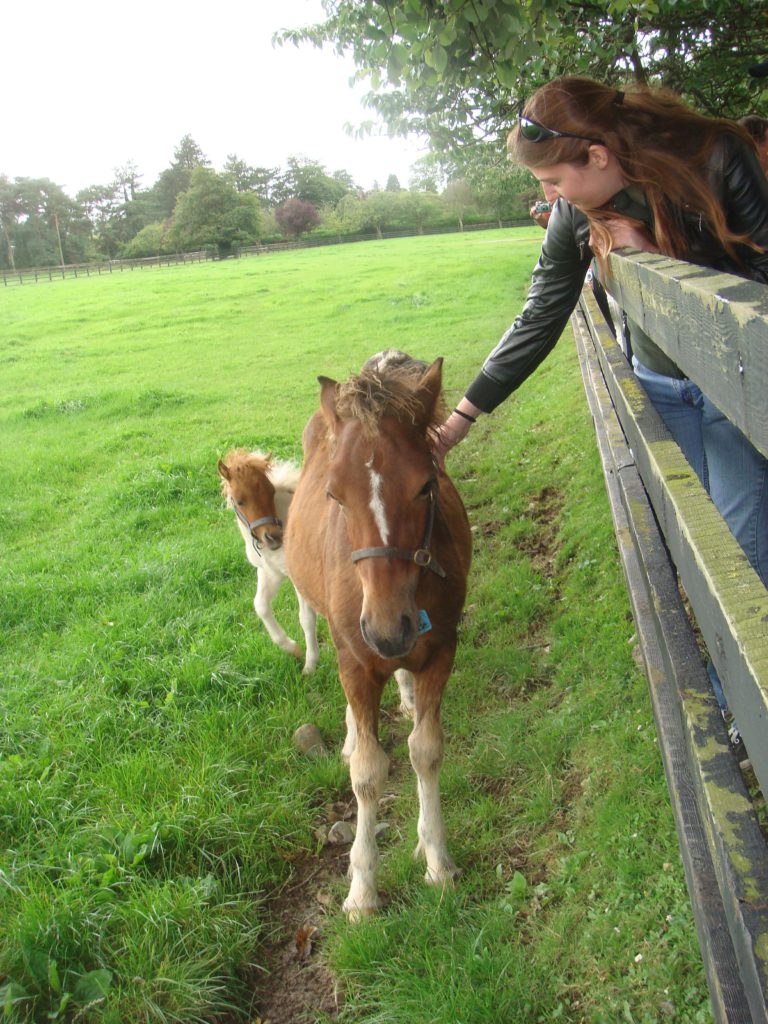
All horses change age on January 1st, so if you’re racing, say, two year olds, the could b anywhere from 731 to 1094 days old. So it’s a big advantage for your horse to be born right after the first of the year. As a result, they breed the horses in the first quarter, they foal in January, and then immediately are impregnated again.
Artificial insemination is not allowed. A stud will impregnate up to 190 different mares during the three month season.
One of the studs we saw has sired so many winners that his stud fee is $75,000. This is payable if the mare is pregnant on October 1. That particular stud was worth $60 Million, because he has about 15 years of service left.
As we drove on into Dublin we reached the first road that could be called a highway, with three lanes in each direction. Almost the entire rest of the country has been narrow two lane roads.
Ireland is definitely not the backward country it once was. In fact, it has been enjoying a real economic boom the past decade. This really started with the move into technology in the 1970s. In fact, after centuries of emigration, Irelands population is now growing through immigration, and is about 10% recent Polish arrivals!
The Hilton Dublin Kilmainham is a nice, modern hotel, with much better furnishings than most Hiltons. It’s across the street from the prison where the Irish rebels were executed in 1916, but it’s far from city centre.
It was really raining hard in the evening, so we had dinner at the hotel’s Cinnamon restaurant, which was surprisingly good.
Tuesday, August 19, 2008
Dublin
This morning we drove around the centre of Dublin. We had a different driver, as Bob was required by European driving laws to take the day off. Our replacement driver didn’t really have any experience with a manual transmission coach, so it was an interesting ride. The weather continues to be intermittently drizzly.
Dublin is a modification of Gaelic words that mean ‘black pool’. Dublin seems to be the only real ‘city’ in Ireland, as it looks typically European, and everywhere else we’ve been has been more along the lines of a village.
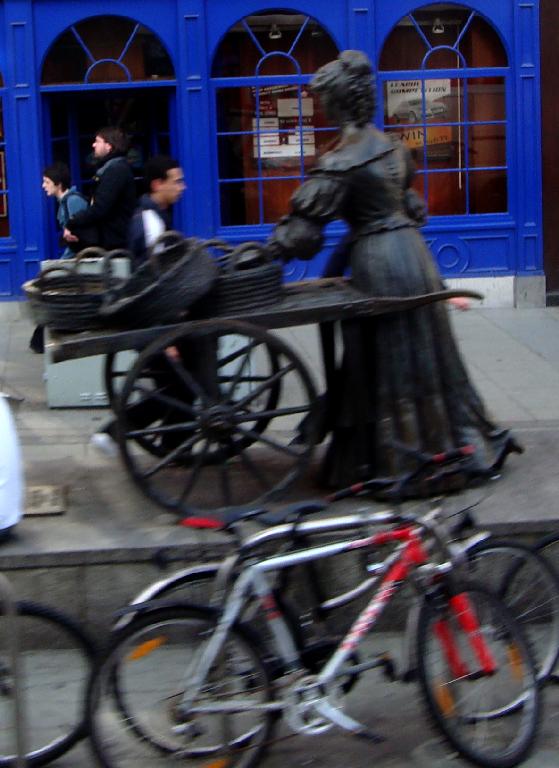
We visited a number of areas including statue-lined O’Connell Street, a couple of Georgian squares, St. Patrick’s Cathedral and Trinity College, where we saw the 1,200-year-old Book of Kells and the Old Library. We then walked into the Grafton Street shopping district and found a tiny basement wine bar and French restaurant called called La Cave, where we had a nice traditional French lunch.
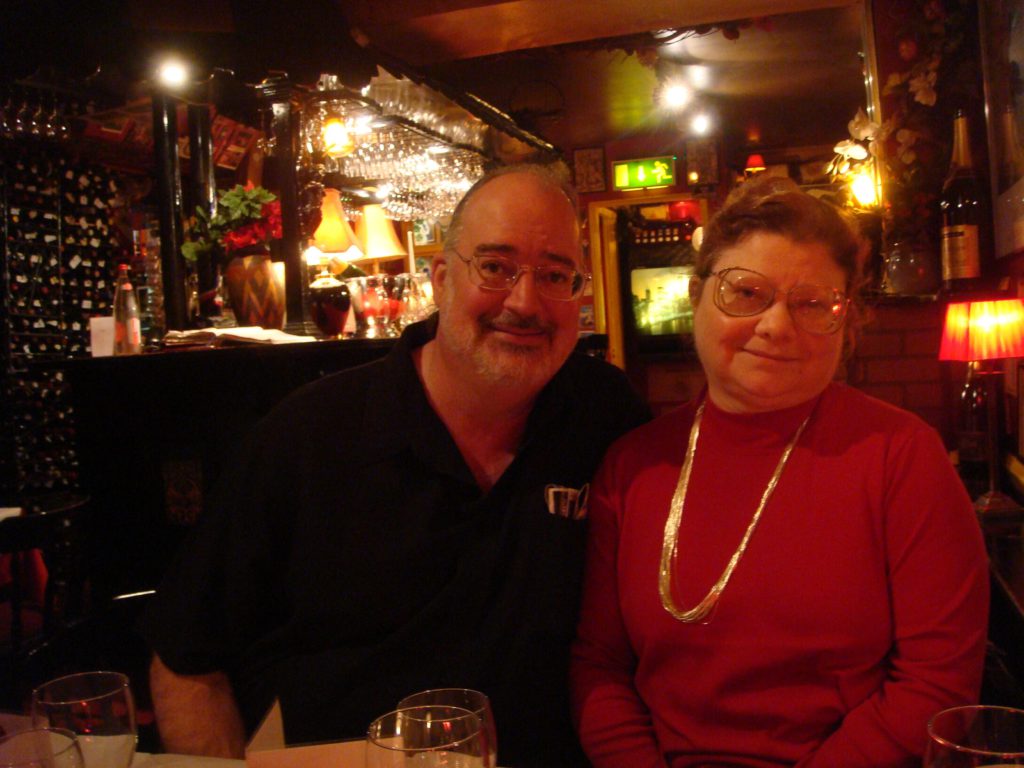
We returned to the hotel for the afternoon and relaxed, then walked to a nearby Italian restaurant, La Dolce Vita, for dinner.
Wednesday, August 20, 2008
Chester, England
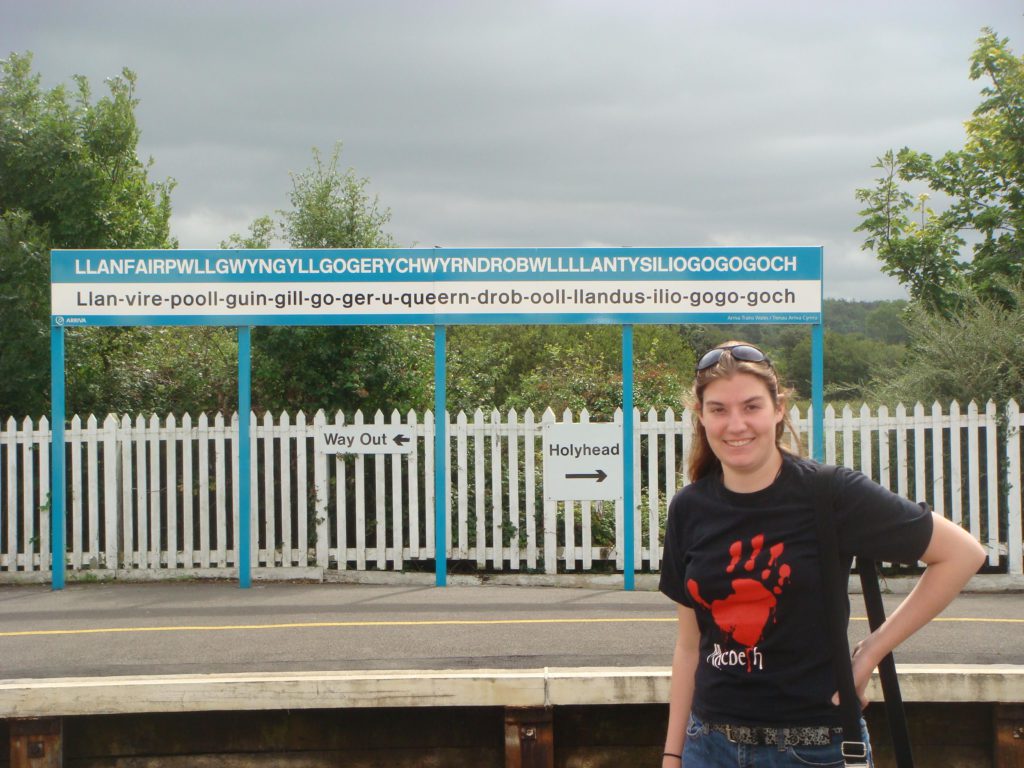
We took a high speed ferry back across the Irish Sea from Dun Laoghaire to Holyhead on the Welsh Isle of Anglesey. This ship was a catamaran design, and made the crossing at a top speed of 40 knots, taking only two hours. Our first stop was at Llanfair(. . . ), a town that is a tourist attraction simply because its name contains 58 characters!
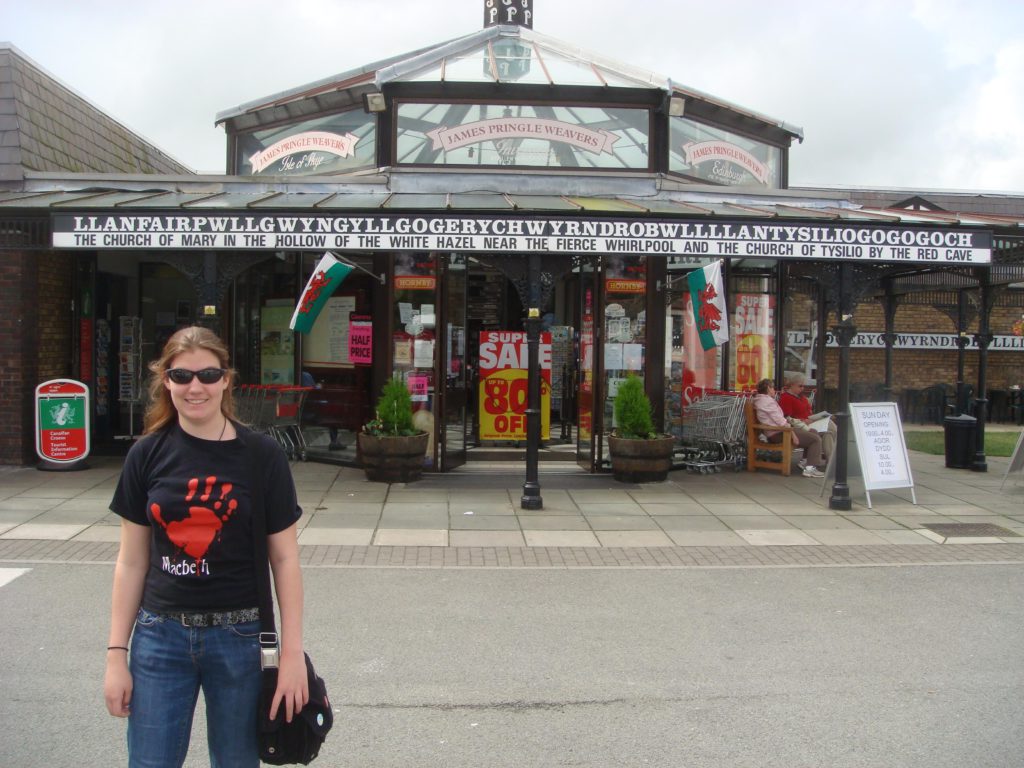
We drove along the scenic North Wales coast past abandoned shale mine, and rocky beaches. Its much more rugged than Southern Wales. Just across the boarder in England the Welsh disappeared from the highway signs. We stopped for a walk around Chester, a charming medieval walled city with some Roman remains, and many black and white halftimbered buildings. An unusual feature of the main street is the two-tiered arcades called the “Rows. “
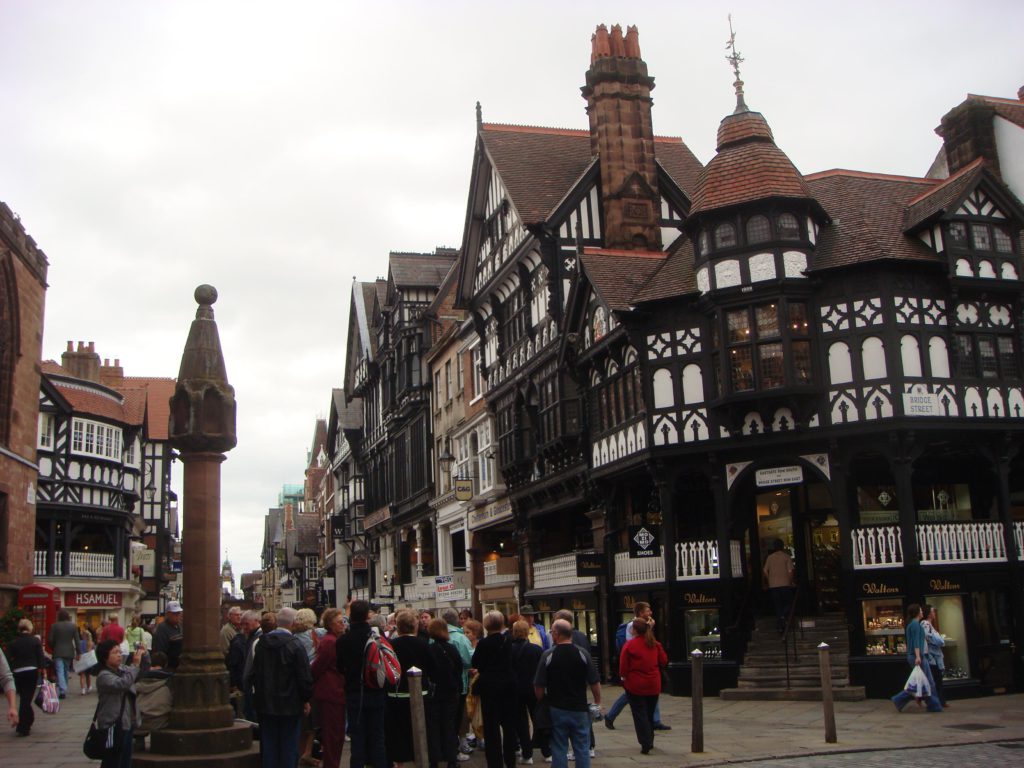
We spent the night back in Wales at St. David’s Park, a nice hotel. The power to the whole area went out for a couple of hours just after we checked in, but the hotel rose to the occasion and catered sandwiches in the bar on the spur of the moment and it was really a fun evening.
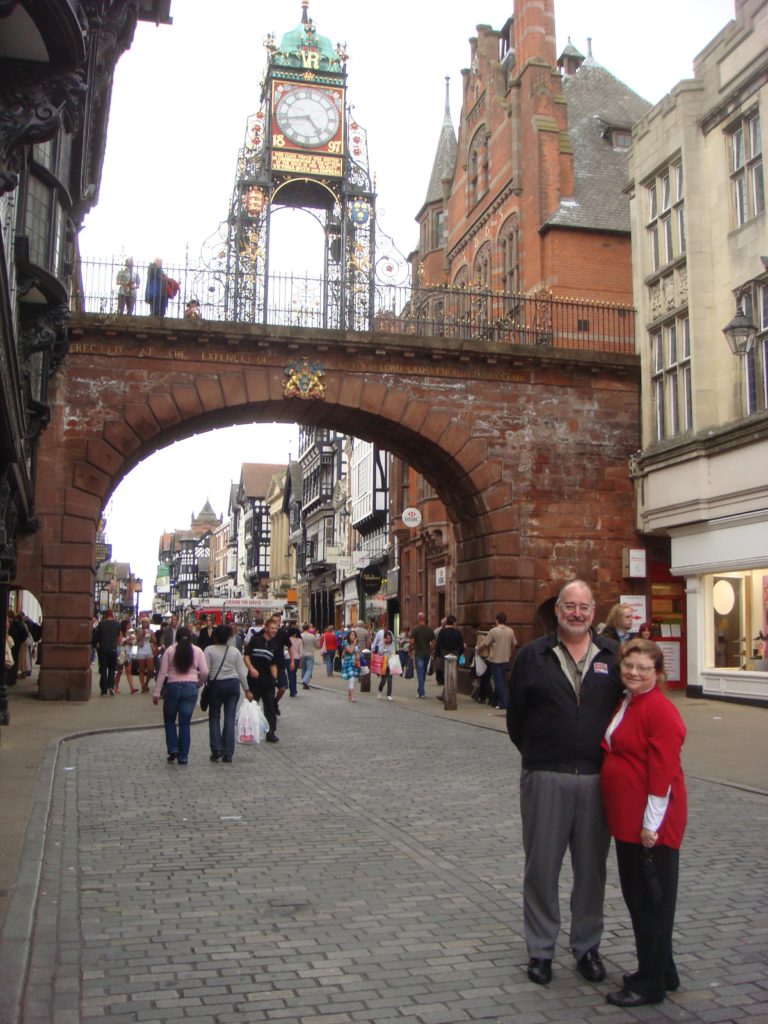
Linda is recovering from her cold, but I have it now, hopefully not for long.
Thursday, August 21, 2008
Lake District, Edinburgh
We took a beautiful drive through the Lake District, where we cruised for a half hour on Lake Windermere, namesake of our hometown. The town and surrounding hills are much more scenic than our own, with forested slopes and quaint stone buildings. In Grasmere we dodged rain and had a quick lunch, then returned to the motorway for the drive into Scotland. Just across the border we stopped at Gretna Green, where the blacksmith used to wed runaway couples. The scenery became progressively more beautiful as we made our way through the Lowland Hills to Edinburgh.
The Edinburgh Thistle is conveniently right across the street from the Balmoral, so it was easy to walk across for our dinner at Number One, which was superb, and virtually identical to our previous visit. They treated us like old friends.
Friday, August 22, 2008
Edinburgh
Dani and I skipped the morning city tour but Linda went with the local guide on a visit to Edinburgh Castle and Holyrood Palace, both of which she enjoyed.
Dani and I had a walk down pedestrian Rose Street, and lunch at a Thai place.
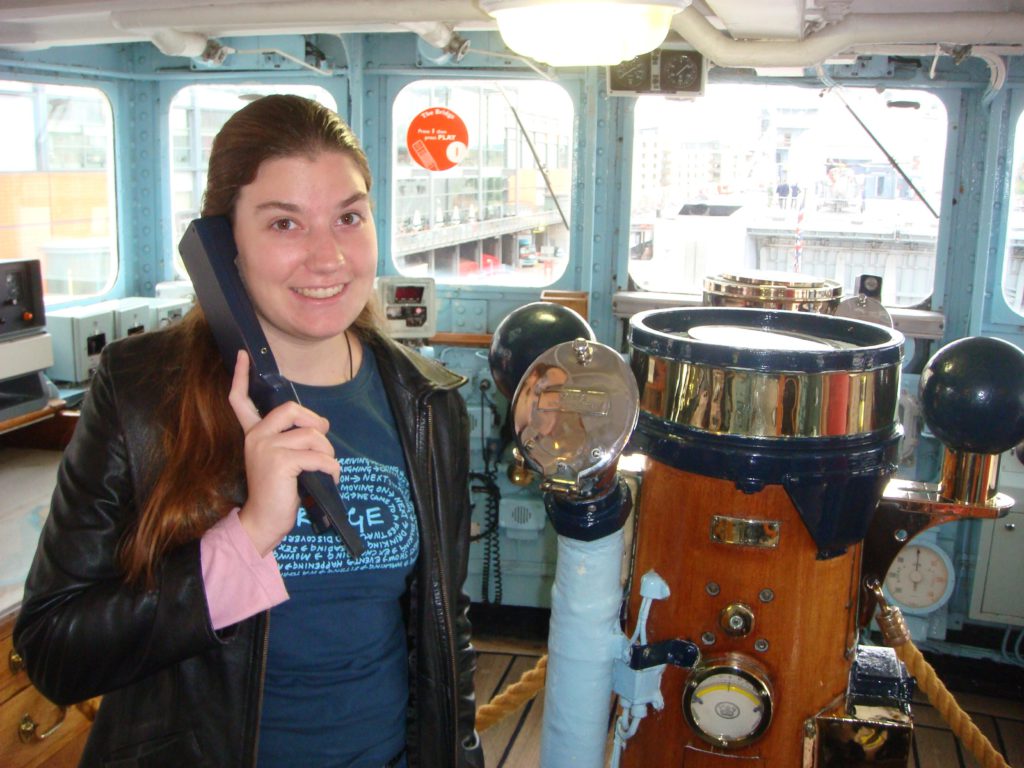
Then we caught our only optional tour of the trip, a visit to the retired royal yacht Britannia, which was very well done. It was followed by a group dinner at a hotel on the Grass Market and a climb up the steps to the castle to see the ‘Tattoo,’ a marching band and bagpipe show that was much better than I was expecting. We were only briefly rained on during the show, and we were squeezed in so tightly there was no place for the water to go.
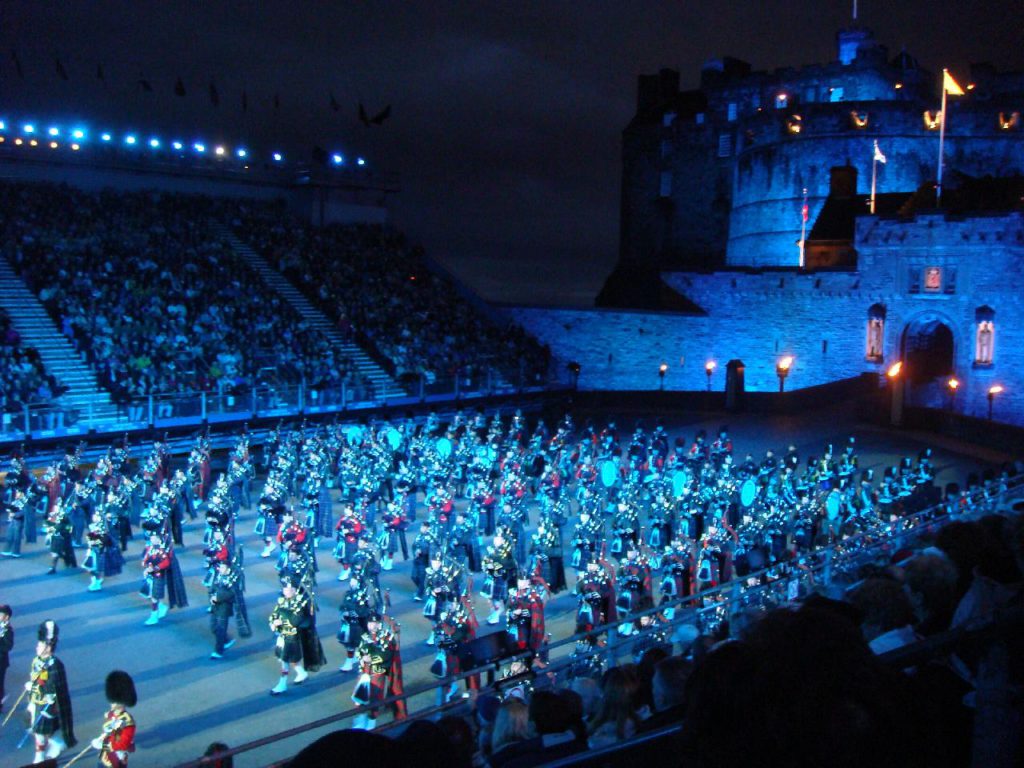
It was dry for the walk back to the hotel.
Saturday, August 23, 2008
York
For the first time in a month IT DIDN’T RAIN TODAY! This has been the wettest August in UK history.
Our drive southward began with a stop at Floors Castle, an enormous house that is still lived in seasonally by the family of the Duke and Duchess of Roxburghe. It’s how the other 0. 000001% live. Their backyard is about 65,000 acres.
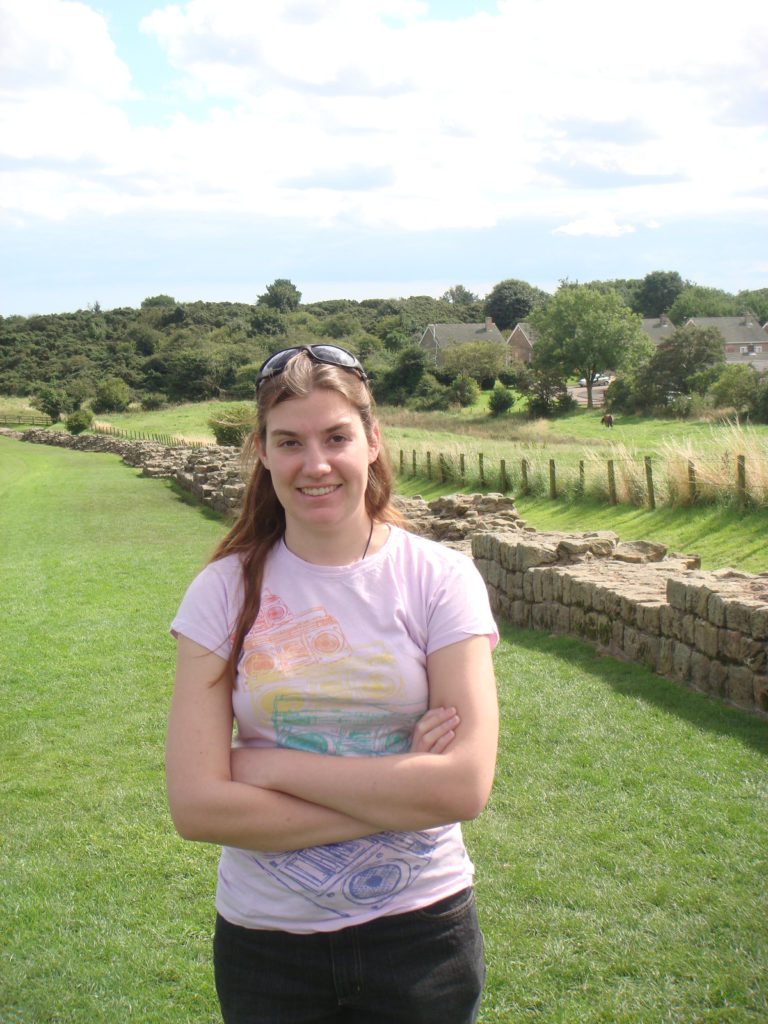
W drove past the abbey ruins at Jedburgh and the house of Mary, Queen of Scots, and stopped near a section of Hadrian’s Wall, the Roman coast-to-coast defense against marauding northern tribes. It used to be 75 miles long and 15 feet high, but this fragment wouldn’t keep a sheep out.
Lunch was another ill-planned affair at a rest stop.
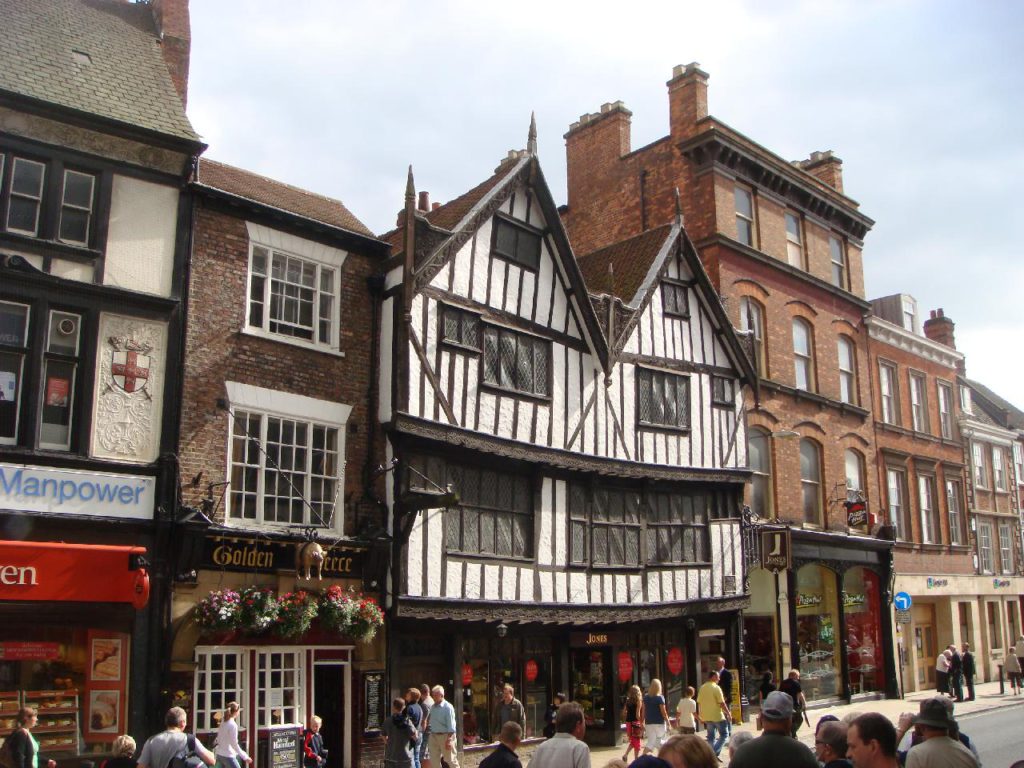
York is England’s most complete medieval city. It’s surrounded by its original wall, and it’s crammed higgledy-piggledy with oddly constructed buildings of all types, leaning and packed together at crazy angles. The main street used to be lined with butcher shops, and you can see the gutters designed for the blood to run down. Of course, now every building is a Starbucks, but the ambience is neat.
We stayed at the York Ramada, which is fairly nice, and had a decent group dinner.
Sunday, August 24, 2008
Stratford-upon-Avon
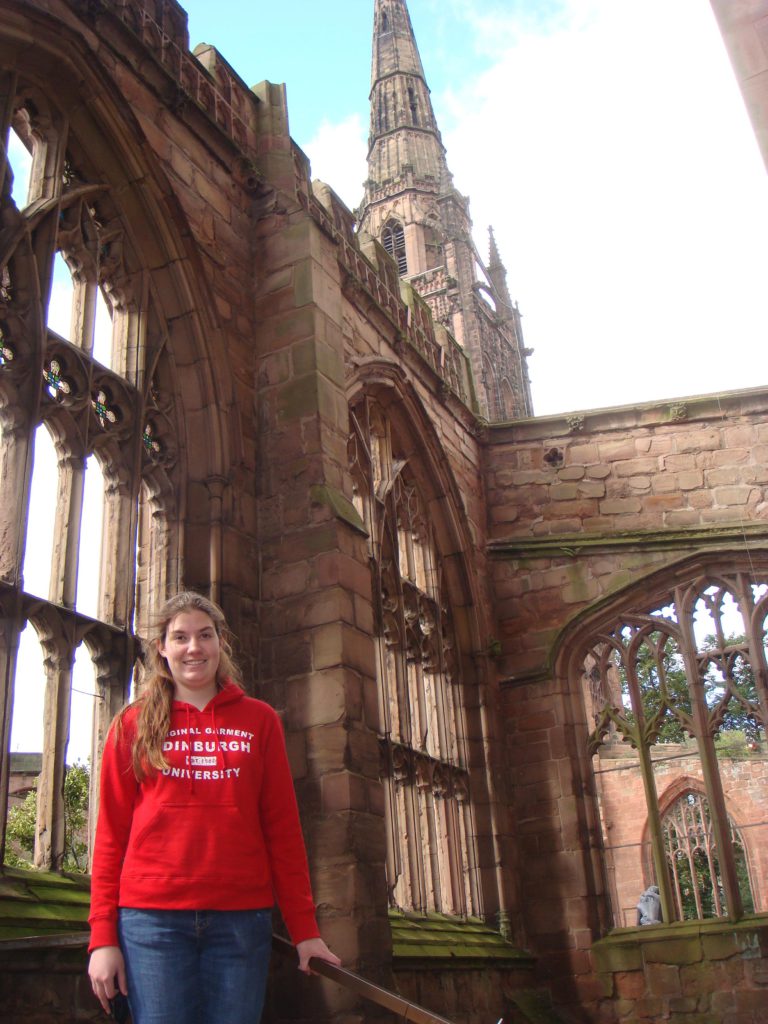
Another almost rain-free day. We drove past Robin Hood’s Sherwood Forest on the way to Coventry, where the ruins of the original cathedral were of some interest to Dani and me, because they feature in one of our favorite books, To Say Nothing Of The Dog by Connie Willis. The city was bombed in World War II and the cathedral burned. Iron girders, installed in the late 19th century melted in the heat and pulled down the upper part of the structure. Most of the stone walls, and even some of the stained glass survives. The ruin was left in place, and a new cathedral built next to it. An ironic aspect to the story is that the British had broken the German code, and knew the city was to be bombed, but could do nothing about it without giving away their secret.
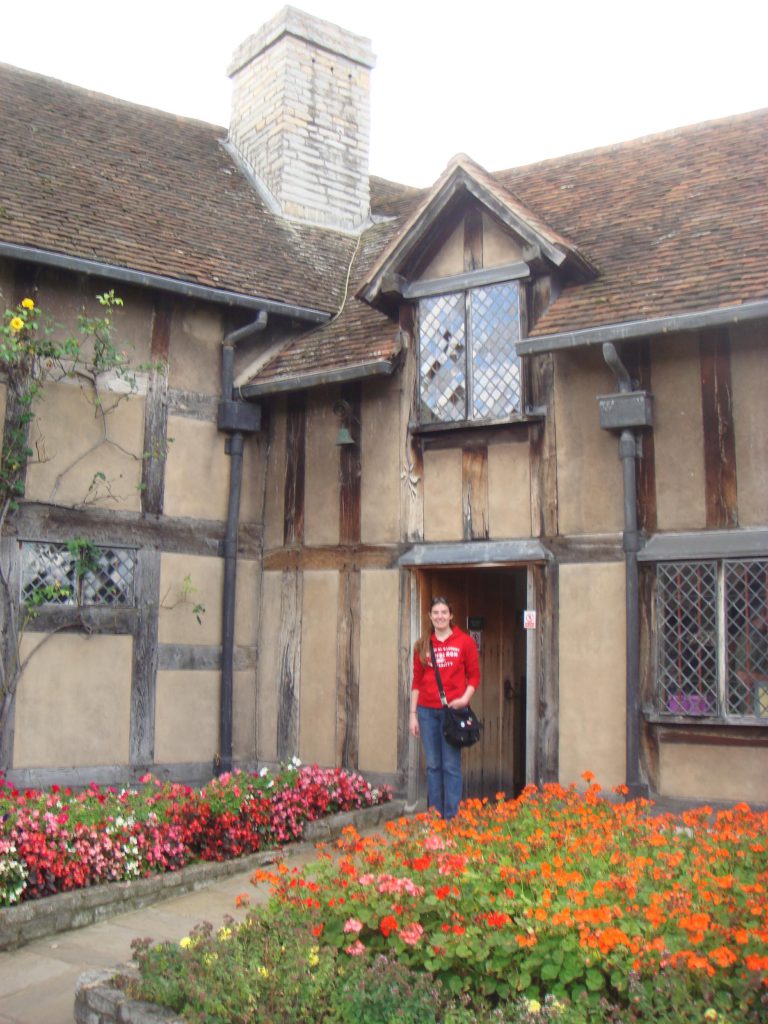
We stopped briefly for a photo in front of the thatched roof cottage where Shakespeare’s wife, Ann Hathaway, lived, then drove on to Stratford-upon- Avon, where Dani was fascinated by a tour of Shakespeare’s birthplace.
We spent the night at the very conveniently located Holiday Inn, which is right next to the Royal Shakespeare Theatre. Had we known, we should have booked tickets.
Monday, August 25, 2008
London
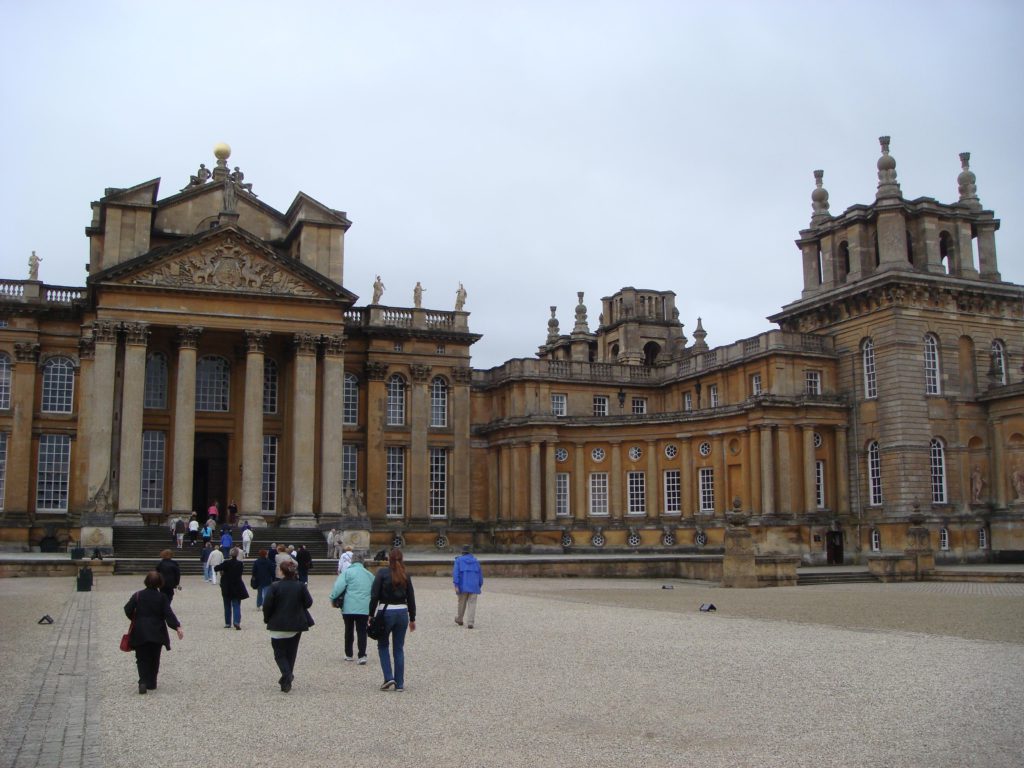
It’s less than a three hour drive from Stratford to London. Along the way we stopped at spectacular Blenheim Palace, home of the 11th Duke of Marlborough and birthplace of Sir Winston Churchill. It was built by John Churchill, the first Duke of Marlborough, a man with an ego even bigger than the palace. It’s filled with tapestries he had mad commemorating his victory over the French in the War of the Spanish Succession. That’s why Queen Anne gave him the property, although she refused to give him the 60,000 pounds of cost overruns on his palace.
It was saved from ruin in the late 19th century by the 9th Duke’s loveless marriage to American railroad heiress and renowned beauty Consuelo Vanderbilt.
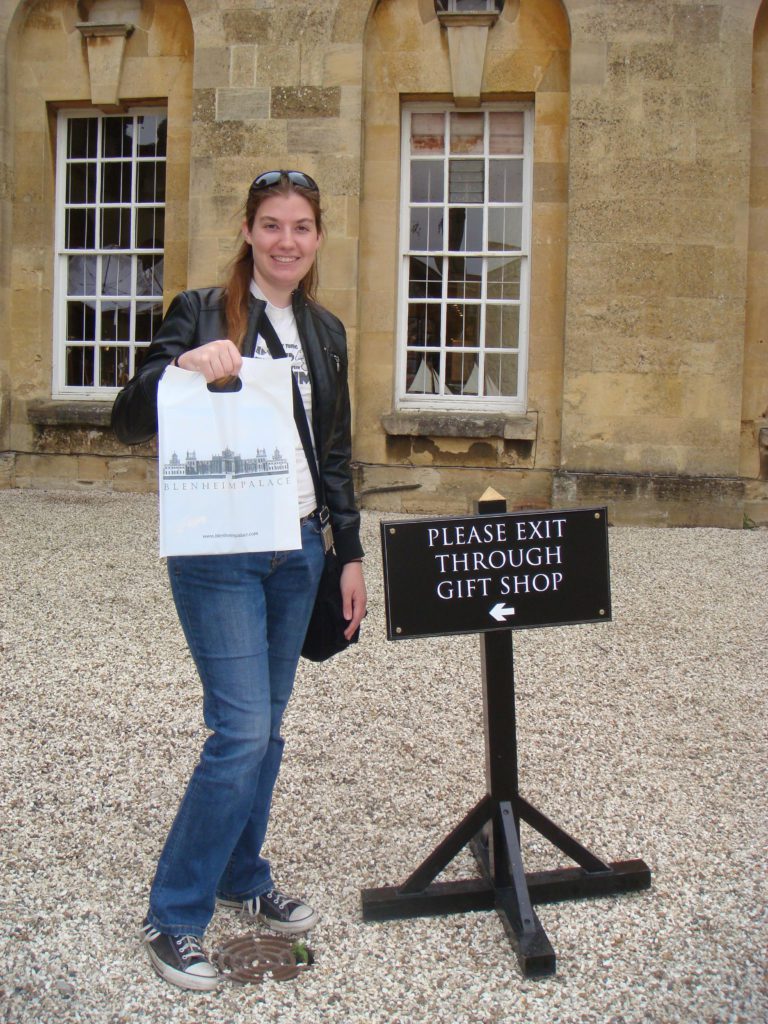
We arrived at the Hilton London Metropole at 2pm. It’s a comfortable and well located hotel where we’ve stayed several times before.
For dinner, Linda picked a fantastic restaurant, Zaika, on Kensington High Street. We had a nine-course tasting menu with an Indian slant, and some interesting matching wines.
Tuesday, August 26, 2008
London
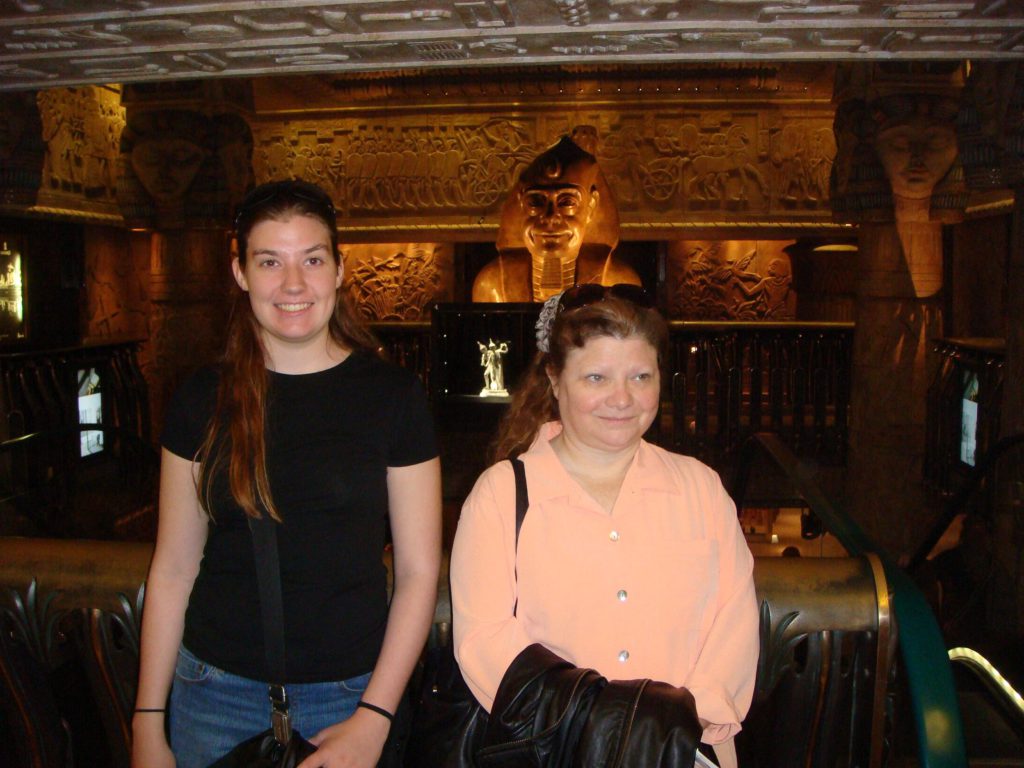
We took advantage of our first chance to sleep in for two weeks. Then we spent the afternoon at Harrods. where we had a very overpriced sushi lunch and a late afternoon tea at LaDuree, which was good, but not as good as the Paris original.
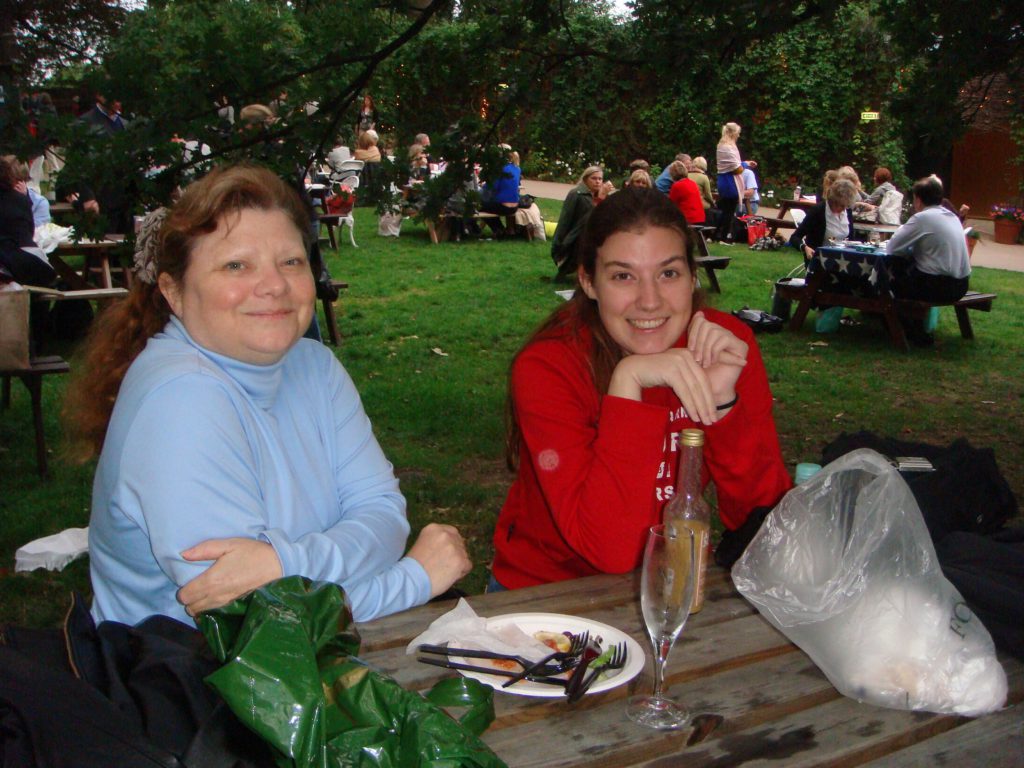
After a convoluted tube ride back to the hotel due to a rush hour closure, we made our way to the Open Air Theatre in Regents Park for its wonderful ambience and a fabulous production of Gigi, starring Topol and the lead we saw last year in Mary Poppins. It was terrific, and we were in the front row, almost close enough to touch the actors.
Then it was back to the hotel for packing and a short sleep.
Wednesday, August 27, 2008
London to Orlando
It takes a long time to get to Gatwick from London, so er were up at 5:30 for an 11:100 flight, and a five hour layover in Atlanta (a good thing, since it took an hour to get the bags) meant we didn’t arrive until 10pm. It was nice of Chastity to pick our remains up at the airport and rive us home for a long rest.
Thoughts About The Trip
I have mixed feelings about this trip. It was impacted by rain almost every day, but on the other hand, we were lucky, and were rarely out in it. On the third hand, it limited what we chose to do and see, especially in Ireland.
I was disappointed in Ireland. It’s a beautiful, green country that is much less developed than the rest of Europe, and it is enjoying an economic boom. But there were few ‘show stoppers’ in the week we spent there. Blarney Castle near Killarney was neat, and Dublin seems a nice city — the only city, really.
On the other hand, I loved Edinburgh. Even without the Fringe, it would be a great place to visit. It’s a great mix of new and old, and Scotland is geographically more diverse than the rest of the UK.
York might be a good stop for a couple of nights. It’s historical buildings are neat, but it’s basically a giant tourist mall.
Wales was just a place to drive through.
London, as always, was a mixed bag. It’s a great city to get around in via the tube. And with over 300 shows running every night, it’s a theatre lovers dream.
Food-wise, the UK is very odd. The vast majority of food is simply awful. And yet there are some amazing culinary treats, if you take the time to search them out, and are willing to pay for them.
And paying for them is a big part of the problem. All the prices looked reasonable — if only that pound sign were a dollar sign! But at worse than a two to one exchange rate, doing anything in the UK is very, very expensive. So while the tour, with its many included meals, was a good deal, nothing else was.
Finally, as we’ve noted in past years, this trip was a bit too long, especially for Dani, who was away for more than a month. The solution might be to bite the bullet on airfare using direct flights from Orlando, which make it easier to go more often for shorter periods.
The bottom line is that for those looking to explore the British Isles I think I’d look at a cruise, or just a Killarney/Edinburgh/London trip.
Handy Travel Packing List
Books Camera, interface cable, charger Clothes, short and long sleeved Dress Clothes, Sport coat & Tie Ear Plugs Electrical adapters, Extension cord Euros Folding Tote bag Guidebooks, Pocket Maps Hat Laptop, Ethernet cable, Broadband modem Mini London Map Microphone New shoes Passports, Travel Docs, Theatre Tickets Phone/iPod & charger Purell Robe Shoulder bag Sunglasses Sunscreen Toiletries Umbrella Vitamins, Medicine, Coldeez, Advil Warm Jacket Ziploc bags
Caribbean 2008
Miami • Aruba • Panama Canal • Limón, Costa Rica • Grand Cayman
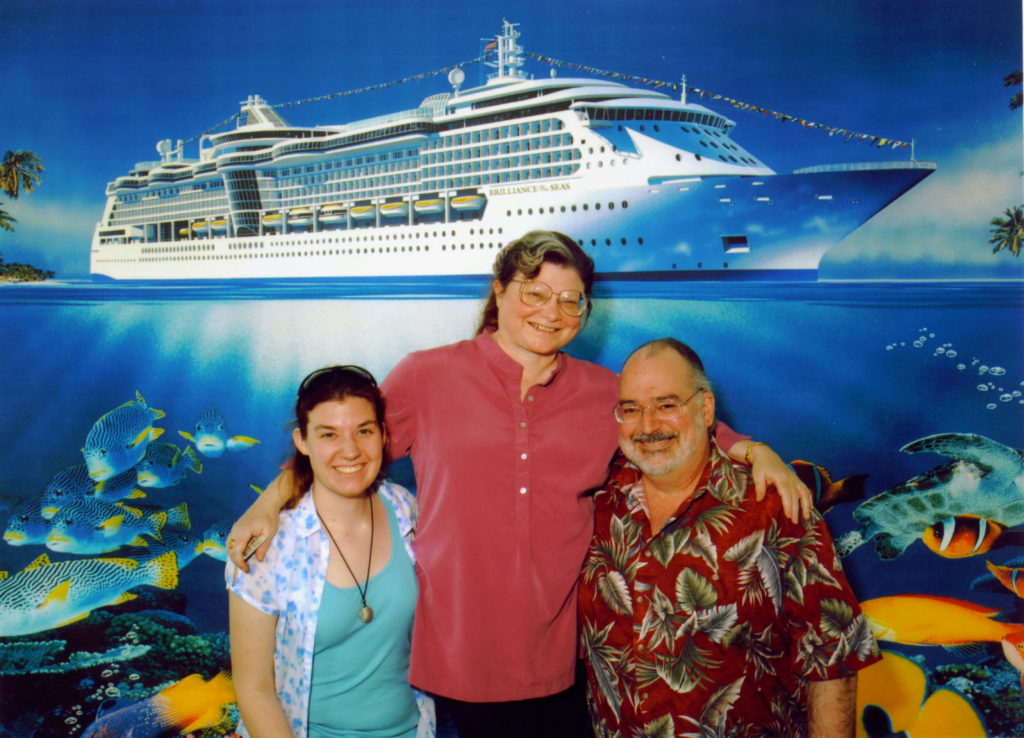
Miami
Friday, March 14, 2008
Since Dani was sick for most of our 2005 spring break trip, we decided to repeat much of that itinerary on a different ship. Besides, it was the only cruise that fit into our schedule and didn’t go to all the usual places. And Aruba will be new for us.
We rose early and drove to Miami, arriving before noon. Dani wanted to get a copy of Margaret Atwood’s The Robber Bride, so after ascertaining that no one in downtown Miami can read (therefore no bookstores) we drove to a Barnes Noble in Coral Gables which happened to be around the corner from a French place we like, Brasserie Halles. A few books and some cheese later we headed for the port where boarding Royal Caribbean’s Brilliance of the Seas was quick and easy.
The ship is more or less the same size as the Coral Princess, it’s width — PanaMax — being defined by the Panama Canal. It’s much smaller than the other Royal Caribbean ships we’ve been on, so we’ll have to make do without the ice skating rink.
We booked two cabins this time, a junior suite for me, and a hovel in the bowels of the ship for Dani. At least it’s an outside hovel. Because Dani is too young to have her own cabin, Linda is theoretically staying there with her. I’m trying to imagine it. . . !
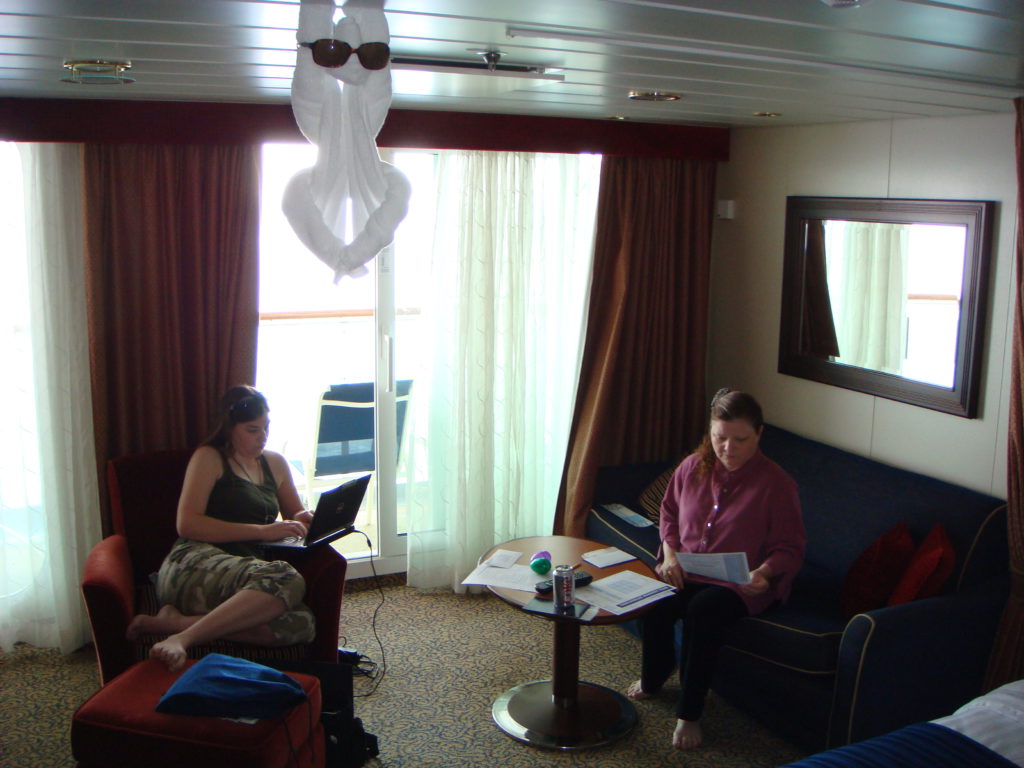
I like the more intimate size of this ship, and it has an interesting asymmetry to it, with glass elevators on one side and a single sided promenade in front of the specialty restaurants, much like on the Coral Princess. The passenger makeup is surprisingly old. I guess all the kids were on the larger Royal Caribbean ship that left port before us.
Susie and Rusty — those traditional Philippine names — were really friendly in the champagne bar, and the food seemed a bit better than on previous Royal Caribbean ships, whose cuisine I’ve rated at the bottom of all the lines we’ve traveled.
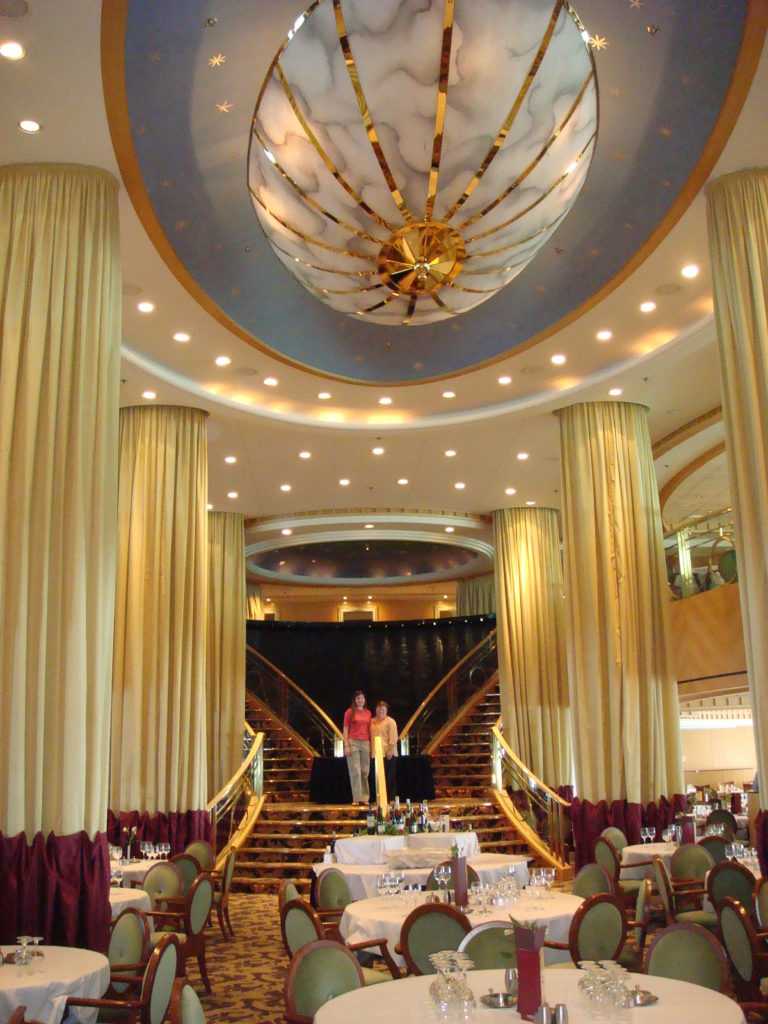
Royal Caribbean still uses assigned seating in the main dining room. Out table is shared with a family from Mexico, who seem quite nice. We have a lot of reservations in the specialty restaurants, so we might not see too much of them.
At Sea
Saturday, March 15, 2008
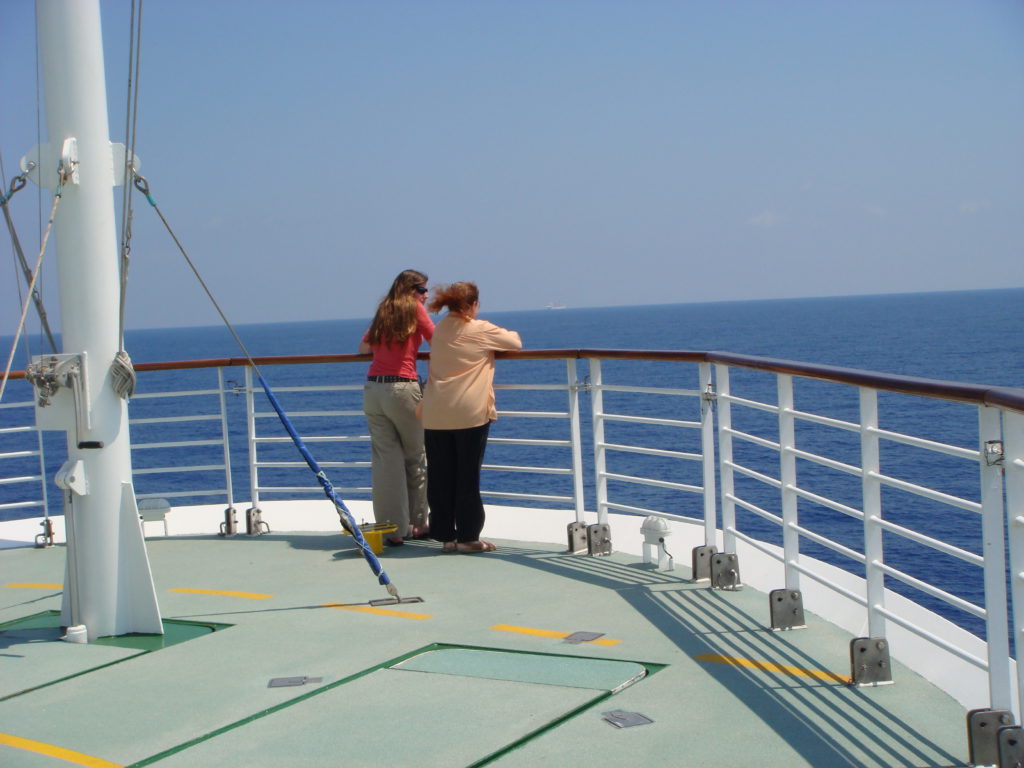
Brilliance of the Seas is the first cruise ship we’ve been on where passengers can get to the prow. It was very neat leaning over the railing and watching the azure sea vanish beneath the ship.
Dani spotted something skimming over the surface of the waves below us. At first we thought it was a bird, but then we realized it was a flying fish. I had never realized that they really do fly. As long as they’re headed into the wind, it seems they can stay aloft for a half minute or more, and they could easily out pace the ship. Their silver green bodies looked somewhat alien, and their “wings” reminded me of hang gliders.
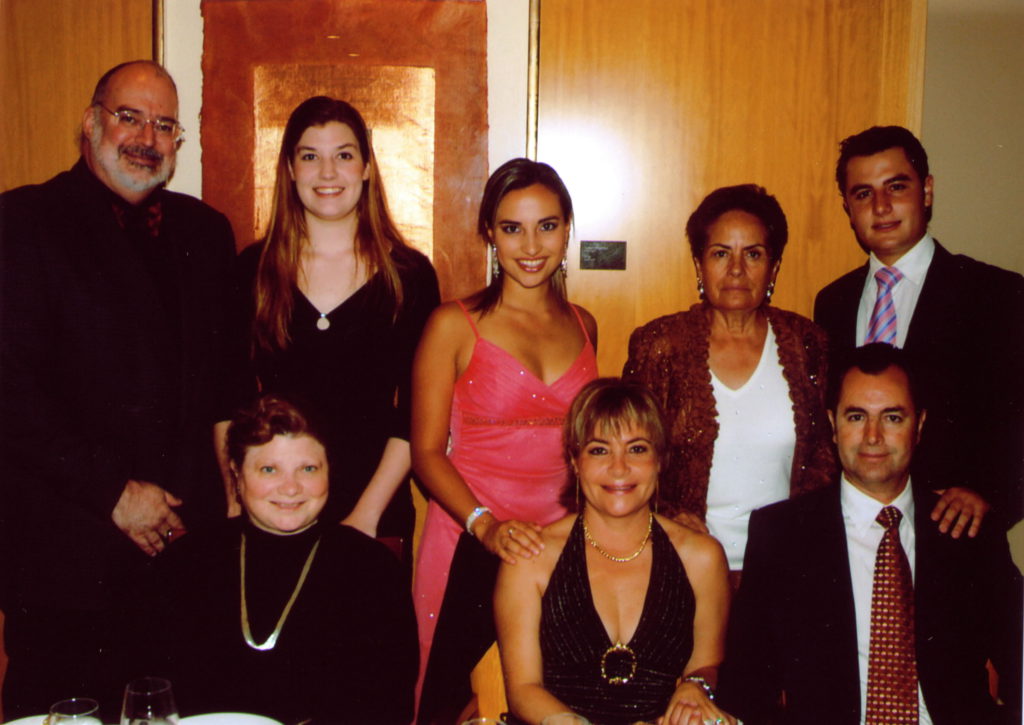
It was formal night, We had a lovely dinner with our friends from Mexico and then went to a ‘contemporary’ Broadway show. Funny, I’d never regarded Cole Porter as a contemporary. It was actually fascinating to watch the slightly talented cast struggle to stay with the slightly talented musicians as they performed a show designed by a wholly untalented director. As Dani said, “If they’d tried harder, the couldn’t have sucked more emotion out of each number.”
At Sea
Sunday, March 16, 2008
A lazy day at sea. Although the ship is the same size as the Coral Princess, it seems there’s less to do on board, since they don’t have the ceramics studio or the ScholarShip at Sea educational programs. But it was a good day for reading, writing and relaxing.
Oranjestad, Aruba
Monday, March 17, 2008
Aruba was very different than we were expecting, much more like a desert than a tropical island. An advantage is that it doesn’t get hurricanes, but on the other hand it doesn’t get much rain, either, as a result, there is a lot of sand and cactus, and — incongruously — some really large boulders.
I think this is the farthest south we’ve been in the Caribbean, as we’re only 17 miles off the coast of Venezuela. The island of Aruba is a Dutch colony with an independent government the past few years. The people are descended from natives and Spanish, and speak Dutch, English, Spanish and their own Creole. Despite Dutch being the official language, there was little evidence of it except in street names. Of course, the major industry is tourism, and 75% of the tourists are from the US, so we were well insulated .
To get an overview of the place, we took The Best of Aruba tour, which seemed to be the choice of the old and infirm. Our first stop was at the Casibari rock formations, where a short set of stone steps — and a bit of a crawl through a hole between the rocks– brought us to the top of a really big boulder. The view from there encompassed three fourths of this nineteen by six mile island, but was mostly of sand and Oregon pipe cactus. It was cool crawling through the crack, though.
The next stop was at the natural bridge, which, in quite a natural way, fell down in 2005. There is a smaller one still standing nearby, with a big danger sign next to the giant crack. Most of the tourists seemed to ignore this, though, and stepped right over onto the crumbling outcrop. I mean, it’s too big to fall down, right?
We stopped at Aruba Aloe, a surprisingly tiny factory where they make a wide range of products using — you guessed it — aloe. These products are mostly packages the same two ways, do to the fact that the factory has only two small bottling devices. We learned that aloe is good for cuts, sunburn, dry skin, hair conditioning, stomach ailments, losing weight, age reversal and reducing the national debt — of Aruba, anyway.
Our final stop was a the California lighthouse, so named because it was erected on the spot where a ship named the California wouldn’t have run aground if there had already been a California lighthouse there.
Then about half the group was dropped off at a mall, and the rest of us were dropped off near the cruise ship. This area is called “downtown” although it’s really just a street of tourist shops and government offices, with a lot of noisy traffic. We had a tasty lunch upstairs in an open air restaurant named Iguana Joe’s, and then retreated to the ship.
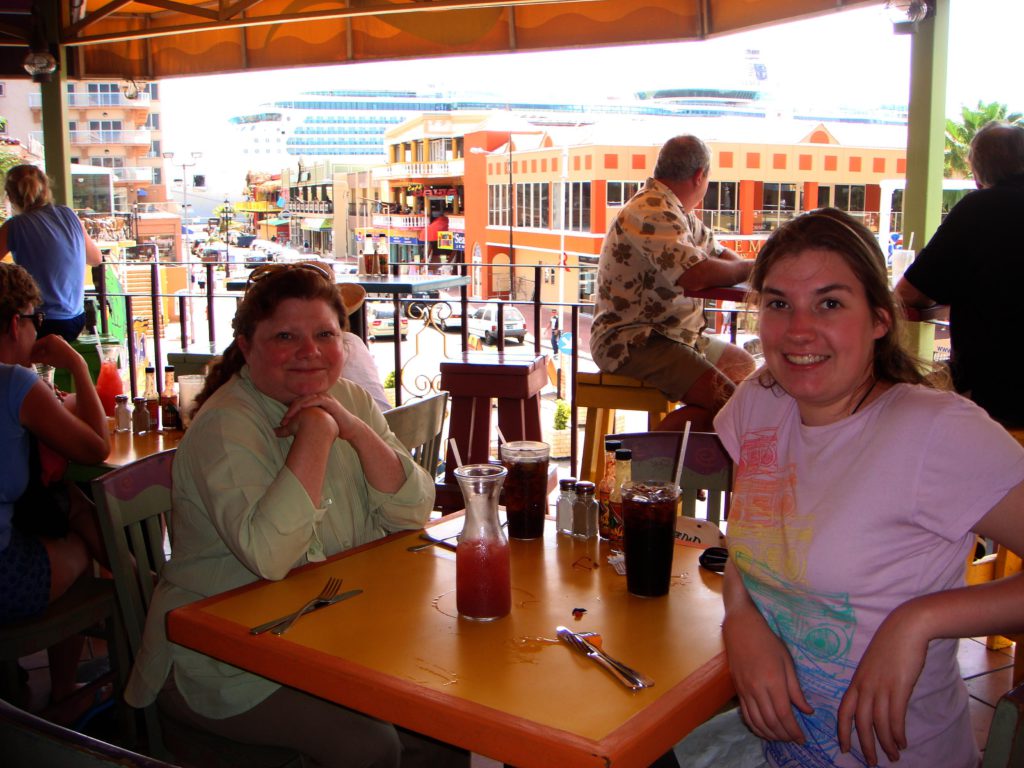
Overall I was disappointed in Aruba, because I was hoping it would be less the touristy Caribbean port and have more of its Dutch heritage in evidence. I suppose it’s great for beach lovers, but otherwise a three hour visit seemed plenty.
At Sea
Tuesday, March 18, 2008
A quiet day at sea. The cruising was surprisingly smooth, considering the 7-10 foot seas, but they were coming from the stern, and just seemed to hurry us on.
In the evening we attended the Murder Mystery Dinner Theater, held in the Colony Club and Portofino Restaurant. Six members of the entertainment cast acted out parts in a comedy murder mystery. During dinner we had a chance to interview each character for clues, and then a prize was awarded to one of the guests who had the correct solution. The acting was quite good, and the characters were very entertaining. It was probably the highlight of the onboard experience.
Panama Canal
Wednesday, March 19, 2008
We began our approach to the canal about 6:30 AM. Although it turned out we could have taken either side since they were both running the same direction this morning, my selection of a Starboard cabin proved to be the correct choice, and we had a great view of the locks from our balcony. An added bonus was that a US Navy submarine made the transit in the adjacent locks, complete with armed escorts. Pretty cool.
The Internet was down most of the day, which was a bit aggravating since it’s the first day of new ed2go classes, but it came back up in the late afternoon. We docked briefly to pick up passengers on shore excursions, but I skipped the two hour visit to the flea market that’s operated by half naked natives. Linda and Dani bought traditional native goods: carved wood, painted feathers and a bent license plate.
We had a nice dinner at Chops Steakhouse, the nicest restaurant on board.
Limón, Costa Rica
Thursday, March 20, 2008
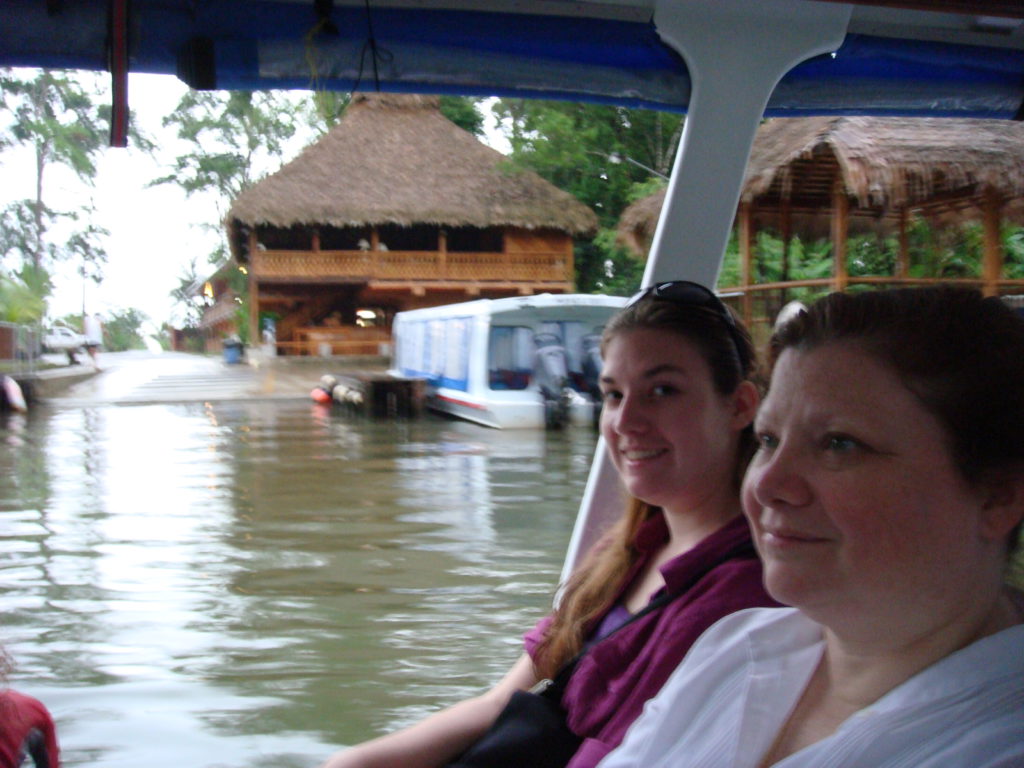
Today we more or less retraced our steps from a tour three years ago, visiting the aerial tram in the rainforest that’s about two hours west of Limón. This time we stopped for a boat ride along the way. Our 17 passenger flat bottomed boat navigated a mile of twisty canal through jungle, where we saw a sloth, a small crocodile called a caiman, a sloth, monkeys, and a Jesus Christ lizard, so-named because it runs on two legs across water while waving it’s front legs like a girl, just like Jesus.
The rainforest was, indeed, rainy when we arrived, but held off for our glide through the treetops. We had a traditional Costa Rican lunch — rice and beans, of course — before taking a nature walk.
Our guide for the walk was extremely interesting, and pointed out dozens of things we would have missed, accompanied by fascinating explanations. The most interestering were the leaf cutter ants, who carry chunks of leaves back to their nest where they use them to grow a fungus that they eat. On top of some of the leaves are smaller guard ants, whose job is to keep a fly from laying an egg on the leaf. The eggs turn into worms that eat their fungus.
After the walk we boarded the bus for the 90 minute drive back to the port. Even though Limón itself is pretty much a dump, I really like Costa Rica. The people take great pride in their stability, health care and educational systems, and lack of an army. And it’s neat being in a place where anything that falls on the ground grows.
One interesting aspect of Costa Rica is the way addresses work. A typical address might read: “From the church go 400 meters north and turn right. After 200 meteres turn left at the store and it’s the third house on the right with the yellow door. ” Needless to say, mail delivery in Costa Rica takes a long time.
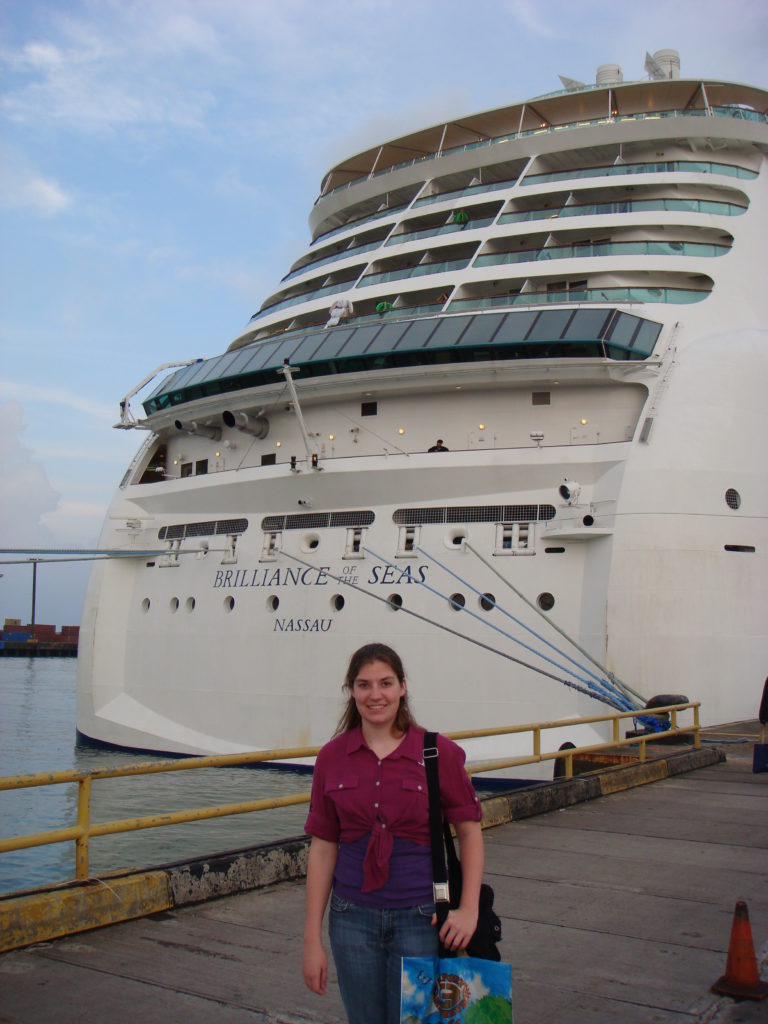
Linda and I had dinner at Portofino, where everyone wanted to know what happened to Dani, who decided to relax and have room service in her cabin.
At Sea
Friday, March 21, 2008
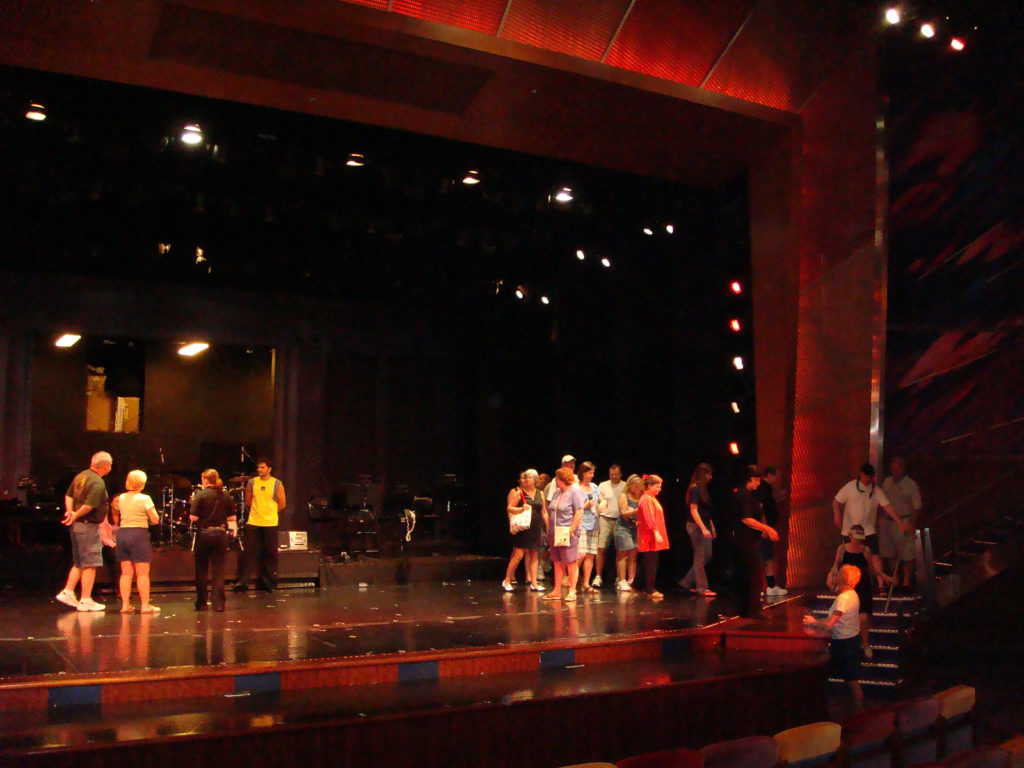
We went on a very interesting backstage tour of the ship’s theatre today. It gave us a chance to visit the lighting booth, sound booth, stage, and dressing areas, and listen to presentations by technical personnel, stage hands, and performers. I was nice to see Alcorn McBride IO64s in the lighting booth, although the lighting technician didn’t really seem to know what they did. There was also a Richmond Stageman system and two lighting boards. The 52-channel mixer is large, analog, and unautomated.
Dani and I discovered that the best lunch onboard is a the Seaview Cafe, a very small table service restaurant at the back of deck 12. It looks like it was designed to be counter service pizza, but now it has about half a dozen tables. Its obscure location and the fact that it doesn’t open until afternoon keep it from being crowded.
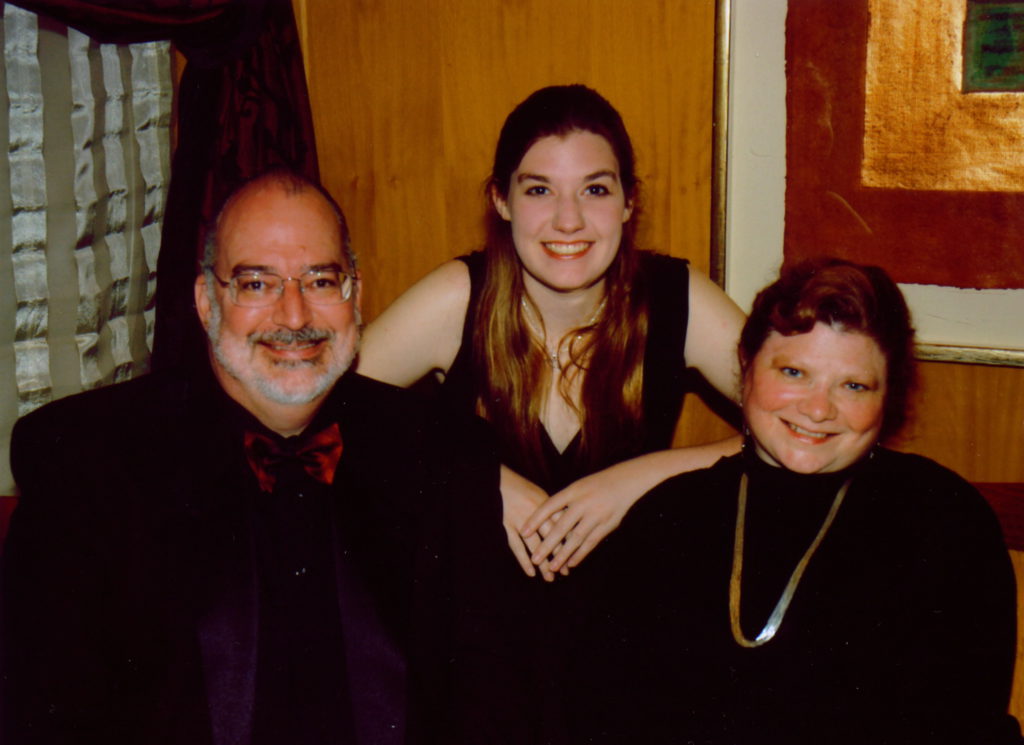
We rejoined our dinner companions in the main dining room for the traditional formal night lobster dinner.
Grand Cayman
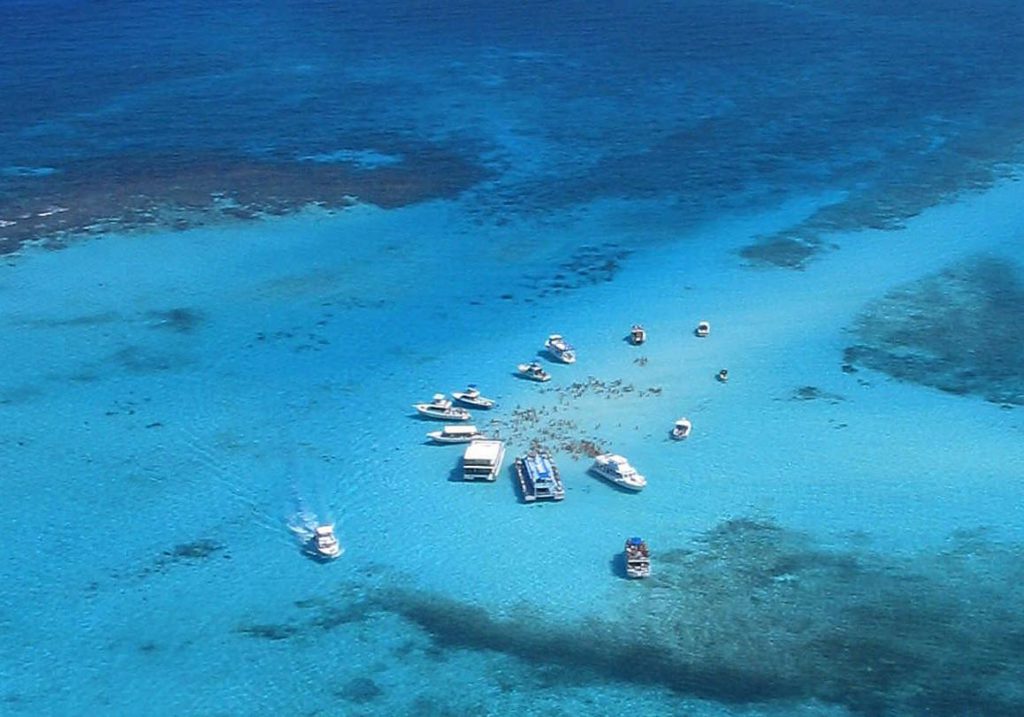
Saturday, March 22, 2008
Today we had the best Caribbean shore excursion ever. Dani and I took the tender to the island and then a van to the far sight, where about forty of use boarded a dive boat. After a 45 minute trip we arrived at Stingray City, a sandbar that is home to hundreds of stingrays. Wading around in the waist deep water, we fed, petted, held and kissed(!) the stingrays for close to an hour. The stingrays really seem to enjoy being held, at least once they’ve been fed.
We learned that the large dark ones are females, and the smaller gray ones are males. The males have a unique characteristic: two “willies,” as our guide put it. I’m not sure why this is useful, but it conjures up some interesting possibilities.
Our second stop was nearby, at the barrier reef, where the coral and fish varieties rivaled those of Australia. The snorkeling was easy in the three to ten foot deep water. Our guide coaxed a moray eel from its hideout, which was pretty exciting. I’d never seen both ends of a moray eel at the same time!
This was the same trip I took three years ago when Dani was too sick to go, but what a difference the guides made! There was so much hand-on time with the stingrays on this outing. The trip was also very professionally photography and videotaped. The photographer made CDs right on the boat, and the videographer edited in music and delivered professional DVDs to the ship before we sailed. If I could only do one outing in the Caribbean, this would be it.
We had dinner in the main dining room. Our friends from Mexico didn’t join us because the grandmother — who has Alzheimer’s — wasn’t feeling well. They didn’t miss much, as almost everything on the menu tonight was fairly awful.
At Sea
Easter Sunday , March 23, 2008
After several rocky days at sea due to up to 40 knot cross winds, today was very smooth because we had a 5 knot tail wind. We’re averaging over 20 knots to make the 600 miles back to Miami by early tomorrow morning.
This afternoon we attended an interesting presentation by the Captain and Chief Engineer about the operation of the ship. It’s powered by dual turbines spinning at 7500 rpm, which generate many Megawatts of power to drive the two azipod outboard propellers, which can each rotate 360 degrees. The high speed of the turbines explains why there is absolutely no engine vibration on this ship.
The Captain indicated he didn’t think any more cruise ships would be built this way, because although the small size of the turbines allowed them to add 50 cabins, they require fuel that is now more than twice the cost of regular diesel sludge. In fact, the ship is going into dry dock in two months to have a hole cut in the side and a diesel generator added for times when power requirements are low, such as when they are in port.
Miami
Monday, March 24, 2008
We arrived in Miami before dawn. Total distance sailed: 3,200 nautical miles.
We disembarked at 8:30 and made great time on the drive home, and were back before 2pm, including a stop for lunch. .
Things to remember for next time
Royal Caribbean food is a rung below NCL and Princess. It also seems like there aren’t a lot of food venues. It’s mostly concentrated in the Windjammer buffet. They seem to be reaching to appear to additional venues: The Solarium Cafe is six saran-covered plates of pre-made sandwiches and a thermos of coffee!
Internet access of this class of ship is poor. The cabin jacks don’t work, and expensive wireless is available only in a few areas.
There’s not a lot to do on the Brilliance of the Seas class if you’re an adult who doesn’t want to lie by the pool or gamble. I miss the Princess art and education programs. The larger Royal Caribbean ships also offer more variety, with their interior main street. .
The entertainment on this ship was mediocre at best, except for the Mystery Dinner Theatre, which was wonderful.
Aft on deck 10 turned out to be a less than optimal cabin location on the Brilliance of the Seas, not because it was aft, but because it was under the Windjammer, with its constantly moving chairs and carts of dishes and dropped silverware. Earplugs were a definite must at night.
Panama, Limon and Grand Cayman are all interesting ports. Aruba is not. It’s a poor exchange for Belize’s cave tubing, which was on our previous itinerary in its place.
Stingray City in Grand Cayman is the best shore excursion in the Caribbean.
New England 2007
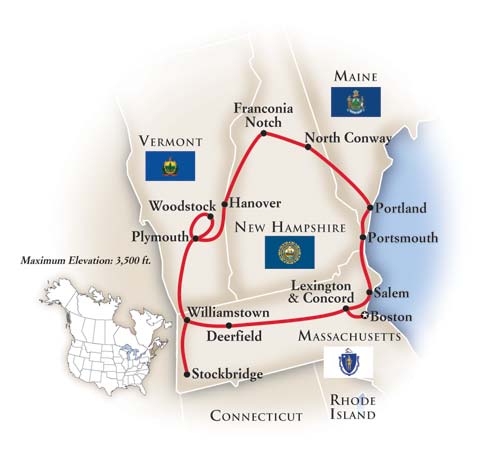
Boston
Sunday, October 7, 2007
The flight from Orlando was uneventful, although the lines at security were the longest I’ve seen, stretching all the way across the Hyatt lobby. I hadn’t been in Logan Airport’s Delta terminal recently, which is really nice. There’s even a Fudruckers.
I was, frankly, shocked at the sight of the hotel, the Omni Parker House. It is surrounded by scaffolding. That’s the view outside the window, too. It’s amazing to me that Tauck would book clients in here under the best of circumstances, let along during a major renovation.
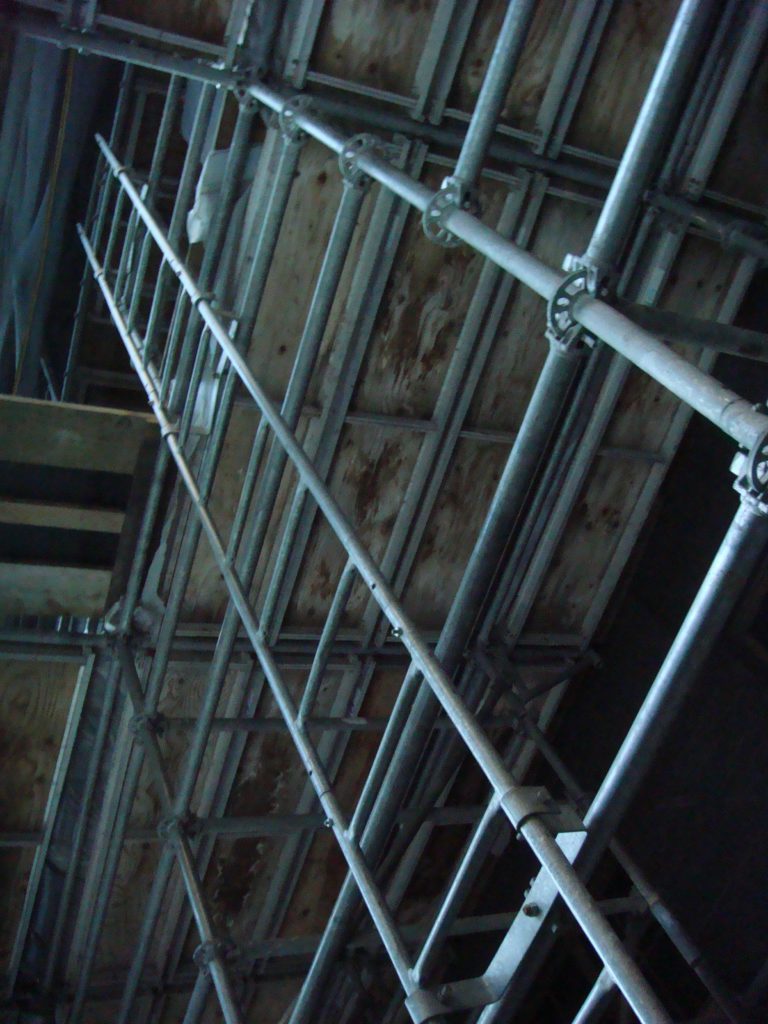
The hotel was built in 1855 and is the oldest continuously operating hotel in America. Unfortunately, 1855 was before the invention of the Internet or the electrical outlet, both of which have yet to arrive in my room. The only flat surface is the night stand, which has on it:
- lamp
- all the non-refrigerated offerings of the mini bar
- hotel directory
- phone
- clock radio
- tv remote
- coffee pot
- glassware
- advertising for other fine hotels in this chain (isn’t this the same chain I hated in New Haven?)
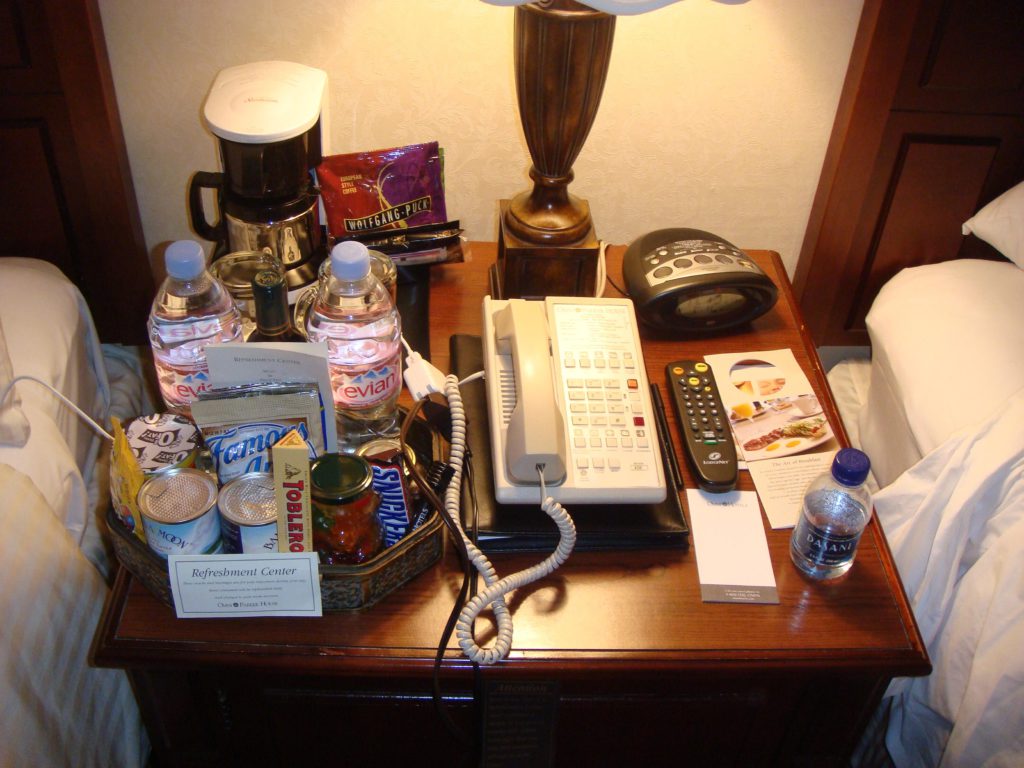
The walls are paper thin, and aside from very expensive linens and a nice lobby, it’s difficult to see any appeal. When Dani and I were here in Boston on her college tour we stayed at the Charles Hotel next to Harvard, which is cheaper and much more comfortable.
After unpacking, I met Pamela Collins, my friend from Australia, in the bar for a drink and to get caught up. It was great to see her again after a year and a half, our last outing being the cruise in Hawaii.
The Tauck welcome dinner gave us an opportunity to meet our fellow travelers, who are an interesting demographic. I’m probably the youngest by a fair margin. Most seem well traveled. Of the 43-person group, six or eight are from the UK, and about ten are from California. The balance are from around the US, including the Carolinas, Mississippi, Texas, Colorado and Wyoming.
Our tour director is Nancy Rowe, who does Alaska in the summer, and New England in the fall. Clearly she must have seniority. The rest of the year she’s a substitute sixth grade teacher, so she’s good at supervising both the young and old.
The food at dinner was banquet fare. It began with gravy-like clam chowder. The beef was a nice cut but ruined with a weird sauce that tasted a bit of mentholatum. A jumbo shrimp that accompanied it was very chlorinated and tired. The hotel’s claim to fame is that Parker House rolls and Boston Cream Pie were invented here, and both were okay.
With no Internet, the iPhone came in really handy for responding to my students’ postings while listening to every word of the neighbor’s soft conversation. I hope my typing isn’t keeping anyone awake.
Boston / Cambridge
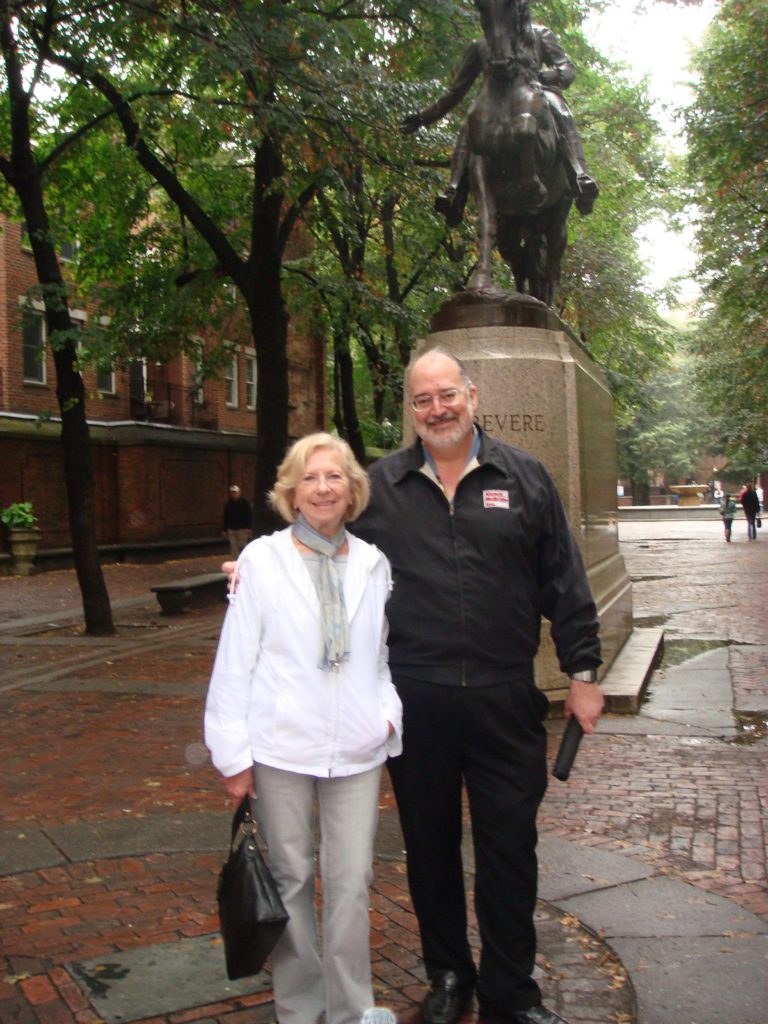
Monday, October 8, 2007
After a fairly appalling “Boston Benedict” (heavy corned beef hash on fried, sweet brown bread with a poached egg and hollandaise sauce) we headed out into the rain for a tour of Boston. We drove a circuitous enough route that we passed Emerson College three times. I found that I was surprisingly familiar with the city after my trip here with Dani to visit colleges in August. One college we didn’t visit then was Harvard, which was our first stop. Fortunately the rain had pretty much stopped by the time we reached the campus. We received a presentation by an energetic sophomore girl, Asli, whose parents were from Somalia (although she was from Michigan). The school is a lot like Yale, and although there is no theater major, I was interested to hear that they have a lot of drama classes, and she knows several students who plan to be actors.
Our second stop was back in Boston, at the Old North Church, where the lanterns in the Paul Revere story were hung. Up the hill was Copp’s Hill Burying Ground, an old graveyard.
We left the bus at an open air (read: tourist) market and walked a few blocks back to the hotel, stopping at Borders for coffee.
After an afternoon nap we took a taxi back to Cambridge for a nice dinner at Sandrine’s, an Alsatian/French restaurant Dani and I discovered in August, where I spent most of the meal explaining the plot of Wicked to Pamela. She’s very patient.
Lexington / Concord / Salem
Tuesday, October 9, 2007
Contrary to predictions, Tuesday dawned bright and clear. We took a short drive west to where the first skirmish of the America Revolution occurred, and then followed Paul Revere’s ride on toward Concord, where the first battle occurred. Both are small towns with parks and monuments that commemorate the events. An amazing number of famous authors also come from Lexington.
All along today’s route we passed colonial era houses, and even some dating back to the mid 1600s.
A thirty mile drive northeast brought us to the coast, and the town of Salem. Having already been well-schooled in the history of the witch trials during Dani’s appearance in The Crucible, Pamela and I chose to spend our time walking around the town. It’s essentially a square mile of tourist shops selling witch paraphernalia. There are also some cute old houses. We had lunch at a restaurant on the pier called Victoria Station, which I think is a survivor of the 1970s chain.
We then drove out of Massachusetts and along the entire coast of New Hampshire. This didn’t take long, since it’s only 18 miles long. It became increasingly rocky as we approach New Hampshire’s only port, Portsmouth, where we are spending the night a a Sheraton. The large rooms, desks and Internet are a welcome relief after the Omni Parker House.
Congress Avenue is the main street, and is about four blocks of tourist shops. We found a couple of good book stores (due to the town being to small for a Borders or Barnes Noble to open and put them out of business).
We dined on lobster at the hotel with four delightful couples from our tour group, two from Fresno, one from San Francisco, and one from the UK. We had a really nice time. By the time I retired it was beginning to rain.
Coastal Maine / White Mountains
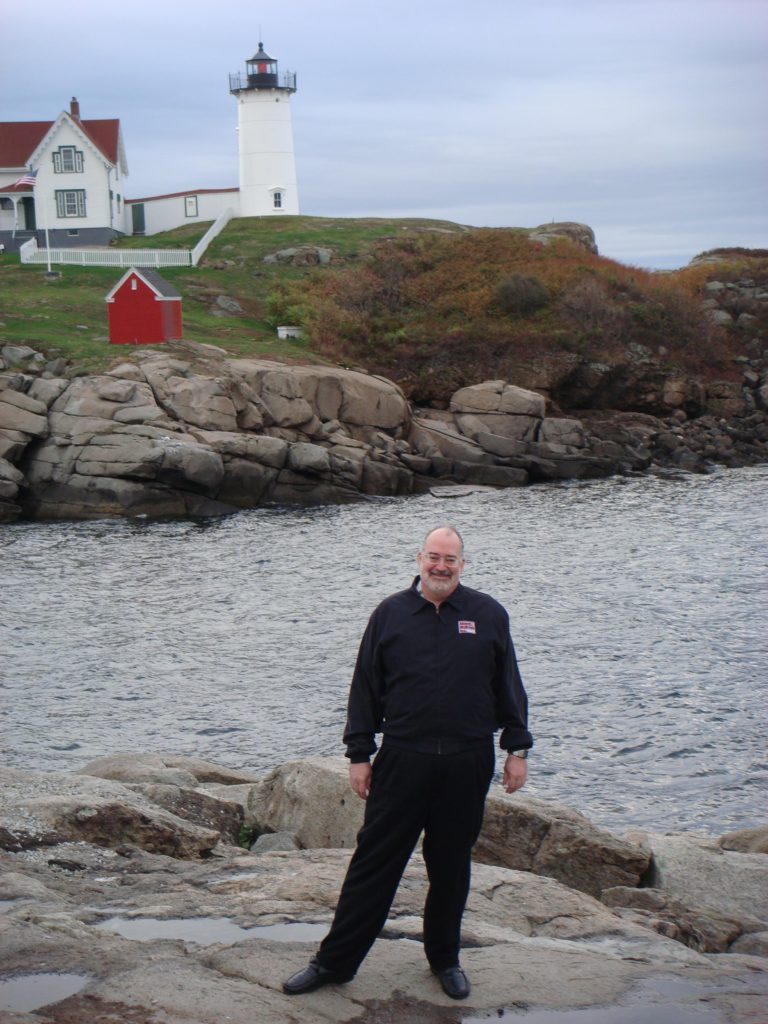
Wednesday, October 10, 2007
It was overcast all day, but except for an occasional sprinkle, the rain held off. Heading up the coast we immediately crossed the bridge into Maine.
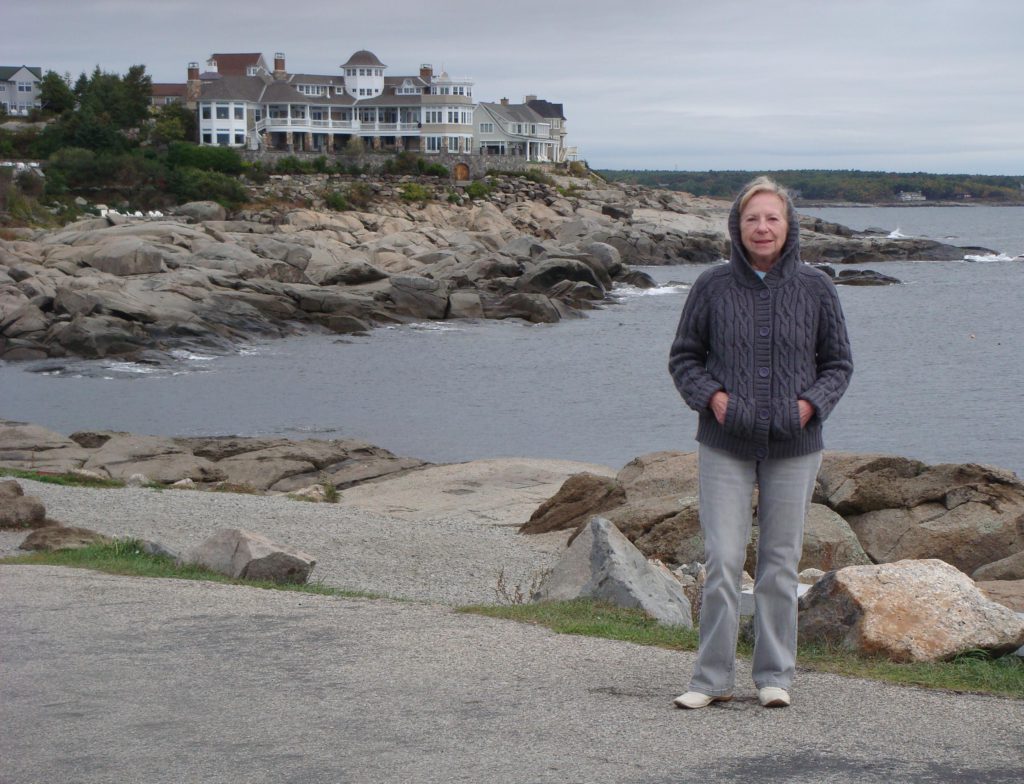
Our first stop was the lighthouse at Cape Neddick. It sits on a rocky point connected to land only by a cable and suspended bucket. As with all of Maine’s lighthouses, it is now fully automated.
An hour to the north we arrived in Portland, Maine’s largest city (although only about 65,00 people live here). We were divided into three groups. (I was a cod. ) Pamela had a bit of a sore throat, so she decided to do some shopping while the rest of us cods went out on the lobster boat Lucky Catch. Captain Tom was very informative and entertaining. He’s been lobstering since he was fourteen — although he should be an actor. This time of year he does tour groups in the harbor, but during the rest of the year he works the waters about 8 miles off the coast.
We went to two different spots and pulled up two traps at each location, which got us three lobsters (one of which was too small to keep) and an assortment of crabs that we threw back. The lobsters must be within certain length limits, measured along the carapace. The limits put them between about 1-1/4 and 4-1/2 pounds. The smallest keepers are about seven years old. Females with eggs have a tail fin notched and are thrown back. Notched lobsters are then protected, and must always be thrown back in the future, even if they don’t have eggs. This way the breeders grow large. Similarly, the maximum size limit (in Maine, anyway) assures a population of large males for breeding purposes.
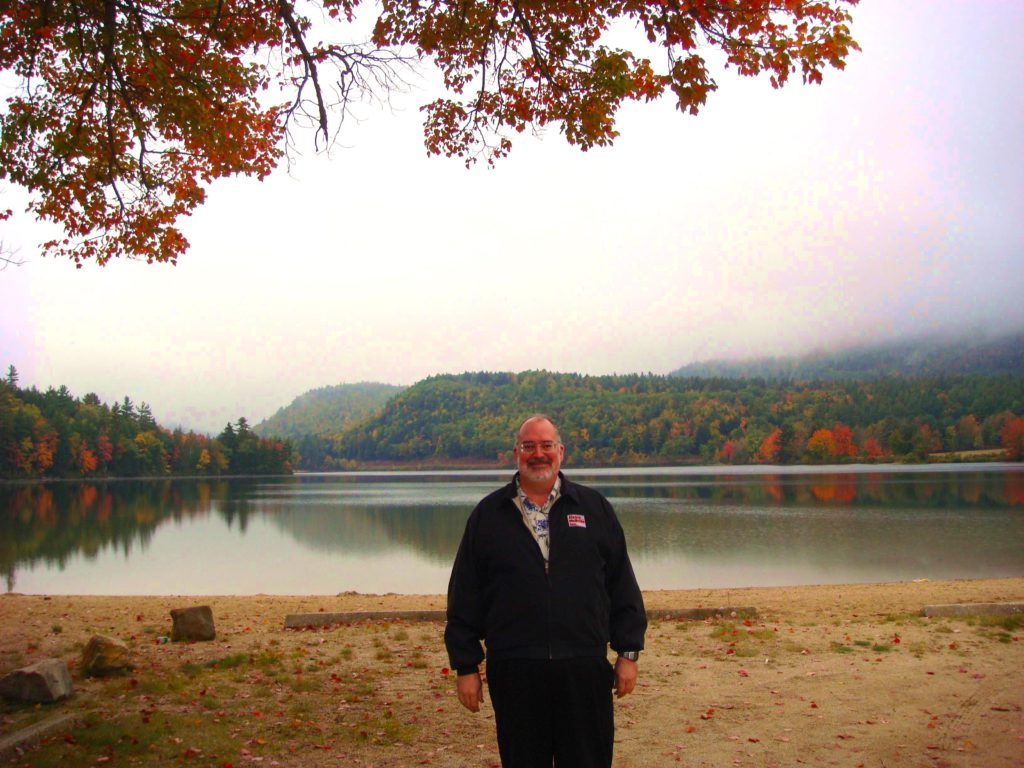
After a fairly pointless interpretive walk around the block we had lunch at a fish and chips place, did a bit more shopping, and then headed west back into New Hampshire.
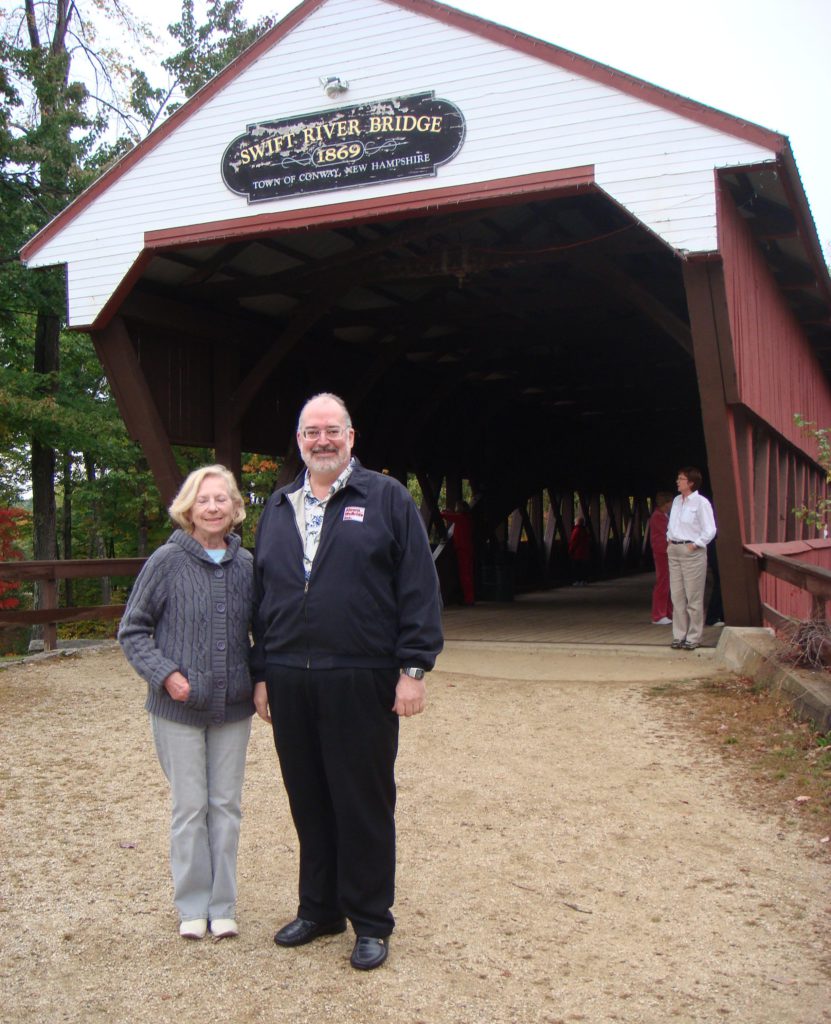
We stopped briefly at Crystal Lake (an impromptu stop because of the colors) and then at the Swift River Bridge, a covered bridge built in 1869 and now bypassed by a concrete overpass.
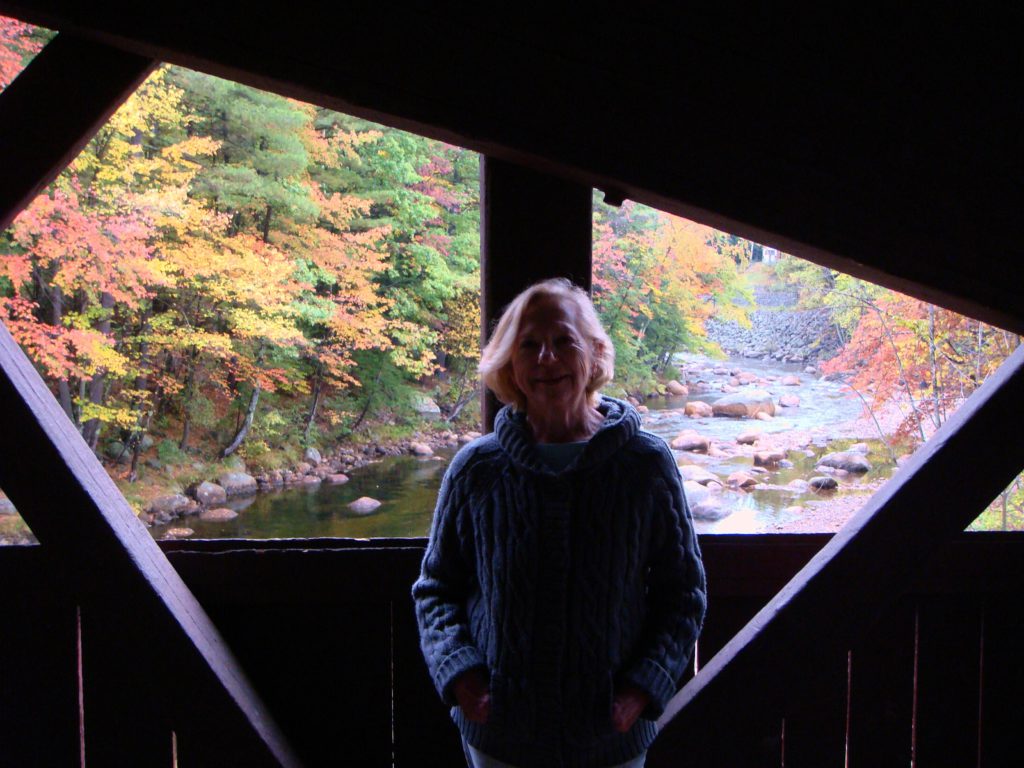
Shortly before 5pm we arrived at the White Mountain Hotel and Resort, the exterior of which looks a lot like Wawona on the approach to Yosemite. But it’s nicer on the inside. In fact, the valley we’re in has a granite outcropping of the same glaciated structure as Yosemite Valley.
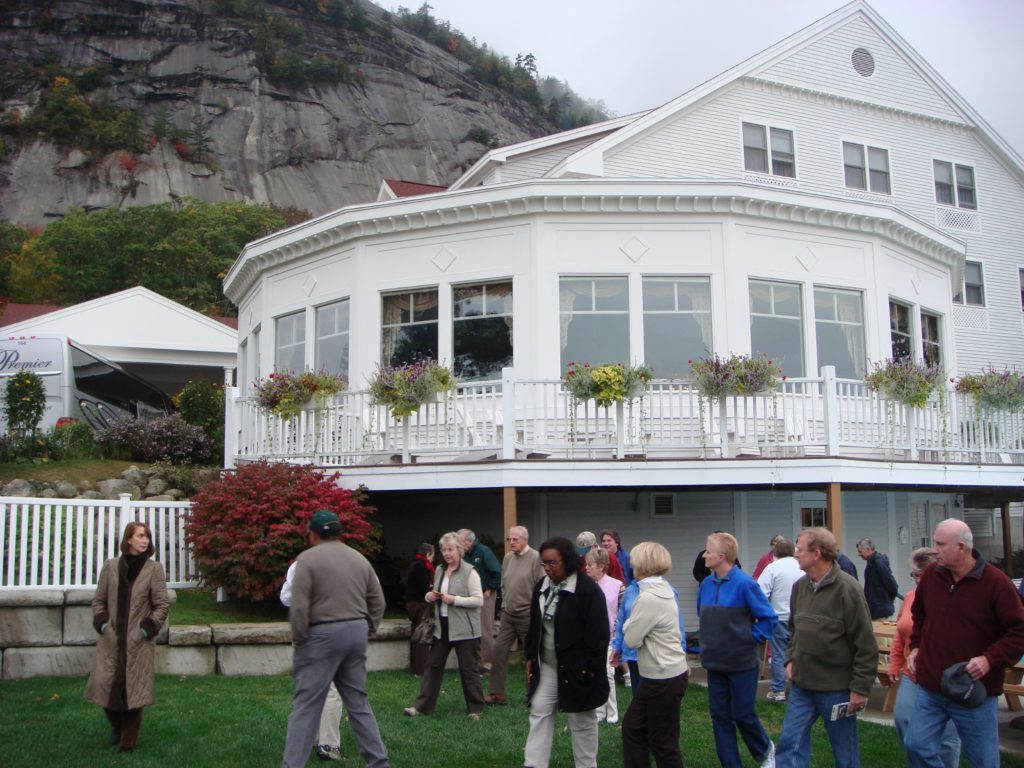
Pamela and I had a lovely dinner by ourselves, and then sat through part of a talk by a local naturalist before the early morning caught up with us.
White Mountains/ Green Mountains
Thursday, October 11, 2007
Not rainy, but very gloomy, with a low ceiling.
After some pancakes with delicious cinnamon butter, we set out over the Crawford Notch and Franconia Notch (those are passes, for you westerners), where the rock profile of the Old Man of the Mountain stood until 2003. It’s now a guy called “Cliff”! We couldn’t see it anyway, because of the low cloud cover. Nor was Mount Washington, New England’s tallest peak, visible. Although Mt. Washington is only a bit over 6000 feet high, it has the world’s worst weather, with winds clocked as high as 234 miles per hour.
We stopped for a walk at the Basin, a waterfall into a rocky. . . well, basin. It was an excellent walk, with brilliant colors. We just wished the sun would come out so we could really appreciate them.
We also stopped at Bath, a charming little (really little) town with fours shops all owned by Michael, a Rock musician from California. One of the shops is the oldest continuously operating general store in America.
On to Hanover for a drive through Dartmouth — literally. Route 10 goes right through the quad! What a beautiful town and campus (they’re sort of the same thing, since students outnumber residents). We had lunch at a hotel that faces the quad.
Crossing in to Vermont we stopped at the dramatic Quechee Gorge, a very deep and scenic ravine that was alive with color. Just beyond was the Vermont Institute of Natural Science, where we saw a really interesting raptor show, featuring a falcon, hawk, owl and even a turkey vulture.
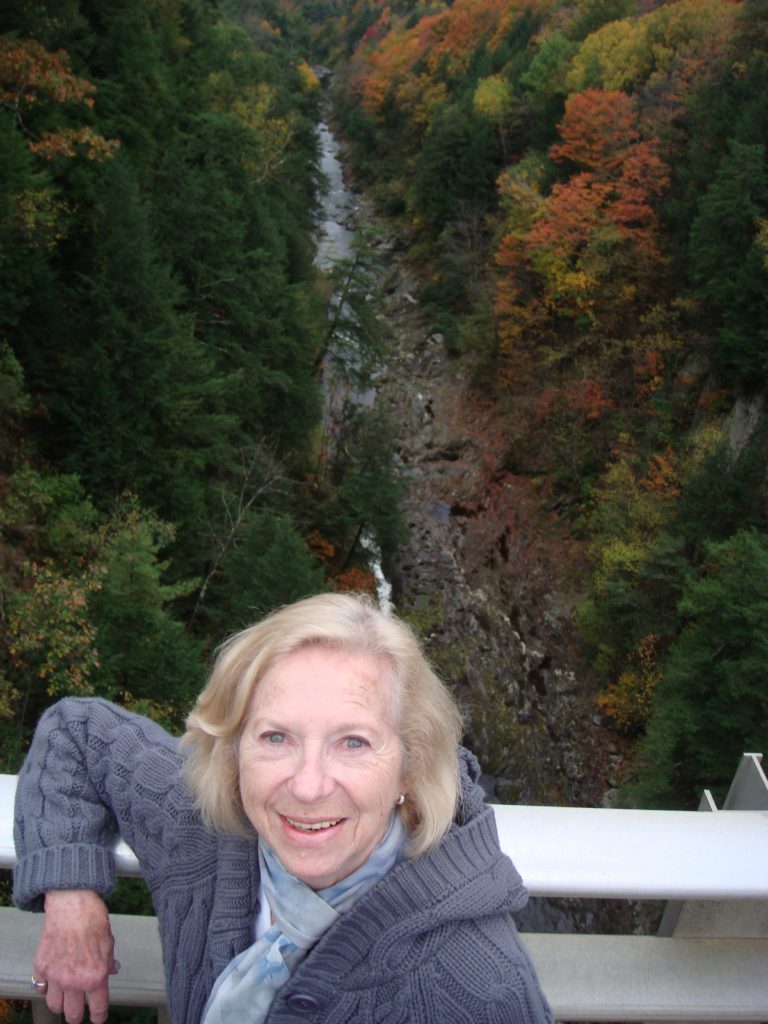
A hour’s drive brought us to our hotel for the next two nights, The Hawk Inn and Mountain Resort. It is situated in the middle of 1299 acres, and has less than 50 rooms, all occupied by two Tauck tour groups. After a nice wine and cheese reception we went to their tavern restaurant for an excellent dinner. A steady rain settled in during the night.
Woodstock
Friday, October 12, 2007
Last night’s rain had stopped by morning, taking some — but not nearly all — of the leaves with it. We retraced our path back to Woodstock, Vermont for a visit to the Billings Farm and Museum. The farm is a working farm with dairy cows, sheep and chickens. It was established by one of America’s first conservation minded individuals, and later donated to the public by the Rockefellers. There were a lot of great museum exhibits about the history of farming in the early 20th century. An 1890s house built for the foreman has been completely restored and furnished, and is actually quite technologically advanced (for 1890) and rather comfortable, even by today’s standards.
We then made the short walk into downtown Woodstock where Pamela did a bit of shopping, and we had a relaxing lunch at Bentley’s restaurant. Afterward we walked over to the Woodstock Inn, a very nice hotel, and relaxed in the library while waiting for the bus. It started to rain again but only lasted a short time.
Much of the group then visited the home of Calvin Coolidge, and a maple sugar shack. I’ve been thinking about getting Pamela’s cold for a couple of days and the cold air seemed an unwise environment for her (much improved) bronchitis, so we opted to get out of the cold and went back to the hotel along with a dozen other fellow travelers.
A stiff breeze came up in the afternoon, and stripped more of the leaves. Then, at 5pm, the sun came out and I literally ran up the mountain behind the hotel and madly snapped pictures. Although a lot of the color was gone, the light made a huge difference.
We had dinner with six of the more gregarious members of our group and then hit the sack.
Berkshires / Stockbridge
Saturday, October 13, 2007
We awoke to the season’s first frost, and a crisp, clear day with bright sunshine. What a difference it made in the colors! Our first stop was Weston, Vermont, home of the Vermont Country Store. The women shopped and the men took photographs of the very scenic little town.
We also stopped at the grave of Robert Frost in the churchyard of Old First Church in Bennington, Vermont. He’s still dead.
An hour’s drive brought us to Williamstown, where we had lunch at the Williams Inn. Williams College is a scenic campus that forms the center of this town.
Another hour of driving took us south back into Massachusetts, for a visit to Stockbridge, home of the Norman Rockwell Museum. Perched high on a hill next to the first gilded age “cottage” constructed in the Berkshires, the museum was much more interesting than I was expecting. It’s quite remarkable to look at Rockwell’s familiar works close up. No matter how closely I peered at these moderately sized oil paintings, it always seemed there was more detail. Downstairs is a collection of his 322 Saturday Evening Post covers. His studio has also been preserved, moved to a separate building on the grounds, and set up exactly as it was the day he died.
We drove back to Williamstown via a corner of New York, and our driver, Jim, who lives on Lake Champlain and is married to a former Rockette, gave us quite a witty dissertation on all the best points of the state.
Along the way we passed the Shaker village. The Shakers were a religious group who invented a number of furniture types (and other things such as the straight broom), but now there are only seven members left. This is probably due to the fact that one of their religious tenets is celibacy. Note to self: when founding a religion, incorporate wild debauchery.
Our hotel for the night is The Orchards, by far the nicest accommodation of the trip. My room is huge, and decorated like the rooms at the Waldorf Astoria. A farewell reception in the lounge offered an open bar, and dinner in the dining room was superb. The menu prices were amazingly low, with a wonderful filet mignon in a wine reduction and its accompaniments going for $25. Of course, it was all included. Reflecting on the week, I think I’ve bought one dinner, two lunches and two bottles of wine. Everything else has been included in the Tauck price, even tips. Definitely a good deal.
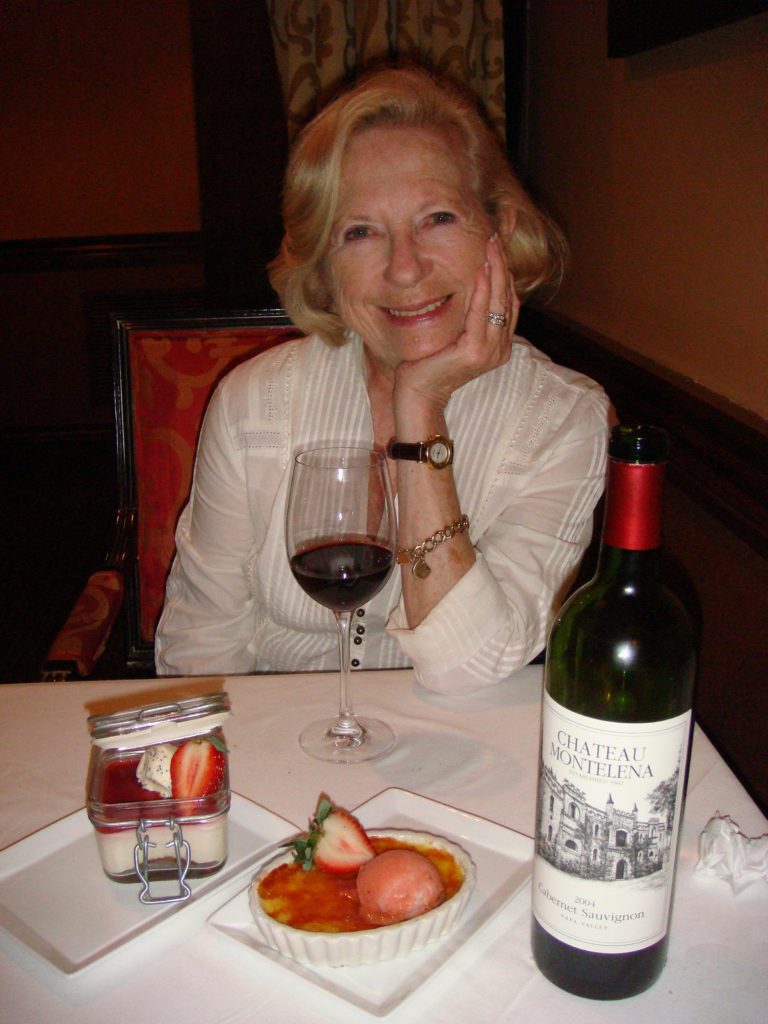
Deerfield and West Podunk (honest!)
Sunday, October 14, 2007
Today was cooler, and breezy. We departed from Williamstown through the Pioneer Valley of the Connecticut River, stopping at Deerfield, a cute little town with lots of colonial era houses.
For lunch we stopped at the Salem Cross Inn at West Podunk. It’s a sprawling complex with some rooms that date back to 1705. It is named for both the Salem family (who began restoring it in 1962 and still operate it) and the “Salem Cross,” an anti-witch sign engraved on the original house’s still-intact door handle.
The building has many dining rooms, most of which were filled with tour groups, so I wasn’t expecting much. But they served the best prime rib I have ever tasted, along with excellent clam chowder and homemade rolls of many different types. Dessert was a wonderful tart apple pie with hand made whipped cream. This was the second best meal of the trip, and a wonderful surprise.
By 3 pm we were at the Logan airport, where I said goodbye to Pamela and the group, and caught my 6:30 flight home to Orlando. It was a very nice group of people, and we had a lot of fun sharing meals and experiences with all of them.
As with all Tauck Tours, this one was well thought out, and the fact that everything was included is always great. Our tour director, Nancy Rowe, seemed particularly concerned with everyone’s welfare, and the driver, Jim Tom, was very entertaining (even if he does need a last name). This itinerary is perhaps a bit less exciting than most, and is dependent upon the trees, which cooperated, and the weather, which was mixed.
Europe 2007
Rome, Switzerland, Paris, London
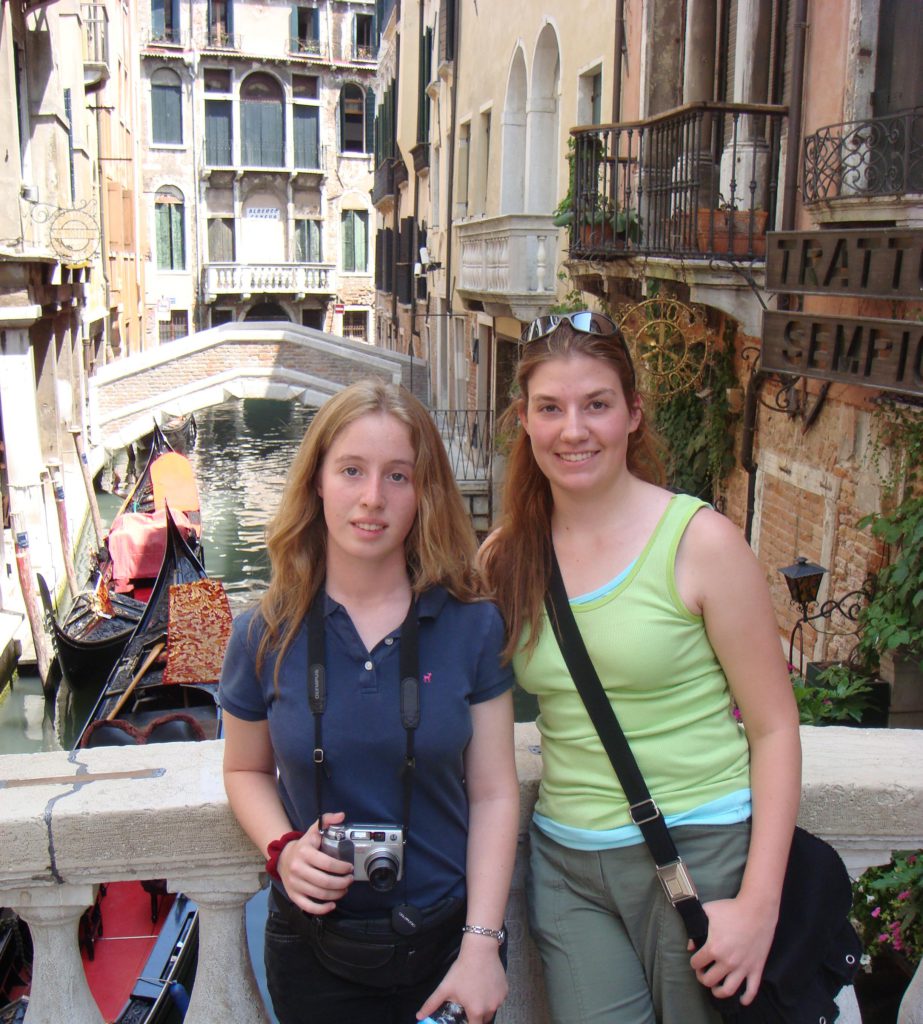
Friday, June 29, 2007
Orlando to London
For Dani’s 16th birthday she asked to take her friend Christina, to Europe. This is the journal of that trip.
The only time Christina has been out of the country was on Dani’s 13th birthday cruise to Nassau, so this will be an adventure for her. We picked her up Friday evening and headed for the airport to catch our nonstop Virgin Atlantic flight to Gatwick airport south of London, connecting on British Air to Rome.
The Virgin flight is one of the few nonstops from Orlando to Europe, and they offer premium economy, which has better seats than coach but is much less expensive than business class. The food is still English, though.
Saturday, June 30, 2007
London to Rome
The girls didn’t get much sleep to speak of on the plane and I got none (my own fault since we were all wearing our ipods, and I was listening to the lyrics).
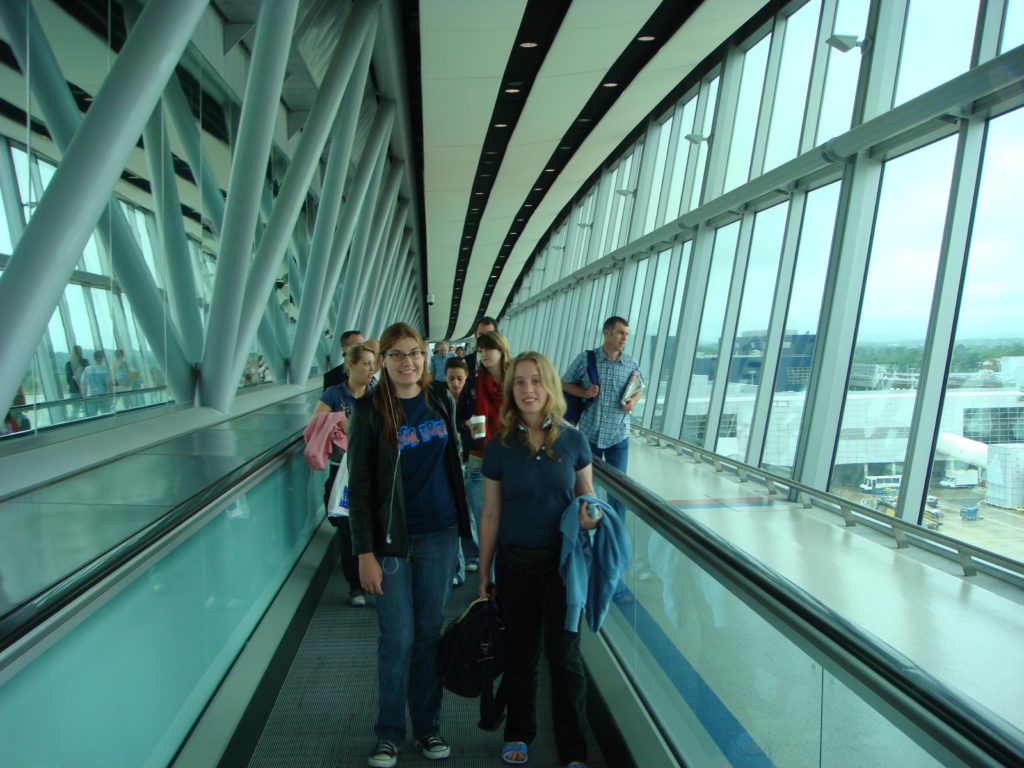
The plane got into Gatwick a little late but we had a five our layover. Good thing! What a mess it was! At first the immigration line simply wasn’t moving, and there were hundreds of people in front of us from several large planes. But finally, after they processed all the EU people, they must have put more people on the non-EU line. Still, it rook more than an hour to clear immigration, Another hour to get our bags and get checked in at British Air, and then more time to clear security back to the gates. We had to run a gauntlet of eight guys with assault rifles (they must have had some inside intelligence since there was a problem later at Glasgow airport), do the normal X-ray, and then X-ray our shoes separately in a small, shoe-sized X-Ray machine. Gatwick really is broken. The flow and policies make no sense. I don’t know if I’d try to connect through there again or not.
For lunch number 2 (or was it 3?) the girls picked a revolving sushi place that was excellent. That’s where there is a conveyor belt and you take what you want, and then pay according to the stack of empty color coded plates.
Then the plane for Rome was delayed an hour getting into Gatwick. We were dragging by this time, But we had hot chocolate and got our second wind.
The main problem was that the entire population of Western Europe was at the airport. I suspect that’s because it was the first Saturday of summer and everyone was headed for the Mediterranean. Given the cold, rainy weather in London I can see why.
By contrast the Rome airport was a breeze. First time I’ve seen someone stamp passports without looking at them at all!
Our driver was waiting for us and the trip into Rome was quick. We rode with another threesome embarking on a different Globus tour from a different hotel. They are from San Francisco and just spent two weeks in Spain.
The hotel is in a great location, just a half block from St. Peter’s. It’s fairly newly refurbished with nice wood flooring and trim and new furniture.
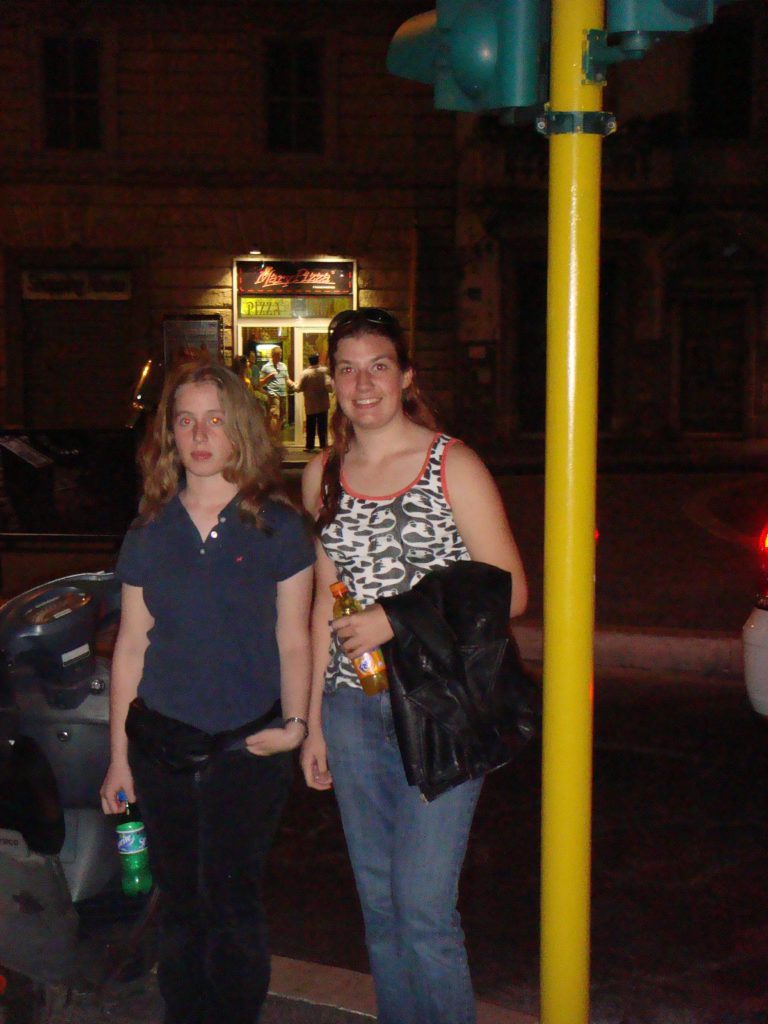
It was so late the girls didn’t want to nap, they just wanted dinner and bed, so we walked the half block to the edge of the Vatican and had pizza in a local hangout – located literally within the thickness of an ancient wall — that sold it by weight from a deli case. Then we crossed the street and had the best chocolate gelato I’ve had since the last time I was in Rome. The weather was great. 77 degrees.
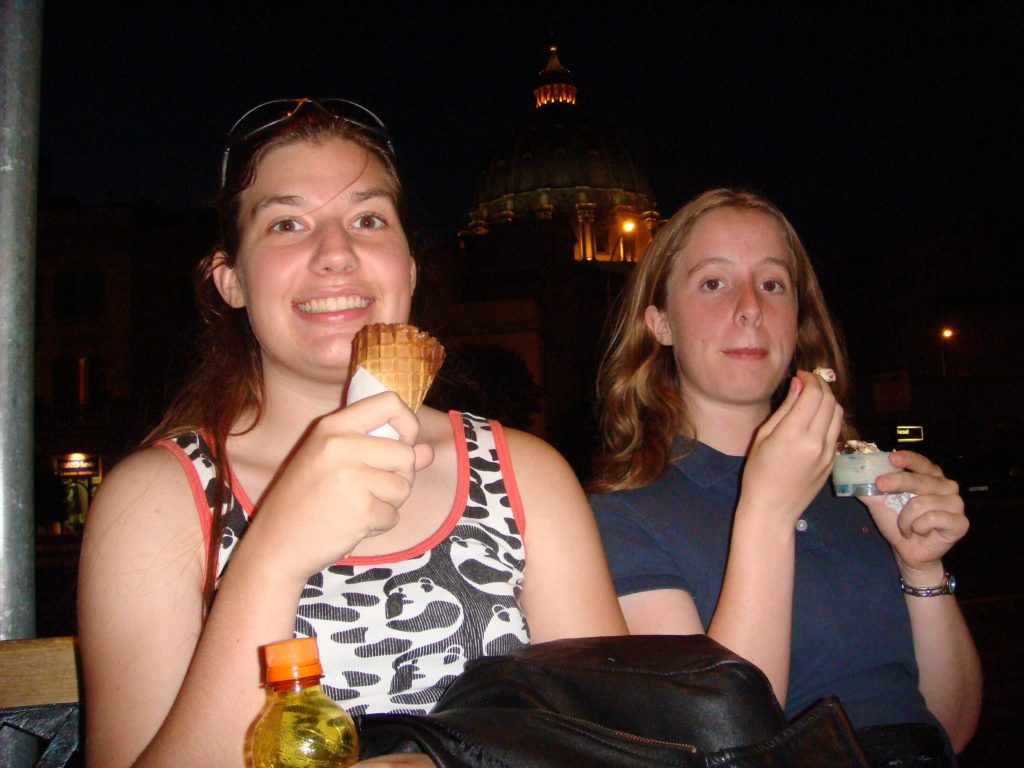
Now I need to answer a pile of ed2go postings and get to bed.
Sunday, July 1, 2007
Rome
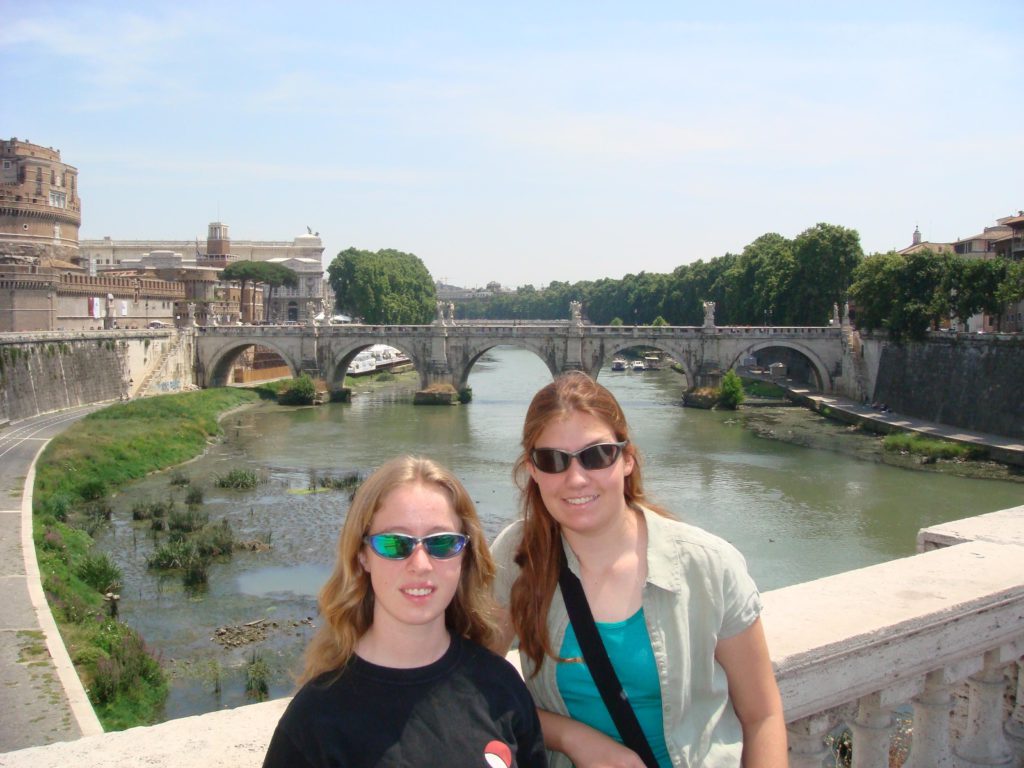
I was awakened by the phone this morning. It was Dani informing me it was 11 AM! Admittedly, I was up until midnight doing email, but I was surprised how late I slept.
The weather was beautiful today, mid 80s and a slight breeze. We slathered ourselves in sunscreen and set out to walk across the city.
We passed St. Peter’s square at noon and saw (a teeny dot in the distance) and heard the Pope speaking to the multitudes. Then we crossed the Tiber, bought some postcards in an antique book shop (Dani’s postcard torrent begins) and made our way to the Pantheon.
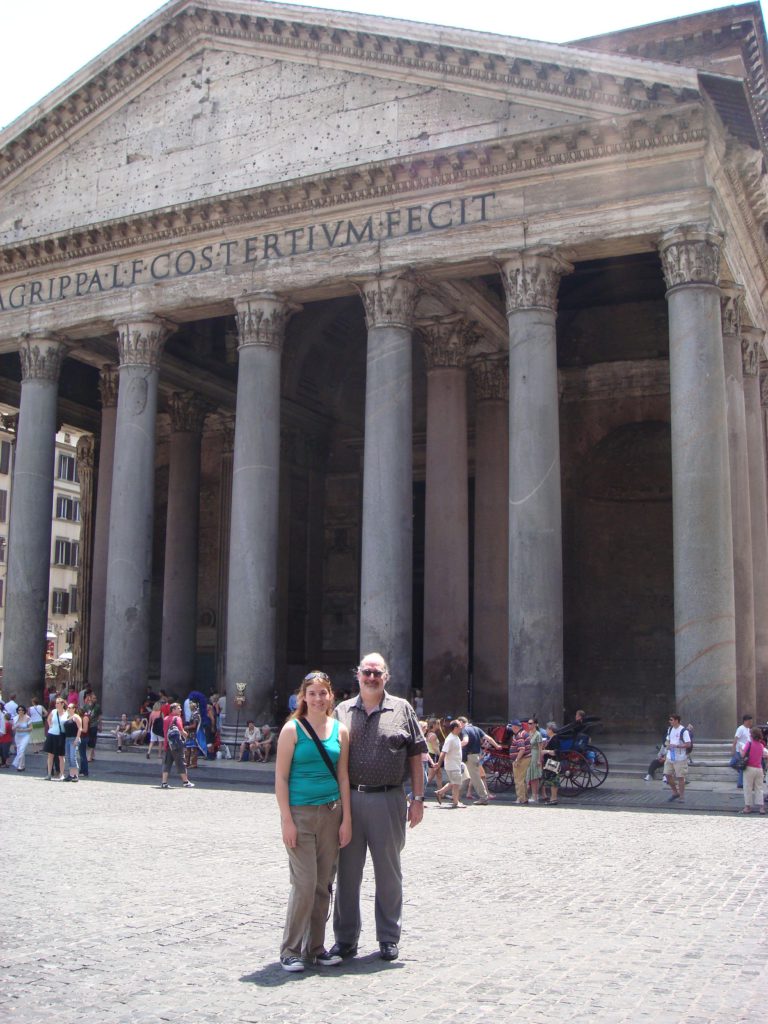
In the square there we had lunch at the same outdoor cafe as on our last visit, then ventured into the immense coolness of the Pantheon.
I didn’t bring a guidebook on this trip, so I had to wing it, but I think I got most everything right except possibly the part about it having been built by Haliburton.
Next stop was the Trevi fountain, where we all threw coins in to guarantee our return to Rome on a future visit.
On our way back we spotted the Roman ruins (pictured on many of the local postcards) where there are hundreds of cats fed by local cat ladies. Then we meowed for a taxi and caught a ride back to the hotel. A very successful day.
We met our tour group this evening in the lobby. They seem very nice. The demographics are interesting. It’s a much younger group than usual, with 8 of the 44 being teenage or recently teenage girls. This is nearly everyone’s first visit to Europe.
Out Tour Director is Lia, short for Cornelia. She is a middle aged Dutch woman with a great sense of humor.
Dinner was at “The Grotto of the Emperors,” a basement restaurant similar to all the other basement restaurants that cater to tourist groups. The six course dinner and free wine were tasty, and the entertainment by a trio of accordion/guitar/opera singers was. . . clearly audible.
By the end the group looked ready for bed, but we felt completely on schedule. Good thing, because our wakeup call tomorrow is 5:45 AM.
Monday, July 2, 2007
Rome
The early wakeup call wasn’t all that bad. After a traditional European hotel buffet breakfast we took our coach around to the other side of the Vatican to queue for the tour. We arrived about 40 minutes before the group opening at 8 AM, which was a good thing, because I’ve never seen the Vatican so crowded. This was because Friday through Sunday it was closed for a holiday.
Our local guide, Patricia, spoke exceptional English, but the microphone on her Whisper audio system wasn’t picking her up all that well. When she narrated on the bus it was great, though.
At the Vatican Museum we toured the Roman sculpture gallery, the tapestry gallery, and the map gallery. In other words, the usual hallway that leads to the Sistine Chapel. Patricia provided an excellent explanation of the history of the frescoes in the chapel before hand, since there is no talking (only mooing) allowed in the chapel. We found an uncrowded corner with only about 400 people in it and admired the art for 20 minutes.
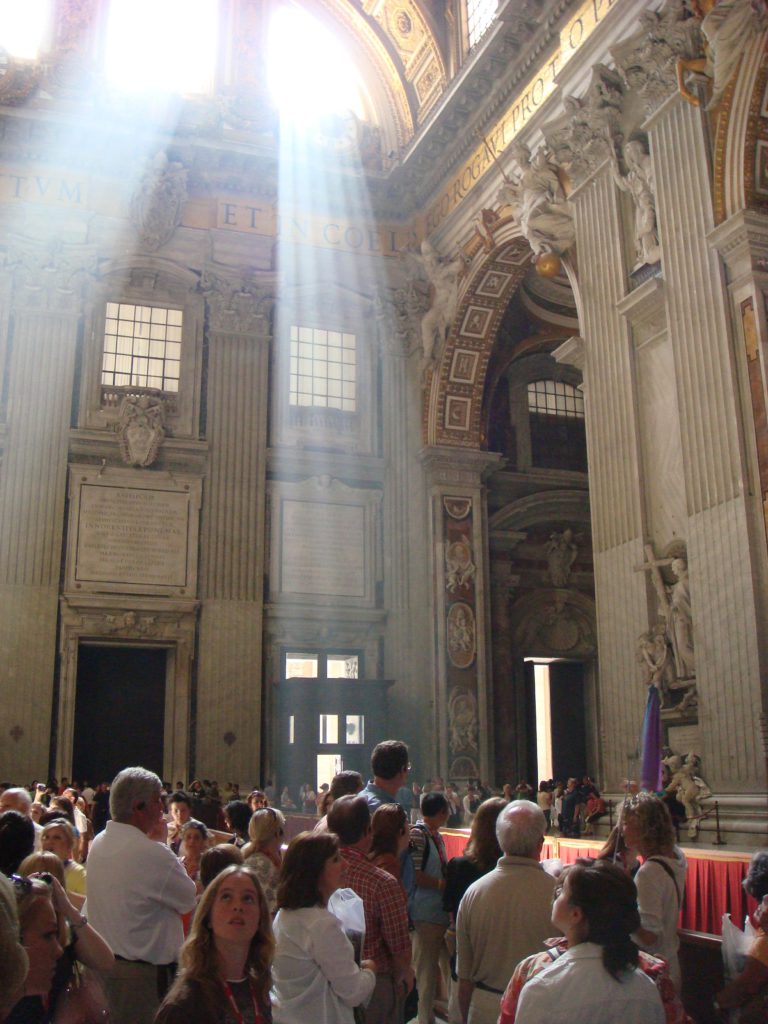
Then it was next door to Saint Peter’s Basilica, the largest church in the world. The dome in Saint Peter’s Basilica is so high the 34-story Sun Bank building in Orlando would fit in it. Our exploration was somewhat cursory compared to the private tour Linda and I took a couple of years ago, but everyone’s feet were tired anyway.
We walked across St. Peter’s Square (it was hot!) to a (you’ll never guess) Vatican gift shop. For the past two days I’ve been trying to cash a 500 Euro bill, but the hotel never has enough cash. But guess who does? Yup.
The girls bought Vatican stamps to mail their first pile of postcards, we had a soft drink, and then entered a tunnel that led to an amazing parking garage designed for tour buses. Next stop: the Coliseum.
We got a nice break in the weather, as it began to cloud over and a breeze came up, and there were even a couple of sprinkles. By the time we reached the Coliseum. it had probably cooled off ten degrees.
Did you know that “Coliseum” is only a nickname, because it had a colossal statue in front? Unfortunately, like every other piece of metal in ancient Roman it has long since been melted down. But the name stuck. I guess “The Flavian Amphitheater” didn’t have much of a ring to it.
It was a lightning fast tour, but it worked (Linda would have been frustrated, though). Then we climbed the hill to overlook the forum.
There is an exhibition being put together, and they have erected stark white plastic(!) columns in the places where the original columns are missing from the temple that overlooked the Coliseum. That gave us an interesting impression of how big the thing was.
We arrived back at the hotel around 1 PM, freshened up, and strolled a block toward the Tiber, where we had lunch in an outdoor cafe down the street from St. Peter’s Square. As we walked back, it was beginning to sprinkle lightly.
Nearly all of our group went back out again at 3 PM for an optional $80 tour, to do what we did on Sunday, followed by another group dinner (but will there be another demon accordionist?) We, on the other hand, got to relax, do postcards, journals, and naps. At 8 PM we went out and wandered around the neighborhood until we found a trattoria that suited us and had a leisurely dinner. Then we walked back to our gelato place for desert.
I’m really glad we had the extra day. We got to touch on all the highlights of Rome without overdoing it.
Tuesday, July 3, 2007
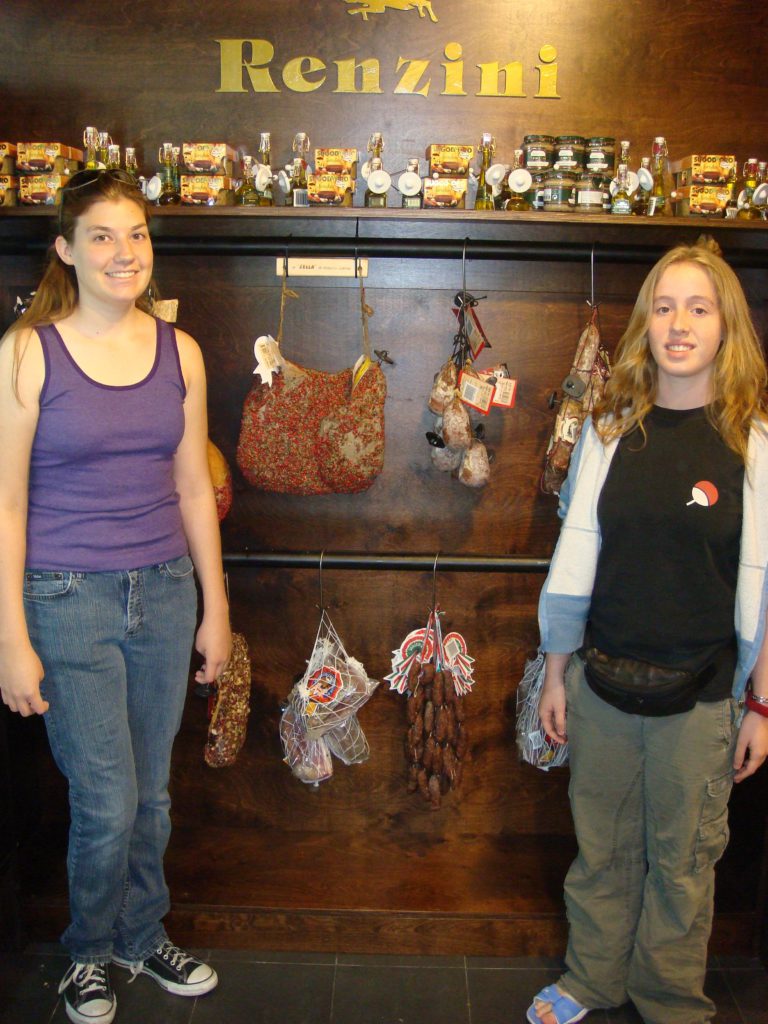
Rome to Florence
We left Rome at 8 AM and had an easy drive to Florence, entertained along the way by Lia’s sense of humor, and arriving a bit after noon.
We had a fairly poor lunch at the Grande Café at San Marcos Square and then queued for the Uffizi Gallery. It takes a month to get reservations, so I had never seen it. Our local guide was fine, but took us only to a room of religious icons and to see Michelangelo’s David. I explored an extensive and ornate musical instrument exhibit and quickly walked through a sculpture hall while she prattled on the headset.
David looked just like the exact replica of him in Piazza Signoria. I really don’t see what all the fuss is about David. His head’s too big for his body and his hands are too big for even his head.
We then walked to the cathedral to view Brunelleschi’s Dome (only from street level, although some brave soles had climbed 34 stories) and the brass doors of the baptistery (which are copies of the originals).
Next we walked to the Piazza Signoria where we saw the Rape of the Sabine Women (not the actual event, a sculpture). We had seen the plaster model for this at the Uffizi, and it looked just the same only cleaner.
Finally we walked to the Piazza San Croce, where we met up with Lia, who ushered us into a gold and leather shop. Expecting one of the normal hard sells, I was pleasantly surprised by the brief and entertaining presentation about Florence gold. But what was really good was the leather presentation, which was very funny and informative. A number of the people on the tour got to model the coats for us, most amusingly, and Dani actually ended up buying a very nice (i. e. expensive) leather coat that looks great on her. Since she spent her schoolbook refund money on it, I like to think she’s wearing everything she learned this year.
By the time we walked to the bus (did I mention they’re not allowed anywhere in the old city?) we were ready to sit down. Florence is cute, and has some nice art, leather and gold, but for me, five hours was just the right stay. It’s not a place that excites me, the way Rome does.
Our hotel, the Cosmopolitan, is a bit west of the city. It’s very new and European chic, with proximity switches at the door. The group dinner on the third floor was okay, and the Montipulciano was excellent. .
Wednesday, July 4, 2007
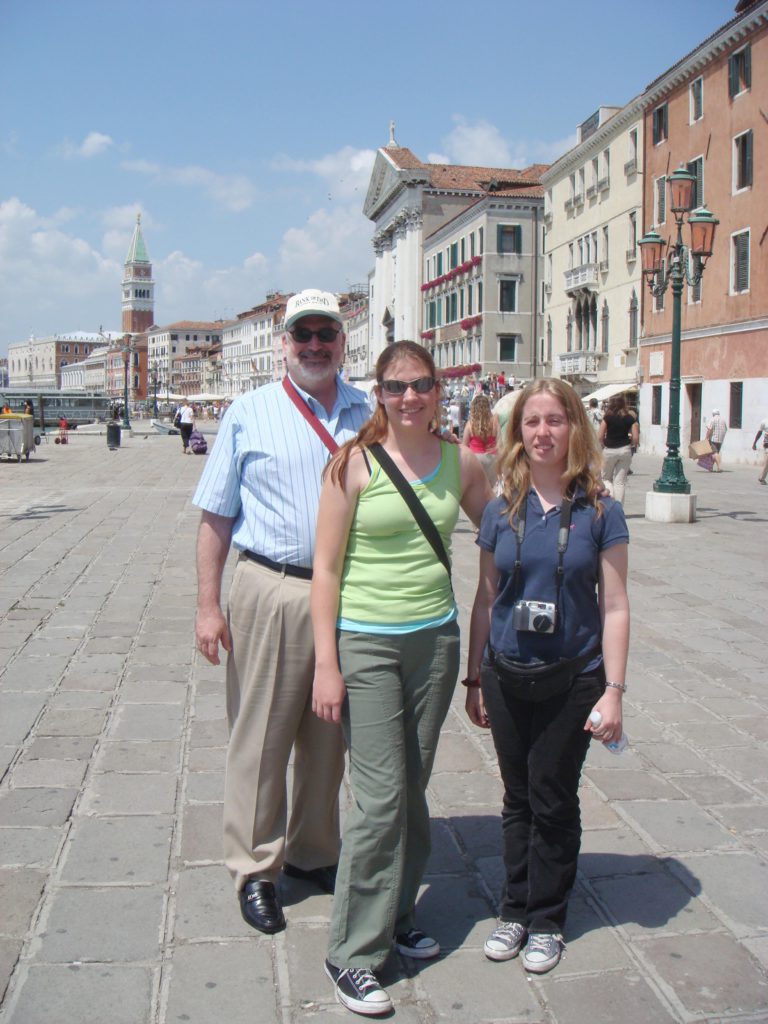
Florence to Venice
We left Florence at 8 AM and header over and through the Apennines on the fours hour drive to Venice. The scenery along the way was initially green mountains with a sprinkling of houses and olive groves, but near Venice it changed to pastureland. The weather in Florence looked threatening, but in Venice is was mostly clear and about 90 degrees.
A water bus took us from the end of the bridge to Saint Mark’s square. With a little time to ourselves, we strolled along some of the smaller passages and had some delicious sandwiches and calzones at a snack counter. Then we met our local guide back at Saint Mark’s for some information about the history of Venice.
While we waited to enter the cathedral we noticed water coming up from the drains as the tide came in, driven by a strong wind. Before we could enter they had to change to a door at a higher elevation. Inside, the cathedral is fairly ugly, although it is admittedly almost 1000 years old. The tiled floor rolled like the sea due to settling.
The local guide dropped us off at the Murano Glass shop — not the real one on the island, but a huge shop a block or two from Saint Mark’s Square, with many floors and many rooms on each floor. We saw a demonstration of glass blowing, where the craftsman mad a fairly elaborate vase in about three minutes. It was really impressive and fun to watch as always. Afterwards we shopped for glass thingamabobs and wandered the narrow passageways until it was time for our gondola ride.
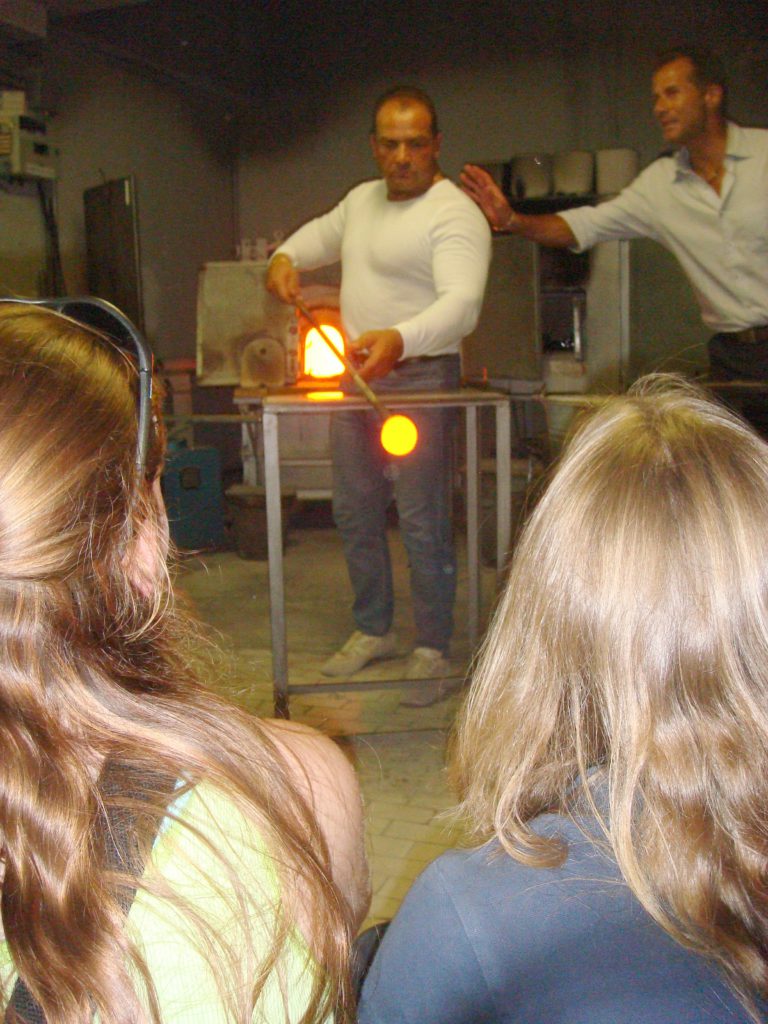
Unfortunately, it was also time for a storm, and it got cool and began to pour. On the bright side, we weren’t already in the gondola.
Instead, we went to one of the cafes off of the square where we paid extortionist prices for espressos and listened to live jazz.
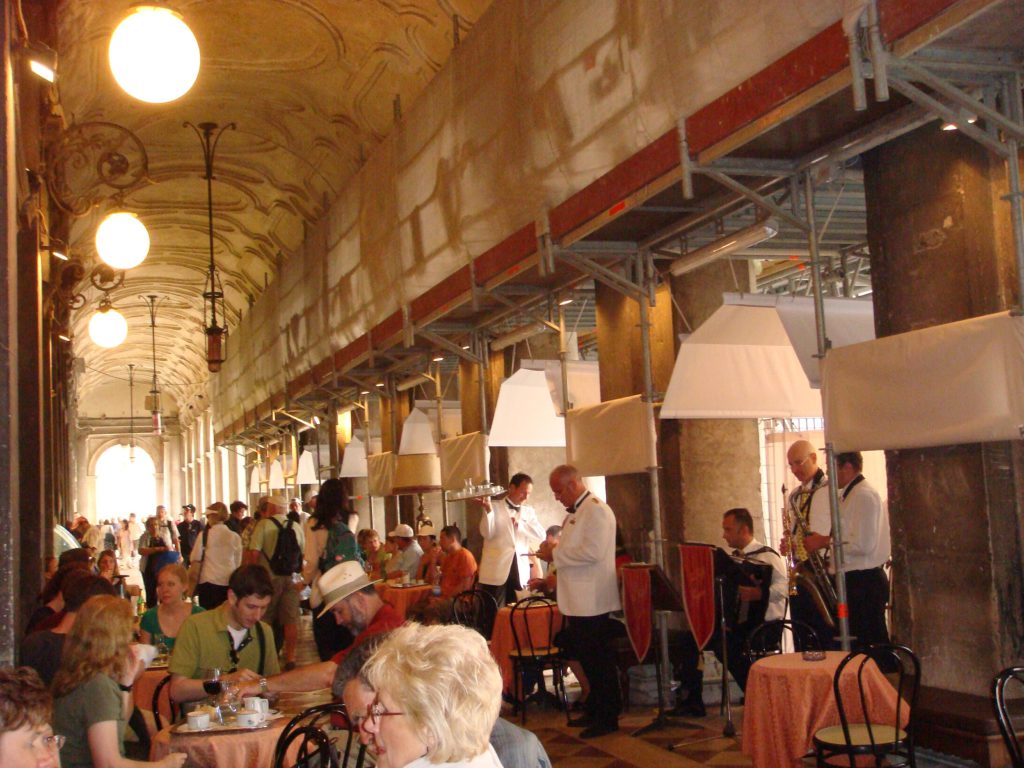
After about thirty minutes the rain stopped and the girls ventured out to feed the pigeons. One of the decided to go for a ride on Dani’s head, and was content to sit there as we strolled about a block. It must have been migrating.
A few people did stick around and got a gondola ride, including a couple celebrating their twentieth wedding anniversary. Last year she lost the stone from her wedding ring and has been wearing a cheap replacement. On the ride he took her ring, threw it overboard, and gave her a nice new one.
Then we caught the water bus back to the land bus to our hotel. The Hotel Anthony is not far from the bridge to the island. It’s an older hotel in fairly good shape, but it’s the kind of place where the shampoo comes in a Taco Bell hot sauce packet. Definitely not four star. My first stop was the front desk, to pay three Euros for the “free” wireless Internet service.
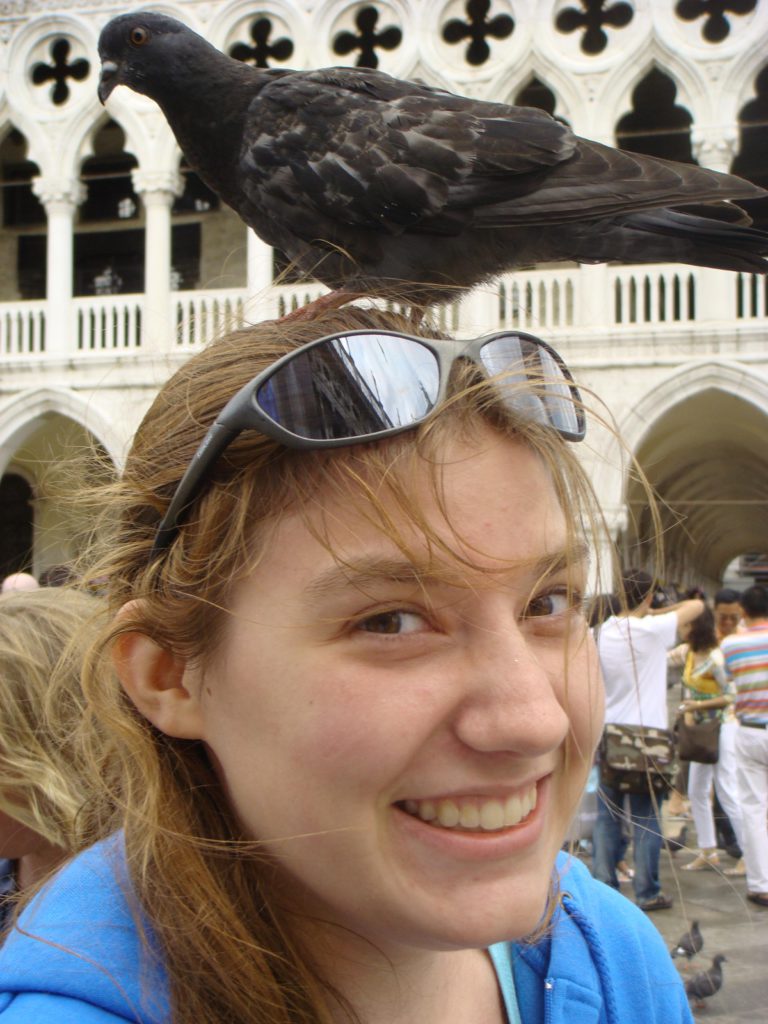
We had a group dinner at the hotel that was fine, and shared our Ferrari Spumante (fairly dry, like off-dry Champagne) with the anniversary couple.
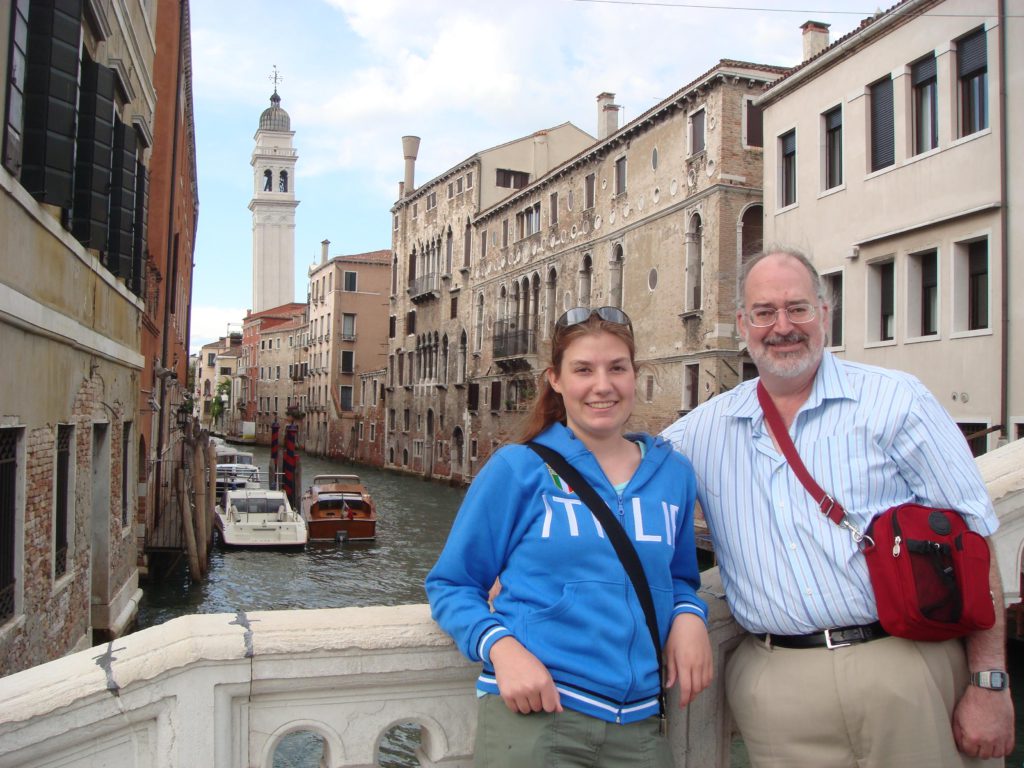
Thursday, July 5, 2007
Venice to Lucerne
We spent Thursday on the bus from Venice to Lucerne. Leaving the hotel at 7:30, we took a wrong turn at Milano and so had lunch in a truck stop. It was delicious! Unfortunately, this cost us an hour or two of extra driving time.
Our morning drive paralleled the Dolomite Mountains. After lunch we turned north and began to climb up into the Alps.
The buses here record the driver’s hours on a paper disk (to become electronic next year), and the drivers have lots of restrictions, including a 45 minute break every four hours. (In fact, tomorrow our driver isn’t allowed to drive at all, hence our two-day stay in Lucerne. )
We stopped in Lugano for one of these breaks. It’s where the home office of Globus is. Lugano is a beautiful and pricey shopping area and resort just past the Italian/Swiss border.
It seemed strange to have to stop at the border at all, but of course Switzerland isn’t part of the EU (which means we’ll need some Swiss Francs, too).
After Lugano the road climbed steeply, and we entered the most picturesque scenery I’ve encountered. Sharp, snow rimmed peaks towered above us, their bases blanketed by emerald grass. Cows with placid brown eyes and real cowbells around their necks grazed on the steep slopes, well above the treeline.
We stopped at 6000 foot Gotthard Pass to take photos and discovered the temperature had dropped from 90 degrees to 50 degrees during our half hour ascent.
On the other side of the pass, rivulets collected in a small pond, flowing out in a gradually increasing stream — the headwaters of the Rhine. It twisted between grass-carpeted shoulders and rocky outcroppings.
Passing through the narrowest gorges, the scenery resembled a model train layout, with its exaggerated topography, crisscrossing railroad and foot bridges, and cascading waterfalls. In many spots the road was covered to prevent avalanches or rock slides from scraping the cars off. Occasional outposts or solitary cottages appeared unexpectedly around each bend.
As we descended we passed from the Italian-speaking part of Switzerland to the Swiss-Deutsch part, which represents 70% of the country. The road curved through many tunnels, the longest of which was 9 kilometer. There is a far longer tunnel that bypasses the pass, but we didn’t take that one because we would have missed the scenery.
We arrived in Lucerne at 7pm, after almost 12 hours on the bus. Good thing it’s a comfortable bus and Lia is so entertaining! The temperature was back up to 80 degrees .
Our hotel, the Astoria, is in the center of downtown. It has many restaurants, and there is a lot of shopping nearby, and it’s a short walk to the lake. The hotel is the poorest of the trip so far, but is, frankly, more like what I was expecting. The soap is literally less than a square inch, and comes in its own hot sauce packet.
The hotel’s atmosphere isn’t helped by major construction of a meeting hall. The view outside my window is of a twenty foot square concrete room, and their is scaffolding inches from the glass. On the other hand, the street noise we were warned about won’t be a problem in this room!
Anyway, it’s nice to be off the bus. Most of the group was going to a folklore dinner, but we weren’t really in the mood for something so touristy, so we strolled across the historic wooden bridge to the other side of the river and had fondue and dinner in an outdoor cafe at the Hotel des Alpes.
I stayed up until midnight doing my journal, responding to students and trying to upload files through the lame Internet service at the hotel. I was sitting in the temporary lobby when our well-oiled group returned from the folklore dinner. Reports were enthusiastic, but I’m not really into events that include a beer drinking contest, so I’m glad we skipped it.
Friday, July 6, 2007
Lucerne
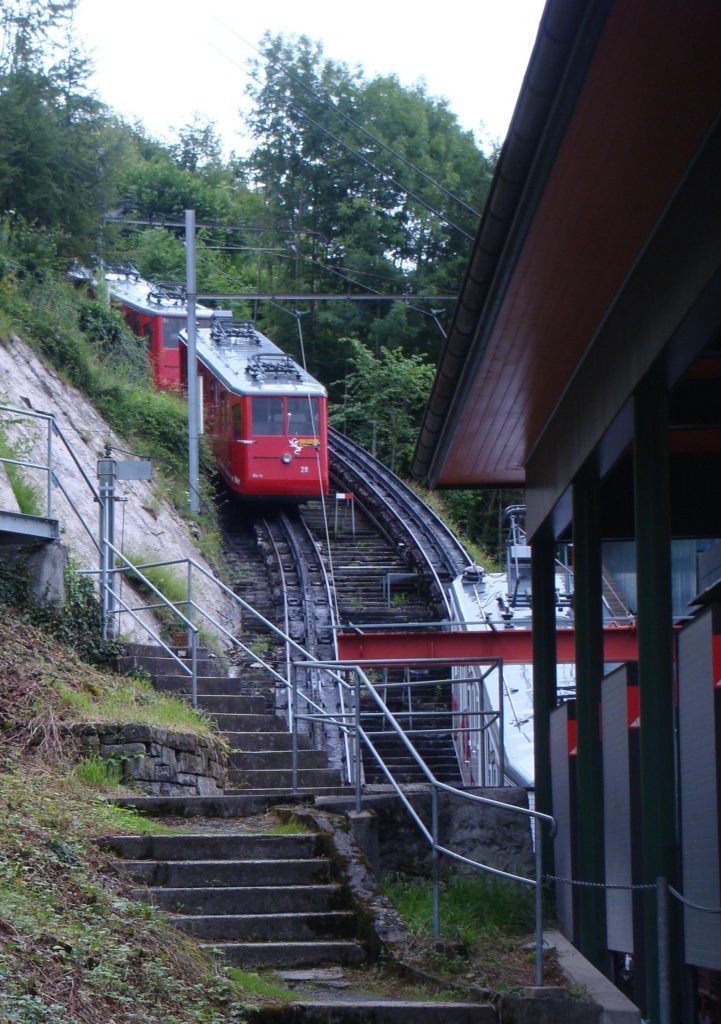
Another 6 AM wakeup call, for an early breakfast and ride on a coach borrowed from another group. We were the first ones to to board the cog wheel railway that ascends Mount Pilatus. The weather at the base was mixed sun and overcast, so we weren’t sure what it would be like on top.
Legend has it that after Pontius Pilate committed suicide the area where he was buried was cursed. So the Romans moved him to the most remote spot they could think of. This was it. (Personally, if I’d been assigned to do that, I would have dumped him off a bridge and just claimed I buried him on top of a 7000 foot mountain, but hey. ) There was also something about a dragon guarding it, but I missed the connection somewhere.
Anyway, Globus gave us these really nice embroidered caps with the dragon on them, so our entire group looked like a coed baseball team.
The cog wheel train ascends the mountain at a steep angle, near 47 degrees in most spots, so the trip up was spectacular. Towering fir trees gradually gave way to grassy slopes broken by the occasional slide of gravel sliding down a sheer face, or rivulets splashing over jagged boulders. Halfway up we passed a farmhouse. The farmer had already taken his cows even higher on the hillside, and in another few minutes we heard their cow bells ringing, and then passed them as they grazed. (I’d love to have heard the conversation: “Hey, look at that really tall mountain. The top of that would be a great place to graze cows. “)
At the top we passed into the underside of the clouds, so except for occasional glimpses, visibility was near zero. It was about 40 degrees, with a stiff wind blowing. Stiff enough that we couldn’t take the gondolas down, which is too bad, I’m sure it would have been amazing. But we enjoyed the ride down on the cog wheel train, too.
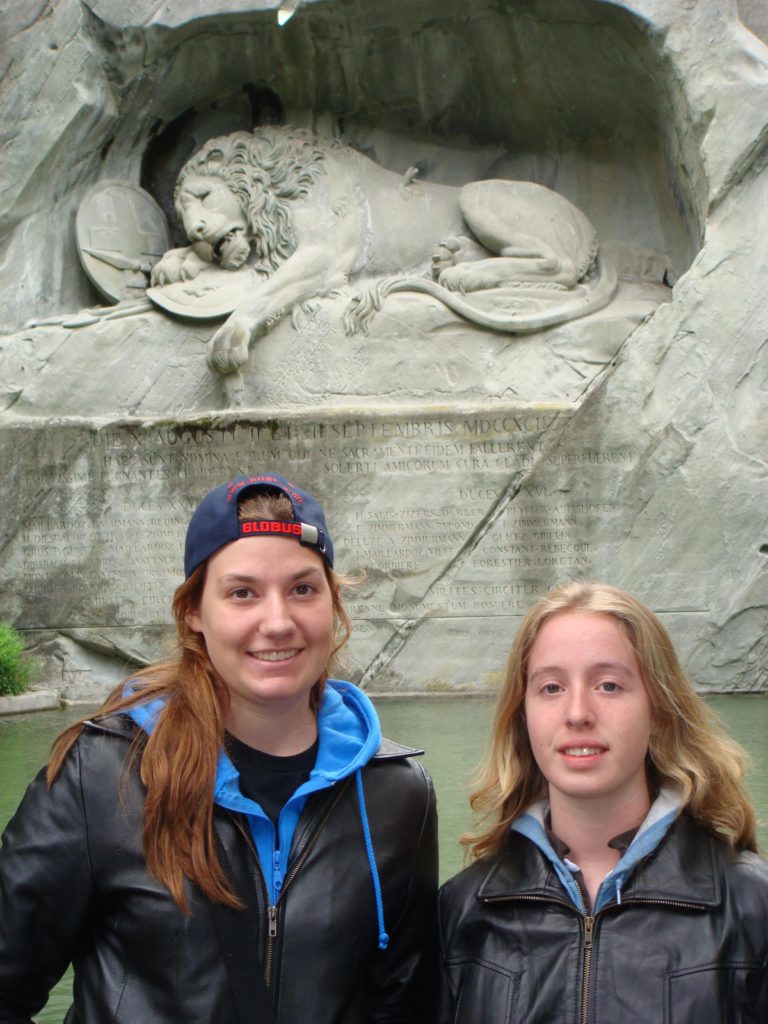
Back downtown we visited the Lion sculpted from the rock face, the most famous site in Lucerne. It commemorates the Swiss Guards killed while unsuccessfully defending Marie Antoinette during the French Revolution. If you look carefully you can see that the sculptor played a joke on his patron, who he thought was a pig. Look at the outline of the opening.
Nearby we stopped at Bucherer’s department store to use some vouchers for free spoons and buy some chocolate. Nice jewelry and Rolex watches here. The prices aren’t as outrageous as the rest of Europe.
Near the lion sculpture is a restaurant Lia recommended called The Old Swiss House. Its traditional architecture in the midst of the modern city makes it look a bit like a tourist attraction, but the three of us decided to try it. Wow! What a fabulous meal. The gazpacho was the best I’ve ever tasted (sorry Linda) with fresh diced ingredients served on the side to dump in to your taste.
Weinershnitzel was prepared tableside. Let’s just say a serving for one involved two sticks of butter. And the creme brulee (called burned cream catalan here) was possibly the best I’ve ever had. Best of all, I discovered they were a Wine Spectator Award of Excellence winner with a very deep list of old Bordeaux at crazy prices. Would you believe 1961 Ch. Croizet-Bages for $130? I couldn’t resist. What a fantastic bottle of wine that was! On the way out the proprietor pointed out their Mouton vertical — every vintage back to the 19th century! Because every year’s label is unique, the worst years are the most expensive, since those bottle were not laid away. So the 1946, which I’m sure would be undrinkable, set them back $12,000! Anyway, it was an amazing experience, and all three of us really enjoyed it.
After lunch we did some tourist shopping. While the girls were in a bookstore I found an inexpensive digital camera as a gift for Christina. Her camera has been eating batteries like a demon, so I think she’ll have a lot more fun with this one.
We strolled back to the hotel and had a restful afternoon, then a group dinner (tasty sauteed fish with a lemon sauce) in the dining room.
Saturday, July 7, 2007
Lucerne to Paris
We spent most of Saturday on the bus. Almost as soon as we left Lucerne, the scenery changed to rolling hills and farmland. We skirted a few outlying vineyards in Burgundy, but the most memorable sights were the many vibrant colored fields of sunflowers. Several truck stops provided breaks and lunch, and we arrived at the Holiday Inn Republique around 5 pm. Dani and I stayed here once before, but it has been remodeled since then. It’s a large, older hotel with nice rooms. They serve a full complimentary breakfast and the worst (i. e. American) coffee in Paris.
After a couple of hours rest we headed back out for an evening sightseeing tour. We’ve only purchased two of the optional excursions on this trip because we know our way around these cities. This tour was particularly popular, with 100% enrollment by the group.
Because Miguela couldn’t drive any more that day, we borrowed a bus from another group, a Trafalgar tour. This bus had 52 seats compared to our 44, and would have been very uncomfortable for daily use.
We began by passing through one of the seediest parts of Paris, an unlikely combination of wedding shops and sex shops. We disembarked in front of the Moulin Rouge, which I hadn’t realized was in the midst of this detritus. A tourist tram took us up the hill that is Montmartre. The district turned first trendy, then touristy as we reached the top, where Sacre Coeur overlooks the city.
Searching for a non-touristy restaurant we walked away from the square and tried a restaurant called La Bonne Franquette. Unfortunately it turned out to be just as touristy as the rest, and they tried to pull a bait and switch on the wine I tried to order. The food was mediocre by French standards, but certainly adequate.
After dinner we purchased chocolate and Nutella crepes from a take out window and strolled back to the tram stop.
It was now past 10 pm and the lights of the city began to come on. We drove around the city admiring the lights along the Champs Elysee and then stopped at the Eiffel Tower, where Lia convinced everyone someone was going to jump off. Of course what we were really waiting for was the strobe light illumination that occurs for ten minutes at 10 pm, 11 pm and midnight. This is part of the system installed for the Millennium, and recently put back into use.
On the way back to the hotel we drove past Notre Dame and through the Marais district, with its bustling gay bars.
By the time we returned to the hotel and I did some email it was nearly 1 am, not leaving much sleeping time before our 6 am wakeup call.
Sunday, July 8, 2007
Paris
The streets were nearly deserted Sunday morning, a big contrast to Saturday night. Our local guide, Isabella, took us, past Notre Dame and the Sorbonne, then to the Eiffel Tower to get into line early, before its 9 am opening. We had tickets to the second floor, but considered leaving the tour and going to the top. In the end we opted for convenience and stayed with the group, getting dropped off on the Rue de Rivoli outside the Louvre. We had a late breakfast or early lunch at Angelina, a tea room similar to our favorite, La Duree. Ahh! at last! French food. Baguettes, cheeses and super rich hot chocolate.
We walked to the pyramid and entered the Louvre, which was perhaps a bit less crowded than on our last couple of visits.
We spent about two hours doing the highlights, including the medieval castle they unearthed when digging the new basement, the Venus de Milo, Mona Lisa and Winged Victory of Samathrace.
We probably spent the most time in the 17th century Flanders galleries. All told I estimate we walked though about five percent of the Louvre.
Back on the Rue Rivoli we had drinks in a sidewalk cafe and the girl went to the nearby fun fair and rode one of those rides with the swings around the edge.
Henry, the director of Alcorn McBride sarl, picked us up a bit before 5 pm and took us to the Champs Elysee for dinner. His son Zacharie came along tool. Zacharie is now fours years old, a handsome little boy.
Originally we had intended to hang out for a while and then go to dinner later, but we were all tired and Zacharie was feeling a bit under the weather, so we decided to have an early dinner at Fouquet’s, a famous restaurant across from Louis Vuitton on the Champs Elysee.
The food was surprisingly good for a touristy place, and we enjoyed having a chance to relax and chat with Henry. We were back at out hotel before 8 pm, and enjoyed a good night’s sleep.
Monday, July 9, 2007
Paris to London
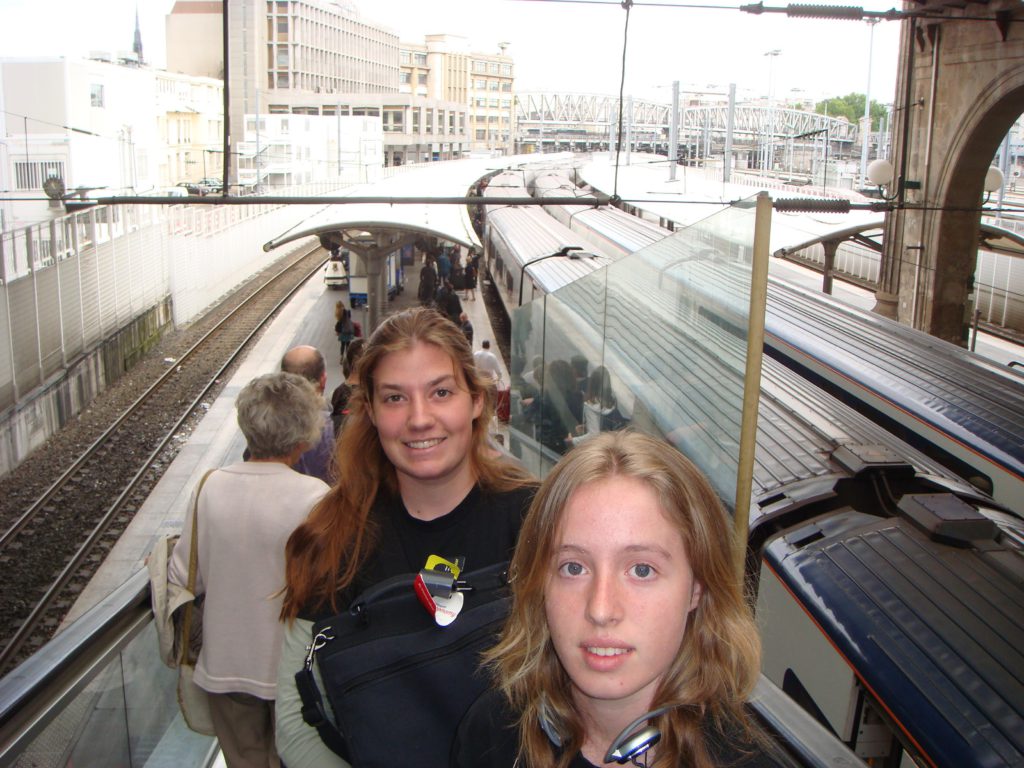
After breakfast we took a short bus ride to the Gare de Nord, where we said goodbye to our driver, Miguela, and caught the TGV train. Once on the outskirts of Paris, the train accelerated to over 200 miles per hour, and the French countryside raced past.
It goes slower in the chunnel, because of the amount of air is displaces as it moves through the relatively constrained space. The chunnel transit took about 20 minutes. When we emerged in England we traveled slower, because the track is not as good. We arrived at Waterloo Station shortly before 1pm, with a one our time change.
A bus ride across London brought us to the Hilton Metropole, a large convention hotel that is quite comfortable. We said goodbye to our tour director, Lia, and were handed over to the Globus representative who work in the office at the Hilton. We didn’t sign up for any of the optional London tours, so we’ll be mostly on our own, now.
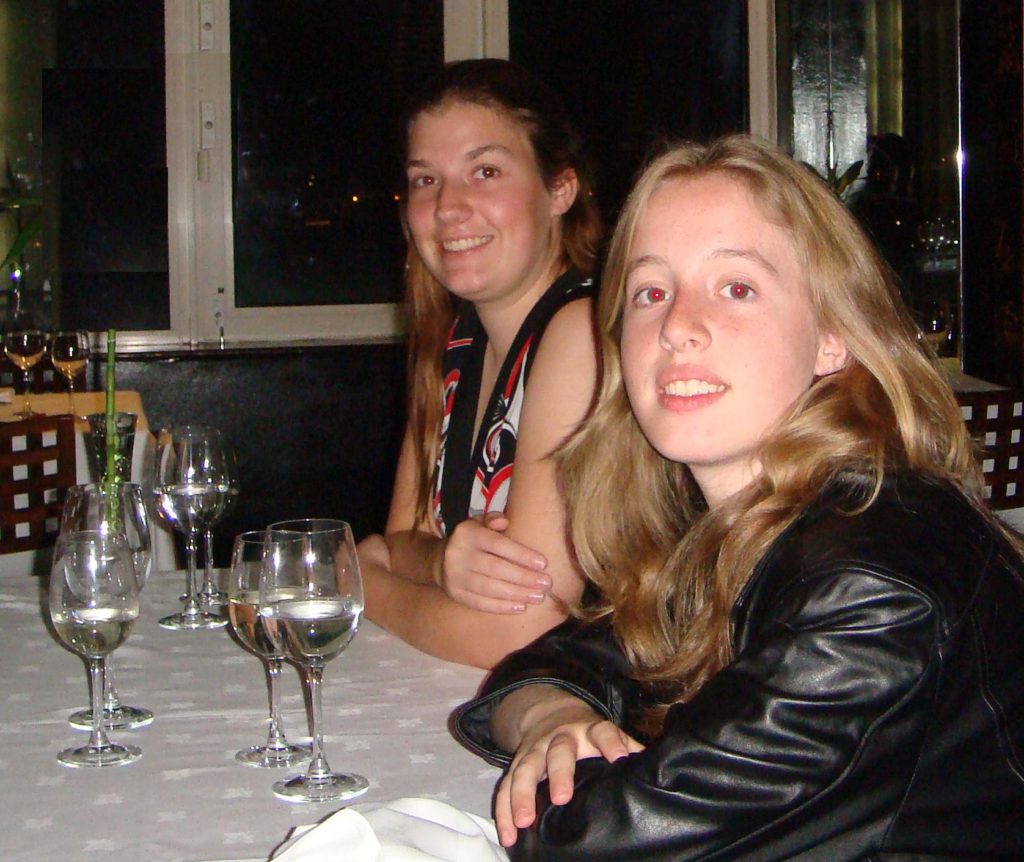
Dani and Christina took advantage of the comfortable beds and had a long nap. For dinner we rode the elevator up to the 23rd floor and had a nice Japanese meal at Nippon Tuk (is that name a joke?)
Tuesday, July 10, 2007
London
We were extremely lucky with the weather today It has been raining in London for a month, but today was lovely, with scattered clouds and temperatures in the mid seventies. More importantly, it was a lovely evening for the open air theatre.
Our day began with the last Globus event, a city tour around London. We passed all the usual sites and then stopped at St. Paul’s where we left the tour and walked across the Millennium Bridge to Shakespeare’s Globe theater. Dani and I saw Coriolanus here on our last visit, but this time we just took the guided tour, which was quite interesting, and gave us a chance to experience to view from the yard and the lower seating. We discovered that the second tier seats have more legroom than the third tier seats we sat in last year.
A couple of performers in one of the current shows were rehearsing while we were there, and they seemed to be fairly mediocre.
After the tour we crossed back over the Thames and caught the underground to Embankment, where we had fish and chips and curried chick for lunch in the cafe in the park. There are many fewer pigeons in London than there used to be because it’s now prohibited to feed them. They seemed quite put out about this.
We walked to Trafalgar Square and spent an hour in the 18th century painting wing of the National Gallery. It was quite impressive to see rooms full of paintings by Monet, Renoir, Degas, and Van Gogh.
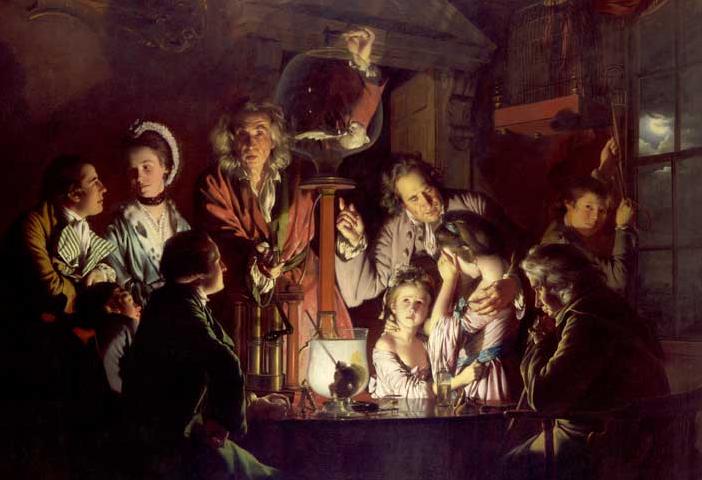
I think everyone’s favorite painting was “An Experiment on a Bird in the Air Pump,” in which artist Joseph Wright perfectly captured the varied emotions of each person present.
Our next stop was Harrods, which is more like an entire city inside one store. Dani wanted to proved to herself that you can even buy bridles for your horse in this department store. You can. But like almost everything else at Harrods, they’re expensive. Our purchase was sandwiches, bread and cheese for tonight’s picnic.
Back at the hotel the girls took a long nap and then we took the tube to Regent’s Park. Outside we picnicked under the tents, but the girls didn’t like the yellowjacket that was interested in our sandwiches. Ah, the joys of outdoor dining.
Macbeth was interesting. It was staged very similarly to Trinity Prep’s production, using a mixture of modern costumes and traditional plaid. The set was several large cargo containers.
All of the performers were either marginally or significantly better than their Trinity counterparts, with one glaring exception: Lady Macbeth. She played only one emotion — ruthlessness — throughout. And her sleepwalking scene was completely emotionless. I could feel Dani next to me, struggling not to jump up and show her how to do it.
After the show we walked back to the tube, and were back at the hotel by 11:30.
Wednesday, July 11, 2007
London
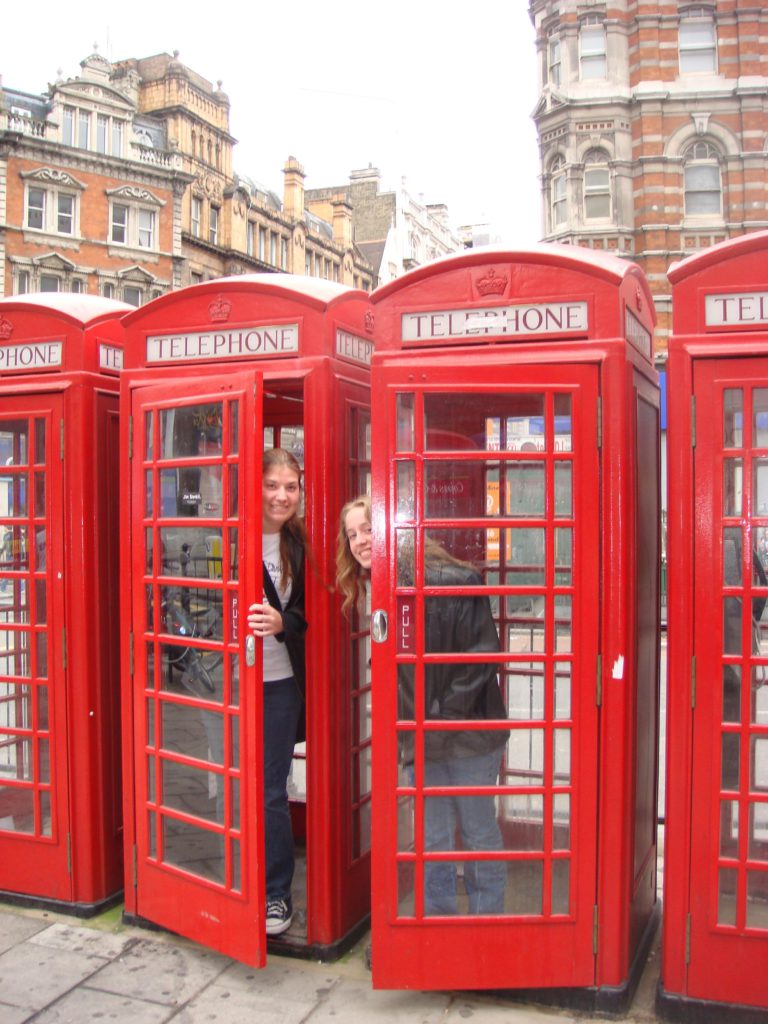
We took advantage of a rare day with no wakeup call to sleep in, and nearly missed the 10:30 cutoff for breakfast. Then we took the tube across town to The British Museum, where we spent a couple of hours looking at all the stuff the British stole from Greece and Egypt.
Avoiding the mediocre Indian restaurant we tried last time, we found another a half block north, called Chambeli, and enjoyed a leisurely four course lunch before returning to the hotel for naps before the show.
Linda had arrived for her day and a half in London, and was napping, too.
In the evening we went to the West End to see Mary Poppins at the Prince Edward Theatre. The staging of the show was amazing, with an entire house moving up and down, the attic and roof top expanding as needed, and lots of ‘magic. ‘ It used the original songs from the movie to great advantage, but more closely followed the book. The performers were all terrific, and the audience loved it.
I like act 2 better than act 1, because it does a better job of finding the story, which is about the father. The new songs they added are formulaic, and don’t measure up to the originals, but there aren’t many of them. It builds to one of the best endings for a musical I’ve seen.
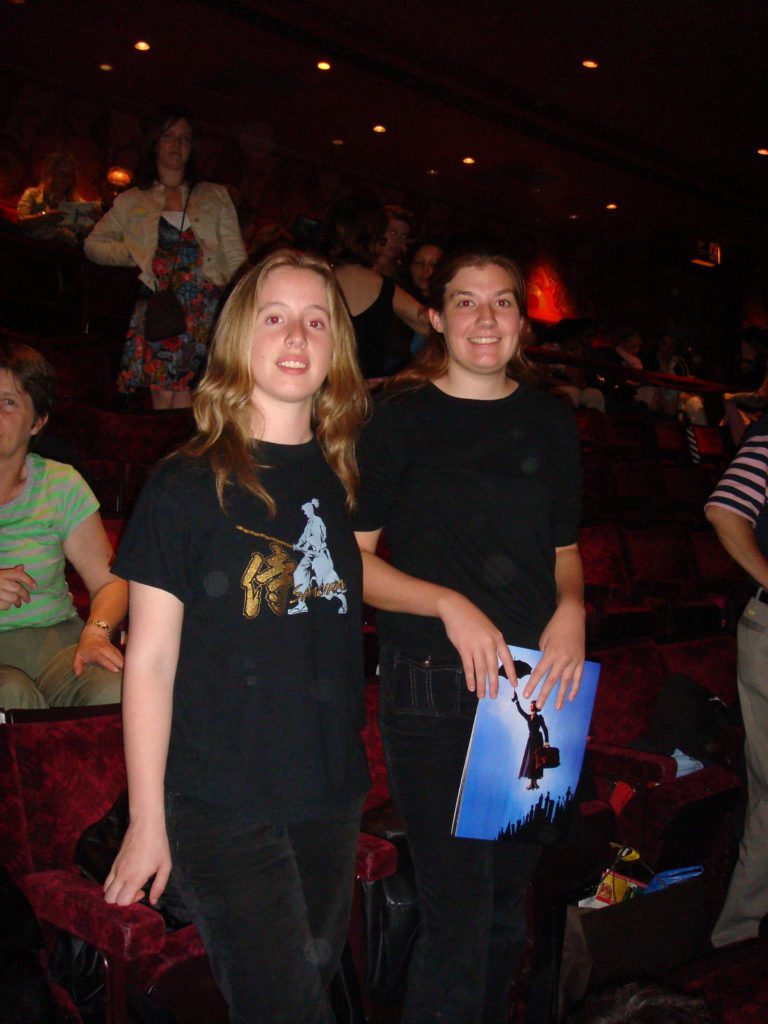
After the show we crossed the street and had an Excellent Thai meal at Patara. We got back to out hotel a bit after midnight, answering the question: “Do underground day passes really expire at midnight?” Not if you’re already inside the turnstiles.
Thursday, July 12, 2007
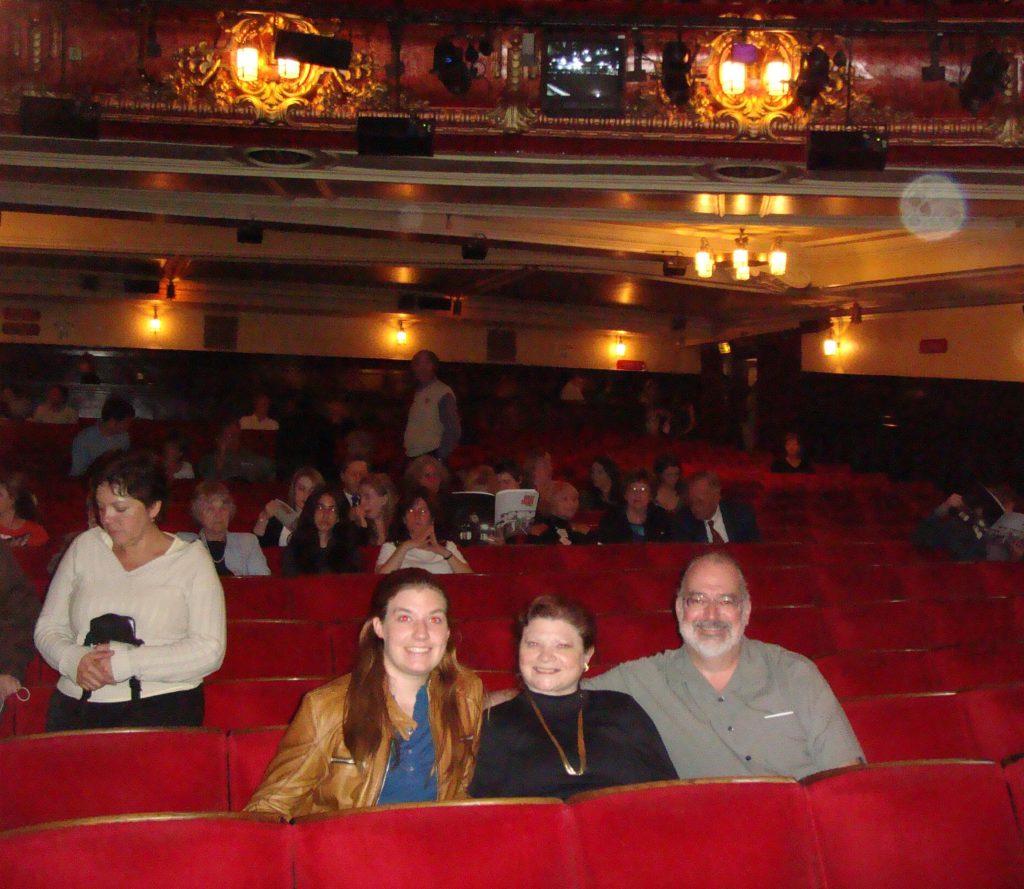
London
We slept in, then took a rather circuitous three segment underground ride to Marble Arch, a nearby place that’s hard to get to from our hotel. Today was the culinary highlight of our trip, a visit to Le Gavroche, London’s first 3-star Michelin restaurant (although now two start, since the original chef retired and his son has taken over.
Lunch consisted of eight courses:
- Rare peppered tuna
- Asparagus tips with truffles
- Wild salmon with crispy skin
- Fois Gras and a duck pastry
- Rack of lamb
- Cheese cart with about 50 selections
- Chocolate Gateau and sorbet
- Floating Islands
Yes, there were two desserts. Plus petits fours! Oh, and an amuse bouche to start. Oh, and hors d’oeuvres upstairs before hand.
There were about as many employees as guests, and the service was orchestrated like a ballet. Linda and I had the wine pairings with the lunch, and shared a taste with the girls. All eight wines were top notch, and brilliant matches to the food. The standout was a 1928 Maury Solera. The wines:
- Liefmanns Kriek Cherry Beer (amazing!)
- Don Jose Sherry Olorosa (bone dry)
- Puligny Montrachet, “La Truffiere,” Morey, 1999
- Tokay Pinot Gris, Beyer, 1997
- Ch. de Villegeorge 1999 (Haut Medoc)
- Le Soula 2002 (Rhone)
- Maury Solera 1928
- Vin de Constance 2001 (muscat)
I particularly enjoyed the Boulette d’Avesnes, an orange pyramid of cheese that we also had at L’Arpege, the 3-star Michelin in Paris.
It was an amazing three hour lunch.
To complete our European spree we headed for The Victoria Theatre and London’s greatest musical, Billy Elliot. It’s a particular treat to see this show, because it will probably never play in the US, due to its apparent appeal to young people but its extremely salty language. Dani and I saw it last year, but Linda wasn’t with us. This show is the reason for her whirlwind trip.
The show was terrific, but not as good as when Dani and I saw it last year with the original cast. This Billy was perhaps a better actor, and had a more modern dance style, and his enthusiasm made us suspect it was one of his first shows. They made some staging and dialogue changes that sometimes worked better but other times didn’t. The final half hour was particularly good, though. The show has a unique way of dancing through the bows that it quite exciting.
All in all, a very fine last day to our trip.
Friday, July 13, 2007
London to Orlando
We took advantage of Globus’ transfer service to get to the airport. It’s a really easy and economical way to do it. Meanwhile Linda headed off separately with a driver to catch her Delta flight.
Gatwick airport wasn’t the madhouse it was two weeks ago, although security was very, very tight. The only complication was that our tickets were for the next day(!) I’m not sure how that happened, but an extraordinarily helpful Virgin Atlantic agent at the baggage counter took care of getting our tickets changed, and we were all set.
I dozed during the nine-hour nonstop to Orlando, and Dani read Margaret Atwood’s Lady Oracle, about her tenth book of the trip.
We cleared customs in record time, and despite a jam on I4 dropped Christina at home before 7pm. Linda arrived shortly after 9pm.
Christina’s Favorites
- Venice
- Billy Elliot
Dani’s Favorites
- First Day in Rome
- Mary Poppins
Steve’s Favorites
- Mount Pilatus
- The Old Swiss House
Dani’s final postcard tally for the trip: 43.
Some Tips for Next Time
Globus buses seat 44, while Trafalgar buses seat 52. That would be a big difference in comfort over a week or more.
The little, laminated, folding map of London is great.
Chambeli is a good Indian restaurant on Southampton Row between the British Museum and the Russell Square underground station.
There also is a large Indian restaurant on the circular road around Regent’s park, a bit west of the south entrance.
When in Lucerne — even passing through at noon — eat at the Old Swiss House.
Consider avoiding connections in Gatwick. Orlando to Miami/Atlanta/JFK to Rome would be better.
Best seats for Billy Elliot would be front row of the balcony, because nearly all of the orchestra puts your eye level below the stage floor, so it’s hard to see the tap dancing.
Hotel Ratings:
Rome – Starhotels Michelangelo ****
Florence – Cosmopolitan Hotel *****
Venice – Alberghi Antony Hotel ***
Lucerne – Astoria Hotel **
Paris – Holiday Inn République ****
London – Hilton London Metropole ****
Anniversaries at Victoria & Albert’s
March 16, 2007
Ron and Bev invited us to Victoria & Albert’s chef’s table in Disney’s Grand Floridian. We were joined by Philipe and Audrey. Chef Scott was in town (at last!) and provided an amazing meal, with several new creative touches. The menus were slightly different for the men and ladies. Here’s mine:
Tasting Notes 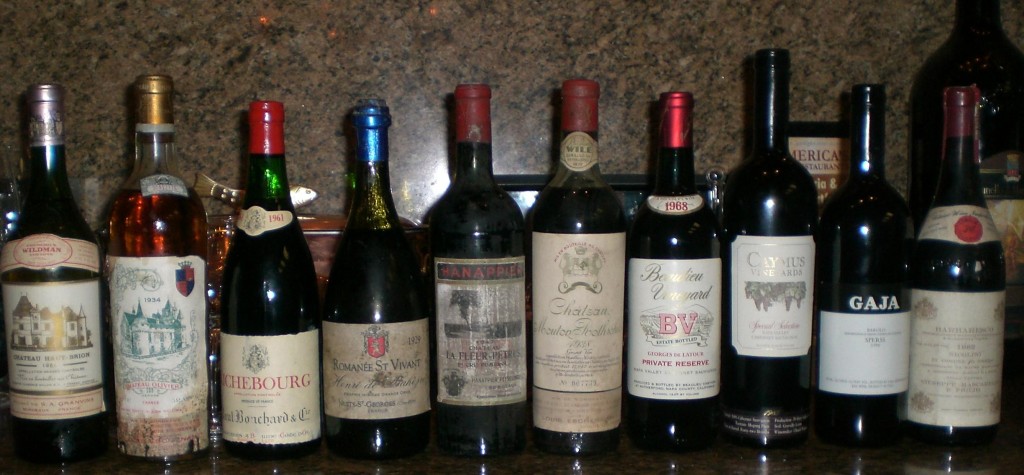
| Flight 1 | NV | Krug Champagne | Youthful color, nice effervescence, surprisingly nutty and toasty. | 88 points | ||
| Flight 2 | 1961 | Ch. Hut Brion Blanc | When I went to pull this wine from my cellar I was surprised to discover it was a white that had been misfiled in the reds! Since we love Haut Brion Blanc, this was indeed a pleasant surprise. This is the oldest vintage of Haut Brion Blanc I’ve tasted, but I would have gueesed itwas from the 90’s. Light straw color, intense lemon nose, later becoming intense crushed mint leaves, dust, bees wax, soap, youthful floral finish. The nose continued to improve for hours. After three hours: lemon sherbert-coated vanilla ice cream bar, a hint of smokiness. Probably the wine of the evening. | 98 points | ||
| 1934 | Ch. Olivier | Clear but somewhat orage. Oxidized nose but pleasant, nutty, balanced mineral and citrus flavors. | 83 points | |||
| 2000 | Ch. “Y” | Pale straw, floral, white pepper, honey, vanilla, banana creme brule, dry but really fruity, bubble gum finish(!). Fabulous wine. | 96 points | |||
| Flight 3 | 1961 | Richebourg Paul Bouchard & Cie. | Good color, big fruit nose, bacon fat, meat, youthful fruit finish, wood, citrus, cherries, mint, long, balanced, great match to pork reduction. | 94 points | ||
| 1929 | Romanee St. Vivant | Cloudy, plummy nose, caramel, sour cherries | 88 points | |||
| Flight 4 | 1938 | Ch. Mouton Rothschild | I wasn’t expecting much from this, but it’s way better than the ’38 Cheval Blanc. Youthful, fruity, cherries, mushrooms, wood, mint, amazingly youthful, shoe polish, lead pencil, licorice, very focused. | 97 points | ||
| 1947 | Ch. La Fleur Petrus | Somewhat corked, mint, big fruit, herbs, chewy, very young, vanilla, long fruit, wood. | 97 points | |||
| Flight 5 | 1968 | BV Georges de la Tour Private Reserve | Redwood nose, huge, chewy, mint, vanialla, big fruit, perfectly youthful, cherries, great match to corn and lamb confit. Nose later became pronounced curry. Fabulous bottle of a great wine. | 95 points | ||
| 1985 | Camymus Special Selection | Dusty, big fruit, still needs time. | 92 points | |||
| Flight 6 | 1970 | Ch. Caillou Creme de Tete Sauternes | Ice wine from Barsac. Really interesting, and right up there near Yquem. Vanilla, figs, marmalade, medium to low acid. | 92 points | ||
| 1996 | Ch. Suideraut | Botrytis nose, very low acid | 88 points | |||
| Flight 7 | 1990 | Gaja Barolo | Very corked. Velvety fruit | Not rated | ||
| 1982 | Barbaresco Nicolini | Medium ruby color, floral / meaty nose, sweet candy finish | 90 points |
Japan 2006
Wednesday December 27, 2006
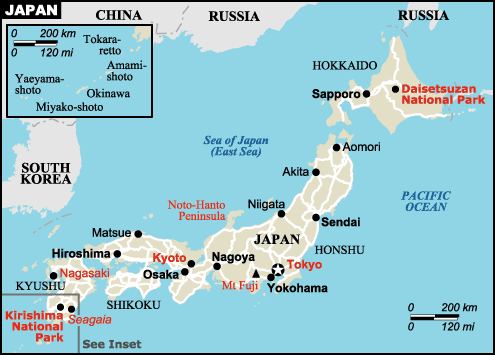
This trip to Japan sort of snuck up on us. Between having hardwood floors installed, buying new living room furniture, painting and redecorating the guest room, getting ready for Christmas, and entertaining my Dad, suddenly it was the day after Christmas and we were packing for Tokyo.
The 4 am alarm was an unwelcome sound, but our trip to the airport and flight to Atlanta were uneventful. By 10 am we were boarding Delta flight 55 for the 14-hour flight to Tokyo’s Narita Airport.
The Boeing 777 was a lovely plane, with business elite seats that nearly reclined flat. I exchanged 360,000 frequent flyer miles for the tickets back in March, when I thought Delta might be going out of business. Even though they are still in bankruptcy, it was gratifying to see that their international service has really improved — a necessity to compete with foreign carriers on their many new routes. As a result, the food and service was excellent. The Japanese meal I had was particularly noteworthy, with a dozen small ceramic dishes of tasty mysteries.
We were able to nap for several hours, which helped make up for the early morning and ten time-zone shift (Tokyo is 14 hours ahead of Orlando). Dani took advantage of my new laptop’s 9-hour battery to add 3500 words to her novel, The Last Telepath, which is now past 20,000 words.
The flight path took us over Alaska — I know, it doesn’t seem like a shortcut until you look at a globe. We arrived a bit after 2 pm Thursday, having lost an entire day somewhere over the Bering Sea, when we crossed the International Date Line.
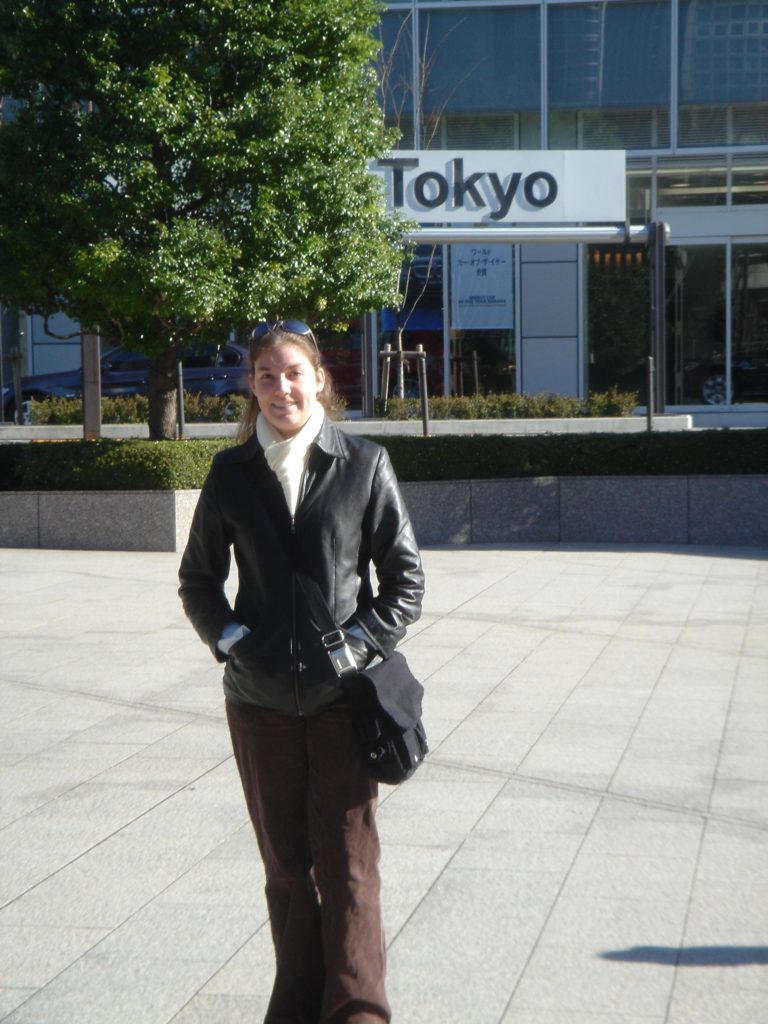
It was very windy in Tokyo, which made for an exciting landing. I was struck by how much the airport — and much of the city’s architecture, for that matter — looked like Frankfurt. In fact, all of Tokyo looks much more European than I was expecting. Except for the signs in Japanese, the sea of 5-foot tall, black-haired people, and the cars being on the opposite side of the street, it would be hard to distinguish it from any major European city.
The people are very different, though. Friendly but reserved, and extremely focused on doing things right. This was in evidence from the moment we arrived at the airport. Waiting for the bus to the hotel, industrious porters arranged and tagged our luggage and positioned it (and us) just so, in anticipation for the spot-on arrival of the bus. There was much more spoken English and English signage than I was expecting, although this changes dramatically, away from tourist-frequented areas. In the city there are lots of English names on stores and buildings, but they’re mostly just words that sound good to the Japanese, and don’t convey any meaning.
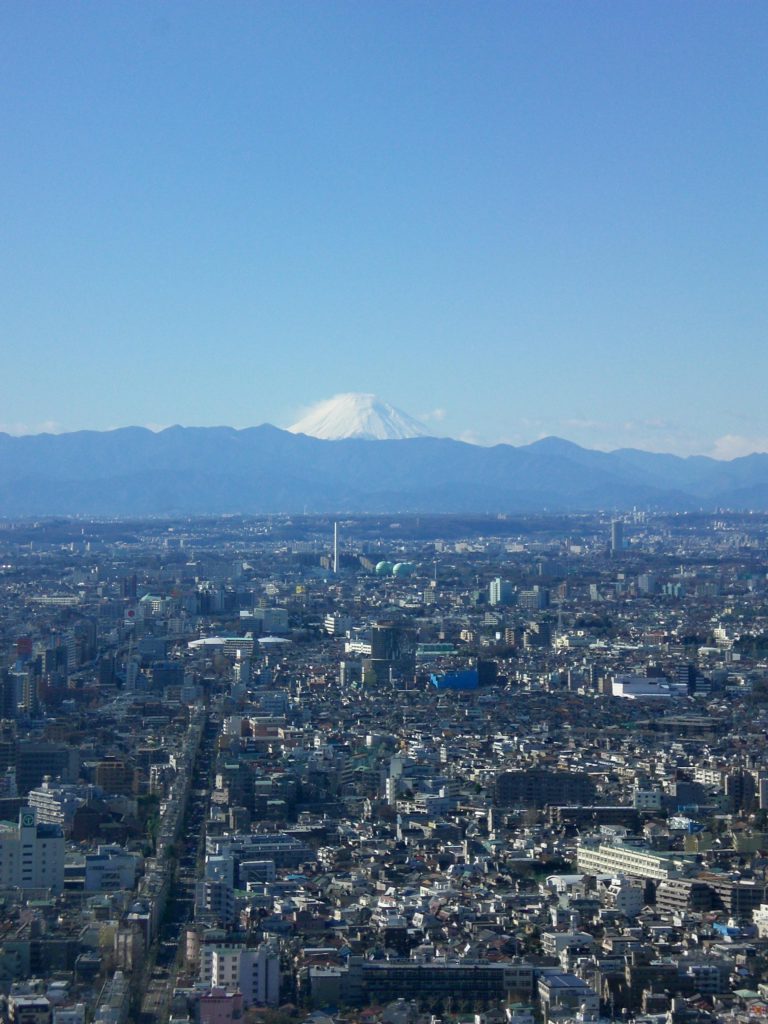
The topography of Japan is similar to Southern California, although one guide book described it as looking like a perpetual construction site. Certainly the land is thoroughly used, with every acre of the 45-mile drive from airport to hotel occupied by either a rice field or a building. Speaking of guidebooks, here are some things I learned by reading the excellent Time Out Tokyo during the flight:
Japan is an archipelago that stretches from the latitude of Miami to Montreal. Tokyo is about even with Atlanta.
The Japanese literacy rate is 99%.
There is no tipping in Japan, an odd but refreshing experience.
All but three of Japan’s 3000 streams and rivers are dammed!
Approximately 100 million Japanese practice the traditional Shinto religion. And 100 million practice a version of China’s Buddhism. Impressive, considering the population is 127 million. Clearly these people are hedging their bets.
On the drive from the airport we passed a Carre Four (French) supermarket, Tokyo Disneyland, a very, very large Ferris wheel, The Ginza shopping district, and Tokyo station. By this time the sun had set (at 4:30!), and the city was a mixture of Vegas neon and brightly lit office buildings. Workers were still hard at it in most of the buildings, but there were also a lot of office parties in progress. December 28th is the last day of work for most people, and culminates in a traditional Japanese-style blow out. Many of these workers won’t go back to their jobs until January 4th.
Central Tokyo was a literal tangle of streets, bridges, causeways and canals. It was amazing to see vending machines glowing in the darkest corners of these concrete mazes. In a city with low crime, these machines are safe from vandalism everywhere. And they are everywhere, vending, soft drinks, beer, cigarettes, condoms and even used teenage girl’s panties (although we didn’t actually see any of those. . . sorry, Dave).
At the hotel I was bemused that, in a city with little crime, procedure still dictated that every last baggage tag be matched to our luggage as we disembarked. This was all done for us, but it had to be done.
I didn’t realize it when I booked it, but we’re staying at the hotel where Lost In Translation was filmed. The Park Hyatt is a stylish, modern facility occupying the 41st through 51st floors of one of the western-most high rises in Shinjuku, Tokyo’s “skyscraper” district. At over 300 square feet, the rooms are among the city’s largest. The staff is extremely efficient (of course) and friendly, and well-versed in English. A measure of their efficiency was that when we checked in they didn’t have a record of the third person in our room. By the time we were escorted to the room, there were already three people there making it up for the extra person.
Our luggage was delivered moments later by a young lady who apologized profusely when I had to help her heft the largest piece onto a shelf to prevent her from being flattened — but better to lose face than life.
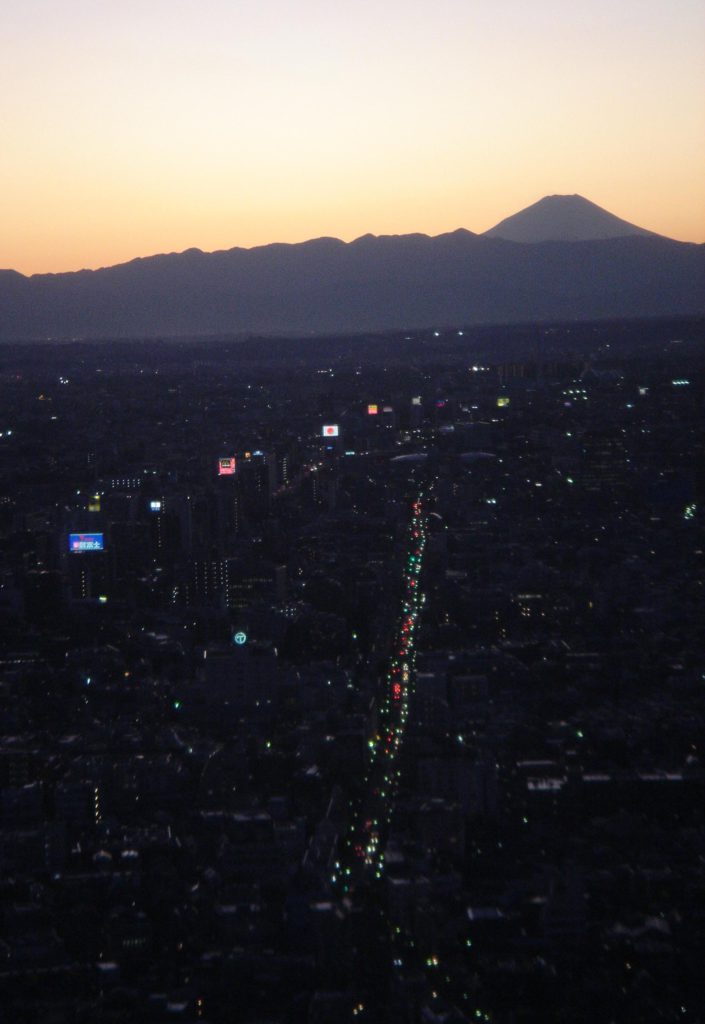
The wind had swept away the clouds, providing infinite visibility in all directions. Given how even the locals lingered at the windows, I suspect this is a one-a-year event. As promised, our room looked directly onto Mt. Fuji. I wonder how many guests have never spotted it?We had an early dinner in the lobby restaurant, Girandole, which specializes in American food. It was okay, but expensive, more attributable to the hotel it’s in than the cost of Tokyo these days, which after fifteen years of inflation isn’t nearly as high as it once was. The exchange rate is pretty good — 118 Yen to the dollar — but this is still going to be an expensive trip: a bottle of San Pellegrino water is $15. By 7:30 pm we were in bed, and didn’t surface until 7 am.
Friday, December 29, 2006
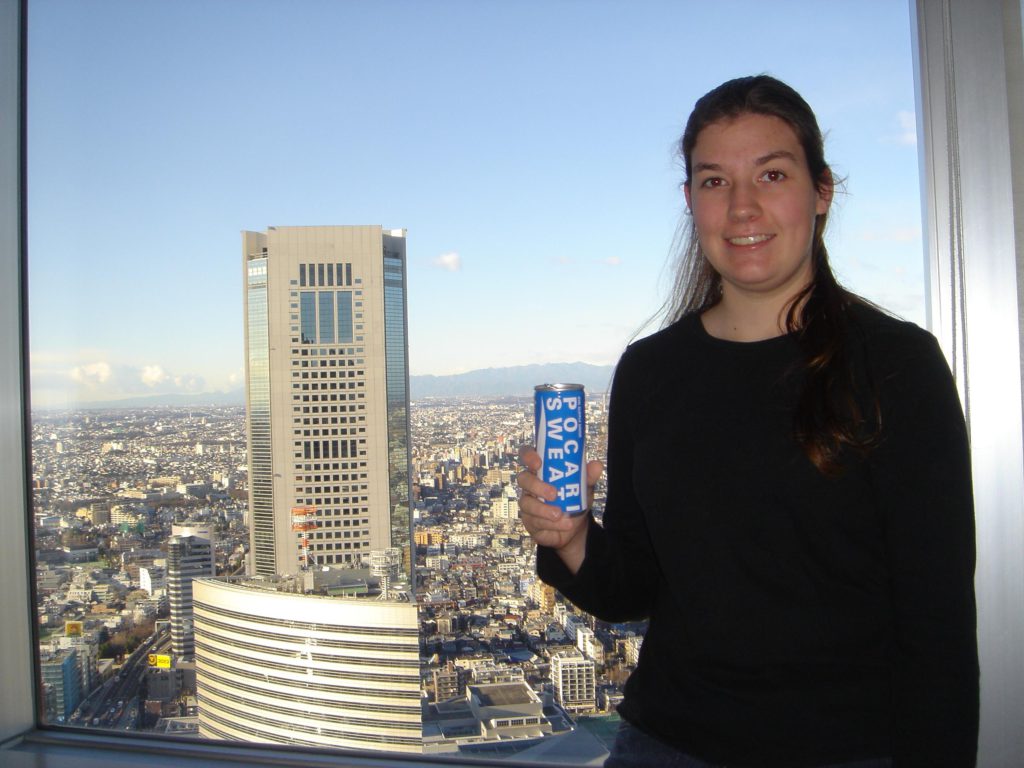
The next morning we awoke to find Tokyo dazzling. Still breezy, and with few commuters to replenish the smog, visibility remained infinite. Dani and I had an American breakfast in the lobby restaurant, with delicious croissants, scones and other pastries.
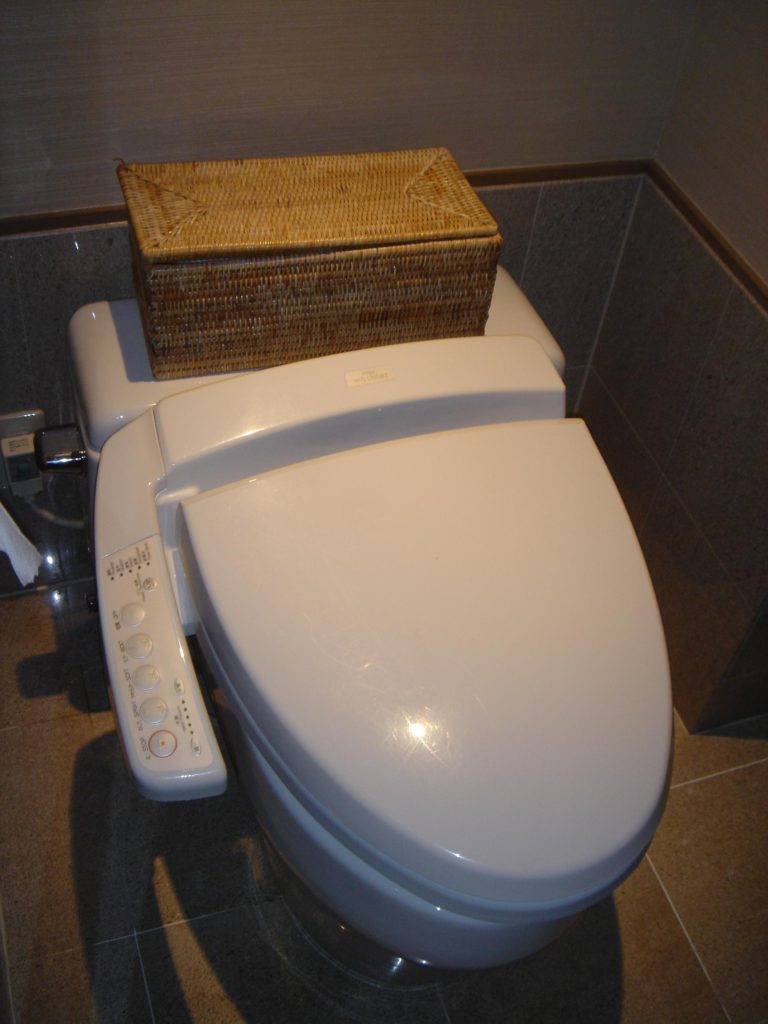
The most notable feature of the room is one the Japanese take for granted. No, this isn’t the captain’s chair on the bridge of the Starship Enterprise, although it has more buttons. Don’t press them unless you like surprises. It’s typical of most toilets in quality establishments in Japan. Because the Japanese don’t like rude noises, it is also the habit of women to flush the toilet multiple times to mask the sound. Because this was wasting water, many public toilets are equipped with audio players that make a flushing noise when their button is pushed!
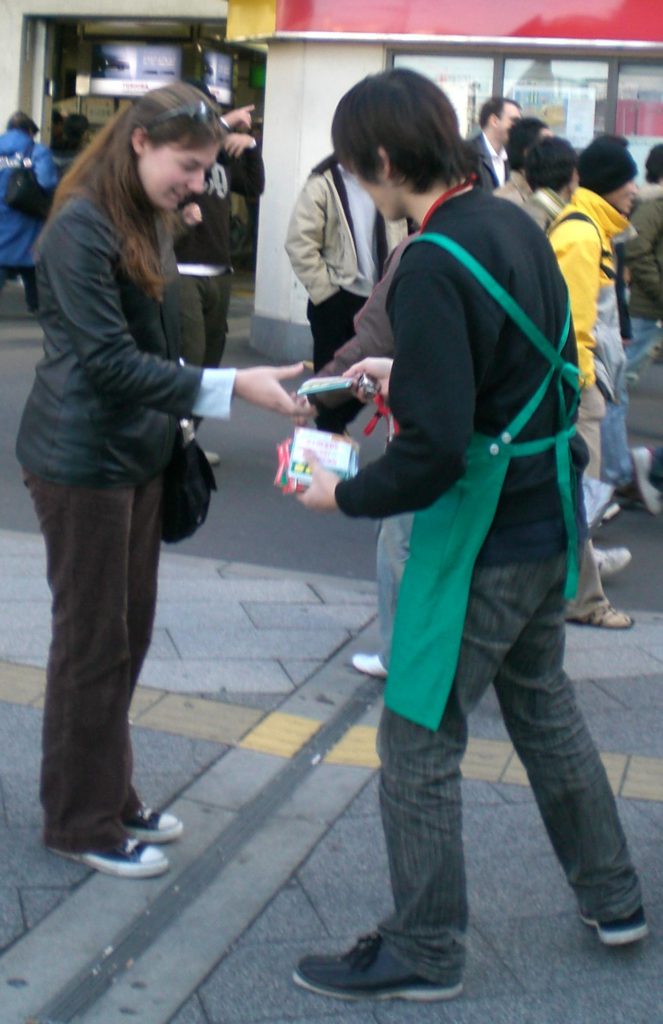
There is an entirely different type of public toilet that provides a far less pleasant experience. As you walk around Tokyo, you are often handed packets with advertising on them. The advertisers know you won’t throw them away, because they contain toilet paper — a necessity in this other caliber of public facility.
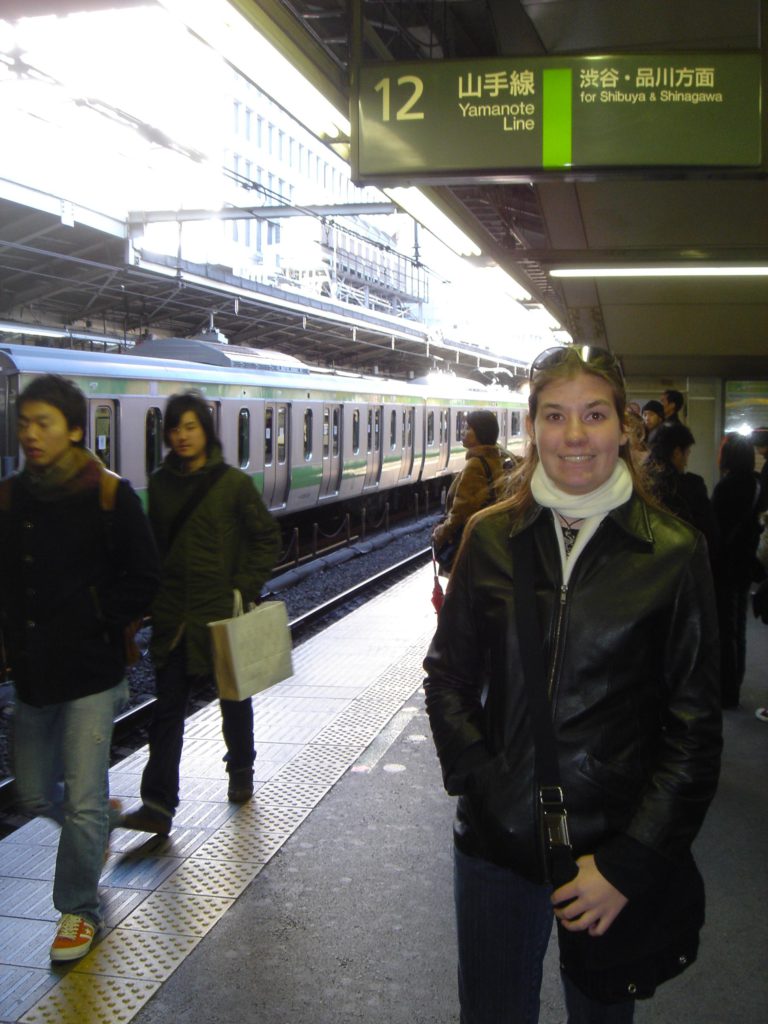
After a visit with the concierge, Crystal Wong, to organize our week, we set out to explore. A twenty-minute walk East brought us to Shinjuku Station. Thanks to careful reading of the guide and a few leaps of logic, we were able to use the automated kiosk to purchase three Suica passes, essentially wireless smart cards with pre-loaded fares. These will work on the Japan Railway trains, but not on the other three competing systems. Shinjuku Station is the one that often appears in films of rush hour in Tokyo: white-gloved personnel pressing commuters into trains so the doors will close. Fortunately for us, the New Year holiday means the trains are almost empty by Tokyo standards, with only a few people in each car. The Yamanote line is a particularly easy way to get around Tokyo, as it makes a loop, and stops in most of the places that interest visitors.
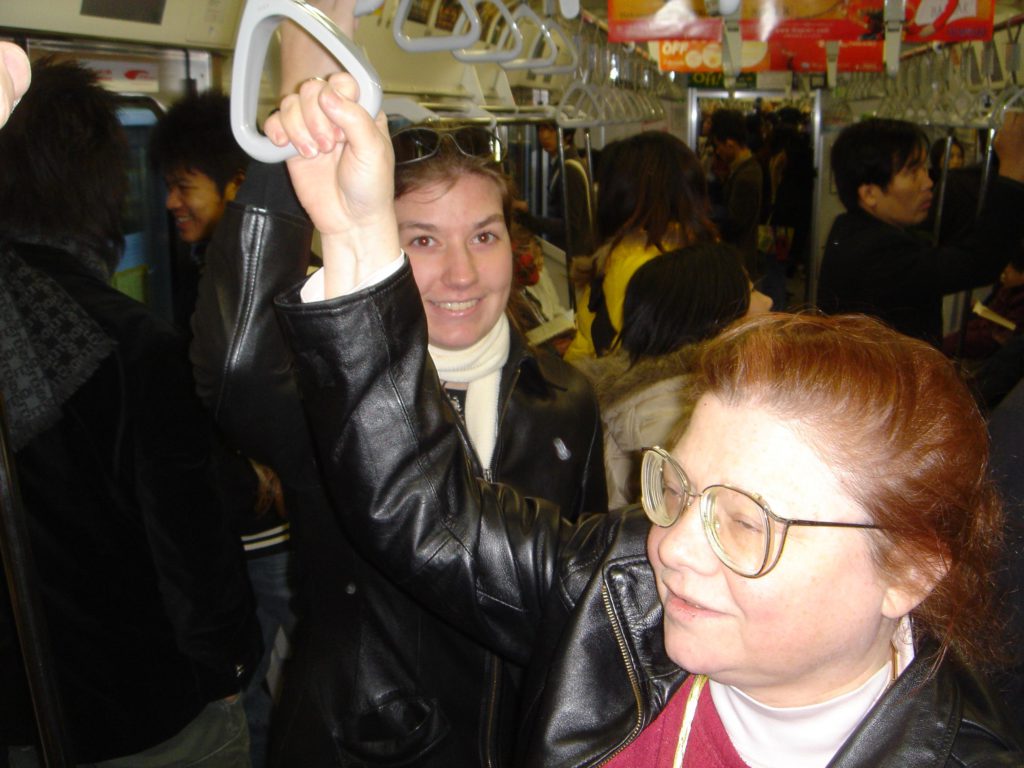
Most Tokyo streets aren’t named, which makes it a bit of a challenge to get around. Navigating the rail system is quite easy, once you get the hang of it, because routes — and the corresponding trains — are colored. Stops are named, but not always in English. Recognizing the Japanese characters is very difficult, but you can get off by counting stops. And the trains are so timely you can also tell where you are by how long the ride has been.
But once you come out of the station, you have to navigate by the names of buildings or businesses. Addresses are a combination of the ward, district, chome, block and building, sometimes named, but mostly numbered arbitrarily. This means maps are of only limited use. But if you stand staring at a map, looking lost, someone will probably offer assistance. Of course, they may then have to ask a policeman!
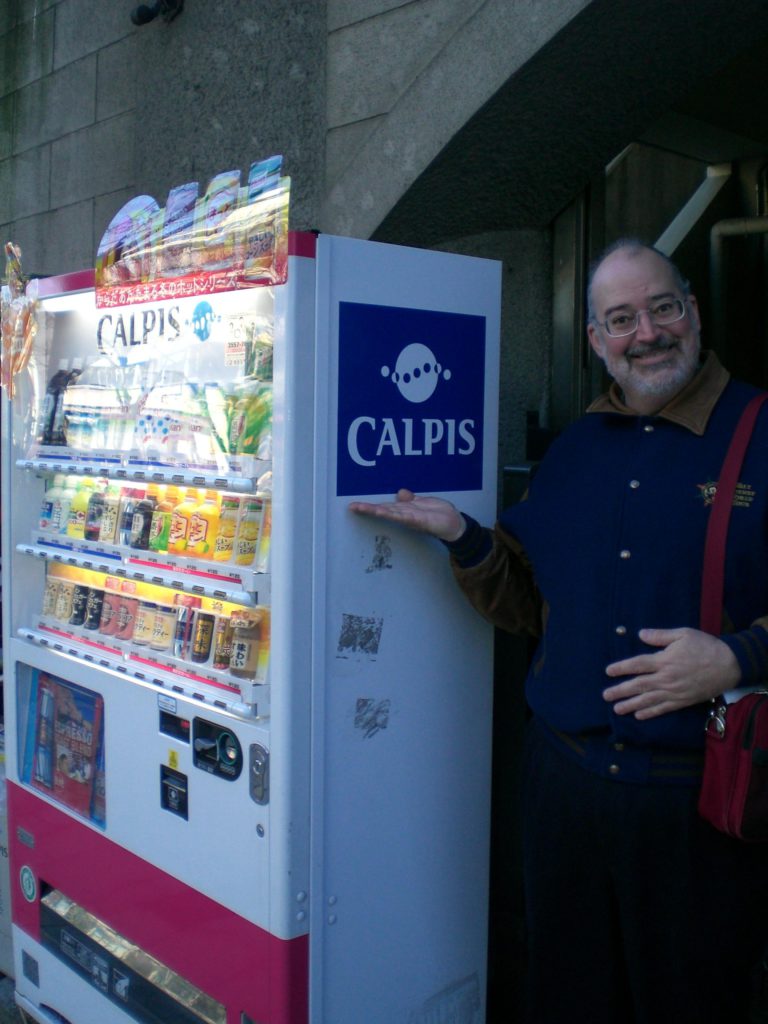
Two stops to the South brought us to Harajuku, an upscale shopping and restaurant district. We strolled up and down the street looking for a Japanese restaurant with English menus, finally settling — by mistake — for one that turned out to be Chinese. It was a nine-course affair of mostly unfamiliar stuff. I can’t say I found anything spectacularly wonderful, but there were a few tasty things.
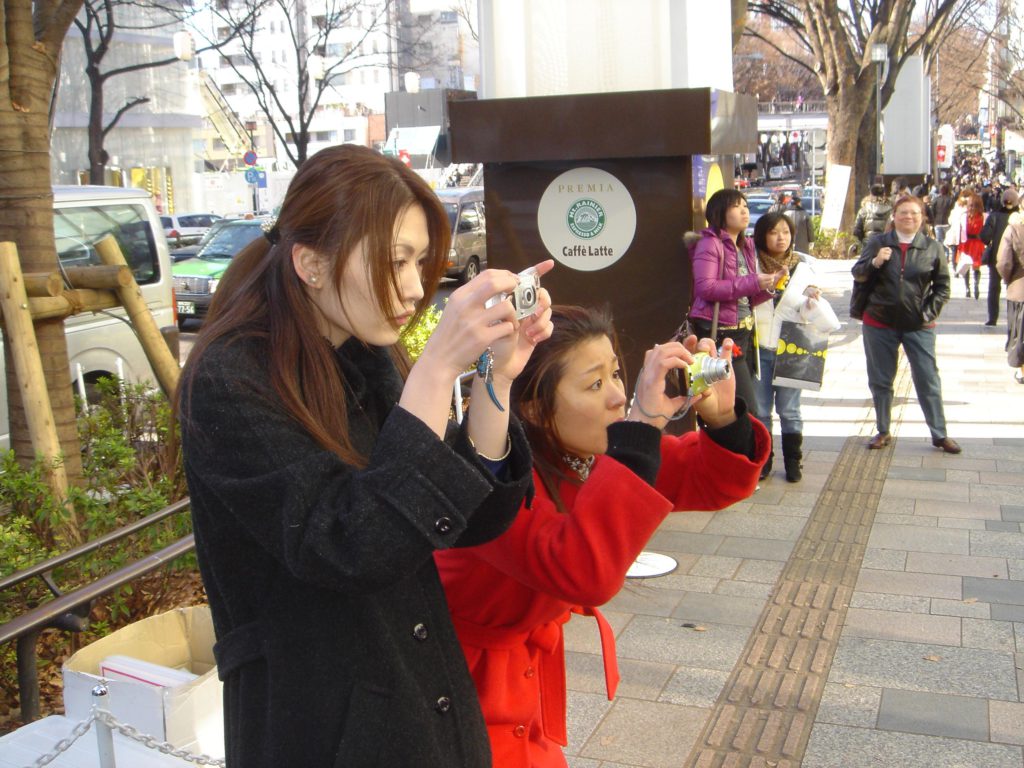
One thing about Tokyo — you never have to feel self-conscious about taking pictures. Everywhere people were snapping photos and taking videos. We saw very few foreigners, but there were either a lot of Japanese tourists, or they just like to document everything.
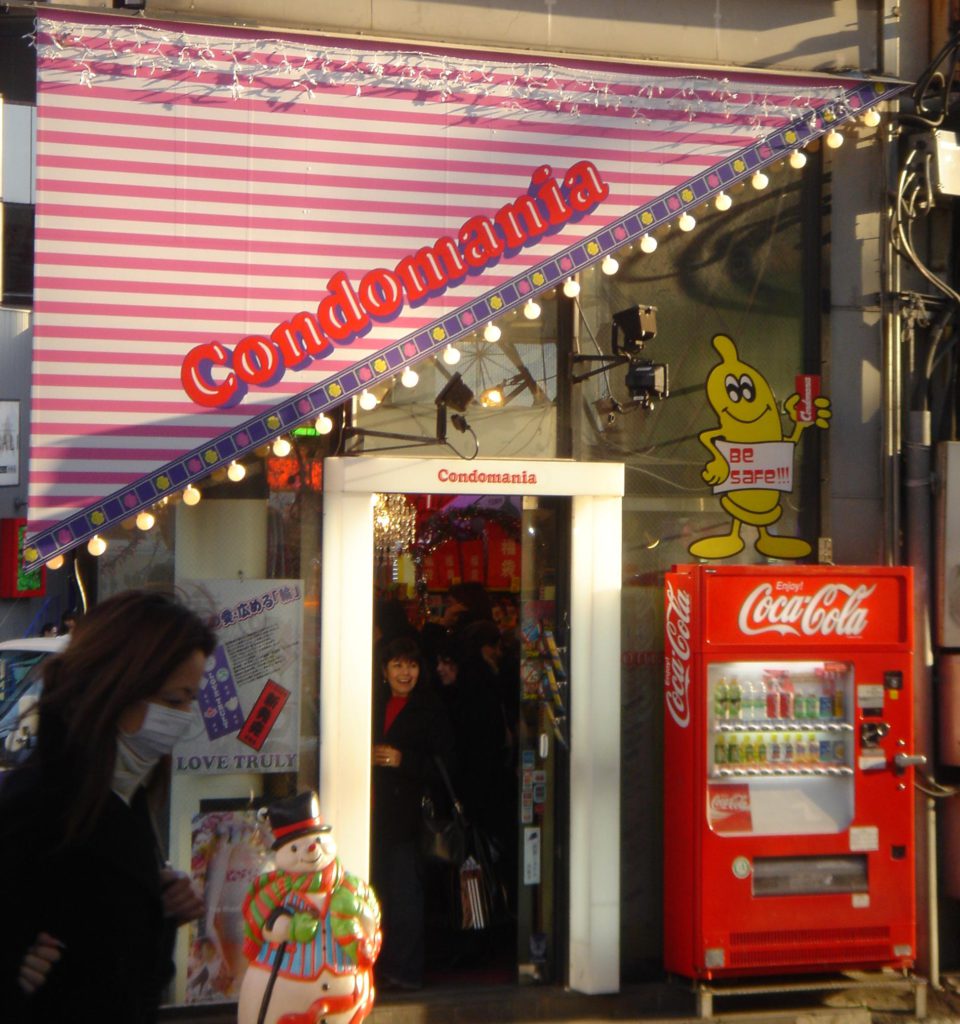
We visited a store called Kiddy Land (you can’t count on the name implying the contents in Japan) that specialized in animated gizmos (including radishes) and radio-controlled gizmos, and kitsch. After exploring one floor we discovered there were five more and gave up.
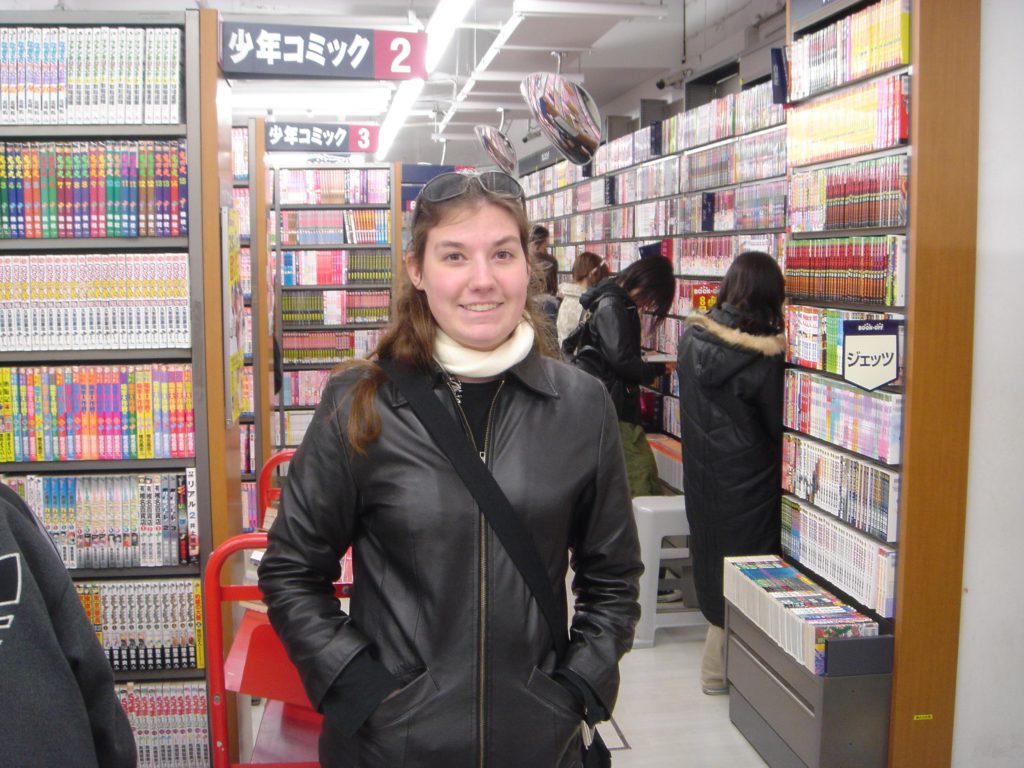
Dani discovered an enormous Manga (comic book) store. 40% of Japanese publishing is Manga, and there are titles that appeal to boys, girls, men and women. When translated they cost about $10 a book in the US, but many are under $2 in Japan. How frustrating: 10,000 titles, and not one in English!
We later learned the Japanese write two different ways. The traditional vertical technique is read top to bottom, left to right. But young people prefer to read left to right, horizontally, and many books are now being published this way. This is also how text messaging on the phones work. (Text messaging is quite popular here, because voice calls may not be made on public transportation, as it annoys fellow travelers. ) How you text message in Japanese using a ten-key pad is beyond me, though.
The nearby Takeshita Dori specializes in shops for teenagers (sample name: Goth and Lolita). More on this later.
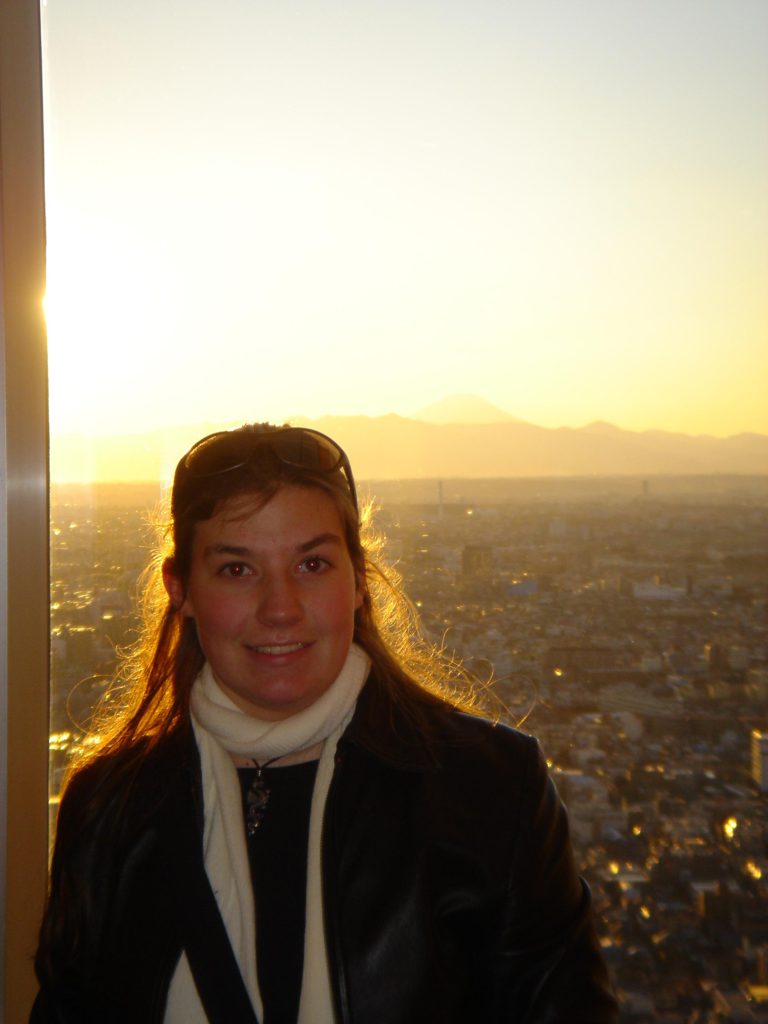
The high today was in the 40s, and it continued to be breezy, so as the sun set we retraced our route to Shinjuku station — spending only about half an hour reorienting ourselves as we re-emerged through a randomly selected exit. Back at the hotel our heated toilet seat actually felt good.
We had a nap and then a late (9 pm) dinner in the hotel’s Japanese restaurant, Kozue. This is a fairly famous restaurant, where each dish is a unique ceramic work of art. There were eight courses, some of which contained many individual items themselves. Many dishes were based upon broth, and there were many new flavors. In the end, it was the sashimi that I liked best, by a wide margin. Not coincidentally, it was the only thing that seemed familiar. Dani has been quite adventurous food-wise, but I think she found today’s lunch and dinner a bit challenging. I know I did. Linda, following the philosophy “when in Rome do as the Phoenicians do,” tried some Japanese white and red wines. They reminded me of the Florida wines Blanc du Bois and Noble. On the whole I thought the meal was just okay. I stayed up late, catching up on my journal.
Saturday, January 30, 2006
Continued cool and clear, although not quite the dazzling clear of yesterday. After some nice pastries in the lobby we set out for Akihabara. This involves taking the Yamanote line halfway around its circuit of Central Tokyo, a thirty-minute trip.
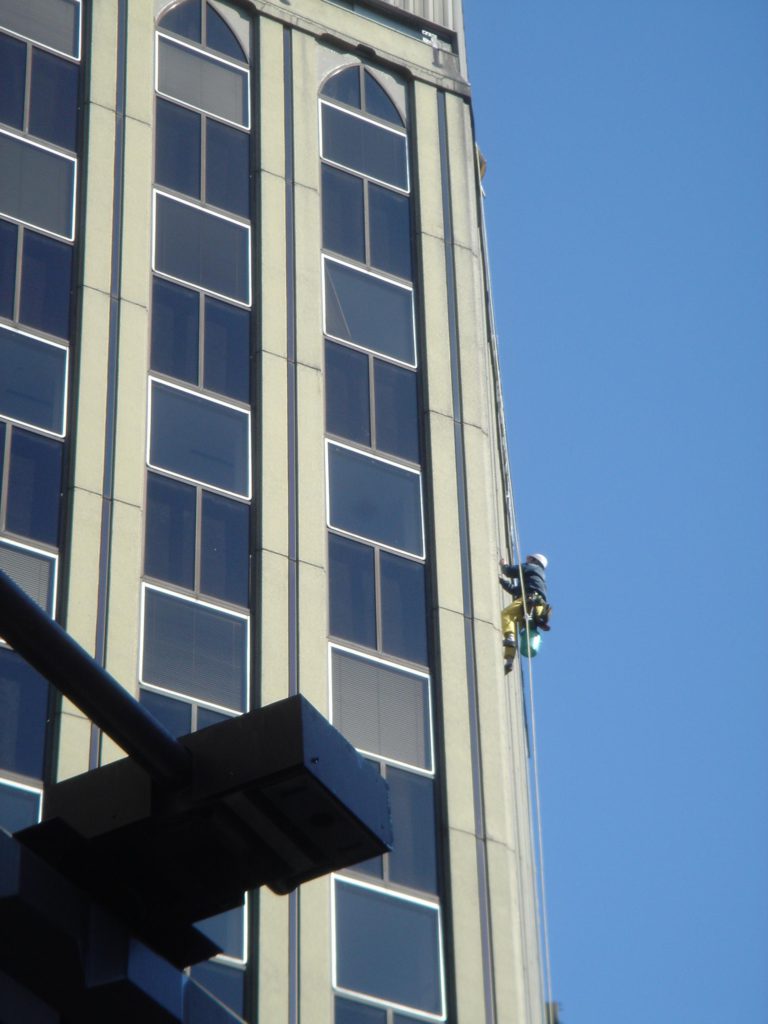
On the walk to the station I saw someone washing highrise windows. This is done by essentially rappelling down the side of the building. As dangerous as it looked, it was topped later by a guy clinging to a ledge washing the windows outside his restaurant.
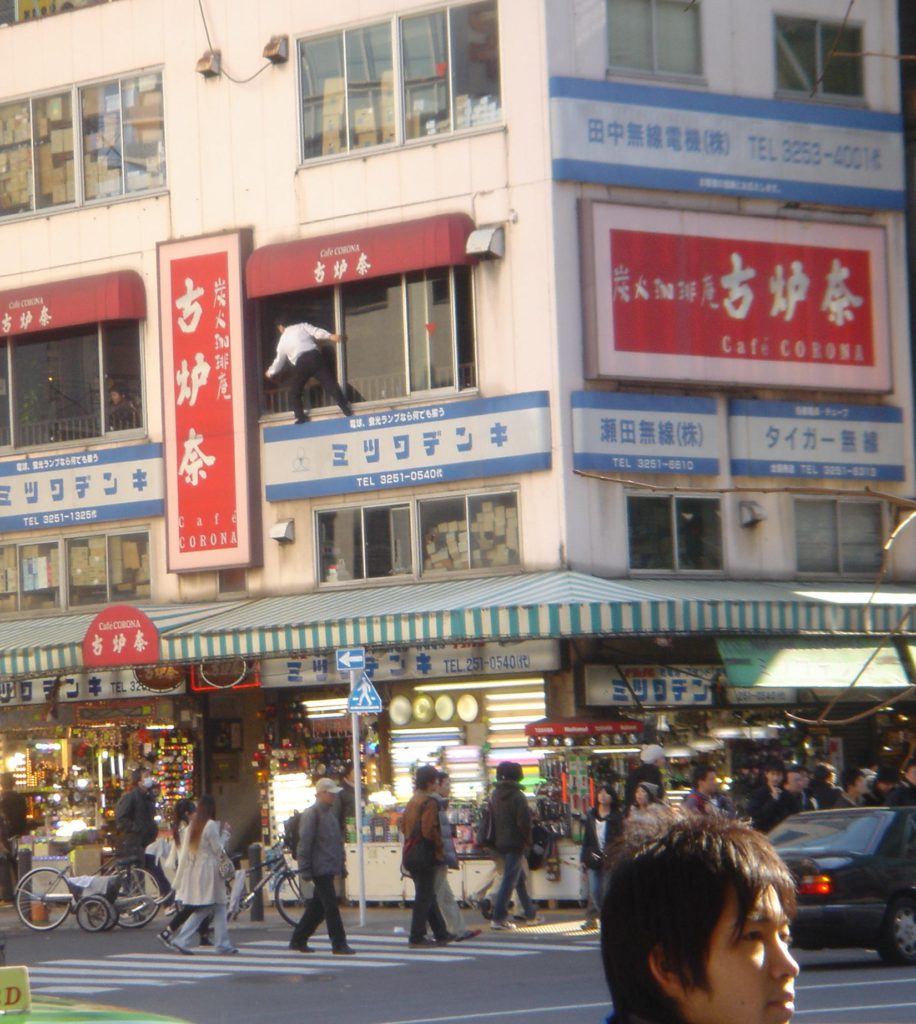
Akihabara is Tokyo’s “Electric Town. ” It started as a black market center for tubes and other electronics after World War II, and has since become the place to buy consumer electronics. There are over 600 booths, shops and stores crammed into a few blocks.
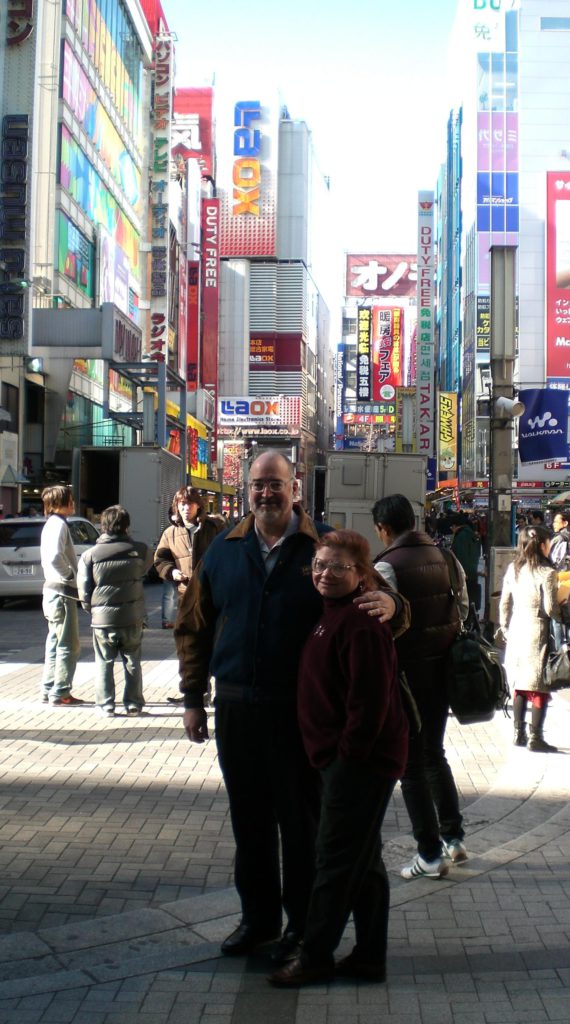
For me, the most interesting ones are the small booths right beneath the train station. Reminiscent of a permanent flea market, each specializes in one category of component, such as LEDs, transformers, or even screws. Unfortunately, this was the least interesting area to everyone else.
There were no deals on consumer electronics. The Japanese versions of some products were a bit cheaper than in the US, but the export versions (which have an international warranty and English menus) were the same price they would be for a savvy Internet shopper.
Dani bought some T-shirts and souvenirs at Llaox, a seven-story duty free electronics and gift shop. Duty free means the store carries export merchandise, and will refund your 5% tax on the spot if you spend more than 10,000 Yen (about $80).
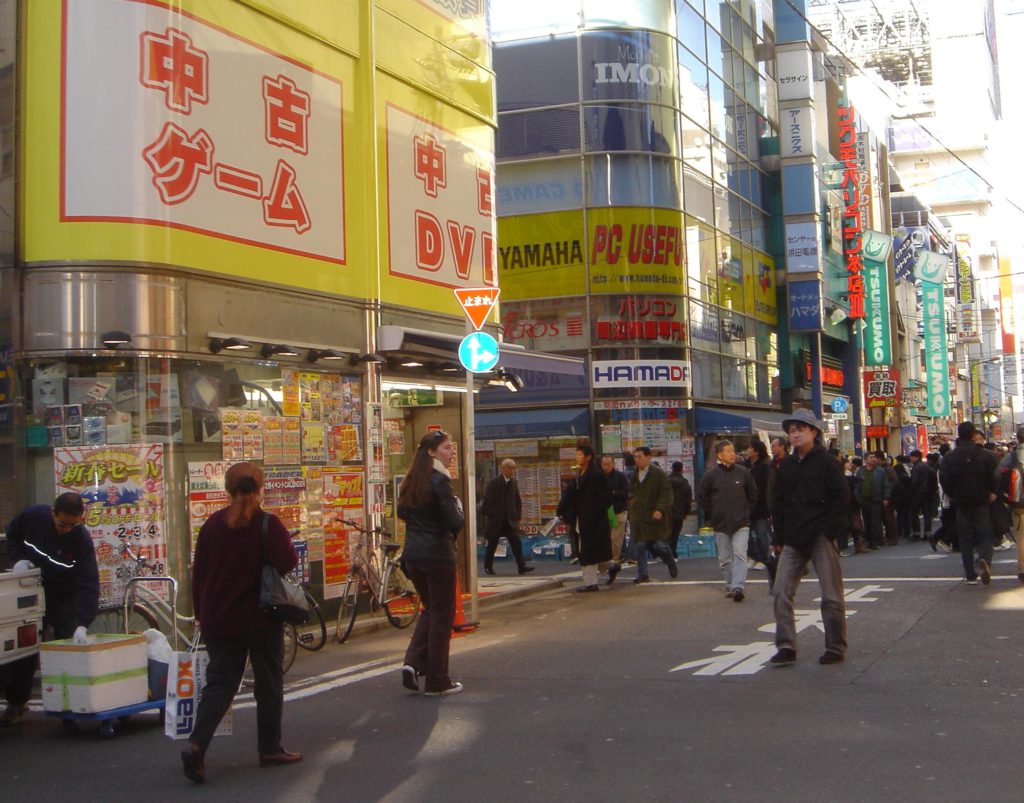
Because of its appeal to the young male otaku (nerds), Akihabara is also filled with Manga and Anime shops. The one we visited consisted of seven floors, each about 1000 square feet, with approximately 100 nerds per floor. Navigating the three-foot wide stairwells was interesting. The ground floor offered the most varied selection, with the other floors devoted almost exclusively to porn in all its variations, Lolitas and tentacles (or a combination) being the most popular. (There’s no stigma against reading porn in public here. The shelves of the am-pm mini mart are lined with it. )
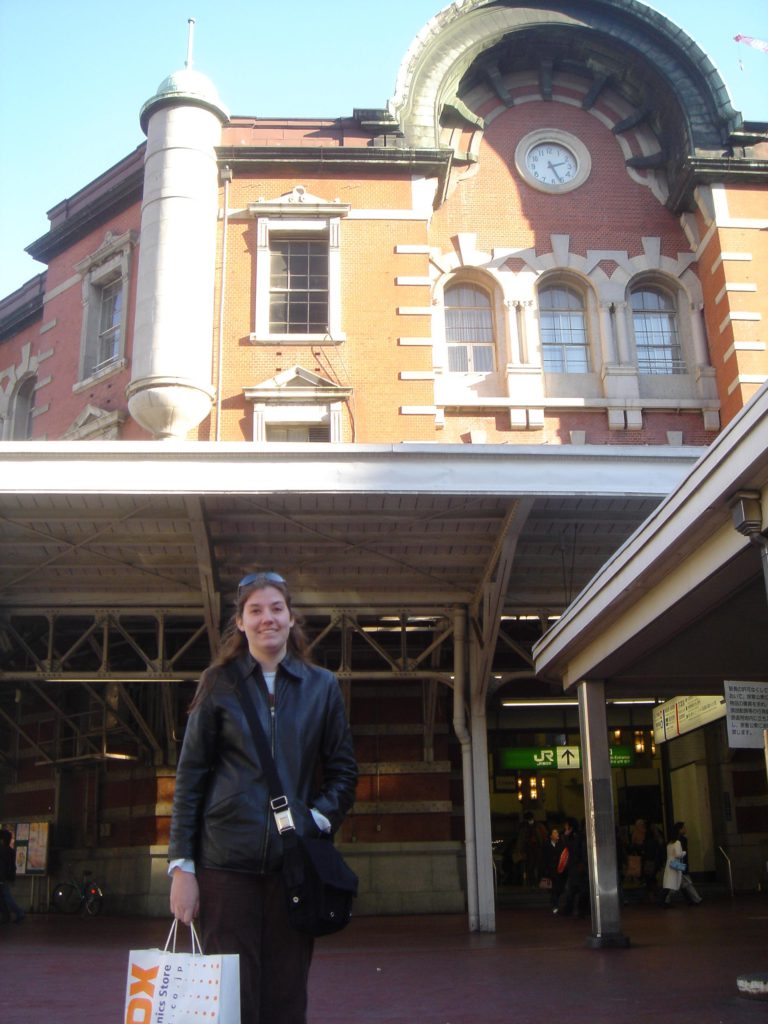
Having found no deals, no English Manga, and no appealing restaurant in Akihabara, we got back on the Yamanote line for two more stops and disembarked at Tokyo Station. Built to look like Amsterdam’s Centraal station, it is one of Tokyo’s oldest buildings, although it dates from only the late 1800s.
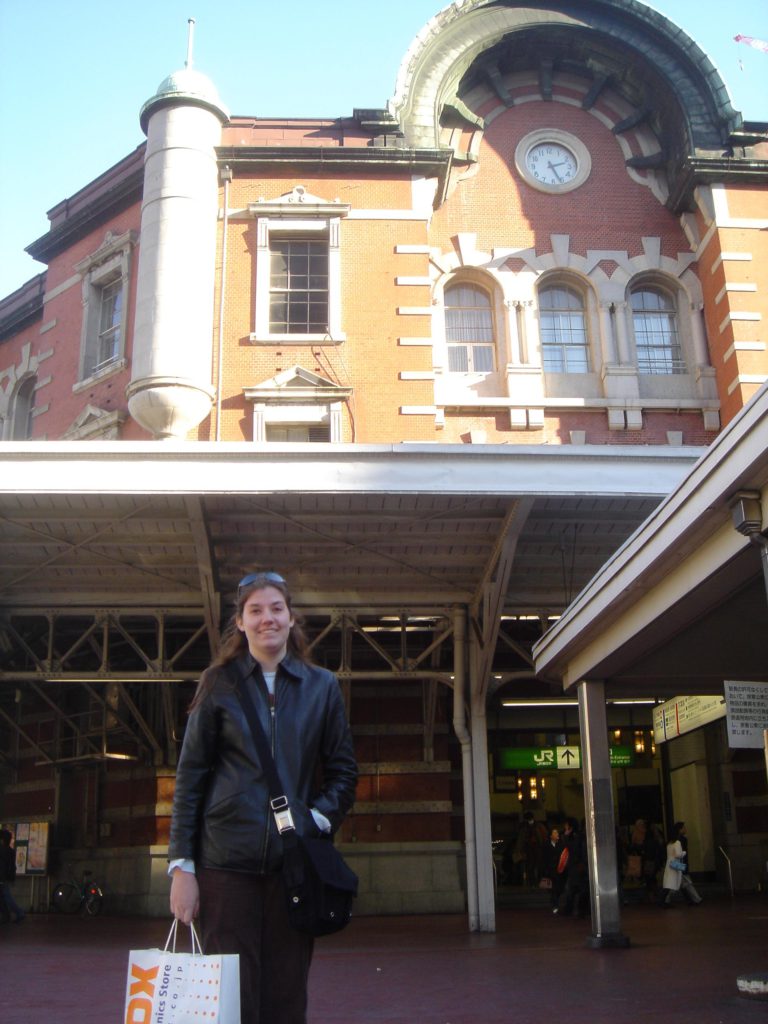
The station opens onto the Marunouchi district and beyond that the Imperial Palace. The Marunouchi Building is 36-story high rise with many floors of gourmet food shops and restaurants. In the lobby a large orchestra was playing classical music. It seemed odd that at the end of the pieces none of the spectators applauded.
We found a tempura restaurant on the sixth floor, and had a nice meal that involved a lot of pointing and nodding. Personally, I liked it better than last night’s extravaganza.

On the way back to the lobby, a sign in the elevator warned us not to put our fingers in the door.
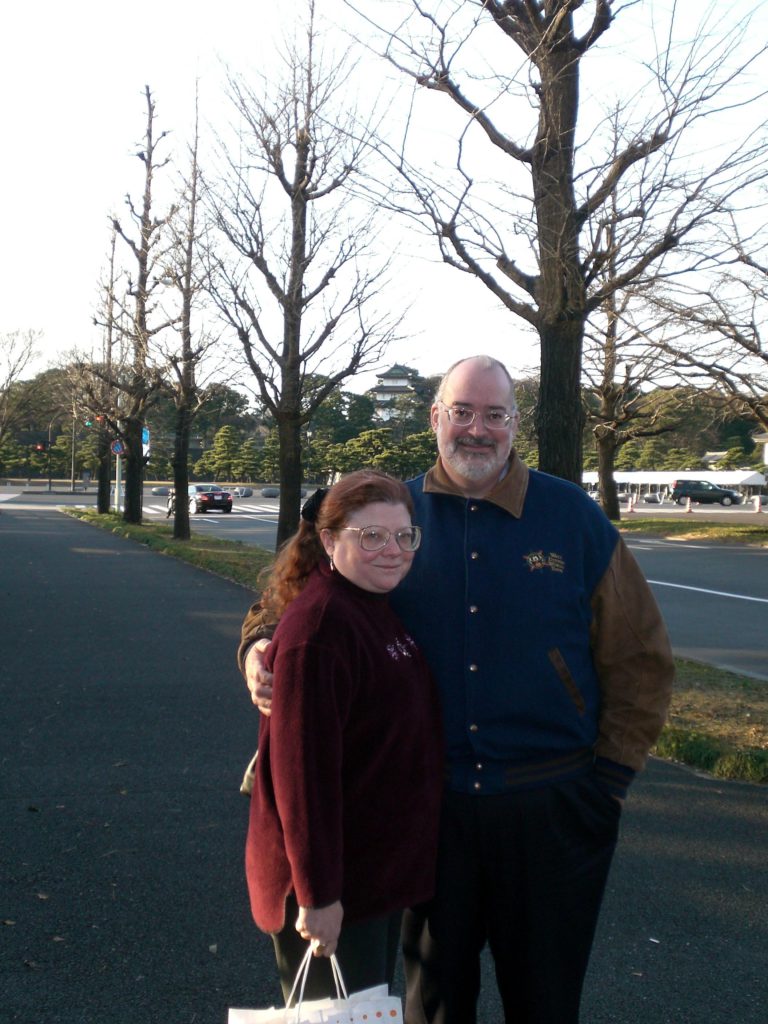
Two blocks north, we posed in front of the Imperial Palace grounds. They are open two days a year. Today wasn’t one of them.
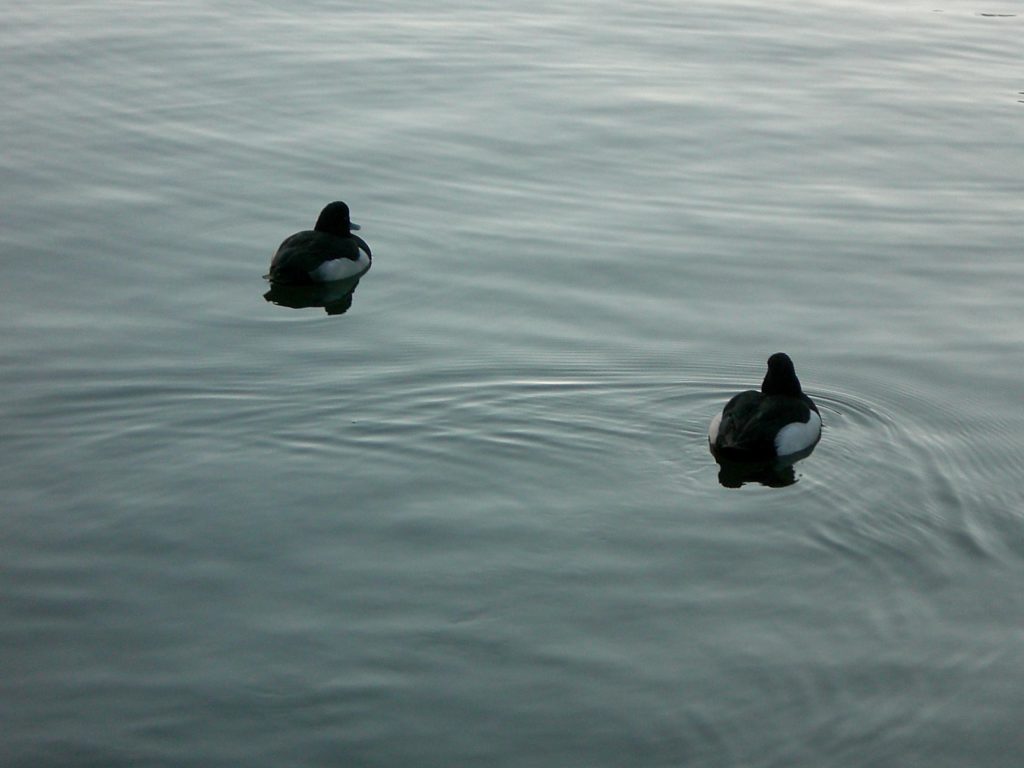
On the way back, Dani used the new camera Grandma Marjorie gave her for Christmas to take some art photos.
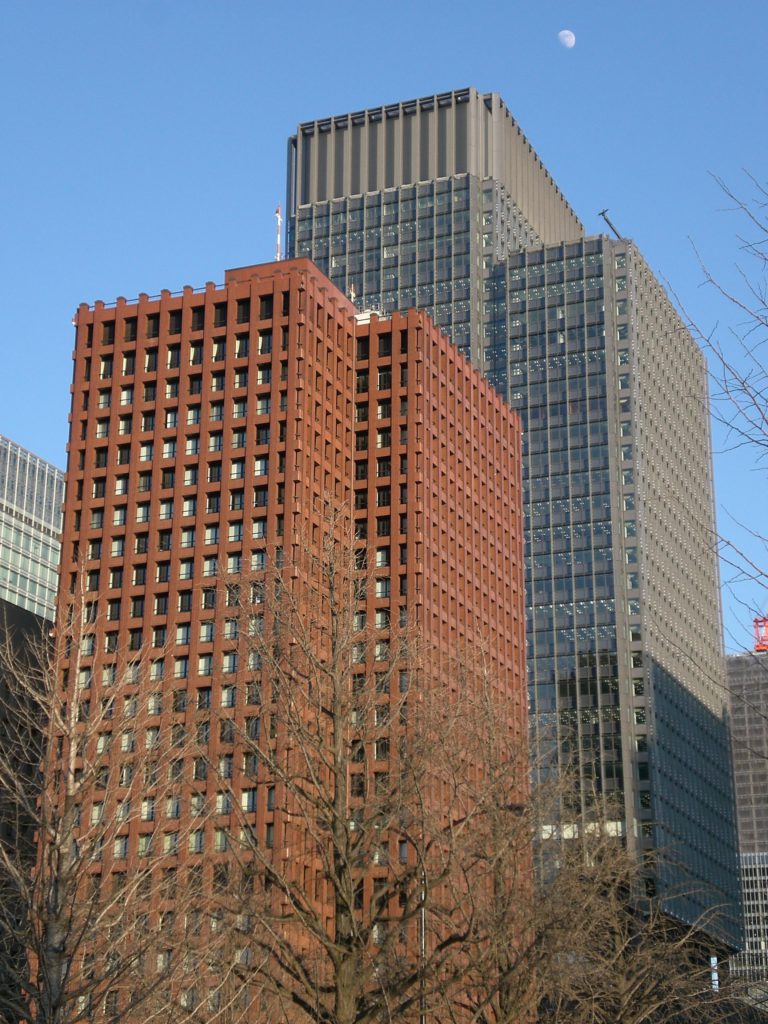
By the time we completed the circle of the Yamanote line it was approaching rush hour, but because of the holiday, traffic was light.
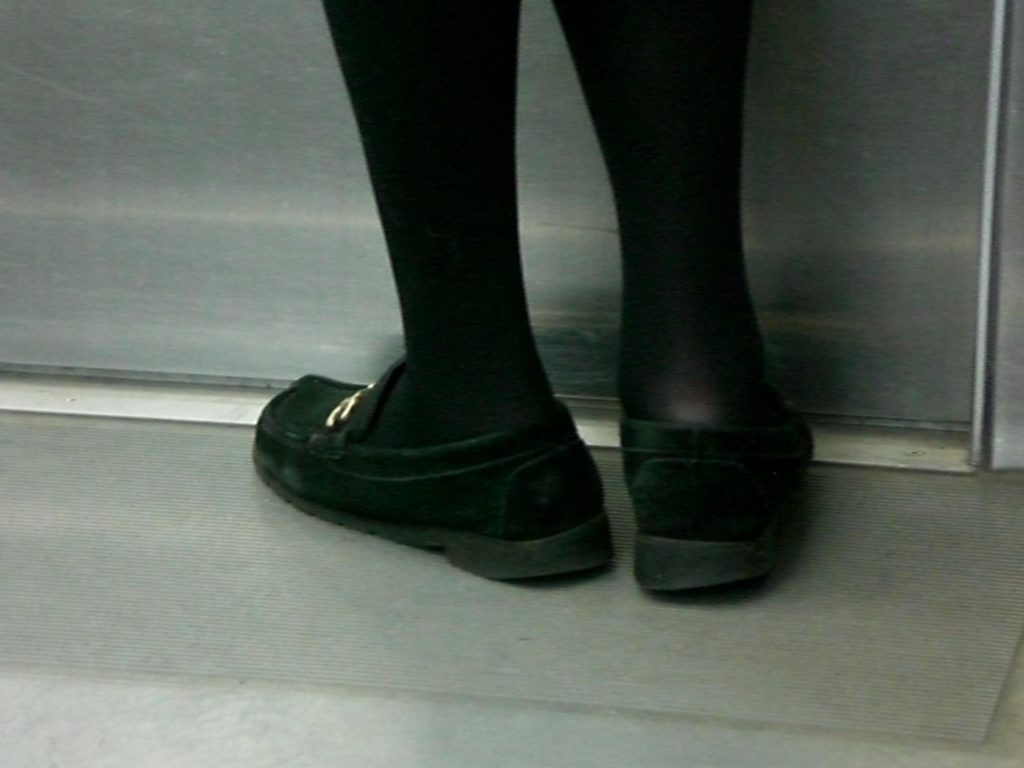
The walk back to the hotel after sunset was a bit cool, and we stopped at a mini mart for cans of coffee. I hadn’t realized that coffee was so popular here. It seems there is a coffee house on almost every block. So far they are holding their own against the encroaching Starbucks. After such a busy day and a late lunch, our 6pm nap turned into bedtime, and we didn’t venture out until the next morning.
Sunday, December 31, 2006
Another cool and fairly clear day, with highs in the 40s. Up a bit before sunrise, we watched Mt. Fuji change from purple to white in the morning light.
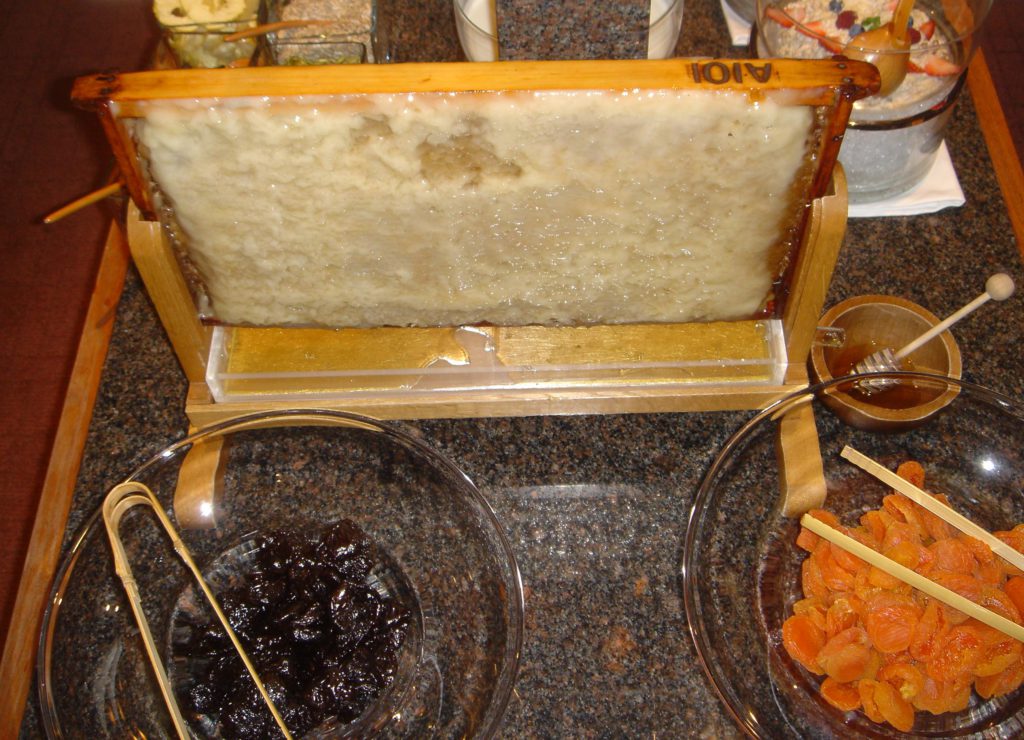
We had breakfast in the lobby. One thing on the buffet that I’ve never seen before is a complete honeycomb rack, removed from a bee hive. It drips into a collection tray, then runs into a serving dish.
Linda was feeling a bit under the weather, so she opted to relax in the room today. Dani and I decided to visit Roppongi Hills, a new shopping development in what used to be mostly the sleazy sex district. We took the subway, which is like a clean version of the London Underground. Like the train system, it’s easy to buy tickets and navigate, once you get the hang of it. And like the train system, the biggest problem is figuring out what exit to come out, when the streets have no names.
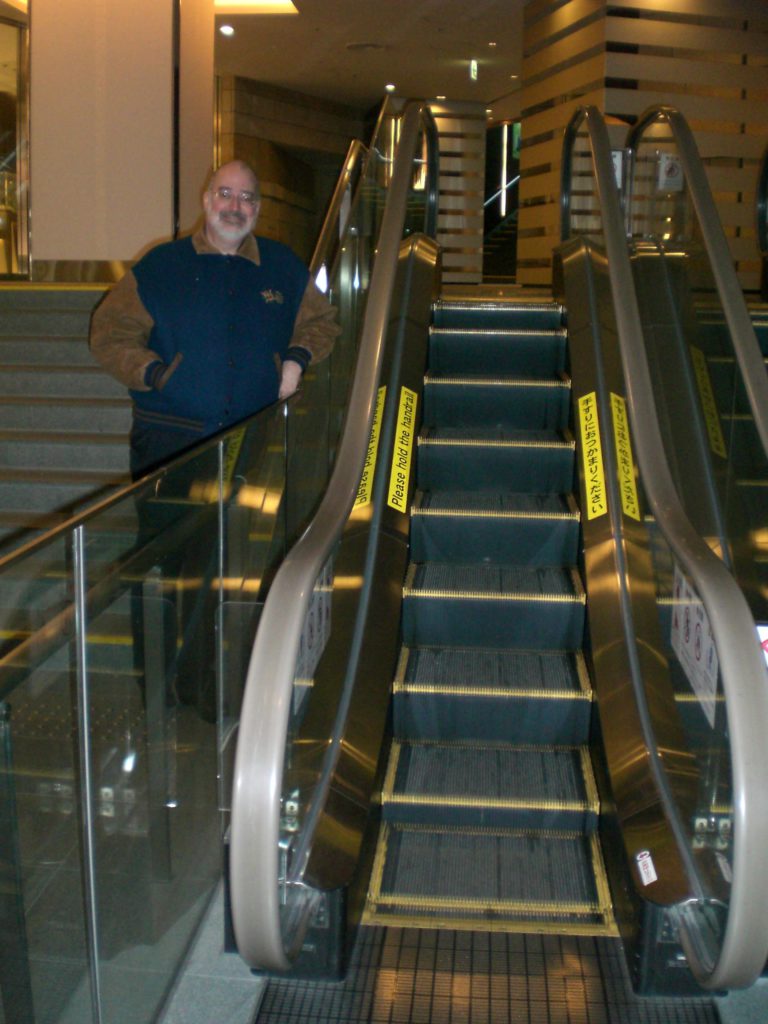
Roppongi Hills is a network of malls, on six levels. I have no idea how many stores there are, but the map is 12 pages long, and the separate restaurant guide is at least thirty pages. We spent a couple of hours wandering around, and Dani found a Japanese copy of Harry Potter and the Philosopher’s Stone. For someone who liked shopping, this place would be paradise.
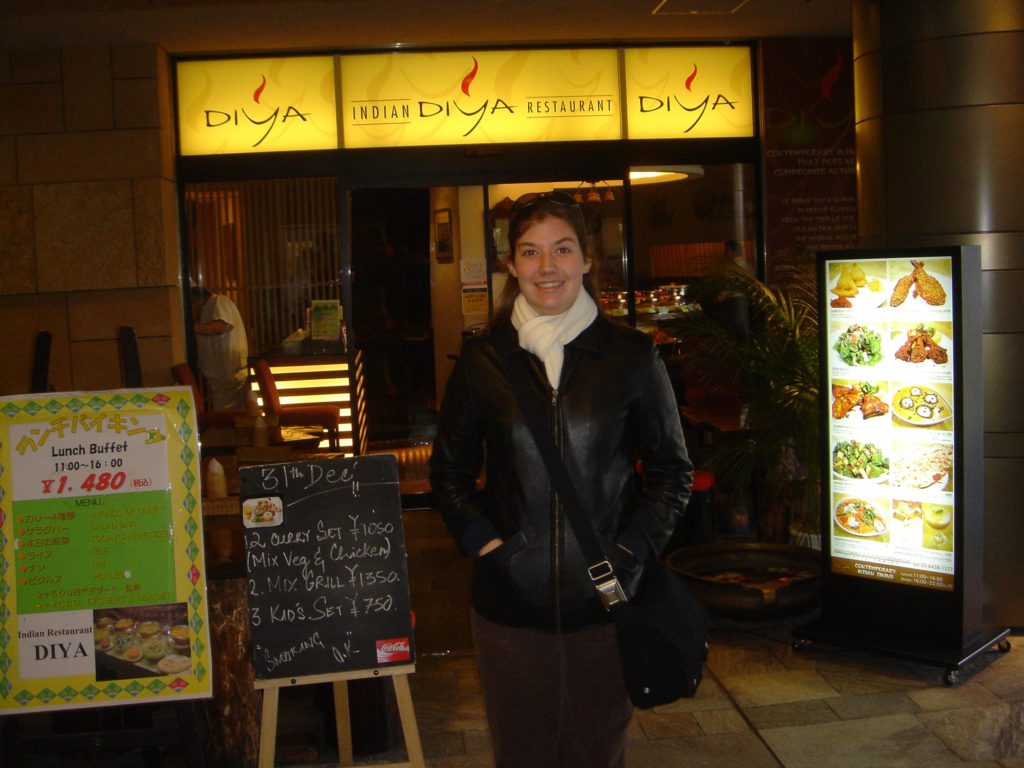
We selected an Indian restaurant named Diya for lunch, and had an excellent meal of curries and tandoori-grilled meats. No trouble communicating there.
After lunch we decided to return to Harajuku and Takeshita Dori’s funky teen neighborhood. We took the subway to the Yamanote train line; total travel time: 15 minutes including the connection. This transportation system works great. It sure was deserted most of the day, because of it being New Year’s Eve.
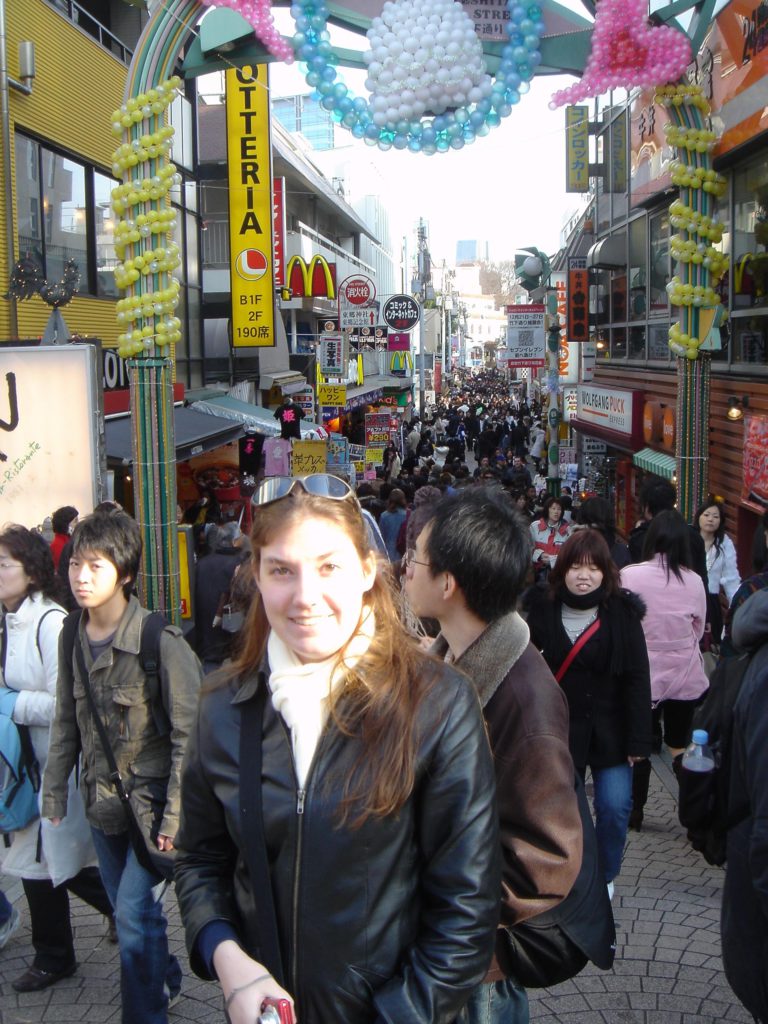
But Takeshita Dori wasn’t. The place was packed with teenagers, many dressed for cosu-purei or “costume play. ” 19th century French maids, lolitas, and leather abounded. There were an equal number of tourists checking out the funky shops. Dani bought some umbrellas with plastic animal handles. At the Manga store a helpful salesman directed her to the titles she was looking for, which were unrecognizable from the English editions. A whole bagful cost less than one book in the US. Too bad she can’t read them.
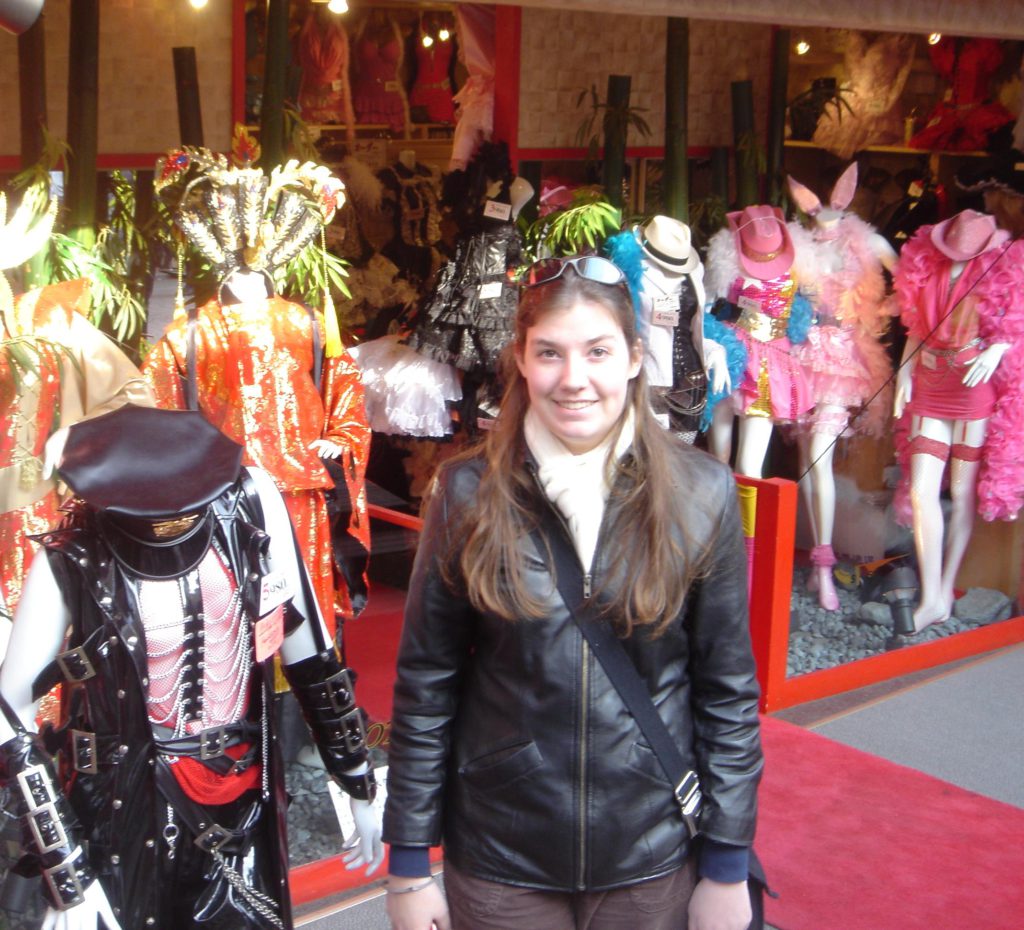
Back at Kiddy Land she bought a few more gifts for friends, and a plush radish (we didn’t have one of those). Then we headed back to the hotel to rest our feet and get ready for New Year’s Eve.
The hotel’s approach to housekeeping is interesting. A team of five housekeepers — men and women — descend upon the room and completely remake it in under ten minutes. This includes carefully wiping every edge that could possibly collect dust.
The hotel staff has also been leaving small gifts in our room: a box of candied chestnuts, mint chocolates shaped as leaves, a chestnut pie, an artisan-crafted flask of sake.
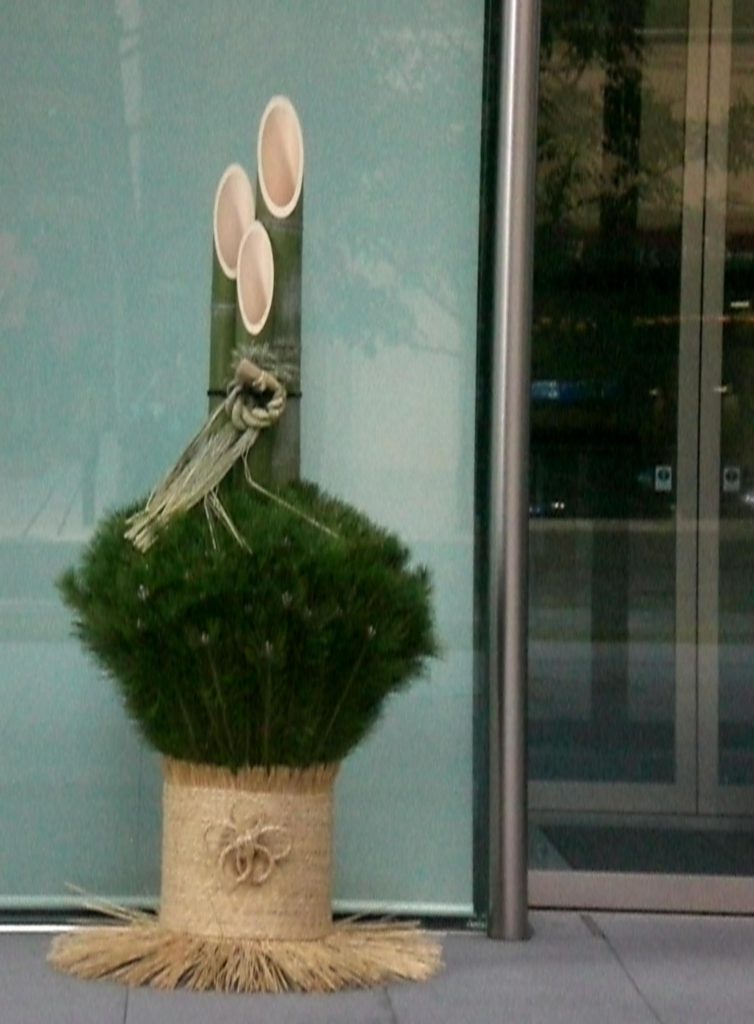
We took a twenty-minute taxi ride to our 8 pm dinner at Gonpachi. It was quite fun zipping through the narrow, winding streets of Tokyo at high speed in the light traffic. The taxi was equipped with a high resolution gps screen that appeared to display live street condition information.
Although there were quite a few locals dining there, Gonpachi seems to be oriented toward clueless tourists. When George Wacko Bush was in Tokyo he dined there, and if anybody is clueless, it’s him.
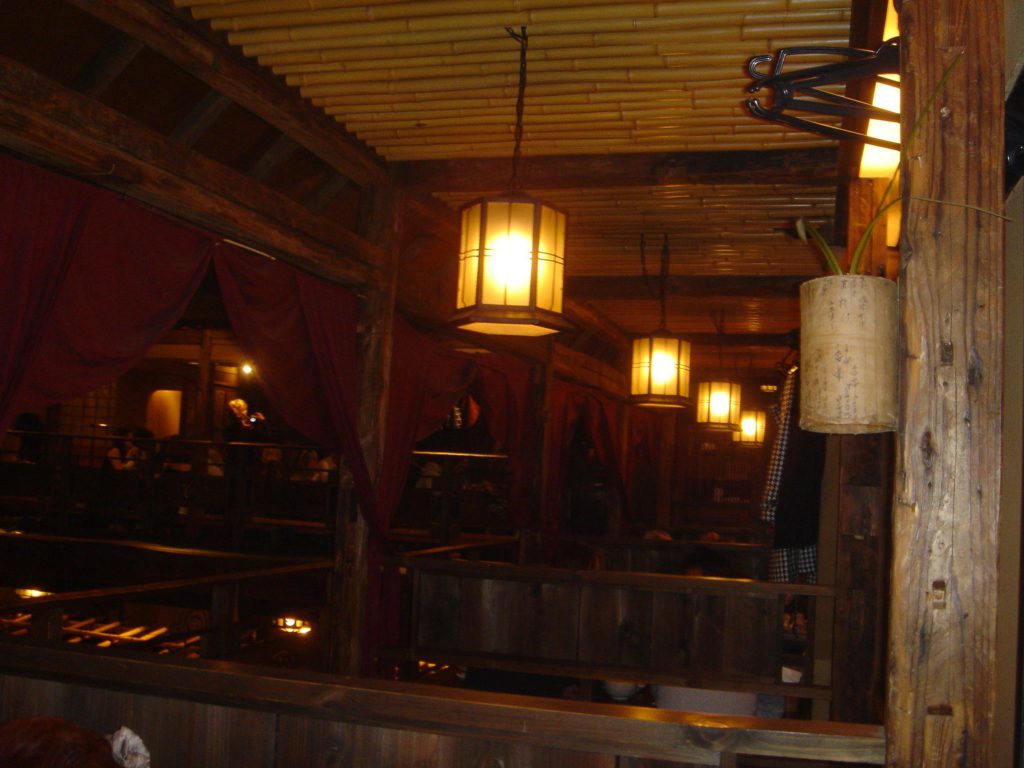
The restaurant is a two-story affair. We sat on the second floor, a mezzanine surrounding the food preparation area below. We removed our shoes and climbed into our booth which, like the rest of the restaurant, was constructed from very old wooden beams.
Down below, the restaurant was a lively space, filled with chefs grilling things on sticks, making tempura, and a wide variety of other traditional foods. Tapas style (it even said tapas on the menu), we tried a variety of things, and it was all tasty. Prices were very reasonable, less than $3 a skewer. The Louis Roederer Champagne was good, too, and a bargain at 8500 Yen.
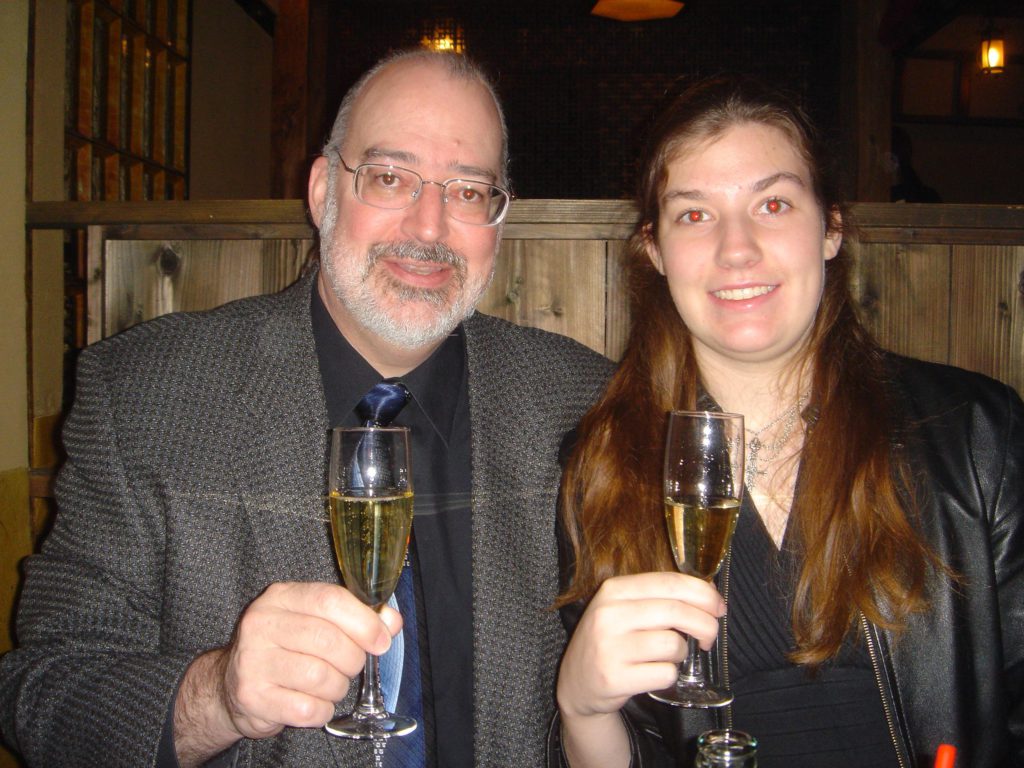
A line of cabs waited out front, so it was easy to get back to the hotel.
Dani watched the New Year arrive on our room’s high definition flat panel TV. The New Year’s countdown involves Japanese pop music, and banging a giant gong. It seemed a little strange to welcome the New Year, knowing the Times Square Ball won’t drop until tomorrow afternoon at 2 pm!
For the Japanese, New Year’s is a time for leaving the old year behind, and starting fresh, so we’ll say “Sayonara” to 2006.
Monday, January 1, 2007
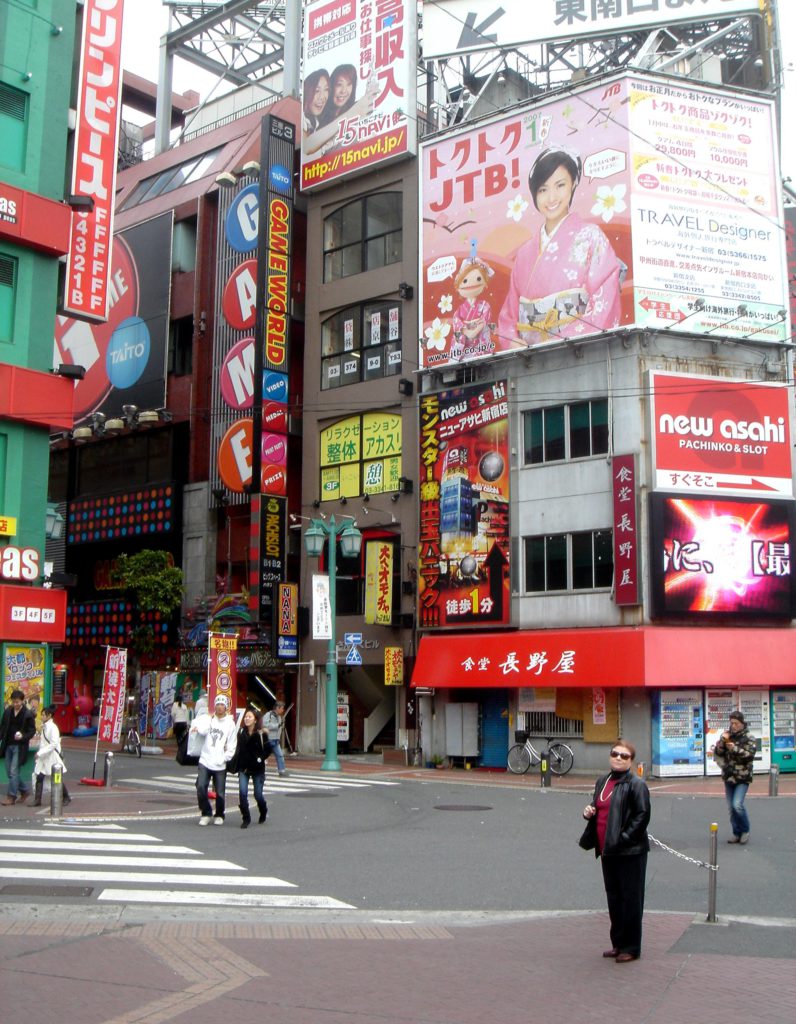
After a room service breakfast Linda and I set out to explore while Dani stayed in the room to do some writing. It continues cool, but the smog is encroaching, and our view of Mt. Fuji is history. We now realize how lucky we were.
Because of the holiday, the streets are almost deserted. This trip timing has worked out really well for us. Everything we’ve wanted to see or do has largely been available, but with one tenth the normal crowds.
We were expecting everything to be closed because of the holiday, but quite a few shops and many restaurants were open. We began by walking through the twisty little streets not far from the hotel. There were actually quite a few people in the electronic stores. It must be a madhouse on a normal day.
We walked through the train station to the east side, which is the true Shinjuku: a maze of shops, department stores, cinemas, love hotels (rented by the hour), restaurants, pachinko parlors and arcades. It goes on for about one square mile!
We wound our way through the streets for a couple of hours, looking for a restaurant with either an English menu or pictures of the food. Finally we selected a conveyor belt sushi restaurant. You sit at a counter and small plates of sushi travel past on a conveyor. You simply take what you want, and are charged by the number and color of plates in your pile at the end of the meal. No English required. A box of green powder proved to be tea (not wasabi, as we discovered the hard way) which we placed in mugs filled from the hot tap at each seat. The sushi was fresh and delicious, and ten plates of it came to only $15.
On the way back we walked past the Hilton and made a reservation for dinner at Twenty One, their French restaurant. It’s normally closed on Monday, but they are serving a set menu for the holiday. It seemed unpopular, and the Maitre d’ told us a reservation would be no problem, as the Japanese guests all wanted the traditional New Years menu served in the Japanese restaurant.
Dinner proved quite good, not exactly French cuisine, but certainly not Japanese either. Closer to what I’ve come to call new American cuisine: seared fois gras, braised short ribs, and so on. Prices were comparable to upscale prix fixe menus in the US.
As I headed to bed it was funny to realize that the Rose Parade won’t happen here until January 2nd.
Tuesday, January 2, 2007
Kyoto
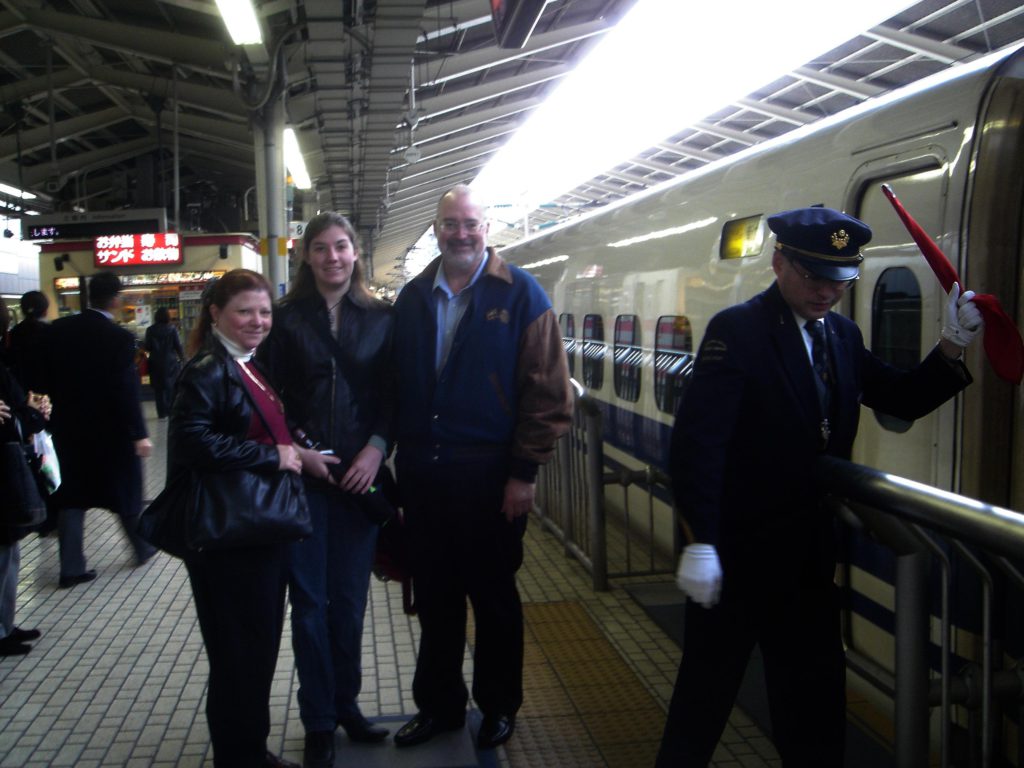
We met our guide, Ms. Junko Matsuda (Jun), in the hotel lobby at 8 am. Ms. Matsuda is a lovely Japanese woman who has lived in Hawaii for a year and Kansas for five years. Her business, Jun’s Tokyo Discovery Tours, specializes in personal guided tours of Tokyo, but she also takes clients to other cities. Although she goes to Kyoto several times a year, this is the first time she has gone during the New Year’s, when many (many) Japanese journey there to visit the shrines.
We walked to Shinjuku Station and took the express train to Tokyo Station, where we transferred to the Shinkansen bullet train. This high speed train glides on welded rails at 276 km/hr, making the journey to Kyoto in two and a half hours. We had reserved seats in the ‘green’ section, which were very much like first class airline seats, but with one additional trick. Any pair of seats can be rotated 180 degrees to form a four-person grouping. Perfect.
Traveling through the low mountains that divide the east side of the main island of Japan from the west we passed through agricultural areas and saw snow- dusted fields of rice. Lines of snow hung on the tile roofs of the houses.
Arriving in Kyoto’s modern railway station we found the city crowded with Japanese visitors. We stood in a long but fast moving line, waiting for a taxi. There was a slight drizzle as we waited, but it stopped during the cab ride and didn’t return.
Each of our four taxi drivers during the day was obviously quite proud of their beautiful and historic city, and enthusiastically provided information along the way. Jun translated for us, and we enjoyed the driving almost as much as the places we visited.
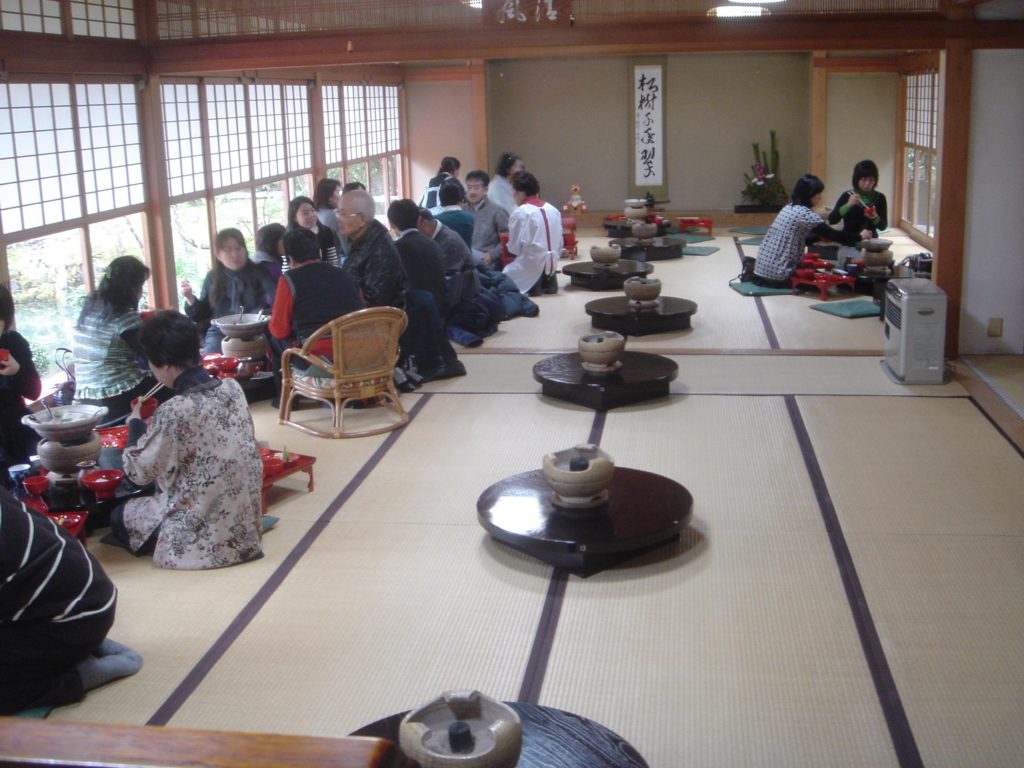
Our first stop was at a Zen rock garden. Before visiting the garden we had lunch in a tatami room. This was our most authentic traditional Japanese experience of the trip, and I wondered if it was for tourists. I suppose the answer is both yes and no. Many Japanese use Western style furniture in their homes, so when visiting Kyoto they enjoy the traditional ways. But we saw almost no other westerners during our entire day, so this is clearly something they like to do.
Before entering the tatami room we placed our shoes in storage cubbys in the entryway.
We sat on woven tatami mats. Their standard size, one by two meters, is used to designate room size. For example, a bedroom might be a six tatami room.
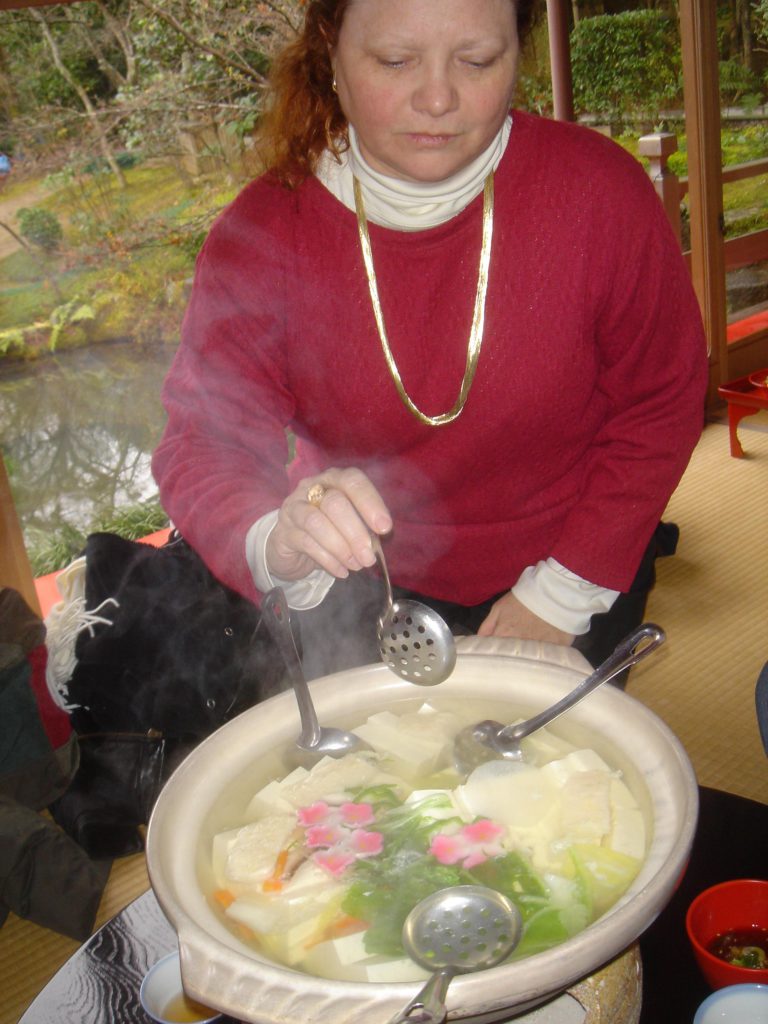
In the center of the mat was a burner used to heat a large bowl filled with tofu cubes and vegetables. In addition, we were each served a small tray/table with a variety of tofu preparations, Japanese pickles and other tasty items. I had never had very good tofu in the States, so I was somewhat skeptical, but everything was tasty, and we all enjoyed the experience very much.
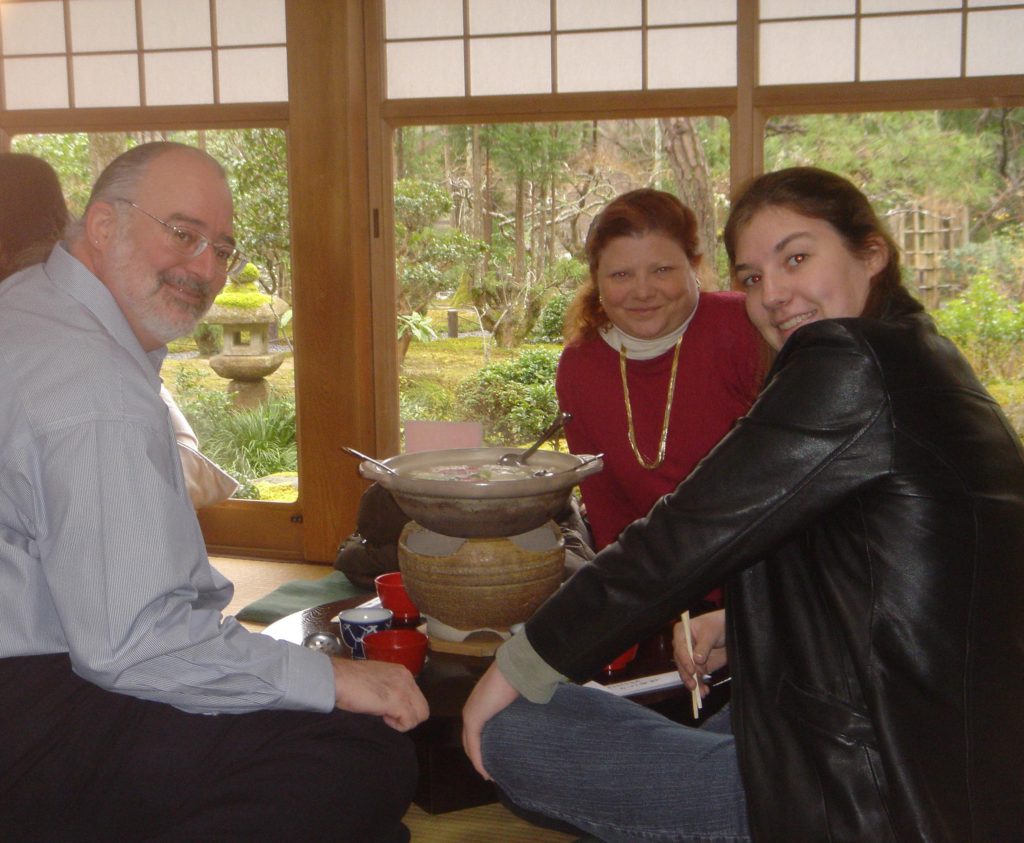
After lunch we strolled through the peaceful landscape of woods, skirting mirror-like ponds. A mossy carpet covered the ground beneath the trees.
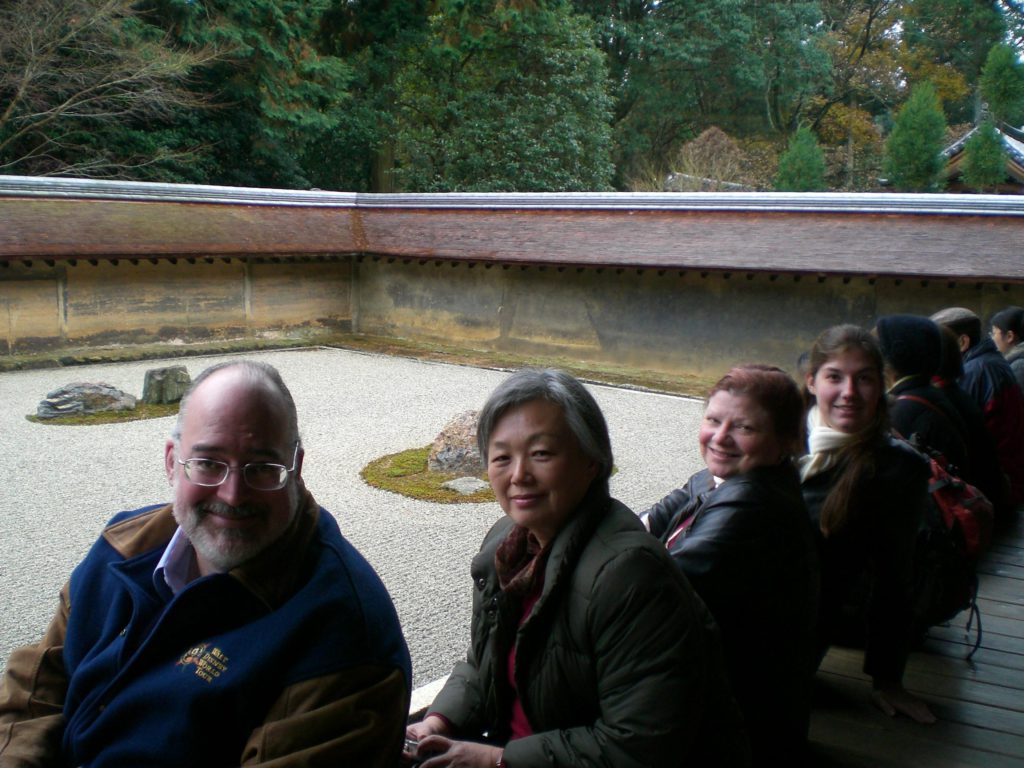
At the Zen garden we again removed our shoes and donned slippers. Benches line one side, allowing visitors to sit and contemplate the fifteen stones surrounded by smooth-raked gravel. It might seem silly to a generation raised on video games, but I found it quite peaceful (except for the large crowd coming and going).
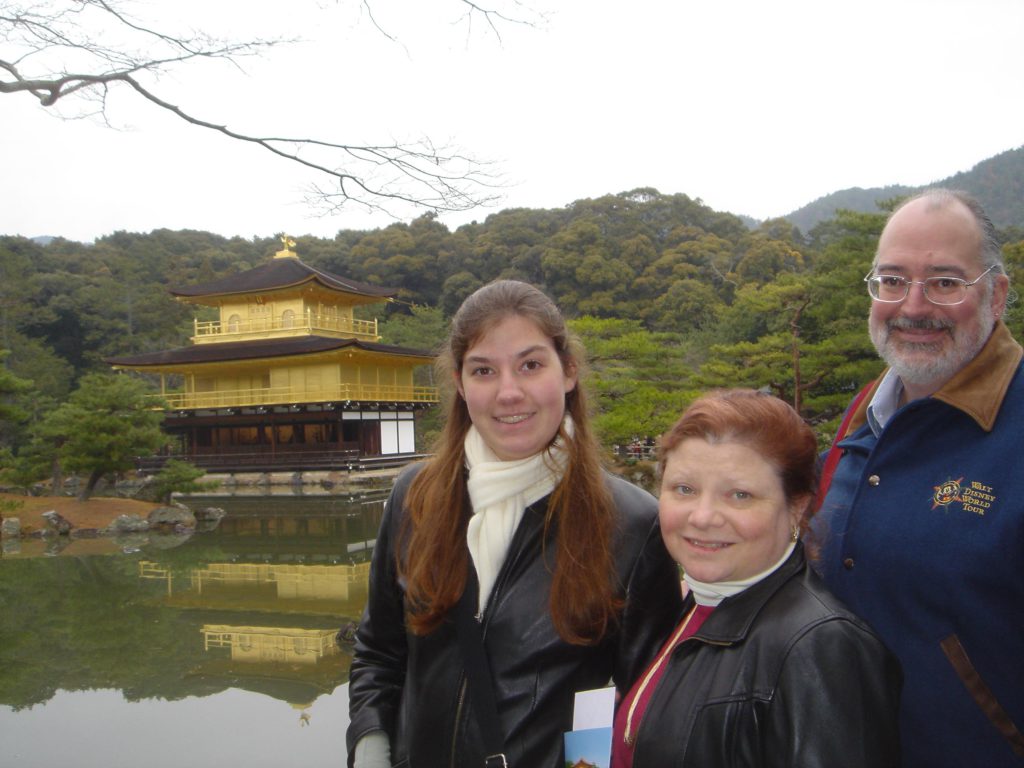
Our next stop was at the Golden Temple. This Buddhist shrine is a popular spot to visit when seeking luck for the new year. It was burnt by an obsessed monk in the 1950s, but has been reconstructed exactly as it was. Although not allowed to enter the temple, hundreds of pilgrims were making a procession around the site, and we joined the flow of traffic.
Visitors fanned incense from a brazier onto themselves for its good luck properties.
Along the path many small booths sold a variety of items. It is a fad in Japan to add “accessories” to cell phones. These small charms or souvenirs dangle in clumps from almost every teenage girl’s phone. They might be a Hello Kitty, a Disney character, or a traffic safety charm.
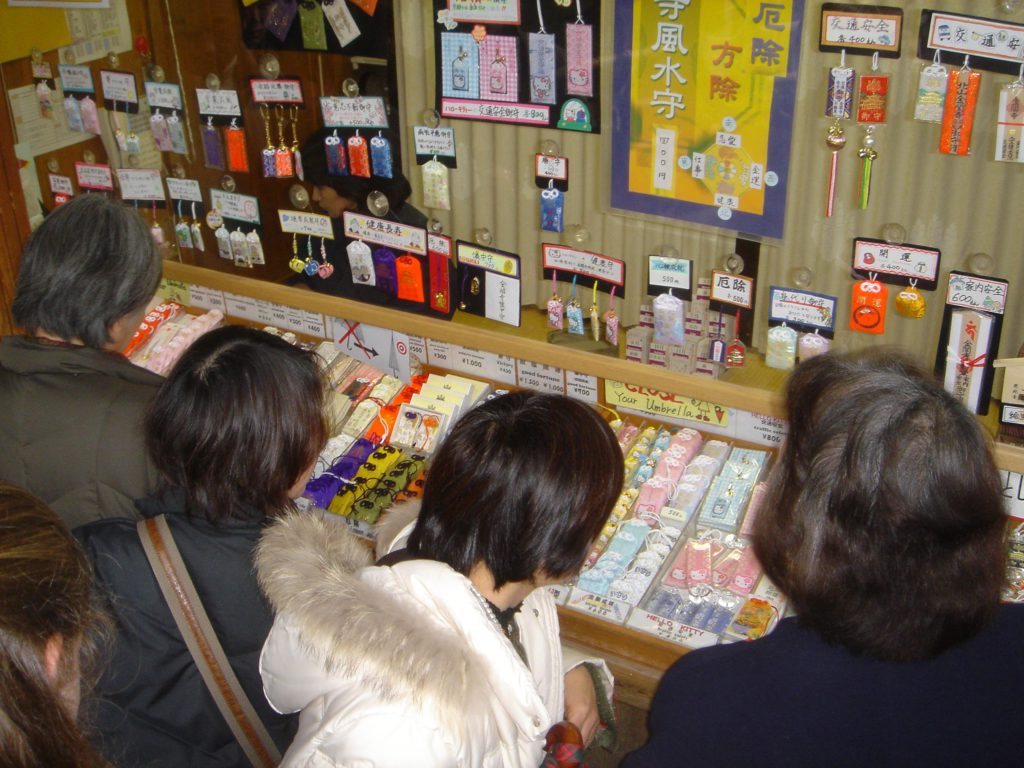
Dani bought one for scholastics, just to be on the safe side.
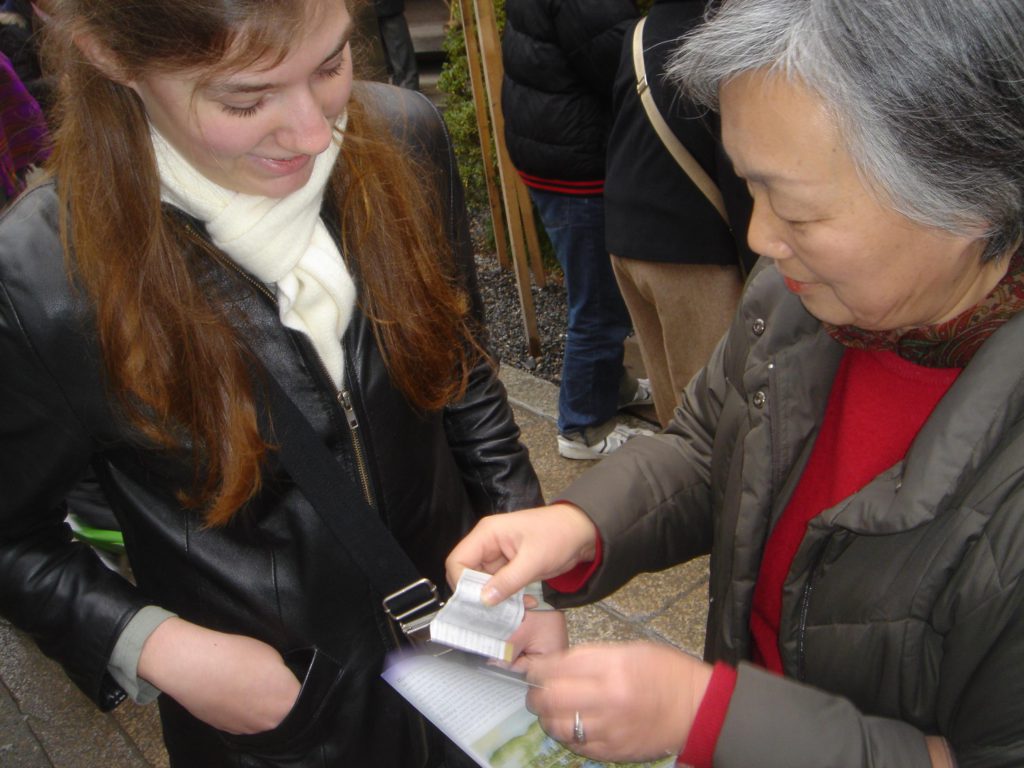
Fortunes were also for sale, printed on small scrolls. Not all are good. Jun helped Dani read hers, which was favorable.
Linda’s advised her not to volunteer for anything!
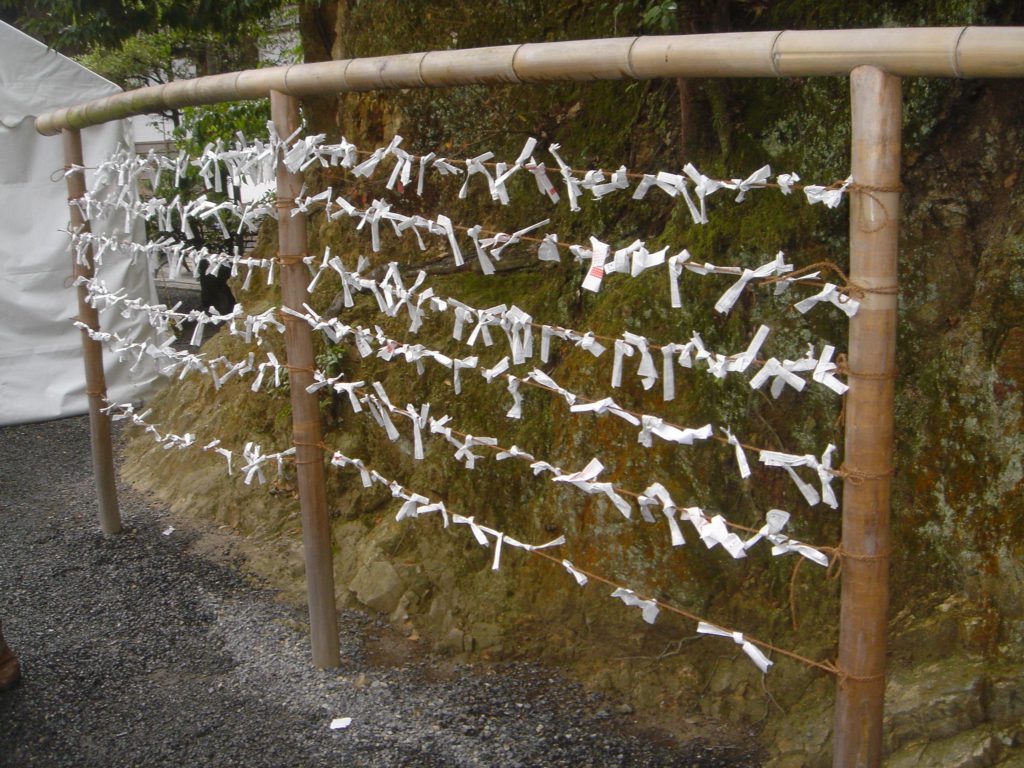
Another taxi drive found the streets of Kyoto approaching gridlock. We wove our way through back streets to Gion, the neighborhood described in Memoirs of a Geisha.
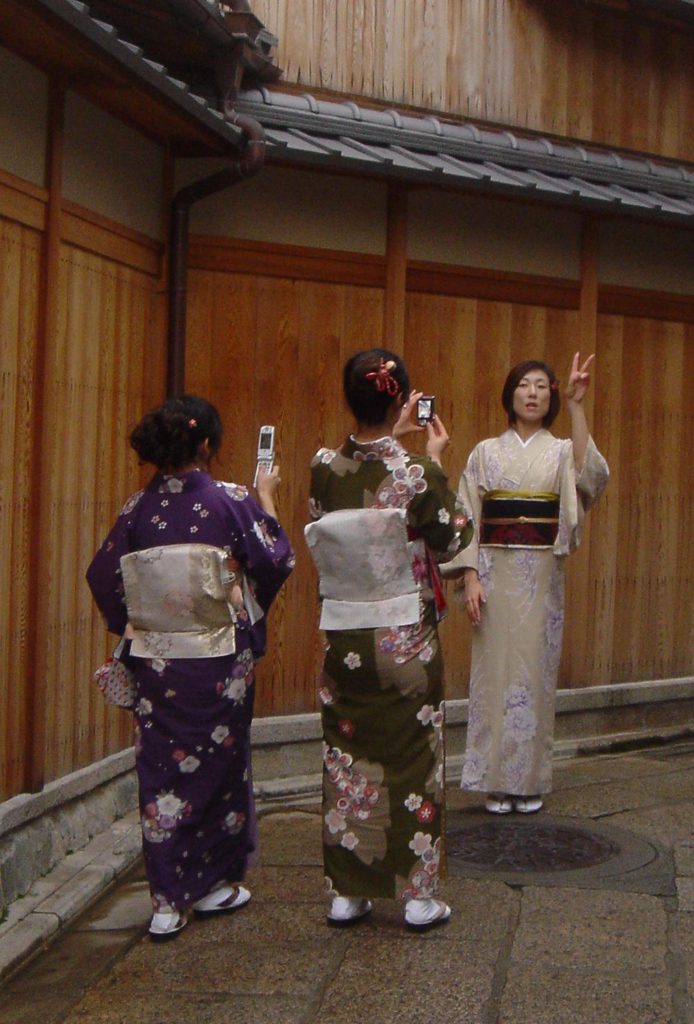
There are only about 100 geisha left in Kyoto. They entertain at private parties, at a cost of about $3000 an evening. Although we saw no geisha, many, many of the women were dressed in beautiful kimono to celebrate the new year.
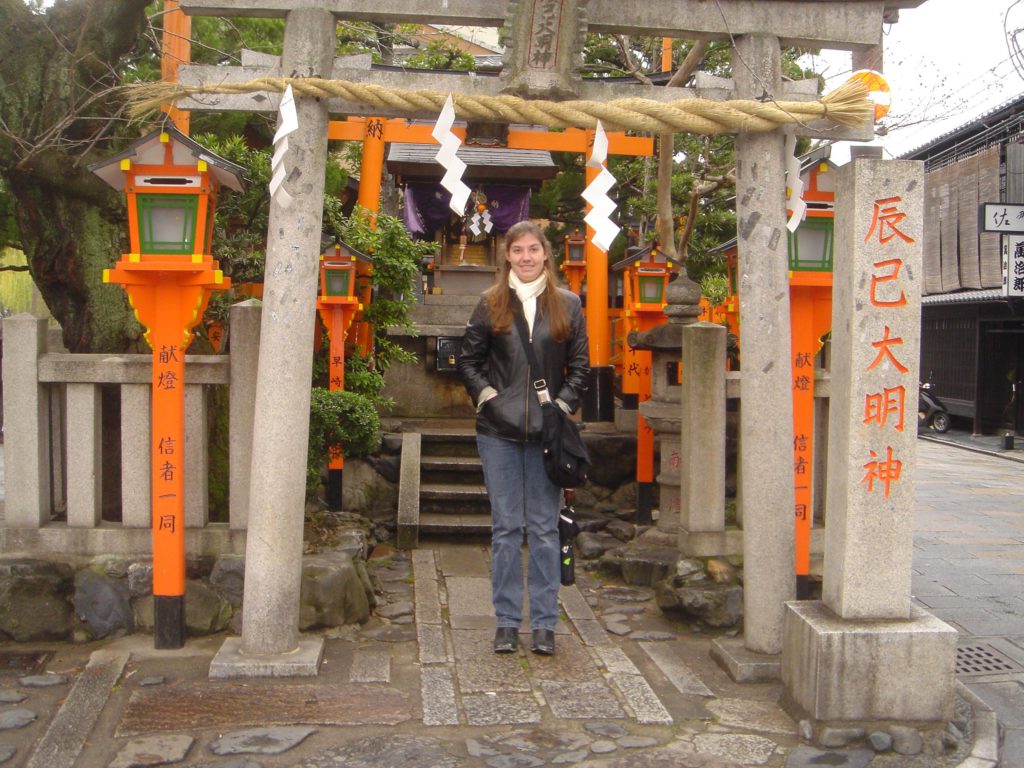
Nearby we posed in front of a famous pagoda, and walked up a winding street lined with shops, many of them making and selling beautiful — but expensive — ceramics. The area is known for its art and literature, and this was evident in the beauty of both merchandise and neighborhood. Vendors stalls also sold homemade food items, and Jun bought us each a freshly made rice cracker wrapped in seaweed. Delicious, and very different than the bit sized rice crackers we are used to; this was more like a rice cake.
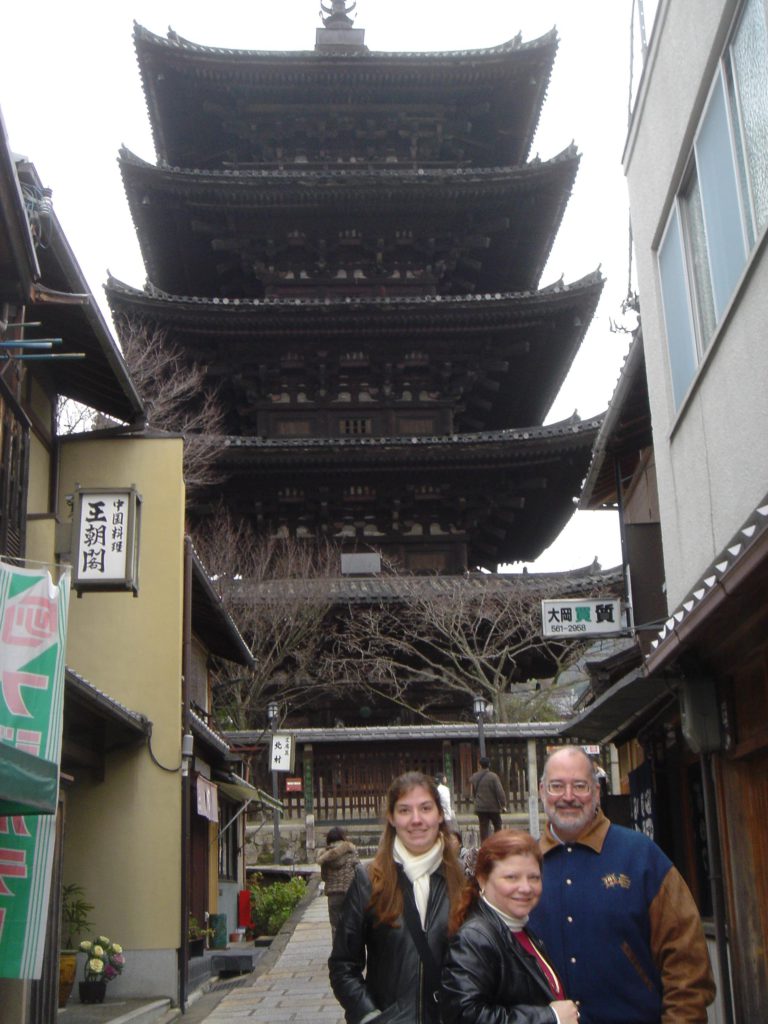
A final taxi ride of the day returned us to the station where we boarded our Shinkansen for Tokyo. Jun had purchased some origami paper at the station, and spent the train ride teaching Dani how to make cranes. It is a tradition to make 1000 cranes for various occasions, such as a sick loved one. Dani has about 997 to go.
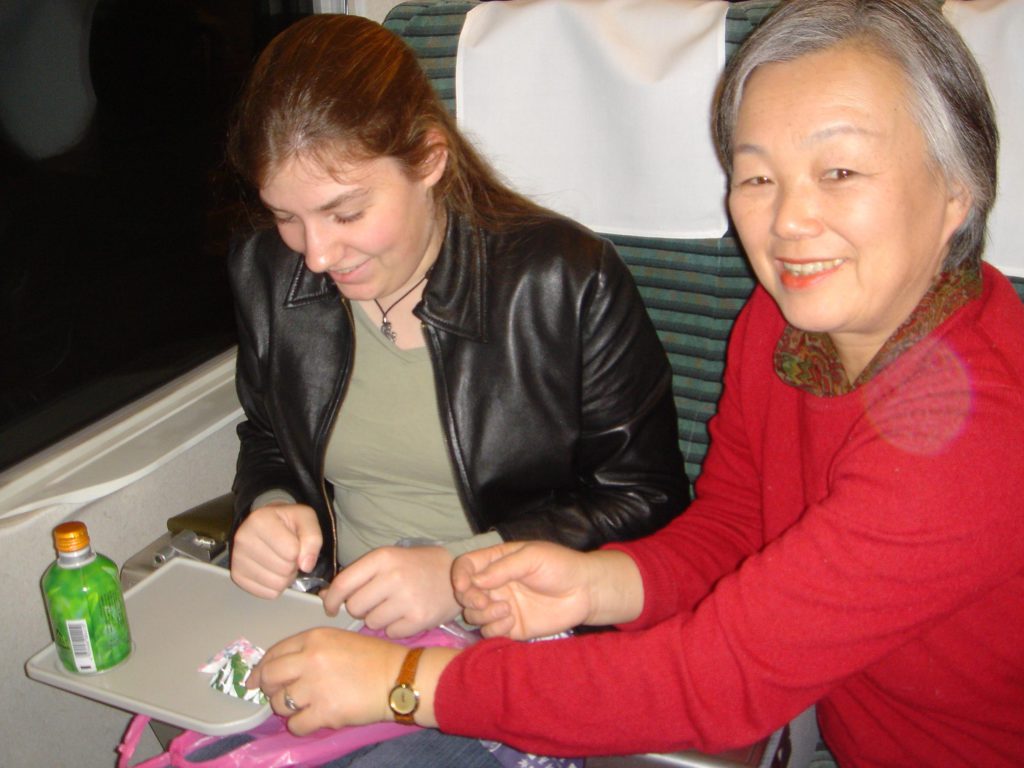
We could have easily made the journey to Kyoto on our own, but without Jun’s help we would have seen very little and understood less. We are very indebted to her for her guidance and especially her friendly and fun attitude.
Wednesday, January 3, 2007
Tokyo DisneySea
We decided to spend our final day in Japan visiting Tokyo DisneySea, a project we’ve heard a lot about, but didn’t really know much about. I always enjoy visiting places where our equipment is in use, trying to guess what is backstage. And indeed, we wouldn’t be going backstage, as none of Linda’s co-workers had been available to let us in, so we’d be going as paying guests.
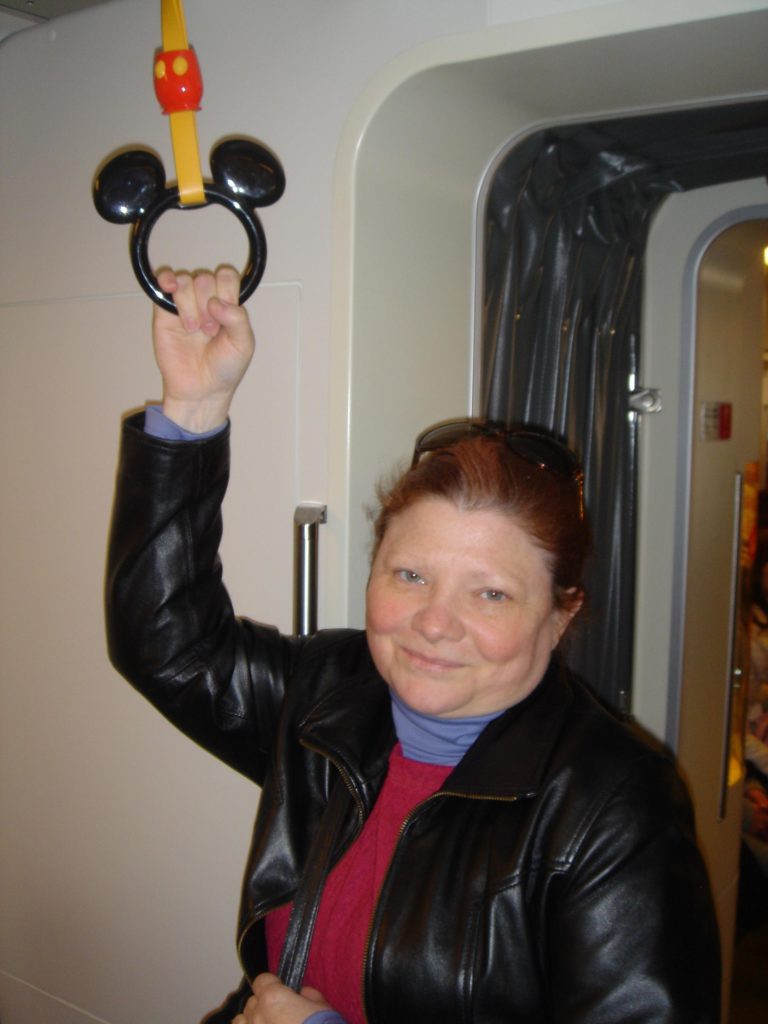
Feeling fairly comfortable with the Tokyo rail lines, particularly with some new insights from Jun, we took the Chuo express train from Shinjuku to Tokyo station and then transferred (after what seemed like a mile walk) to the Keiyo line for the trip to Maihama Station. The total journey took less than an hour, and was very easy, even with almost no English signage. I wouldn’t have wanted to try it a few days ago, though!

At Maihama you take the Disney monorail to one of two theme parks or the resort complex. The monorail seems a bit less like a ride when you’ve just taken two similar systems to get to the park!
We were afraid Disney would be very crowded because of the holiday, but the parking lot was less than half full. That’s not to say there weren’t long lines — nearly every attraction involved a wait of 30 to 90 minutes. But the Japanese don’t seem to mind queues. There was even about a 30 minute queue to play redemption games!
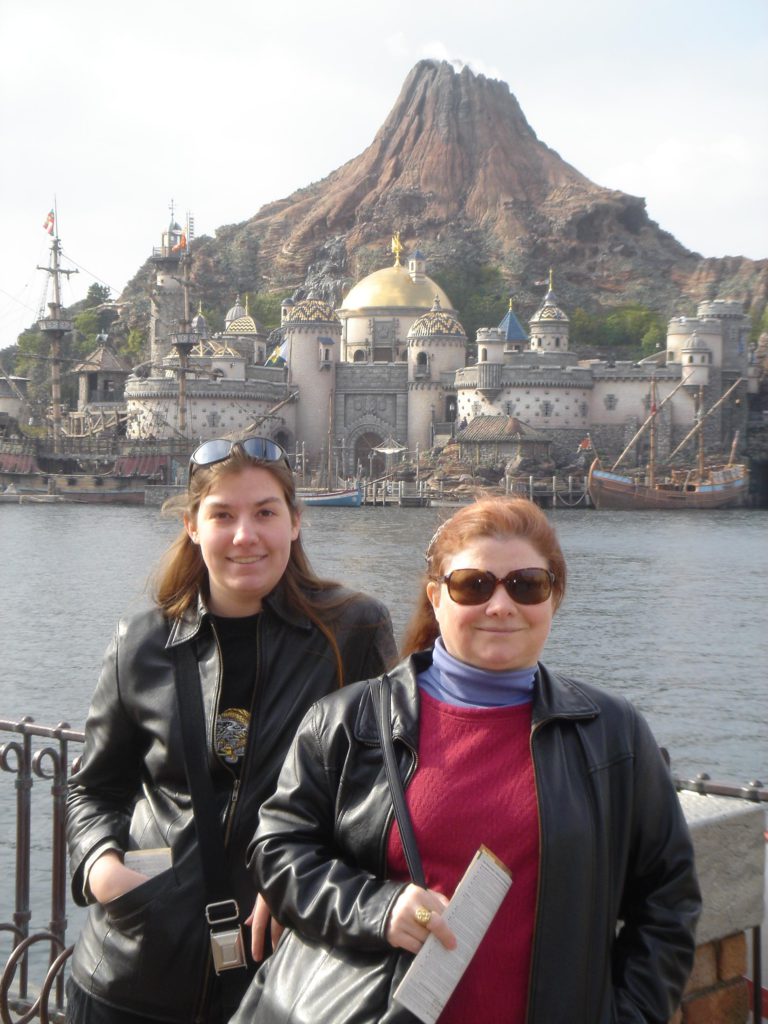
Tokyo DisneySea is (as of this writing) the world’s most expensive theme park, and it shows. With a budget of over $2 billion, every detail is simply perfection. It’s hard to believe this park was done by the same people and at the same time as the low-budget Disney’s California Adventure.
We began our visit with lunch in the steamer that is docked in the American Waterfront section, dining on those American favorites grilled prawn sandwich, bouillabaisse and roast beef on graham. Those crazy Americans!
Then we ventured over to the park’s central feature, a giant volcano. A castle at the base housed interactive science exhibits themed to the era of the alchemists. Rooms were devoted to the Coriolis force, the rotation of planets, lenses, and a working copy of Leonardo’s flying machine. Really neat!
Inside the volcano’s caldera is the best themed area ever. A lagoon bubbles and froths, and occasionally holes open and water simply disappears into the abyss. A 20,000 Leagues sub is docked at one side. Overhead an earth boring machine hangs poised to drill into the mountain side. Steam oozes from crevices in the rock, and strange metallic noises echo around the rock faces. Everywhere there are strange, hand-wrought metal structures that look like something out of the computer game Myst.
Descending into a dark tunnel we entered a heavily-themed queue for Journey to the Center of the Earth. The wait was about an hour, but there was lots to look at. The ride vehicles are large earth borers that travel through a number of fanciful scenes before encountering a giant, highly articulated creature. The ride then accelerates rapidly, bursting out of the rim of the caldera for a moment before dropping back down into the caverns and unload. Very well done.
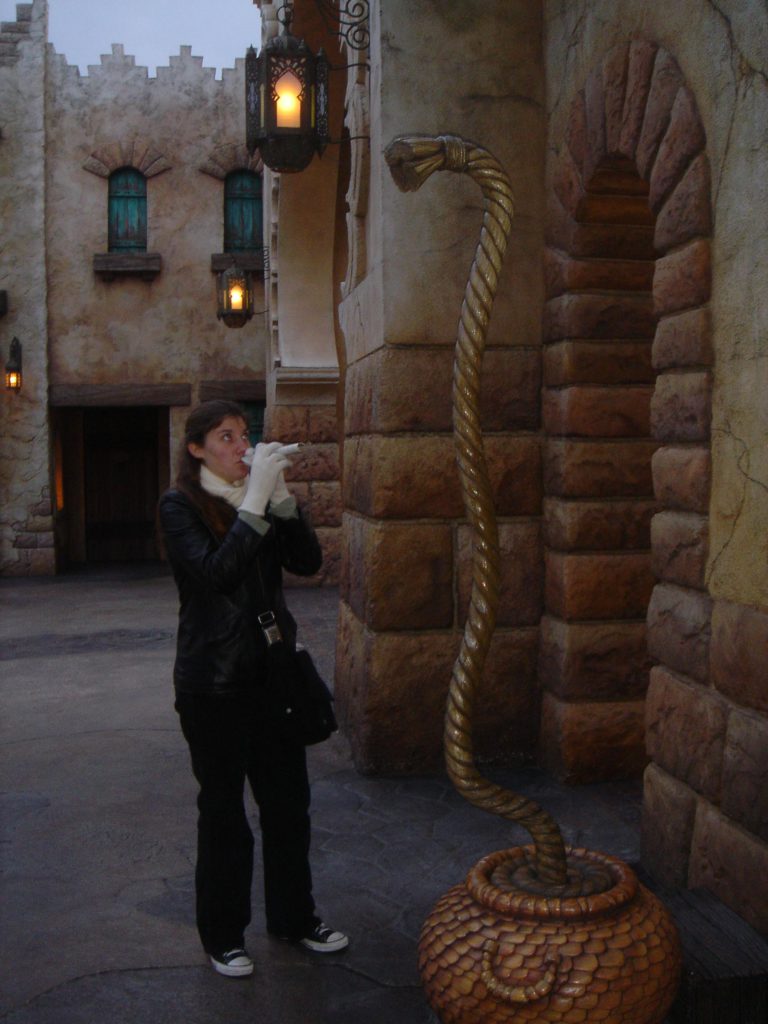
Next we wandered past the Mayan pyramid that houses Indiana Jones, and then spent some time shopping in the Arabian marketplace.
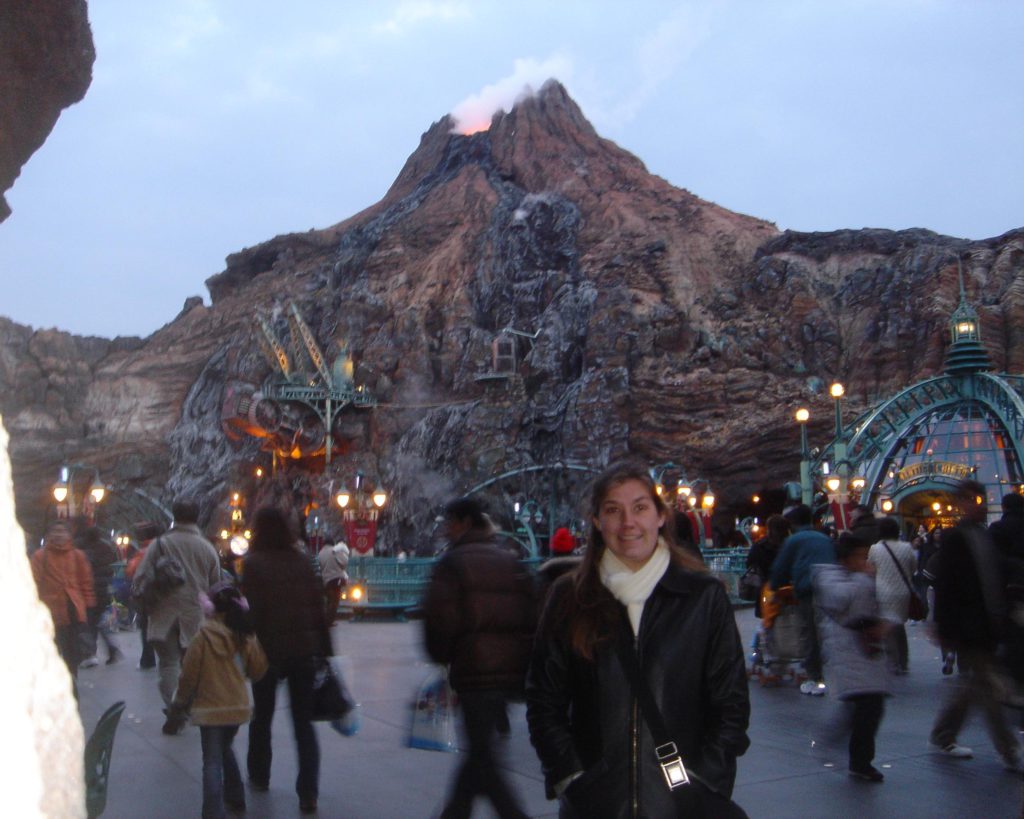
When our Fast Pass time came up, we returned to the caldera, now even neater with evening lighting, for 20,000 Leagues Under the Sea. For this ride you enter a diving bell vehicle that seats two people at each of three large domed windows. Bubbles swirl as you submerge. (Actually the bubbles are trapped in the domed windows, and the ride remains dry, a real maintenance saver. It’s a superb illusion. )You encounter various undersea life and discover a lost city populated by strange creatures before “resurfacing. “
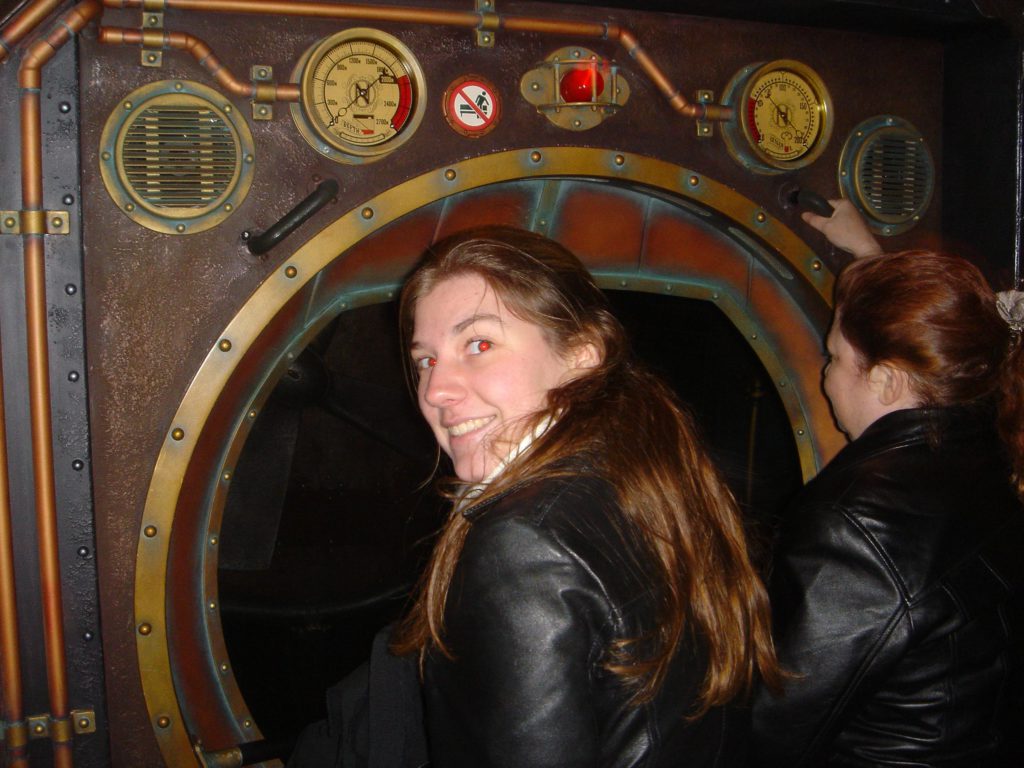
By 6 pm the cold air off of Tokyo bay was pretty chilly, but a new crowd of visitors was just arriving to take advantage of the after 6 pm rates. It was time for us to retrace our steps by monorail and train, back to the hotel. We rested for an hour, then headed upstairs to the New York Grill for our Tokyo farewell dinner. The restaurant is a stylish mix of metal and glass, with two-story-high glass walls on all sides. A jazz combo played old standards in the lounge on one side, their backdrop the solid glass wall and twinkling vista. The multi-course meal was tasty (and pricey), and the 360 degree view of Tokyo’s lights superb.
Thursday, January 4, 2007
Sitting by the window finishing this journal, I’m contemplating what a great trip this has been. We’ve crammed a lot into our six days in Tokyo. And as I look out at the city — just now gearing back up to its normal bustling level — I realize what a perfect time of year this was to come. We had a chance to explore without crowds, and the holiday didn’t interfere at all.
I really like Tokyo and its people, and definitely want to return for another visit.
Spur of the Moment Chef’s Table at Victoria & Albert’s
October 7, 2006
A few months ago I tried to book Victoria & Albert’s chef’s table in Disney’s Grand Floridian for Linda’s birthday, but they had no openings. I asked Israel, the manager, to wait list us. Margaret from V&A called on Wednesday and unexpectedly asked if we’d like to take over a cancellation Saturday night. We called our friends Ron and Bev Siegel, and set up a dinner and tasting. Chef Aimee provided us with great food and Israel was a terrific host and sommelier. We learned that Chef Scott and Israel go on some very high end restaurant scouting missions around the world, spending thousands of dollars of Disney’s money on dinners at restaurants in Paris, Barcelona, Chicago and New York. That sounds like a dream job for a Maitre d’.
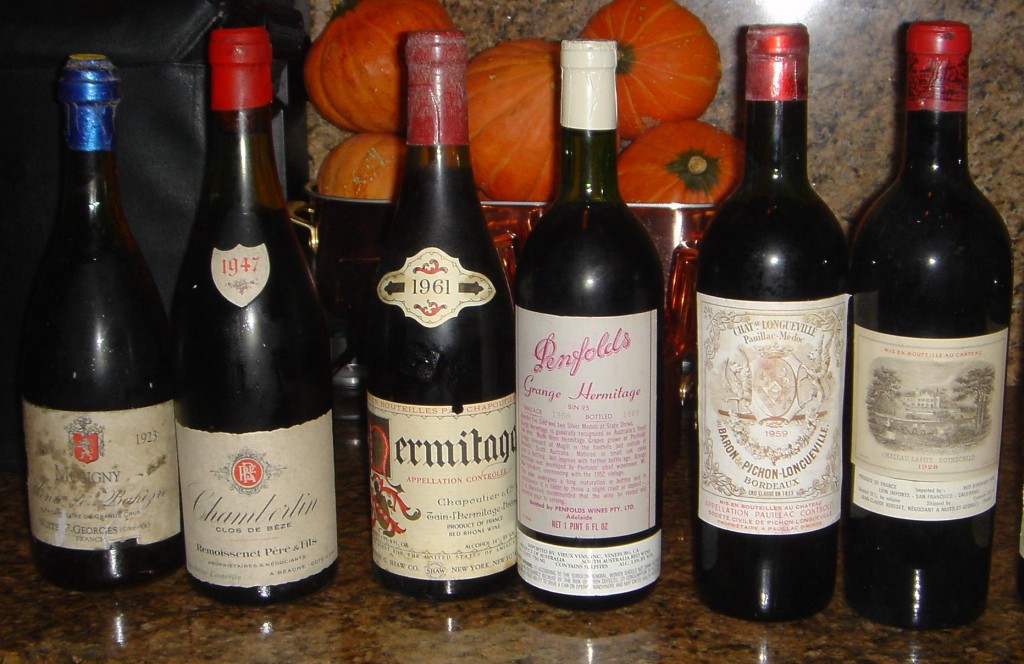
The Line Up |
|
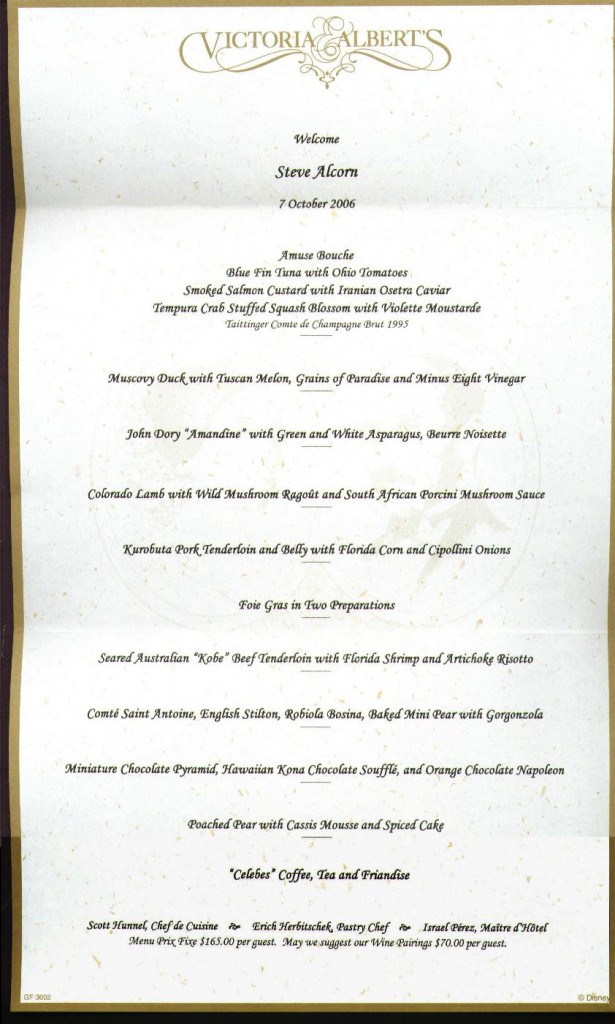
Menu |
Tasting Notes
| Flight 1 | 1995 | Taittanger Comtes Champagne | Youthful color, clean citrus and pear nose, nice effervescence, good match with the four different amuse bouche items. | 93 points | ||||
| Flight 2 | 1923 | Musigny | Dark garnet, leather and mineral nose, classic old burgundy, sour cherries in the mouth. Lasted about twenty minutes before going sour on the palate, but the nose continued to improve for hours. | 93 points | ||||
| 1947 | Chambertin Jaboulet | This was a much more youthful wine that the ’47 we had last December. My notes for that wine were: Medium brown, sweet, earthy, leather and bacon fat in the nose, medium body, a floral, woody finish. This one was more garnet in color, with a very minty nose, tending to smoky bacon later. The wine was surprisingly fruity in the mouth, belying its age. It was a very tight competition between all the wines at this dinner, but this was probably the favorite. | 96 points | |||||
| Flight 3 | 1961 | Hermitage Chapoutier | Probably my favorite wine of the evening. A classic, still youthful Rhone, complex, with mint, cherries and a mineral finish. | 96 points | ||||
| 1968 | Grange | The first Grange I’ve had that was ready to drink.; Balanced between syrah fruit and wood with a soft mouthfeel (surprising for Grange) and vanilla on the finish. | 95 points | |||||
| Flight 4 | 1993 | Ch. d’Yquem | Not the greatest Yquem ever, but a steal I picked up at K&L for $94 in a 750ml. Good match with the fois gras. Phenolic, waxy, not blindingly sweet, possibly due to high acid. | 90 points | ||||
| Flight 5 | 1928 | Ch. Lafite | This was the wine in our cellar we’ve had the longest. Linda bought it as a birthday present for me in 1984 for $400. At the time, it had just been released from the winery, so the label looks brand new. The wine was classic Lafite, with lead pencil and wax in the nose, and still appealing fruit on the palate. I would have guessed it was from about 1970. | 93 points | ||||
| 1959 | Ch. Baron Pichon Longueville | Very youthful, quite fruity and floral. Another true to form wine. | 93 points | |||||
| Not opened: 1973 Heitz Martha’s Vineyard, making this perhaps the first tasting I’ve ever done with no California wines in it!
As you can see, the wines were all in good shape, and true to type. Since my preference has migrated to old Burgundy, the Bordeaux seemed a bit anticlimactic, so I might reconsider the order in future events with old wines like these. |
Europe 2006
Monaco, Spain, Portugal, France, England
Wednesday, June 7, 2006
Orlando to London
It was an easy trip. We took off about half and hour late for unexplained reasons, so arrived about the same amount late, shortly after 7am London time. The “premium economy” cabin on Virgin Atlantic was spacious. It occupied the top deck of a 747, with only two-and-two seating, plus a wide center aisle and side storage bins (since the overhead bins were small). There was lots of legroom, but the seat was narrow and the hardness of a church pew. Worth twice economy? Hmmm. . . that’s a close call. Which I suppose means they’ve priced it just right, from a business standpoint. I did get a few hours restless sleep, between trying to find new positions for my tailbone. I’m not sure Dani did. Alcohol flowed freely. These Brits like their booze. The food was also tasty, with beef stew turning out to be pot roast in barbecue sauce. No mistaking it for Air France, though. The lack of a connection and quickness of the flight were certainly selling points.
Immigration was slow. Our plane only had a dozen or two Americans. The English breezed through, while we got stuck in the midst of two planeloads from Ghana. As we waited in line we discovered we were next to a family with a seventh grade son in Trinity Prep!
Thursday, June 8, 2006
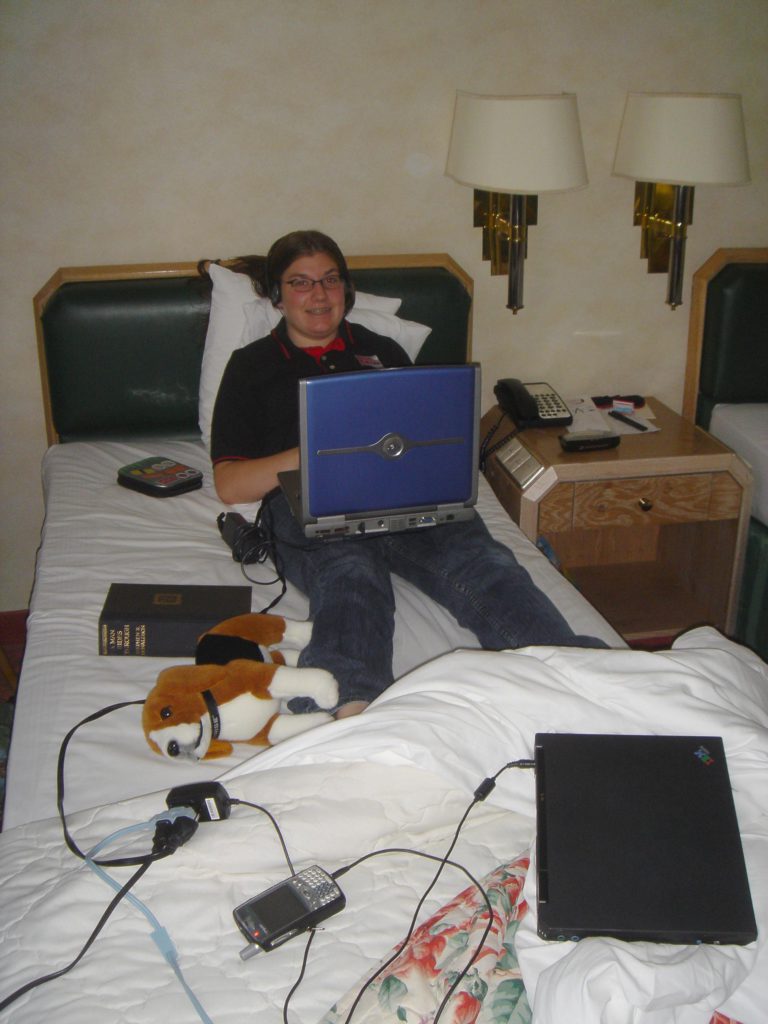
Gatwick
The Renaissance Gatwick is a good choice for the stopover. It’s next to the airport, has spacious rooms (by Europeans standards) and they let us have the first room that got cleaned, so we were able to get settled after only a half hour wait in the lobby. We were napping by 9:30am.
When we awoke we hooked up our Gordian knot of electrical cords to get everything recharged. In the afternoon we had a room service lunch of fish & chips and cottage pie. English food is amazing. It’s the only place in the world where they brag about your meal coming with “mushy peas”. The fish was actually decent, if greasy. There’s a bit of sticker shock here, though, as the exchange rate is $2 to one pound. So lunch was about $70.
Tomorrow’s flight leaves at 7am, so I arranged for the shuttle at 4:45am (ouch)! I guess there’s no point in even trying to get on local schedule quite yet. Our goal is just to get plenty of sleep and then hit the road again.
Friday, June 9, 2006
Monte Carlo
We arrived in the lobby at 4:46 for our 4:45 shuttle and discovered it had left. But the 5:15 shuttle got us to the airport in time — thanks to kiosk check-in — to have a pretty awful bagel while waiting for our gate to be assigned. The bagel was nothing compared to the almost indescribable snack served on British Airways, which was rendered all the more appalling because I suspect it turned out exactly as intended. Picture a stale dinner role with a slice of hard-boiled egg and a fragment of half-cooked bacon, and you’ve got the picture.
Air transit has suddenly become competitive in Europe, and even British Airways has been forced to drop their prices. A table in the flight magazine compared the rates from 1996 with this year: London to Nice – 239 pounds vs. 39 pounds.
The approach into Nice was beautiful, with clear, temperate weather to enjoy the view: golden beaches and Mediterranean villas, dotting the San Diego-like coastline.
Quite a few of our fellow passengers arrived on the same flight or about the same time; a whole herd of them were loaded onto buses. Since we didn’t book our airfare through the cruise line, I’d asked our travel agent to arrange a private van. This worked out well, as Dani enjoyed testing her two years of French on our driver, her first opportunity to try communicating in the real world. It seemed quite successful.
The trip from Nice to Monaco takes about thirty minutes. The road crosses several long viaducts and passes through a dozen or two tunnels, the last of which is nearly one mile long. After winding through one final French village, we arrived in Monaco, a country comprised of one bay, filled from edge to edge with the city of Monte Carlo. We threaded our way past the famous casino and fancy hotels on a narrow street still lined with barriers from the grand prix, held two weeks ago. By 11:30 we arrived at the Hotel Meridien, where a continental breakfast was provided during our two-hour wait for transport to the ship.

Since there’s no terminal in Monte Carlo, check-in was on-board. Everything went speedily — possibly because of the total absence of any security screening — and we were soon in our cabin. It’s the farthest cabin toward the stern on deck seven, so there’s some engine vibration, but this was the price we paid (or didn’t pay) for not having a pre-assigned cabin. At a savings of $1800, it was a good decision.
The cabin is pretty much the lowest category on the ship, yet it’s as nice as almost any we’ve had: a bit larger than category AC on Royal Caribbean, and outfitted in the same quality as that ship’s suites. In fact, the vast majority of cabins on this ship are identical to this one, and some of the suites have no more square footage, so this is an excellent buy.
Our cabin stewardess is a Pilipino (of course!) named Priscilla. She’s very cheerful and super efficient. Throughout the cruise she would anticipate our needs and adapt her housekeeping to the way we used the cabin. She certainly wasn’t unique, though. During any walk down the hall we were likely to be engaged in conversation with several stewardesses. It’s a surprising result of the no-tipping policy, that every employee has a stake in every passenger enjoying their entire cruise. The ship carries 700-odd (well, actually “old”) passengers, but doesn’t seem tremendously smaller than the Coral Princess. Service is extremely polite, interesting since there’s no tipping. We had a salad and burger for a late lunch on the pool deck, and the food seems typical.
Wireless Internet in the cabin seems solid, although the actual connection to the internet is iffy, so we’ll see how this goes. . .
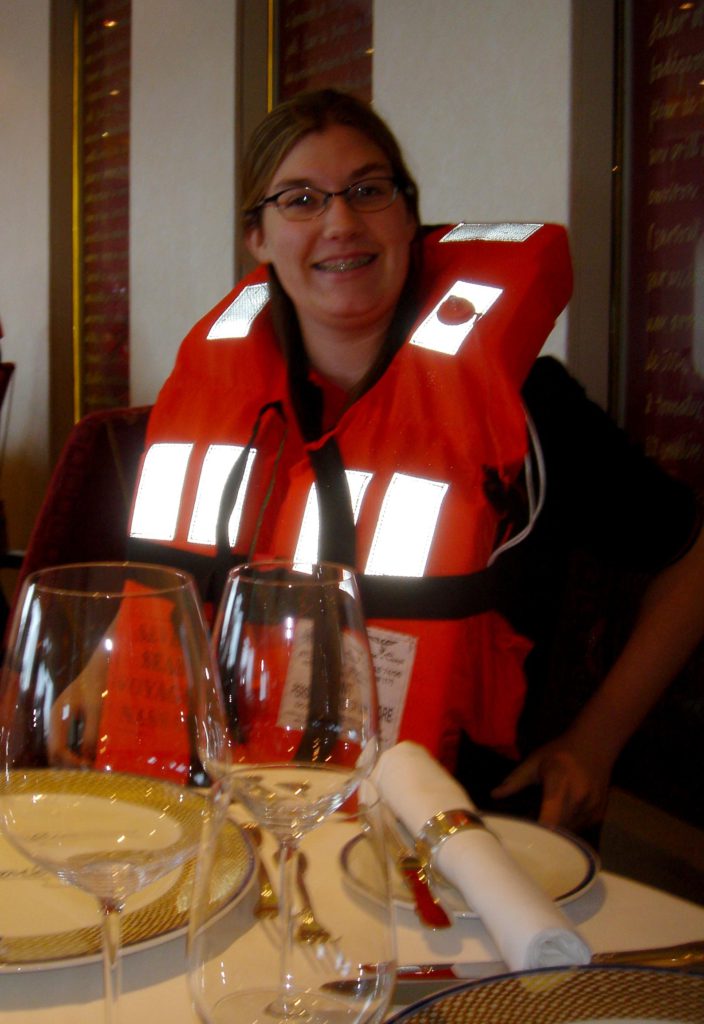
We thought lifeboat drill would be more pleasant than usual because our muster station is the upscale Signature restaurant, but after gathering there we had to march outside single file with our hands on each others’ shoulders to our lifeboat stations. Princess and NCL seem to feel this step is unnecessary. I wonder if our captain is a pessimist.
Dani got a much needed — although unintended — nap, and then we we had dinner in The Compass Rose, the ship’s main dining room. An oddity of this ship is that all the dining areas close at 9am, so the only food available after that is from room service.
The dining room was very busy, but we were cheerfully greeted and offered our choice of several nice tables. The menu degustation was a multi course affair consisting of a shellfish assortment, consume, mussels, intermezzo, chicken cordon bleu, and dessert. The food all looked spectacular, but its taste was, in general, typical of cruise ship food — nothing spectacular. The standout was actually the Kahlua sorbet served as the intermezzo. For dessert I had a cheese plate which has some nice cheeses including L’explorateur and Maytag blue, although they were much too cold to really taste. I’m not sure why this was the case, as on subsequent night a real cheese cart was available, with room temperature selections that changed each day.
Service was beyond excellent — this continued to be the case throughout the cruise — and the wines that accompanied dinner were very nice, including an interesting South African sauvignon blanc and a superb California pinot noir from Alapay.
Dani took a break in the middle of dinner to attend the organizational meeting for teens. She reported that there are about fifty kids on board, including many seasoned 13-year-old travelers, but almost no one 14-17.
Saturday, June 10, 2006
At Sea
We slept late, but I awoke in time to shower and dress before our 9:30 room service breakfast arrived. It’s temperate but overcast today, a pleasant day for sitting on the balcony and watching the waves, or working on my new writing class.
In the afternoon we walked around the ship. All of the public areas are on decks 4, 5 and 11, which is similar to the design of the newer Princess ships such as the Coral Princess. Although the ship is scaled down from that size, it stills seems fairly large, and since there are only 700 passengers, it feels deserted. Perhaps it was deserted — everyone we saw was younger than 60, which is not representative of the demographics in the dining room last night.
The fit and finish are certainly better than any other ship I’ve been on, with tasteful decorating and top notch materials. It doesn’t handle that well in rough water, though, and even today’s swells had us weaving in the corridors.
There are some very nice spaces on the ship, including a piano bar, coffee and espresso bar, and a cigar room. All but the coffee bar were deserted this afternoon.
We ordered a late room service lunch and ate on our balcony. Delivery was prompt and the food quality was as good as if we’d gone to the dining room.
I had been meaning to have some pants taken in before the cruise, but didn’t have time. The onboard tailor did a top notch job in less than 24 hours, and at a bargain price.
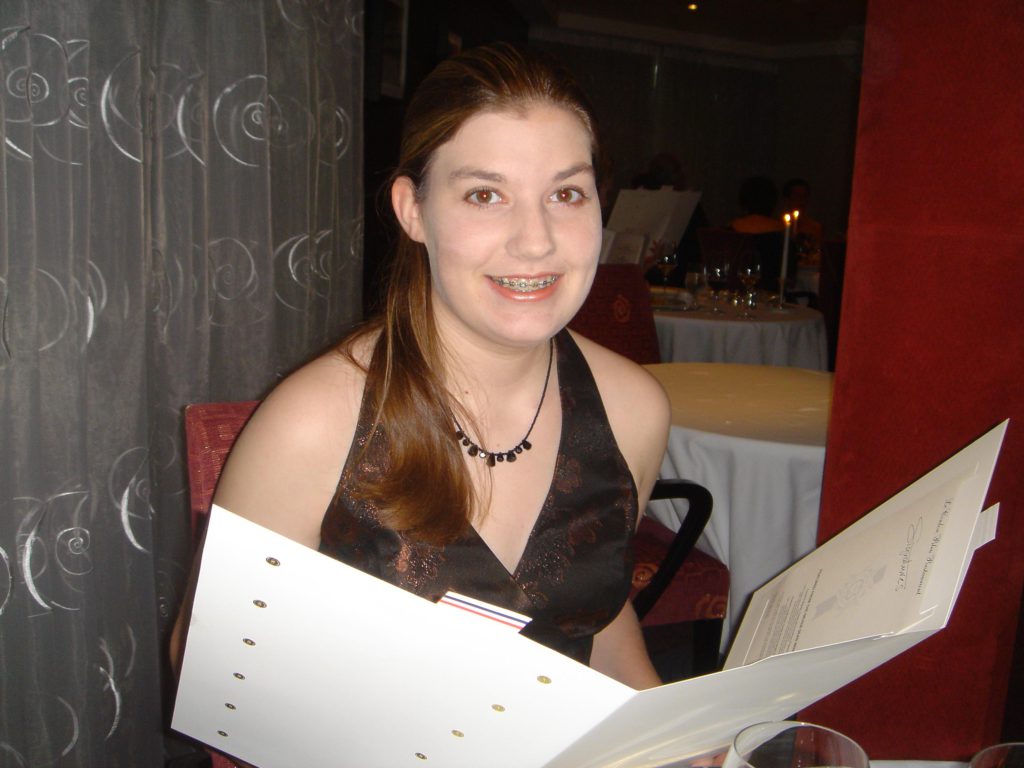
At 8:30 we dined at Signatures, the ship’s top restaurant, which is operated by The Cordon Bleu. Dani looked lovely in one of her new outfits. In general the passengers were better dressed than on other ships’ formal nights, although there were not that many tuxes.
The food was certainly better than on other ships, with fois gras, freshly shaved truffles and a real cheese cart. It wasn’t exactly a gastronomic experience, but it was certainly good. And true to their word, we haven’t yet spent a cent on this ship.
We did discover that fresh mint leaves and Rousanne wine are an amazingly horrible combination!
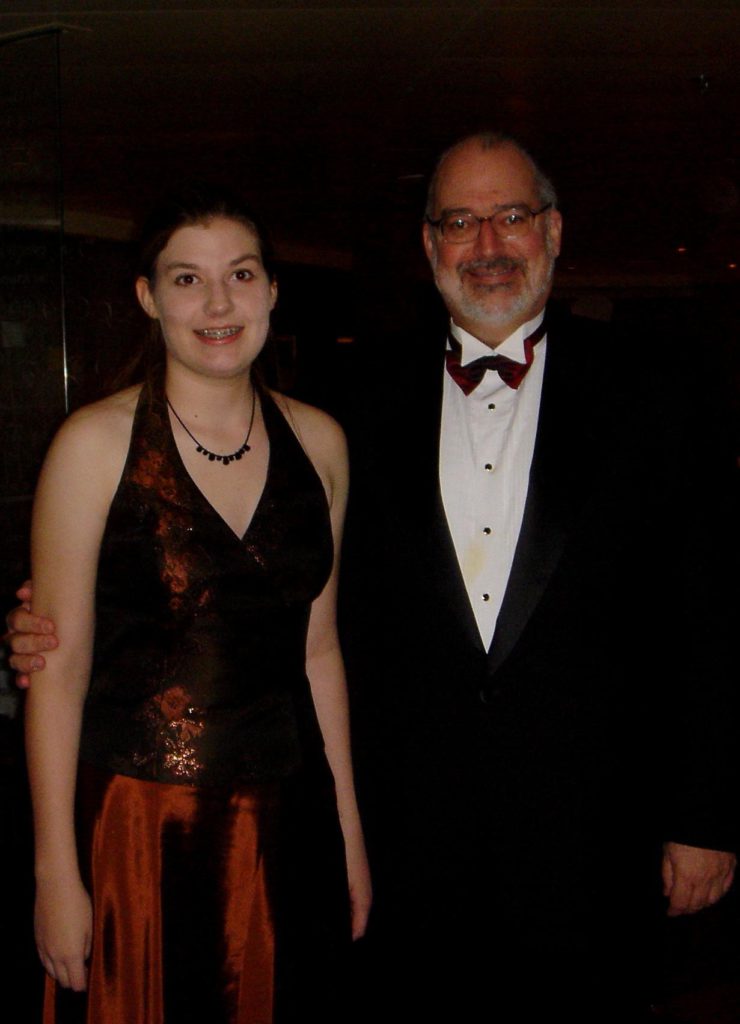
After dinner we went to a show in the ship’s main theater. This is a very nice two-story space that seats perhaps 200 at individual cocktail tables. The show was a credible Broadway review, with sets of songs from 42nd Street (of course!), West Side Story, South Pacific, Cats, Les Miserables and more 42nd Street. In typical cruise ship tradition, the women were all about 15 years too old and the men were all the wrong sexual orientation. A pleasant hour, nevertheless.
By 10:45 the public areas, including the piano bar, were deserted. All the 20-somethings were easy to locate, though. . . in the Internet cafe.
Sunday, June 11, 2006
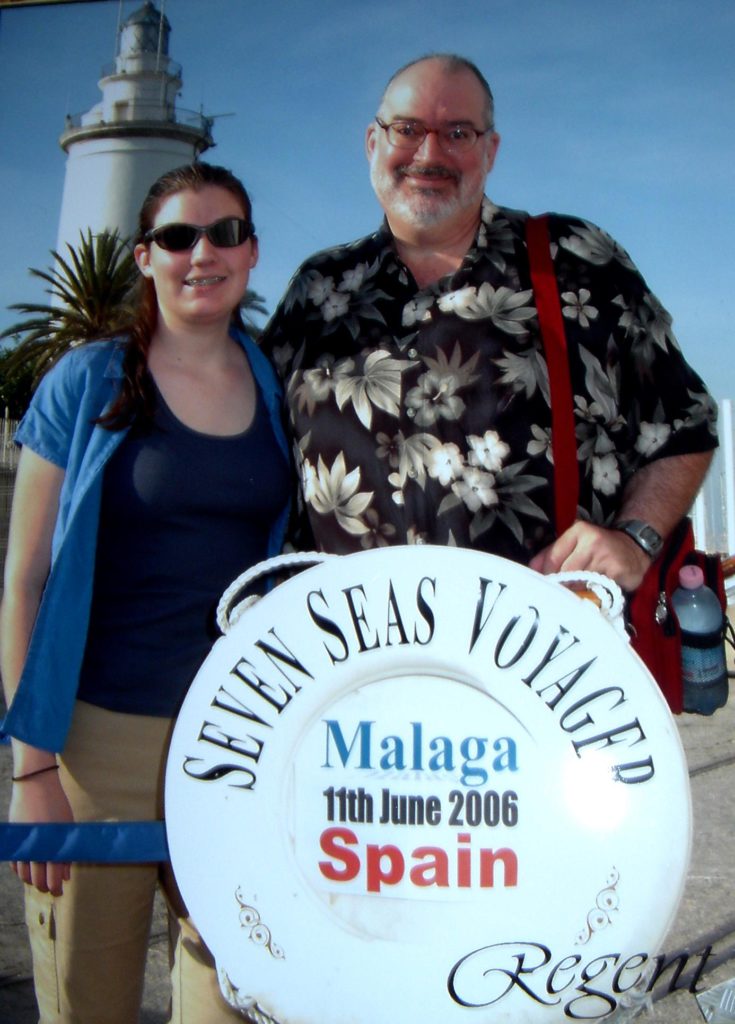
Málaga, Spain
We docked in Málaga, Spain about 8am and after a light room service breakfast ventured onto the pier for our tour. There were about a dozen tour buses bound for various destinations including Costa del Sol, Granada and the Alhambra, but we opted for a half day visit to the local sites.
Málaga is a charming city, a mixture of styles from the past few centuries. Adjacent to the port is a beautiful beach, lined with thatched huts and seafood cafes. The season hasn’t quite arrived (although it was certainly a gorgeous day), so the beach was nearly deserted, but Málaga plays host to 11 million tourists a year, mostly in July and August.
The main street is lined with tropical palms and flowering shrubs, and there are scenic parks and fountains at every major intersection. It almost never rains here, so the river is dammed in the mountains to collect the water needed to support the city. But the riverbed isn’t completely dry, as seawater is let in to flow down the last mile.
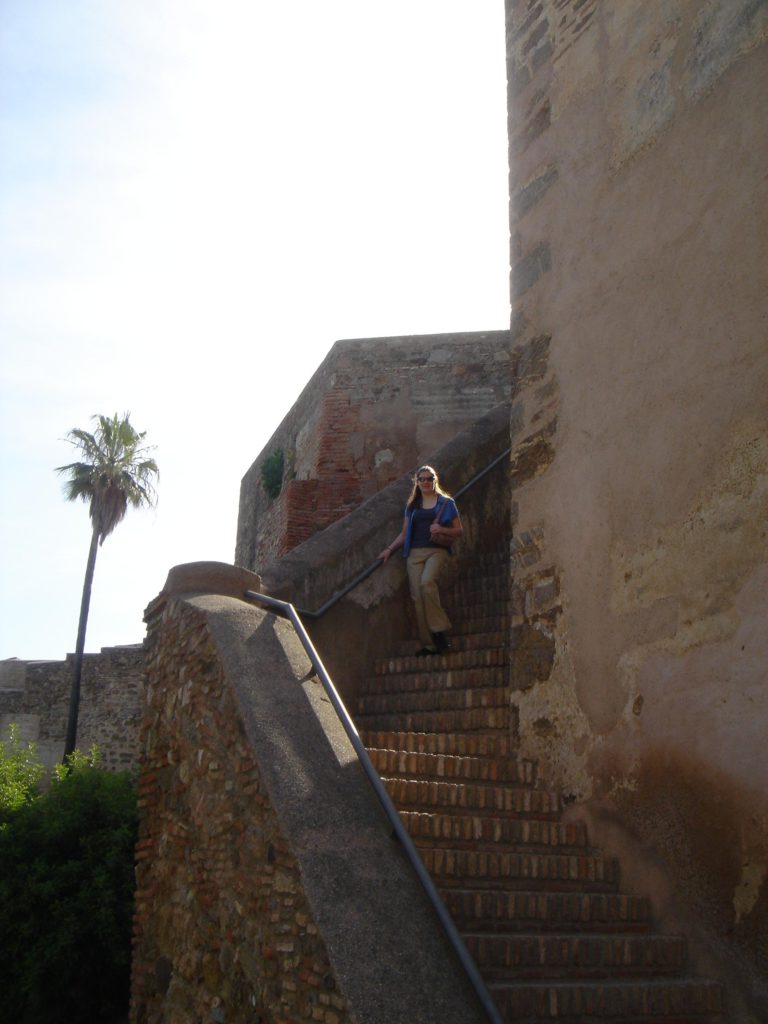
Our first stop was at the Alcazaba, a fort constructed by the Moors in the 8th to 11th centuries. It sits atop the hill overlooking the city. Now in ruins, it was destroyed by French troops when they burned their munitions dump prior to withdrawing from the city in the 1820s.
The view of the city was spectacular, with the Málaga bull ring prominent in the foreground, and our cruise ship in the distance.
Our next stop was at the bull ring, which looked exactly like the one in The Three Stooges short. We watched a short demonstration put on by an aspiring bullfighter (the guy in blue) and his friend, who played the bull. The only difference was that the friend wasn’t actually killed at the end of the demonstration.
The aspiring bullfighter then had to rush off to his afternoon match in another city. Since he isn’t yet famous, he won’t be paid, but maybe they’ll let him keep an ear. Or, if the bull wins, may it gets one of his ears.
After visiting the bullfighting museum and enjoying some photos of the injuries bulls can inflict on the long-suffering matadors (although there seemed to be a general lack of sympathy among the viewers) we had a sample of the local wine, Moscato Málaga, which was quite nice. Made from raisins, it is fairly complex, reminiscent of Tokaji.
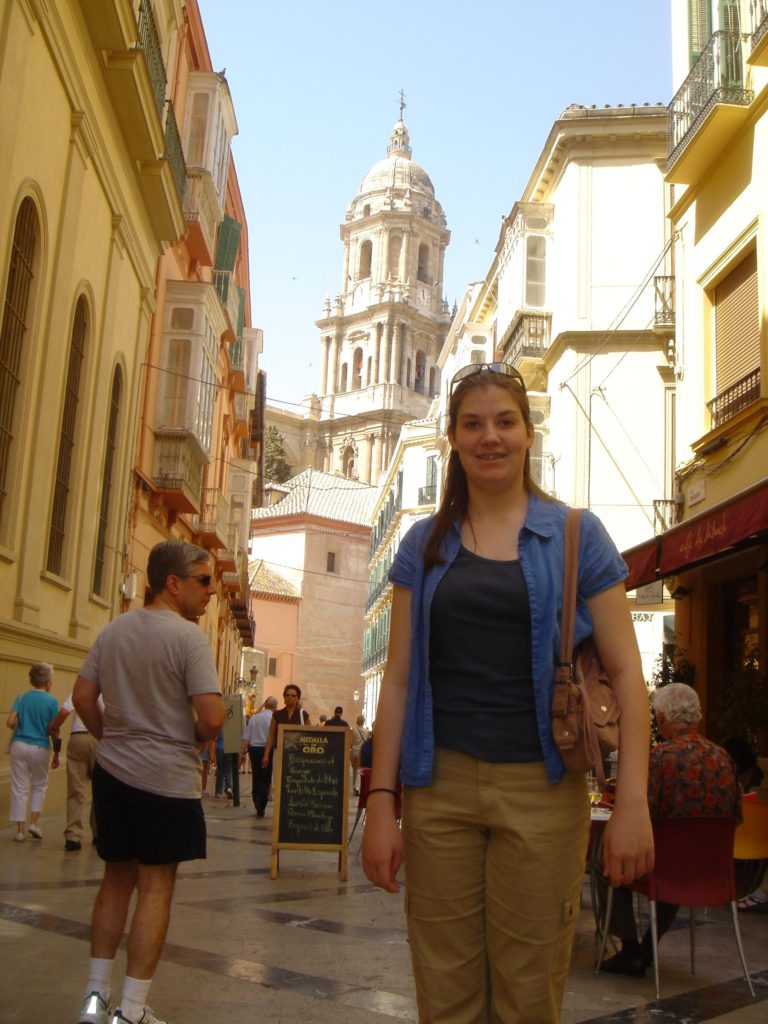
Our final stop was at Plaza de la Merced in the old city, for a short walk through the narrow pedestrian streets. We started at the birthplace of Málaga’s most famous native son, Antonio Banderas– er, I mean Pablo Picasso. A short walk took us past the Picasso museum (mostly early sketches) and the cathedral. Since it’s Sunday, the shops were closed. But church was open. Fortunately, it wasn’t open to tourists.
Across from the cathedral we sat in an outdoor cafe and had Perrier and a sort of French bread pizza, then bought some postcards before returning to the ship.
I would definitely come back to Málaga. It has the same relaxed feel as Barcelona, but in a more intimate setting. I guess that’s one of the nice things about a “positioning cruise” like this one — it takes you to less-frequently visited ports.
We spent the afternoon in our cabin discussing Dani’s book, which is tentatively titled The Last Telepath. She actually started planning this book two years ago, but it has gone in fits and spurts. After a five-hour brainstorming session, she had completed a pretty tight outline of her 88 scenes. I think she’s about ready to start writing the long form.
After a surprisingly mediocre dinner in the main dining room (which I think was the fault of the guest chef, Norway’s “leading” chef, not the ship) we headed back to the cabin, then realized it was already after 10pm, and we were scheduled to be passing Gibraltar. We hurried up on deck, and sure enough, there it was, wrapped in a halo of fog. Very eerie, looming up out of the dark.
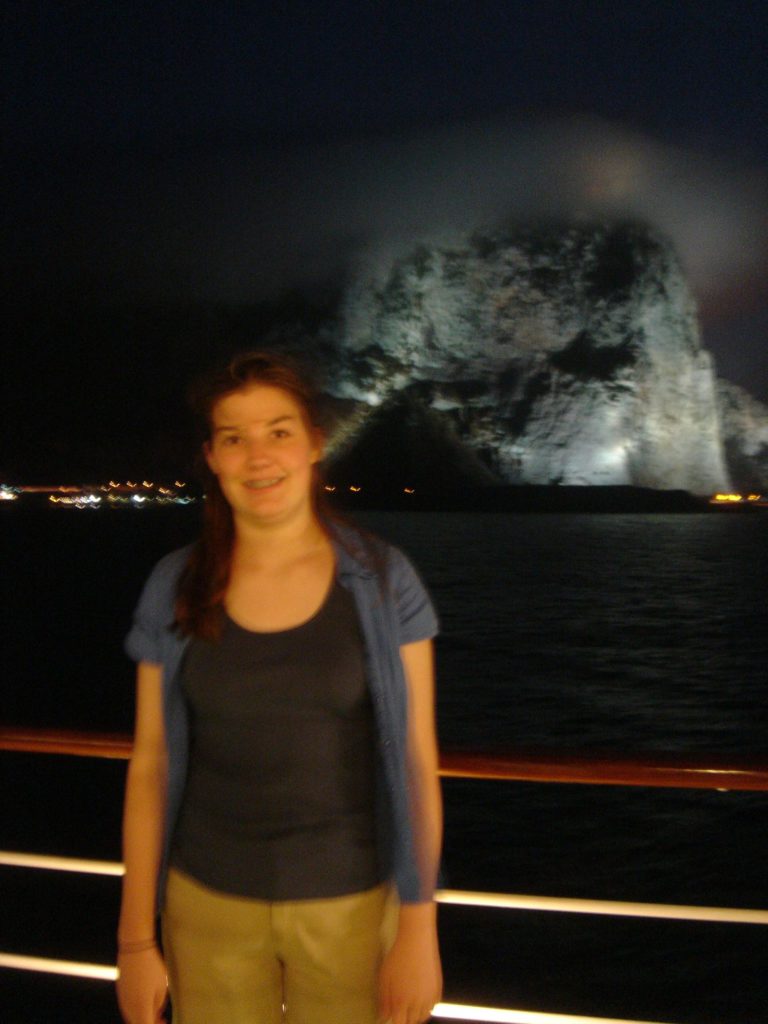
That’s one big rock.
Monday, June 12, 2006
At Sea
The seas were 6-8 feet today, so the expression “bounding” comes to mind, but we spent a pleasant day in the cabin, writing. Buffet breakfast on the rear deck outside the Veranda was very nice. I don’t think the outside temp has varied by 2 degrees from 69 since we sailed. At 4pm we docked in Lisbon, but we won’t go ashore until tomorrow. Today is a special holiday, and we understand the partying is pretty wild.
Dinner in the main dining room was the best meal of the trip so far — sushi and duck a l’orange. In the evening we checked out the DVD of Lethal Weapon. I’d forgotten how funny it was, and it was amusing to see Mel Gibson trying to conceal an Aussie accent.
Tuesday, June 13, 2006
A Taste of Lisbon by Coach and Tram
Lisbon is a jumble of buildings that sprawls across many hills on the northern shore of the Tagus River, one of Europe’s best natural harbors. The city was destroyed by earthquake in 1755, so most of the buildings date from that year or later, which is coincidentally the last time any maintenance was performed on them. The historic port district of Belém (Portuguese for “Bethlehem”), located in the southwest part of the city, is in a particularly decrepit state. Here the building coloring choices are natural stone, pink, yellow or graffiti.
Our vivacious tour guide, Christina, met us at the pier and gave us a thorough — and interesting — history of Portugal and Lisbon. Her vocabulary was inventive, to say the least, and words like “touristical” kept us informed and entertained. Portugal rightfully regards itself as the nation at the forefront of 16th century world exploration. At one time they owned or had trade monopolies with much of Africa, China India and South America. I had been unaware that England’s involvement with India began when they received it as part of a dowry. Of course, now Portugal is pretty irrelevant, and the Portuguese seem pretty content with this. They even missed World War II.
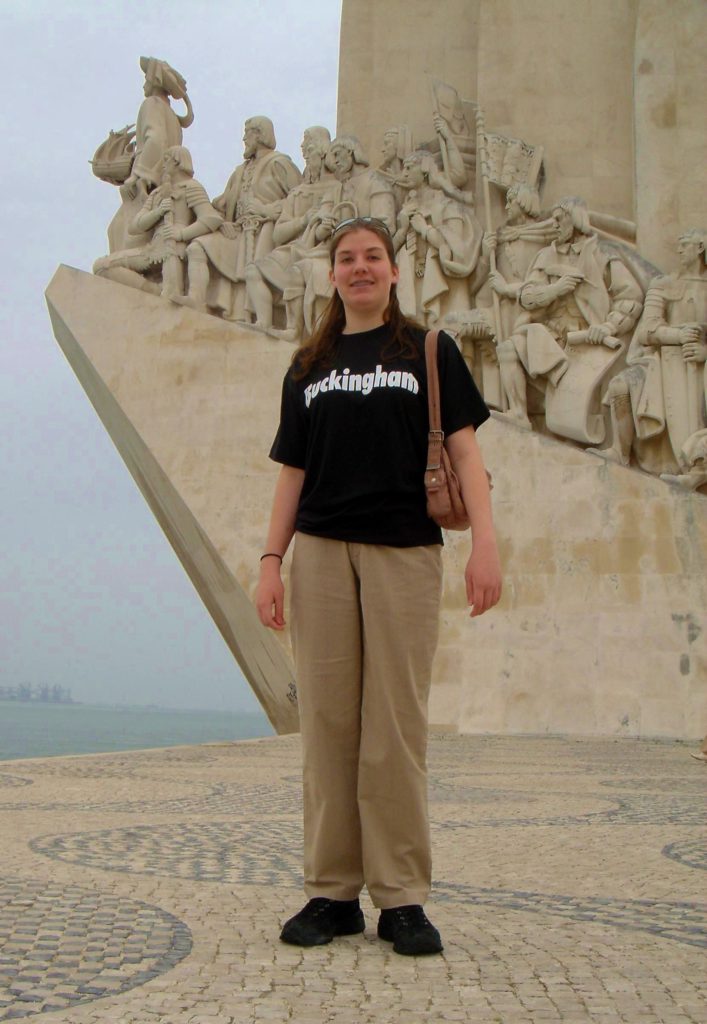
Our first stop was at the Monument to the Discoveries, an impressive obelisk erected in 1960 to commemorate the 500th anniversary of Henry the Navigator, who wasn’t a navigator, but did start a school for them. Constructed in the waning days of Portugal’s dictatorship, it looks like 1930’s propaganda art.
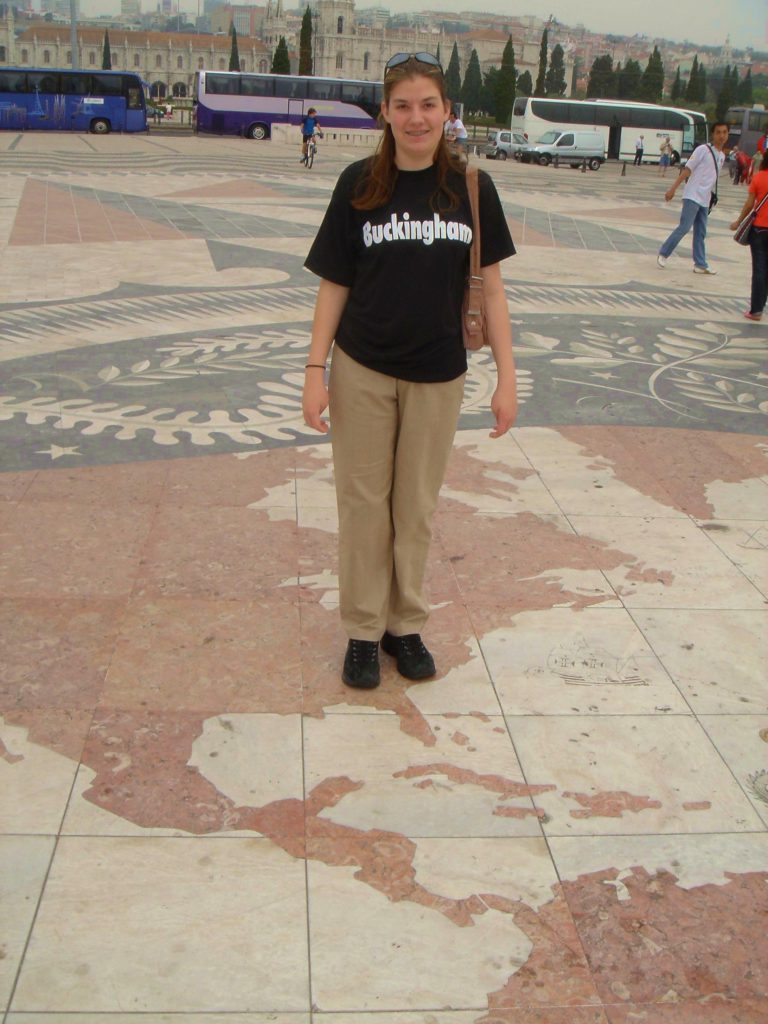
A mosaic map in front of the monument highlights Portugal’s discoveries around the world, of which there were many. The stop afforded Dani an opportunity to brief me on the history of trade, about which she knows a great deal.
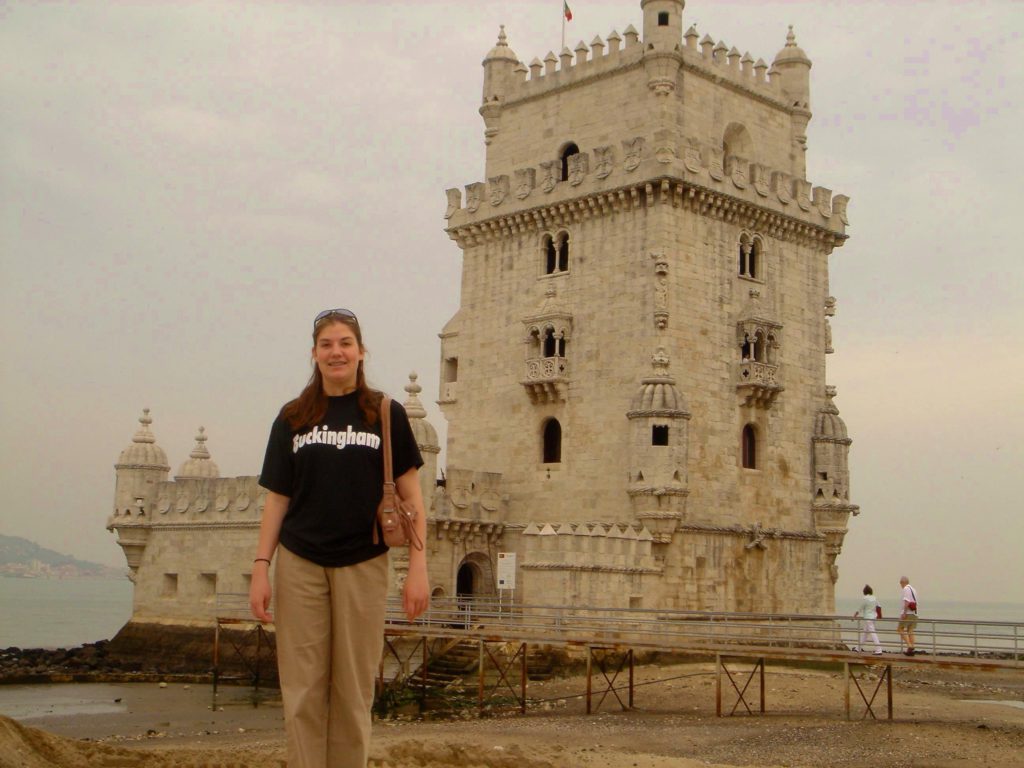
Next was the Torre de Belém, built in a mish-mosh of styles called Manueline. Constructed in the harbor as a sort of check-in point for visiting ships, it’s now high and dry due to the river’s sedimentation.
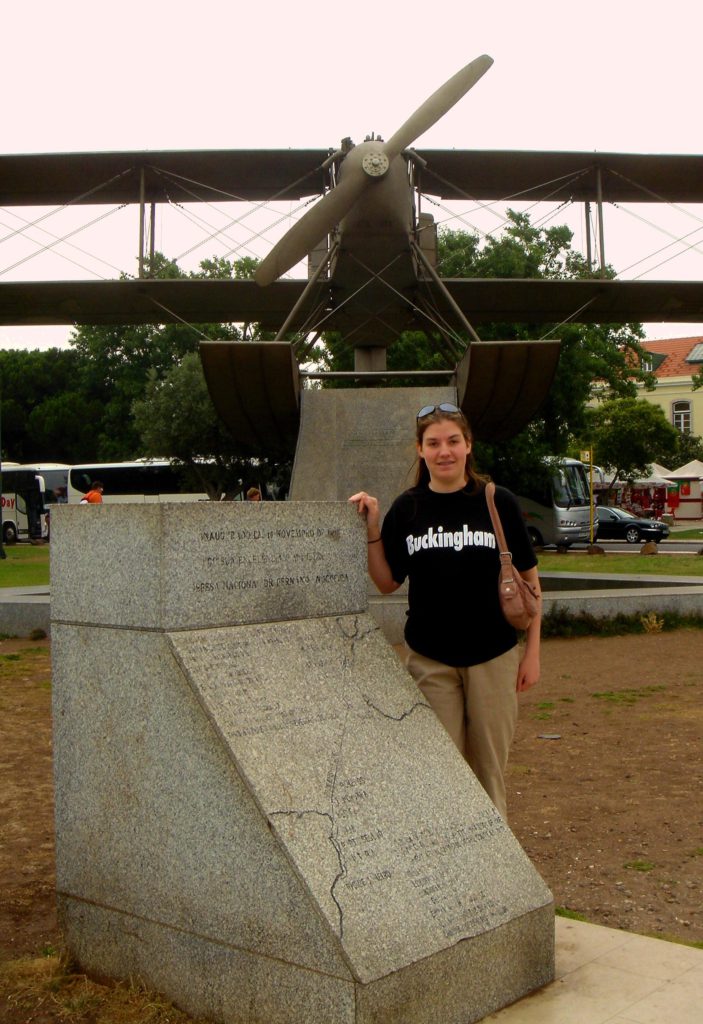
Nearby was a bronze of the first airplane to cross the Atlantic, from Africa to Brazil, in 1924. Don’t get too excited. It took them three months. I guess they should have used wood instead of bronze.
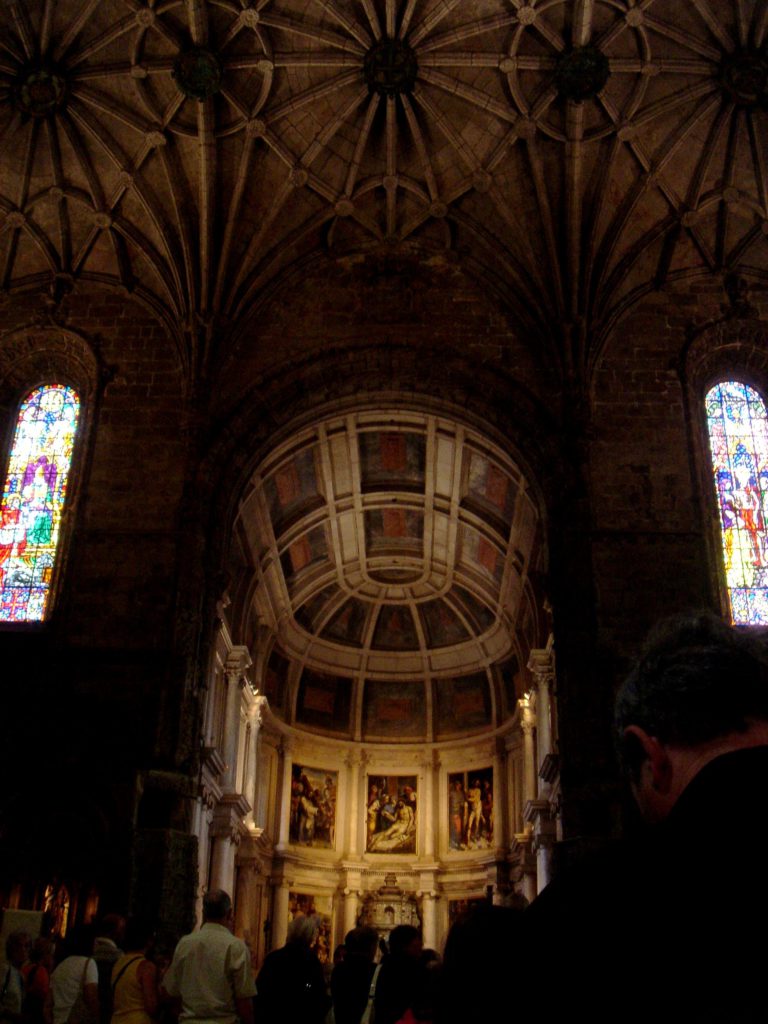
The Mosterio dos Jerónimos was both a monastery and a cathedral. Conceived by Dom Manual I in 1502, it was financed with the riches brought back by explorers such as Vasco de Gama, who is now entombed there. The influence of these explorations is further in evidence at the tombs of Manuel and other kings and queens, which are supported on the backs of marble elephants. Successive kings were less enthusiastic about the project, leaving bare the columns and niches originally intended for statuary.
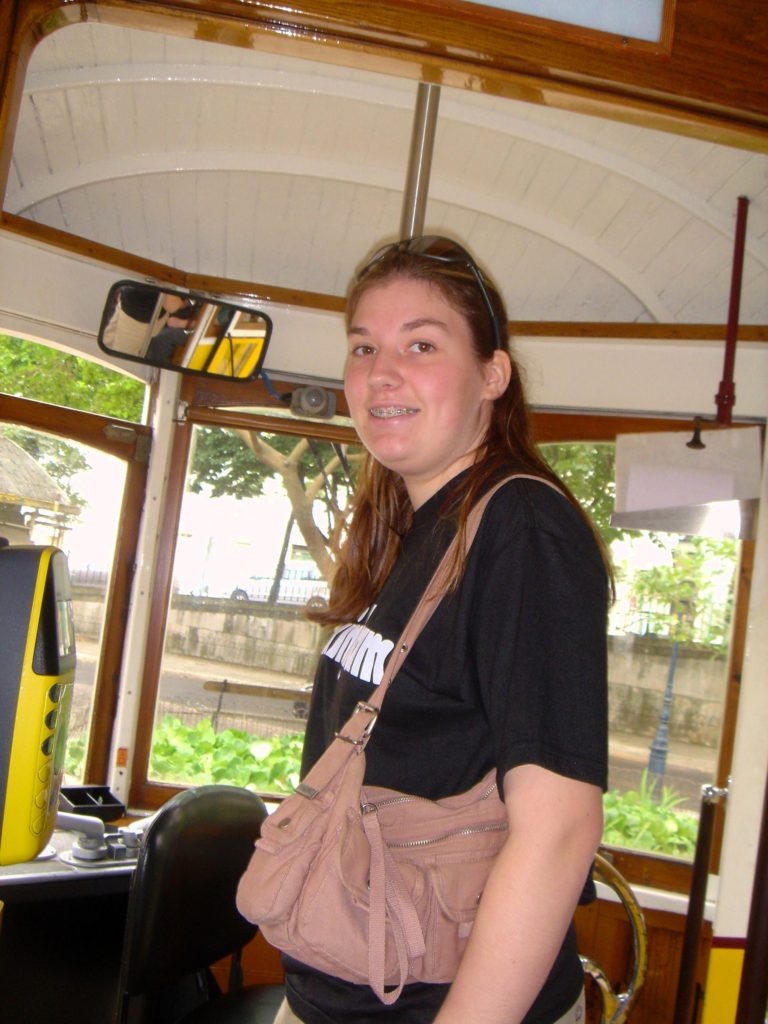
Departing the cathedral, we drove over jacaranda-lined streets to the new part of the city on the other side of the hills. This area — especially the Avenida de Liberdad, lined with four rows of trees and one row of Armani-type shops — is particularly nice. Continuing east we came to the oldest part of the city, a tangle of little streets on steep hills reminiscent of San Francisco. Here we boarded an electric tram for a tour of streets far too narrow for our tour bus.
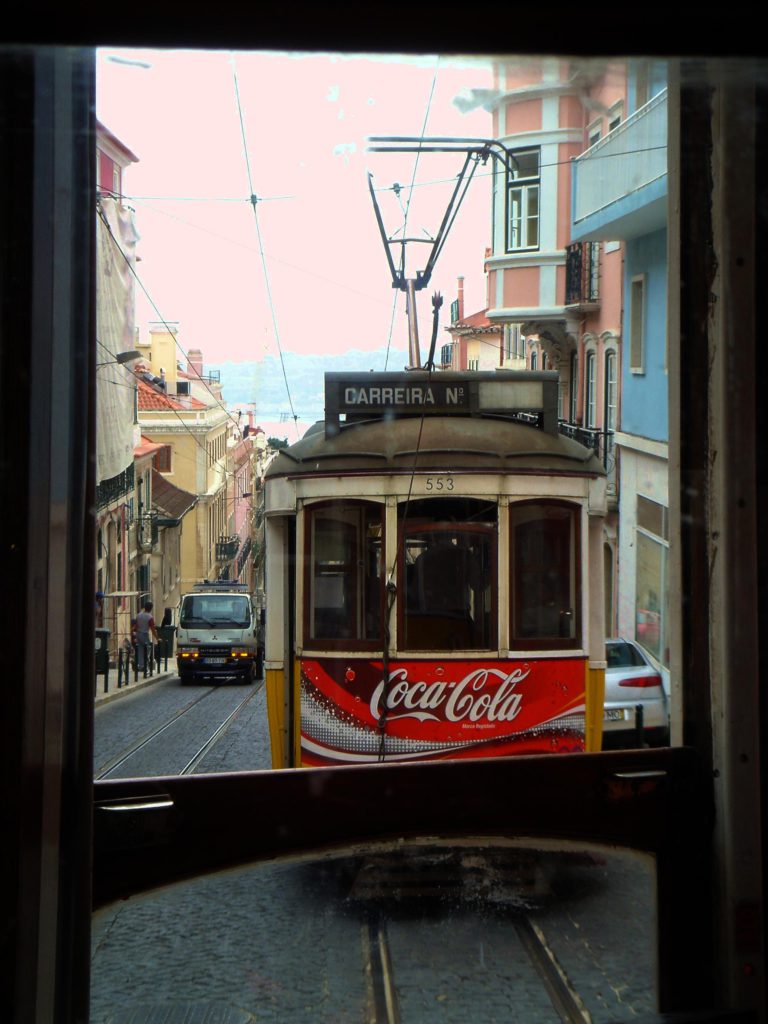
This area was really quaint (if somewhat ramshackle) and the ride, although much too long, was fun. Along the way we were served some tasty ruby port and delicious Pastelle de Belém, a crispy pastry filled with custard. Throughout our day in Lisbon things were eerily quiet, as yesterday was St. Anthony’s Day. As the patron saint of the city, this of course requires observance with massive consumption of alcohol and all-night revelry. In fact, we understand most residents don’t make it to work all week.
We arrived back onboard in time to sail (barely) under the harbor bridge, which looks very much like the golden gate bridge. This is not surprising, since it was built by the same contractor.
Out on the open seas be resumed our bounding course northward. I suppose it’s just the combination of a smaller ship and being at the very back, but the ride — even on very slight seas — might definitely be a problem for some passengers. Fortunately it doesn’t bother us.
Our dinner reservation was at Latitudes, the ship’s Asian-themed restaurant. It’s an attractive space, with only about fifteen tables, which were never all full. Food presentation was beautiful (as with all the food on the ship) and many of the items were excellent — particularly the lobster curry. There were a few too many fried items in the appetizer assortment, but it’s one of those restaurants where they serve you some of everything, so there were many choices. Service was perfect, as has been all service on this ship.
Wednesday, June 14, 2006
At Sea (with stops at Vigo and La Coruna)
This morning we sort of slept through a brief stop at Vigo, Spain. The only way I noticed was that my bed stopped swaying like a hammock, and the stillness woke me up.
The purpose of the stop at Vigo was to let off passengers wanting to make the pilgrimage to the alleged final resting place of St. James. In the 12th century, 11 million pilgrims did; but last year it was down to 19,000. Apparently these days it’s harder to find people who believe that, after being beheaded, his body magically floated along the river in a stone coffin filled with scallop shells. Or something like that.
A brief afternoon stop in La Coruna is planned, to pick up the survivors.
Today the ride has been slightly rockier than in the past, but then we learned from the navigator that there has been a 100 kilometer per hour wind and 30-36 foot swells all day. Given that, I’d have to say the ship is doing quite well. In fact, the passengers seem to be doing pretty well, too. I wouldn’t want to have to use a cane to get around this ship with the deck pitching ten feet.
Here are some interesting tonnage figures Linda sent me:
Regent Seven Seas Voyager – 46K
NCL Norwegian Dream – 50K
NCL Norway – 70K
NCL Pride of America – 81K
Coral Princess – 92K
Star Princess – 109K
Royal Carribean Explorer of the Seas – 138K
During the day we had a nice lunch in the main dining room (we sort of missed breakfast) and then did a lot of writing. In the afternoon we played trivia, and would have won if we’d known how many stripes on an Israeli flag, which ear you can hear better out of, or which part of the body is most often bit by insects. (Two, right, foot. )
After we rounded the north west tip of the Iberian peninsulas the seas calmed a bit, and the gray skies began to lighten as we docked at La Coruna, Spain. It looks like a fair sized, rather non-descript city.
When our pilgrims returned from Santiago de Compostela at 7pm we sailed for Santander .
Dinner in the main dining room seems to improve each night. There were some excellent selections this evening, accompanied by a white wine from Provence that was quite pleasant. The wine selections on the ship have been almost entirely sauvignon blanc and pinot noir, or their cousins. I think this is an attempt to match as many foods as possible, but Linda would be disappointed in the lack of buttery Chardonnays. Of course, they have an extensive list of high end wines that I have even looked at, since it would be a waste to order an expensive bottle when Dani only has a sip. Drinking age onboard, incidentally, is 18, although it’s 16 in most of the ports. But no one really cares here in Europe.
Thursday, June 15, 2006
Bilbao and Guggenheim Museum (Santander)
We docked at Santander (even accent on all three syllables) this morning. Santander is a non-descript city that hugs the coast of the Bay of Biscay. At 9am we joined one of six coaches headed for Bilbao, about an hour and a half north.
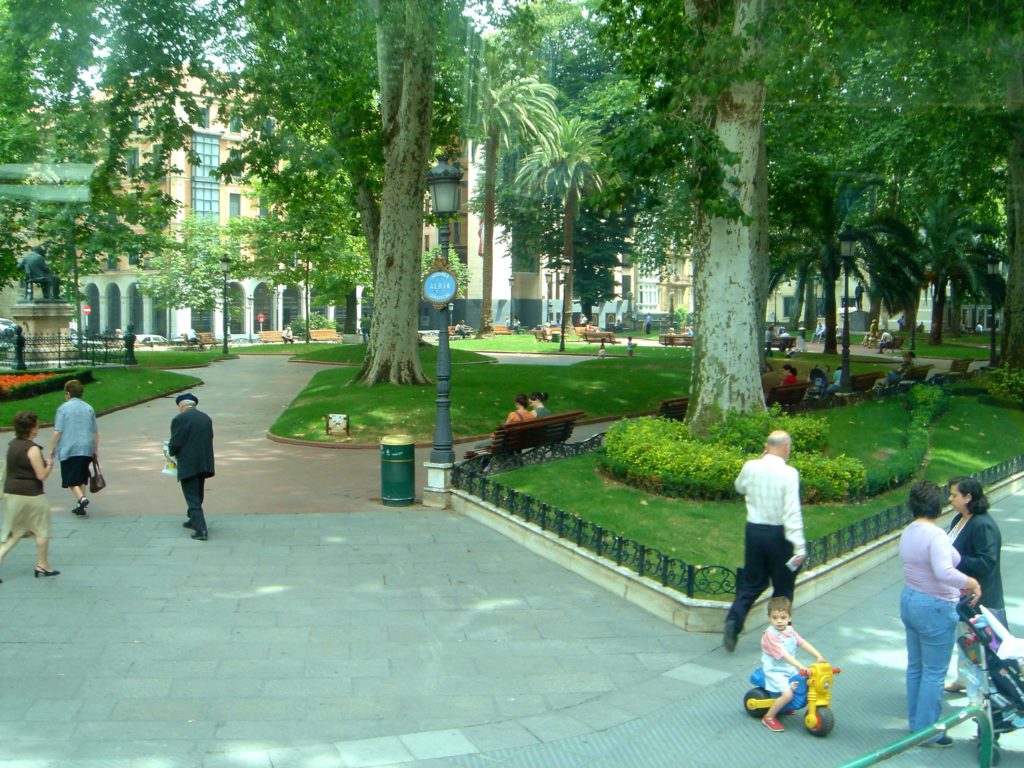
Bilbao is in the Basque region of Spain, which is a culture different than Spain or neighboring France. The main language is Basque, which looks really weird, with lot’s of X’s. The sign are all in Basque and Spanish.
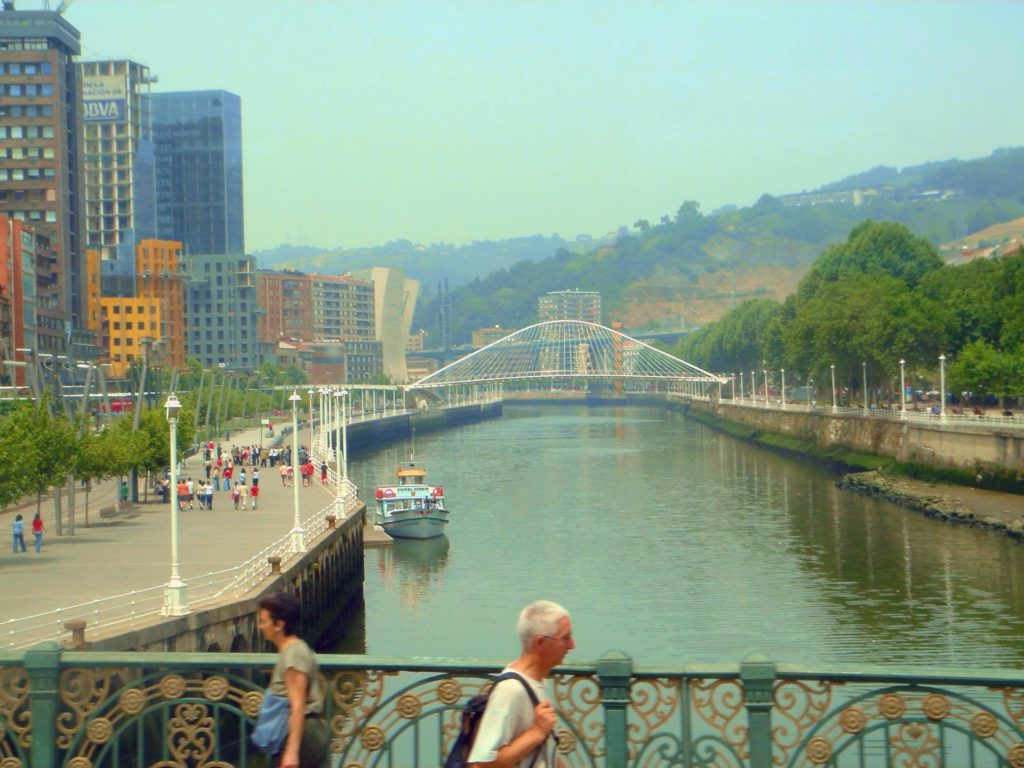
Bilbao is an absolutely beautiful city of tree-lined (and traffic-clogged) streets, beautiful parks, and daring architecture. It’s hard to believe just twenty years ago it was a depressed industrial port. Now the entire waterfront area has been turned into cutting-edge buildings. The whole city is a vital, walkable place, with inviting shops and restaurants, lots of foot traffic, and beautiful old buildings lining streets that radiate from dozens of lushly landscaped squares. There are construction cranes everywhere. Leading this renaissance of new architecture was the Guggenheim. It was designed by Frank Gehry, and opened in 1997 at a spot that used to be part of the industrial riverfront. It’s really a fantastic building, three stories inside, taller outside, with every surface covered in either limestone or titanium, and no flat surfaces or right angles anywhere. Much neater than it looks in a photo.
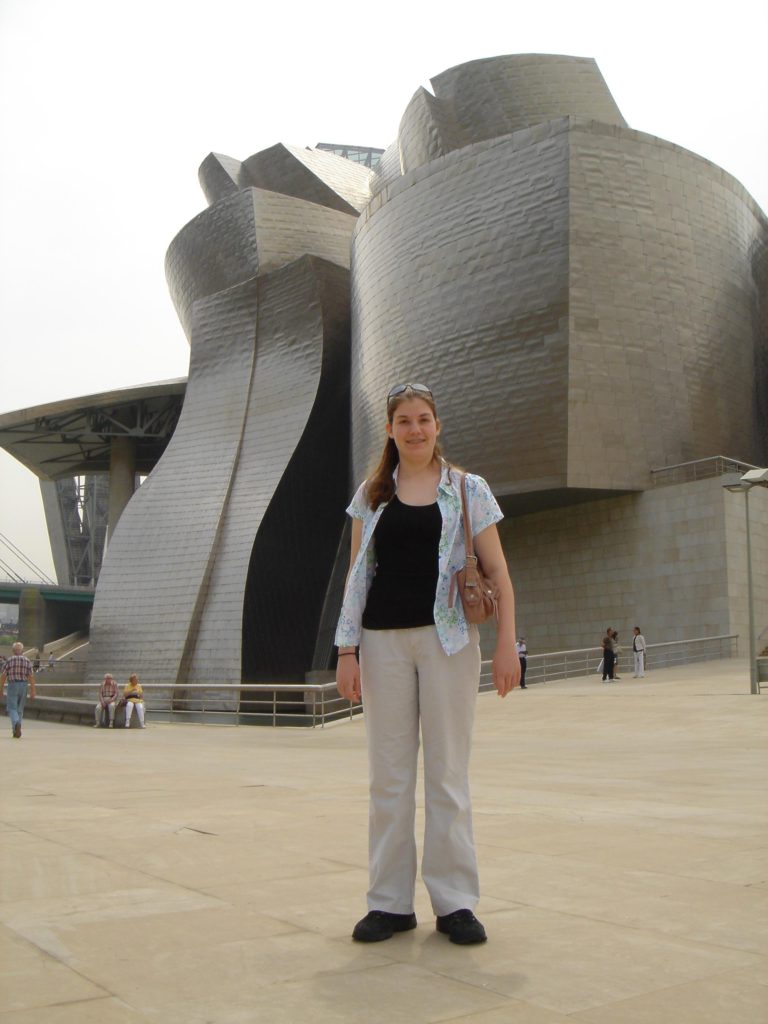
Our extraordinarily knowledgeable guide provided an architecture and art history tour of the museum for 18 of us. I was concerned this would bore Dani, but her World history classes brought new meaning to what we saw and heard.
Two of the permanent exhibits in the museum were particularly memorable. One was comprised of nine multi-story columns of scrolling LEDs, red on one side and blue on the other, that told a rather surrealistic story/poem in many languages. Sounds dumb, but it was quite effective. The other was a room larger than a football field, filled with twisting walls of rusty steel, fifteen feet high, two inches thick, and sometimes over 100 feet long. I’m glad I didn’t have to install them! These shapes formed spirals, twisting walkways, and concentric notched circles– all very clear when viewed from above, but a completely different experience as we wandered around inside them, a living part of the exhibit. Again, it sounds dumb, but it was neat.
The bulk of the museum is currently filled with art on loan from The Hermitage in St. Petersburg. In fact, I recognized several pieces from our visit there two years ago. Here it has been better arranged, and we were able to trace the history of Russian art and art collecting from the 12th through 20th centuries, in chronological order. It was fascinating to watch religious icons morph into romantic oil paintings, then impressionism, cubism, and op art. One small room by itself contained two Picassos, two Matisses and a Gaugin. Two and a half hours was only enough time to walk past everything; then we headed back to the ship, arriving about 3pm. Ravenous, we sat on the pool deck and had a grilled salmon burger (me) and hamburger (Dani).
The weather has been temperate but overcast, but it’s supposed to improve this evening.
A few hours after sailing we were out in the middle of the Bay of Biscay on the way to Bordeaux. The sea was almost glassy. A strange change from Wednesday.
Dinner in the dining room was excellent. The South Africa pinotage was an eclectic wine offering, but it seemed oxidized.
Friday, June 16, 2006
Bordeaux, France
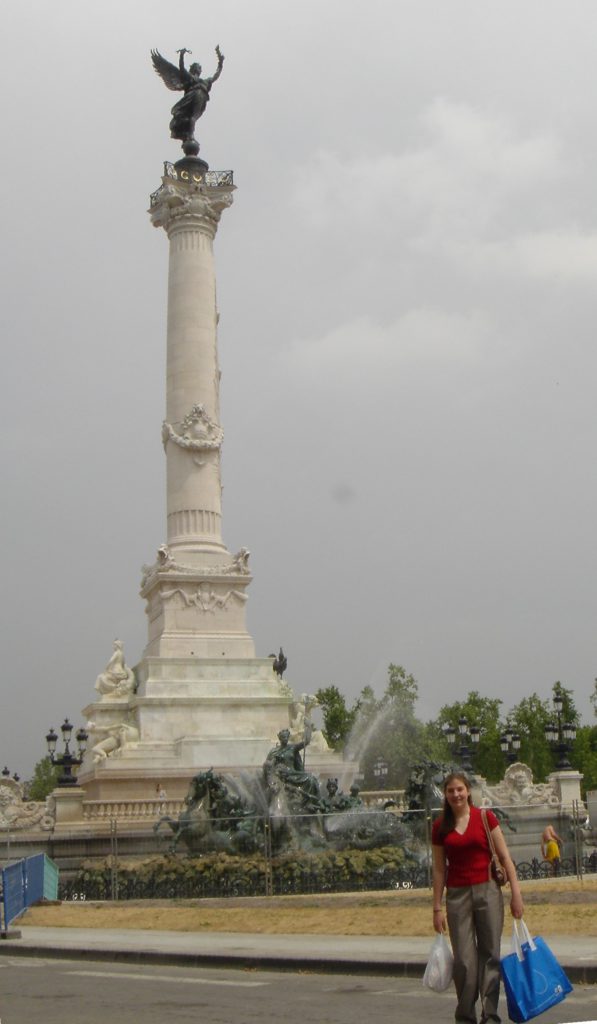
Today I found a way to use the $200 shipboard credit Vacations To Go gave us when we booked the cruise. The self-service launderettes on this ship are free but completely inadequate — I’ve seen seven people crammed into the room waiting for two washers. I did manage to get a load done a few days ago before everyone else started running out of clothes, but today, even though I was there at 7am, there were already people waiting. It would help if they were open 24 hours instead of 7am to 10pm. Anyway, we’ll just have the ship do our laundry and dry cleaning. It’s only slightly cheaper than buying new clothes, but hey, who wants to spend their vacation in a laundry room?
This morning we sailed up the Gironde River and then into the Garonne, traveling 100 kilometers to reach Bordeaux. I didn’t realize how far inland it is. The land is fairly flat, and the banks are lined with agricultural and industrial facilities, but when we reached Bordeaux it was a complete surprise. I was expecting Bordeaux to be a collection of villages and vineyards. Instead it is a beautiful city, a sort of miniature Paris. Best of all, the ship docks along the quay in the exact center of town. It is as if you’ve pulled up between the Louvre and Notre Dame! Everywhere there are 19th century facades, their wrought iron balconies and sloping roofs lined up just as in Paris. The streets are lined with shade trees, and brasseries spill out onto the sidewalks.
I watched as the ship extended its gangway from deck 4 and then puzzled over a crane truck that drove up and installed another gangway from deck 5 to the quay. This latter gangway was at about a 45 degree angle, and would have made a good water slide if it hadn’t ended on the concrete. What was that all about? Later in the day my question was answered when we learned that even though Bordeaux is 100 kilometers inland, the Garonne is still a tidal river, with a difference of 16 feet between low and high tides every six hours! By the time we returned to the ship in the afternoon, deck four was below the quay and the other gangway was nearly horizontal! In fact, the ship sailed both in and out near high tide, and with the current in each case.
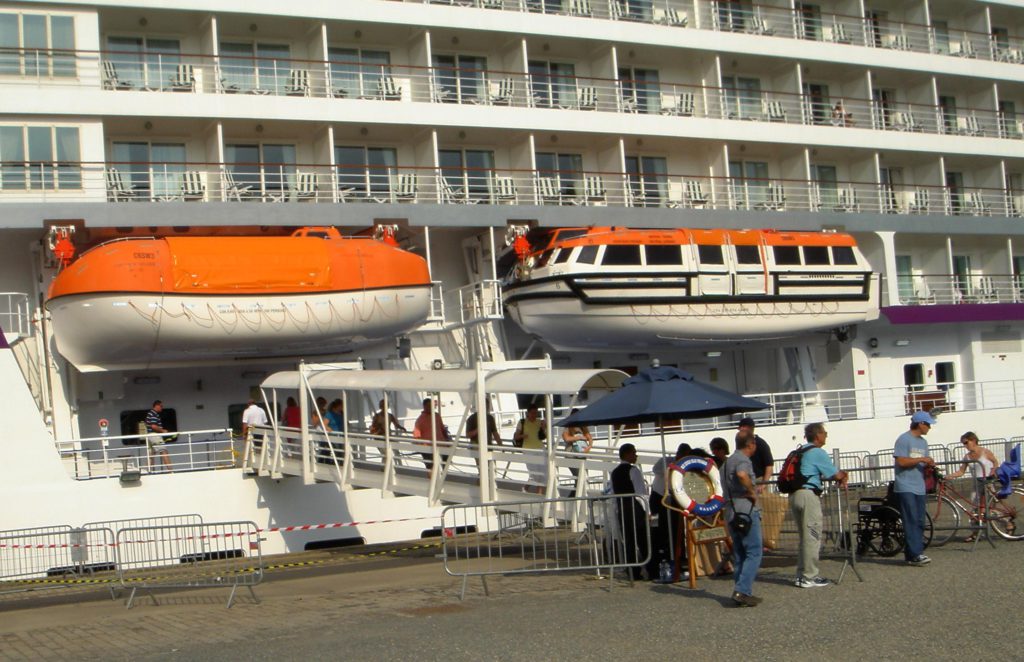
When I say the ship is in the center of town, I mean it. You can almost step off the gangway onto the sidewalk of the boulevard that runs along the river. The absence of security was either refreshing, amazing, alarming or simply French — I’m not sure which.
In the morning Dani and I ventured ashore and strolled the streets of Bordeaux, covering a lot of territory. We ended up at a circular building in the center of town called Grande Homme. On the top floor was a giant toy store, the middle floor was upscale shops (and a tobacconist where Dani stocked up on postcards), and the subterranean lower floor was a supermarket and food court. When I say food court, I don’t mean an American food court. Instead it was a collection of tables surrounded by the market’s bakery, fromagerie, charcuterie, plus prepared salads, Asian food, and so on. We purchased a loaf of bread, a pain au chocolate, and an epoisses (my favorite stinky cheese), then strolled back to the ship to construct our own bizarre lunch in the cabin. The bread was, of course, the best we’ve had since the last time we were in France, and amazingly, Dani discovered she likes epoisses. A home run!
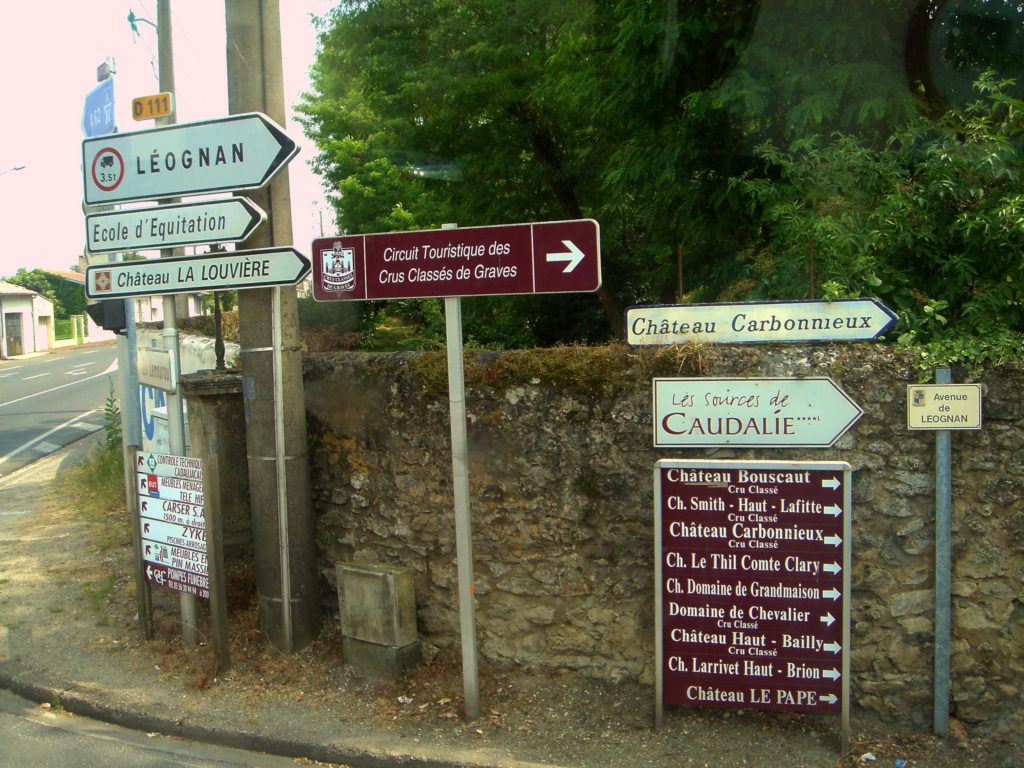
At 2 pm we met our tour group on the dock for a trip around the city and then an excursion to a local winery. I was surprised to see how much of the city we’d discovered on our own, although the driving tour did reveal a really neat pedestrian street, Rue Sainta Catherine, filled with shops and bistros that runs 2 kilometers through town. We also passed the WWII German sub base. This concrete bunker is divided into 11 bays, and its ceiling is 25 feet thick, making it impossible to get rid of.
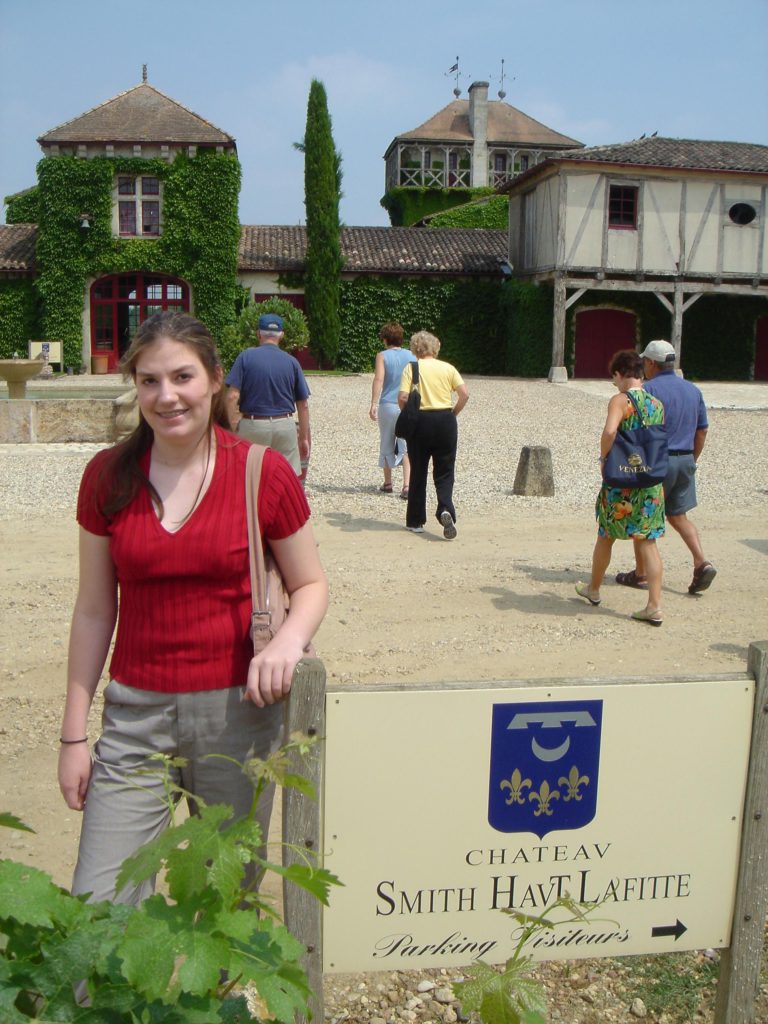
Then we headed out of the city center to the selected winery, which turned out to be Chateau Smith Haut Lafite, a Graves grand cru that has been totally renovated since changing ownership in 1990. In a few kilometers we were in wine country, and is wasn’t more than twenty minutes before we arrived at the chateau, passing Chateau Bouscat and several other properties I didn’t recognize on the way. The area is fairly similar to Santa Ynez, but not quite as arid.
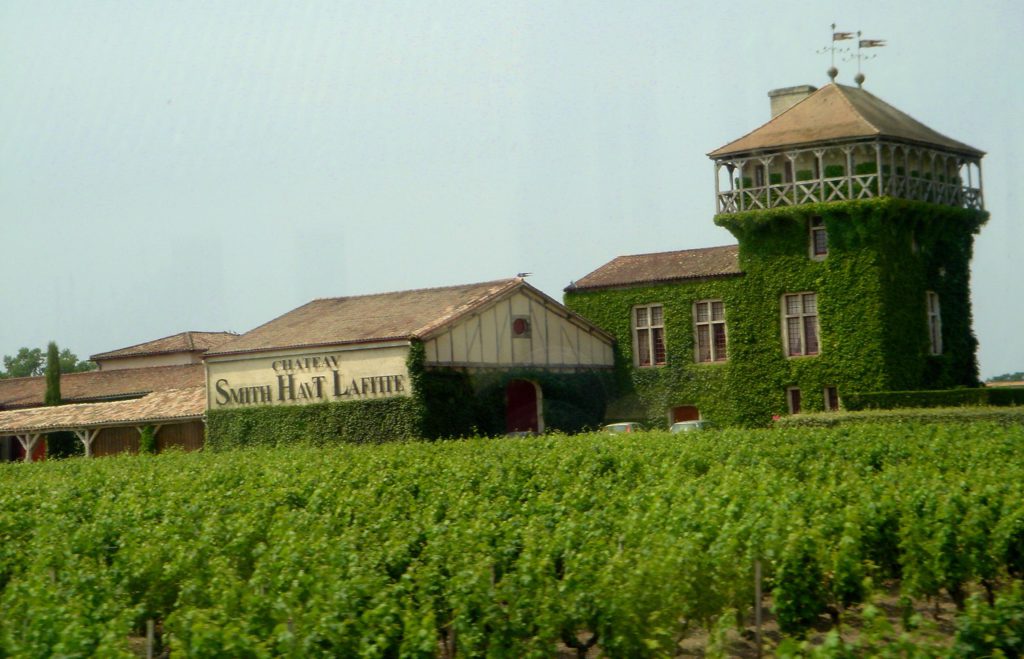
The tour, conducted by the winemaker, was the best I’ve experienced. The winery has beautiful new pneumatic presses, stem separator conveyors where twenty people hand select berries, and extensive cellars. They also make half of the approximately 800 French oak barrels they need each year. Every detail of the white and red vinification process was described. Here are just a few things I remember:
White: 90% sauvignon blanc, 5% semillon, 5% grey sauvignon. Fermented in 50% new oak and lees stirred for 12 months. Sold upon bottling.
Red: 55% merlot, the rest cabernet sauvignon and cabernet franc with sometimes a trace of petite verdot. Fermented in open topped stainless tanks for seven weeks, pumped over three times a week. Aged 18 months in 80% new oak. Sold upon bottling.
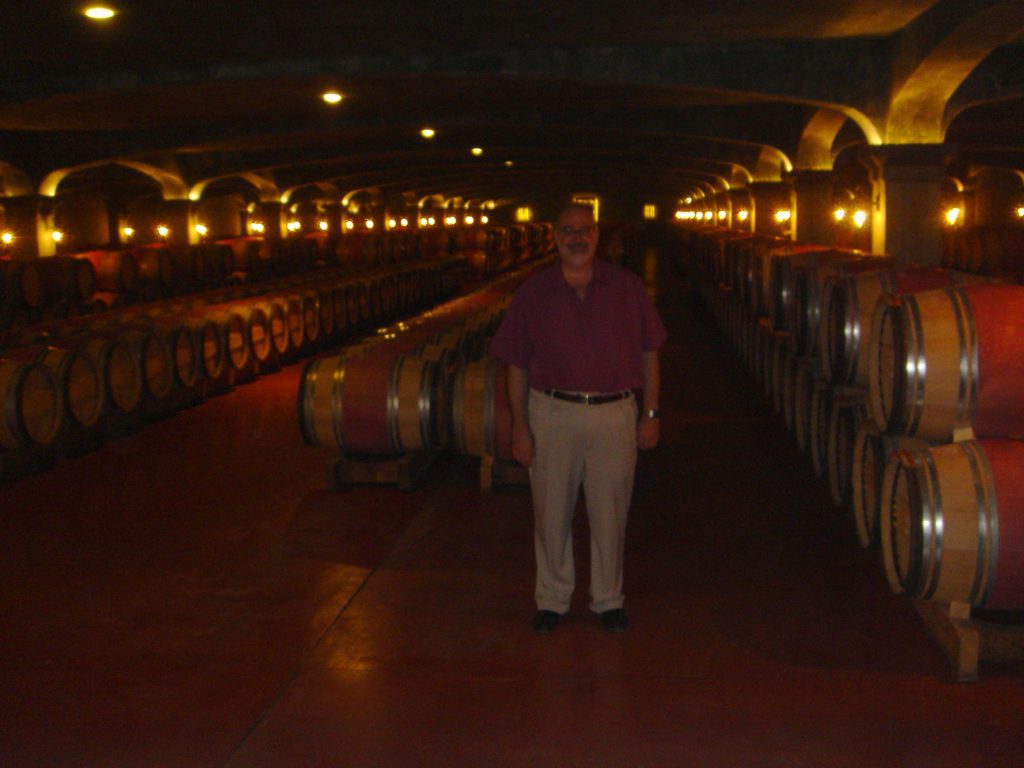
After the tour of the vinification area we descended into the (chilly) main cellar for a tasting of the 2004 white (peaches, grapefruit and black pepper, very balanced, no malolactic fermentation 92/100) and 2002 red (very smokey, blackberries, complex finish 93/100). Wine was available in the small boutique, and the winemaker himself processed the transactions. But there was no pressure to buy, and few people did (including me, although I eyed a double magnum of 1982 at 200 euros) as it was too hard to transport. I assume the winery was well-compensated for this terrific tour, though. (By the way, in addition to the winery, there is a beautiful spa resort on the property. )
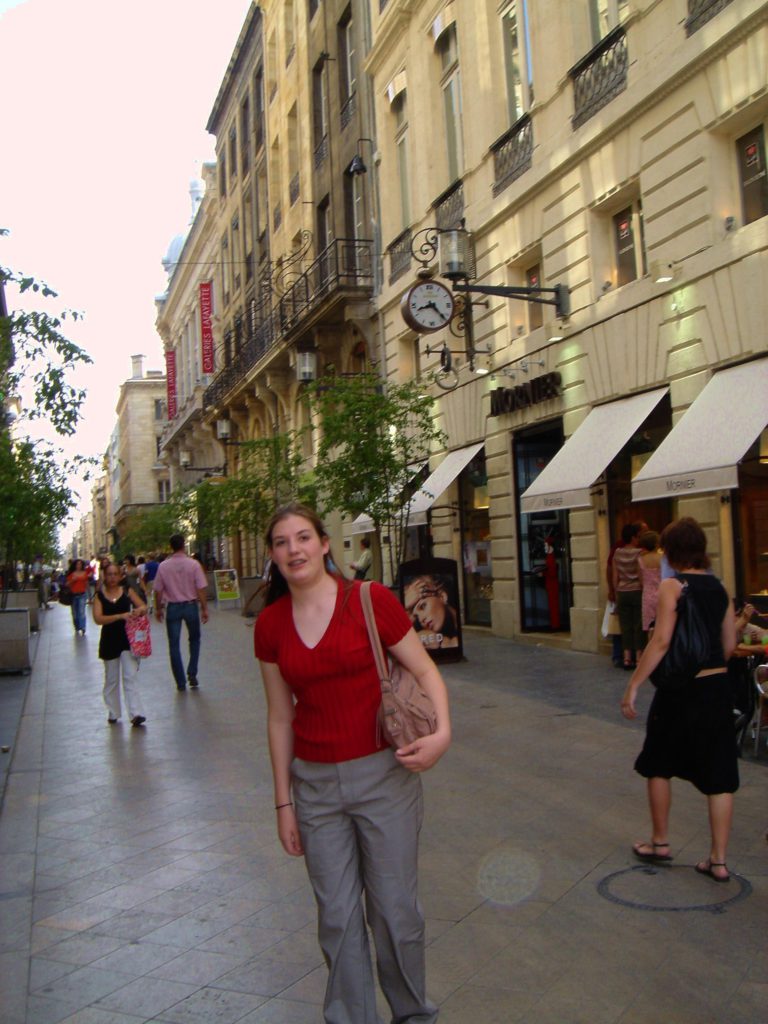
Even in Friday afternoon traffic we were back at the ship in half an hour. Dani and I strolled through the city, trying to keep out of what had turned into a hot late afternoon sun, to the Rue Sainta Catherine, which was nice and shady. We looked for an open bistro and browsed the shops. No luck on the bistro. There were lots of great menus, but no one serves food until 8 pm, and we were to sail at 9 pm. At fnac (think trendy Best Buy) she bought some manga in French and then we headed back to the ship.
We had an excellent dinner in the main dining room. High praise in the face of the on-shore competition in France! My opinion of this ship’s food is going up. I think the trick is to avoid the guest chef’s menus. As always, service was Perfect with a capital ‘P’.
Wine selections were an oxidized Woodbridge Chardonnay (first chardonnay of the cruise) and a weird Zinfandel that still had one or two percent residual sugar. It grew on me, though, as it went really well with the little pieces of braised shortribs under the seared tuna appetizer. Who on earth came up with the idea to combine those two things?! It was excellent, though.
This morning’s 48-hour dry cleaning submission was already hanging in our cabin when we returned.
Saturday, June 17, 2006
At Sea
It’s a long way around the part of France that sticks out into the Atlantic. We’ll spend today sailing up the coast, and then turn the corner into the English Channel this evening. Seas are smooth.
So smooth, in fact, that this afternoon they opened the bridge to guests from 1 pm to 5 pm. This is an opportunity you never have on the huge Caribbean ships, but Voyager’s bridge is no less complicated. The ship’s propulsion is by azipods on the hull, which can be swiveled 360 degrees. Even with these, we learned that yesterday in the Garonne they used the anchor to complete their 180 degree turn without danger of being washed by the tide into the 17-section stone bridge that marks the end of the navigable channel.
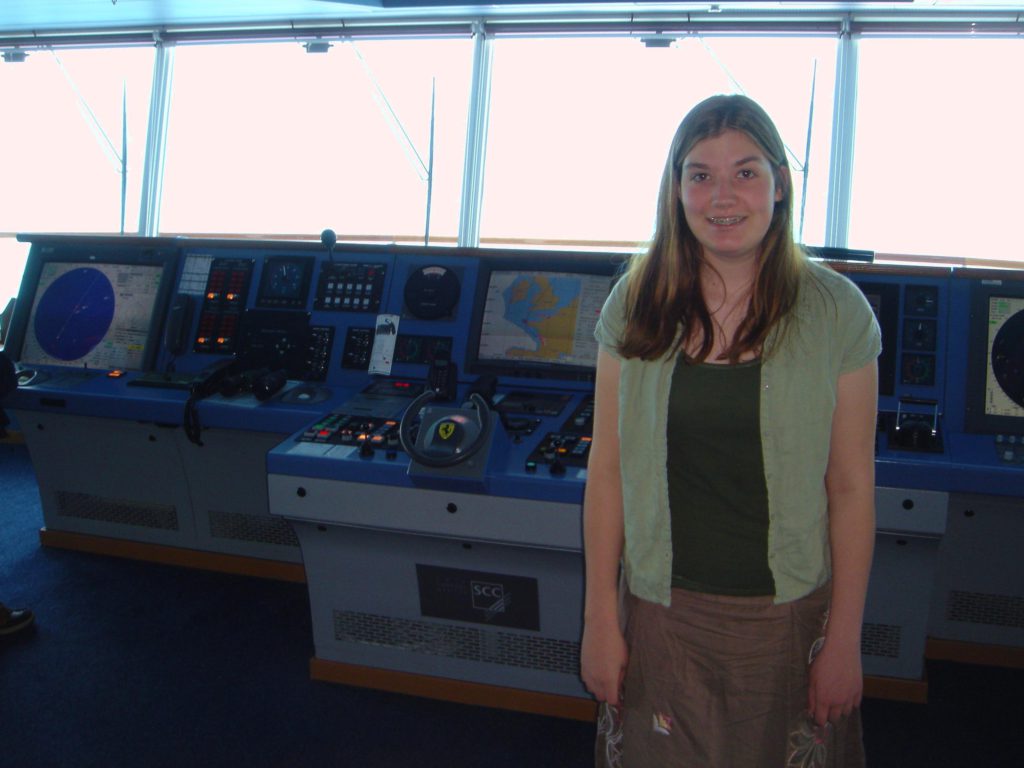
The ship was running on autopilot when we visited today, as it usually does, except when in harbor. A tiny wheel, smaller than what you’d find on a go-cart, is the only obvious control. We visited just as the ship was completing its turn into the English channel, a turn that occurred over a distance of eight miles, and required only a one degree adjustment of the azipods.
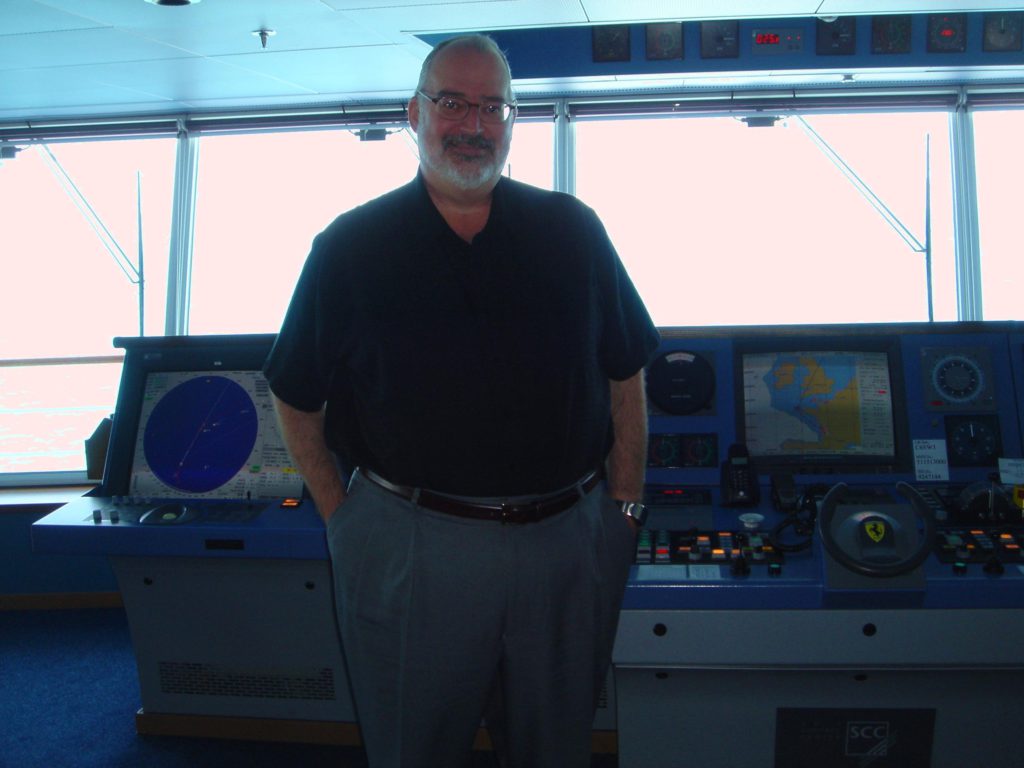
Oh, and in case you’re wondering, at top speed the coasting distance is half a mile if they don’t reverse the pods.
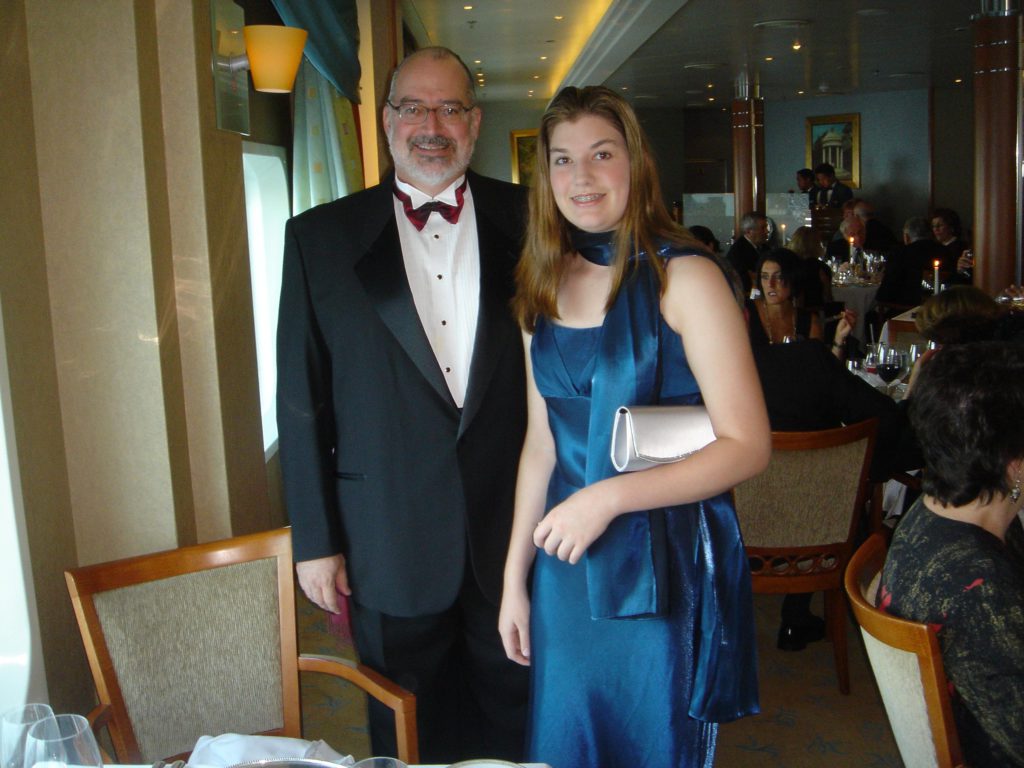
Dani looked lovely in her new blue gown for our final formal dinner aboard the ship. We had a lovely table and delicious meal. They brough out the good wines, tonight: Pouilly Fuisse by Lois Jadot, and an excellent Chianti Classico by, I think, Binti.
After dinner we caught the last half hour of the show, a Broadway review by singer Amy Baker, and bought a couple of her CDs. Amy has been mingling with the passengers all week, and has quite a following.
Sunday, June 18, 2006
Honfleur, France
The approach to Honfleur took us up the Seine a few kilometers, past the industrial port of Le Havre. We were docked by 8 am. Although only 64 degrees in the morning, the day promised to be sunny and hot.
Dani surprised me with some Father’s Day gifts this morning, and a card from Linda, who sent me an email greeting, too. Originally we had scheduled a hike and visit to a goat farm today, but there weren’t enough others interested, so our tour was cancelled. We decided to explore the village of Honfleur on our own, rather than make the trek to see the Bayeau Tapestry.
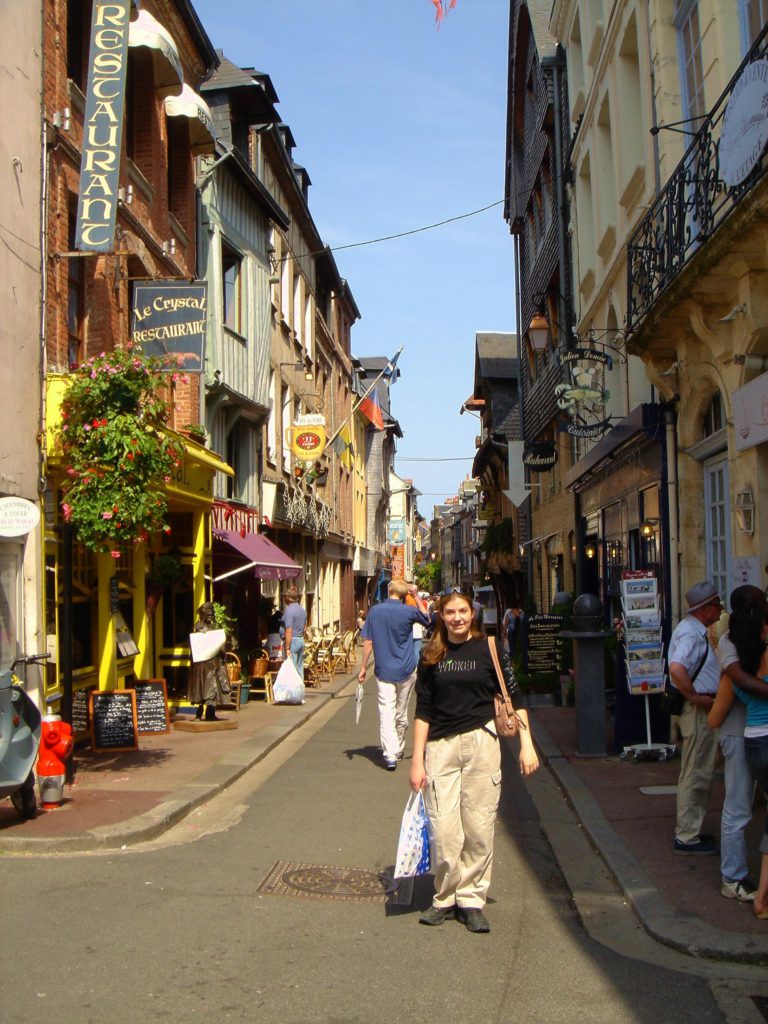
What a great plan that turned out to be! Honfleur is a captivating small town just a few minute shuttle ride from the dock. At first it looks too cute to be anything but a tourist trap, but just a block from the waterfront the streets are filled with the “real” France: boulangeries, charcuteries, and wine shops. The local residents come out to walk their dogs and dally over lunch in the hundreds of sidewalk cafes. Heaven.
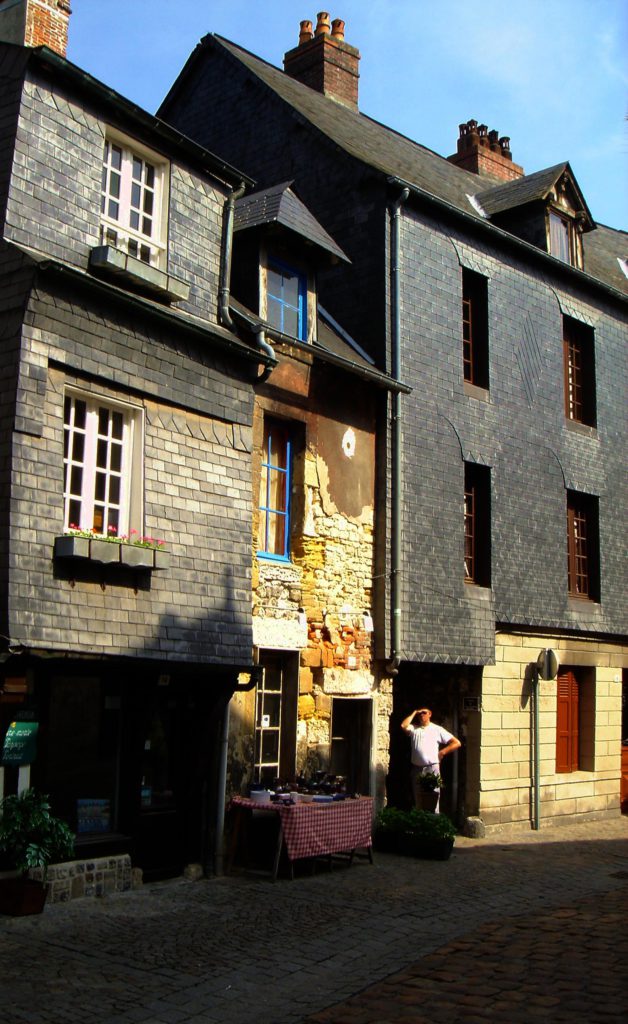
As in Bordeaux, it was great to blend into the crowd of locals — plus the weekend visitors from Paris — rather than be part of a storm surge of American tourists. That’s probably the biggest advantage of a smaller ship visiting smaller ports.
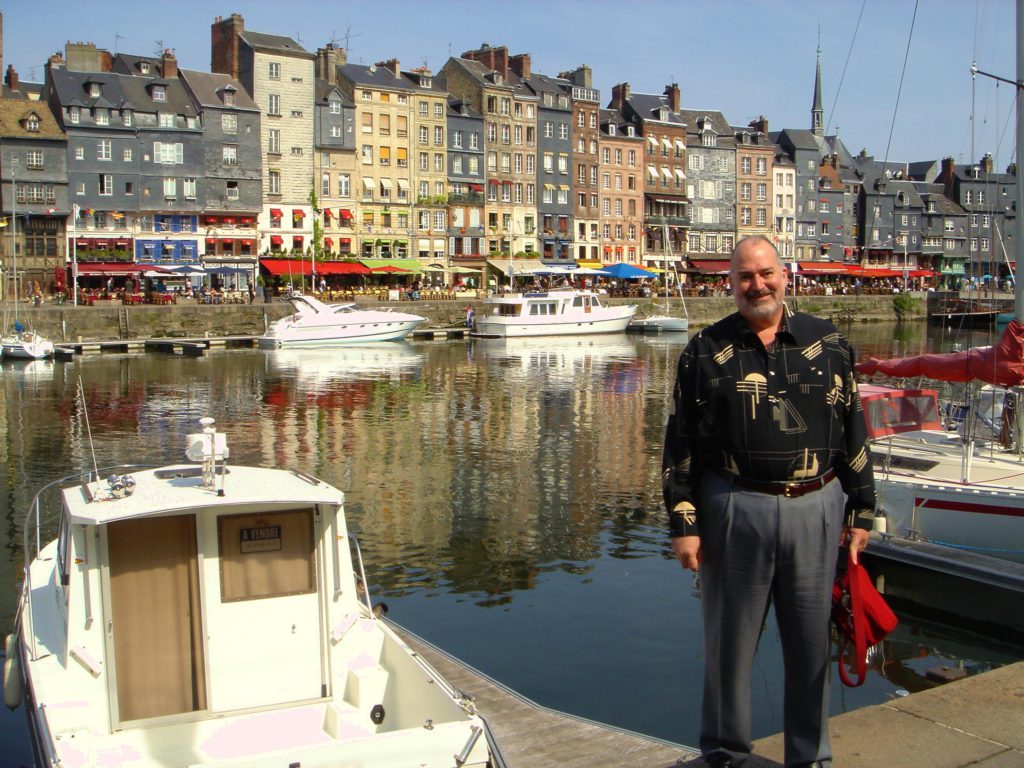
Dani spent the morning buying a few gifts for friends and more postcards — 37 sent, so far — as we strolled through the backstreets. Most of the tourist shops sell paintings by local artists, gourmet foods, cooking supplies, and souvenirs. The church here is wood, and was built in the 14th century. It looks faintly viking.
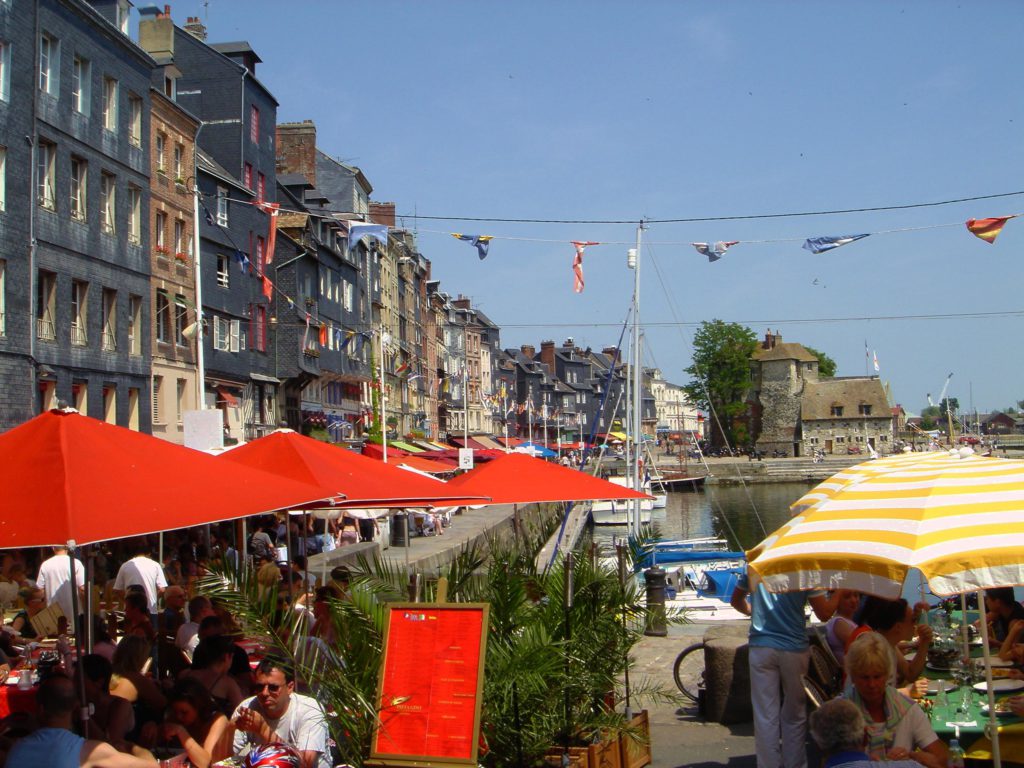
At lunch time we pretty much at random selected a sidewalk cafe overlooking the harbor and had a wonderful meal, of salad (lettuce, endive, sun dried tomatoes, and lots of other great stuff) and galettes. A galette is like a crepe, but made of buckwheat and browned with the ingredients in it. Dani had ham and cheese, and I had seafood. On top of mine were the most incredibly delicious baby mussels, a local specialty. Amazingly wonderful food. We dawdled over lunch, enjoying our favorite water, Badoit (two liters! Hey it was hot. ) After lunch we continued browsing, and made it four blocks before we had to stop for chocolate crepes. Yum. Then it was time to head back to the ship and pack. Sigh.
What a great place Honfleur is!
Leaving the harbor, we had a great view of the Pont de La Normandy, a two kilometer long suspension bridge completed in 1995. We also passed the Normandy beaches where the D-Day invasion occurred, which where filled with sunbathers on this beautiful, sunny day. Unfortunately we were too far away to determine the dress code.
We played tea time trivia a couple of times during the cruise, and due to our terrific skill (and considerable leniency in the interpretation of the rules) we won five cruise tokens. So this evening Dani visited the table on the shopping promenade and redeemed them for a sun visor and book mark.
Packing was easy, since we haven’t really bought anything other than a few tiny souvenirs. In fact, as advertised, we’ve spent almost nothing on this cruise. Our final bill included little more than the shore excursions and Internet time. Even the laundry charges were minimal.
The farewell dinner in the Compass Rose was excellent, with prime rib and Caesar salad, and accompanied by Caymus Conundrum and a good Chilean merlot.
Monday, June 19, 2006
London
Rubens at the Palace
Avenue Q at the Noel Coward Theatre
The Regent Seven Seas Voyager offers normal service on the morning of debarkation, so we had room service breakfast before debarkation. Getting off the ship was easy. We just waiting for our color to be called. It was star salmon. I had no idea star was even a color.
We stepped onto the coach and were on our way for the logarithmic drive to London. I say “logarithmic” because we approached Victoria Station asymptotically, seeming to go slower and slower the closer we got.
Ah, London, city of traffic, bad manners and inedible food. How you draw us back, again and again. And it’s nice to see how the Londoners have embraced the return of the traditional red phone booths. It’s solved the serious problem of what to do with all their trash. They should simply rename them “trash booths. ” Everyone has a cell phone fastened to their ear, anyway, so it make perfect sense. And you can tell when they start to get full, because you can monitor the trash level through the little windows.
It was only a few blocks from Victoria Station to our hotel, Rubens at the Palace, but we were heavily laden, and it was nice to get rid of the bags at the front door. The hotel is called “at the Palace” because it is right across the street from the slave entrance to Buckingham Palace. It’s a fairly nice hotel — for London — with fairly large rooms — for London — and is fairly quiet — for London.
After unpacking we walked down Buckingham Palace Way, looking for some edible food. Then we walked through St. James Park, looking for some edible food. Then we walked through Green Park, looking for some edible food. Then we walked down Piccadilly, looking for some edible food. We went in to Fortnum & Mason’s, a gourmet store. They also have a restaurant, but instead of selling the items they have out front, for some reason they’ve focused on boiled lamb, calf’s liver, and other, even less appetizing items.
Near Piccadilly Circus (it’s not really a circus, you know, just a semi-circle) we found a fairly dressy place called Bentley’s. It was full of business people and we decided to spend an hour with them, looking out of place. The food was surprisingly good, and they had the best mushy peas we’ve had so far this trip. The luncheon entertainment was provided by the woman next to us, who was trying to sell a Frenchman a house. Or lease him a flat. Or sell his current flat. She was certain she could do all these things in two months or less, but I wasn’t convinced.
I’ve been feeling like I’m flirting with a cold, so I started sucking zinc last night, and have continued today. Now I feel like I’m flirting with a cold and have zinc poisoning. Perhaps that accounts for the acerbic wit.
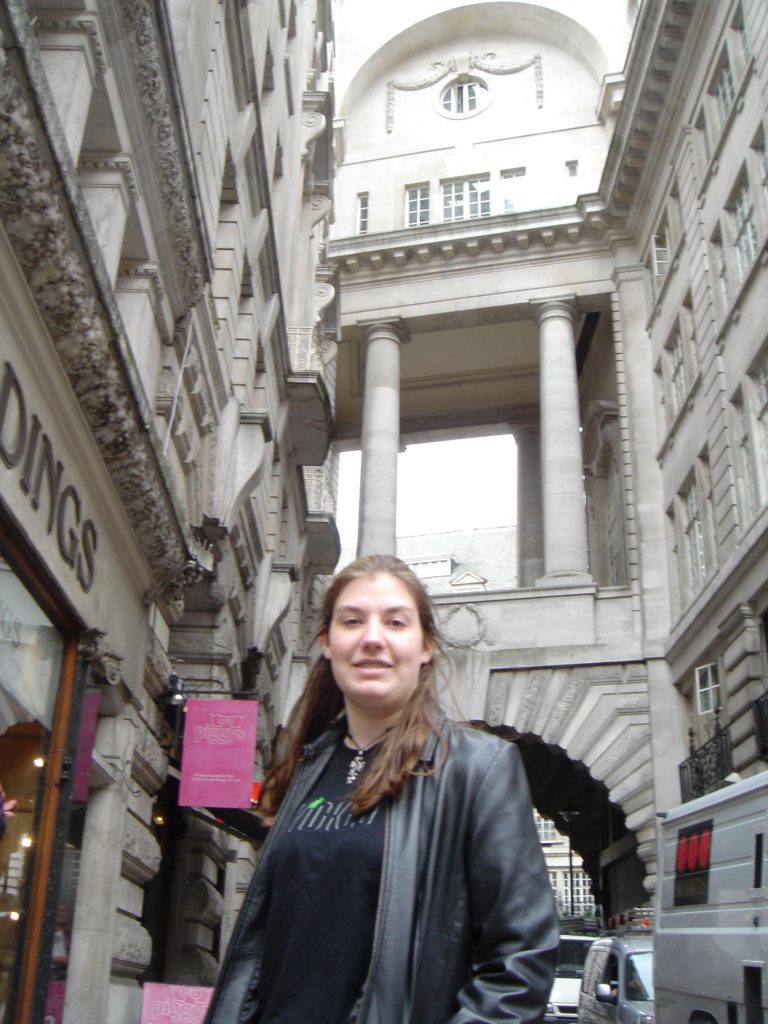
After lunch we found Dani a bargain leather jacket, because she forgot to bring anything warm and it’s going to be down in the 50’s tonight.
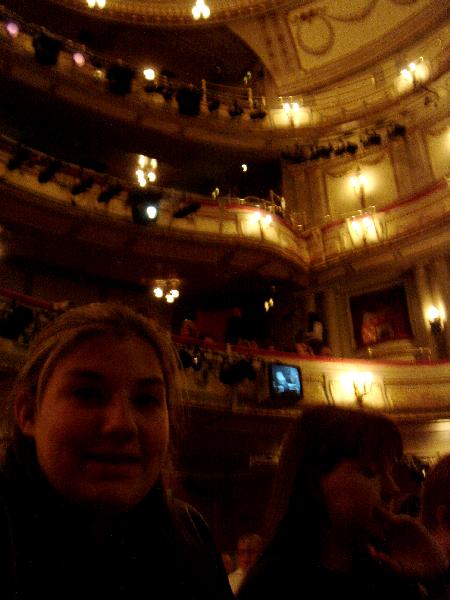
Then we walked back to the hotel for a little rest before the show. At 6:30pm we walked to the Hyde Park underground station and took it to Leicester Square. The Noel Coward theater has just reopened after refurbishment, and Avenue Q is still in previews. There was no sign of that in the show, though, which was very polished. It’s a sort of Muppets on steroids musical, with most of the performers carrying a Muppet and acting its part. The show doesn’t seem to have made any concessions for the UK audience, and is still set in Brooklyn. The voices and performances were great, and the set, a miniature city block, does all kinds of tricks. The audience was tremendously enthusiastic. Afterwards most of the restaurants in the West End seemed to be winding down, so we took the tube back and ordered room service before hitting the sack after our busy day.
Tuesday, June 20, 2006
London
Lunch at Gordon Ramsay at Claridge’s
Coriolanus at Shakespeare’s Globe Theatre
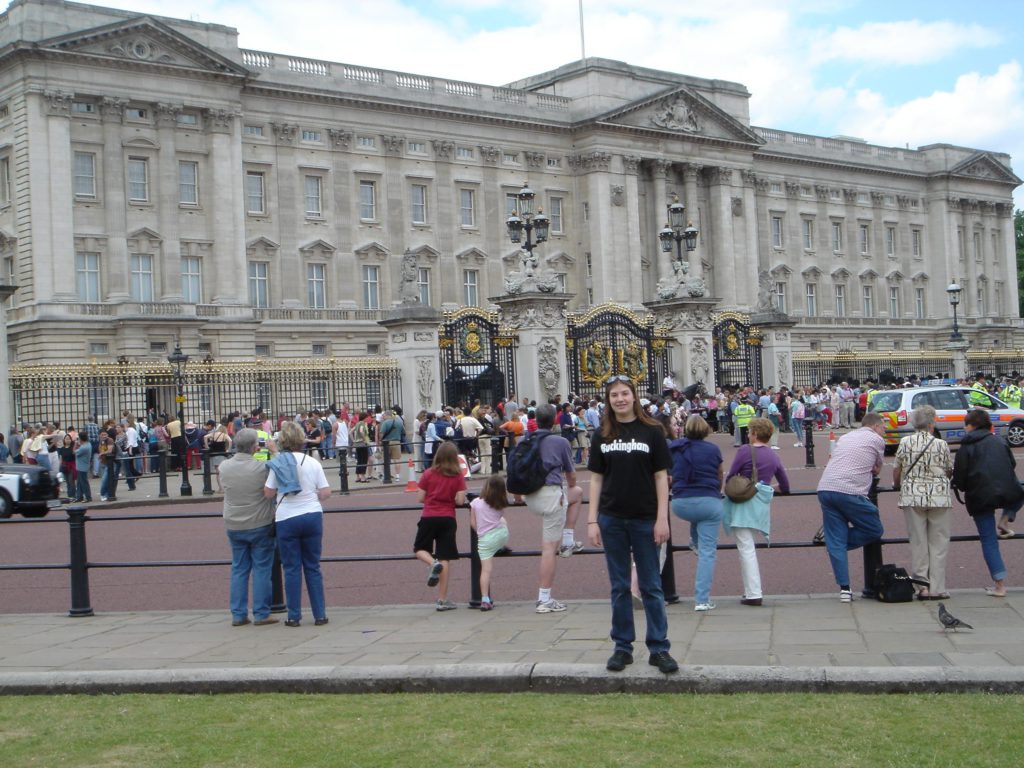
We slept late since we hadn’t gotten to bed until 1am. Then Dani wanted to have her picture taken in front of Buckingham Palace wearing her Buckingham T-Shirt from her performance in Richard III. We stopped at a place called Pronto Manger (not to be confused with the sandwich shop Pret a Manger, of which there is one in every block of London) and purchased a croissant-shaped object we managed to choke down on the way to the palace. It was very crowded in front of the palace because it turned out they were changing the guard. (Why these guys aren’t old enough to change themselves, I don’t know. ) There was a marching band in the palace courtyard which was, oddly enough, playing the theme from Star Trek.
After our photo op we headed back to the hotel to change, then down to Victoria Station to take the underground to Oxford Circus. We strolled around looking in the shop windows for a while ($$$) and then relaxed in a quiet corner of the mezzanine at Claridge’s Hotel until our 2:30pm reservation at Gordon Ramsay’s.
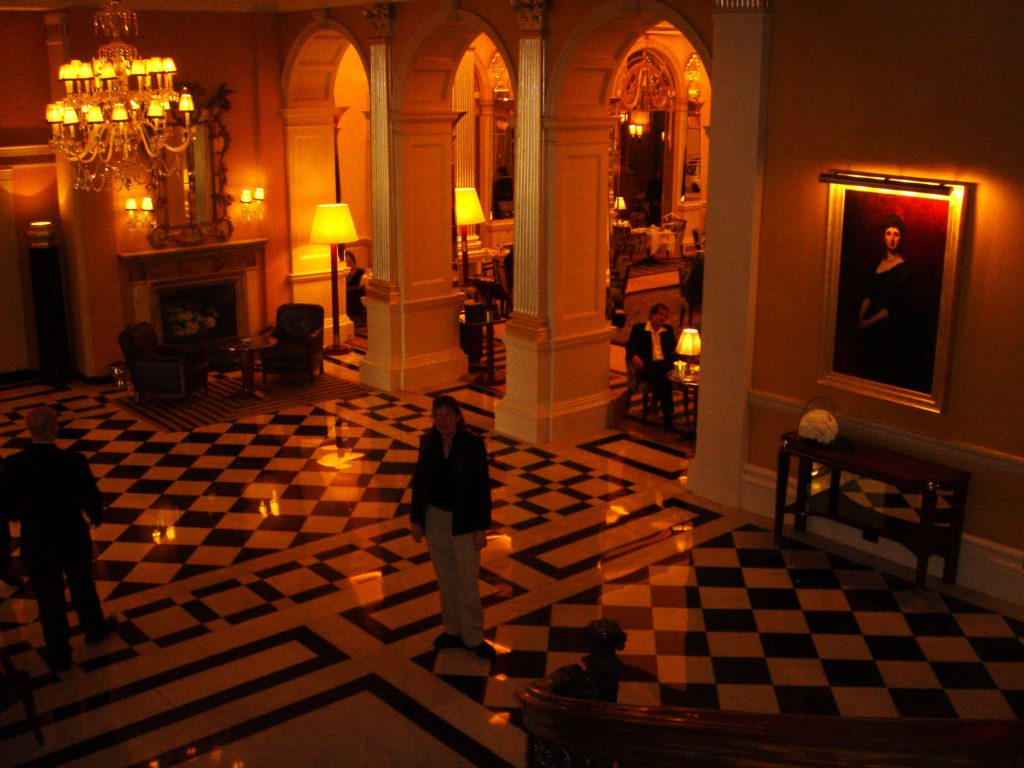
Our six-course lunch consisted of:
- Chilled Charentais melon soup, crab vinaigrette
- Ballottine of foie gras marinated in Beaumes de Venise, pickled mushrooms, toasted brioche
- Roasted sea scallop, broccoli purée, poached quail egg, Port reduction
- Steve: Steamed line caught sea bass, crushed Jersey royals, braised radish, asparagus velouté
- Dani: Best end of new season Oxfordshire lamb with confit shoulder, spiced aubergin, asparagus, tarragon jus
- Steve: French and English cheeses
- Dani: Banana and coconut bavarois, passion fruit jelly
- Peanut butter parfait with milk mousse, cherry sauce
Including a glass of rose Champagne, a bottle of Chablis and the 12. 5% gratuity, it came to a bit more than . . . Needless to say, we didn’t eat again that day.
I must say that the food was everything we expected, with many surprising flavor combinations, and the service was much less stiff than in most upscale restaurants.
After lunch we strolled up Oxford Street and walked through Marks and Spenser, home of the £500 shirt. After recovering from the sticker shock , we took the underground to St. Paul’s. Linda gave me a laminated pocket map of London or father’s day, and it’s sure been invaluable for navigating the city and the underground. That’s definitely the way to get around in London, rather than sitting in a cab stuck in traffic.
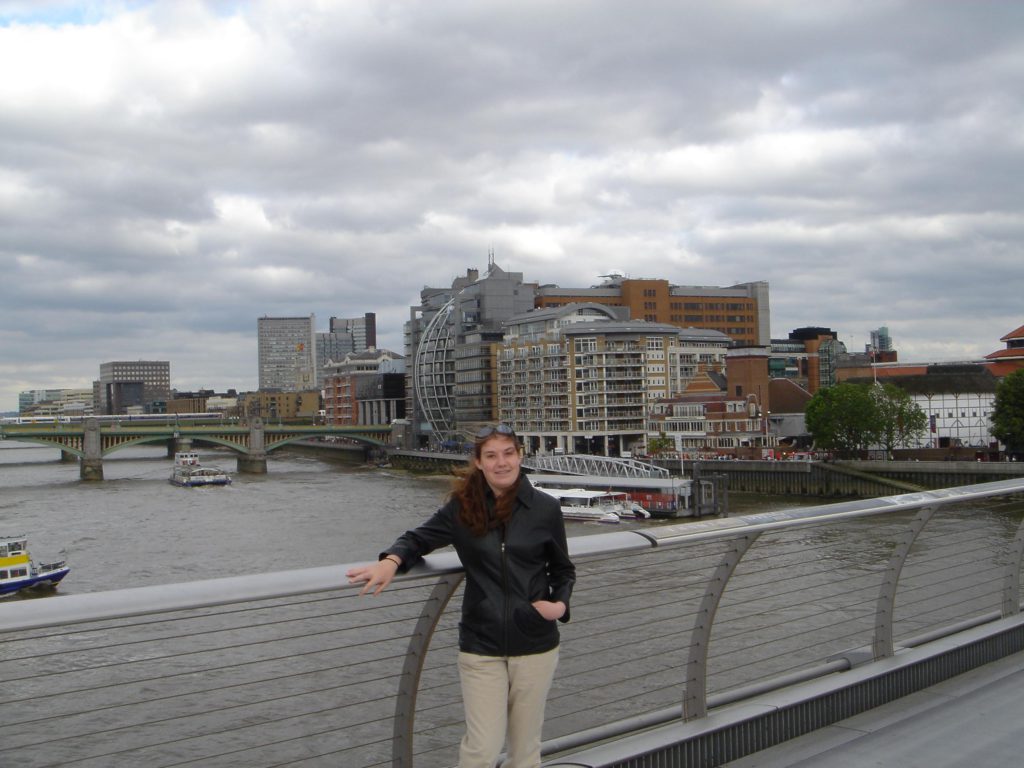
From St. Paul’s it was an easy walk across the Millennium bridge to Shakespeare’s Globe Theatre.
The reconstruction of the Globe was completed in 1999, and it is as accurate as they could make it, not even bowing to modern fire regulations for the most part. The largest part of the audience stands in the “yard” for the entire three-hour performance, but we had seats on the top level, in the front row. I use the term “seats” loosely. It’s a wooden bench about six inches deep, with no back. Cushion rental is another authentic touch, and one we definitely took advantage of. There’s definitely an age gradient of twenty or thirty years between the yard and the top tier!
It actually wasn’t as uncomfortable as I had expected, and the top level front low location allows you to lean on the rail and watch the performance and the people suffering in the yard. It turned cold during the show, and there were quite a few defectors during the interval (insert by Dani: Losers!).
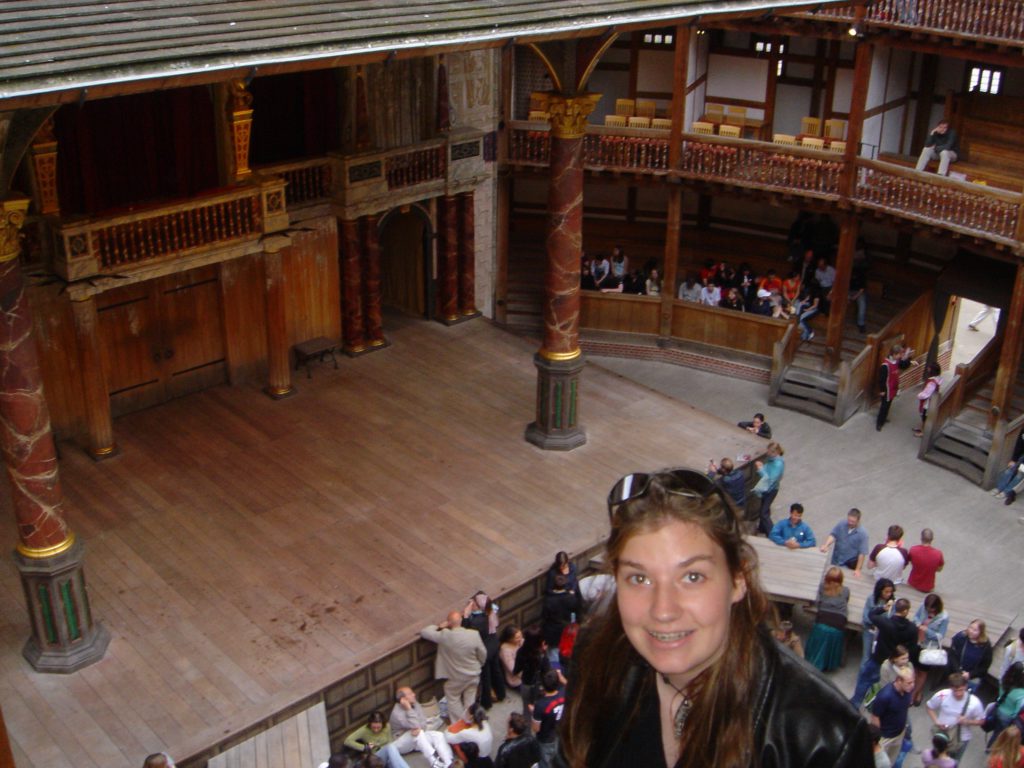
Here’s Dani’s review of Coriolanus:
Well, let me start with my impressions of the building. WOW. We were walking into a building built right where Shakespeare preformed these plays for the very first time more than 400 years ago. How cool is that? And the fact the building looks like the original is even better. It was amazing, like stepping back into a piece of history.
For those of you who don’t know what the globe looks like let me describe “this wooden O” (Henry V Act 1 Scene 1). The building isn’t actually circular but is comprised of twenty sides and is 100 feet in diameter. The rectangular stage juts out into the yard and is graded downward towards the audience (thus leading to the expressions upstage and downstage). The stage is covered by a roof supported by two pillars. There are three levels to view from, the yard (where the plebeians stand), and the middle and upper sections (for nobles and lords). The walls are made of oak beams covered in a lime based plaster.
Coriolanus is about a roman general who fights many battles for Rome and defeats many of their enemies. After his third war they want to make him consul, which requires the support of the people. Unfortunately he is a little egotistical and fails to properly ingratiate himself to the people. When stirred up by the two tribunes, the people riot, demanding his exile. Disgraced, he leaves Rome to return to his old enemy. With their forces, he leads an army to Rome to destroy it. But at its gates, his mother and wife convince him to make peace instead. As a result, his old enemy and new ally turns on him and kills him.
It was very interesting for me to see a professional production of Coriolanus after performing in so much Shakespeare. The show was very good with one glaring exception: the Stage Combat. In Julius Caesar we had a ten minute escrema stick battle followed by three other smaller battles. In this show, they didn’t know how to hold their swords, and there was a thirty second altercation where the only exciting thing to happen was they got one spark off their swords. The rest was very forgettable. But aside from that, the production was very good. Coriolanus’ mother was a remarkable actress. Every word she said was clear and understandable (no mics) and she knew what she was saying. Coriolanus himself was very good but I lost some of what he said when he was being too quiet or yelling too loud.
It was neat to see Shakespeare cold for the first time, without being in it or having read it before. The first ten minutes were rough going, trying to understand, but then something magical happens in your brain and you adjust to the Shakespearian language.
The show was amazing and it was amazing to see it where Shakespeare actually preformed it. To look down at the stage and — even though it’s a recreation — to imagine Romeo and Juliet and Henry V and Julius Caesar, Hamlet, Macbeth being preformed there for the very first time. It’s an incredible feeling.
(Did I mention I love Shakespeare?)
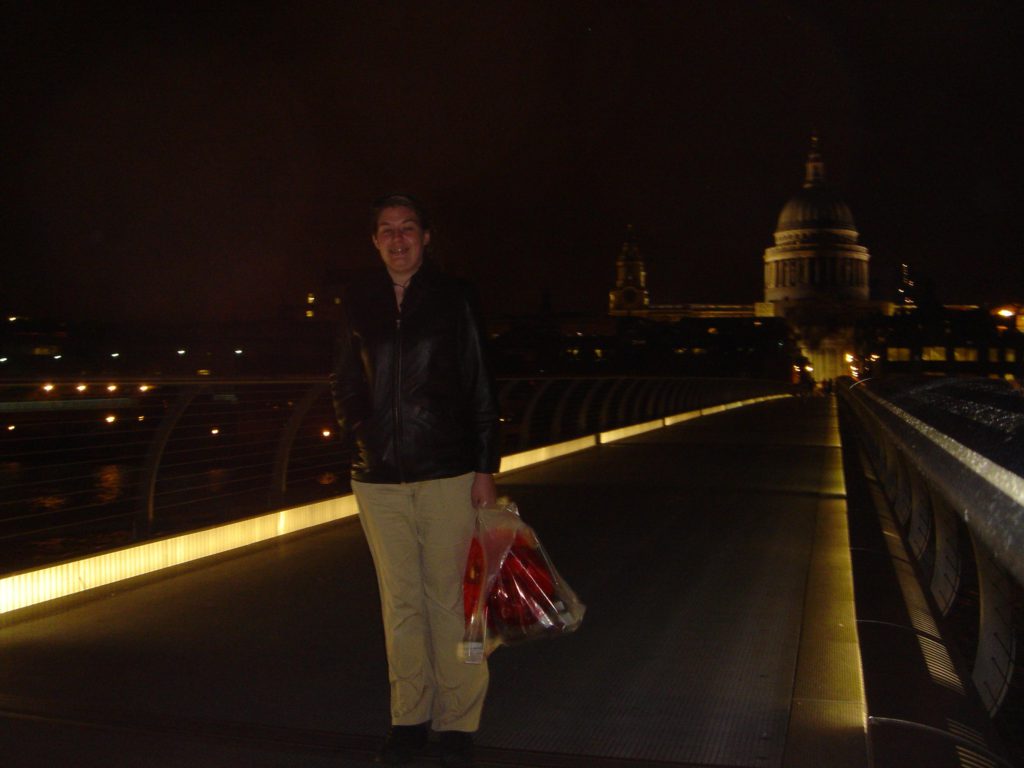
Wednesday, June 21, 2006
London
A Midsummer Night’s Dream at the Open Air Theatre
These blackout drapes are essential when it’s only dark a few hours on summer nights, but they have the side effect of causing you to miss the morning. But I guess that’s what vacations are all about. Dani got up at the crack of noon, and we took the tube over to Holborn, having a late lunch at Hason Raja, a recommended Indian restaurant (hey, anything to avoid English food). It started out well, but ended up being fairly mediocre. But it was Dani’s first try at this cuisine, and she enjoyed it.
Then we walked over to the British museum and strolled the galleries for a couple of hours. Dani posed in the same spot by the cat mummies that she did four years ago.
We took the tube (at rush hour!) to Baker Street (which has a new bronze of Sherlock Holmes in front of the station) and walked up into Regent’s Park, stopping to sip coffee by the tennis courts, and watch a tennis lesson. Then we made our way to the Open Air Theater in the park. The theater opens early, and there is outdoor dining and also picnicking on the grass. A cold wind was blowing some clouds in, and we wisely invested in a “picnic rug,” which kept us cozy later on. At the “Barbeque,” we unwisely invested in objects shaped like hamburgers and hotdogs, which were truly appalling.
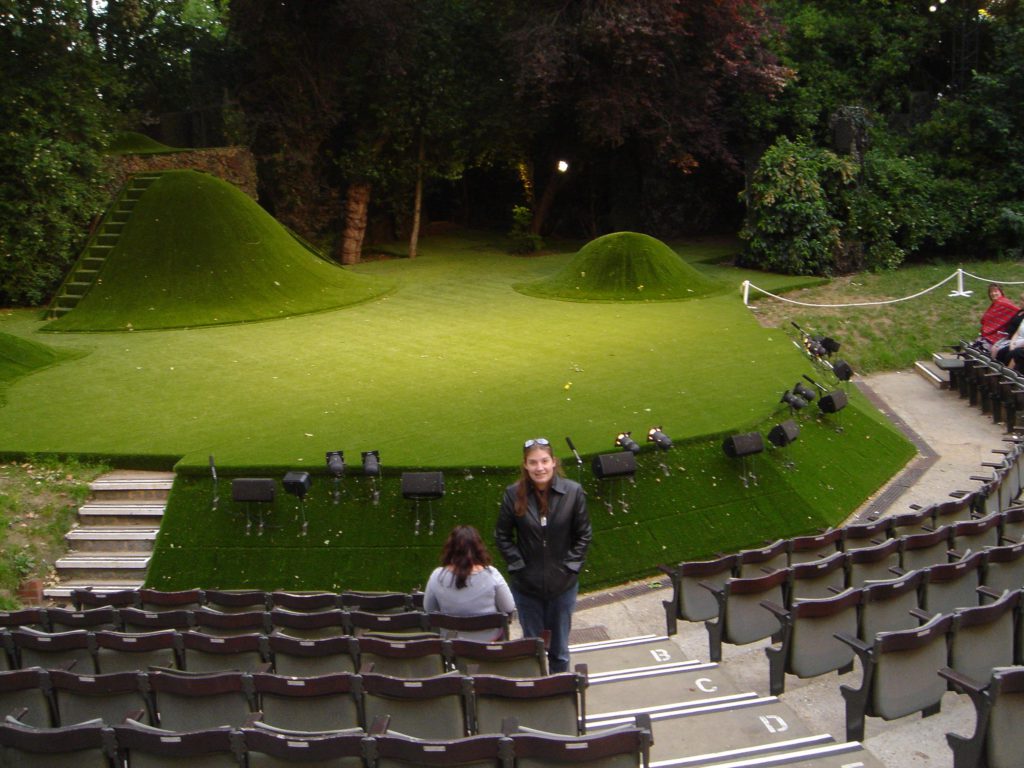
The production of A Midsummer Night’s Dream we saw was brought back after a very popular run two years ago, and I can see why. I really enjoyed it. It was presented without amplification, except for a bit of singing. Our seats in the third row were perfect. This was a particularly interesting show for Dani, as she has a major part (Helena) in Trinity’s production, which begins rehearsals in August. Here’s her review:
I was a little surprised to walk in and find the stage completely covered in grass. The theater was really neat, it’s completely open air. The seats are arranged like an amphitheatre, but the stage has no back, just trees. It was the perfect setting for A Midsummer Night’s Dream, where much of the action takes place in a forest. It was perfect the way it kept getting darker and darker.
For obvious reasons I watched Helena, for the most part. She was brilliant! Her timing was perfect and she was crystal clear, without sounding like she was yelling. I wish I knew how to project like that. The whole cast had found so many nuances in the text to play with. It was fun watching them, knowing in a month I’ll be rehearsing it.
The acting was very good, especially Helena and Bottom, but what was truly brilliant was the direction. The director found so many spots for wonderful stage action that really accentuated the comedy of the situation. He also added many hilarious gags not evident in the text. The way he coached his actors to characterize themselves was genius. He also had an interesting concept for the fairies, equating them to Peter Pan’s Lost Boys. The show was set in mid-Victorian times for the mortals, but the fairies were unique: bald and filthy, and wearing tattered clothes and work boots. Oberon looked like Elrond from Lord of the Rings.
It was interesting to see that the types of people cast were almost identical to who is cast in Trinity’s production. Bottom is over the top theatrical (David G. ), Oberon is commanding and kingly (David VB. ), Titania is mystical (Lexi). Their casting was perfect, so ours should be to.
I can’t wait to perform this show!
Thursday, June 22, 2006
London
Billy Elliot at the Victoria Palace Theatre
Dinner at Le Gavroche
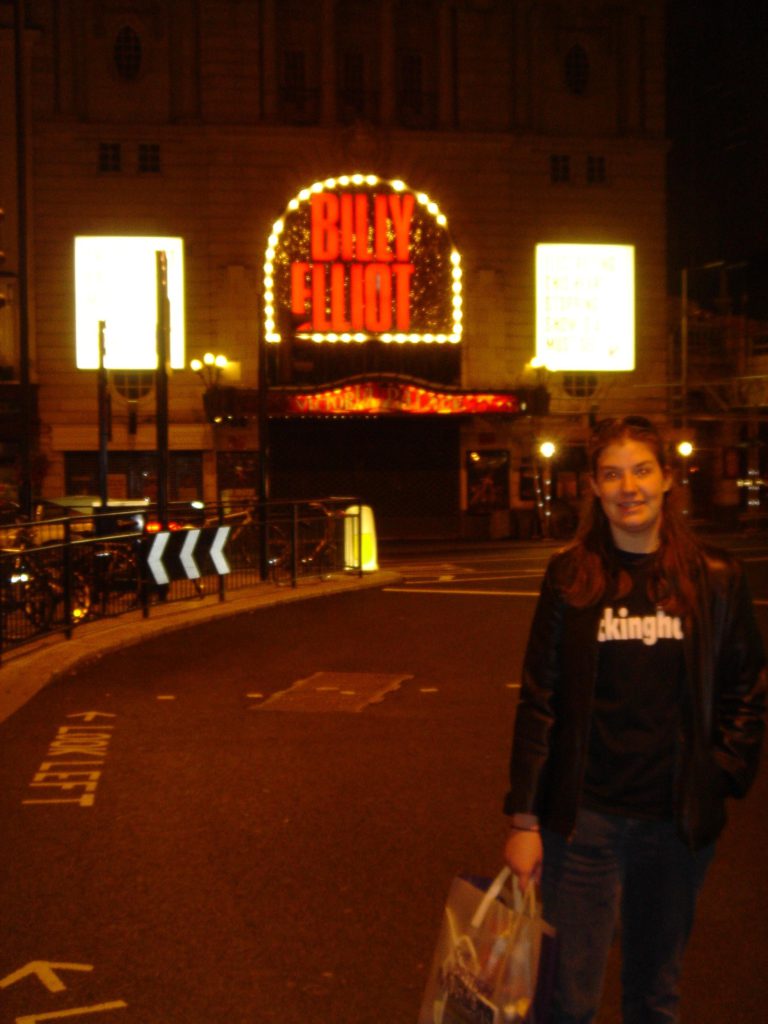
We finished our trip off with a highly anticipated visit to Billy Elliot, The Musical. The show, based upon a surprise hit movie, has a fantastic score by Elton John.
We had high expectations for Billy Elliot, and I was afraid the show might not live up to them, but it definitely did. I’d have to place it right up there with Wicked as one of the greatest shows I’ve seen. The story, the songs, performances and dancing were all exceptional. 12-year-old Liam Mower, as Billy Elliot, is a phenomenon. He’s one of five boys who alternate in the role, but it’s hard to imagine he’s not the very best.
Because of the subject matter — Labour vs. Conservative party, coal miner’s strike, adolescent homosexuality, and a deluge of four-letter words — it’s hard to imagine this musical ever playing in America in its current form. That’s a shame, because it really is an experience. In retrospect, I wish we had another day here in London to see it again (although it’s sold out for months).
After the theater we took the tube to Marble Arch and walked to La Gavroche. This classic French restaurant opened in 1967, and was London’s first Michelin three-star (although since it was taken over by the founder’s son it is now two.
Although expensive, our nine-course dinner (mine matched with seven wines) was no more than lunch Tuesday — an exceptional buy, given the perfect food, service and wines. In fact, I’ve never had wines close to this caliber in a food and wine pairing dinner. Perhaps the best course was the fois gras accompanied by duck pastilla with cinnamon, matched with an Alsatian Gewürztraminer. Heaven. And they also had the most extensive selection of French cheeses I’ve encountered. Even Dani enjoyed a few of them. Our three and a half hours at table seemed to fly past. Then it was back to the hotel to pack and sleep before our early morning call .
Friday, June 23, 2006
London to Orlando
Up at 6am, that’s a change! It was easier hauling the luggage the four block to Victoria Station than the other direction, due to it being slightly downhill. The Gatwick Express runs every 15 minutes, so we climbed right on and were at the airport in a half hour. We had a fairly appalling breakfast and then hung out in the terminal for several hours, Dani working on her book, and I reading Michael Connelly’s The Last Coyote (already listened to it on tape, but it’s probably his best work). Meanwhile Dani is reading an earlier novel in the same series, The Black Echo.
The Virgin flight was a nonstop to Orlando in a little over eight hours. Just enough time for both of us to finish our books. It’s a bit of a pain to clear customs in Orlando, because you have to wait for your bags, clear, and then recheck them, then wait for them again at baggage claim. The first wait was short, the second loooong, but we spent it telling Linda all about the trip.
Then it was home to our comfy beds and a shower that doesn’t require contortionism.
Dani’s final postcard tally for the trip: 44.
Nice things about the Regent Seven Seas Voyager
- No tipping
- Free beverages including almost all alcohol, plus bottled water for shore excursions
- Free self-service laundry (use it early in the cruise)
- Unbelievable service from everybody
- Food presentation beautiful
- Fresh flowers everywhere
- 24 hour espresso bar (free, of course)
- Nice theater and (largely unused) lounge
- Extensive DVD library
- Relatively inexpensive Internet, with good wireless connectivity
Not-so-Nice things about the Regent Seven Seas Voyager
- Somewhat rattle-prone cabin and a fairly rocky ride at the back if the seas are heavy
- Guest chef menus were not as good as the regular ship’s menus
- Small casino with no video poker (not that I cared. )
- Small pool (I saw two kids in it once, so it’s not a pool kind of cruise)
- No greasy pizza
Some Tips for Next Time
Transfers to and from the ship are expensive unless you get a package that includes hotel. The offered hotels in Monte Carlo and London were very expensive, but in retrospect, spending a night in Monte Carlo might have been cheaper than the transfer.
The Rubens was an excellent price. Its proximity to Victoria Station was great for the transfers, although the disadvantage of the Victoria Underground is that you must make a connection to get to most places in the city.
The Meridien in the West End might be the most convenient hotel location for London theatre.
Hawaii
O’ahu, Hawai’i, Maui, Kaua’i
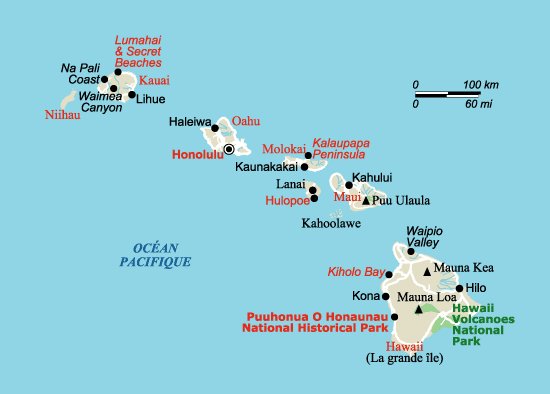
Orlando
Friday, March 17, 2006
As much as we’ve traveled the world, there are still quite a few places in the US that we haven’t been, so we decided to visit Hawai’i this spring break. (If you’re wondering about the apostrophe, that’s the correct spelling, which is on most everything in the state of Hawai’i but is only recently showing up elsewhere. And yes, the “w” is pronounced “v” in all Hawaiian words. )
Of course, living in Orlando, Hawai’i isn’t the most convenient place to get to! But we found fairly good free first class seats on Delta by booking nine months in advance and were able to make the trip in only two flights, connecting in Atlanta. The flight from Atlanta to Hawai’i is only about nine hours, not too bad compared to our 14 hour record breaker from L. A. to Australia.
The flight took us over a very cloudy country, but it cleared off as we flew over San Francisco, revealing the entire bay in all its glory, with downtown, the bridges, Treasure Island and Alcatraz all sparkling clear from 34,000 feet. It seemed funny that the only clear spot in the country was normally foggy Frisco.
Along the way I read a guide book Linda’s mom sent Dani. It contained quite a few surprising facts, such as that Honolulu is one of the ten largest cities in the US!
The flight arrived around 8 pm. Somehow it felt like we should clear customs after such a long trip! We caught a cab and arrived at the Halekulani Hotel by 9 pm. The check in service at the hotel was amazing, the best I have ever experienced. We were escorted to our room by someone from the front desk, where our credit card number was taken. The room was already set up with a rollaway, and after a light snack from room service we hit the sack (it being 3am in Orlando by this time).
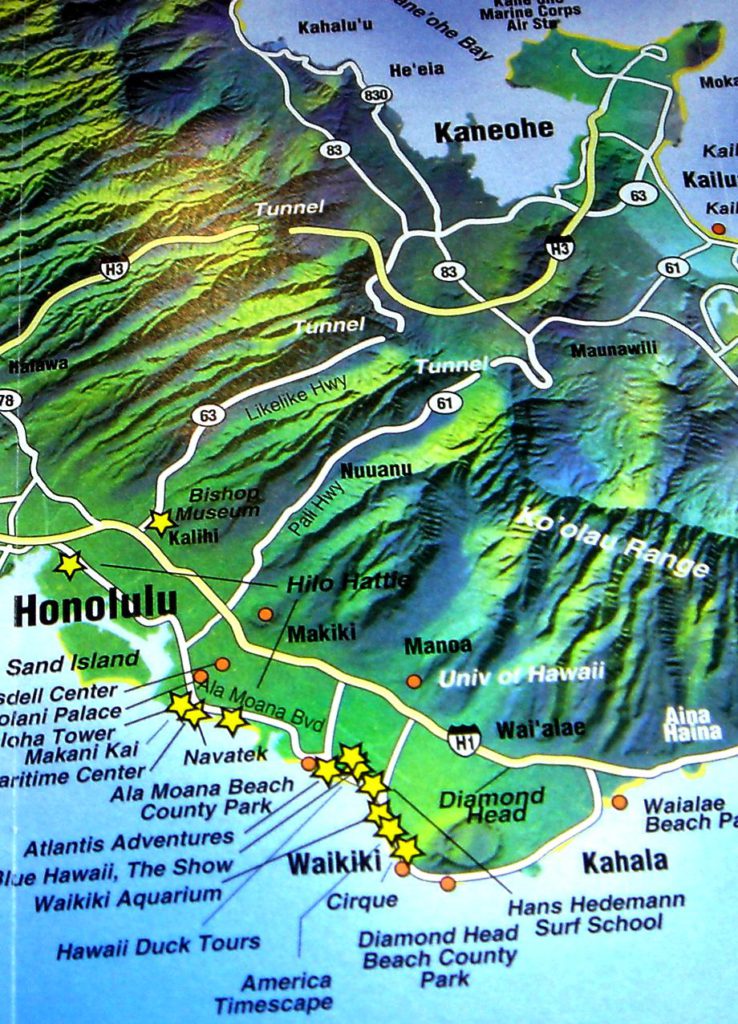
Honolulu and Waikiki Beach, O’ahu
Saturday, March 18, 2006
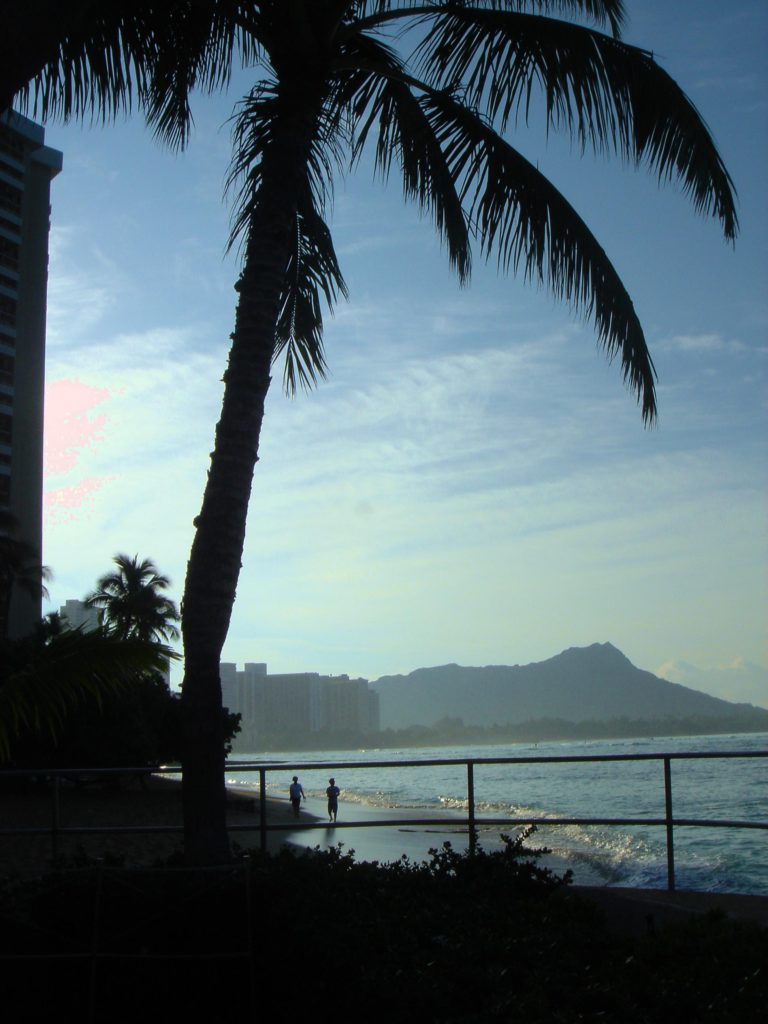
With a five hour time change from Orlando I was up pretty early Saturday, and discovered what a truly beautiful hotel the Halekulani is. Our room overlooks a central garden where the pool faces the breakers rolling in at Waikiki. I left Linda and Dani sleeping and had breakfast out on the terrace overlooking the ocean. Most of the hotel’s ground floor is open to the breezes, as the pleasant temperature and humidity eliminate the need for air conditioning if you’re in the shade. It’s a pity we’re checking out and heading for the cruise so soon.
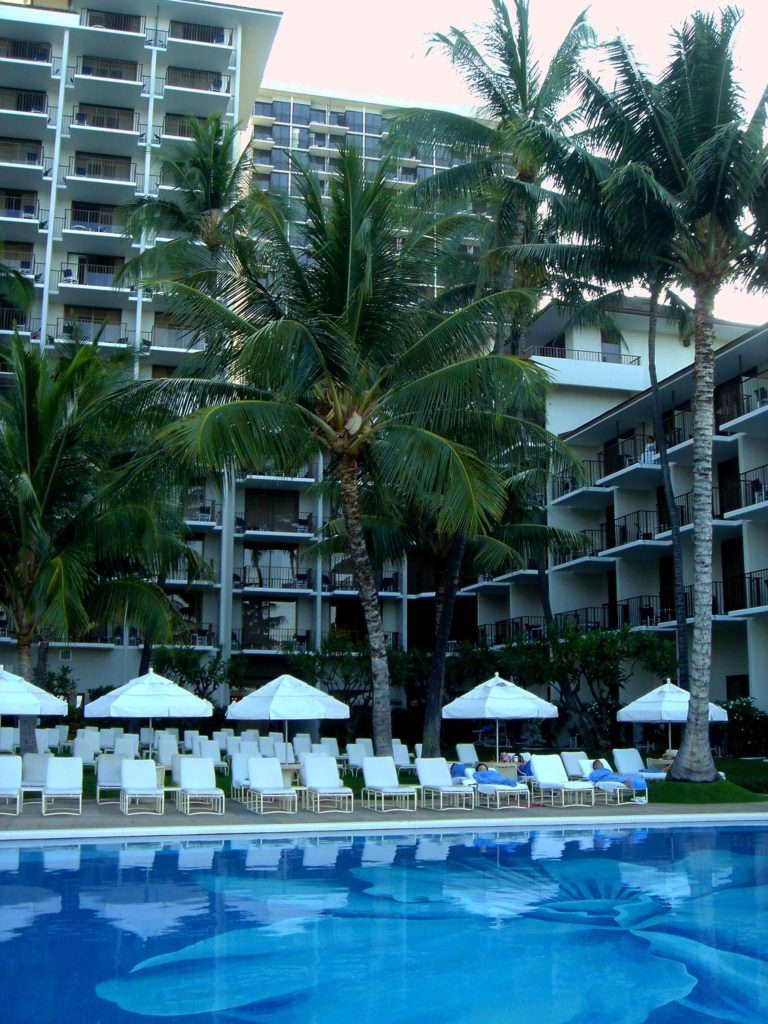
I took a cab back to the airport to meet our friend from Australia, Pamela, at 9am. (Cabs are pricey in Hawai’i. It costs almost $4 a mile, or about $40 to get from Waikiki to the airport. ) Honolulu looks a bit like Southern California, particularly San Diego, with freeways and lots of 1950s era high rises, intermixed with 1940s two-story apartments. The foliage is more verdant though, and more floral than even Florida’s.
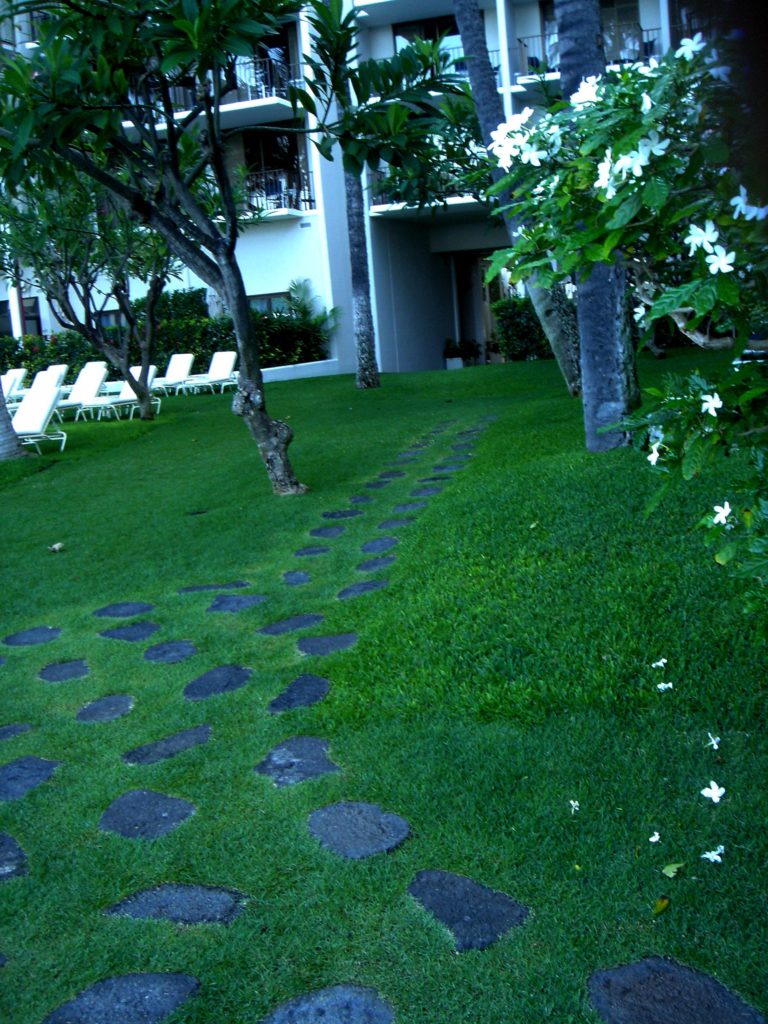
The weather is beautiful today, with deep blue skies, although storm clouds are threatening to spill over the mountain range that divides the island. The forecast for the week is for rain, rain and more rain, so we’ll enjoy it while we can.
The Hawaiian archipelago runs north for 1500 miles, impressive when you consider we crossed only 2400 miles of ocean to get here. There are eight large islands at the southern end of the chain. The largest, the Big Island of Hawaii, is larger than all the rest combined. One of the islands was used for bombing practice during WWII, and one is privately owned. Of the remaining six, we will visit four: Hawai’i (the big Island), Kaua’i (the garden island), Maui (the valley island), and O’ahu (the gathering place). This leaves Molokai (a former leper colony), and Lanai (a former pineapple plantation mostly owned by Dole).
About half the population of Hawai’i has some Hawaiian ancestry. 18% is Japanese, and about 20% are mainlanders The rest are various Asian immigrants.
The traditional language is Hawaiian, but a patois called pidgin is spoken by the majority of natives. Everyone speaks some English, but not as fluently as I might have guessed.
Hawaiian was codified by the early missionaries, who assigned it a mere twelve letters of the alphabet: all five vowels plus just seven consonants: h, k, l, m, n, p, and w. Hawaiian words are comprised of two letter syllables, and except for a few combinations such as au and ai, every vowel is pronounced separately. Often an apostrophe is inserted between vowels to show that the letters should be pronounced as two syllables. For example, the slow moving type of lava is called simply A’a.
Hawai’i is an intermediate spot to meet Pamela, as it’s a nine hour flight for both of us. It was great to see her again after almost two years. We took a cab back to the hotel and hung out until checkout time, then headed for the cruise terminal for an early check-in.
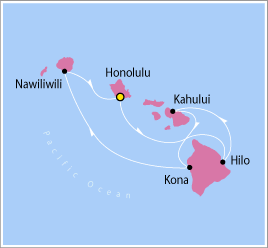
The Pride of America is the second of NCL’s American-flagged Hawaiian fleet. It has an interesting history. Back in the 1950s Congress became concerned that America was losing its ship-building industry to overseas companies, so they passed a law that American flagged ships had to be built in America. The result was predictable: companies stopped registering their ships under American flags, costing millions of dollars in registry fees. In an attempt to combat this, Congress passed a law that foreign flagged ships had to dock at a foreign port during every itinerary. The result was predictable: American ports lost millions of dollars in business as ships substituted foreign ports. So American now has no ship-building industry, no American flagged cruise ships, and no all-American itineraries.
A few years ago a startup company decided to play the game the way Congress intended, and began construction of two American-built, American flagged cruise ships. Halfway through the process they declared bankruptcy. The hulls were bought by NCL and towed to Germany for completion. The Pride of America was scheduled for launch in 2004, but during construction a storm struck the shipyard and it sank. The Norwegian Sky was hastily refitted and pressed into service as The Pride of Aloha. A year later the refloated Pride of America finally made its debut. Next week its sister ship, The Pride of Hawai’i joins it.
The Pride of America is a peculiar ship. As the ultimate embodiment of NCL’s freestyle dining concept there are a half dozen different restaurants, most of which charge a small cover ($5-$15). But there are few cozy places to hang out, and there’s no casino. The public spaces other than restaurants are comprised mostly of a large theater and a large nightclub.
The public spaces are decorated in traditional American motifs, and the stairwells feature scenic photos from around the country. Some seem attractive, while others come off as tacky. A tremendous amount of space is dedicated to exterior walkways, with a rather narrow interior space.
Linda’s take on the interior design is that it looks like ex-Disney people designed it — the ones who’ve forgotten how to design attractions, too.
The strangest thing is the cabins. Our suite looks like it was the site of a paint fight featuring 1960s psychedelic poster paints. It includes a turquoise couch that is harder than a diamond and two purple swivel chairs that came straight from Dean Martin’s office. And the balcony is enormous — more than ten feet deep — space that could have been used to increase the interior dimensions. A fourth of the interior space is hallway, leaving only a tiny corner for a bathroom (but at least it’s larger than Pamela’s, which looks like one in a camper).
The suite doesn’t come with laundry service, free internet, or a stocked bar, all of which are Princess amenities. It does have a fully automated espresso machine, though.
The strengths and weaknesses of different, comparably priced cruise lines are odd. We’ve always had remarkable service on NCL, but their ships have always been inferior. Even this brand new one seems completely misguided in design. Yet the crew is fantastic: friendly, helpful and outgoing, just as on other NCL trips. The moderately priced ships with the best amenities have always been Royal Caribbean, but their food is pretty awful. Princess seems to fall somewhere in between.
We met our concierge and made dinner reservations for the week. This is the first thing you want to do on any cruise with specialty restaurants. Then we had lunch in the buffet restaurant. It was immediately apparent that NCL’s standard fare is still significantly better than Princess’ or Royal Caribbean’s, with a wide offering of super-fresh ingredients.
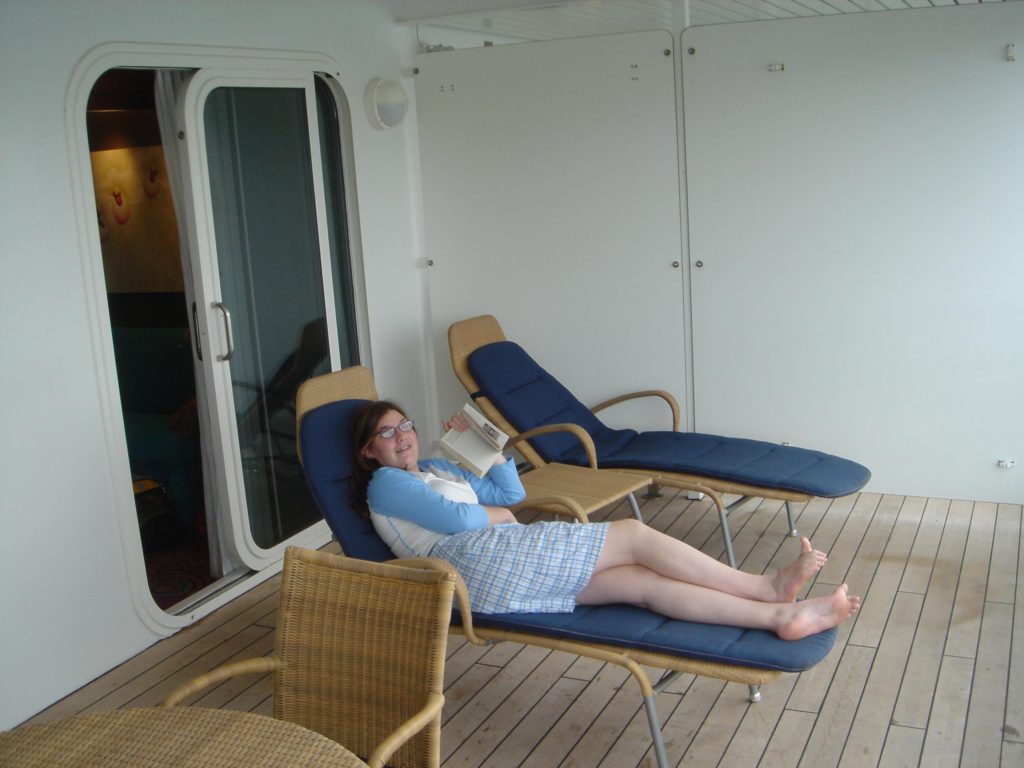
After an exploration of the ship, unpacking, and a fairly speedy lifeboat drill, it was time for dinner. We tried East Meets West, an Asian fusion restaurant that also incorporates a sushi bar and teppan steak room. The food included Thai soup, Chinese dim sum, Japanese miso soup, Indian tandori chicken and lamb vindaloo. All were excellent, although not particularly authentic. The vindaloo, for example, was quite sweet and used green curry, but it was delicious, whatever it was.
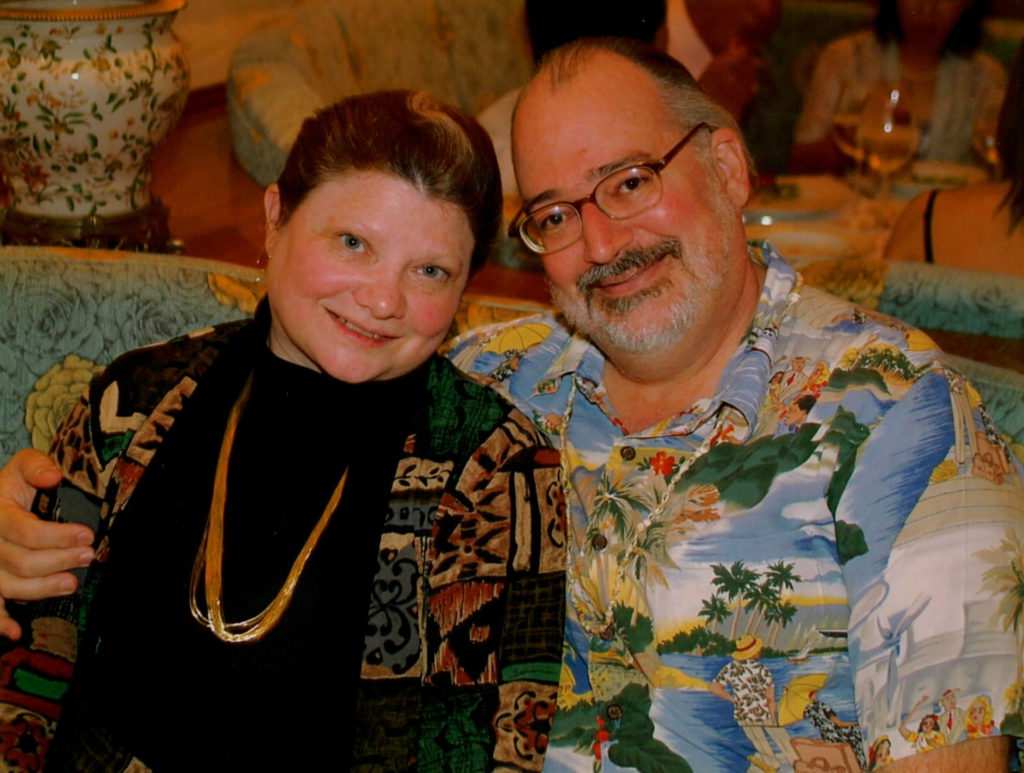
We were surprised to find Badoit, our favorite lightly sparkling mineral water from France available in the restaurant. I’ve never seen it outside of France.
Then it was time for some much-needed sleep. Dani is sharing a cabin with Pamela, so Linda and I have the suite to ourselves.
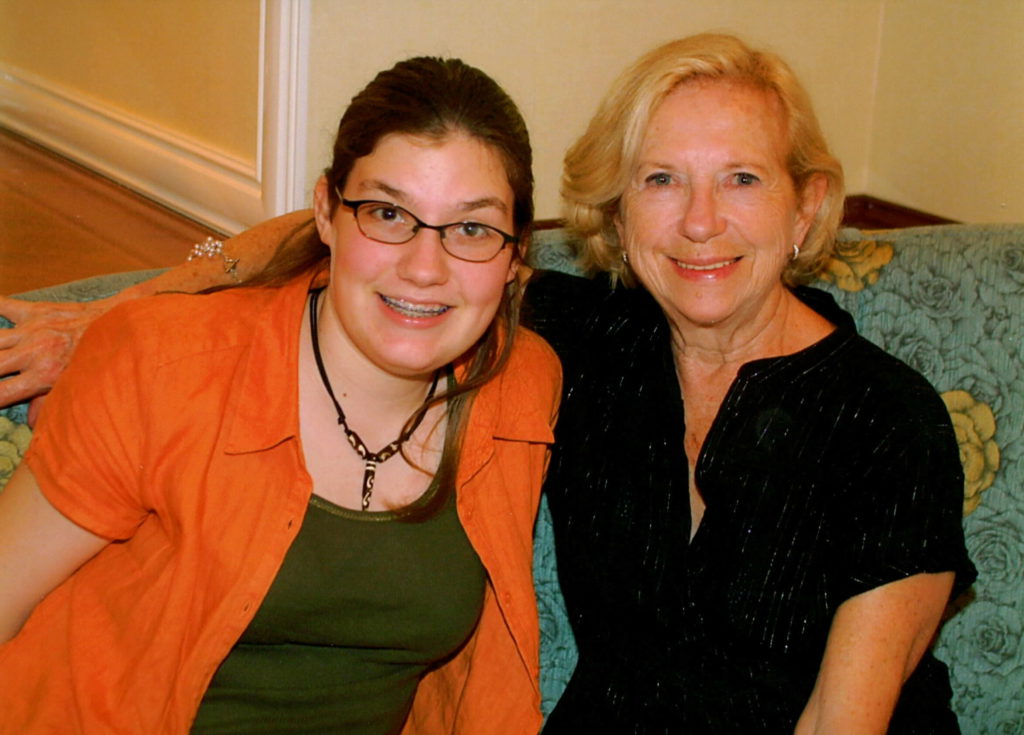
Hilo, Hawai’i
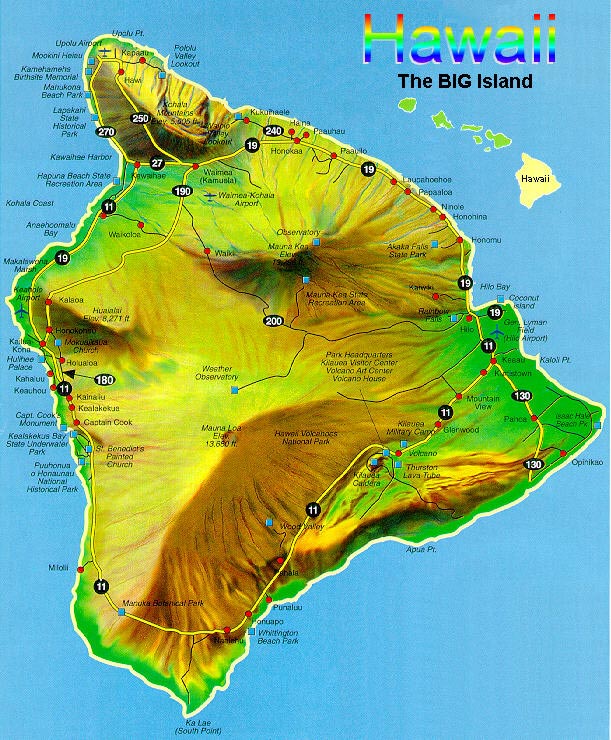
Sunday, March 19, 2006
There was a bit of a roll to the seas last night, which was pleasant, a rare experience on modern, stabilized cruise ships.
The cabin is not very tight, with many more rattles than any other we’ve had, but earplugs took care of it. They couldn’t muffle the banging from the deck above, though, as something was hammered by wind for hours. I checked it out this morning, and there are cabins above us, possibly for the deaf and stupid.
This morning the boat docked at Hilo on the big island of Hawai’i. At least that’s what they claim. Visibility is less than a half mile, through steady rain.
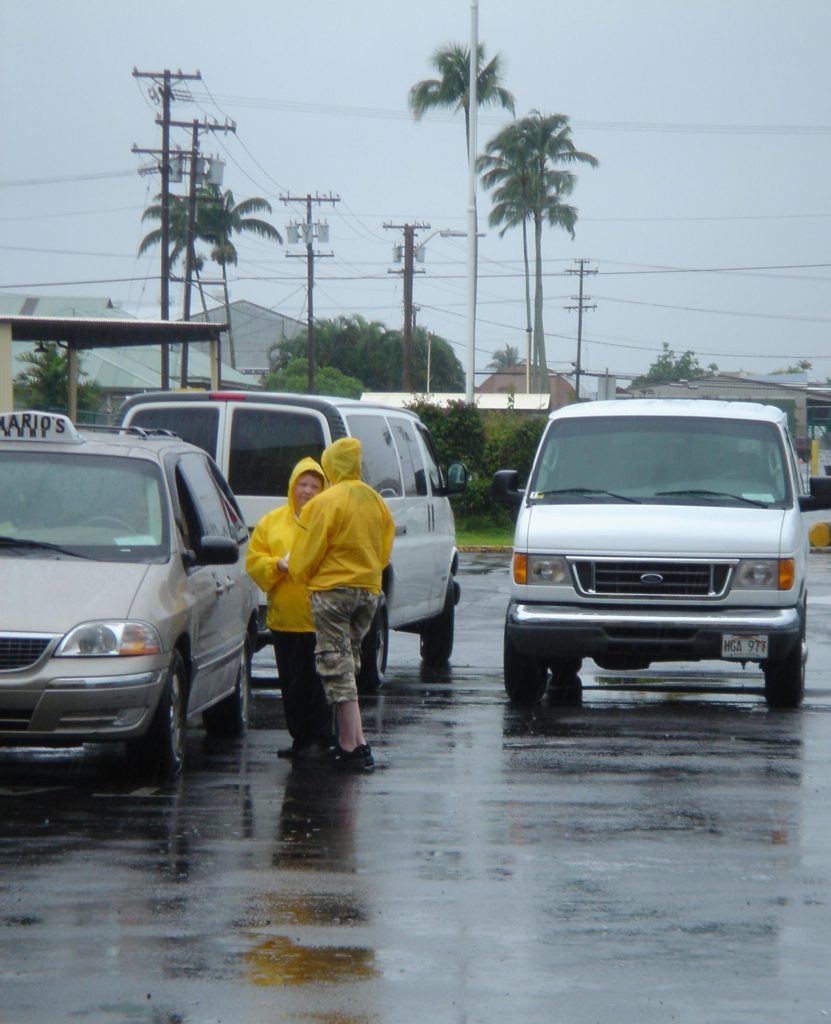
We had an expensive tour of Volcanoes National Park booked for today, so Linda bought ponchos and we waded to the terminal building. After a half hour wait as they ascertained road conditions it was a relief to learn the tour was cancelled. I wasn’t looking forward to spending $450 to see nothing. I guess we were fortunate, because it seemed ours was the only one that was cancelled. Linda and Dani caught a taxi to go to town in the rain or something, but I couldn’t see the point (literally). So I retreated to the cabin to relax, type and read.
They saw a muddy waterfall and did some shopping at a mall, then rejoined Pamela and me for lunch in the ship’s main dining room, the Skyline Restaurant. The space is decorated like the Chrysler Building, and mostly looks pretty neat.
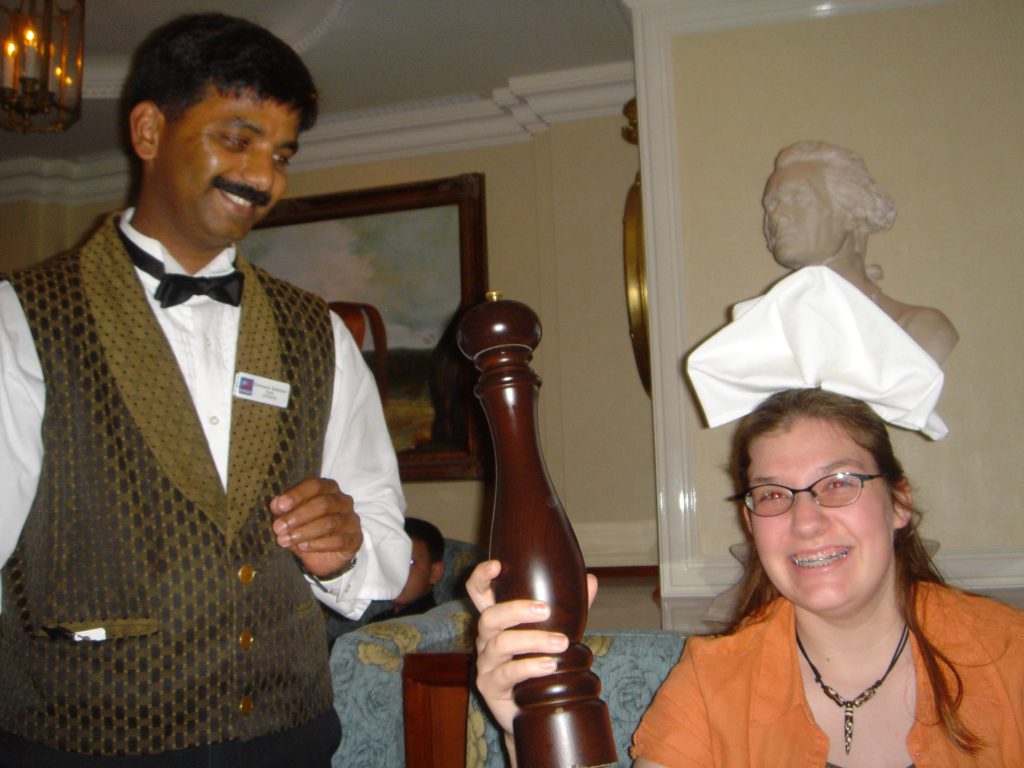
I worked on my new writing class during the afternoon, and then we met for drinks and dinner at Jefferson’s Bistro. This continental restaurant is probably the best on the ship. There’s a small cover charge, and up charges for a few foods including the superb fois gras appetizer I had. Our waiter (who claimed to be named Francesco but was from India) was excellent, and the meal was top notch.
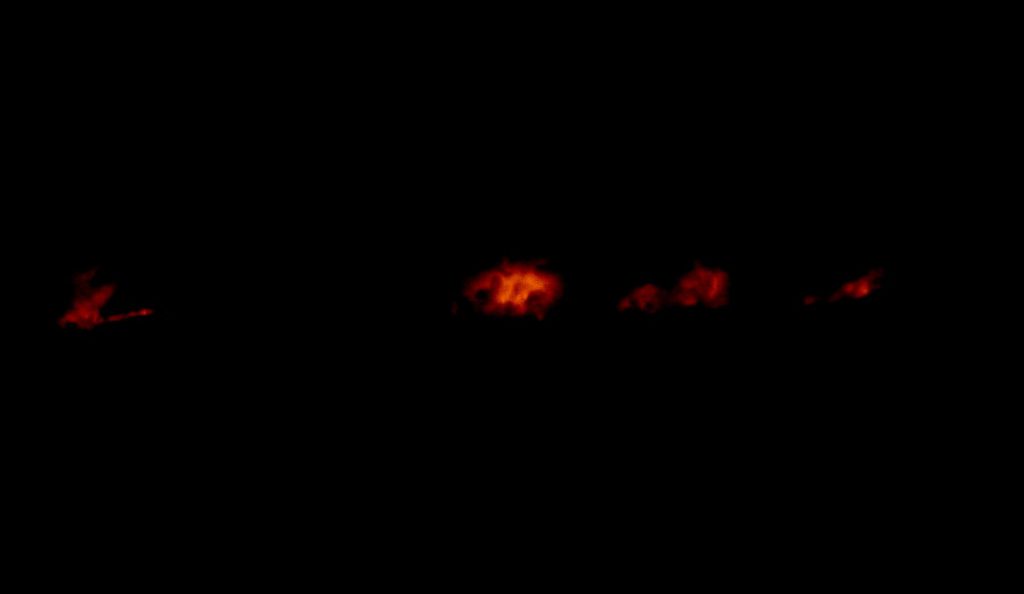
At 10pm we cruised past the southern part Hawai’i, and could see the lava spurting up out of the ocean from about a half mile away. It looked hot. Strange sounding birds circled overhead, either warning us off or begging for handouts, I wasn’t certain which.
Kahului, Maui
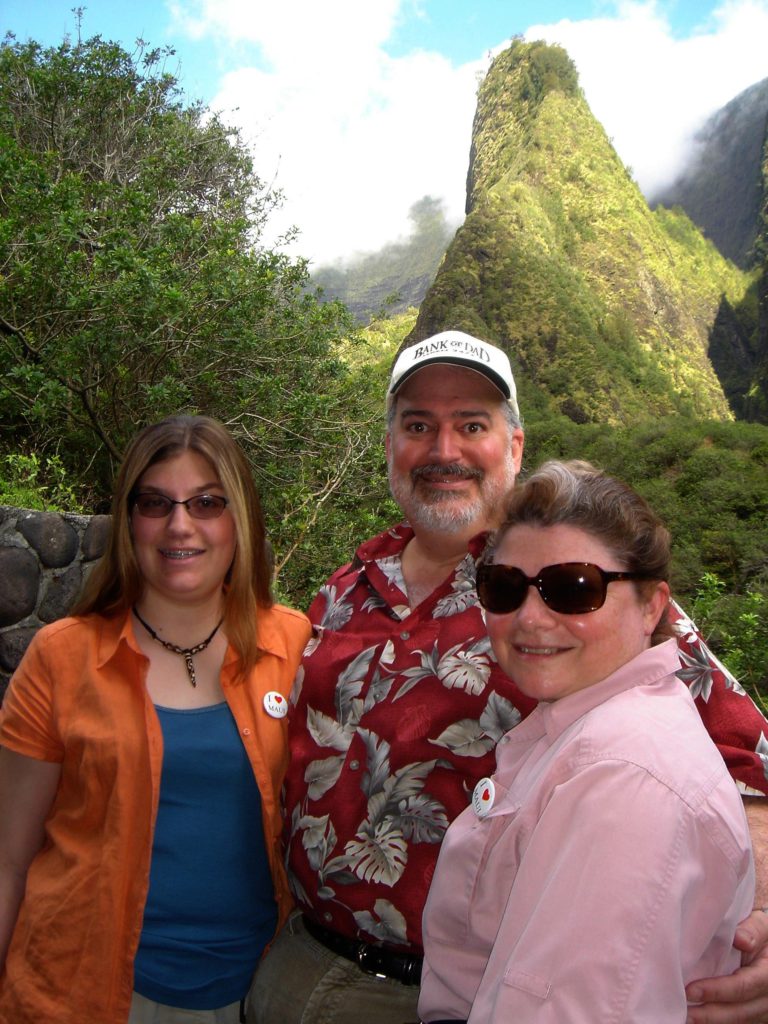
Monday, March 20, 2006
What an improvement in the weather! Maui gets 400 inches of rain a year on the east side, where we’re docked, so we were particularly lucky to get a sunny day. It’s an interesting island, with 11 of the world’s 13 different climate types packed into a very small area (it lacks only Saharan and arctic).
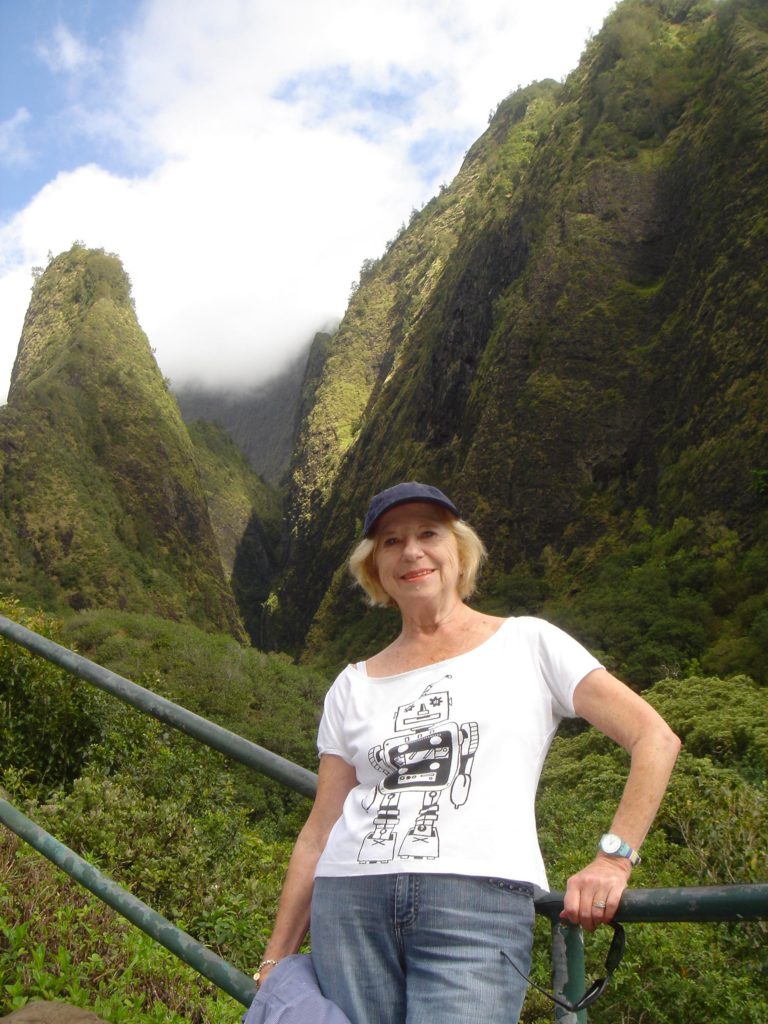
We met at 8:30 am for our Best of West Maui tour. Our bus driver, Claude, also acted as guide, and was terrific, with an easy to listen to voice and lots of interesting information. Maui is called the Valley Island because most of the settlement is in the saddle formed by northern and southern volcanoes. It only takes about 30 minutes to cross from one side to the other, and our tour visited spots on both sides, plus a plantation in the middle.
Once a major sugar producing economy, the sugar plantations are still the island’s largest landowners.
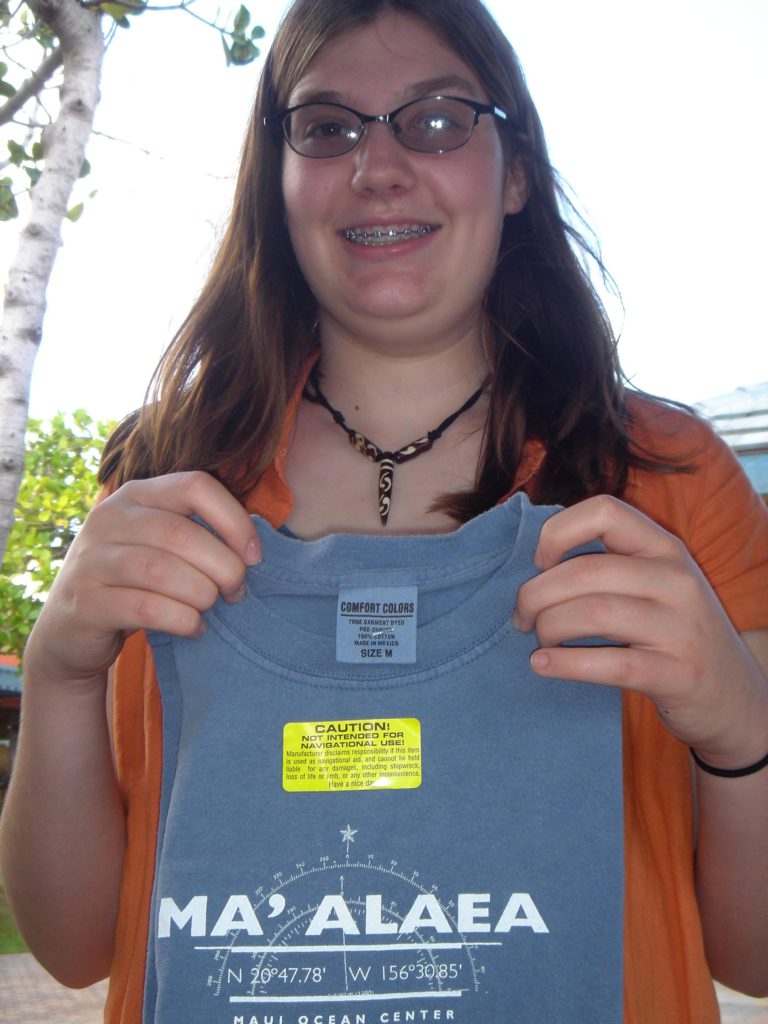
Our ship is docked in Kahului Harbor. Driving straight up the hillside brought us to a deep box canyon called the Iao Valley. Near the top is a 1200 foot basalt spire called Iao Needle that is pretty impressive. It’s also impressive that it and the surrounding vertical canyon walls are quite verdant.
Our next stop was Maui Tropical Plantation where we took a 40 minute tram tour of cultivated fields including papaya, mango, banana, macadamia nut, sugar cane, coffee, coconut and many others. We also saw a demonstration of how to husk and open a coconut. The fibrous outer coating is called copra, and is the stuff they grew on the plantation where Pamela lived as a young newlywed. They just threw away the coconut and sold the copra!
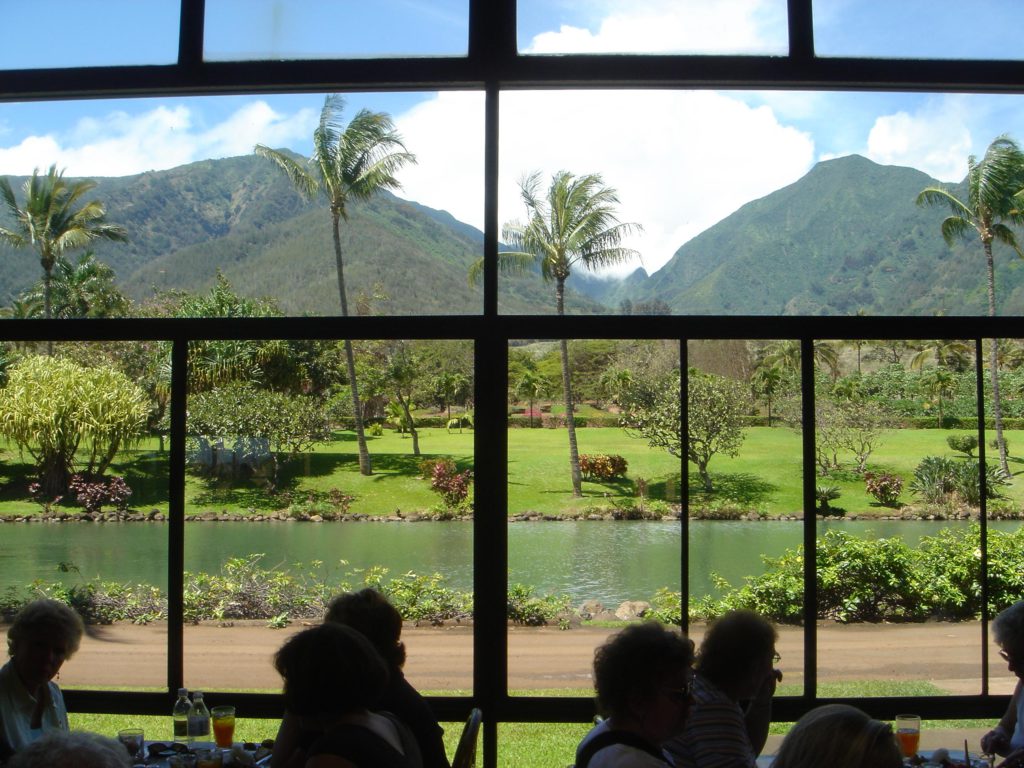
We had a pleasant lunch of duck, rice and fruit, then headed for our final stop, Maui Ocean Center on the west coast. This was a nice aquarium with both indoor and outdoor displays of the ocean life found in Hawai’i, including the state fish, the Humuhumunukunukuapoa’a. Say that five times fast.
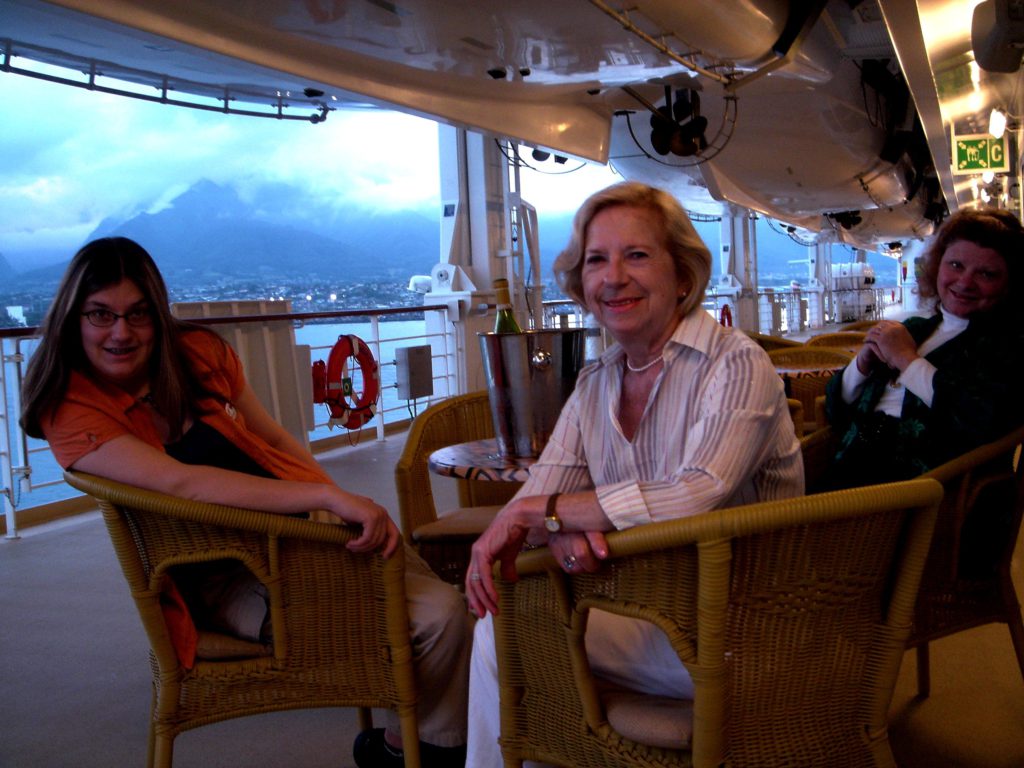
For dinner the ship was nearly deserted due to the fact that more than half of the passengers went to a Luau. Those who were too cheap to go to the Luau went to the main dining room because it’s free. This left all of the specialty restaurants (except Little Italy, also free) at our disposal. We selected Teppanyaki, and had a meal we’ll be talking about for years to come — but not for the right reasons!
Teppanyaki is Benihana-style cooking on a large cook top, with lightning fast food preparation accompanied by juggling and impressive culinary acrobatics. Or it’s supposed to be. Our chef was named Fung. Fung the Incompetent. We knew we were in trouble when Fung appeared on the scene, pulled out his spatula, twirled it, and had to grab it by the blade to keep it from falling on the floor.
Next Fung began to stack up onion slices to form a volcano. We’ve seen this trick many times at Benihana. They fill the volcano with oil and water and set it on fire to make a plume of steam. Fung stacked a couple of slices of onion, but when he went to put on the third one the bottom one slipped. Darn. Let’s try this again. And again. Almost got four one time. . . Maybe it’s having to do it with this damned spatula. . . Five minutes later Fung finally gave up and stacked them with his blue latex-gloved hands. Couldn’t get them lined up to hold the oil, though. . . let’s just pour oil all over the griddle and set the whole thing on fire. Well that was pretty spectacular. Then Fung departed to fetch meat, leaving the onions to permanently burn themselves onto the surface of the grill.
Upon his return, Fung spent five minutes trying to scrape the goo from the cook top, and another five trying to scrape the goo from his spatula into the sink, finally giving up and simply covering the cook top with oil. He then prepared vegetables — the traditional final course of a teppanyaki meal. While most teppanyaki chefs slice the vegetables faster than the eye can follow, Fung appeared to have never before actually seen a zucchini, let along tried to slice one up. But after only a slight learning curve he managed to inundate our plates in seven or eight servings of vegetables sautéed with garlic, butter, oil, salt, garlic, pepper and garlic.
As we attempted to unearth our plates, he then launched into shrimp preparation. He was surprising competent at cutting the shrimp into bite-size pieces, as long as you define bite-size as smaller than your mouth. The shrimp were perfectly cooked, using garlic, butter, oil, salt, garlic, pepper and garlic.
Preparation of the meats followed, with each of us receiving beef, chicken and scallops all prepared in garlic, butter, oil, salt, garlic, pepper and garlic. and additional steak was partially prepared for a phantom person that apparently only Fung could see. This process was aborted, though, when Fung ran out of plates on which to serve the steak.
The crowning finale to this act of culinary incompetence came as Fung attempted an extremely tricky move — simply removing his knife form his belt sheath — and dropped it on his foot.
Needless to say, we’ll be talking about this meal for years to come, and wondering, “How can that man possibly still have ten fingers?”
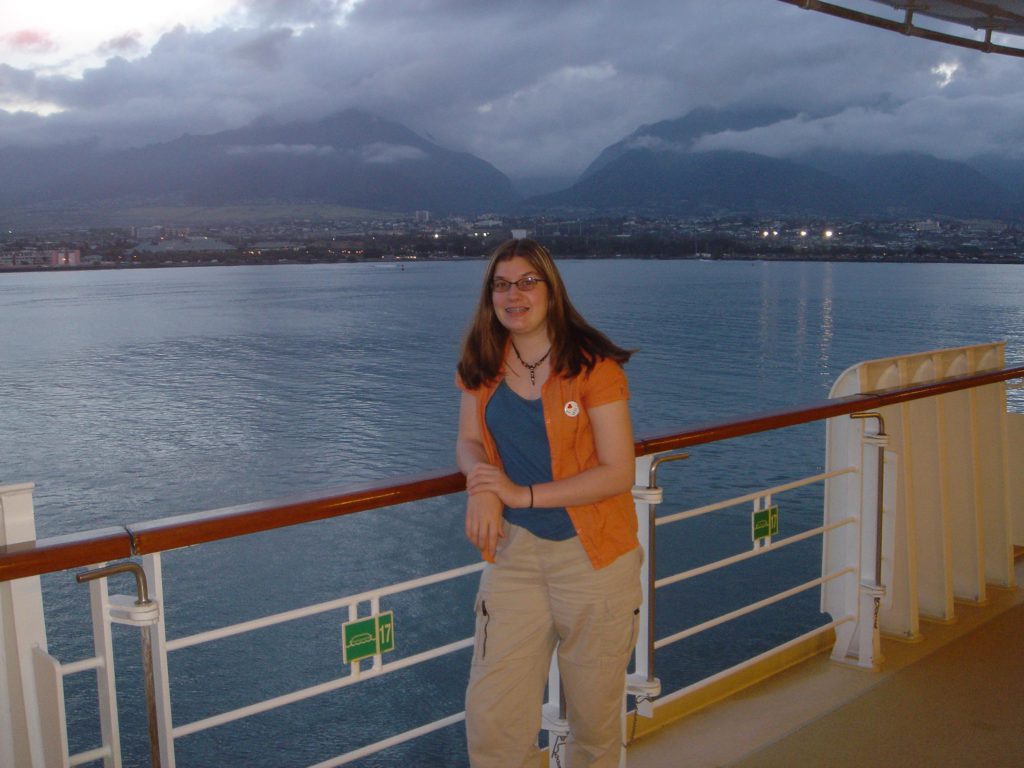
Kahului, Maui
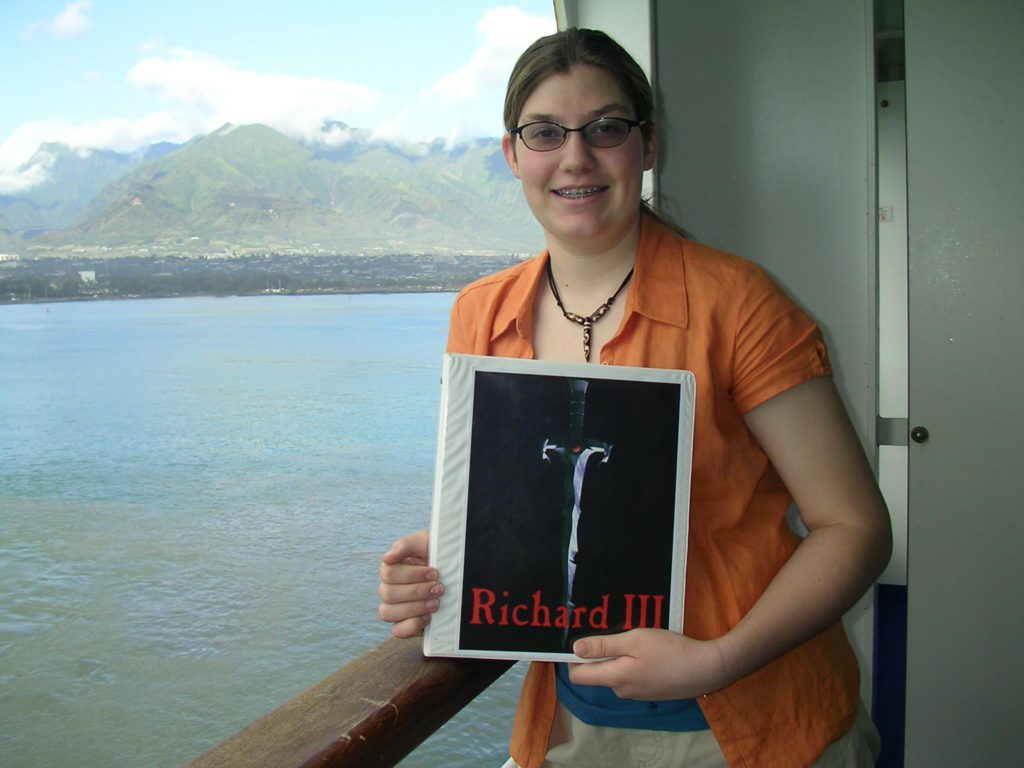
Tuesday, March 21, 2006
Today Linda, Dani and I took a tour to the top of Haleakala Crater. The trip took us through sugar cane fields where they were starting the process of harvesting by burning off everything – including the irrigation pipes(!) — except the cane. We passed through several of the island’s 11 climate zones, with commensurate changes in vegetation, from sub tropical to alpine.
On the way we saw Tom Selleck’s house, the front of which is plastered with incredibly tacky life-size bronze sculptures of horses, cows and roosters.
I forgot my camera, so you’ll have to settle for a postcard view. The crater isn’t a conventional volcano crater, it’s really the junction of two valleys that formed on opposite sides of the cinder cone. The elevation is just about 10,000 feet, the highest spot I’ve been to outside of a plane. The crater was used to train the Apollo moon landing crew, but it looks more like Mars — quite unearthly. The air was pretty thin up there, but fortunately we didn’t have to do a lot of walking. Nothing grows at the top except the silver sword plant, a peculiar little clump of leaves that sprouts a six foot flower just once, then dies.
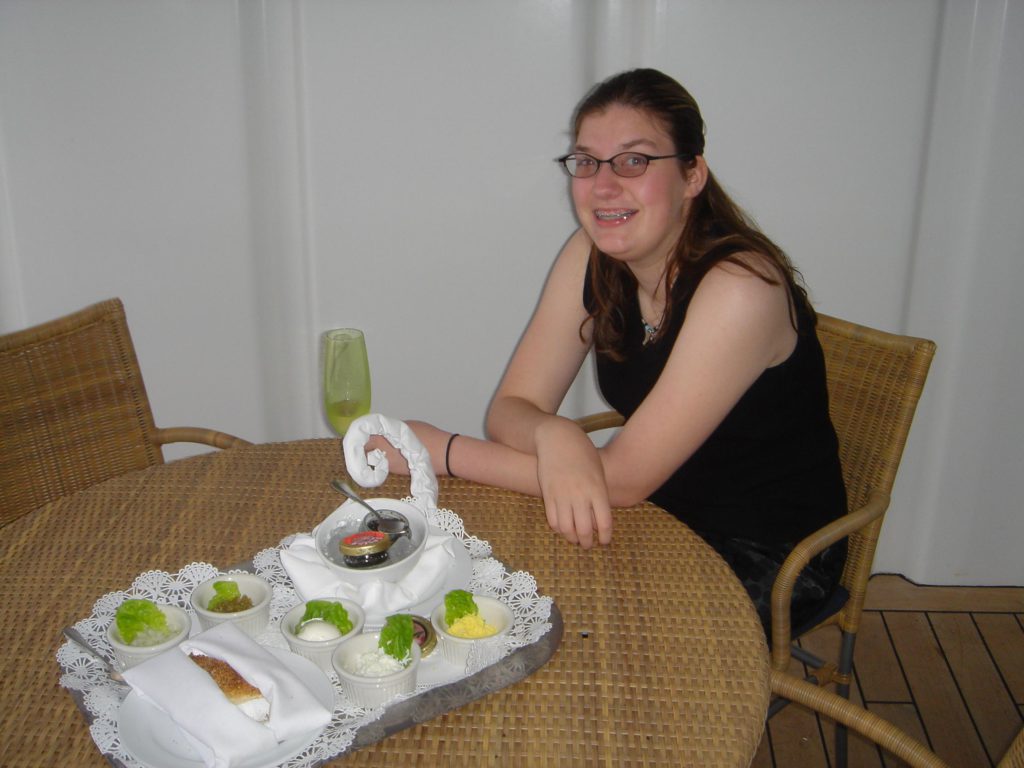
Back on the ship we had lunch in the dining room, and in the afternoon managed to order Sevruga caviar from the room service menu — a feat it appears no one else has ever accomplished on this ship.
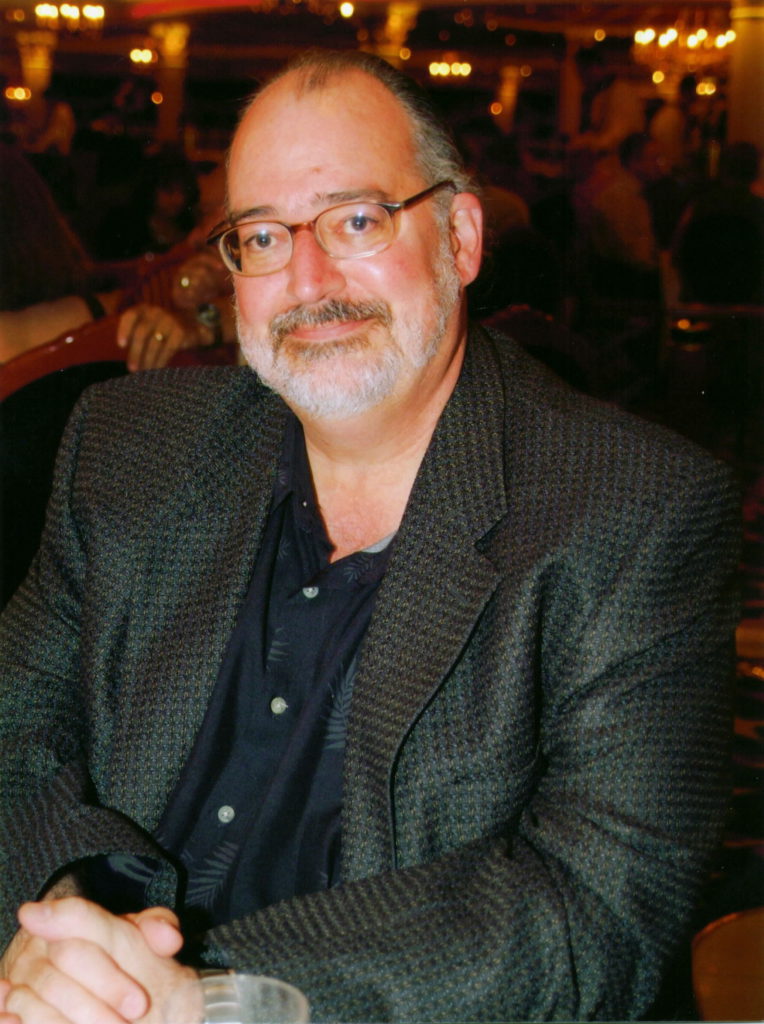
This was “formal” night, and three or four people actually got dressed up for dinner. We ate in the Liberty Dining room, which is decorate in an American Centennial motif that would have been almost tasteful if they’d stopped before the silver stars were applied to the draperies. And before the life size statue of Lincoln. And before the wall of American flag with strobing stars and water dripping down hundreds of strands of fishing line. And the mural of Mount Rushmore surrounded by fake rockwork. And the planter of plastic Hawaiian flowers. But otherwise it’s quite tasteful.
Lobster is the traditional cuisine of formal nights on cruise ships, and was the reason the concierge booked us into the dining room this night. And that’s what they called the things they served, all right. They certainly provided the waiter with plenty of exercise attempting to remove them from the shell. Even though they were just tails. And even though the tails had already been sliced in half. What attached the meat to the shell I don’t know, but the superglue manufacturers should check it out.
Our waiter shared with us the fact that next week he flies to Holland to commission the new Pride of Hawai’i, which he described as “elegantly decorated, not like this ship which was designed for Americans. ” Amen to that.
Kona, Hawai’i
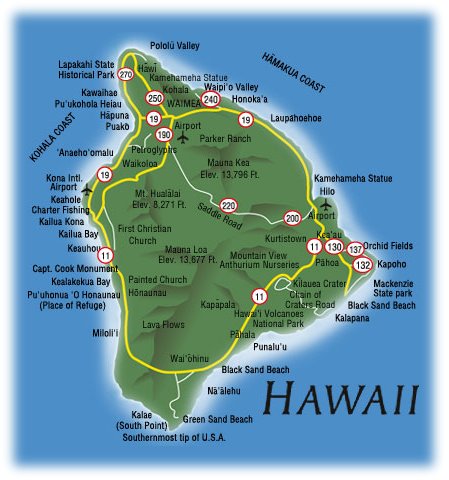
Wednesday, March 22, 2006
Our return to the big island of Hawai’i — this time on the other side — was much drier than our previous visit. It was cloudy most of the day, with occasional patches of sun, but no rain.
Kona is a small city that flows up the side of the cinder cone of one of the islands five cinder cones. The main street runs straight up the slope, terminating at a giant Lowes home improvement store, visible for miles.
There’s no harbor here, so a tender trip took us to the dock .
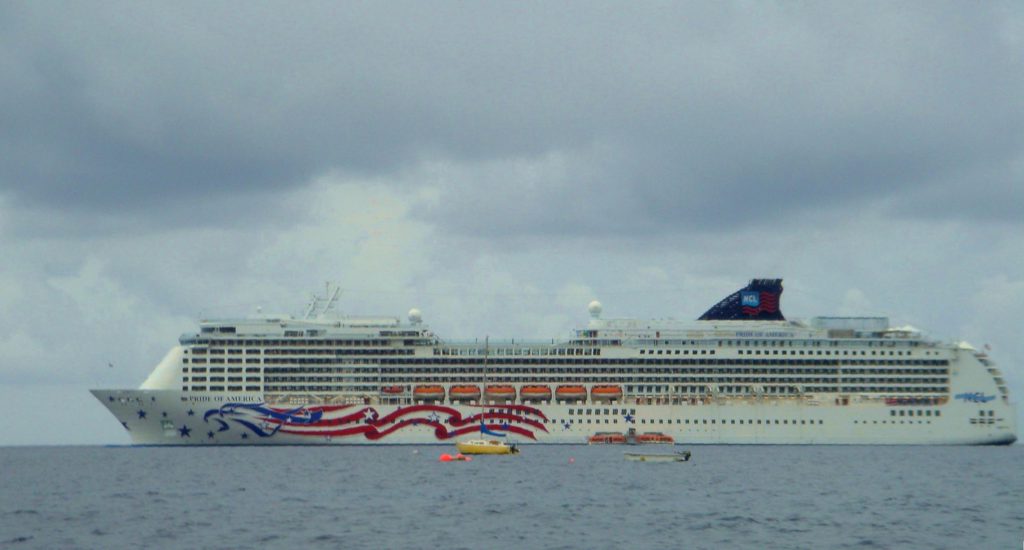
Linda and Pamela went on a short glass bottom boat ride, but Dani and I opted for the Captain Zodiac snorkel adventure. This was probably the best shore excursion we’ve ever been on.
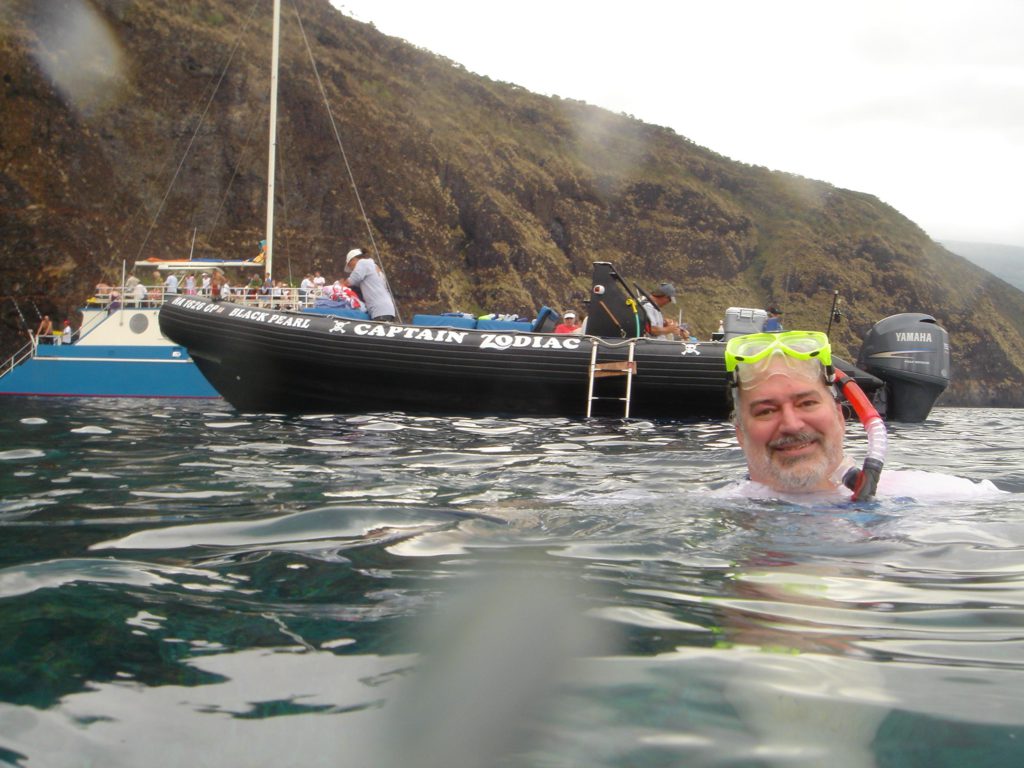
Captain Zodiac is the island’s oldest snorkel trip operator, founded in 1974. They own several pontoon rafts that seat 16 passengers and two crew. The passengers sit on the inflated sides of the raft and hang onto a rope for dear life. On our boat 12 of the 16 passengers were from Florida, as was the captain!
He was a knowledgeable and entertaining guide and his assistant was a slumming marine biologist. hey took us about 12 miles down the coast on a fun, sometimes bumpy ride that topped thirty and possible forty miles an our.
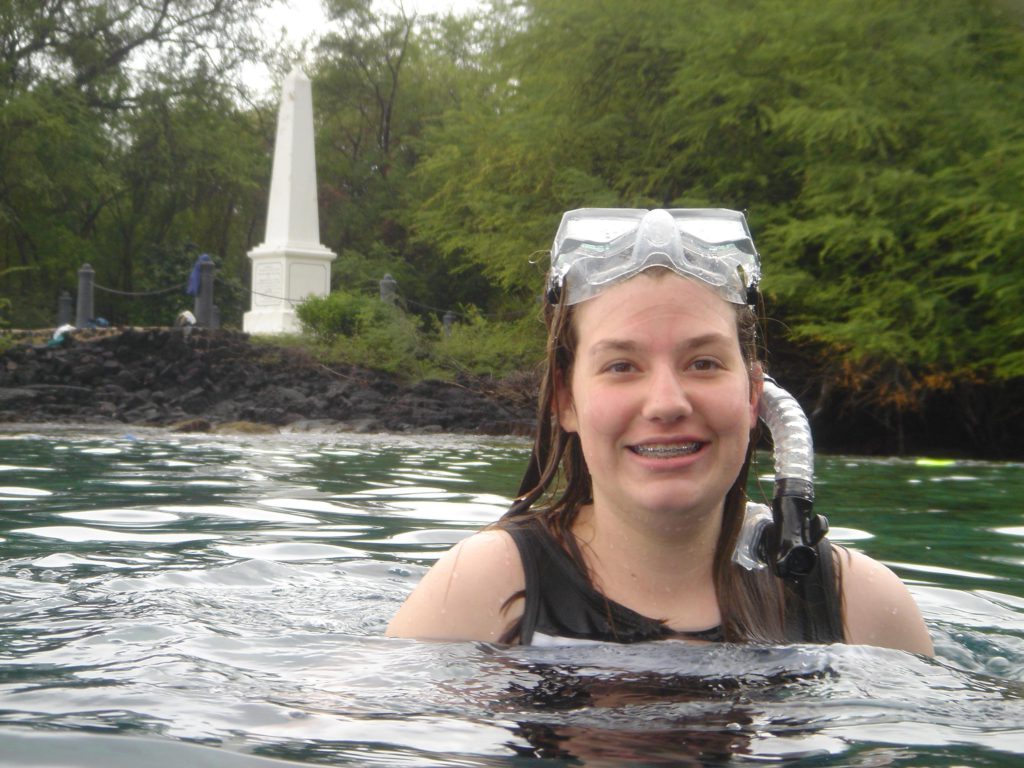
The cove is the place where Captain Cook finally wore out his welcome with the natives and was killed. A monument marks the spot.
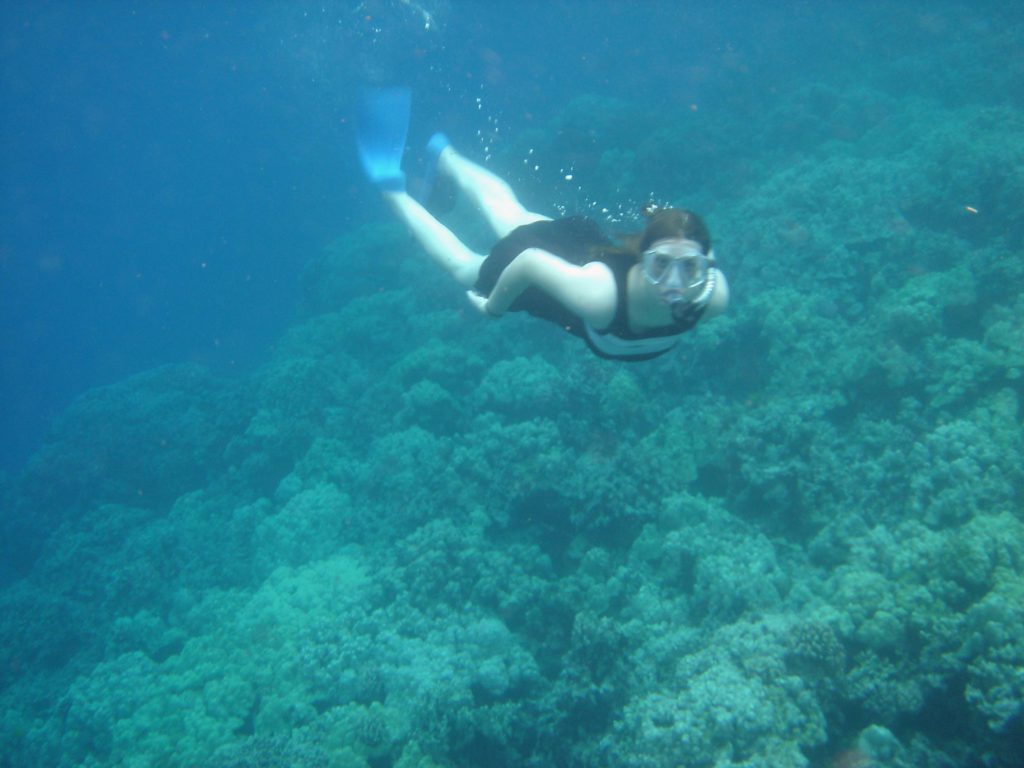
Snorkeling was fantastic: 73 degree water, no current, 150 foot visibility, and most of the reef between four and eight feet deep. Also, the fish were completely unafraid of snorkelers, which made it easy to see them up close.
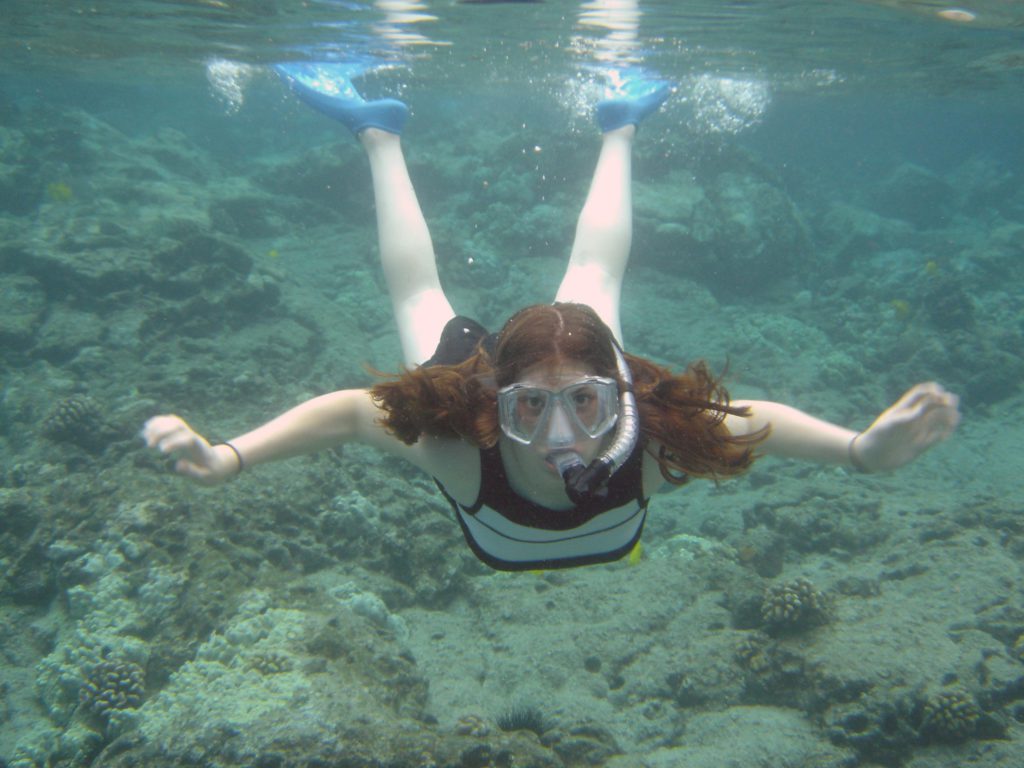
Fresh water flowing down from the island creates pockets of cool water — or is it warmer? Where the fresh water and salt water meet a strange effect occurs that is like looking through obscure shower door glass.
After an hour of delightful snorkeling we had some snacks and then headed back to the ship, exploring some lava tube openings in the volcanic coastline along the way. At one point we zipped between a tight gap in one of the promontories at top speed, which got a scream out of some of the passengers. Quite fun.
Back at the dock we did a bit of shopping in the ma and pa gift shops, and found some nice T-shirts at 5 for $20. Can’t beat that!
Back on the ship we had a late lunch at the Cadillac Diner, a 50’s themed coffee shop with posters for Elvis goes Hawaiian movies. Good theming and excellent food.
At 2:30 they set up the much anticipated chocolate buffet in the main dining room. Typical of the disorganized management of the ship in general there was a 30 minute queue. This was caused because there were two identical buffets where items repeated at least three time, instead of six separate buffets. The selection was heavy on cakes, with no fine chocolates at all. That didn’t stop the passengers from piling their plates four inches high, edge to edge.
Dinner was back at Jefferson’s Bistro, definitely the best restaurant on the ship. Dani and I shared a “Fire Star”, a peculiar contraption that looks like a torture device, with chunks of chicken, lamb and beef shoved onto nails protruding from a mace-like thing hanging from a hook. The attraction, of course, is that it is set on fire at the table. Serious fire, with a three foot column of flame briefly. An odd thing for a continental bistro, but tasty.
Nawiliwili, Kaua’i
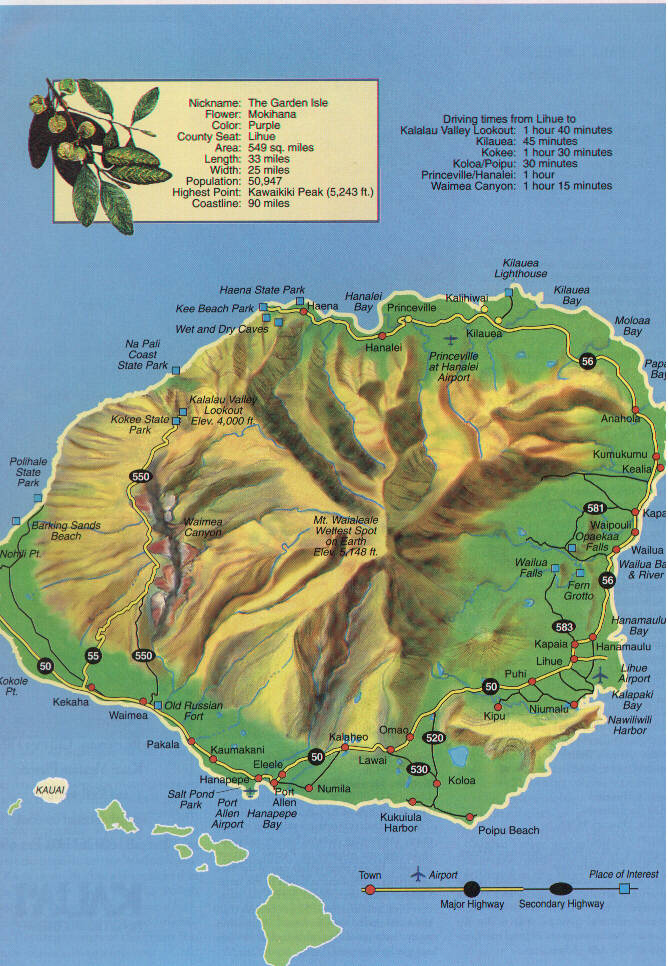
Thursday, March 23, 2006
Dani and I had a great breakfast in the oddly deserted Cadillac Diner. I had that Hawaiian favorite, Spam and eggs. Apparently Hawaii consumes more Spam than anywhere else.
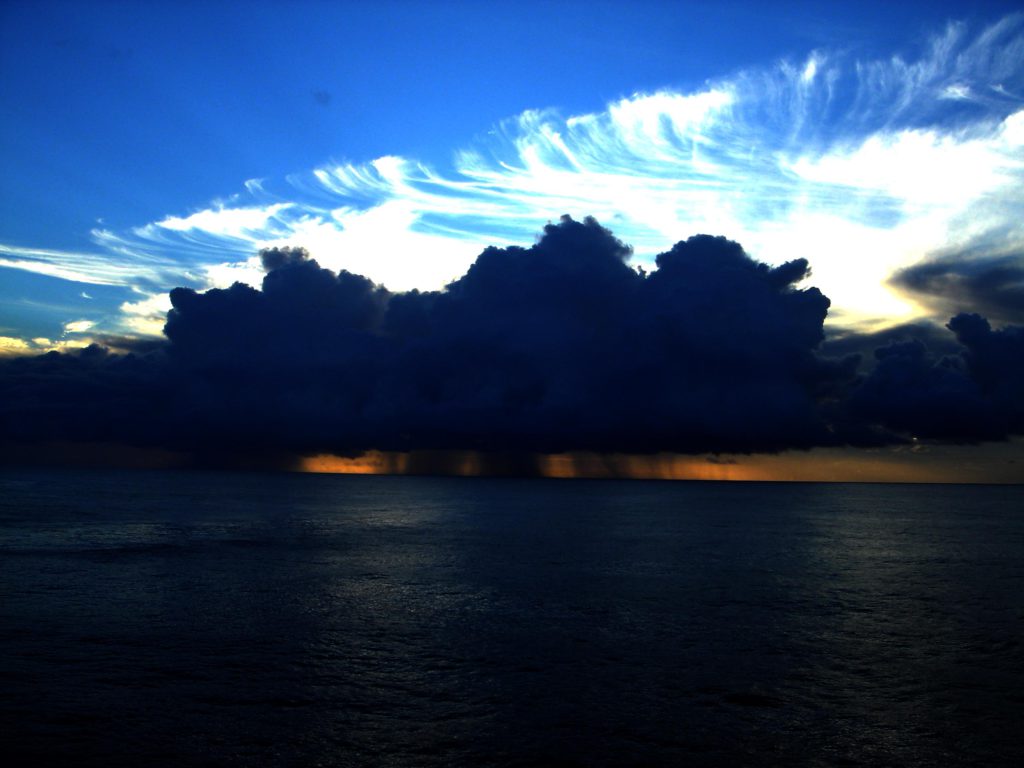
We had a 7:40 meeting for our shore excursion, but the captain announced they were “having some trouble with our redundant systems. ” Translation, the ship is broken and we’re not in port yet. Much ominous vibrating and shaking followed. While we waited we spotted humpback whales blowing right off the port side of the ship, within fifty feet. There seemed to be a whole family of them.
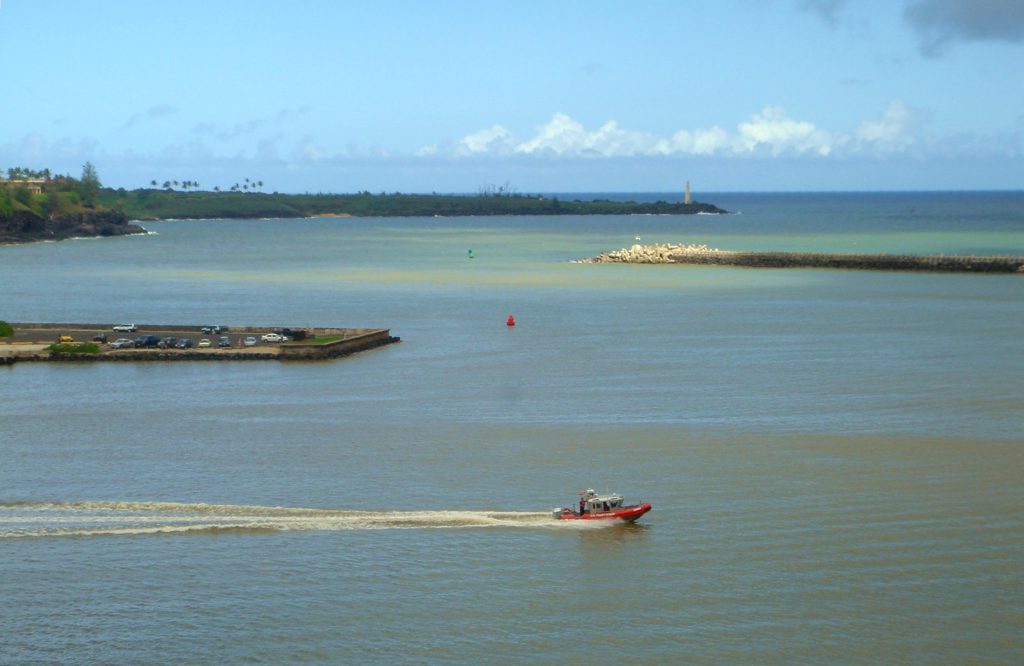
We finally docked after 9am, pushed into port by tugs.
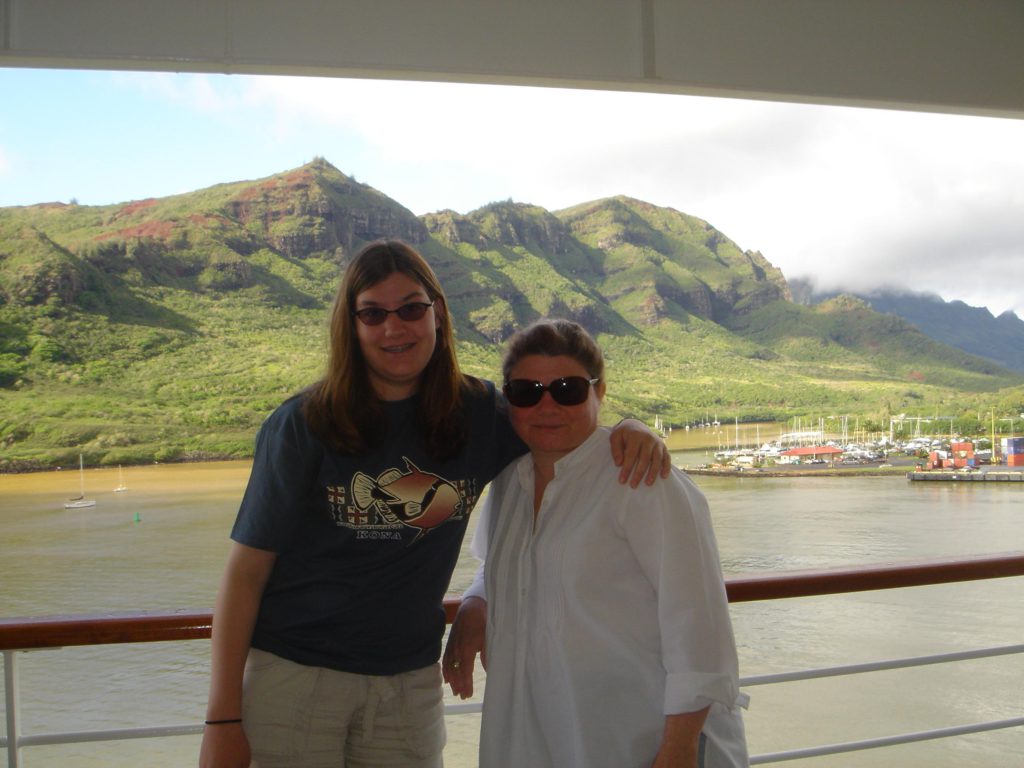
Today’s tour was with Tom the Control Freak. This was probably the worst shore excursion ever. Tom had many rules and procedures, and although he had lots of information (delivered pretty much nonstop over a seven hour period) he treated us with condescension throughout. An example of one of Tom’s rules was the way the bus was to be unloaded. One side first, alternating at each stop. This meant that the second side to go was unloaded back to front, incredibly inefficient, since you didn’t know when the people behind you had gone. In short, Tom was a controlling moron. Let’s just say we didn’t hit it off.
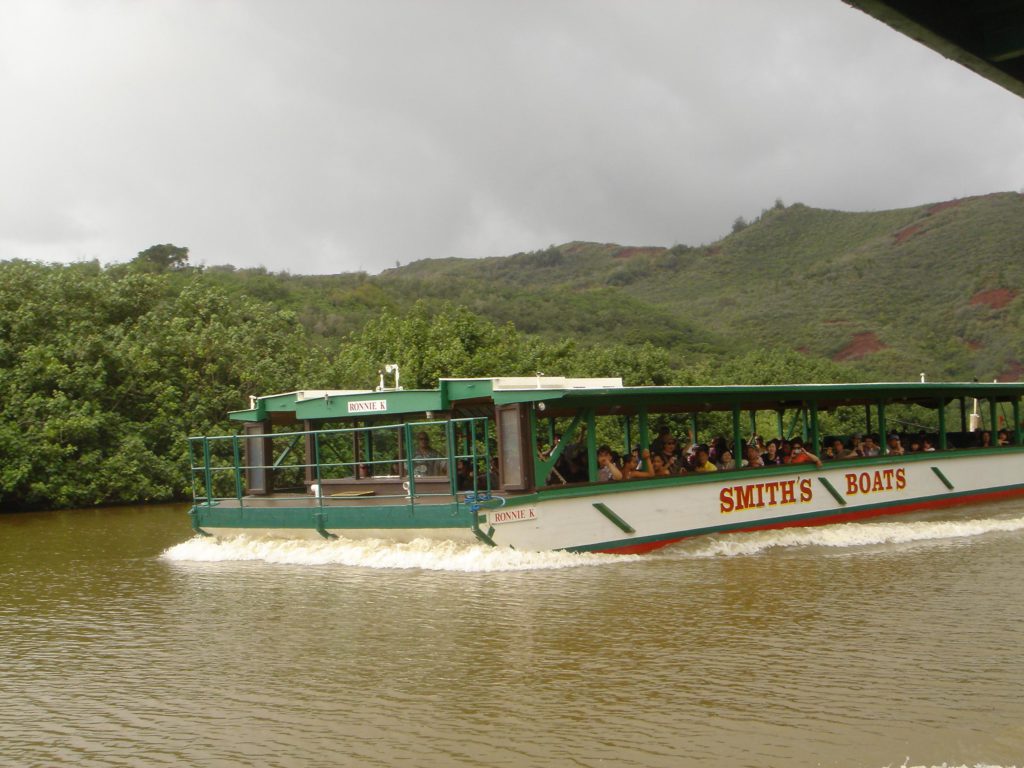
Our first stop was at the Wailua River where we boarded a barge pushed by an incredibly polluting diesel motor to travel upstream to the Fern Grotto. Along the way a collection of Hawaiian “entertainers” performed. When I use the word “entertainers” read “torturers”. The lead dungeon master was a 95 year old man who simply didn’t understand that he couldn’t sing. He was accompanied by a number of “musicians” When I use the word “musician” read “person capable of making loud noises”. Chief among these was a person playing an instrument that sounded like a piece of clothes line tied to a garbage can. (We later discovered that this instrument was, in fact, a piece of clothesline tied to a garbage can. )
After a number of truly horrendous offerings they were joined by hula dancers who flagellated themselves with split bamboo rods in time with the music. If they’d offered me one of the rods I would have been happy to beat them much harder. Next we were forced to dance the hula along with them. This is the point at which I adopted a Gandhi-like posture and embarked on a program of passive resistance. Ignoring them for the remainder of the trip was fairly successful in reducing the journey to only incredibly annoying.
The Fern Grotto is actually a pretty place, at least it would be without several busloads of tourists. The island of Kaua’i received 107 inches of rain in four days last week, and the devastation was evident in washed out trail, piles of debris and mud everywhere. It began to rain while we were there, and the clear waterfall at the grotto soon turned to mud.
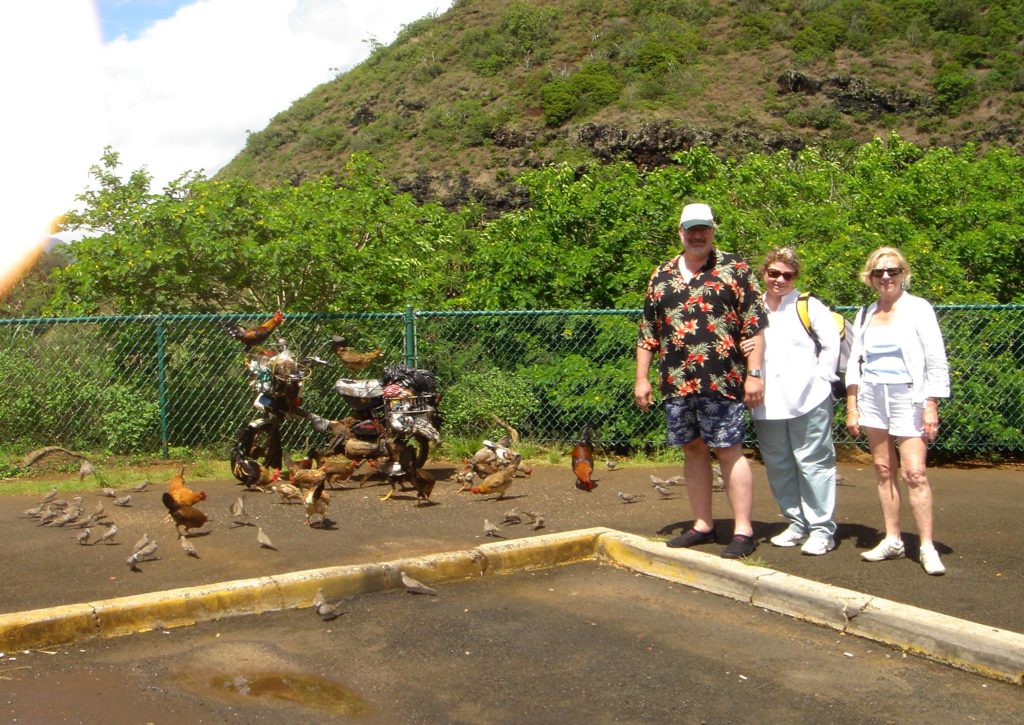
Our next stop was at another waterfall where we saw some of the many free range chickens(!) that wander the island. Apparently descended form jungle fowl brought by the original Polynesian settlers, these birds roam the island, and are too tough to be of much culinary interest.
We had lunch at an adjunct to a local hotel that was undoubtedly the low bidder. The less said about lunch the better. Then it was time for the hour and forty minute drive to Waimea Canyon.
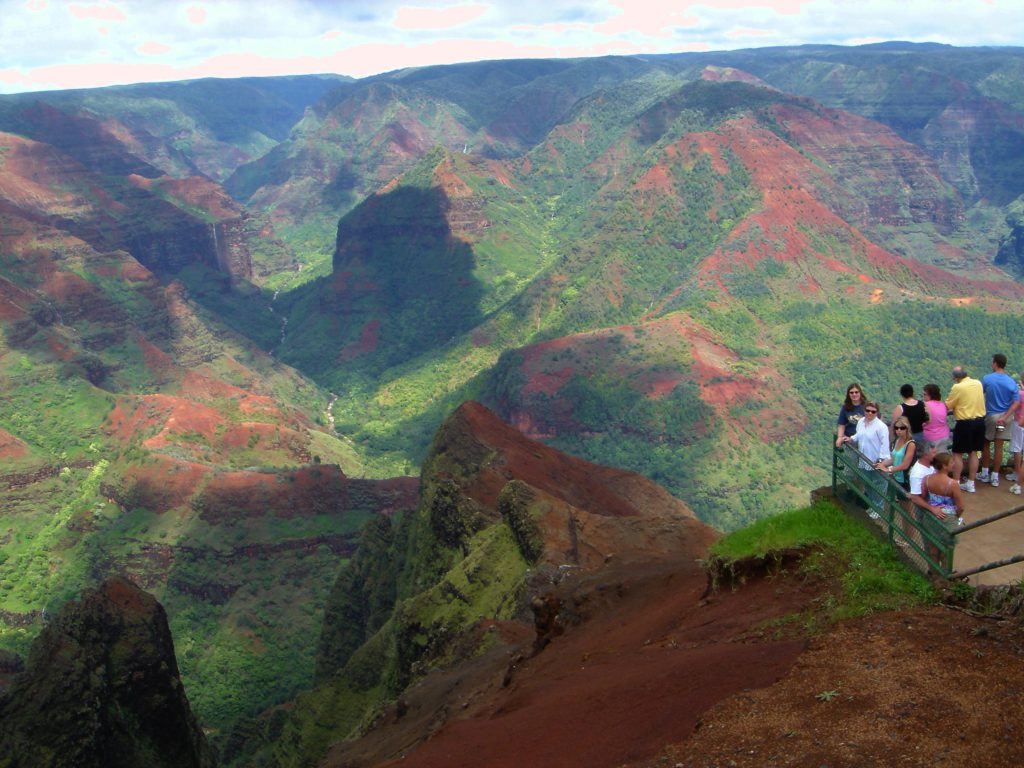
Kaua’i is easily the most scenic of the islands. It is much older than the other inhabited islands, and no longer resembles a volcano. There is read dirt everywhere and the hillsides are quite verdant. There is a pronounced demarcation line between the wet eastern side of the island and the dry western side. Rainfall in the east is 400 inches a year, and in the west only ten or twenty. This demarcation line is so pronounced that it essentially runs through the middle of an intersection in the town of Koloa.
In 1992 Kaua’i was destroyed by Hurricane Iniki, which had winds of well over 200 miles per hour. Every tree on the island was completely stripped of leaves, and most structures were damaged or destroyed. The island’s sugar cane and cattle were already in decline, and Iniki wiped out tourism. So Kaua’i went into a period of decline from which it is only now emerging. Now its sole business is essentially tourism.
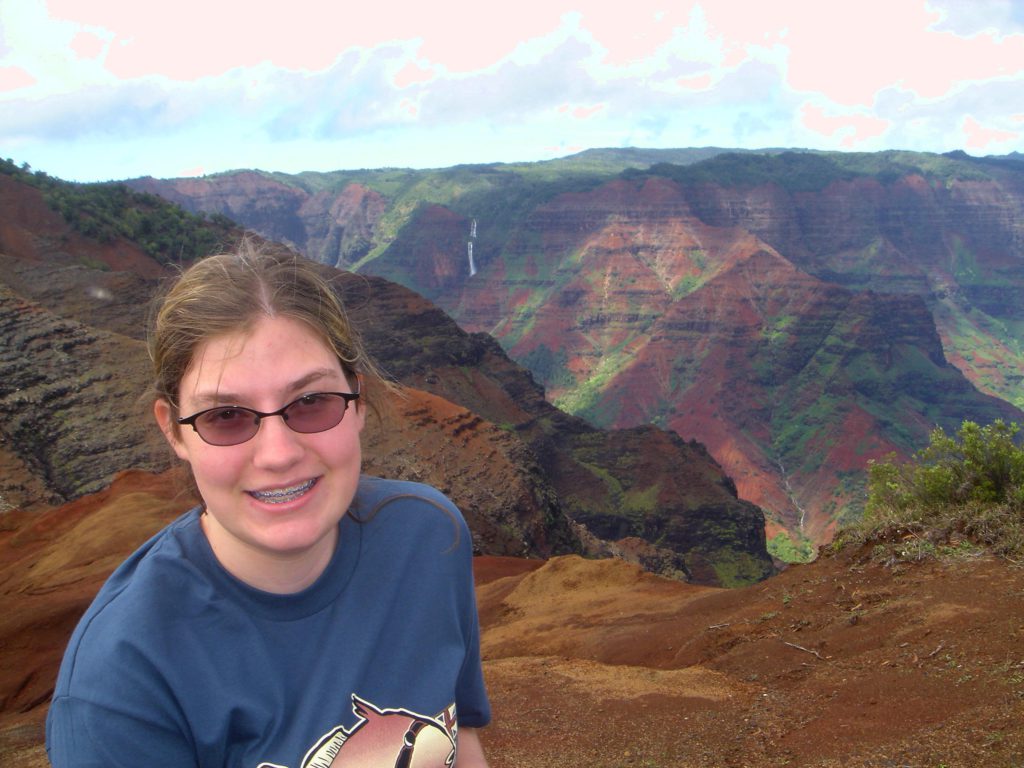
Unfortunately the development on most of the island is shoddy. The roads are lined with dumpy buildings that owe more to strip mall architecture than resort or small town ambience. We drove around most of the east, south and west sides of the island, and saw little to attract us. The only exception is the resort community of Po’ipu in the south, where there are some upscale homes and a Hyatt Regency. There are some movie stars who live on the north side, so perhaps it’s nicer there, too.
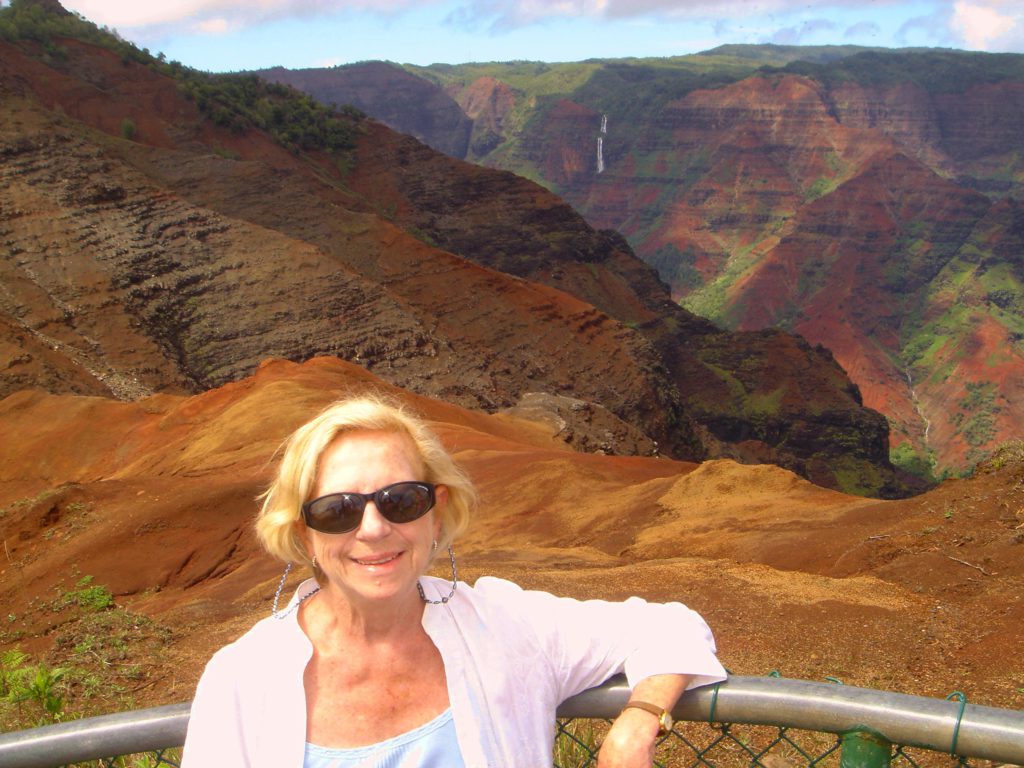
In mid-afternoon we reached Waimea Canyon, and it certainly was spectacular. It looks much like the grand canyon, but is much more colorful because it is more verdant. It’s surprising how similar they look, given that this canyon was formed do to a volcanic collapse rather than sedimentary deposition and erosion.
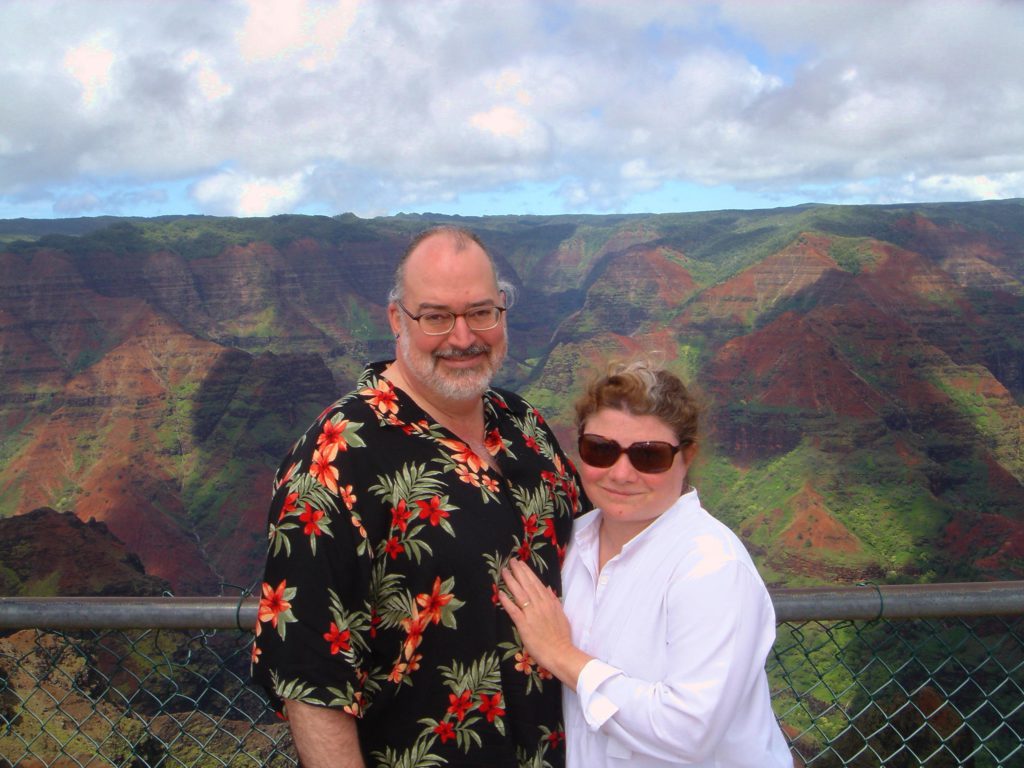
We arrived back at the ship around 6pm, having been forced to say Humuhumunukunukuapoa’a over and over for the last two hours like a third grade class of misbehaving children. After stiffing Tom the Control Freak we reboarded the ship and had appetizers in Pink’s Champagne bar, followed by dinner at the lazy J Steakhouse. Although the restaurant was noisy, the steaks were quite good, as were the accompaniments.
Of all the islands, Kaua’i is the one that looks like Hawai’i. It doesn’t have the urban sprawl of Oahu, the suburban sprawl of Maui, or the barrenness of the big island. But I doubt I’d come back. Once you’ve seen the sights, there’s nothing to do. At least at the Grand Canyon you can stay at the rim, sit on your porch, and watch the changing light and weather conditions. Here there’s nothing once you get to the spectacular view except a parking lot.
Nawiliwili, Kaua’i
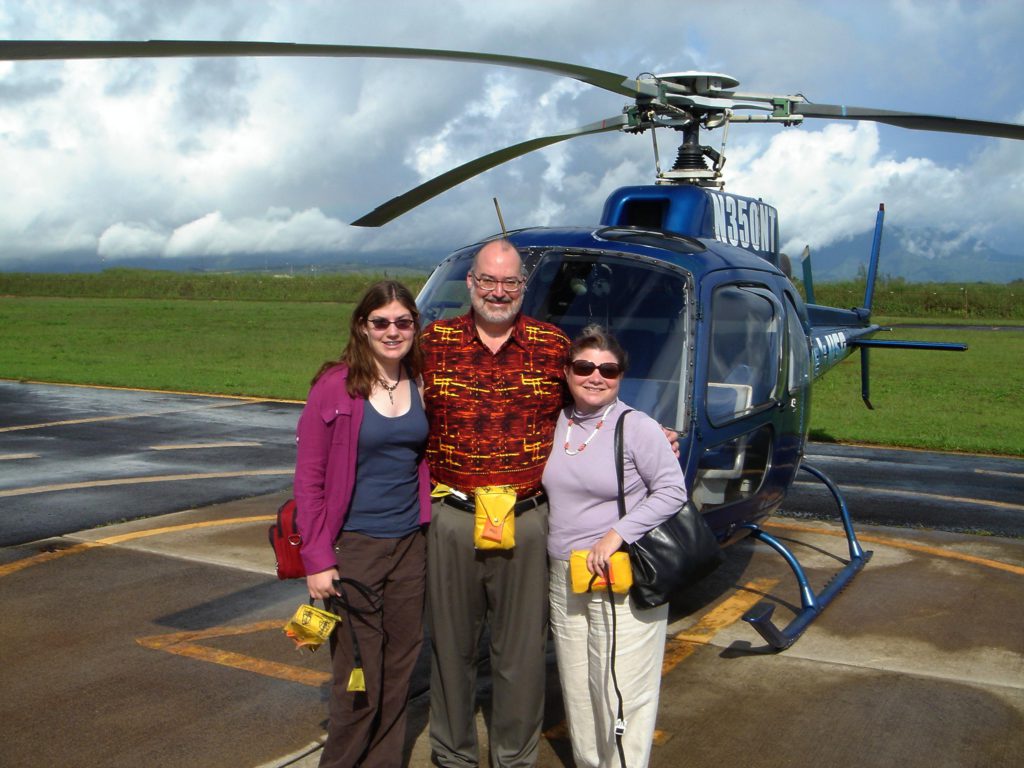
Friday, March 24, 2006
We saved the best for last. Although a morning thunderclap ushered in a squall, the weather cooperated for our helicopter ride around Kaua’i.
This is the thing to do! For $199 each (plus a premium for fat people like me) you get a half hour or more of the most spectacular scenery you’ll ever see.
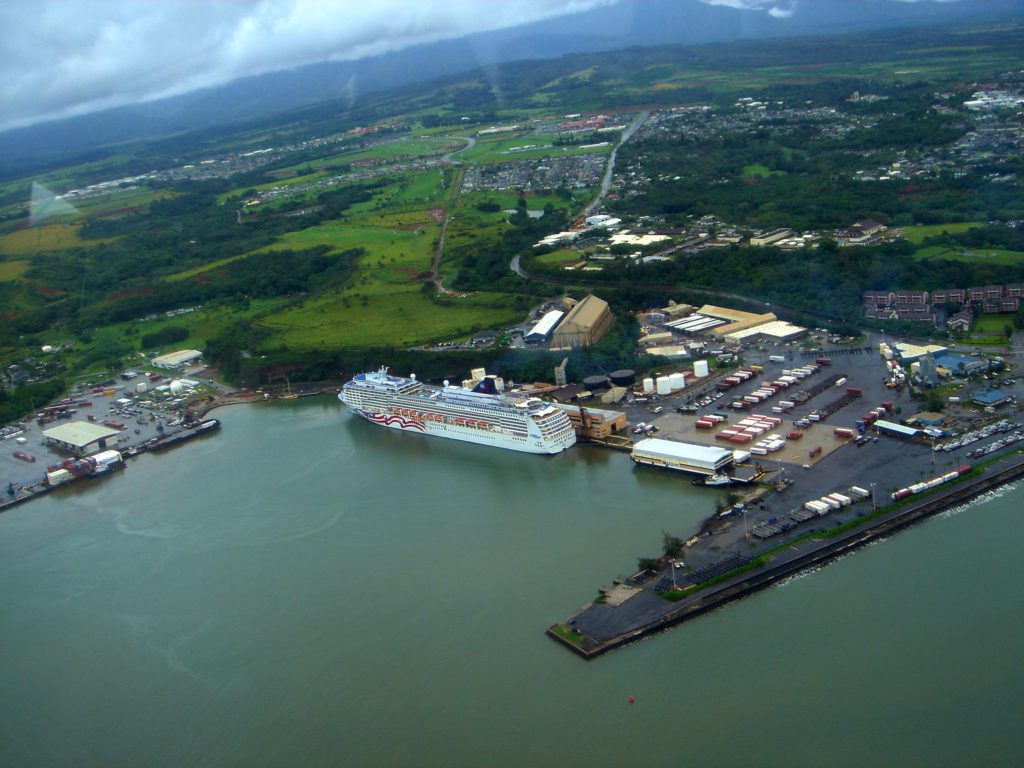
I had never ridden in a helicopter before, but Linda and Dani had in Alaska, and still rave about it as the highlight of that trip. It is, indeed, like being lifted in someone’s hand. There are none of the feelings one associates with flying in a plane.
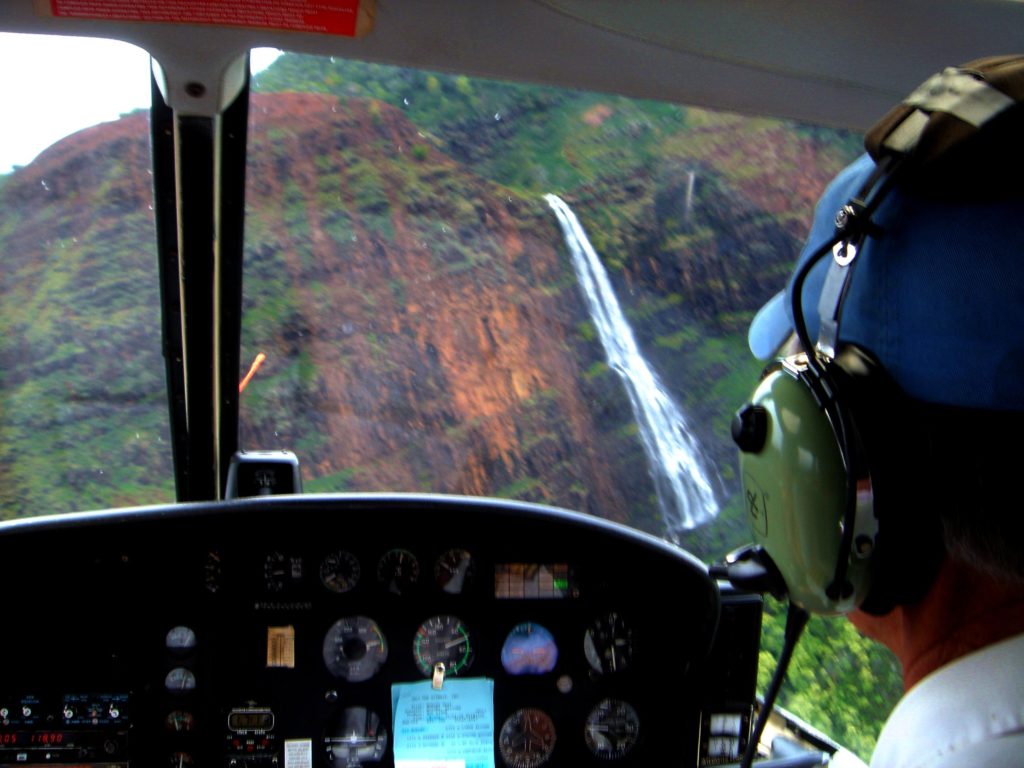
Our pilot skirted the bottoms of rain clouds and squeezed over mountain passes, passing over the same terrain it took us hours to negotiate yesterday. Within minutes we were in Waimea Canyon, and able to explore nooks and crannies far beyond the view from the lookout point. Fresh rain on the mountain had created even more waterfalls during the night.
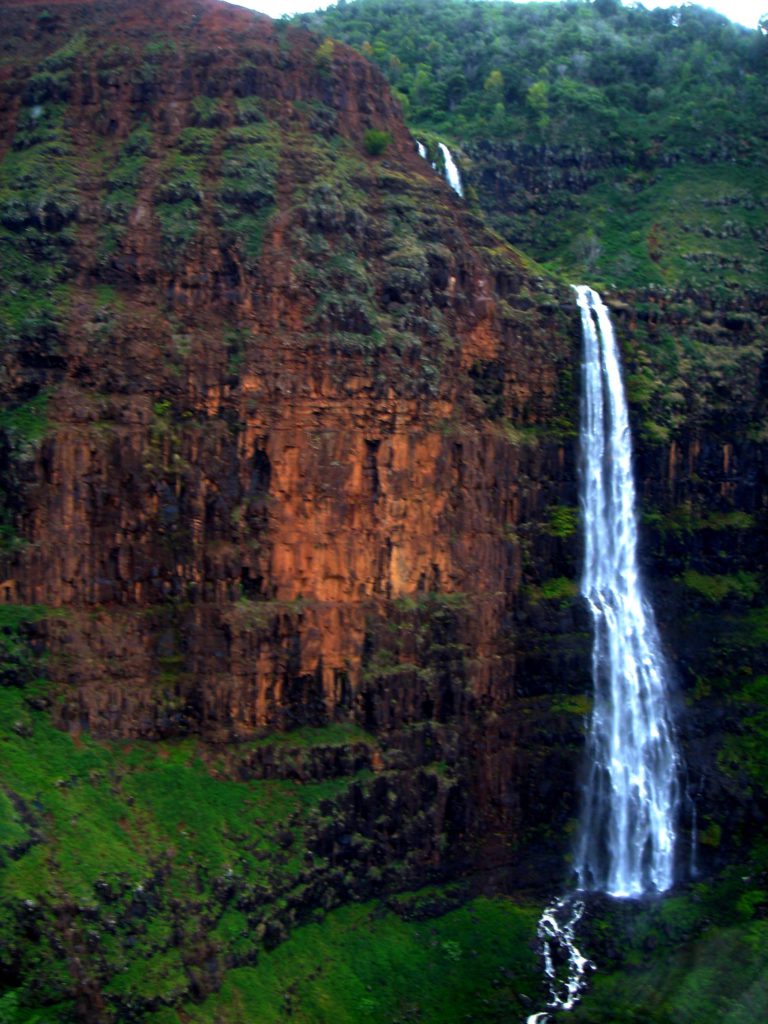
We climbed out of the canyon and continued up to the inaccessible Napali Coast on the Northeast shore of Kaua’i. No roads go here, and it’s a rugged day’s hike from the nearest one. The steep cliffs make it equally inaccessible from the sea. Caves hollowed out by the surf interconnect in mysterious ways, and the white sand beaches come and go with the seasons.
Climbing over the mountain we saw hundreds more waterfalls, and passed over the fern grotto and river we saw yesterday, then returned to the helipad at Kaua’i airport.
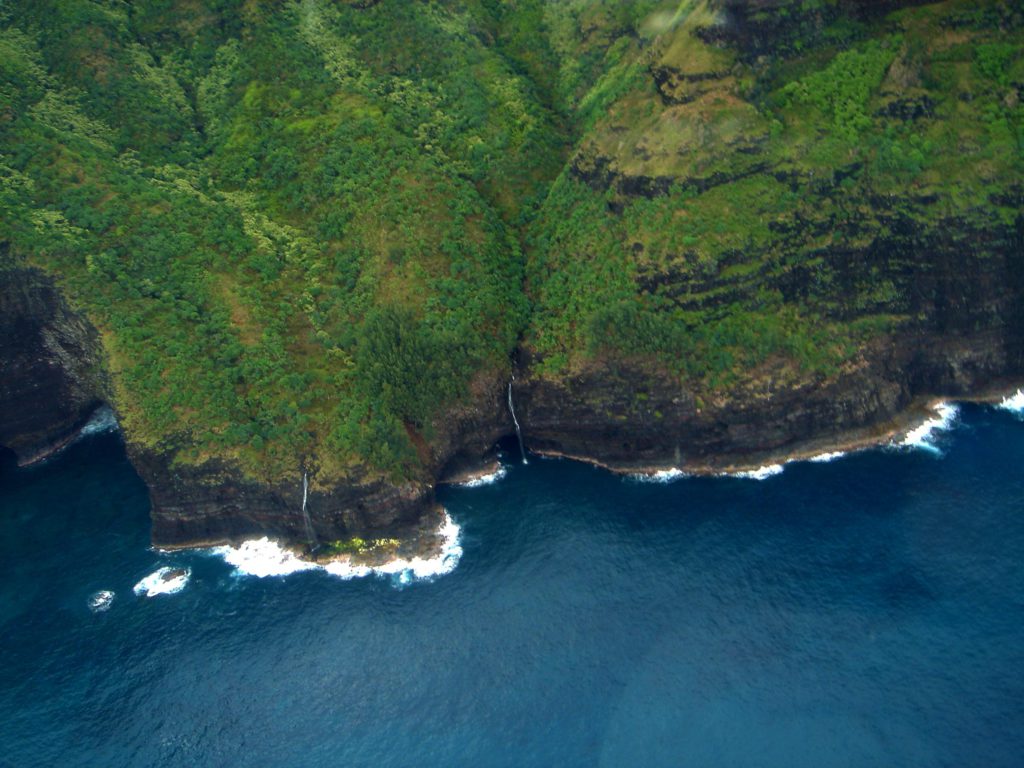
Since they do a very precise job of weight balancing, Pamela was on a second chopper, and we were proud to see her look of triumph as she disembarked, given her fear of heights!
This flight is really the reason to come to Hawai’i, and shouldn’t be missed.
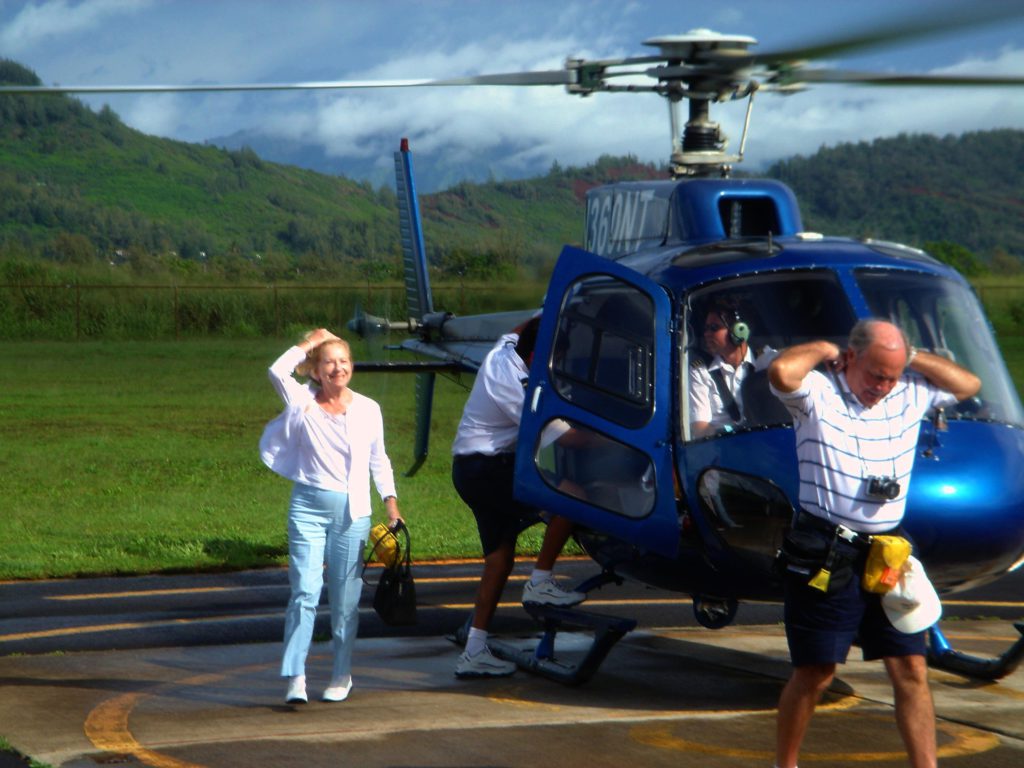
We left port at 2pm and sailed northward around the island, passing the Napali coast, where there were many pods of whales blowing. I had read on the Internet a tip that there was a great view from the ship’s Italian restaurant, Little Italy at 5;30pm, so that’s when we had made our reservation. This proved to be the case, although as it happed the view from our balcony was the same. Quite amazing.
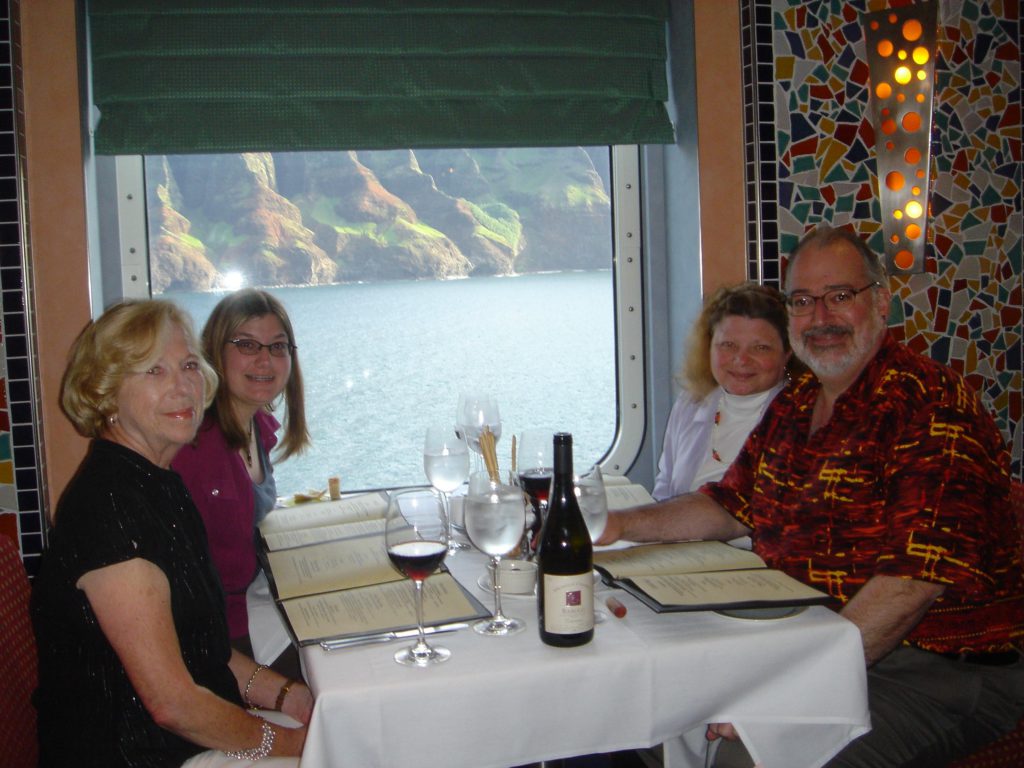
Diamond Head, O’ahu
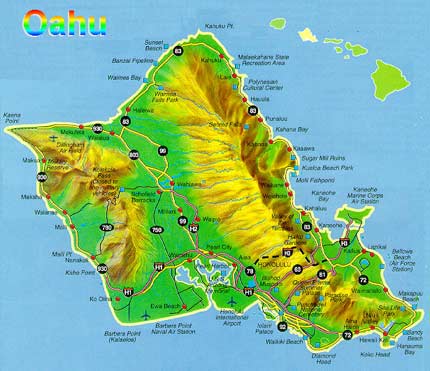
Saturday, March 25, 2006
Today is our 28th anniversary!
After a leisurely breakfast in the Skyline Dining Room we disembarked, collected our luggage and caught a cab for the Kahala Mandarin Oriental Hotel. The Honolulu cruise terminal is the easiest to get in and out of that we’ve experienced, particularly since we didn’t need to clear customs.
Our hotel on the southern coast of O’ahu, as the base of Diamond Head. The volcaono’s slopes are covered with incredibly expensive homes. Houses on small lots near the hotel go for as much as $50 Million.
The hotel isn’t really a Mandarin anymore. Apparently their contract expired about three weeks ago. This doesn’t surprise me, as the 45 year old building doesn’t seem quite up to the level of perfection demanded by the Mandarin, although the rooms are quite nice and the location can’t be beat.
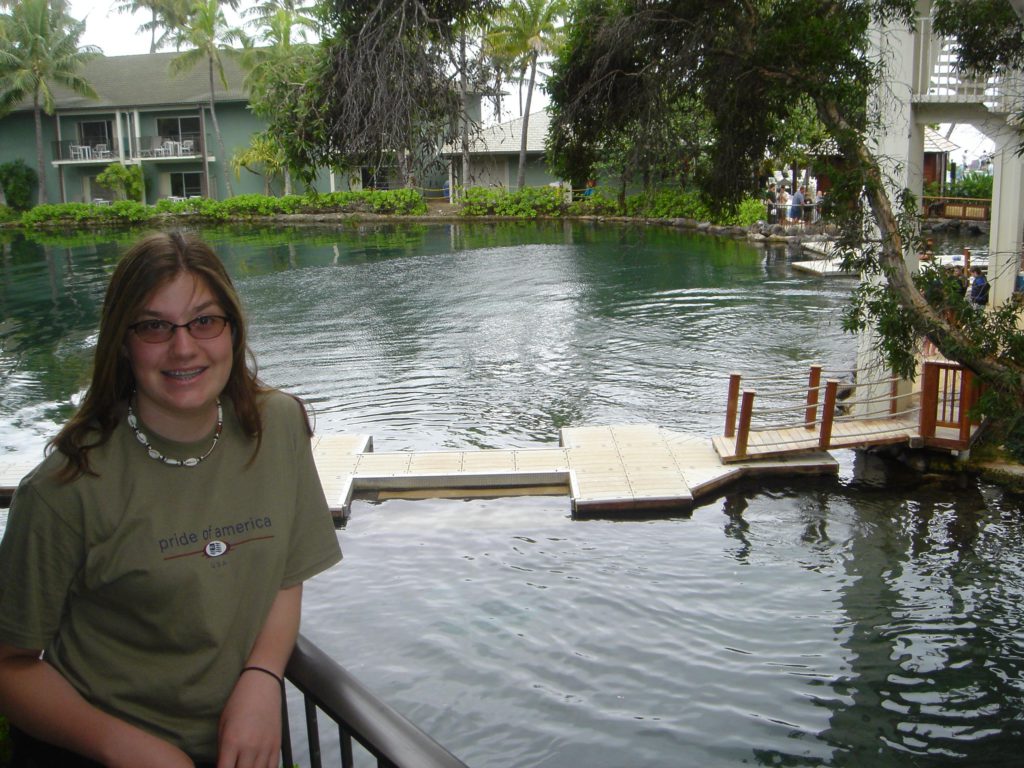
Our room overlooks the dolphin lagoon, where six bottlenose dolphins swim with guests–for a price.
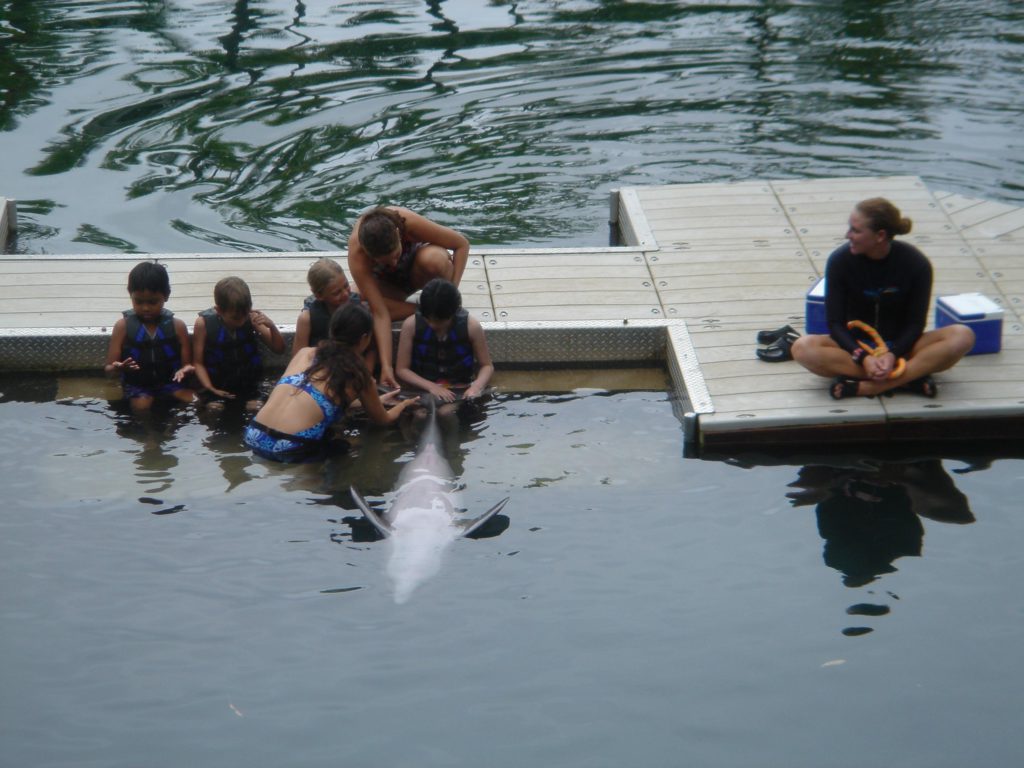
Since our rooms weren’t ready we checked our bags and took the hotel shuttle, first to the Kahala Mall, and then to Waikiki, where we had a very authentic Japanese lunch at Kyo-ya.
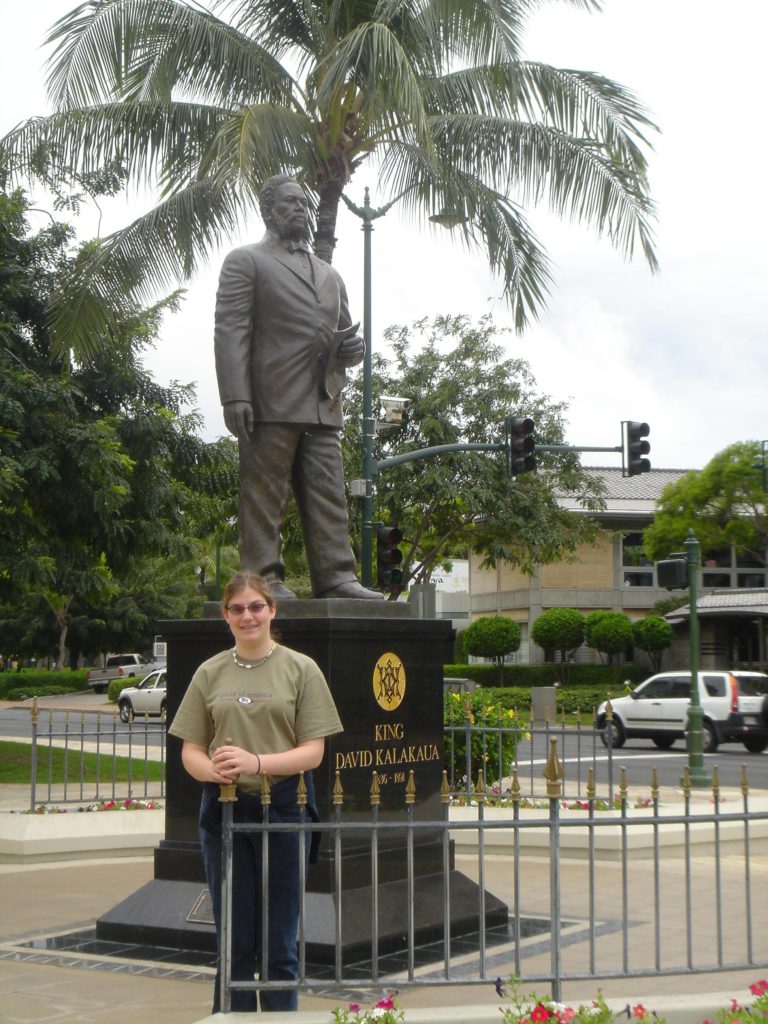
After a relaxing afternoon Linda and I caught a cab to Chef Mavro’s, who is regarded as one of the top ten chefs in the world. It seemed strange to be dining in a really nice restaurant wearing a Hawaiian shirt! One interesting aspect of the menu is that there is no wine list. Each food has been matched with a specific wine. At the waitress’ suggestion, one of us had the four course tasting menu, and the other had the six course, which gave us an opportunity to sample ten different dishes and wines. Although eight of the wines were ones it would never have occurred to me to order, they were all superb matches with the food. Each course was a small serving with a number of different flavor on the plate. Two of the courses stood out as among the best I’ve tasted. The first was lobster with a delicate reduction infused with fennel. The second was goat’s cheese mixed with lemon peel and herbs served on a sliver of toasted brioche and poached apple.
Diamond Head, O’ahu
Sunday, March 26, 2006
It was rainy today, a good day for relaxing at the hotel and watching dolphins. Brunch was at Hoku’s, one of the hotel’s three restaurants, and voted best in Hawaii by Food & Wine magazine. It was the best brunch buffet I’ve seen, with lobster, crab, sushi, sashimi and a chocolate fountain. We had a quite afternoon, and a lovely dinner downstairs at the Plumeria Beach Cafe which was open air. It looked a bit more like a coffee shop, and did offer a few sandwiches, but also had some excellent salads and fish dishes.
Diamond Head, O’ahu
Monday, March 27, 2006
Another lazy (and still rainy) day. This is the rainiest March in Oahu’s history. It makes us realize how lucky we were with the weather on the cruise. The golf course looks like a lake! We had a terrific, multi-course, Japanese businessman’s lunch at another of the hotel’s restaurants, Tokyo Tokyo, then it was time to head to the airport for the redeye flight home.
It’s been a pleasant trip, with Hawai’i just about as we expected: scenic but not life-changing.
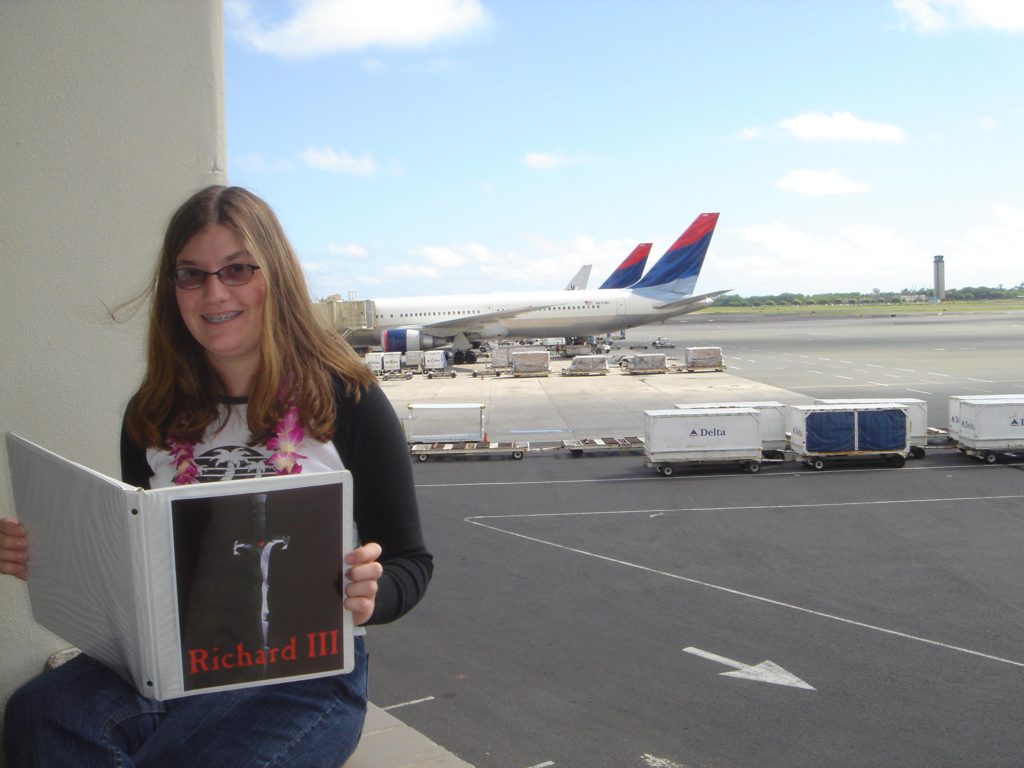
Rating the mid-level cruise lines
| NCL | Royal Caribbean | Princess | Disney | |
| Food | A- | C | B | B |
| Service | B+ | B | A- | B+ |
| Ship Design | C | A- | A- | B+ |
| Management & Policies | C- | B+ | A- | A- |
| Cabins | C | A- | B+ | B+ |
| Suite Amenities | B- | B+ | A- | ? |
| Entertainment | B- | A- | B+ | A- |
| Internet Policies | B- | B+ | A- | ? |
Ships included in the rating:
NCL: Norway, Norwegian Dream, Pride of America
Royal Caribbean: Voyager of the Seas, Explorer of the Seas
Princess: Coral (Twice), Star, Grand, Diamond
Disney: Magic
Ships that would have almost all A’s, but are more expensive lines:
Regent: Voyager
Oceania: Marina, Insignia (Twice)
Ships that would receive mostly F’s:
Costa: Victoria
Premier Cruise Lines: Big Red Boat
Great Years, Great Wines at Victoria & Albert’s
December 16, 2005
Ron and Bev Siegel invited us to dinner and tasting at Victoria & Albert’s in Disney’s Grand Floridian. Unfortunately my Dad was in town so we couldn’t both go. Linda drew the short straw. Joining us were John and Amy from Brio and Gary and Trish.
The original plan was to do another Tasting of the Century, but neither Ron nor I could find any wines from the 1910s. So we ended up with a collection of great wines from great years. We also planned to serve the wines in pairs, but Israel kindly provided enough Riedel crystal that we always had four to six wines on the table at a time.
Chef Scott had the night off, but Chef Aimee provided us with great food, and was very generous with both the Osetra and the white truffles.
Our six hours at table sped by and V&A outdid themselves on both food and service.
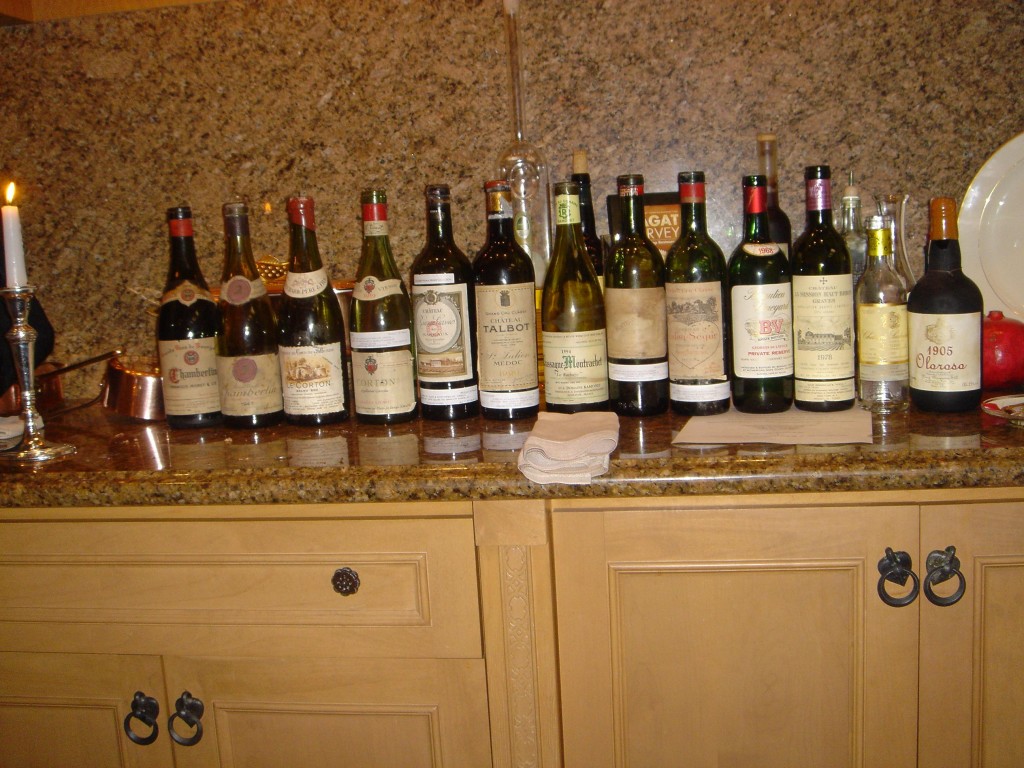
The Line Up |
|
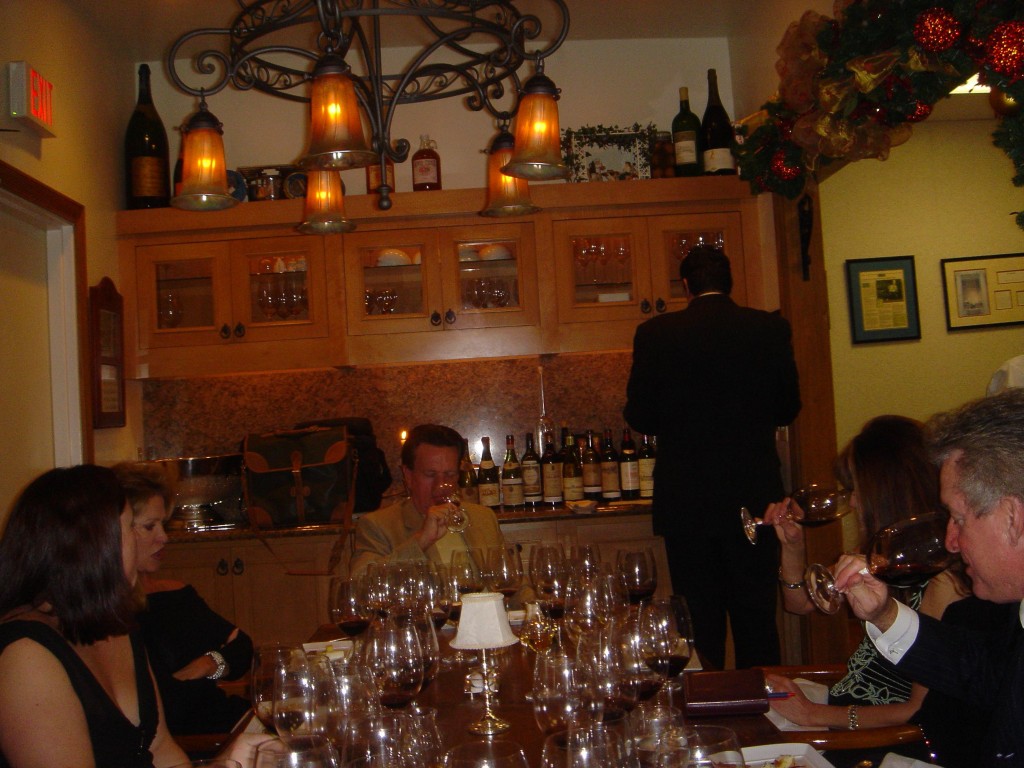
Chef’s table (is the room listing?) |
|
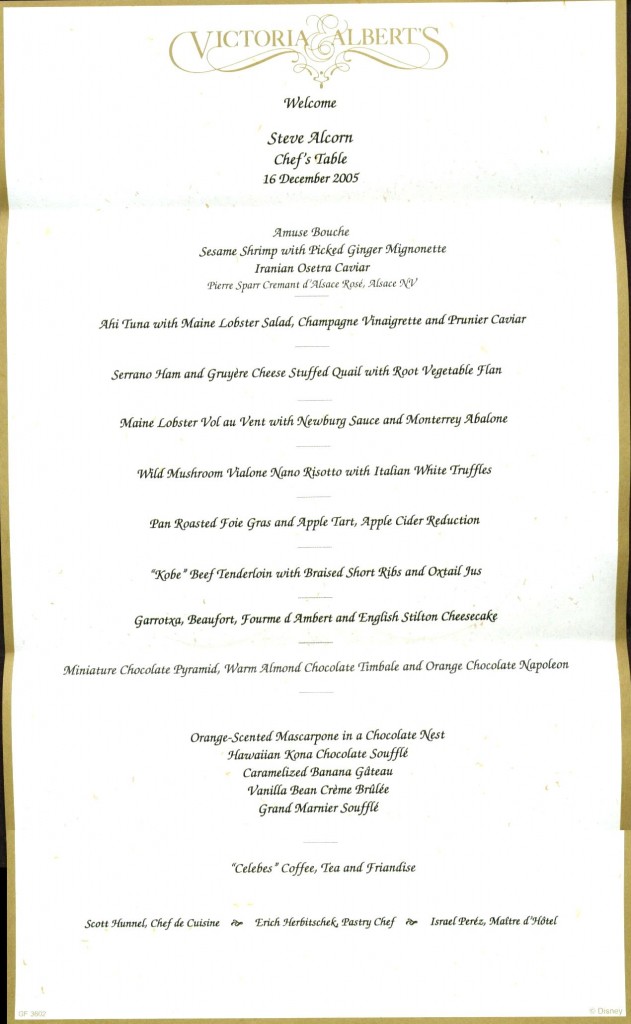
Menu |
Tasting Notes
| 1995 | Taittanger Comtes Champagne |
Youthful color, clean citrus and pear nose, nice effervescence, good match with the caviar. | 93 points | |||||
| 1929 | Chambertin Francois Moret & cie. |
Dark garnet, sour cherries all the way through, developing some sweetness after 20 minutes, also lots of mineral in the nose, with wood showing up later, iron in the mouth, leather finish | 98 points | |||||
| 1947 | Chambertin Jaboulet |
Medium brown, sweet, earthy, leather and bacon fat in the nose, medium body, a floral, woody finish | 96 points | |||||
| 1934 | Corton Bouchard Pere et Fils. |
Good color, a strong, somewhat peculiar nose redolent of iron and mushrooms, soft on the palate, with roses, vanilla, wood and pine in the finish | 91 points | |||||
| 1959 | Corton Charles Vienot |
Good color, very balanced and fruity, mint, youthful, cinnamon and vanilla in the finish | 94 points | |||||
| 1994 | Chassagne Montrachet “Les Ruchottes” Ramonet |
Butter, vanilla, long, a perfect match for lobster and the risotto | 97 points | |||||
| 1921 | Ch. Rauzan Gassies Margaux |
Dark brown/garnet, wax, mint and intense wood nose, long, vanilla, very young and feminine, fresh sawn wood developed in the nose after 30 minutes | 95 points | |||||
| 1929 | Ch. Talbot St. Julian |
Great color, looks like a wine from the 70s. Tight nose. Youthful tasting but thin. Wood and chalk in the finish | 92 points | |||||
| 1997 | Ch. Suidiraut Sauternes |
Great color, figs and sugar in the nose, white raisins, not Yquem but nice | 93 points | |||||
| 1959 | Ch. Margaux | This was a very mysterious wine. It’s very famous, yet I’ve had it three times and never been impressed. This one was unlike any Margaux, with green wood and chalk coming though an otherwise tight nose. Flavors of green olives, with a bitter, hard-edged finish. The label was almost faded to nothing, yet the fill was superb. Was this really 59 Margaux? | 89 points | |||||
| 1961 | Calon Segur St. Estephe |
Intense Andes chocolate mint nose, dust, soft on the palate, bleu cheese and mushroom in the finish. A very interesting Bordeaux. | 93 points | |||||
| 1968 | BV Georges de Latour Private Reserve Cabernet Sauvignon |
This was the other bizarre wine of the evening. I’ve had this wine at least 50 times, but never a bottle like this. It was from a new lot of seven purchased from K&L Wines in Ca, and looked pristine. The wine was drinking at least 20 years younger than any previous sample. Dark, ruby, wood, fruit, Rutherford dust, balanced, tannic closed. It will be interesting to try a second one from this lot and compare. | 95 points | |||||
| 1978 | La Mission Haut Brion | Very dusty nose, peppers, tight, big, chalk, gravel, typical graves, tobacco finish. A really nice Bordeaux | 94 points | |||||
| 1905 | Oloroso Sherry |
This type of sherry is made by oxidizing during fermentation (no “flor” of mold on top) and then aging like wine. It is completely dry fermented. Although it might have gone with the cheese, it was a terrible match with dessert. Clean phenolic nose, very aromatic, floral, extremely long, shocking dryness, leaving wood and a bitter aftertaste. | 88 points | |||||
| 1998 | Chateaneuf du Pape Cuvee Marie Beurrier Henri Bonneau |
Medium to light bodied, slightly sour, cherry/kirsh flavors, gamey nose. | 89 points |
Emeril’s
10-12-2005
On the spur of the moment Ron and Bev invited me to lunch at Emeril’s, where I joined several sommeliers form around town. Present were: JP from Emeril’s, John from Brio, David from Le Coq au Vin, and Rhett from B-21.
We spent five hours(!) at table, but the time seemed to fly. The food was excellent, consisting of six courses: soft shell crab, calamari, andouille sausage, halibut, veal and pork.
I took a 47 Chambertin, a 61 Volnay-Champans, 84 Longoria Pinot Noir and a 2003 Henry’s Drive Reserve Shiraz. Most held up pretty well under the assault of Ron’s 100-point wines.
The wines:
| 1981 Ch. Laville Haut Brion Great bright light straw color. Candle wax, citrus, butter, chalk, charred barrel 94 pts |
| 1994 Beringer Sbraga Chardonnay Dark amber. Oxidized, over the hill. no rating |
| 1959 Ruchottes-Chambertin, Domaine Thomas Muddy but fairly dark. Menthol nose. Varietal but thin. Clean. 80 pts |
| 1964 Grands-Echezeaux, Leroy Strong mint, cedar, cherry, balanced, clean, slow to evolve, sweet finish. A great burgundy. 94 pts |
| 1961 Volnay-Champans, Antoine Clavalier Closed nose, a bit peppery. Not much fruit left. 84 pts |
| 1947 Chambertin, Caves du Maxim’s Inky, huge, Bordeaux-like, very big. Chocolate, bacon, cherry, long balanced, tar and coffee finish. 96 pts |
| 1984 Longoria Pinot Noir Rick Longoria was the original winemaker at Gainey, and for three years made his own wines, too. When Gainey felt it was a conflict of interest he abandoned his own label for a decade. Now Longoria wines are some of the best that are produced in the Santa Ynez Valley. When I originally tasted this wine in the mid 80s I felt it was the only truly Burgundian Pinot Noir I’d ever had from California, and I’d saved this last bottle all these years, waiting for a chance to match it with great Burgundies. It exceeded my expectations, and now drinks like great, old Burgundy. Earthy, dried roses, coffee, leather, fading a bit in the finish. A remarkable effort. 97 pts |
| 1982 Ch. Pichon Longueville, Comtesse de Lalande Classic Puillac, lead pencil, big but still tight, somewhat sweet, extremely chewy. Reputed winner of most 82 taste-offs. A great wine. 98 pts |
| 1982 Ch. Cheval Blanc My usual favorite 82. Fruity, complex herbaceous mint, tar and coffee. Chewy. Aside from Haut Brion probably the best 82 right now. 99 pts |
| 2002 Sine Qua Non “Just For the Love of It” The only wine I’ve ever had that misspelled its own name on the label (“Sine Quinine”). Huge blueberries, chocolate. Long and woody. 93 pts |
| 2003 Henry’s Drive Reserve Shiraz Intense mint chocolate. (Did I say Intense?!) Like a box of Andes mints. But lots of other underlying complexity, too. Woody, balanced, great fruit. $45?!! 99 pts |
| 1982 Grange Only the second Grange I’ve every encountered that was ready to drink. There’s something about the way the fruit ages that bugs me about Grange. It seems like the window of enjoyment is narrow. Woody, balanced, huge Aussie style, but fruit fading a bit. 95 pts |
| 1995 Cuvee Madame Monbalsillac This smelled like a great Yquem. Unfortunately the acid is pretty low. Botrytis, apples, caramel, but unidimensional in the mouth. Not worth $125 a tenth I think, probably better to either go cheap or get the real thing. 92 pts |
It was a really lovely afternoon, and very generous of Ron and Bev to include me in their plans.
Las Vegas Star Trek Convention 2005
Dani’s Los Angeles Journal
August 1, 2005
We were supposed to leave Saturday night but Delta called to tell us our flight was cancelled, so we ended up leaving REALLY early in the morning on Sunday. We connected in Salt Lake and arrived in LA in the early afternoon. After a stop at Grandma Marjorie’s house we all went to my parents’ favorite Mexican place for dinner, El Cholo. I don’t like Mexican food much but it was pretty good. They have cheese chips that are to die for. By five o’clock we had to call it quits and head to the hotel.
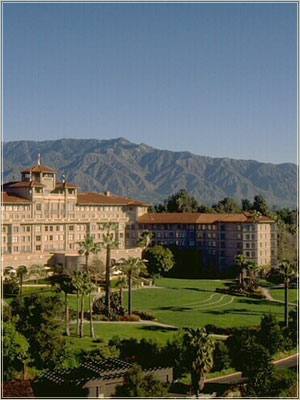
We are staying at the Ritz-Carlton Huntington Hotel in Pasadena (about half an hour away from Grandma) and it’s really nice. Our room is large and has a beautiful view. Dad and I went for a swim, then came back to the room and vegged for a while. By 8:30 we were ready for bed.
On Monday, feeling a little more human, we ordered a HUGE room service breakfast. Even Mom had something (she never eats breakfast). It was really good. I have some history homework I’m doing (really long boring homework) so I did that for most of the morning.
At lunch Mom and Dad took me to an old haunt of theirs, Tommy’s Hamburger Stand. They do nothing in moderation there. A burger has a patty, two handfuls (big handfuls) of onion, ten or fifteen pickles, and a giant scoop of orange goo they call chili. All in all it was a, unique experience. Did I mention that the goo turns your fingers orange permanently?
After we had consumed as much as we dared we went over to Grandma’s. Her next-door neighbor Denny came home from work early and talked with us for a while. I went next door and met his dog, Johanne Sebastian Bark (they just call him “Sebastian”). He is a white German Shepherd and he is BIG! Standing on his back feet he can look me in the eye. He weighs about 120 pounds and his shoulders come to my waist. He is really sweet though. He has an old bucket he thinks is a toy. He holds it over his head and prances around, then puts it down and rolls it across the yard with his paw. At 7:00 we went to dinner with relatives at Shanghai Red’s at the marina.
Wednesday we went to Farmers’ Market. My parents remember this place from when they were kids. It’s a bunch of open stalls outside where they sell everything from greasy pizza and French crepes to tacky tourist junk. We had lunch there, Mom and I decided to partake of the greasy pizza, dad had a ham and cheese crepe and Grandma had Chinese food.
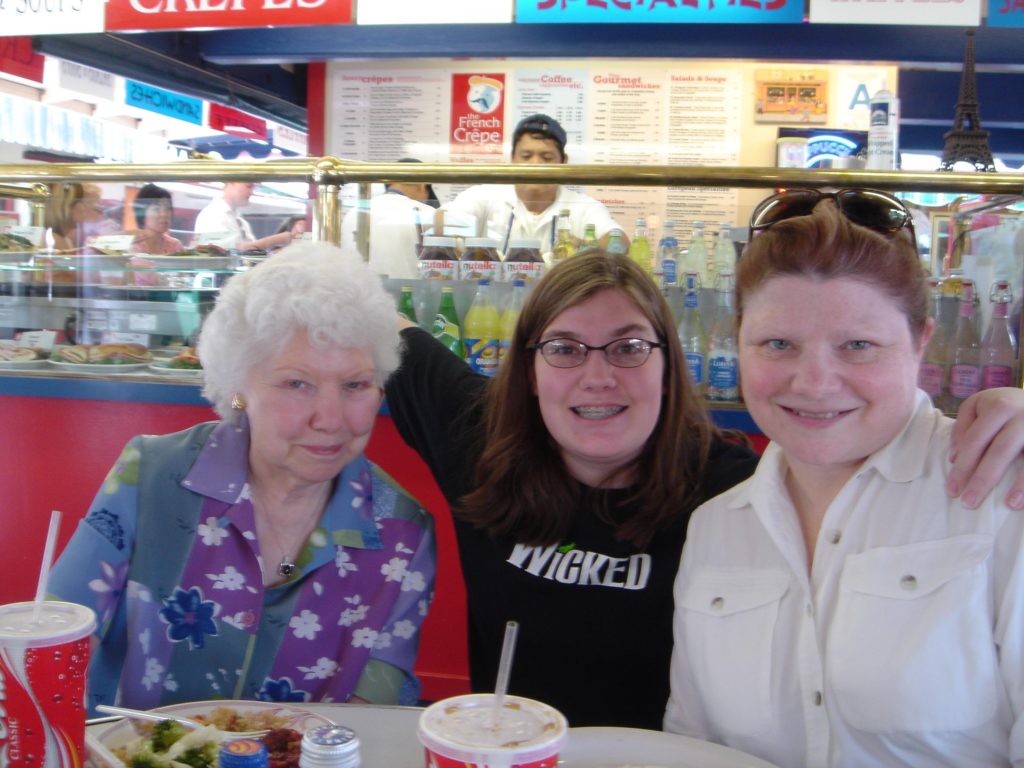
Have you ever eaten coke bottle candies? They are the best invention under the sun! It’s made of what gummy bears are but it’s clear. There is coke injected into the bottom of them. They’re great! I have a small bag of them that I bought maybe we can share when I get back. Oh, and guess what they have in every supermarket and convenience store in California, Squirt! They have Squirt! I have been getting it every chance I get. Anyway, it was a lovely afternoon.
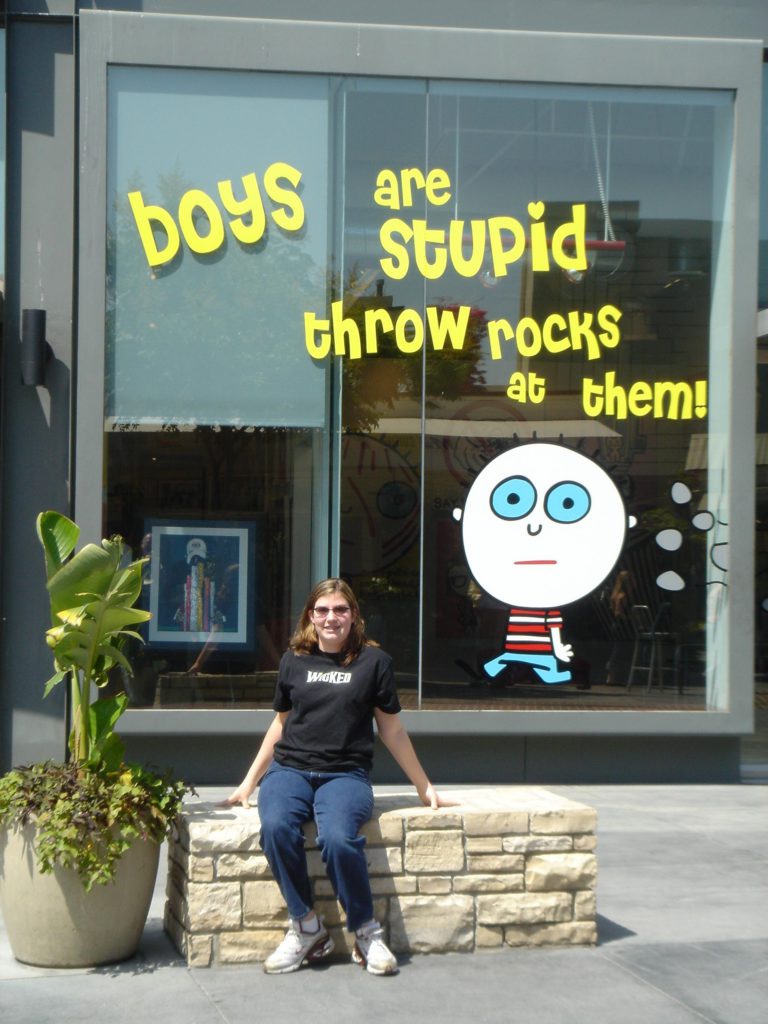
They’ve built a shopping area called the “Grove” next to Farmer’s Market. We wandered around there for a while. They have a huge, three-story Barnes and Noble. I bought the book version of Wicked, my favorite play on Broadway.
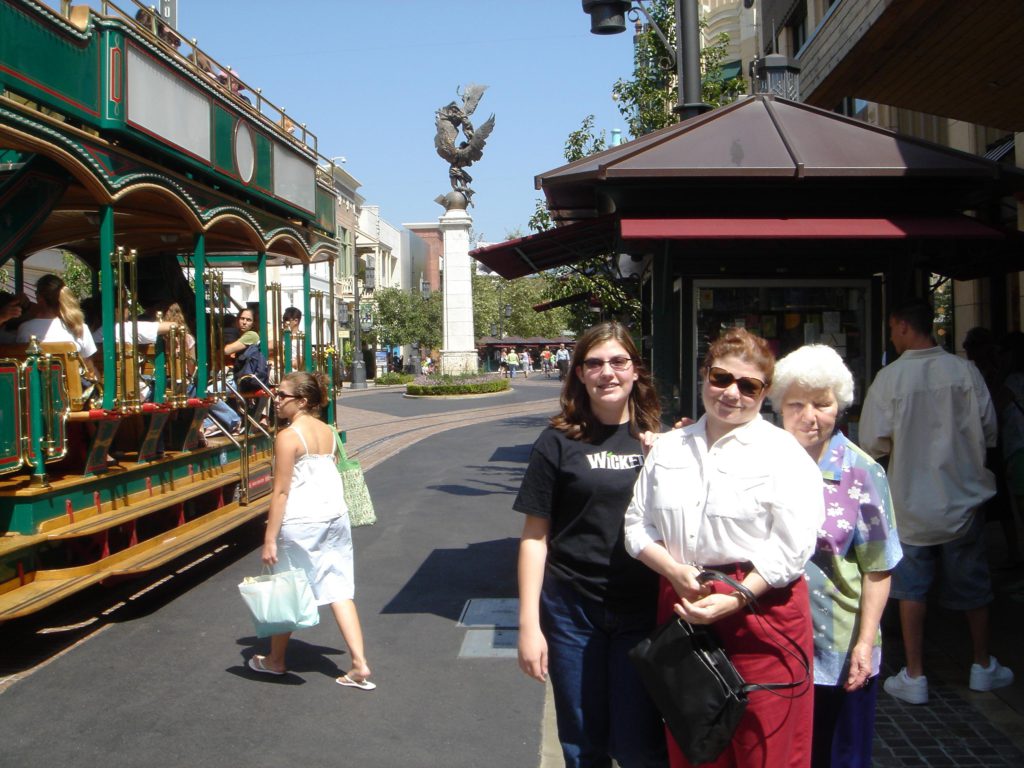
For dinner we went to the Smokehouse. They have has the best garlic cheese bread anywhere.
Dad bought some tickets to see the King Tut exhibit on Wednesday. There were lots of neat treasures on loan from Egypt. They not only had lots of gold treasures but also lots of really well-preserved wooden things. There was one footstool that was made of wood but it was carved and inlaid to look like an animal hide. A guided tour on tape interpreted it all.
For dinner we went up to an old building called the Saddle Peak Lodge, up in the mountains. We sat outside and watched the sun set. The Saddle Peak Lodge has been many things in its time including a hunting lodge, a speakeasy, a brothel and a fine dining restaurant. They specialize in game, so I had buffalo and dad had elk. Mom had ravioli, and man, are those things hard to shoot.
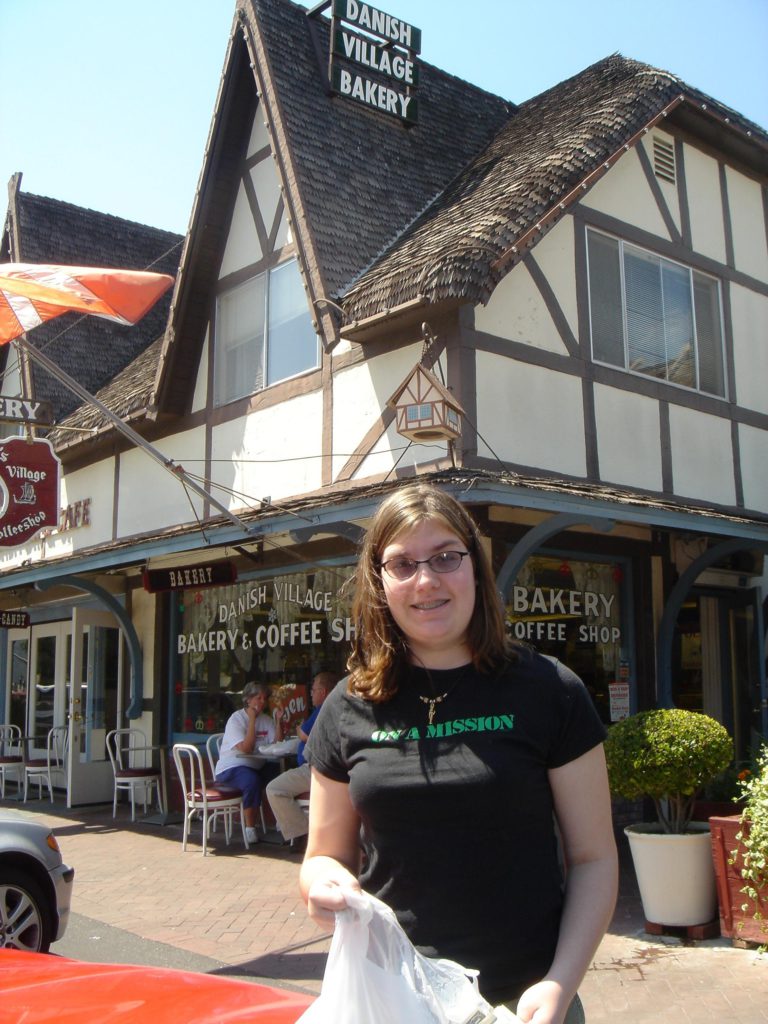
Thursday Mom and Dad and I took a two and a half hour drive north to the central coast wine country. It was good. The views were lovely, and there was a nice breeze, so it wasn’t too hot. We stopped in Solvang, a touristy Danish village, for some butter cookies. The movie Sideways was filmed in and around the town of Los Olivos; it was neat to keep running into places where they filmed. Mom and Dad did some wine tasting, and we had dinner in a nice little restaurant imaginatively called “The Los Olivos Café”.
We spent most of Friday at Grandma’s, and went to a new restaurant in the historic Wiltern Hotel for dinner.
Saturday Mom and Dad went to Fry’s, a giant electronics store, and selected a new computer for Grandma (her old one had a really weird software problem).
On Sunday Dad finished setting up Grandma’s computer and we went to Trader Vic’s in Beverly Hills for dinner. Trader Vic’s is where the Mai Tai was invented, and they served that and all sorts of other wacky tropical drinks, along with some excellent spare rib appetizers.
Steve’s Las Vegas Journal
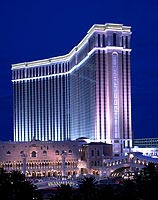
Monday we packed and checked out of the Ritz Carlton Huntington Hotel in Pasadena — after a week it had begun to feel like home. We took the 210 freeway to San Bernardino and then 15 over the pass to the high desert. The drive to Vegas took about six hours, and carried us through mostly rocky, barren terrain on a surprisingly busy four-lane road. A long, skinny ribbon of thunderstorm hung like a curtain across one valley, and provided ten minutes of torrential rain in a landscape that was otherwise parched and dusty.
We’re staying at the Venetian Hotel, our favorite in Vegas. Every room is a suite, and there are 17 restaurants in the building!
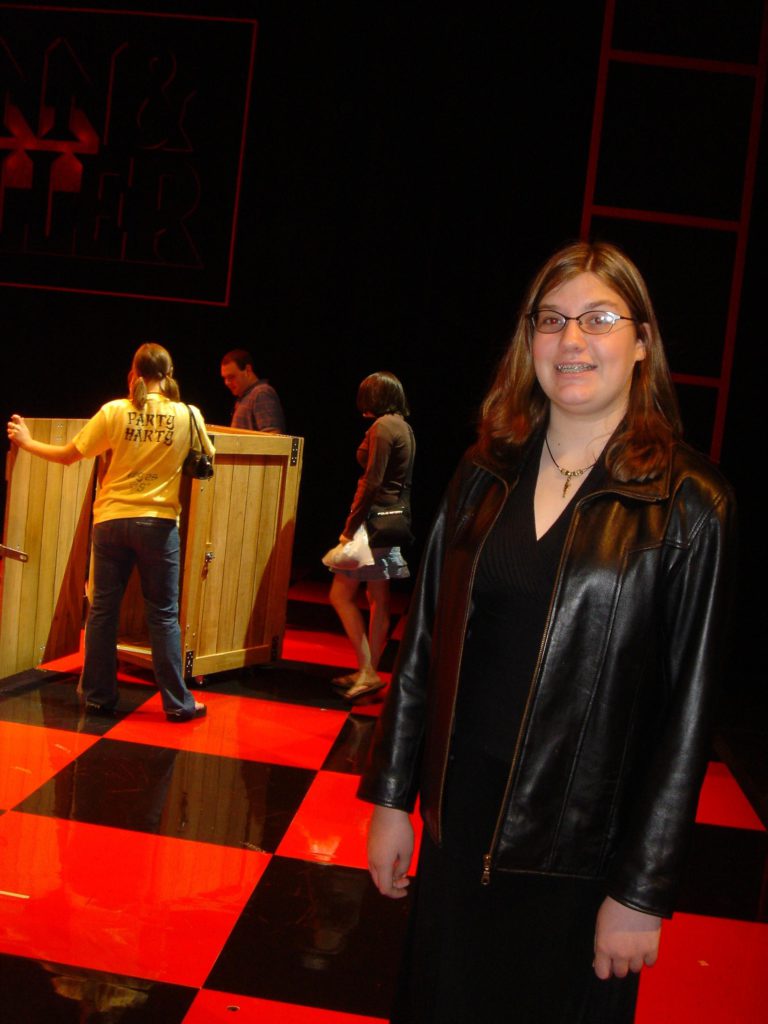
Monday evening we had tickets to see Penn & Teller at the Rio, so we had dinner at a Japanese restaurant in Masquerade Village there. While waiting for dinner Dani was able to watch the Mardi Gras parade that I worked on a few years ago. It’s a fairly complicated control system for a dozen or so overhead floats on which the performers ride.
Penn & Teller were amusing, but it wasn’t a great magic show. Before the show Mike Jones, a terrific jazz pianist, performed with a stand up bass player who turned out to be Penn himself. During this preshow the audience was invited onstage to inspect a box and sign an envelope, both later used in the show.
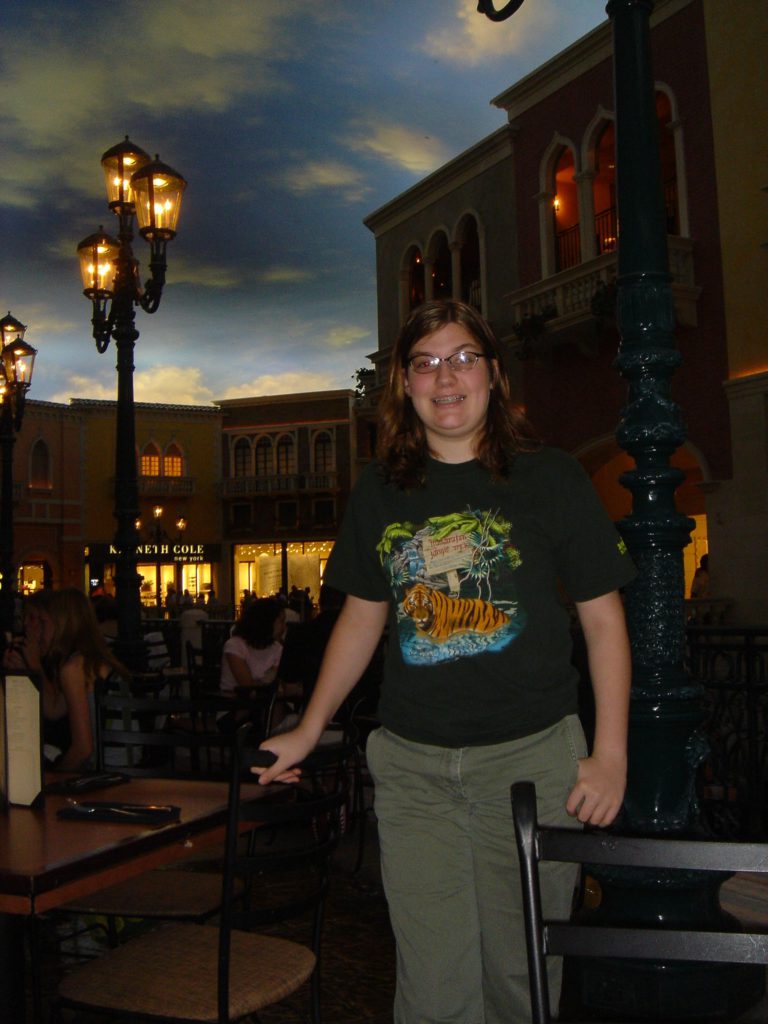
Tuesday we had lunch at Taqueria Cononita by the Grand Canal in the Venetian. Dani bought a magic trick at one of the shops and spent the afternoon practicing. After some power napping we changed and drove to the MGM Grand to see the new Circe de Soleil production, Ka.
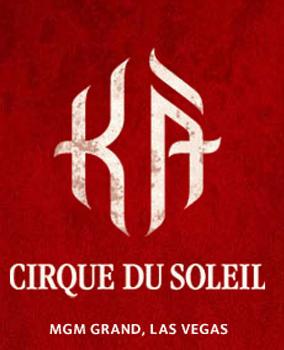
I find myself at a loss to adequately describe Ka. Days later we were still trying to absorb everything we witnessed. Here’s how the Las Vegas Review-Journal described it:
Cirque Tops Itself: ‘Ka,’ the most expensive live show in modern history, takes a new direction by telling a story
Seen from directly overhead, two opposing groups of armor-suited warriors charge to meet in the middle. A fierce battle ensues, the warriors using staffs, swords and kung fu. Some have an almost-supernatural power to leap over their enemy.
That’s how the scene unfolds in Cirque du Soleil’s new “Ka. ” But the audience doesn’t see the overhead perspective on film, or reflected in mirrors. They see it because the warriors are suspended in the air, their feet rappelling onto a near-vertical wall, upon which the image of the battlefield is projected.
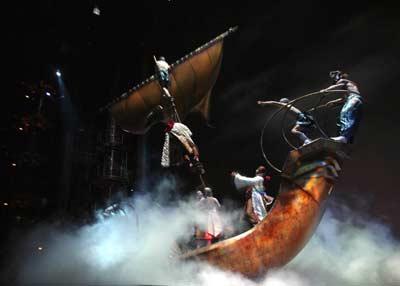
Along with performing their stunt combat, the performers are squeezing control units, hidden in their fists, to move the wires that suspend them from a grid 90 feet above the stage.
In part, it’s the answer to the question everyone had: How could Cirque top itself and deliver a distinct new product in its fourth show on the Strip?
The $165 million “Ka” marks not only a watershed for Las Vegas entertainment, but perhaps the creation of an all-new entertainment medium: the live movie; theater that uses the language of cinema.
“In movies you will see a battlefield from different angles… We’ve had the opportunity to give people a live experience about battle that is completely different than what you would get in any other theater,” says Lyn Heward, who oversees Cirque’s creative content division.
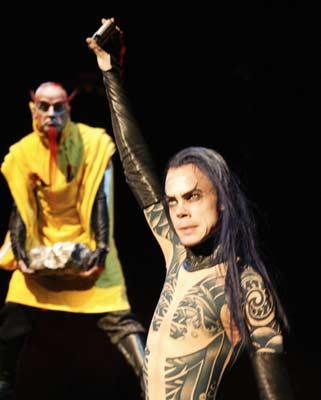
“Ka” has the rich, textured atmosphere of grand opera, except that nothing is stagebound, not even the two stages themselves.
Scenes flow from one to another, changing perspective. When the nanny of the young protagonist falls overboard during a turbulent storm at sea, you first see the older caretaker swept off the side of the boat that spins and bobs like a cork on the water.
Then the stage transforms to an underwater point of view, to show the nanny sinking to the bottom — again by using aerial wires and film projection — and the young heroine plunging in to rescue her.
“It does focus the way a spectator can watch an activity. When I go see `O,’ I have difficulty choosing what to look at,” Heward says. “But this is a little bit different. We are giving you a point of view to look at this from. “
Moreover, the signature Cirque music, acrobatics and overall aesthetic have been focused into actual storytelling for the first time.
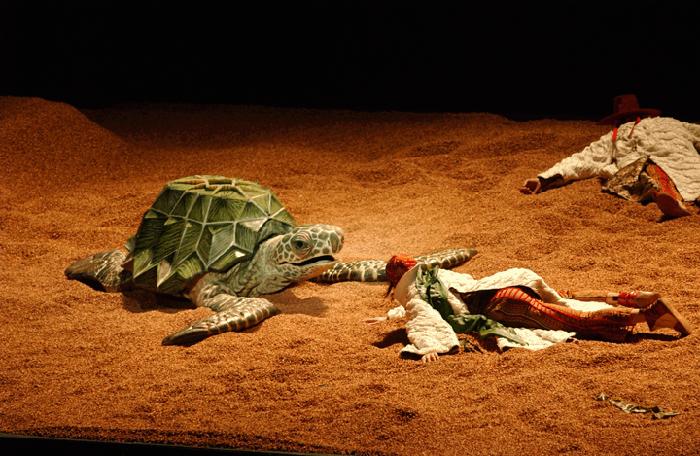
In lieu of a fixed playing area, the stage design resembles a black void, where the two main stages move in and out of position. One is the “Tommy deck,” a platform that slides in and out much like a drawer. The other — the one hosting the vertical battle — is the “cliff deck,” an 80,000-pound rectangle lifted in and out of place by a 230,000-pound gantry arm.
The cinematic feel of the show also introduces a new, home-theaterlike dimension to the theater: Every seat has its own personal set of speakers.
“It is not as if sound always comes out of the seat. It is just another pair of speakers,” says sound designer Jonathan Deans. In fact, there are 180 outputs of sound, compared to 60 for “EFX. “
“We take a sound and shred it into multiple sections,” Deans explains. “It will go out and fly around the auditorium shredded, then come back into that (original) sound. Will the audience know that is happening? No. But they will feel something different is happening. “
Much of the music is recorded, but all sound effects are live. “If a fireball comes up through the stage,” Deans explains, “we draw little squares on the camera image (that monitors the stage action). So when the fireball crosses through the squares, it actually triggers different sounds, and places the sounds to different speakers. “
René Dupéré, who composed the soundtrack to “Mystere” and most of the Cirque shows before it, returned to the fold at Laliberté’s request after a 10-year break.
“It has to be a score, like a movie score,” Dupéré says. “The music has to tell what’s going on, because there’s nobody talking. “
The most distinctive aspect of the score is a 42-voice choir, which sings “invented lyrics” by Dupéré’s wife, Elise Velle, who was principal singer for the first year of “Mystere. “
The choir and orchestral sounds are blended in with the live performance of a seven-piece band, which the audience doesn’t see.
But, Dupéré says, in places “I had to soften (the music) a bit. It was so dramatic, I couldn’t see the action. The music was too big. “
It’s a larger lesson the creators of the most expensive live show in modern history are trying not to forget. One key special effect is created by nothing more than the shadow of a candle.
“Human beings make the effects, and not machines,” Heward says. “The technology is simply a support to the human performance. “
Click here for a technical article from
Dinner at Nob Hill was as unremarkable as Ka was remarkable. Overpriced, uninteresting, and with an amazingly extensive selection of incredibly unappealing wines at absurd prices, this is the number one clip joint to avoid in Vegas.
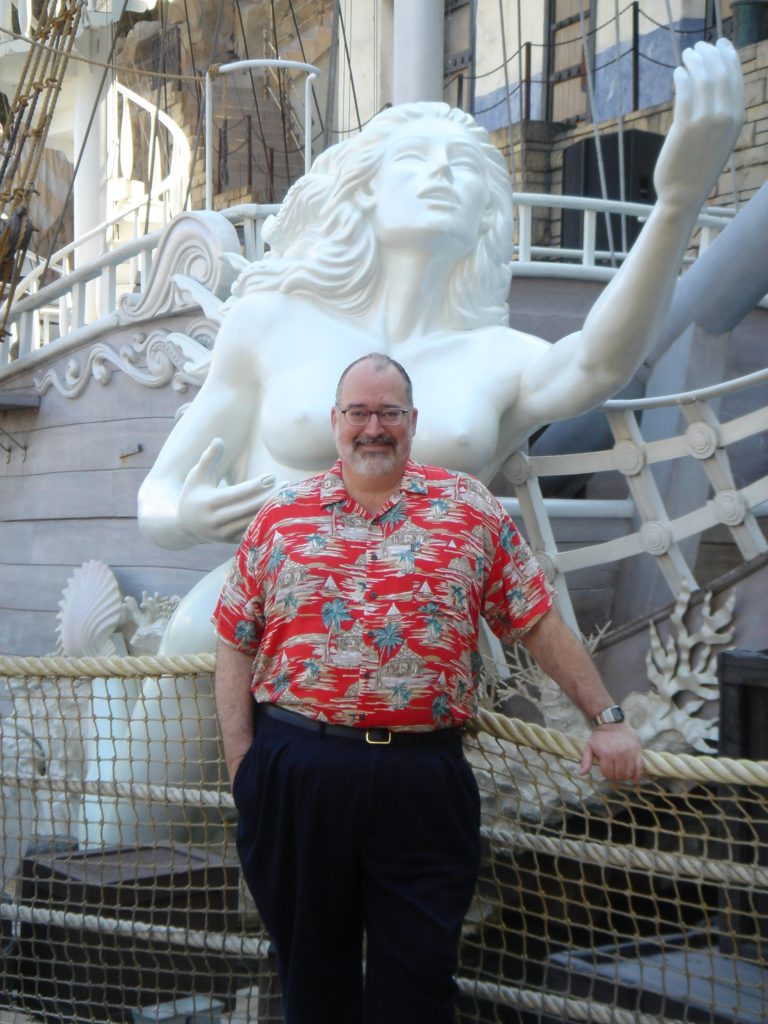
Wednesday began with a delicious room service breakfast. The servers are exceptional at the Venetian, setting the table in your room as if you were in a fine dining restaurant.
Then we walked across the street to the Treasure Island, which has been destroyed by MGM Mirage, the new owners. The name has been changed to the “ti,” and the skull and crossbones sign, the most distinctive in Vegas, has been removed. The exterior pirate ship theming has also been modified to make it “sexy,” and the redemption gaming center that Dani and Linda were looking for is gone.
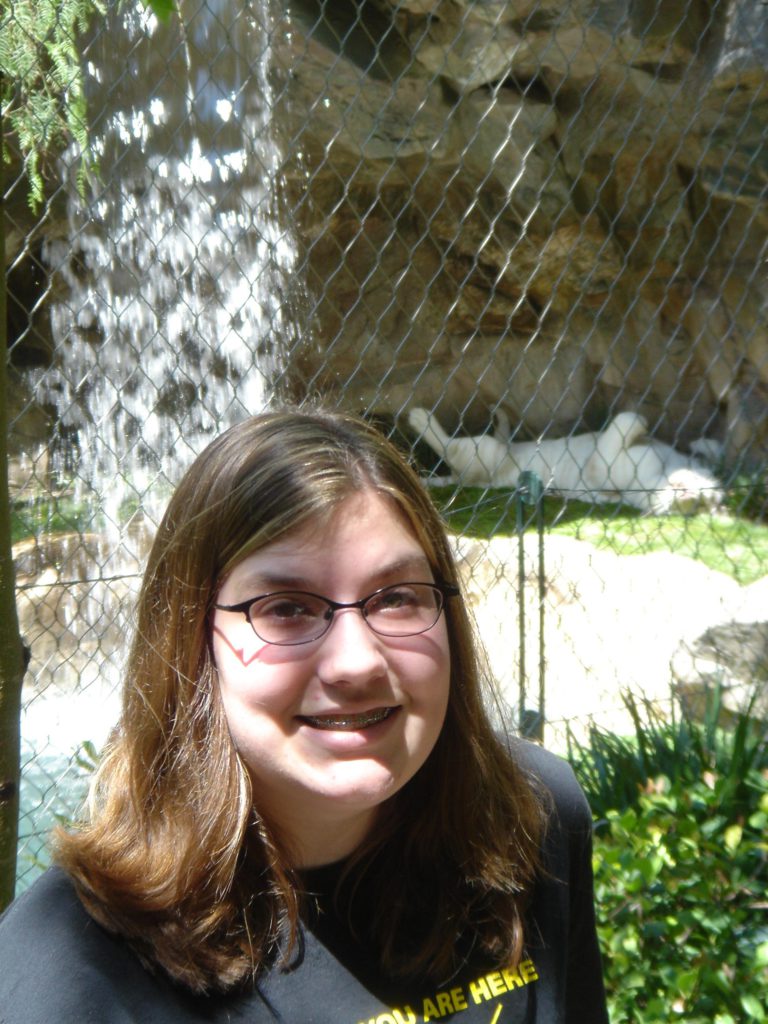
We took the tram over to the Mirage and purchased an admission to the Secret Garden of Siegfried and Roy and spent a pleasant hour watching lions and tigers sleep.
After riding the tram back to the ti we crossed the street to the new Wynn. Steve Wynn’s latest upscale creation is even uglier than the Bellagio. The outside looks like an office building behind a dyke, and the inside is filled with the same garish mess as Bellagio. The only focal point, a “water feature” that is a simply a wall with water running down it, is so poorly placed that only a few dozen patrons can see it at one time.
Back at the Venetian we allowed our body temperature to return to normal while waiting about an hour for an afternoon snack in the Grand Luxe Cafe.
In the evening we drove over to the Hilton to pick up our wrist bands for the Star Trek convention, which begins tomorrow.
Dinner was at Bouchon, an authentic Parisian Brasserie in the new Venezia tower. It was indeed authentic, right down to putting the bread directly on the table. It was also delicious. The fois gras terrine appetizer turned out to be an entire 5 oz jar of pate de fois gras, pricey at $41, but enough for three, and worth every penny.

After a delicious breakfast at Bouchon — best baked goods outside of Paris! — we headed for the Las Vegas Hilton.
The Star Trek convention attracted an interesting cross section of people, to say the least. On Thursdayand Friday there was a high ratio of Trekkers in Federation costumes. These are the fans Shatner was was addressing in his Saturday Night Live sketch, “Get a Life. ” These people still live in their parents’ basements. It’s probably a good thing.
By the weekend, though, when attendance peaked at over 3000, the audience was a cross-section of all ages, with women perhaps slightly outnumbering men. If there was any demographic missing it was young teenagers, particularly girls. Kids came with parents, older teenagers rived on their own, and a lot of the audience must have seen the original series when it first aired. But Dani was fairly unique, and as a resulted attracted a certain amount of attention form the celebrities.
The format of the convention is: stage presentation by celebrity, stand in line for celebrity’s autograph, go to dealer room and buy crap.
I found the presentations almost uniformly entertaining. The stars enjoyed talking about current projects, and most were genuinely pleased by the loving reception they received from the fans. Two open mics at the sides of the stage allowed fans to ask questions, and the stars answered them with candor, and often with great wit.
The standing in line was a bit tedious, but nearly every celebrity made an effort to make eye contact or say a few words to each fan, even if they were signing 600 autographs. These autographs are the currency of the convention, as they — either directly or indirectly — cost $20 to $80 each. This comprises the celebrities’ compensation for attending, and also provides most of the convention organizer’s profit.
The dealer room was actually pretty interesting, because in addition to many booths selling Star Trek collectibles and photos there was also a large section devoted to minor celebrities. Here was an opportunity to have photos personalized, buy CDs, or just chat with a couple dozen minor stars. And some of these people weren’t that minor: James Darren hung out for several days, as did a large number of other characters from the five series.
Although there was more of an emphasis on autographs than I’d have liked, I tip my hat to the organizers, who kept the event running like clockwork for four days. No presentation ever started more than a few minutes late, and the mics and video worked well.
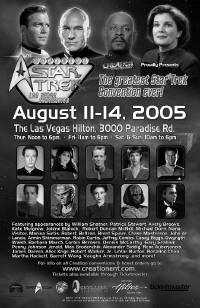
Here’s what we saw during the four days:
The show opened Thursday with a mediocre improv of TOS (The Original Star Trek) by some guys from Texas. Aside from an amusing double take when the security guy realizes he’s wearing a red shirt — and is therefore certain to be killed — it wasn’t that great.
It was followed by a presentation by Denis Russell, who worked on the original opticals for TOS. Denis seems like a nice guy, but is the world’s worst speaker, and I’m still not sure he knows what an optical is.
Throughout the convention there were some interesting lunches at Benihana, but although we had gold passes that included almost everything, lunches weren’t part of it, so I won’t describe them.
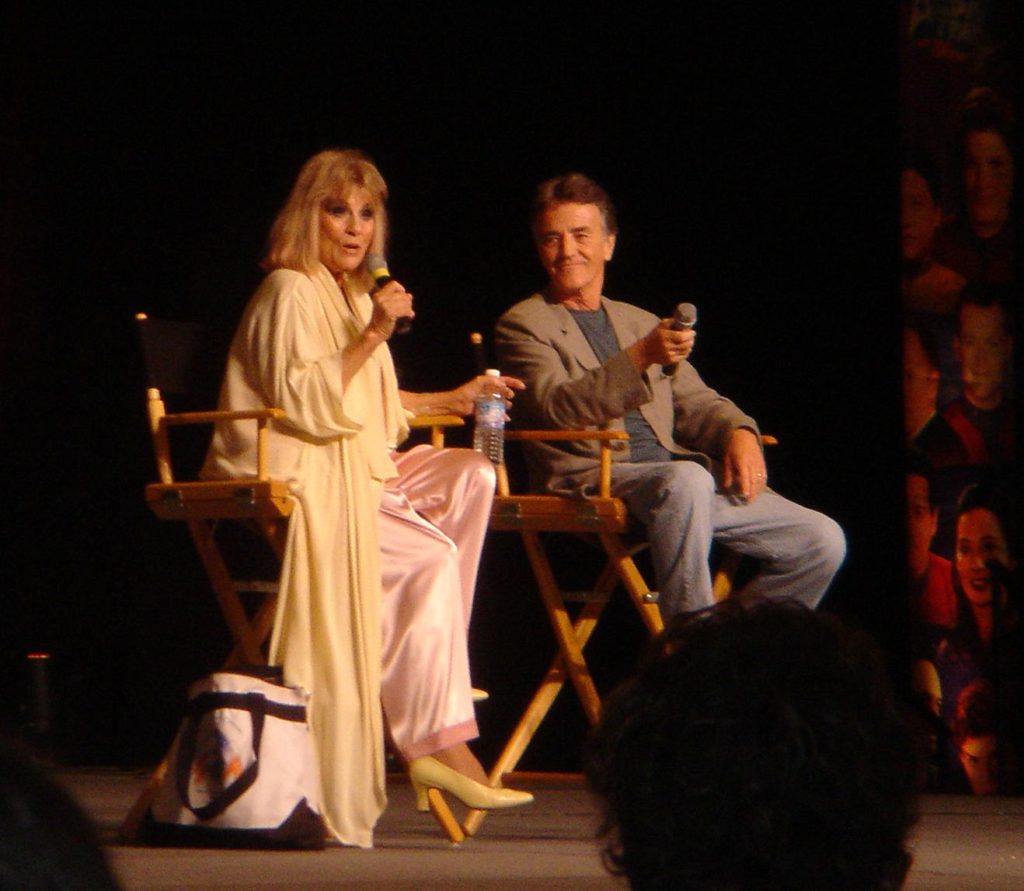
After lunch things picked up with an amusing presentation by Grace Lee Whitney (Yeoman Rand on TOS) and Robert Walker, guest star of the Charlie X episode. Raised by aliens, Charlie has some trouble adapting to human ways. In one famous scene he swats Rand on the butt as he passes her in the corridor. Whitney has had a rough life, which she’s only recently gotten back on track, and Walker talked about his (apparently famous) parents. They had a good rapport.
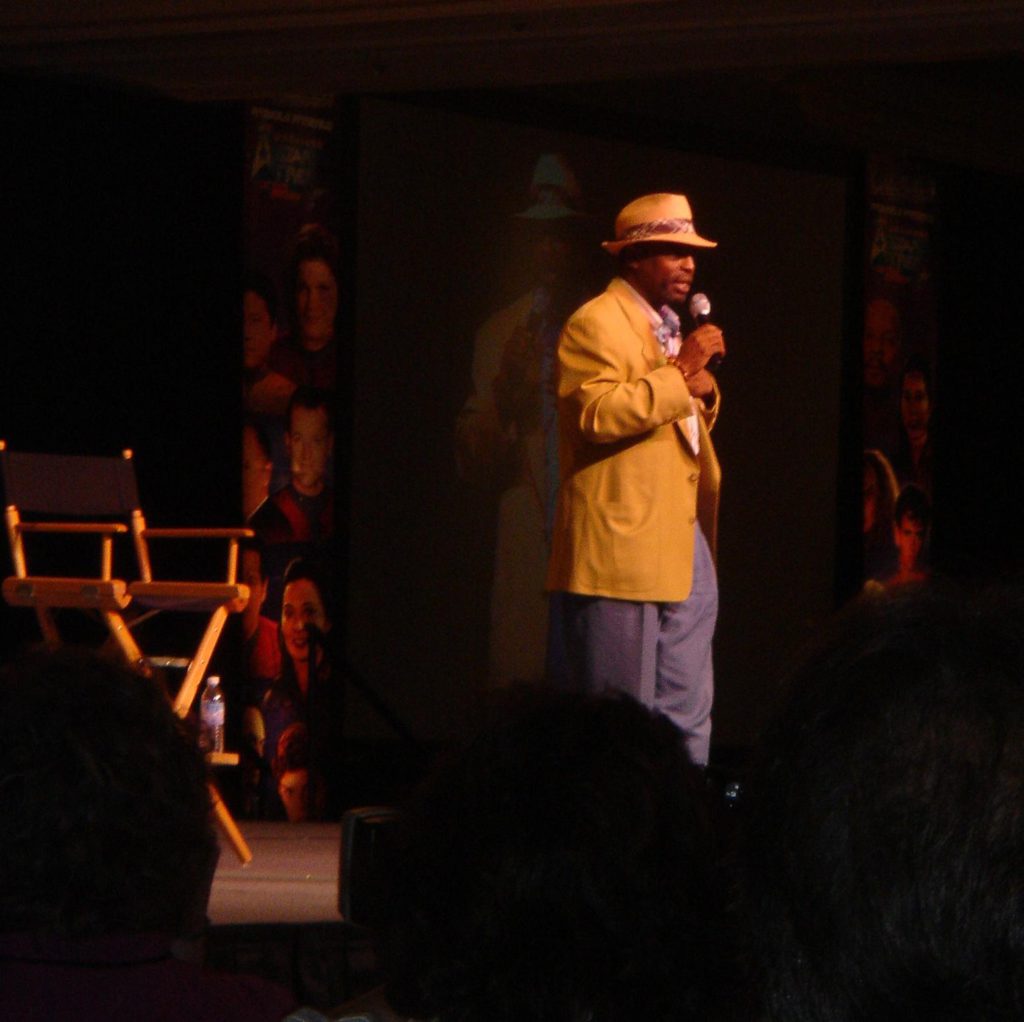
Next up was LeVar Burton. He’s an incredibly intelligent and well-spoken man, who talked about the impact of Roots, and his rather extensive directing experience. He just starting a new movie with Stan Lee. An amazing number of people thanked him for his 28 years of work on PBS’ Reading Rainbow.
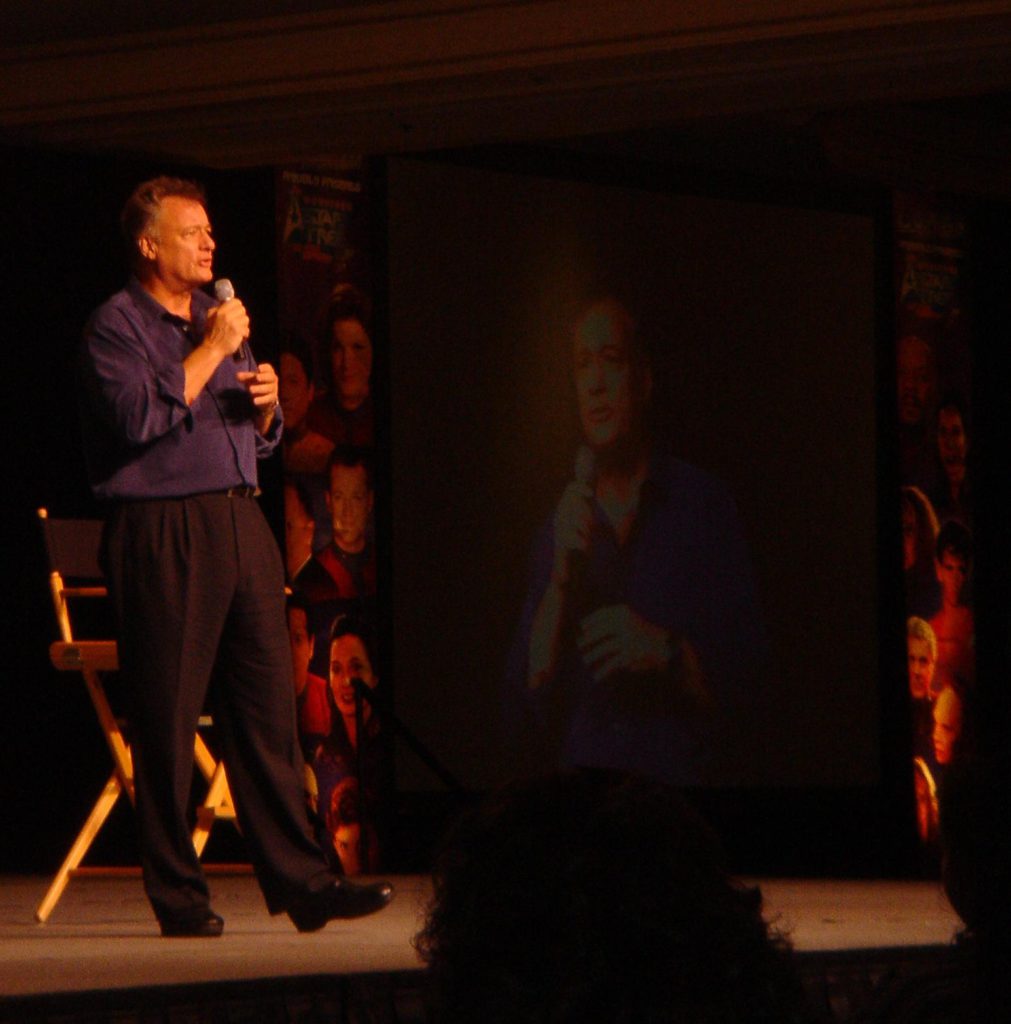
John de Lancie played Q on TNG (Star Trek the Next Generation), DS9 (Deep Space 9), and Voyager. (I don’t know if he was on Enterprise, as I haven’t seen most of that yet. ) He is very involved in producing classical music concerts and legitimate theater, and is a long-time friend of Kate Mulgrew.
Robin Curtis was a Vulcan in the movie The Seach for Spock. We skipped her presentation.
Corbin Bernsen played Q2 on TNG. We skipped this.
I couldn’t figure out who Dean Haglund is until someone told me he was one of the computer guys on the X-Files, a show I’ve never seen. So why is he at a Star Trek convention? Apparently he makes a career of touring the various conventions (more than one a month) doing improv. His show was hysterical! He began by explaining that the plot of all X-Files episodes is the same: some weird creature is discovered and then the government spend the rest of the hour denying it. So he invited the audience to suggest the creature (I think we ended up with a stoat-moose-rabbit) and then selected audience members to help him perform three sketches:
- Audience member attempts to make verbal sound effects as Dean describes the action — and comments on their sound effects.
- Audience member provides Dean’s arms as Dean acts out a scene — including taking questions from the audience: “Yes, you sir… no, not the one I’m pointing at, the one I’m looking at. “
- Audience member attempts to move Dean’s body as Dean — spastically — describes the climax.
Very funny stuff.
Thursday night was a private party for the gold ticket holders — at least 500 of us — at the Star Trek Experience attraction. Buffet food was served in Quark’s Bar, which looks a lot like the one on DS9, and seats the same dozen people. Entertainment was mostly by Chase Masterson, who played Lita, one of Quark’s Dabo girls, and is a pretty good nightclub singer, and Vaughn Armstrong (Admiral Forrest on Enterprise), who has a country band. The Star Trek Experience attraction was also open, with its astonishing transporter effect, which makes it seem as if you are “beamed” aboard the Enterprise. Also open was the new Borg Encounter, which is an excellent show incorporating live actors, 3D Hidef video and effects. Both are top notch shows.
Friday began before lunch, but we skipped the presentation by Gwynyth Walsh. We did get her autograph later, and she looks much better than this in person.
Garrett Wang (Ensign Harry Kim on Voyager) was a delightful speaker and did some very funny impersonations of Kate Mulgrew. He hung out with the attendees later, and seems like a really nice guy.
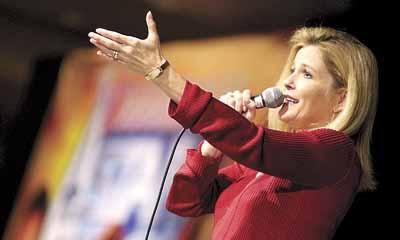
After lunch we met the first of four captains appearing at the convention, Kate Mulgrew (Captain Janeway of Voyager). Kate is just back from two months in Ireland with one of her twenty-something sons, where they were writing poetry and stories. She’s in Tea at Five, the popular one-woman show about Catherine Hepburn, and is enjoying being 50 and slowing down a bit.
Max Grodenchik and Chase Masterson played Quark’s slow brother Rom and Quark’s Dabo girl Lita on DS9. They took the stage together, and couldn’t be more dissimilar (well, maybe in makeup they could). Max is incredibly shy, and Lita incredibly outgoing. We met them in person later in the dealer room, where we bought photos and CDs. They were both very generous with their time.
Gary Graham plays Vulcan Ambassador Soval on Enterprise. We skipped this presentation.
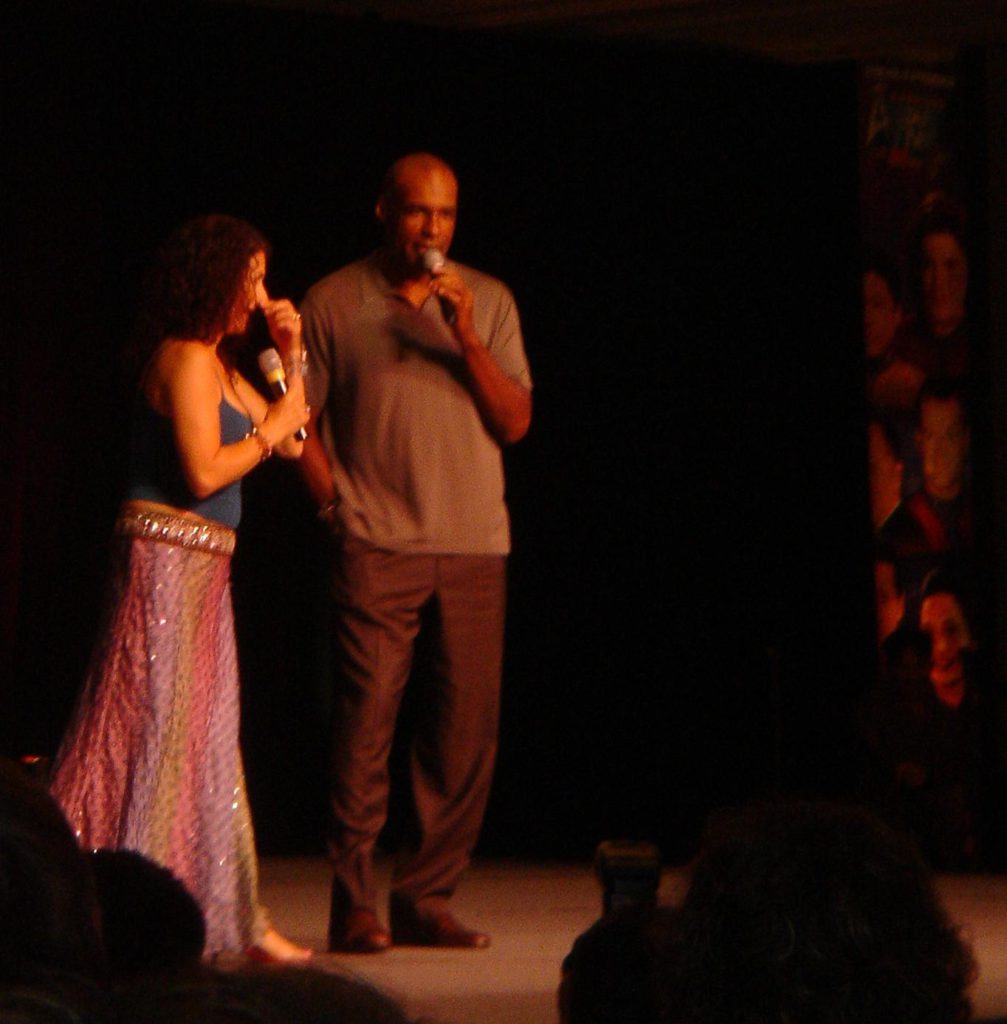
Marina Sirtis and Micahel Dorn played Counselor Troi and Klingon Warf on TNG. Michael was busy finishing a photo op (pose with the star of your choice, sort of like Madame Tussaud’s) so Marina came out first and told us all the ways to tease Michael when he came out. They are obviously great friends, and were very entertaining.
After the show we headed back to the hotel to change, and went to Valentino’s for dinner. This was a bit disappointing, as the Wine Spectator names it one of America’s top ten, but they must be referring to the one in Los Angeles. The wine list, though extensive, had no older wines, and the Italian food was challenging and not particularly great.
Saturday we arrived in time to see Penny Johnson Jerald, who plays Cassidy, Captain Sisko’s girlfriend on DS9. Cassidy is one of our least favorite characters, because the two of them appear to have absolutely no chemistry. Oddly, Penny’s presentation consisted mostly of telling us how great their chemistry was.
Connor Trineer (“Trip” from Enterprise) wasn’t scheduled to appear, but at the last minute Jolene Blalock (T’Pol from Enterprise) cancelled. Jolene seemed to be persona non grata with the organizers, but Connor was a great sport and showed up with less than 24 hours notice.
Robbie McNeill (Tom Paris from Voyager) has been busy directing, including many episodes of Desperate Housewives.
Rosalind Chao played Keiko, O’Brien’s wife, on TNG and DS9. We missed most of this presentation.
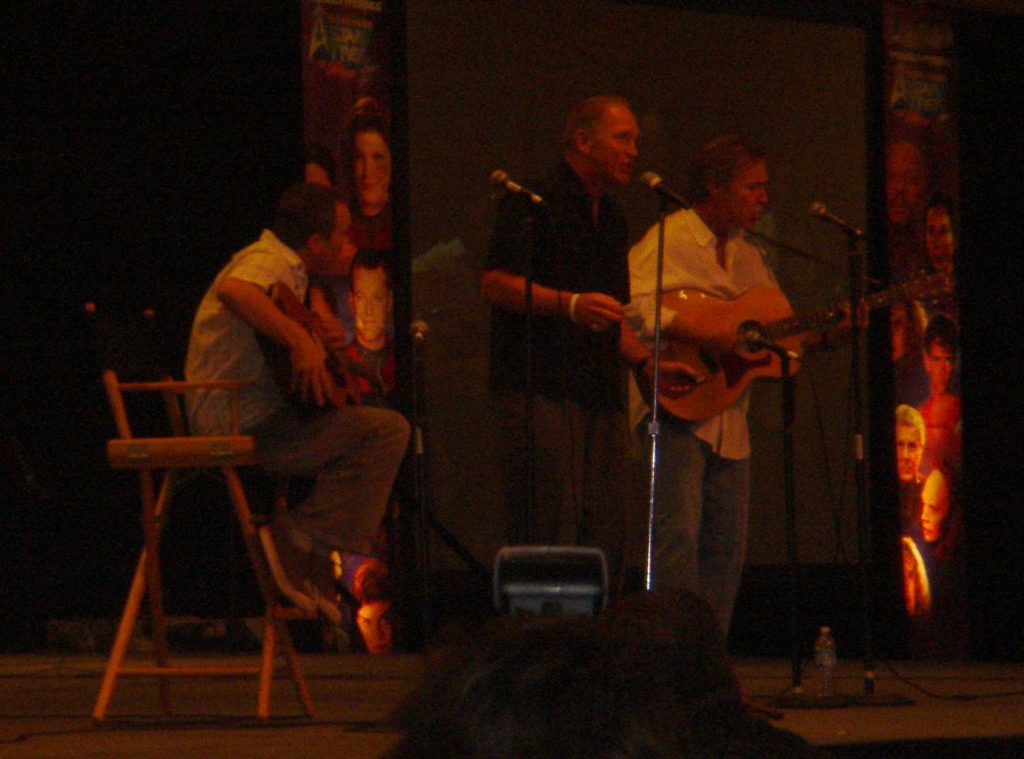
Jeffrey Combs has played several roles on DS9 and Enterprise, including Brunt and Weyun. He joined Vaughn Armstrong (Admiral Forrest from Enterprise) and Casey Biggs (Damar on DS9) for a live musical performance. Armstrong is a good bluegrass musician, and Biggs has a wonderful voice. Combs was truly awful. Nice guy, though.
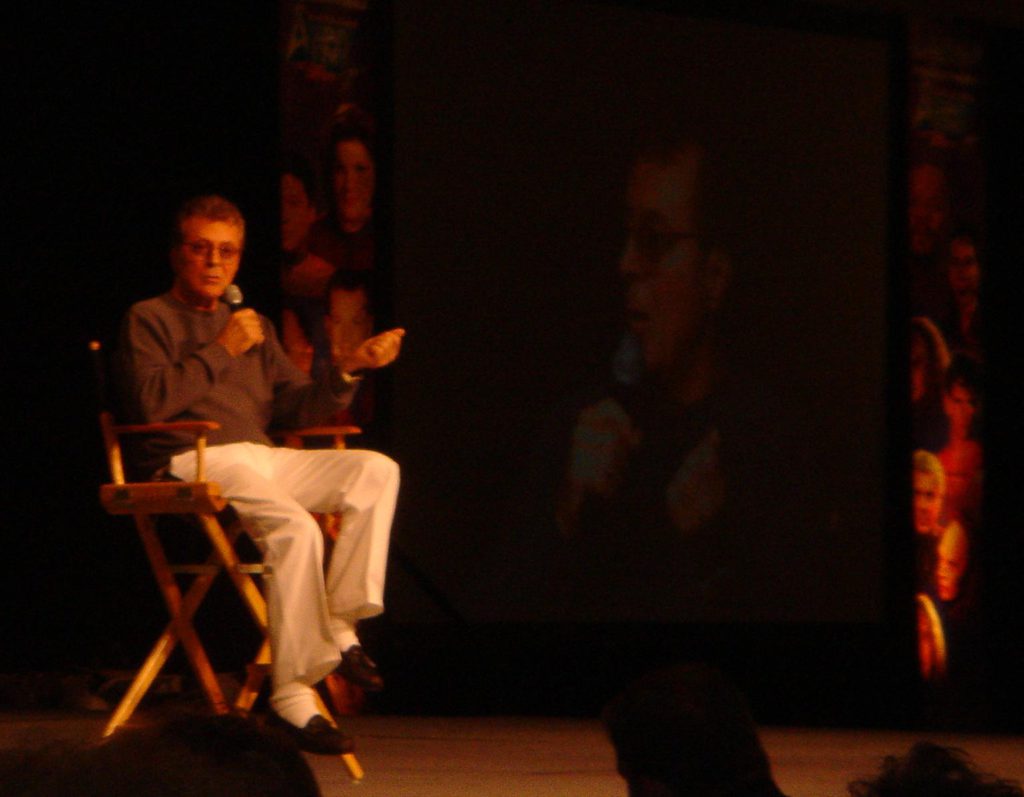
Speaking of singing, James Darren, Linda’s heartthrob from the 60’s was up next. This guy was playing Moondoggie in Gidget movies in the 1950s, and he looks younger than me. On DS9 he play holographic nightclub singer Vic Fontaine, and introduced a new generation to the classic Vegas songs of the 50’s.
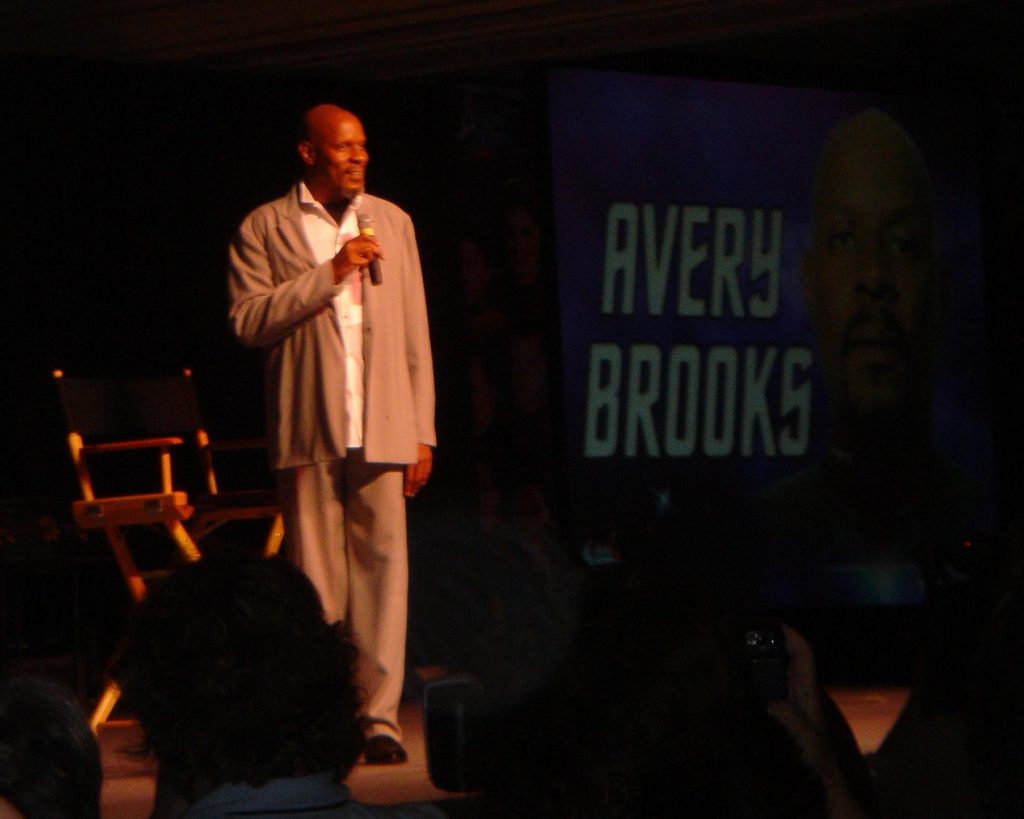
Avery Brooks played Captain Sisko on DS9. He was the first black to receive an MFA in both acting and directing, which he did simultaneously. He has been a professor at Rutgers sin 1972, and tenured since the 80’s. He also directed my favorite DS9 episode, Far Beyond the Stars, in which he plays a 1950s sci-fi pulp writer who is the victim of discrimination. Needless to say, Avery is an a amazing speaker. Afterwards he signed autographs with Penny Johnson Jerald, and their chemistry seemed OK. Avery stopped Dani in the autograph line to shake her hand and talk with her for a minute, and it’s the only time I’ve seen her nearly speechless.
After a quick bite at the Mexican restaurant down the hall (it’s the only decent restaurant in the Hilton, so we’ve eaten there three times in three days) we returned for the world premier of Star Trek: The Concert. 34 members of The Las Vegas Philharmonic Orchestra, conducted by Richard McGee, played all of the great Star Trek themes in chronological order. McGee was obviously also a fan, and his comments between pieces were quite enlightening. The orchestra was quite good except for a couple of horn players who should be taken for a ride in the desert. Composer Dennis McCarthy came onstage to conduct his themes from DS9 and the movie Generations.
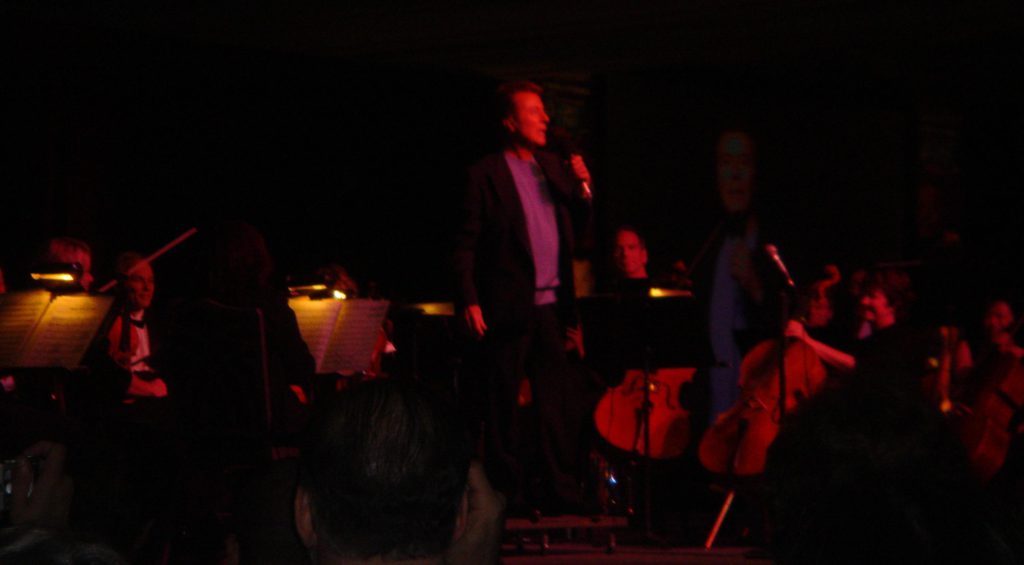
The concert included an interlude for a vocal performance by Nana Visitor (Kira from DS9) but although she was at the convention she cancelled this performance for some reason. The already overworked James Darren gamely took her place, although I’m sure he felt ridiculous standing in the middle of an orchestra and singing to a prerecorded track.
The concert was followed by a Dessert Party with a live band and more entertainment by James Darren and others, but it was crowded and not very intimate in the huge convention space, so we left after only a few minutes.
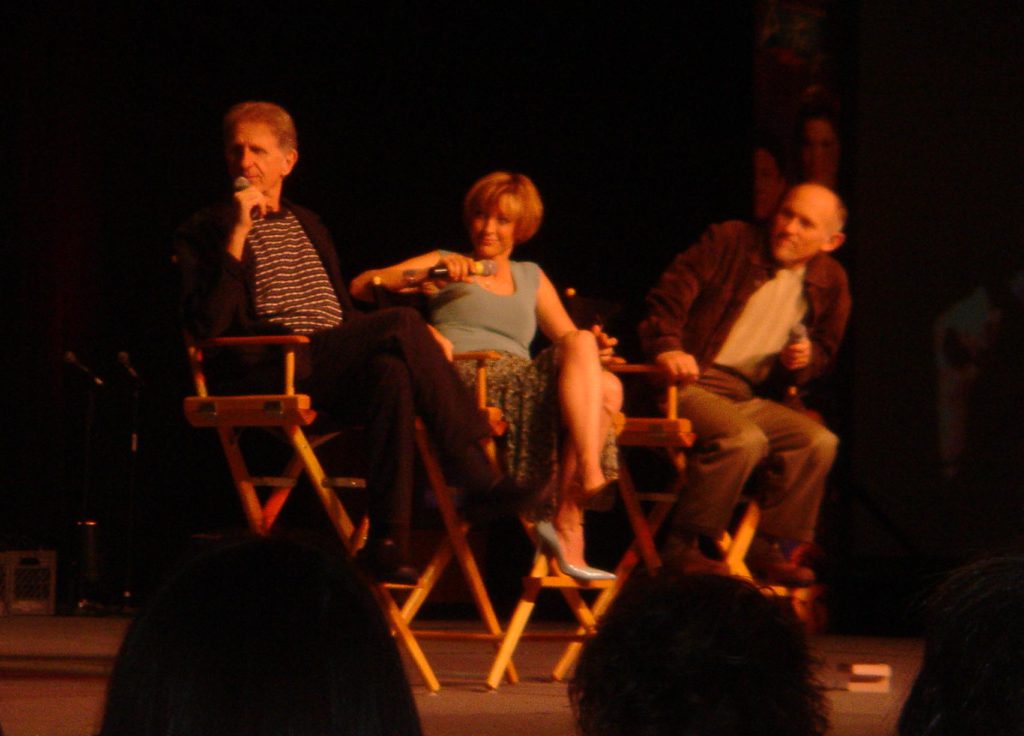
Sunday began with a DS9 reunion featuring Nana Visitor (Kira), Rene Auberjonois (Odo) and Armin Shimerman (Quark). There was great chemistry between the three of them, and it was lots of fun. To raise money for charity, in the autograph line Rene was doing individual sketches for $10. He drew a picture of Odo’s bucket with a word balloon saying, “Dani. “
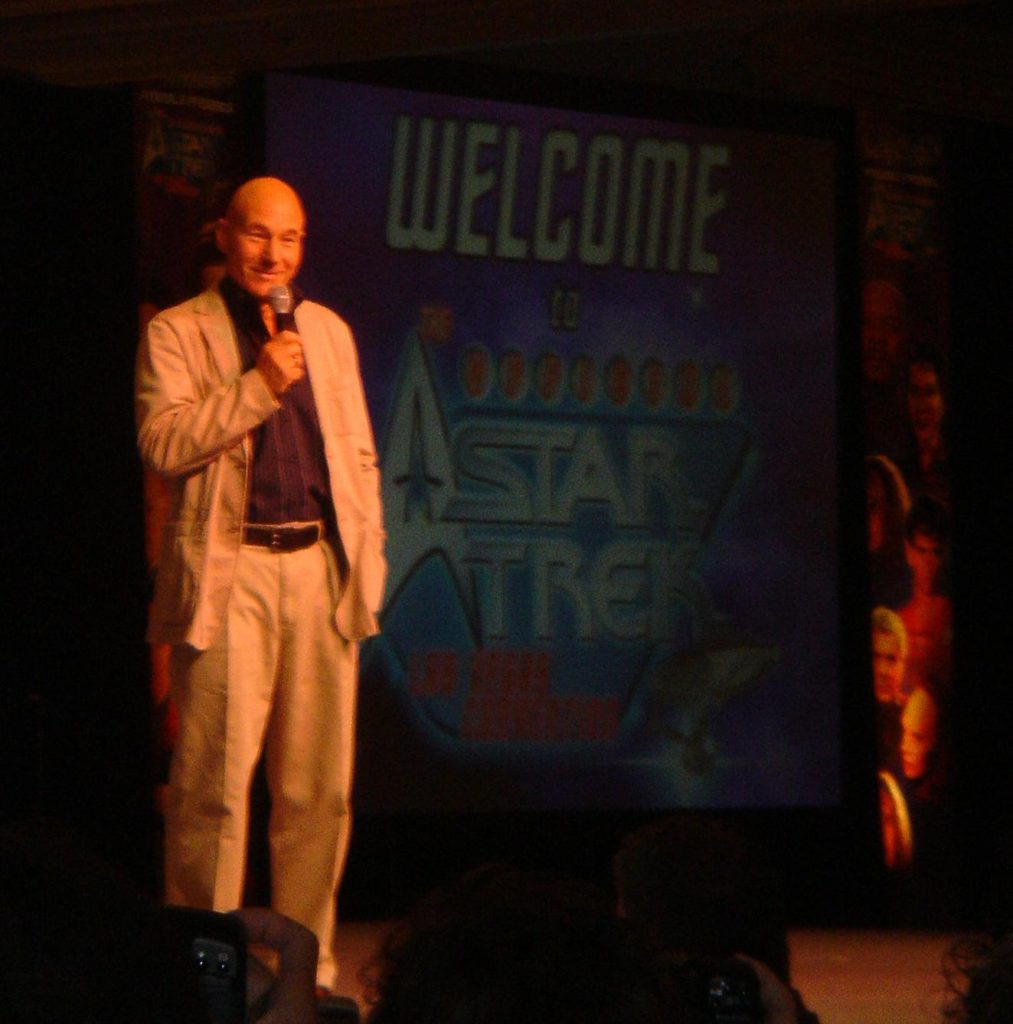
At noon Patrick Stewart arrived from Vancouver (where he has been filming X3) for a rare convention appearance. Patrick is living in London, and has rejoined the Royal Shakespeare Company. He will appear in several plays throughout 2006, and at one time or another next summer, all 37 will be produced. Patrick is clearly an ACTOR, but he takes his Star Trek notoriety with good grace.
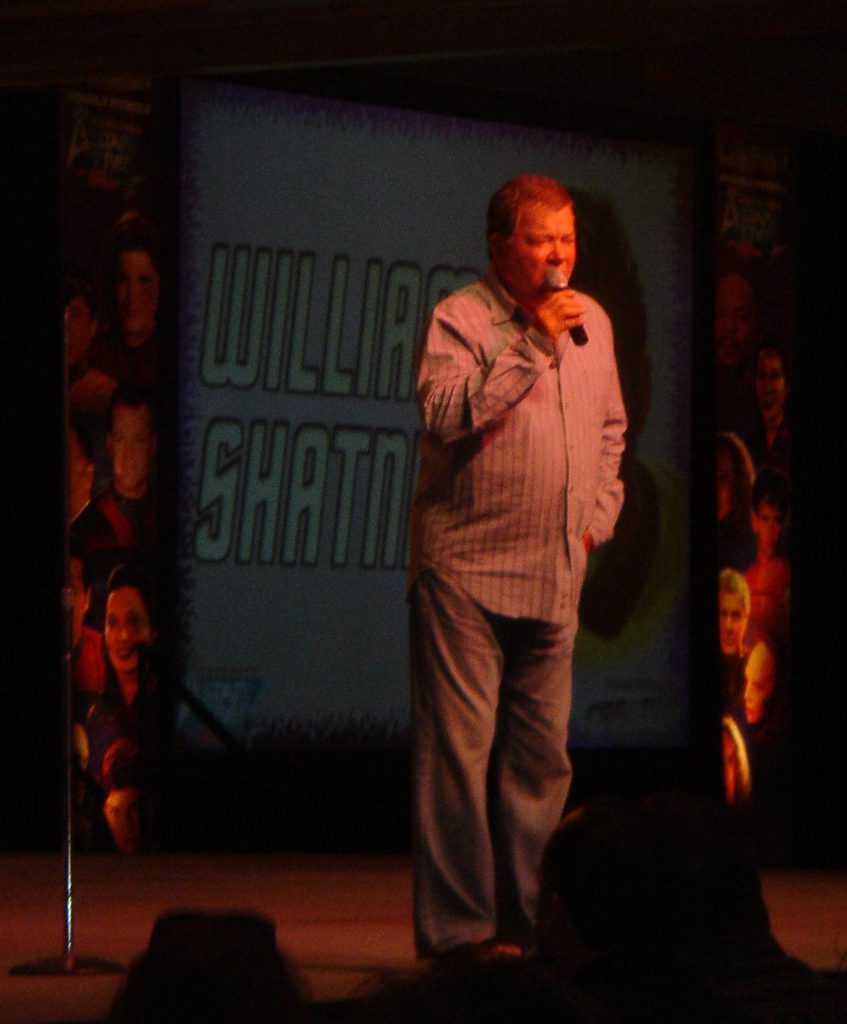
Shatner is just so damn funny! An aspiring actor asked for advise and Shatner said, “So you want to know what you can do to be famous, rich, have the yacht, the babes, everything? Nothing. It’s all luck. “Actor, author, horse trainer, musician; this guy is busy. During his presentation he auctioned off a number of items for charity. Most interesting was your chance to be in his next Star Trek book. Two people paid $5000 each. Patrick Stewart joined him on stage momentarily before departing.
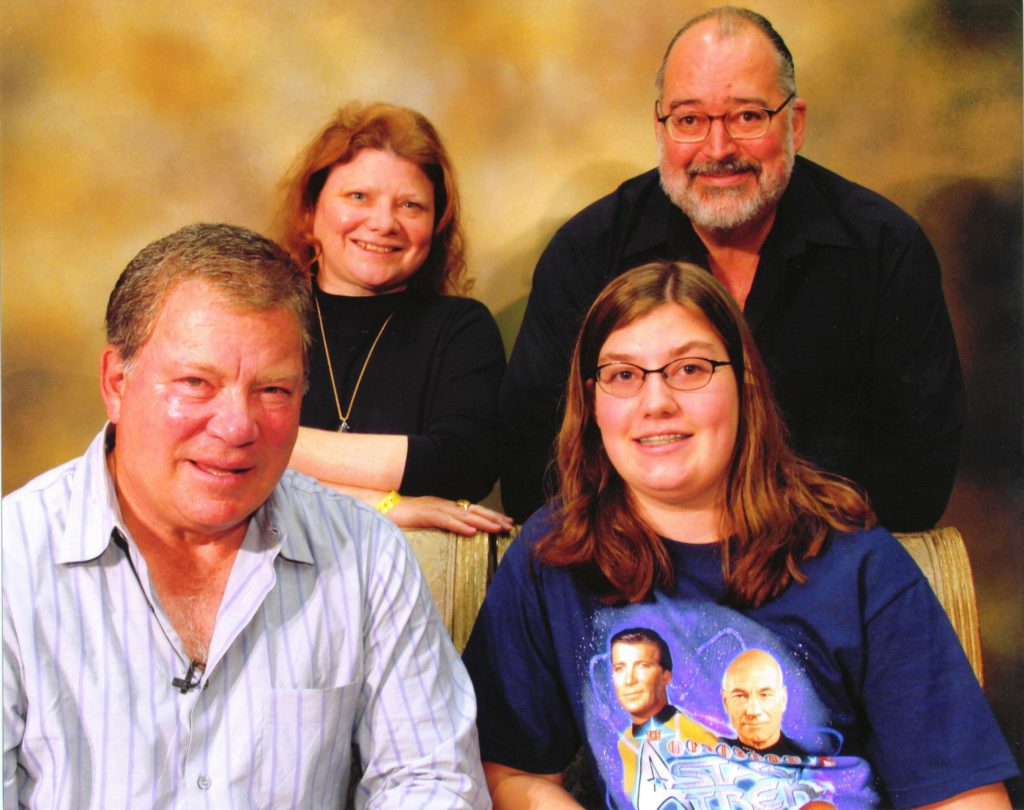
After Shatner’s stage appearance we hurried over to the dealer’s room to pose for a picture with him, a father’s day gift from Dani. We got to exchange a few words and I left him a copy of one of my books.
Following the photo op we caught most of Brent Spiner’s (Data on TNG) presentation. Brent is a really funny guy, and has an absolutely dead-on Patrick Stewart impression. (Patrick was earlier asked if he had a Brent imitation and he said, “You know why all those guys imitate me? It’s because they want to BE me. “)
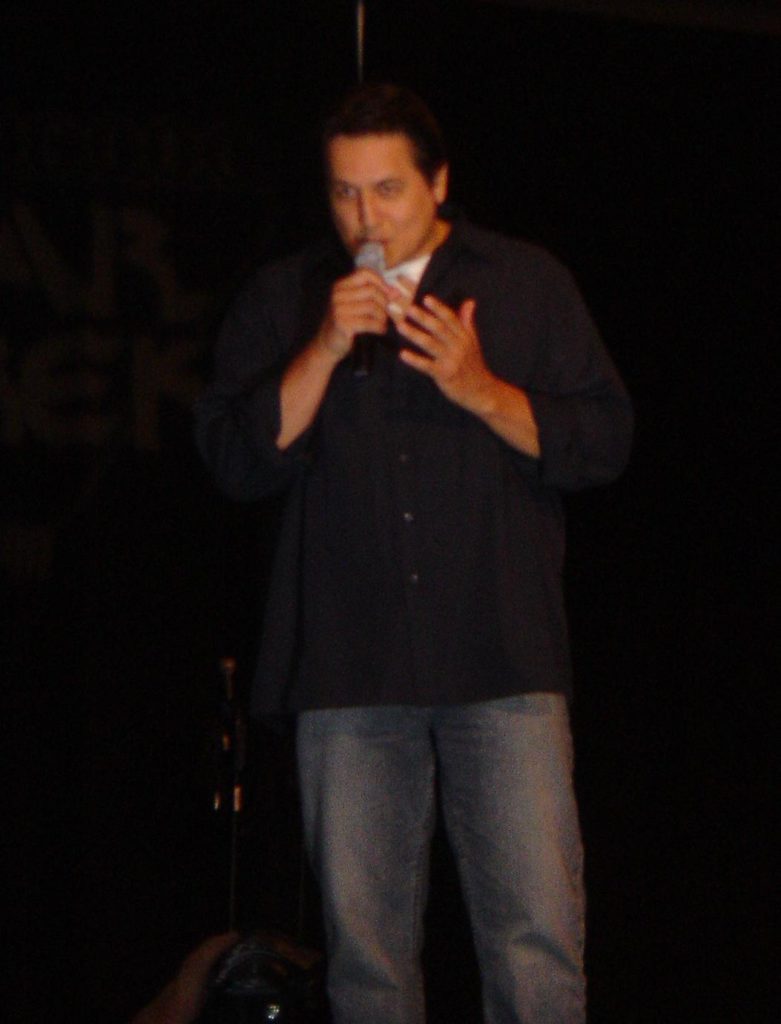
The convention wound up with Robert Beltran, Chakotay on Voyager. Of all the celebrities there, Beltran was the only one who seemed to have an “attitude,” and he might not have been the best choice to wrap things up.
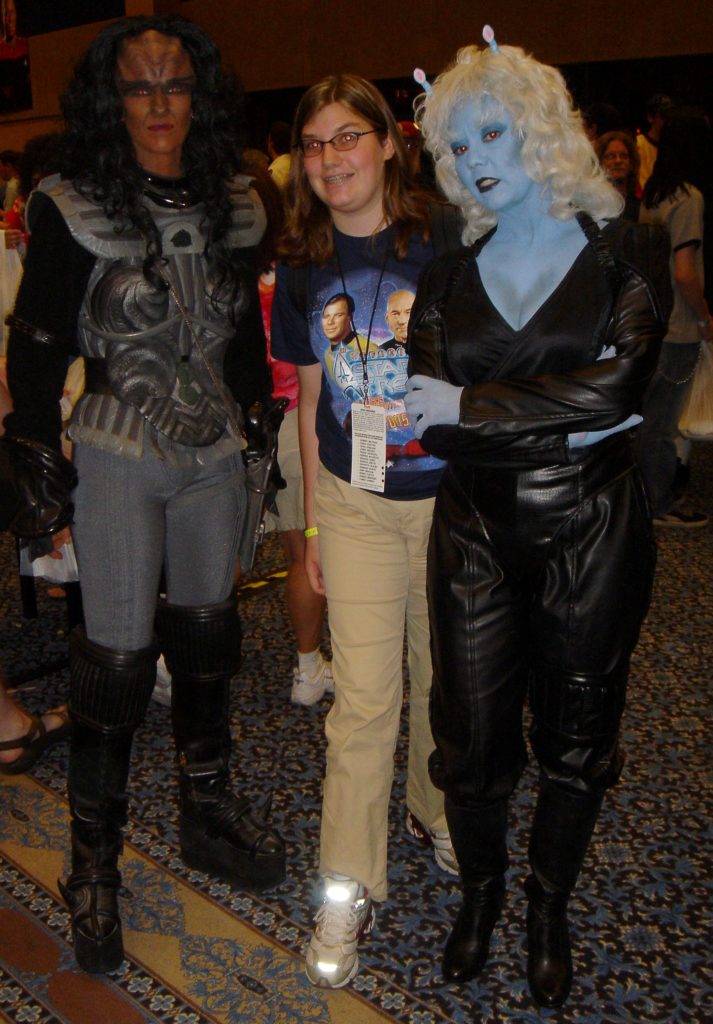
Here’s Dani posing with a couple of passers-by in the dealer’s room. I’m not sure if the Klingon and Andorian were from the Star Trek Experience, or were show attendees.
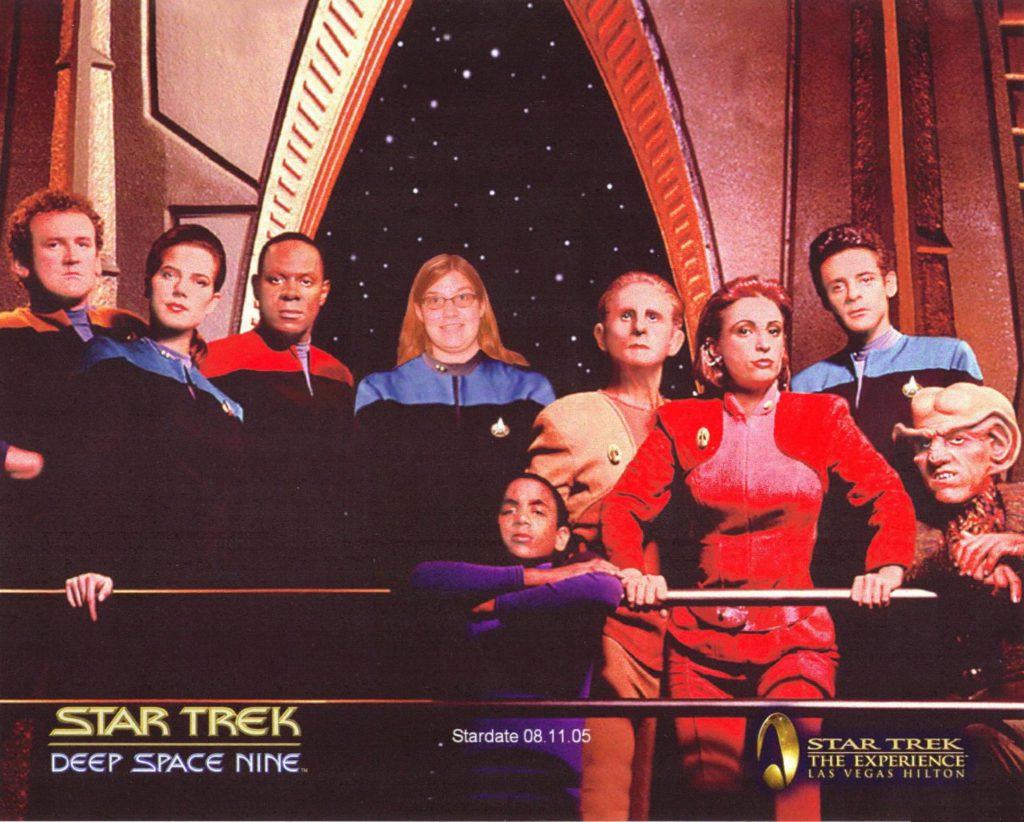
A parting shot of Dani who, through the magic of digital imagery, appears with the DS9 cast. Wrap Up: Since a big focus of the show is autographs, which we now have coming out of our (Ferengi) ears, I don’t think I’d buy a gold ticket to another convention. But it was a lot of fun, and I’d certainly consider a day pass to future conventions.
New York 2005
Dani’s Broadway Journal
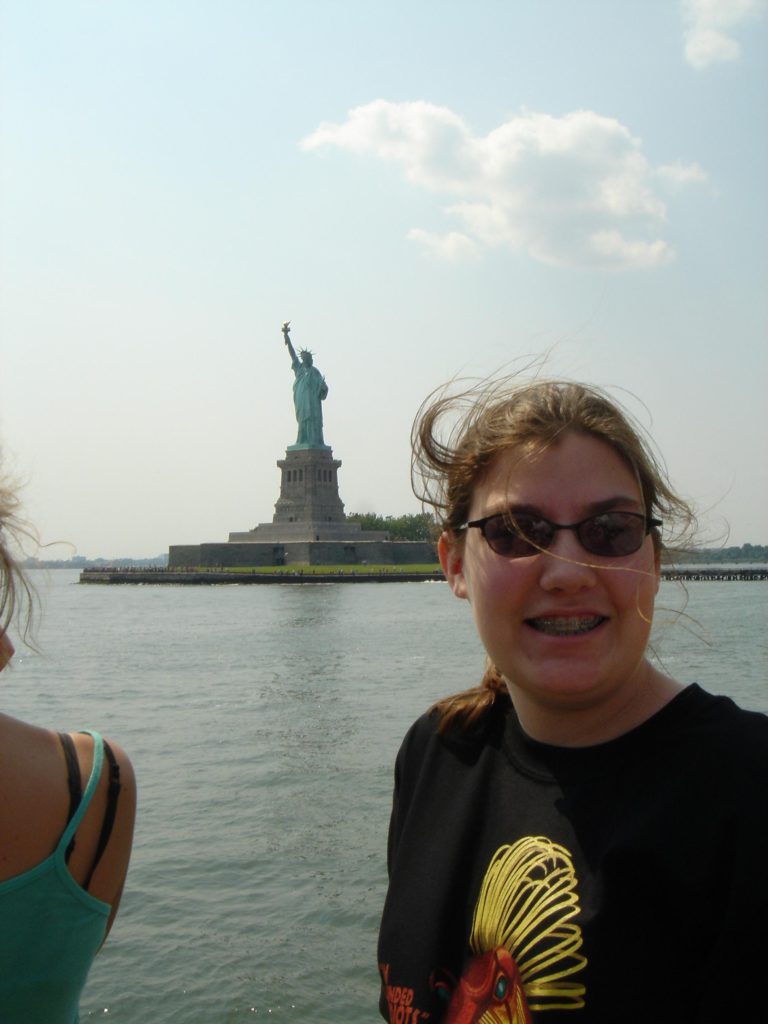
Day 1, 7/9/05 Manhattan
The day mercifully didn’t start out at the crack of dawn. We had an 11:35 direct flight to New York. The flight was rescheduled to 11:20 so we were a little worried about being late, but upon arriving at the airport we learned that due to the outer bands of Hurricane Denis the flight had been delayed to 11:40 so it didn’t really matter.
Instead of flying Delta like we normally do we tried their new commuter airline Song. It was wonderful, there are touch screens in the seats to play with that offer 24 TV channels, games, movies, and a trivia game for all the passengers. Song also offers real food for lunch. Unfortunately also due to Denis there was a lot of mild turbulence so the food couldn’t be served until the end and we were in the back of the plane but C’est la vie.
Mom and Dad were playing the trivia game and losing terribly but not for lack of trying, or so I’m told. Every time they tried to hit one answer the plane would rock and they would miss the answer they had intended. Mom gave up after one round but Dad hung in there for the second half of the flight and won the game 3 seconds before we arrived at our New York terminal.
So that we wouldn’t have to mess with finding a cab we had asked the hotel to send a car for us once we arrived. The city is a little like Los Angeles only cleaner, safer and with less graffiti. The city is so TALL!!! It’s much taller than LA. As we were driving from JFK towards the city but hadn’t gone through the tunnel yet it looked a lot like I expected it to. Some twenty or thirty story buildings mixed in with some smaller ones, billboards for upcoming Broadway shows, and very dirty. But once we got onto Manhattan itself the city was beautiful. It was very clean by comparison and the buildings are so TALL!!! I think I’m in love with this city. Even though there are no patches of grass the city is much greener than I expected. A lot of the major streets have fairly large (fifteen or twenty foot) trees planted along them. It is a beautiful city.
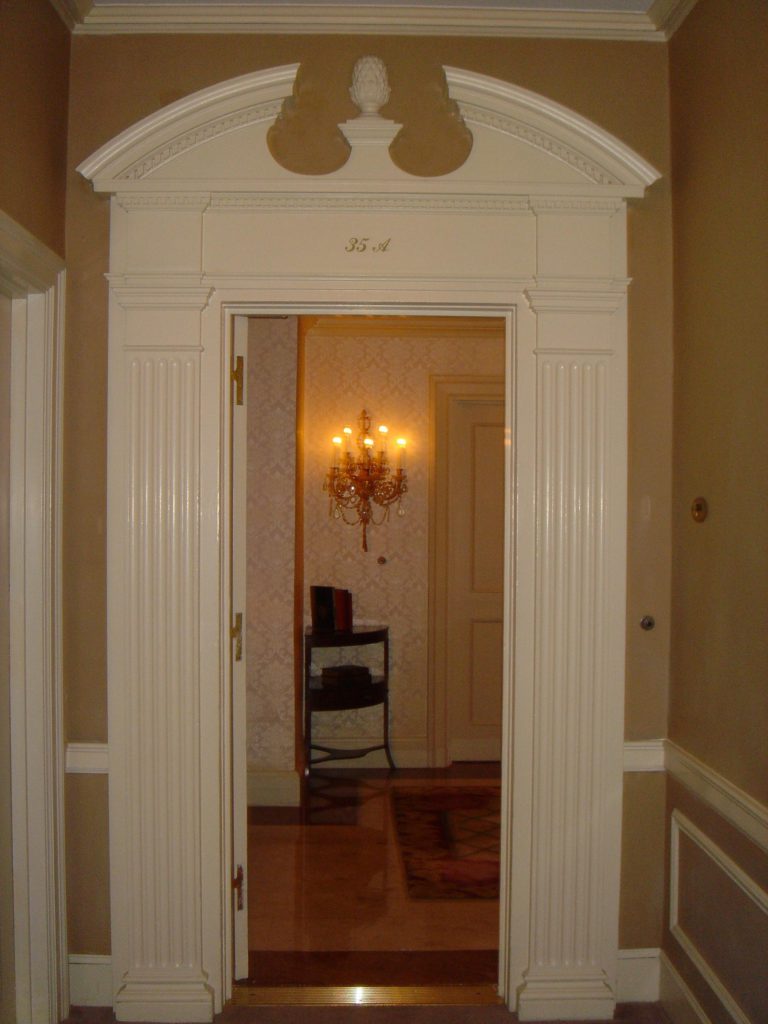
We are staying at the Waldorf Towers, in the Presidential Suite no less. Well, that’s not exactly true. We’re staying in a “sub-Suite” of the Presidential Suite. There is a main door to the Presidential Suite but there is also another door that can be closed to make the whole wing part of the Suite. It’s a very nice room with twelve-foot ceilings and tasteful decorations. There is one king-sized bed and a rollaway that fits nicely in the corner.
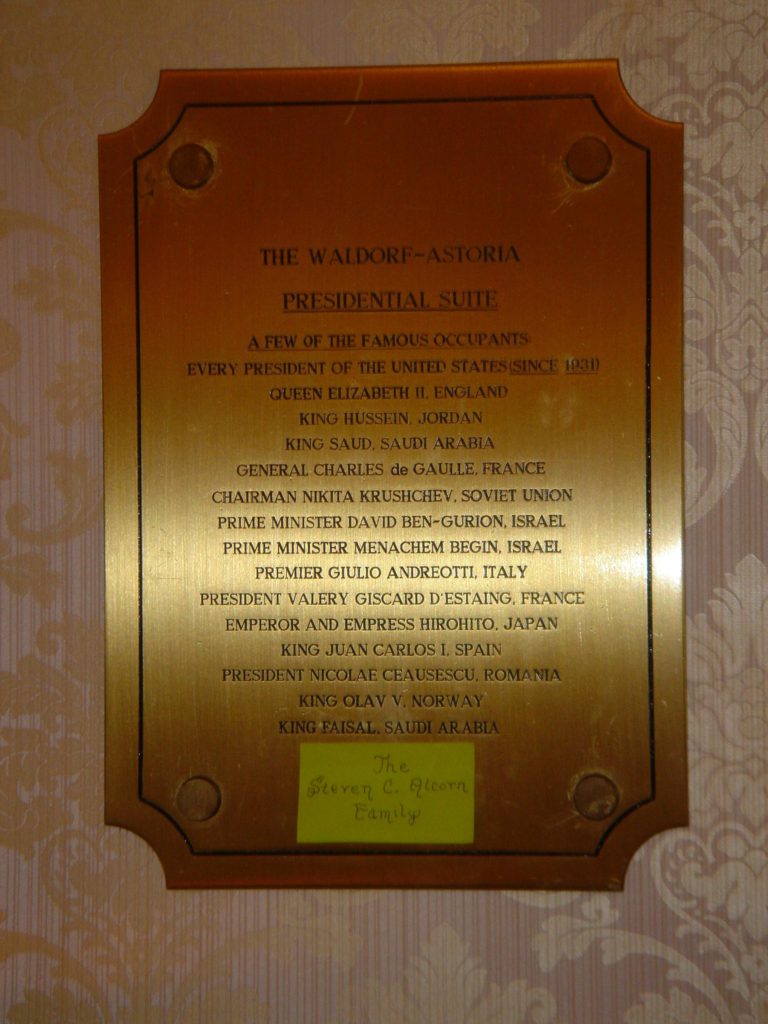
We were offered a tour of the Presidential Suite after our luggage arrived. It is to say the least large, not including its two sub-Suites. Some of the more famous patrons of the Suite include:
- Every President of the US (Since 1931)
- Queen Elizabeth II, England
- King Hussein, Jordan
- King Saud, Saudi Arabia
- General Charles de Gaulle, France
- Chairman Nikita Krushchev, Soviet Union
- Prime Minister David Ben-Gurion, Israel
- Prime Minister Menachem Begin, Israel
- Premier Giulio Andreotti, Italy
- President Valery Giscard D’Estaing, France
- Emperor and Empress Hirohito, Japan
- King Juan Carlos I, Spain
- President Nicolae Ceausesch, Romania
- King Olav V, Norway
- King Faisal, Saudi Arabia
- Mr. and Mrs. and Miss Alcorn, USA
Well okay, I made the last one up, but still. It’s pretty impressive.
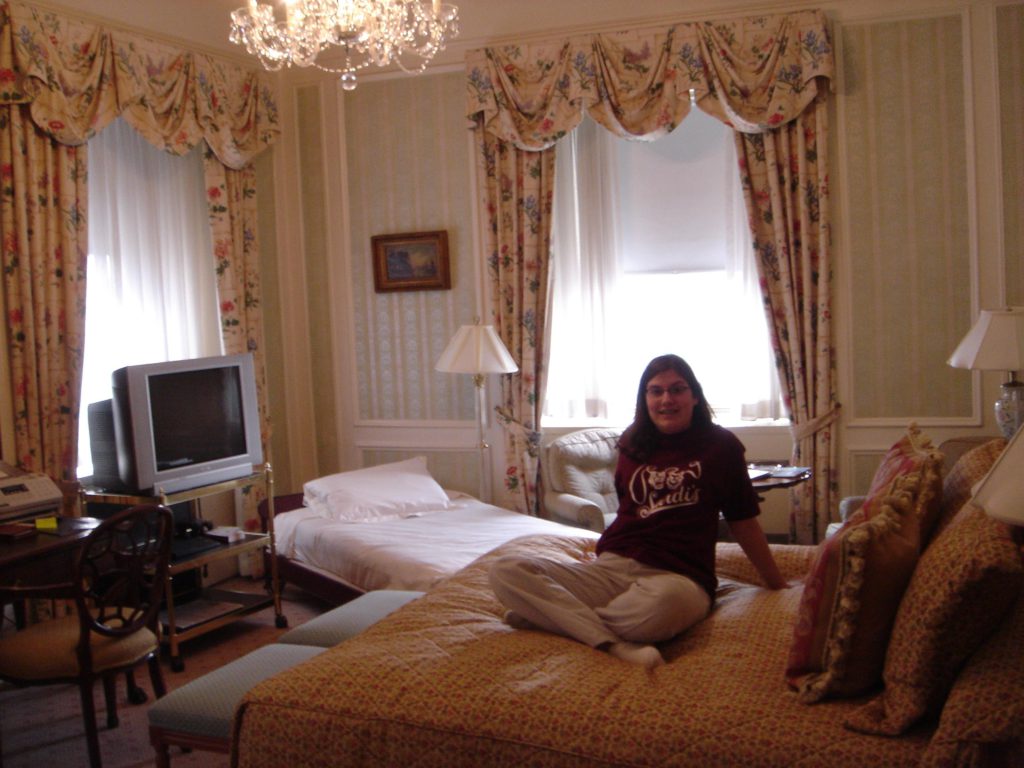
Because we hadn’t eaten all day at 3:30 we decided to have a very late lunch. Given our disheveled appearance after 2 hours on a plane we elected to try the only restaurant in the hotel that would permit our (okay, my) blasphemous jeans to enter their premises, Oscar’s.
Big mistake. The food was okay but our waiter (his name tag actually said “bus boy”) Victor seemed to have been temporally slowed down to some degree. After sitting at our table for, oh, about half an hour he walked past and caught Dad’s meaningful glare and said with great surprise, “Oh, you’re ready to order now?”
The meal proceeded on along those lines until after 5:30. The people seated next to us, at his only other table, scarily enough, got up and left without signing their check, to our great amusement.
The thing that strikes me about New York is how expensive everything is. All I had was a hamburger and fries (the fries didn’t actually come with the hamburger, we ordered them separately). It cost 21 dollars!! After such a LATE lunch we didn’t see the point in dinner so we retired early to our room for a quiet evening.
Day 2, 7/10/05 Lion King
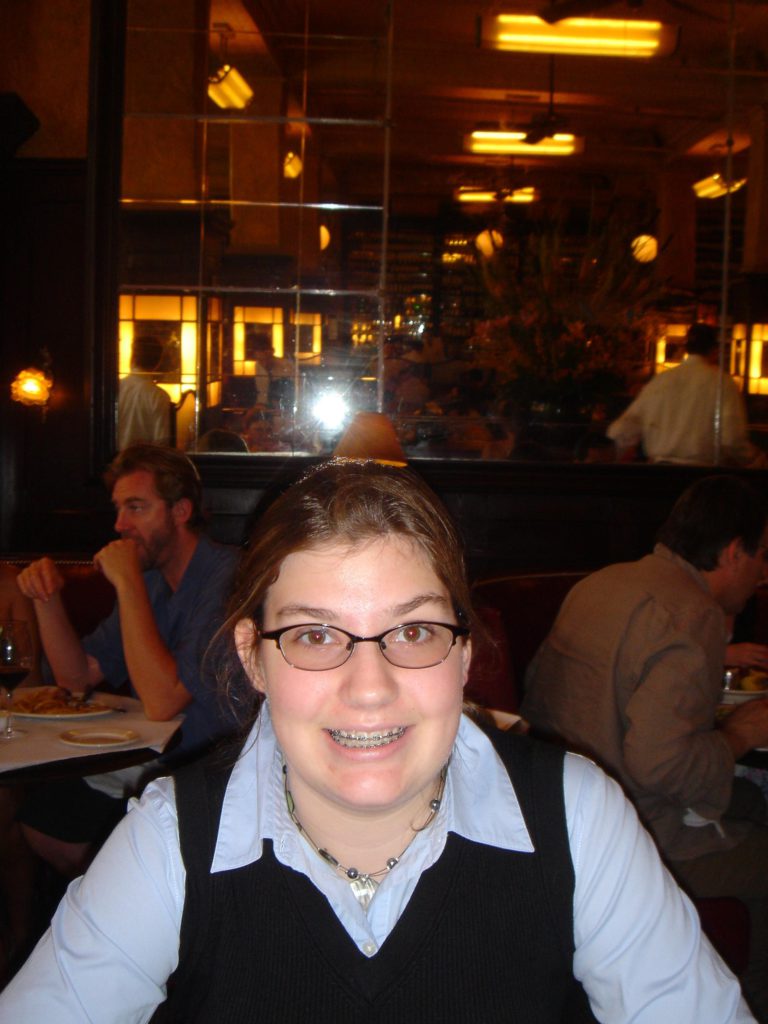
Dad and I ventured down to the 26th floor this morning for a continental breakfast. They had some good croissants (not La Duree, but hey) and some chocolate croissants filled with dark chocolate, good enough that a second one found its way onto my plate. We didn’t have too much time before lunch so we just went back up to the room.
Lunch was at a Parisian brasserie/bakery called Balthazar. It was a recommendation of Ron Siegel’s. Initially when we went in I was skeptical. There was not a soft surface in the place, so it echoed terribly. It was difficult to tell if it was old or just trying to look old. It had huge mirrors on all the walls that looked to be made out of a collection of old mirrors. None of them matched. I had the soup of the day, chilled carrot. It was delicious. Instantly all my skepticism evaporated. Mom had what she called “The best fois gras of my life” but I thought it was terrible. For our main course Dad and I had smoked salmon and Mom had beef stroganoff. The only weird thing about the whole meal was my coke; it tasted more like a drainage treatment solution than a fizzy beverage, but we had plenty of San Pelegrino. Dessert was a chocolate mousse that was to die for.
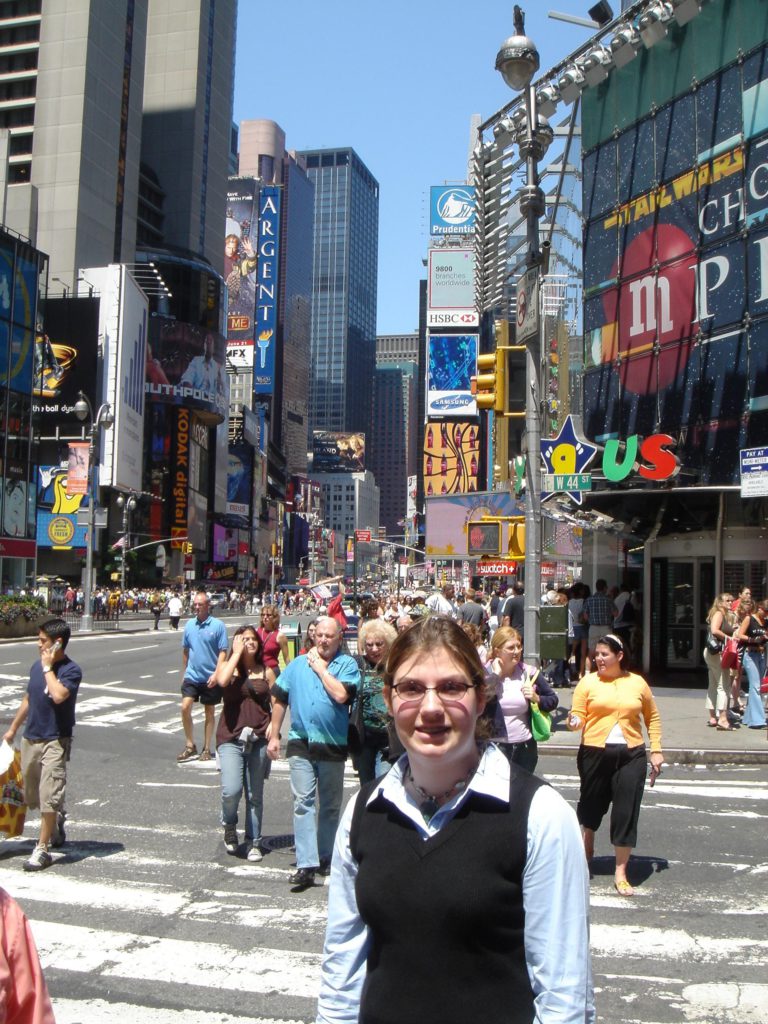
We had arrived early for lunch so we were done by 1:00. The Lion King tickets weren’t until 3:00 so we decided to stroll around the campus of NYU witch was only a block away. It was odd, without being told it was a campus I never would have guessed. It just seems like part of the city.
Mom had tried to find a pair of sunglasses that weren’t $65 at the hotel and failed, so she went into a grocery store at the campus. It was HOT out so Dad and I decided to check out the frozen food for a while. The only hint that we were in a college town was the fact that everything in the store was teenager sized. Mom also found some nice looking cheap sunglasses too.
After that it was time to head to the New Amsterdam Theater on Broadway to see Disney’s The Lion King. When I was nine we saw Lion King in Toronto but this was going to be my first “real” Broadway experience. I was pretty calm and collected while we waited outside the theater doors but about ten minuets before they opened the excitement bubbled to the surface. At long last the doors opened and I got my first look at a real theater. It was beautiful. We had the best seats in the house: first row, center on the mezzanine. The wide sweeping ceilings had beautiful paintings and gilt, the seats were made of green velvet. It was one of the most beautiful places I have ever been. When the lights finally dimmed and the curtain rose I think I was the happiest person on the continent.
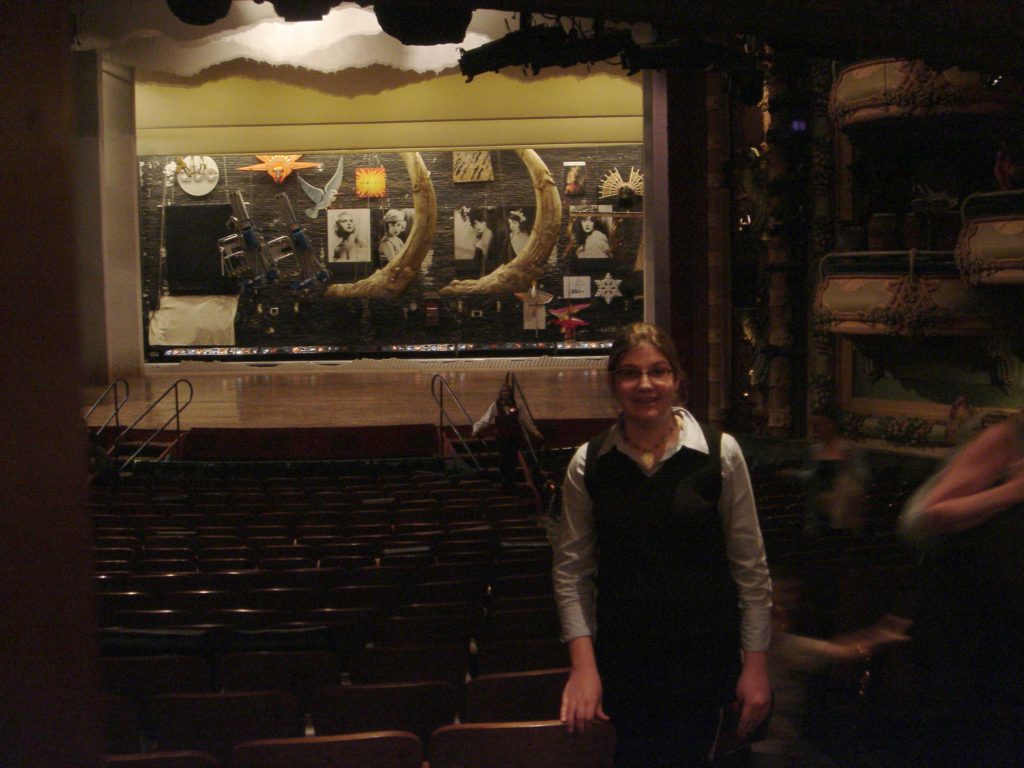
The show was even better than I remembered. I had forgotten how good it was. The young Simba and Nala were exceptional! It was such a great show. There wasn’t an inch of the stage that didn’t do something. There were at least three trapdoors and a staircase (Pride Rock) would rise in and out of the floor. The back half of the stage would raise up to about a 25-degree angle. They had plants that would inflate out of the floor and steam jets too. It was amazing. The lighting was superb, too, and the costumes. There was one cheetah that was simply breathtaking. The way the head moved it really looked like a cheetah. It was incredible.
After the show we bough a program and a shirt that had a painting of Scar’s mask that says, “I’m surrounded by idiots”.
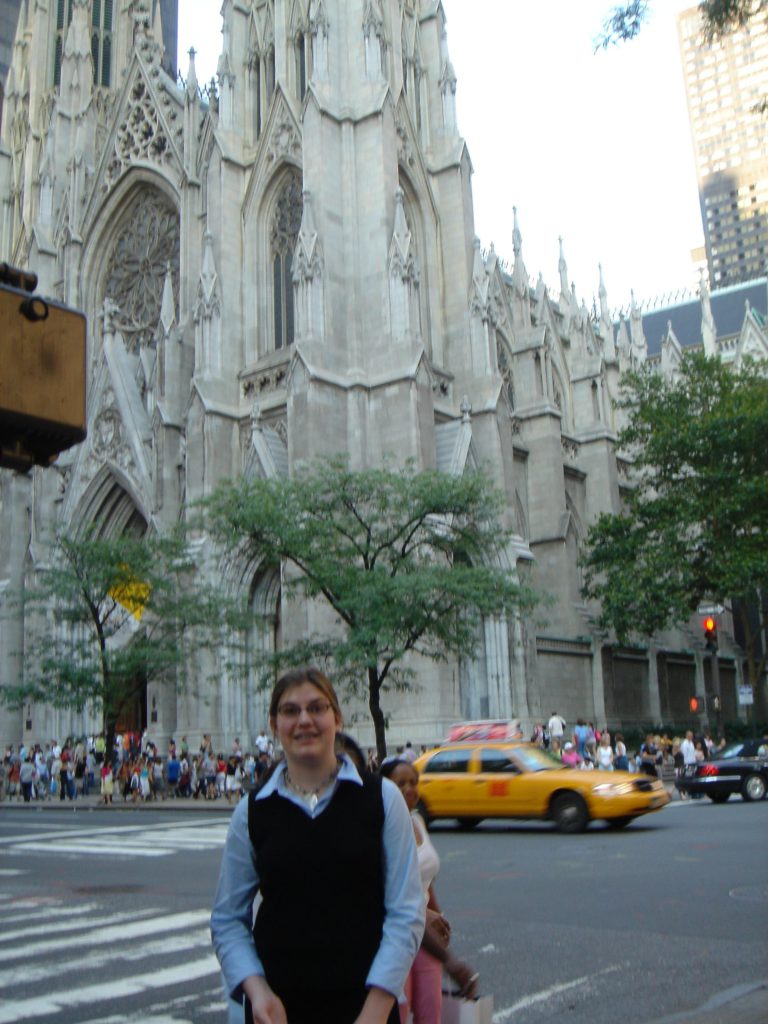
We had already wandered around Times Square so we just walked back to the hotel. Dad had been sick all through the last week so he was pretty tired. Instead of going out we had dinner at the Japanese place in the hotel. It was good, I had Chicken Teriyaki and a really weird dessert. It was called “White Chocolate Ice Berg Floating on Deep Blue Ocean”, no I’m not kidding. The ocean wasn’t very deep blue, it appeared to be Lime Jell-O with white chocolate mixed in. It was served in a dark blue bowl with a long curved stem that split into three. It should have been on Star Trek. The only thing normal about it was the iceberg (white chocolate mouse).
All in all it was a very good day.
Day 3, 7/11/05 Sightseeing
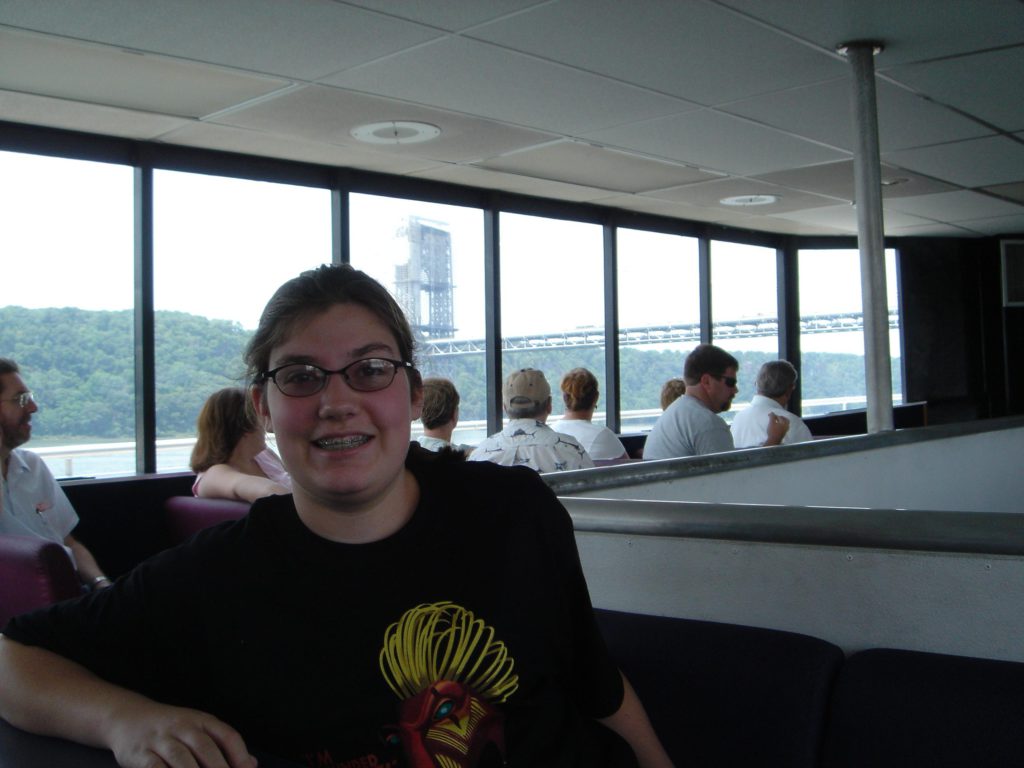
Again Dad and I had a continental breakfast. Today was the only day we didn’t have a play so it was our sightseeing day. We all went down to the lobby and asked the concierge to recommend a tour. We ended up booking a two-hour boat trip that did a complete circle around Manhattan Island. It didn’t leave until 1:30 so we had some time for lunch. We wandered around for a while until we came to a Houston’s. It was very good. Mom and Dad ordered half-pound burgers. I, opting for something lighter, ordered a French dip sandwich au jus. Unfortunately I didn’t realize it was covered in mayonnaise. Dad and I switched orders and he says it was the best French diphe’s ever had. I’m happy for him.
We didn’t realize how much the previous day’s activities had taken out of Dad. He ended up opting out of our planned sightseeing for a quiet day in the room. Mom and I caught a cab at the front of the hotel with plenty of time. The cab driver got to the corner of our hotel, made a right turn and was pulled over by a cop. Apparently the road we were on was a thru fare on weekdays and we had made an illegal turn. The cops wanting to thoroughly assert their authority over him made us wait, and wait and wait. After about ten minuets with no sign of the cops, Mom decided to bail on our poor cab driver. Having not even made it past our hotel we simply walked through another door, through the lobby and out the front again. A very confused looking bellman hailed us another cab. Once we got in and told him we wanted pier 78 and had to be there in 15 minutes. Nearing the corner of our hotel cab driver number two looked like he was about to make the same turn our last poor driver made. Mom quickly explained the fate of our last driver and he said “Oh yeah, I fuggot abou’ tha’. ” Surveying the traffic he asked me where the cops were. I told him they had just gotten out of their car and were walking towards our poor cab driver. He located a very large delivery truck and hid behind it while making the same illegal turn.
Now unfortunately traffic was bumper to bumper. I said that our boat left at 1:30, well, we arrived and 1:28. We ran down the pier and thrust our tickets at the man. He said, “Oh you need boarding passes to get on. ” I ran to the ticket office line where he had said to get them and encountered a man in front of me who had no idea what he wanted. As I stood in line for five minuets trying to be patient with the absolute moron in front of me I was sure that the boat was going to leave without us. Finally he left and I obtained boarding passes. As Mom and I stepped onto the boat they shoved off. Phew!
It was sort of funny: our guide’s name on the boat tour was Noah.
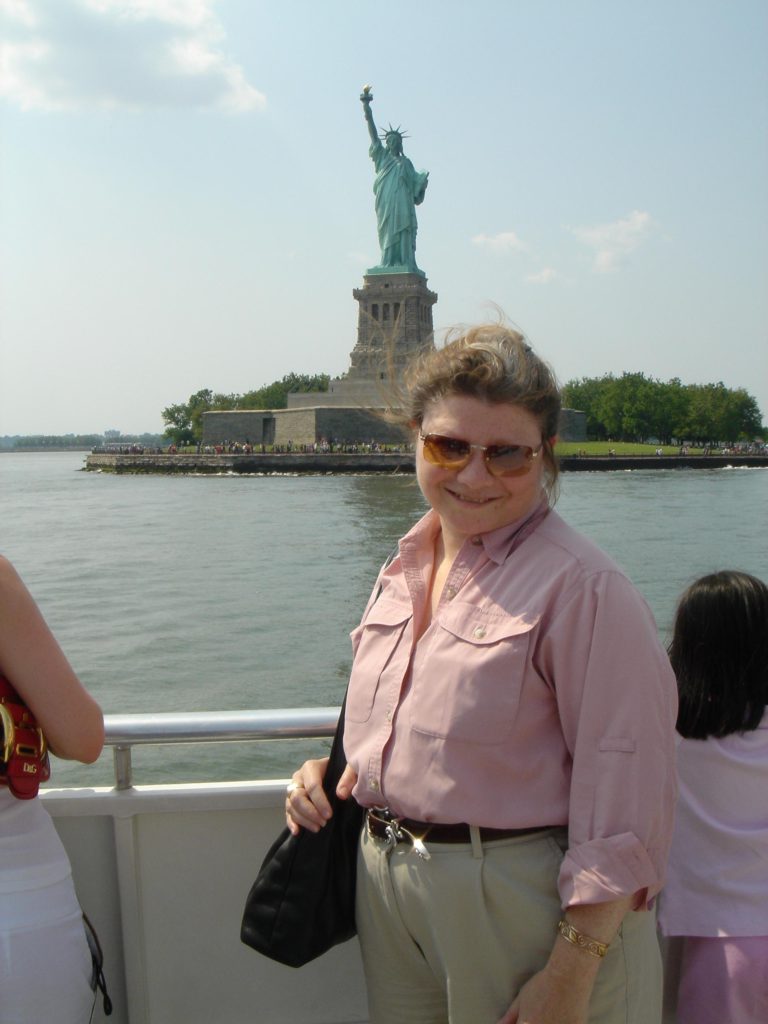
He was very personable and cracked a lot of jokes, he also knew a LOT about New York. He made a lot of potentially dull information very interesting.
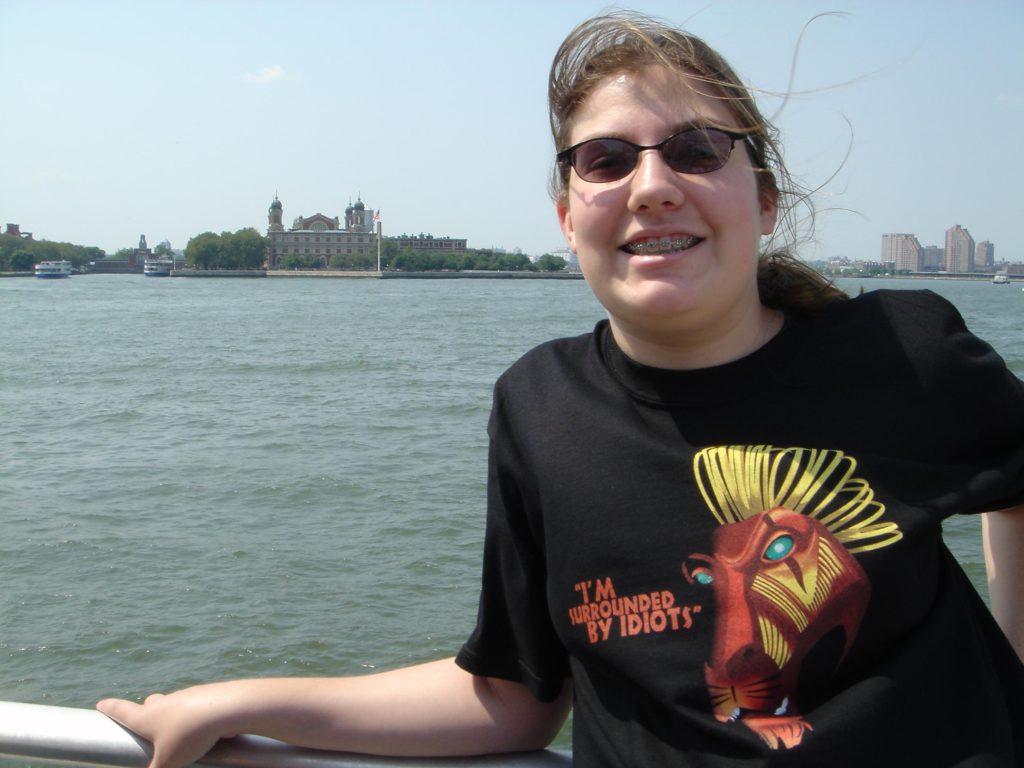
Because it was Cole’s birthday today I used my new cell phone to call her. We suffered from a bad connection and I had to redial her SIX TIMES!!
Dad was still pretty pooped when we got back to the hotel. We decided to cancel our dinner plans and have it at the Bull and Bear downstairs. It was delicious. I had a Queen cut of Prime Rib with garlic-mashed potatoes. Mom had a strip steak and Dad had Surf and Turf with some of the best lobster I’ve ever tasted. Desert was to die for. It was a real New York Cheesecake drizzled with strawberry sauce.
Another great day.
Day 4, 7/12/05 Spamalot
Yesterday the maid had accidentally turned on our alarm, it went off at 6:30. So Dad, planning ahead laszt night, turned the alarm to 10:00 instead, because we couldn’t figure how to turn it off. Still, it woke us up.
The continental breakfast is only served until 10:00 but there wasn’t much point anyway because we had a 12:00 lunch reservation at Jean Georges. Instead of having a normal menu it has a tasting menu at lunch so you pick two or three things to try. They looked so good we decided to try three. Amazingly, the courses were only $12 each.
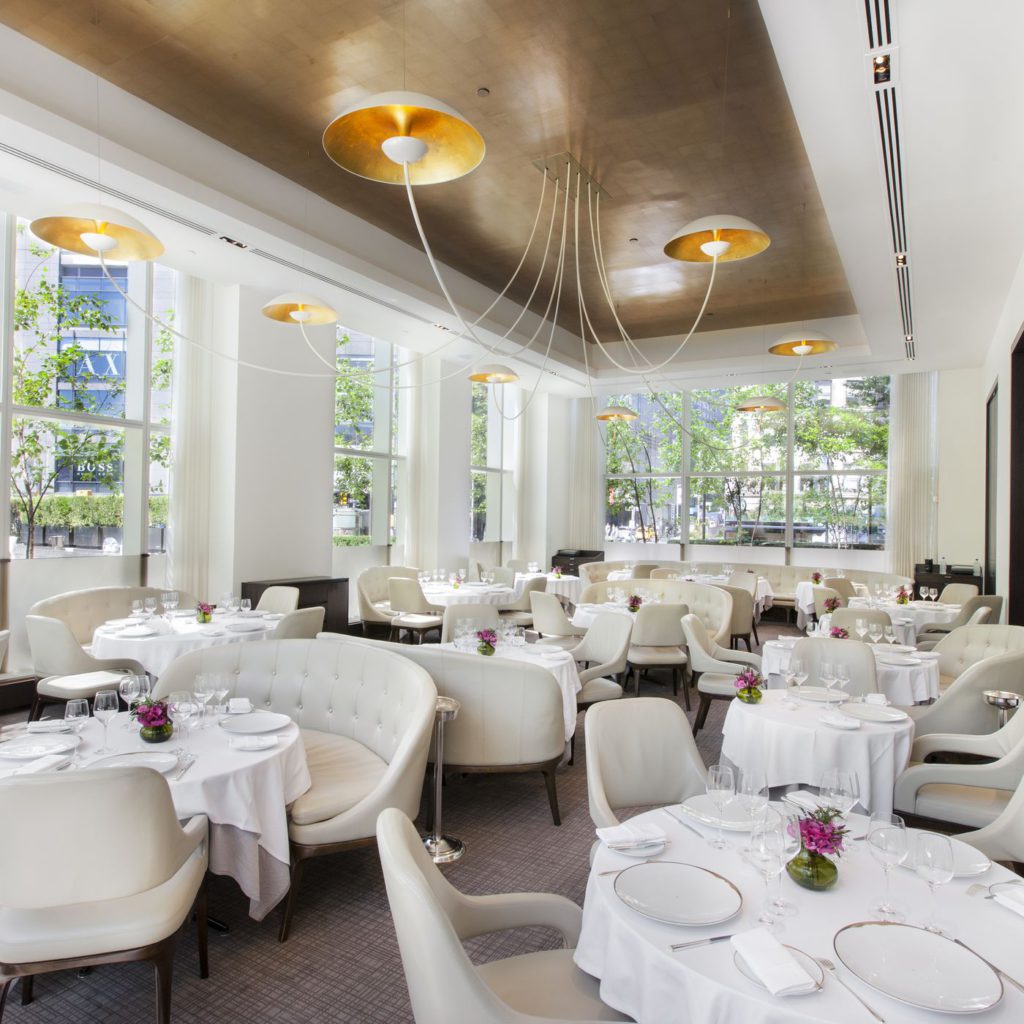
This was the best meal I think any of us has ever had. Every dish was an explosion of flavor. My favorite was Dad’s scallop dish. Mom and Dad liked his sea bass. The meal was too good to express with words. There was a REAL cheese tray. Mom couldn’t remember the last time she had a real one. There were about twenty different cheeses to choose from. She was in heaven. I personally thought they stunk (well they did!).
Dessert was the most amazing part for Mom and I. It was a Jean Georges’ specialty, marshmallows, coffee, mint or vanilla. They were not exactly the consistency of a normal marshmallow they were a little softer. Dad turned his nose up but we thought they were great.
We returned to the hotel for a quiet afternoon.
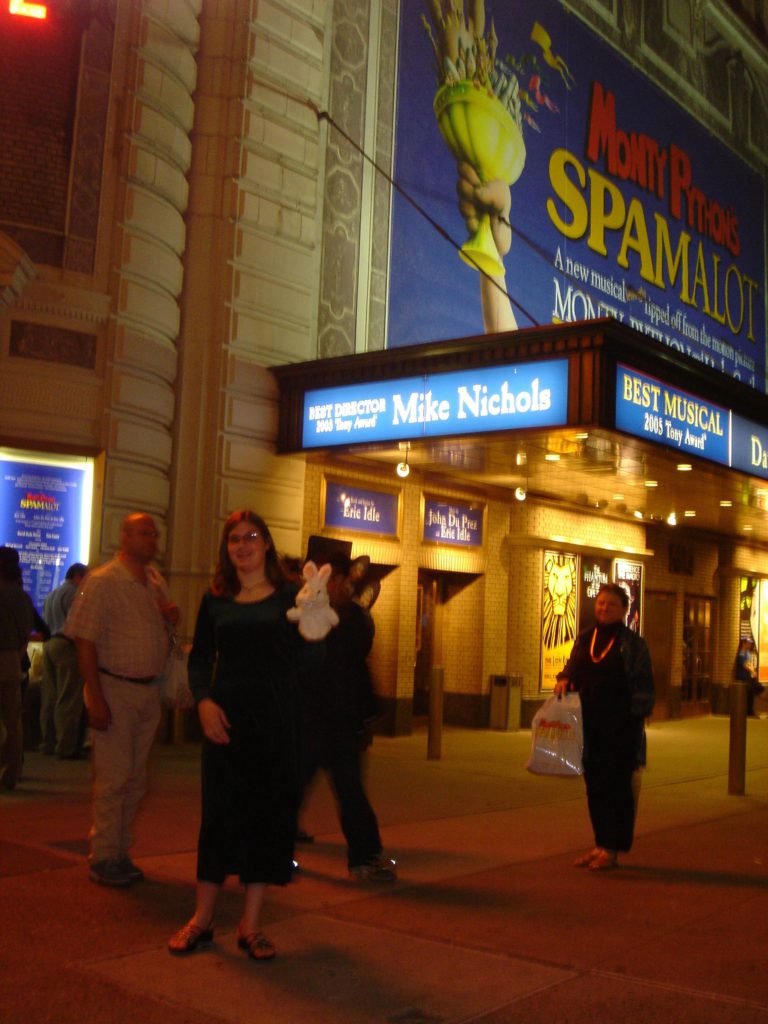
At 6:30 we left the hotel headed for Spamalot, the hottest ticket on Broadway right now. I wasn’t as thrilled about it as I am about Wicked or I was about Lion King because it’s based on Monty Python’s Quest for the Holy Grail. Dad is the real Monty Python fan but Mom likes it okay, too.
Spamalot was playing in the Schubert Theater. The show stars Tim Curry as King Arthur, David Hyde Pierce (Niles from Frasier) as Gallahad, and Hank Azaria (voice of Homer Simpson) as Lancelot.
We had pretty good seats as far as location goes, they were second row balcony, but the seats were so uncomfortable!!! There was no leg room. And normally when someone tells you there was no leg room it means they only had a couple of inches between their knees and the seat in front of them but in this case “no leg room” means that my shins were digging into the seat in front of me. I bruised the right one from prolonged pressure. There were literally only seven inches between the seat and the one in front of it.
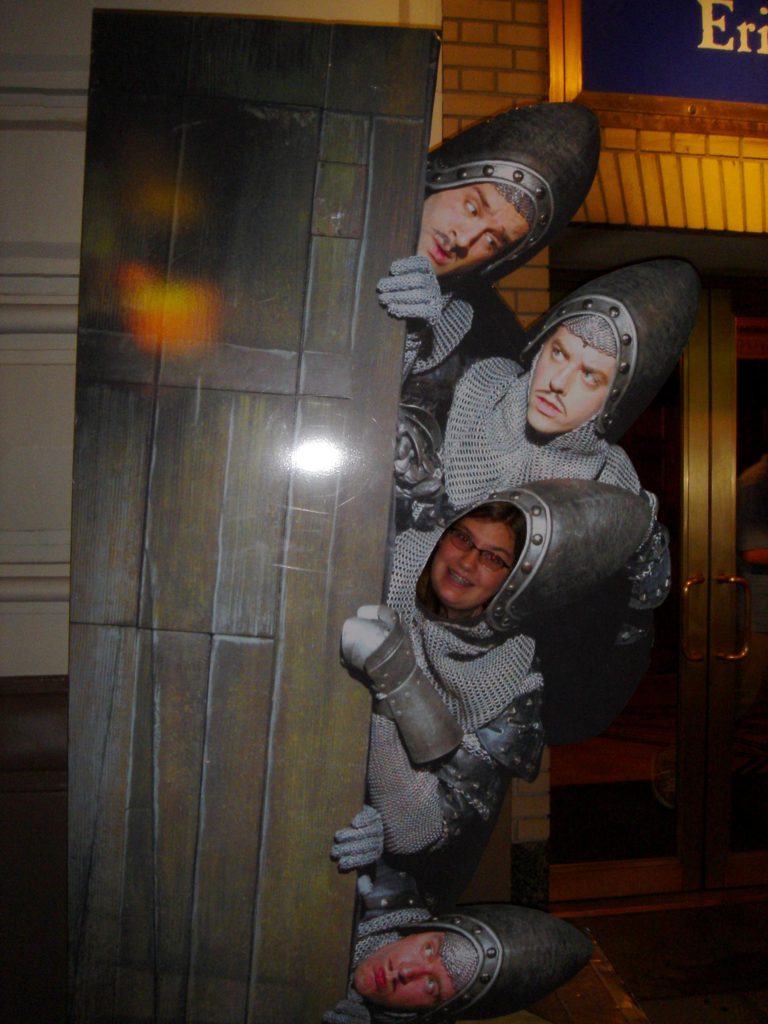
It turned out that the show was GREAT. We all loved it. We were all laughing so hard!! The cast was the original Broadway cast and you could tell, they had the audience in the palms of their hands. The show was just so funny. They had their timing down to a science. It was truly amazing that a line as simple as “Well, I guess we’d better go and find some Jews” could bring the house down.
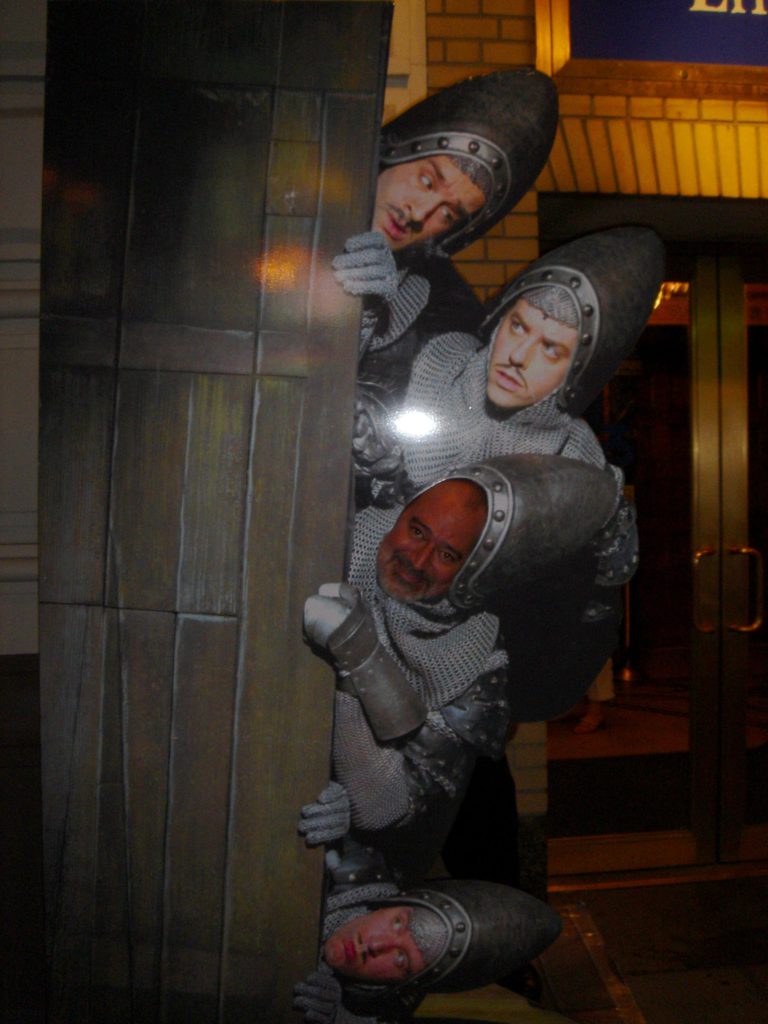
Sarah Ramirez was incredible as the Lady of the Lake. Her range was amazing; there was no style she couldn’t sing in. She also had this really funny number called “The Diva’s Lament” in the middle of the 2nd act (she doesn’t have much to do in the 2nd act). In it she asks the audience “what happened to my part?”. It ends with her yelling for someone to call her agent. After haughtily finishing and stalking off stage the action continues as though uninterrupted. Reading her bio I discovered that among one of her less prodigious roles was the cashier in “You’ve Got Mail”.
Spamalot was the funniest show we’ve seen!!!
After purchasing a “Fechez la Vache” t-shirt, a pair of coconuts, a program and a killer rabbit puppet, we crossed the street and had dinner at an after Broadway standard, Sardi’s.
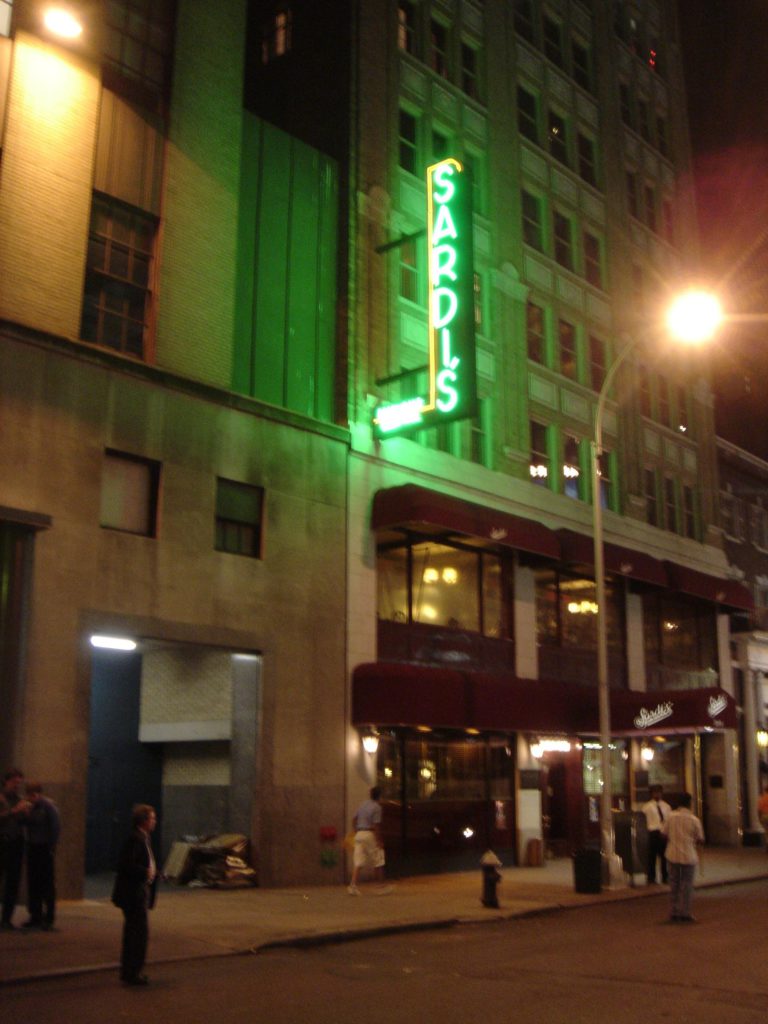
It was really good. I had Shrimp Sardi’s and Chicken. Mom and Dad both had cannelloni. The walls were lined with caricatures of famous Broadway stars. It was a really neat place. We all had a really good time.
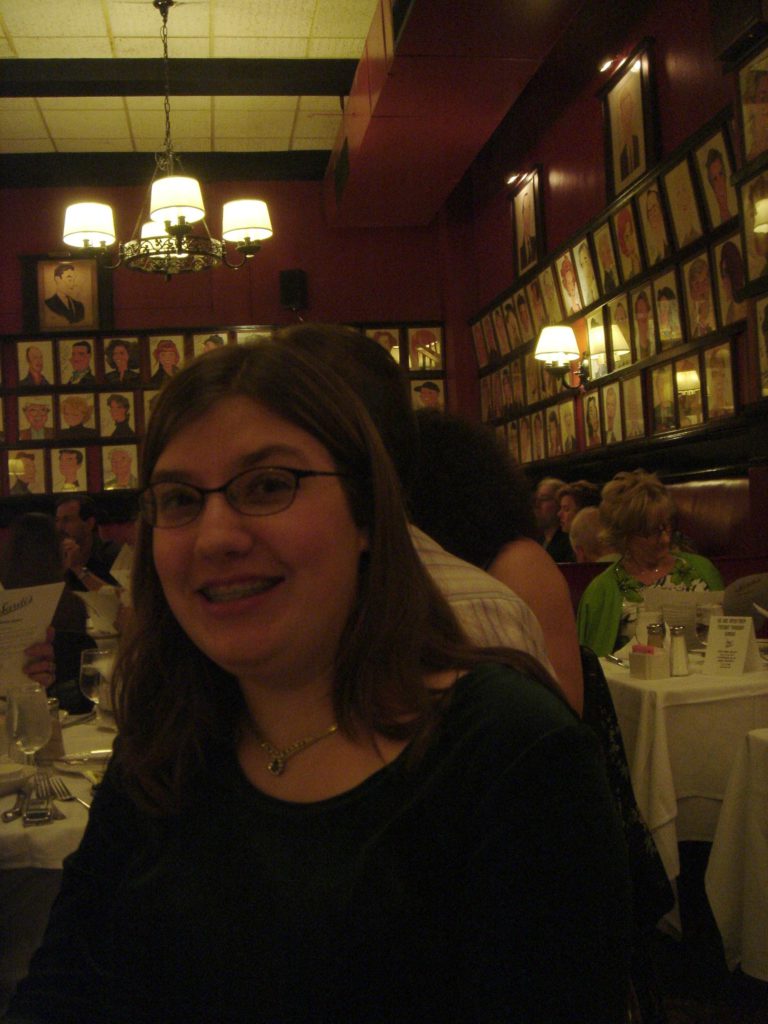
Day 5, 7/13/05 Wicked
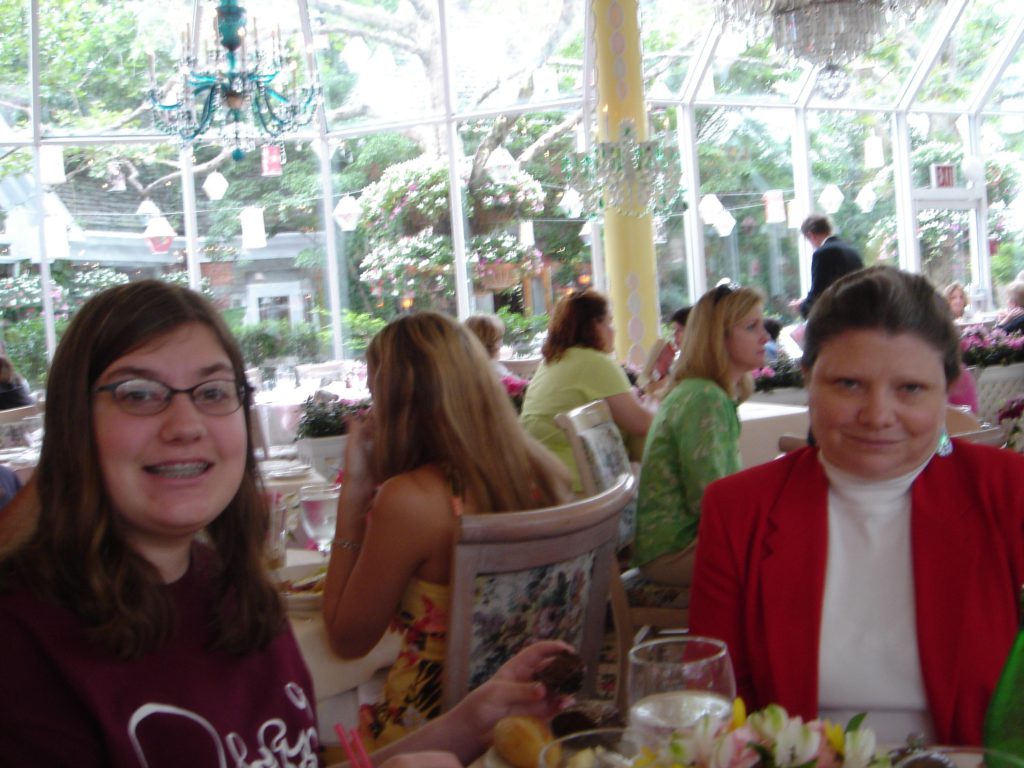
We woke up really late today (we didn’t start dinner until 10:00 last night). We elected to cancel our lunch reservation at the trendy La Bernardin and go to a tourist standard, Tavern on the Green.
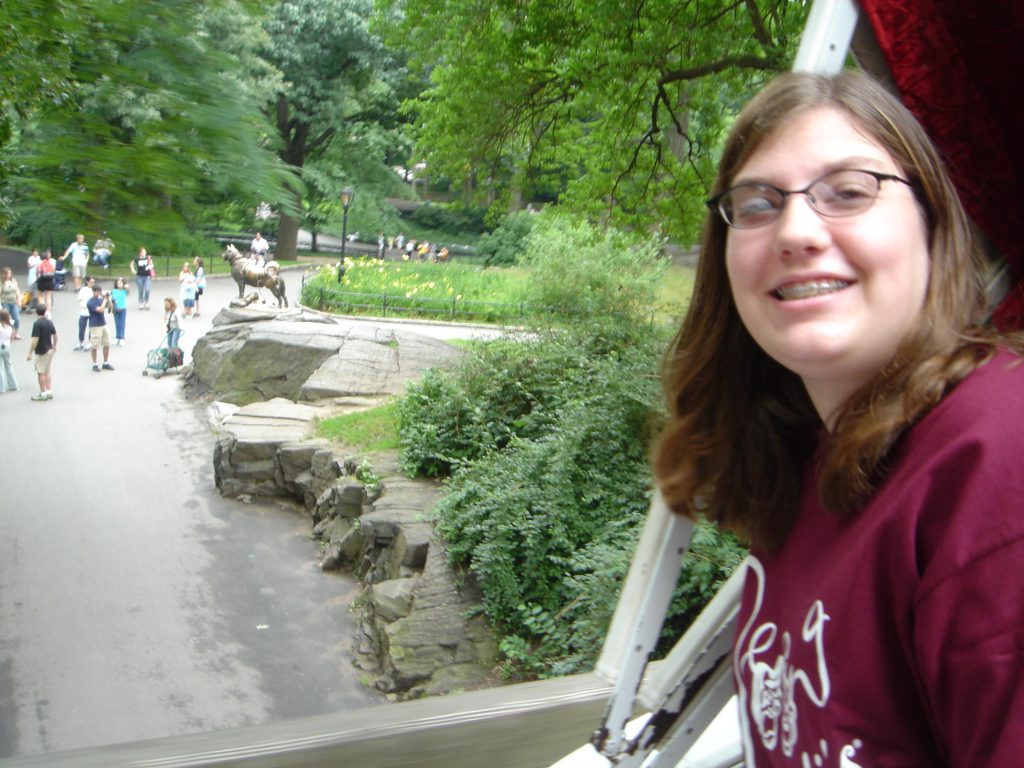
Tavern on the Green has lots and lots of dining rooms. There is a hallway covered in stained glass and mirrors that curves around and eventually leads to a conveniently placed gift shop and several of the dining rooms. The one we ate in was pretty, with a view of the garden. It looked like we were eating inside an Easter egg. The colors were all pale yellow, pink, and blue. There were at least six miss-matched chandeliers hanging from the ceiling. It was a nice meal.
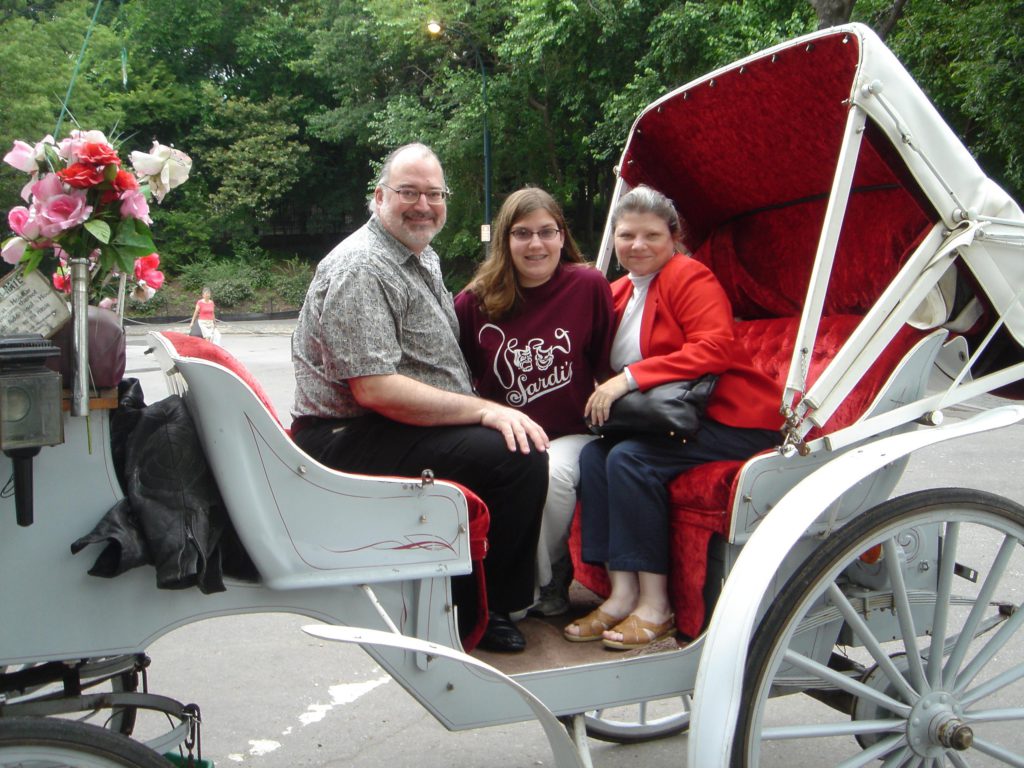
Tavern on the Green is located in Central Park. We hadn’t intended to stay afterwards but there were carriage rides launching from outside the restaurant. We took a 45-minute ride around the park. We had a nice Irish driver and a horse named Jimmy. He told us all about Central Park and he drove us past the statue of Balto, the boat launching station (kayaks), and the rows of famous writer statues.
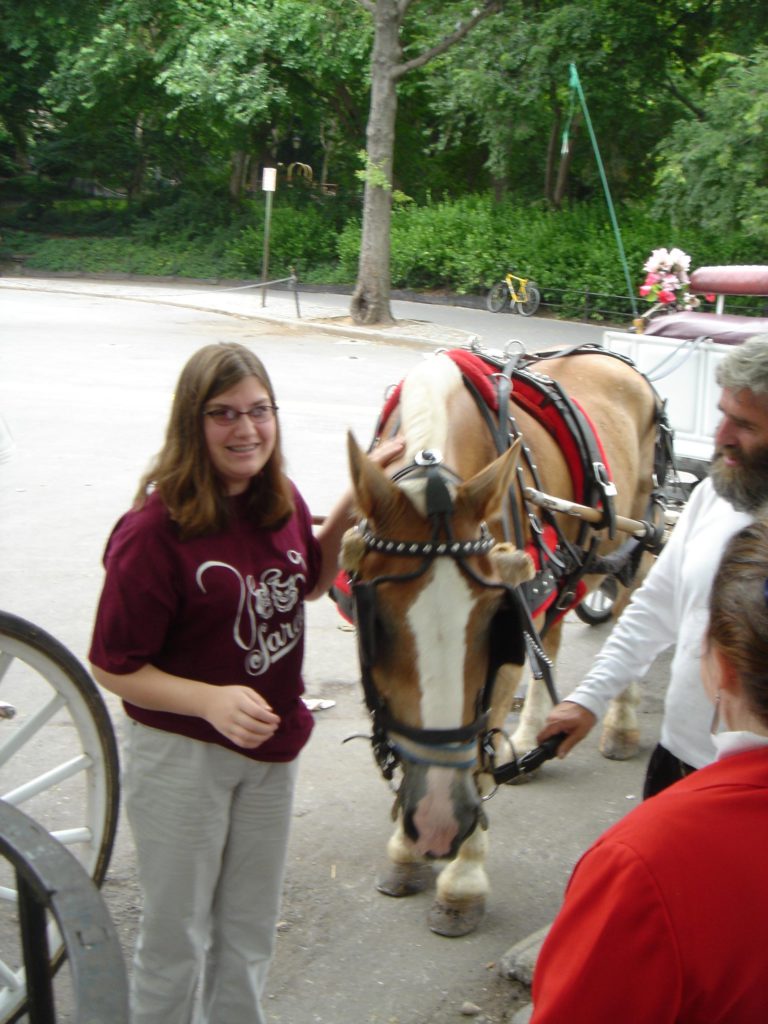
Jimmy had a very plodding gait until we were about two minutes from his stable. Then he didn’t understand why a simple red light ought to keep him from his oats. It was fun. The carriage was white with red velvet seats.
Central Park is nice, much nicer than I imagined. The trees are big, beautiful and green. It was quite a shock to see green after so much gray. I felt really safe while we were going around, and it didn’t have anything to do with the two-ton horse attached to our carriage. There are also some really scenic places in Central Park by the waterways. It was a really enjoyable afternoon.
We went back to the hotel around 4:30 to let Dad rest until Wicked. All afternoon I had been so excited I could barely sit still. After all, I have been waiting for more than 6 months to see this show. Finally at 6:30 I couldn’t take it anymore and started getting ready to go out.
It’s funny, no one seems to take Broadway seriously anymore. Everybody wants to go, but nobody wants to dress up for it. Admittedly Lion King is a kids’ show and we were going to a Sunday matinee but the dress for Spamalot was pathetic.
Well, even if no one else dresses up for Broadway, Wicked was my favorite show and I was going to look good for it. I silently kicked myself for forgetting my green blouse (get it?) but got dressed in a blue blouse, long black skirt, and black vest. The show was at 8:00 so we wanted to leave the hotel at 7:00 to allow plenty of time.
We encountered a problem downstairs. The theater was only eight blocks away but eight blocks in high heals seems like eighty, so we were going to take a cab, as were twelve other couples. At this point I started to panic, I was NOT going to miss the opening of Wicked. But luck was in our favor, a limo driver capitalizing on the lack of cabs in the vicinity offered to take us the eight blocks for $45 + tip. Okay, whatever, just get us there in time for the show.
It ended up being a good thing because, fishing for more business, he offered to pick us up from the hotel the next morning for our flight. We arrived at the theater with plenty of time to spare.
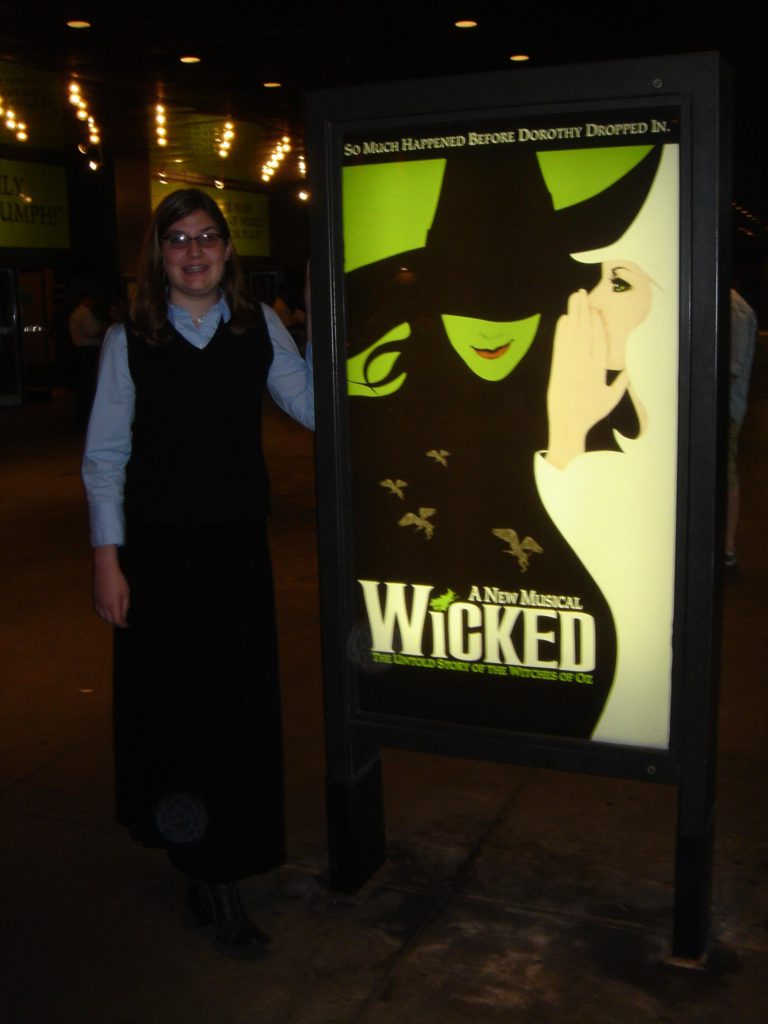
Our seats were REALLY GOOD!!! Third row, center section. OH MY GOD!!! We sat down and I was in shock. I knew we had good seats but this was unbelievable. This theater was more modern than the other theaters we’d been in. This one felt newer, the seats were wide with lots of leg room and it was a lot bigger.
The other shows’ sets somewhat extended into the theaters, but this one was just incredible. The whole proscenium was covered with gears. Some of the gears were decorative but others actually worked. There were also dead vines over everything. Elaborate sets on each side of the stage incorporated balconies and staircases. A huge tin dragon hung above the arch of the stage, animated by cables!!
Finally the show started, and WOW!! This was no longer the Broadway cast, but everyone was so good!! The lead was a look alike for Idina Menzel the original Elphaba. She sounded like her, and she looked just like her.
After listening to the music for six months I was still blown away by all the story that you can’t necessarily get from the music. It was so cool to see all of the acting that went into the songs that made them so great. All of the characters were so REAL. I have seen some great theater but if the best thing I ever saw was a 10 this was an 11. All of the talent that went into the show was just so good.
The number that really surprised me was “No Good Deed. ” On the CD it is a really good song, but live it stopped the show.
Because of where our seats were it felt like we were getting a private show for the first five rows of the audience. All of the major action of the show took place on the right side of the stage, literally ten feet in front of us. TEN FEET!! It was like they were telling this story to us. You could see all of their facial expressions and it was just so cool.
There were two wings of the stage that came out on either side of the orchestra pit and most of the major action happened on that wing right in front of us. I have never had an experience quite like this.
It was just a phenomenal show. I loved every minute of it. At the end of the show we would all have happily gone back in and watched it again.
After the show was over we loaded up on souvenirs, a Wicked shirt that says “Defy Gravity” on the back, a coffee cup, a program, a baseball hat, and a jacket.
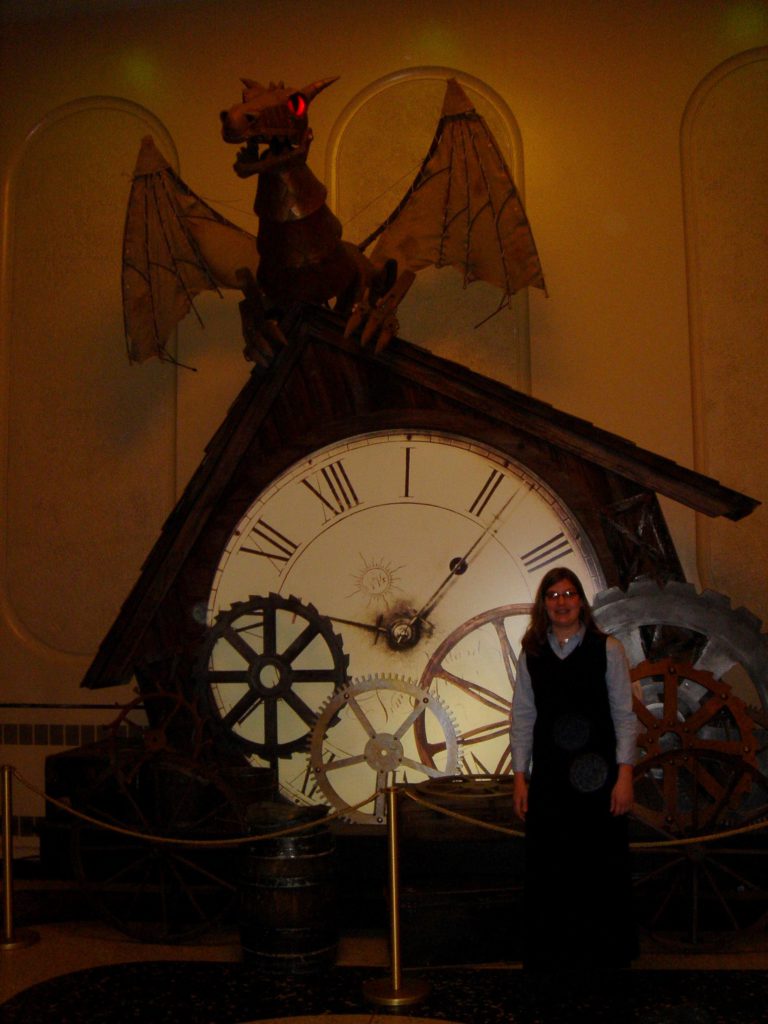
My parents were hungry after the show so we went to the Stage Deli (recommended by Thomas) and they had sandwiches larger than their heads. I was too excited to eat.
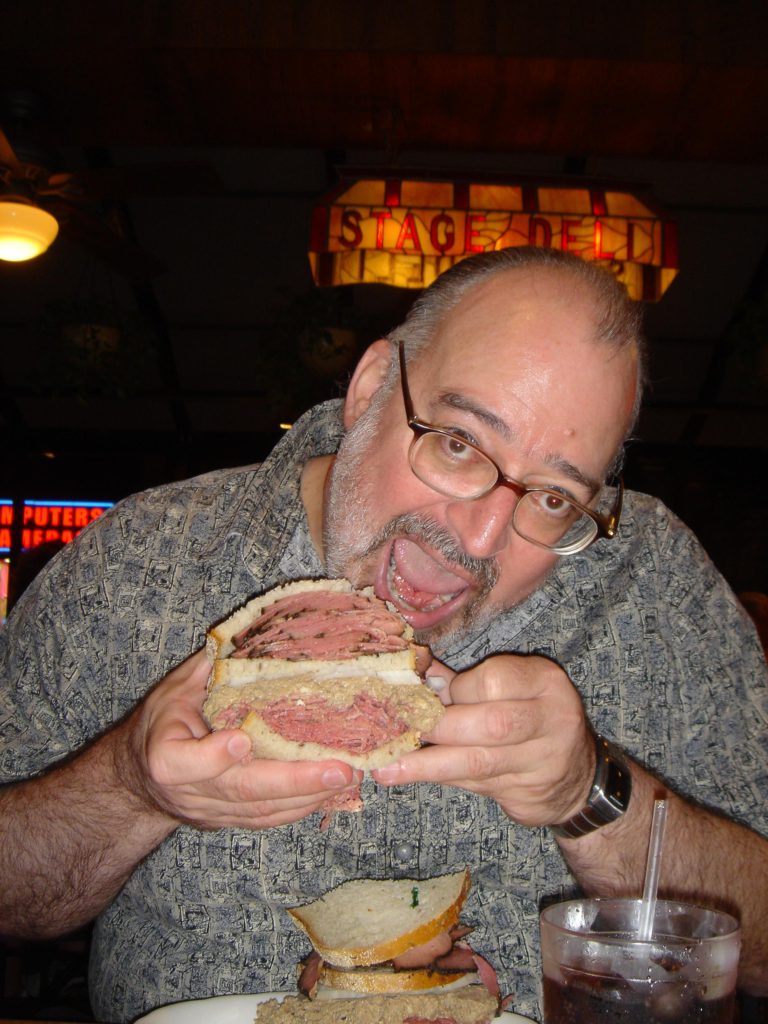
All in all this has been the best trip EVER!!!
Panama Canal 2005
Ft. Lauderdale • Limón, Costa Rica • Colon, Panama Grand Cayman • Cozumel, Mexico • Belize
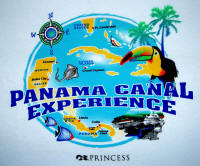
Ft. Lauderdale
Friday, March 18, 2005
The search for a Spring break cruse that matched Dani’s school schedule and went to places we hadn’t been proved a challenge. In fact, there was only one! Fortunately it happened to be on our favorite ship, the Coral Princess, on which we sailed to Alaska two years ago. Ever the engineer, Linda had always wanted to go through the Panama Canal, and that’s where it was headed, so we grabbed the last mini-suite and got a sweet deal on it, too, via the Internet.
The Coral Princess was actually built for the Panama Canal, so it’s skinnier than most new ships. As a result, it accommodates less than 2000 passengers (compared to 3000 on most. ) That difference is what makes it our favorite. The ship has all the big ship amenities — even a ceramics and art studio — without the crowds. Its design is clever, with smaller public spaces and a passenger flow that never crushes everyone into the same area at the same time.
It was also convenient that the ship was leaving from Ft. Lauderdale’s Port Everglades, avoiding the extra distance (and death risk) of Miami. Averaging just over 80 mph on the Turnpike we made it in under four hours, including a stop for gas and food — not necessarily in that order.
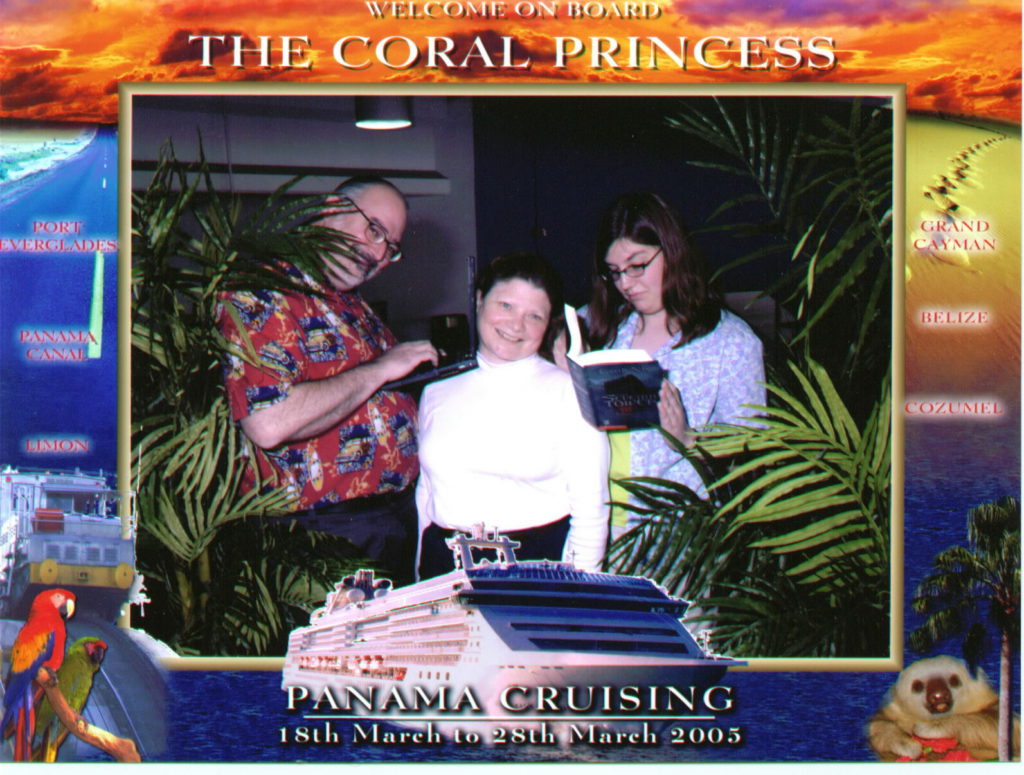
The Port Everglades terminal amazingly grungy (and possibly being remodeled — it was hard to tell), but it didn’t really matter because check in was so efficient we were only there for about five minutes.
Our cabin layout is identical to our last voyage on this ship, but it’s on the port side and forward, which has so far been surprisingly disorienting. Couple that with last summer’s memories of the similar but different Star Princess, and wandering around has been a bit like a bizarre dream, or constant deja vu.
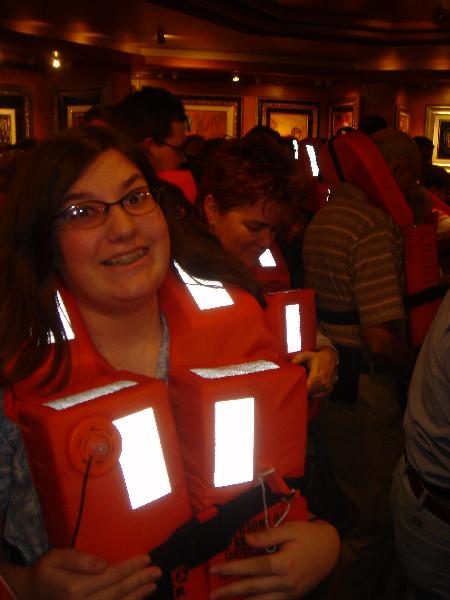
Life station drill was pretty unpleasant, with a hundred or so of us packed into the art gallery. I’m becoming convinced they make it awful so that no matter what happens later you’ll approach it with the attitude, “could be worse.” It’s possible that actually abandoning ship would be more pleasant.
There was a line for anytime seating at the dining room, so we went to the cover charge restaurant, Sabatini’s, (which is always uncrowded at the beginning of the cruise) for their 3000-course dinner. Service and food were good, in fact identical to previous visits on this and other Princess ships.
At Sea
Saturday, March 19, 2005
We spent a restful day at sea. Dani and I watched a pottery wheel demonstration, then spent a couple of hours painting ceramics in the studio. Linda spent most of the day doing needlepoint or reading on the balcony. It was the only day I can remember having all three meals in the ships dining room.
I learned my friend Bill Canon, the Hollywood screenwriter, died suddenly of a heart attack last week. He was on his boat in Santa Barbara Harbor. His death came as quite a shock, as I’d just talked to him a few days before. Education to Go has asked me to take over his online classes. It was a difficult way to get the news, but I suppose there’s no good way. I’ll miss him.
Dinner was memorable. It was formal night, so we arrived from the photographers as dressed up as we ever get, in tuxes and evening gowns (I opted for the tux, rather than the gown).
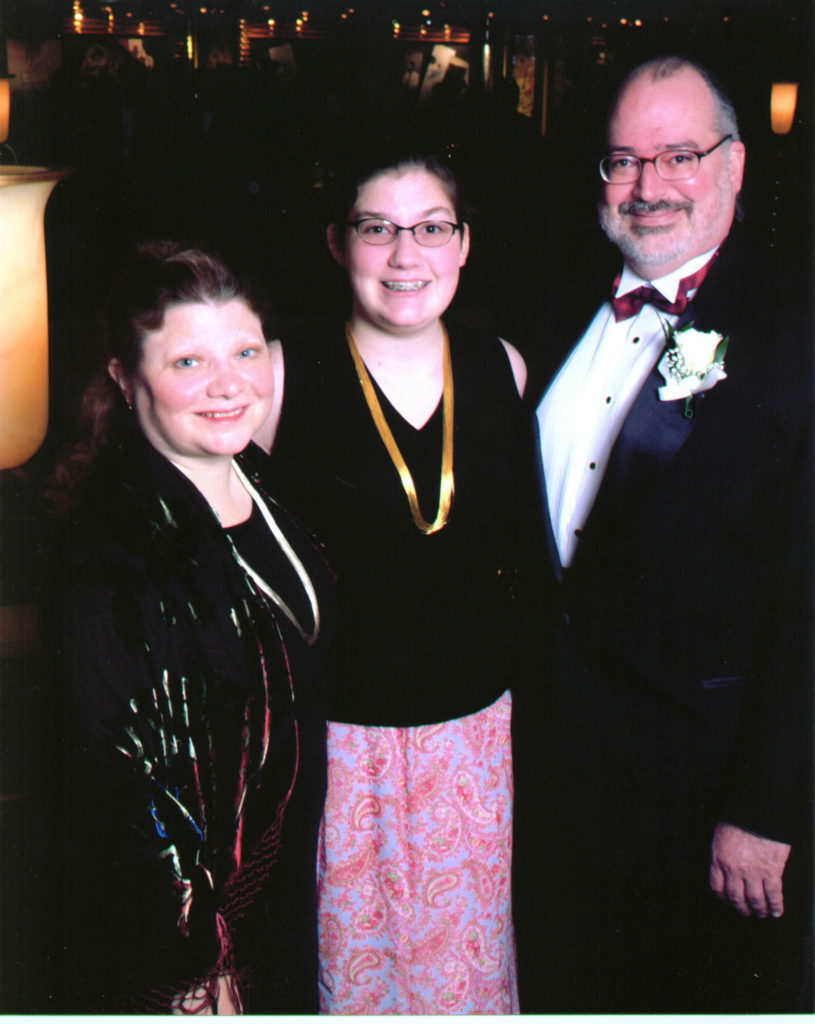
We were greeted at the door by Godwin, the head waiter, who knew our names despite the fact we’d never met. (We asked him later and he said he saw our name on the ID screen as he watched the passengers check in. Wow. ) He ushered us to a lovely window table which must be the best table in the house, not because of its location but because our waiter was Jorge, possibly the finest waiter I’ve ever had. Although he was busy, he made excellent service seem easy, and he was extraordinarily personable, and funny, too. (Waving the pepper grinder, he asked if I wanted pepper on my salad; when I said yes, he set the tiny pepper shaker from the table next to my plate. )
Jorge is from Mexico, and apologizes for his English, which he says is only slightly better than his Spanish. As other diners left they were asking Jorge how they could get one of his tables again. As we, too, were wondering this the problem was solved for us. Goodwin came by and asked us I we’d like him to reserve that table for us every night at the same time. We replied with a resounding “Yes!”
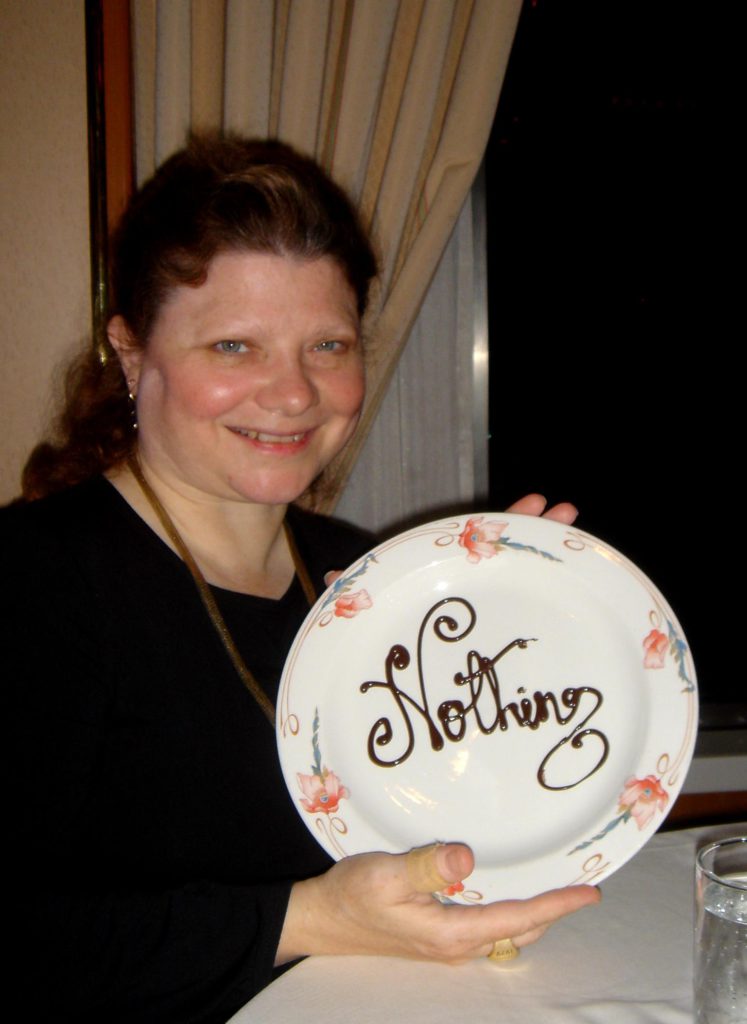
Linda said she wanted nothing for dessert. You can see the results in the photo. The Broadway show in the Princess Theater was top notch. It’s staging was particularly unique, with onstage locker and the cast changing wardrobes between numbers in full view. The segments from Evita, Grease and Oklahoma were particularly good.
At Sea
Sunday, March 20, 2005
Another quiet day a sea, with a little painting and a long nap. we’re definitely now on cruise time. Dani is getting a cold, probably the one I dodged last week.
Limón, Costa Rica
Monday, March 21, 2005
We docked in the wee hours at Limón, Costa Rica. Dani didn’t feel well enough for our rainforest aerial tram trip, so Linda and I set out on our own.
Our guide, Porfiro, was extremely intelligent and entertaining. He grew up in a shack on a coffee plantation, but because of Costa Rica’s incredible educational system (92% literacy rate) he was able to finish college on a full scholarship. The educational system is paid for with funds saved by eliminating the country’s entire army. Sounds like a plan.
Costa Rica is extremely conservation oriented. 25% of the country is national parks and other preserves. And there are serious effort to promote bio-diversity in all areas, including agricultural lands. This is partly subsidized by tourism, which accounts for 45% of the country’s economy.
Limón is a small town with no harbor, just a pier. We boarded a bus and headed out of town, which didn’t take long. By our standards, the buildings are shacks, some little more than piles of corrugated metal. But as Porfiro put it, “most people are happy, because you can’t miss what you don’t know about. ” I noticed they all had TV antennas, though.
The staples of Costa Rica are rice and beans. As Porfiro explained, they eat three meals a day:
- Breakfast: Rice and Beans
- Lunch: Rice and Beans
- Dinner: Beans and Rice
Once out of town we were surrounded by verdant countryside, interspersed with banana and pineapple plantations. The country’s main crop, coffee, is only grown above 3000 ft, and elevation we never reached
The country spans the isthmus, from Caribbean to Pacific, between Nicaragua and Panama. There are over 600 rivers — we crossed many — and nearly a dozen distinct bio zones.
We also crossed some impressive chasms created by a 1991 earthquake. The entire isthmus is geologically young, having been thrust up about 70 million years ago to form a land bridge between North and South America. This allowed the migration of species in both directions, and altered the world’s ocean currents, allowing the gulf stream to warm Europe. A number of active volcanoes testify to the area’s continued geologic activity.
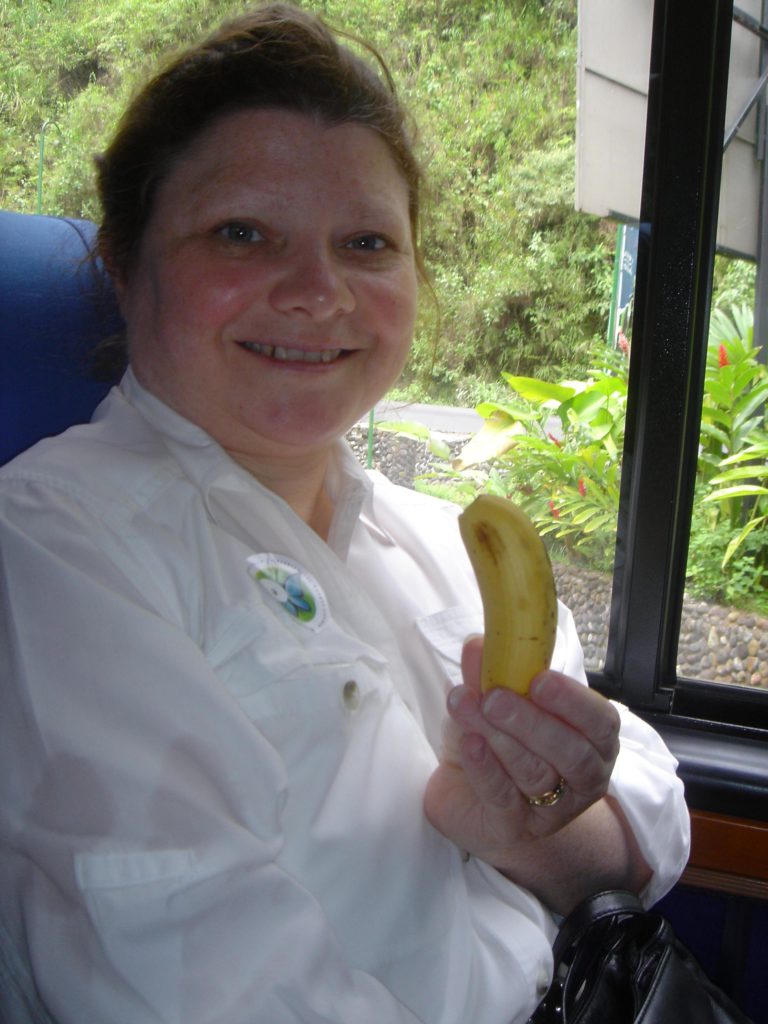
Not far out of Limón our driver stopped and bought us a stalk of delicious little bananas. We learned more about them later.
It was about a two hour drive to the aerial tram, where we rode in an open trailer pulled by a tractor to reach the boarding area. The tram travels over a mile, making a round trip in just over an hour, and stopping periodically to load and unload. There are 24 seven-passenger cars. The seventh passenger is a naturalist.
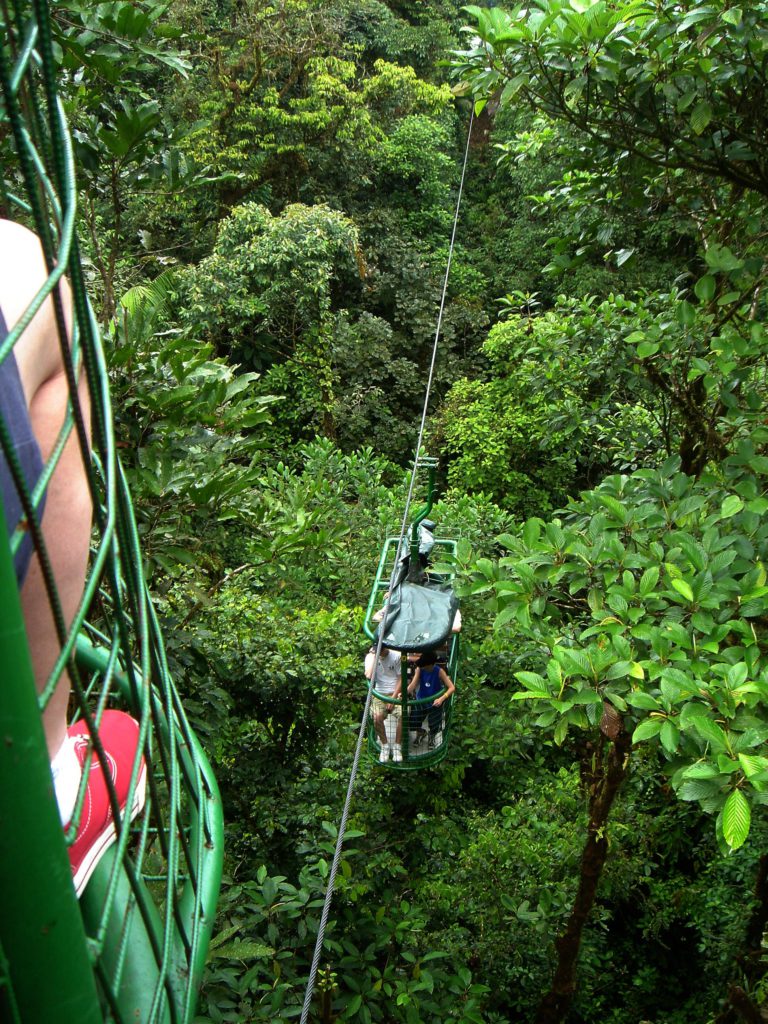
Although the views – and height and length — of the ride couldn’t compare with the one in Cairns, Australia (although they brashly claimed this was the greatest in the world) it was really nice having a naturalist along to point out the diverse elements of the ecosystem.
The journey out was made nearly on the forest floor, and the return tip in the canopy. We spotted a family of Coati (similar to raccoons) crossing the forest floor, but saw little other wildlife, since it’s mostly nocturnal. We learned a lot about the flora, though. Although this is the dry season, about halfway through our journey a slight drizzle began, not enough to really get us wet, but the perfect atmosphere for a rainforest that gets more than 300 inches of rain a year.
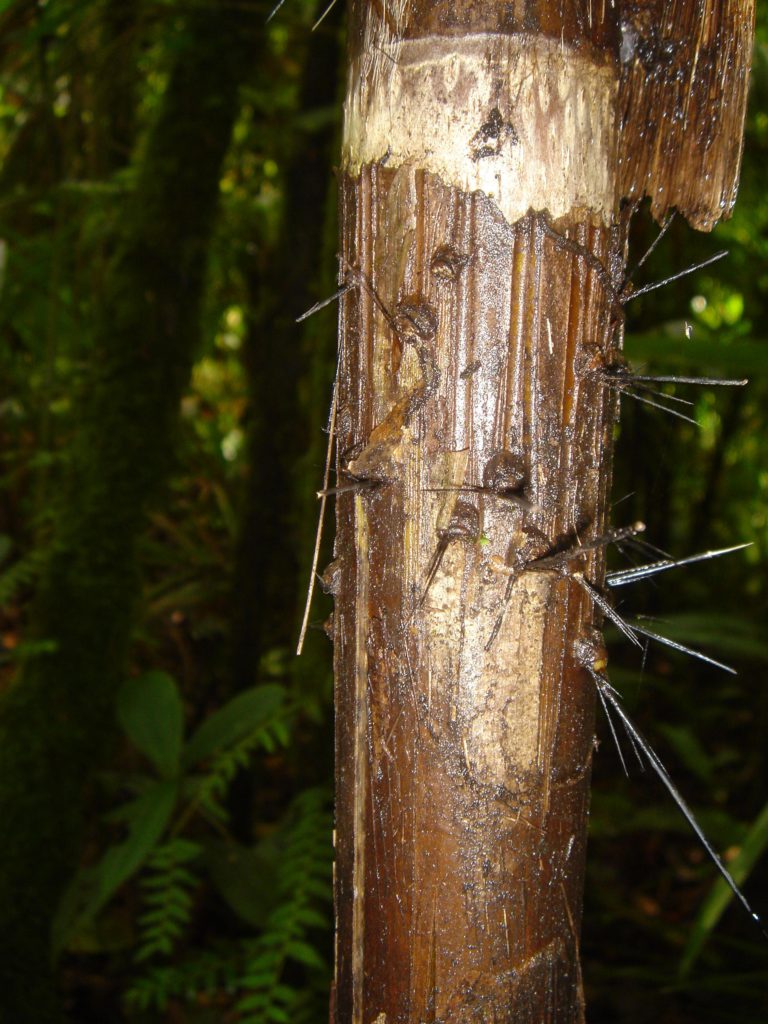
After the tram ride another naturalist took us on a nature walk, where we saw leaf-cutter ants demolishing the forest in most impressive fashion. There was also a sloth, a bat sleeping on the underside of a leaf it had folded in two, and a deadly eyelash viper. Gulp. We also saw a palm which is the source of poison darts. A single poison dart frog can equip up to 60 of these needle-sharp splinters with a fatal dose of poison.
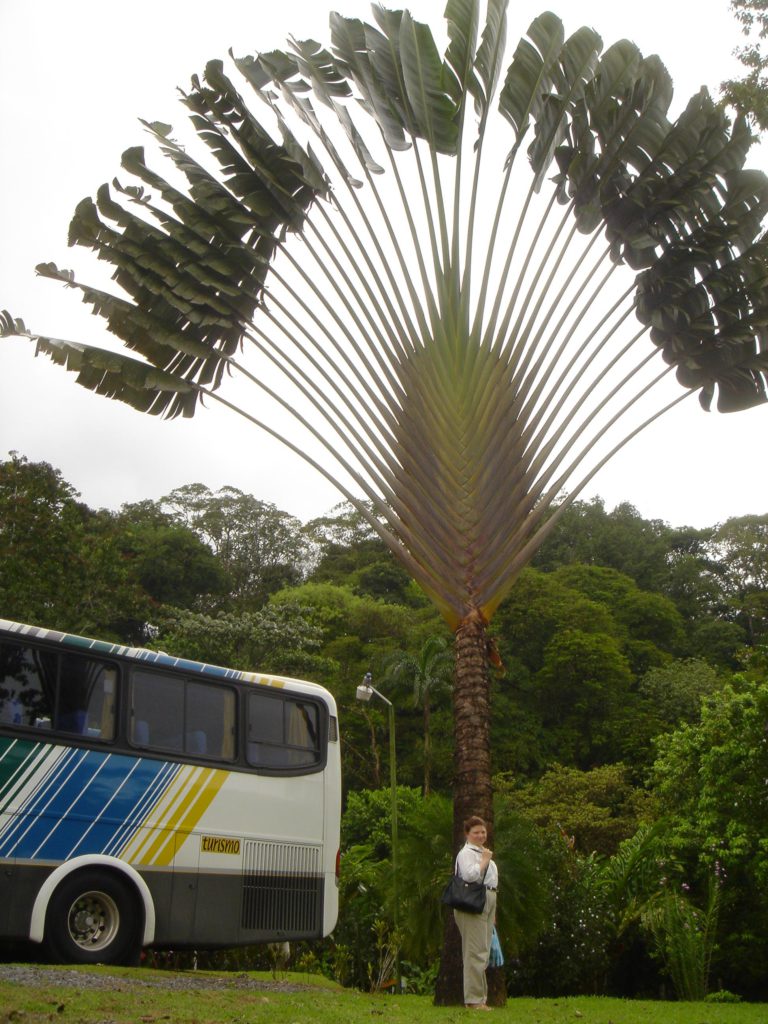
Leaving the rainforest, we stopped for lunch at Restaurante Rio Danta, where we had a delicious lunch of. . . rice and beans. We liked their hot sauce, a complex, curry concoction, so much we bought three bottles.
Almost back to Limón, we made an unscheduled stop at a banana plantation where Porfiro showed us how this plant — technically the world’s largest herb — is cultivated.
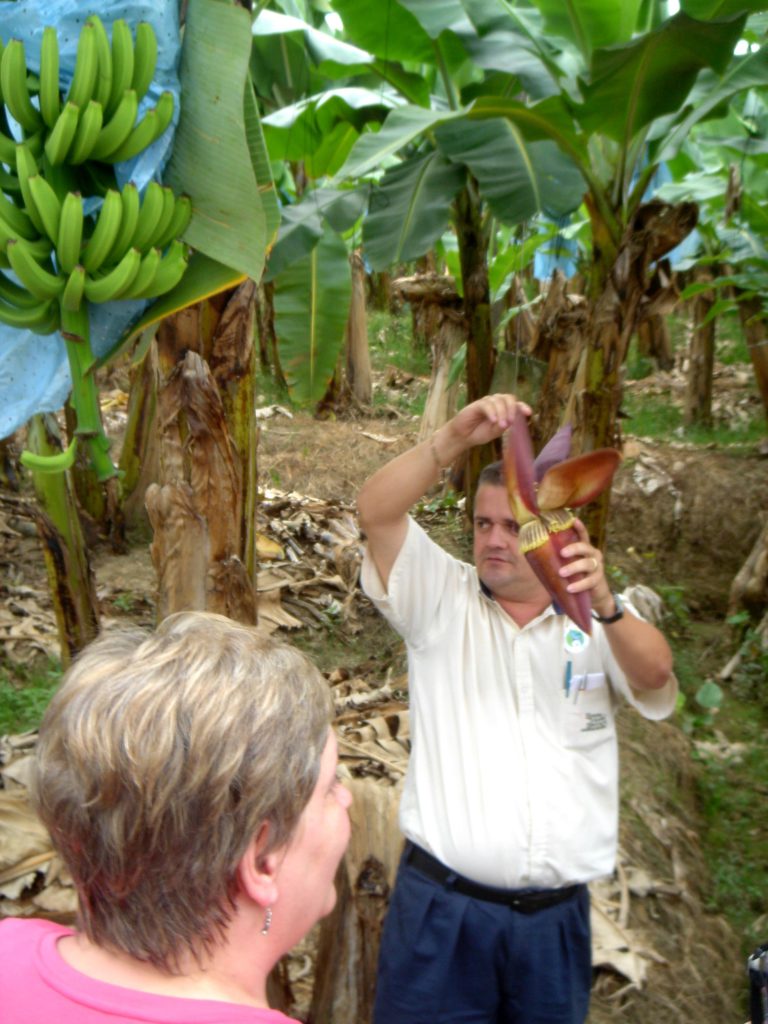
The plant grows where the previous one is chopped off. There are always two left from the same base; one is producing fruit, the smaller is its replacement. After nine months of leaf growing a blossom forms. As it opens teeny bananas are revealed. As they grow they turn upward to the sun. The lower ones are pruned off, except one (examine the photo closely) that signals the plant not to grow more levels. This leaves about 80 bananas on the stalk. It’s sealed in a perforated plastic bag for six weeks, then harvested, and the plant is cut off at the base. A new one sprouts almost immediately.
We arrived back at the ship at five, and by six, lovely Costa Rica was fading in the distance.
Panama Canal
Tuesday, March 22, 2005
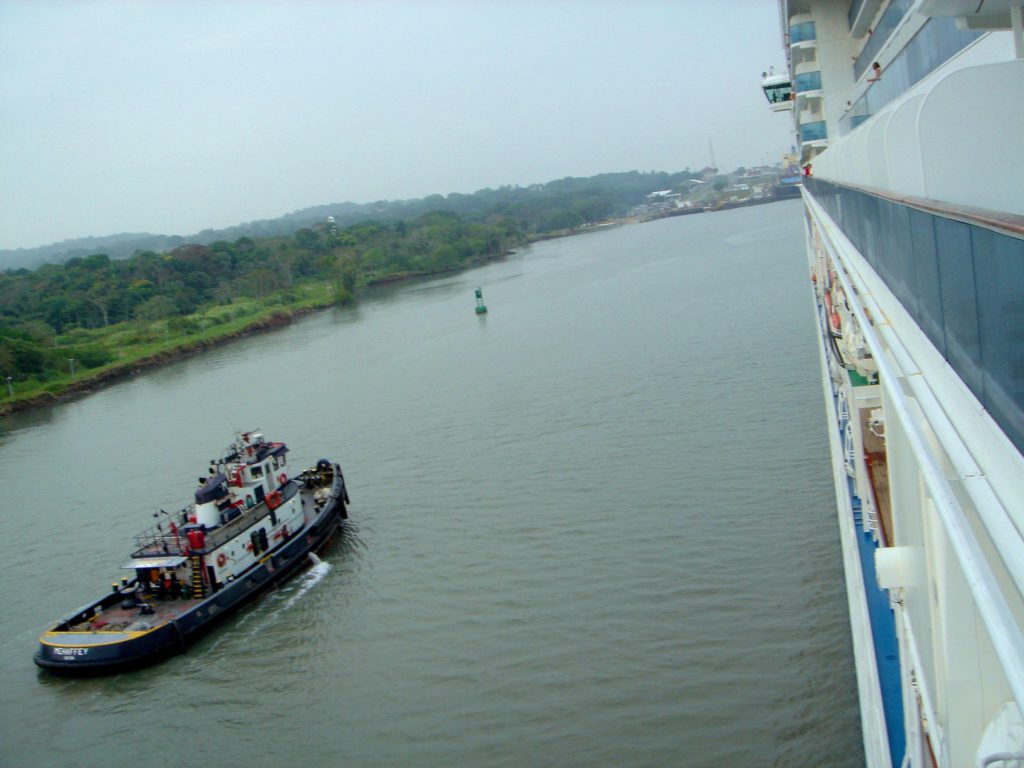
Today at dawn we entered the Panama Canal and passed through the three locks that elevate the ship 75 feet to the level of Gatun Lake. The canal is 50 miles long, and shaves 7800 miles off the trip from New York to San Francisco.
Excavation was begun by the French in the late 1800s, but abandoned after two attempts and the loss of 22,000 workers, mostly to malaria. The United States took over — literally — by backing a coup to create the country of Panama out of a chunk of Colombia, and completed the canal in 1914.
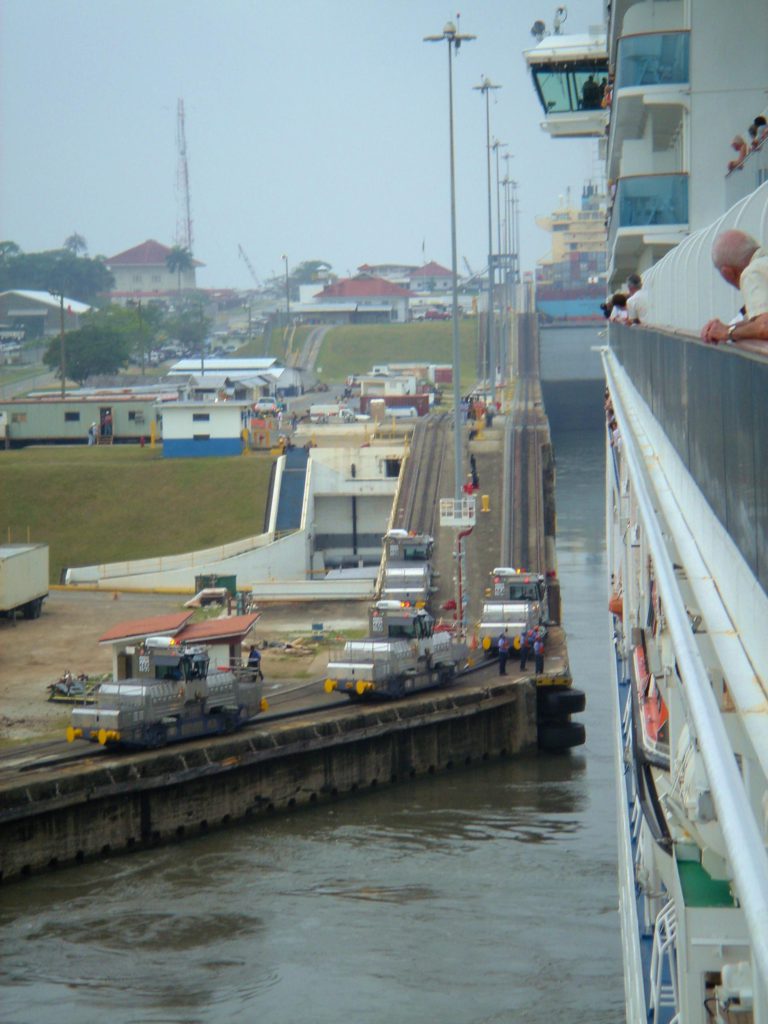
By design, our ship barely fits into the canal, with only a few feet to spare. The toll for freighters is based upon the ship’s displacement weight, ballast and load. (Heavier ships take longer in the locks, because there is less space for the water to flow past, which slows their passage. Cruise ships pay based upon capacity. This ship pays $226,000! (The lowest toll ever was 36 cents. Someone swam the canal in 1928. )
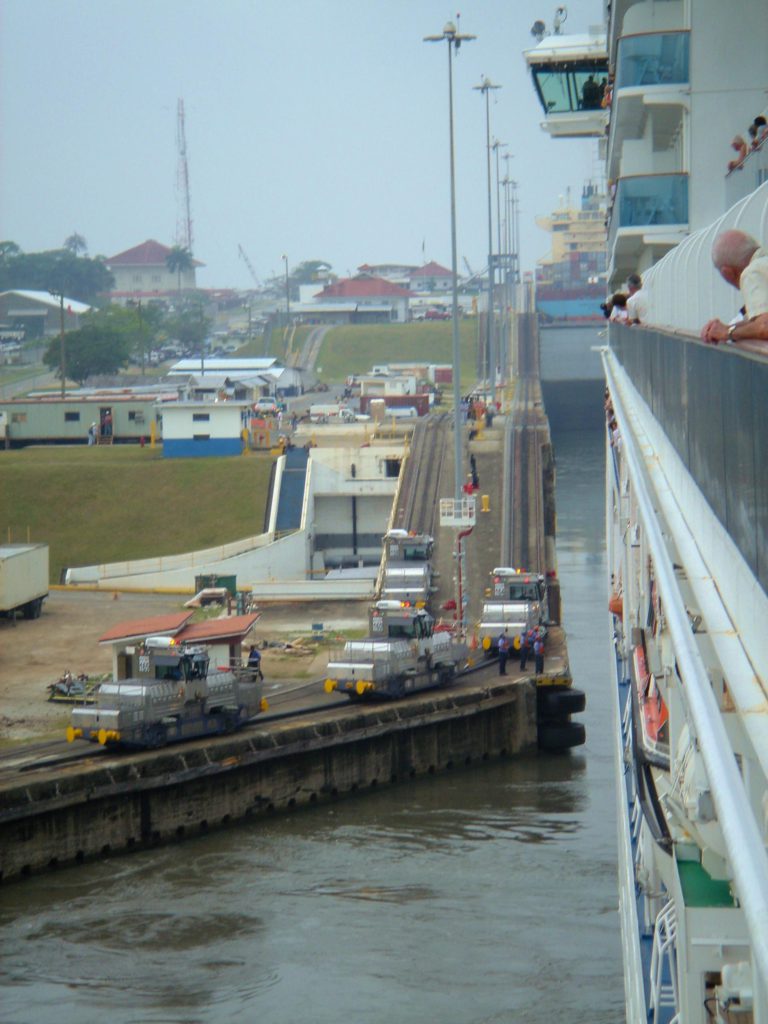
A special room service Champagne breakfast was served on our balcony, and Dani, who feels much better, joined us for the passage. It was a lot hotter than our Champagne breakfast at Glacier Bay!
After passing through the locks we spent the day cruising Gatun Lake. Some passengers tendered off for shore excursions, but we spent the day relaxing onboard.
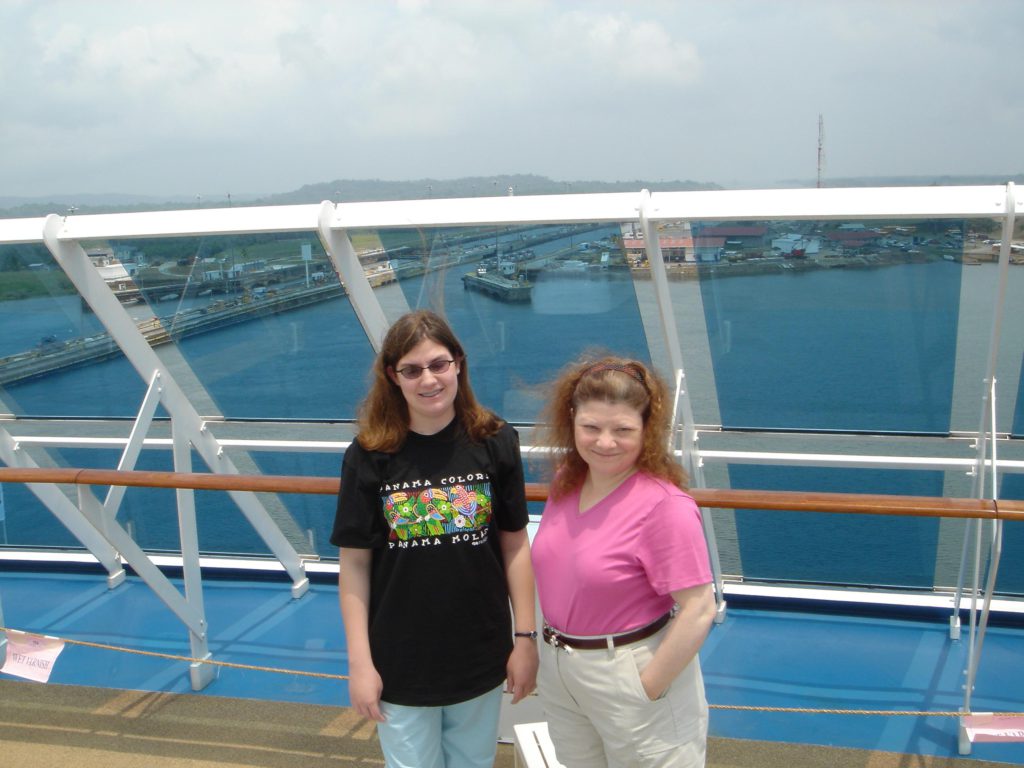
At noon the ship passed back through the Gatun Locks. I photographed the process from deck 15 forward. It’s amazing how fast the locks fill. The water in the 100,000 square foot chamber drops several inches per second at the beginning of the process. That’s a lot of water.
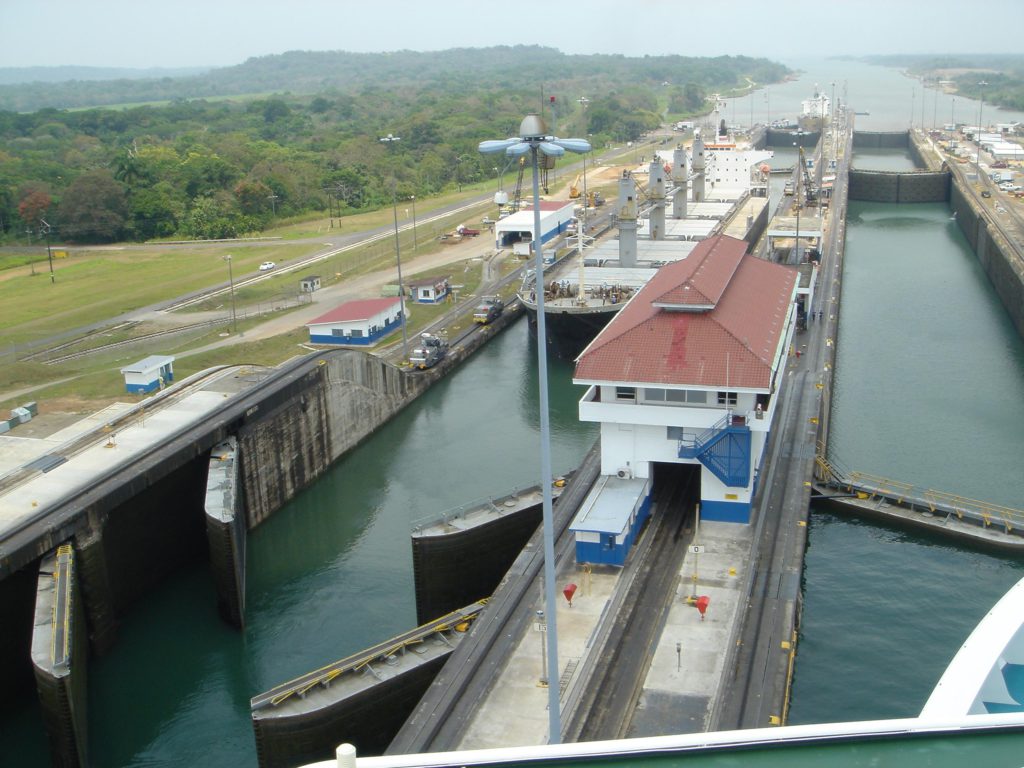
As we entered the final lock we decided to go down to the dining room for lunch. This proved to be a lucky decision, as the view from the atrium was truly bizarre. Somehow it hadn’t occurred to us that the lower decks were surrounded by concrete walls, just inches from the hull. The sight of that concrete sliding silently past, interrupted by the 50 foot steel gates with their riveted surface was like a scene from Myst.
In the afternoon we docked at Cristobal to pick up those who’d gone on shore excursions. Linda and I spent a few minutes walking through the arts and crap booths on the pier and she bought a couple of hand-painted feathers as souvenirs. One of the booths was staffed by members of a local tribe selling their baskets. The juxtaposition of bare- breasted, heavily tattooed natives and dowdy American tourists was quite amusing.
We set sail again at dusk, passing a mile-long line of ships — mostly freighters — their running lights glowing in the misty darkness, waiting for their turn to pass through the locks.
At Sea
Wednesday, March 23, 2005
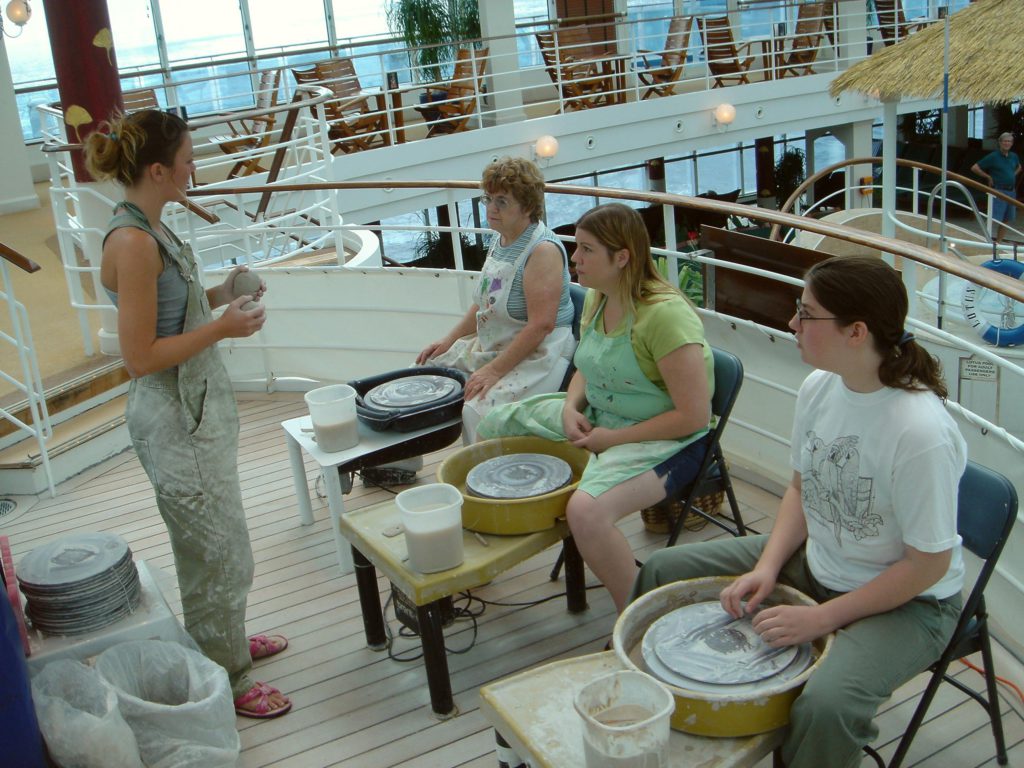
In the morning Dani had a pottery lesson up on deck 15. We originally became interested in pottery and ceramics because of our first trip on this ship, two years ago, which led to us getting our own kiln and wheel. We’ve gotten a lot of use out of the kiln, but the wheel proved a challenge. Now, having had some additional instruction, I think we’ll have more luck with it.
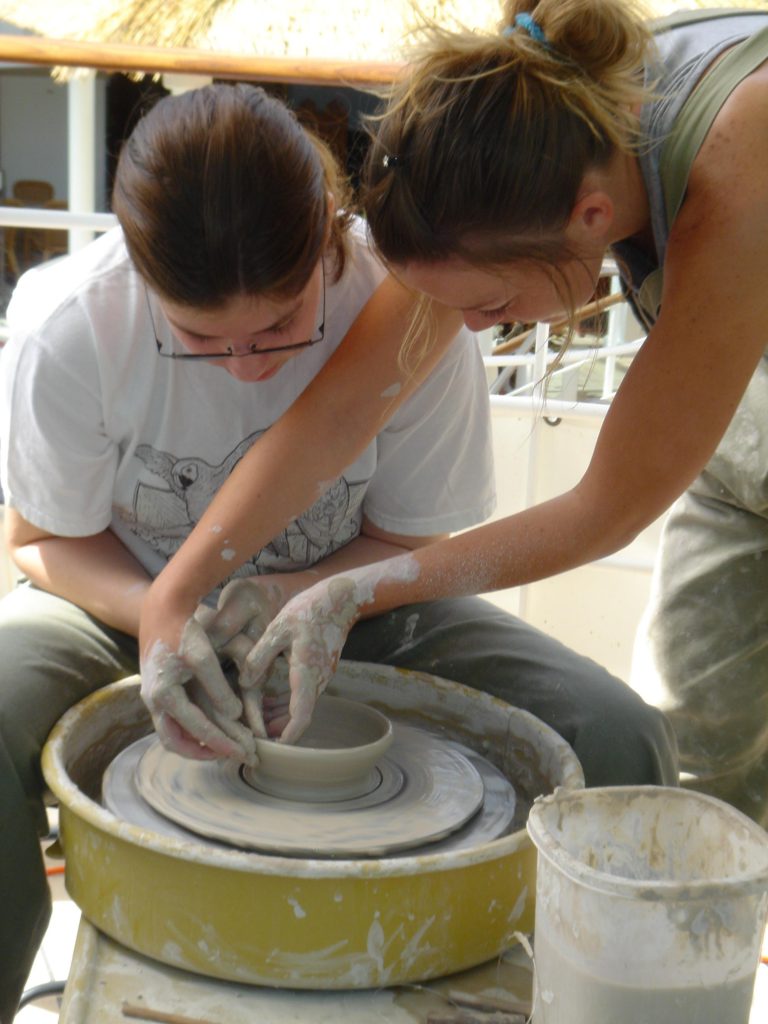
Ever been two a wine tasting and emerged a bit wobbly? Even before the afternoon “connoisseur’s” tasting at Sabatini there were seven-foot swells! Although the ship does a good job of minimizing the roll using active stabilizers, it can still be a challenge navigating the corridors. Especially after seven wines.
Dinner after dinner, the staff of the Bordeaux Dining Room has exceeded our expectations. The special attention lavished upon us by Head Waiters Godwin and Thomas, and the superlative attention and fun loving spirit of our waiter, Jorge, have been the highlight of the cruise. Princess seems to have upgraded their food, as well. Although some dishes are still middle-brow cruise food, the escargot I had the other night was the best I’ve ever tasted.
Grand Cayman
Thursday, March 24, 2005
After a hiatus following her soar throat, Dani’s cold has moved to her head. Unfortunately she didn’t feel well enough for the sting ray shore excursion. Linda accompanied me, only after being guaranteed she wouldn’t have to actually touch the water.
The Cayman Islands were devastated by last summer’s hurricane. 95% of the buildings were damaged, and we passed many blocks where nothing was left standing. They’re working hard to rebuild the dock area, and there is luxury hotel and condo construction everywhere. But it’s hard to imagine what it would be like on this island during even a ten-foot storm surge. It simply wouldn’t be here.
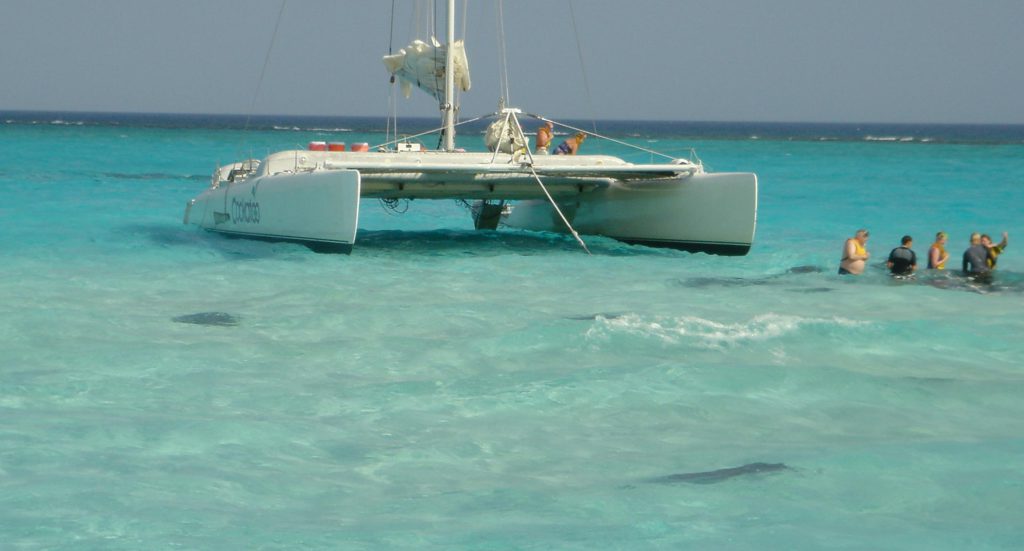
I must say it was even more fun than I expected. The rays swirled around us, nuzzling us occasionally like dogs begging for table scraps. Feeding them was a lot like stuffing squid into a vacuum cleaner. They feel quite silky, and are neither aggressive nor skittish.
As you can see, the bargain-priced underwater camera housing I got for my little Sony T1 digital camera worked great.
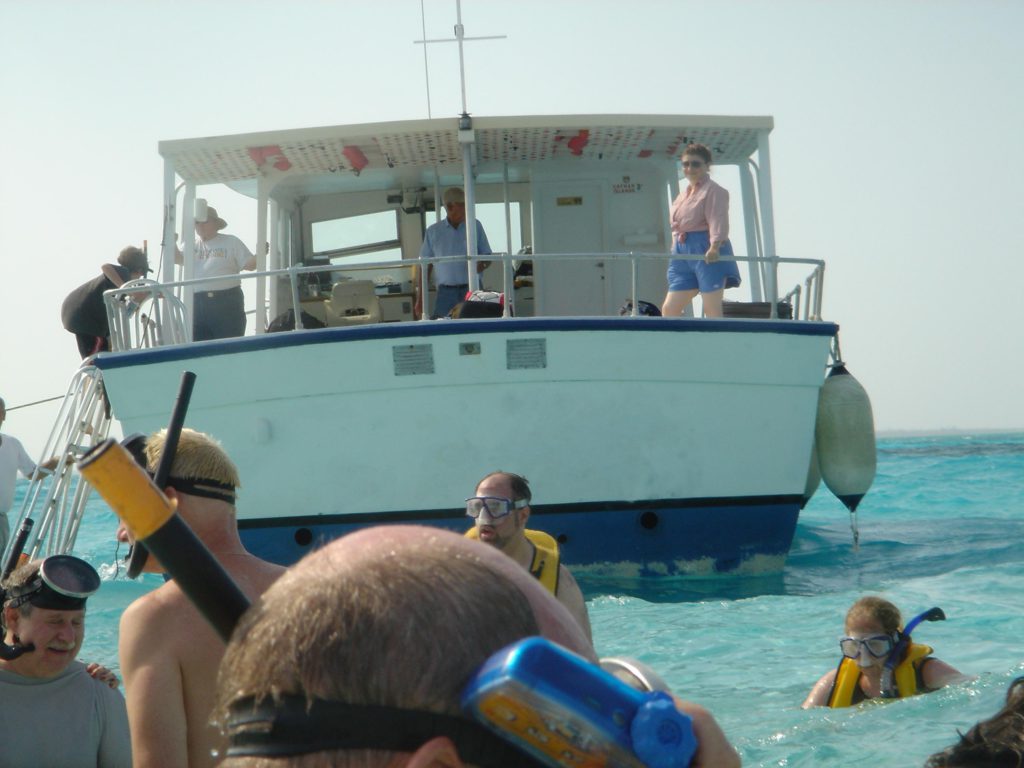
Our second stop, for snorkeling, was brief. There was a small amount of chop and a medium current. The combination proved too much for the large percentage of inexperienced snorkelers on the trip, and they called everyone back in after about ten minutes. It didn’t really matter, though. Although billed as the world’s second biggest reef, it was more of a sandy place with some fan coral. The sights couldn’t compare to Australia’s Great Barrier Reef.
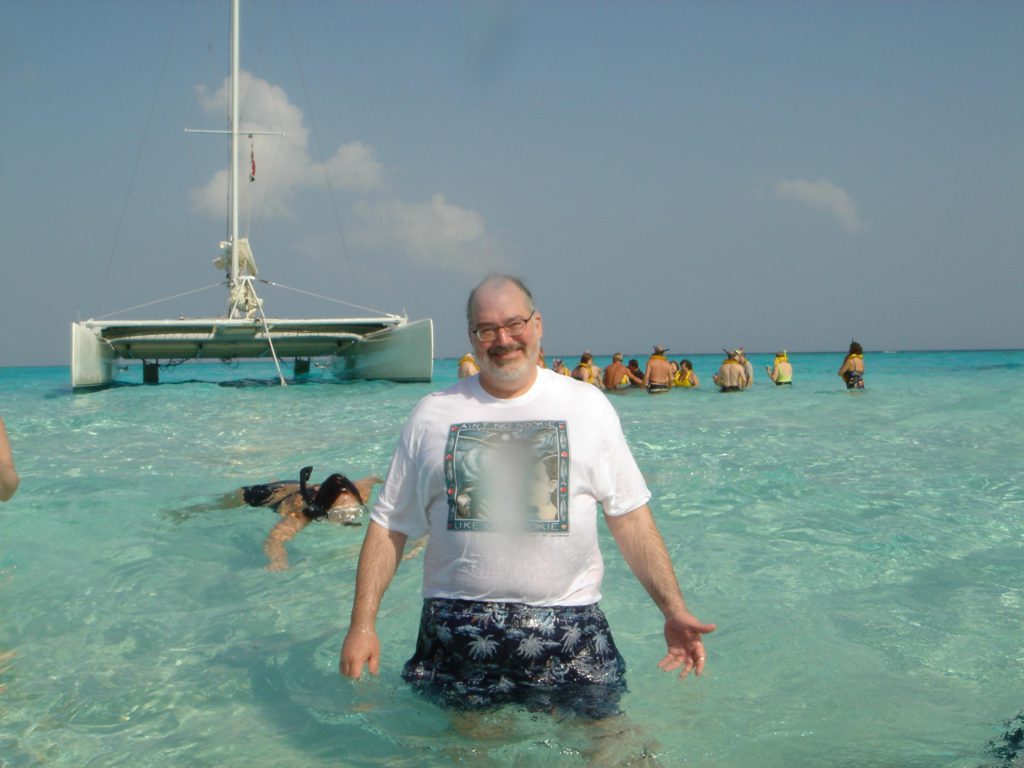
Cozumel, Mexico
Friday, March 25, 2005
Today is our 27th anniversary. We’ve never been on a cruise before during an anniversary or birthday. We got the traditional balloon outside the cabin door. Whoopee.
Linda woke with a bit of a sore throat, but she gamely went off with Dani to go horse-butt riding. I headed for my Atlantis submarine ride.
Cozumel was a tiny backwater until 1959 when Jacques Cousteau introduced the world to it’s beautiful diving condition. Now it’s a bustling, touristy resort city that has done an excellent job of keeping itself environmentally appealing. Even waiting for my tour I could see parrot fish nibbling the coral in the aquamarine water beneath the dock.
They put our tour group onto a procession of taxis (there are about a million of them in Cozumel) an we sped about 5 miles down the coast near the other cruise ship pier (there are at least four in port today) to the Atlantis office. This is a first class operation, with modern, split level building, waiting room and dock. A boat transported us about 20 minutes farther down the coast to the sub.
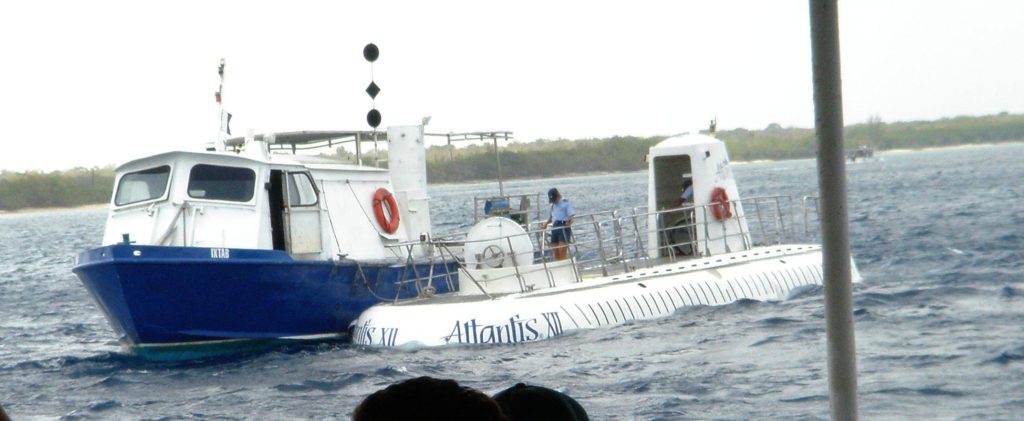
Atlantis is a true submarine, unlike the semi-subs I’ve been in before. It weighs 80 tons, carries 48 to a depth of up to 150 feet, and can stay underwater for 24 hours. Fortunately our trip was much shorter than that.
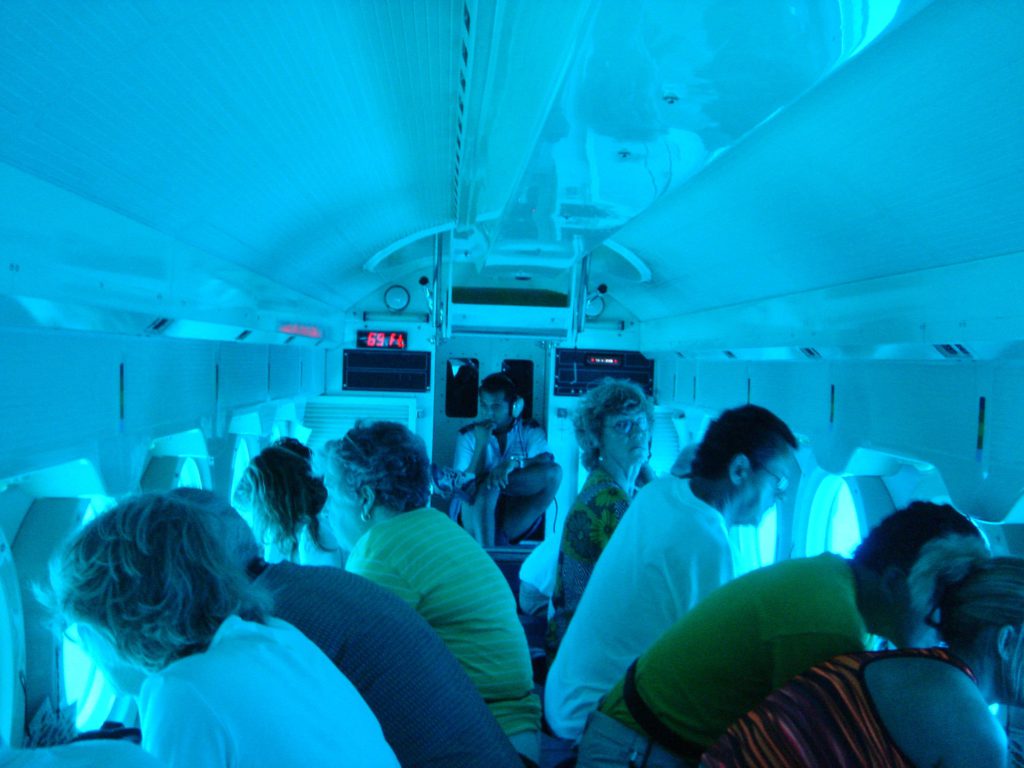
Onboard the operation continued to be quite professional, with the pilot’s chatter piper into the passenger area as he talked with the control ship topside. There was also a first mate and a tour guide, and all the comments were made in both English and. . . well, German.
We descended rapidly to about 70 feet and cruised the reef, spotting lots of smaller fish, one shark and a lobster. Because there is no red light below about ten feet, I have to honestly say that the sights from the semi sub are probably as good or better, but it was neat to be in a real submarine. At one point we passed a school of scuba divers, and it reminded me that a sub is no substitute for the real thing!
Our maximum depth was 135, at which point we dangled over the sharp edge of the the “wall”, where the continental shelf ends and the ocean floor suddenly drops 3000 feet. Fortunately, no leaks.
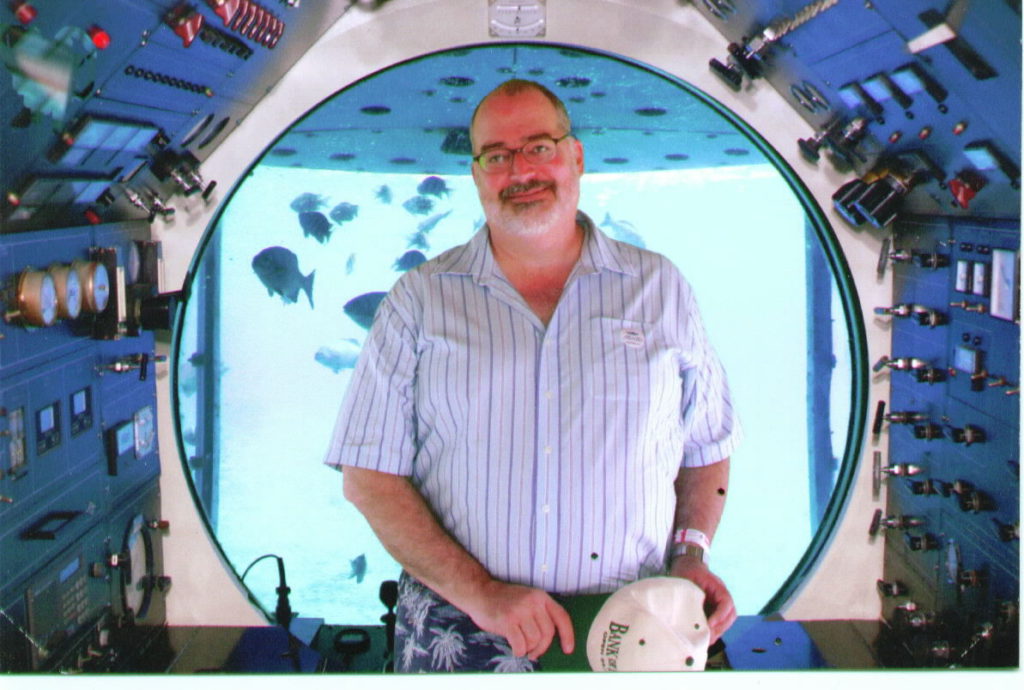
The return process began by blowing ballast and ended by hailing a taxi.
Meanwhile, Linda and Dani were in the countryside, where Dani was demonstrating that she’s an excellent horsewoman, and Linda was demonstrating that Dani is an excellent horsewoman. There were many iguanas on the trail, some up to several feet long. Surprisingly, the horses ignored them.
After Linda had a chance to hose off back at our cabin, she and I ventured out for an anniversary lunch. We had the name of a good restaurant, but we decided not to risk the logistics of finding a taxi back to the ship and instead went to Mis Charros, one of the tourist places along the waterfront.
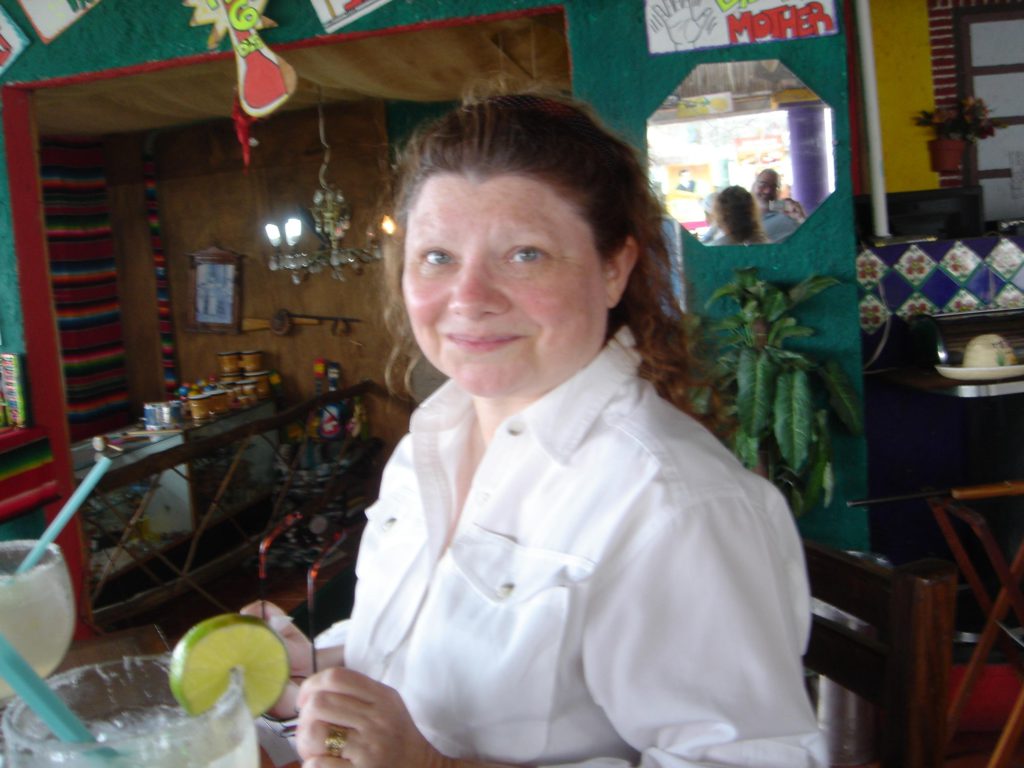
Mis Charros claims to be 100 years old, and there’s certainly plenty of evidence there hasn’t been any maintenance for at least that long. We had excellent magaritas, guacamole and chips, and mediocre everything else. at Epcot’s Mexico pavilion there is a scene on the boat ride where vendors race along beside the boat trying to sell you stuff. That’s what this restaurant was like, except we couldn’t escape in a boat.
After finishing her ceramic painting, Dani visited the ship’s doctor for some antibiotics to make sure she avoids her cold turning into bronchitis. She was impressed with the ship’s medical staff and facility. The prescriptions come from Ireland, so they are reasonably priced and the inserts are actually informative (i. e. not written by lawyers).
We received the sad new that our wonderful waiter, Jorge, lost his niece. He left the ship in Cozumel to fly home, and we won’t see him again. We’ll leave a thank you note and tip for him with his fiance.
Belize
Saturday, March 26, 2005
A popular T-shirt here reads, “Where the Hell is Belize?”
It’s between Mexico and Guatemala, and until independence from England in 1981 it was called British Honduras. It’s the smallest country in Central America, and the only English-speaking one. The capital, Belize City, has 70,000 residents, more than a fourth of the country.
Since Belize is a former British colony, it was surprising to find the cars driving on the right side of the street. Apparently they changed over, sometime in the early 1960s. That must have been an exciting week.
Even though Belize is a really interesting port, not many cruise ships visit yet, because of the logistics. We anchored seven-miles off shore, and the tendering was a VERY slow operation, so our tour was running an hour behind time. Because it involved water, Linda chickened out at the last minute. Just as well, as it turned out, because — although Dani and I loved it — she would have hated it.
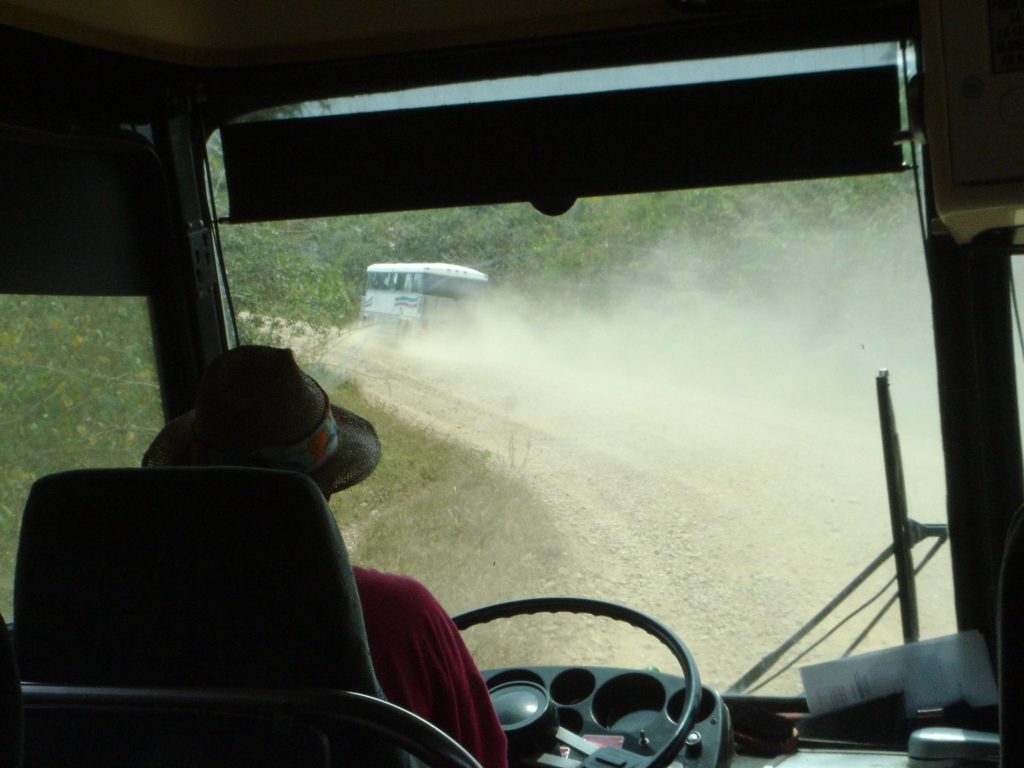
Our journey began with an hour bus ride through a surprisingly ramshackle town, then countryside consisting of mostly scrub brush. The final seven miles were unpaved road — very dusty unpaved road. This was definitely not tropical rainforest.
At the end of the road we hiked over a hill to a lodge were we were loaded up with inner tubes, life jackets and “head” lights. Then, laden with all this stuff, we made a forced march through the jungle for half an hour in 97 degree weather (this was not the highlight of the experience).
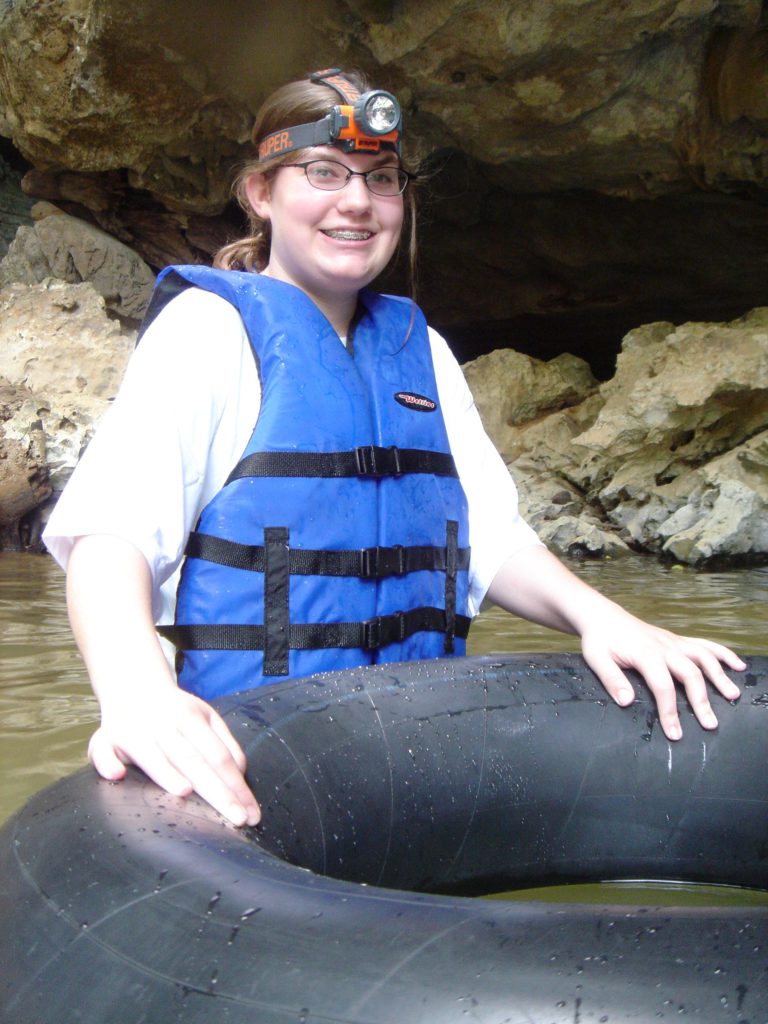
Few things in life have felt as good as plunging into the river at the end of that hike.
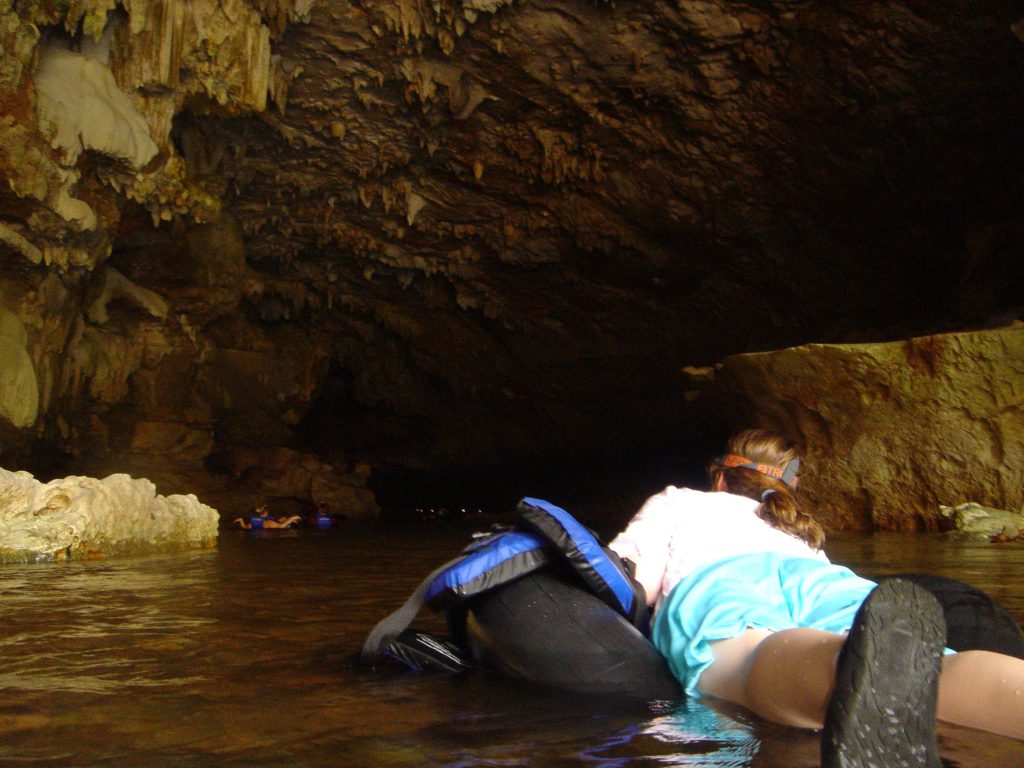
After our body temperatures had returned to two digits, we began our hour-long float through the cave. It was about twenty feet high in most places, and about fifty feet wide. After the first turn the darkness descended quickly, but we could see wherever we looked because of our head lights. Stalactites and other formations clung in curtains, mostly along the sides. Overhead were holes where bats hung, although we couldn’t really see them clearly. At places it was too shallow to float and we had to walk, but most of the time we chose to swim, as it was easier to maneuver. We would have liked a little more time to explore, but because of the lateness of our start we had to hurry.
At the end of our float we found ourselves back where we’d picked up our gear. The lodge served a delicious al fresco lunch of curried chicken breast, rice and beans with all the habanera sauce we could eat. The ice cold bottle of Coke tasted pretty good, too. Then it was time to retrace our steps back to the ship for an afternoon departure.
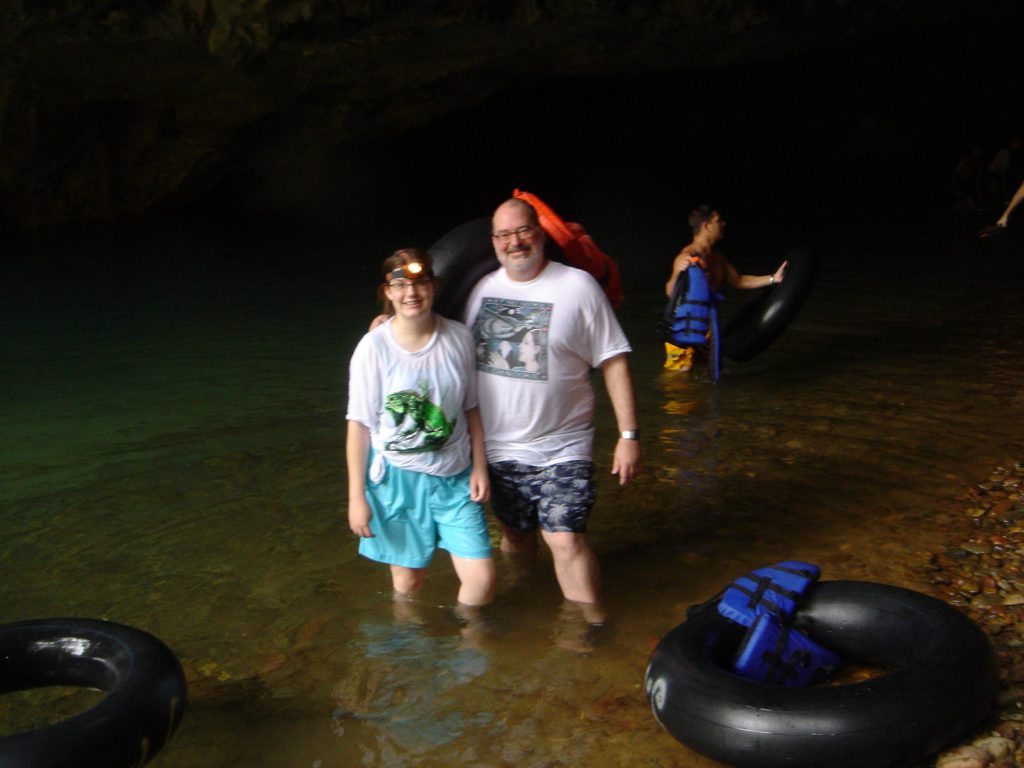
At Sea
Easter Sunday, March 27, 2005
Our first holiday at sea in ten cruises. They decorated the atrium with giant eggs.
I was reflecting on our past cruises:
- The Norway (formerly The France), US Virgin Islands
- Big Red Boat, Nassau
- Costa Victoria, Key West
- Voyager of the Seas, Jamaica
- Explorer of the Seas, San Juan
- Norwegian Dream, Baltic
- Coral Princess, Alaska
- Disney, Nassau
- Star Princess, Mediterranean
- Coral Princess, Panama Canal
This was certainly the best dining room experience we’ve had on any of them, and also the best Caribbean itinerary. The Baltic is still the one with the most interesting ports, Alaska had the best scenery, and the Mediterranean was the most educational. I’d enjoy a repeat of any of those, but you’d have to shoot me to get me on Costa again.
Ft. Lauderdale
Monday, March 28, 2005
It seems strange to be traveling home on a Monday. I had a nice breakfast in the dining room, my first chance to talk with some of the other passengers. There seemed to be as many different impressions of the cruise and the ship as there were passengers, from rapturous to grouchy. Perhaps we each bring our own expectations with us, wherever we travel.
Linda, Dani and I relaxed in the Universe lounge until 9:30, when our disembarkation color was called and we easily collected out baggage, cleared customs, ransomed our car from the garage and headed home.
Things to remember for next time
A starboard cabin would be better in every single port. I was pretty sure this would be the case (come to think of it, that almost always seems to be) but had no choice.
The Coral Princess remains our favorite ship, because of the uncrowded feel to its public spaces and its superb dining staff.
Next time I’ll approach the head waiter in the open seating dining room before dinner on the first night, and see if I can reserve a table with “the best waiter” for 8pm throughout the cruise.
Europe 2004
Rome, Rome, Venice, Florence, Naples, Pisa, Athens, Ephesus, Monte Carlo, Barcelona
Tuesday, June 8, 2004
Orlando to Paris
Last month Linda sold her Mitsubishi Eclipse to a friend and is driving a rental car until the 2005 RX8s are available, so it was very convenient to drive to the airport Tuesday morning and simply abandon the car. We had a long layover in Miami, spent in the Air France lounge. Security in Miami is ludicrous. At the entrance to the escalator they check your passport and boarding pass. Then, at the top of the escalator there is a line for the metal detectors. Before you may enter the line they check your passport and boarding pass. After passing through the metal detector, you enter the terminal, but first — you guessed it — they check your passport and boarding pass. There is no way for anyone to enter or exit this process between start and finish, so what is the point. . . other than to spend your tax dollars?
Because the terminals at Miami are connected by an unsecured area, you must do this even to change flights. And since we originally were looking for the Air France lounge in the Air France terminal (silly us), we ended up having to clear security three times Tuesday. That means Linda’s purse went through the X-ray machine three times. Yet when we arrived in France and she emptied her purse, in the bottom she found a full-size Swiss Army knife! Now don’t you feel secure?
Dinner on Air France was very good: smoked duck salad, scallops and shrimp, and a nice steak. Dani and Linda slept, I listened to an audiobook of Mystic River, extremely well-read. (Has anyone ever actually been able to use those in-seat video screens, or are they perpetually being “reloaded”?)
Wednesday, June 9, 2004
Paris
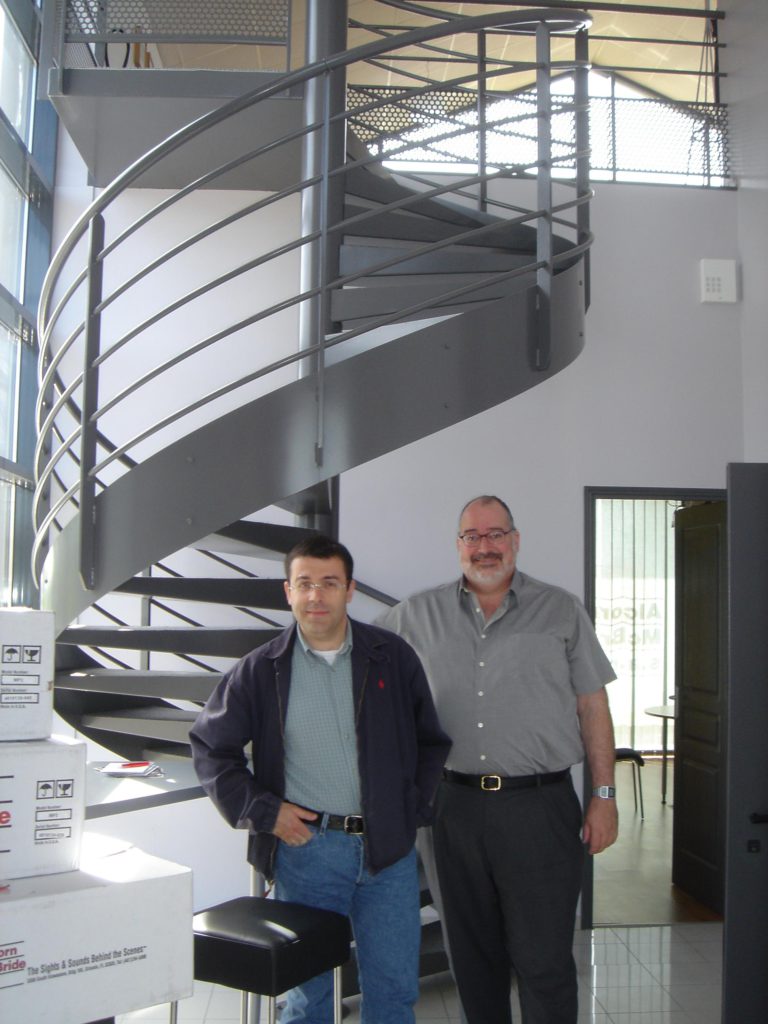
Henry, Marjolaine and Nathaniel met us at Charles de Gaul airport Wednesday morning. Four of our five bags showed up. The other — Dani’s — was nowhere to be found. While Nathaniel played with the parachute toy we’d brought him I visited baggage services and was eventually directed to a different carousel where I was told the lost bag would emerge. Three seconds later the power went out in the building and the carousels all stopped. (Henry says the electrical workers are striking by cutting power periodically. That’s so French!)After about five minutes a head poked out from between the flaps at the conveyor entrance and then the missing bag was pushed through. I wish I had that on film. It took two cars to transport the six people, five bags, three carryons and one parachute toy to the Holiday Inn Paris Disneyland, about a mile from Henry’s house and Alcorn McBride sarl. The hotel is touristy, but quite nice, with spacious rooms that are an interesting cross between American and European accommodations.
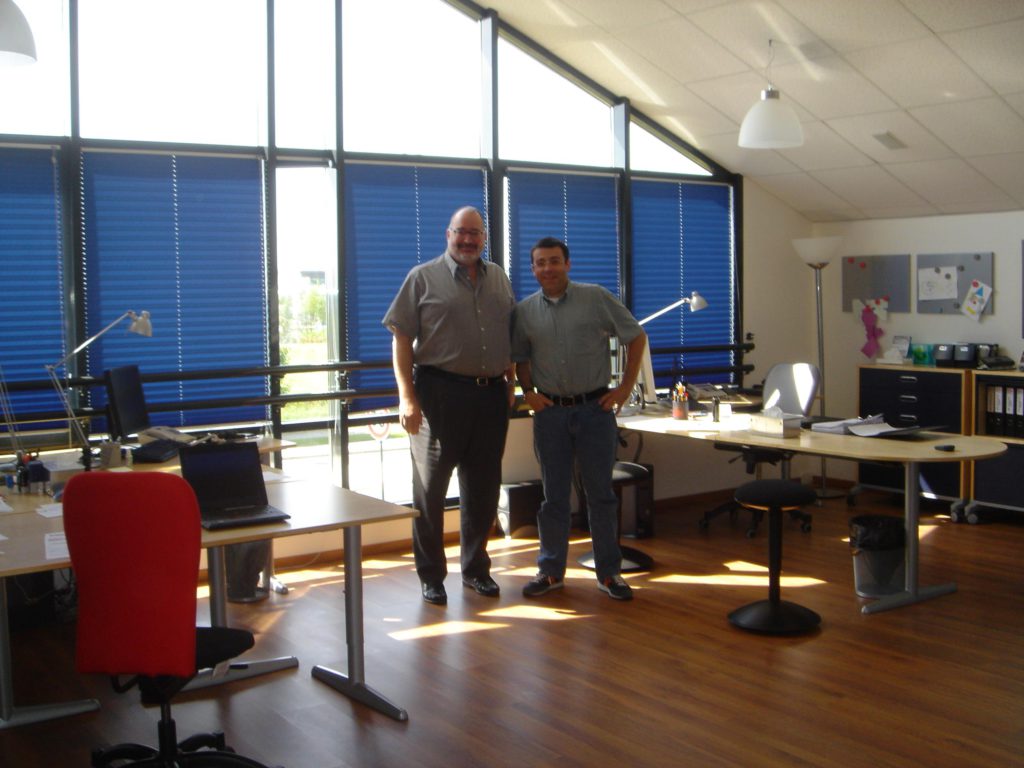
We took a several-hour-long nap and then Henry picked us up for a trip to the market to buy dinner. Grocery shopping is one of my favorite activities in France. Auchon at the mall in Marne la Valee is like a giant toy store for hungry adults. Bread, wine, pate and stinky cheese — we were set. Off to Henry and Marjolaine’s for a relaxing dinner outside, overlooking the valley. The weather was in the low 80s, and the food and company were excellent. In true European style, dinner ended about 11pm.
Thursday, June 10, 2004
Paris Disneyland
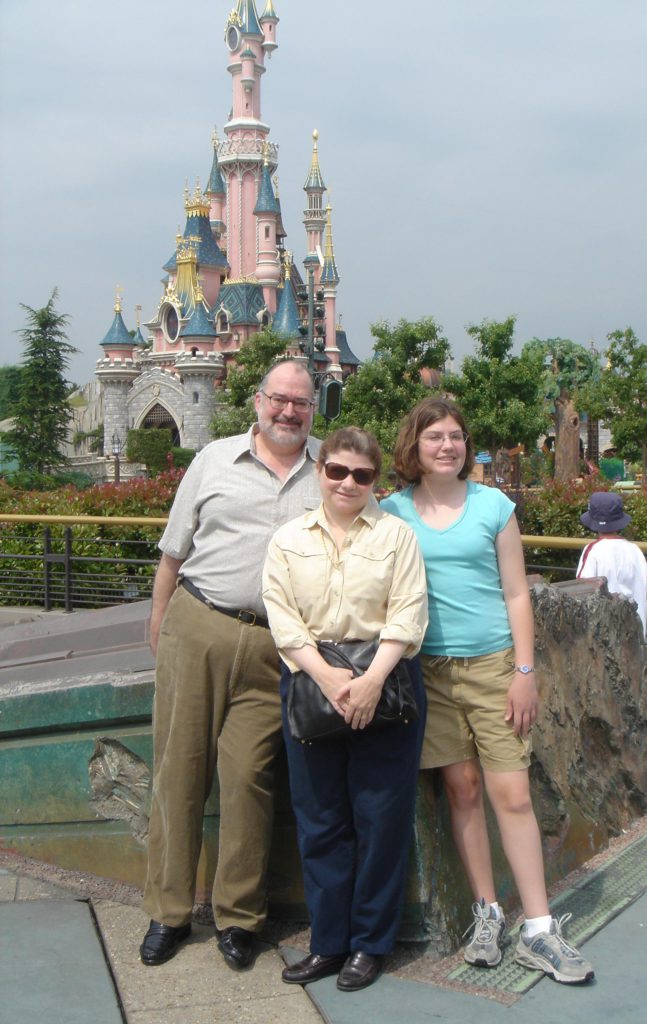
We sort of missed Thursday morning. I can’t remember the last time I slept 11 hours. But we were up in time for lunch with Henry and Jean Marc (head of A/V for DLPI) at Walt’s, on Main Street in the Magic Kingdom.
We did a little theme-parking:
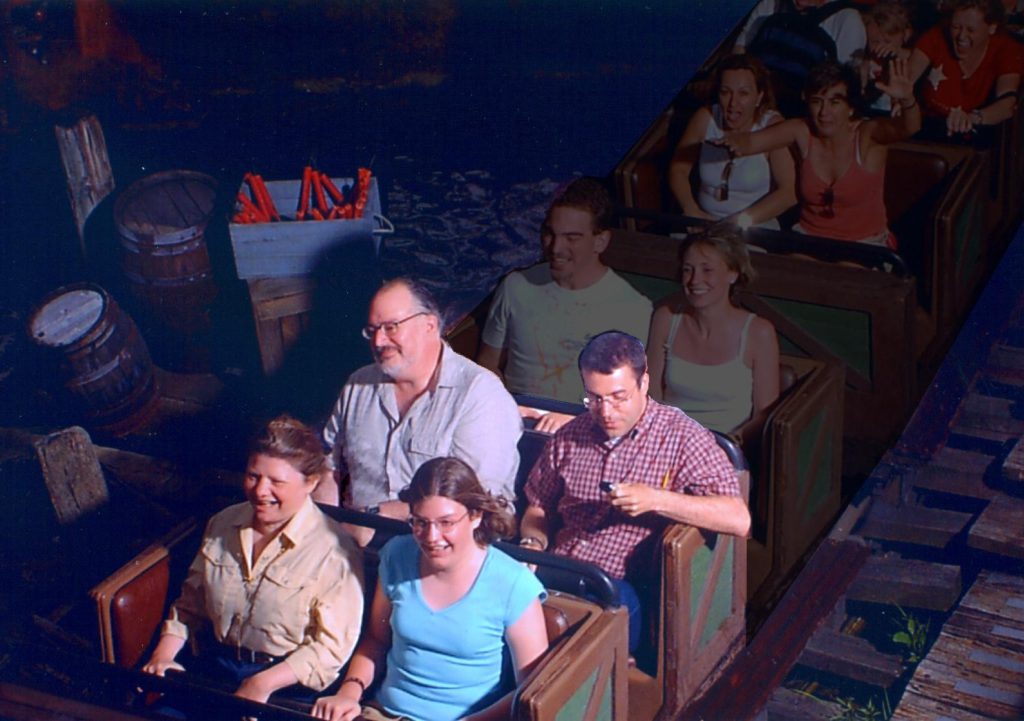
- Pinocchio Same as Florida as far as I could tell.
- Pirates The best of the three I’ve been on. The scenes are in a different order, but it’s closer to CA than FL. The dueling pirates were moving, but they are no longer making contact.
- Haunted Mansion The best of the three I’ve been on. It’s audio is MUCH better than the others, there is more story line, and a whole section of western sets at the end.
- Big Thunder About twice as long as the CA or FL versions. Henry spent most of the day on the phone with customers. As it happens he was in the process of answering his cell yet again as the Big Thunder cameras snapped our picture. I wonder what the customers thought of the screaming in the background?
- The Dragon Few people discover this well-animated dragon that is sleeping(?) in the dungeon under the castle.
- Auto Stunt Show We drove over to the second gate, a very modest implementation of Disney Studios. There are only a handful of attractions here, although we understand they are going to add Tower of Terror if they can figure out where to get the power. Henry says they may have to synchronize with Rock ‘n Roller so they don’t both launch at the same time! The stunt show was very interesting to car aficionados, and even those of us with not automotive genes were impressed by the precision driving (skidding?) ballet. Like most stunt shows it would have been better without the fake movie shoot plot.
- Cinemagique This was the best show of the day. It’s a beautiful theater with great audio. During the show a guest with a cell-phone (not Henry) is chased “through” the screen and finds himself pursued through a montage of famous movies, from silent to sci-fi. The screen transitions are pretty amazing, and the use of both English and French works extremely well. This show was considered for use at Disney MGM studios, but I think it’s a bit too long for American attention spans.
We had a nice dinner at Chiny Cottage, a little house-turned-restaurant on the way to Lagny. Linda and I had been there in 1992 and it was still good, if a bit expensive for what it was.
Friday, June 11, 2004
Provins
Dani and I nibbled at a truly appalling breakfast at the hotel (sort of an American version of a German buffet?!!) and then I headed to the office for a couple of hours. At lunchtime the five of us met up and headed for the medieval city of Provins, about 30 miles southeast of Marne La Valee.
At La Fleur de Sel creperie we had some delicious jambon, gruyere, eouf and ongion crepes, followed by chocolate or caramel and butter crepes. Yum.
Then we explored the Tour Cesar, begun in 1152. It perches atop a hill in the center of the walled city. Visitors can squeeze their way through increasingly narrow stone passages, all the way to the bell tower (that part’s almost brand new, having been added in 1689).
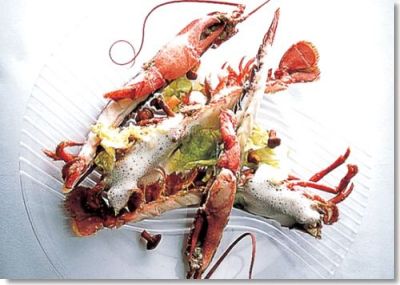
For dinner we went into Paris to one of only 25 Michelin three-star restaurants in France, Arpège. Words cannot express the quality of this meal. Numbers cannot express the price of this meal. Well, possibly using scientific notation. Each course had layers of subtly complex flavors, particularly the vegetables, which are the chef’s specialties. We had:
- A glass of 1996 Taittinger Champagne from magnum, bottled for the restaurant.
- Incredible artisan bread and butter.
- Amuse Bouch consisting of a small egg, served in its shell, with honey and vinegar cream.
- 1997 Clos de la Roche, a deep and complex Burgundy.
- Various vegetables including carmelized onions au gratin and green beans with almonds. Dani had Osetra caviar, which was sufficient to serve the table.
- A consume containing stuffed ravioli with spiced cumin.
- (At this point in the meal I went out and quickly sold Henry’s car so that we could continue eating. )
- Main courses including lobster, chicken and squid.
- An incredible cheese cart, from which we selected twelve cheeses.
- A variety of small pastries (to get us ready for dessert).
- Various desserts including chocolate souffle, Mille Feuille and tomatoes(!) that had been basted with vanilla and a dozen other spices for most of the day.
- Coffee and herbal tea.
Saturday, June 12, 2004
Chalifert
We spent a quiet day at Henry and Marjolaine’s house in Chalifert. Linda alternately read a book in the back yard and wrestled with the washing machine, which, like all French washers, is the size of a coffee grinder and similar in results. Dani, Henry and I went to the mall for a little shopping and groceries and when we got back home Marjolaine had returned from her mother’s with Zacharie, who is one year old. He is very cute and inquisitive. We made it an early night, so we could get up early to drive to Paris.
Sunday, June 13, 2004
Paris
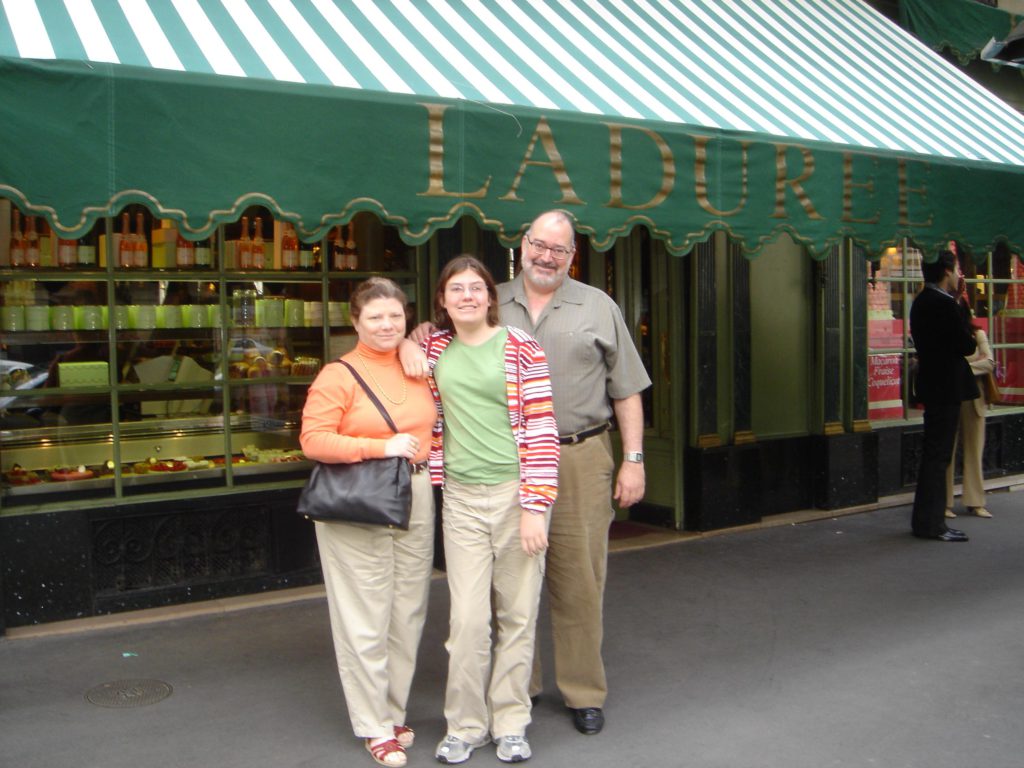
Henry picked us up at 9am to go to our favorite breakfast spot, La Duree. After some delicious croissants and pain au chocolat we stopped on the Champs Elysee. While Henry had a short meeting about show control programming at the Renault showroom Dani, Linda and I walked up to l’Arc de Triomphe.
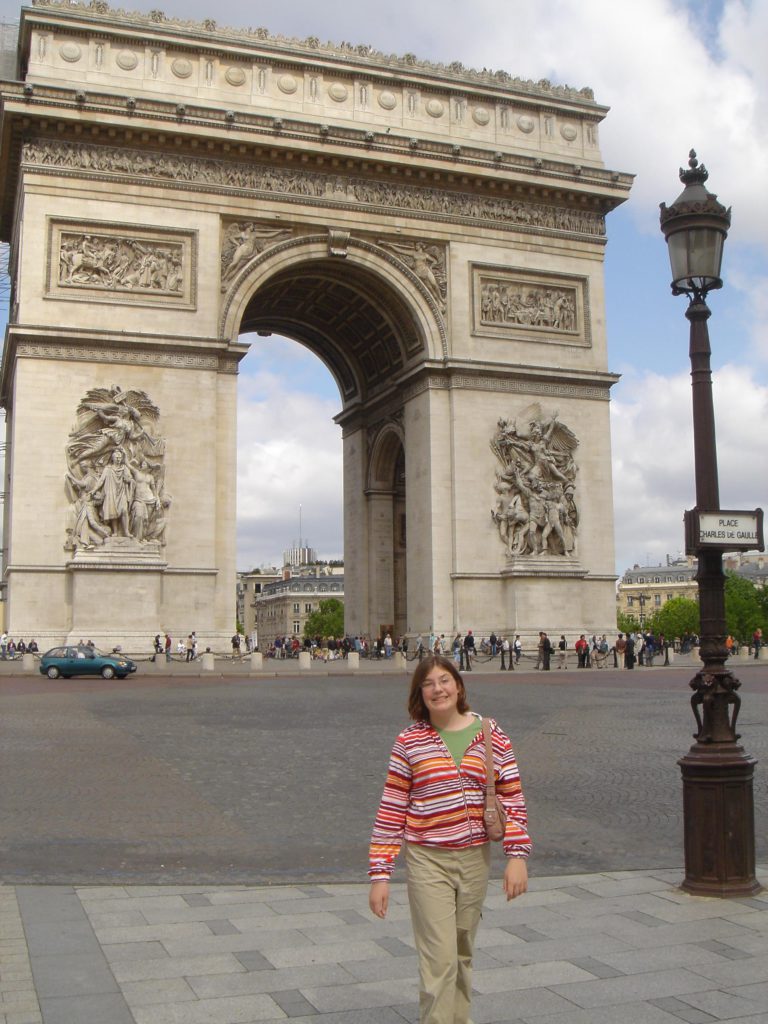
Then it was on to the Louvre so that Dani could visit locations mentioned in The Da Vinci Code (which she finished yesterday).
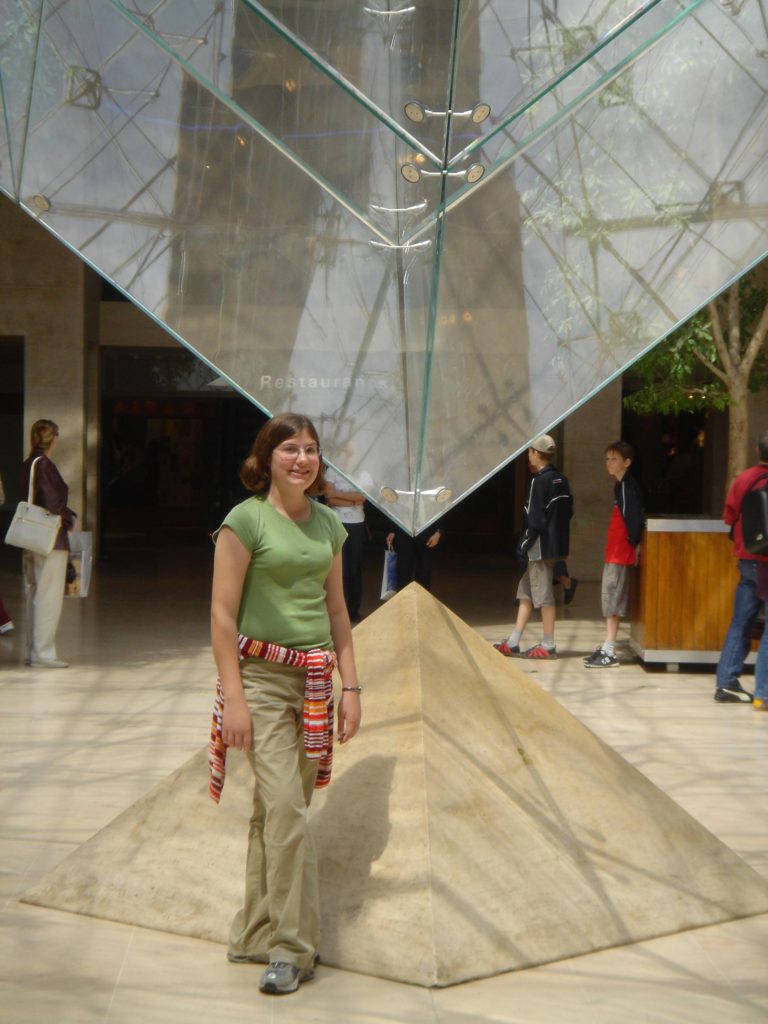
I’ll skip the explanation so there are no spoilers, but it was fun taking pictures of all the tourists taking pictures of La Jaconde (the Mona Lisa).
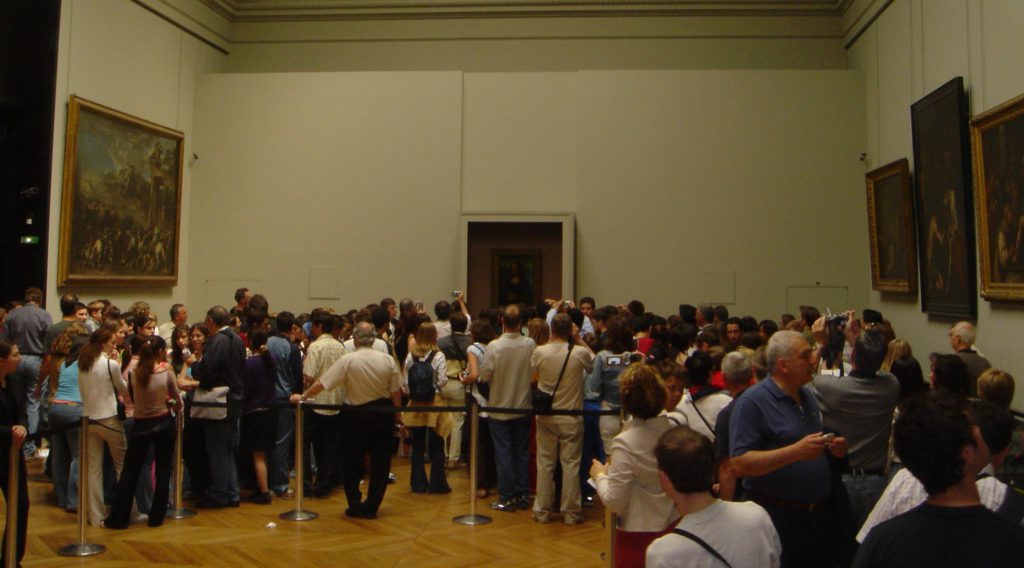
We also visited the apartments of Napoleon III.

Henry was somewhat disgruntled that we dragged him to a hot dog stand next to Notre Dame for lunch, but that was where Dani had a fondly remembered hot dog three years ago after four days in food hell (i. e. London). I’m not sure this hotdog was quite as good, but it was filling.
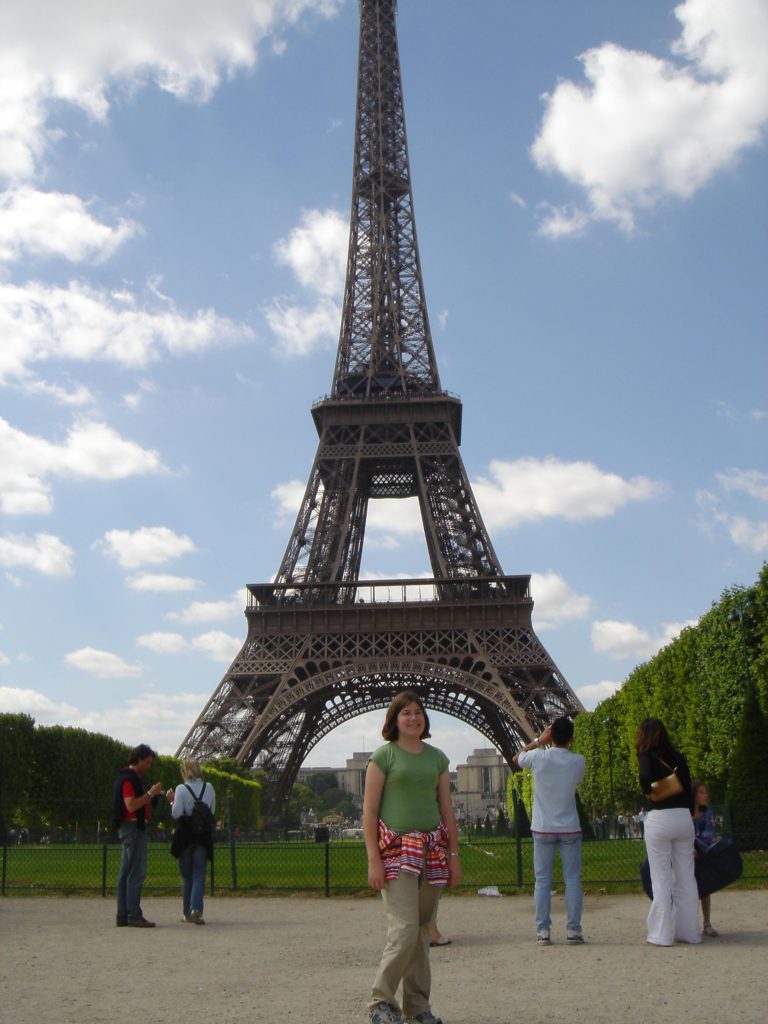
We made a brief stop to take a photo in front of La Tour Eiffel, and then headed back to the hotel for a couple of hours before our farewell dinner at Henry’s home.
Monday, June 14, 2004
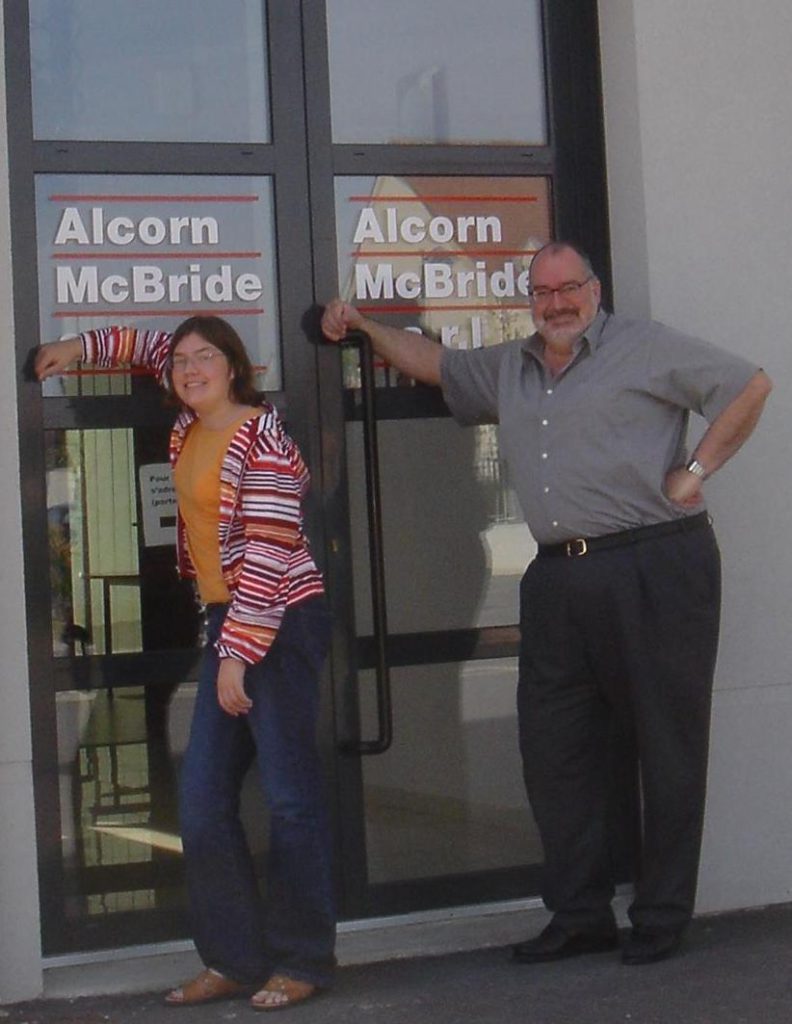
Paris to Rome
In the morning Dani, Henry and I had breakfast at Paul, a tea house at the mall. It’s one outlet of a bakery established in 1889. The French bread flute and coffee were delicious. After a brief stop at the office to take photos and check email we picked up Linda and headed to the airport. The brasserie lunch we shared with Henry at the airport was really quite good. Then we bid Henry goodbye and headed for Rome. Just to show you that airport security really is protecting you from terrorists (in the interest of political correctness I can’t say crazy arabs) Linda (who had repented of her mini-jihad and stowed the Swiss army knife) was unable to smuggle aboard a pair of plastic children’s scissors (airline approved) which were promptly confiscated and deposited into the receptacle for dangerous-things-confiscated-from-people-in-wheelchairs-and-short-women. By the way, when you’re paying $10 per kilogram for overweight luggage, don’t pack Diet Coke. The flight from Paris to Rome is less than two hours, so we arrived by 6pm. We had arranged for a driver to meet us at the airport with an eight-passenger van — the only thing with enough room for our luggage! Actually we don’t have that much luggage for a month-long trip, but it would overwhelm the small Mercedes they usually use. Because the airport is a ways outside the city and there are no expressways in the city it takes close to an hour to wend your way through the streets into the ancient part of town. I’m always fascinated to see the modern buildings that abut — and in some cases almost swallow — the historic structures. Nothing can be knocked down, but that doesn’t mean you can’t build all the way around it!The Empire Palace Hotel is a pretty nice hotel considering it is offered as part of the Princess Cruises land tour. We’re on our own for two days before the tour actually starts; when I booked the extra days I was surprised to find it was a member of Small Luxury Hotels of the World.
Our room is a bit odd, but not unpleasant. It’s shaped like a flag: You enter at the base of the flag pole, turn right and advance twenty feet down a two and a half foot wide hall before it opens out into the living space. The bathroom is rather small, with one of those corner showers with diagonal doors, like in a small cruise ship cabin. There is an emergency cord in the shower, but I can’t imagine what for, since it would be physically impossible to fall down. Perhaps it’s in case of claustrophobia.
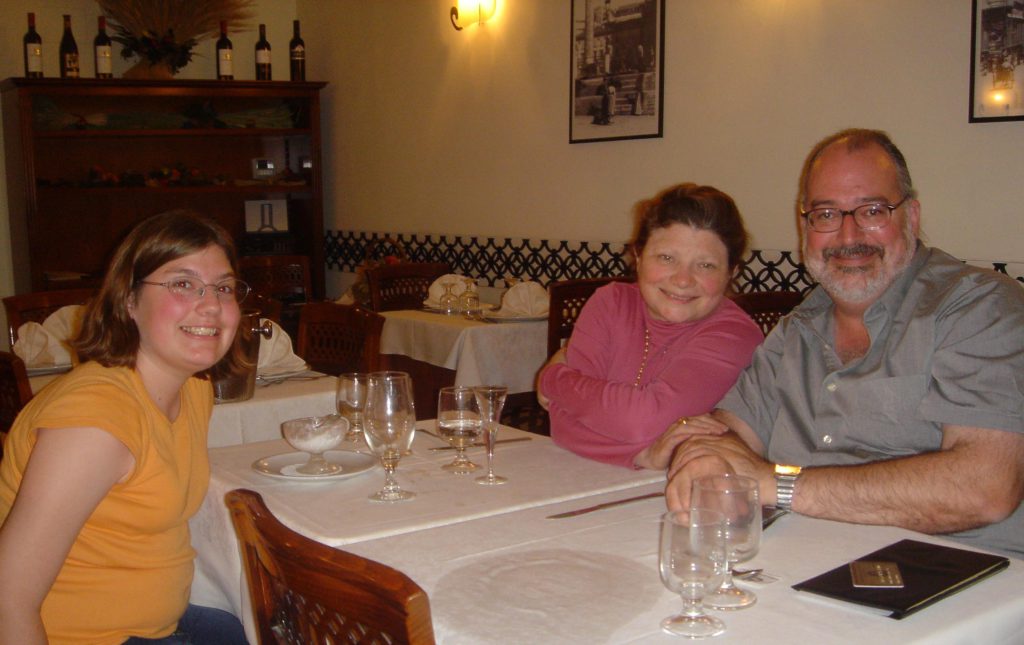
Around 9pm we ventured out into the pleasant evening weather and walked a half dozen blocks down a side street until we came upon a small trattoria called Ai Tre Moschettieri, where we had a very pleasant meal. I enjoyed Tagliatelli alla Arrbbietta and Saltambuca Romano. Dani made the best choices, though, Tagliolini Bolanese and grilled shrimp (and rejected squid). When we arrived the place was full of Americans, but by the time we finished we were alone. The service was very friendly, and the owner treated us to some limoncella, that lemon liqueur from Capri. Dani stayed up late playing the new Harry Potter game on her PC.
Tuesday, June 15, 2004
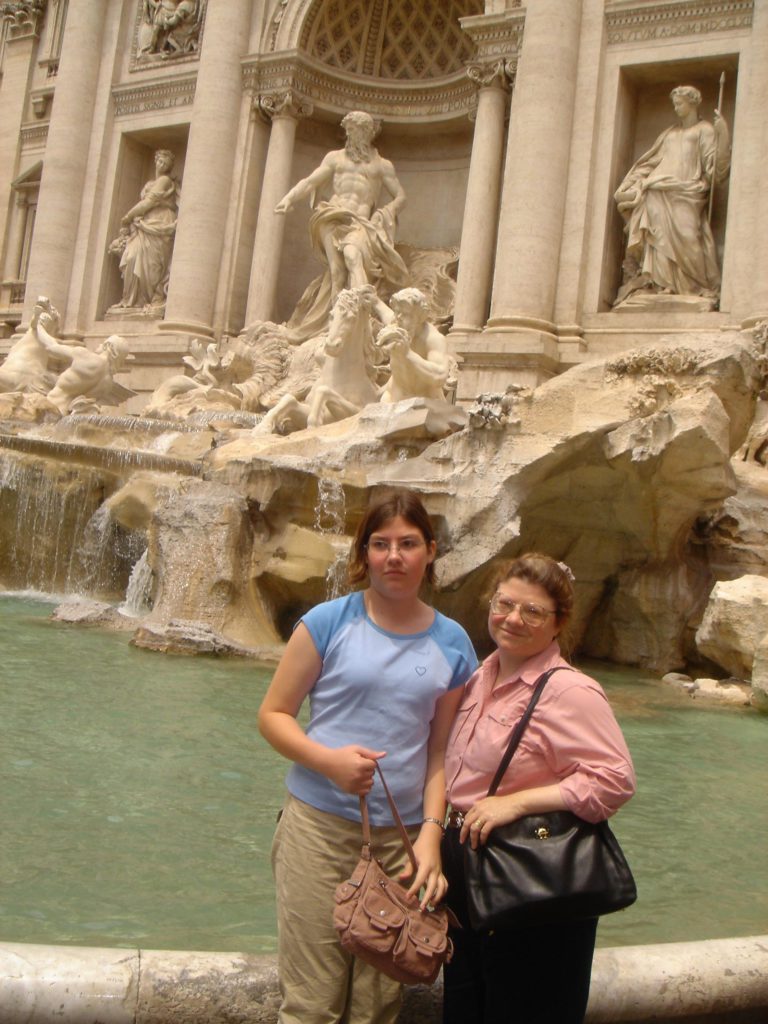
Ancient Rome
I had an excellent breakfast of bread, croissants and espresso at the hotel restaurant while Dani and Linda slept in. Then we walked to London. No, seriously, we only walked halfway to London. We set out first for the Trevi Fountain. Along the way we stopped at an Internet cafe in the Piazza Barberini, where I caught up on email. The Trevi Fountain is an enormous, elaborate thing, shoe-horned into a tiny piazza and surrounded by tourist vendors. Still, there’s something pleasant about the sound of the water and all the pigeons fluttering about. Legend has it that if you throw a coin into the fountain you will return, and it seemed to work last time. This time Linda and Dani threw in Euros, so I guess they’ll be coming back to the continent. Ever thrifty, I threw in an American penny, so I guess I’m going to Illinois. We continued on in search of a Jesuit church with a fabulous tromp l’oeil ceiling, but missed it (and upon our return discovered it was closed anyway) but found ourselves at the Pantheon, our next destination.
We had a pleasant lunch of pasta and pizza in an outdoor cafe on the square there, then ventured into the enormous structure.
The Pantheon is the best preserved of ancient Rome’s buildings, probably due to the fact that in the sixth century Christians, claiming to be troubled by its demons, converted it to a church. This was better than the sixteenth century approach, when the Christians converted much of ancient Rome into a sort of Home Depot for those needing marble and limestone to build ugly churches. The Pantheon’s several hundred feet of unsupported dome is pretty impressive when you consider it’s constructed of 2000-year-old stone.
We continued our trek, heading east past the “wedding cake”, a monument to Victor Emmanuel II, the first king of united Italy. (There were only five before 1946 when, as a result of losing WWII, Italy became a democracy. ) This was Mussolini’s favorite building, so you can assume it is overblown. Behind the wedding cake lies the Roman Forum, which is currently undergoing some fairly extensive exploration by a lot of archaeology students. It’s a little difficult to picture all the great structures that were once located here, but it looks just like the jigsaw puzzles. We visited the ruins of the temple of the vestal virgins. These girls were selected at age ten to supervise the eternal flame, and it was a pretty good job except that if you forgot to keep it lit you got whipped and if you forgot to keep your virginity you got buried alive. The girls held the position for thirty years, and could then retire. No doubt that’s where we get the expression “life begins at forty. “
Beyond the forum is the Palatine Hill, where Augustus, Rome’s best — and most enduring — emperor lived. We would have explored it, but we were about five miles into our walk at this point, and it was after 3pm, and the Palatine Hill is, after all, a hill.
Turning left we encountered the Coloseum. Well, it had actually been looming over us for some time, but we decided to finally acknowledge it. We purchased a tour from a company called Romaround — which gives you an idea of their sense of humor. Everyone selling the tour was from the US and spoke perfect English, but the guy giving it was Italian. That’s actually not an accident, though, because the law requires a local guide. Anyway, he was very funny, and being on a tour lets you jump the line.
When Dani and I visited the Coloseum three years ago, we could walk across the arena, but now you can’t. Here’s a bit of trivia for you: did you know the word “arena” comes from the Italian word for sand? The floor of the Coloseum was wood, covered with three inches of sand (it’s good at absorbing blood). Under the wood floor were all the cages for the thousands of animals they slaughtered each year. Those Romans really knew how to party.
Speaking of animals, everywhere we looked in the Coloseum we saw cats. What’s up with that? Anyway, Dani enjoyed photographing them sitting on the ruins and licking their butts.
We had intended to catch a cab back to the hotel, but this seemed to be impossible, so we decided — to Dani’s disgust — to hoof it. Hey, it was only halfway across Rome, and we’d already walked about twice that far. Of course, Rome was built on seven hills. . .
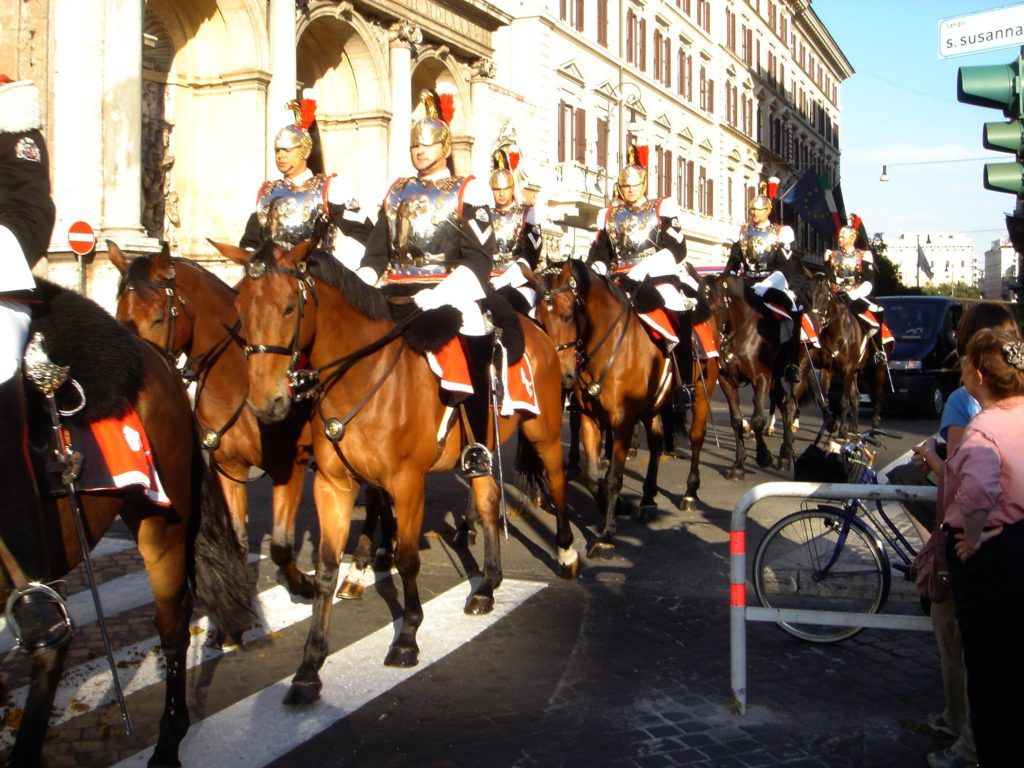
On the way back we were passed by some sort of honor guard consisting of twenty horses and a very busy street sweeper. Now that’s efficient. For dinner Dani had room service and Linda and I had a simple meal of Italian cheeses and Chianti Classico by the fountain in the courtyard of the hotel.
Wednesday, June 16, 2004
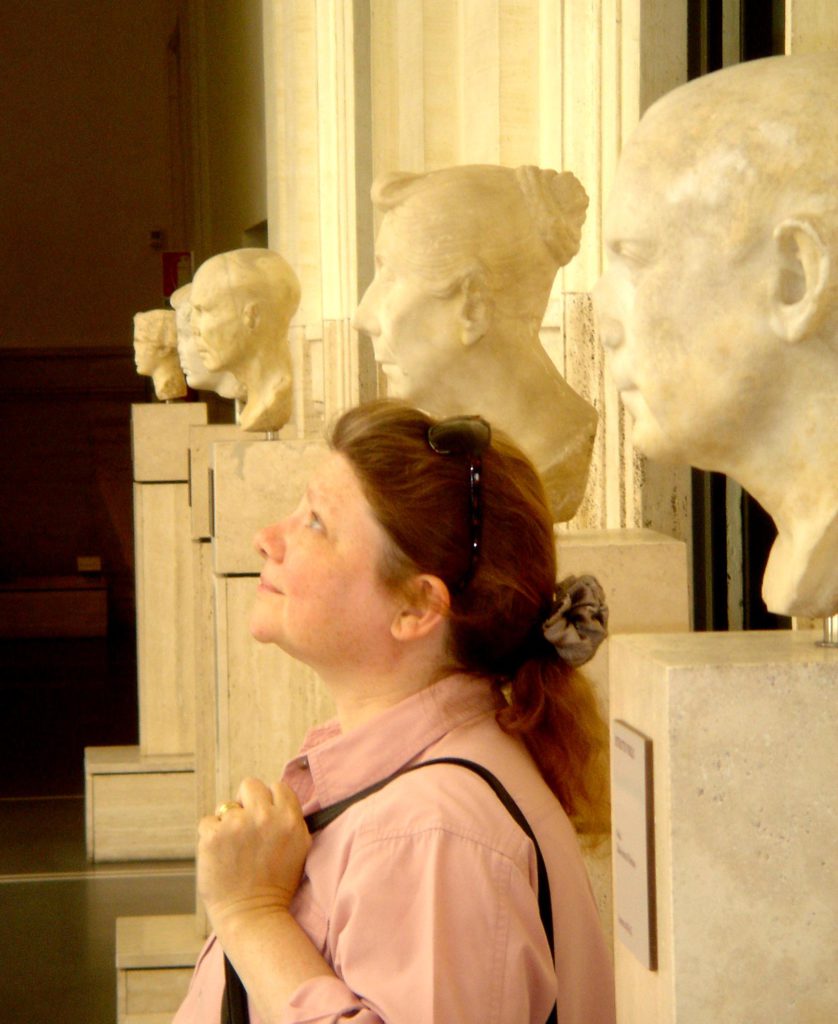
Rome
Dani had a bit of a sore throat this morning and opted to spend the day reading. I had breakfast in the hotel and then walked (yes, amazingly my feet do still function, albeit painfully) down to the Piazza Barberini for some quality Internet time. My June Theme Park Engineering class starts today, so I needed to populate the discussion forums. The going was a bit slow; I thought I’d been clever to select an English keyboard layout since yesterday’s Italian layout led to many corrections. Unfortunately I discovered that even with the English layout, the key assignments were still Italian — double trouble. At lunch time Linda and I walked east, past the Baths of Diocletian and the central train terminal, stopping at at Ristaurante Al Fagianetto (I know what you’re thinking), a cafe near the Mediterraneo Hotel where Dani and I stayed three years ago. After a nice lunch of bruschetta, pasta with porcini mushrooms and pizza, we walked back to the Museo Nationale Romano. This part of the museum was in the Palazzo Massimo. It houses Rome’s largest collection of Roman artifacts, with two floors of statuary and a floor of floors — mosaic floors, that is — mounted to the walls. There were also some very nice frescoes from the house of Julia, daughter of Octavian. I can’t imagine how they move these frescoes intact. One of the most interesting things in the museum was the basement. The entire room is a vault, filled with numismatic displays. Excellent interpretive signs traced the history of coinage from lumps of bronze to the 20th century, with the emphasis on the Roman era. It turns out they were constantly devaluing the currency and reducing the precious metal content, just like modern day politicians.
In the late afternoon we headed back to the hotel for an organizational meeting with our tour director, Larry Bell, who looks just like Sean Connery. We opted out of all the optional excursions for the remaining time in Rome; after all, we’ve already walked halfway to London.
Wednesday, June 16, 2004
Rome
After breakfast I carried the laptop down to the Piazza Barberini, where the wireless connection and familiar keyboard turned an hour’s job into ten minutes of work. I was even able to transfer this journal to date over to the web server. Dani is still a bit under the weather. She finished a 591-page book yesterday and is now well into another. It’s her last chance to veg for a few days. Linda and I had lunch at an outdoor cafe, Taverna Flavia, just a block from the hotel. The smoked swordfish was delicious.
A driver and guide picked Linda and I up at the hotel at 1pm for a tour of the Vatican. Our guide, Isabella Roggero, was incredibly knowledgeable. We didn’t ask her a single question she couldn’t answer during the entire afternoon. As a result, out tour of the Vatican Museum was filled with previously unimagined insights into the significance of the various statues and paintings.
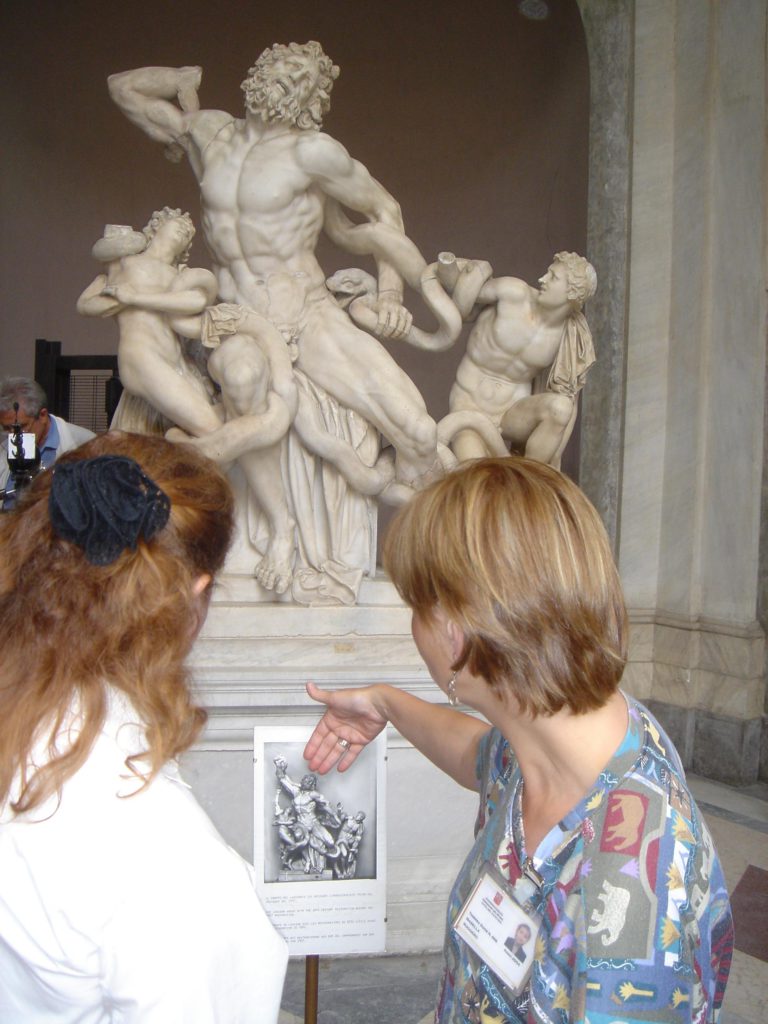
Since the popes claimed all of the objects unearthed in Rome until about a hundred years ago, all of the good stuff is in the Vatican: the only surviving gold plated bronze statue, which survived because after being struck by lighting the superstitious Romans buried it; rare dark red marble sarcophagi for the wife and daughter of Constantine, the former unaccountable engraved with pictures of warfare (Isabella said it had originally been intended for Constantine’s father, but maybe he and the wife didn’t get along); Florentine tapestries from the 14th century, clearly superior to the Italian and French ones; and a corridor of maps, once showing the Po river in its old course, far from Venice.
Isabella also provided wonderful interpretation of the Sistine Chapel. In the recent restoration they were able to determine from the plaster marks that Michelangelo worked on it 449 days over a five year period. (Frescos must be painted on wet plaster, so you must mix a fresh batch each day. ) Since Michelangelo had to learn the technique to do the job, you can clearly see the improvement in his designs in the large panels on the ceiling, which improve as you approach the altar. You can also see the tremendous difference in mood between the fanciful ceiling (painted at age 35) and the tormented Last Judgment on the wall behind the altar (painted at age 65). In St. Peter’s we admired the scale of the building (The Sun Bank building in Orlando, 24 stores tall, would easily fit inside the dome), Bernini’s outrageous monuments and canopy, and the recently beatified pope somebody or other, whose waxen smile welcomes everyone strolling past his mummified corpse. Beneath the basilica is the reputed tomb of St. Peter. But Isabella clued us in to the fact that the box everyone is taking photos of doesn’t hold his relics (that’s “bones” to you non-Catholics). It actually contains one of the Pope’s old shirts. St. Peter’s alleged bones are another level down.
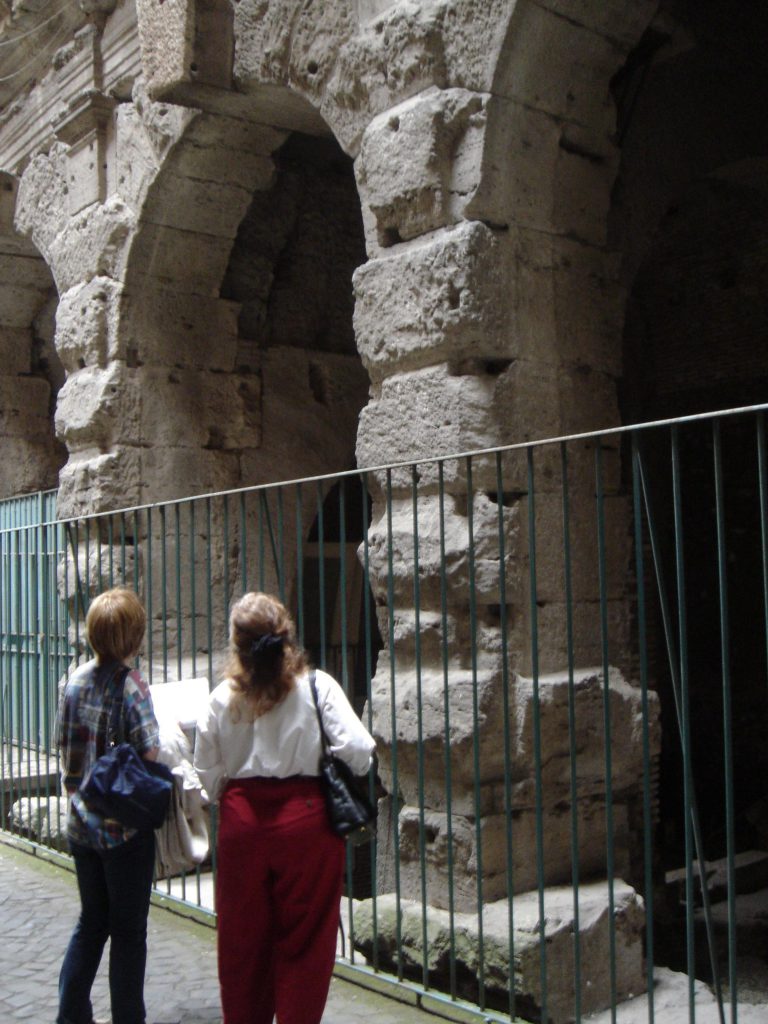
Because Isabella was such a fabulous guide, we asked her to spend another hour with us. She took us to the Roman houses beneath the basilica of Ss. Giovanni e Paolo (that’s Mr. John and Paul to you non-Italians). John and Paul were a couple of fourth century Christians who lived in a house that is reputed to be the first Christian church in Rome. When Constantine died, the next emperor, Julian the Apostate, wasn’t a Christian. As a result, John and Paul lost their heads. Literally. They were buried under their house. In the fifth century the current basilica was built on top of the house. The rooms below were used for storage and wine making, and some of the pagan frescoes were painted over. The basement was listed in the Middle Ages’ equivalent of the Zagat Guide to Holy Tourist Spots and lots of pilgrims went to lower their neck chains into the hole over the reputed tombs. Then the whole thing was filled with dirt and forgotten. Later, someone built a well right down through the middle. Then, in 1887, Padre Germano, priest at the church, decided to try to find John and Paul. When he started digging he was amazed to discover the Roman house, adjacent apartment complex and shops, and even an earlier house beneath that. In fact the only thing he didn’t find was John and Paul. Visitors can follow catwalks through the many fascinating levels of the excavations far below the church. The frescoes have been uncovered, and you can walk around the shaft of the well! This is probably the single most interesting site in all of Rome. The adjacent museum holds an amazing array of artifacts from the house and apartments, including fine glassware, plates, coins, statuary and Pokemon cards (just checking if you’re awake).
For dinner we went back to the same trattoria where we had lunch, but Dani wasn’t feeling up to it, so I walked her back to the room. She felt better later, though. As it grew dark — a little past 9pm — Linda and I enjoyed drinks in the courtyard.
Friday, June 18, 2004
Umbria (Orvieto and Todi)
Today we actually joined the tour group. We met in the lobby while we waited for the bags to be collected, which took 30 Italian minutes (an hour and a half). The group is comprised of a wide range of ages, including another girl Dani’s age (13) several other teenagers and even a few middle aged folks, as well as the grandparents who are treating all the teenagers to European tours. The group is entirely Americans, except for two retired South Africans who now live in Chicago. It’s a better traveled (and therefore better behaved) tour group than any I have been with before.
While we waited we swapped stories about travels in Australia, England, France and Italy. We boarded our comfortable tour bus before 10am and driver Simone (pronounce the final ‘e’) headed us north. In less than two hours we found our bus climbing the steep road to Orvieto, a town in Umbria.
Umbria is the only one of Italy’s districts that doesn’t border an ocean or another country. It is rural, with only about 90 people per square mile. We saw corn, olives, tobacco, grapes and many vegetables along the way.
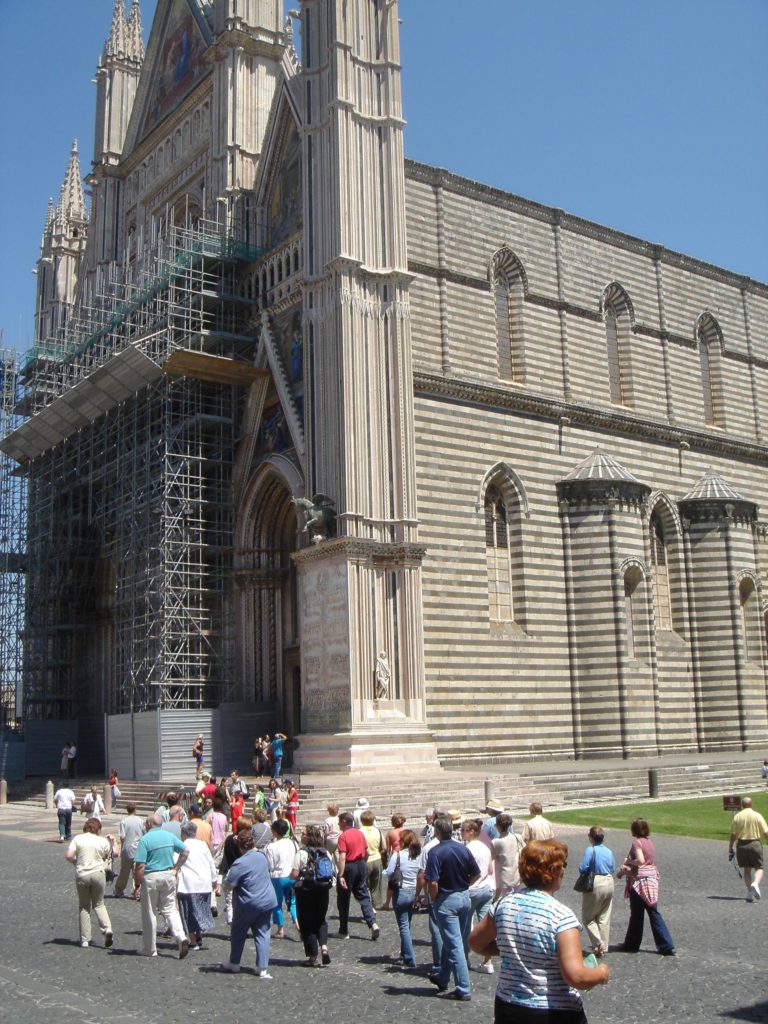
In Orvieto we visited the duomo, a basilica constructed from 1290 to 1590 (these things take time). If you’re keeping score, this was the third church of our trip. It was riveting. Just kidding. The construction of the church was inspired by (I’m not making this up) a miracle in nearby Bolsena, when the consecrated wine actually turned to blood and spilled onto the altar cloth. I hate when that happens.
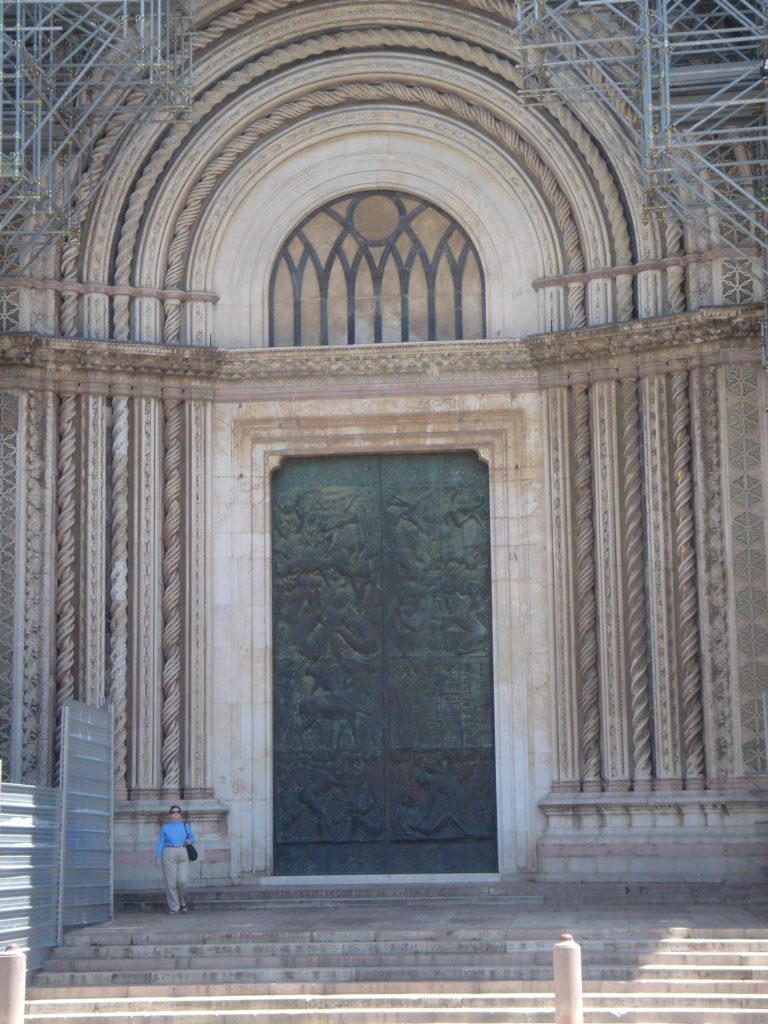
We had a very nice group lunch in the small Trattoria la Grotta: ziti, a delicate vegetable lasagna, chicken, beans, salad and a wonderful tira misu were accompanied by white wine (Orvieto, of course) and a not-too-sweet spumante (I didn’t know there was such a thing). The bread in this part of Italy is not that great, because it lacks salt. This tradition dates to the building of the Trevi fountain, when a tax was imposed on salt, and the city-states outside Rome refused to pay.
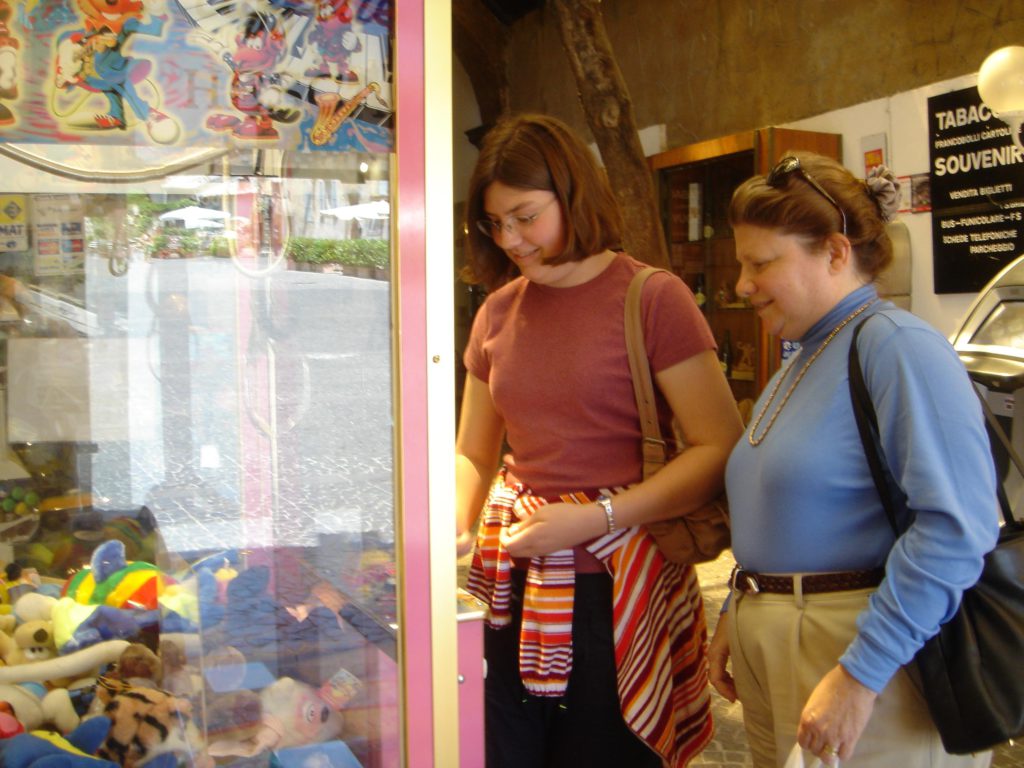
After lunch Linda and Dani pursued the traditional Renaissance activity of trying to get a stuffed toy out of the claw machine in the arcade next to the duomo. No luck.
We did a little shopping. Dani found some nice glass pen and ink sets as gifts, and Linda bought a pair of Etruscan-style earrings.
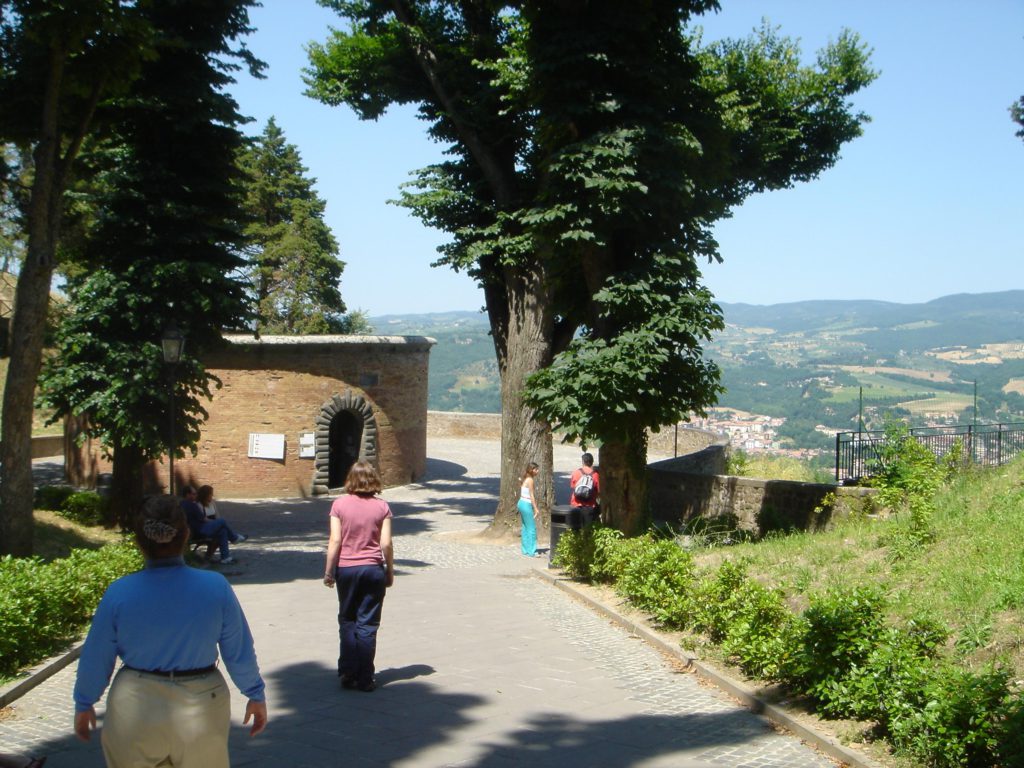
In 1527 Pope Clement VII commissioned the construction of a huge well, the Pozzo di San Patrizio, to provide Orvieto with water in case the city was attacked. (In those days Italy was comprised of many separate city states that couldn’t get along. . . a lot like today, in fact. )But this well is no ordinary well. This well is a work of art. In case you don’t know your arts from a hole in the ground, let me assure you this is one big hole. It’s 203 feet deep. And there’s no rope. But this pope was no ropeless dope. There are two intertwined staircases, each with 248 steps that spiral down the sides of the well. One for down, the other for up.
Why two staircases, you ask? It’s hard to turn a donkey around on a staircase. And they don’t swim well.
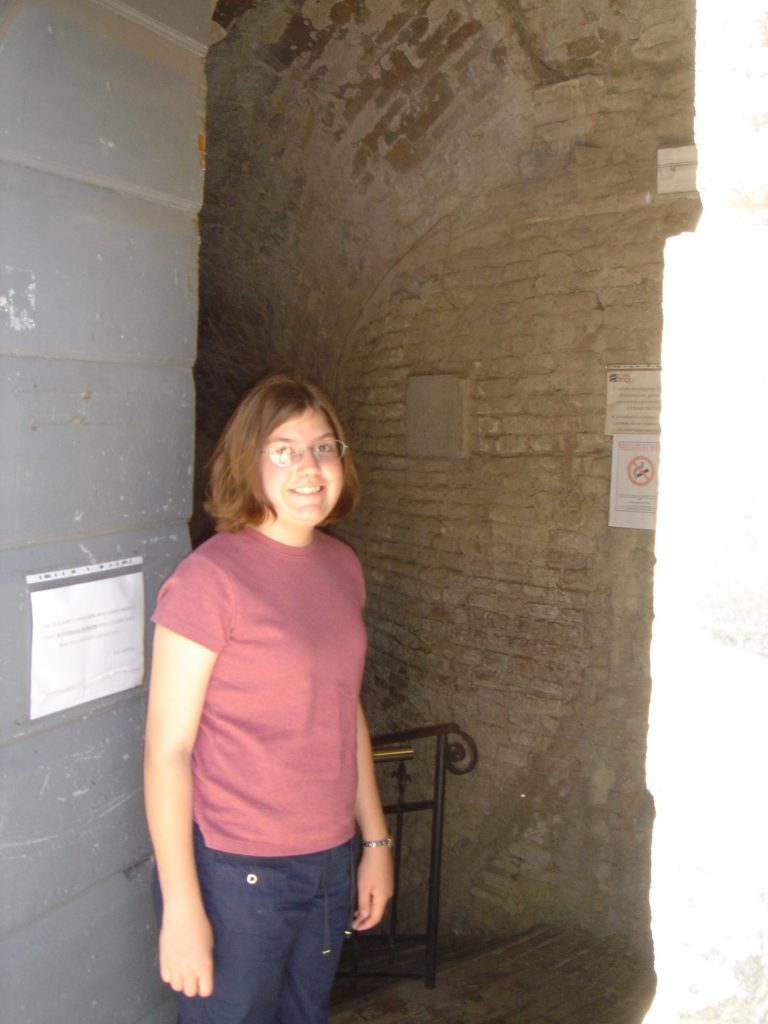
An hour’s drive east from Orvieto brought us to another hilltop town, Todi. The two towns are separated by rolling countryside, farms and a zigzagging River Tiber.
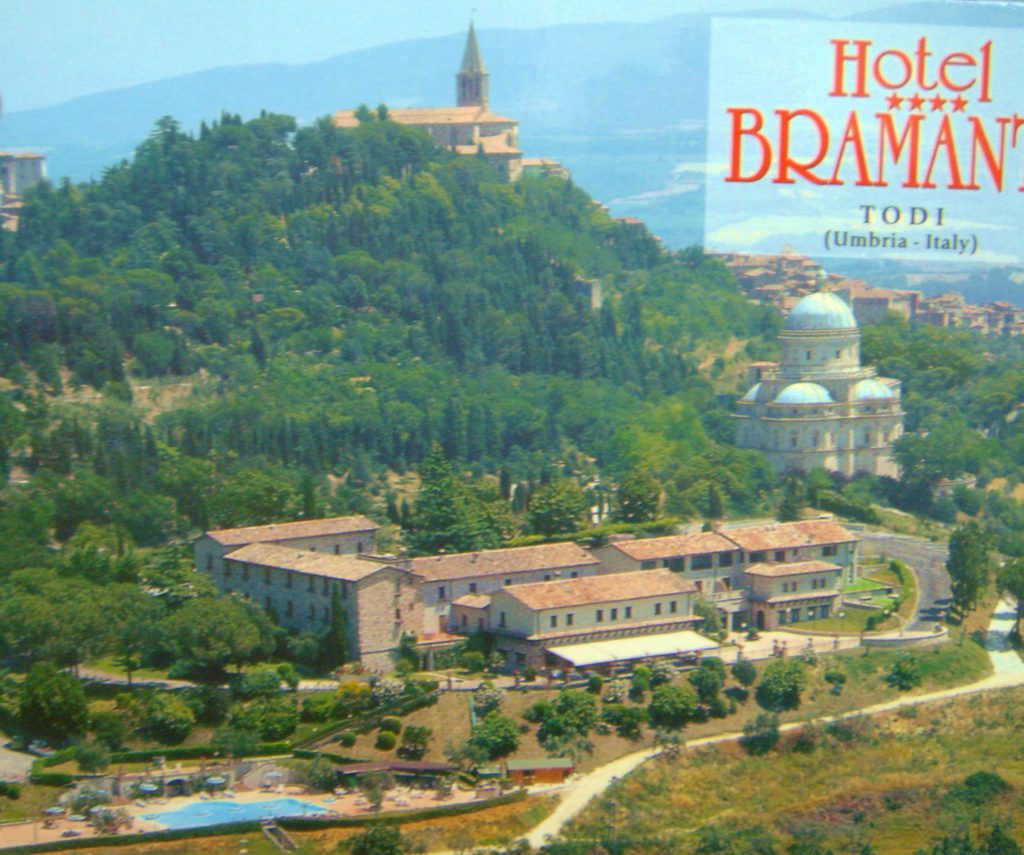
Our hotel, The Bramante, is nestled on a hillside below the town, and is connected to it by a nearby funicular (inclined elevator car). The Bramante was formerly a 12th century convent. What the nuns did with this swimming pool, I have no idea.
Anyway, our room is about twice the size of the one in Rome. It’s a lovely, peaceful spot. funicular funicular
In the evening we took the funicular to the top of the hill and wandered the medieval streets of Todi. It’s a charming little town of 17,000 residents and 18,000 churches. The many gift shops seem reasonably priced. todidinner todidinner Linda found a wonderful trattoria, with a floral bedecked patio overlooking the Umbrian valleys. We had a leisurely dinner as the sun set. The wine was a 2000 Sagrantino di Montefalco by Antonelli, a dark and complex red with which I was not familiar. We took the funicular back to the hotel around 10pm.
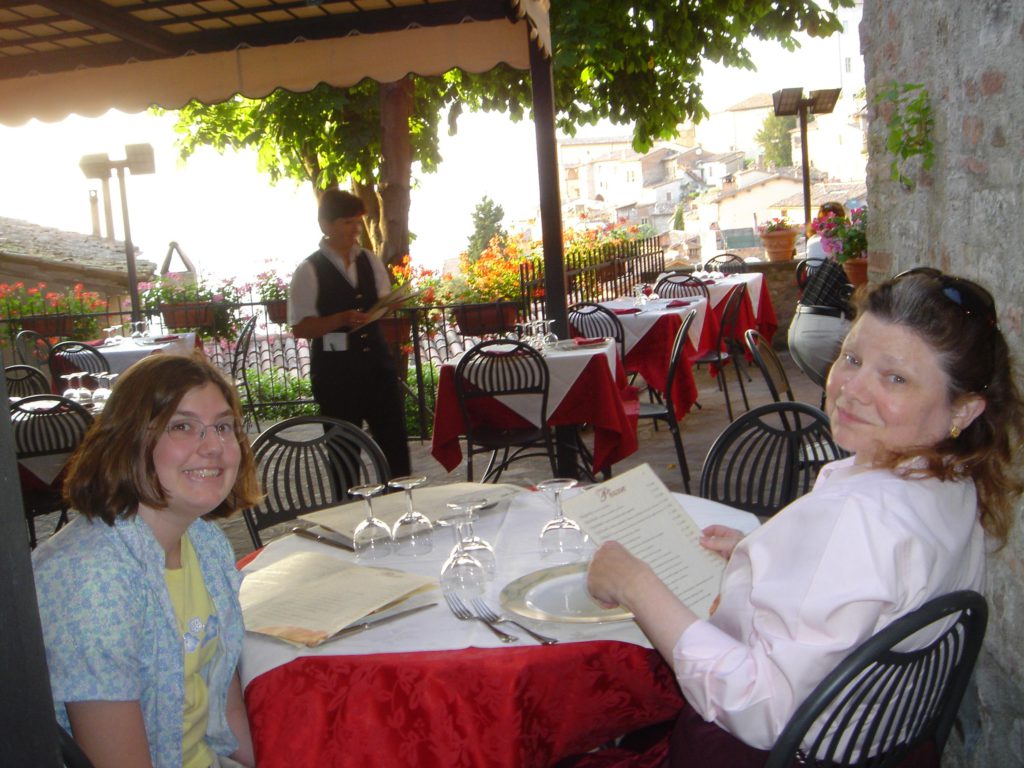
Saturday, June 19, 2004
Tuscany (Assisi, Siena and Florence)
The cool breezes wafting across the terrace at the hotel provided a lovely environment for our al fresco breakfast. Then we headed to Assisi, about an hour northeast.
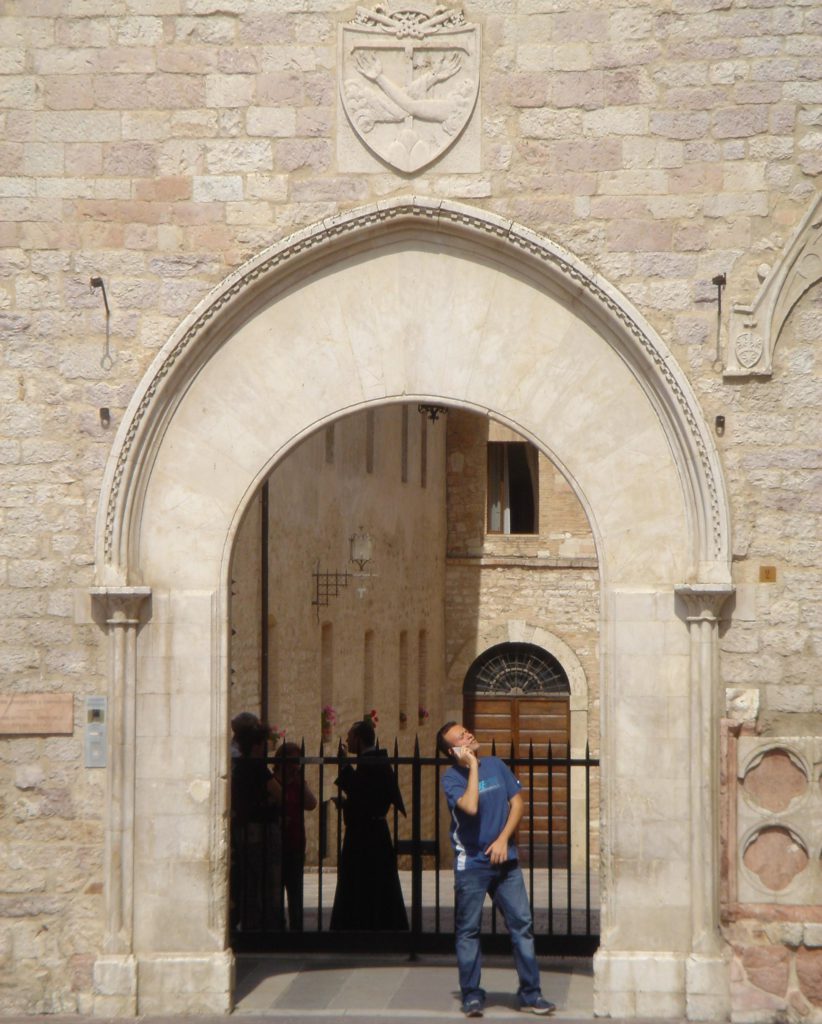
Assisi was the home of St. Francis, founder of the Franciscan order. There a local guide, Maurizio, provided a tour of the basilica (number 4 if you’re keeping count). My “Whisper” radio receiver was on the blink so I can’t comment on the commentary, but Linda and Dani(!) said it was interesting. For me it was among the more boring hours of my life.
To summarize, the church is unusual because it acknowledges not just Catholicism, but also Judaism and Islam, without invoking weapons.
Beneath the church is the crypt, with the tomb of St. Francis. There you can purchase a candle for St. Francis. You pick it up from one box and place it into another. There is a sign that says “Please do not light”. The church has discovered they last much longer this way. Yet another miracle.
Back in the main church, at the shrine of St. Duracell, you may place a coin in a slot and an electric candle will light for a while. Sort of a parking meter for blessings.
Finally we escaped from the church into the courtyard in front of the monk’s quarters, turned around and climbed the steps into — aaargh! — another church, this one the top level of the previous. That’s number 5.
As with the one downstairs, the walls and ceiling had been covered with pictures of flat people painted by perspective-challenged artists. Those by Giotto included just enough perspective to demonstrate how bad he was at it.
Slowly I inched toward the fresh air and natural light beyond the exit, and at last we were released. On the way back to the bus we visited the subbasement of the church where for fifty eurocents we paid homage to the pagan god of white porcelain.
The two-hour drive northwest to Siena gave us time to nap and appreciate the fact that we were not in a church.
Siena is a gothic (13th century) town that was once a powerful city state until it was conquered by the Medici family of Florence, an event the local residents still resent.
We had a rather long walk to the restaurant for lunch and it was hard on quite a few of those in our group. Fortunately the three of us got into training in Rome.
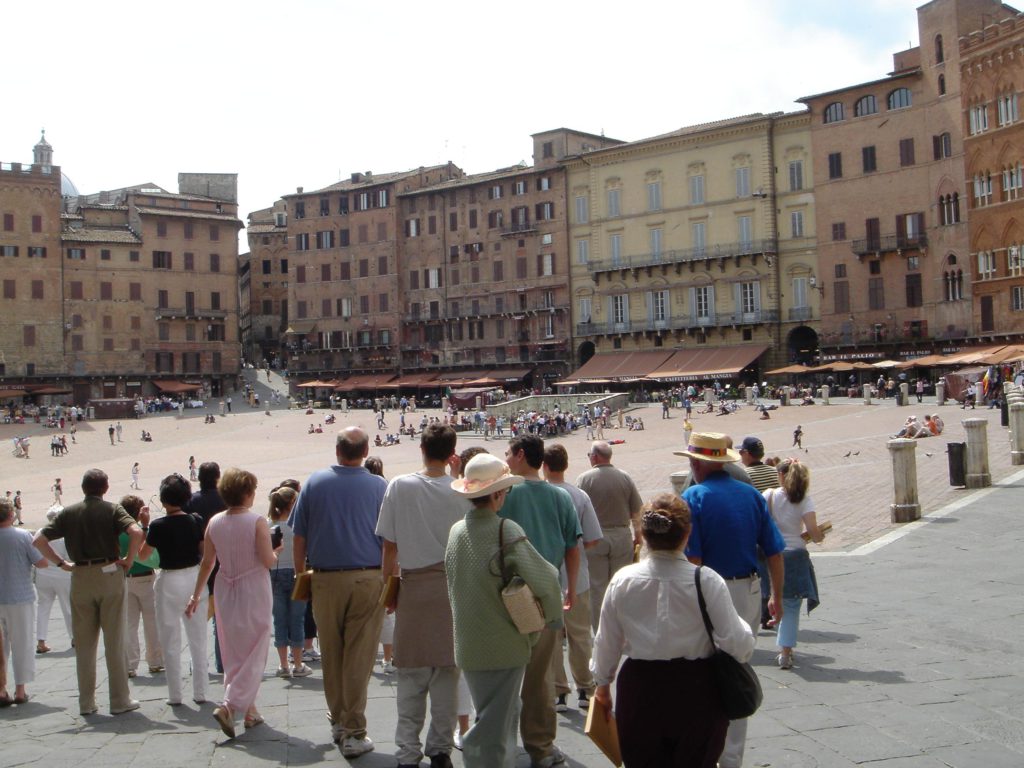
On the way we passed through the Piazza del Campo, an unusually large square where an annual bareback horse race is run. There are no rules, just three times around the square, the winning horse is the first to cross, with or without its rider.
Lunch was different.
Different than good, anyway: antipasti, odd pieces of thick crust pizza with strange coatings, and then a bowl of garbanzo bean soup. Fortunately there was plentiful white, red and dessert wine, perhaps an attempt to make up for the food. The dessert wine was the most interesting, a late harvest Sangiovese.
The restaurant featured 13th century architecture and acoustical treatments (brick).
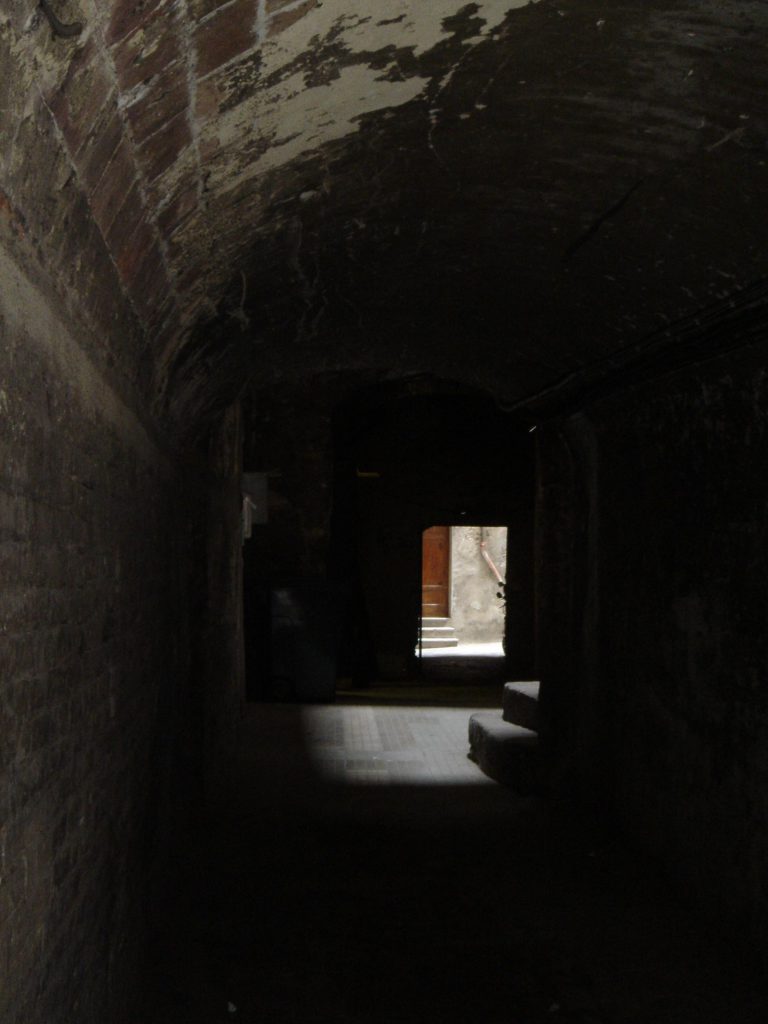
A local guide met us after lunch and took us on a torturous tour of Siena, which exhausted many of our group. But you’ll never guess what we saw on the tour–Oh. You guessed.
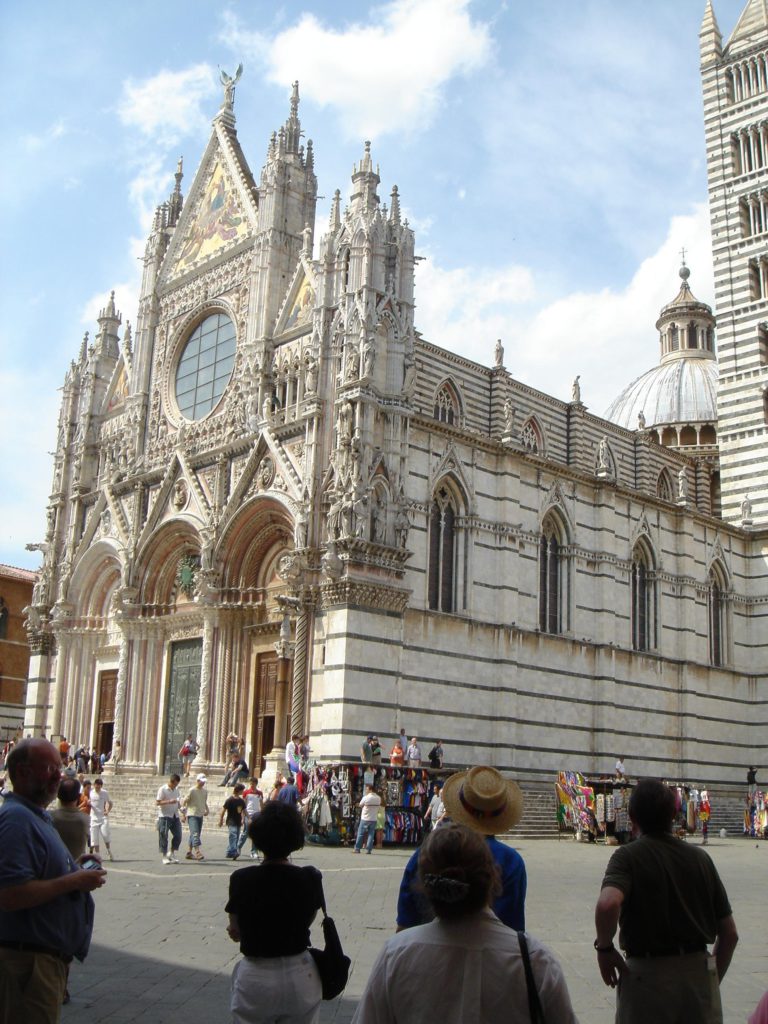
Yes, we visited 183 churches.
The largest church in Siena is the duomo. (I think the Italians have all these different names so you won’t realize that all the buildings are churches. ) Unlike the duomo in Orvieto, which is white and light gray striped, this one has an important difference. It’s white and dark gray striped.
In their competition to “out stripe” the Florentines, the residents of Siena began building an addition to the church that would have converted the existing structure to a mere knave. The Plague put and end to the supply of both workers and congregation, but two walls still stand.
The best church was the one that displayed in an open box (I’m not making this up) the head of St. Catherine of Siena, who apparently didn’t need it after she died in 1380. I wish we had stuff like that at Disney World.
Dani was still hungry after watching us eat lunch. Deciding against communion wafers, she made a fast food run to Siena’s only McDonalds while the rest of us straggled back to the bus. I suspect more than a few people on the bus were jealous of that burger.
It was a very quiet hour and a half bus ride to Florence.
In retrospect, I don’t think visiting Assisi and Siena is a waste of time, but I do think the activities our tour engaged in were pointless and repetitive. I am certain everyone in our group would have preferred a couple of hours in Siena to find lunch on their own and to shop. Unlike the four hilltop towns we’ve just visited, Florence (which is really called Firenze) is located in a valley, and is divided by the Arno river. Much of the town is a typical 20th century European city, due to the beating it took in World War II. Our hotel, the Anglo American, is quite nice. Our room is cool. You enter into a small sitting area with built-in desk and cabinets, and a love seat that makes into a twin bed. There is also a fair-sized bathroom. Along one wall are open stairs — no railing — that go to a loft with two more twin beds and a large bathroom. (All of the bathrooms we’ve had have included bidets, but this is the first time I’ve encountered little bottles of “intimate cleanser”. The ingredients are identical to the shampoo. Hmmm. ) We walked along the Arno River about six blocks to Harry’s American Bar and Grill for dinner. It’s not the dark, wood-paneled, intimate space in the ad, but rather a bright, noisy place. I wouldn’t say it’s really American, but it’s not really Italian either. The service was formal, reminding me of continental restaurants from the 1950s. One of the reasons we decided to try Harry’s was that our guide Larry warned us the place was expensive, and we wanted to see what a $34 hamburger looks like.
Maybe it’s just that after Arpège nothing will ever seem expensive, but it didn’t seem all that bad. The hamburger was only 19 Euros. . . and the fries another eight. . . hmmm, let’s see. . . that makes. . . $34.
Anyway, I had smoked trout and an Entrecote that was excellent. Linda had — I’m not kidding — pasta. The wine, a 1999 “super Tuscan” by Collazzi, was superb.
Sunday, June 20, 2004
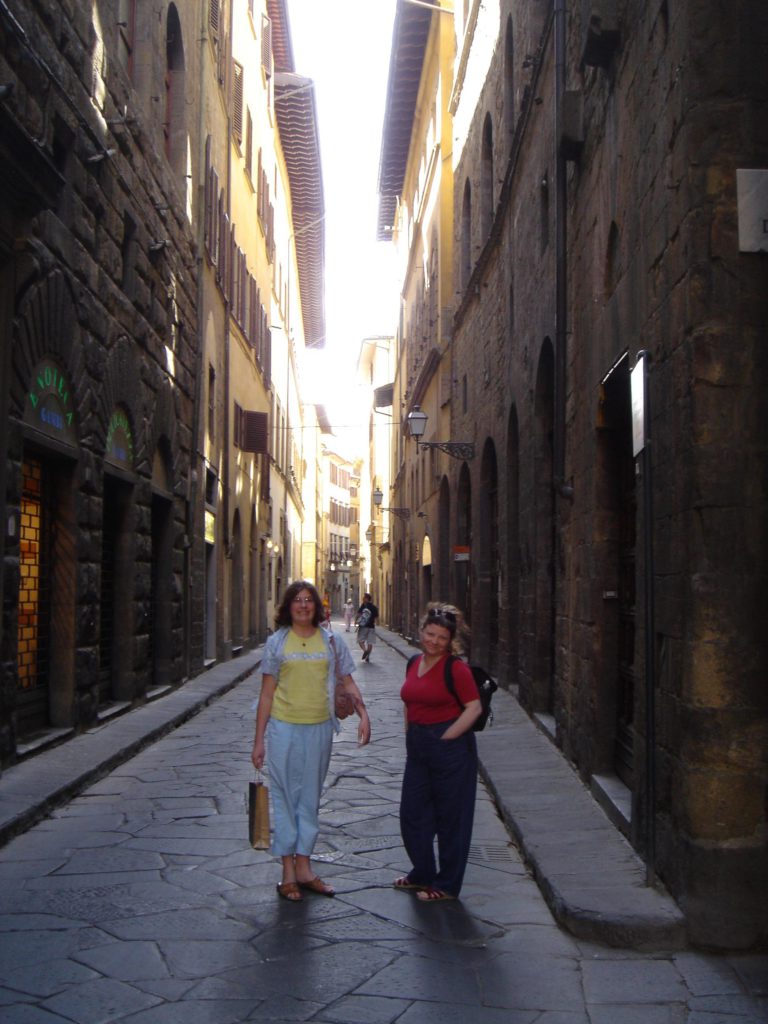
Florence
Sunday was a beautiful, blustery day, with cool breezes to offset the heat of the sun. It rained a few minutes during breakfast, then the wind pushed the clouds east.
Florence is marvelously walkable. Although the city is large, the central area is only about a half mile square.
Today was a church-free day.
We wound our way through the twisty streets to the Piazza di Signoria, stopping along the way for some shopping in an outdoor bazaar. Many shops were open even though it’s Sunday.
At the bazaar we recognized a bronze statue of a boar. There is a copy of it at the Hyatt Regency Grand Cypress in Orlando. Legend has it that if you rub its snout for good luck. . . the snout will stay shiny.
It works.
In the Piazza we admired the scaffolding that surrounds a copy of Michelangelo’s David. (This is where it originally stood, prior to being moved into a museum for safekeeping during the 1880s.) More impressive was Cellini’s bronze of Perseus Beheading Medusa, which stood opposite. What they say about the medusa must be true, because all of the figures around it were stone. There was also Giambologna’s Rape of the Sabine Women, but they hadn’t gotten to the raping yet.
We skipped the lines at the Palazzo Vecchio and Uffizi art museums (sort of Italy’s version of the Louvre) and instead focused on what Florence is really all about: shopping.
Dani bought a leather bound journal and wax seal with her initials, and a few gifts. florencepontececchio florencepontececchio The place to buy jewelry — at least the place for tourists to buy jewelry — is in the shops that line the Ponte Vecchio. This bridge, the only one to survive the German demolition teams as they retreated during WWII, used to be the location of the butchers and tanners. But the smell was so bad in the 1500s the ruling families kicked them out, and the jewelers moved in. Across the upper level of the Ponte Vecchio is a causeway the Medicis used to get from one palace to another without having to mix with the peons. Untended by the Germans during the war, it became a route for the resistance to cross the lines with plans of their artillery placements.
We had lunch at Ristorante Dei Bardi, a wine bar with a spectacular view of the river and the Ponte Vecchio. Wine, cheese, salads, fish, meats, pastas, bread, fruits and coffee — a typical two-hour Italian lunch. On our way back across the bridge Dani bought a Roman coin of Constantine I, mounted in a pendant. Linda bought a chain for Dani to hang it on, and another chain for herself. (I gave Dani her allowance and trip money on a prepaid Visa card. She has been enjoying the novelty of paying with plastic. )We assembled in the lobby at 7pm and a fleet of taxis drove our group across town to Tavernetta Della Signoria for our farewell dinner. The company was good; we enjoyed hearing everyone’s travel stories. Larry, our guide, has had an interesting life, raising a family while working for the US foreign service in Morocco and Paris, and now traveling the world hosting different tours almost every week.
After dinner I decided to walk back to the hotel by myself so I could take some photos of Florence at night. The moon was out and it was a glorious evening along the Arno, with the sky still fading to indigo at 10pm.
Monday, June 21, 2004
Florence to Venice
The Eurostar Train pulled out of Firenze Station at 8:50am for our three-hour eastward trip across Italy to Venice. This is the final leg of our land tour.
In Venice (it’s really called Venezia) we went straight to the ship, and were onboard by 12:30. Our suite is on the stern of the ship, so we have nearly a 180 degree view, guaranteeing we can see the port city no matter which side is used to dock. We can see Epcot’s — er, I mean St. Mark’s — tower from the ship.
Our cabin layout is virtually identical to that we had last year in Alaska, except mirrored. There is a sitting are with a convertible sofa, and a bedroom area with a queen bed. Both sides have built in desks and drawers so Dani and I can leave our computers set up. There is also a bar, walk-in closet and a divided bathroom.
Our cabin stewardess, Nicole, is the best we have had. She and her husband have been aboard for eight months, and this is their next to last voyage. During that time the Star Princess has been all around the world.
Nicole clued us in to a few features of the suite we weren’t suspecting: free laundry, dry cleaning and Internet access (although unfortunately no wireless access. )
We spent the afternoon exploring the ship and doing. . . well, nothing. It felt great. Then we had a pleasant dinner in one of the ship’s dining rooms and hit the sack.
Tuesday, June 22, 2004
Venice
We were up early for our morning tour of Venice. It began with a motor launch that took us through the lagoon to the Grand Canal where we went on a 40-minute gondola ride in the canals. Often people describe things as unique, but usually it isn’t really true. Venice surprised me. It really is unique. There are no cars, not motor bikes, not even any bicycles in the city. The streets are few, and they arbitrarily narrow to only a few feet wide, because there is no need to accommodate anything larger than a person. The city is actually a network of 118 islands separated by 150 canals and connected by 400 bridges. Most of the canals have no sidewalks, so it really is almost impossible to get around without using a boat. The cheapest form of transportation is a water bus, at about one Euro. The most expensive is a private water taxi, which costs 70 Euros(!) to go from one side of the city to the other, a distance of only a few kilometers. The tide seems to run only a few feet, but it appears to get dangerously close to the ground floor of most buildings. It’s a very harsh environment for construction. I was amazed at the amount of traffic on the canals: not just tourist gondolas, but launches delivering vegetables and supplies, construction and baggage handling boats, even garbage collection boats.
It was rush hour Venetian style.
Our next stop was Morano, a collection of islands a few kilometers away, where glass has been made since the 12th century. We watched a demonstration of a decorative carafe being made. It was impressive, but not the delicate ballet of four glassmakers we watched at the Hedeland Glassworks in Sweden.
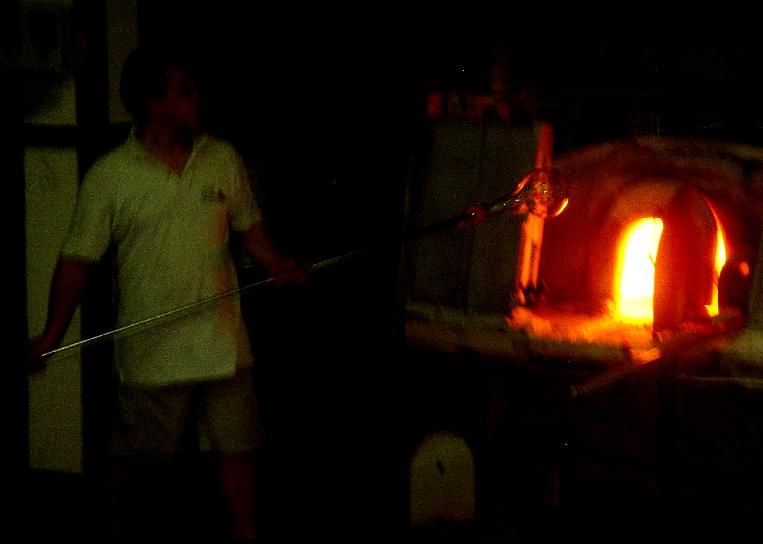
The shop upstairs was ridiculously priced — a set of six goblets was 1600 Euros — but we bought a few decorative trinkets downstairs. stmarks1 stmarks1 The final stop on our tour was a church, but we escaped and caught a water bus across the lagoon to St. Marks square.
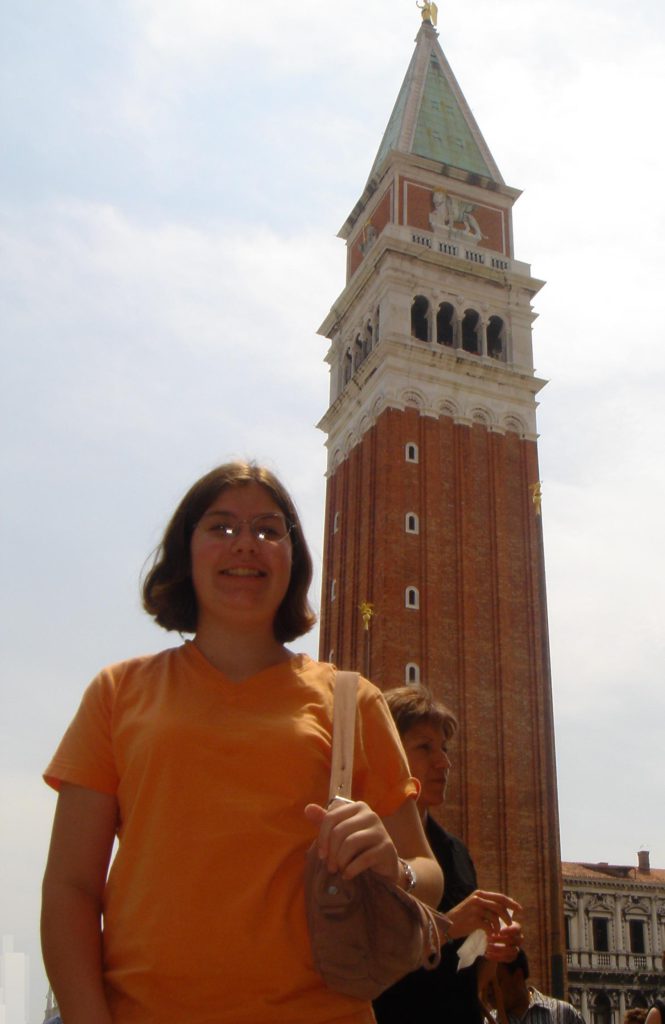
It’s a lot bigger than the Epcot version — and a lot more crowded.
We explored the side streets and canals for a while, looking for a restaurant that wasn’t a tourist trap. Finally Linda saw one that looked fairly traditional, and we went in and sat down. . .
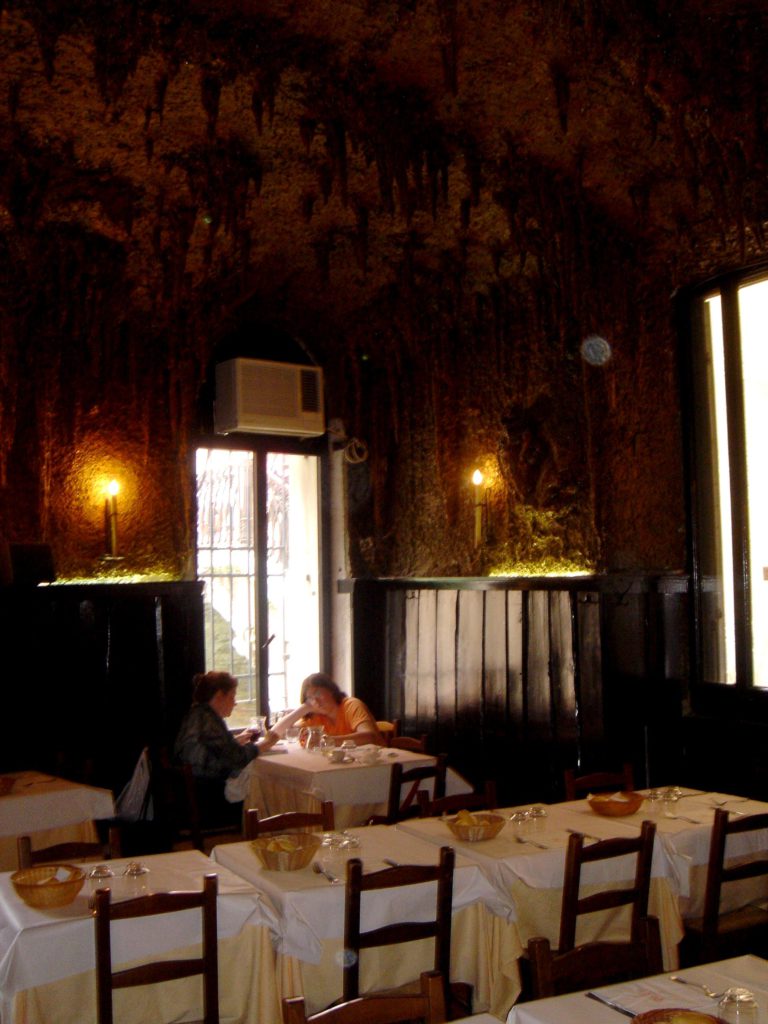
. . . only to discover the ceiling of the room was decorated as a cave! The food was actually pretty good, and a carafe of wine was less than four Euros.
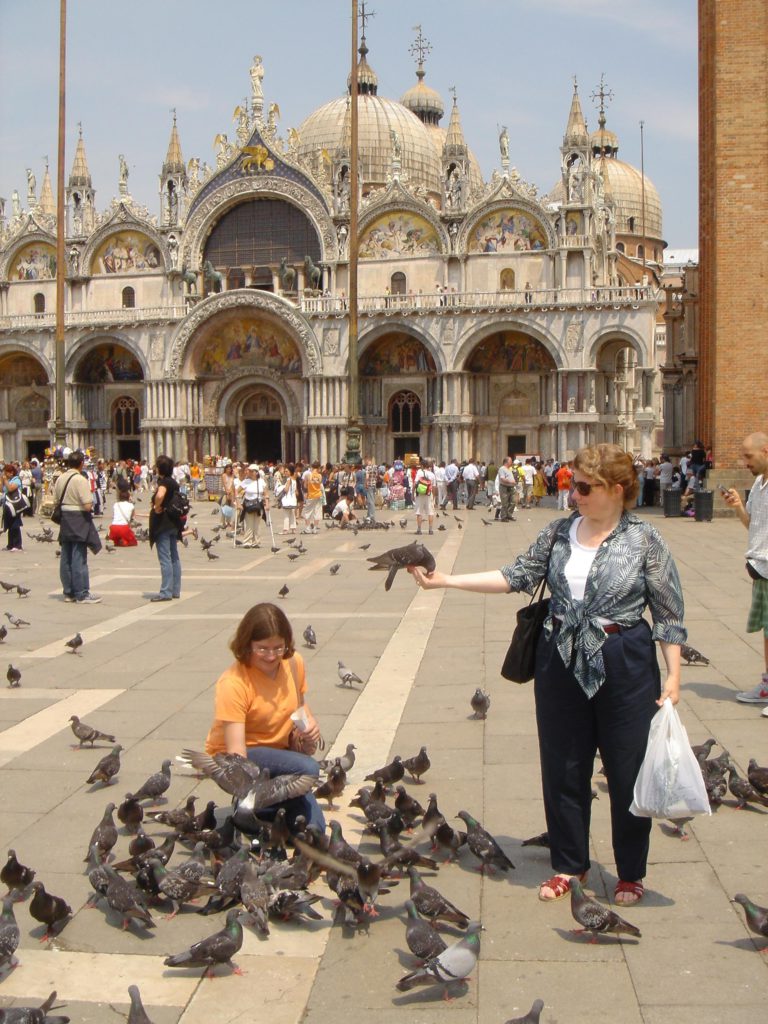
After lunch we walked back to St. Mark’s Square and had great fun feeding the zillions of pigeons.
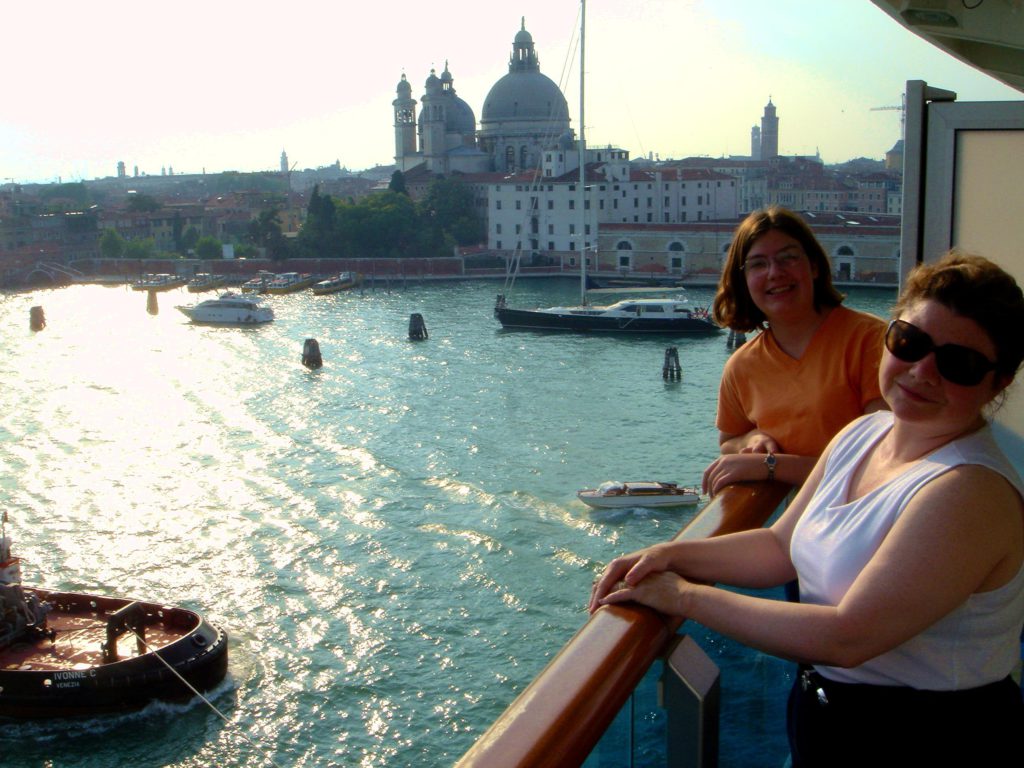
The Star Princess left port at 6:30. We watched from our aft balcony as a tugboat wrestled against the ship’s engines, rotating it to squeeze through the lagoon and into the Adriatic.
Wednesday, June 23, 2004
At Sea
Today we did nothing. It was nice. Actually, Dani and I spent a couple of hours painting ceramic boxes. They don’t have a studio here like they did on the Coral Princess, but they do have a cart up on the pool deck, with the same selection of bisque and glazes. We’ll decorate our boxes with scenes from the trip, just like we did last year in Alaska. Then we did nothing. We discovered that having the cabin on the rear of the ship has a disadvantage: the white noise created by the wake is really quite loud. The balcony is fine for reading, but conversation is a challenge. It was formal evening, so we dressed in our best and headed for the Promenade Lounge, where Dani, Linda, Dani, Steve and Dani shared some caviar.
Sabatini’s is one of two restaurants that have a small cover charge in exchange for finer dining. We had dined at Sabatini’s on the Coral Princess, so we knew we should only have a bite of the first dozen things we were served! They weren’t exactly courses, since the waiters only replace the plate after every half dozen items or so, but we were served food 28 separate times! Even being careful, it was still impossible to do justice to the cold water lobster when the entrees finally arrived. The wine was an excellent 2000 Amarone.
Thursday, June 24, 2004
At Sea
More ceramics in the morning, then more nothing. I wish I had a dollar for every Dan Brown book on this ship. I guess Dan Brown does. While she was sick in Rome Dani read the DaVinci Code and Digital Fortress (plus three other books that didn’t earn Dan Brown and money). Linda brought Deception Point and I forgot Angels and Demons, but found it in the ship’s store. So Dani is reading that now. I must have seen a hundred other copies of those books around the ship today.
Dinner was at Tequila’s/Sterling Steak House, the other cover charge restaurant on the ship. Originally I suspect they were trying for a Mexican-themed steak house, but the only remnant of Mexico was the decor. The steaks were excellent, the service a bit clueless, and the band truly horrible. It’s difficult to say which rendition was worse, Spanish Eyes or Horse With No Name, but the fact they were both in the same set gives some suggestion of the band’s awfulness.
Friday, June 25, 2004
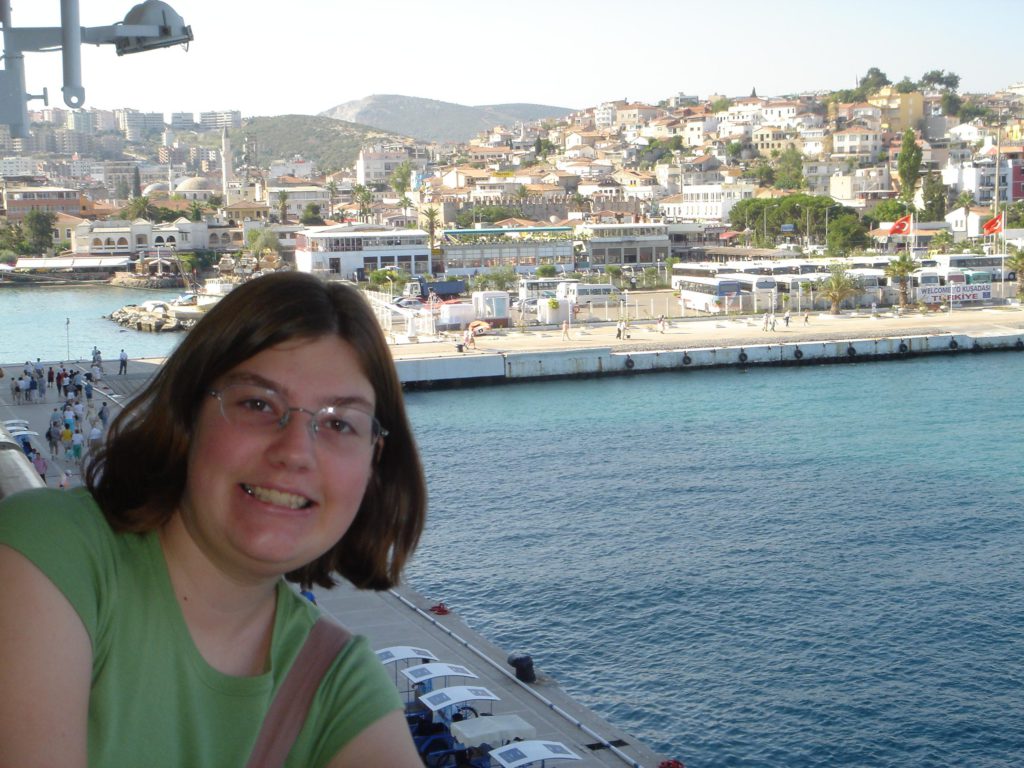
Kusadasi, Turkey
The ship docked at the town of Kusadasi (Coo-SHA-duh-see) while we were having breakfast on our balcony. The town has grown from a sleepy fishing village to a large resort area over the past 30 years. Before the war in Iraq there were as many as eleven cruise ships in the harbor at once. Today we were the only one. A security boat circled our ship all day, staying between us and any small boats that passed. Despite this precaution, Kusadasi seemed like a very clean and safe — if annoying — town. It’s been a long time since I was in a place where every shop keeper tried to drag me into his store full of tourist crap, but it only took me a few minutes to remember why it had been so long.
Fortunately our bus departed almost immediately for Ephesus, a Greco-Roman city about 25 minutes outside Kusadasi. By the way, did you know that Turkey is actually spelled Turkiye (with some funny little marks I can’t make) and is pronounced tur-KAY-uh?Although GWB is working hard to turn the Turks into enemies, the Muslim influence in Turkey is somewhat muted. (Istanbul was originally on this cruise but was removed in February. Just as well — they’re rioting against Americans there this week. ) A statue of Ataturk, founder of Turkey, stands on the hill above Kusadasi even though graven images are a violation of Islam.
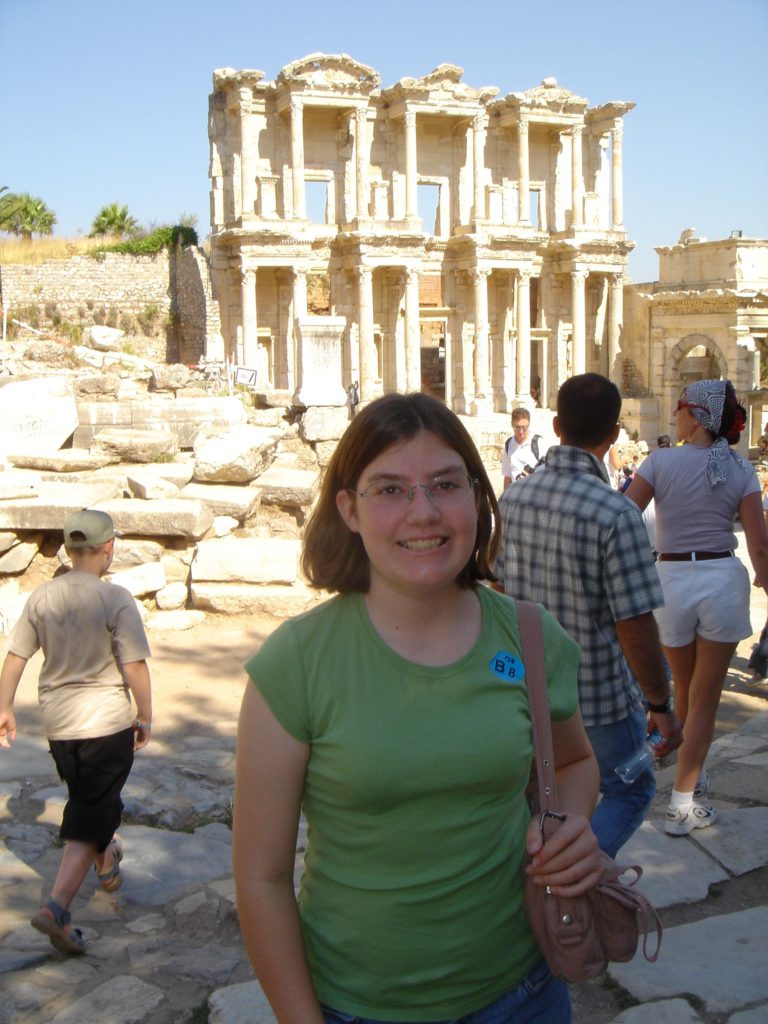
Ephesus was founded in the fourth century BC by the Greeks. In the second city BC the Romans moved in. At its peak there were a quarter million residents. It was a very rich town because of its excellent harbor for traders and the nearby Temple of Artemis (several times larger than the Parthenon) which brought many pilgrims. The traders and pilgrims brought money. The streets of Ephesus were paved in marble. Every house had indoor plumbing. There were toilets with running water, sewers with manhole covers, even a marble bed heated by hot water pipes. The library had double insulated walls and cubbies to store 12,000 scrolls.
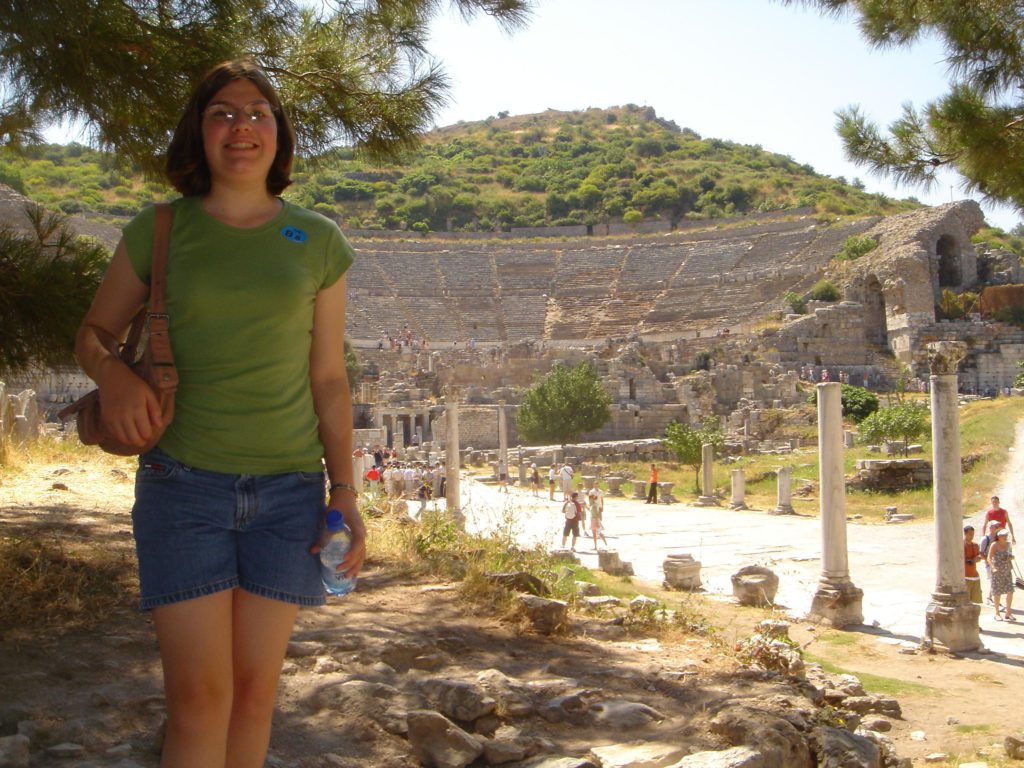
A small theater — still in use by performers like Elton John and Ray Charles — seats 1400. A larger stadium seated 37,000. (I suppose Elton was once popular enough to fill the larger stadium, but it’s a crumbling ruin. . . a bit like Elton, in fact. )
By the fifth century AD Ephesus was in decline. The harbor filled with silt, leaving the city two miles from the sea. The Romans, now officially Christian, no longer made pilgrimages to the temple. Earthquakes finished the job. Ephesus lay undisturbed until the late 1800s. Even today, only 10% of the site has been excavated. Our guide was extremely knowledgeable, and also funny.
We were truly impressed by what a beautiful city Ephesus once was. While not preserved like Pompeii, it was easy to glimpse its former glory.
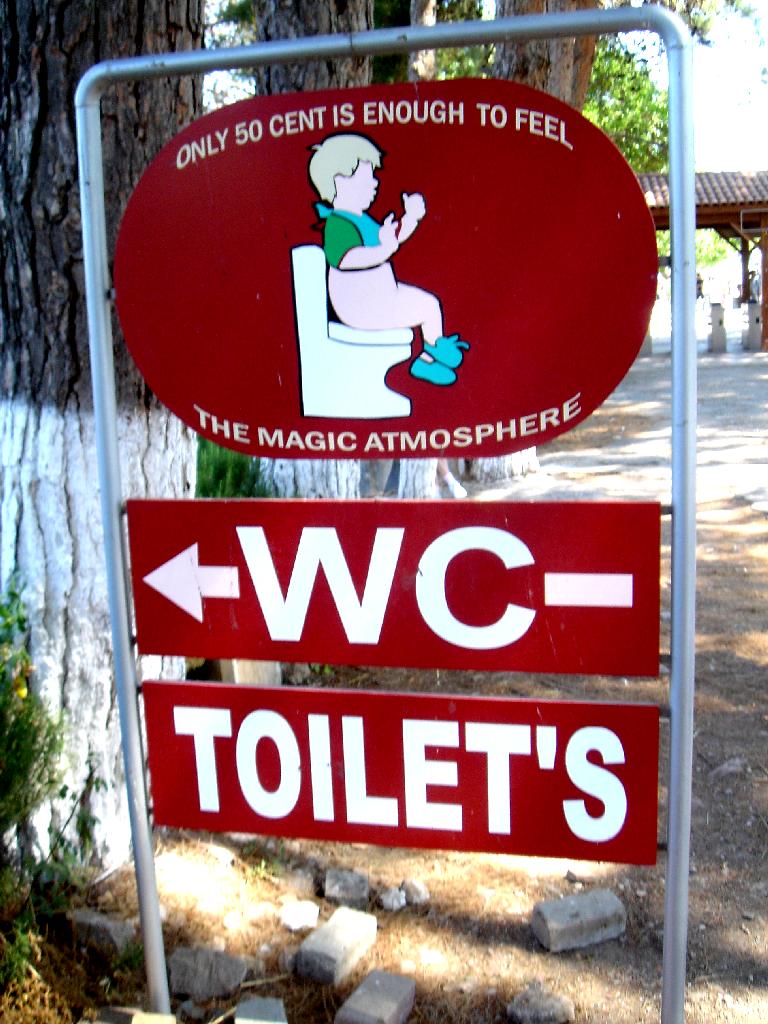
Back in town we were ushered into a carpet salesroom for an almost exact replay of our carpet salesroom experience in Morocco over twenty years ago. They’re cheaper at Home Depot. The carpets are woven by girls belonging to nomadic Turks, who comprise about 8% of the population. They take about a year each to weave, and comprise the girls’ dowries. Many of the carpets contained repeating symbols of five squares, symbolizing the number of times a day that Muslims pray. (According to the salesman, good Muslims pray five times a day, bad Muslims sell rugs in Kusadasi. ) A little hot apple cider, a pita, and many carpets later we escaped with wallet intact. (It’s traditional for salespeople to give you apple drinks and food. Selling through guilt. Hmmm. . . I wonder if that would work for Alcorn McBride. . . )
I wrestled my way through the salesmen back to the ship; Linda and Dani stayed to shop. Later they returned with two rugs about the size of cat boxes. (Past experience suggests this is an apt comparison. ) They had a pleasant lunch on the pier, where the local cats were enthusiastic about the shrimp and lamb kebabs, but weren’t allowed to use the rugs.
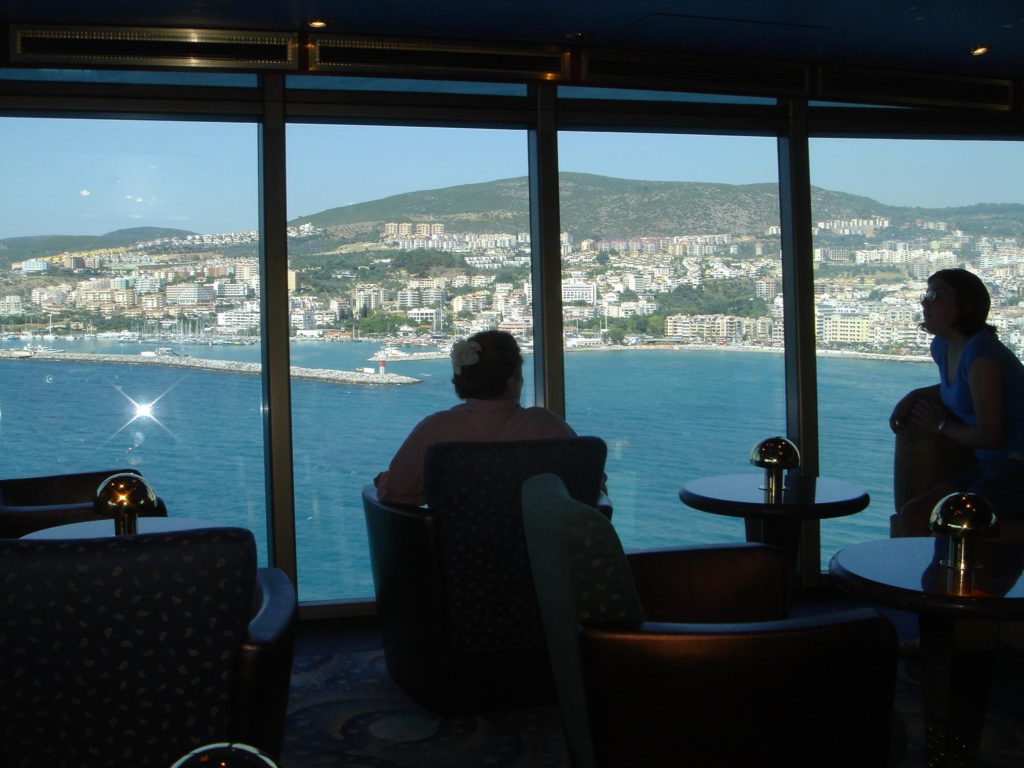
We went up to deck 17 and watched the 360 degree view of the ship leaving Kusadasi harbor, then Linda and I snuck down to the Promenade Lounge for some caviar without Dani.
parthenon1 parthenon1
parthenon2 parthenon2
bigcolumn bigcolumn
Saturday, June 26, 2004
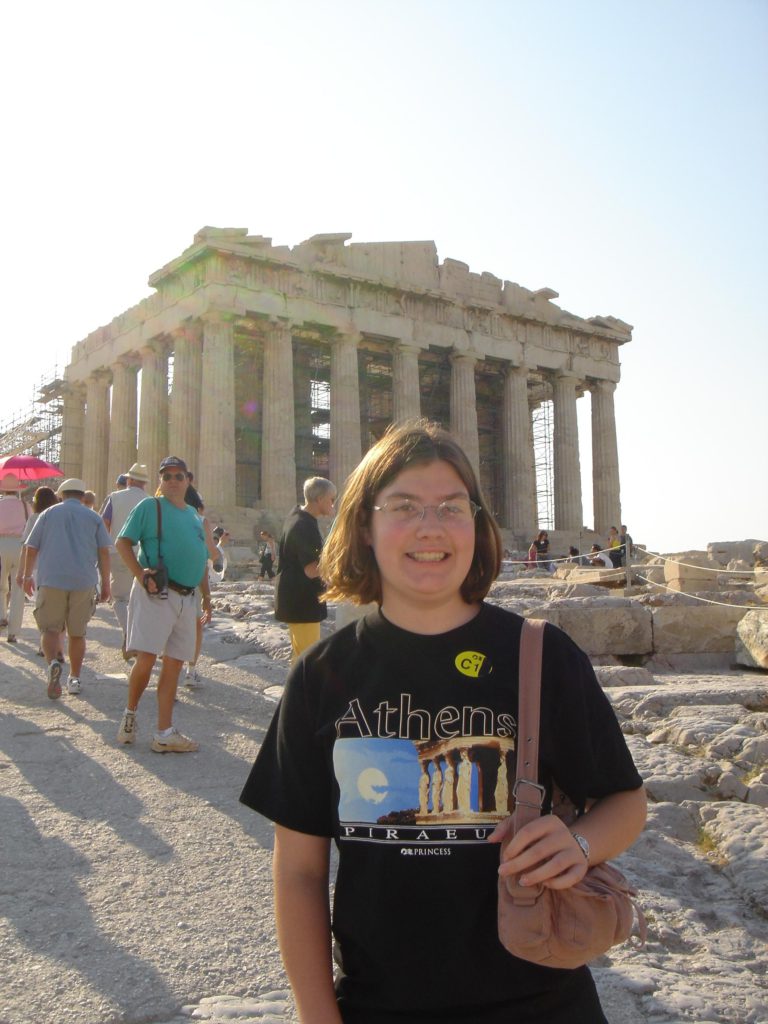
Athens
We docked in Piraeus, Athen’s very busy harbor, a 6:00 am, and were boarding a coach for the Acropolis a little after 7:00 am. It was worth getting up so early, because we were one of the first groups to reach the hill, and it was uncrowded and not yet hot. Both conditions would change within an hour. It’s quite a climb to the top, but we were in good shape after our training in Rome. The weather was pretty hazy, and so was our guide. Actually Angelica knew her subject, she just wasn’t very interesting. I’ll try to be more exciting.
The Parthenon was constructed by the Greeks, and is only one of a number of temples on the Acropolis. In addition to its use by the Greeks and Romans, it was also at one point converted to a Turkish mosque — complete with minaret. The reigning Turk kept his harem in a nearby temple named — I’m not making this up — the Erectheon.
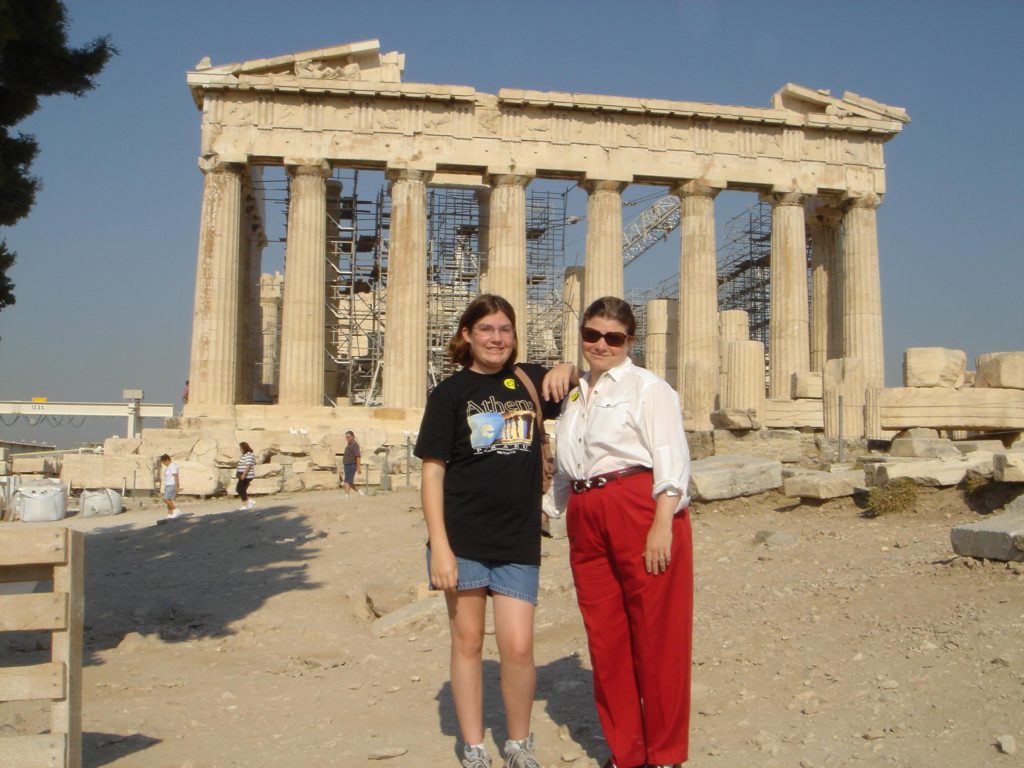
The Parthenon was in fairly good shape until the Turks decided to store ammunition in it, and it was bombarded by enemy artillery until the obvious conclusion was reached. Today it has been 45% reassembled using 85% percent original parts. The rest of the original parts (all the good stuff) are in the British Museum. Like everything else in Athens, the Greeks have decided to spruce it up for the Olympics (which start in a month) by surrounding it with scaffolding.
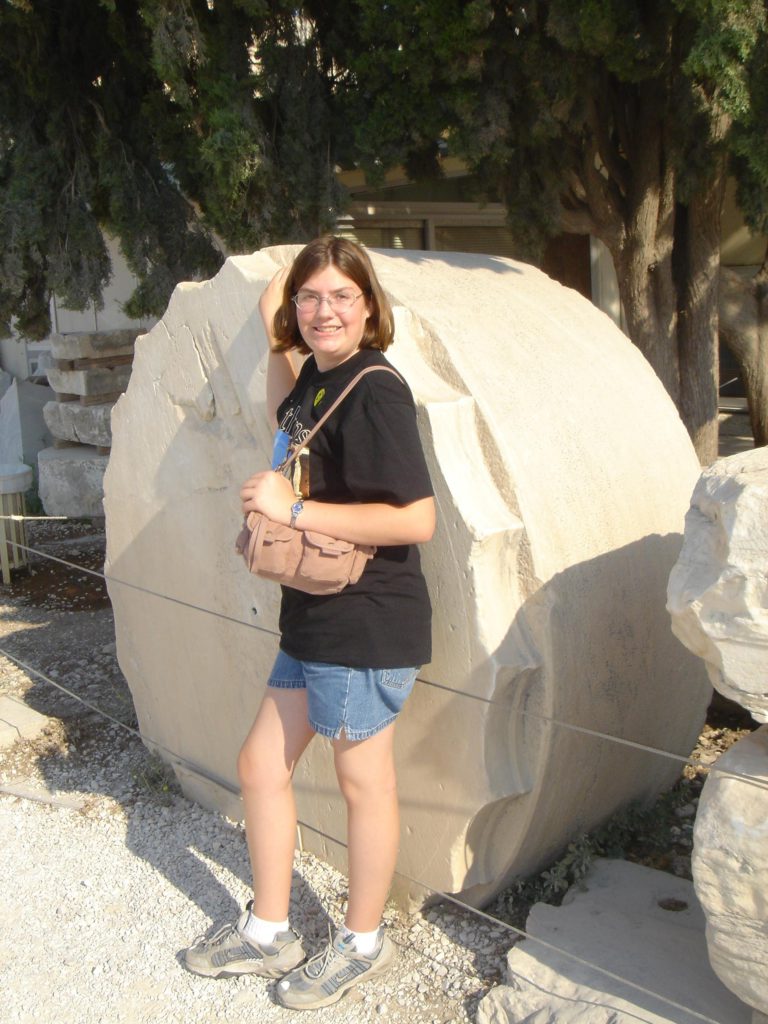
Like everything else in Athens it won’t be ready for the Olympics. Actually, the Olympic venues we saw appeared to be ready — if you don’t think landscaping, parking and infrastructure are particularly important. The major challenge of these Olympic games will be simply getting to them. The problem is that after WWII Athens was a town of 800,000, but within 15 years the population had grown to more than 3 million. Plenty of buildings were constructed — which is why Athens looks like a modern city. (Here’s a bit of trivia: 92% of Greeks own their residence, the highest rate in Europe, perhaps anywhere. ) But no highways or other infrastructure were constructed to go along with all those buildings. As a result traffic on the twisty little streets is terrible.
Fortunately, we were in Athens on a Saturday, so we only had to contend with the weekend traffic as we left town and headed for Corinth, a little over an hour west. Along the way we stopped at a French beach resort for a buffet lunch that was quite tasty, but of no discernible nationality. (I use the term “beach” loosely. I wonder if the brochures mention it’s 100% gravel. )
Ancient Corinth was located on the isthmus that connects the Peloponnesus Peninsula to the Greek mainland. It was originally a Greek, then a Roman city. The agora — shopping and meeting area — have been excavated down to the Roman level.
We enjoyed exploring the site because unlike at Ephesus we could wander among the ruins. Dani and I climbed down into the underground tunnels that connect a distant spring to the city’s fountains and water supply. The system still works. It was 90 degrees, and the sun felt like a radiant heater, so we tried to keep to the shade. Linda and a few others even carried parasols.
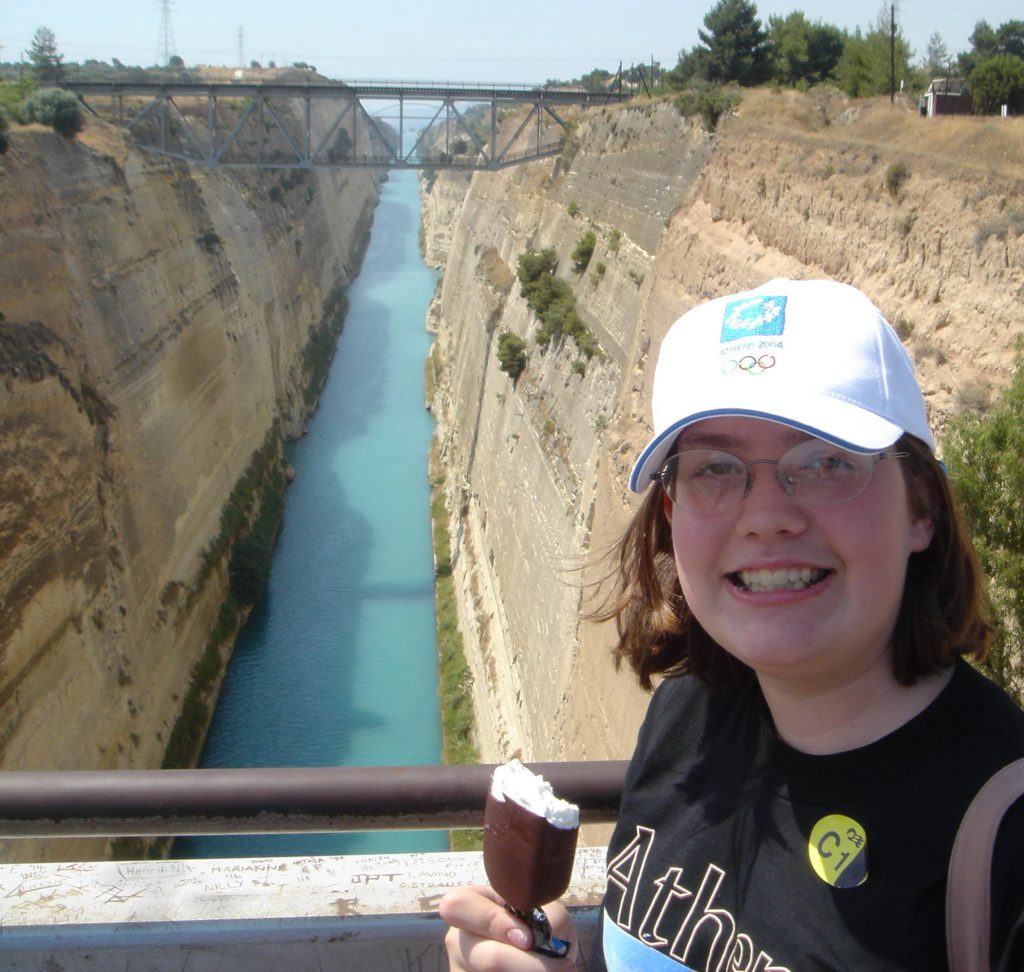
On the way back we stopped at the Corinth Canal, dug by the British in the late 19th century. The 4-mile-long, 250-foot-high canal eliminated the several hundred mile trip around the Peloponnesus. Unfortunately, at only 75 feet wide and 25 feet deep it almost immediately became useless for modern commercial shipping.
Sunday, June 27, 2004
At Sea
Champagne breakfast on the balcony. Sometimes the ship’s passage brings school of small fish to the surface. They dart through the light blue wake as greedy seagulls swoop down, trying for an easy snack. Once we saw a good sized fish leap four or five feet in the air, perhaps chasing an unseen insect. Over and over he soared, until we left him far behind. At 8 pm we squeezed through the Strait of Messina, where Italy’s toe almost touches Sicily.
It was the second formal night, and we dined in Sabatini’s.
Monday, June 28, 2004
Naples (Pompeii, Sorrento, Capri)
It’s a shame that Pompeii, Sorrento and Capri are all near Naples (which is really called Napoli). It’s just too much to do in one day, particularly when it’s 95 degrees. Fortunately our tour was in the reverse order from when Dani and I visited three years ago, and we were able to see Pompeii before it got really hot. Our first stop was at a cameo factory near Herculaneum. It was a bit of a tourist trap, but soon we were on our way to Pompeii.
Our guide, Enzo, was much better than the previous one, and gave us some real insights into everyday life in Pompeii. Of all the archaeological sites, it’s definitely the best. It’s frozen at 2pm, August 24th, 79AD when Vesuvius erupted, burying 2000 of its 20,000 residents in 30 feet of ash.
Unlike our previous tour, this one wasn’t the erotic tour of Pompeii. But although we skipped the house of Vetti and the whorehouses, it was still hard to overlook the thousands of phalluses (phalli?) that sprout from almost every wall. We also found a special barstool for Linda.
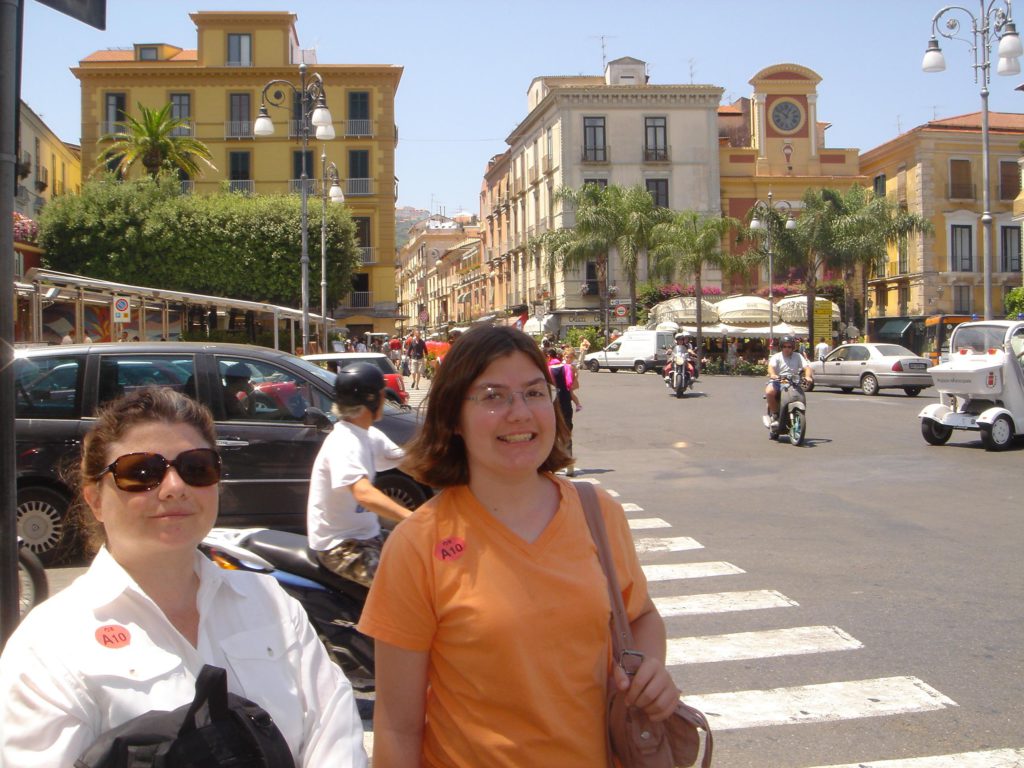
Down the coast about 20 miles (and through two very long tunnels under the mountains) is Sorrento, a city that Dani and I only passed through. This time we had a nice lunch at Villa Rubinacci and did a little shopping along the Corsa Italia before climbing the steep stairs down to the jet boat dock. The Corsa Italia is the only north/south route out of Naples. It’s about 30 feet wide (enough space for two lanes of traffic or about 1500 scooters). When you consider there are 3 million people living on the slopes of Mount Vesuvius — still a very active volcano — it’s pretty scary.
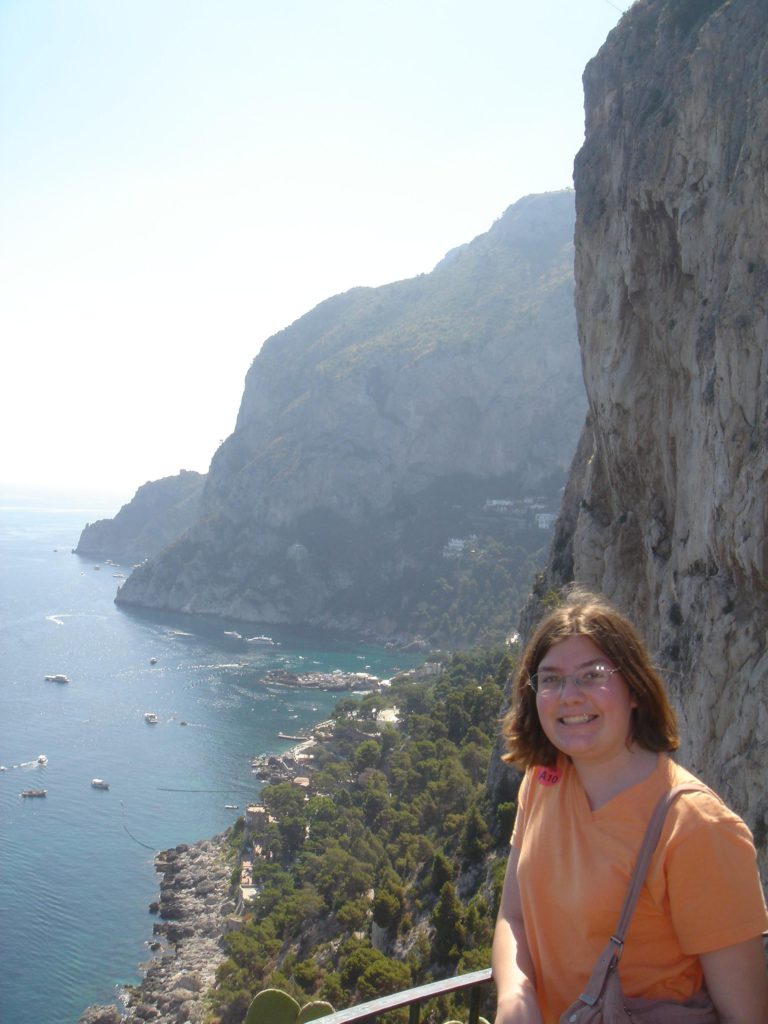
In twenty minutes we were on Capri. Up until this point we had been in a group of 44 people, but we suddenly found ourselves dumped together with about 400 other people from the Star Princess, all trying to take the funicular from the harbor up to the town. We were all packed into a super-heated loading area for an interminable wait. Finally at the top of the funicular we emerged into. . . a tourist trap of a square filled with 400 Star Princess passengers. This wasn’t at all like Dani’s and my previous trip to Capri. Depressed, we wandered around for about a half hour before we found a path leading to the back side of the island, and the Garden of Augustus.
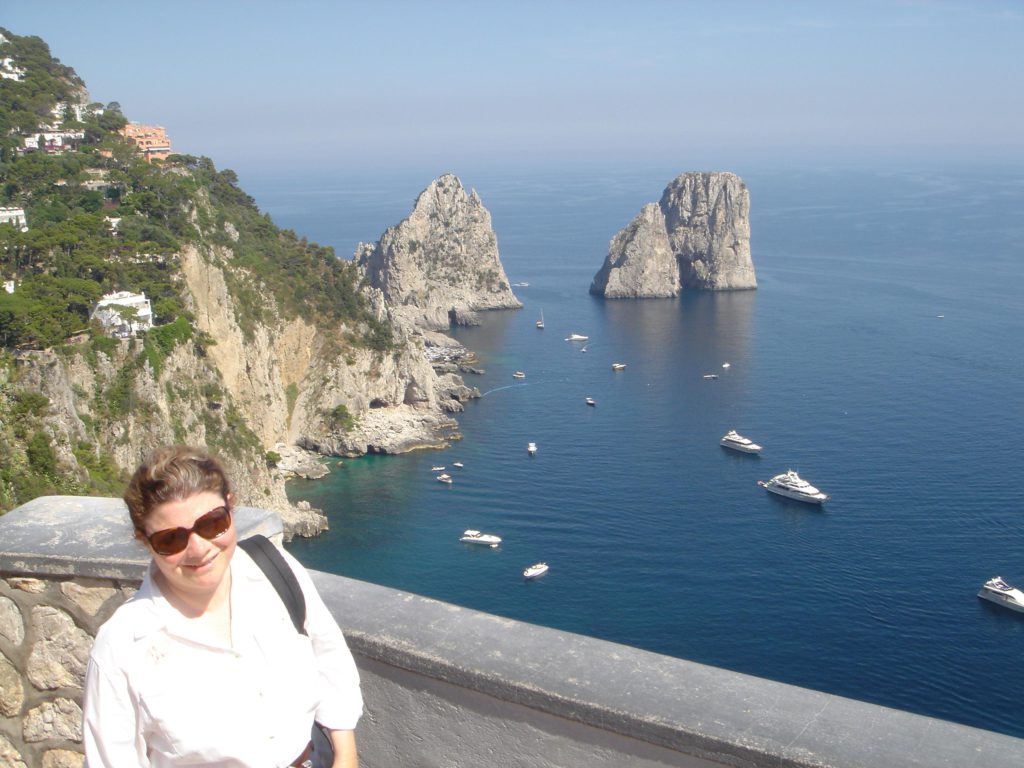
The view was fantastic. This was the idyllic Capri we remembered. In retrospect, the last time we took a wild bus ride to the very top of the island, where things are much less commercial.
After another torture session we took the funicular back down and caught the jet boat directly back to the ship. Even after showers all the way around Linda was still hot and tired, so Dani and I went to dinner on our own while she ordered room service.
Tuesday, June 29, 2004
Civitavecchia
It was strange wandering around a deserted cruise ship today, as nearly all of the passengers left early for the long trip to Rome. The girls just wanted to veg today, so I took an early shuttle down the long pier and into the port city of Civitavecchia. On the way I passed the stone fort at the harbor entrance, with still visible WWII bombardment damage. The city is a place where people — mostly maritime industry employees and their families — actually live, not a tourist trap. It took less than an hour to walk the grid of the commercial district, with its collection of clothing and appliance stores. There were many people out walking, but few tourists. At the end of an alley I spied a crowd and went to investigate. I found myself in an open-air market: more than a full city block of stalls selling fruits, vegetables, meats, clothing, and an assortment of flea market merchandise. People were rather dressed up for market day. The older women in particular wore dresses with fancy beaded necklaces or colorful scarves. They haggled over the prices, then loaded their purchases into baby strollers or pushcarts and moved on to the next stall.
My only purchase was a fairly hard-sided suitcase, for 20 Euros, to transport some of our more fragile acquisitions. Then I headed back to the ship, before the day began to heat up.
Wednesday, June 30, 2004
Livorno (Pisa)
Imagine having a guide who despised the place she’s guiding you to. That was Viola. Apparently there is a longstanding rivalry between Livorno and Pisa. We boarded our bus in the port of Livorno and were greeted by local resident Viola, who quickly admitted she hates Pisa. During the 30-minute drive she delivered a litany of everything that was wrong with the place. This was particularly remarkable, considering that Livorno — at least the industrial area where the ship docked — is slightly less appealing than the anus of a dead goat. So it was with considerable skepticism that we approached the “miracle square” of Pisa, with its duomo (yes, another church), baptistery (a church in disguise) and leaning tower (a church bell tower).
As it turned out, even Dani and I had to admit that the church was the most beautiful we’ve seen on this trip, both inside and out.
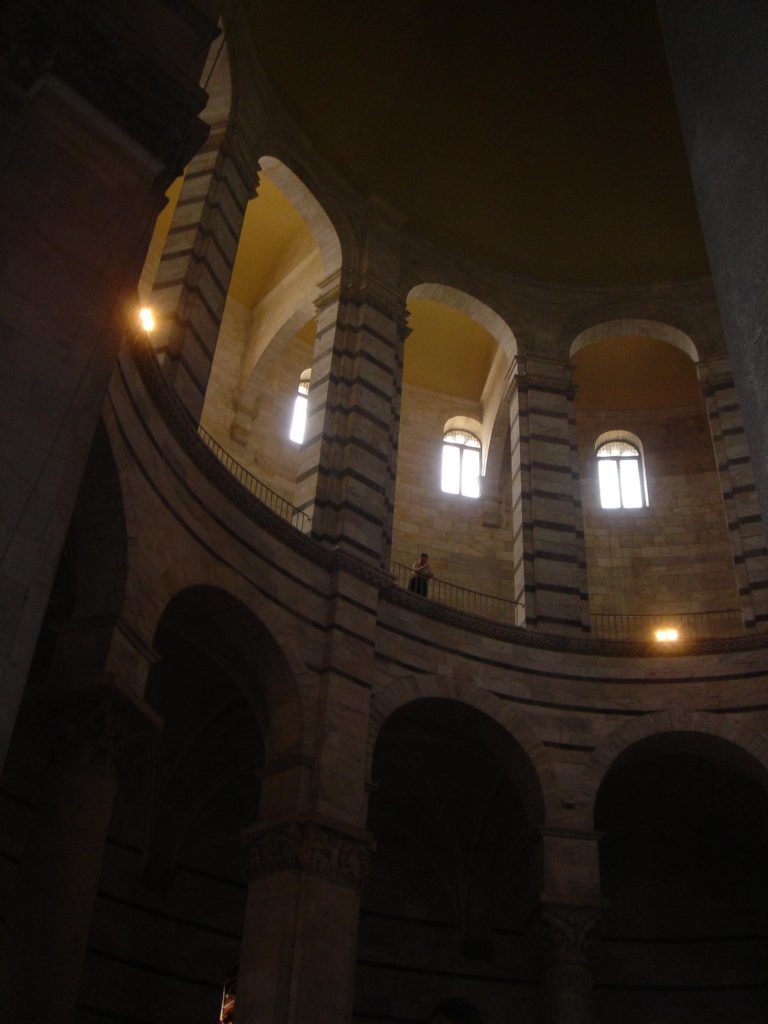
And the baptistery possesses incredible acoustics, designed for Gregorian chanting. Any sound reverberates for perhaps half a minute, as demonstrated periodically by one of the female guards, who delivered a two minute performance that was quite remarkable. Linda and Dani climbed the 243 steps sandwiched between the inner and outer domes, all the way to the top.
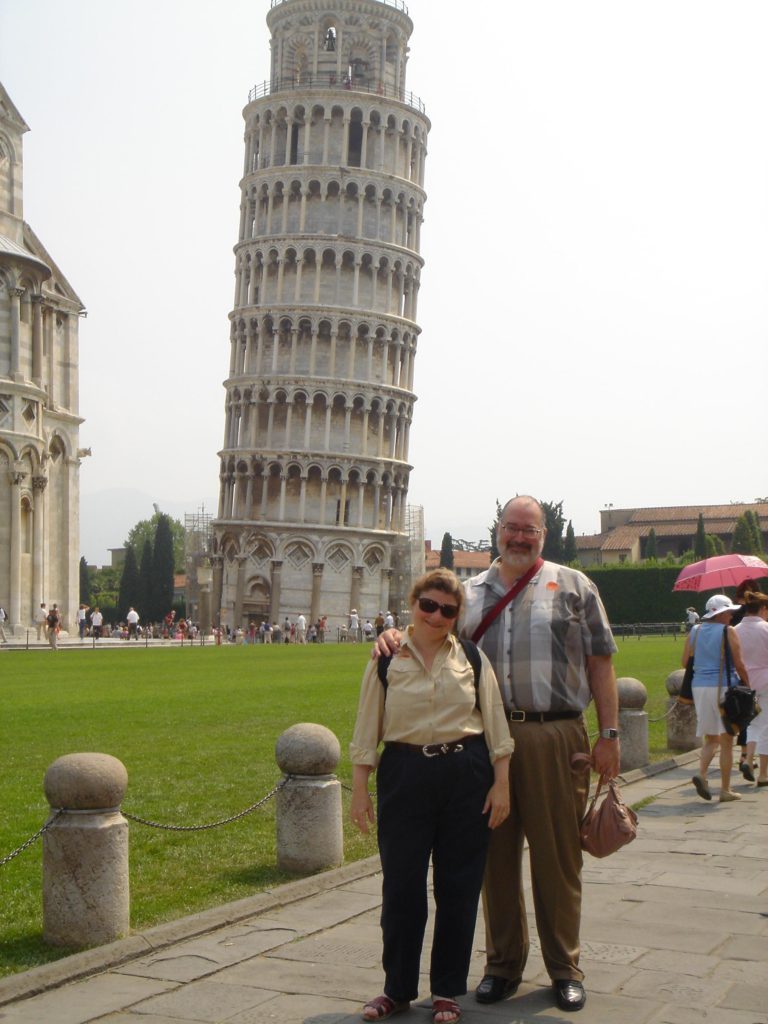
The tower is open to the public again, after an 11-year effort to straighten it from a 5. 5 degree tilt back to a 5 degree angle, removing about 200 years of settling. This was accomplished by carefully digging underneath the high side. Forty brave people are allowed to climb the hollow cylinder each half hour, but insurance is not included.
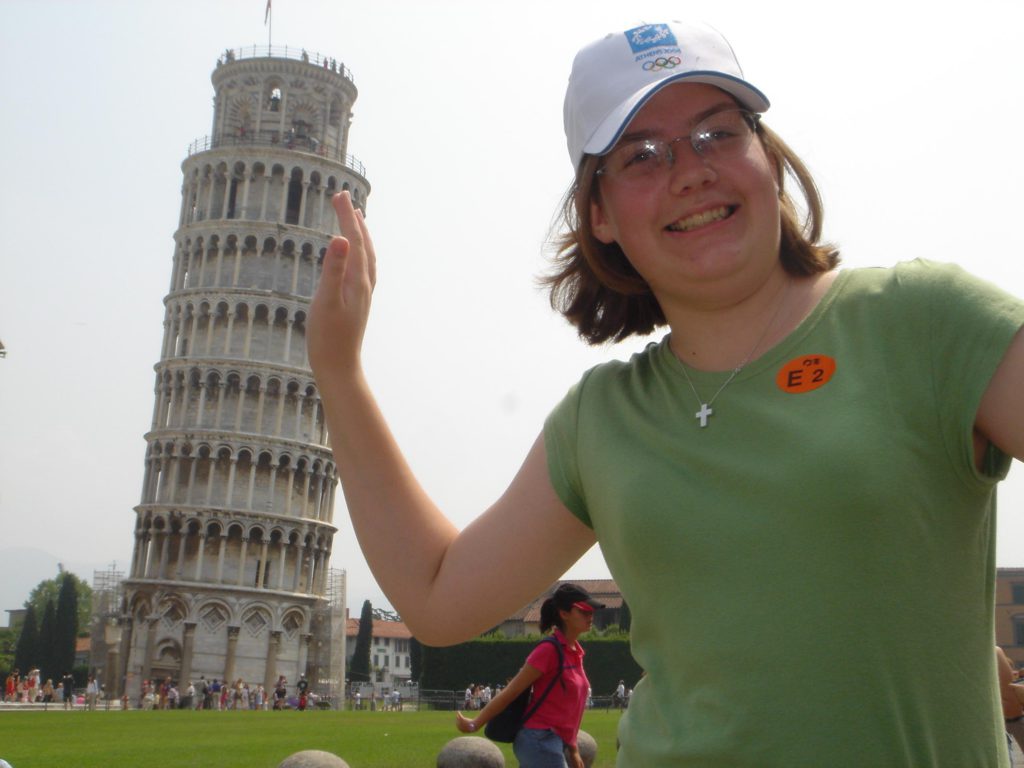
I knew they had made some adjustments during the 100-year construction of the tower, but I never realized they had resulted in it being slightly banana shaped. If you look carefully at the photo you can see that it actually curves back toward the duomo.
Even though it was hot, it was definitely worth the trip to Pisa. Still, we were happy to return to the ship, even if it was stuck in the rear end of a goat.
Dani and I headed for the sun deck for hotdogs, iced mochaccinos and a dip in the pool while Linda took a nap. montecarlo montecarlo
Thursday, July 1, 2004
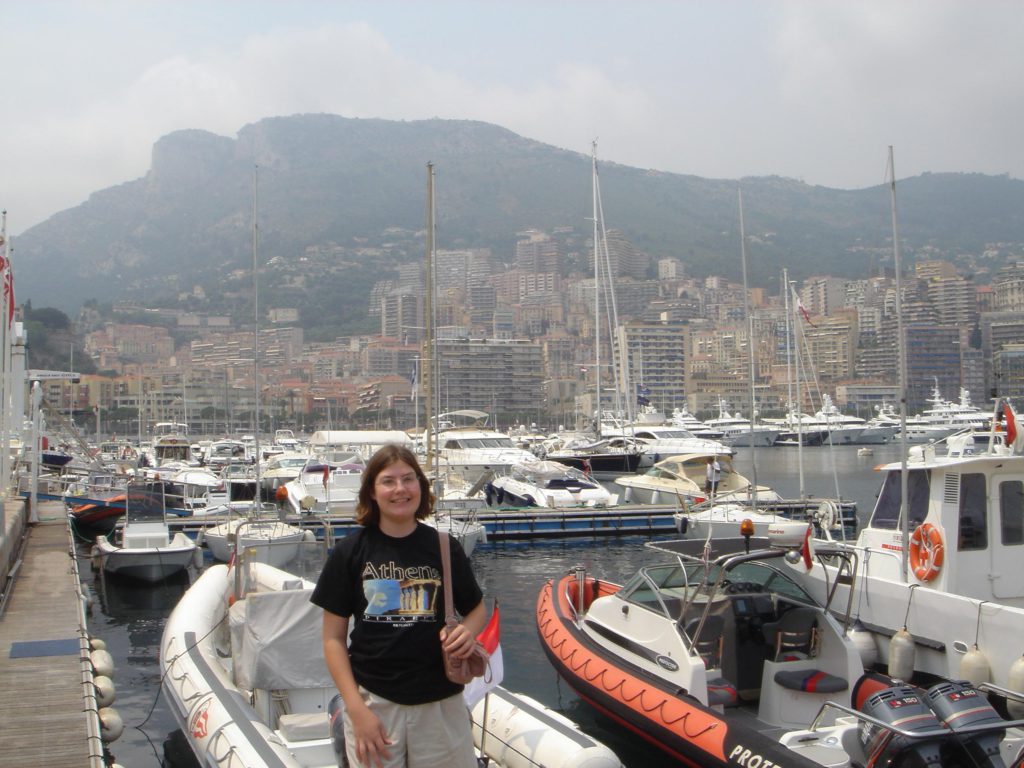
Monte Carlo, Monaco
The city of Monte Carlo is essentially the same thing as the country of Monaco, since the entire country is less than one square mile. It’s a cluster of mostly 1960s high rises pressed against the steep mountains on the coast between France and Italy.
The Star Princess is bigger than the entire harbor, so we moored off the coast and took tenders to the dock.
The city isn’t really oriented toward cruise ships. Instead the marina caters to multimillion dollar yachts. The shops along the pier are an eclectic collection of art galleries, upscale brasseries and boat maintenance businesses. The only gift shop was closed from noon to 2:30 pm, the majority of the time the ship was in port.
We had a delicious lunch at Quai Des Artistes. It was nice to find some true French cooking after two weeks of Italian and cruise ship cuisine.
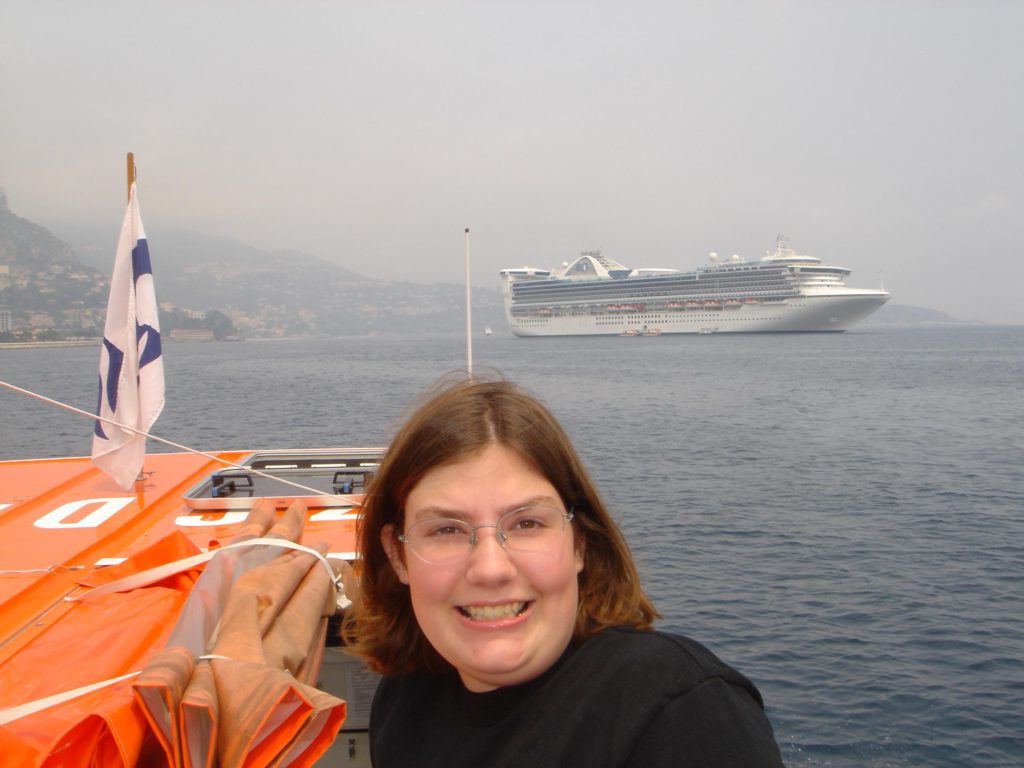
After lunch Dani and I spent only a few minutes walking around before deciding to head back to the ship. Linda went on a tour of the casino made famous in many James Bond movies.
Friday, July 2, 2004
At Sea / Barcelona
It’s a long way from Monte Carlo to Barcelona, so the ship doesn’t arrive until noon. There was a 25 knot wind during the night, which made for a bit of a wild ride; I was glad I was lying down!We have sailed 2593 nautical miles since leaving Venice.
Most of the passengers left the ship for shore excursions, but since we have two more days in Barcelona we stayed aboard and had the ship to ourselves for a leisurely day, much of it spent fitting all our stuff back into the luggage.
Saturday, July 3, 2004
Barcelona
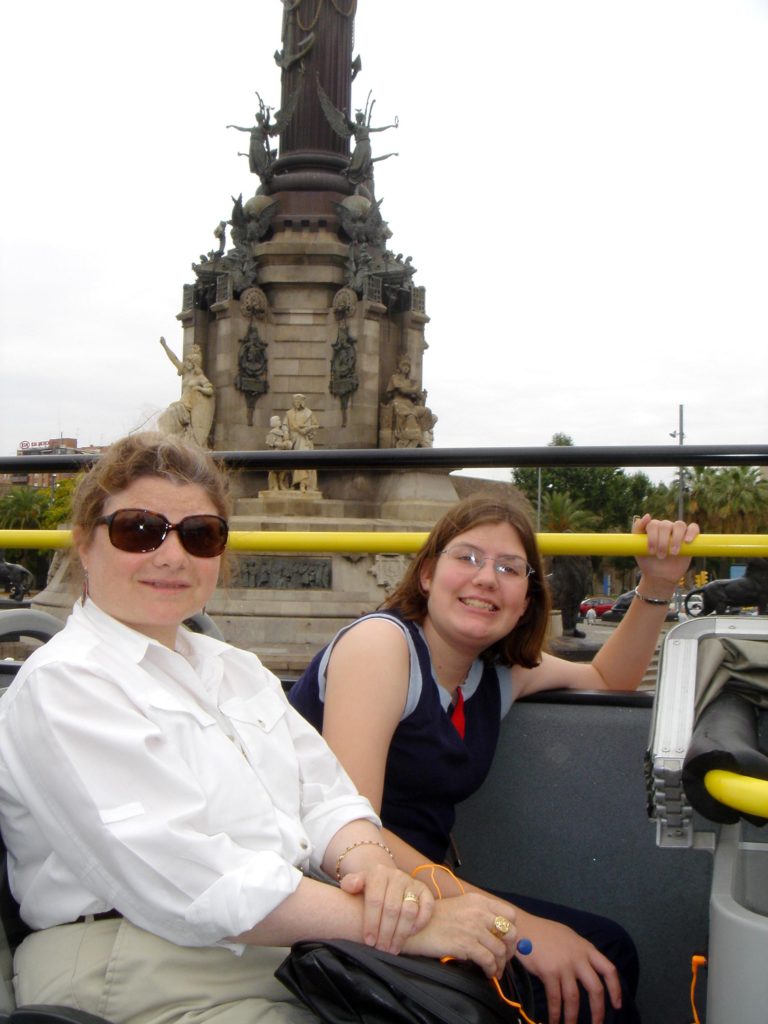
Barcelona is a beautiful city. Rarely have my expectations been so completely wrong. I had envisioned a sleepy, dusty old town. Instead it is a vibrant, clean metropolis. We purchased a two-day pass for the tourist buses that continuously circle the city. These double-decker busses are open on top. You can hop on and off at any stop, listen to the commentary in eight languages, or simply enjoy the sun, the wind, and the occasional tree branch in the face. Barcelona offers a dazzling mixture of modern, traditional and truly fanciful architecture. Most impressive are the many buildings by the architect Gaudi, whose organic structures fascinate the eye and impart a playfulness to the entire city.
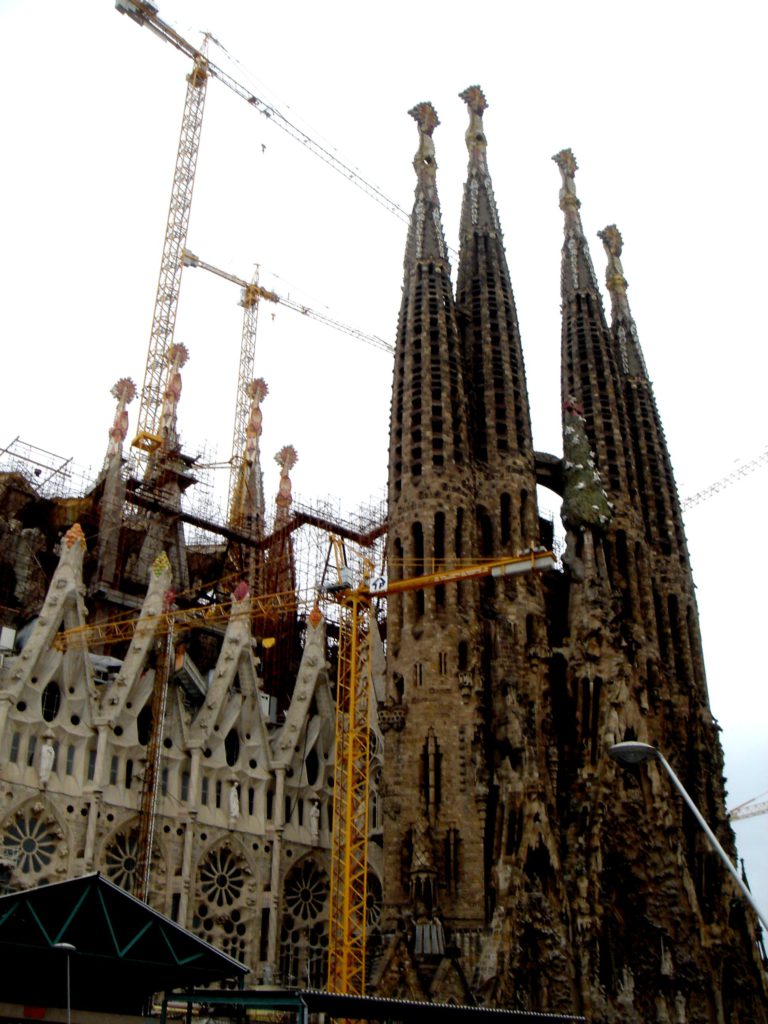
His cathedral, the Temple de la Sagrada Familia, which is about halfway through a 200-year construction project, is simultaneously beautiful and creepy. Currently at 100 meters, when its twelve towers are complete it will reach 170 meters The towers are hollow parabolas, designed to enhance the sound of the bells to be hung in them. Taking the recommendation of one of the hotel receptionists, we dined at a restaurant on the Passeig de Gracia called Tapa Tapa. Not surprisingly, it was a tapas restaurant. It was also delicious. We had many, many courses, most of them only about $3. Ordering was simple because the hundred or so selections were pictured on the placemats. This was a good thing, because the descriptions were in the local language, Catalan, something across between French and Spanish that took considerable deciphering.
Catalonia is the eastern corner of Spain. With a population of 6 million, it is one of the most densely populated areas in Europe. Its major city, Barcelona, is one of the most important ports on the Mediterranean. It is a center for art, finance and commerce.
After lunch we waddled up the block to a book store where Dani added to her Harry Potter collection with editions in Spanish and Catalan.

The five star Grand Marina Hotel is easily the nicest of our trip. The ultra modern building is circular, and sits on a cruise ship pier in the marina. Our room is huge, with an expansive bathroom and hi-tech shower separated by futuristic sliding glass panels. Every surface is covered in rare wood or marble.
There is a fantastic guide book in our room, even though it’s one of those hard cover advertising books you find in all hotel rooms. It’s filled with maps and useful information, arranged in order, and even lists non-advertisers. It weighs about 20 pounds and costs $85.
The book describes a night on the town: dinner followed by a night club. Night clubs open around 12:30 am and some go to 6 am. Then you can go for a stroll, and still have breakfast as late as noon. (Presumably one then sleeps. )
After a siesta we went in search of an early (for Spaniards) dinner at 10 pm. We walked to the marina and had seafood at El Chipiron Monchos. Linda and I shared a passable paella. Dani ordered spiny lobster, but her plans changed when the intended victim showed up at the table writhing indignantly.
Since evening is the central point of the day here anyway, we’re trying to get on a later schedule in preparation for our afternoon flight home on Monday. So now bedtime is 1 am.
Sunday, July 4, 2004
Barcelona
Happy 4th of July!
It was a beautiful day in Barcelona and we made good use of it. I started the morning catching up on email and uploading my journal in the hotel’s business center, which is really just a corner of the lovely piano bar on the first floor.
Sunday breakfast was popular, and the patrons spilled out of the adjacent restaurant into the hotel’s courtyard. It was close to 11 am by the time I finished uploading (while listening to piano music and leafing through a beautiful book about Dali). I hurried up to the room afraid that Linda and Dani would wonder where I’d gone, and found them. . . still asleep! Spanish time, indeed.
Eventually we made our way to the historical center of the city and strolled down the Rambla de Santa Monica, admiring the many booths of jewelry, pets (including chipmunks), postcards, and souvenirs. There were also street performers, including a horrible Mickey Mouse and two ratty Pooh Bears. And mimes. Always the damn mimes.
Soon we found ourselves on Paseig de Gracia. Since it was now lunch time — 1 pm, early for the locals, but hey — we decided to have lunch in Citrus Restaurantus, one flight above where we ate yesterday. This meal was more Mediterranean than tapas, but it was nice.
After lunch we crossed the street to admire Gaudi’s organic Casa Battlo. Truly beautiful.
We caught the tourist bus and took it past the Temple del al Sagrada Familia (no visible progress since yesterday) to Parc Guell, where we found Gaudi’s house and a lot of other wild architecture. (It was a long steep walk up to the park, but we’ve been in training. )
The central plaza of the park is supported by 84 Doric columns, the outer ones canted inward. There is also a winding portico supported by strange organic pillars covered with lava rock. Everywhere there are mosaics.
Next we caught the tourist bus and took it to a shopping area on the aptly named Avinguda Diagonal, which cuts diagonally across the entire city. We were looking for a shop Dani wanted to visit: Chocolat Factory. It lived up to its billing chocolate-wise, even if it wasn’t a factory. Nothing like 77% cocoa to bring a smile.
We rehydrated at an outdoor cafe as the sun set behind the buildings, then caught the tourist bus back to the hotel to clean up and relax before dinner.
Tired, we selected the restaurant on the first floor of the hotel, which proved to be a good choice. It was quiet, intimate and sophisticated, and since it wasn’t yet 10 pm there weren’t many other customers. We had their seven-course tasting dinner which was pretty adventurous, with giant sardines, grape soup, turbot, suckling pig, and two different desserts. The most interesting thing was the chocolates they served afterwards, which seemed to contain something like ground up Pop Rocks. Weird.
Monday, July 5, 2004
Barcelona to Orlando
The Barcelona airport is bursting with colorful shops and cafes. It was so nice we would have been happy to browse, but after a short wait in the Air France lounge we boarded our Delta flight for Atlanta, and connection to Orlando.
It was a great trip — perhaps a week too long, as (some of us) missed our pets — but full of interesting places and fun experiences, and we enjoyed each other’s company throughout.
Some Tips for Next Time
When booking a cabin, check the exterior view of the ship in that area. Our balcony was substantially blocked by a support member. The suite next to ours was not.
Avoid aft cabins. The wake is noisy.
The Star Princess and other ships in its class are not as well designed as the slightly smaller Coral Princess. The elevators don’t cooperate well with one another and dining and shopping access is all in one spot.
While most of the service on the Star Princess was excellent, the room service was, to be kind, incompetent.
Also, the attempt to emulate NCL’s “Freestyle Dining” with flexible seating in the dining room simply doesn’t work well, with long waits at popular times. The smaller and newer Coral Princess didn’t have this problem.
Don’t try to do Pompeii and Capri in the same day; select one. And don’t take the funicular in Capri, take a taxi to the very top.
The people who visited Pompeii and the farm in Sorrento really liked that tour.
Punta Gorda 2004
Because of Windermere Prep’s financial troubles, the scheduled American Adventures trip to the Grand Canyon was replaced with a less expensive three-day jaunt to Punta Gorda, south of Sarasota on Florida’s west coast. The trip actually turned out to be quite fun and possibly more educational than the original plan.

Our first stop was the Babcock Ranch, a huge ranch and nature preserve with lots of Florida wildlife.
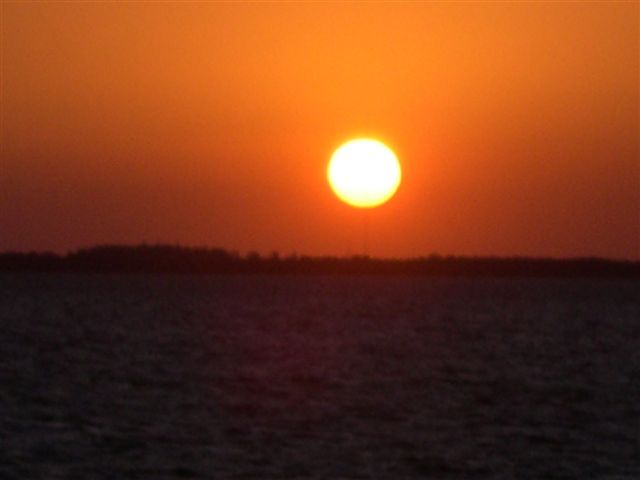
That evening we went on a sunset cruise in Punta Gorda bay.
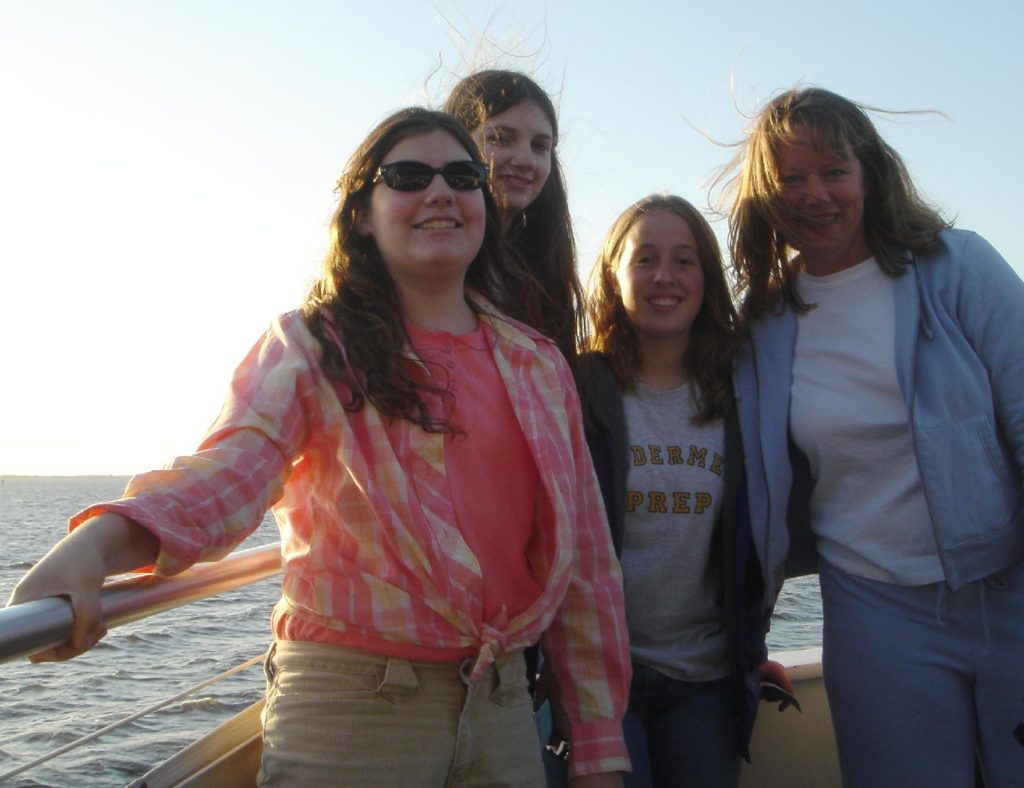
Dani, Caitlin, Christina and Mary Beth Davies, their Language Arts teacher and the trip organizer.
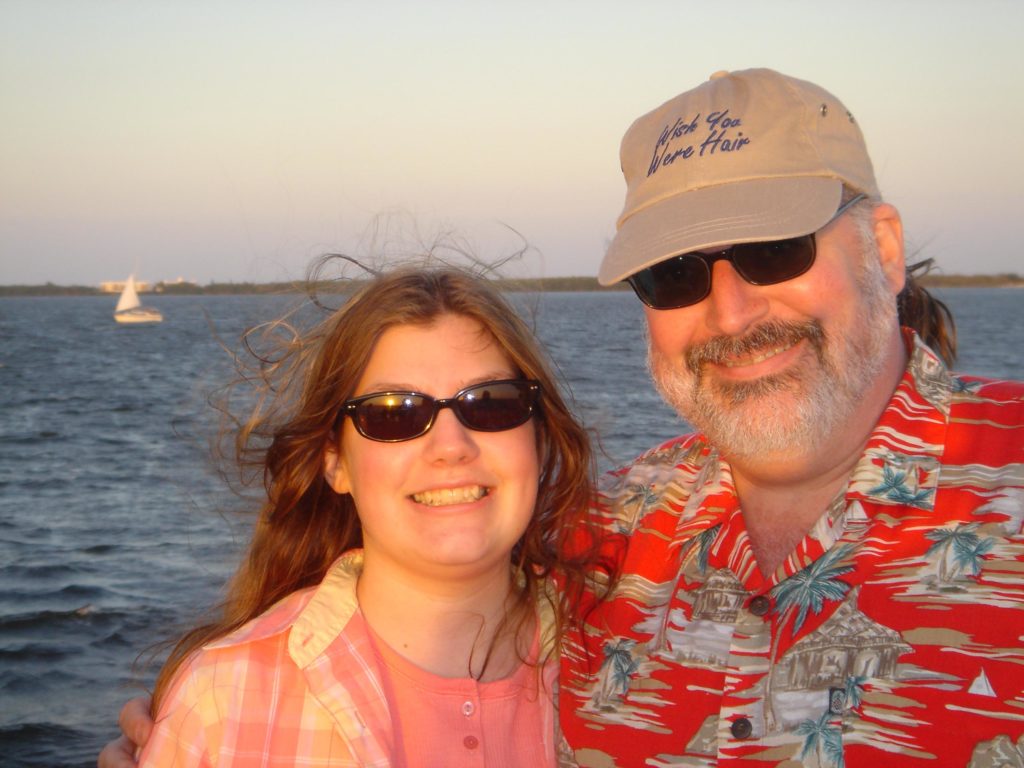
This is one of my favorite photos of the two of us.
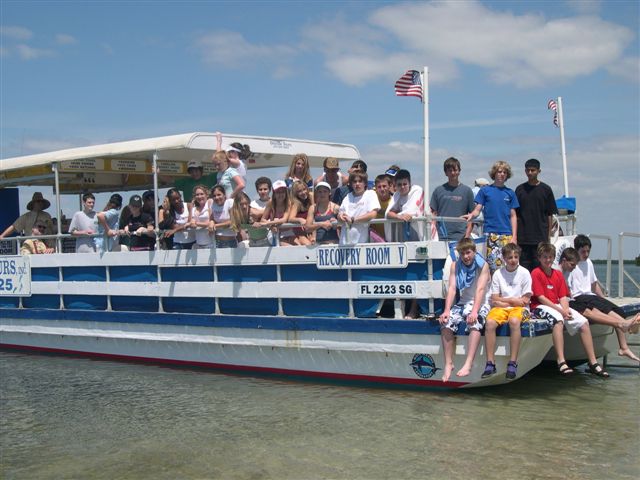
The second day we went on a marine biology trip to an island in the bay, followed by a kayaking excursion.
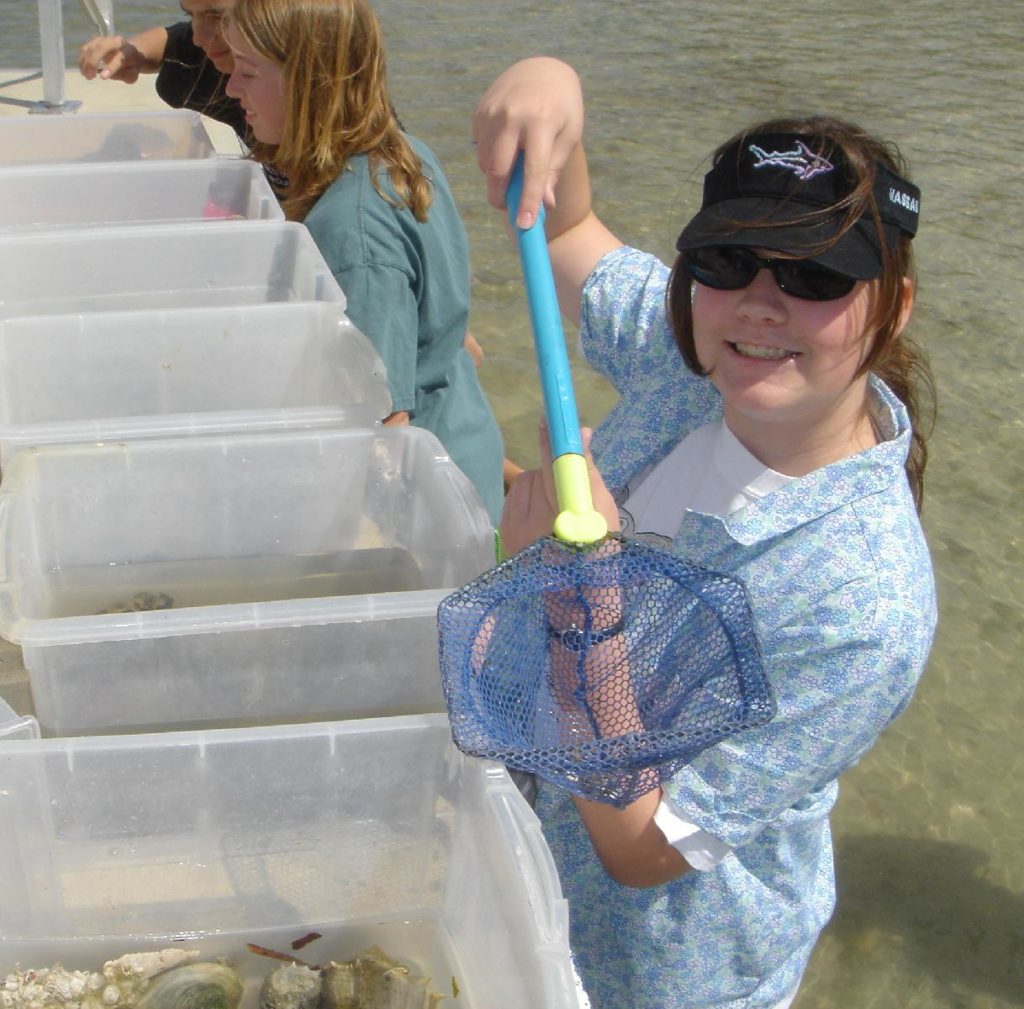
It was amazing how much stuff they found in the shallow water along the shore — including a eight inch wide horseshoe crab.
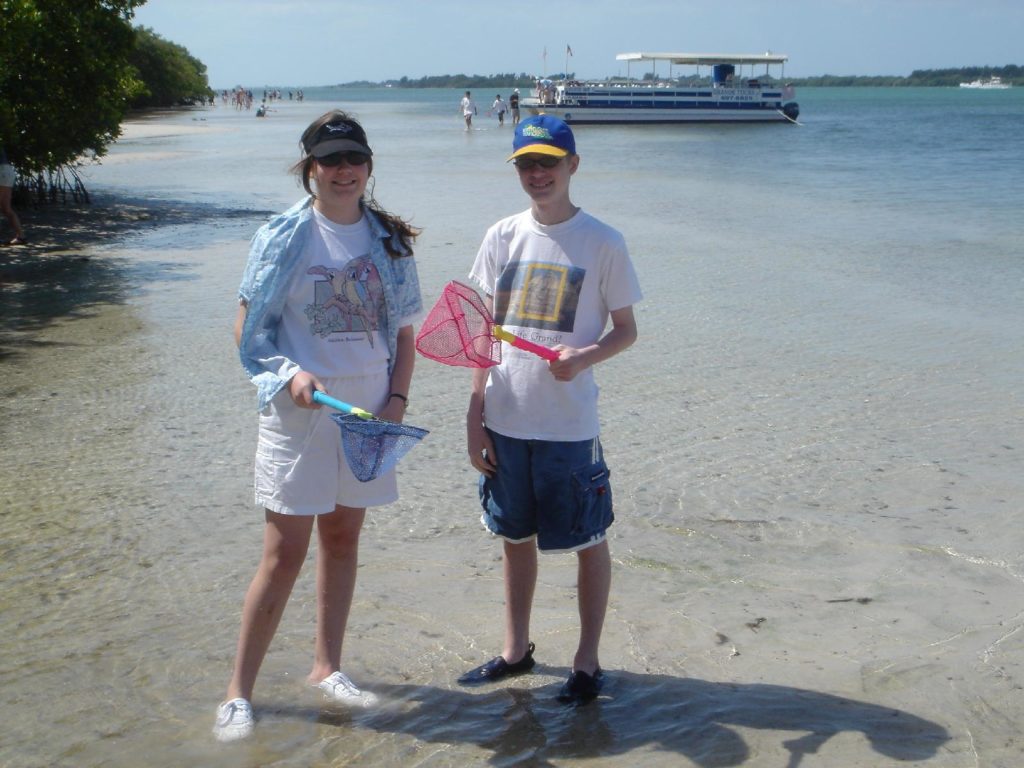
Dani and her friend Cory.

The third day was spent at the beach. Here is the whole group, nearly all of Windermere Prep’s seventh and eighth grade classes.
Alaska 2003
July 31 – August 14, 2003
Thursday, July 31, 2003
Orlando to Vancouver
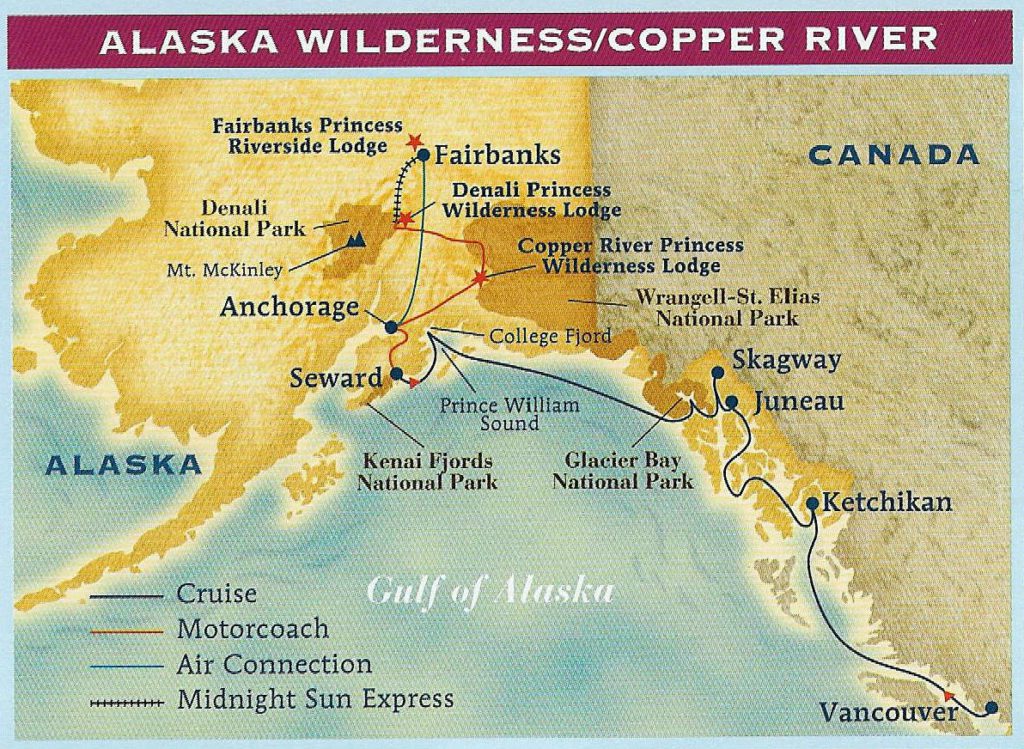
In our continuing search for cool — literally — places to visit during the hot Orlando summer, we headed for Alaska this year. We invited our friend from Australia, Pamela Collins, to join us for a week of cruising and a week of land touring. For Pamela it would be a chance to warm up from the Australian winter. It’s a long way from Orlando to Vancouver, and we didn’t choose the most efficient route. Up at 5 AM, we had two comfortable Delta flights in free first class, connecting in Salt Lake City and arriving in Seattle around noon West coast time. It was a lot faster than the Dallas connection I once did. But we’d learned it was impossible to rent a car to drive to Vancouver — our original plan — so we caught the Quick Shuttle at the airport. After clearing Canadian customs and Immigration (surprisingly rude Canadian agents!) at the border, the bus dropped us right at our hotel, the Pan Pacific — convenient, but it added another five hours of travel to the already long trip. Total door-to-door travel time: 16 hours. But I guess we can’t complain. . . Pamela had to come by way of Tokyo, taking two days to get there!
It was a challenge packing for the warmth of Vancouver, the cold weather up on the glaciers, plus formal nights on the ship and a week of backcountry trekking. Nine suitcases and three carry-ons told the story – thank Heaven for Princess porters.
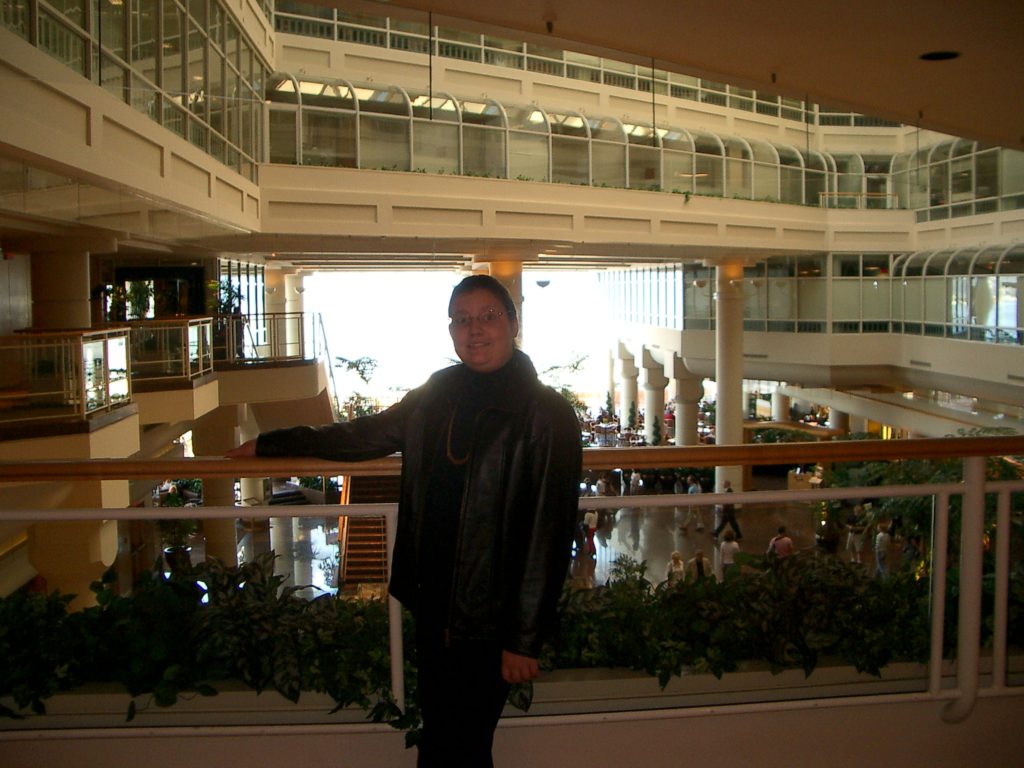
The Pan Pacific is a delightful hotel. It was constructed for Expo ’86 (which Linda worked on) and it on the cruise ship pier. We met Pamela in the lobby and got reacquainted during a lovely dinner at the Five Sails restaurant.
Friday, August 1, 2003 – Vancouver
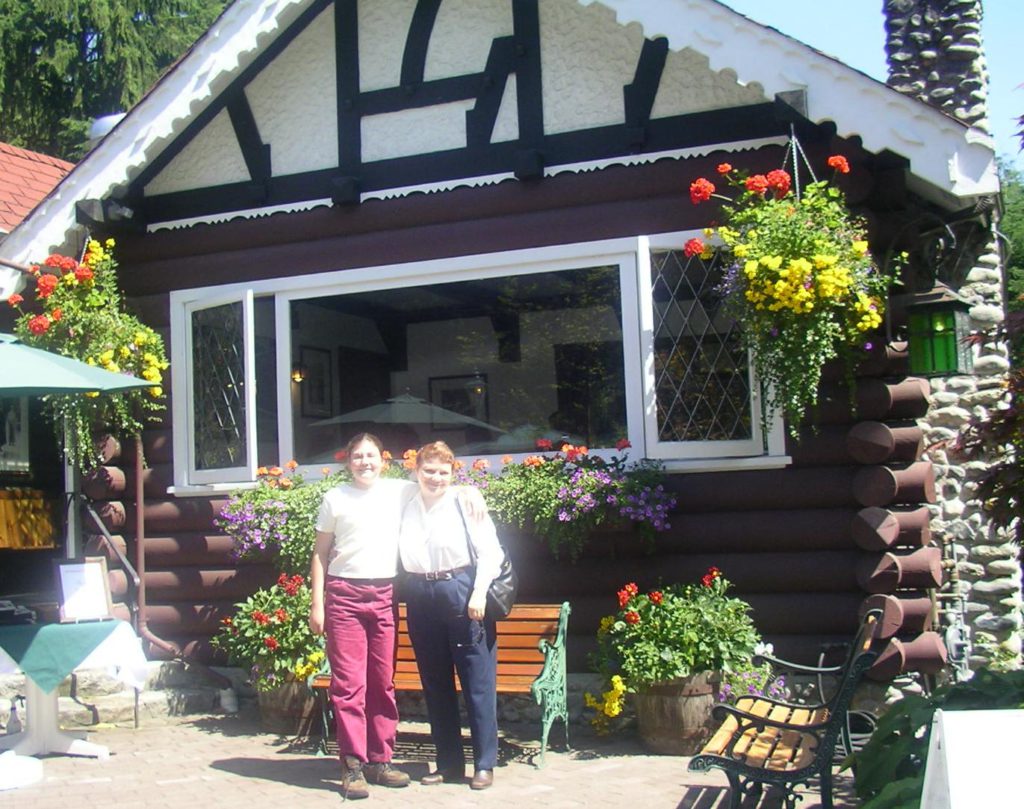
Friday was our free day in Vancouver. We made the most of it, renting a Jeep Grand Cherokee just like mine at home and touring Stanley Park. Then we headed across the Lion’s Gate Bride for North Vancouver where we had lunch at nice cafe near the Capilano Suspension Bridge.
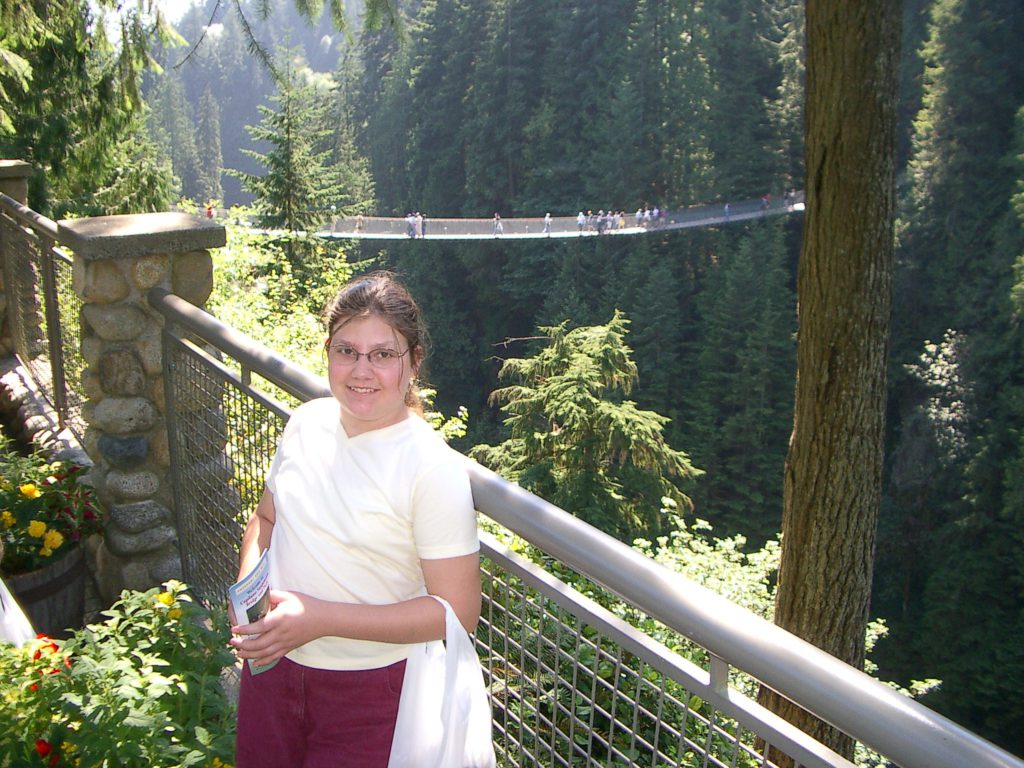
Afterwards we ventured onto the bridge, and crossed over the 300-foot-deep gorge.
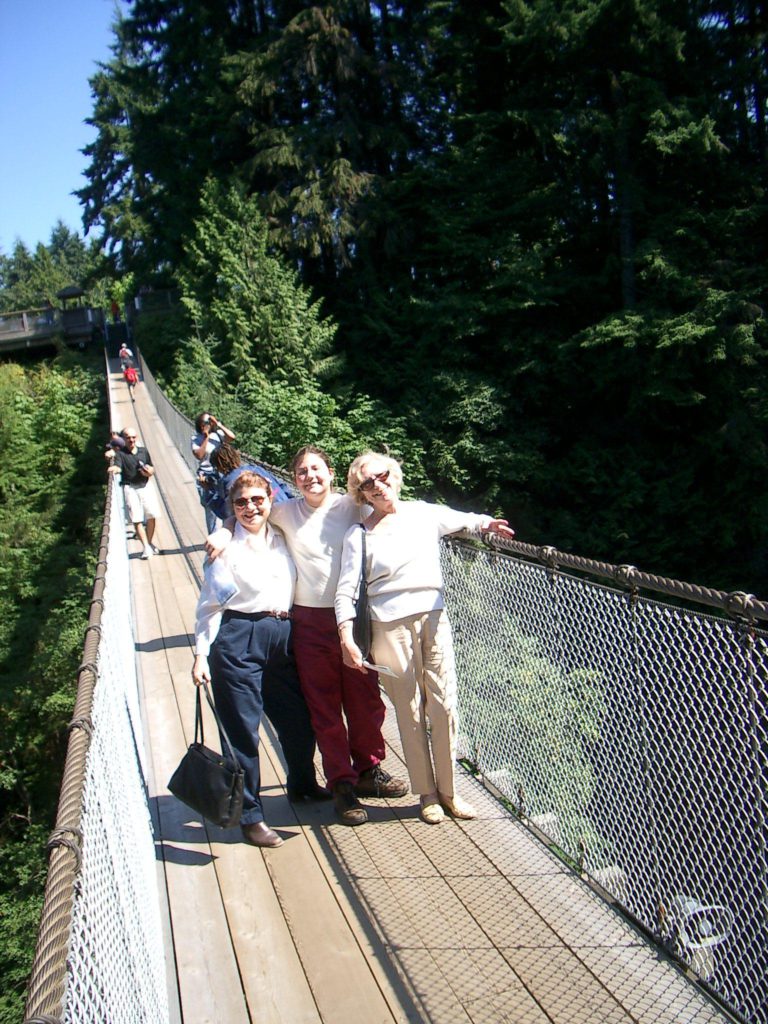
Pamela was very brave and overcame her fear of heights to join us. The bridge was originally built in 1886 by Mr. Capilano, who purchased the surrounding 6000 acres and was either looking for a way to get around his property or wanted to create a tourist attraction. It has certainly turned into the later, with shows and exhibits on both sides of the canyon. They also are constructing a tree walk in the forest on the far side.
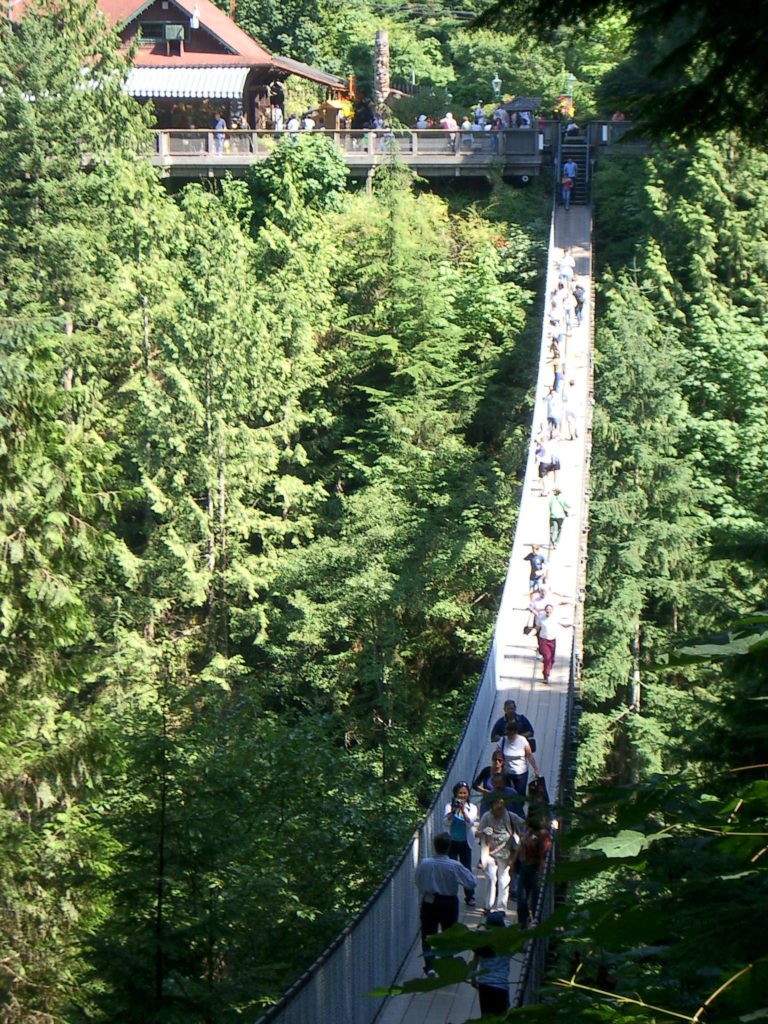
Linda and I walked the bridge in 1986, but our recollection is that then it was just a bridge. We were skeptical of the increase in the admission charge, which is now over $20 CDN, but the new attractions made it well worth it. Here you can see Dani in the middle of the bridge, wearing burgundy colored pants.
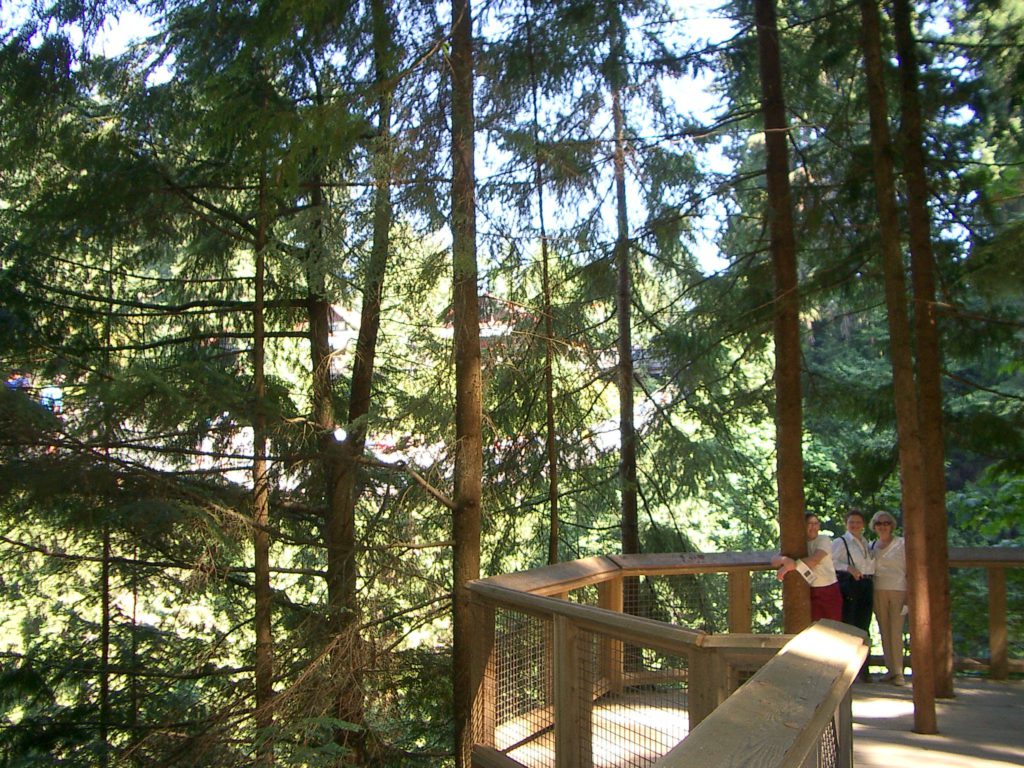
Some of the cedars and Douglas Firs in the forest on the far side are several hundred feet tall. New walkways wind through the forest and cantilever out over the chasm.
Back to the hotel to relax and change, and then we returned to North Vancouver, passed the Capilano Bridge and parked at the base of Grouse mountain. There we took the gondola to the 3700 foot summit (Pamela was certainly getting some acrophobia deconditioning today) for dinner at The Observatory.
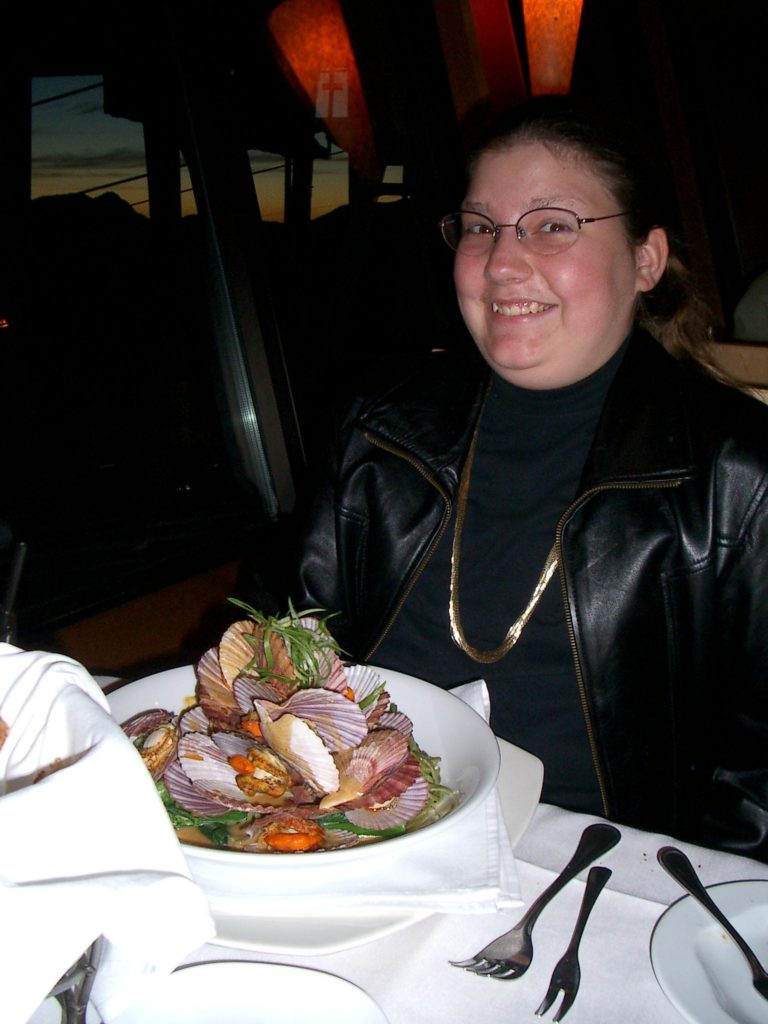
While the food was elaborate, it struck me as one of those restaurants that is trying way too hard. Nothing on the menu was normal, with salmon served in a soup bowl, and this bizarre mussel-like preparation for scallops. . . pretty, but not what Dani has in mind when she ordered it (in her travel journal she referred to them as “scary looking shells”) . She traded for Linda’s somewhat more normal chicken. At least it wasn’t in a soup bowl.
Saturday, August 2, 2003 -Departing Vancouver
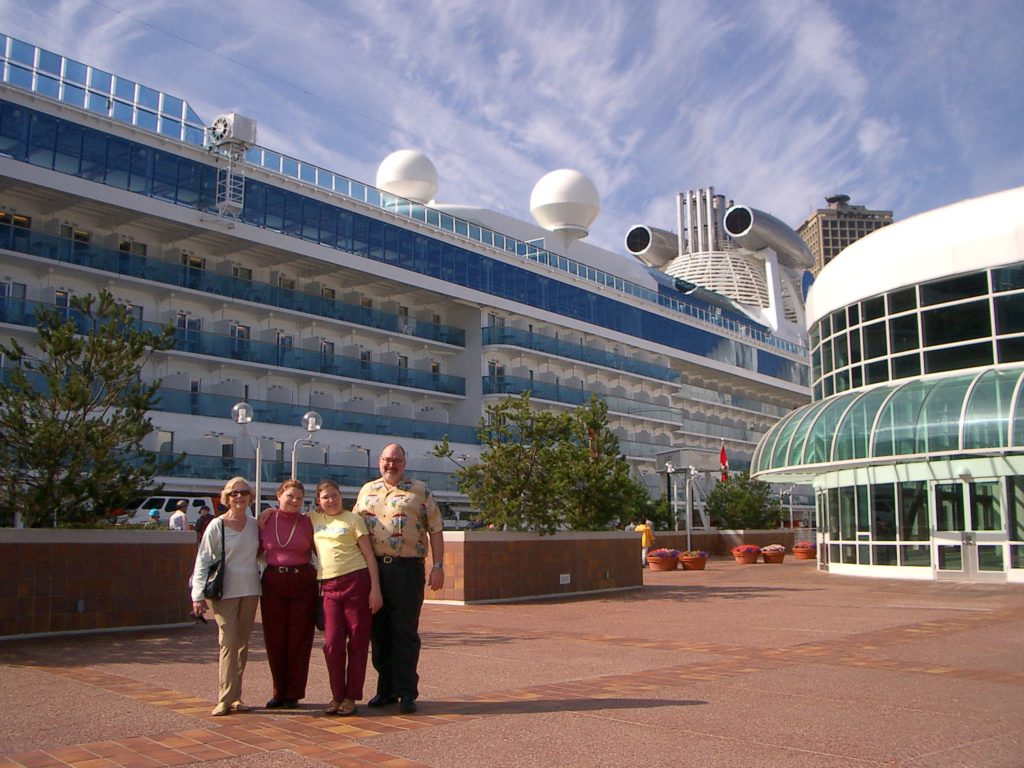
Staying at the Pan Pacific made Saturday a breeze. Our luggage was transferred directly from our rooms, and we cleared US Immigration and were on board by noon. We’ve been on Royal Caribbean, Norwegian Cruise Lines, Costa, The Big Red Boat, and Disney ships, but never Princess.
The Coral Princess is brand new; this is its inaugural year. The ship the most beautiful I’ve been on. A very different design than the Voyager-class ships of RCL, the Coral Princess is built upside-down, with the public areas on the lower decks, and the guest cabins above. 85% of the cabins have a balcony.
The public areas are where the difference in philosophy is most apparent. Although there is a beautiful multi-story atrium that joins the dining rooms, shops and other areas, the emphasis is on the many small, elaborately decorated and themed lounges that meander their way about the ship. Rare woods, gleaming fixtures and dramatic lighting are used to full effect throughout.
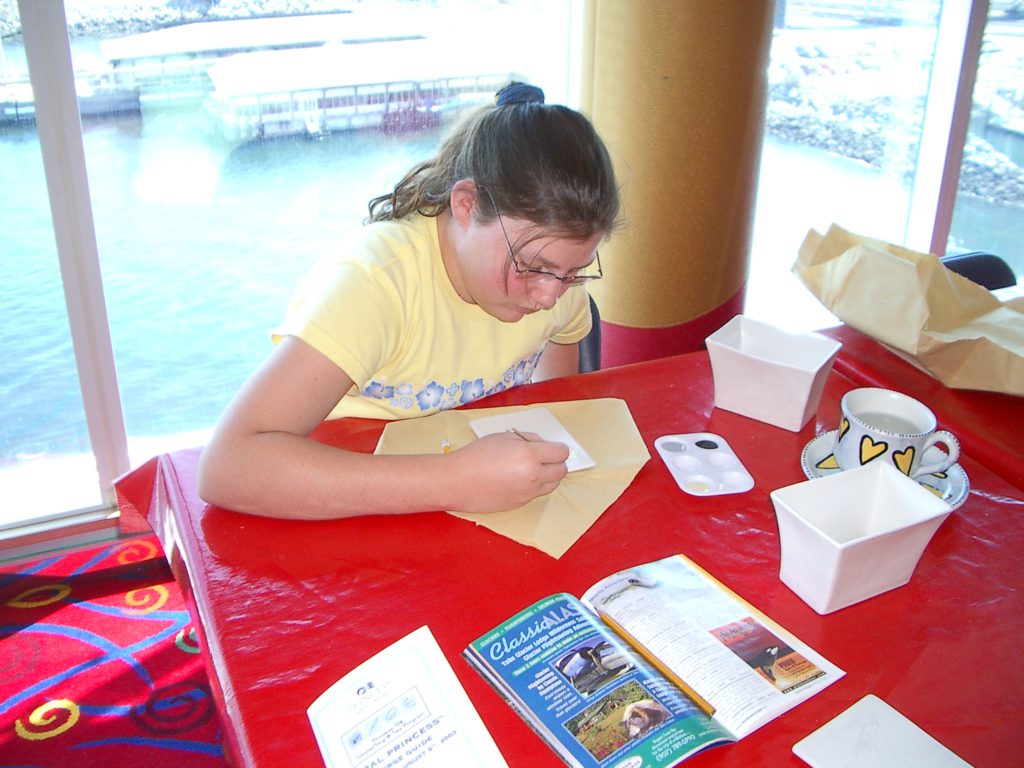
There are several unique activities available aboard the Coral Princess. My favorite is the ceramics workshop, where you can paint or even create your own pottery. Two artists on board teach clay sculpture and pot “throwing”. Even before the ship left port, Dani and I were starting our projects, ceramic boxes decorated with scenes of Alaska.
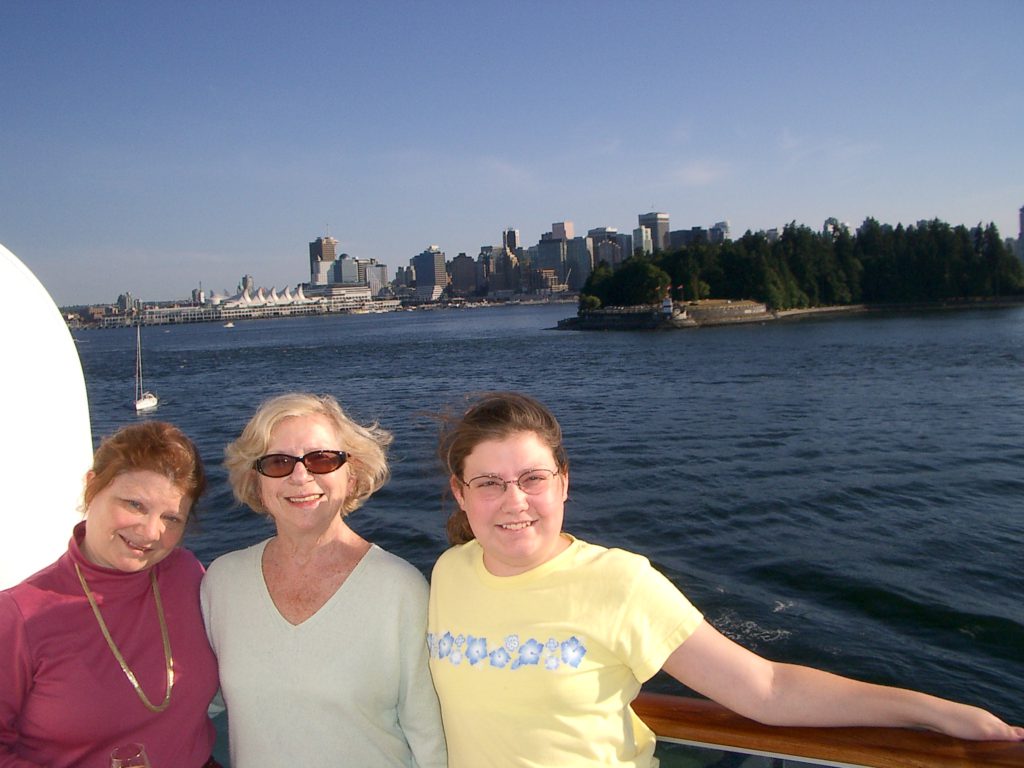
Dani and Pamela are sharing a mini-suite on the port side, while Linda and I have a starboard suite. This gives us a choice of views. At 6pm we set sail from Vancouver and passed into the Georgia Strait on our way to the inside passage.
Sunday, August 3, 2003 – At Sea
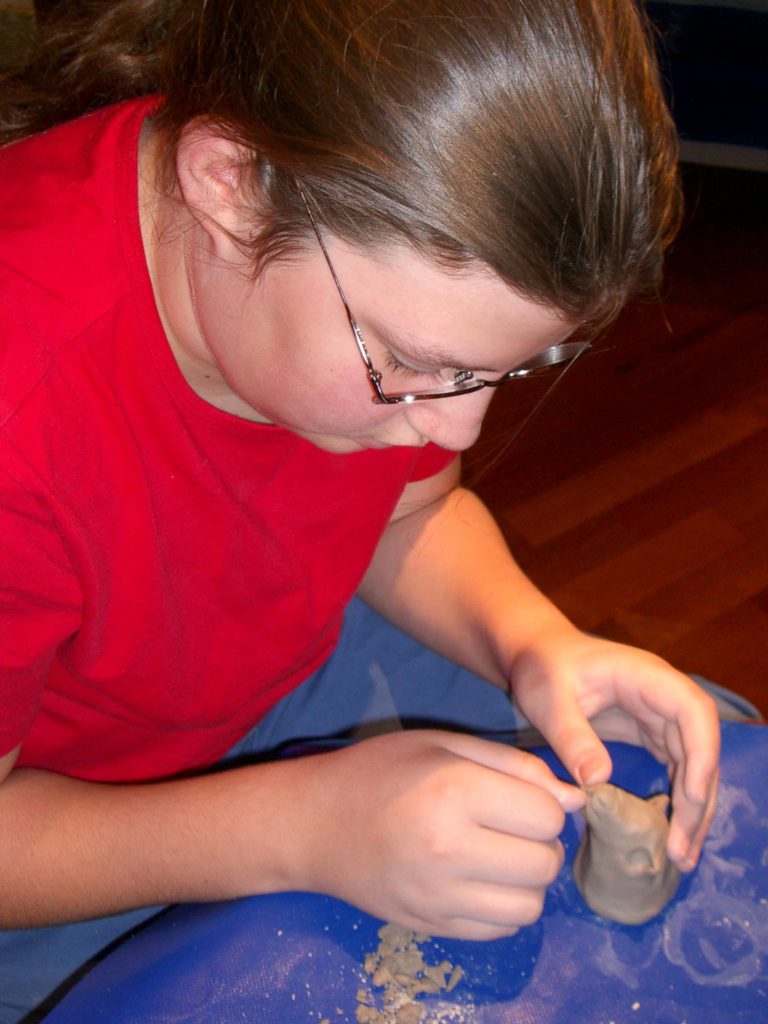
Sunday we spent a restful day at sea, cruising the inside passage. The water was very still in the morning, and Dani and I saw an Orca Whale blowing very close to the ship. We sighted a few other more distant whales throughout the day. We attended a sculpting class and were quite amazed at the results. The instructor told us to let our fingers do much of the thinking. We were startled to find that we could sculpt things that we could never have drawn realistically. Dani made a remarkable polar bear, and I did a reclining nude. Later we will glaze them so that they can be fired.
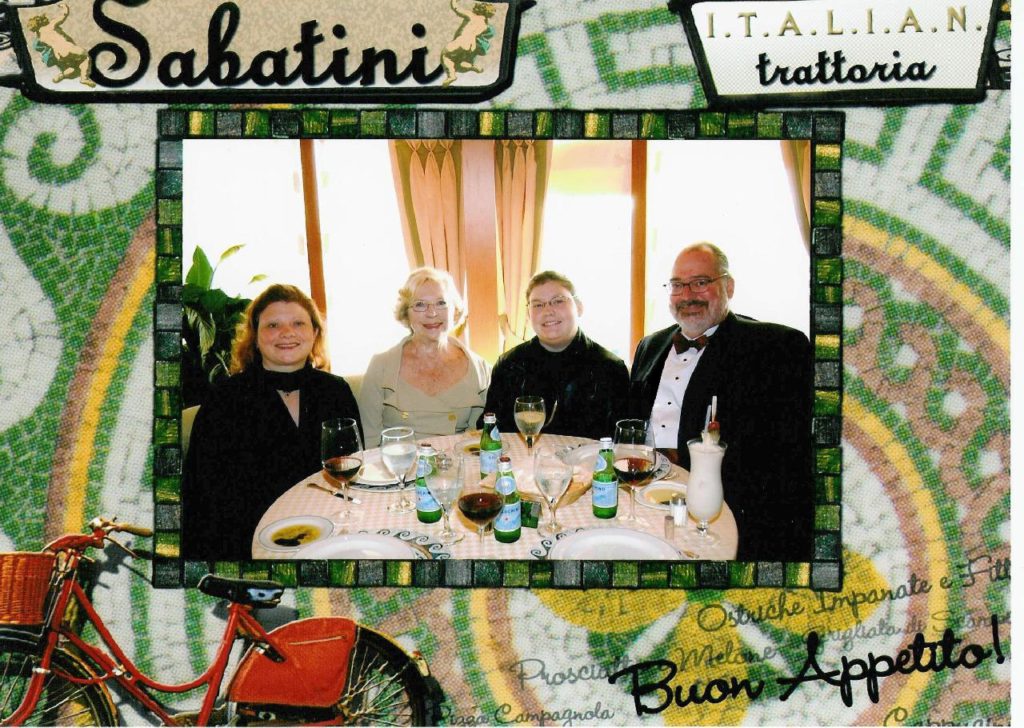
We dined in Sabatini’s, one of the two cover charge restaurants on the ship. Our $15 bought us about a dozen courses, some of which consisted of eight or ten things. Basically, you select your entree and they bring you everything else on the menu. Our main course was lobster, langostino, prawns, scallops and Alaskan Halibut, but we couldn’t eat very much by that point in the meal. The food on Princess is the best I’ve had; in particular, it’s far better than Royal Caribbean.
Monday, August 4, 2003 – Ketchikan
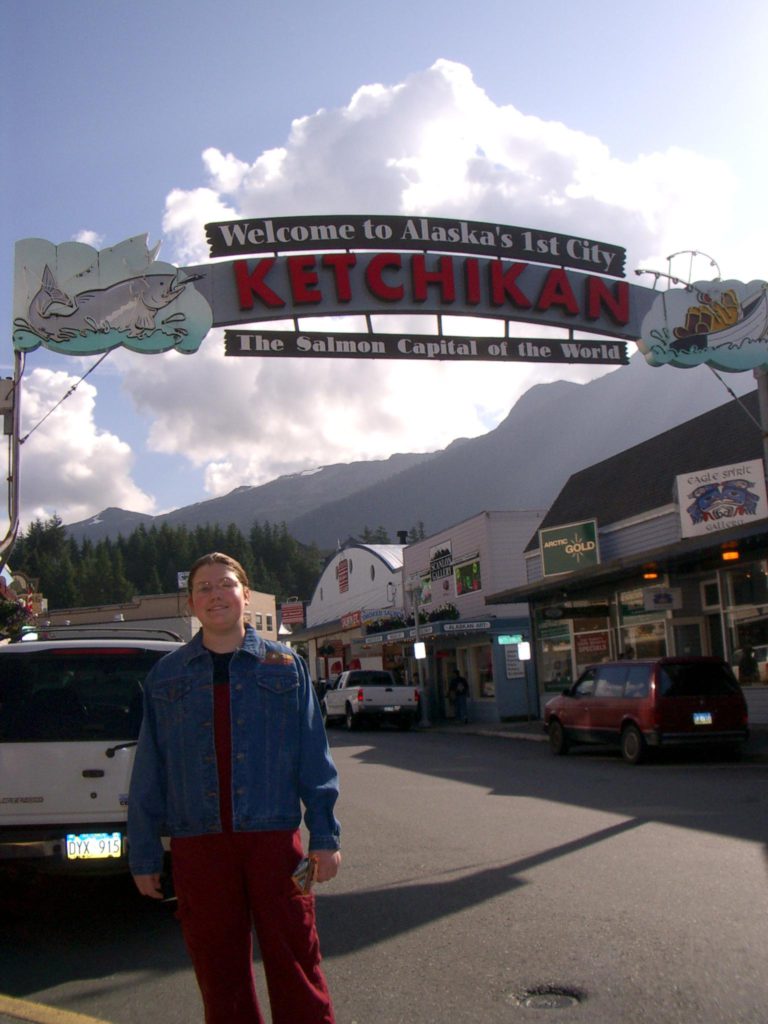
We awoke in Ketchikan, a city on an island. The population is only 14,000, yet it’s the fourth largest city in Alaska, after Anchorage, Fairbanks and Juneau. It rains about 250 days out of the year in Ketchikan — annual total about fifteen feet — so we were very lucky to have such beautiful weather. After a morning shopping foray we returned to the ship to get ride of all our warm clothing. It was in the fifties and sunny all day.
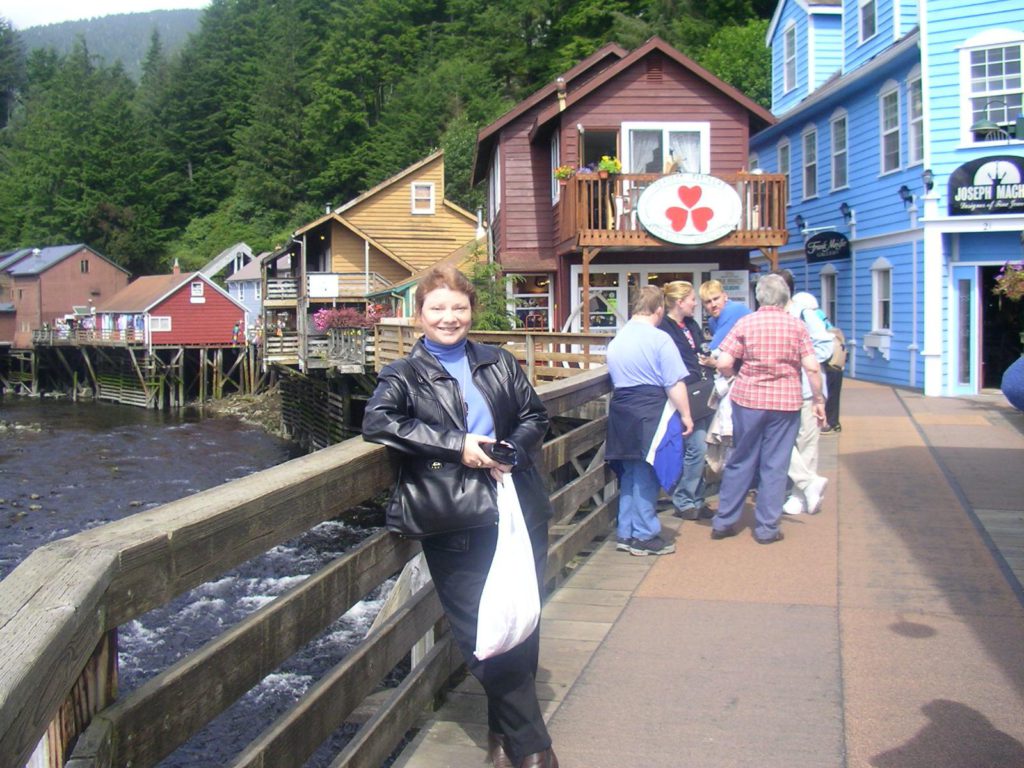
Linda and Pamela set out for a lighthouse tour, while Dani and I headed down the coast for a mountain bike ride.
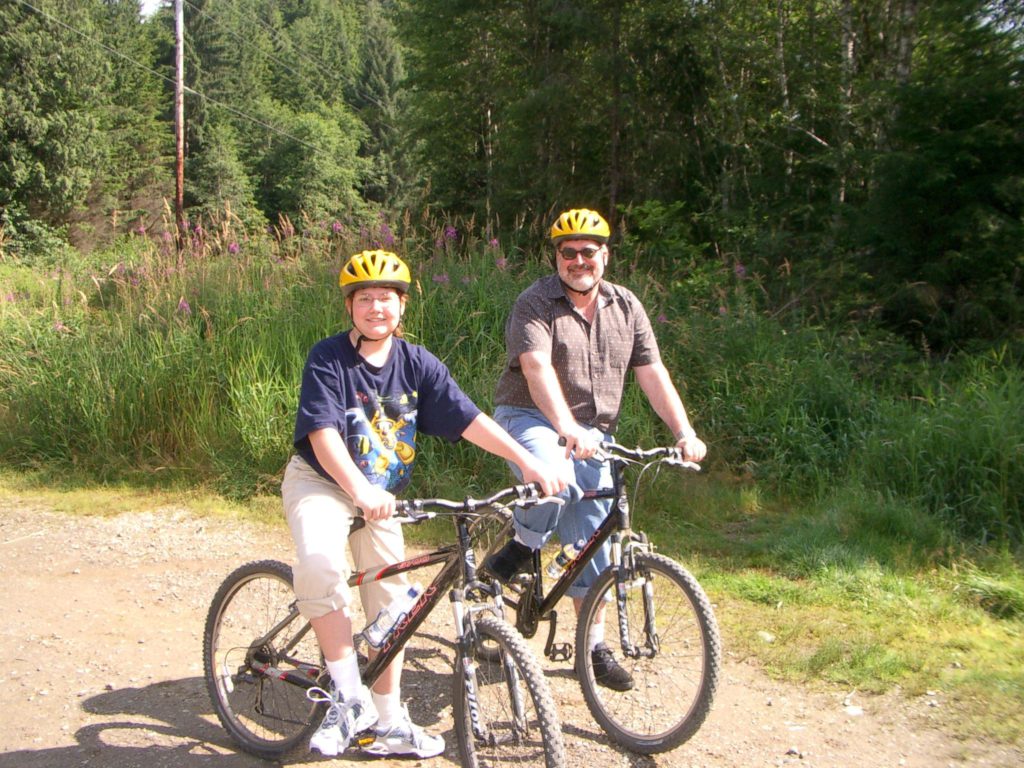
The bike ride was billed as a “gently rolling” ride along a dirt road, but it was more of a steady grade up — both ways. Actually, it was nice that it was downhill most of the way back.
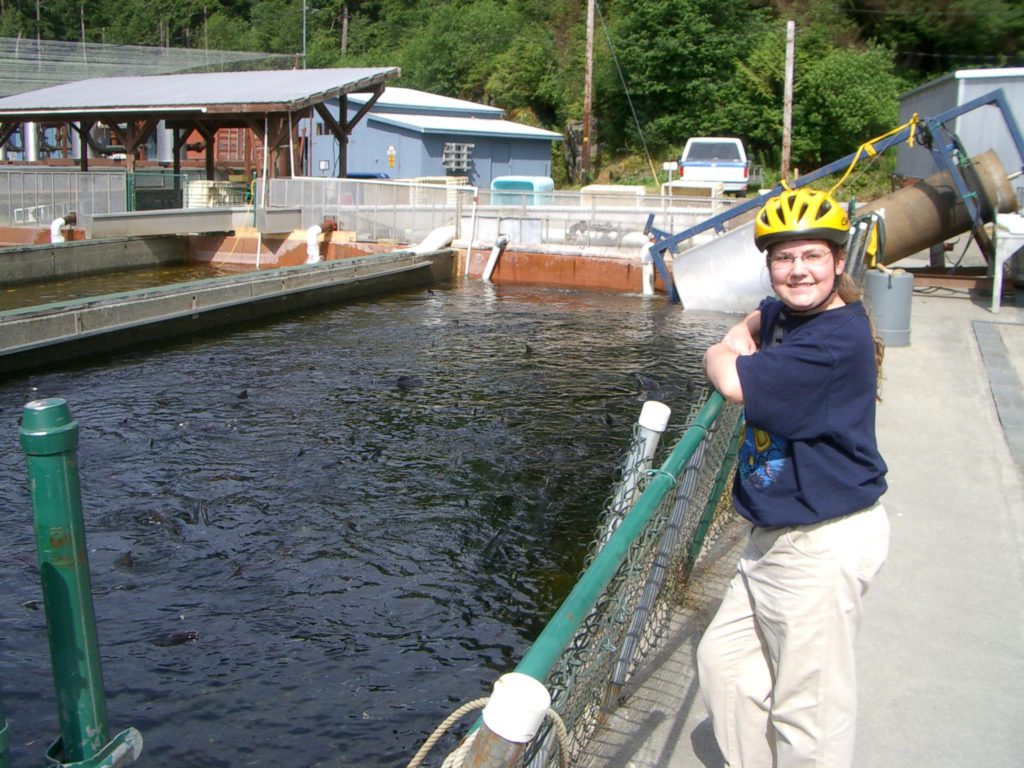
Our first stop on the bike ride was at a salmon hatchery. We learned there are five kinds of salmon, that you can remember from your fingers:
Pinky Pink
Ring Finger (wear a ring made of. . . ) Silver
Middle Finger (the Longest) King (also called Chinook)
Index Finger (the Three Stooges poke with it) Sockeye (also called Red)
Thumb (rhymes with. . . ) Chum (also called Dog)
Because salmon return to where they are spawned, the fish hatchery can release millions of babies and they will swim back straight into the local fishing grounds when they are grown.
A few make it past the fishing nets and return to the hatchery by climbing up these. . . Salmon ladders.
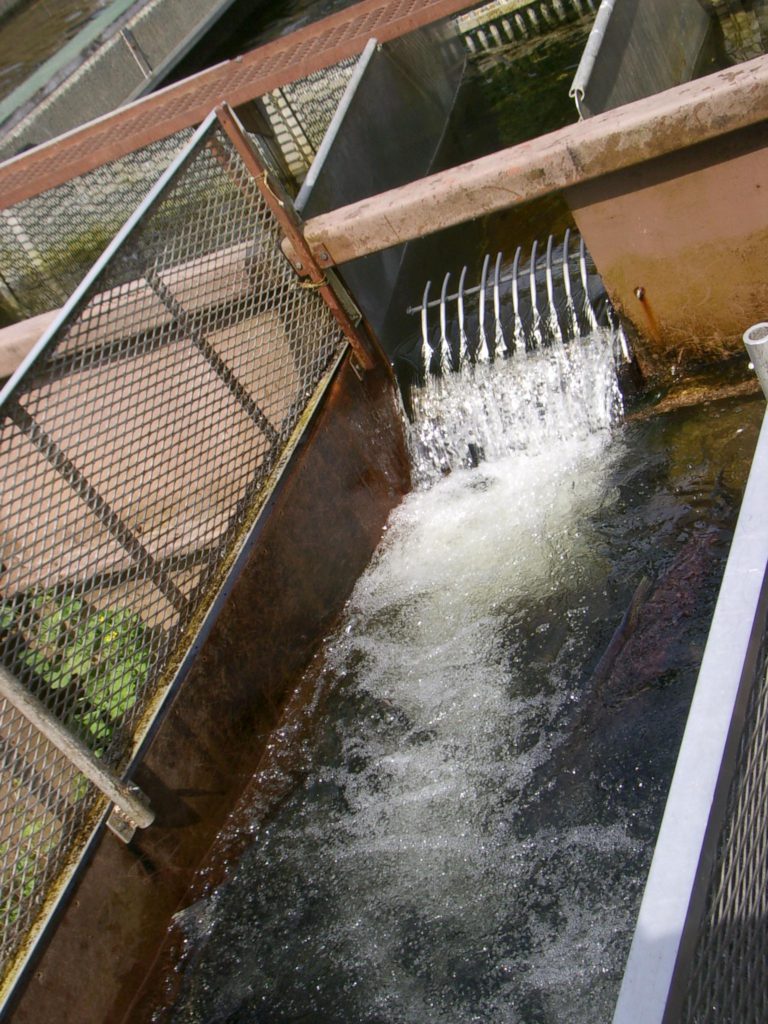
There is a big King salmon in the water at the right. She has already gone up many levels, and must jump this last one to reach the holding tank. They collect only 340 of these pregnant females — they’re about three to four feet long. From them they will harvest 14 million(!) eggs, which they artificially inseminate and then release as hatchlings.
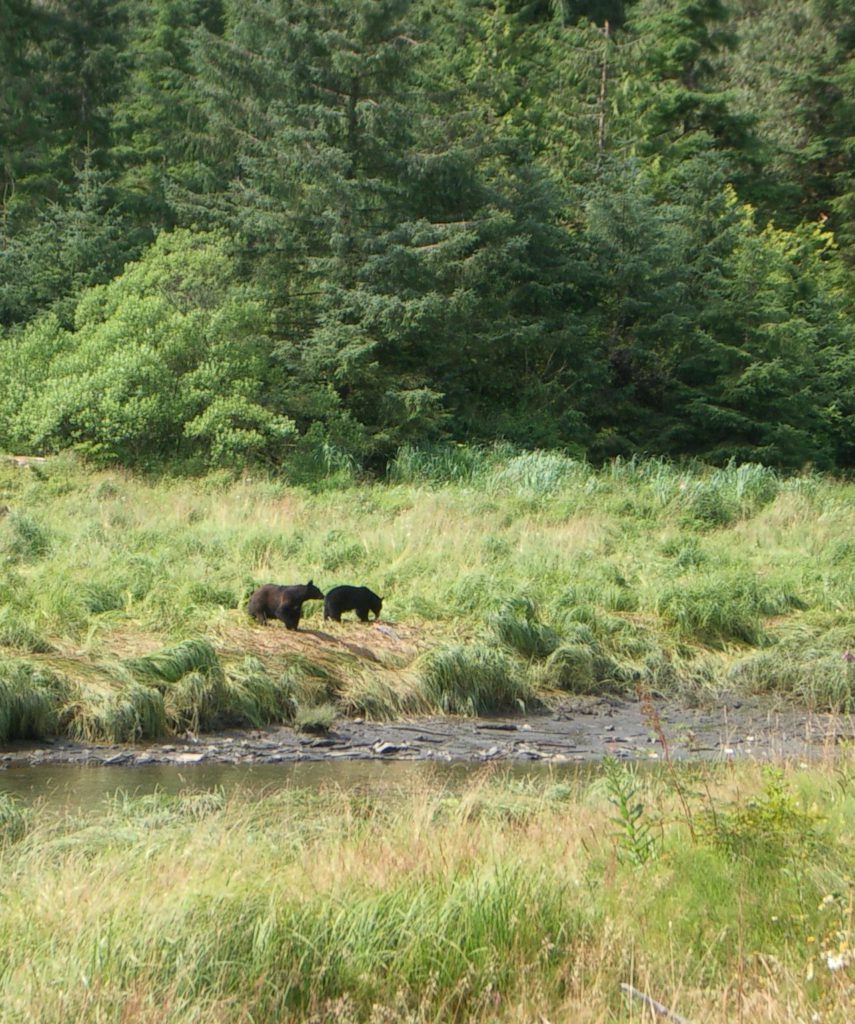
By a stroke of luck, as we stood looking at the fish hatchery, three Black Bears approached on the other side of the river. As we watched, they found a salmon and carried it off, nibbling from it on the way.
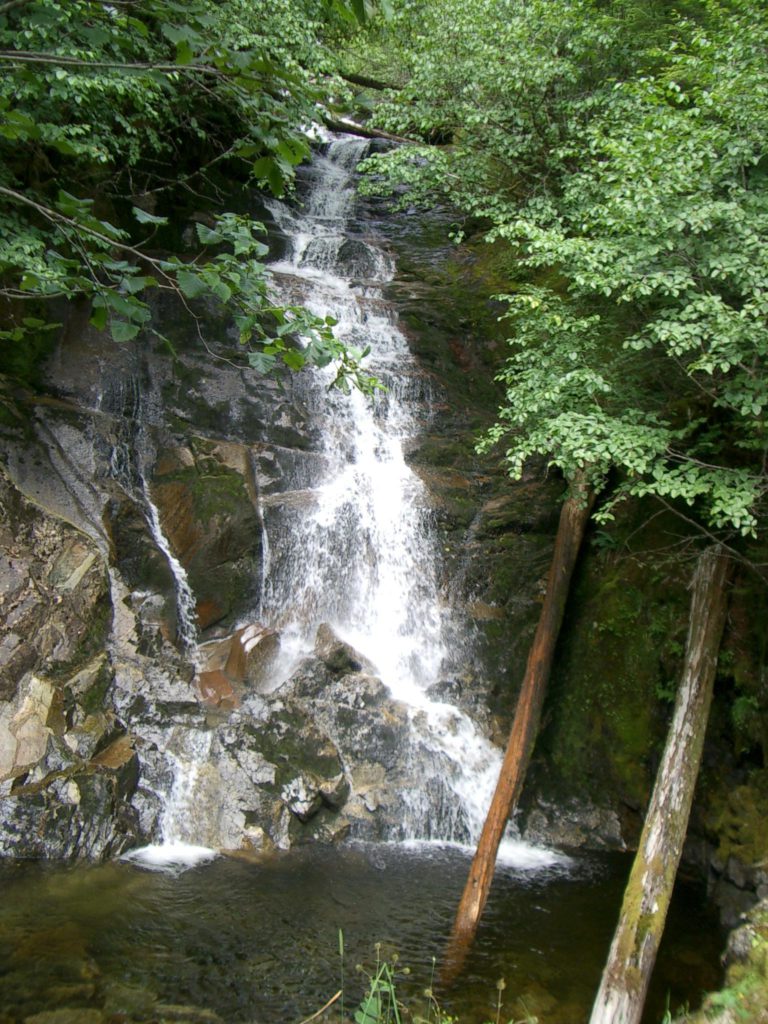
On up the road we stopped to rest at this pretty waterfall. I headed back but Dani went on for another mile or so. The total round trip was about seven miles, and we were more than ready for lunch when we got back to the ship!
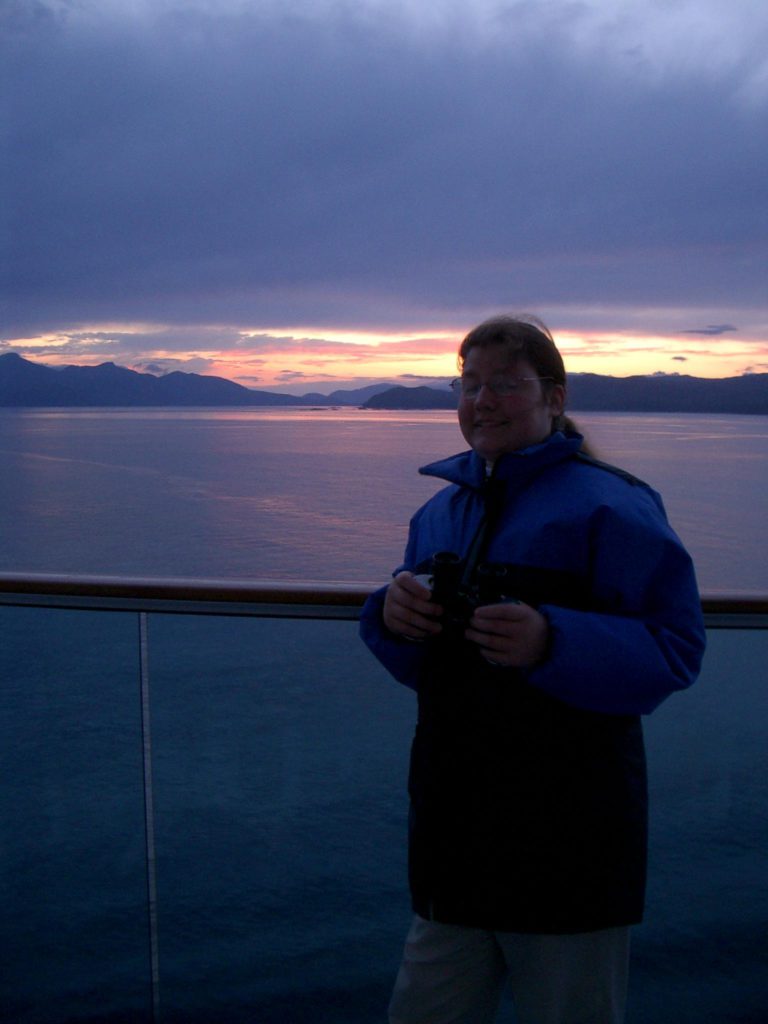
Sunset was on the starboard side of the ship — an interesting phenomenon for a North-bound cruise. Many of these ports are at the apex of narrow sounds. We saw a V-formation of geese grazing the water near the ship.
Tuesday, August 5, 2003 – Juneau
Juneau is the capital of Alaska. Half of the residents are civil servants and the other half sell souvenirs. Squeezed against the mountains on top of a pile of mine tailings, the city dates from the 1880’s, when gold was discovered in the river.
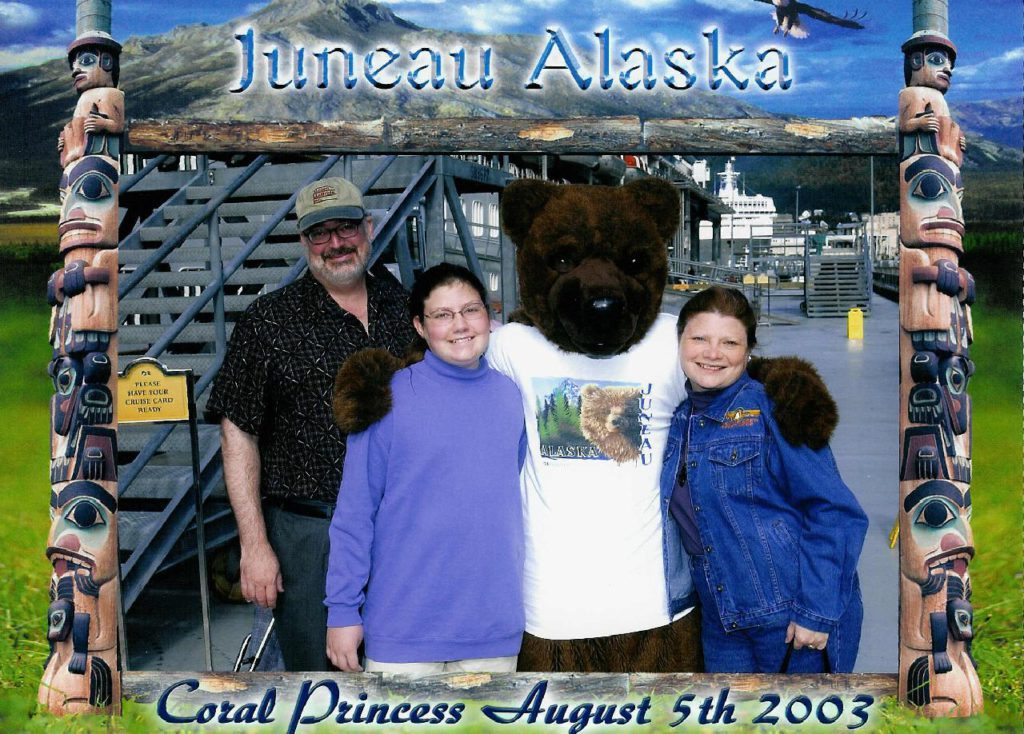
Note the dichotomy between the scenery on the dock and the border of the postcard!
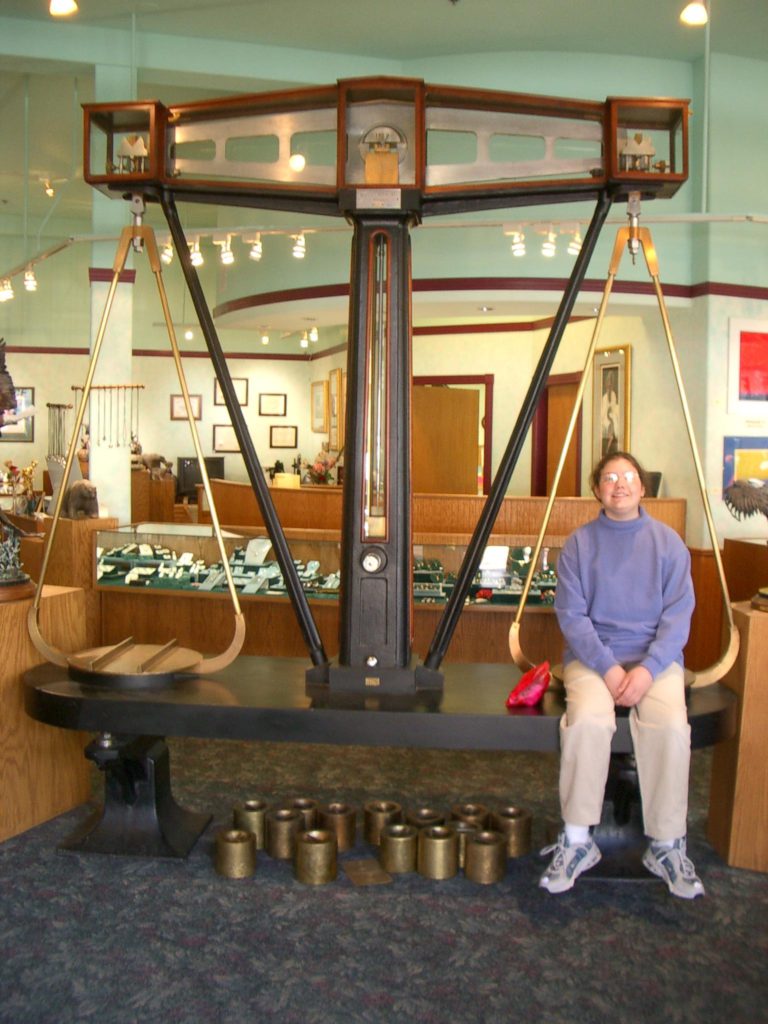
We spent the morning buying — you guessed it — souvenirs. Linda and Dani did some jewelry shopping in this shop with an antique scale. This must have been for really successful prospectors.
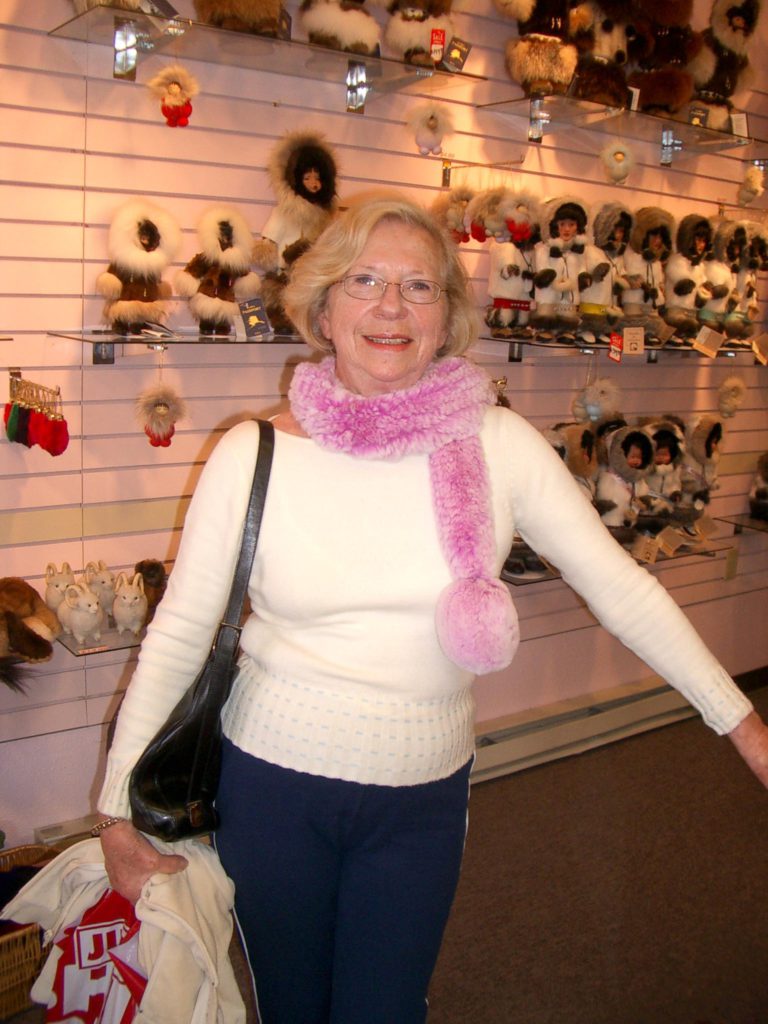
Pamela tries out a pink boa. What a great look for her, eh?
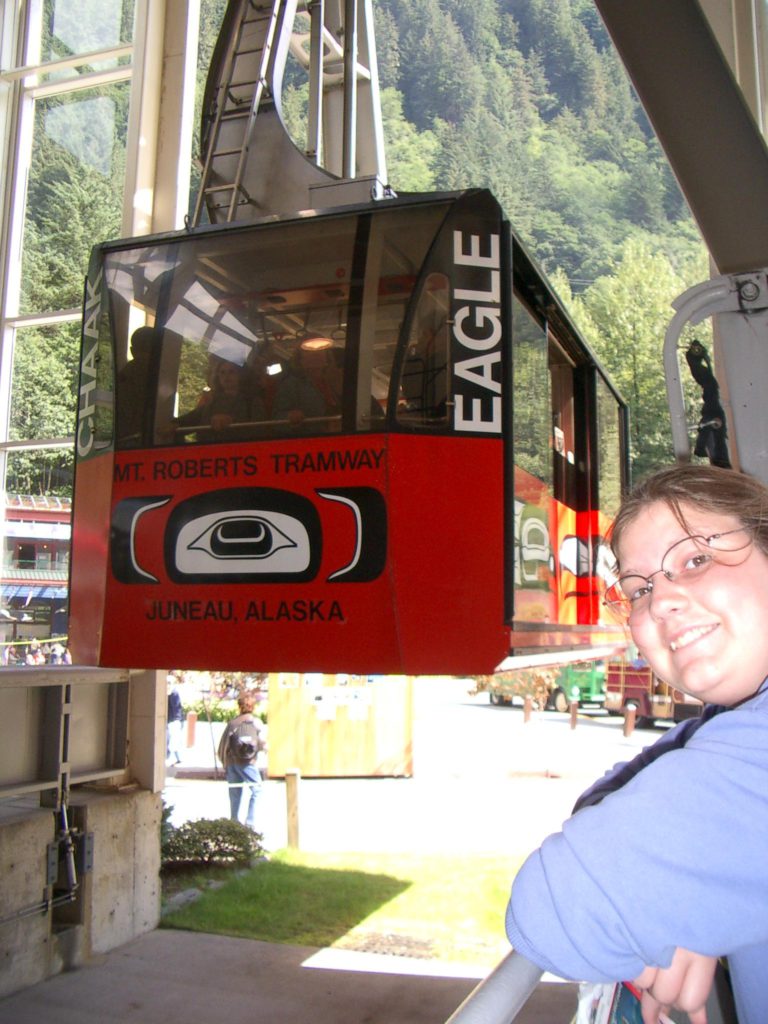
We (minus Pamela!) took the tramway 1800 feet up to the peak of Mount Roberts, where we had a leisurely lunch perched atop the mountain. The tram goes literally to the top — another five feet and you’re going down again. This is the only tramway we’ve ever been on that doesn’t have an intervening support – the cable is strung in a direct line from station to station.
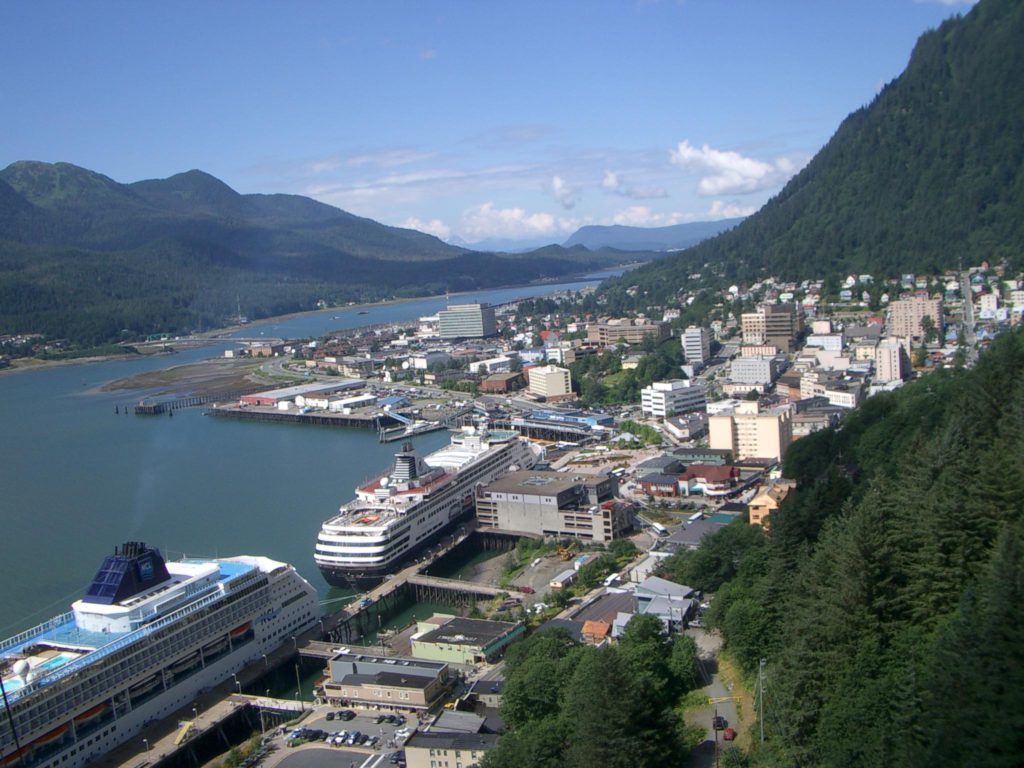
Juneau, with two of the day’s five cruise ships at dock.
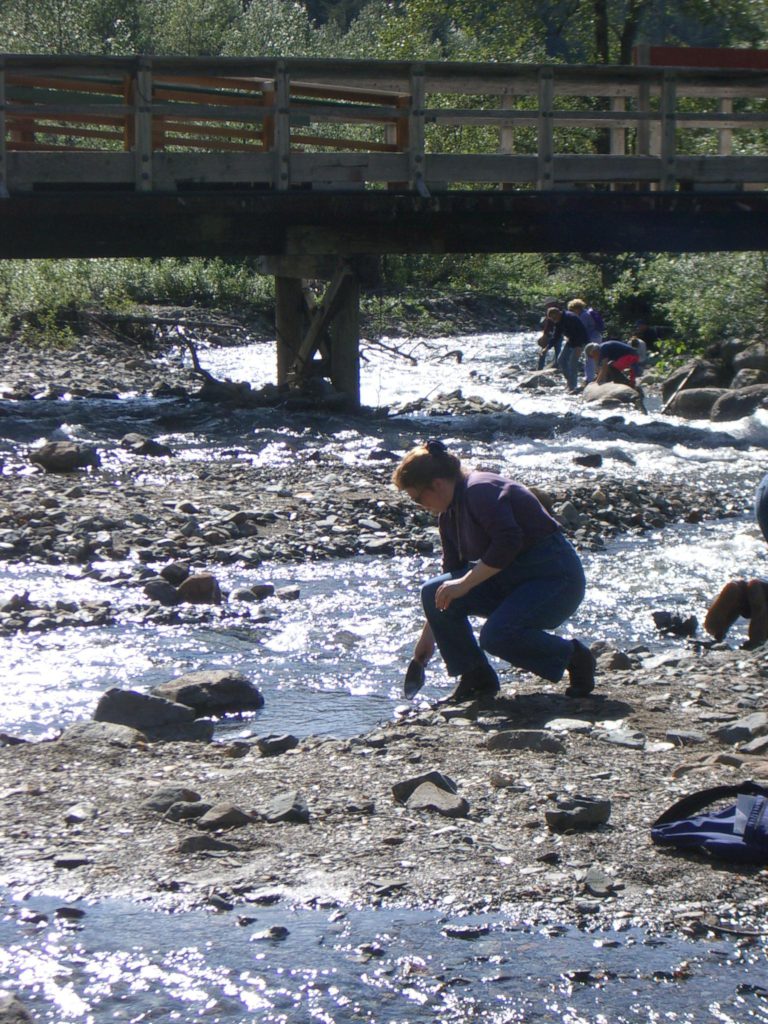
In the afternoon we tried our hand at gold panning near the original gold strike. Our guide, “Mule”, was a gregarious comedian who gave us the inside scoop on the history of Juneau, which was named for a drunken Frenchman who died broke in the middle of gold country. Mule is a student at the University of Alaska, but he’s originally from Macon Georgia, y’all.
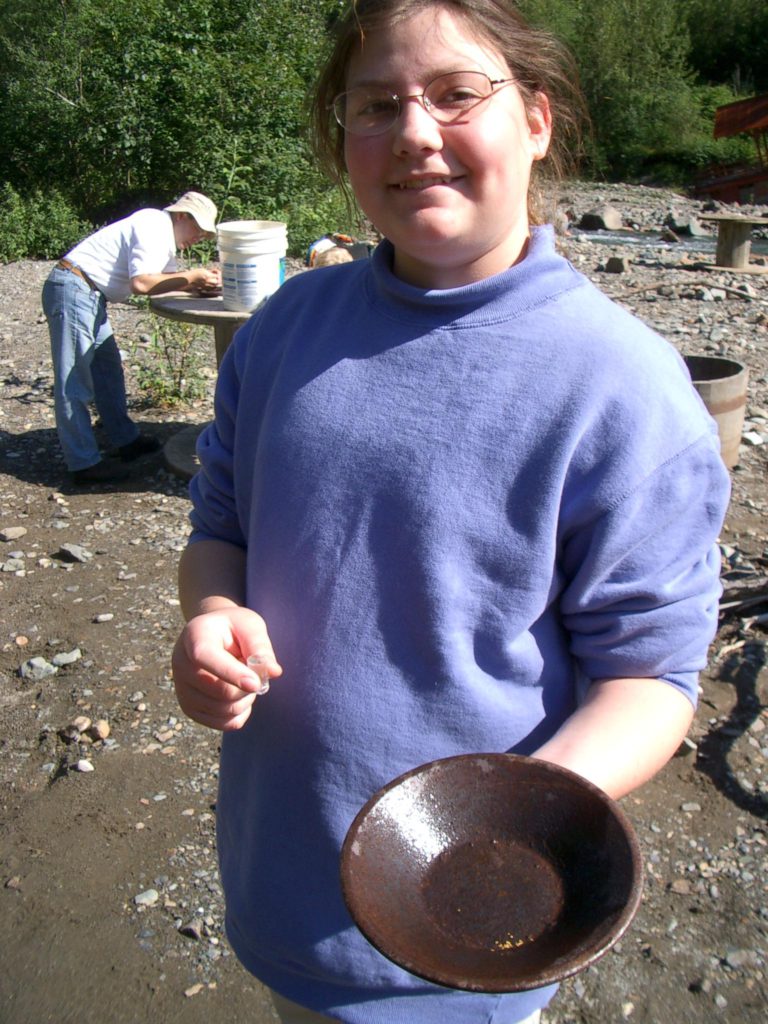
He showed us the panning technique, which uses water to float off the lighter particles, leaving the heavy gold flecks in the rust-colored pan. Our sand may have been salted to guarantee results, but we all found at least one fleck from a pan of honest river bottom sand, too.
Back on the ship, Dani and I finished glazing our sculptures and Dani tried her hand at pot “throwing”. tomorrow is the last day for ceramics since they fire up the kiln Wednesday night. We have a busy day of activities planned, so we tried to finish everything else today.
At these latitudes the sun seems to take forever to set; it is still quite light at ten or even eleven pm. The effect is exaggerated as we travel northwest because we don’t change time zones but we move the equivalent of several time zones westward.
Tonight the sun and moon set at nearly right angles to one another — an effect impossible in Orlando. The glow of the sunset shifted from starboard to port and back again as we wound our way through the channels back to the northward passage. The moonlight illuminated white birds skimming the waters near the ship. After only a few hours out of Juneau the landscape had changed dramatically, with jagged peaks cradling snowy saddles of ice.
At 11 pm the sky still glowed deep orange in the west when a green ribbon appeared against the dark sky overhead, snaking its way from the north to disappear over our ship. The Northern Lights.
We called Dani and Pamela’s room and they rushed over in pajamas and warm coats to watch. The ribbon twisted and spiraled, its lower edge sometimes glowing red. It seemed to be comprised of thousands of vertical strands, each following in a choreographed procession. At times it would disappear, and another would reform nearby. Sometimes a section would whip across the sky, covering hundreds of miles in only a few seconds. At one point a bright blue-white shooting star arced through its center. The show lasted fifteen minutes, and then faded, leaving a milky glow across the northern sky. It was the most spectacular thing I’ve ever seen.
Wednesday, August 6, 2003 – Skagway
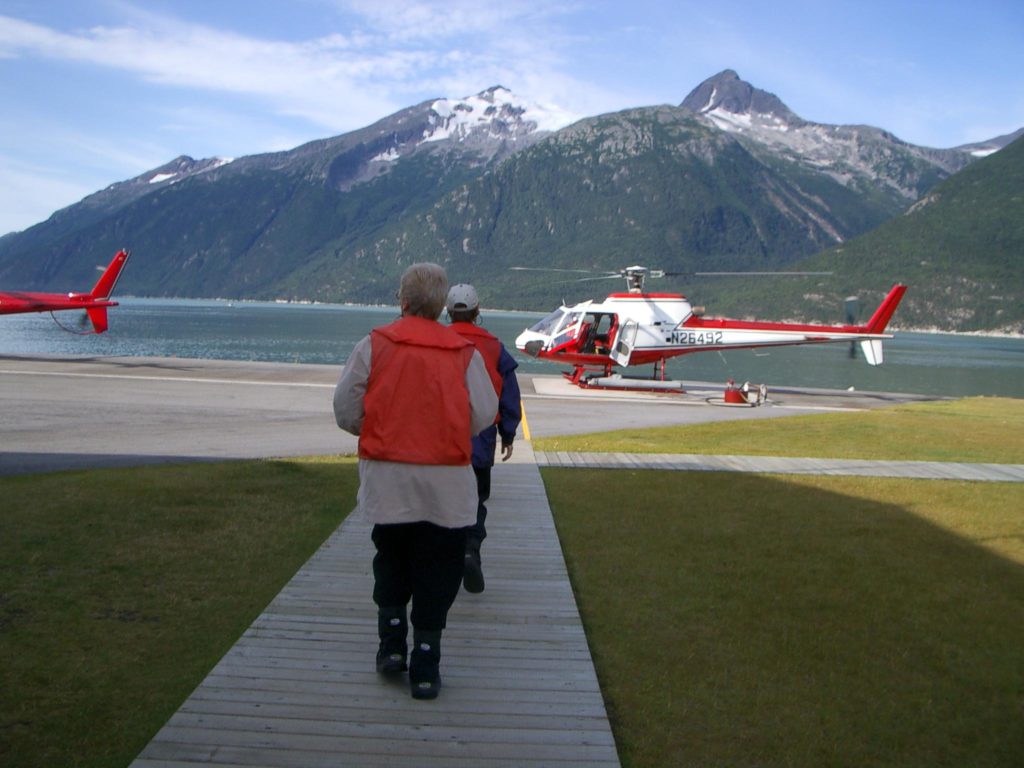
In Skagway the ship docks against a rock mountain which bears the names and the painted logos of the ships that have gone before. I saw inscriptions from the ’20s, and Linda spotted The Princess Louise, which was converted to a restaurant docked in San Pedro harbor when we were kids. I could almost hear Wagner’s “Ride of the Valkyries” playing as I watched a squadron of helicopters careen from the dock and head up into the mountains, taking Dani and Linda to the top of the glacier for dog sledding.
Linda and Dani go Dogsledding
After some disorganization on the pier, Dani and I were shuttled off to the local helipad and issued glacier boots and orange flotation vests. (Near as I can tell the only function of the latter was to make your body easier to locate after you had expired in the water from hypothermia. ) After having to confess our weights (which will not be recorded for posterity) we were assigned seats in a helicopter and our adventure literally took off.
Having never flown in a helicopter before, we were amazed at how solid it felt — sort of like driving a sports car in the sky. Our pilot was a nice young man who assured us that his learner’s permit was valid and that all he had to do was follow the lead helicopter. We were encouraged to talk to one another over the intercom system while he practiced flying. We soared over glacial valleys and ice-covered terrain riddled with crevasses — not terribly hospitable but beautiful in its own way. After 15 minutes of flight to about 5000 feet we noticed a collection of small dots on the ice. We were soon to arrive at the summer dog sledding camp located on top of a glacier.
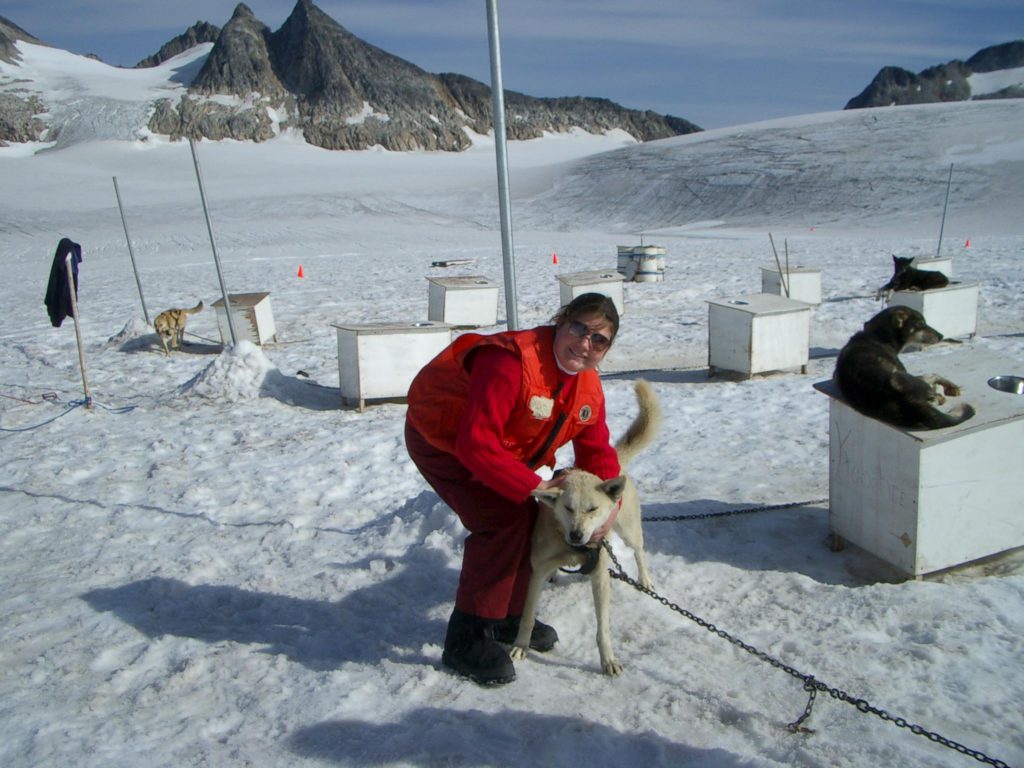
As soon as we disembarked and the helicopters flew away, taking their motor noise with them, we were struck with not “glacial” silence but rather the enthusiastic welcoming yips of some 200 dogs.
Each dog is given their own dog house with an indentation in it for their food bowl. They are loosely chained to a common team line. Most seem to prefer to hang out on top of their houses to soak up the sun, check out the newcomers and wait for their next meal (they are fed mostly cooked lamb). They are very friendly and not ashamed of voicing their opinions — Dani couldn’t figure out which one to pet next.
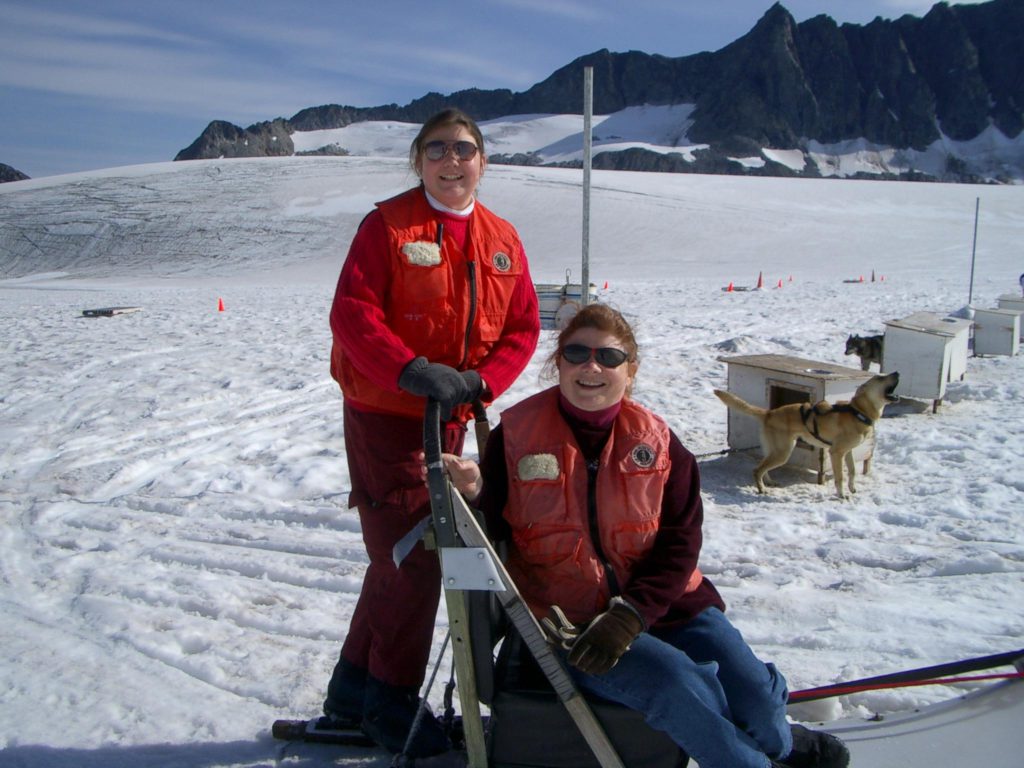
After some brief instruction (pretty much where the brake was and don’t walk away from the camp as you most likely will die in a crevasse) we were off. Dani took the first leg steering our sled (we were actually tethered to a sled in front but it looks good in the pictures).
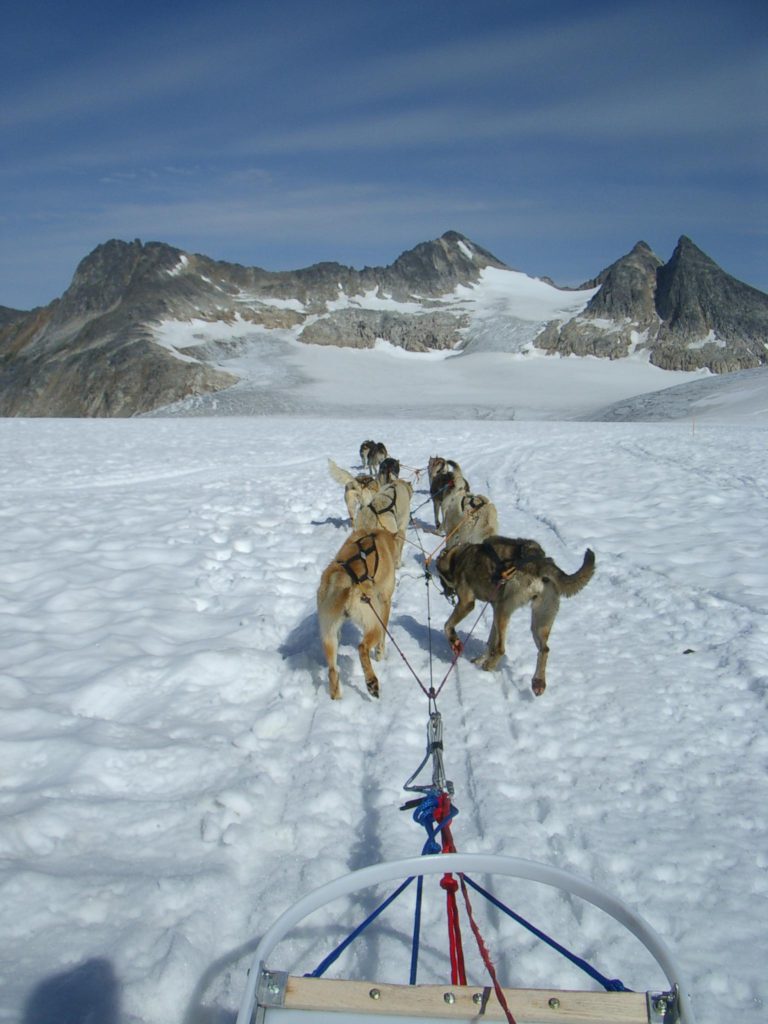
Our sledding guide, Lucas, told us the philosophy of the camp was not to overly train the dogs — as long as they were willing to run in the correct direction that was good enough. Hence, although they pulled smartly together as a team, as soon as we stopped the line quickly dissolved into mayhem with dogs eating snow, rolling in snow and doing other things in the snow which accounted for the distinct aroma.
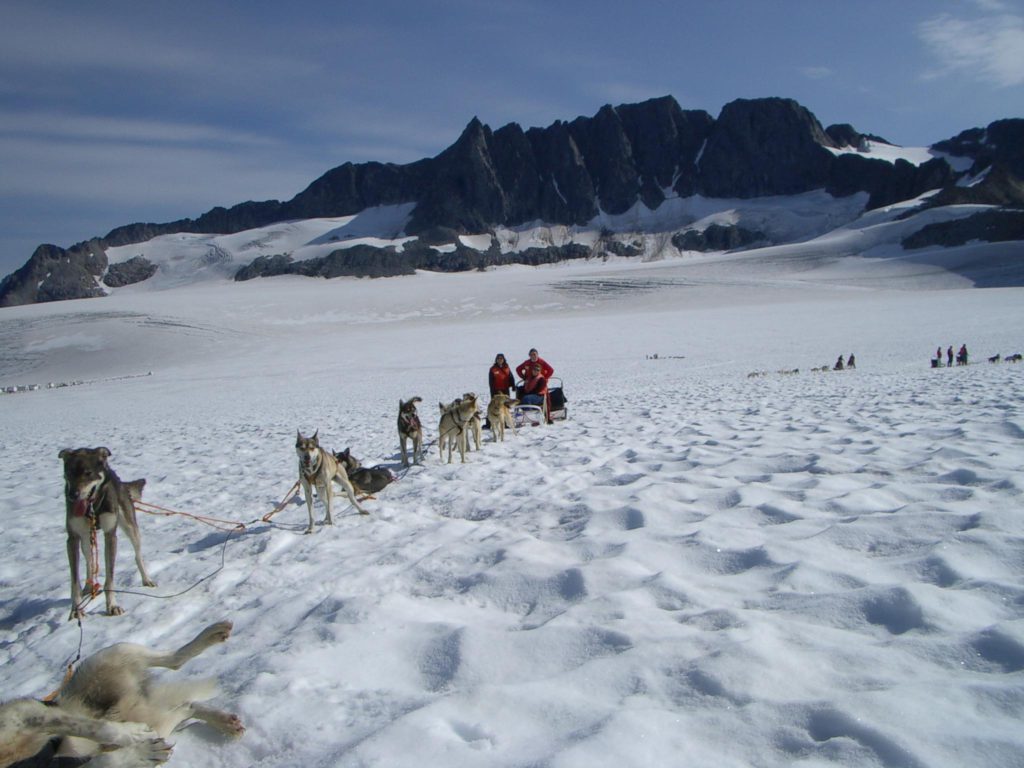
The dogs really enjoyed running — each time we stopped, they seemed frustrated and anxious to take off again. Each of the three of us riding with Lucas got to steer for about ten minutes. Our fellow passenger, Paula from San Diego, was a skier and got the most challenging segment. The sleds are very lightweight — their design allows them to skim over quite rough snow and smooth out the worst of the bumps. It’s the closest Linda will ever get to skiing — standing on skids sailing over snow but with a nice handle to hold on to!
After about 30 minutes we went back to camp and were led over to the “nursery” where husky puppies are being raised. Dani got to cuddle Patches, 4 weeks of wriggling joy. There were eight puppies in Patches’ litter. Being cuddled by various folks (albeit under the eagle eye of both mom and the sled guide) is the first step in their sled dog training.
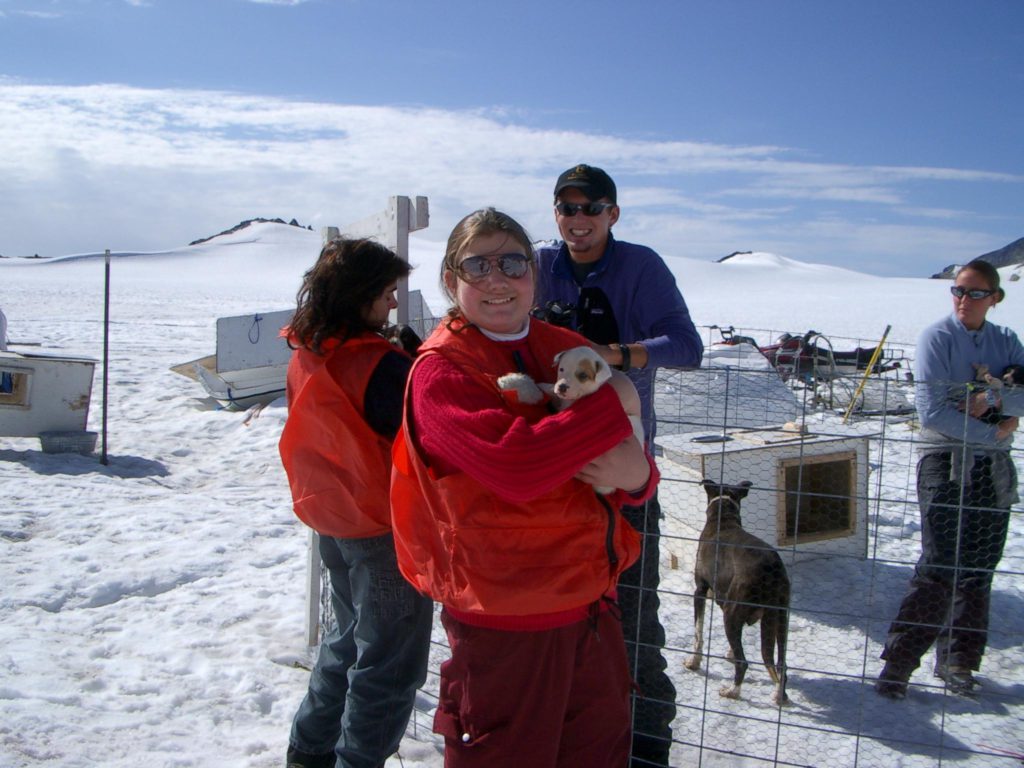
Dani did her best to smuggle Patches out, but to no avail. Soon our helicopters returned and whisked us back to town.
Meanwhile, in the Yukon…
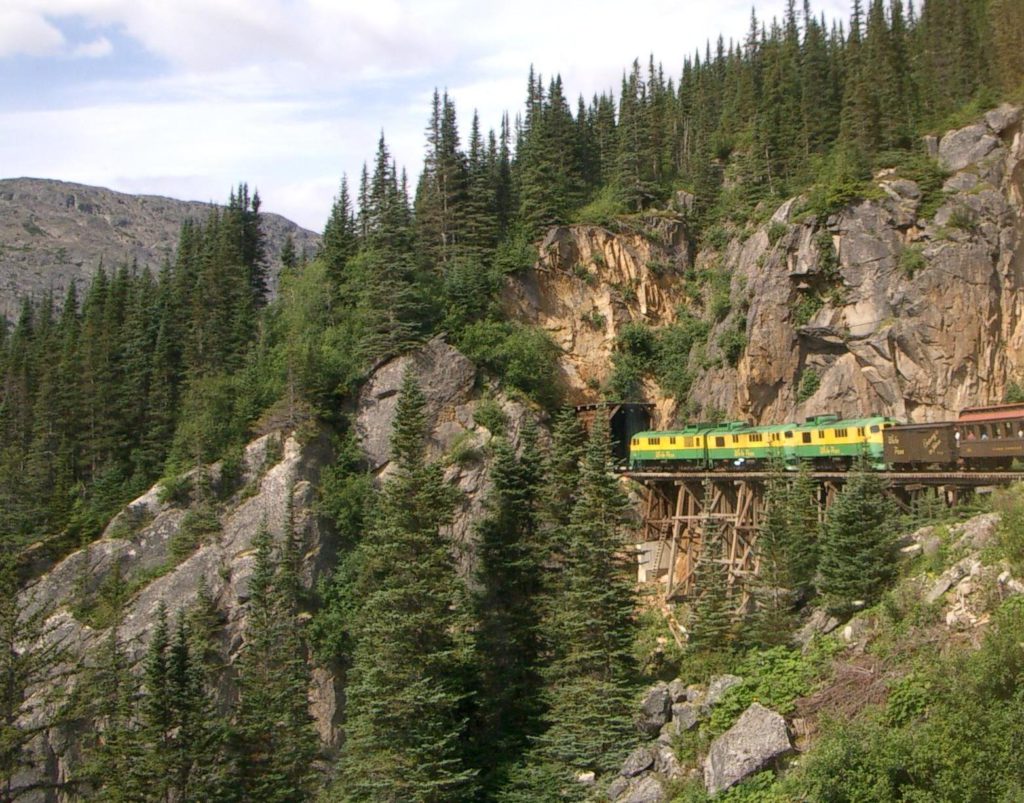
Meanwhile, Pamela and I set out for “The Best of Skagway”. The first thing we did was leave Skagway. Not surprising, since this tiny town — still bearing 1898 facades — was more important for where it was that what it was. Today there are only about 800 residents, and its longest street is only a few blocks long. The four cruise ships at the dock increased the population by about 1000%. But Skagway was important because it served as the gateway to the Yukon gold fields, and that’s where we headed, aboard the White Pass and Yukon Railway.
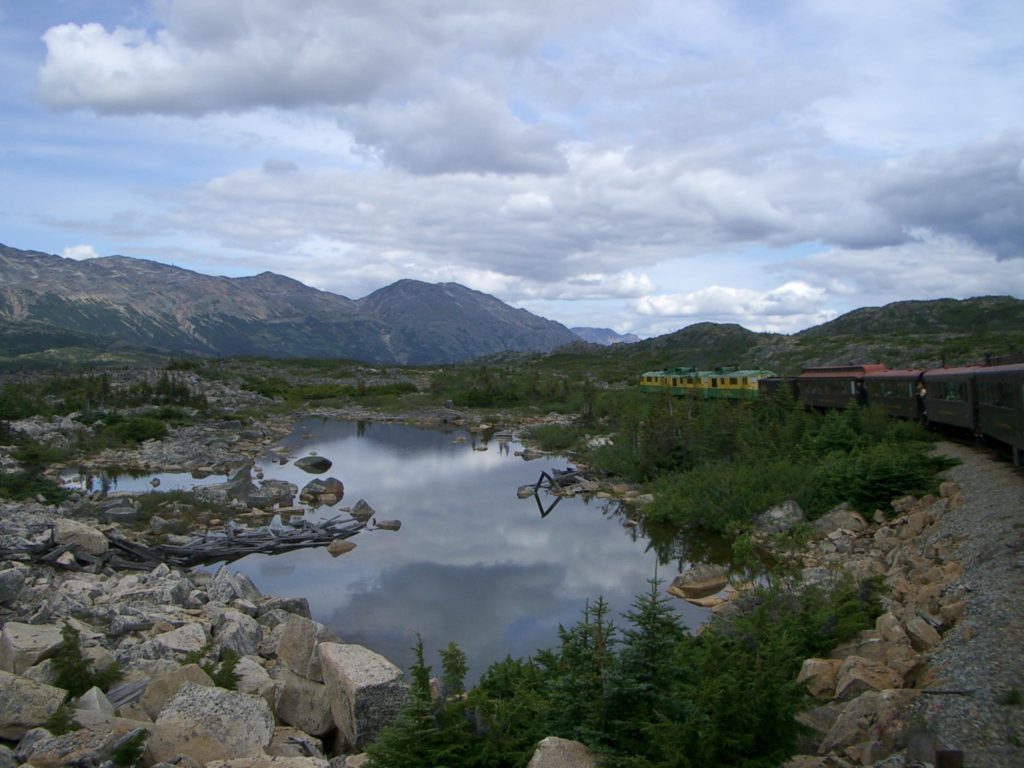
The thirty-mile trip over the pass climbs three thousand feet and takes about and hour and a half. It was a beautiful, clear day. The views of distant mountains, glaciers and harbors were spectacular. We were told that one jagged range of mountains which seemed almost to loom over us was actually 45 miles away, and was almost never visible. The railroad was constructed in less than two years, beginning in 1898. Even so, it opened too late to help the 100,000 Stampeders who came looking for Yukon gold. The followed the torturous White Pass Trail, which we could see winding through the rocks below us. And they didn’t follow it just once. To enter the Yukon, the Canadian government required them to carry 2000 pounds of supplies — one year’s worth. Wagons were impractical on the trail, and pack animals were rare, so this meant each miner had to make thirty to forty trips over the pass carrying 50 pound loads roped to their backs — a total distance of about 2000 miles.
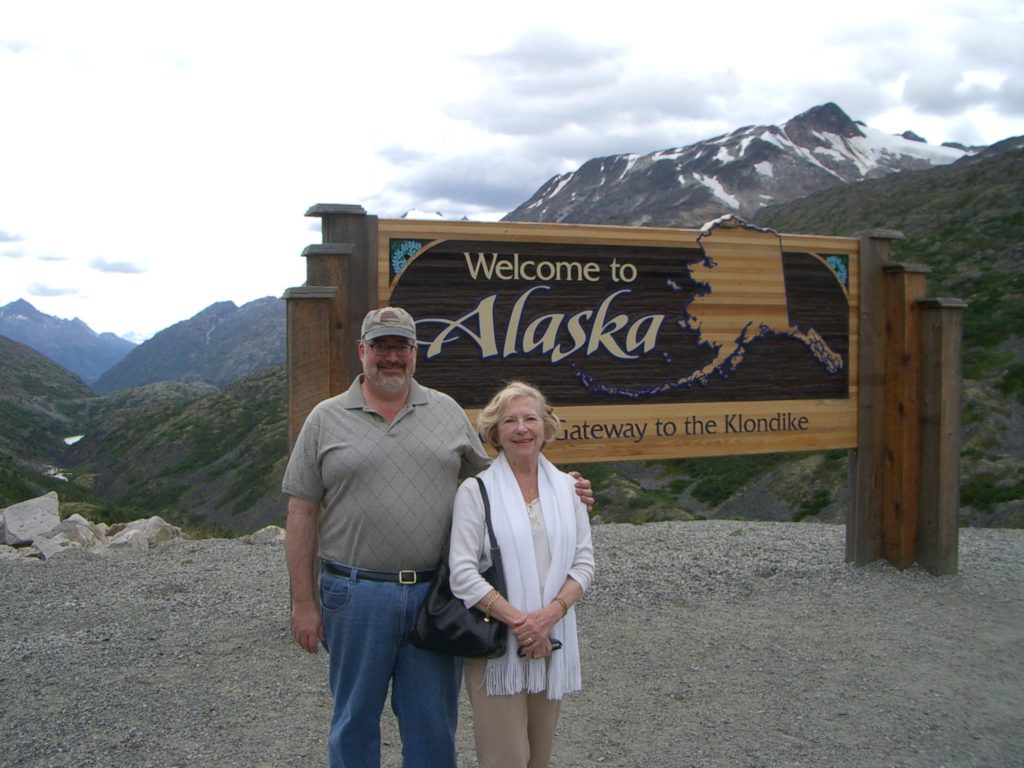
Of the 100,000 who set out, only 30,000 made it, and many turned back at Dawson City. Only a few thousand ever found and gold at all, and just a few hundred struck it rich. After passing over what, in 1898, was the longest cantilever bridge in the world, we emerged from a tunnel into the Tormented Valley, so named because no tree can grow more than a foot or two tall because of the severe winters. The train stopped at Fraser, British Columbia, a town consisting of three houses for Canadian Customs. We disembarked, reboarded our bus, and took the road back down through US customs, posing for a picture at the border.
Our bus driver, Trevor, was a twenty-one-year-old recent college grad who is putting his political science degree to work driving a bus in Alaska. He told us many funny stories, including one about his first week on the job. He forgot a woman at one of the viewpoints and had to go back for her. The woman was very irate — but not at him. She was mad at her husband for not saying anything. At the end of the tour the husband tipped him $10, telling him, “It was the quietest half hour I’ve had in 35 years. ” On the way down we crossed an unusual single-sided suspension bridge. All of the weight of the bridge is supported from one end, and the bridge simply rests on the ground at the other end. This is because the gorge that it straddles represents the junction of the Pacific and North American tectonic plates, which are slowly colliding. A regular bridge would be crumpled by the two to fifteen small earthquakes that occur beneath it each day. At the bottom of the pass we stopped at Liarsville Gold Rush Trail Camp. The tent city of Liarsville — accurately recreated and interpreted by costumed characters — is so named because the reporters sent north to cover the gold rush never actually made it to gold country. Seeing the hardships of the pass, they stayed here, and simply invented their dispatches. We had a delicious salmon supper, wandered past tents for the Press, Saloon, General Store and Brothel, and then watched an entertaining show about life in Liarsville. Afterwards we panned for gold and — what do you know — we found some, even though there was never any gold discovered in Skagway.
Back in Skagway we stopped at the Red Onion Saloon, one of 60 brothels that served the town in 1898. Upstairs we visited one of the ‘cribs’. In mining days, ten dolls stood behind the bar downstairs, representing the ten whores upstairs. You picked your favorite, and the bartender laid it on its back, indicating she was engaged. Upstairs a network of pipes connected from each room. When the coins came rattling down her pipe, the doll went back into service. On our way back to the ship we passed one of the original locomotives, outfitted with a giant rotary plow designed to deal with the twenty feet of snow that accumulates in the pass each winter.
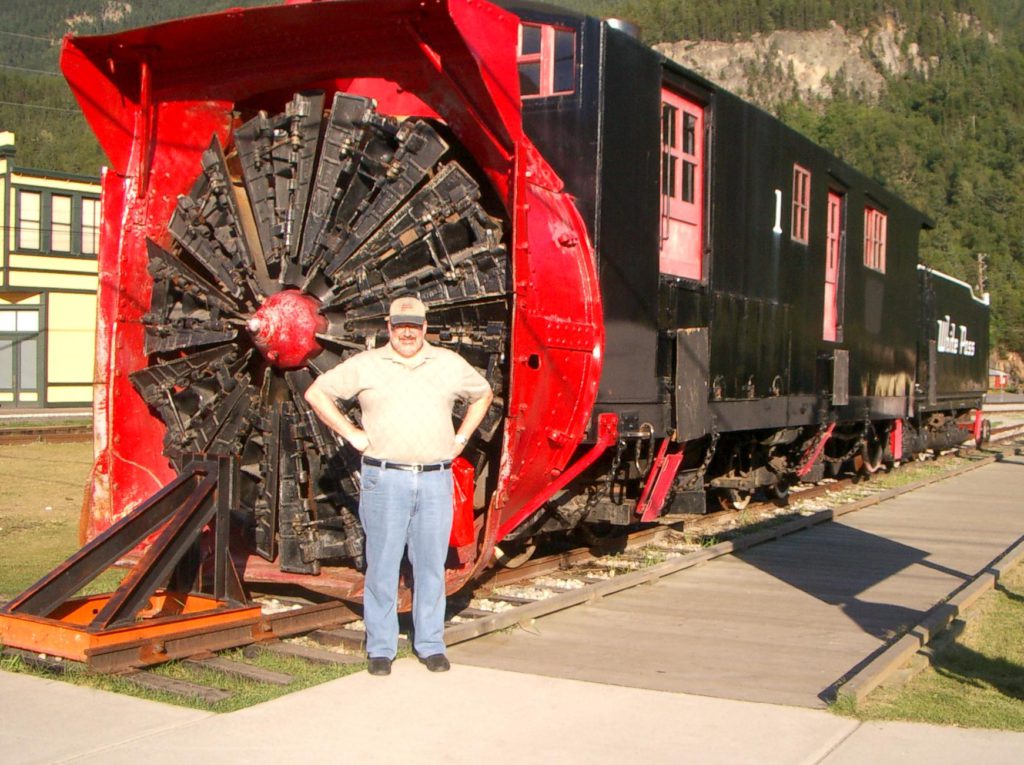
While we were gone, Linda and Dani completed their ambitious day with more shopping in Skagway (world leader in houses of “negotiable affection”), and horseback riding. On the site of the old trailhead, Dyea, they were given horseback riding “101”. Instruction did not exactly mesh with Dani’s idea of proper form, but Linda’s patient mount Iris was kind enough to give her the illusion that she was in control.
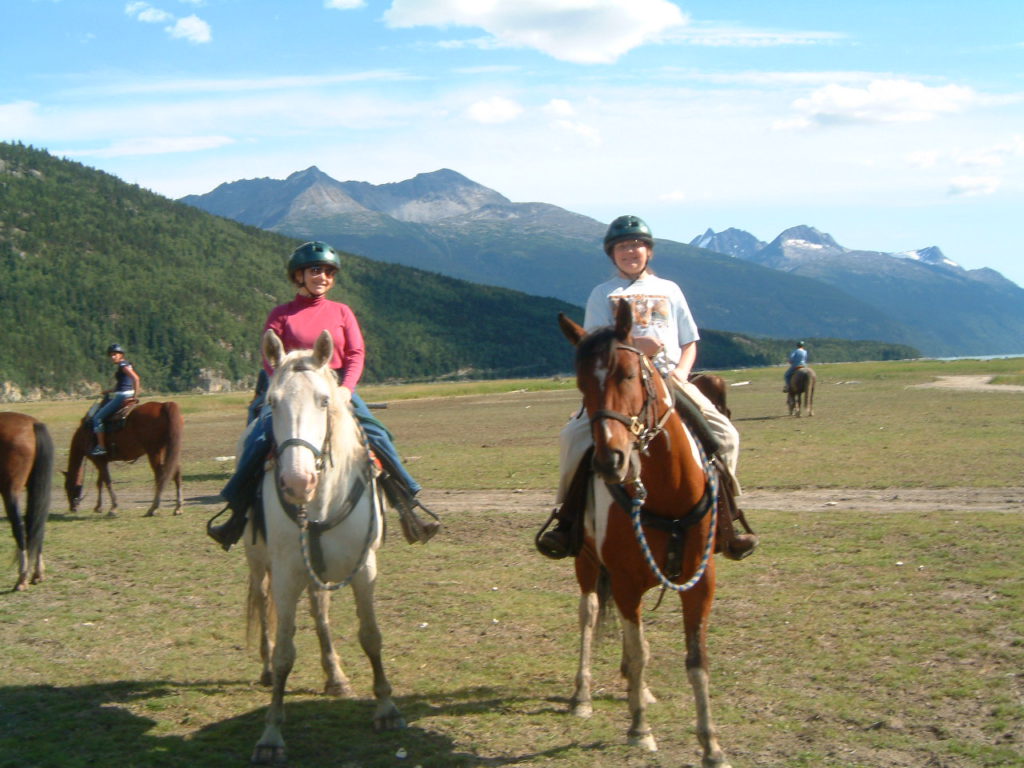
Thursday, August 7, 2003 – Glacier Bay
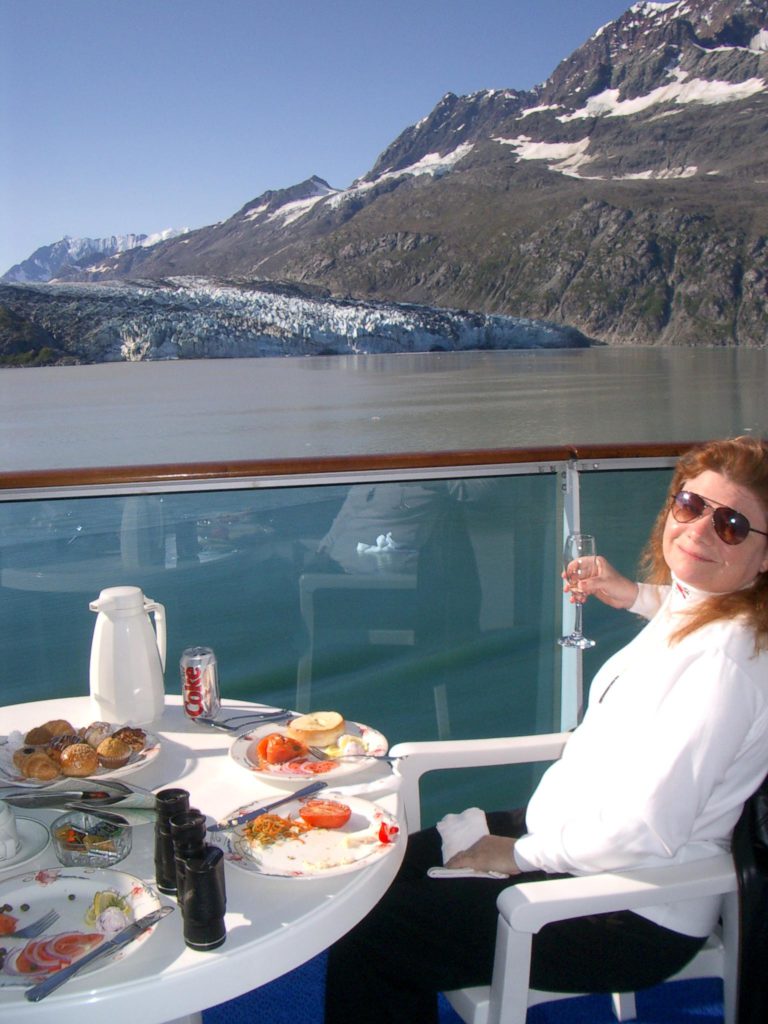
When explorer Captain George Vancouver passed this was in 1794 there was no Glacier Bay, just an icy depression in the coastline. But by the time of John Muir’s visit in 1879 the glaciers had receded forty miles! Since then they have retreated another 20 miles, leaving deep fjords for our ship to explore. There are many reasons for the retreat of the glaciers, including the end of the little ice age and the effects of major earthquakes. It is unclear whether man’s activities have also contributed, since a number of the glaciers are actually advancing.
Some of the glaciers are quite dark because they carry massive amounts of gravel down to the sea. As a result the water is quite cloudy. Because it is also cold, large numbers of deep water Lantern Fish can be found here, fooled by the cold and dark into thinking they are in the deep sea. There are many small fish, and the turbulence caused by the falling ice stirs the water, bringing them to the surface for the birds to feast upon. The surrounding land is — contrary to our expectations — quite verdant, and is home to much wildlife, including bears. The bay waters are well suited to porpoises, humpback whales and sea otters. Princess Cruises prepared a spectacular room service breakfast with Moet Champagne for — I suspect — about half the passengers, all out on their balconies to see the glaciers. The most spectacular was the Margerie glacier. Taking advantage of the fact that our cabins are on opposite sides of the ship we spent an hour or more watching giant chunks calve from its 200 foot face, accompanied by thunderous crashes. One seemed to come down every ten minutes or so. At other times ominous cracking sounds emanated from deep within.
A note about the weather: visibility today was about fifty miles. This apparently almost never happens. The bay is usually fogged in. Our cabin steward told us this is the first cruise this summer when it hasn’t rained, and on many it has rained every day. We feel very fortunate.
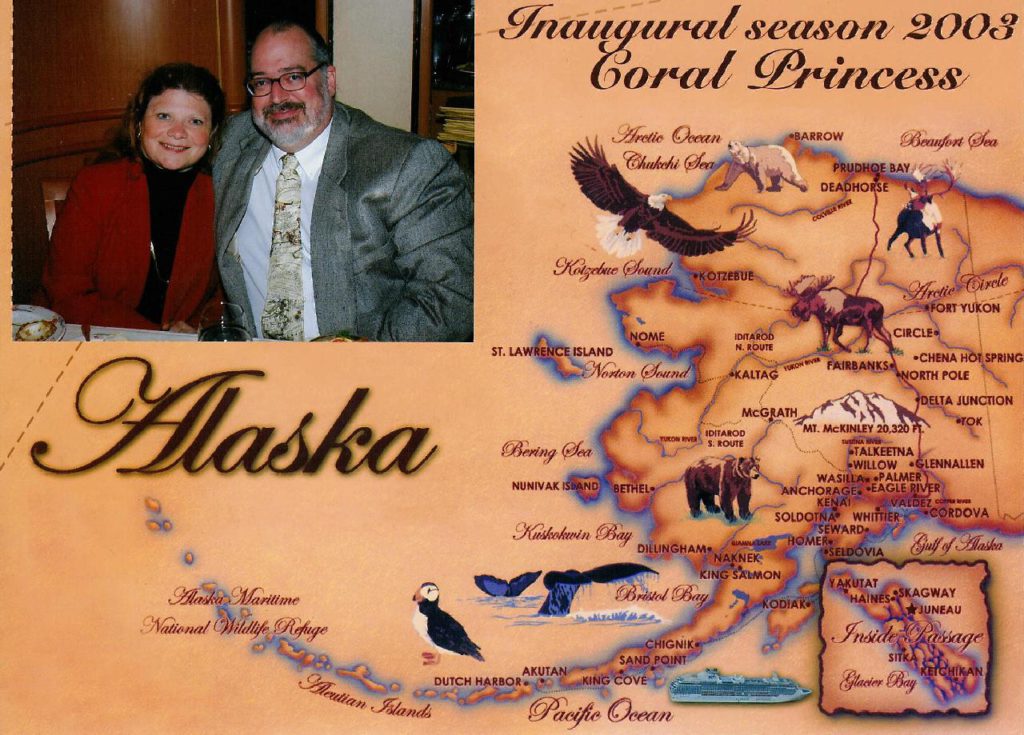
Friday, August 8, 2003 – College Fjord
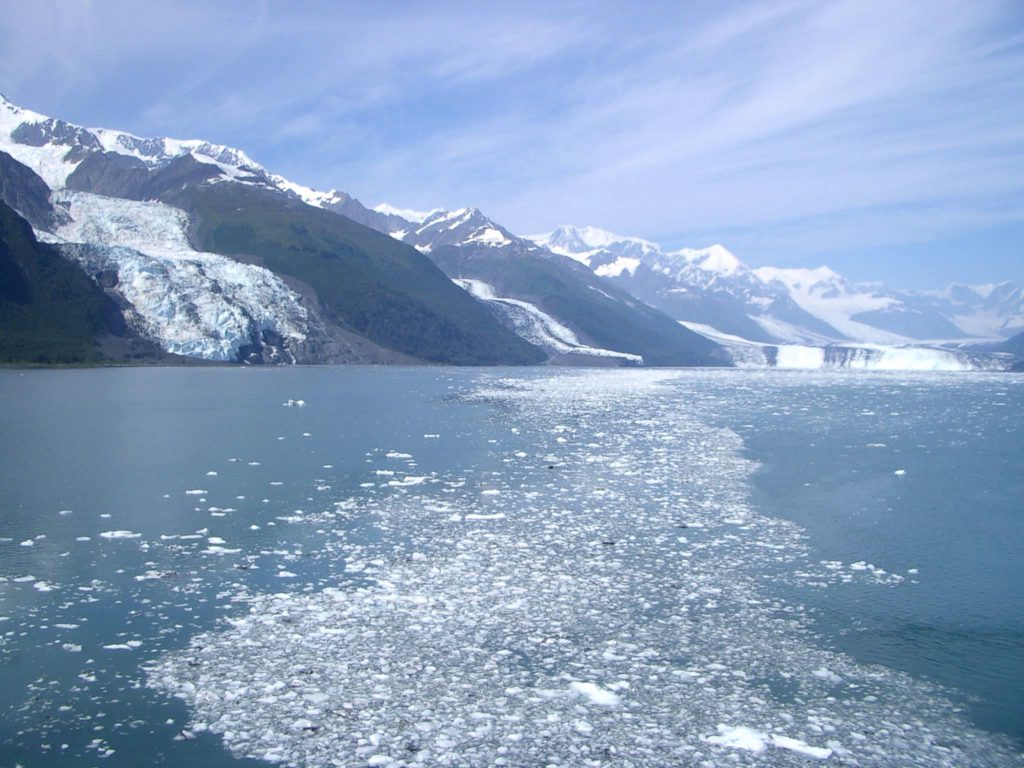
College Fjord is a narrow (three-mile-wide) channel that was explored in 1899 by a group of travelers which included John Muir. They named each of the dozen glaciers after eastern colleges: Harvard, Yale and so on.
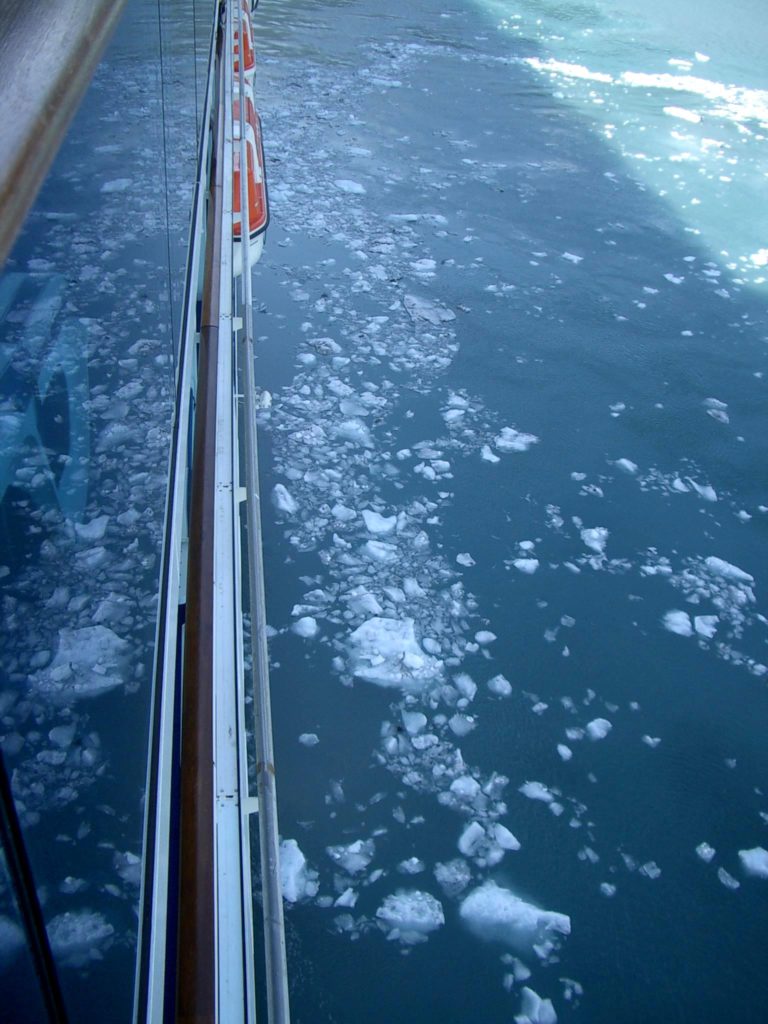
Again we were lucky, as this was the first cruise in a month that was able to see the glaciers. There was much more floating ice than in Glacier Bay. It made a strange crackling noise as the ship’s transverse propellers rotated us through it.
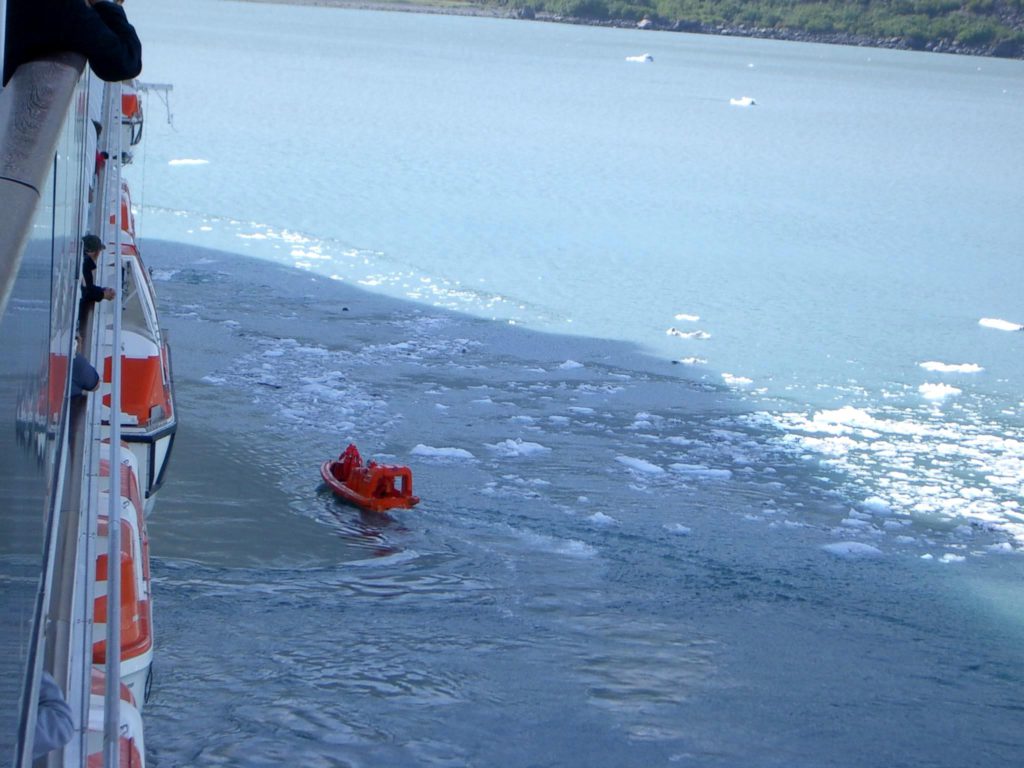
The ship’s photographer’s set off in a small orange rescue boat to take our picture against the icy backdrop.

That “little” berg that Dani’s is pointing at was about forty feet long.
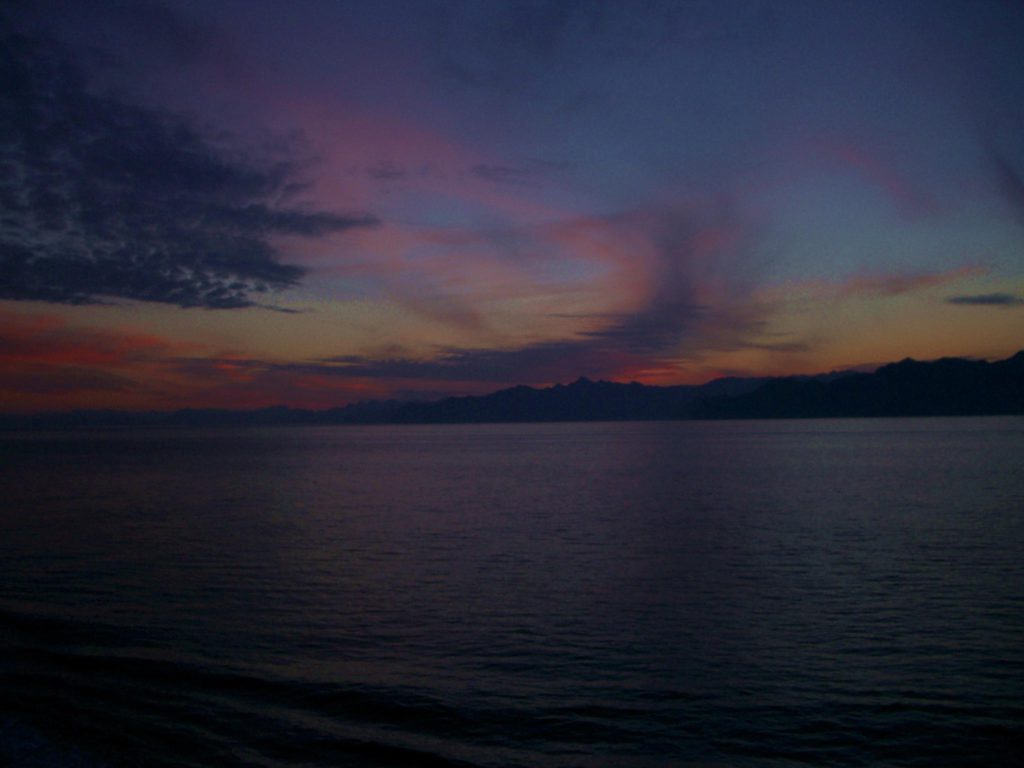
This picture of the sunset (in the northwest) was taken from our balcony at 10:30 pm.
Saturday, August 9, 2003 – Seward to Fairbanks
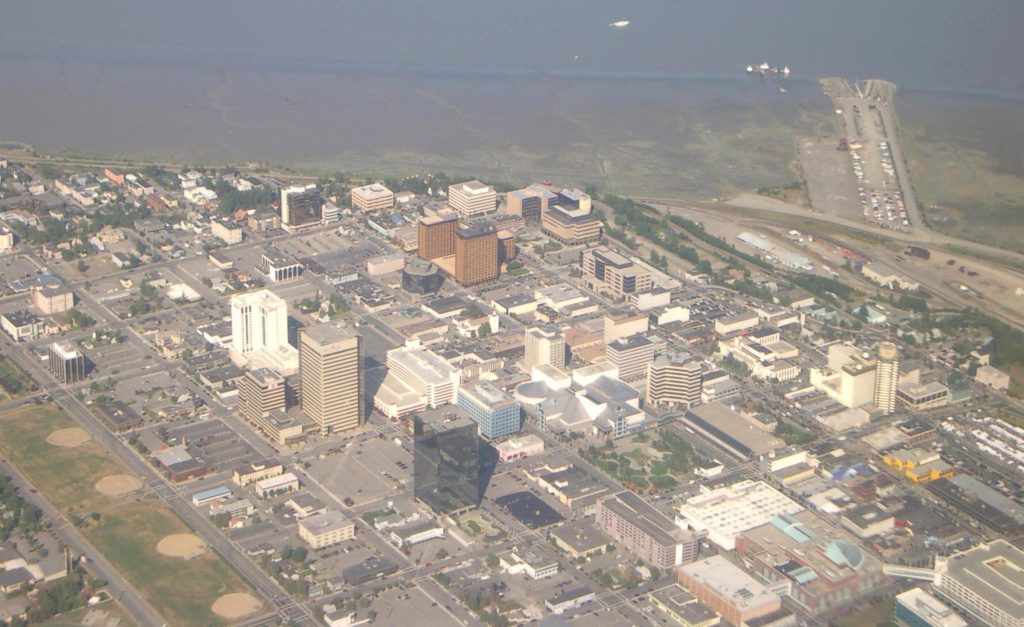
We left our beloved suite aboard the Coral Princess at 7am and boarded a coach at Seward for the three hour trip to Anchorage.
Our driver, Crystal, was a native Alaskan who grew up 40 miles to the north, in the only Alaskan farming community. Founded during the depression, it was a agricultural experiment that invited Minnesotans — including Crystal’s grandparents — to come to Alaska and homestead forty acres. Not many of the original families stayed, but those that weathered the minus 65 degree winters were rewarded with extraordinarily fertile land that, because of the long growing season, produces phenomenal crops, such as 100 pound cabbages.
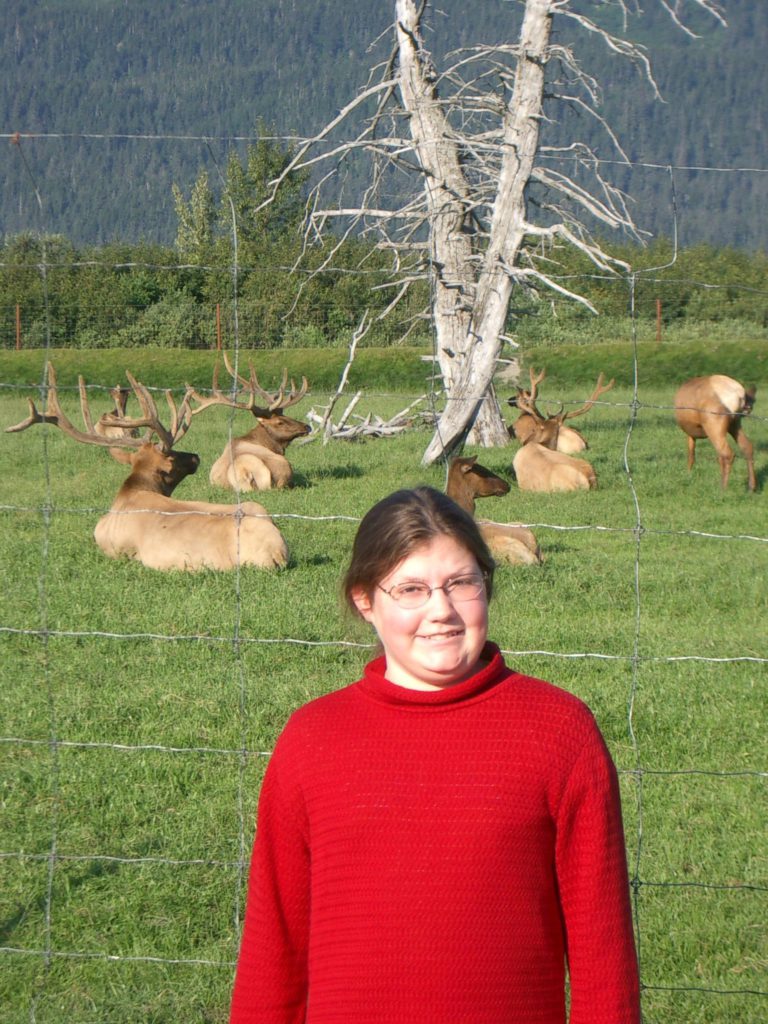
On our way across the Kenai Peninsula we stopped at the Arctic Wildlife Rescue facility, which rehabilitates injured and orphaned animals. We spent a pleasant hour watching moose, caribou, bears, and other animals before continuing on to Anchorage.
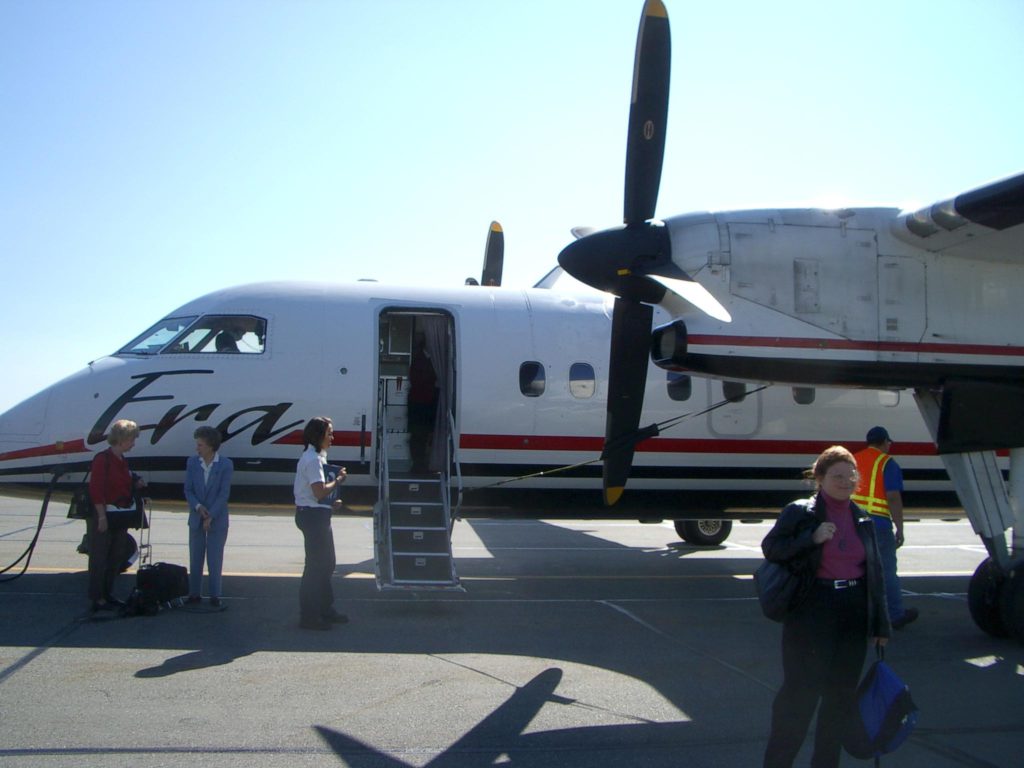
There we caught our charter deHavilland turbo prop along with our twenty fellow travelers. It was a very comfortable plan, and the one hour flight to Anchorage passed quickly.
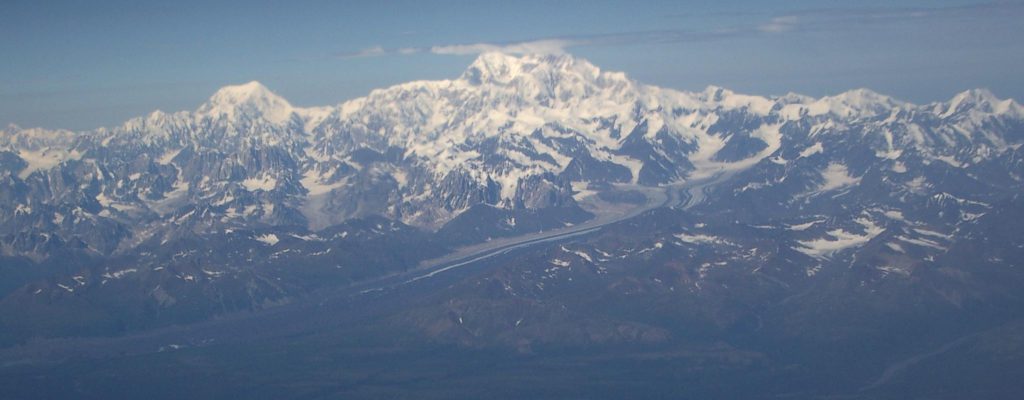
We were again blessed with very clear weather. Denali — or Mount McKinley, as it is also known — is the tallest peak in North America, at over 20,000 feet. It has the reputation of nearly always being shrouded in clouds, but we could see it from 70 miles away, and it thrust dramatically from the landscape as we passed over it. Note the glacier flowing down its side. The terrain around Anchorage was surprisingly flat, green and lake-filled. In fact it looked exactly like Central Florida. As we approached Fairbanks the ground became mountainous, then leveled out into a plain covered with fir trees and oxbow rivers. There was very little snow in Alaska this past winter, and it is 75 degrees in Fairbanks today. Oddly, the mild winter has greatly reduced the mosquitoes — unofficially known as the Alaskan state bird — because there were no pools of snow melt for them to lay eggs in.
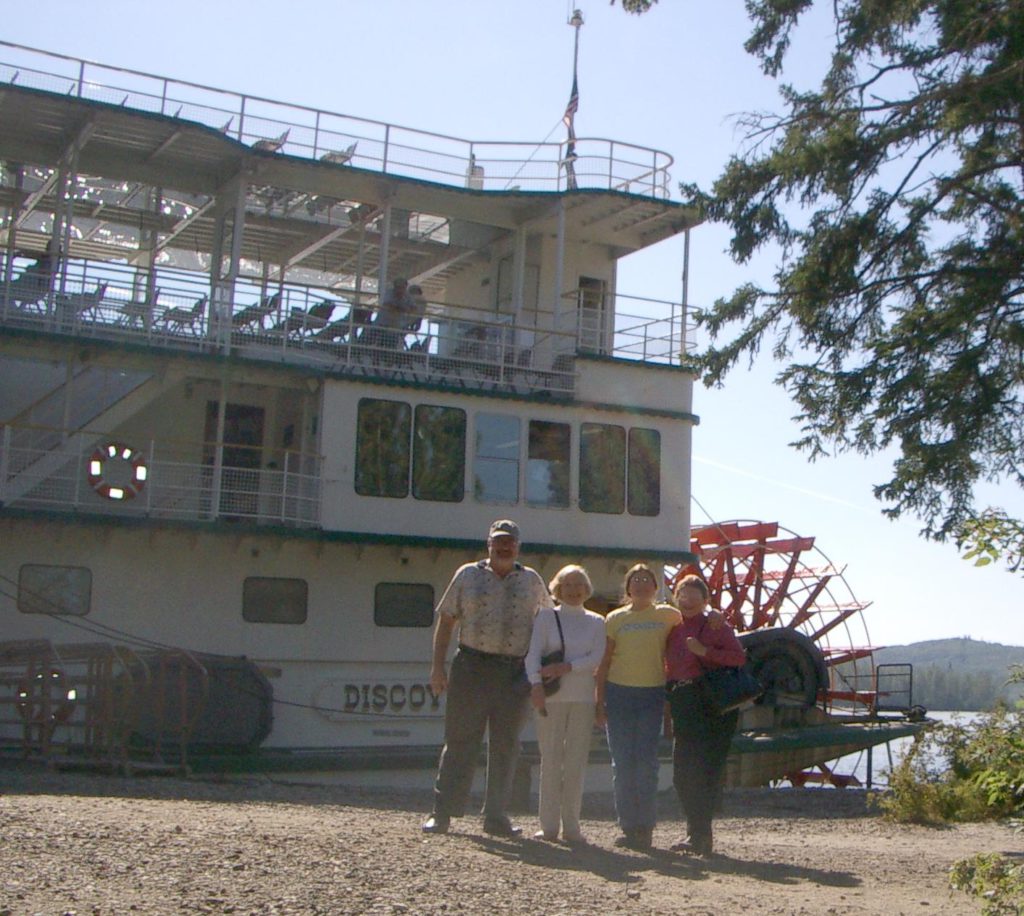
In Fairbanks we took a two-minute bus ride from the airport to the Riverboat Discovery III. I expected this four-hour riverboat excursion to be a hokey tourist fiasco, and a way to stall us until our rooms were ready, but it turned out to be the highlight of the day. The family-run operation is very professional, and is far more than a riverboat ride. Along the way we watched a prop plane take off and land in about 200 feet (1 in 60 Alaskans holds a pilot’s license), interviewed workers at a husky training camp, and learned how to smoke salmon from an Athabascan native.
These presentations were incredibly professional. The boat stopped at each location and the MC — who was on live video broadcast to all for decks — could talk seamlessly with people on the shore wearing radio mikes. Several roving cameras focused in on the action onshore and were edited into the video feed in real-time. A top notch production.
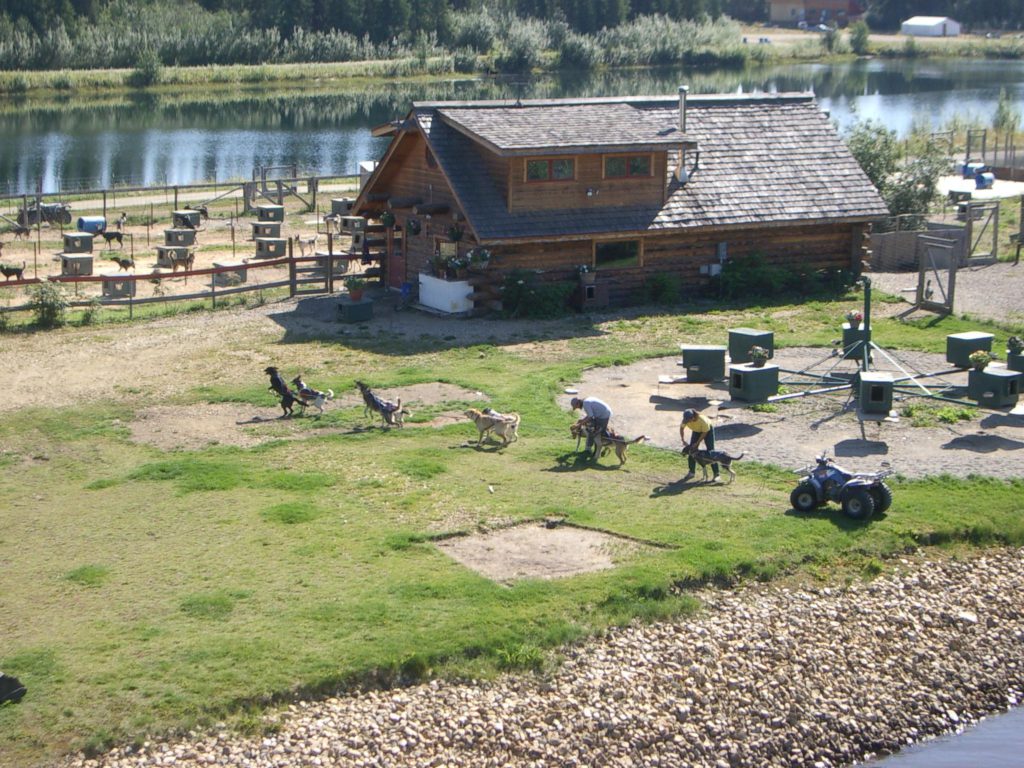
At the husky training camp — owned by Susan Butcher, winner of four Iditarods — we were amazed at the dogs’ enthusiasm as they were hitched to a four-wheeler for a one kilometer race around the lake. (The Iditarod is a bit longer — Fairbanks to Nome, over 1000 km. ) In the photo you can see the lead dogs leaping, trying to “break free” their pretend sled.
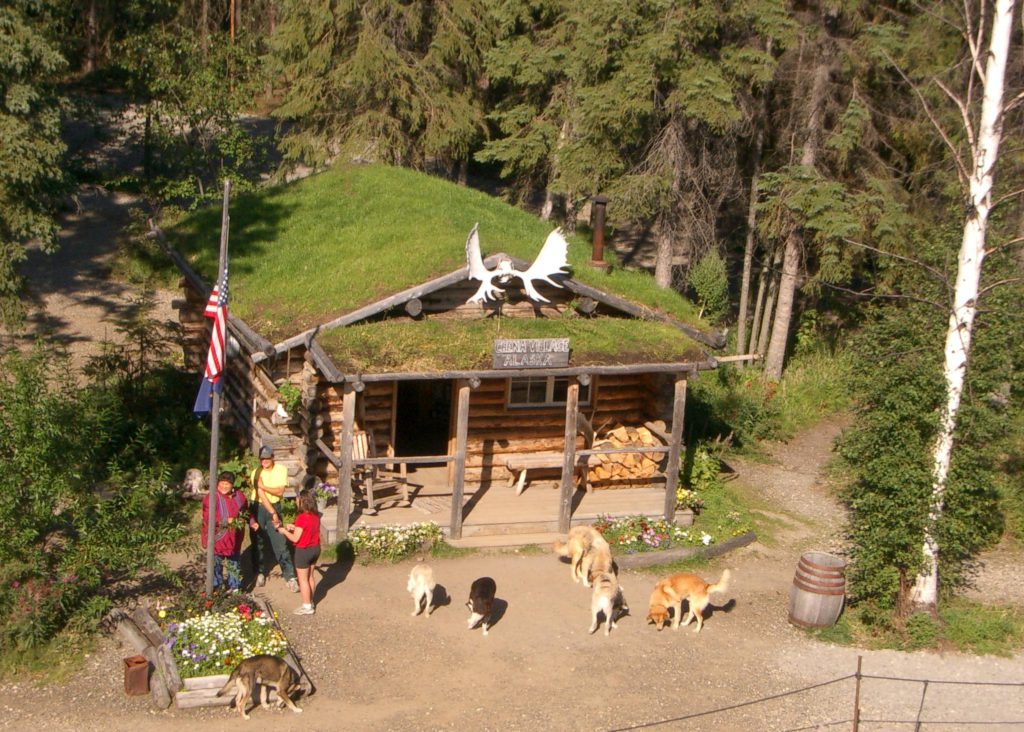
On the way back we stopped at Chena Village, a recreation of several periods in Native American history, where we learned about hunting techniques, animal hides and bead work. We also got to visit with some of the huskies again. We checked into the Fairbanks Princess Lodge, a pleasant accommodation similar to some of the new National Parks lodges.
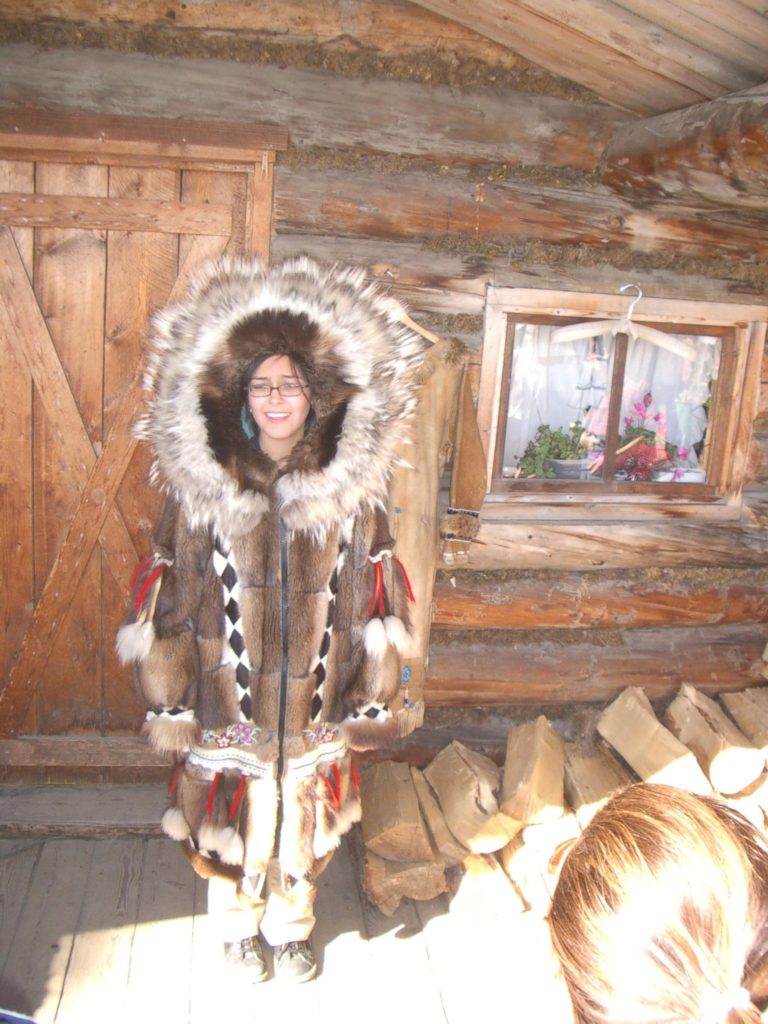
Dinner was a bit of a fiasco. Our waiter, Stephen, had apparently never actually dined in a restaurant in his life. He had trouble with concepts such as removing plates before serving new ones, and was unaware of the meaning of such exotic words as “Perrier”. The manager must have been aware of the problem(s), because without our showing the slightest irritation we were delivered a free bottle of wine — which we almost had to demonstrate how to open.
As I write this it is going on 11 pm, and it’s still bright daylight outside. Time to pull the blackout drapes.
Sunday, August 10th – Denali
The Midnight Sun Express pulled out of Fairbanks at 8:15 am. For the first hour we passed through tall birches where the ground was soft and stunted black spruce struggling to grow above permafrost. Our Ultradome car’s ceiling was almost entirely glass and our vantage form the second floor was glorious. We could also step out onto the open observation platform at the rear of the train for some fresh air (75 degrees and clear again today). Downstairs we had a glorious breakfast of pancakes, eggs, and breakfast burritos(!)Gradually the terrain became mountainous, and the train followed a raging, silt-filled river up into Denali National Park. We passed white water rafts and kayaks . At noon we arrived at the Denali Princess Wilderness Lodge. Our room is on the second floor of a log structure, perched above a bend in the Nenana River. Our trip included a four hours natural history tour on a school bus, but since we’ll be on a bus from 8 to 5 tomorrow, we all decided to skip it. We enjoyed the ambiance of the river and view of the national park, napped, and had an early dinner in the lodge’s casual dining room.
In retropspect our visit to Denali was somewhat pointless, since you can’t see the peak from the lodge or its environs (I guess that’s what the Princess Mt. McKinley lodge is for) and we’d already seen it from the air, anyway. I suppose for train buffs it was worth it to take the Midnight Sun Express. It’s not the most efficient transport though — if we’d taken it all the way to Anchorage it would have been a twelve hour trip. We did the reverse by deHavilland yesterday in only one hour.
Monday, August 11, 2003 – Denali to Copper River
Today we had a long bus ride over unpaved road from Denali to Copper River. Fortunately it took much less than the advertised 10 hours, but we were still on the bus from 8am to 3pm except for a few rest stops. This was our first overcast day, with a few raindrops keeping the temperature below 70 all day.
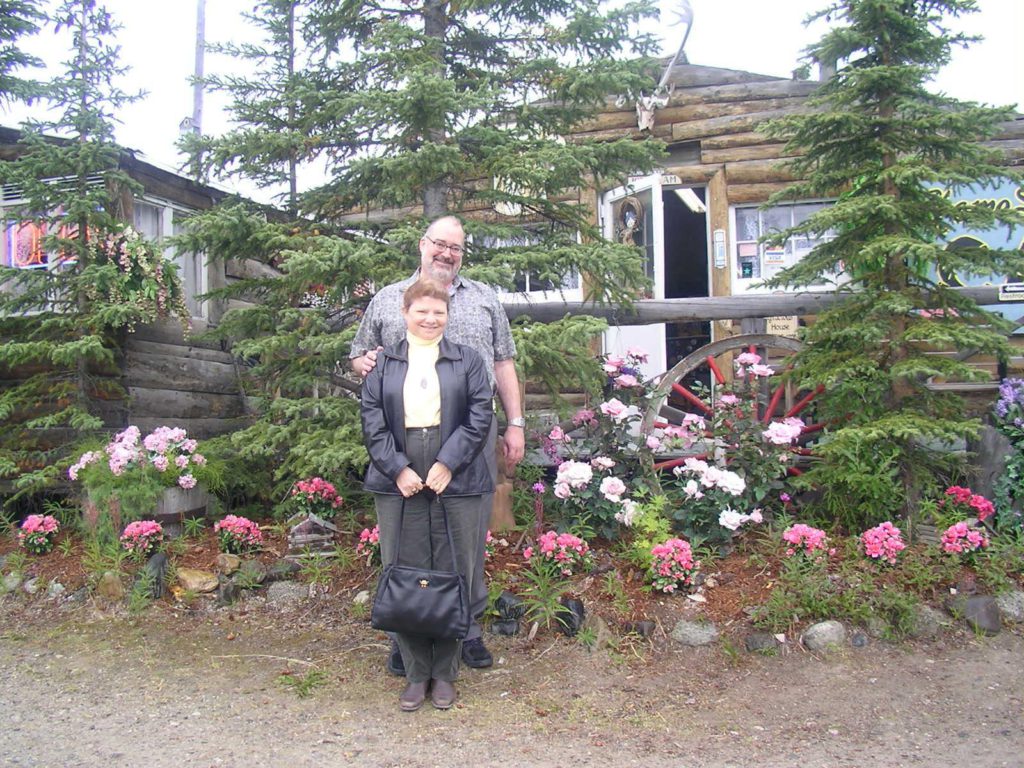
The road was a bit monotonous. It passed through rolling hills of stunted black spruce and crossed many rivers; the Alaska range was often visible in the distance. The only noteworthy event was when a moose ambled across the road in front of us. Our first rest stop was the rather funky Gracious House, a lodging, cafe, bar and gift shop built mostly from army surplus Quonset huts. A strange army surplus cargo mover served as their marquee.
Lunch was at the Tangle River Inn — hot dogs $12 but that includes chips and a drink. Hey, this is the middle of nowhere. Even the electricity is from a generator. It was actually quite tasty.
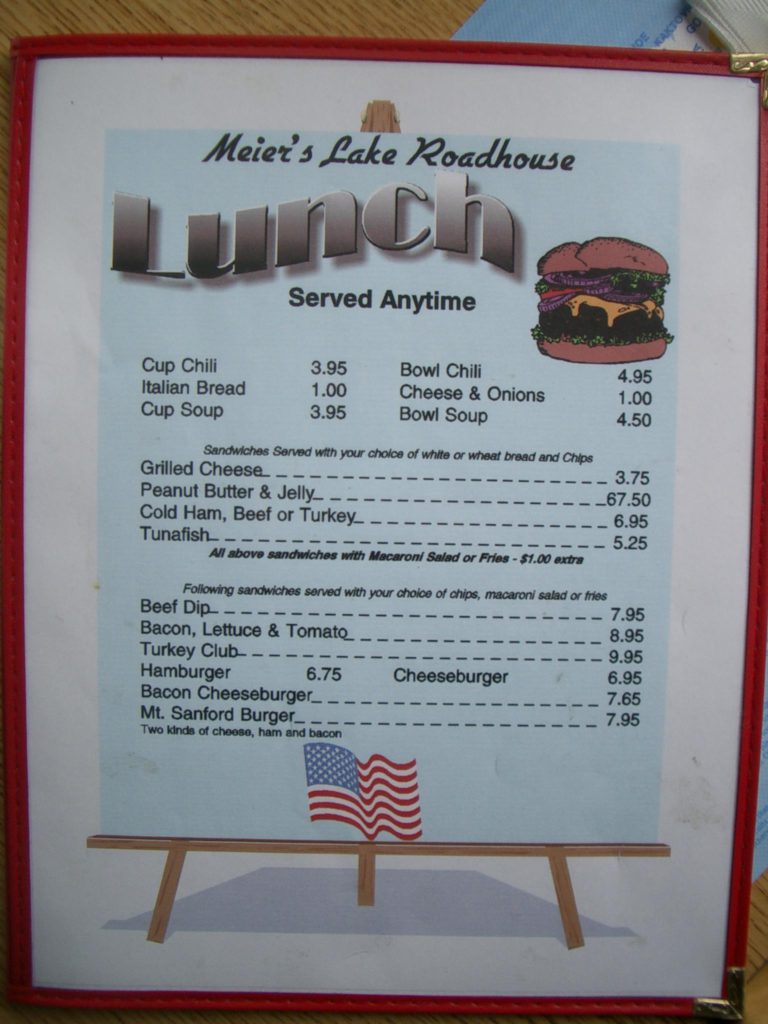
Our final rest stop was at Meier’s Lake Roadhouse. Best bring some serious money if you want that peanut butter sandwich (see menu).
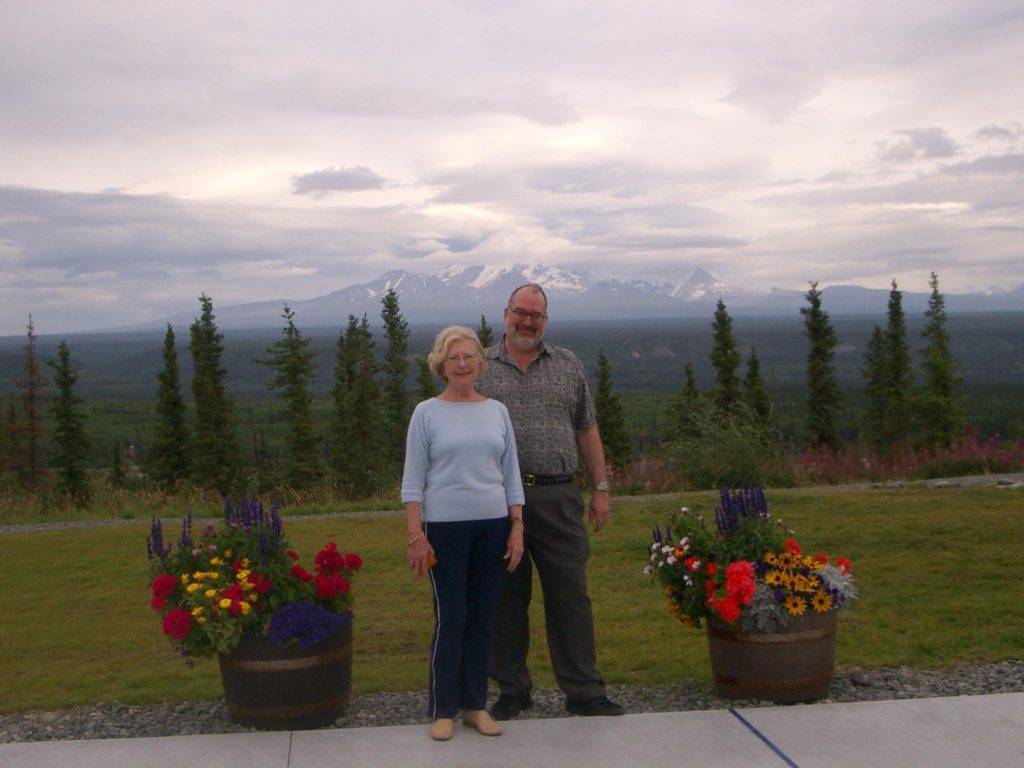
The Copper River Princess Wilderness Lodge is their newest and nicest facility. Opened in 2002 and still undiscovered by most travelers — just ten of us arrived at the empty hotel, although a few more joined us later in the evening — it sits on a hill overlooking the Klutina River.
Two story windows provide a breathtaking view of Mt. Wrangle, an active volcano.
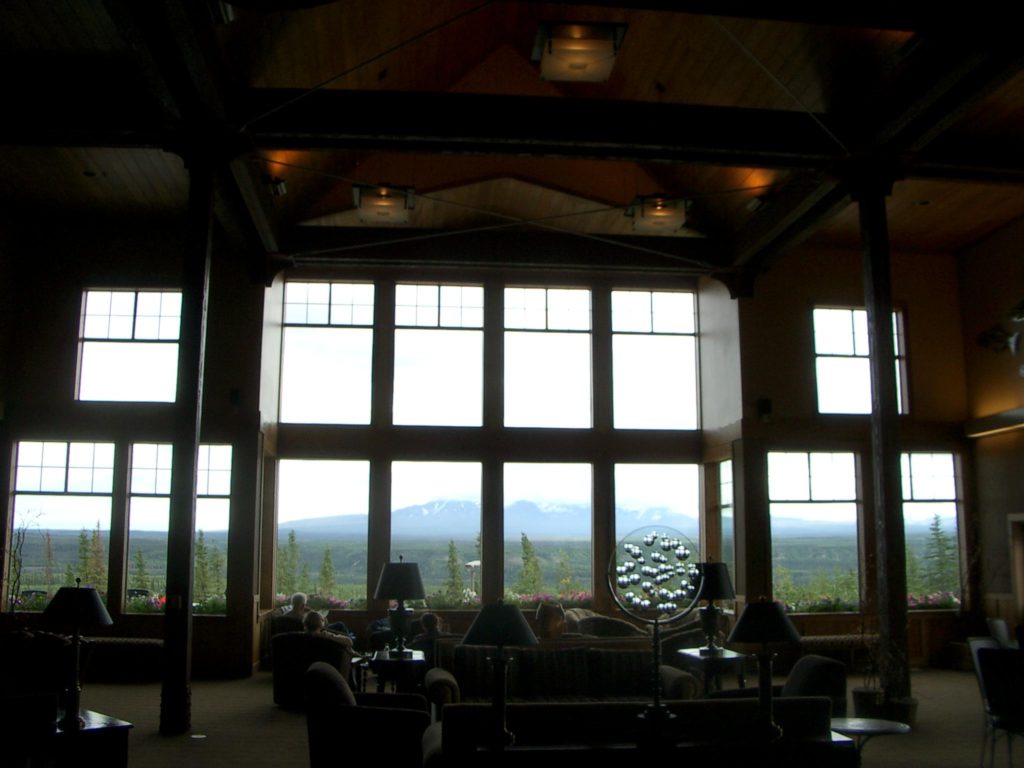
We had drinks in the bar — I particularly liked their mosquito lights — and an early dinner in the expansive dining room.
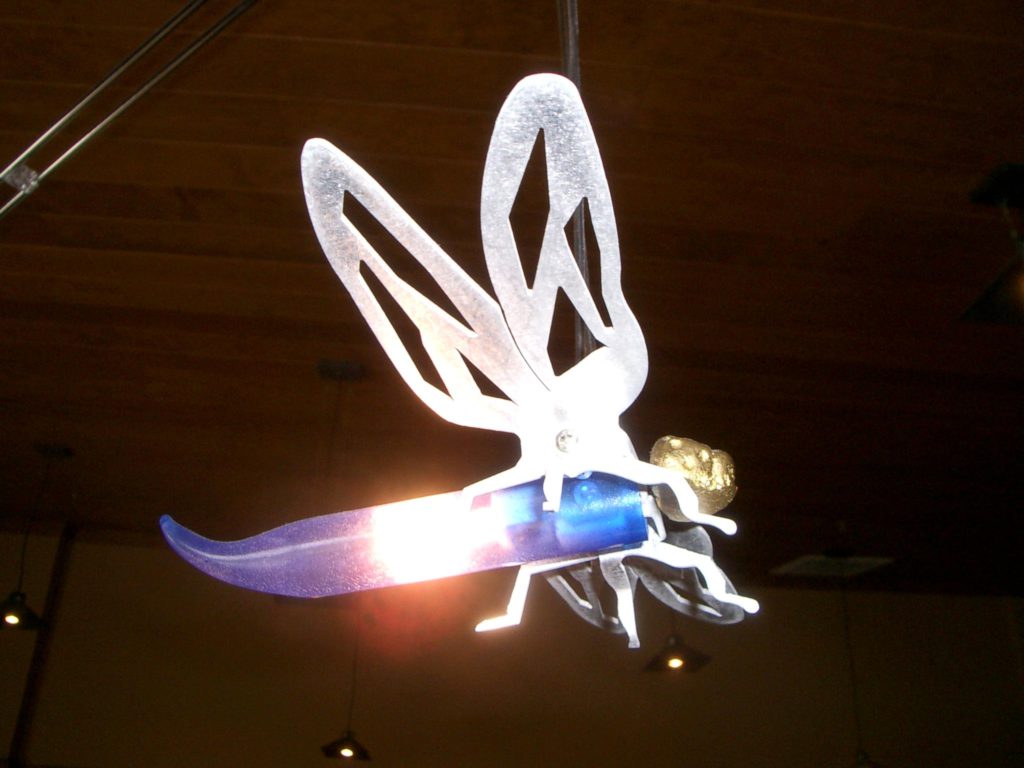
Tuesday, August 12, 2003Copper River
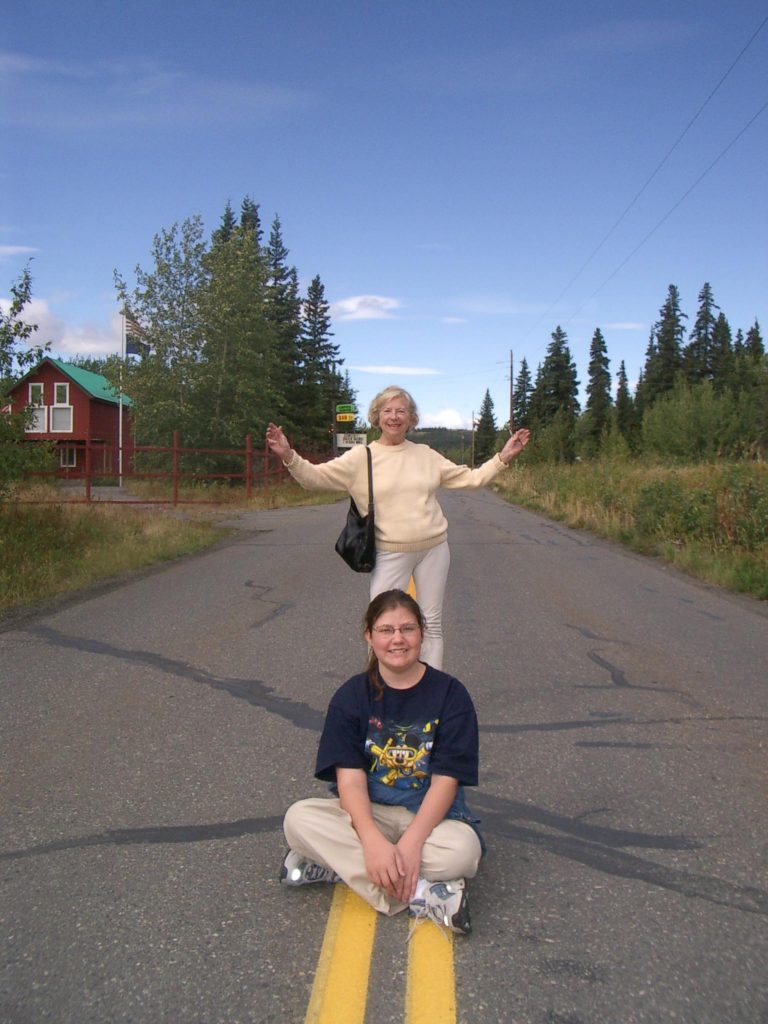
We had a nearly private hotel today. A few groups came in yesterday afternoon, but by 8 am they were already gone, leaving the lodge to a dozen or fewer guests. The weather was pretty, at times blustery, with many clouds, some of which looked threatening. But it remained nearly seventy, and no rain fell.
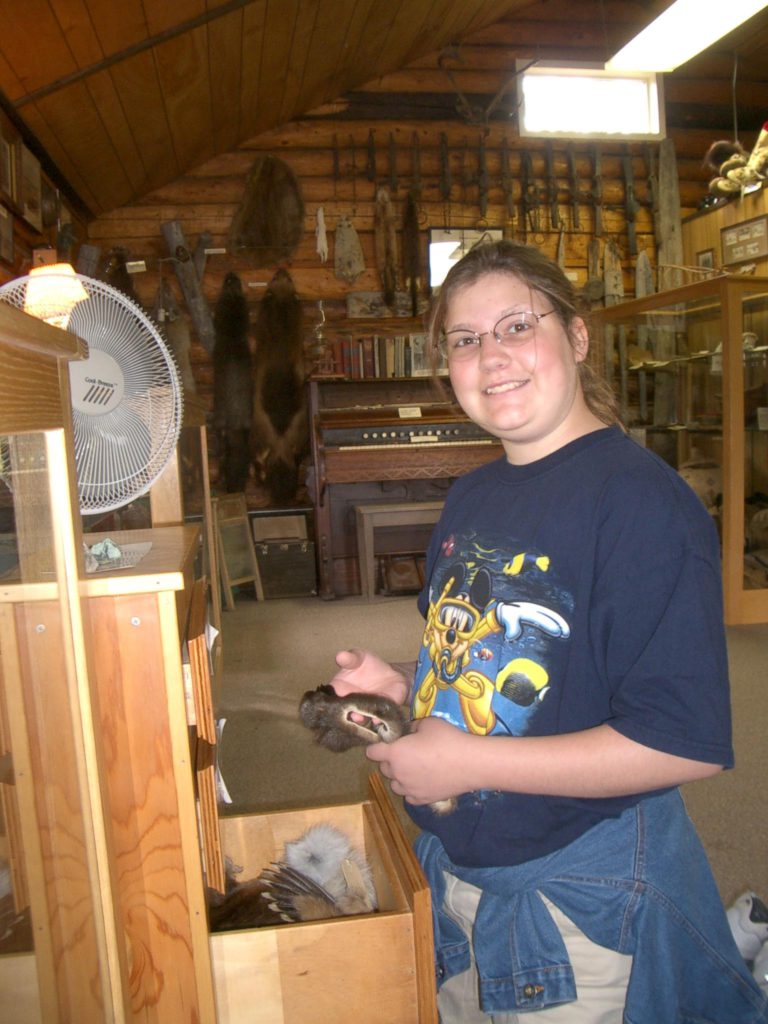
Dani, Pamela, and I rode the shuttle to Copper Center while Linda slept in. Copper Center was a staging point for first gold and later copper miners, but today it is a mere scattering of buildings.
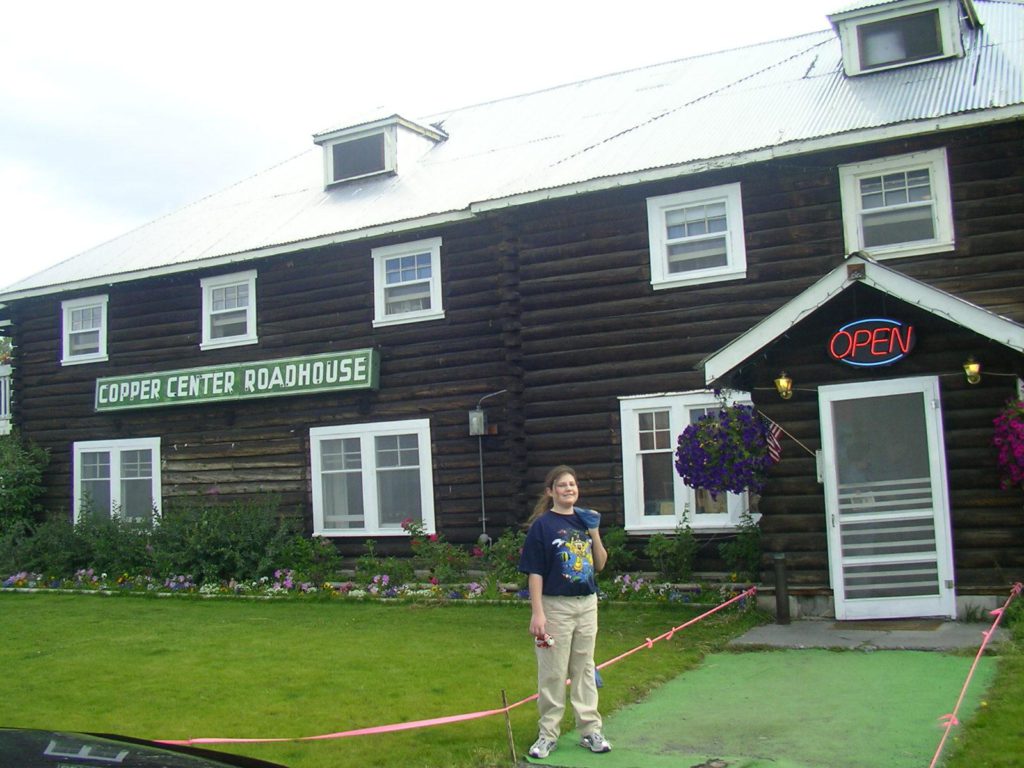
We poked around a one-room museum of mining artifacts, and visited a bar with an elaborate model railroad that ran inside and outside through two buildings, at times elevated on Plexiglas. Well, that’s about it for Copper Center.
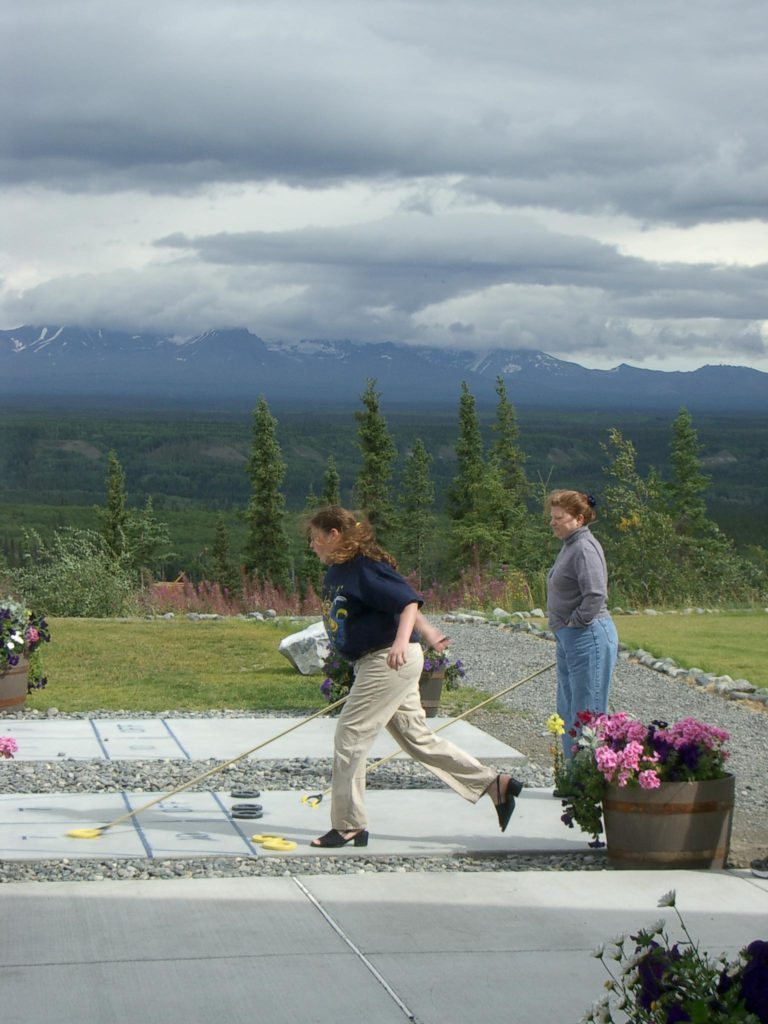
Back at the hotel we played some shuffleboard. In the afternoon I arranged for Dani, Linda and I go on a ninety-minute family rafting trip. After several visits to the outfitter’s desk I was told the time had change to 4pm.
At the appointed time we joined a couple from Washington State and a man from France in the lobby, where we were picked up by two rafters, Randy and John, and Buck, a 79-year-old character who seemed to have stepped straight out of a Robert W. Service Poem. We climbed into a dilapidated van and started up 14 miles of what can only imaginatively be called a road.
To say that we were amazed that the van didn’t simply fall apart on the way up would be an understatement. On each right hand turn, clouds of dust poured in through the two inch gap between sliding door and sidewall, and the few fixtures still attached rattled on every rock and pothole. Since the road was comprised of nothing but rocks and potholes, this was a lot of rattling.
Along the way we learned that the Klutina River is the third fastest in North America, an can travel at up top 15 miles per hour. It’s a Level 3 river, meaning you can survive it in a raft if you remember to steer. The van climbed 2400 feet, then descended only a few hundred to join the river at the only accessible spot for miles.
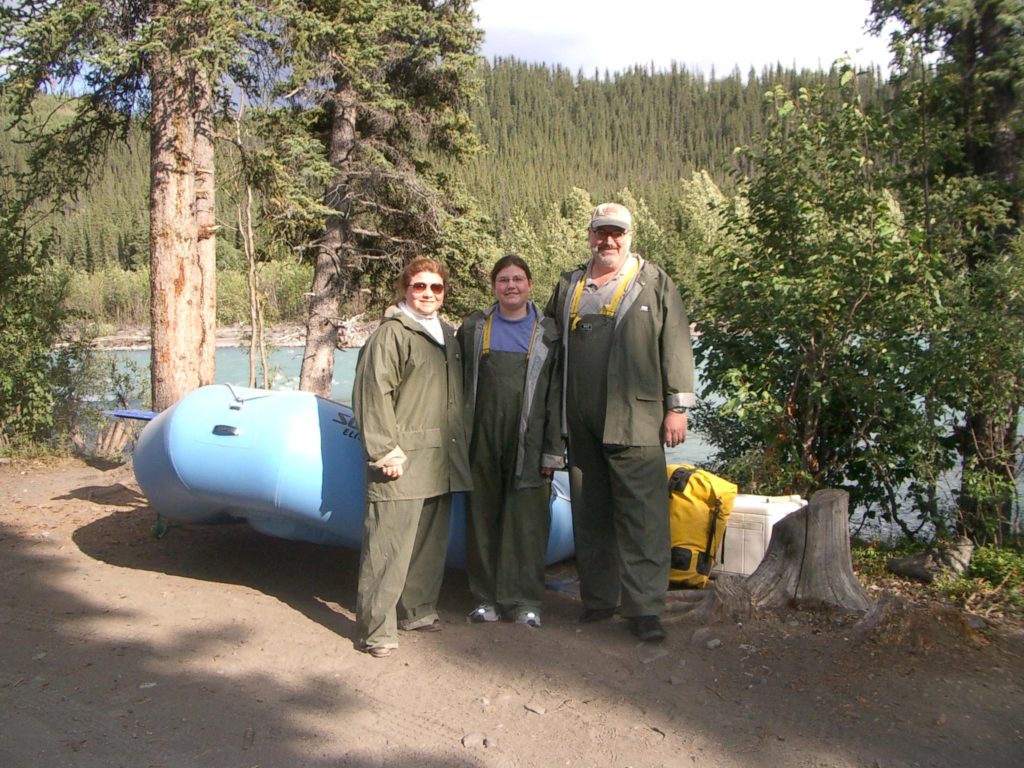
While the rafters unloaded two rafts from the trailer we donned rubber overalls, jackets, boots and life preservers and received instructions on what to do if we fell into the 38-degree water — basically, die of hypothermia unless we were fortunate enough to drown or be bashed to pieces on a rock. It was near the end of this explanation. as Buck drove away to meet us down river, that it dawned on me: we were on the wrong tour. This wasn’t the 90-minute family float trip, it was the full-fledged four-hour white water rafting trip. That explained all the, er, white water.
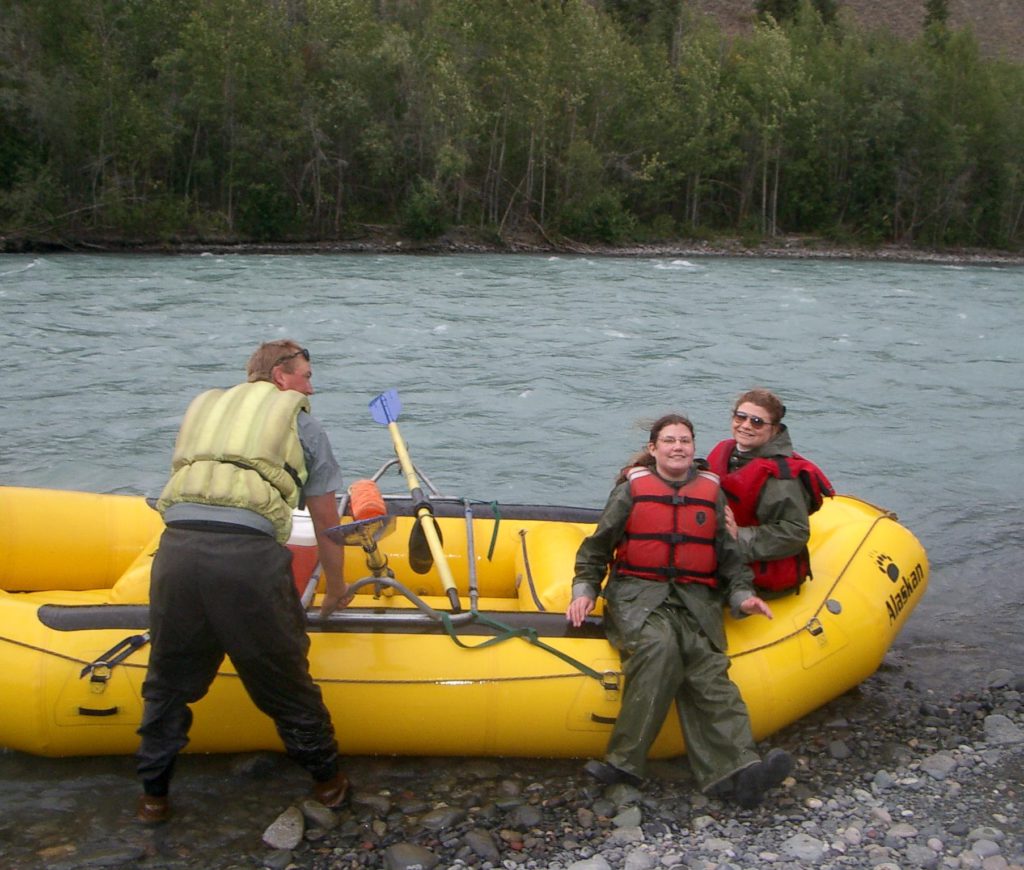
We piled into our raft — Dani and Linda in the front, me in the back, with John rowing, and the others in the second raft. White water proved to be Dani’s thing. Soon John was making sure she was on the leading edge of every wave. And his masterful steering assured that we hit every wave for 14 miles. Her delighted cackling could be heard in the other raft, which trailed several hundred feet behind. For two hours we splashed and twirled downstream. Along the way we saw dozens of bald eagles, either perched on trees or driftwood or buzzing the surface of the water. I also saw a huge salmon leaping out of the water on its way upstream. The geology along the way was spectacular, too, with the water cutting into steeps banks hundreds of feet high revealing many layers of strata. The sun kept us warm for most of our journey and the waterproof clothing did its job.
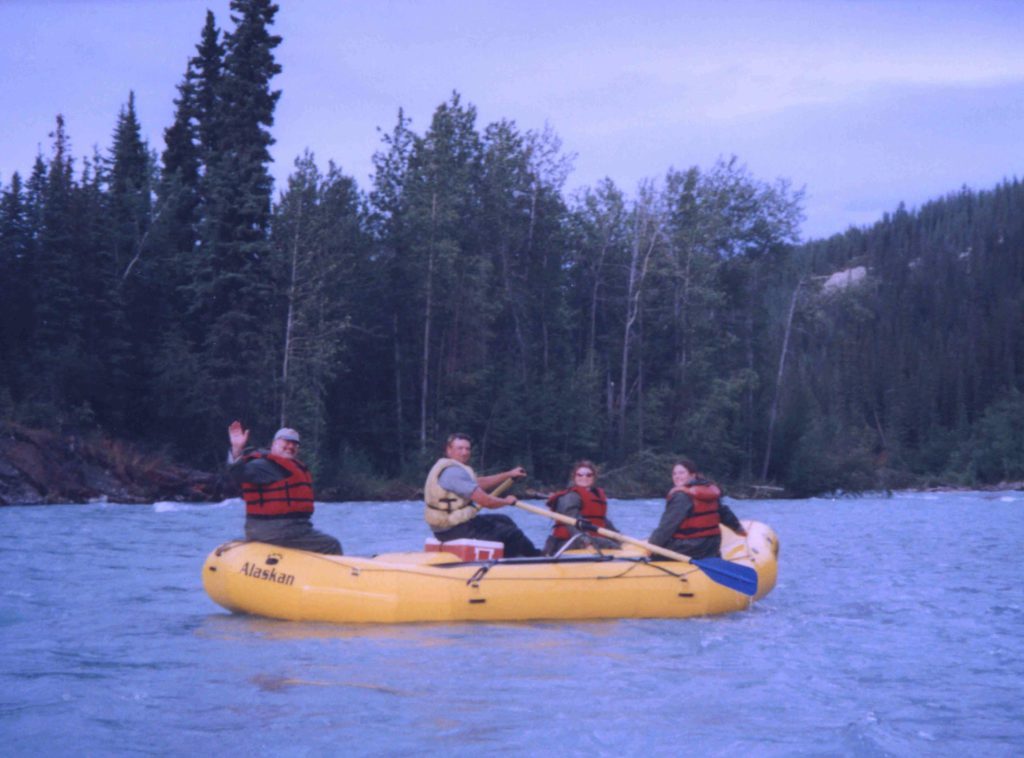
Only Dani’s collar and Linda’s sleeve were wet. It didn’t turn cold until we were getting out of the rafts near our lodge, and we gratefully climbed into the van to get out of the wind. A few minutes later we were back at the lodge where we were greeted by a worried Pamela, who wondered why our 90-minute trip had taken four hours. We assured her that a good time was had by all.
Wednesday, August 13, 2003 – Back to Anchorage
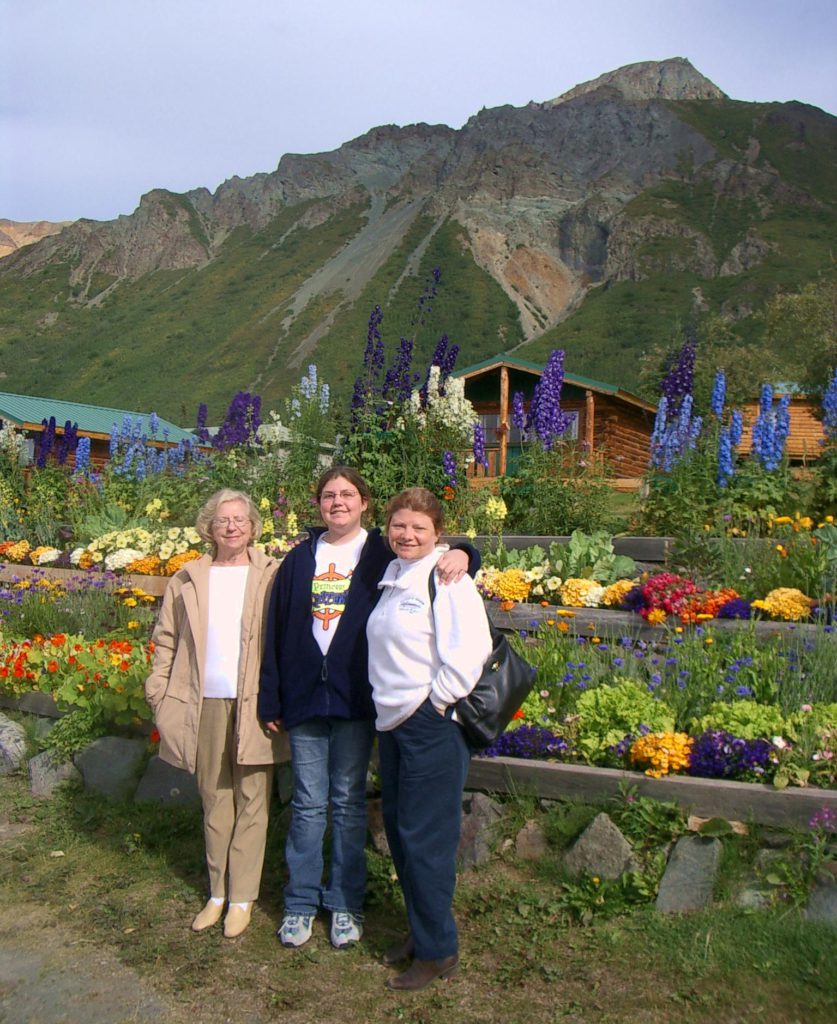
Our drive along the Glenn Highway from Copper Junction to Anchorage was beautiful. We skirted snow-covered mountains, stopping at the Sheep Mountain Lodge for an early lunch of soup and sour dough bread – check out those flowers behind us – 18 hour days are good for something!In the early afternoon we passed the Matanuska Glacier, an unusual formation of ice that travels one foot per day down an otherwise ice-free valley. By mid afternoon we had reached our hotel in anchorage, The Captain Cook. It’s a nice high-rise in an otherwise unattractive city. Captain Cook led an amazing life, circumnavigating the globe three times, exploring from the artic to antarctic, and discovering Australia and Hawaii in the process. Wherever he went he made charts and took soundings. Many of his charts are still in use. Cook explored the waters around Anchorage in 1778, naming them Turnagain Arm because he was once again forced to turn back in his quest for a Northwest passage. Today these tidal flats are known as Cook Inlet.
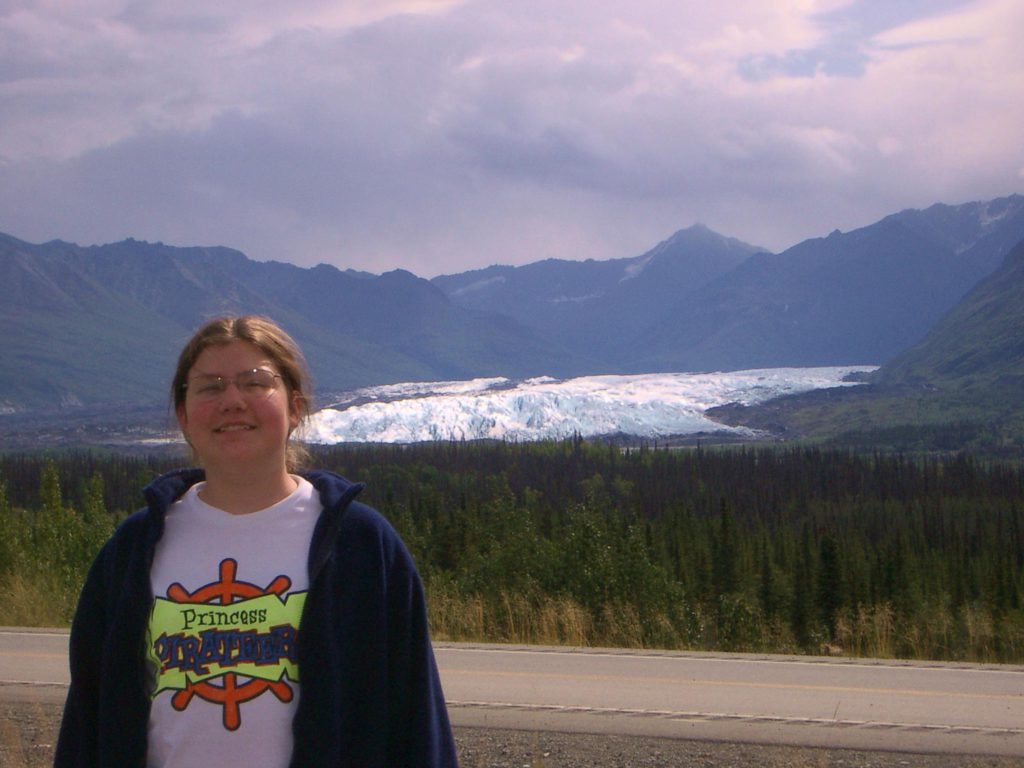
We had a fabulous dinner across the street from the hotel at The Corsair: Escargot, Caesar Salad made tableside, Chateaubriand, Bananas Foster, and real Café Diablo made the way it used to be before the insurance companies got in the act: by pouring flaming brandy down intertwined clove-studded orange and lemon peels whilst setting the tablecloth and various other parts of the restaurant on fire. Yum.
Thursday, August 14, 2003Anchorage
A final day in Alaska was a quiet one, spent walking around Anchorage, my nominee for ugliest city in the United States. It was easy to see where hundreds of feet of the city fell into the tidewater flats during the 1964 Good Friday earthquake, which registered 9. 2 on the Richter Scale — the strongest quake ever recorded in North America. I remember, as an eight-year-old, waiting for the resultant to Tsunami to travel down the coast of California, where it killed 24 people. Amazingly, only 115 died in Alaska, where nearly every building fell down. The destruction caused by the quake necessitated the rebuilding the entire city of Anchorage. Unfortunately for Anchorage, 1964 did not represent a high point in American architecture.
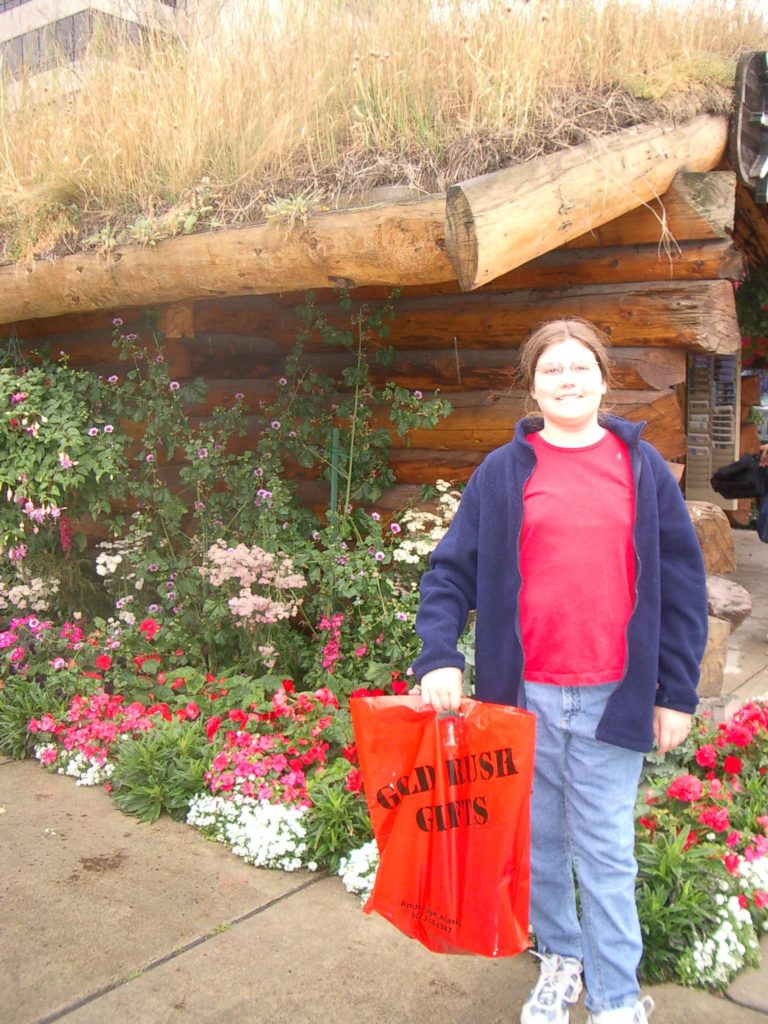
We are constantly amazed by the beautiful flowers everywhere in Alaska. They line the street in hanging baskets, window boxes and planters. The long hours of daylight work wonders. It was a little drizzly today, but didn’t require an umbrella or even a jacket. Dani and Linda did some souvenir shopping while Pamela and I browsed the Cook Inlet Bookstore for used paperbacks.
Then Dani, Linda and I had lunch at La Mex, a local Mexican restaurant where a single appetizer platter filled us all up.
Afterwards we stopped at The Alaska Experience where we saw a well -filmed, deadly dull, 70mm, 180-degree, interminably long film about Alaska. The dialog, narrated by the guy who narrates every dull documentary you’ve ever seen, might as well have been arranged in random order, for the amount of sense the film made. It was followed by a documentary on the Alaska quake which inexplicably featured a lisping German geologist as host. The exhibits were considerably more interesting, including a working seismograph that went spastic if you jumped up and down.
On TV we watched in amusement as New York and most of the east coast were brought to a standstill by a power outage. I don’t think it would have much effect on Alaska, at least not in summer. Remembering the last such outage, 25 years ago, when New Yorkers couldn’t watch TV for a night, I guess we’ll be seeing a lot of babies come May 14th.
Dinner was at the Snow Goose, a restaurant overlooking the tidewater flats. Tonight we pack for an early flight back to reality tomorrow. It’s been a marvelous trip, with good friends, good scenery, good food and good activities.
Alaska was full of surprises, not least of which was that we never used any of our warm clothing. It’s hard for us to imagine what it must be like to live her in winter, though, when the temperatures are routinely below zero. But people get used to it. The full measure of this is a line from the Fairbanks High School Student Rule Book:
“Students may not wear shorts to school if the temperature is less than minus 20 degrees. “
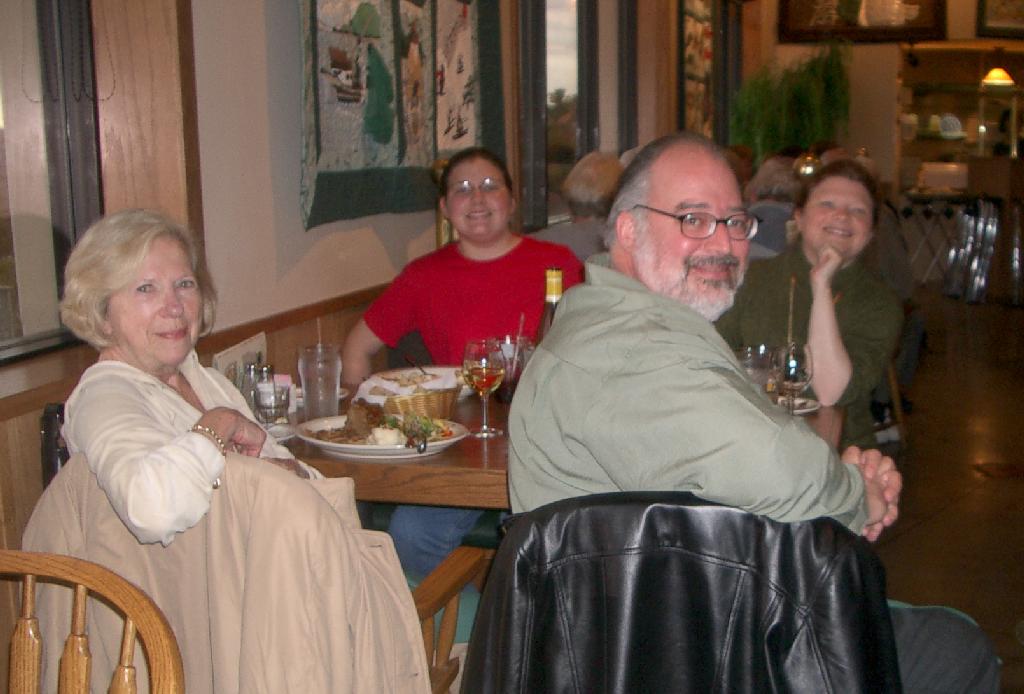
Tips for an Alaskan trip:
- Book a northbound cruise — a southbound one would be anti-climactic.
- Select a cabin on the starboard side so there’s always land to look at.
- Go with Princess for intimate large ships, great service and food, good kids’ activities and ceramics classes.
- See Creek Street in Ketchikan.
- Pan for gold authentically, on the river in Juneau.
- Take the helicopter/dogsled excursion, even though it’s really expensive.
- Ride the Riverboat Discovery if you go to Fairbanks.
- Skip Denali and the Midnight Sun Train unless you’re a real train freak.
- Don’t bother to spend any extra time in Anchorage – the best itinerary is probably to get off the cruise ship and go straight to the Copper River Princess Lodge for a few days, then to Fairbanks for a day and fly home from there.
- Don’t expect snow or cold weather, but rain and bugs are likely even if we didn’t have them.
- Bring binoculars and sunscreen.
Yosemite 2003
Monday
Monday morning 44 seventh and eight graders and 17 parents and teachers met at Orlando International for the start of our Blazing a Trail trip to Yosemite California. After a fairly quick check in we caught the flight to Dallas. The plane was nearly filled by our excited group. The flight went quickly. A few students tried their hand at an anagram contest. It’s hard to find long words in California.
There was time for a quick bite before catching the flight to Fresno. The scenery on this flight was great. We flew over Monument Valley and the Sierra Nevada mountains. I sat next to Laura, our travel agent from Go Travel, who was incredibly on top of things throughout the trip. We arrived in Fresno in the early afternoon and boarded two tour buses. I was in bus two, and spent most of the trip with a group of ten 7th grade girls, so most of my pictures are of this group. Our bus driver — who chauffeured us throughout the week — was one of the most interesting people I’ve ever met. He is a naturalist who has lived on all seven continents doing research. For example, he has summered in Antarctica twice, once doing geology research and once marine biology. He takes jobs wherever he goes to support himself. He’s also a pilot, fire fighter and a Teamster! There seemed to be no subject he wasn’t knowledgeable about. Sixteen years ago he came to Yosemite and got hooked, spending twelve years cataloging its very complex ecosystem. If you’re ever lost in the wilderness, he’s the guy to be with!
Our bus overheated on the first climb into the mountains and we stopped to remove some baffles that keep it warm during snow season. The rest of the trip was uneventful, and in two hours we arrived at. . . Tunnel view, the first spectacular view of the valley as you emerge from the nearly 1-mile-long tunnel. It’s nice to know that in this age of computer simulation and virtual reality, twelve-year olds can still be awed by this view. We drove though the valley, passing Bridal Veil falls and crossing the Merced river. At Yosemite Lodge we were assigned most — but to the dismay of a few unlucky guests, not all — of the Maple building. Our rooms had porches or balconies opening onto the surrounding fir trees. About five minutes after our arrival Billy got his finger smashed in a door and ended up at the emergency room, but he was a trooper, and was able to enjoy the rest of the trip.
Dinner was a buffet in the Garden Terrace.
Things were a bit exuberant that night, but eventually the time change caught up with even the boys.
Tuesday
Breakfast was in the food court, which has been considerably improved since Yosemite’s facility management passed from the Curry Company to Yosemite Concession Services. We planned the days activities in the lodge’s amphitheater. Mary Beth distributed some homemade trail mix and we split into six groups led by different guides.
Our small group headed for Yosemite Falls. The falls are enthusiastic, burgeoning with the spring thaw. The weather was warm and pleasant; by mid-morning it was in the sixties. Our bus driver called these “leverites”, because when you find one you “leave ‘er right” there. That water was snow 60 minutes ago, and it’s COLD! John Muir picked a lovely spot for his cabin. Talk about a room with a view. Some of this group made it to the Yosemite Falls lookout point. After a token effort we rejoined them on the way down. Everyone met up for lunch at the amphitheater, then set out on our afternoon activities. We learned about Yosemite’s complex geology which ahs been shaped by rivers, glaciers and a moraine. Then we watched a rock climbing demonstration and learned about the equipment the climbers use. And, of course, tried it ourselves.
Dinner was in the Lodge’s lovely Mountain Room. After dinner it began to drizzle, and we had a rainy walk to the elementary school for a presentation of John Muir Live. The students were extremely attentive as an actor — a ringer for Muir — recounted many of his adventures exploring the Sierras. Afterwards I think he was stunned by the detailed questions the students asked, and the deep knowledge they obviously had of the subject, right down to his OTHER dog’s name!
Imagine our surprise that night as we stepped from the school’s auditorium and discovered — IT WAS SNOWING! Dani was bouncing like a month-old puppy. We had expected a few flurries, but it settled in and snowed all night.
Wednesday
After breakfast we headed for the Mariposa Grove of sequoias, in the high country near the park exit. If it was snowing at 4000 feet in the valley, what would it be like at 6000 feet? Snowy. Our bus driver stopped at tunnel view to put on chains.
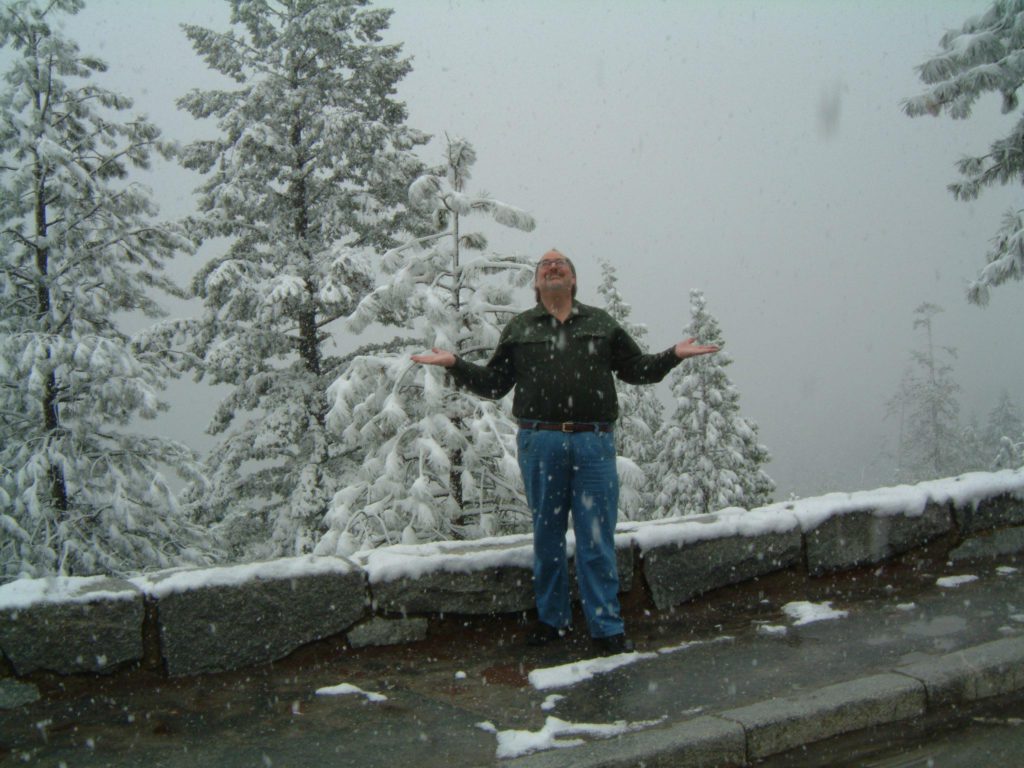
It’s a two-mile walk uphill to the Mariposa Grove. Needless to say, our little group didn’t make it, although most did.
But we did have fun along the way, making snow angels. . . . . . snow balls. . . . . . and snowmen. We also got to try snowshoes.
We had lunch at the Wawona Hotel. In the afternoon we visited the Wawona fire station and learned about fire fighting and prescribed burns. Some of the kids were cold and wet, but you should have seen how they revived after we took them up the mountain and handed them a can of burning petrol!
Wednesday evening while most of the group gathered at the Lodge for songs and stories (in lieu of the scheduled campfire) a few of us caught the shuttle to the Ahwahnee for dinner in their beautiful dining room. At night the dining room’s windows act like mirrors, reflecting the candlelight. We pointed out to the kids how over time the enormous sheets of glass have flowed, so that the windows are much thicker at the bottom than at the top.
Thursday
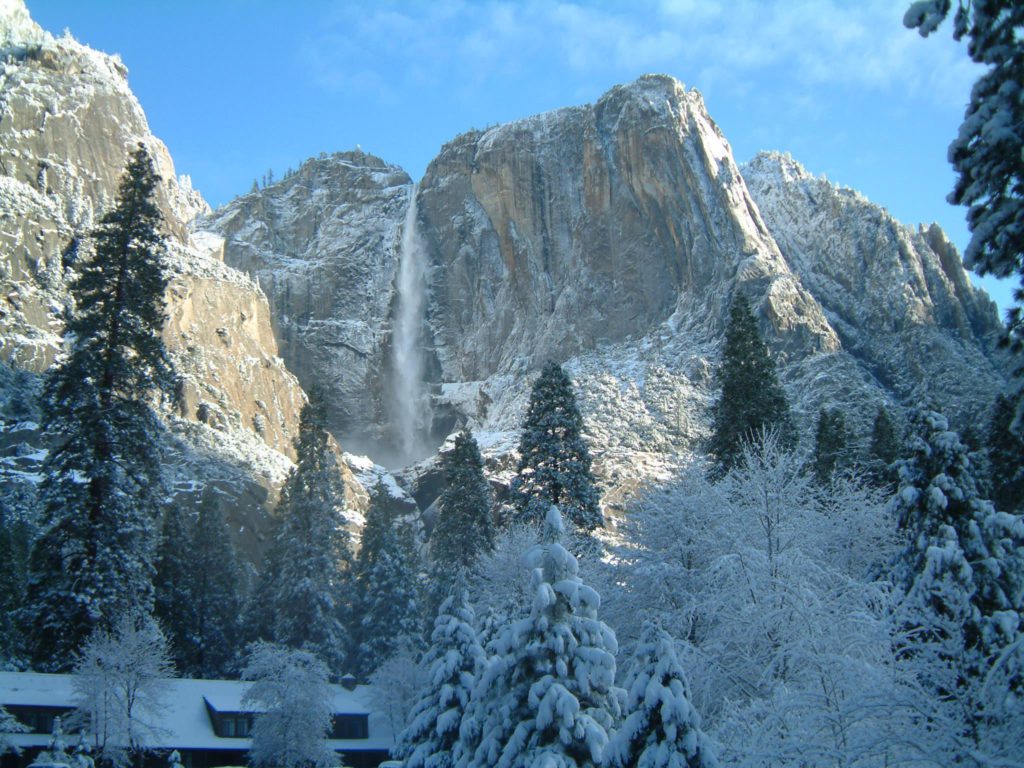
And what a view greeted us the next morning! After a night of snow, the clouds departed and we had bright blue sky and warm sunshine.
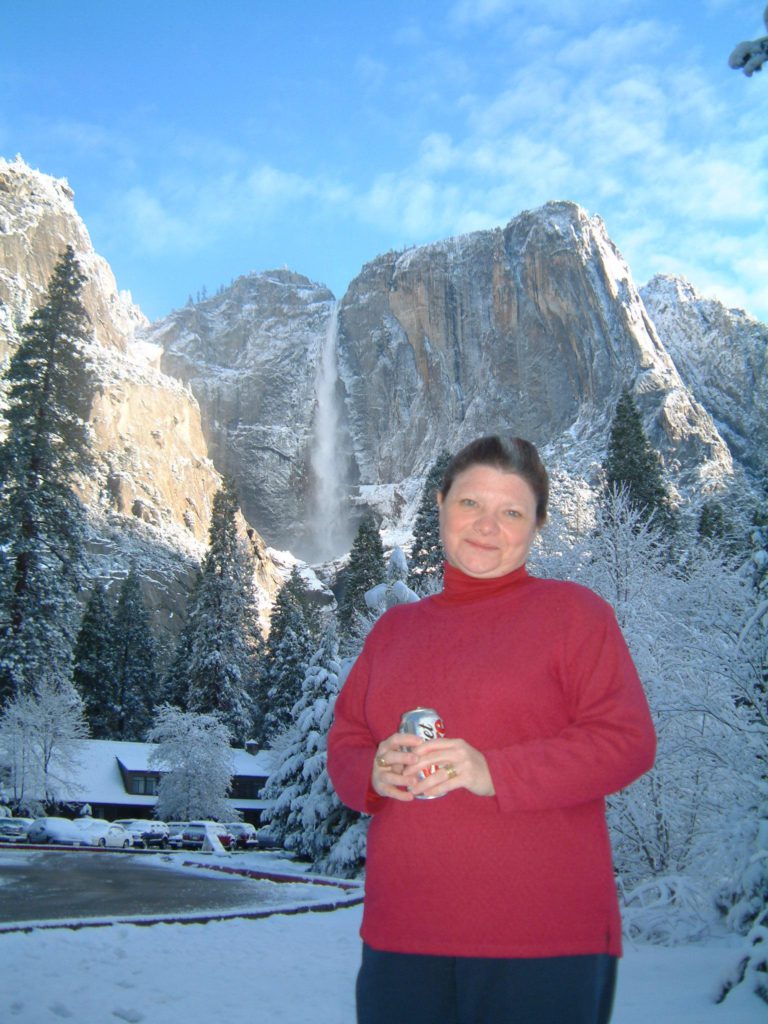
No, that’s not a painting behind Linda. There was snow everywhere! We walked past Yosemite Falls and saw that there was a slurry flowing down the river. It’s a fairly rare occurrence, when the water is super cooled coming over the falls, and freezes as it flows. It was getting warmer, and the trees were having fun with us, dropping unexpected clumps of slush as we passed underneath.
We learned the history of the Ahwahnee Hotel, built in 1927. Our guide really brought the period to life. Linda described what the fire fall looked like, as they pushed embers off the edge of 7000-foot Glacier point. They were still doing it during her first visit to Yosemite, in the 1960s. Outside we watched a coyote cross the meadow. We also saw many deer, squirrels and woodpeckers.
We walked to Curry Village for lunch, then caught a shuttle back to Yosemite Village for shopping. Behind the visitor center is a really interesting recreation of a Miwok village. This is an acorn granary. The acorns were a main staple of the Native Americans, but it was a lot of effort to make them edible. We took Dani’s picture in this same hut when she was little. In the afternoon we caught a shuttle back to the Lodge.
Hey! What happened to all the snow? It’s hard to believe the difference a few hours of sunlight made. Then it was back to the Ahwahnee for a delicious farewell dinner in the Solarium. The students performed their Ahwahneechee legends on the balcony. Jake was a hilarious master of ceremonies.
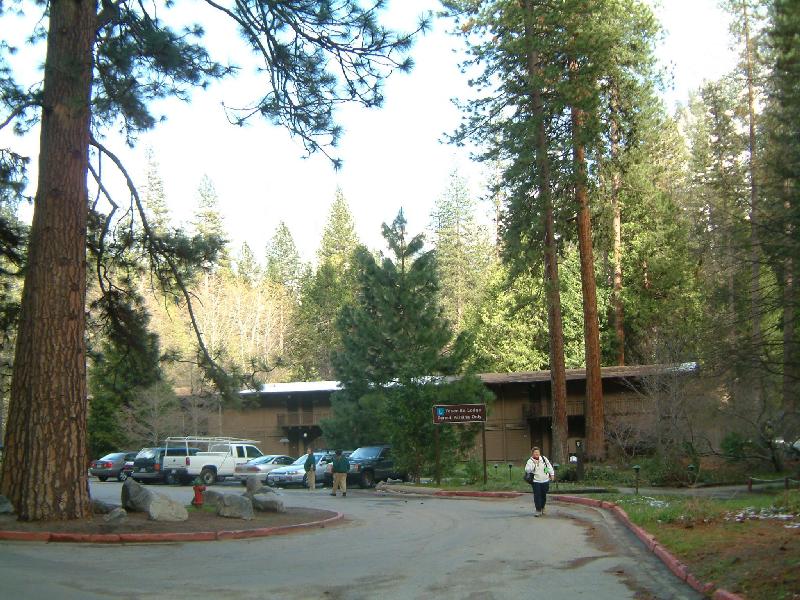
Afterwards the students presented their teachers with beautiful matted photos of the valley as a thank you, and the teachers recognized each student with individualized mementos of the trip.
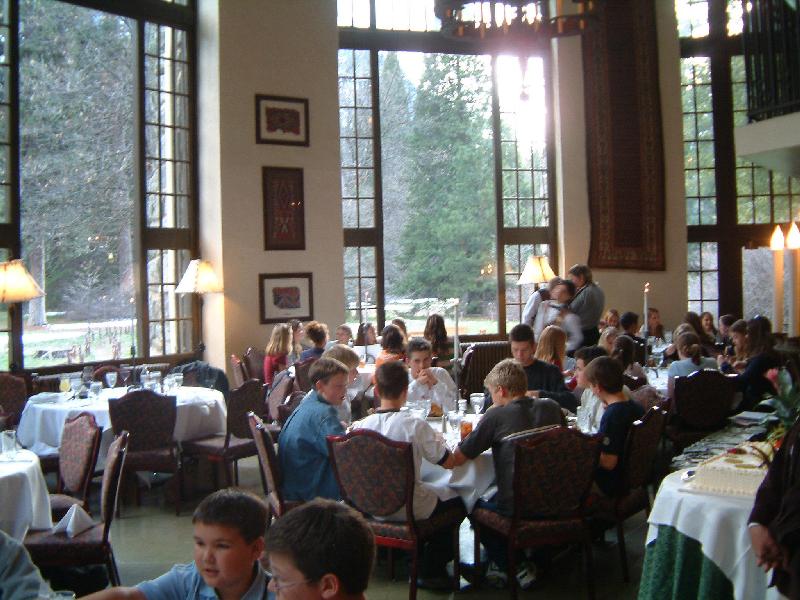
We gathered for a group shot of students…
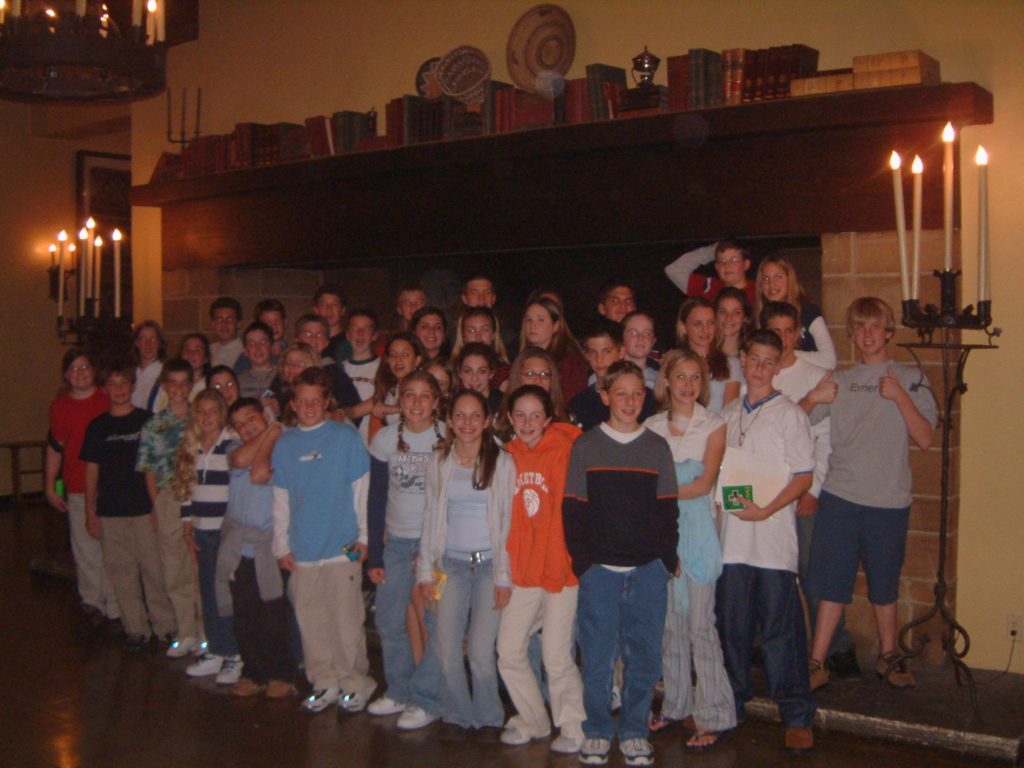
and parents, before departing for a late night bus ride to Fresno.
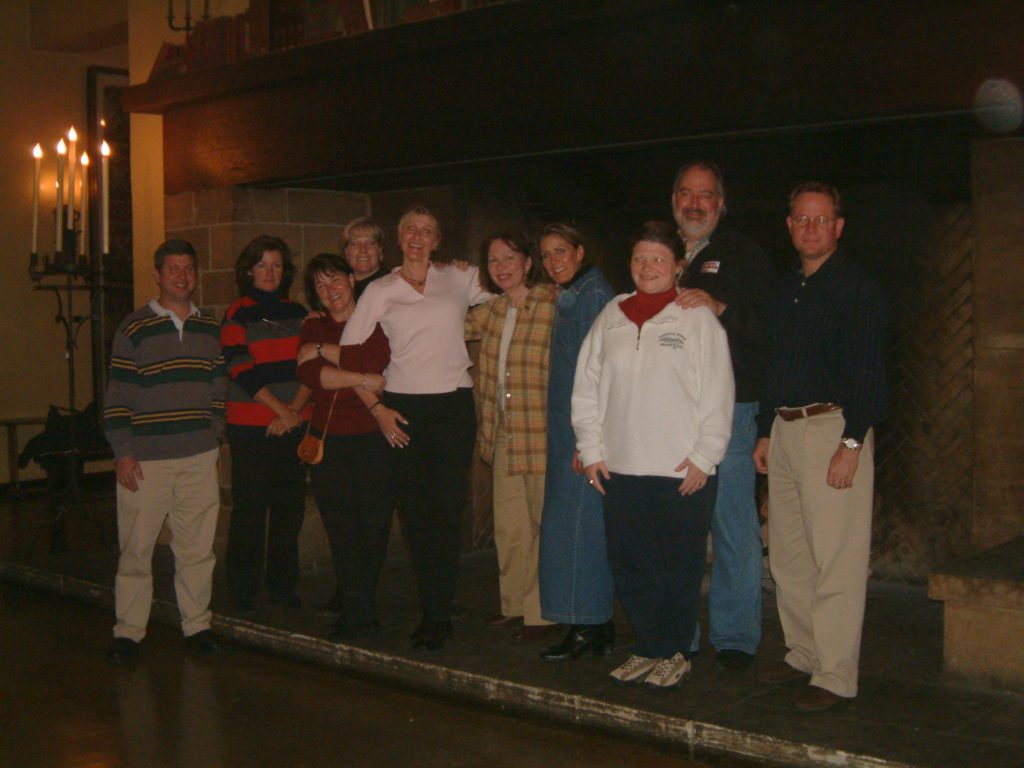
Friday
I believe the four hours I slept at the Courtyard Marriot near the Fresno airport sets a record for the shortest time I’ve ever stayed at a motel. We were at the airport shortly after 5 AM, and after several thousand taxpayer dollars were spent to ascertain that none of the seventh grade girls were carrying plastic explosives we caught our flight to Dallas.
A nap on the plane helped, and lunch at the airport further revived us. It was a remarkably chipper group that arrived back in Orlando Friday evening.
What a magical trip it was, with amazing weather, terrific adventures and great company.
Baltic 2002
England, Estonia, Russia, Finland, Sweden, Norway, Denmark, 2002
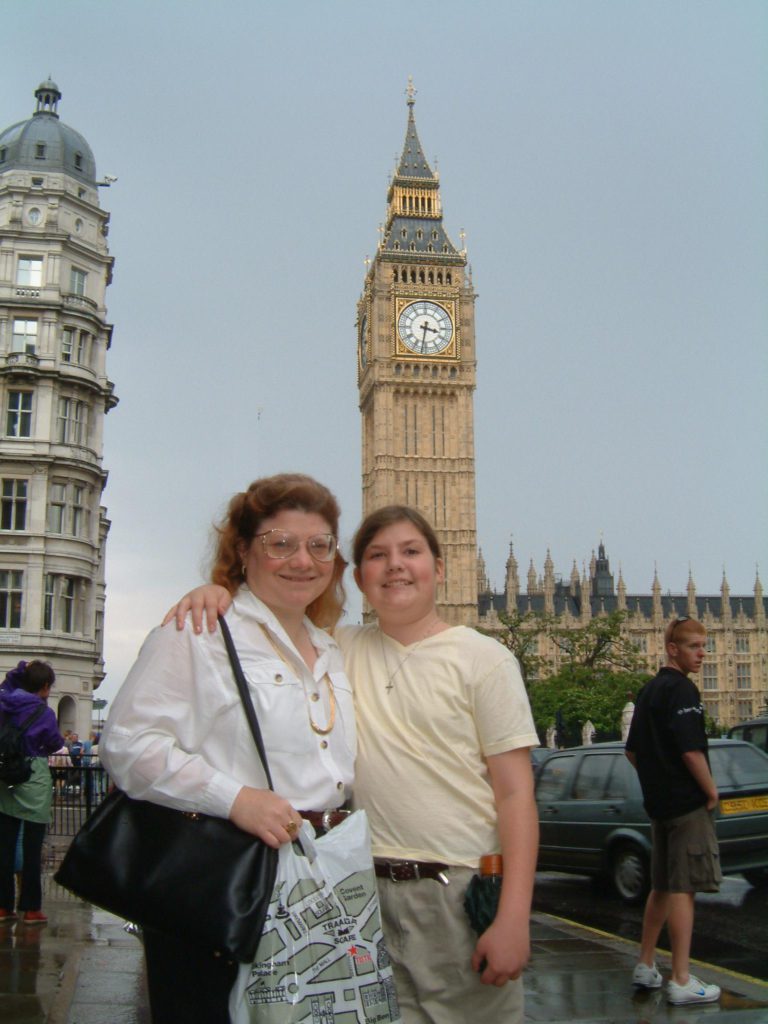
This summer we decided to explore a completely different part of the world. None of us had ever been to any of the ports on this 12 day cruise around the Baltic.
We left Orlando Friday afternoon, August 2, and arrived in London around noon on Saturday. This timing seems to work better than the usual morning arrival, because the hotel room is likely to be ready by the time we get to the city.
Even though we were lugging nine(!) bags — including carry-ons — the express train from Gatwick to Victoria Station was an easy connection, and London cabs are big enough for almost anything. The Marble Arch Thistle hotel is a recently refurbished art deco building on Oxford street, the main shopping drag. Although we’re not shoppers, we were pleased with its convenient location. The Marble Arch underground station is right beneath the building.
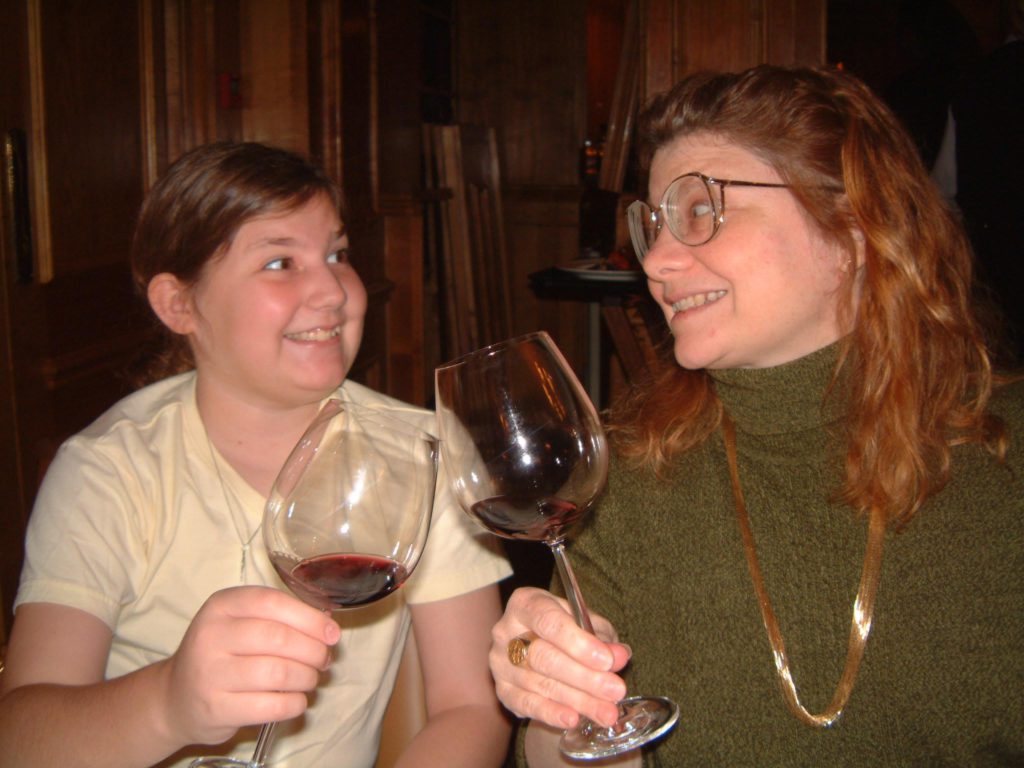
Saturday night, after a refreshing nap, we wandered around the neighborhood looking for a restaurant that didn’t serve English food. Since Danielle is still wary of most ethnic cuisine (the best bet in London) this provides a challenge. We happened upon a Marriott hotel and had a delightful meal of broiled scallops, pasta and salmon, and a mediocre Australian Cabernet by Wynn’s (a good producer).
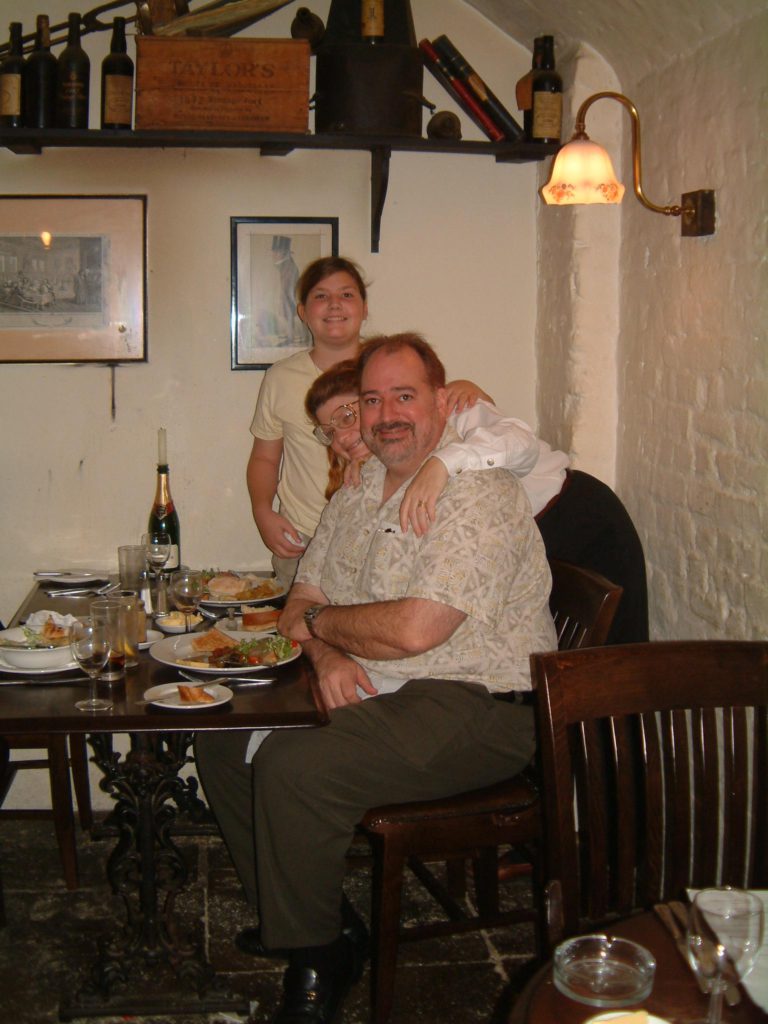
Sunday we wanted to go to the food courts at Harrods, but it was closed. Since it was our only full day in London there wasn’t much we could do. Our contingency plan was Covent Garden. Originally a “convent garden”, in the 1600s it became the main produce market for London. Falling out of favor in the 1900s, it was largely derelict before being converted to tourist shops and cafes. We had a nice lunch of wine, cheese and pate in a cellar-turned restaurant, and listened to an excellent quintet play spirited classical selections to an appreciative crowd in the courtyard.
Dodging raindrops, we walked down to the mall and took Linda to the Cabinet War Rooms, which Danielle and I had enjoyed the previous summer. This is the underground complex where Churchill and his cabinet operated during the Blitz. It is virtually unchanged from the day it was vacated in 1946. Next year they plan to open a new section of it where Churchill’s family lived. (Interesting: they had a collection box and it was full of dollars. . . )
Dinner was at the Sugar Club, an Asian fusion restaurant near Piccadilly. An Australian Semillon went well with the lemongrass soup and Danielle’s duck. Yes, Europeans aren’t hung up about serving a kid a taste of wine.
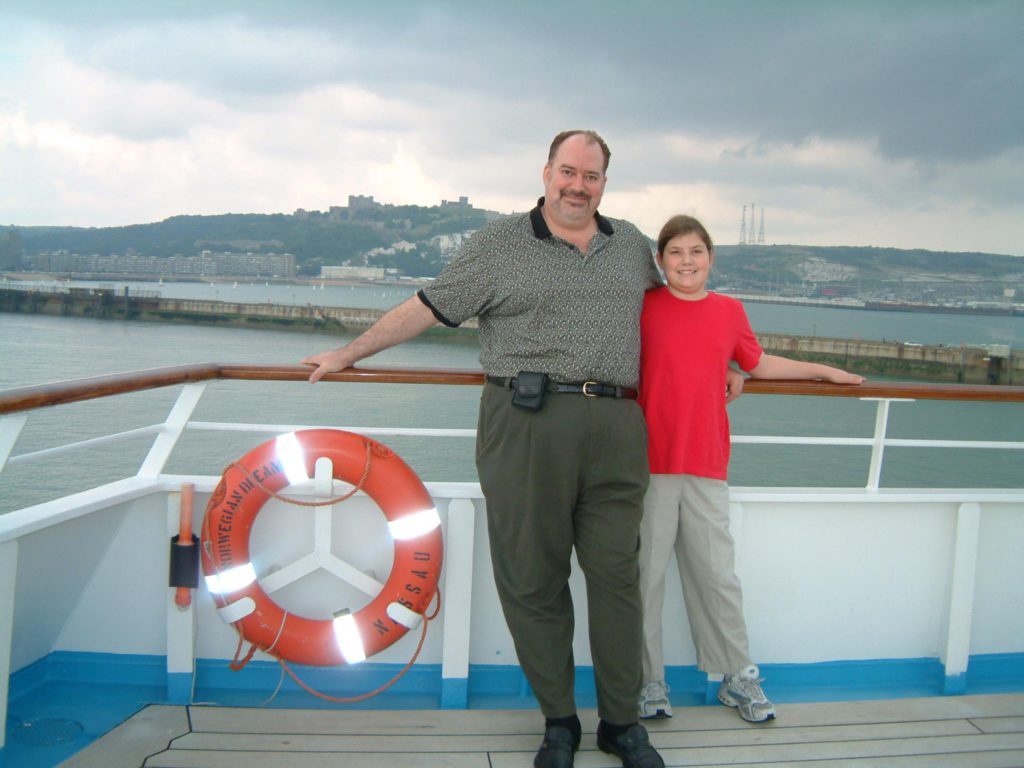
Sunday morning we survived a disorganized crush of geriatric travelers and caught our transfer “coach” to Dover. We heard that there were 186 rooms(!) of fellow cruisers booked at out hotel for the two-night pre-stay option. That amounts to almost 25% of the ship’s capacity. Average age of these guests appeared to be shy of three digits, but barely. If there’s anything more disagreeable than a tired American traveler. it’s a tired old biddy American traveler, so we spent most of our time trying to look Belgian.
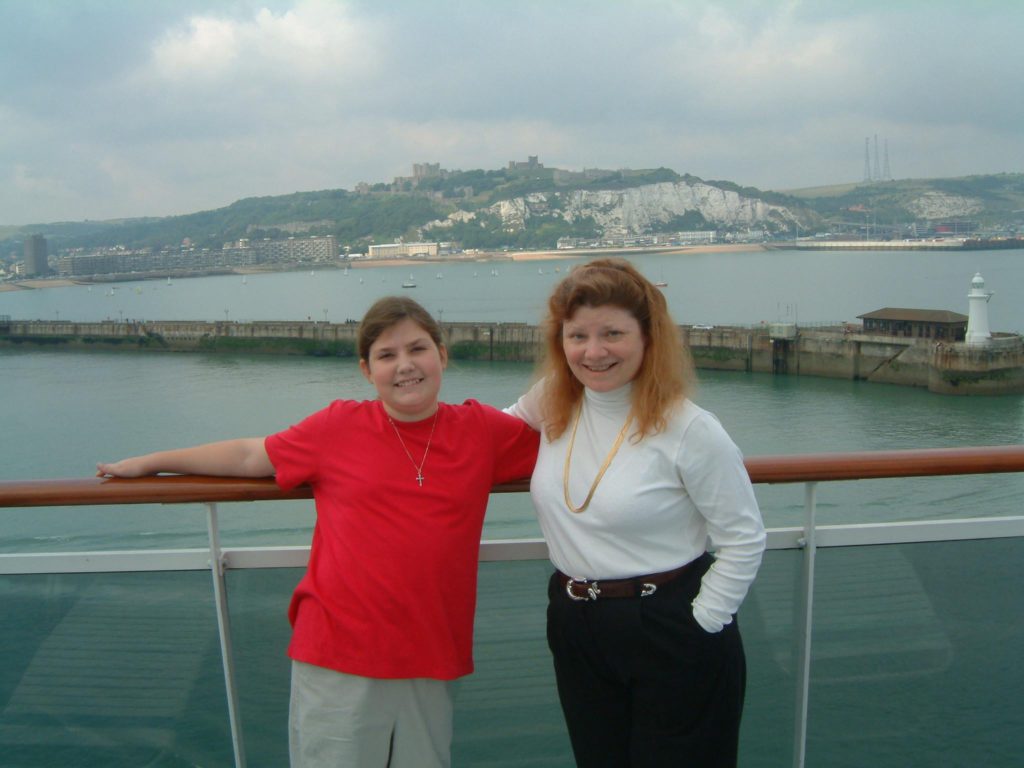
It took the usual hour to find a way out of London, and then another hour to reach Dover, where the cruise check-in was fast and efficient. We were onboard by 1pm. Hey, the cliffs of Dover really are white, or at least ivory.
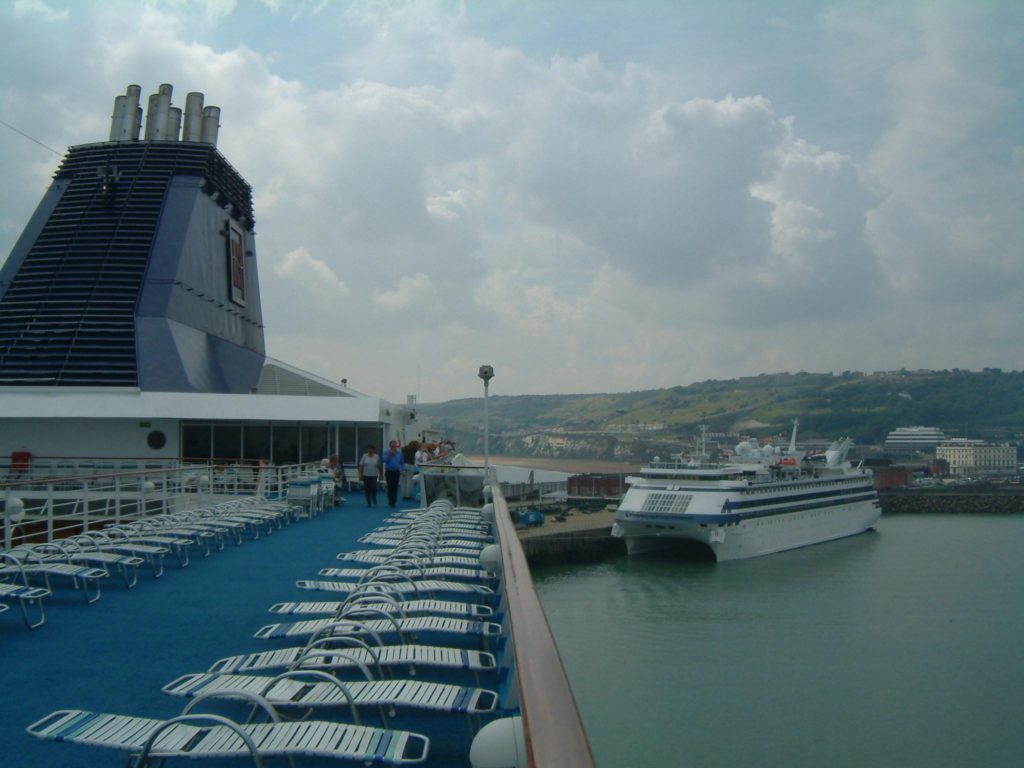
By chance, our friends the Siegles were traveling out of Dover just a few days later aboard a Radisson ship. You see it here, docked behind our ship, the Norwegian Dream. And yes, Ron, size does matter.
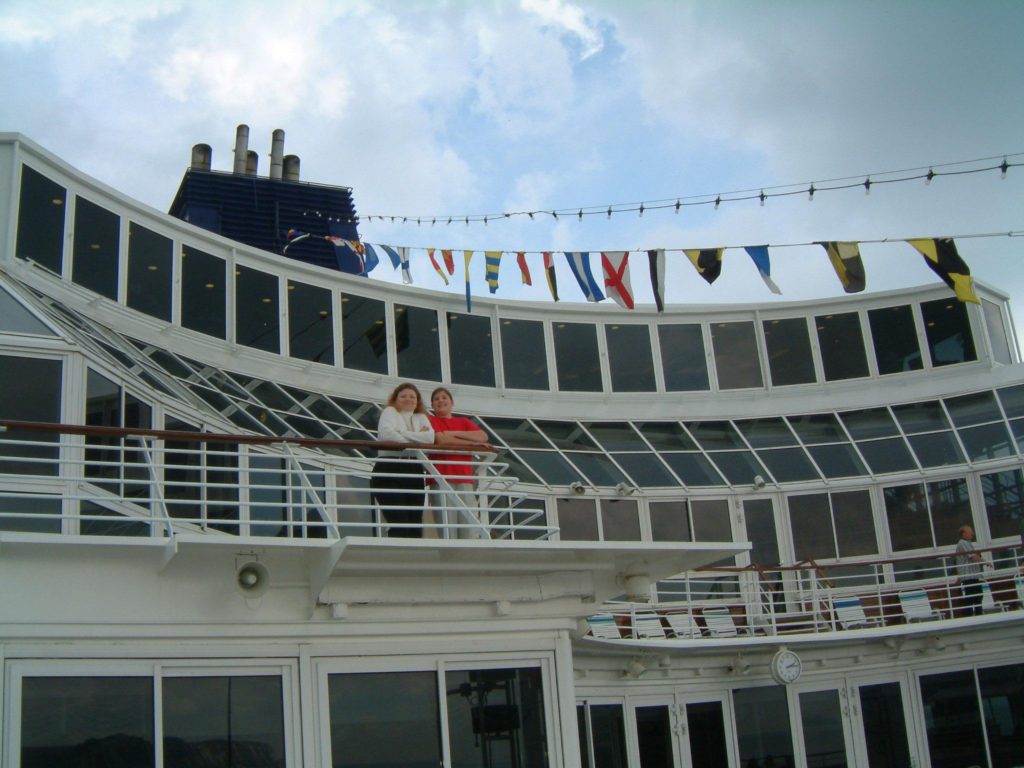
The Norwegian Dream is a smaller and older ship than most of the others we have taken, but it has a certain charm. It was launched in the early 90s, then had a 160 foot section added to the middle in 1998. It features NCL’s “freestyle” cruising, which allows you to eat in any restaurant at any time and at any size table you like. This feature is pretty unique, and works perfectly. While we slightly missed the experience of meeting new friends at an assigned table, it was great to have complete flexibility — and no schedule — every evening. We met our maid, Madalina, our butler Karan, and concierge Carlos.
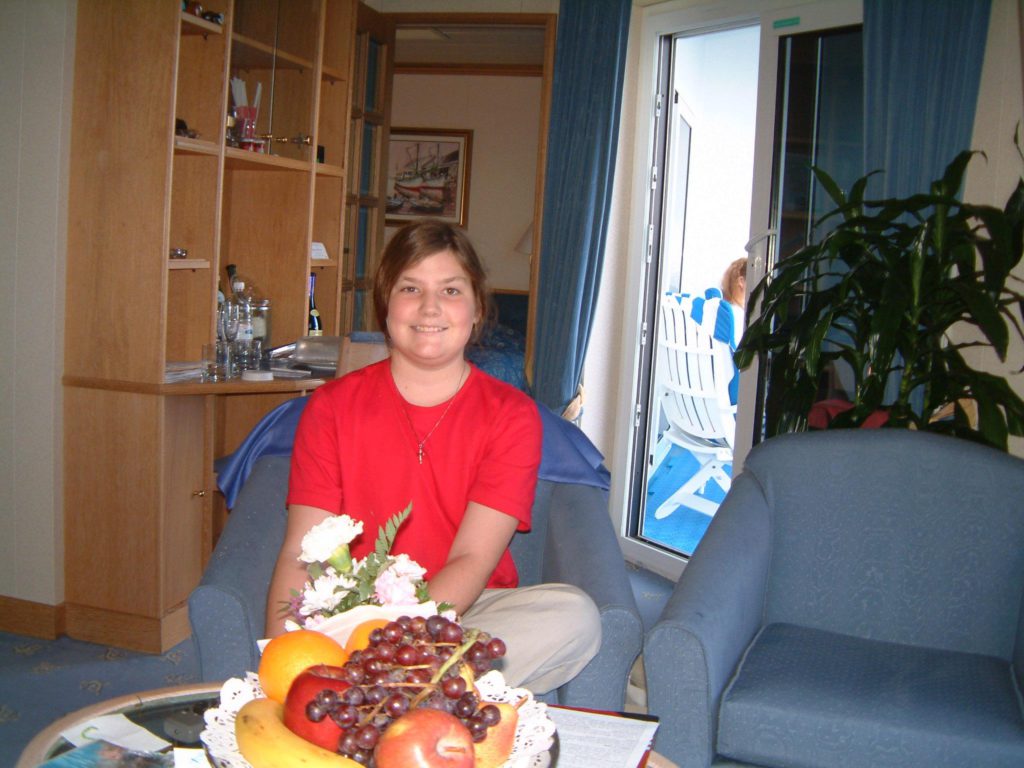
Linda was lucky to book the cruise only a couple months in advance, when a balcony stateroom cancellation opened up, and was lucky again to upgrade to one of a dozen “owner’s suites” just two weeks before sailing. That was a fortunate upgrade, because our cabin was a lovely space, with a living room, bedroom, bath with tub, and a large enough walk-in closet that we made Danielle sleep in it (I’m not kidding). The room also came with free drinks, hors d’oevres, a concierge and two butlers. The next level of accommodation down was a shoebox with a pet door in comparison. The cabin came with a DVD player and library, and an assortment of CDs.
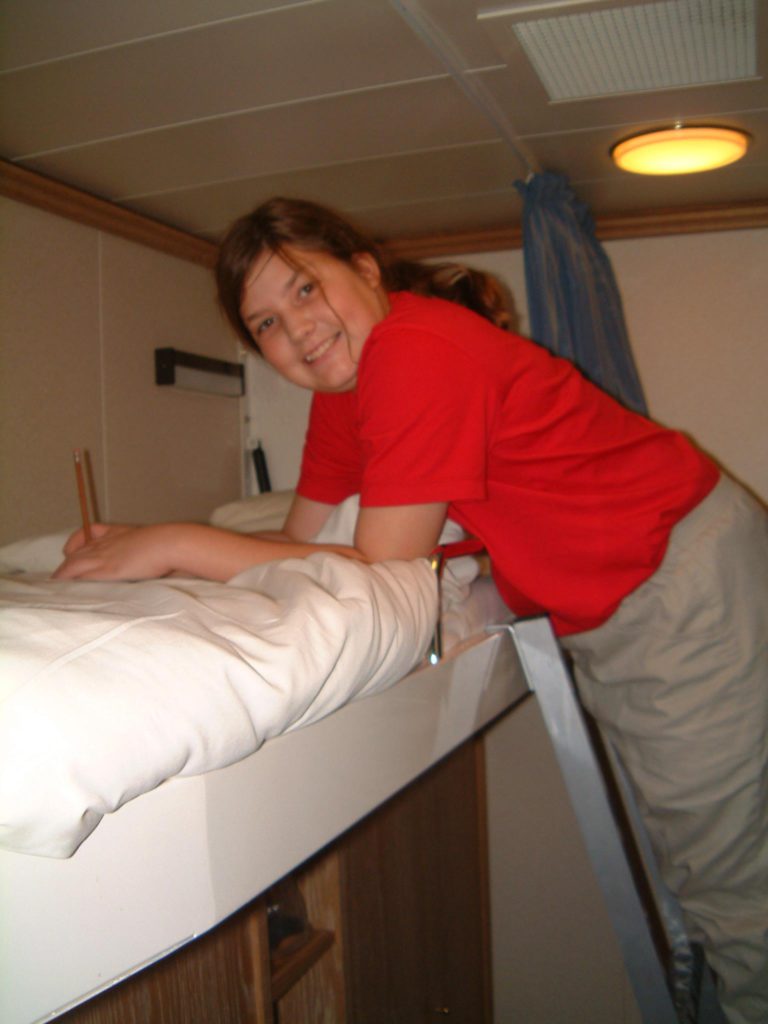
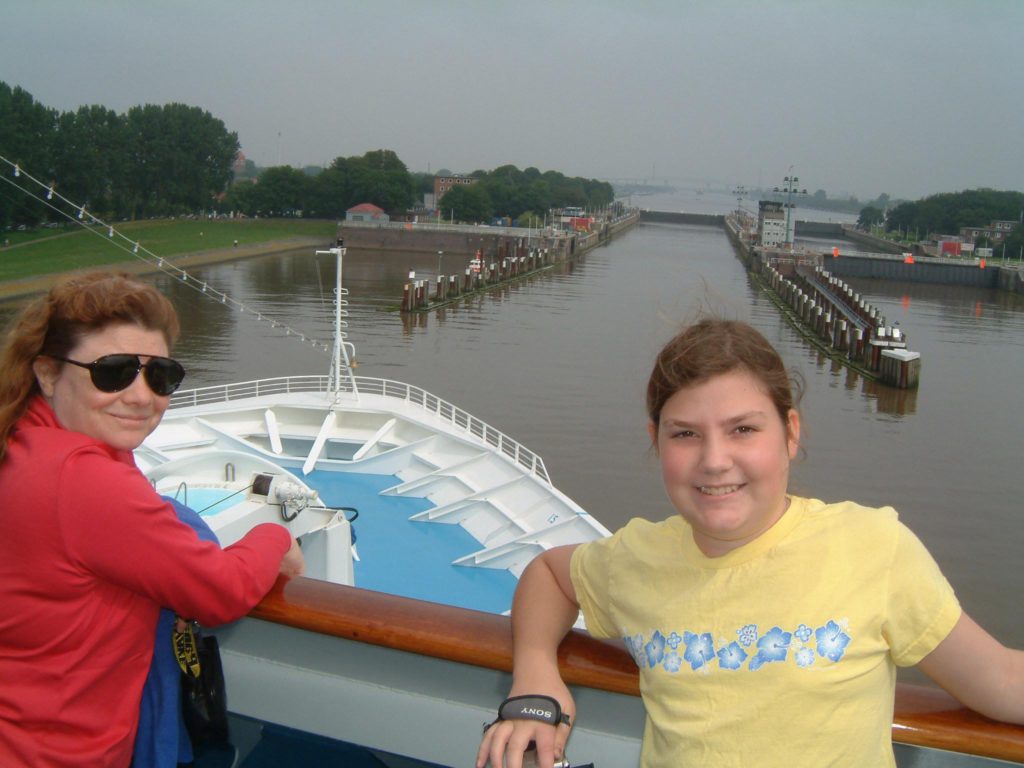
The Kiel Canal cuts across the base of Schleswig-Holstein, linking the North sea with the Baltic Sea and thus avoiding the dangerous route via the Skaw and through the Danish Sound and Belts. (Interesting that they worded it that way, since that’s exactly the route we’re taking on the way back. . . ) Monday, after a lazy morning, we entered the Kiel Canal. I was somehow expecting the locks to lift us up to cross the peninsula, but instead we went down about three feet. Maybe it was high tide. This was the first day of an uninterrupted string of perfect weather that would follow us throughout or entire trip. At times the crew seemed amazed at the wonderfully temperate days and absence of clouds, and when we crossed the North see, it was apparent that even the captain was startled by the smooth sailing.
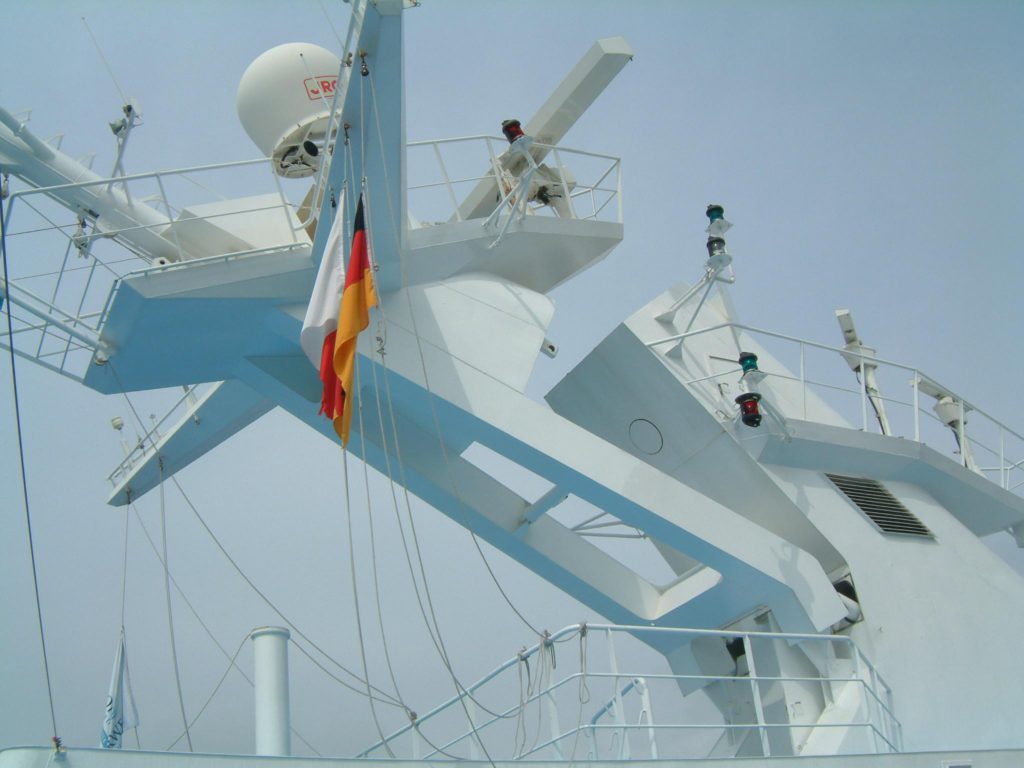
While waiting in the lock a German band boarded and played marching music for the rest of the afternoon. Built in 1887, the canal is 338 feet wide, 37 feet deep, and 61 miles long. It takes eight hours to traverse it. The Norwegian Dream is the largest ship to ever make the trip. To do so, it must collapse its funnel and mast (seen here on the way down) to fit under the seven 140-foot high bridges that cross it.
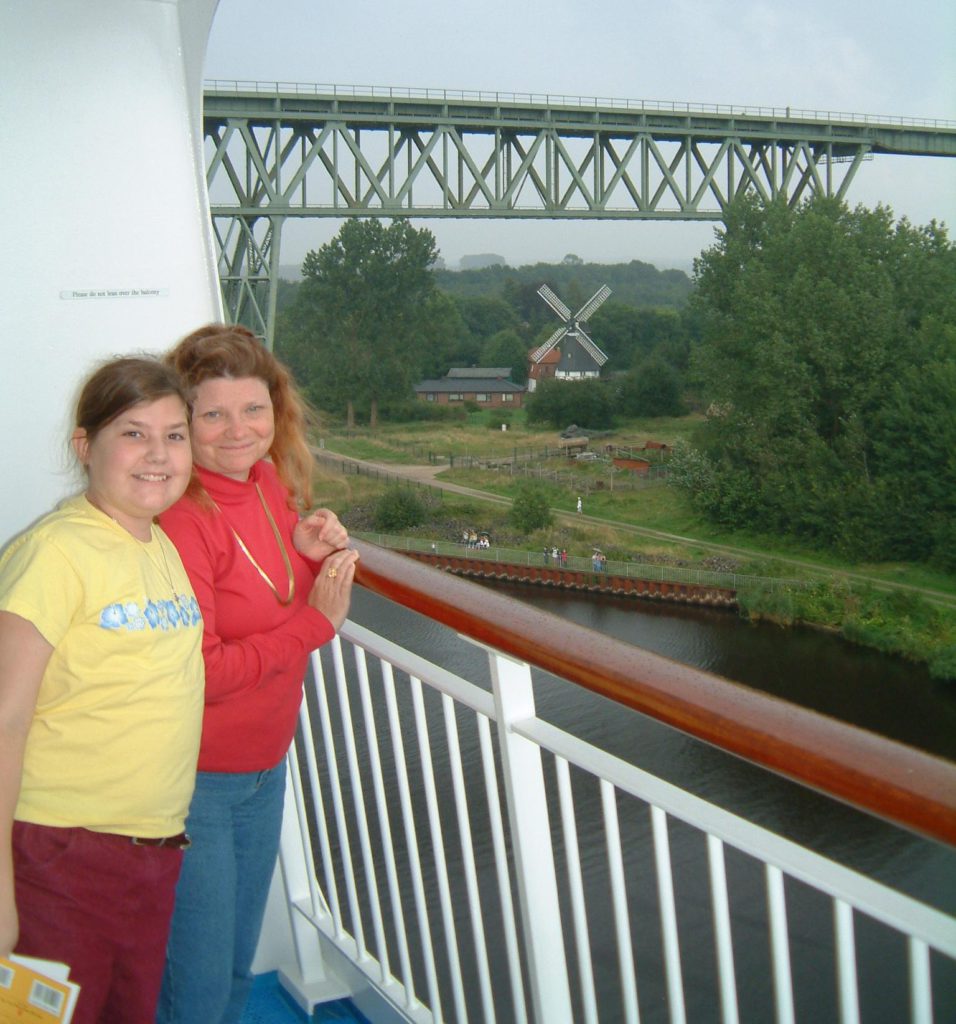
It’s quite an event for this ship to pass by. All along the way townspeople stood along the bicycle paths, waving to us and shouting greetings. Many waved handkerchiefs or American flags. It was quite moving.
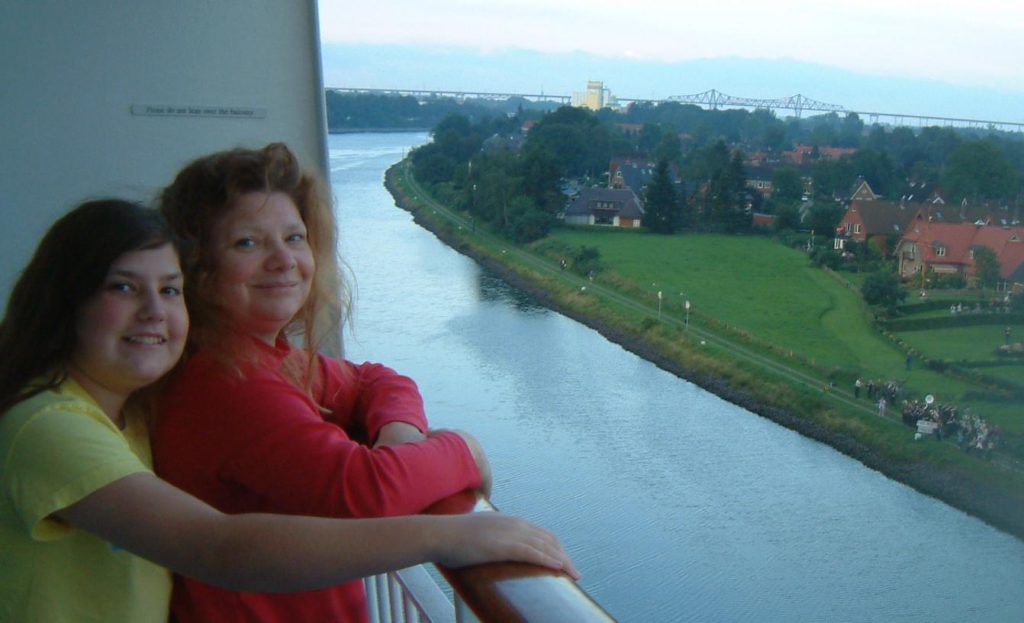
In one village a brass band played as we passed.
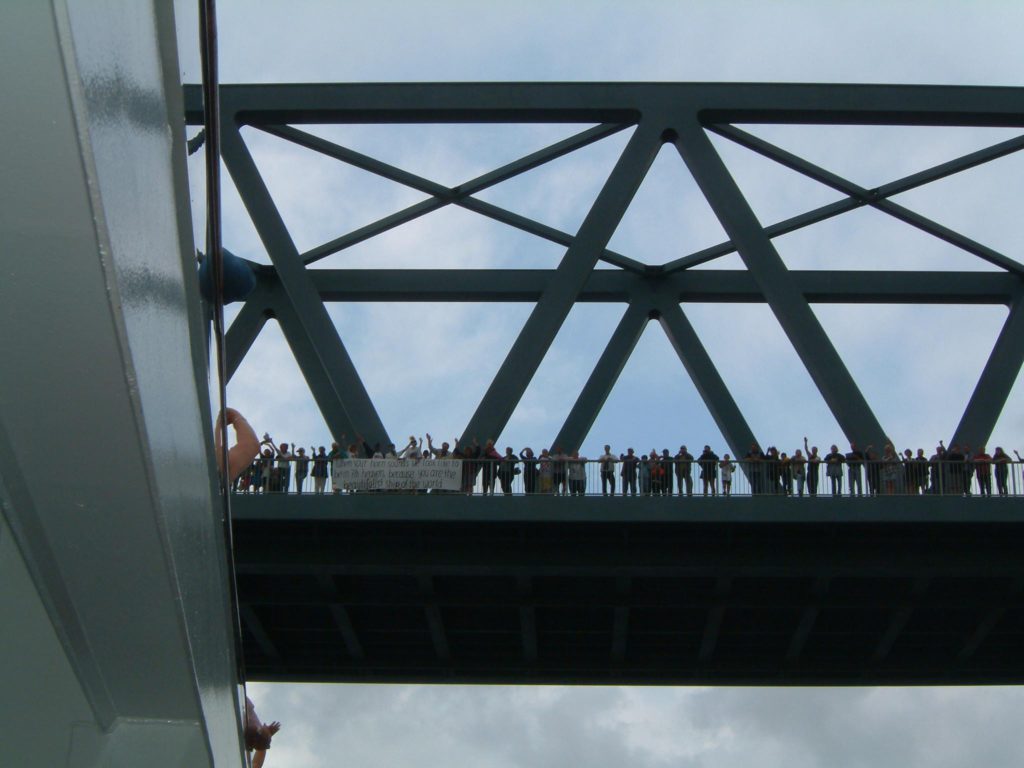
And on this bridge a crowd of more than a hundred who have “adopted” the ship display a different banner for each passage.
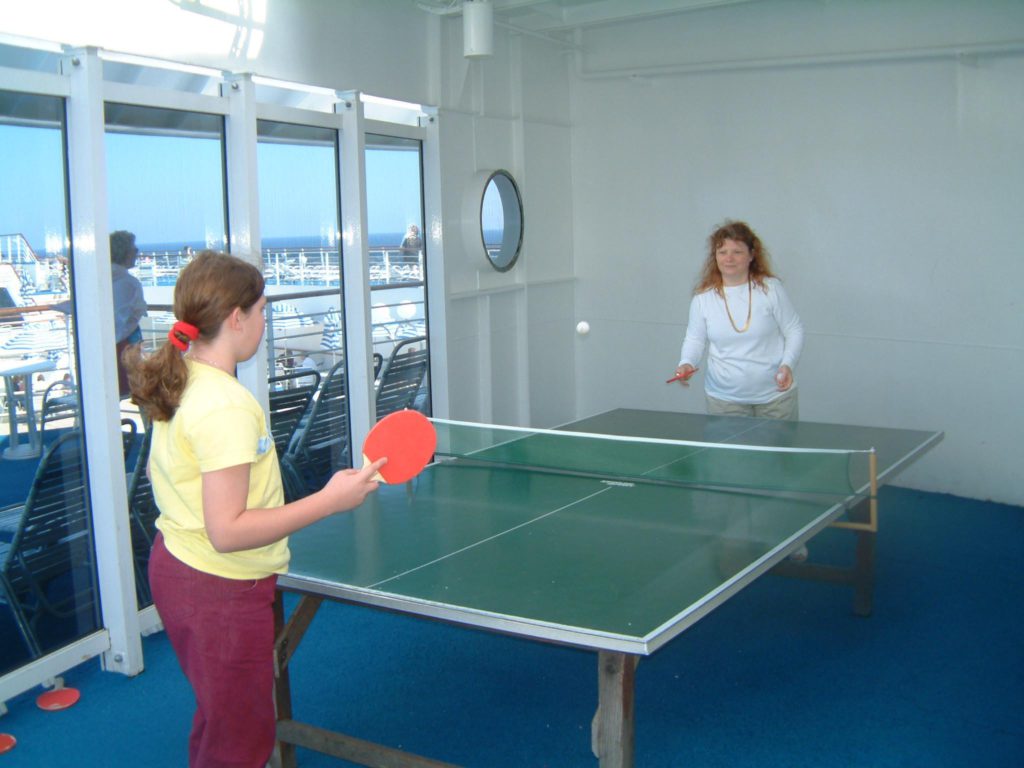
Wednesday we spent a relaxing day on the Baltic Sea. The ship’s facilities are a bit modest compared to the Voyager class of ships we’ve been on before, but our cabin is great, and the food is substantially better than on Royal Caribbean. After lunch Linda and Danielle played a windy game of ping pong, and Danielle and I went swimming. The day before, the aft pool had accidentally been heated to over 100 degrees, and we felt like lobsters. Today is was a much more pleasant 80 degrees. With cool air wafting past and the scenery floating by it was quite pleasant.
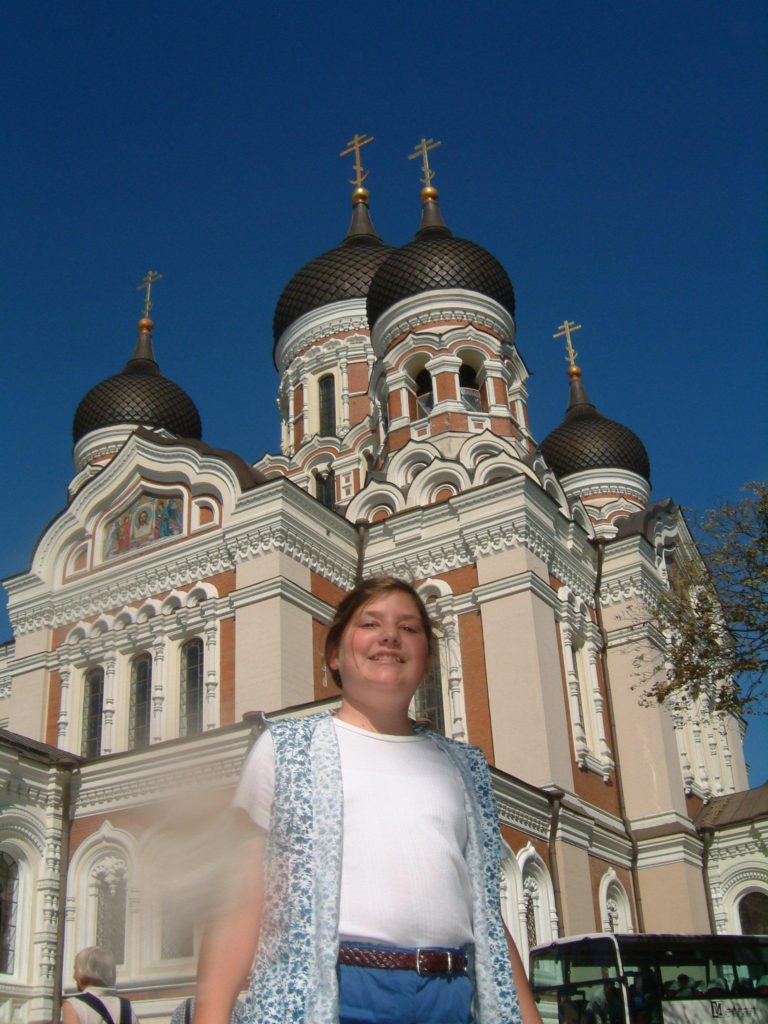
Around noon on Thursday we docked at Tallinn, Estonia, a picturesque town on the southern Baltic near the entrance to the Gulf of Finland. The country of Estonia is only 45,000 square km, and has only 21 towns. Tallinn is the largest, and with a population of 500,000 represents about a third of the total Estonian population. It is clear that Estonia is benefiting greatly from getting out from under the thumb of the Soviets in 1991. Every evidence of the Russian language had been erased from public signage, and the young people don’t even know what the Soviet-era monuments symbolize. 30% of the buildings in Tallinn are less than 10 years old; and unlike the Soviet buildings, they are attractive. 60% of the population are ethnic Estonians, with 35% Russians who, according to our tour guide, “All work at McDonalds for $1 an hour. ”
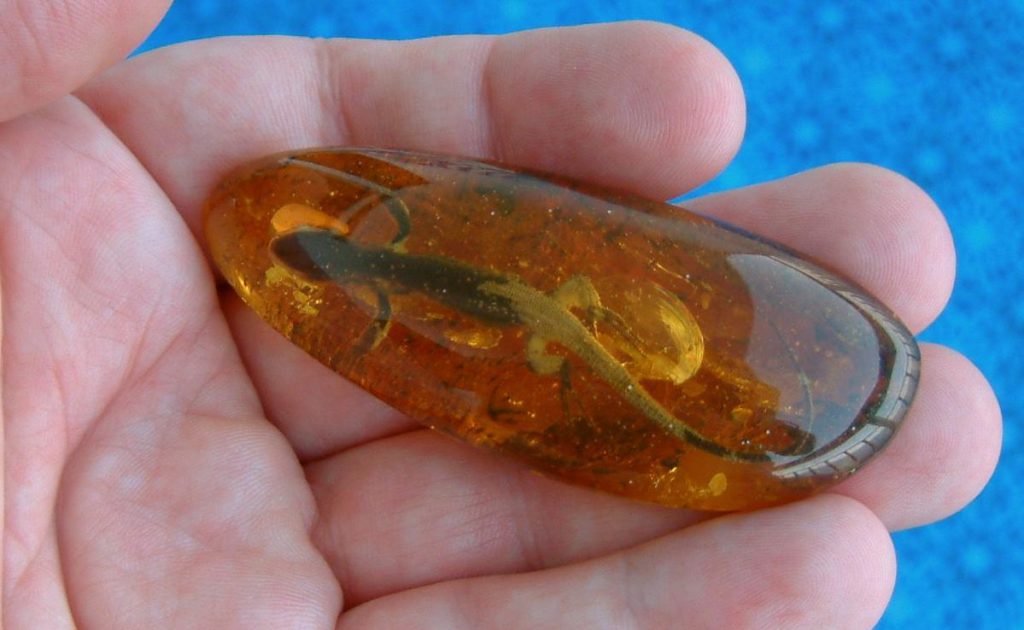
The weather was beautiful — mid 60s and clear. We took a bus ride around the city, then walked through the medieval town, looked at a couple of churches, and bought a fabulous piece of amber containing a complete lizard.
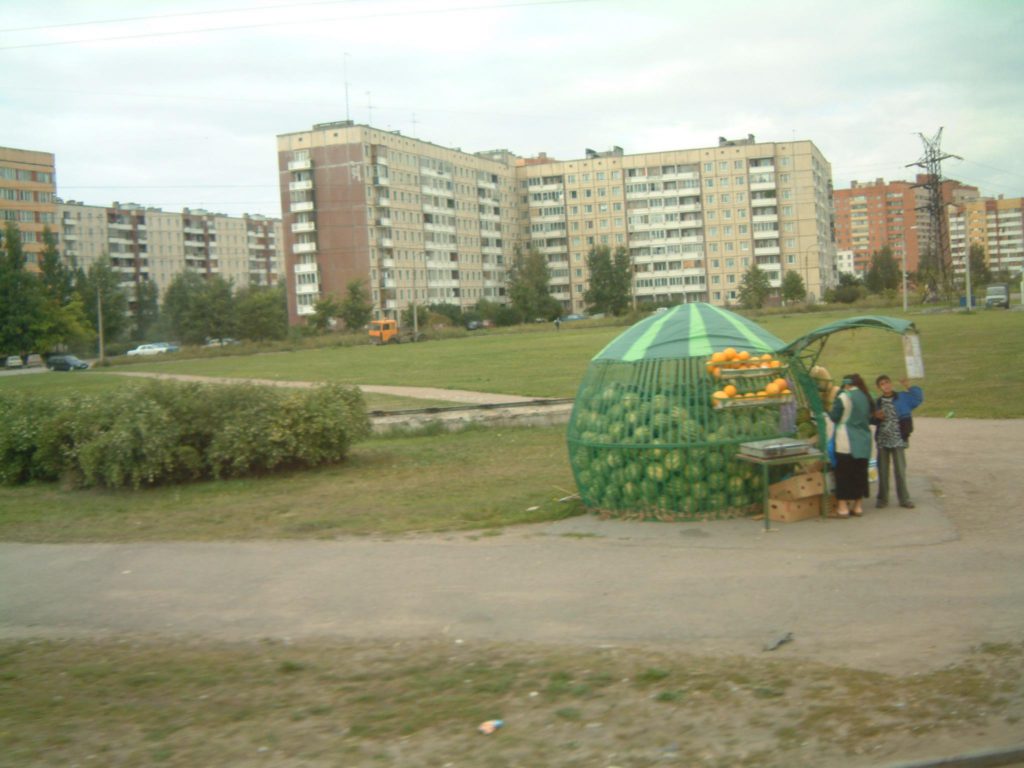
We awoke Friday morning in St. Petersburg. The cruise ship dock is. . . well, rather industrial: coils of raw steel and bags of fertilizer stacked between giant cranes. Considering this is the main seaport for a country the size of the US, there is amazingly little activity. Yes, our tour guide and bus driver really were named Olga and Vladimir. All of the people we met were extremely friendly. They were well dressed and drove reasonably nice cars (although not many could afford them). But St. Petersburg is a city of 4. 5 million people clearly struggling to recover from the Soviet era. They’ve restored the city’s name (after nearly a century as Petrograd and then Leningrad) and the streets’ names, but restoring the city itself will take a lot more work. The entire central city is comprised of buildings in various states of decay. The Soviet apartment blocks on the 1970s look worse than some demolition zones I’ve seen. There wasn’t a single building that didn’t need work.
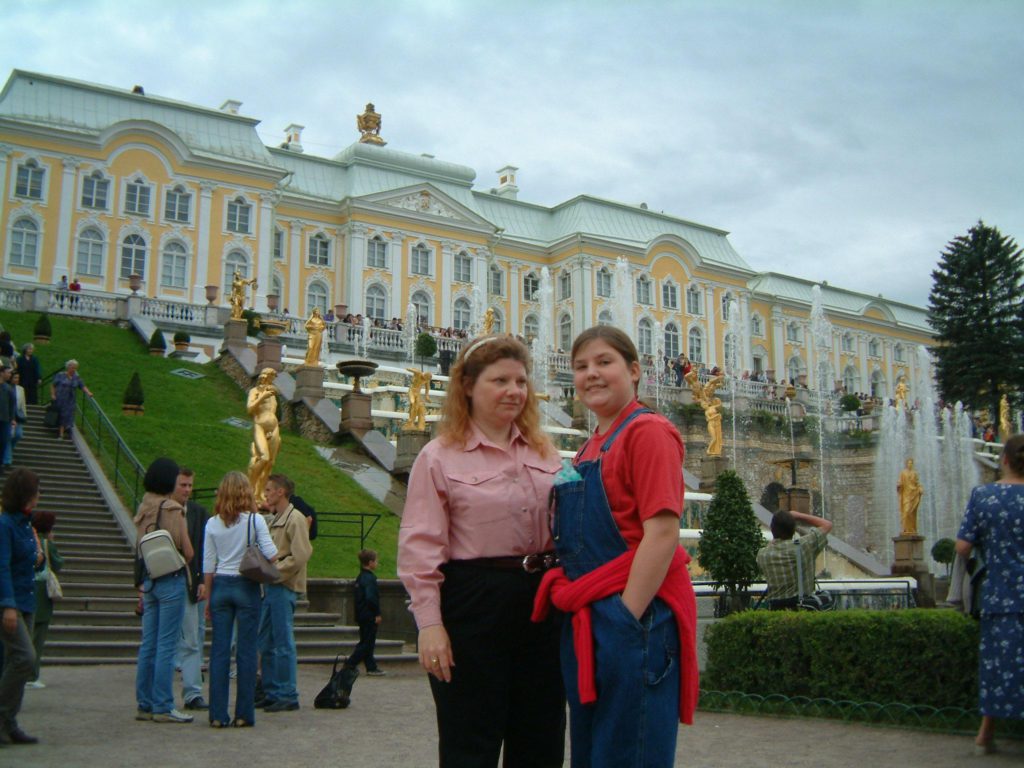
25 kilometers from the pier we came to Peterhof, the village and palace build by Peter the Great. Well behind Nazi lines during three years of siege, there was little left of the area by the time the Germans were forced out. But in the past decade an incredible restoration is taking place. While we waited to enter, we listened to a brass and woodwind quintet play traditional Russian songs, such as “I wish I was in Dixie”.
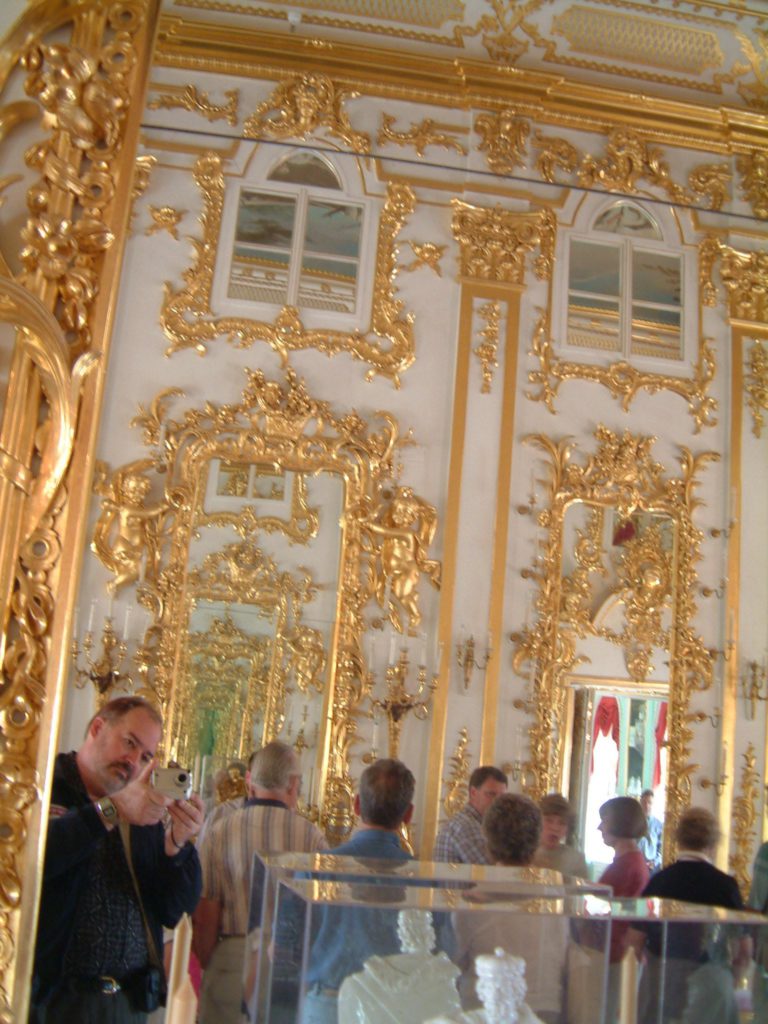
Everywhere they are rebuilding things exactly as they were before, and repopulating them with the treasures that were removed to Siberia in advance of the German assault. What was lost they are recreating. We were skeptical of the claim that the palace and fountains were more beautiful than Versailles, but it was true. Only thirty rooms have been completed inside the enormous palace, but they were impressive. And it was quite interesting to see the rooms under reconstruction — elaborate woodwork still without gilt, or bare walls waiting for 18th century silk to be applied. It’s not hard to see why there was a Russian Revolution. Isolated in their beautiful palaces, speaking French instead of Russian, the rulers were completely out of touch with their subjects.
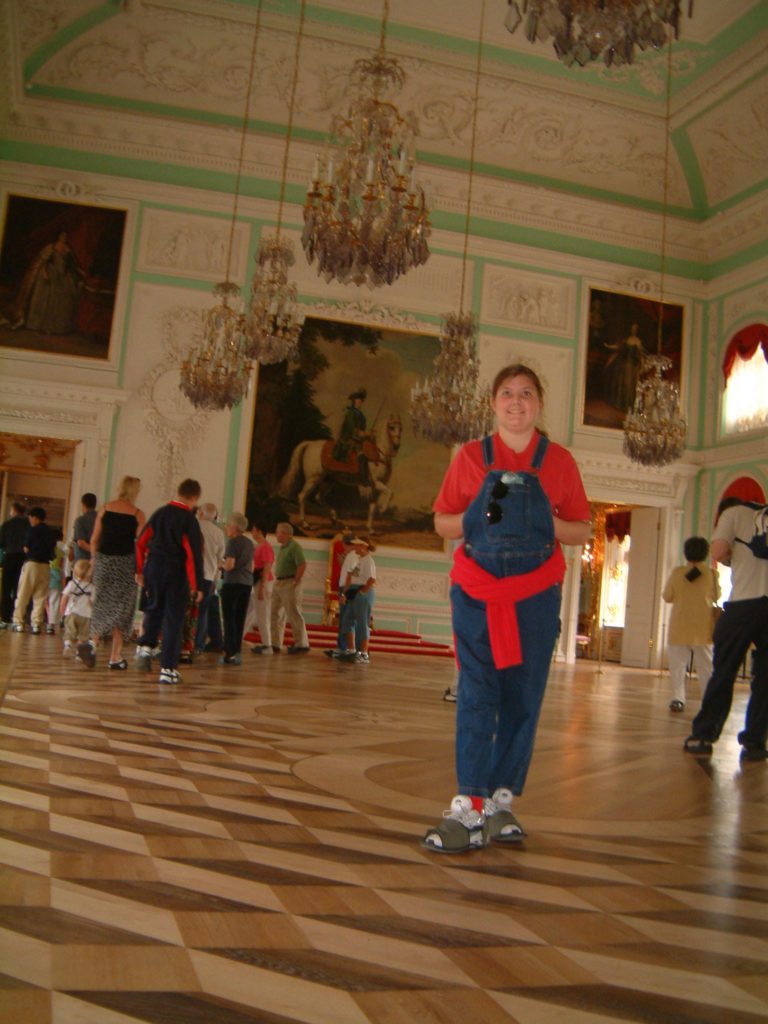
We walked through Peter the Great’s throne room, and the boudoir of Catherine the First.
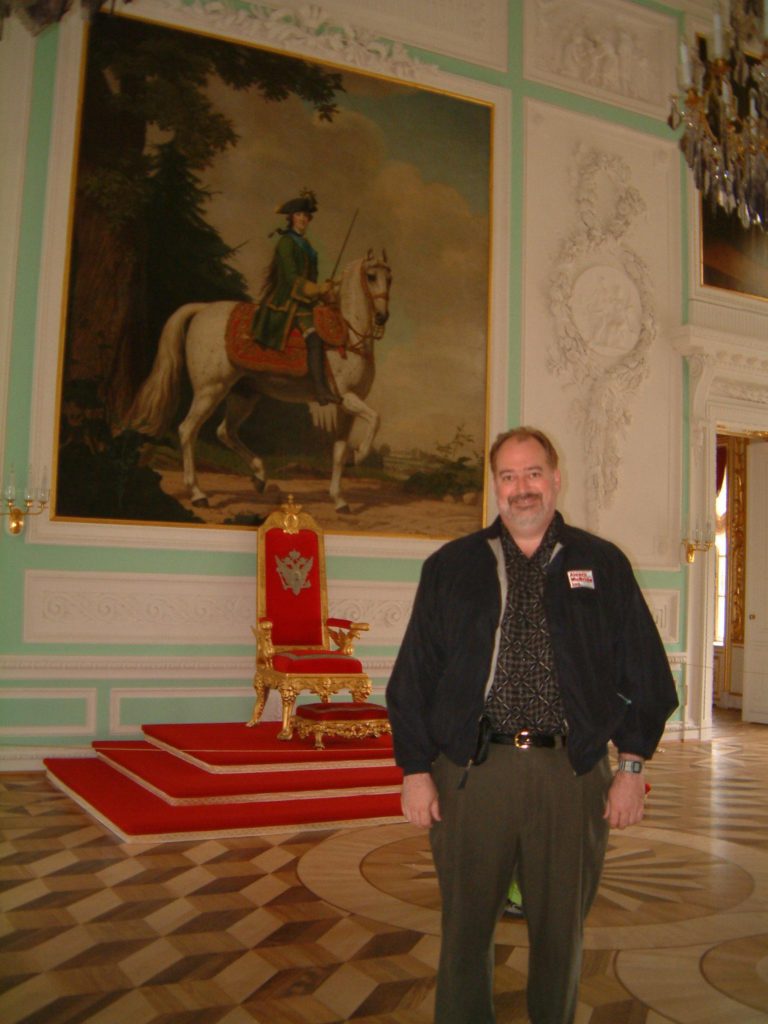
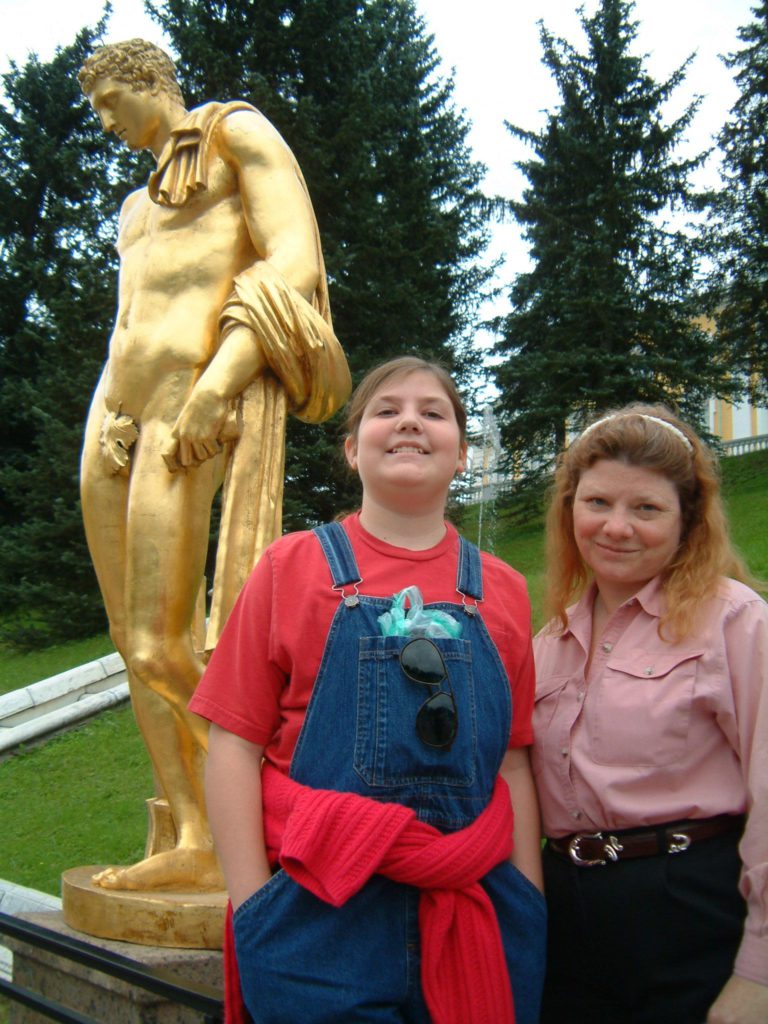
Over 100 fountains are perhaps the most spectacular aspect of the Peterhof. They are all gravity-fed, yet reach heights of over 100 feet. Many are whimsical: metal trees sprouting water from their twigs, or a park bench that unexpectedly erupts in spray.
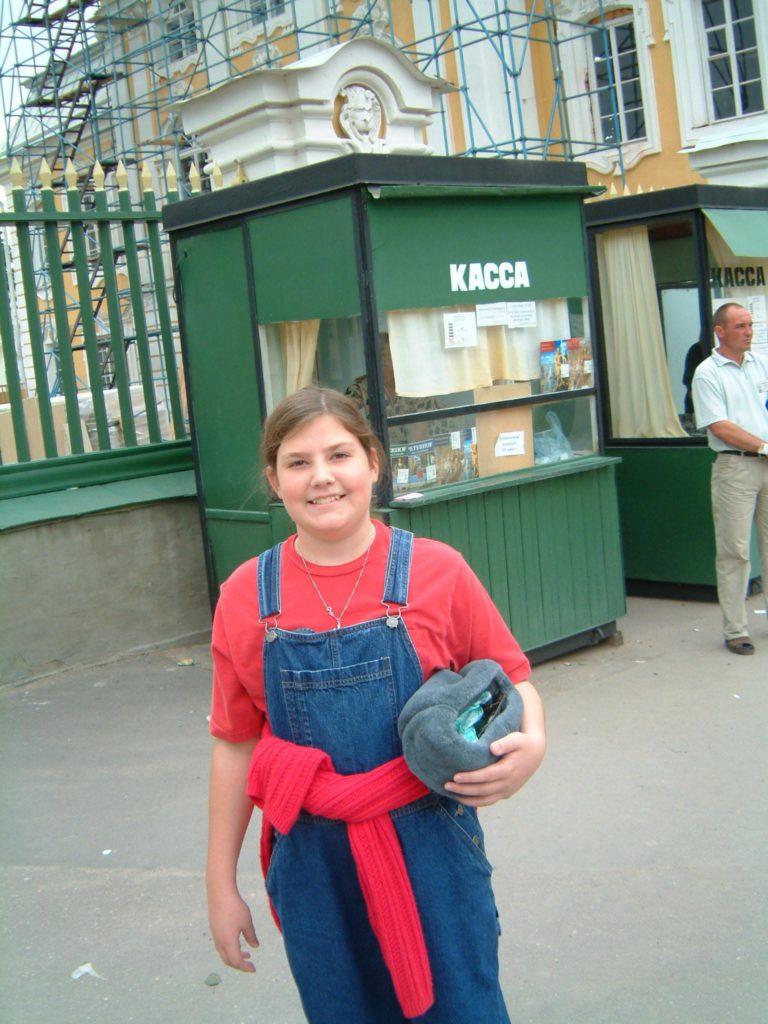
This is where you buy your Kacca (tickets). Letters in Cyrillic are pronounced differently. The Russians haven’t been able to shake off their penchant for bureaucracy. It cost 100 rubles ($3) for a permit to take photographs inside the palace, and 10 rubles to use the restroom. We also had to wear slippers over our shoes to avoid damaging the parquet floors. Most amusing was the requirement that we receive a temporary visa for the day, which consisted of a red piece of cardboard. Lose it and you had to pay them 50 bucks. Perhaps that was its point. Olga told us that 1/3 of the population of St. Petersburg consists of retired people. The typical family has less than one child. The average family lives in a one-room — not one-bedroom — apartment. And the population is shrinking by 30,000 a year. It seems unlikely that the careful immigration control is to prevent cruise ship passengers from sneaking into the country permanently.
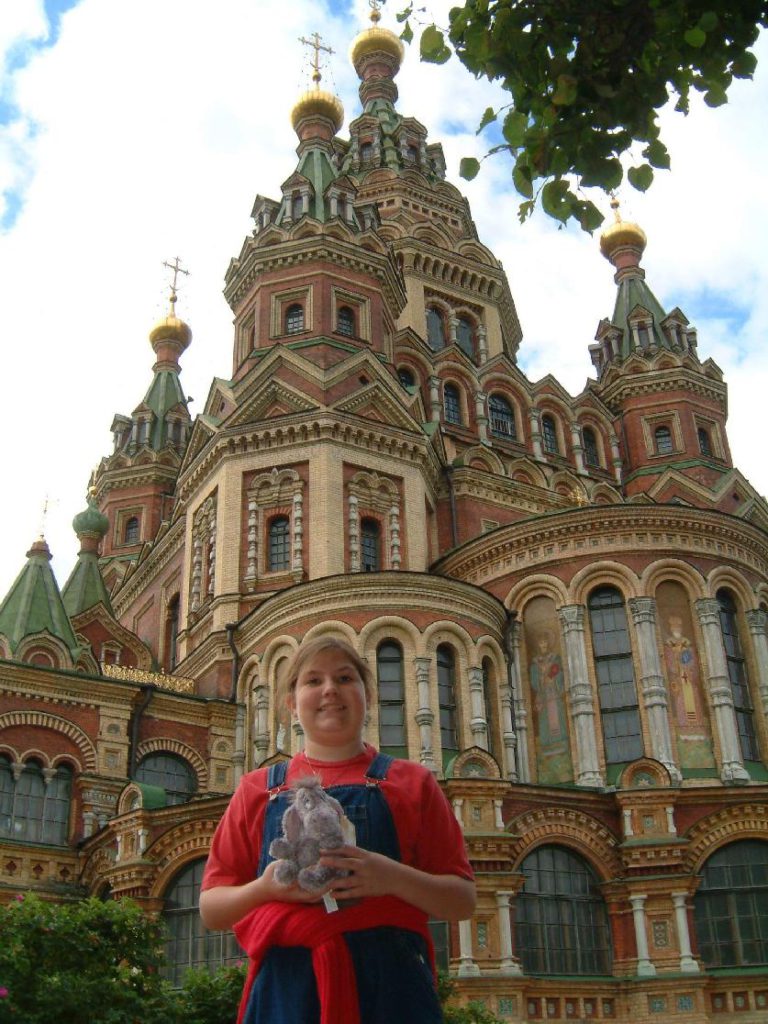
There were some nice single-family homes being built near Peterhof. These belong to the 1% of Russians who became wealthy as a result of perestroika (restructuring) — often through illegal means. On the way back to the ship we stopped for 60 seconds in front of the church of St. Peter and St. Paul to take pictures. Danielle posed with the Eeyore we bought for Henry and Marjolaine’s Nathaniel. For more about Eeyore’s travels with us, click here.
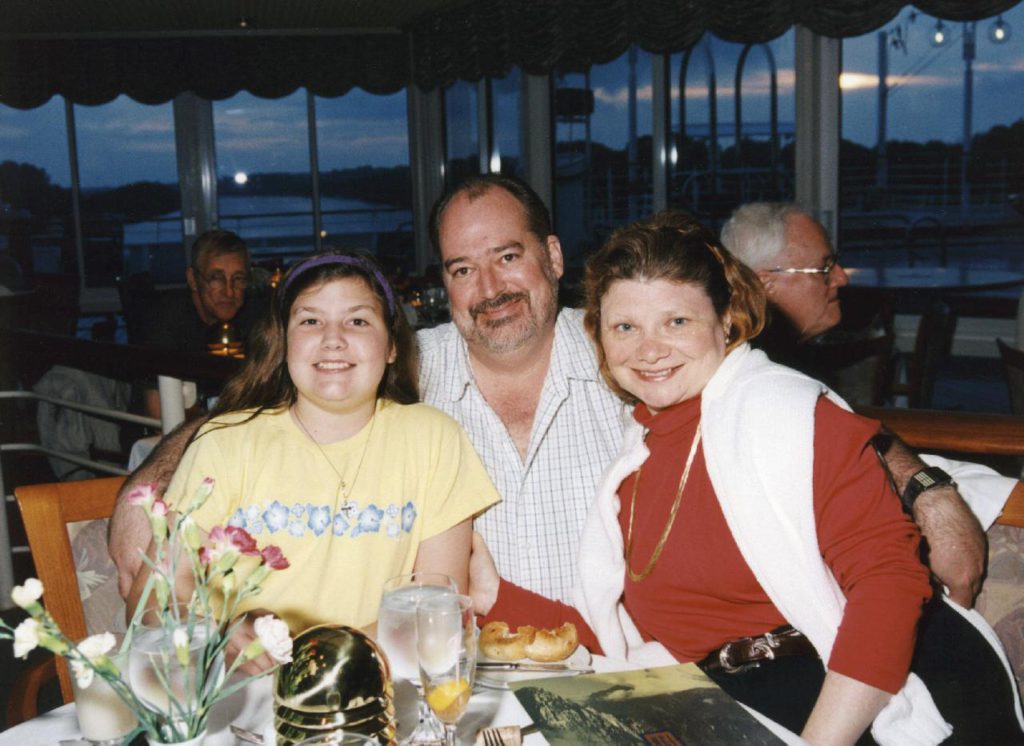
Each day there is a new treat for us when we return to our cabin. Today was hors d’ouvres of salmon, caviar and pate. We’ve also had chocolate dipped strawberries.
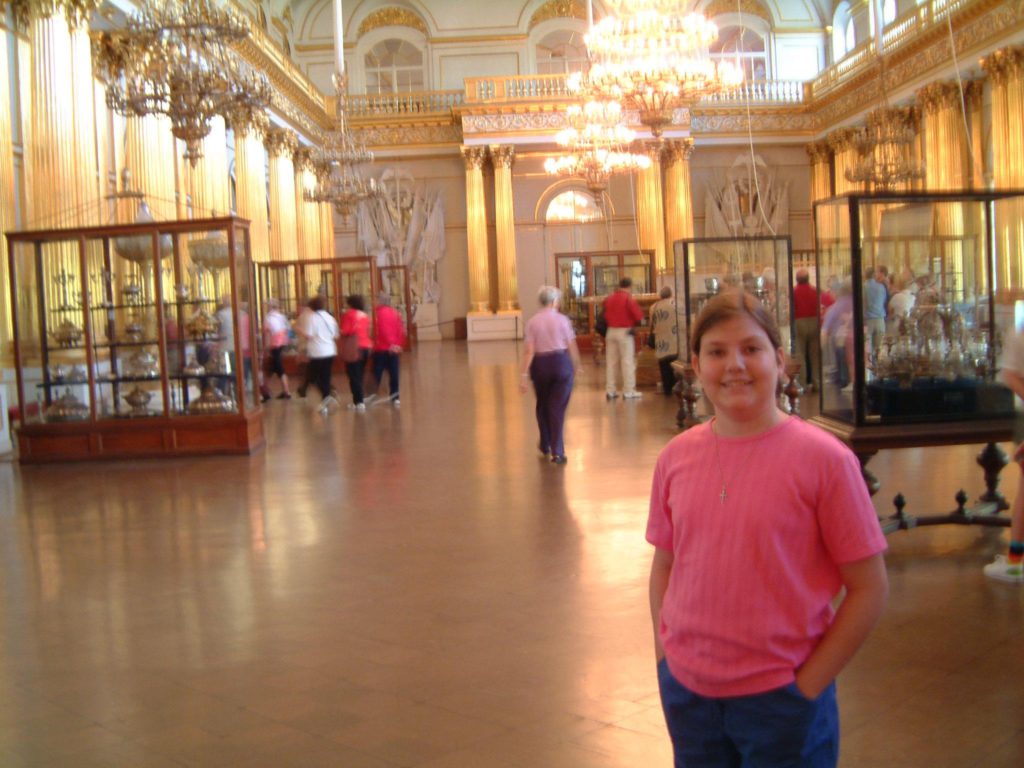
The drive to The Hermitage on Saturday took us through a completely different part of St. Petersburg. We were accompanied by guide Natasha and bus driver Sasha. In this part of town nearly every building’s exterior had either been restored or was surrounded by scaffolding. The workers are rushing to finish in time for the city’s 300th anniversary next year. Along the river the pastel colored buildings looked charming in the cool northern light.
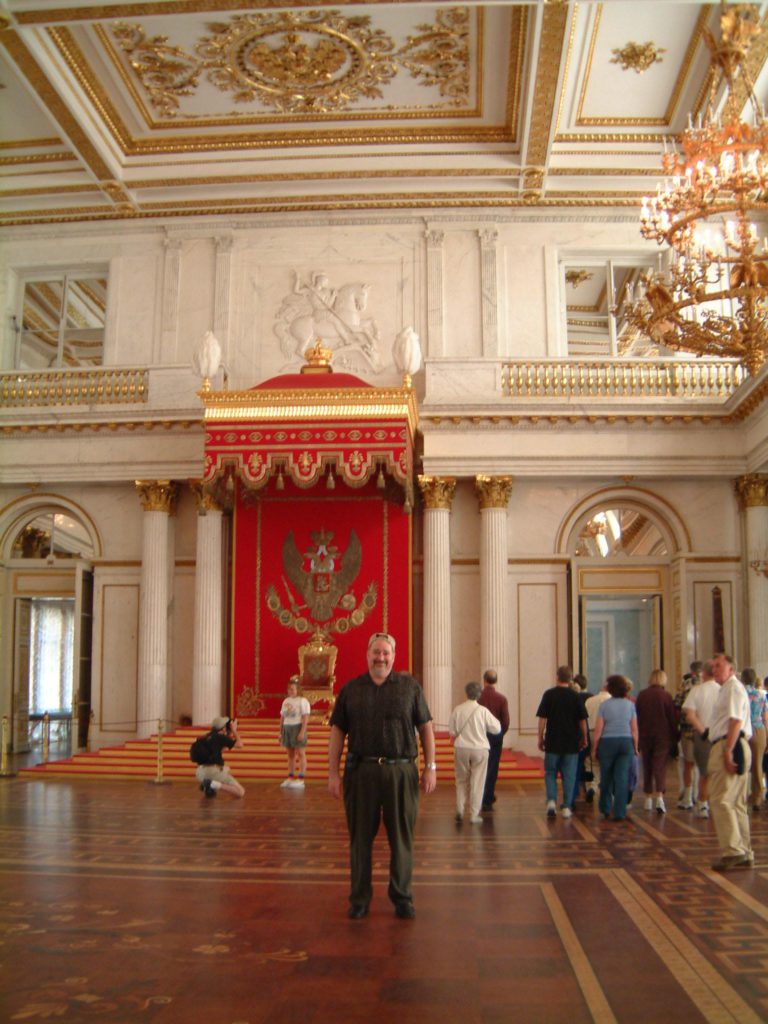
The Hermitage is comprised of five major buildings, including Catherine the Great’s Winter Palace. The museum has over 3 million items in its collection, and is the world’s second largest behind the Louvre. In two hours we rushed through as much as we could, seeing countless Rembrandts, Van Dyks, Titians, and more. In the last twenty minutes we tried to see a dozen rooms filled with Monets, Renoirs, Picassos, and Van Goghs. Back on the ship we had a relaxing afternoon and wrote some postcards. It’s funny to realize how close the time zones are this far north. We’ve lost an hour almost every day since London, so now we’re three hours ahead of GMT, 8 hours ahead of Orlando. This is our easternmost port, so we’re about to starting getting some of those hours back.
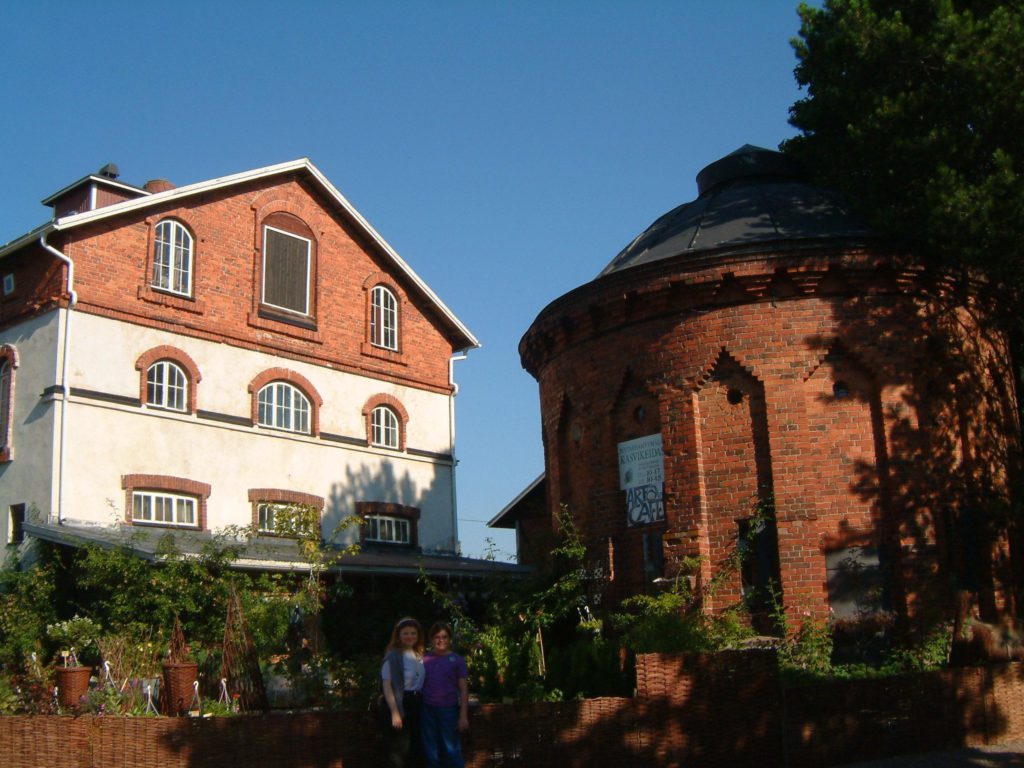
What a difference a day makes. Helsinki is a beautiful, clean, manicured and well-maintained city. The Finns are fiercely proud of their independence from Russia. Our tour guide, Tulla, kept emphasizing that they have nothing in common with their Russian neighbors — not even the roots of their language, which is related to that of Estonia and Hungary. Since they have one of the highest standards of living in Europe, it’s hard to disagree. Our tour took us about 150km out of Helsinki (a beautiful city that it would have been fun to explore) to the second oldest village in Finland, Porvoo. But our first stop was at a cattle farm.
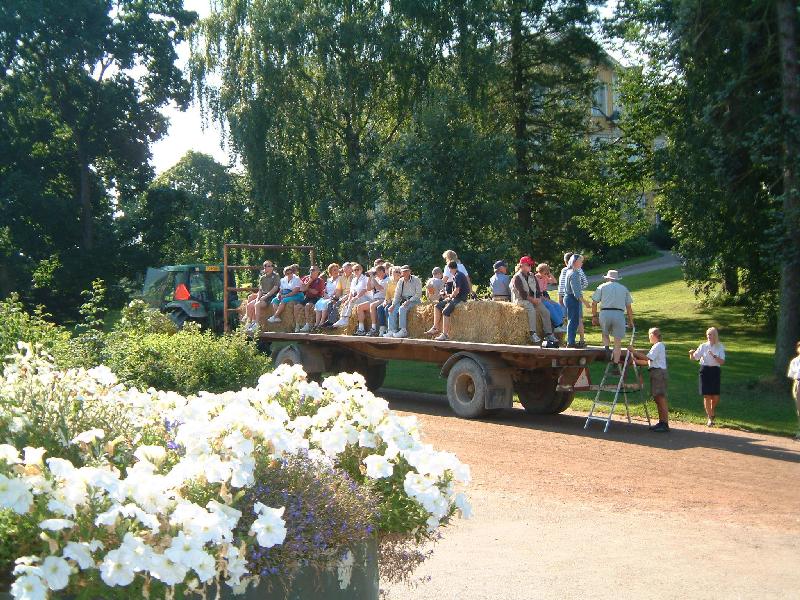
With only 220 cows, a small gift shop, and some sugar beets, I’m not sure I understand the economics of this farm.
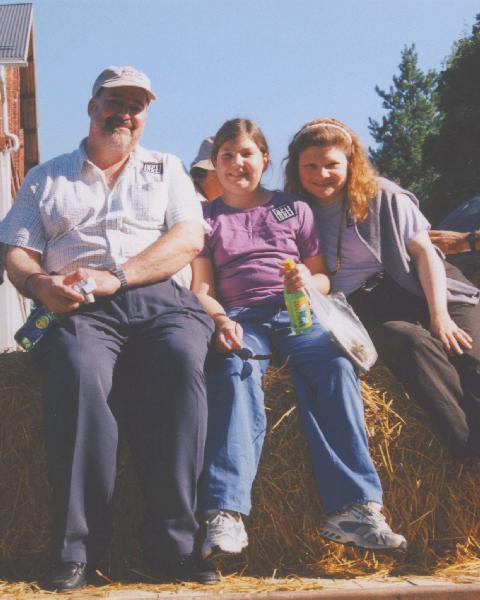
We enjoyed out hayride, coffee and pastries. It was great to get some country air after two days in St. Petersburg’s very industrial harbor.
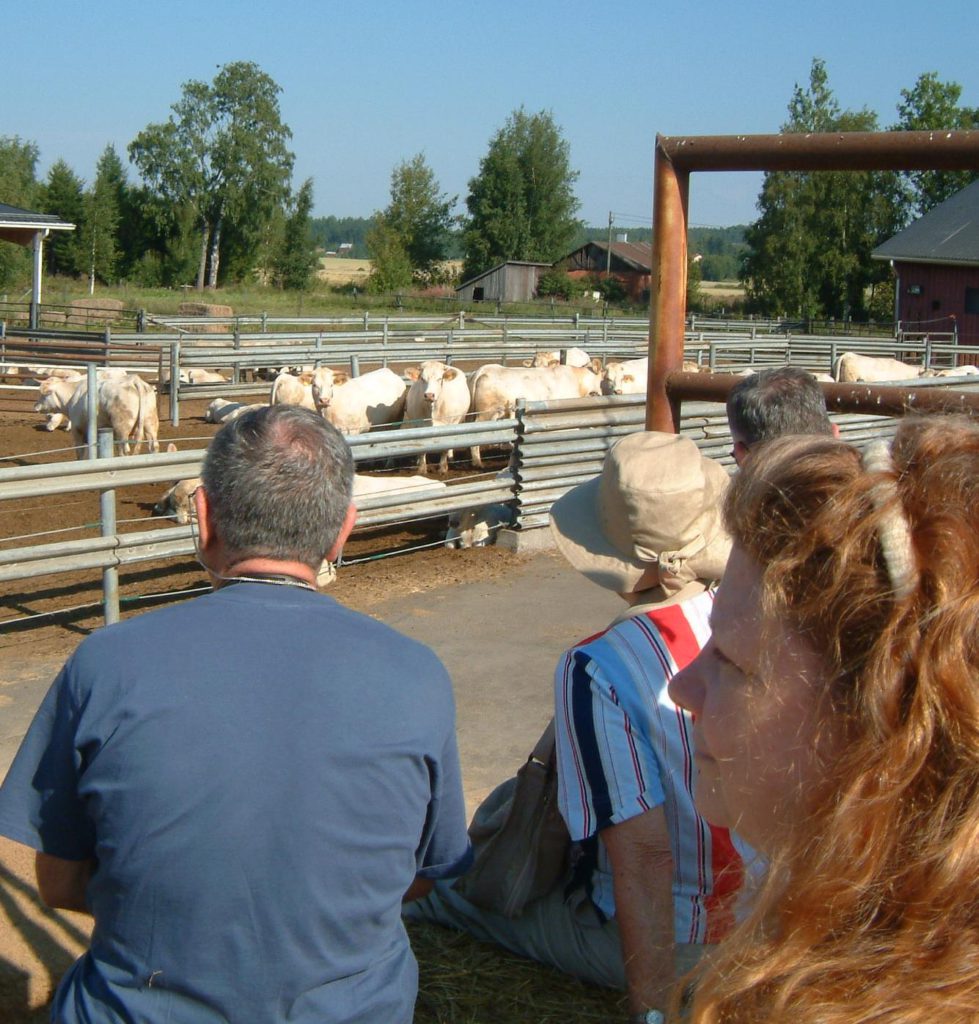
They raise the cows to age 18 months, then sell them for beef. During the winter they have to heat the watering troughs to keep them from freezing in the -40 degree pens. Of course, this only works in the warmer southern part of Finland that we visited! Perhaps in the north the cows give ice cream.
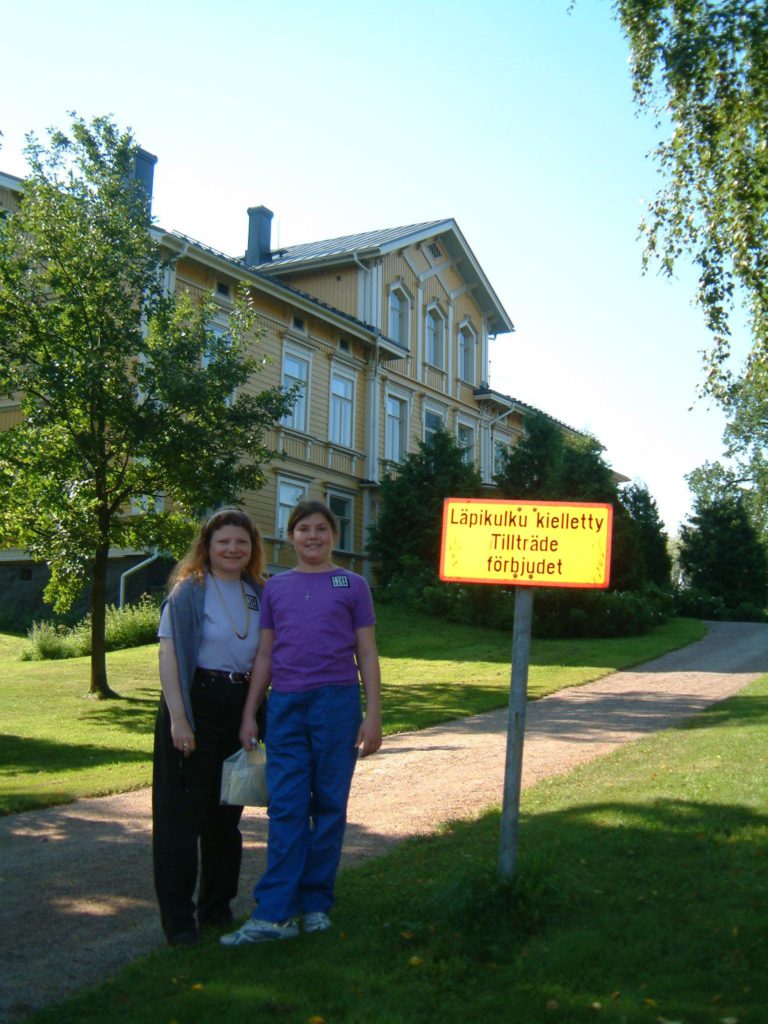
The Finnish constitution declares that all signs and documents must be rendered in both Finnish and Swedish, even though only 6% of the population speaks Swedish as their primary language. This seems silly, as all Finnish Schoolchildren learn Finnish, Swedish, English and a fourth language of their choice.
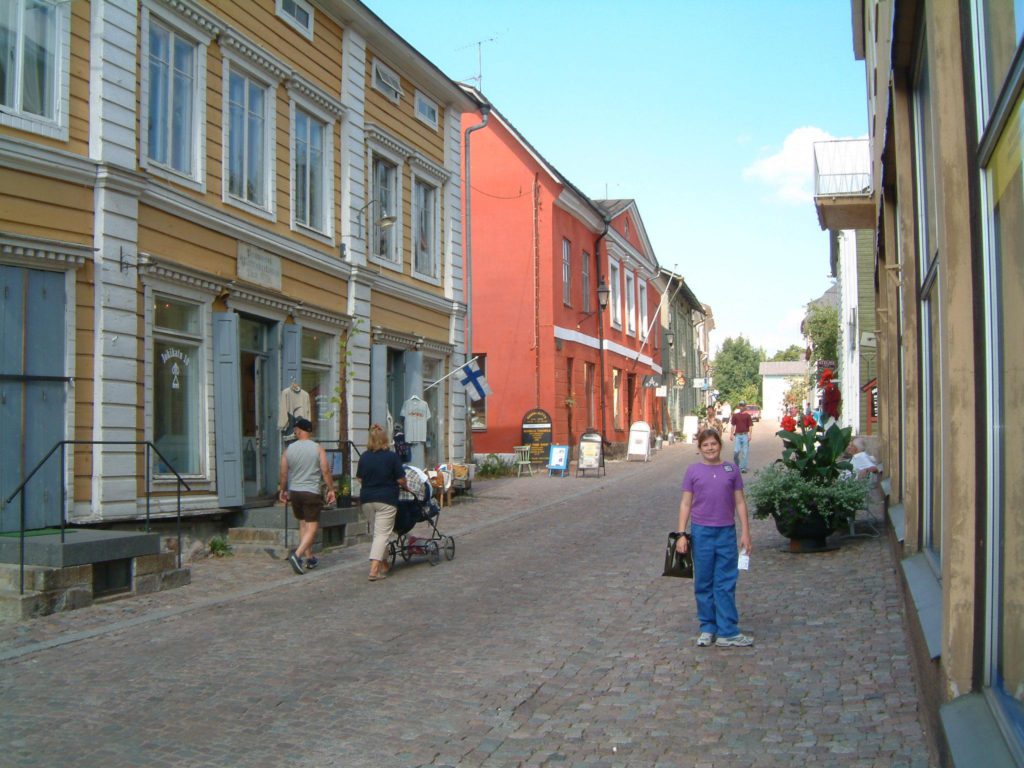
Because the buildings in Finland are made primarily of wood, not many of them are very old. But 59 have survived in Provoo since the 16th century, and are now mostly tourist shops.
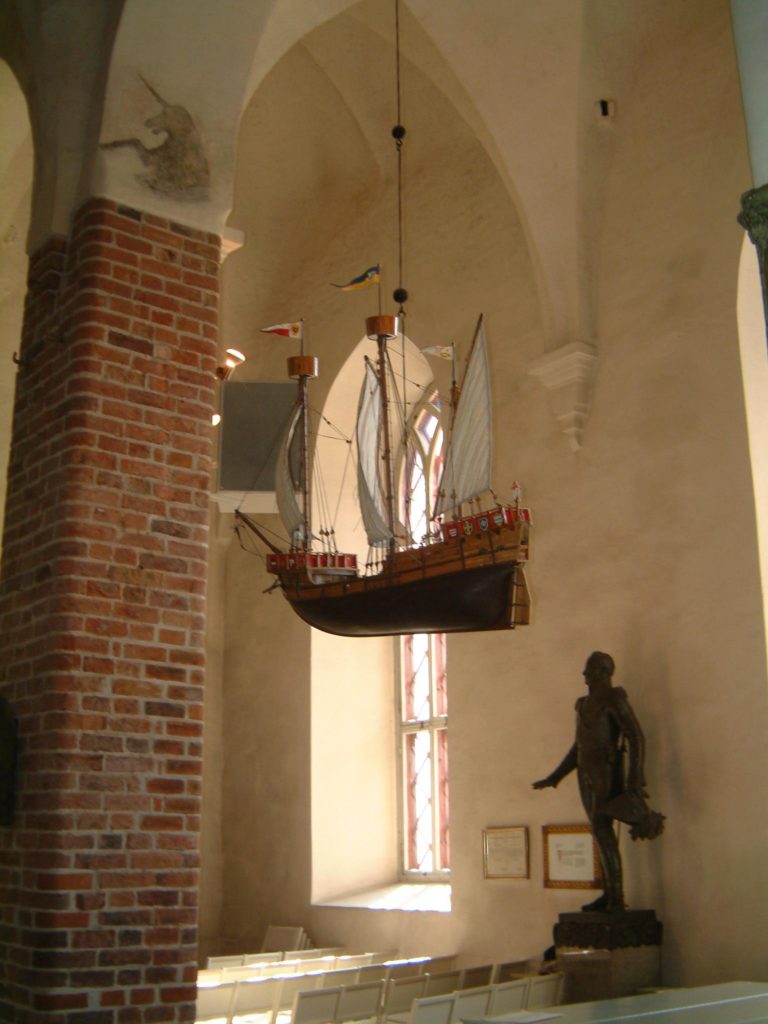
The cathedral, constructed in 1418 is also primarily wood. Needless to say it has been reconstructed a few times. It is a tradition to hang a model of a ship in the church to protect those who sail aboard it. Nearly the entire religious population of Finland is Lutheran.
Other interesting facts:
The Finns are shy, love solitary houses in the forest, and often have remote summer houses where they can live a very primitive existence during the temperate part of the year. The currency is the Euro. The accent is always on the first syllable of every word, as in SOWna for Sauna. There are eight vowel sounds. Education and healthcare is free. As a result taxes range from 35-56%. Over 90% of Finns own their own homes. With a population of only 5 million, all of Finland has only a few more residents than the city of St. Petersburg.
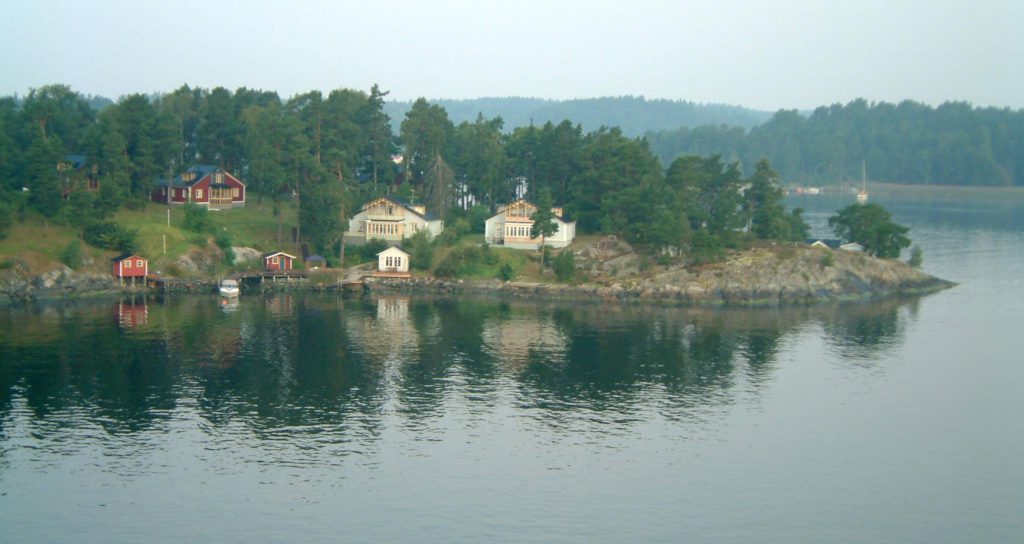
On the way in to Stockholm we passed the most unbelievably beautiful archipelago. 24,000 thousand islands — really the tops of rocky underwater mountain ranges — line the way, dotted with houses and docks.

An amusement park on one peninsula (or island?), the Vasa museum on another, and downtown Stockholm on a third.
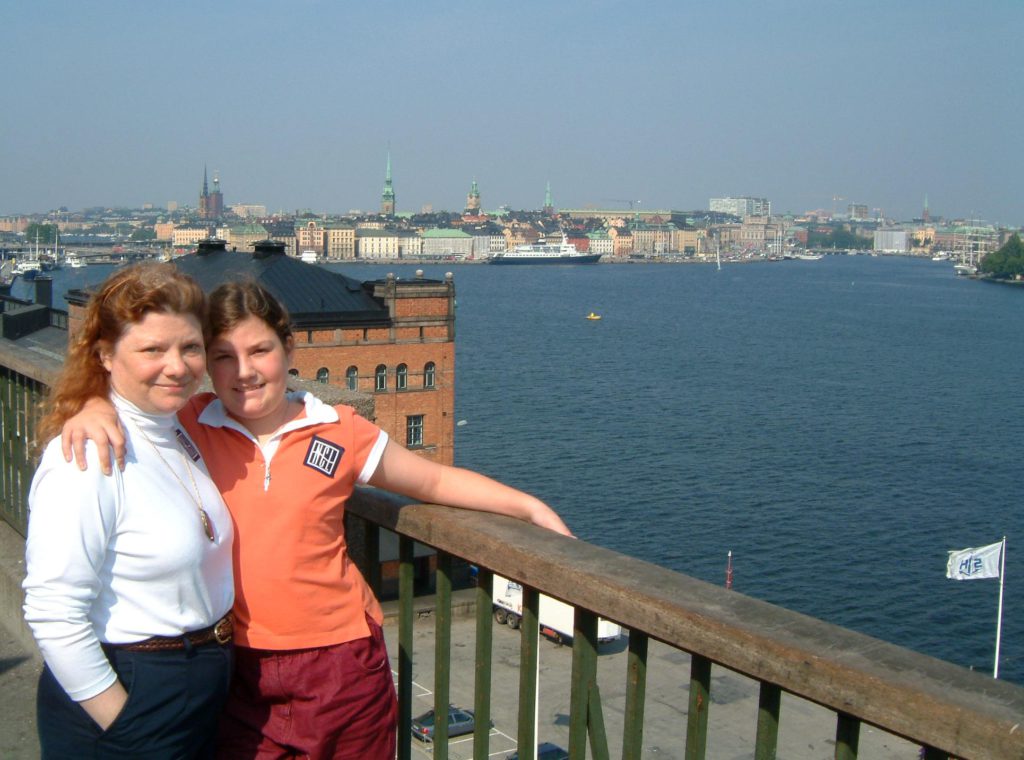
Stockholm is one of the world’s most beautiful cities. It is built on a collection of islands connected by short bridges, and is located between a freshwater lake and the Baltic.
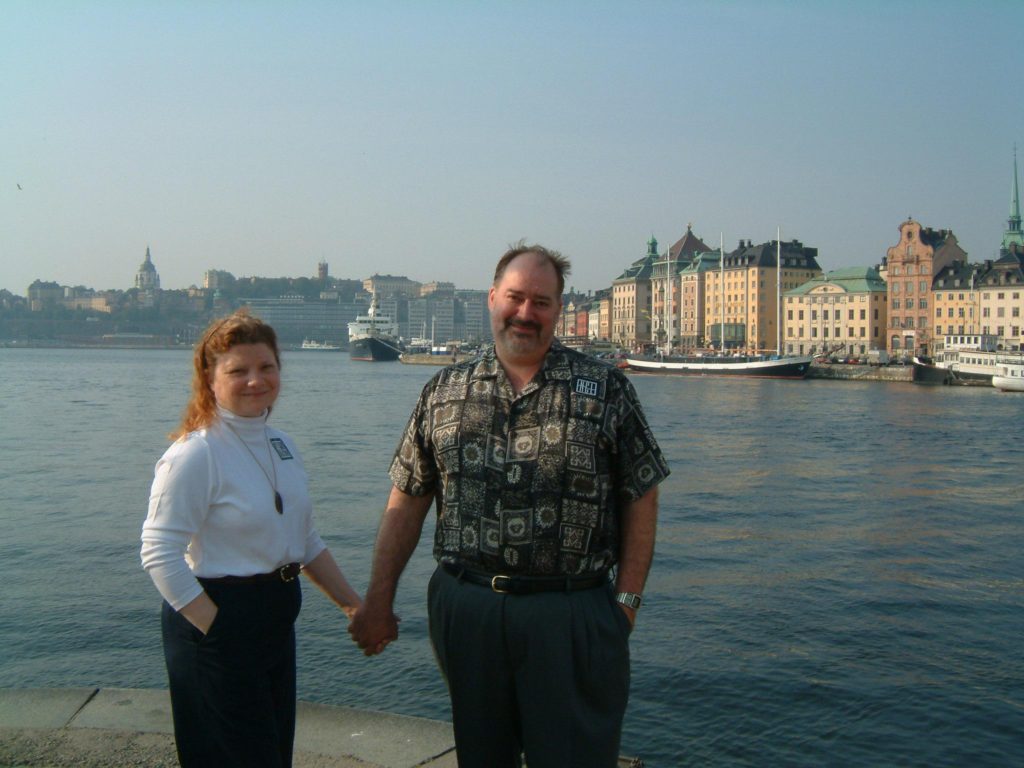
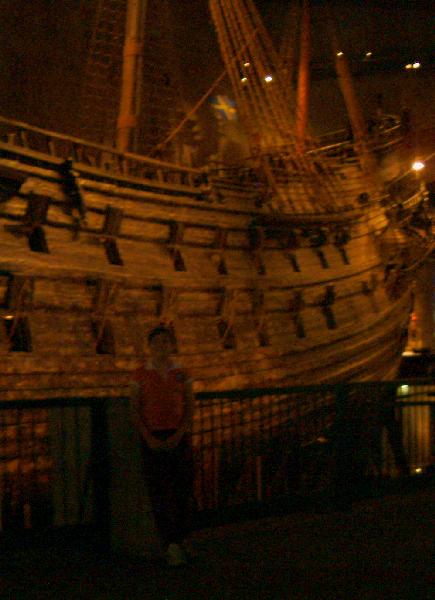
Our guide, Anika, showed us around the city and took us to the Vasa Museum. The Vasa is a warship constructed in 1638 for King Gustav to use during the Thirty Years War. One thousand oak trees, many selected for their specific shapes, went into its construction. The masts were 150 feet tall, and it was covered with elaborate carvings.
A crowd gathered on a beautiful August day to watch its launch. With four of its ten sails set, it left the dock, caught the breeze and heeled over. Water poured into the open gunports and it sank in 110 feet of water.
It was discovered in 1956. Over a period of four years divers carefully tunneled under the hull, then raised it with cables. Because of the low salinity, it was amazingly well preserved, to the point where — once drained of silt — it could actually be floated to a temporary museum for restoration. It took almost 30 years to complete the task. At the Vasa museum this enormous ship is wonderfully displayed and interpreted, recapturing its very brief moment of glory.
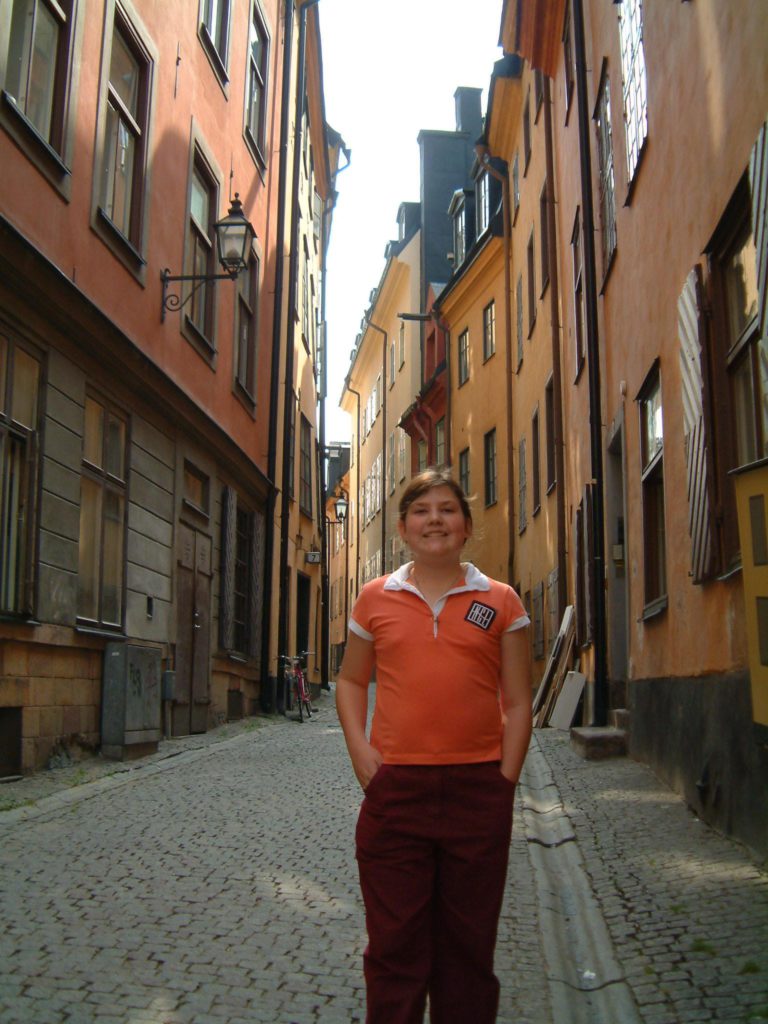
After our tour we caught a shuttle back to Old Town and had lunch in what turned out to be a local hangout. Because it was off of the main tourist street we had a delicious meal for less than the price of a single entree at the restaurants one block away!
Then we did some shopping. Danielle found a copy of Harry Potter in Swedish and I bought some comics books, including Spindle Manne (Spiderman).
As the ship headed out we were treated to several more hours of the beautiful Swedish Archipelago.
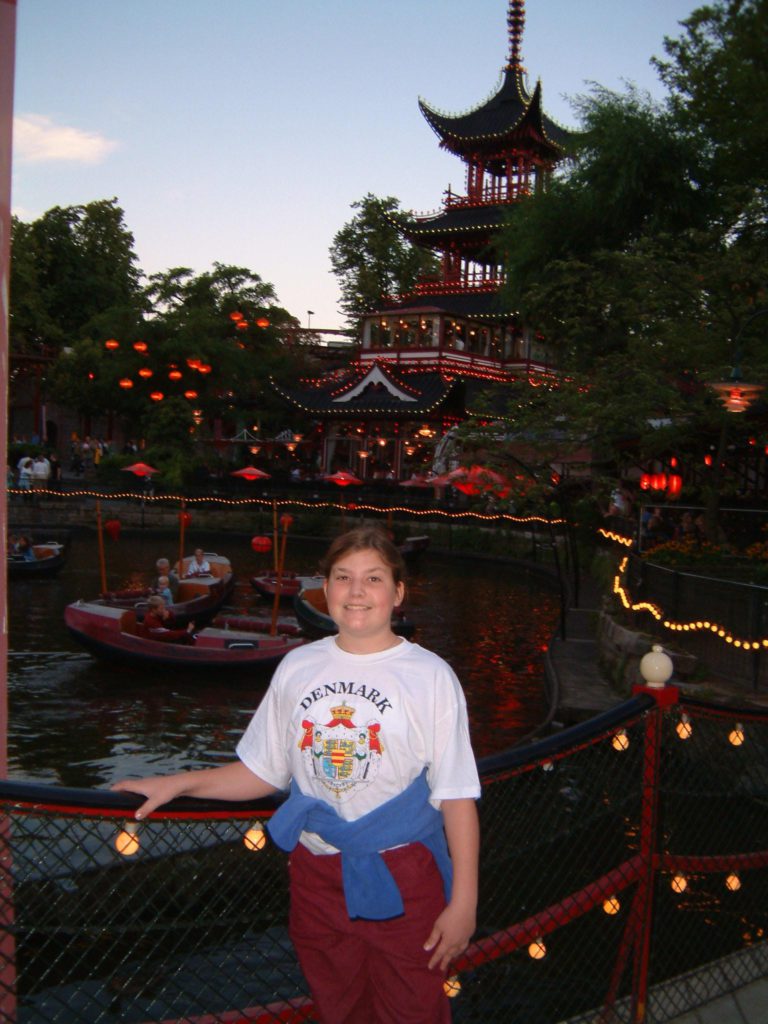
After a restful day at sea, we arrived in Copenhagen (which is really called Kobenhavn) in the evening, and took a bus to Tivoli Gardens.
Created in 1843 by George Carstensen, it is the world’s first theme park. You enter through an area surrounded by charming bistros, interspersed with bandstands and fountains. Farther into the park there are rides and redemption games. It’s sort of a blend of World Showcase and Knott’s Berry Farm.
Danielle and I went on this boat ride where you could steer your own boat, which proved challenging and fun.
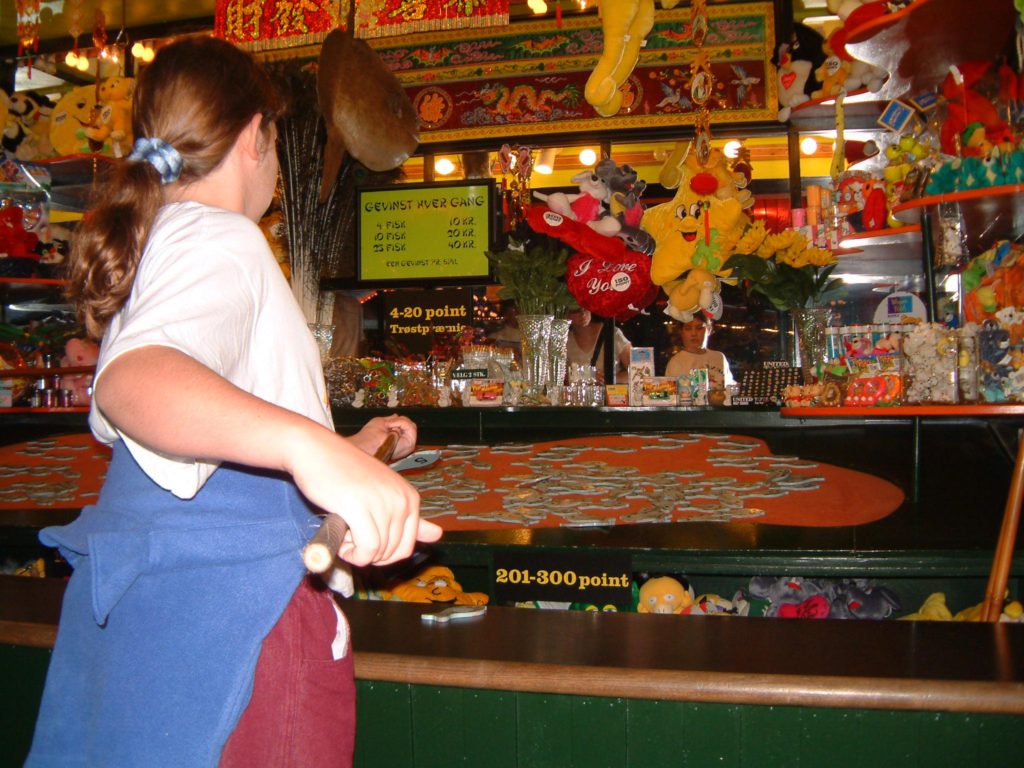
Pick up the fish, add up the numbers, and get a $1 stuffed toy for $6. The park was quite expensive because there was a charge of 1 to 5 tickets for each ride, at 10 Kroner per ticket ($1. 40). Not counting general admission, we dropped about $70 in two hours.
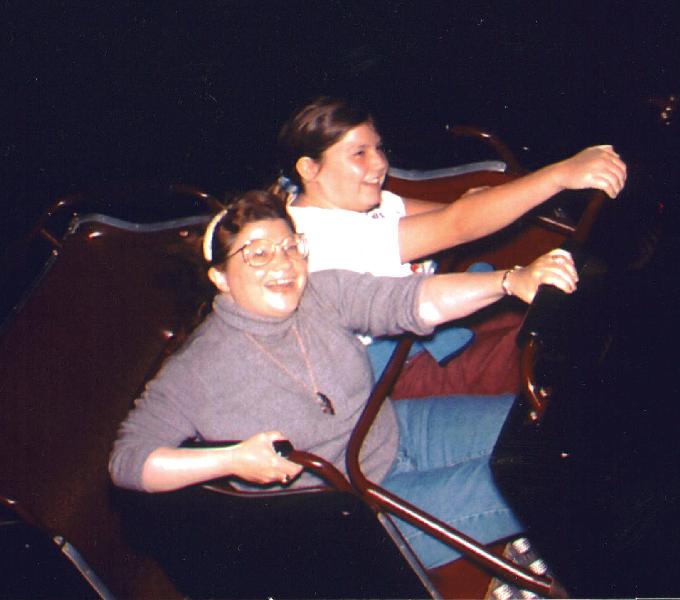
Linda and Danielle enjoyed the small roller coaster.
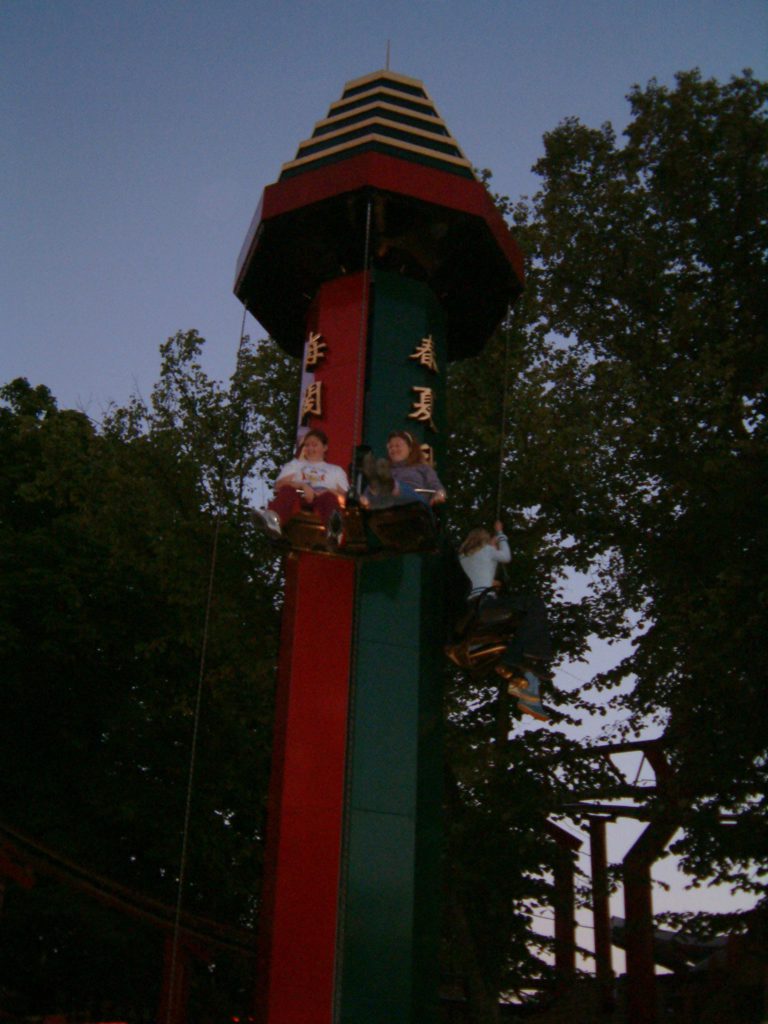
This is the ride where you pull yourselves to the top. Danielle and I tried it at Legoland, and Linda got a chance here.
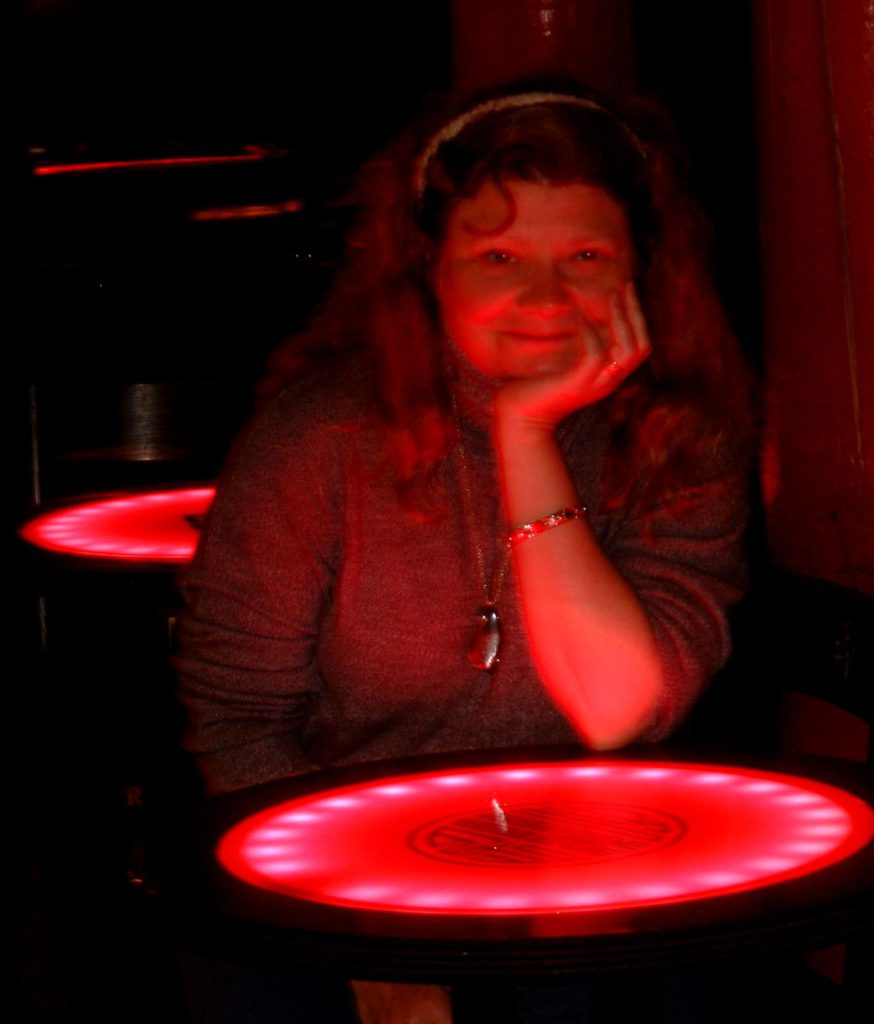
Tivoli lives up to its fairyland billing after dark, when the lights come one everywhere, Linda liked these tables.
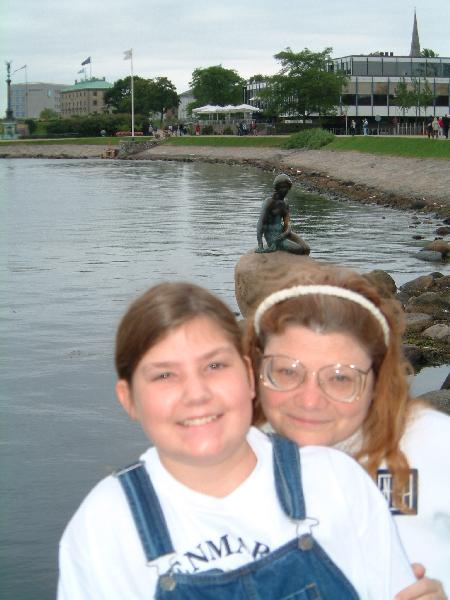
Wednesday morning we set out on a three hour tour of Copenhagen. Our first stop was the statue of the Little Mermaid, which is within walking distance of the dock. The city of Kobenhavn regards her as their city symbol.
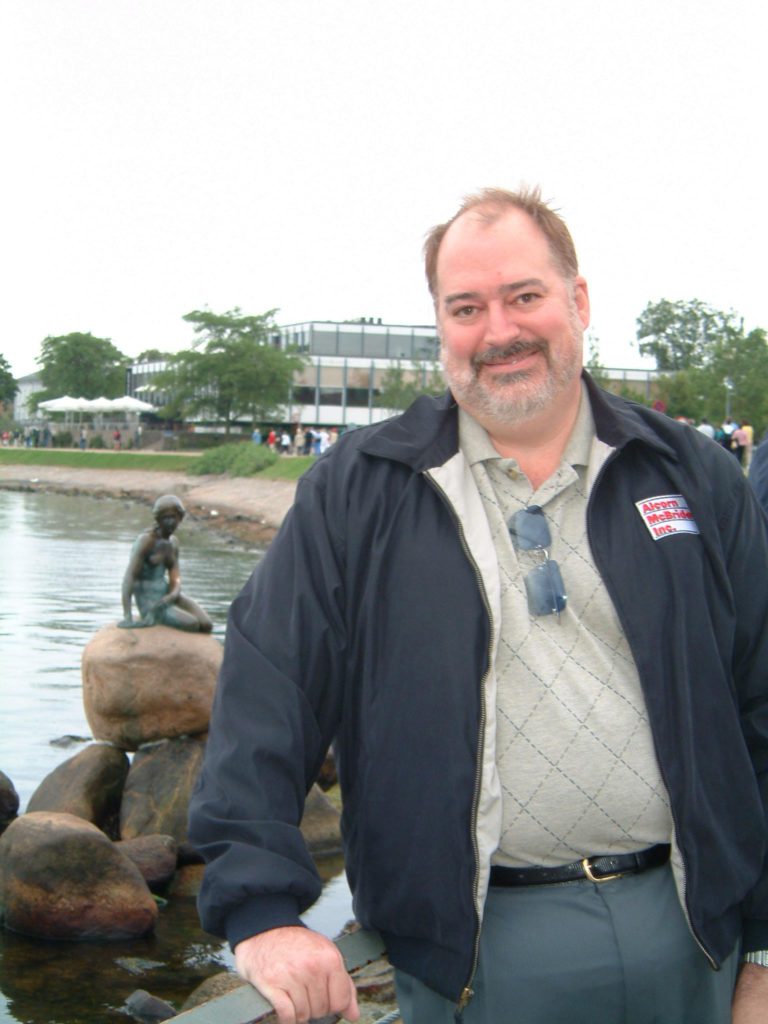
I had thought the statue was “in the harbor”, but you can walk right up to it. She’s lost her head twice, but was wearing it the day we were there.
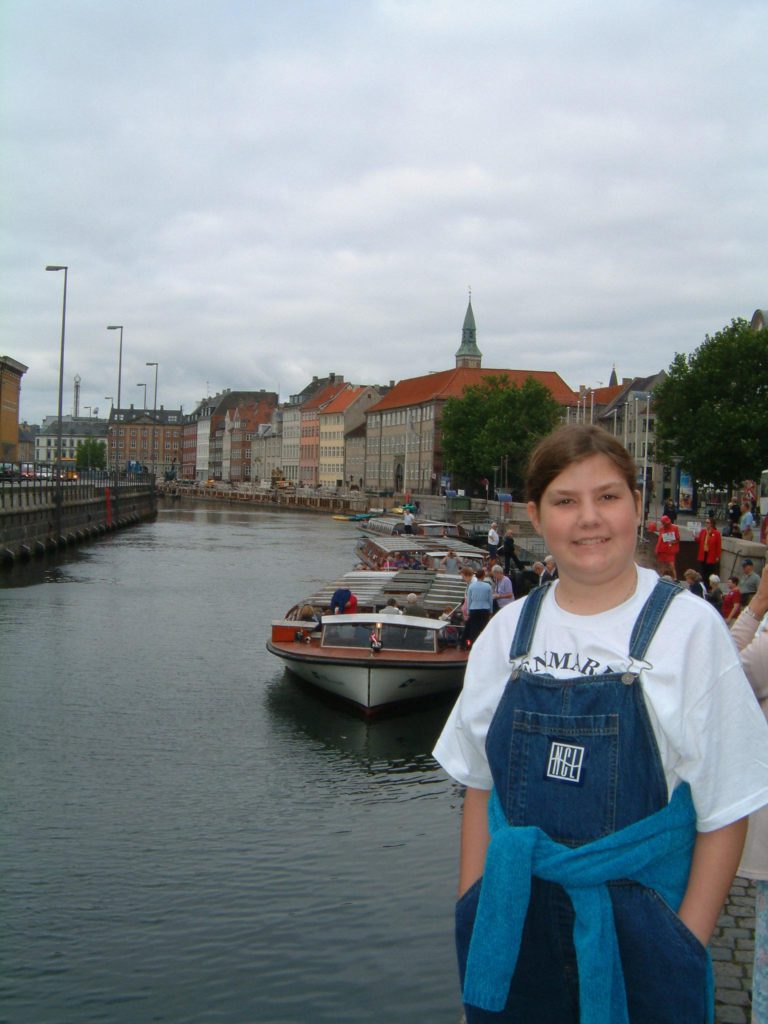
We took a boat ride tour of the canals and harbor. This is the best way to see the city, as the view of the more interesting sites is unobstructed.
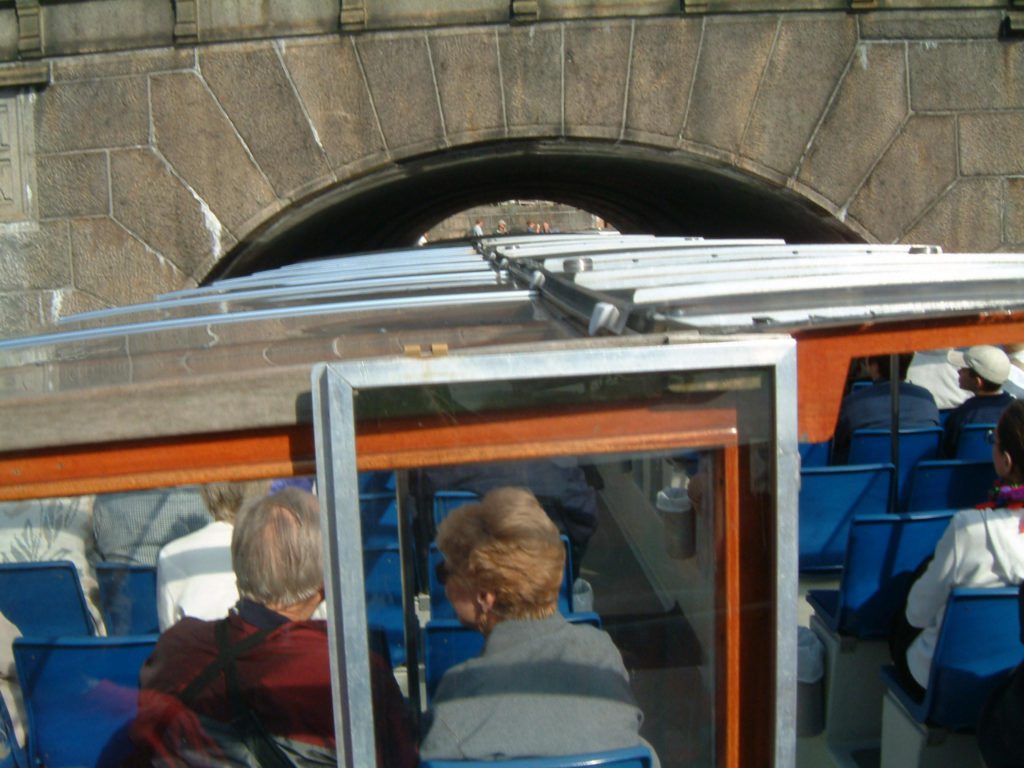
The tour boats have been constructed to just fit through the smaller tunnels, as evidenced by this picture of the tightest spot. After going through this tunnel, the canal turns so sharply that it took our captain about five minutes to jockey us around the corner.
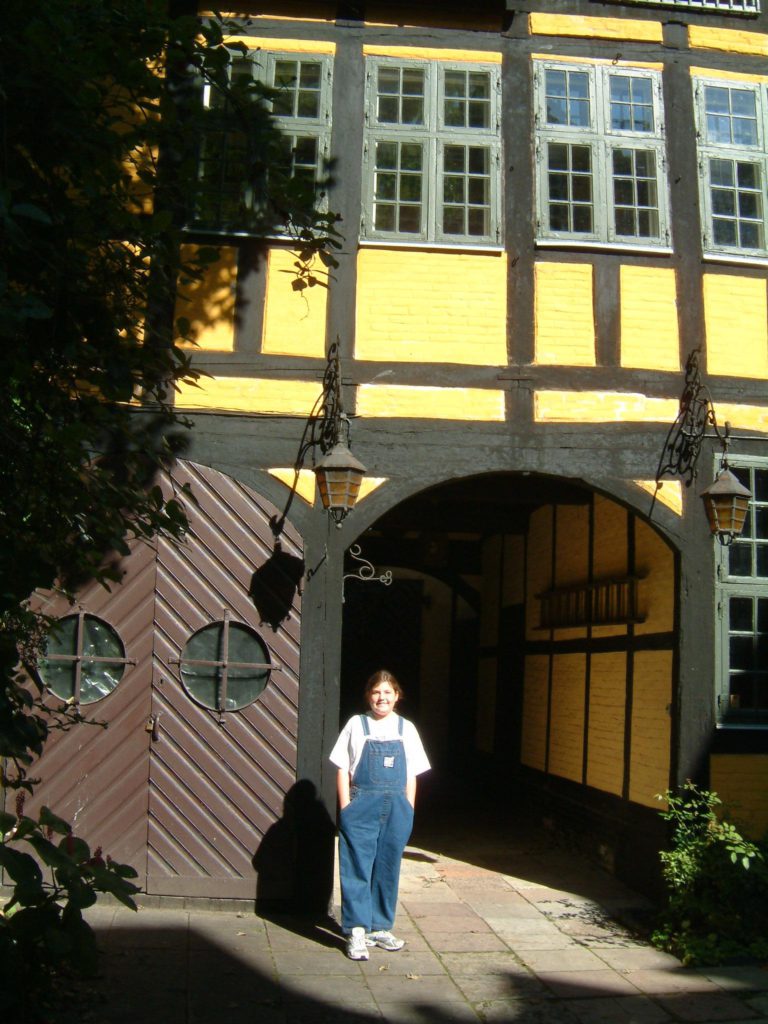
Our tour bus stopped at a few somewhat pointless locations, including this pretty courtyard, so we decided to leave the tour and strike out on our own for lunch. We walked to the New Harbor. It’s a canal lined with colorful buildings, sidewalk cafes and shops. It used to be the red light district.
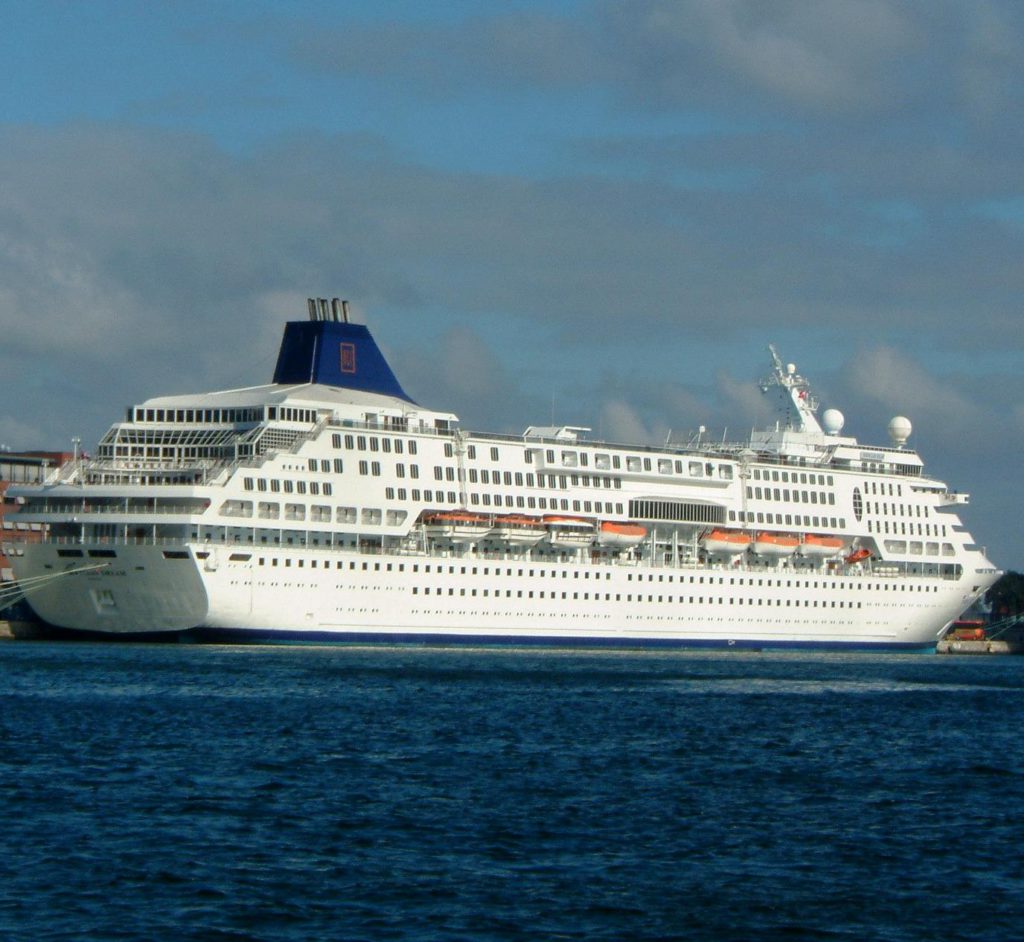
We had a lovely lunch of Danish specialties, then walked about a mile along the seaside back to the Norwegian Dream.
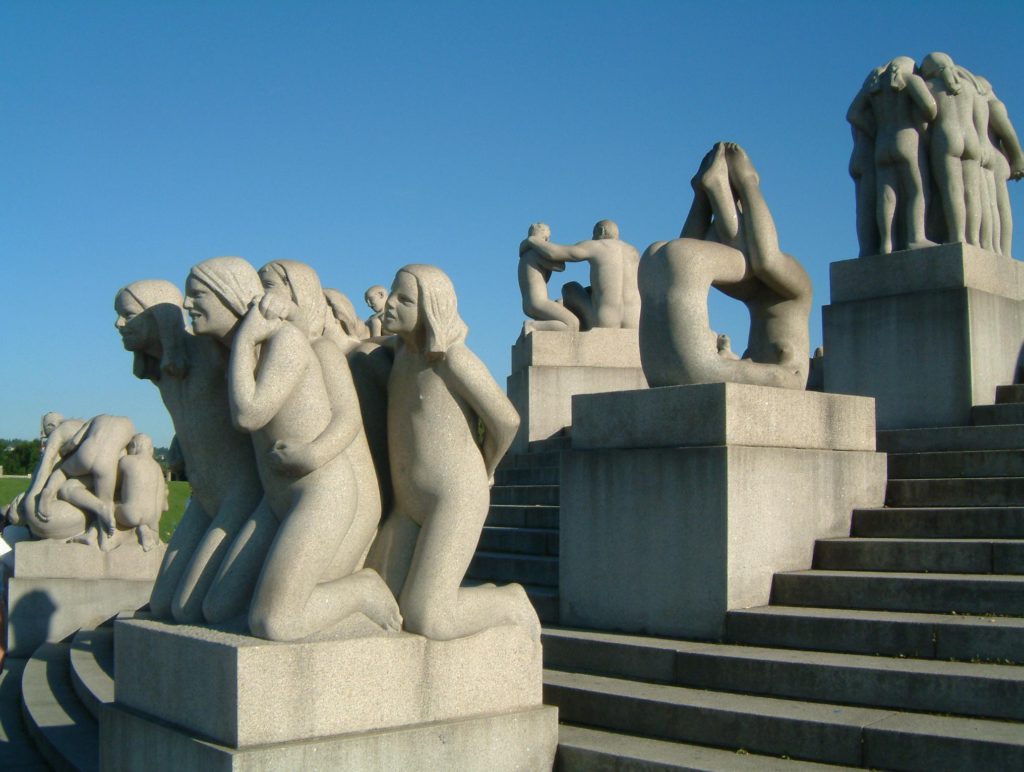
Thursday morning we set off right after docking (7:45 am) for our final — and longest — excursion of the trip, Oslo Highlights and the Hadeland Glassworks. Guide Turidy and driver Odd took us first to Vigeland Sculpture Park. For over 30 years prior to World War II Gustav Vigeland, with the aid of stonecutters and the support of the government, created 200 sculptures depicting the phases of life. I wasn’t really expecting that much, but the statues really do capture the people they depict, from birth to death.
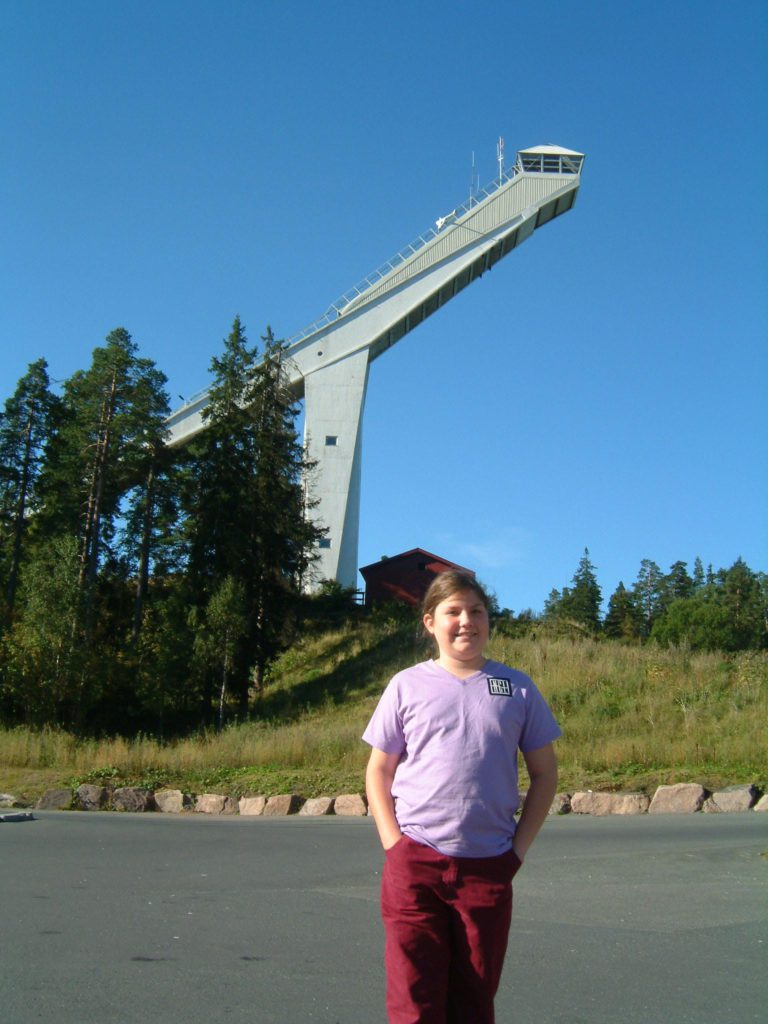
Next stop was the Holmenkollen Ski Jump high above Oslo. Originally constructed in 1892, it has been lengthened 15 times and was used for the 1952 Olympics.
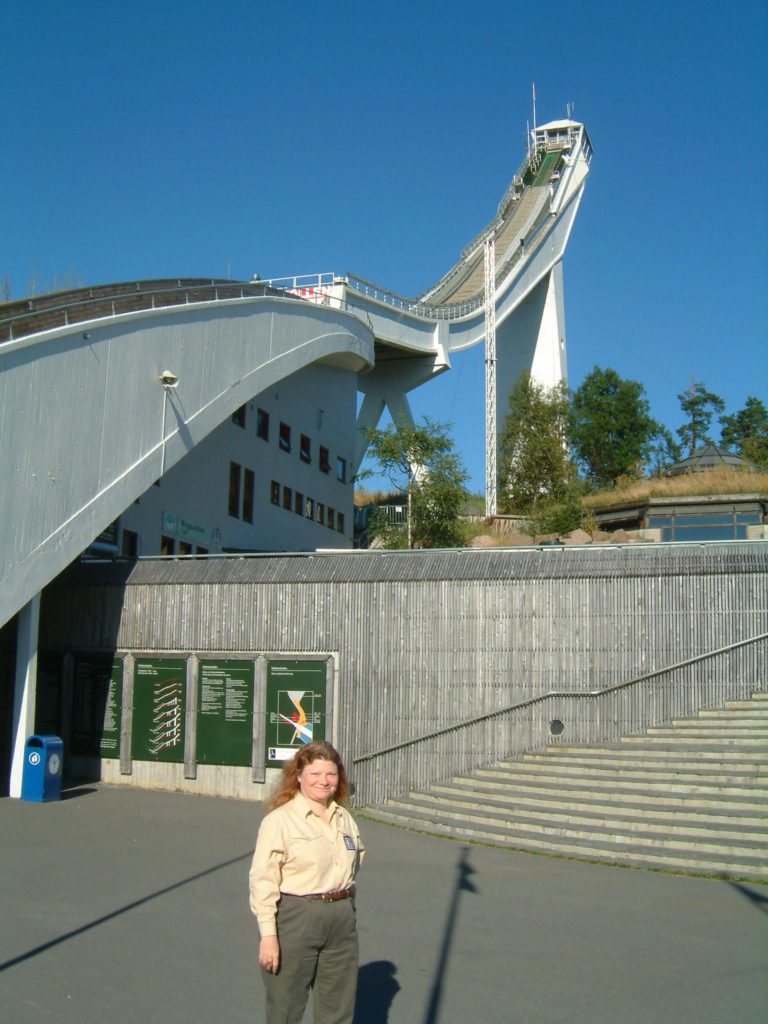
Current record: 137 meters. Watch that first step.
Oslo is geographically one of the largest cities in Europe, with an area equal to that of Los Angeles. But the population is only 500,000, and the geographical center is in the middle of a forest. Many of the houses have extremely shiny roof tiles, to discourage the snow from sticking.
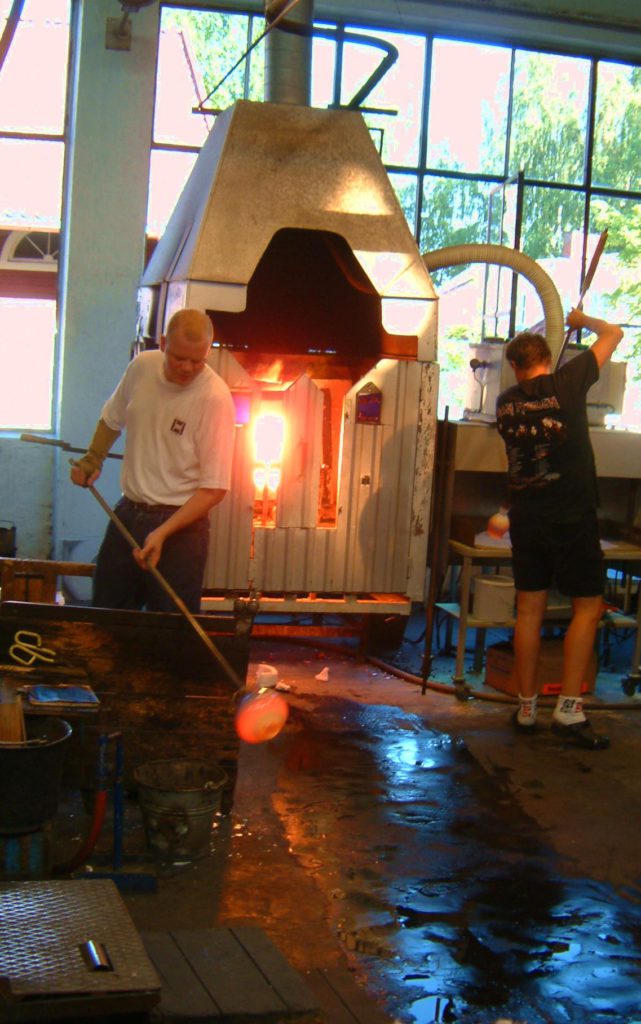
After an hour drive north we arrived at the Hadeland Glassworks. In operation for almost 250 years, the glassworks makes art glass, bowls, and stemware. We watched in fascination as three glassworkers turned clear molten blobs into one beautiful piece after another — all of the same design, but each unique.
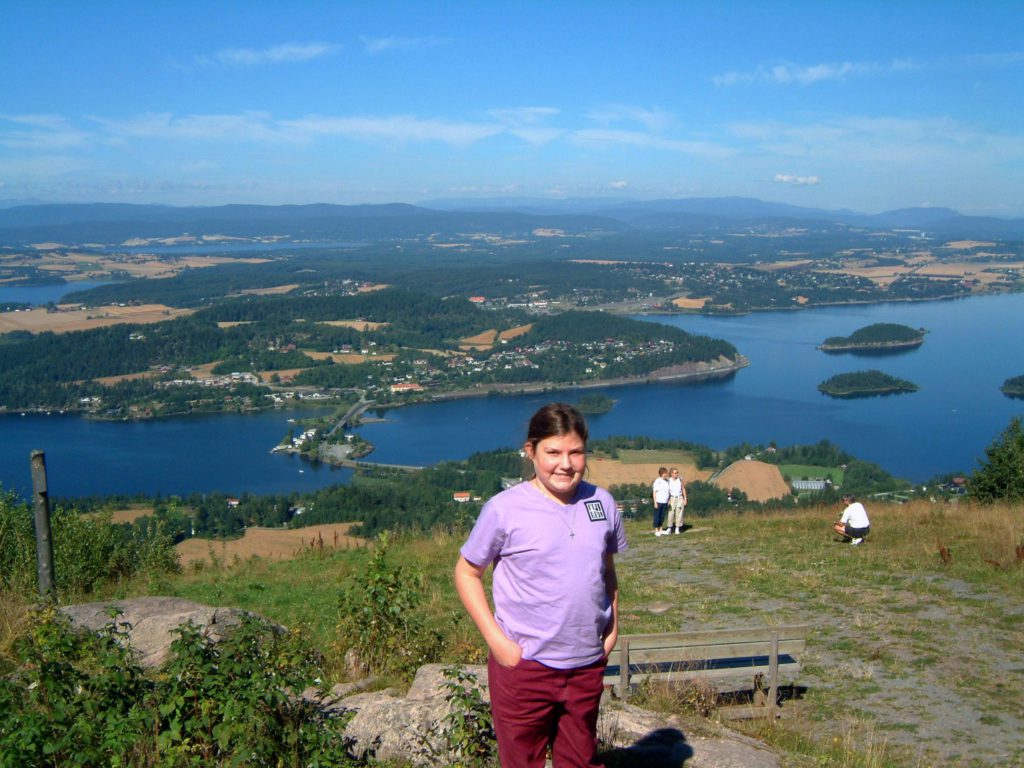
The bus struggled up 1100 feet of twisty mountain road past beautiful chalets to reach this spectacular viewpoint overlooking Tyrifjorden, Norway’s fifth largest lake.
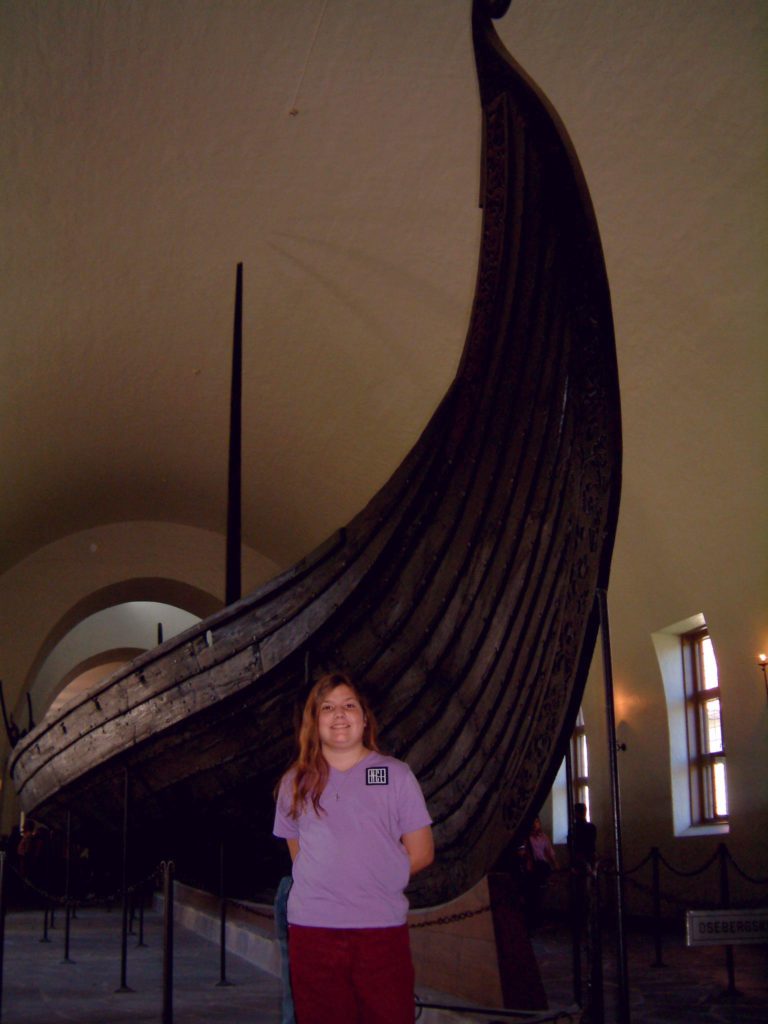
After a delicious lunch at a hotel near the lake (a smorgasbord almost identical to that in Epcot’s Norway pavilion) we headed back to Oslo. Our final stop was at the Viking Museum, where we saw three 11th century Viking boats excavated from burial mounds over one hundred years ago. The detail work and artifacts accompanying them gave a much more elegant picture of the Vikings than I was expecting.
Tomorrow we spend a day on the North Sea, arriving in Dover Saturday morning. From there we transfer by bus to Gattwick for our flight home.
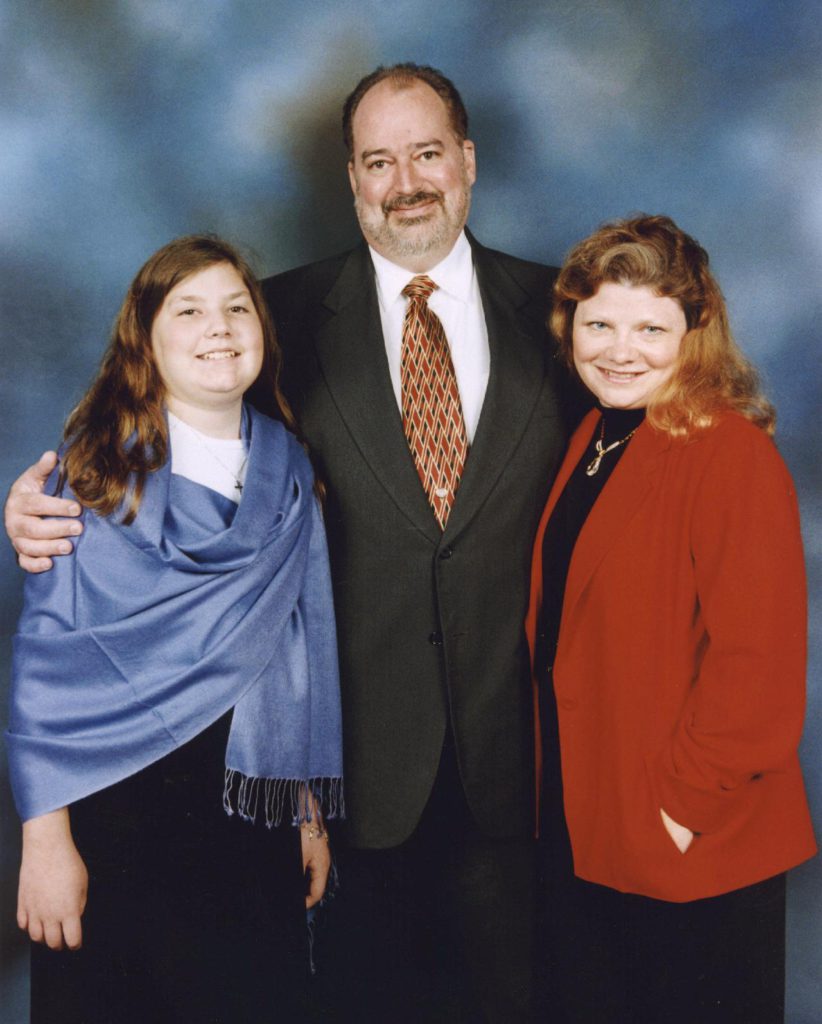
Notes for Baltic cruises:
- A starboard cabin is definitely the way to go. The view is better.
- The two night pre-stay in London is a great way to make sure you’re rested enough to enjoy the first few days of the cruise.
- We’d never been on a cruise with so much scenery passing near the ship. It’s so much more interesting than the Caribbean.
- The Kiel Canal is a surprisingly good part of the itinerary.
- If you want to really see the art in The Hermitage, you need a Russian Visa and to hire a driver.
- The most scenic part of the cruise is the entry and exit to Stockholm. It’s worth getting up early to enjoy it.
- Skip a bus tour of Copenhagen. A boat ride is fun, but it’s an easy city to see on your own. You can just walk to New Harbor or the shopping districts from the port.
- Norwegian Cruise Lines had substantially better service than the others we’ve taken. Every one really made an effort to get to know us. All the more amazing since their fixed gratuity is simply added to the bill, a great feature that avoids a last day scramble for cash. The sommelier in the Bistro, who I would have guessed was 22, told us she’d worked for the line for 17 years!
- Norwegian Cruise Line’s freestyle dining is the way to go — no schedules, and a choice of restaurant every night. They also have a great debarkation system. You have an assigned time based upon your destination, and you can enjoy breakfast or hangout in your cabin until then.
- The Norwegian Dream is a modest ship. I would like to try an NCL cruise on one of their newest, larger ships.
- Amber is a great deal in Estonia. I would skip the tour and go shopping next time. Scandinavia is very expensive, so this is really the only opportunity to shop for anything other than souvenirs.
Seven Countries, Seven Currencies:
| Estonia – Krooni |
| Russia – Rubles |
| Finland – Euros |
| Sweden – Swedish Kronor |
| Denmark – Danish Kroner |
| Norway – Norwegian Kroner |
| England – Pounds |
Trip highlights:
| Vasa Museum |
| Tivoli Gardens |
| The contrast between Peterhof and the ruins of Leningrad |
| Hadeland Glassworks |
Charleston and Savannah 2002
WPS Southern Heritage Tour
April 8-12, 2002
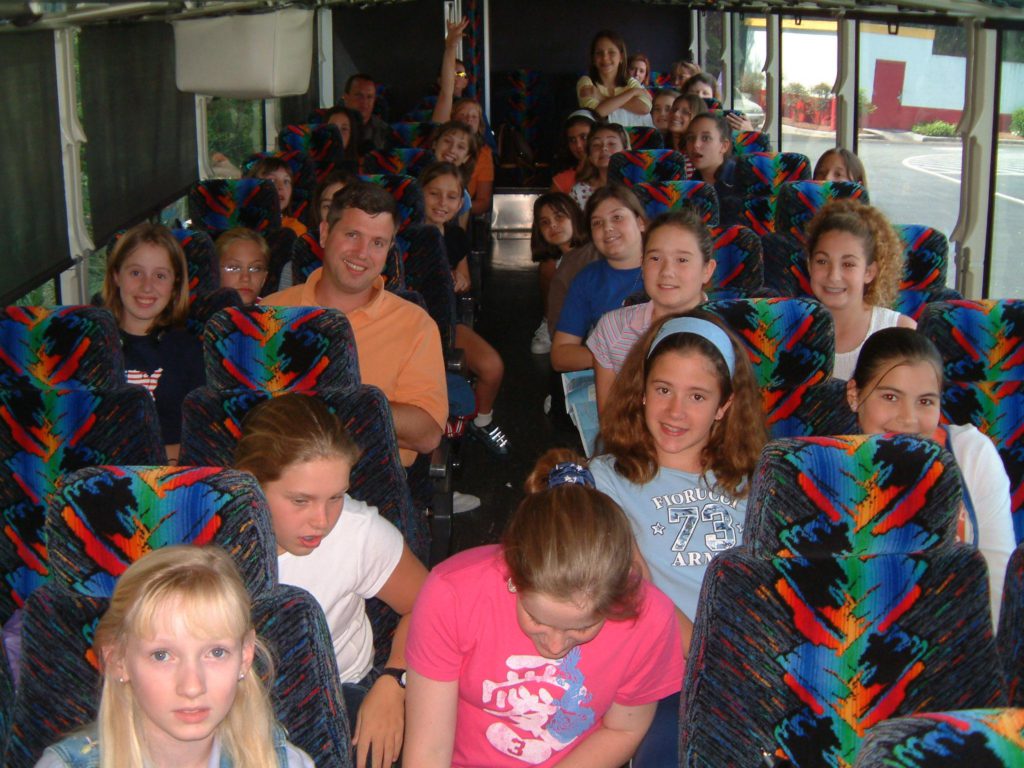
Monday
6:00 AM came an hour early, with the change to daylight savings time only a day old. It was still pitch black as we pulled out of the Windermere Preparatory School parking lot and headed for Charleston. Two, buses, one for girls and one for boys, were both nearly full, with 56 students and 23 chaperones — nearly all of the fifth and sixth grade classes. I was on the girl’s bus, and guess I got the better deal, as the video player worked. The kids were very patient on the ten-hour drive to Charleston. They had notebooks with class assignments in all different subjects, and immediately got to work learning about Charleston History .
We stopped only twice, the second time at a McDonald’s somewhere in Georgia for lunch. I had made up a word search puzzle, which helped pass the time.
We learned that it’s pretty challenging to come up with seven-letter words using the letters in Charleston (never mind that the computer can find 94 of them!) The winners were Bramjot and Erica Kordsmeier .
We also learned that Chitty Chitty Bang Bang is a VERY long movie .
Charleston
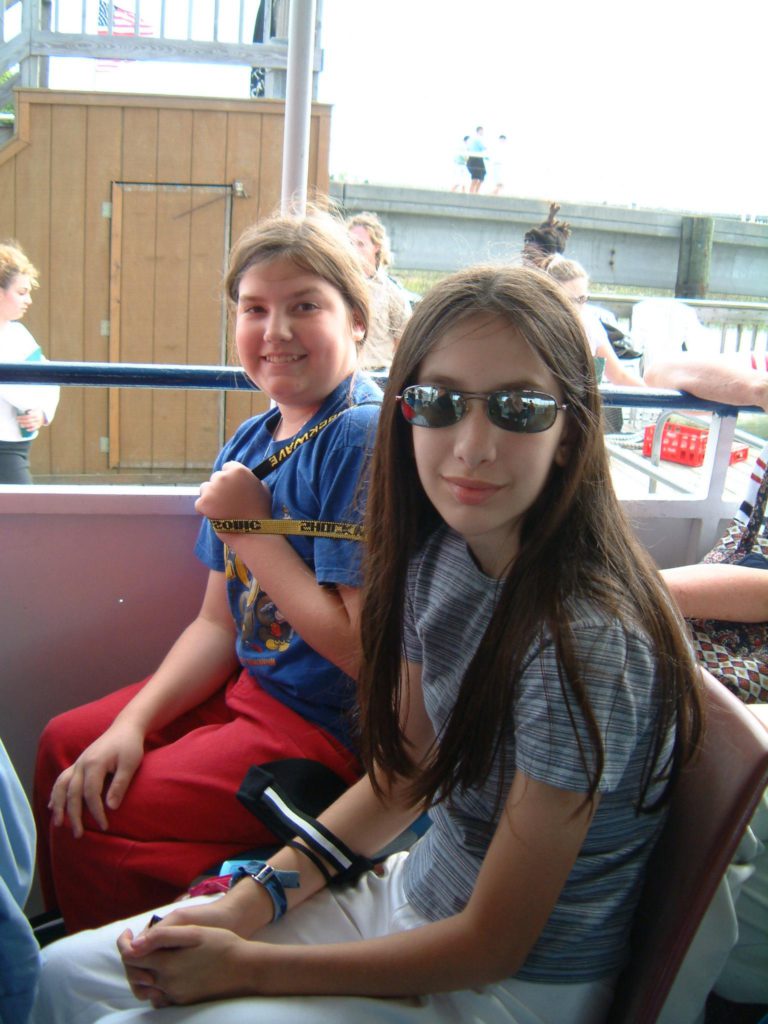
We arrived at Patriot’s Point and met out tour director, Frankie, a bit too late to visit the Yorktown aircraft carrier, but in time for the last boat to Fort Sumter.
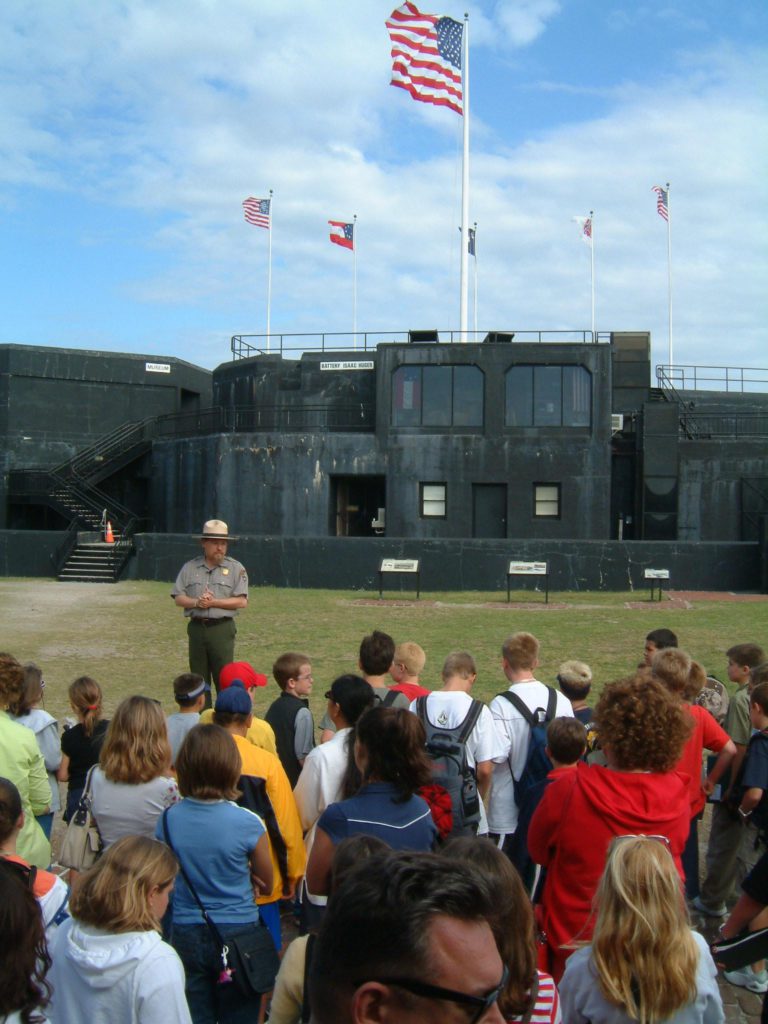
Fort Sumter is operated by the National Park Service.
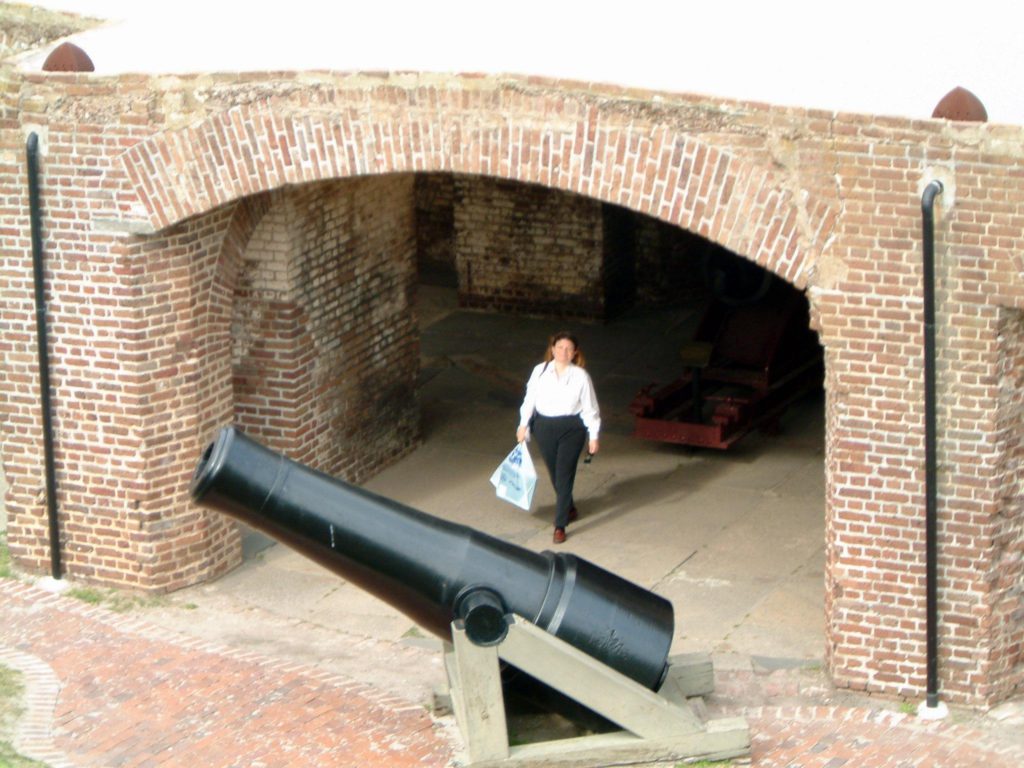
These aren’t the first cannons from the fort, but they are old.
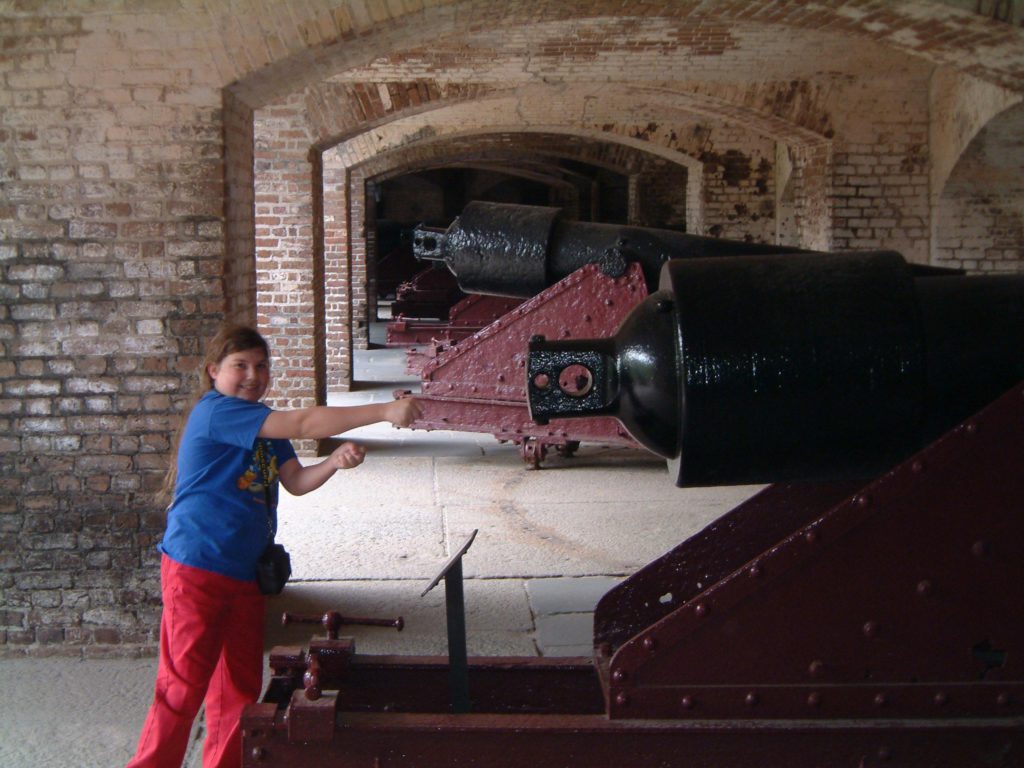
To strengthen the fort for the Spanish American War, these cannon placements were filled with dirt and rubble. They were excavated in the 1950s. Archaeologists were surprised to discover that the cannons were still there .
Tuesday
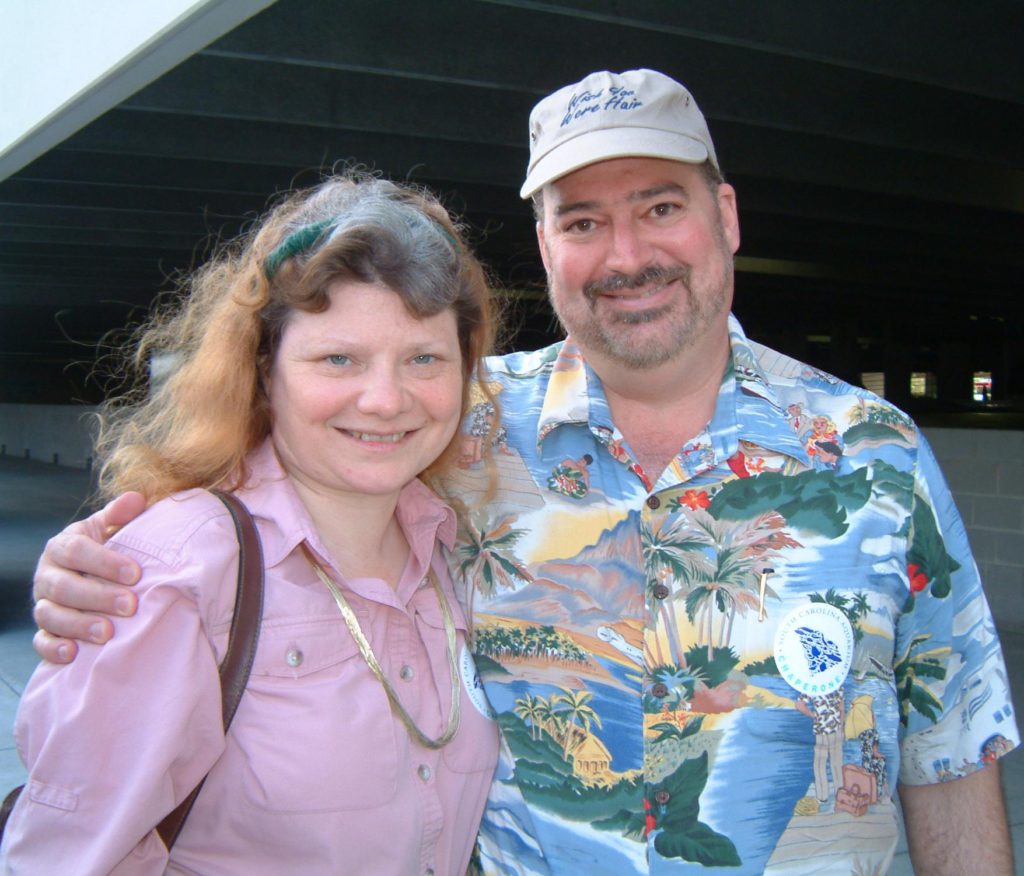
Tuesday morning we had a nice breakfast at the hotel, then headed for Charleston. We passed a replica of the Confederate submarine the Hunley. It was the first submarine to succeed in sinking a ship, although its crew subsequently perished. It was forty feet long, but so skinny it is hard to imagine eight or nine men crammed inside, hand cranking the propeller. It would have been like crawling into your own coffin .
Once in Charleston we discovered we had left one student and his mother at the hotel, and both buses made the round trip to pick them up. Nevertheless, we arrived at the Charleston Aquarium with plenty of time to explore.
The best exhibit at the Charleston Aquarium was UFOs — Unidentified Floating Objects. Between the Tampa and Sydney Aquariums, I thought I’d seen pretty much everything, but there was some REALLY weird stuff in this exhibit.
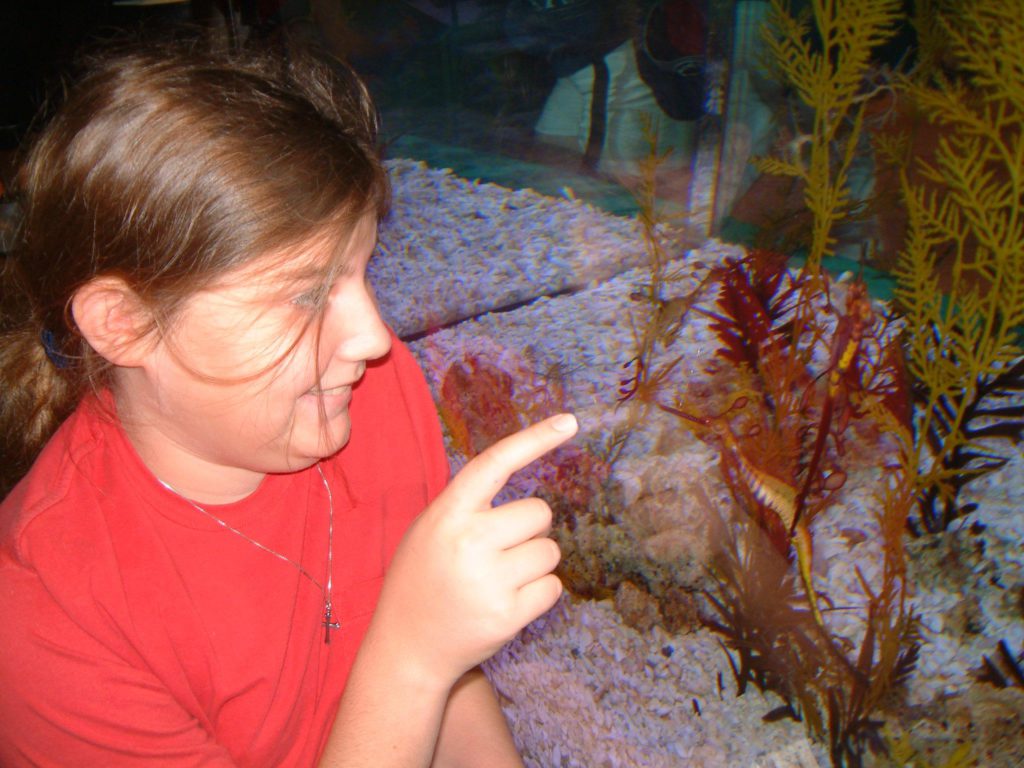
Here, Dani points at some very fanciful seahorses.
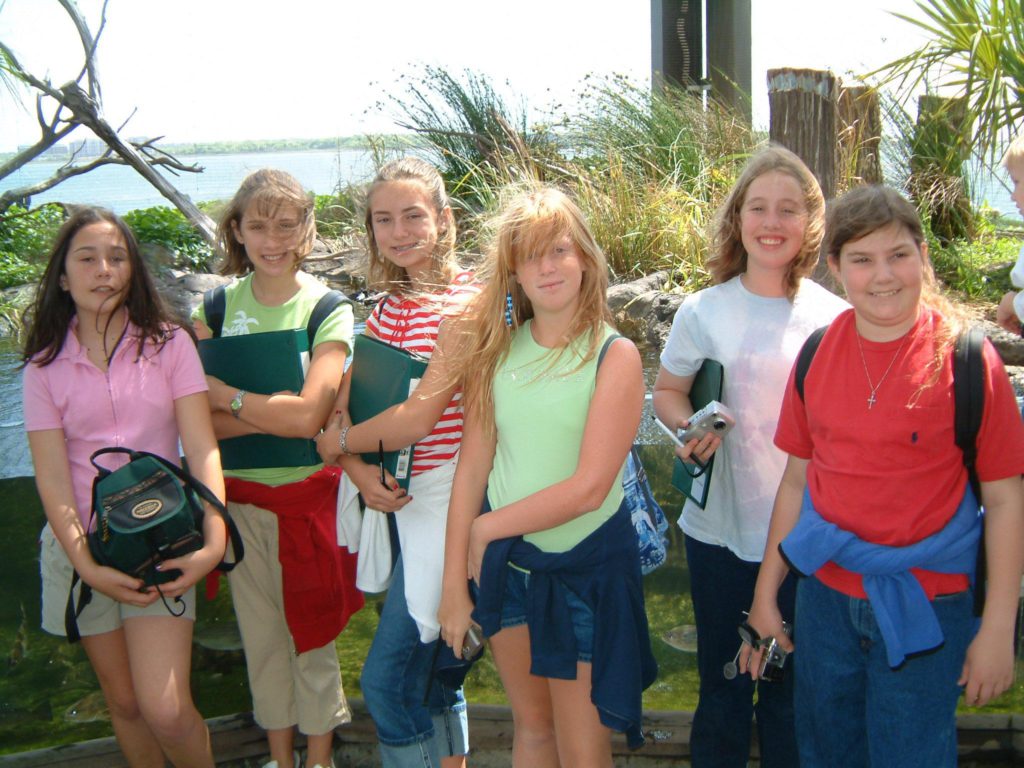
The salt marsh exhibit yielded few clues in filling out the curriculum.
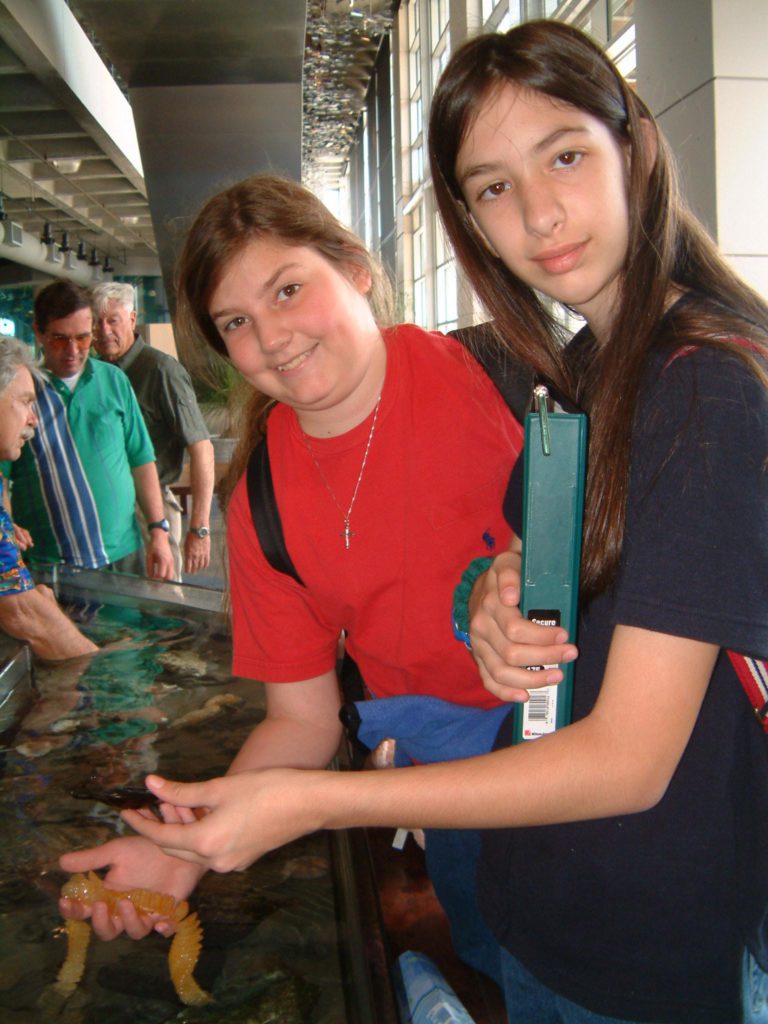
Picking up slimy things .
We had a leisurely lunch at a food court outside the IMAX theater, then saw a fabulous film about Earnest Shakleton’s ill-fated attempt to cross Antarctica in 1914. He and his crew survived a year and a half in and on the ice, escaping from their ship, the Endeavor, as it was crushed. Shackleton and five others made an 800-mile journey in a rowboat, returning to rescue the entire crew. A remarkable accomplishment, and the best IMAX film I’ve seen.
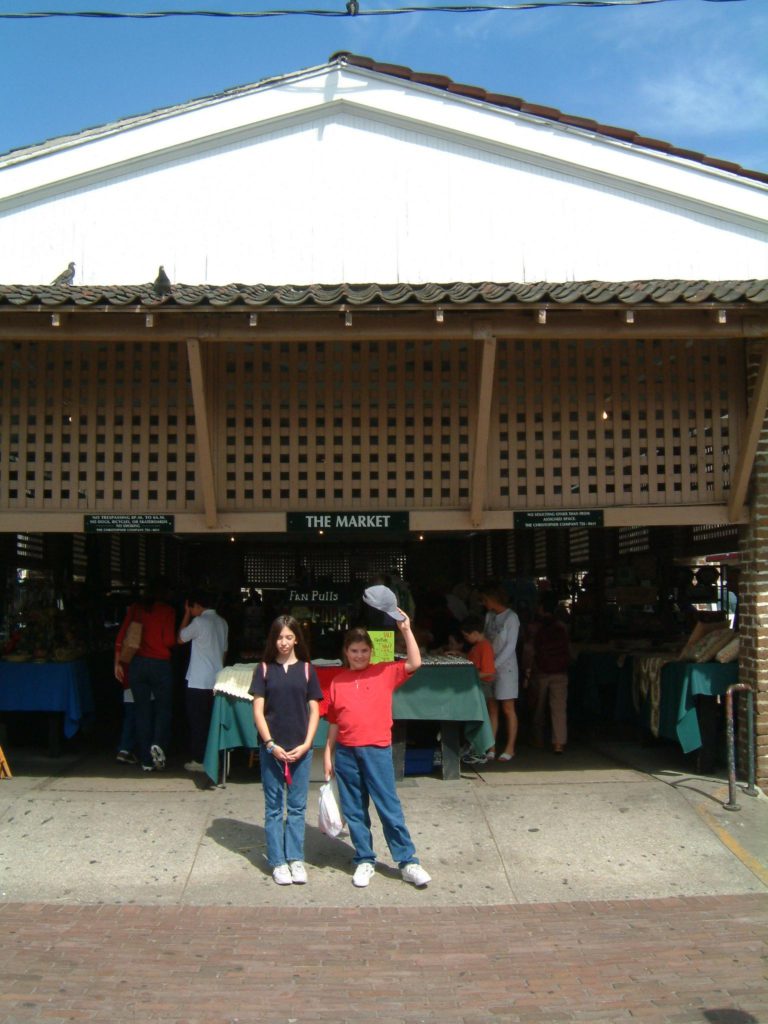
Our next stop was the market in downtown Charleston. Originally deeded to the city for use as an open air food market, it is now a souvenir market with many interesting arts and crafts.
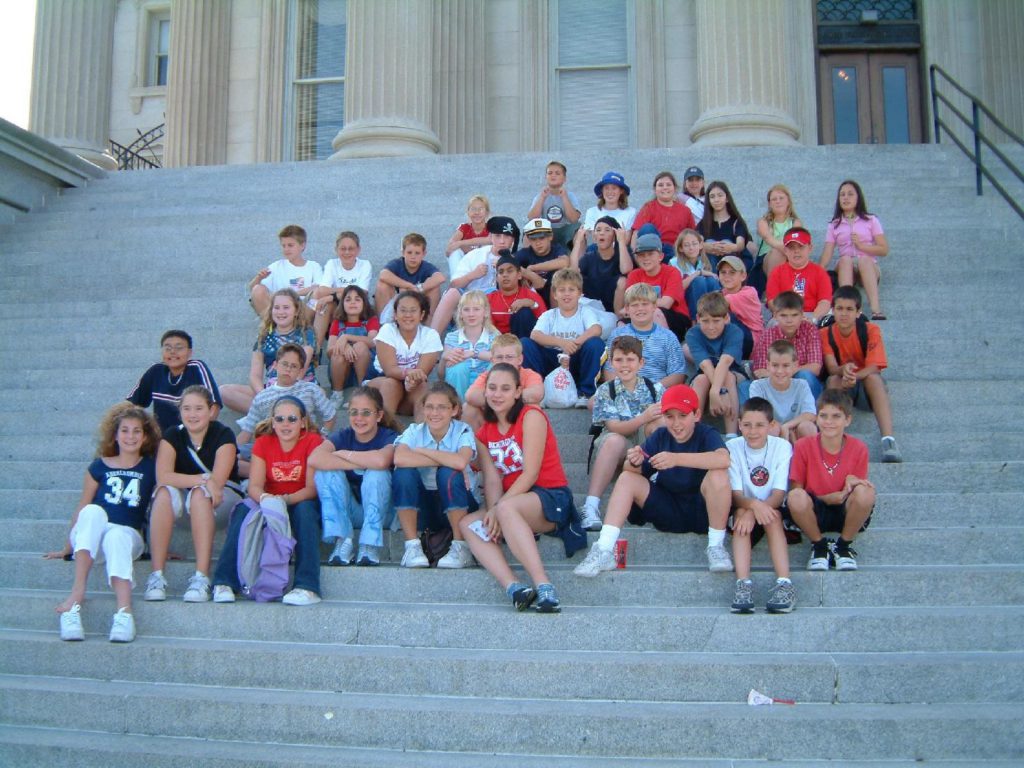
Student group shot.
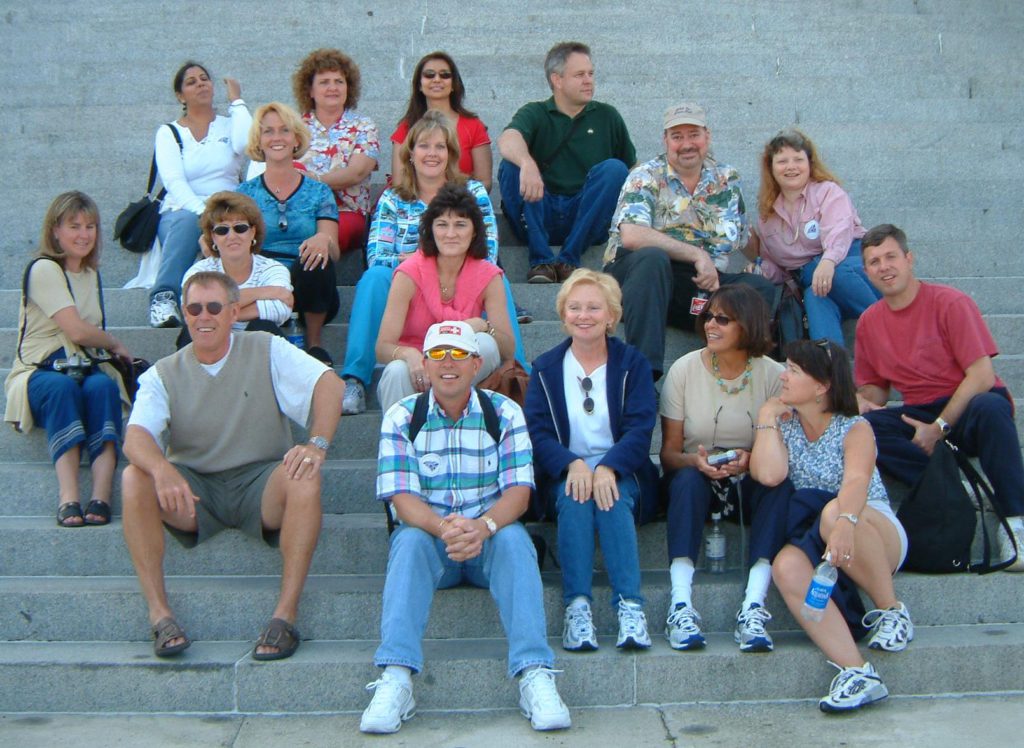
Chaperones.
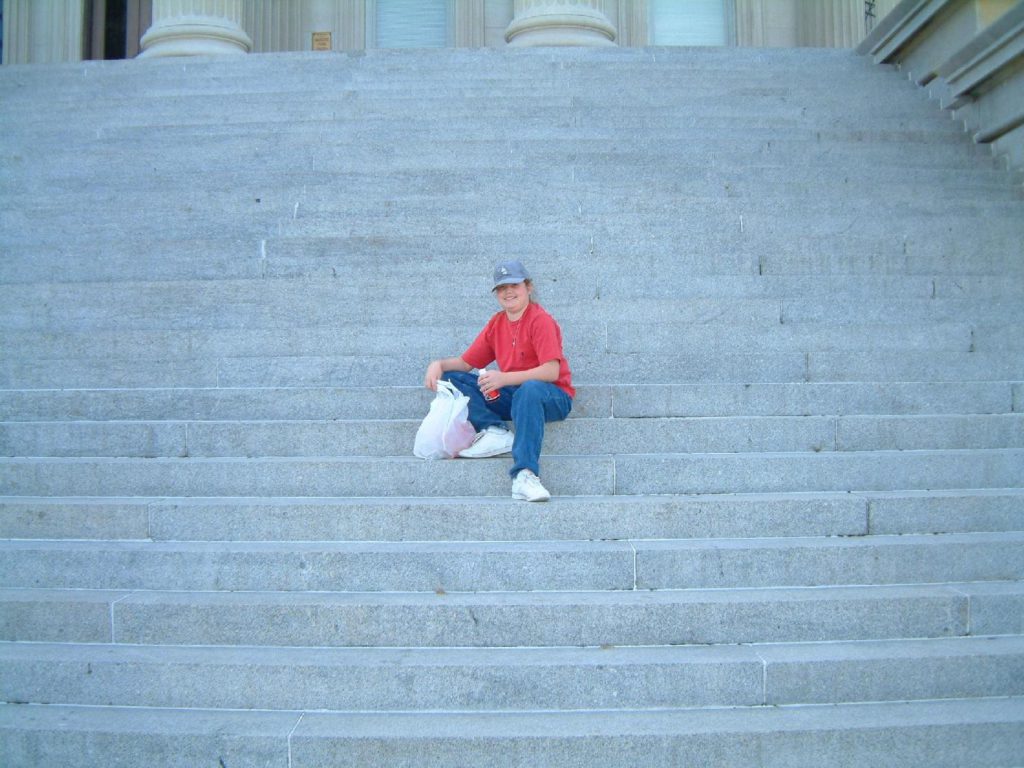
Hey! Where did everybody go?
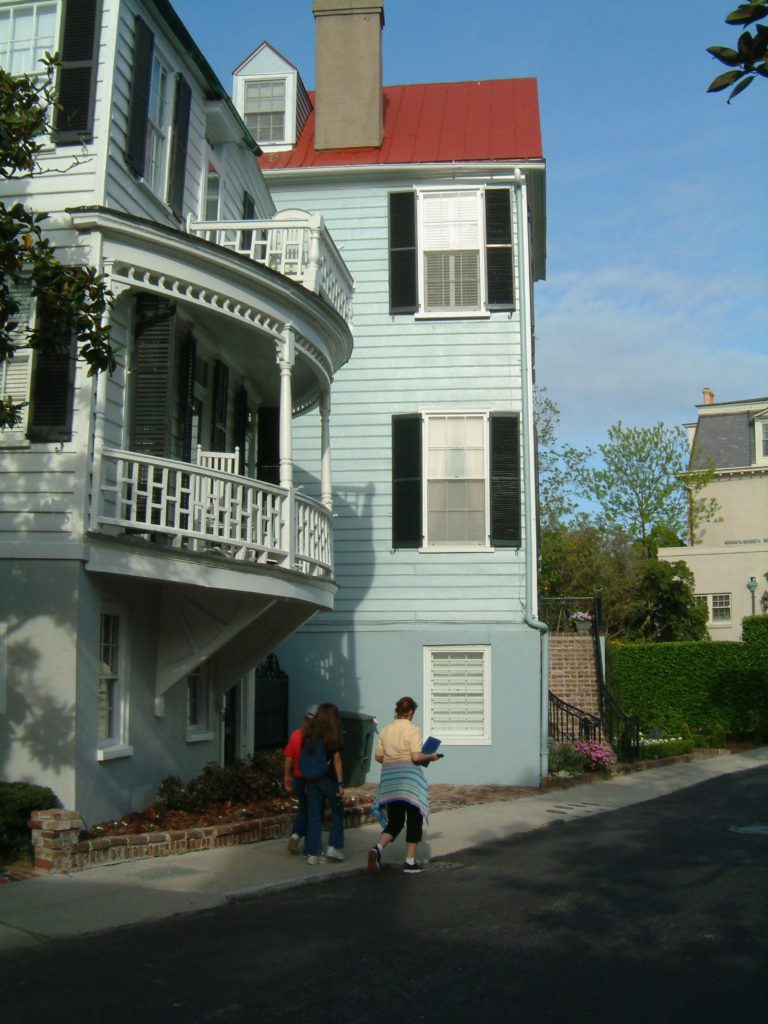
The pirate walking tour. Our guide was fantastic. She really brought the story of Stede Bonnet and Blackbeard alive, including all the gory details. Roasted lips, anyone?
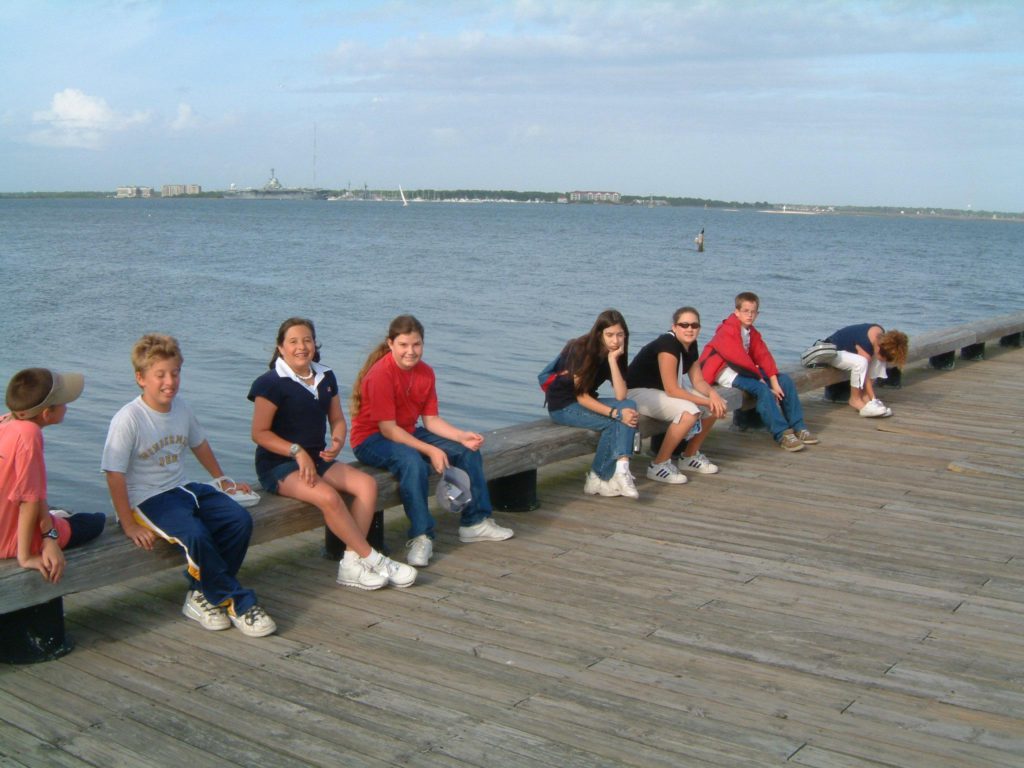
Dinner was at Bubba Gump’s (delicious garlic bread!)
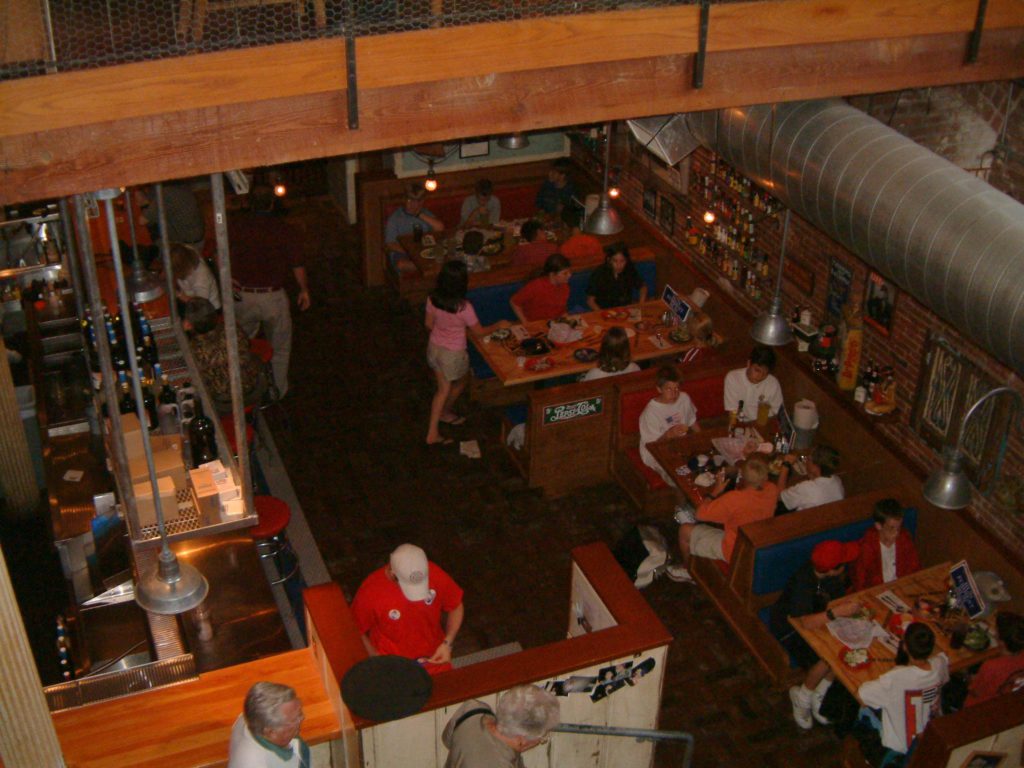
After dinner we went on yet another walking tour. Scattered showers forced us to take cover periodically under overhanging buildings. Linda’s glow stick bracelets added a spooky air to the ghost tour, which proved frightening — at least to the frighteningly gullible .
Back at the hotel it was nearly 10:00 pm. A few stalwart souls joined Mrs. Kent in the lobby for a study session. , but we were definitely ready for bed after this, our busiest day of the tour .
Wednesday
After a nice breakfast we loaded our luggage onto the bus and set off on the rainy two-hour bus ride to Savannah. I handed our a cryptogram puzzle, which proved popular. It was also an opportunity to learn some Savannah History, as these paragraphs turned out to be the answers .
Savannah
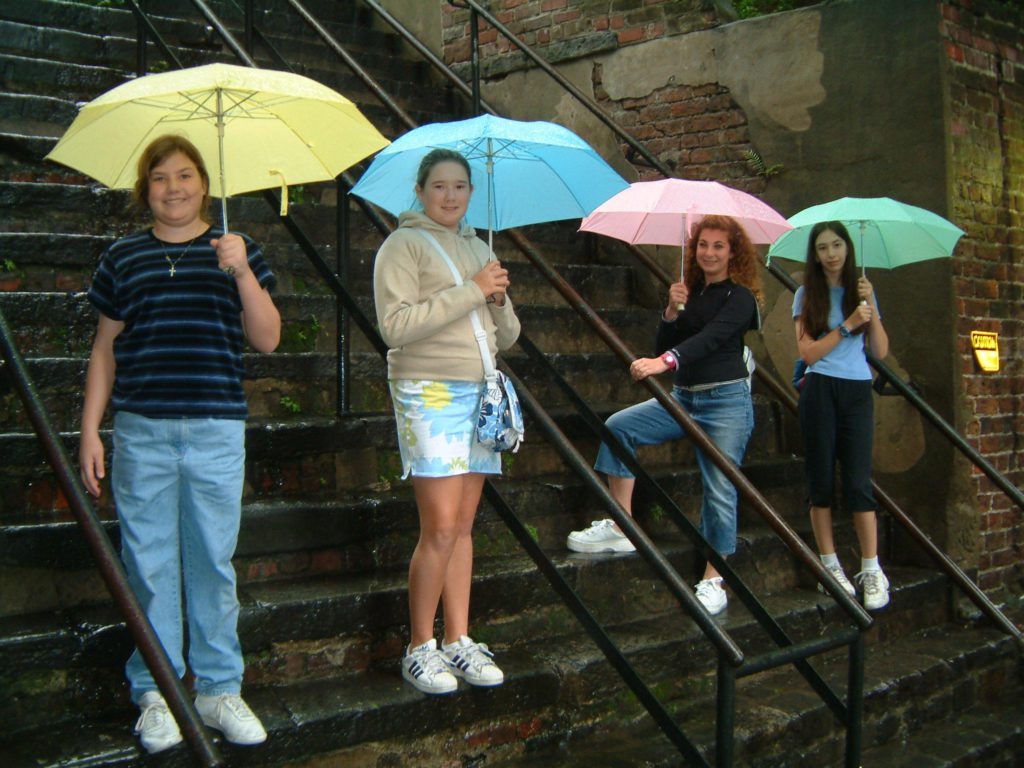
We stopped at the Savannah visitors’ center to pick up our bus pass and ruminate about the rainy day. In the end, we decided to follow the original plan and go to the River Walk, an historic area that has been converted to shops and restaurants. There, equipped with some newly-purchased pastel umbrellas, we strolled down the half mile of storefronts .
We had lunch with Dani, Elise, Miranda and Becky at Fiddler’s Crab House, then bought some candy and curios .
At a shop at the very end of the street I bought some Savannah ceramic tiles as prizes for the cryptogram contest. (Later, on the bus ride to dinner, we handed them out to the winners. Five people solved all five cryptograms: Gabrielle, Alannah, Dani, and Chris. )
At 4:00 pm, soggy but cheerful, we headed to the Fairfield Inn to check in and get ready for dinner.
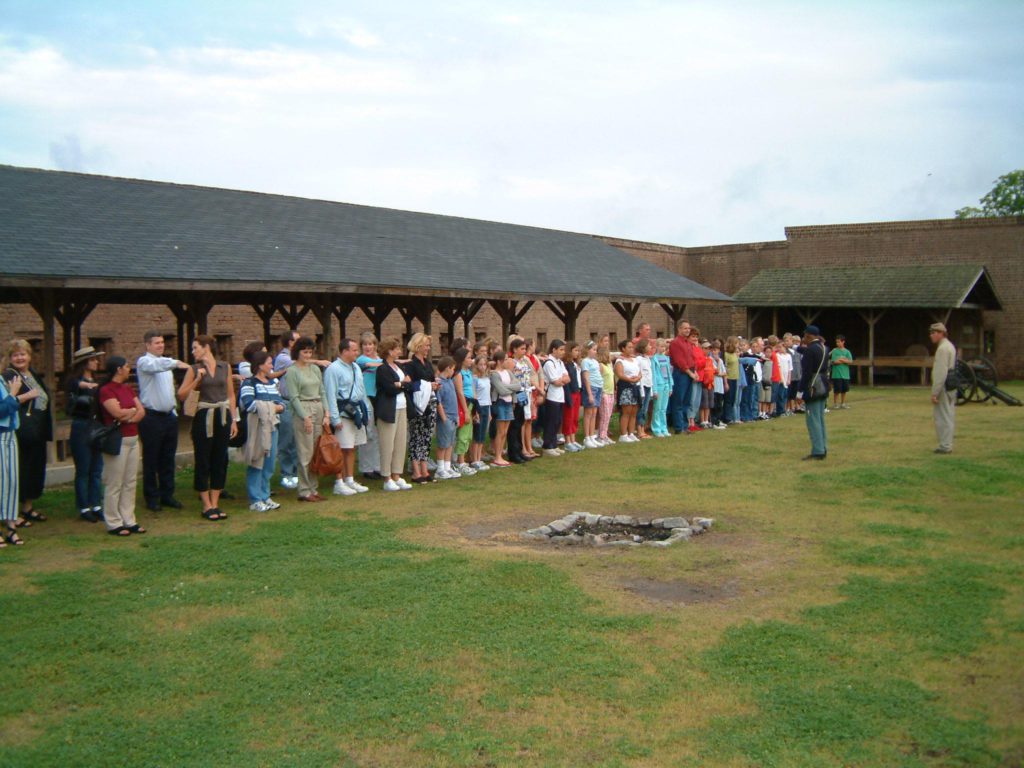
Dinner was at Fort Jackson, a Civil War era fortification located on the river downstream of Savannah. The students were greeted by three soldiers dressed in Civil War garb.
They learned some basic field drills and then had dinner (fortunately chicken tenders, not salt pork). Afterwards, they were split into three companies, and cycled through three different presentations.
Up on the wall, they learned about the role of blacks during the war, and inspected a fiberglass cannon used in the filming of Glory.
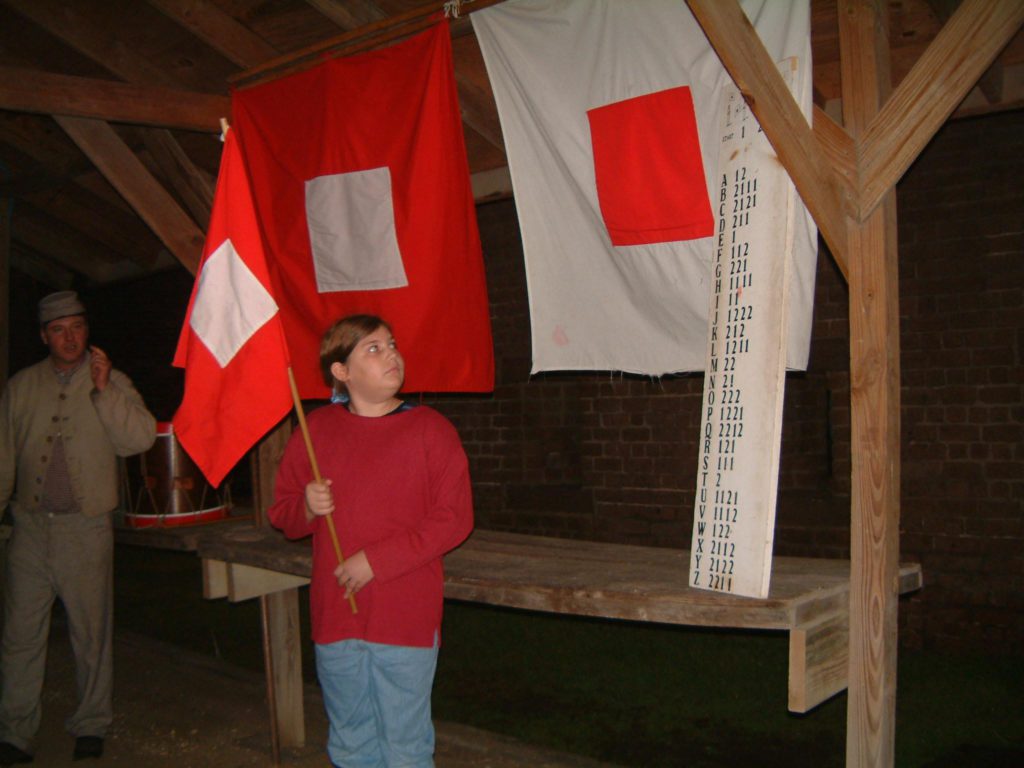
Back on the field they learned about nineteenth century communications, and got to try their hand with semaphore flags .
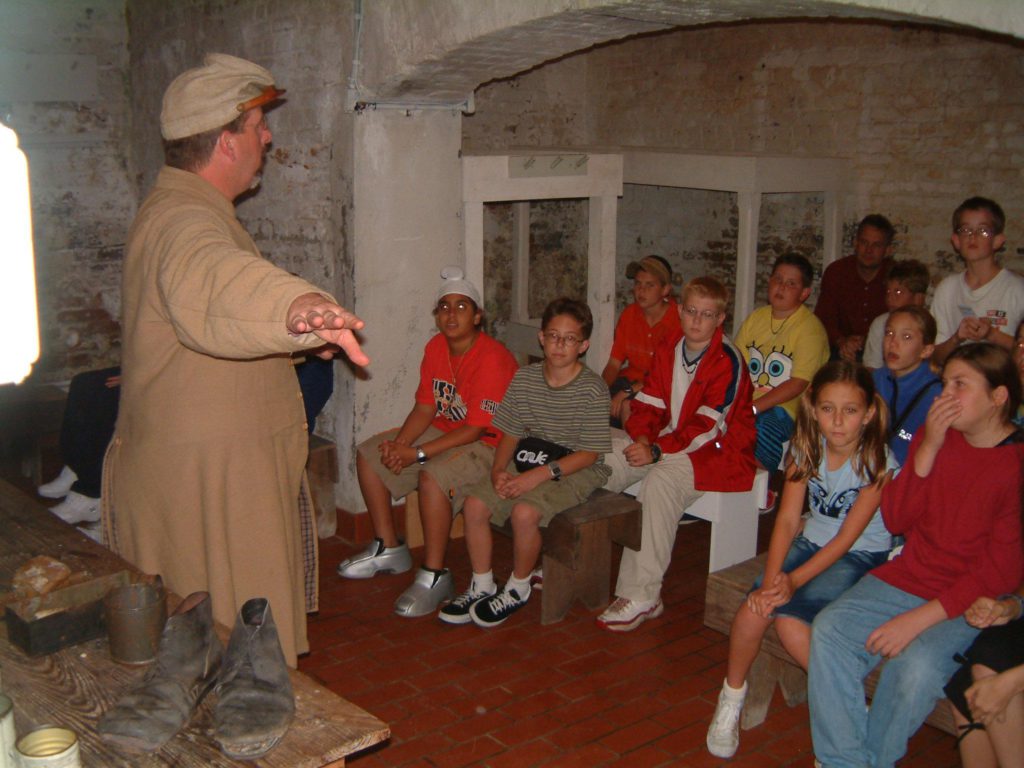
In the supply room they were shown what soldiers ate (yuck) and wore .
The grand finale was the firing of the 12-pound field cannon. We learned how it is cleaned and loaded, a non-trivial process that could be accomplished in 15 seconds by a team of seven. We also learned that when it’s fired you want to have your fingers in your ears!
Thursday
Thursday morning one of our buses broke down, so we had to transfer the group to our first stop in two shifts .
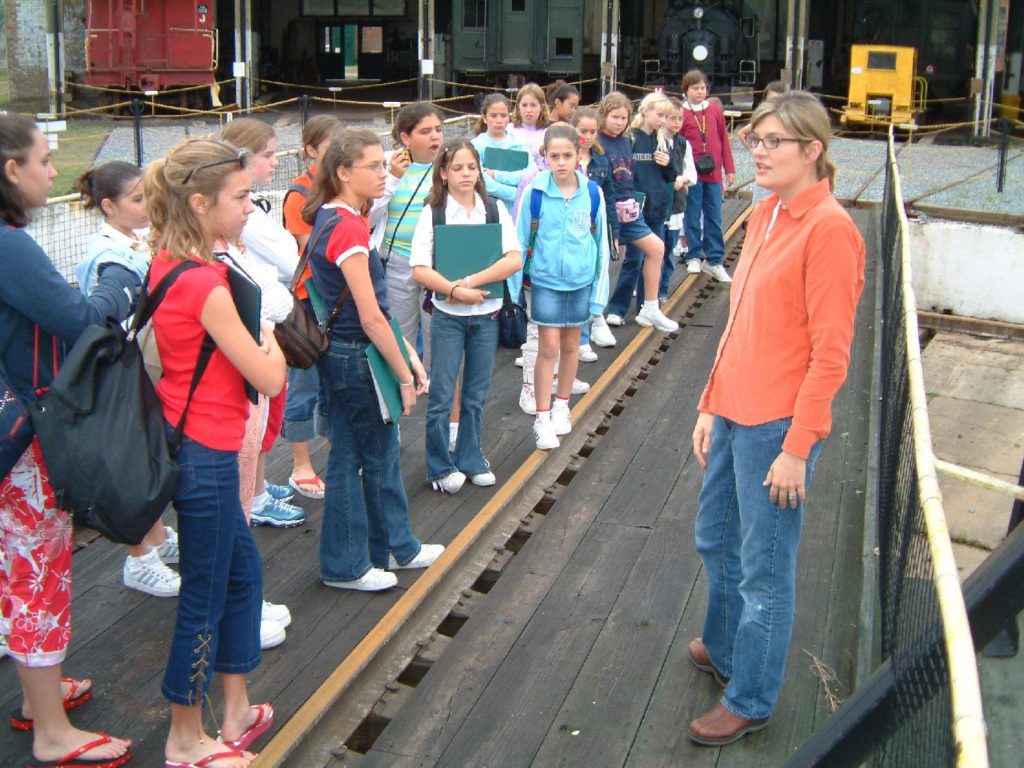
Our first stop was the Railroad Museum, where we had a very entertaining and informative tour by the museum’s director. She showed us how the turntable worked (we went for a very noisy ride), and described the machinery and tools that were used to service the locomotives.
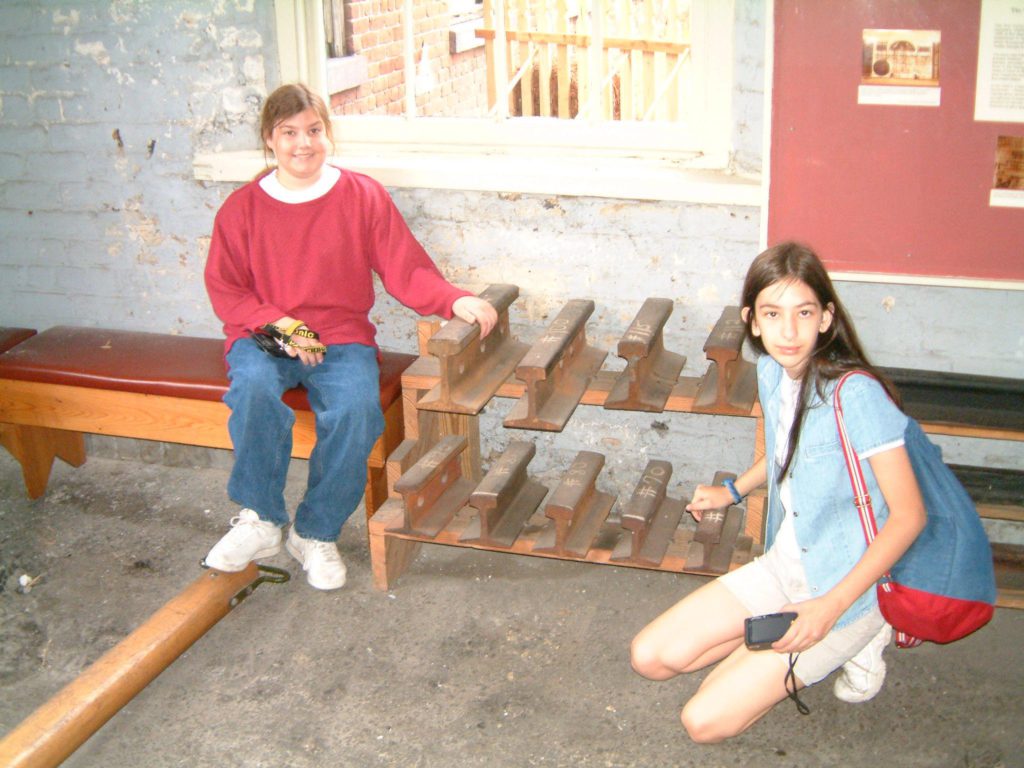
The facility was quite sophisticated for its time, using a central steam engine to drive rotating shafts that went to buildings throughout the yard, providing power to the equipment .
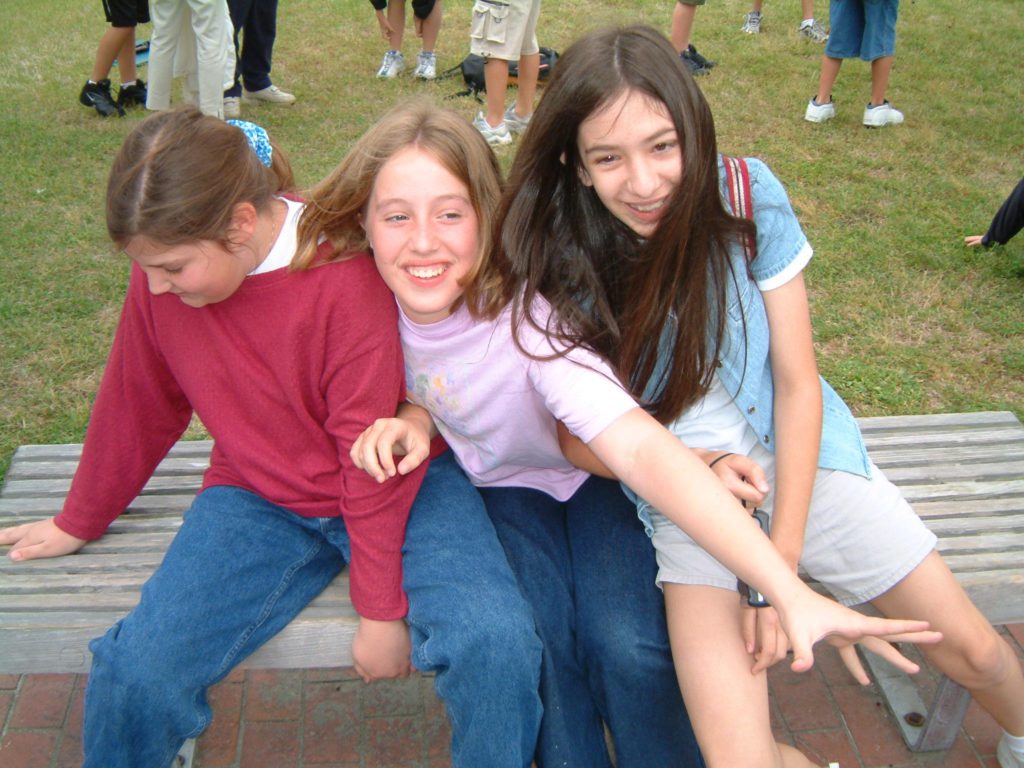
A circular building in the yard was a community shower. Excess steam heated water in a tank above the individual stalls, and a tall smokestack carried away the leftover heat.
Next stop was Fort Pulaski. I was dubious that we could find a third fort in as many days interesting, but our National Park Service Ranger guide was funny, fascinating and really brought the place to life. When one girl asked what cause the impressive holes lining one wall of the fort he exclaimed, “Woodpeckers! We’ve got a terrible woodpecker problem here!
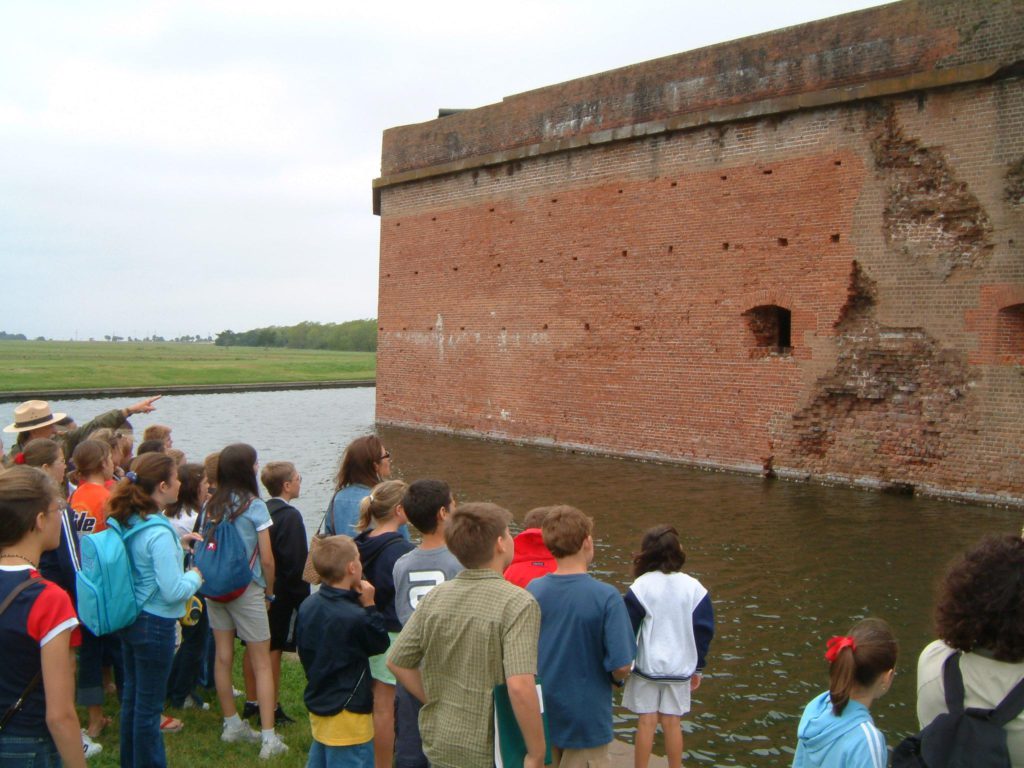
“The fort, originally constructed prior to the revolution, was believed impregnable. Yet its wall was breached in just 36 hours, using a new cannon developed during the Civil War.
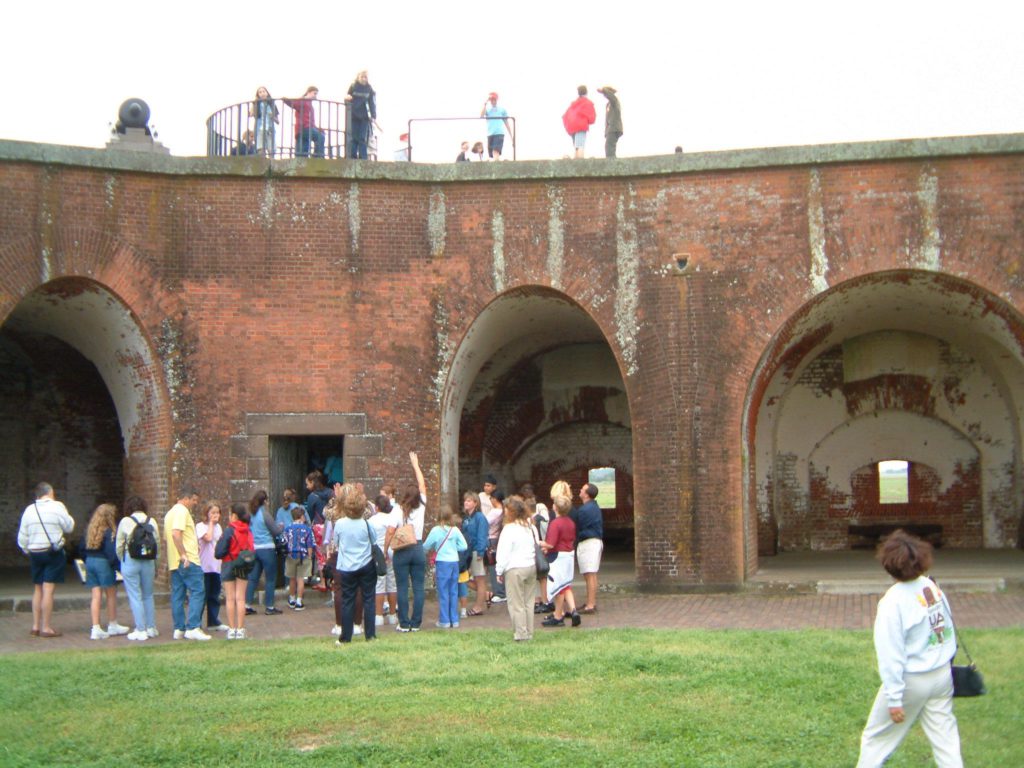
It was quite exhilarating to be up on the railing-free wall. Particularly for those of us trying to keep the kids away from the edge.
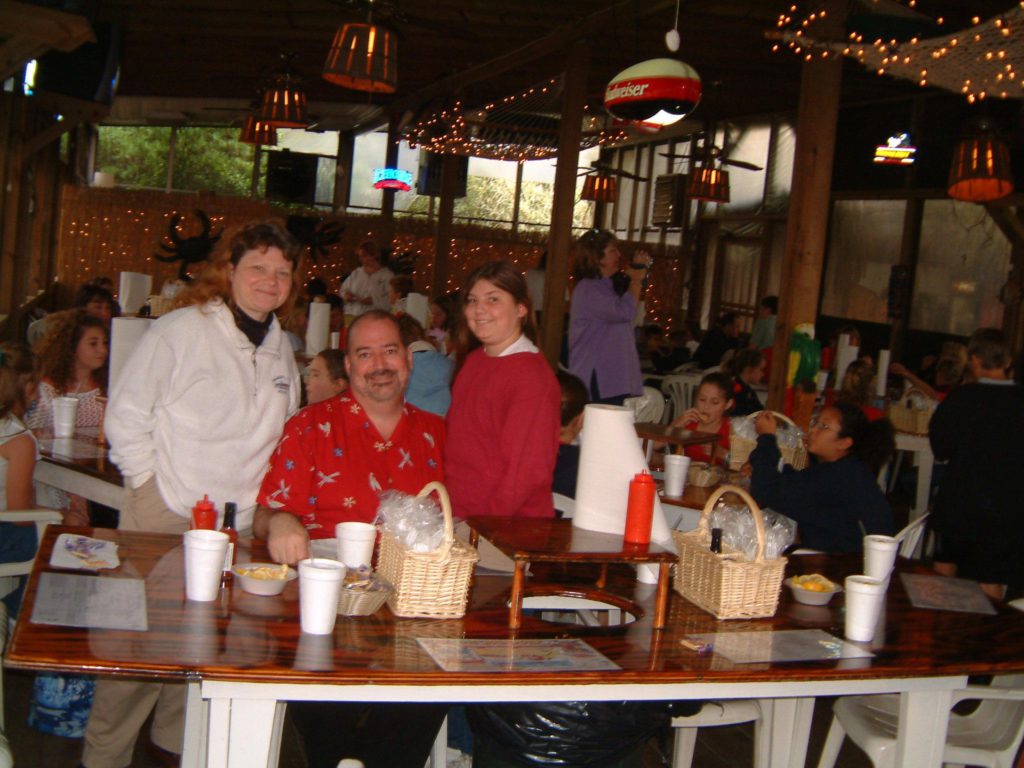
Near Fort Pulaski is The Crab Shack, an unparalleled dive where we had some delicious crab, shrimp, mussels, and crawfish. Well, some of us did. Chicken and hotdogs won the popular vote.
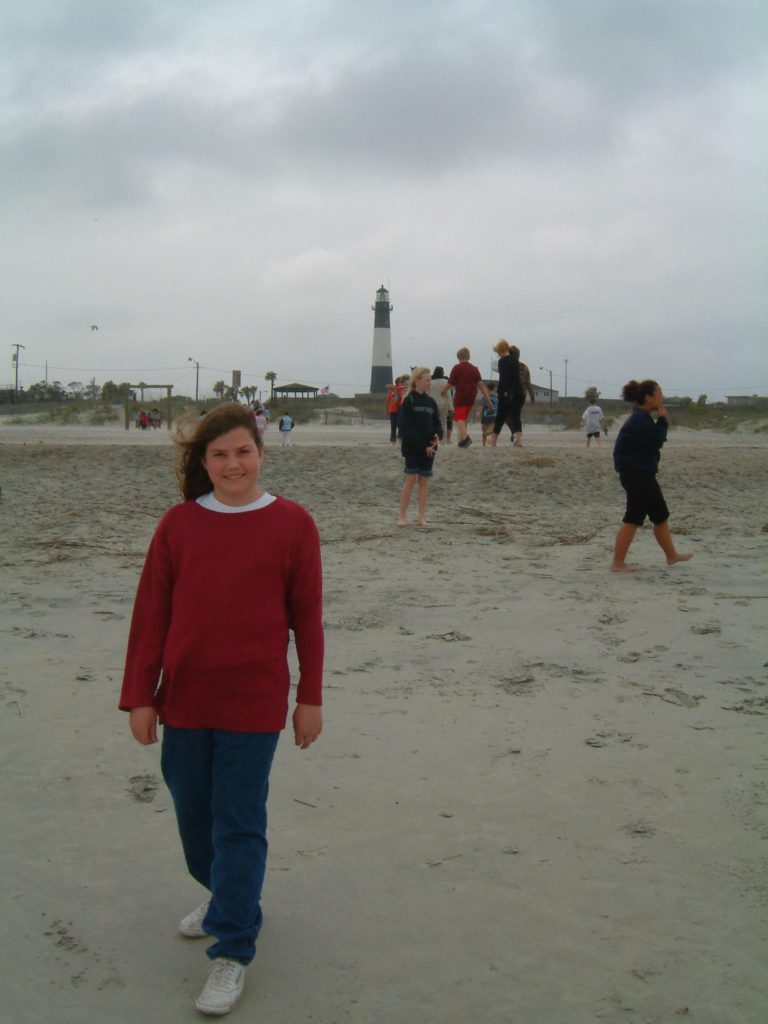
We stopped briefly at the lighthouse on Tybee Island, but with the museum closed it hardly seemed worth the price of admission, so we walked along the beach instead. It was cool, with a stiff wind blowing, but no rain. Nearby was a great concrete structure, now the Shriners’ Hall. I wondered if it was originally a WWII era fortification or U-boat lookout station. There were no explanatory signs, but plenty of keep off warnings.
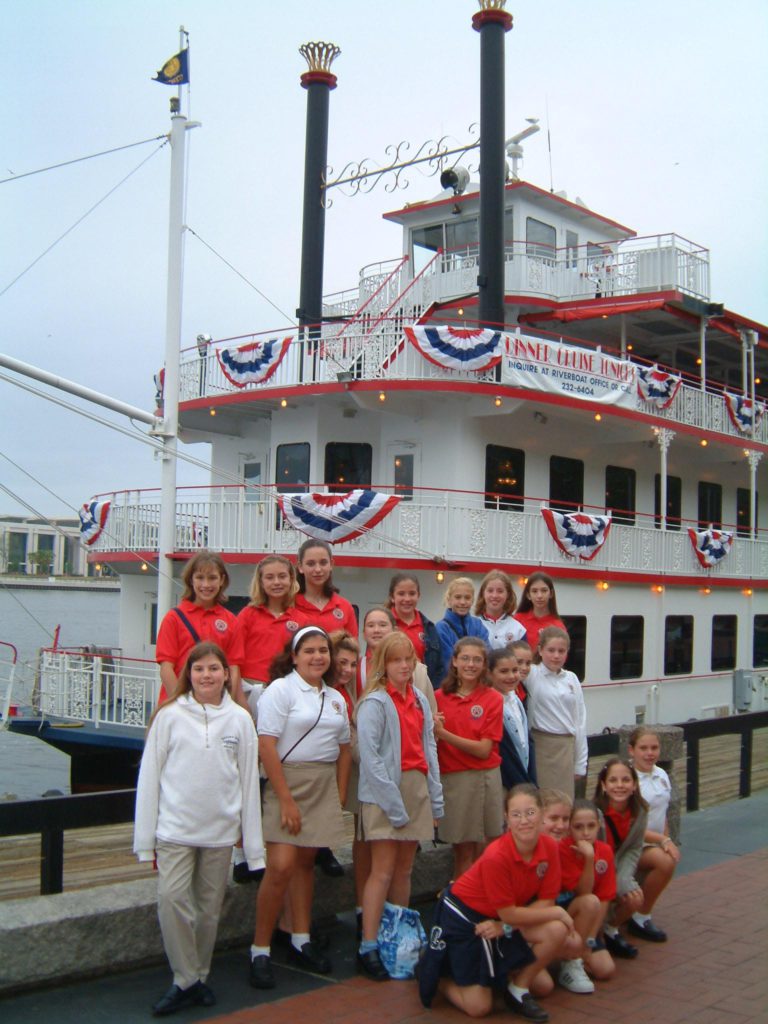
Dinner was on a riverboat on the Savannah River. The group, wearing their school uniforms, posed on the River Walk in front of it prior to boarding. Quite a few of the kids were dragging from our busy schedule, and a few had colds or the flu, but there was still an enthusiast group doing karaoke after dinner.
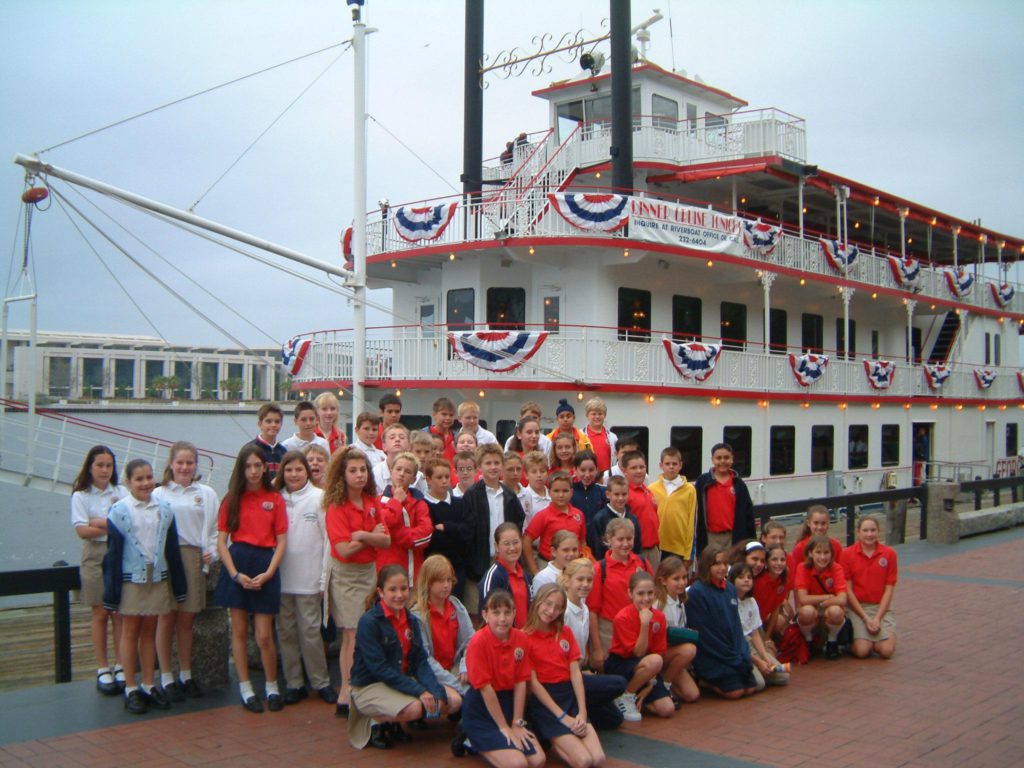
We were all definitely ready for bed by the time we got back to the hotel .
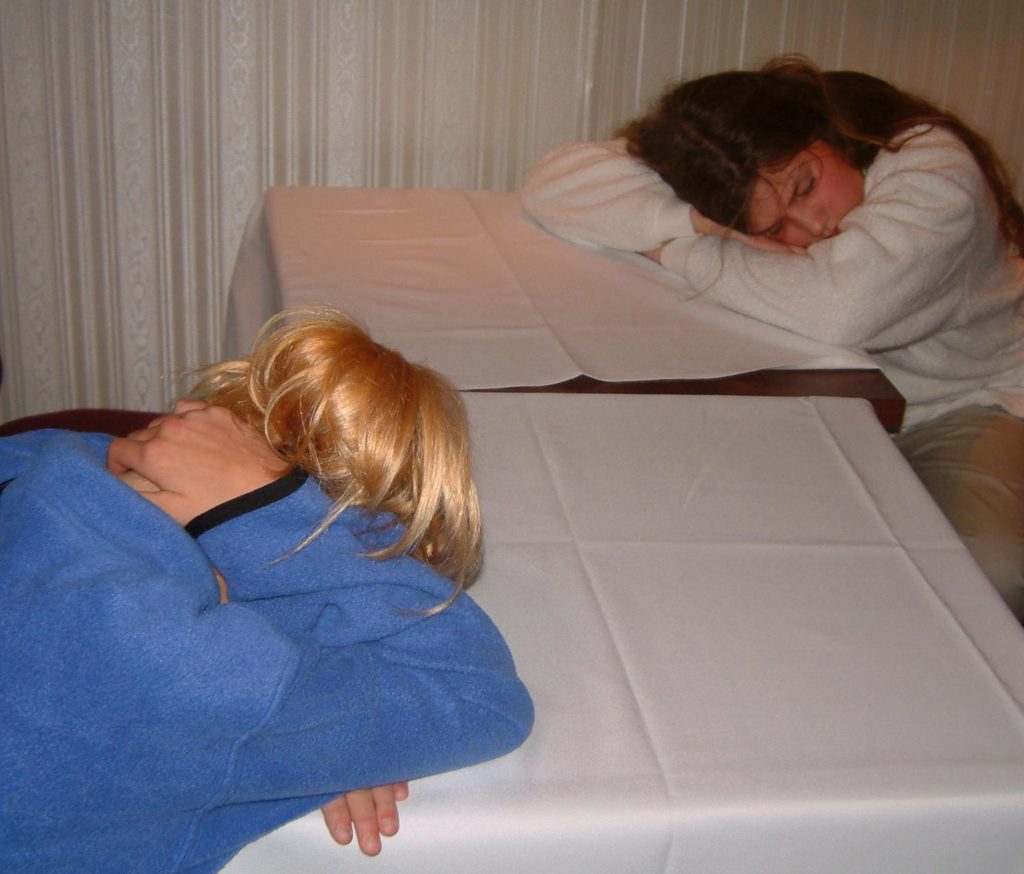
Friday
Luggage packed, continental breakfast, and onto the bus by 9:00 am, we headed for our final stop: the Mighty Eight Air Force Heritage Museum. This wonderful museum presents the history of World War II, particularly the European Theater, from 1933 through 1945. Several videos and our informative guide brought the conflict to life. It appeared to be the first time that many of the girls had been exposed to this information, and I think they learned a tremendous amount about it .
One terrific multi-screen show put us in the seats of a B-17 mission, including explosions and wind coming in the bomb bay doors. It was quite gripping .
On the way home I handed out some Weird Facts About Florida .
At last the six hour bus ride was over. A cheer went up as we pulled into the Windermere Preparatory School parking lot. Kids and luggage tumbled out of the bus into the arms and cars of their waiting parents.
We learned a tremendous amount on the trip. The students learned about everything from the Civil War to World War II, with stops in Antarctica and under the ocean along the way. The adults learned a few things, too, particularly about keeping track of students. I think everyone had a great time, but I also know we’ll all be happy to be home in our own beds, for a loooong night’s sleep.
Steve Alcorn
April 2002
Celebrations at Victoria & Albert’s
March 23, 2002
Ron and Bev Siegel invited us to dinner and tasting at Victoria & Albert’s in Disney’s Grand Floridian. Andy and Libby Crocket accompanied us. The event was held in the kitchen at the Chef’s Table.
We were there to celebrate Ron & Bev’s anniversary, our anniversary, and Bev’s birthday. Considering that we’re all just young whippersnappers, it was amazing that Linda and I, at 24 years, have been married the shortest time of anyone at the table!
We weren’t sure that we could top our previous event in November, the Tasting of the Century, but in the end, the consensus was that we had. Jim Griffin in particular felt that the wines were even better this time. And once again we had not off bottles. In fact nearly every wine showed twenty or thirty years younger than the date on the bottle. Since all of my wines were ones that I’ve had in the cellar for ten years, I was pleased to see that the corks were all moist and in excellent condition. Many of the wines had very little sediment.
There was a clear consensus that the 1947 Cheval Blanc was the best wine (only Linda disagreed). In fact, Ron dubbed it the best wine he’d ever tasted. This is a very famous wine, having been anointed the greatest wine of the 20th century by the Wine Spectator and many other writers. Fortunately I purchased this bottle before all the hype, or we couldn’t have touched it.
Our six hours at table flew past. Scott’s food was again remarkable, thirteen courses if you count everything. And again Jim’s wine matching was superb.
It is interesting to be in the V&A kitchen. It’s quieter than a lot of restaurants, even with a dozen chefs working. Most kitchens bustle, with the waiters rushing in and out to fill orders, but things seem very orchestrated at V&A. Of course, the kitchen is really a collection of rooms, which breaks things up. The chef’s table is located in an alcove at the side, which used to be a wine cellar. As a result, the air conditioning is good, and it keeps the kitchen smells away from the tasting.
At the chef’s table they use Riedel stemware, which really enhances the wine. The bowls are the size of goldfish bowls. We had an interesting experience with the Cheval Blanc. Some of us had it in a burgundy glass, which flares out slightly. Others had it in a Bordeaux glass that closes in at the top. Even though the two glasses are extremely similar, the nose of the wine was completely different. I’ve experienced this effect many times before, but only with more radical differences in glassware.
All wines were served at 65 degrees. In fact the 1934 Pommard even instructed us to do that on the label!
It was also the anniversary of Ron & Bev, and Bev’s birthday. We’re all the same age. The funny thing was that of the three couples, at 24 years, we’ve been married the shortest time.
Click on the small images for a larger view, then use your browser’s “Back” button to return here.
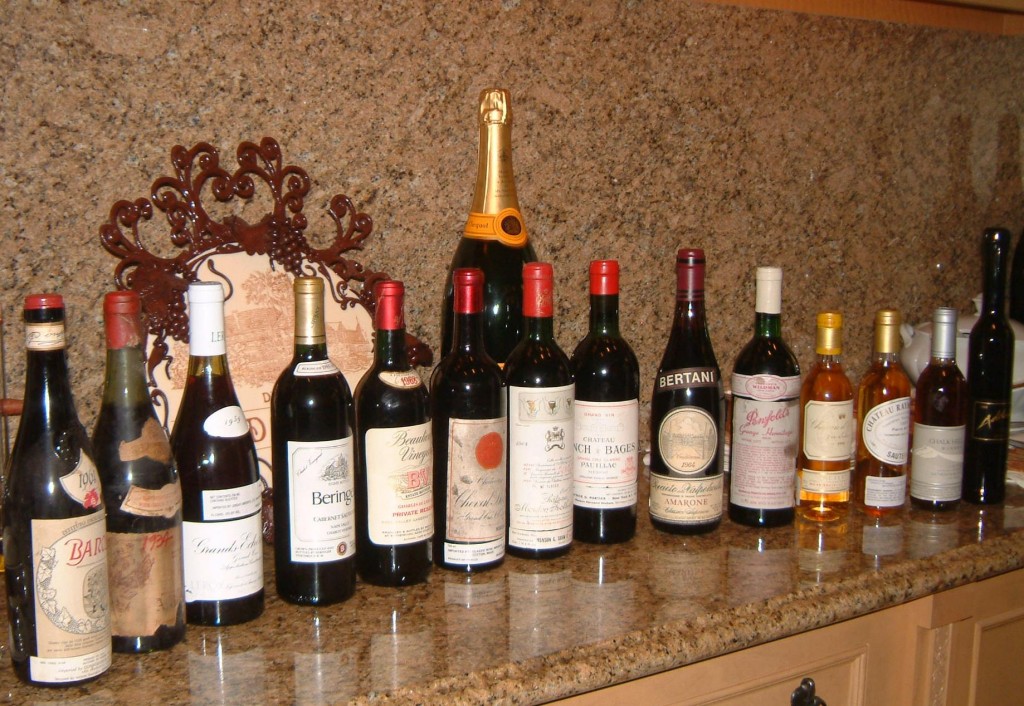
Giacomo Contemo, Barolo 1961 (Steve) |
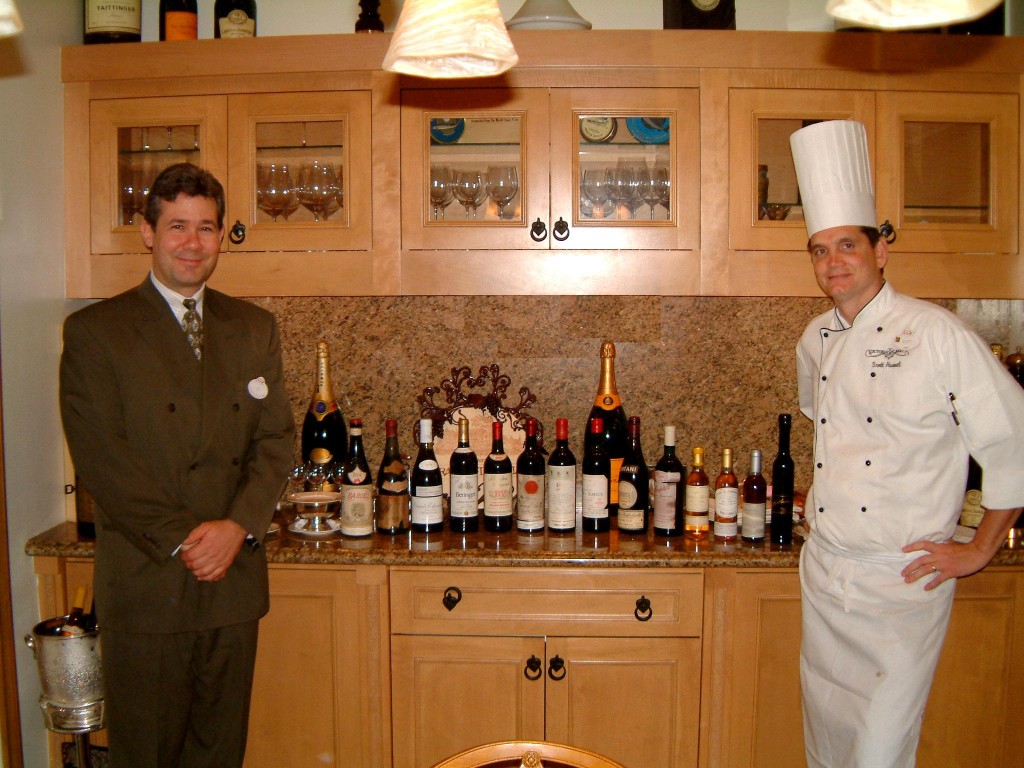
James Griffin, Maître d’Hôtel and Scott Hunnel, Chef de Cuisine
|
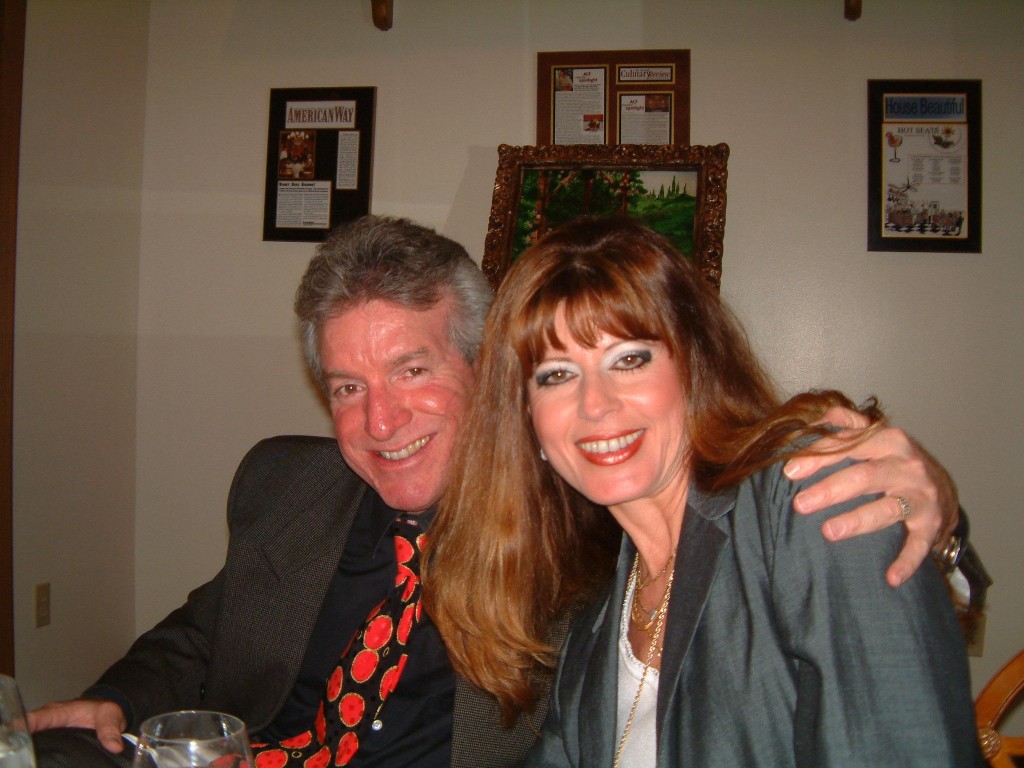
Siegels |
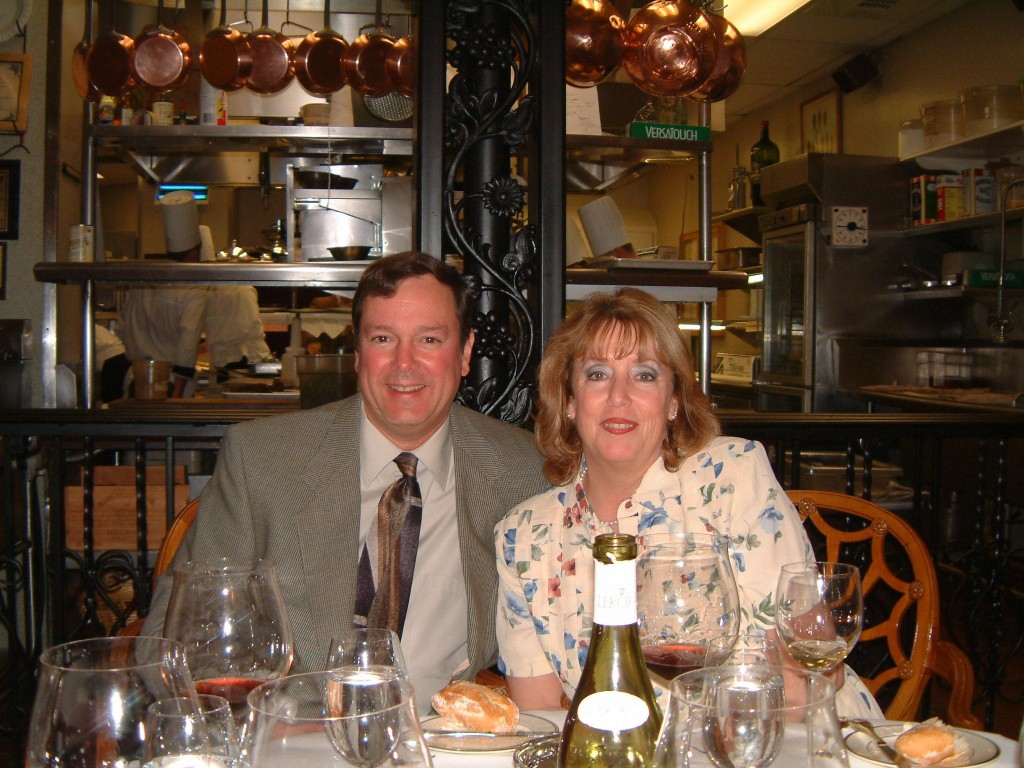
Crockets |

Alcorns |
Tampa & B-21 2002
Tampa
In the Spring of 2002 most of The Wine Syndicate group went to Tampa. Ron Siegel organized two wonderful dinners, and a luncheon and tasting in Tarpon Springs.
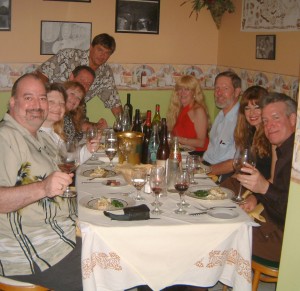 |
Ken from Bern’s set up this dinner at Spartaco. The chef/owner was charming and gracious. We put ourselves in his hands, and the courses just kept coming: Bruschetta, Calamari, Mozarella, Crab and Lobster on Angel Hair Pasta, Tangerine Sorbet, Broiled Grouper, Rack of Lamb, and Chocolate Mousse. |
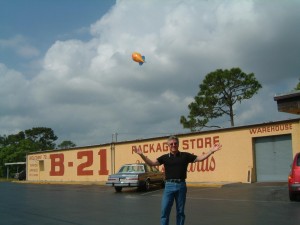 |
B21 didn’t look exactly like Ron was expecting. But it’s a wonderful wine shop, and they provided us with a lovely 12-bottle tasting. I took the opportunity to stock up on Italian reds, and even found Danielle’s long-sought-after Essencia. |
 |
B21 even paid for our wonderful lunch at Louis Pappas’, near the Tarpon Springs pier. Joan, our waitress, was an absolute hoot. The Greek food was delicious and heavy — one more course and we would have needed a wheelbarrow to get back to the car. We had to go back to the hotel and sleep it off. |
 |
Dinner at Bern’s Steakhouse with an opportunity to sample eight noteworthy wines from their incredible list. Ken and Drew were incredibly accommodating, and David Laxer came around to visit. For me, the wine of the weekend was the 1957 Morey-Saint-Denis Clos del La Roche from Pierre Ponnelle, a steal at $156. Thanks to Ron for all the arrangements… it was a blast. |
Oh, and for those keeping track, the grand total on the events mentioned above was (gulp) 38 bottles.
The Dinner of the Century
Victoria & Albert’s
11-30-2001
In November, 2001 about half of the The Wine Syndicate put together a dinner and tasting at Victoria & Albert’s in Disney’s Grand Floridian. The event, held in the kitchen at the Chef’s Table, was dubbed “The Dinner of the Century” because it featured wines from ten consecutive decades, beginning in 1918 and progressing through 2000.
We spent six and a half hours(!) at table, but the time seemed to fly. The food was remarkable, easily the best eleven courses I’ve ever had. Even more remarkable was that the menu was created on the spot, to match the wines we brought. And match it did. There were many remarkable pairings, but for me the most memorable was the Seared Hudson Foie Gras over Brioch French Toast matched with the 1990 Chateau d’Yquem. Heaven.
With such old wines, I was expecting a few clunkers. especially from the old Burgundies, which were very light, and the 1918 Sherry, which I threw in more to add the tenth decade than from any expectation it would be drinkable. Yet amazingly, all of the wines were drinking spectacularly. The 1929 and 1947 Burgundies stole the show, achieving that rare “Holy Grail” status that we Burgundy lovers wade through hundreds of wines to find. To have two on the same table was unprecedented. And that 1918 sherry? It was dark, and rich, and complex enough that it actually stole the show from both Yquems! Read on for the menu and my tasting notes.
Click on the small images for a larger view, then use your browser’s “Back” button to return here.
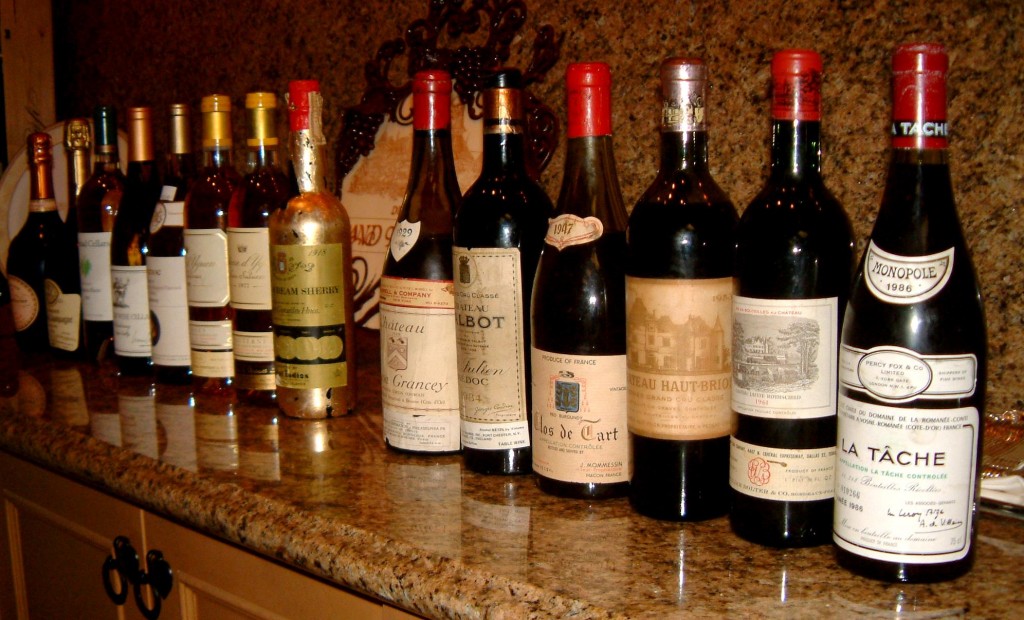 The complete lineup. The complete lineup. |
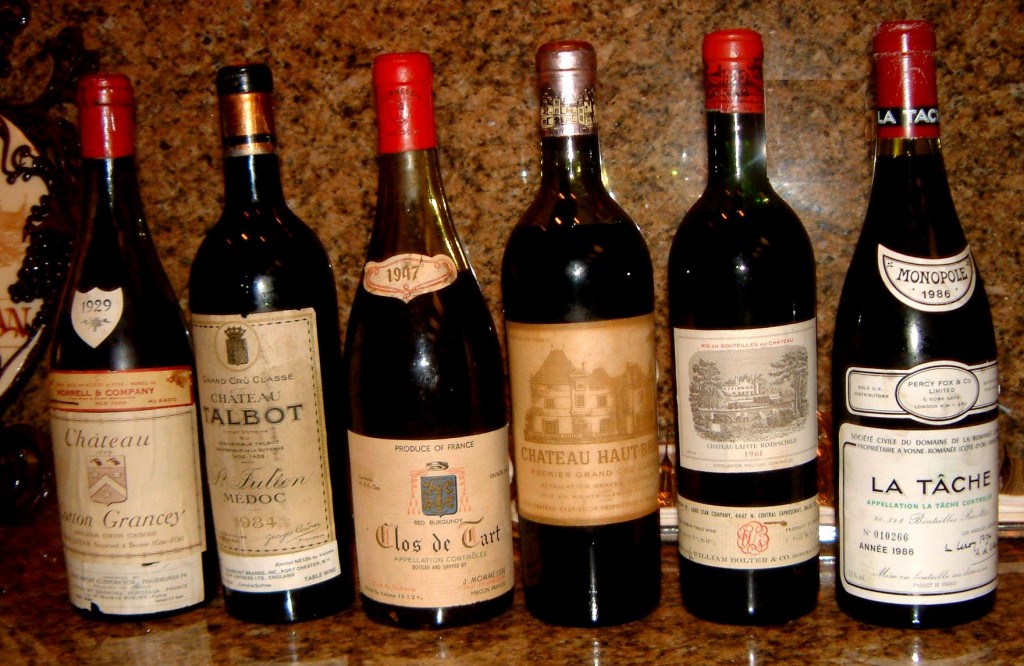 The Reds.Louis Latour, Château Corton Grancey 1929 The Reds.Louis Latour, Château Corton Grancey 1929Château Talbot 1934 Clos de Tart 1947 Château Haut-Brion 1953 Château Lafite-Rothschild 1961 Domaine Romanée-Conti, La Tâche 1986 |
 The Whites.Nicolas Feuillatte Brut Premier Cru, Epernay (not shown) The Whites.Nicolas Feuillatte Brut Premier Cru, Epernay (not shown)Laurent Perrier, Rose MV Taittinger, Comtes de Champagne 1986 Cakebread Sauvignon Blanc (not used) Stag’s Leap Wine Cellars, Chardonnay 2000 Guenoc Genevieve Magoon Reserve Chardonnay 1990 (not used) Château d’Yquem 1977 (used twice) Château d’Yquem 1990 (used twice) Jiménez Gonzalez, Cream Sherry 1918
|
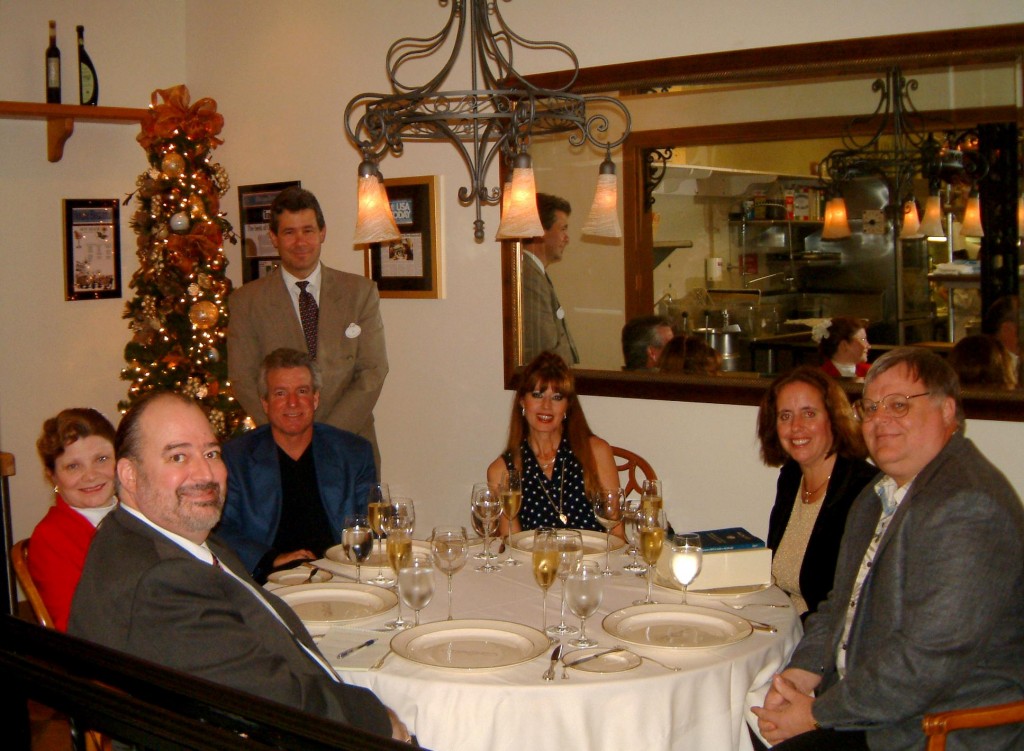 With James, the Maître d’HôtelSteve, Linda, Ron, Maître d’Hôtel James Griffin, Bev, Patty, Jim. With James, the Maître d’HôtelSteve, Linda, Ron, Maître d’Hôtel James Griffin, Bev, Patty, Jim. |
 With Scott, the Chef de CuisineSteve, Linda, Ron, Bev, Chef de Cuisine Scott Hunnel, Patty, Jim. With Scott, the Chef de CuisineSteve, Linda, Ron, Bev, Chef de Cuisine Scott Hunnel, Patty, Jim. |
Menu
Welcome to Victoria and Albert’s Chef’s Table
November 30, 2001
The wine and food pairings were a dynamic event, and James changed a few things around from the printed version of this menu that they presented us with at the conclusion of the meal. I’ve edited that version to reflect they way James actually served them, which was an exercise in food and wine matching brilliance.
Iranian Karabarun Golden Osetra Caviar, Traditional Garnish
Nicolas Feuillatte Brut Premier Cru, Epernay
Ahi Tuna with Bok Choy Salad and Wasabi Vinaigrette
Laurent Perrier, Rose NV
Holland Dover Sole and Nantucket Scallops with Couscous Ragout
Stag’s Leap Wine Cellars, Chardonnay 2000
Roasted Quail over Braised Belgium Endive and Spinach & White Truffle
White Truffle: The most prized luxury ingredient in the food market today. This rare ingredient is harvested from the Piedmont Region of Italy. The ripened fungus has an earthy/garlicky flavor and aroma, meant to be shaved at the last moment.
Clos de Tart 1947
Seared Hudson Foie Gras over Brioch French Toast
Château d’Yquem 1977
and
Château d’Yquem 1990
Free Range Consommé
and
Smoked Salmon Cream
Taittinger, Comtes de Champagne 1986
Mushroom Roulade with Chanterelles, Cognac Cream and Black Truffle Essence & White Truffle
Louis Latour, Château Corton Grancey 1929
and
Château Haut-Brion 1953
Trio of Sorbets
Grilled Prime Beef Filet over Caramelized Onion Risotto
Château Talbot 1934
and
Domaine Romanée-Conti, La Tâche 1986
Texas Boar and Colorado Lamb with Mustard Spatzle and Rosemary Jus
Château Lafite-Rothschild 1961
Vacherin Fribourgeois, Petit Basque and Royal Stilton with Burgundy Poached Pear
Jiménez Gonzalez, Cream Sherry 1918
Tropical Fruit Mousse in an Orange Scented Chocolate “Purse”
Pyramid of Chocolate Mousse with Glazed Strawberries
Caramelized Banana Gateau
Vanilla Bean Crème Bruée
Kona Chocolate Soufflé
Grand Marnier Soufflé
Scott Hunnel
Chef de Cuisine
Erich Herbitschek
Pastry Chef
James Griffin
Maître d’Hôtel
Tasting Notes
| NV | Nicolas Feuillatte Brut Premier Cru, Epernay | Jim | 19pts | My favorite Champagne of the evening. Creamy, with good acid balance, and a creamy nose and finish, too. Scored 91 by Parker. |
| NV | Laurent Perrier, Rose Brut | Jim | 17-1/2 | Tart, dried flowers, touch of cedar in the nose, with a dry creamy finish. |
| 2000 | Stag’s Leap Wine Cellars, Chardonnay | Jim | 20 | Wow. Buy more of this. Intense lemon reminiscent of Genevieve Magoon unfiltered. Very mouth-filling, fruity and balanced. |
| 1947 | Clos de Tart | Steve | 20 | Fabulous uncooked bacon fat nose. Medium Brown and thin appearance completely belies its character. Shockingly good fruit, balanced, complex, with a long woody finish. I wish I’d saved some of this until the end of the tasting, as I did with the 1929. |
| 1977 | Château d’Yquem | Steve | 19 | Classic Yquem complexity, but not a food wine. The 1990 was the match for the Fois Gras. Slightly raisiny nose, and a bit of a dry finish, with lots going on in the mouth. Probably at its peak. |
| 1990 | Château d’Yquem | Jim | 19 | Initial paint thinner nose rapidly blows of leaving a lovely fruit character. Intensely sweet but with excellent acid balance. Initially it seemed a bit corky in the mouth, but this too dissipated. The combination of this wine, the Fois Gras and the brioche French toast was the best tasting (food) item that I’ve ever put in my mouth. |
| 1986 | Taittinger, Comtes de Champagne | Jim | 17 | James cleverly used this ultra dry Champagne to clear all that sugar out of our mouths before the reds. Perhaps it suffered as a result, but it was my least favorite Champagne of the evening. Bone dry and toasty, with an unpleasant bread dough character. |
| 1929 | Louis Latour, Château Corton Grancey | Ron | 20+ | What can I say? This may be the best wine I’ve ever had. A pale color, more gray than red, and the sediment visibly fell out of it during the four hours it was in my glass. Yet with each passing minute the nose evolved and changed, passing through many fruit bouquets and nearly every earthy scent you’ve ever heard associated with Burgundy. Clearly detectable at various times were: burnt paper, cinnamon toast with butter and brown sugar, apple pie and wet, hot sawdust. The wine was simply too complex for food, and didn’t match the mushroom course. But the Haut Brion did, and with this good a wine, who needs food anyway? |
| 1953 | Château Haut-Brion | Ron | 19-1/2 | The mineral and earthy nose of this wine was a perfect match for the mushrooms. Shockingly dark color, intense fruit, a touch of tar and cedar in the finish. Amazingly youthful. |
| 1934 | Château Talbot | Ron | 19 | Another old wine with excellent color and fruit. Very minty, a character I seldom get in older wines. Almost reminiscent of Heitz Martha’s Vineyard from the 1980s! Still quite tannic, with some great dusty chocolate hints. A fabulous match to the filet and especially the risotto. |
| 1986 | Domaine Romanée-Conti, La Tâche | Ron | 18 | A huge, famous and expensive wine that may or may not ever turn into something like the 1929 or 1947. Mint, fruit, and meat flavors, with a tart, tannic and acidic finish. Way too tight to evaluate now. I’ll buy old ones instead — who knows if I’ll live long enough for this one to get interesting! |
| 1961 | Château Lafite-Rothschild | Steve | 19-1/2 | The famous vintage from the famous first growth. Although I’d only had the 1962 before, I could have recognized this wine on nose alone. Classic Lafite in perfect condition. Very youthful. Mint, dust, figs, soft intense fruit, lead pencil, fresh sawn cedar. |
| 1918 | Jiménez Gonzalez, Cream Sherry | Steve | 19 | I figured we’d dump this down the drain. I was wrong. Still deep in color (perhaps due to the unusual gold foil coating on the bottle) this wine blew the doors of the Yquems! When the tasting was done, there was still Yquem left, but this was gone! Great acid, like coffee liqueur in the mouth, long legs, and a wonderful citrus finish. A great match with the pears. |
Wow! I don’t know if I’ll ever have another dinner like that. But I’m sure going to try 😉
Europe 2001
London, Paris, Rome with Dani
Saturday, July 28, 2001
Orlando
In the spring Linda informed Danielle and me that she would be too busy to travel this summer. So Danielle and I began looking for something interesting to do, and hit upon this relaxed two-week trip to Europe. Although Danielle lived in France from the time she was three months to six months old, this would be the first trip within her memory. I’m pretty familiar with London, even more so with Paris — where Henry Corrado is a good friend — but we settled upon a tour because it was economical, would be a good introduction for Danielle… and I wouldn’t have to lug both of our suitcases.When I signed us up for this European tour, I never suspected we’d be setting out only five days after returning from Australia! But opportunities arise, and the Australia trip was great. Best of all, Linda was able to go along on that one.So feeling like expert travelers, at midday we headed for the airport, and the overnight flight to London.
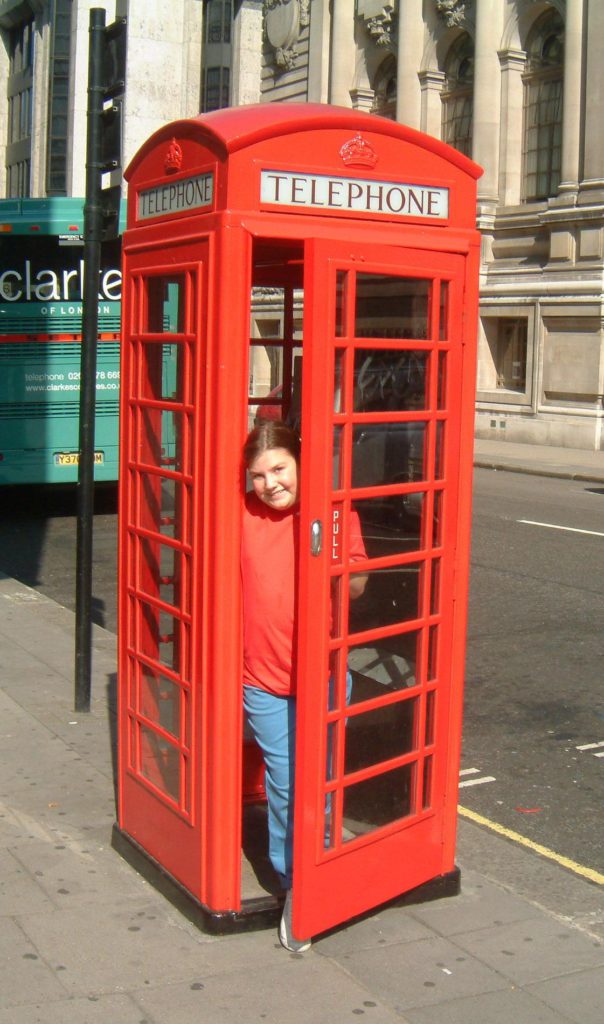
Sunday, July 29, 2001
London
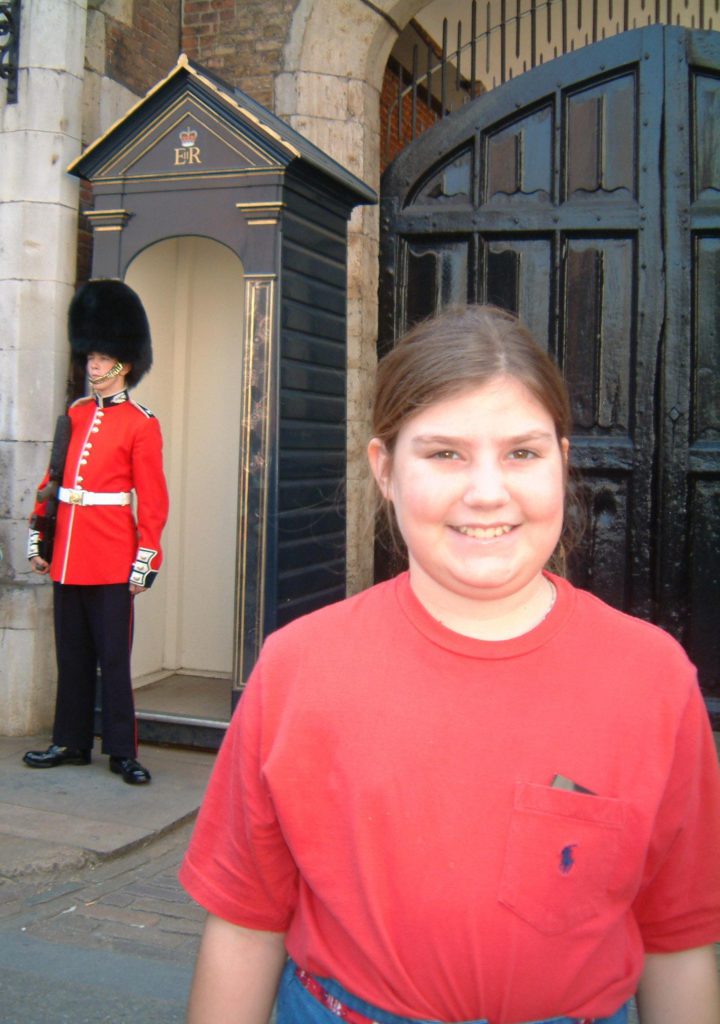
The Australia conditioning is still working. The trip to Charlotte seemed instantaneous, and the trip across the Atlantic passed fairly quickly as well. We took an Airbus A330, which is a lovely plane. It offers much more coach seating room than the competitors, and has personal video and CD on-demand players in every seat. We were lucky; the seat next to Danielle was empty, so she was able to sleep with her head on my leg most of the way.
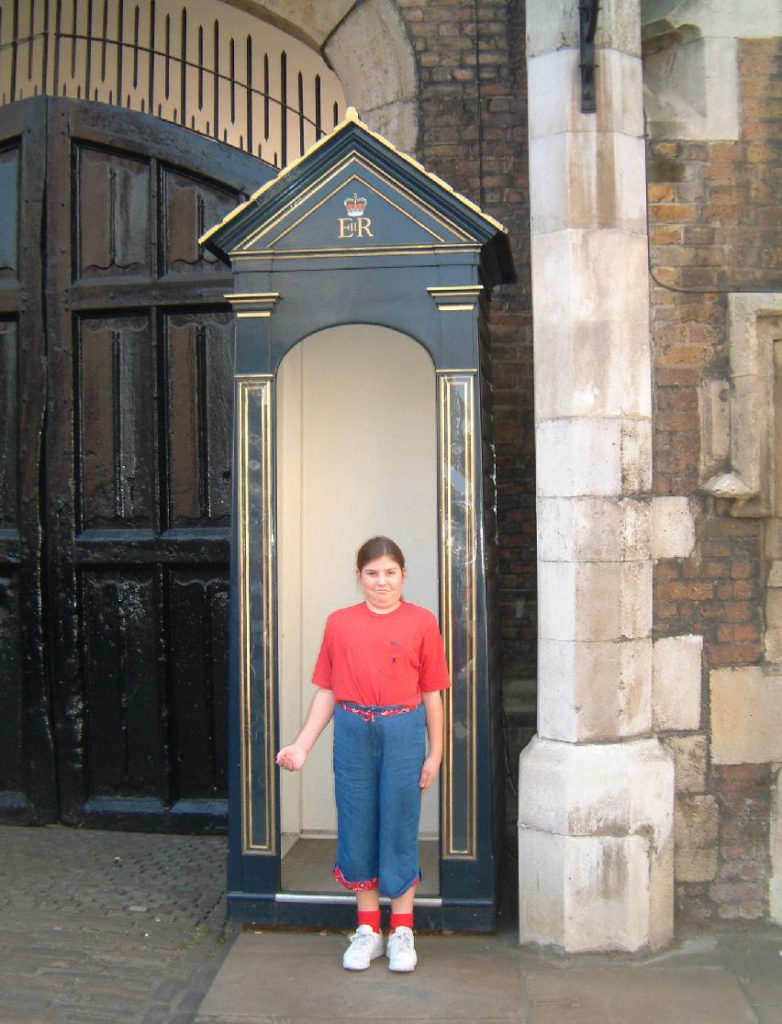
I brought a Palm Pilot that came free with a new computer we purchased, and Danielle immediately seized upon it. She’s gotten quite good at the Graffiti writing, and is keeping her trip journal on it.
We arrived at Gatwick a bit early, about 7:50am. The Far & Wide travel reps met us, moved our baggage onto the express train to London, and gave us tickets. The train was the Eurostar style; Danielle immediately noticed the absence of clacketa-clacketa noises.
At Victoria Station another Far & Wide rep met us, and escorted us to a minivan for the ride to the Hilton Metropole. The hotel looks nice, and is conveniently located just north of Kensington. We were met by our Tour Director, Gloria, who secured us a room in the new tower. Unfortunately, our room wasn’t ready yet — no surprise at 10:00am — so we checked everything and, at Gloria’s suggestion, headed by taxi to St. James Palace. Just for the record, the taxi driver was the same surly bastard type that I’ve had every time I’ve ever taken a London cab.
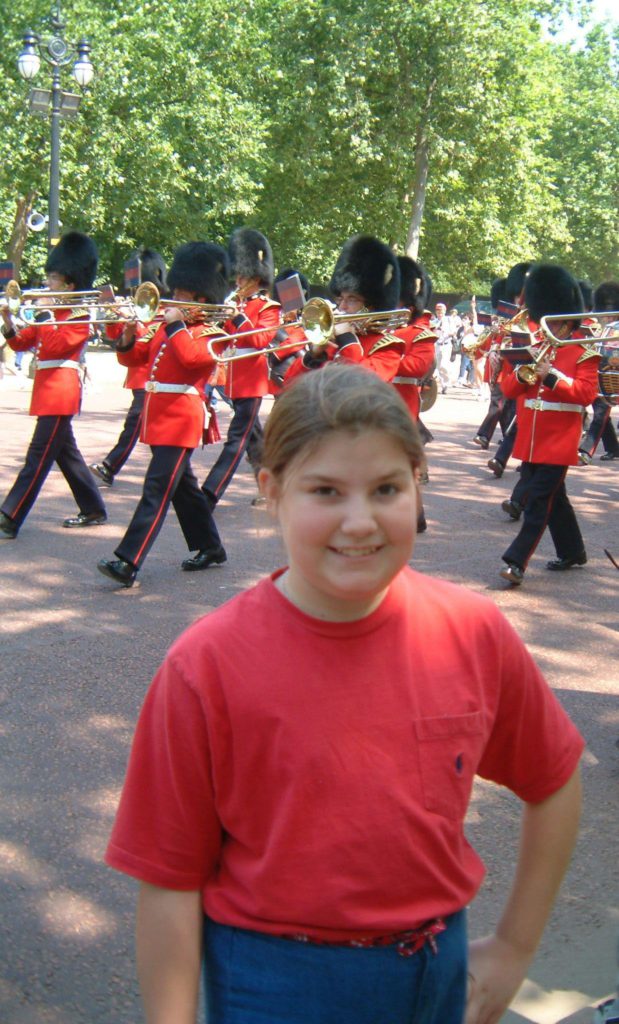
At St. James Danielle posed with the guard, and then we walked through Green Park to Buckingham Palace. At 85 degrees it’s hot here in London — yesterday set a record — so the ice cream stand was doing some serious business. We sampled their wares while we waited for the changing of the guard. On Sundays the Mall (rhymes with Al) in front of Buckingham Palace is closed to automobiles, so we were able to jump into the street in advance of the trooping guards and take pictures — mostly of Japanese tourists doing the same thing. Rather than wade through the tourists to see the actual change of the guard, we headed down the Mall past St. James Park and under the Admiralty Arch to Trafalgar Square. There we had a extraordinarily mediocre pizza buffet, bought tourist trinkets, and caught the tube at Charring Cross.
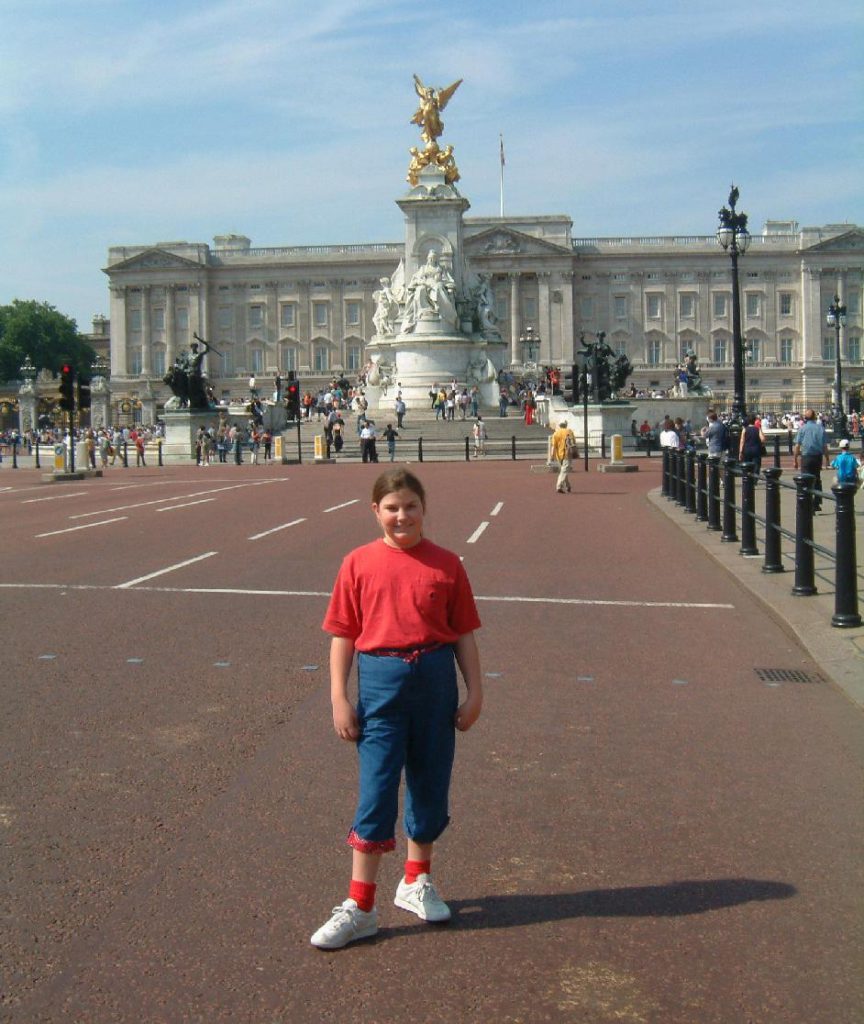
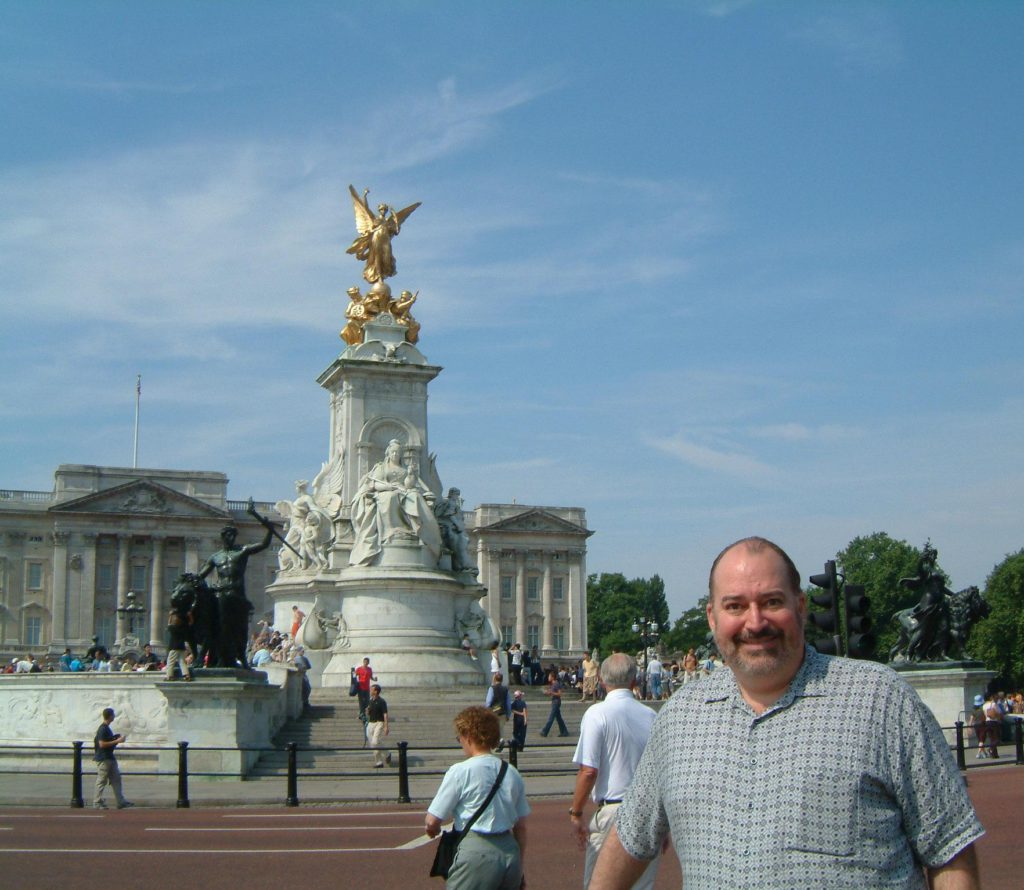
Six quick stops brought us to Edgware Road, where we emerged across the street from the hotel. I’m always amazed by the comprehensiveness of the London Underground. The trip took ten minutes and cost $3, as compared with the $15 cab ride. And no surly driver.Although I was skeptical of the Palm Pilot, it’s been useful for three things so far: currency conversion when I wanted to change Danielle’s $165 into equal parts Pounds, Francs and Lire; Figuring the most efficient Metro route (I downloaded the data for all three cities we’re visiting); and, of course, entertaining Danielle.
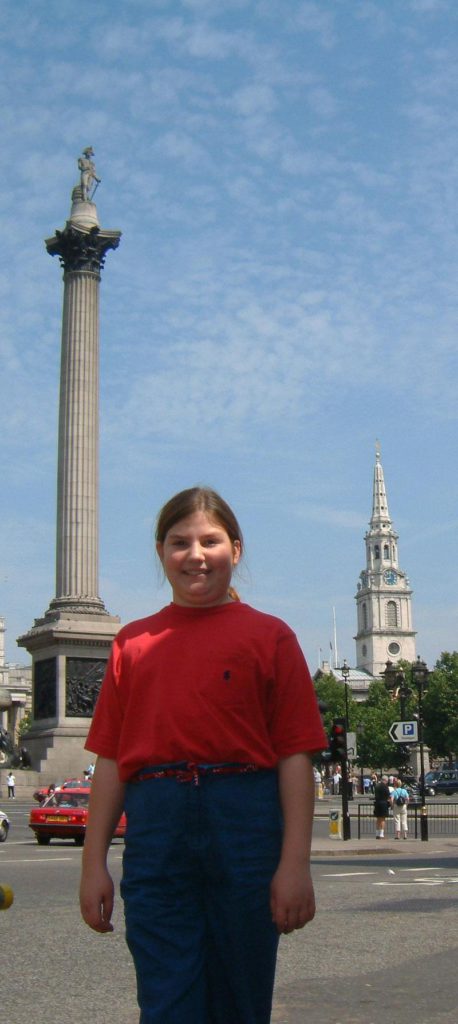
On returning to the hotel at 1:30 our room still wasn’t ready, so we camped in the lounge and updated our journals, looking very high tech with our dueling electronic appliances. It was nice to be offered free drinks, but a bed would be much nicer.
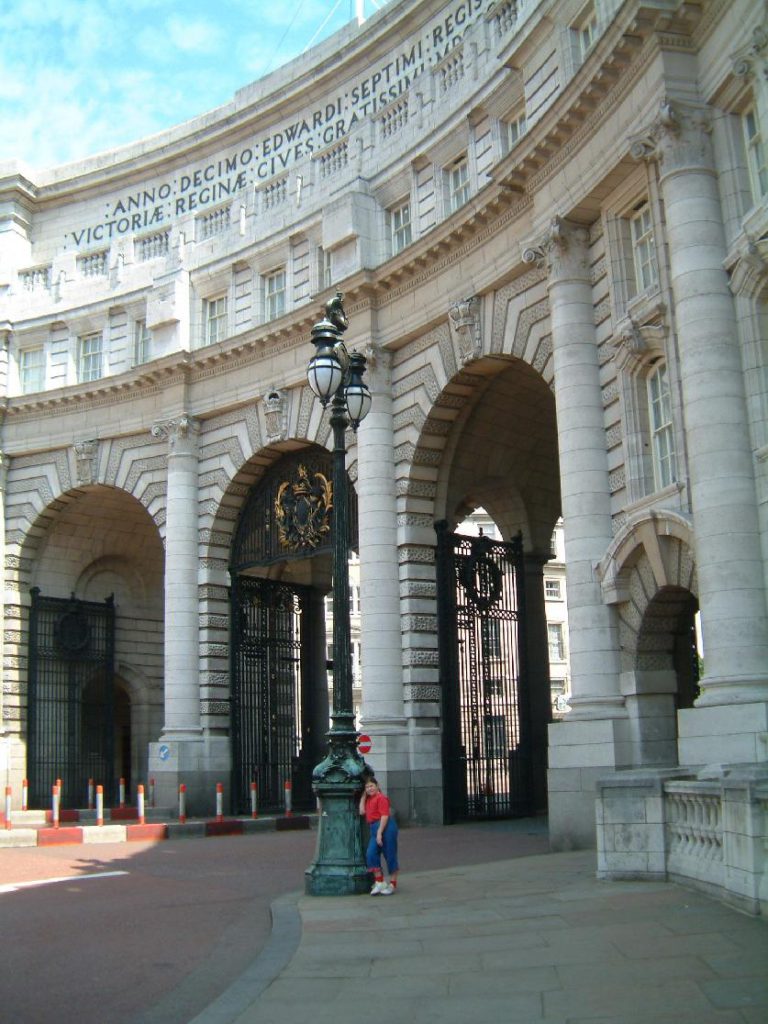
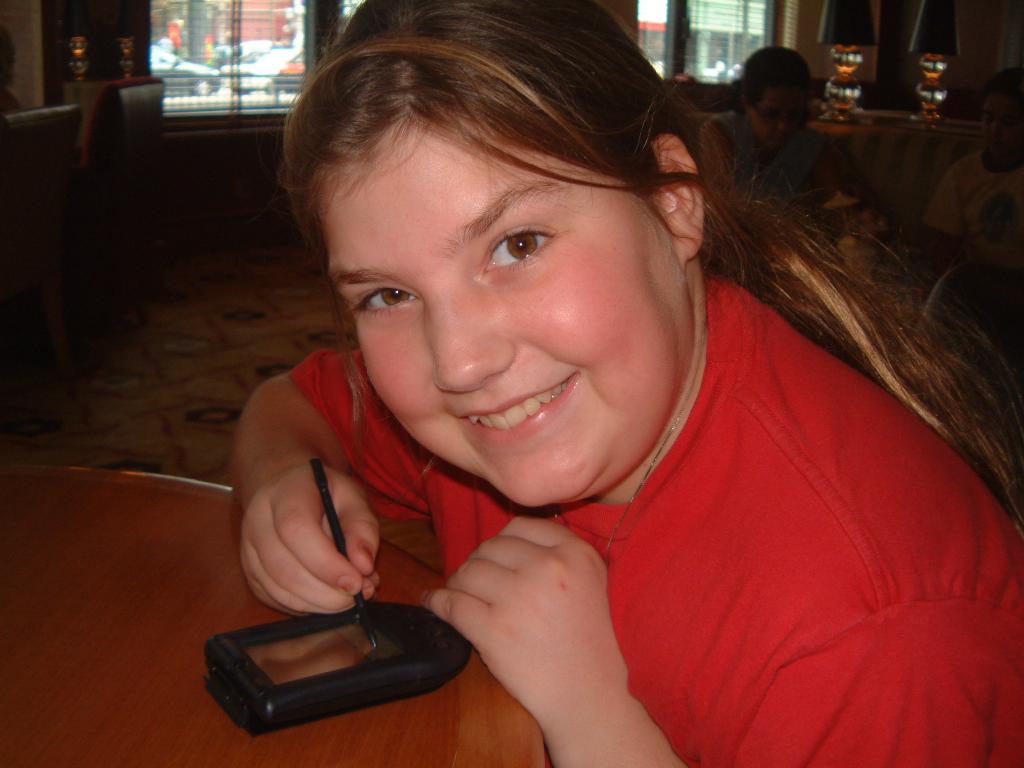
At about 2:00pm our room was ready. Danielle was asleep in seconds.
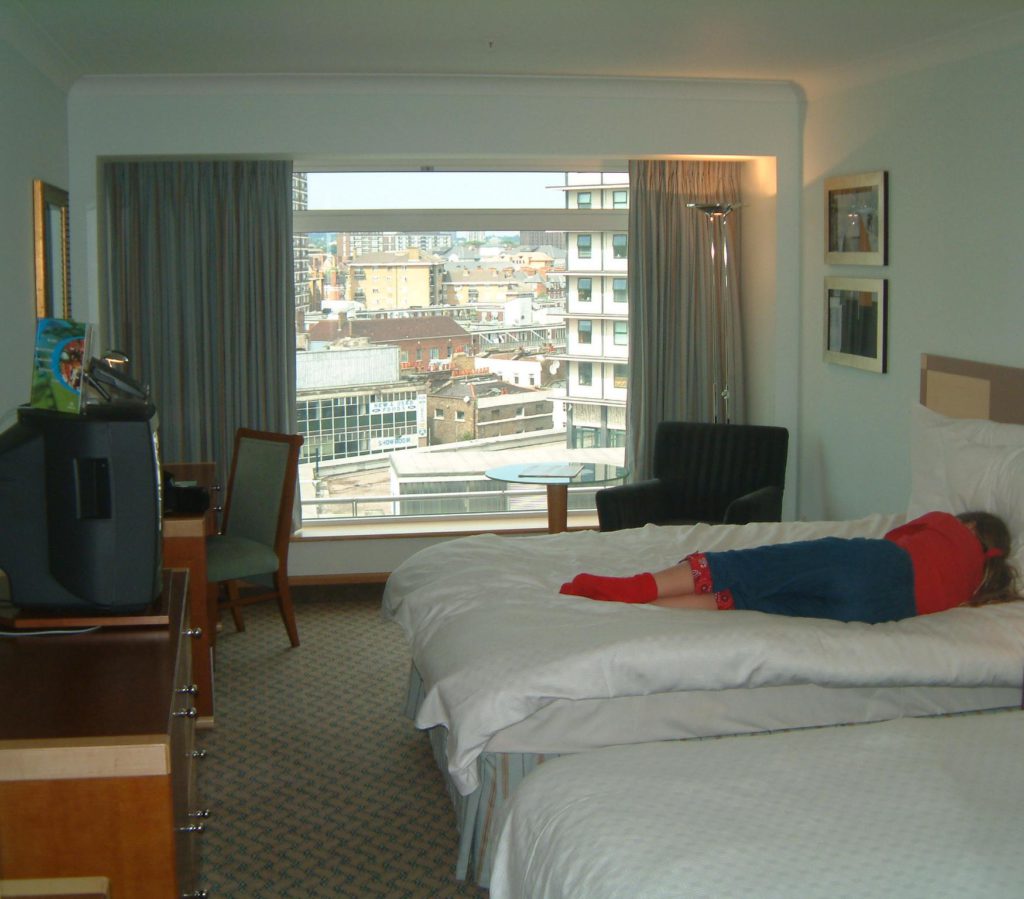
At 5:30 I went down for orientation and then collected her for dinner in La Fiama, the Metropole’s downstairs restaurant. We dined with a nice couple from Arizona, the Drumms, who have been in the UK for twelve days, most of it at the British Open. The demographics of this tour are quite different from the Tauk Tour, although I guess that’s a seasonal thing. The average age of this group is probably late forties, and it’s fairly evenly distributed.
Monday, July 30, 2001
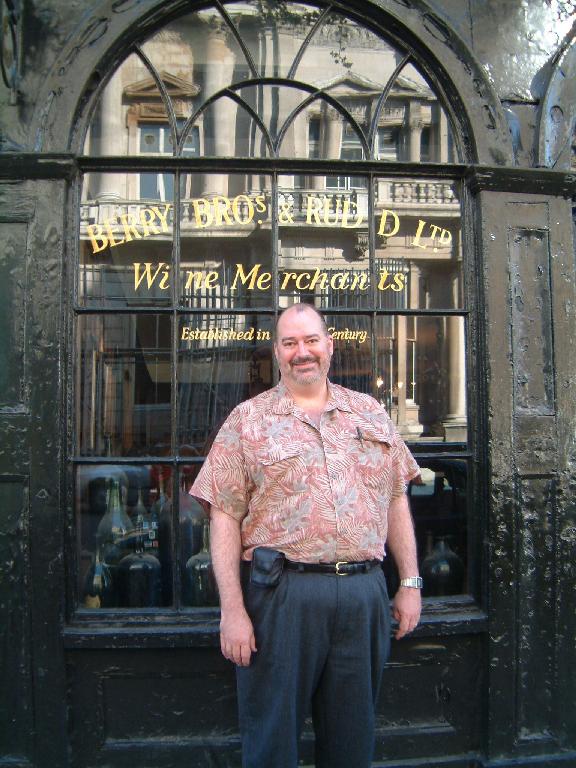
Feeling surprisingly like we’re on the right time zone, we breakfasted in La Fiama and then joined the group for a city tour. We started by retracing our steps yesterday to St. James Palace and Buckingham Palace. I took the opportunity to peek into the window at Berry & Rudd Ltd., one of the oldest wine merchants in the city. Our walk this time took us through St. James Park, along the Princess Diana memorial walkway. Rejoining the bus, we drove through the West End, pausing at Westminster Abbey for a quick photo. Then it was on to the British Museum.
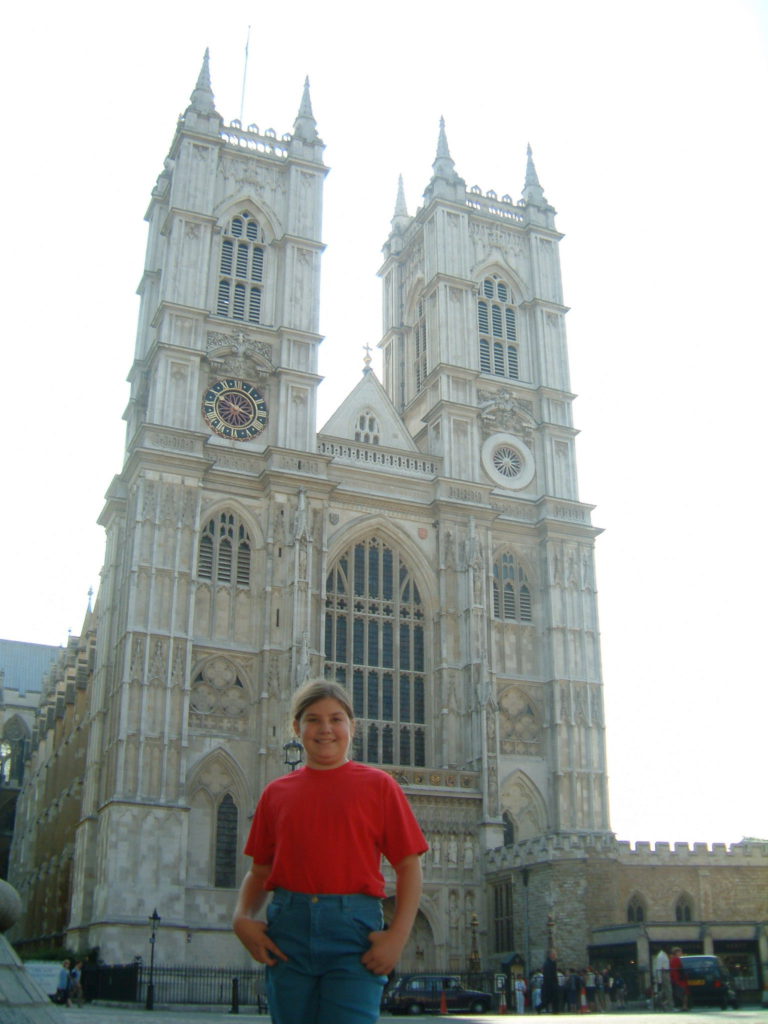
Trying to do the British Museum in an hour is the ultimate exercise in futility. But Danielle and I split off from the group and shifted into high gear, hitting the highlights in rapid fire: The Elgin Marbles (stolen from the Parthenon), the Rosetta Stone (stolen from the French, who stole it from the Egyptians), many, many mummies (ditto) and Latham Man, a 200-year-old man perfectly preserved by being tossed into a peat bog after being ritually killed (this last item was from Northern England, and actually wasn’t stolen).
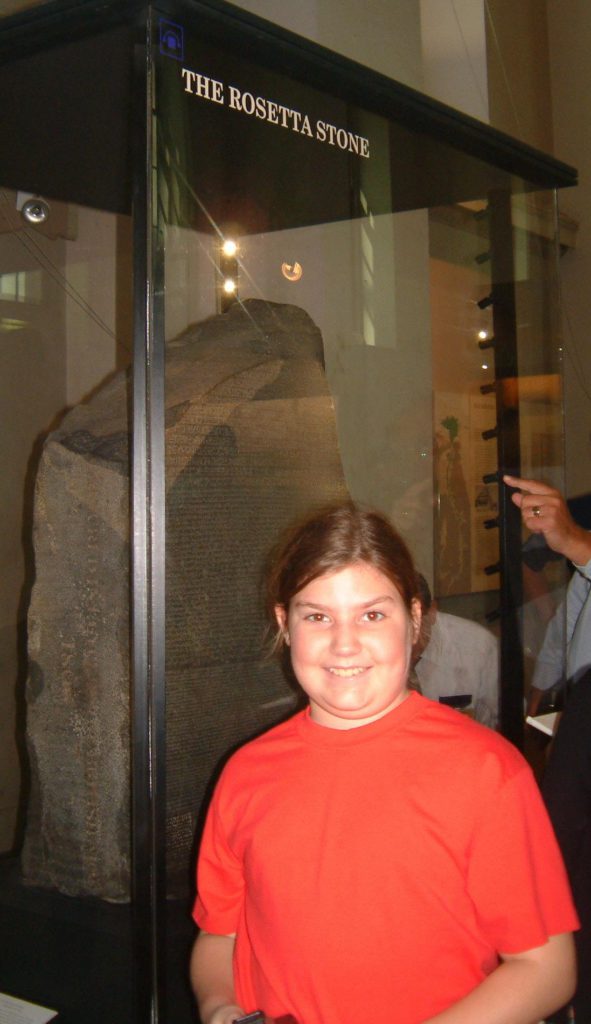
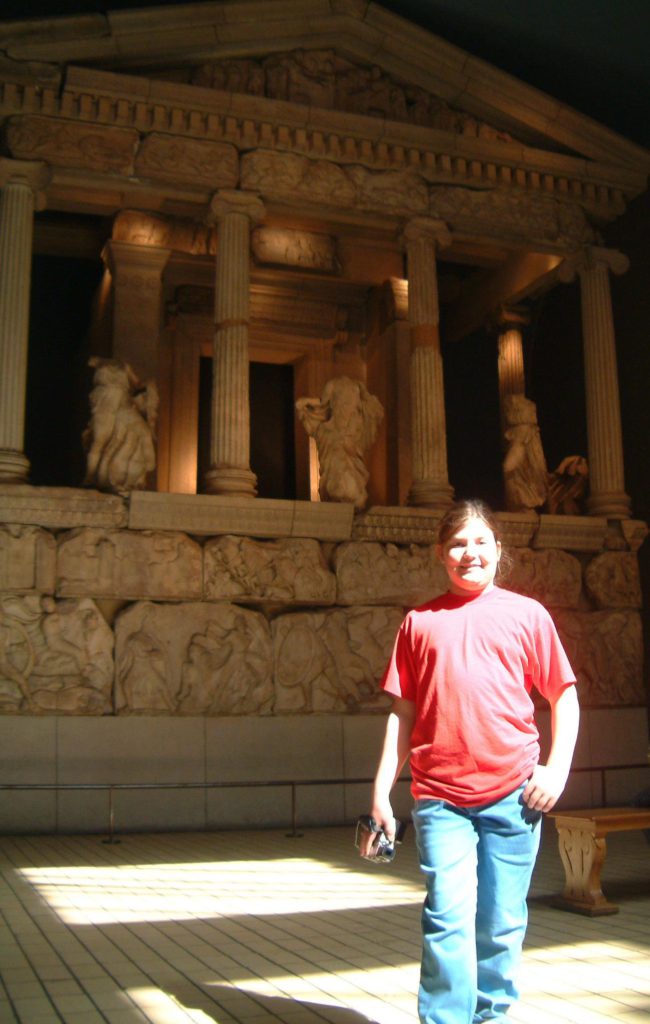
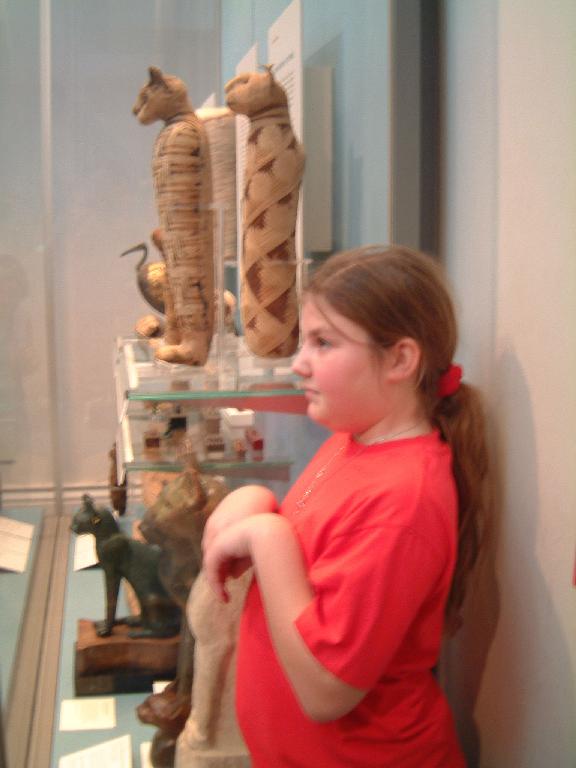
Next stop: Covent Garden, for lunch and shopping. Danielle and I had a baked potato and a waffle (you can guess who assembled the menu) in an open air cafe, and then Danielle bought several hundred stuffed animals. She’s now in the hole $48 — time to do some math workbook pages and earn some spending money.
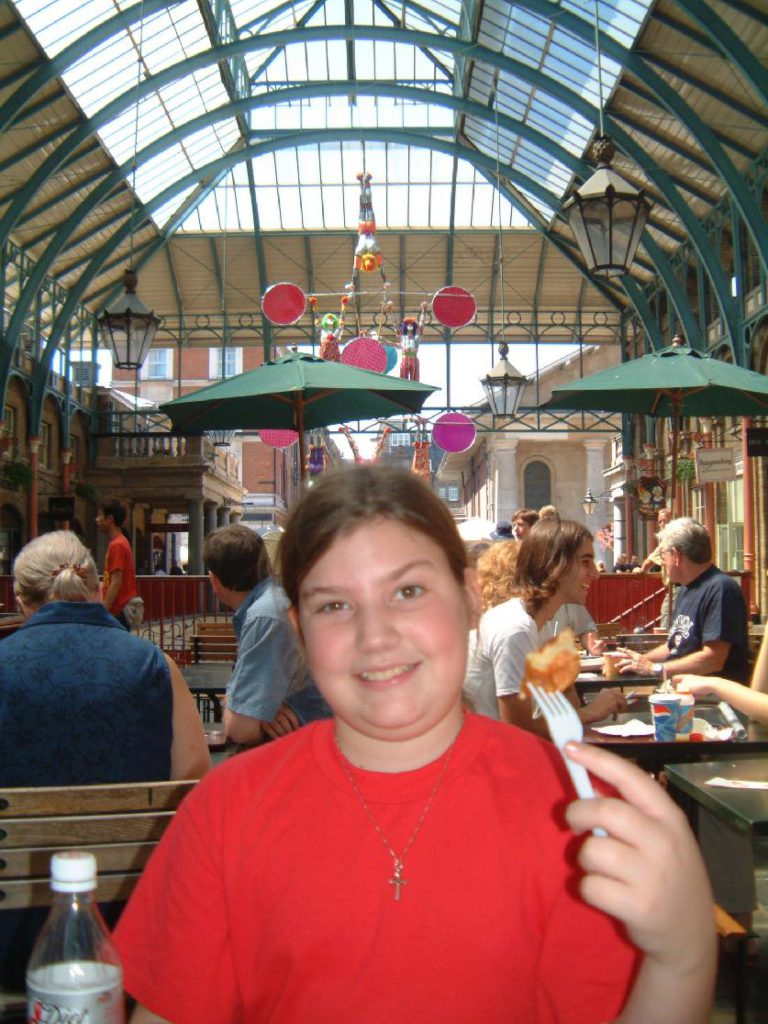
The afternoon tour took us to St. Paul’s Cathedral (no photos allowed). It’s big, but not as attractive as Notre Dame. Danielle was hesitant to visit the crypt until I pointed out that it couldn’t be too creepy, as there was a Crypt Cafe. We visited the tombs of Christopher Wren, the Duke of Wellington and Lord Nelson, and Danielle learned some history. She says they’re studying English history this year in school, so this should put it wonderfully in context.
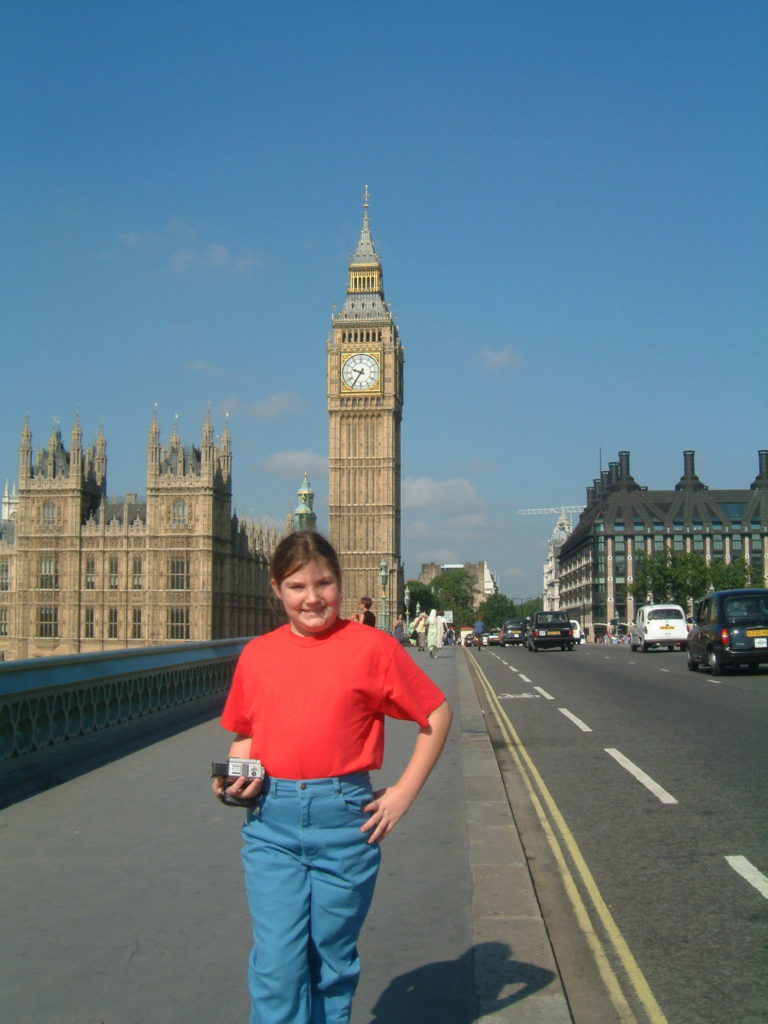
Our final stop was the Tower of London, where Danielle learned a LOT of history, particularly about Henry VIII and his sexual proclivities. The displays in the White Tower have been significantly improved since I was there last. I still think this original structure, built by William the Conqueror starting in 1066, is the most impressive.
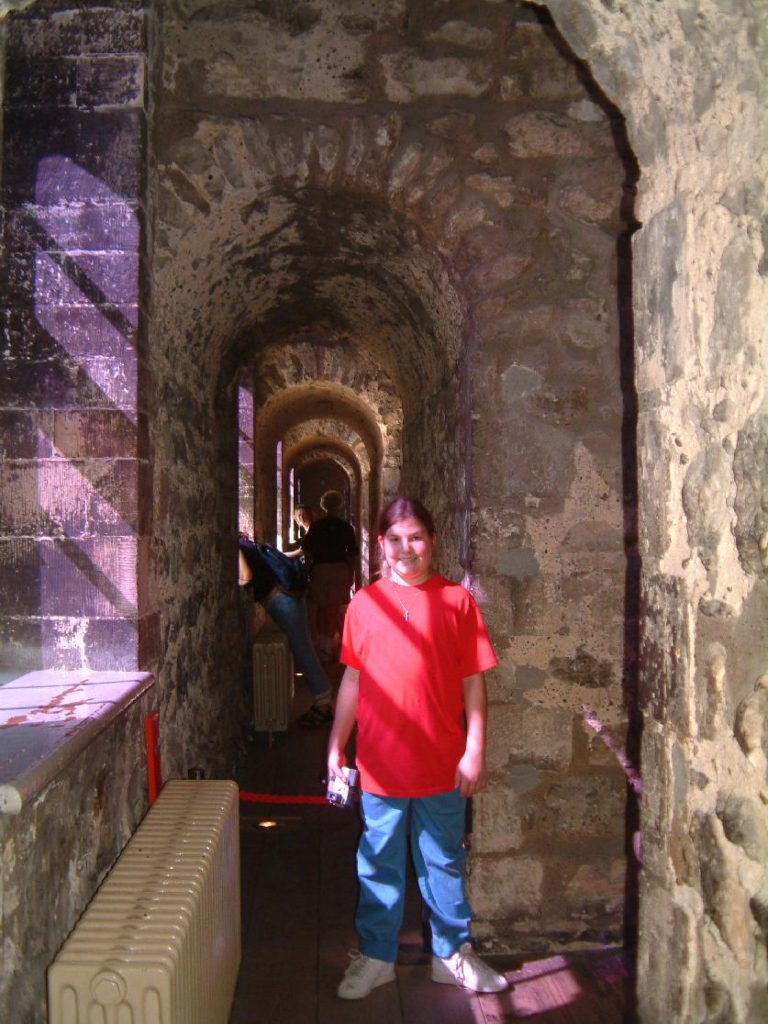
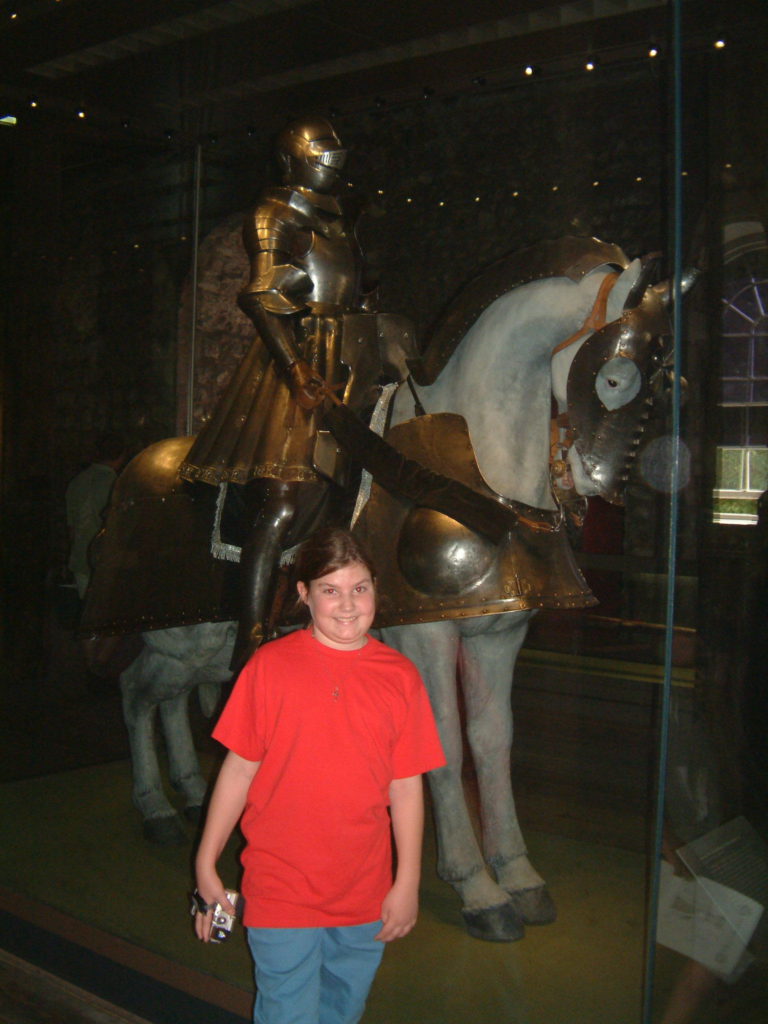
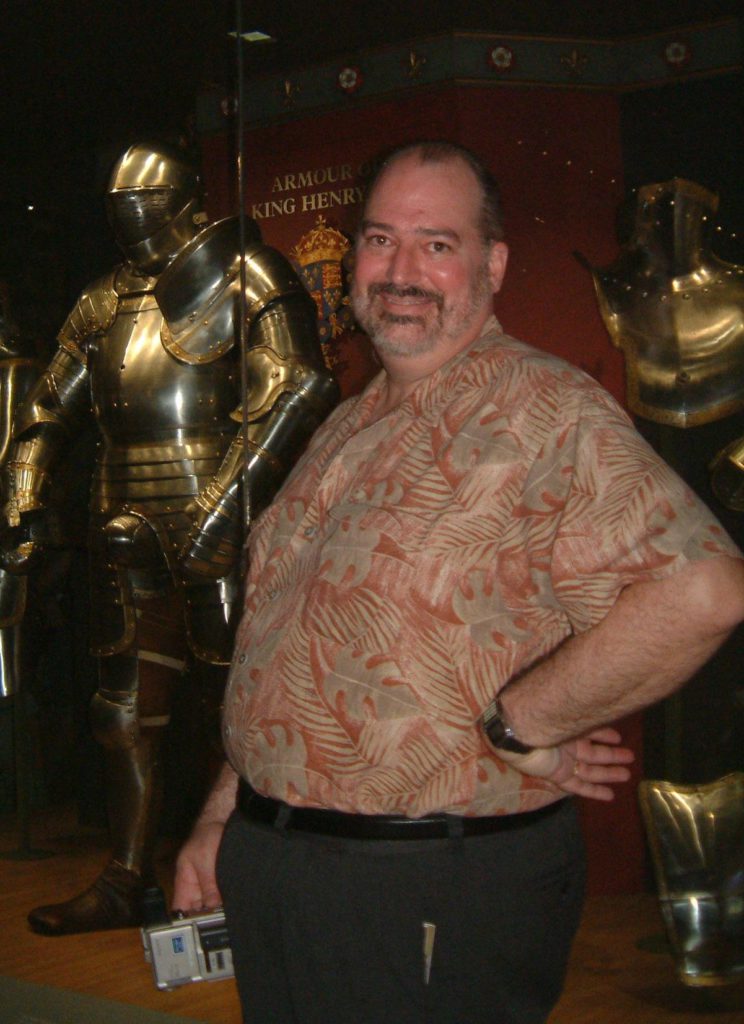
It was extremely hot in London today — hotter than Havana! — and we were all pretty tired by the time we headed back to the hotel. A cool shower improved things, and then Danielle and I headed up to Aspects on the 23rd floor for a leisurely four course dinner. They featured a California cuisine which was the best non-ethnic food I’ve had in London.
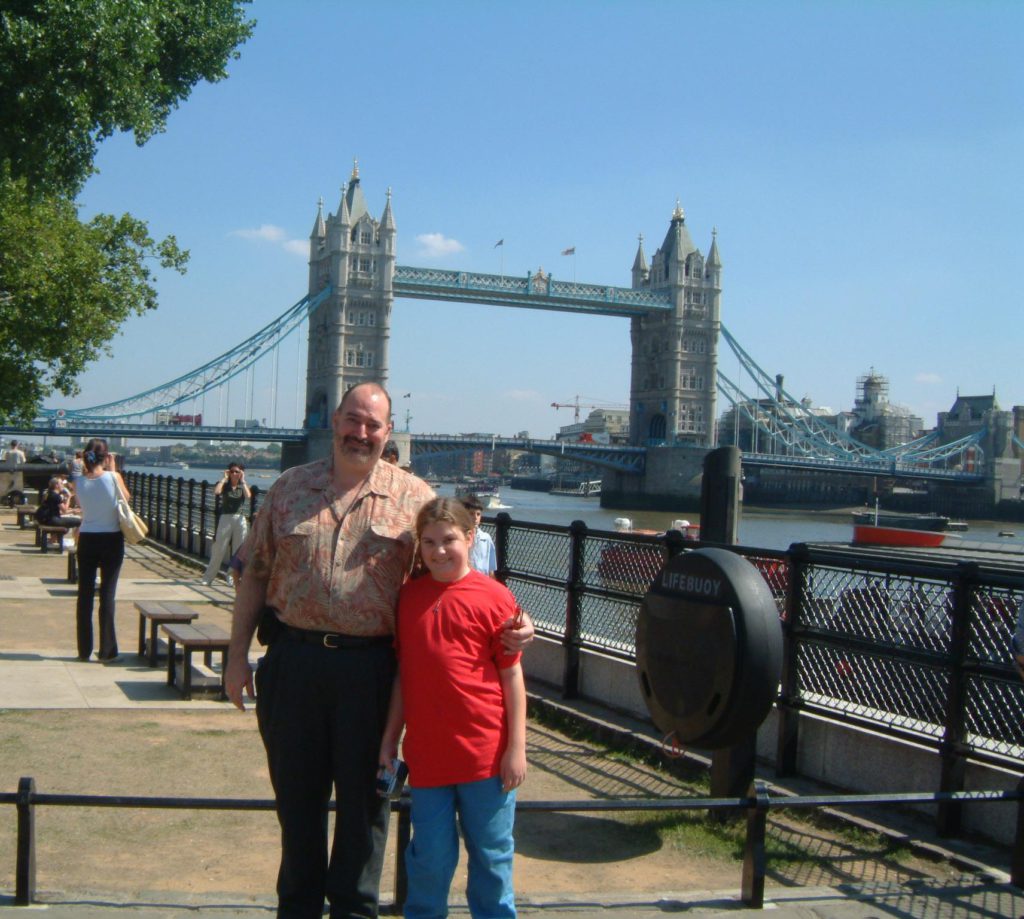
Tuesday, July 31, 2001
The wake-up call for Stonehenge and Bath was at 6:45am, but we still got almost nine hours of sleep. If we weren’t reading such an interesting bedtime book — the fifth volume of The Indian in the Cupboard series — we would have gotten more.Danielle caught a nap on the tour bus as we headed through the English countryside to the Salisbury Plain. This is the third Mercedes tour bus we’ve had in as many tours (including Australia) and they’re really comfortable. The ride is smooth enough that I’ve spent it bringing this journal up to date.
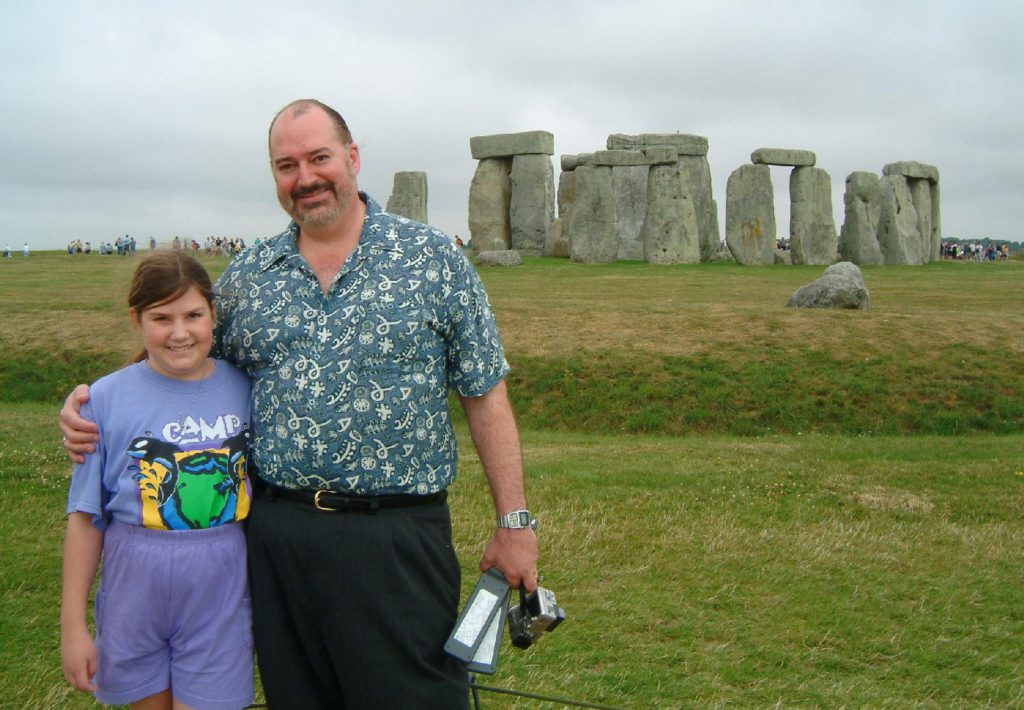
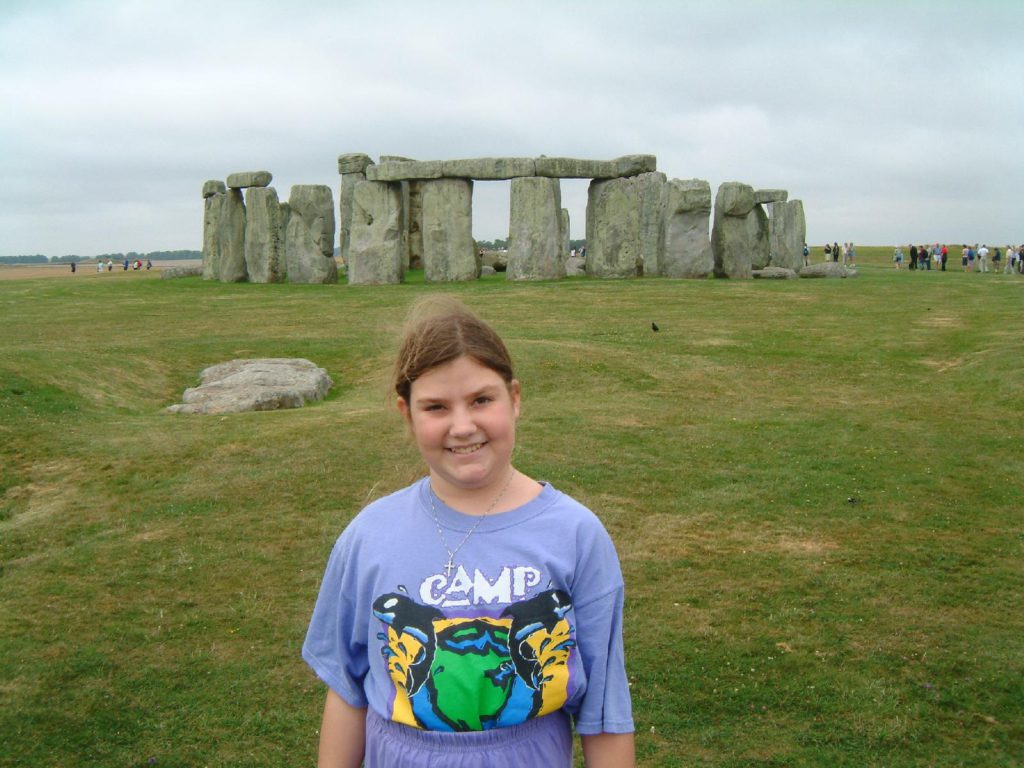
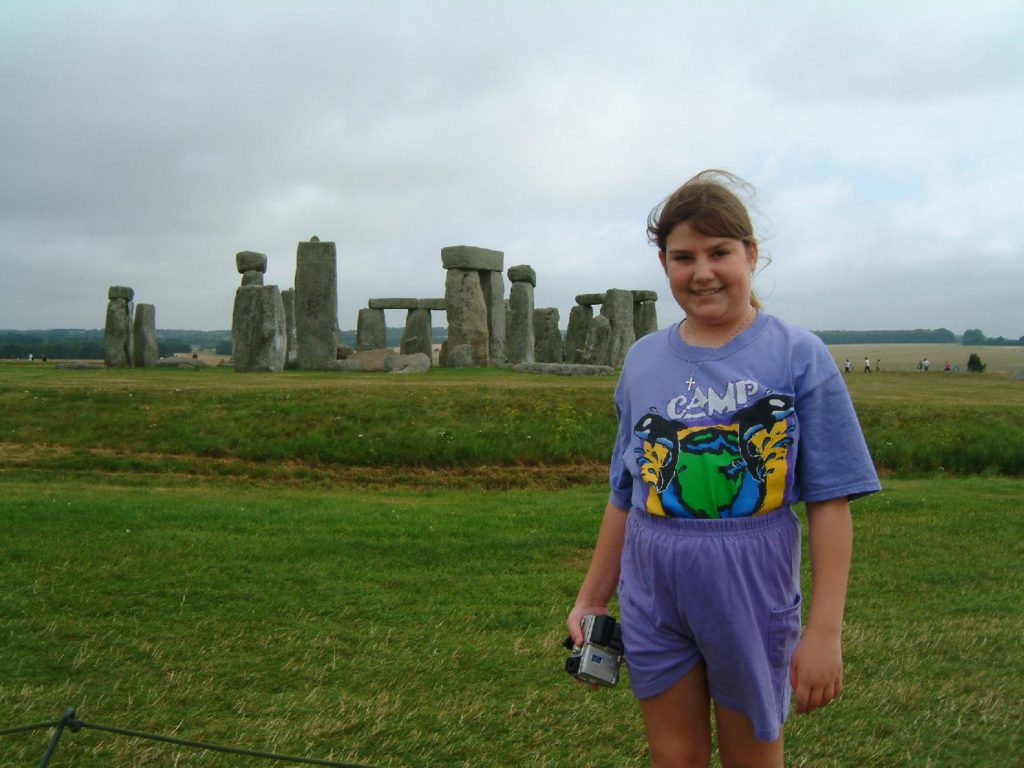
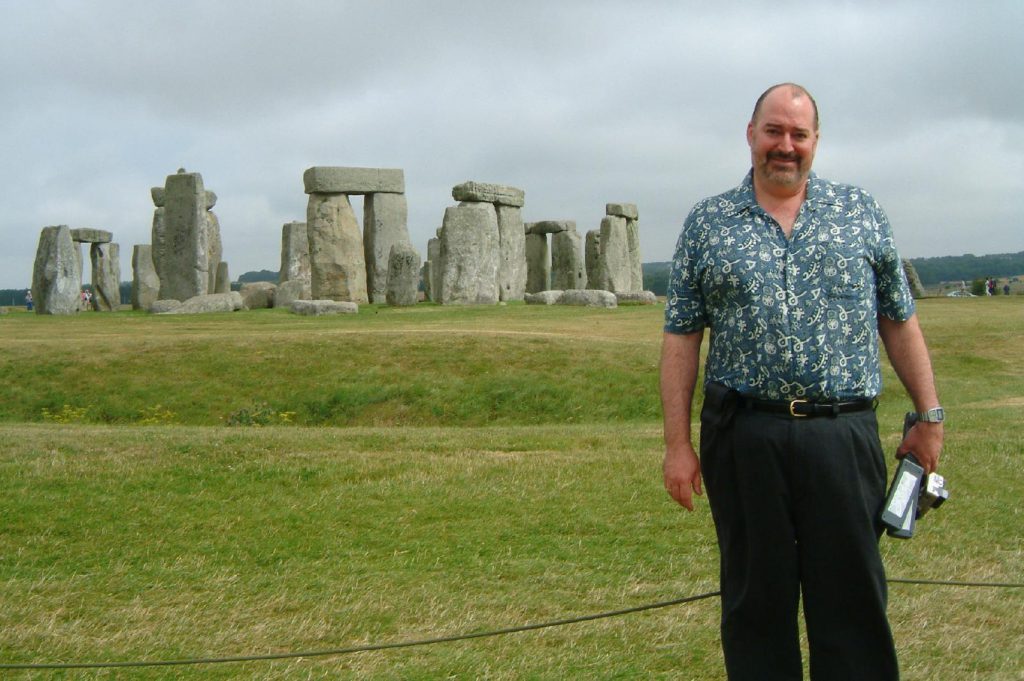
Stonehenge:According to Danielle, “The stones are larger, and the circles smaller than I’d imagined.” I concur. There’s an eeriness about the place in its very improbability. Even the busloads of tourists, and the rope that maintains a fairly distant perimeter don’t prevent you from getting the feeling that some really strange things went on here 5000 years ago.
There are four stone rings inside an earthen ditch, with an alley leading to their center. The inner rings are horseshoe shaped, and the outer ones circular. Two of the rings are relatively “small” irregular stones called “blue stones”. These were transported from Southern Wales, over 240 miles away. No one can imagine how, and recent attempts by college students to duplicate the feat have ended with the stones at the bottom of the ocean.
The upright stones and horizontal lintels that we associate with Stonehenge are from much closer — about 30 miles away. But they weigh up to 50 tons. They’re fastened together like giant furniture, with pegs and holes.
Stonehenge was built by a group we call the “Beaker” People, from the fact that they placed beakers in their burial mounds. These mounds are called “barrows”. Several are visible from Stonehenge itself. Little else is known about the site, except for the fact that it’s a calendar. The flat stone near the front aligns perfectly with the central “altar” stone at sunrise on the longest day of the year, and sunset on the shortest.
Stonehenge really only occupies you for about an hour, and the free interpretive audio tour isn’t terribly informative. Nevertheless, it’s well worth the trip because it’s just so darn strange.
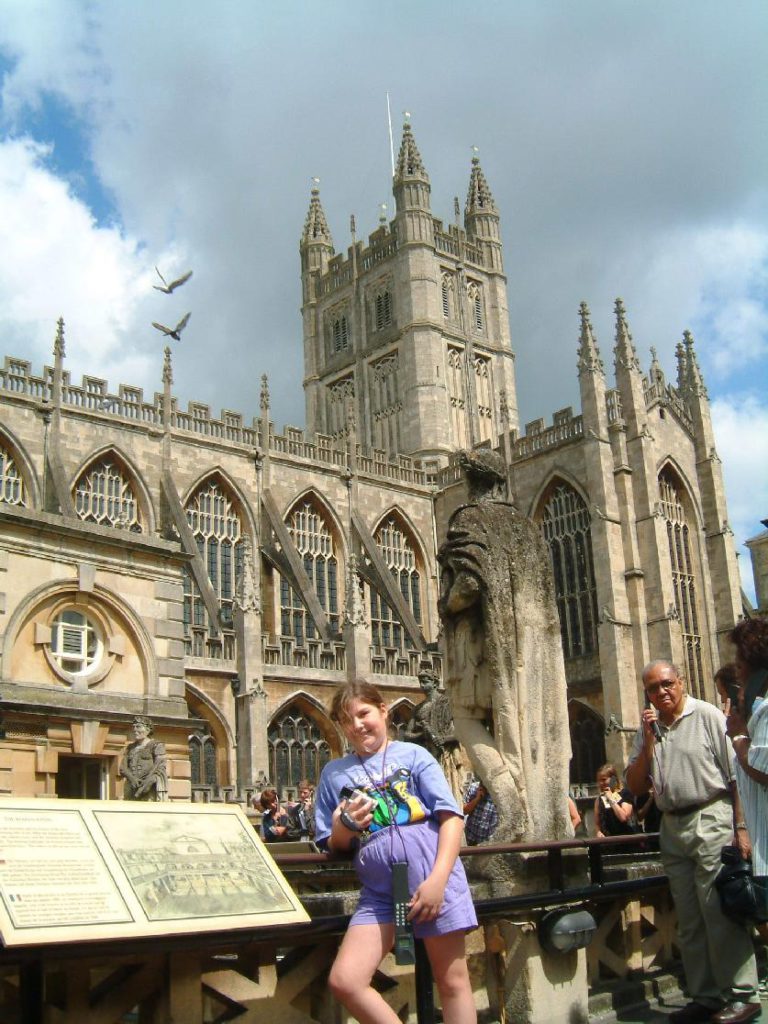
Bath:I wasn’t expecting much from Bath — frankly I had no idea what it was; but it turned out to be quite a nice mixture of history and ambiance. Bath is all about water — hence the name. It’s a good sized town built around the site of England’s only hot spring. The story goes that it was discovered by a leper who noticed that his pigs’ skin problems were healed when they bathed in the mud of the hot spring. He did likewise and was cured, then went on to become the king.
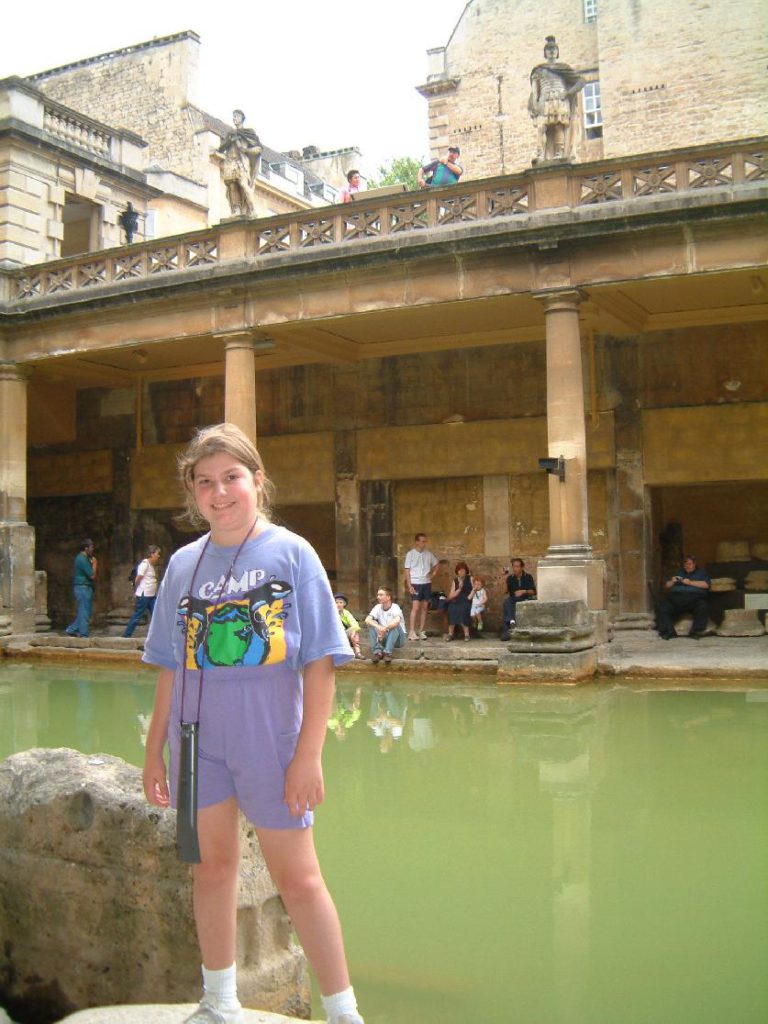
Later the Romans set up one of their elaborate bath houses on the spot, and it is chiefly the archaeology of this period that is presented at the historical site. The Roman building incorporated a temple, hypocaust, calderium, and a sacred pool into which you could throw pewter scrolls for the goddess Minerva — chiefly requests to curse people who had done you wrong.
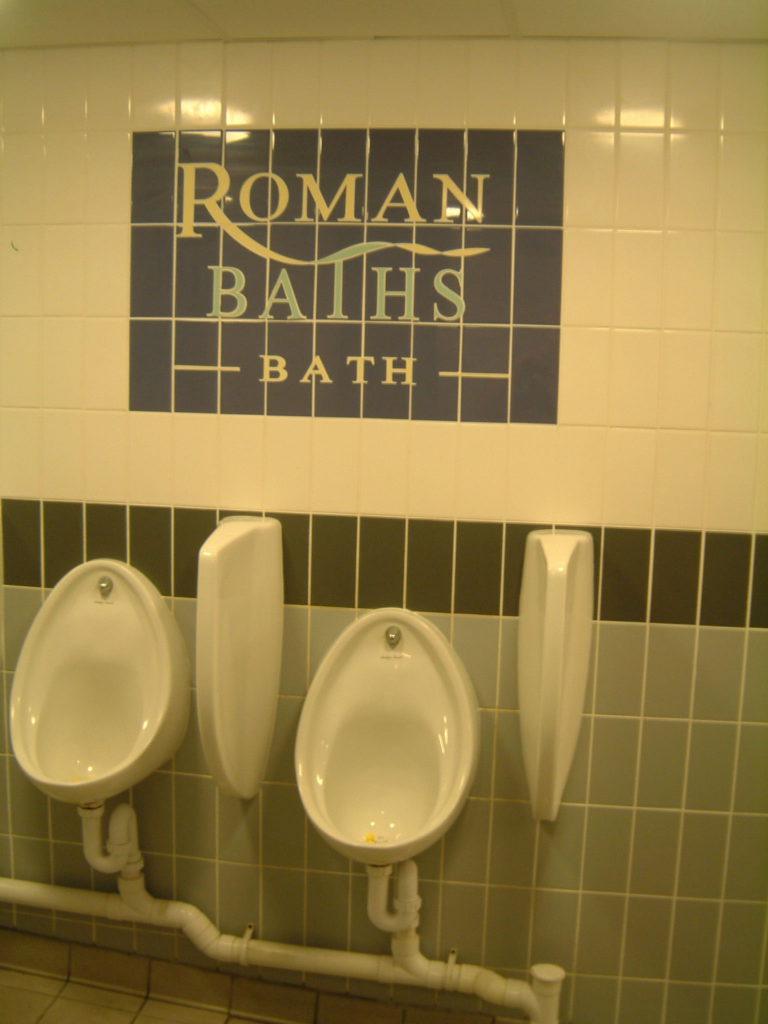
Following the Romans, the Victorians rediscovered the spring, and turned it into a fashionable resort. The discovery of the Roman ruins in the 19th century further encouraged tourism. Today the town is filled with tourists, cafes, shops and flowers. Well worth the trip.
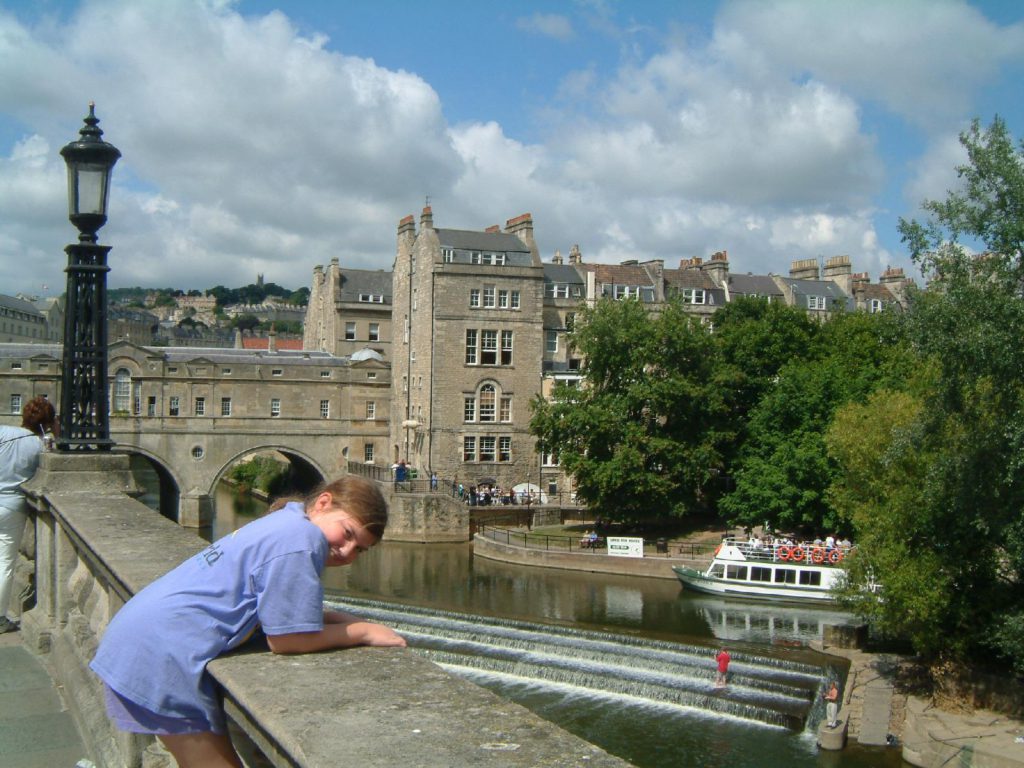
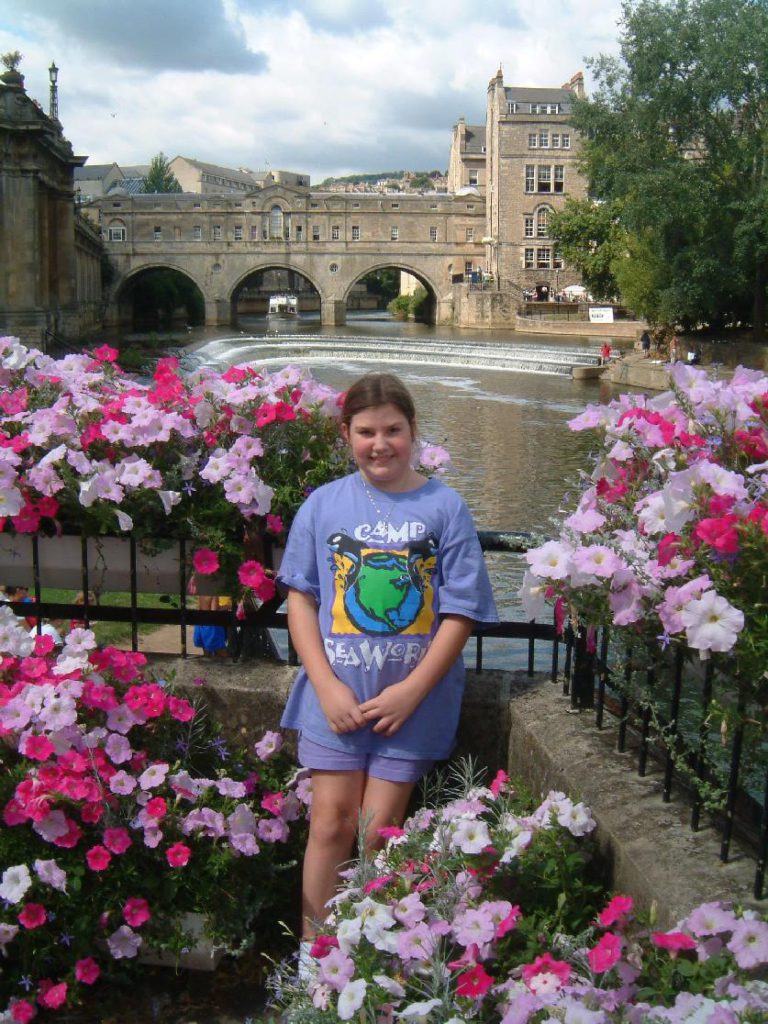
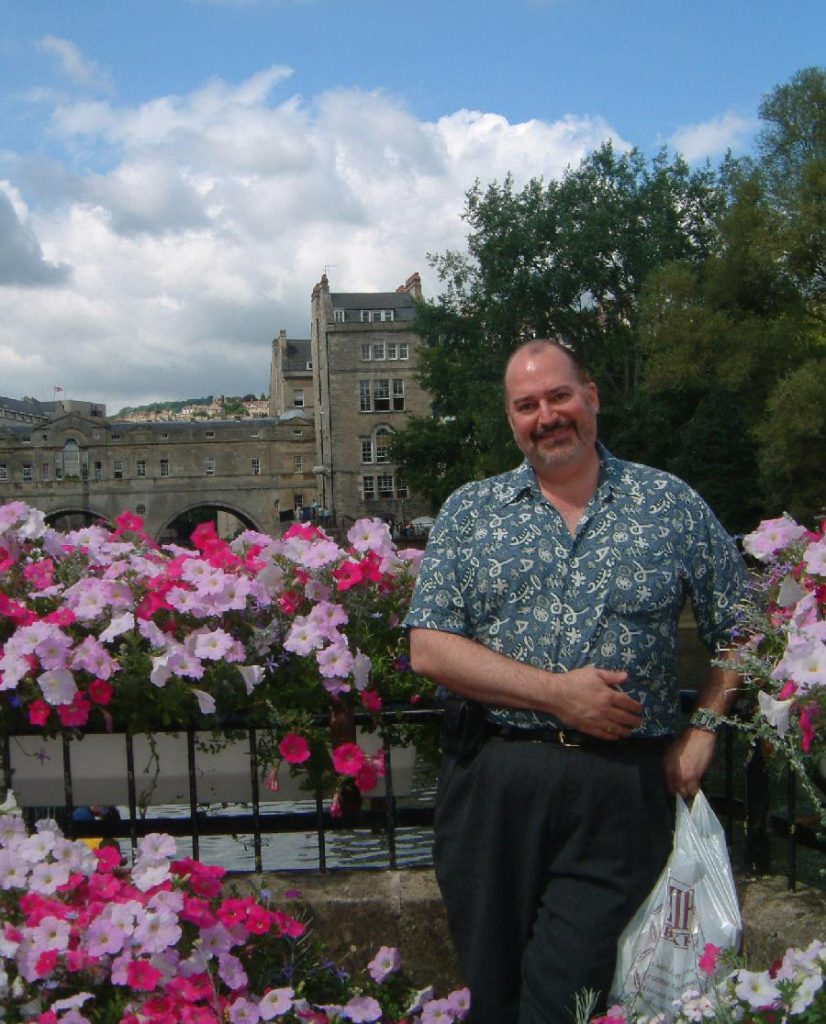
After a late lunch overlooking the river Avon (not Shakespeare’s Avon: Avon is Celtic for “river”, so there are a lot of River Avons — literally “River River”) we headed back to London, arriving at 5:30. Showered and changed, we headed out at 7:00pm for Agatha Christie’s “Mousetrap”, which at 49 years is London’s — and the world’s — longest running play.
It’s presented in a small theater that reminded me of the Victorian music hall described in the Indian in the Cupboard series. The play is quite good, although we’ve watched so many Perry Mason episodes that we had it mostly figured out at intermission. At the end, the audience is sworn to secrecy, but I can assure you that the butler didn’t do it (there isn’t one).
We spent our cab fare on a T-Shirt, so we didn’t stay in the theatre district for a late supper as planned, but instead headed back to the hotel on the tour bus and went to bed.
Wednesday, August 1, 2001
This tour may be called “Leisure Europe”, but the pace hasn’t been too leisurely so far. I’m glad we didn’t select “Frenetic Europe”! So we decided to take this morning off. We’ll skip the optional Windsor Castle trip and rejoin the group for tea at Harrod’s.
After a truly appalling breakfast as only the English can ruin it, we caught the tube to Westminster for the tour of the Cabinet War Rooms. To our surprise, this turned out to be the highlight of our London stay.
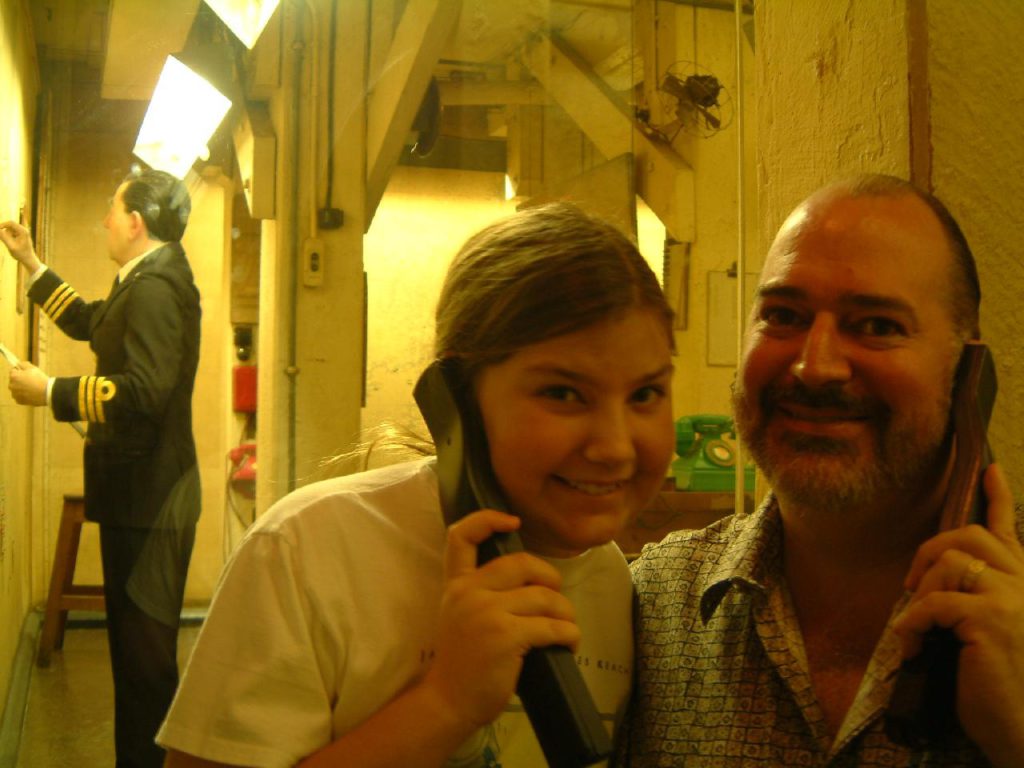
The warren of underground rooms, protected by a 3-foot-thick concrete ceiling, housed Churchill and other key planners and military figures during the London blitz, from late 1940 until the end of the war. It has been preserved EXACTLY as they left it — right down to the last paperclip and cigar butt. The narration of the self-guided audio tour was excellent, capturing the uncertainty of the times with bits of actual recordings. Highly recommended.
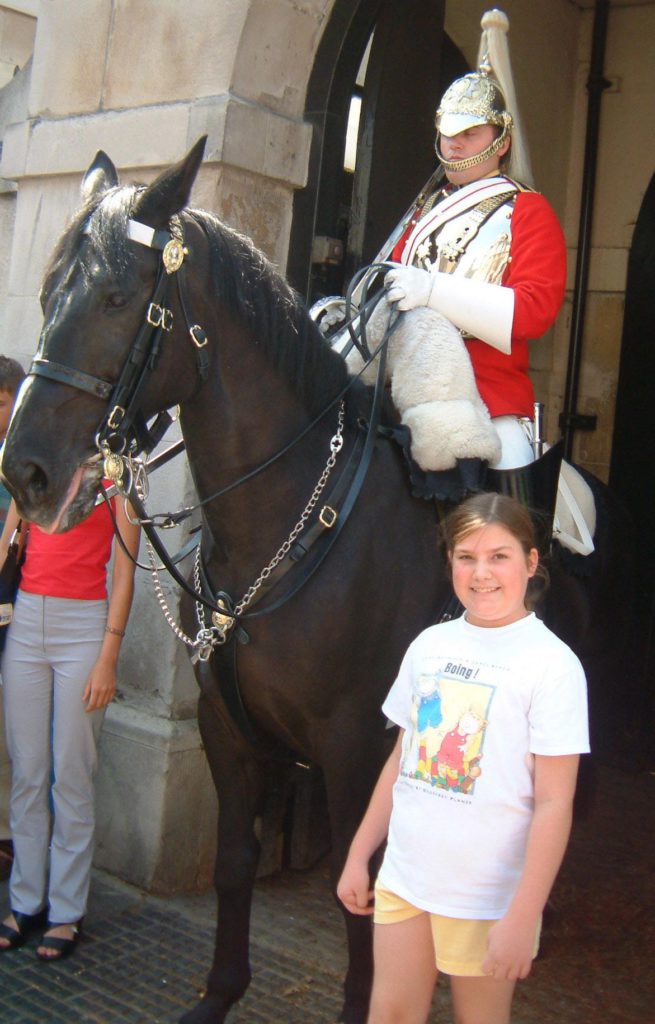
On the way back to the Westminster tube station we walked past the Horse Guards. Incidentally, Westminster Station is quite amazing. It’s about eight stories deep, with crisscrossing escalators and interlinking tube platforms, and is entirely concrete and steel. It looks a lot like a scene out of Star Wars.
Back at the Hilton we had lunch downstairs. The Caesar salad consisted of equal parts lettuce, ham and eggs, all put through a meat grinder, with two sardines on top. Yum. (How can these people live only 40 miles from France?)
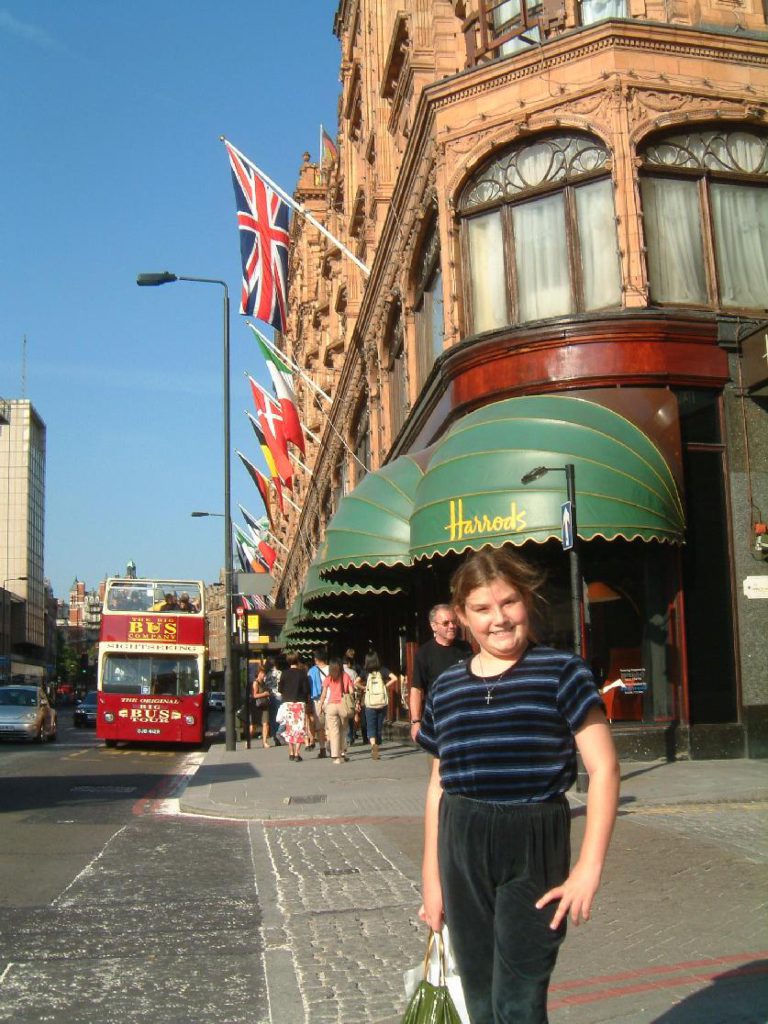
At 4:00 pm the motor coach dropped us off at Harrod’s for tea. Harrod’s is a really, really, really friggin’ big store. It’s six stories of an entire block filled with merchandise, much of it ridiculously priced, but with enough reasonably priced items to cater to all tourists and many locals. There are — get this — 300 departments, and 4000 employees. You can get furniture, plasma screens, furs and lettuce all under one roof. The cheese case alone was about 50 feet long. Tea was the usual finger sandwich and cardboard pastry nonsense, but we enjoyed conversing with the couple from Arizona.
Danielle, who is still trying to “math” her way out of debt, dropped another 32 pounds on stuffed bears and the hard cover special edition of Harry Potter and the Philosopher’s Stone.I bought a bottle of water for 99p.
Thursday, August 2, 2001
Paris
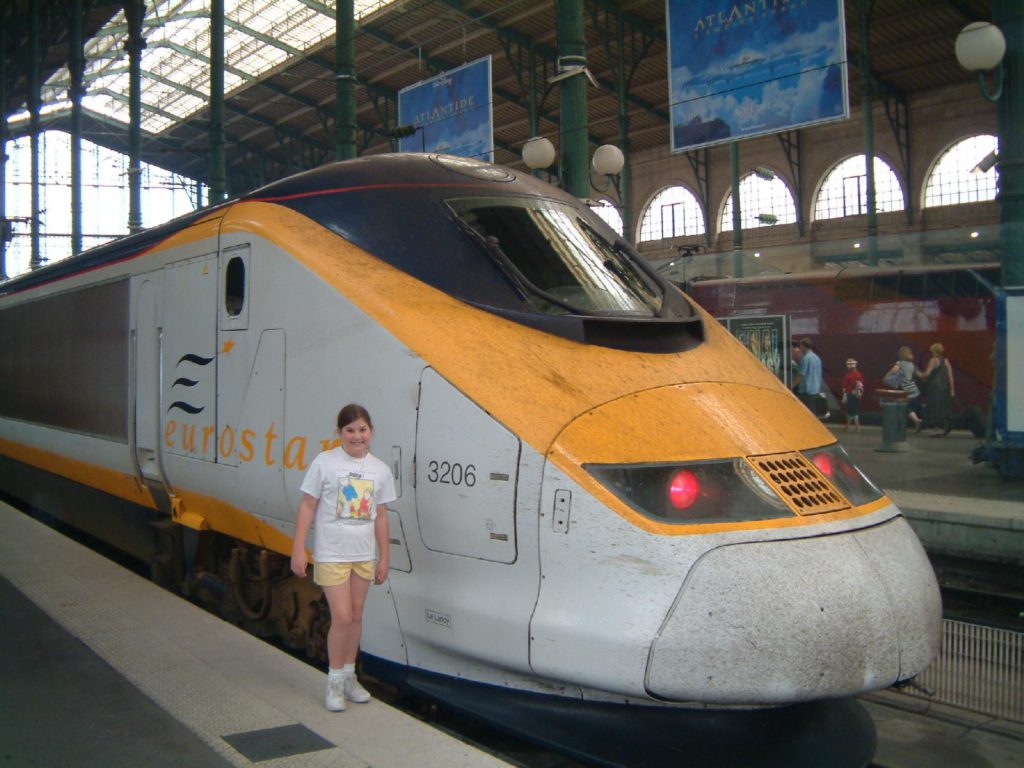
Our wake-up call came at 5:00 am, for the 8:23 am Eurostar train to Paris. Is it coincidence that the London station that connects to Paris is named Waterloo?
The train poked along through England until the coastline, when it hit the smooth tracks of the Chunnel. As we pulled away from English soil, we bid a fond farewell to all the history of London, and a not so fond farewell to everything else about the place! Rudeness, inefficiency and bad food dwindled in the distance, as we continued at about 50mph throughout the 20 minute trip deep beneath the English Channel.
As we emerged into Normandy, the train gathered speed and soon we were hitting close to 200mph. It’s most impressive when you pass another one of these TGV’s going the other direction. At 400mph, they’ve disappeared in a little over a second.An hour later we arrived at the Gare du Nord. Our tour bus stopped at the Opera to pick up our local guide, Nicola. Since his mother was American, he speaks with virtually no accent — he sounds like someone out of a1950’s western, in fact.
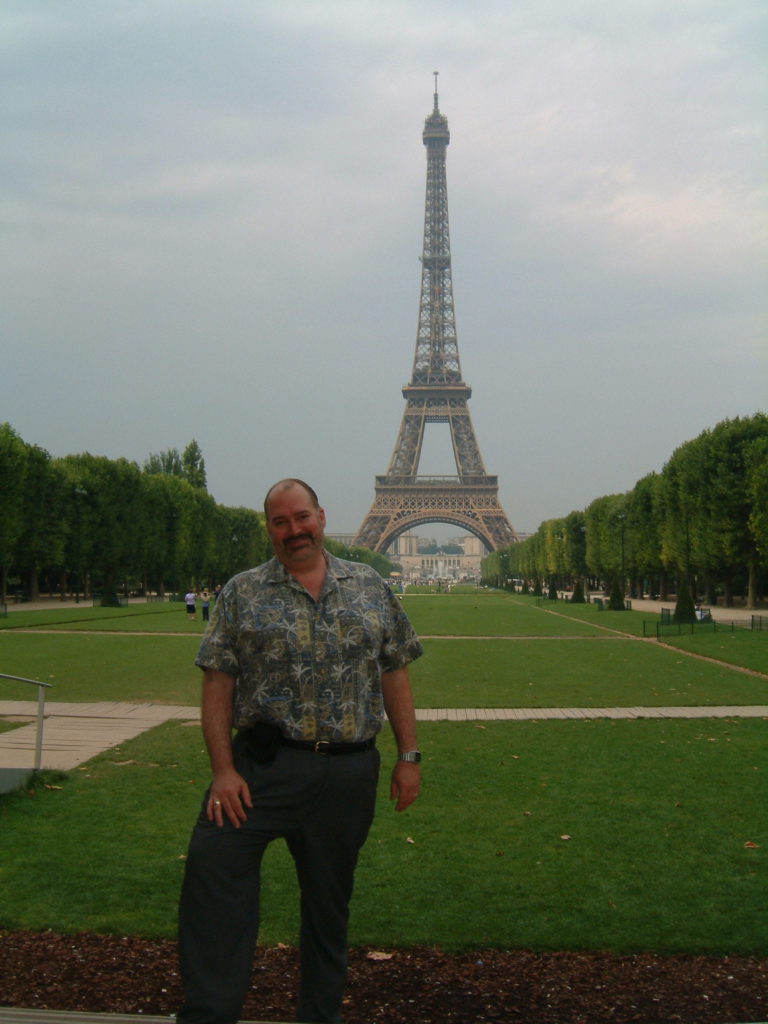
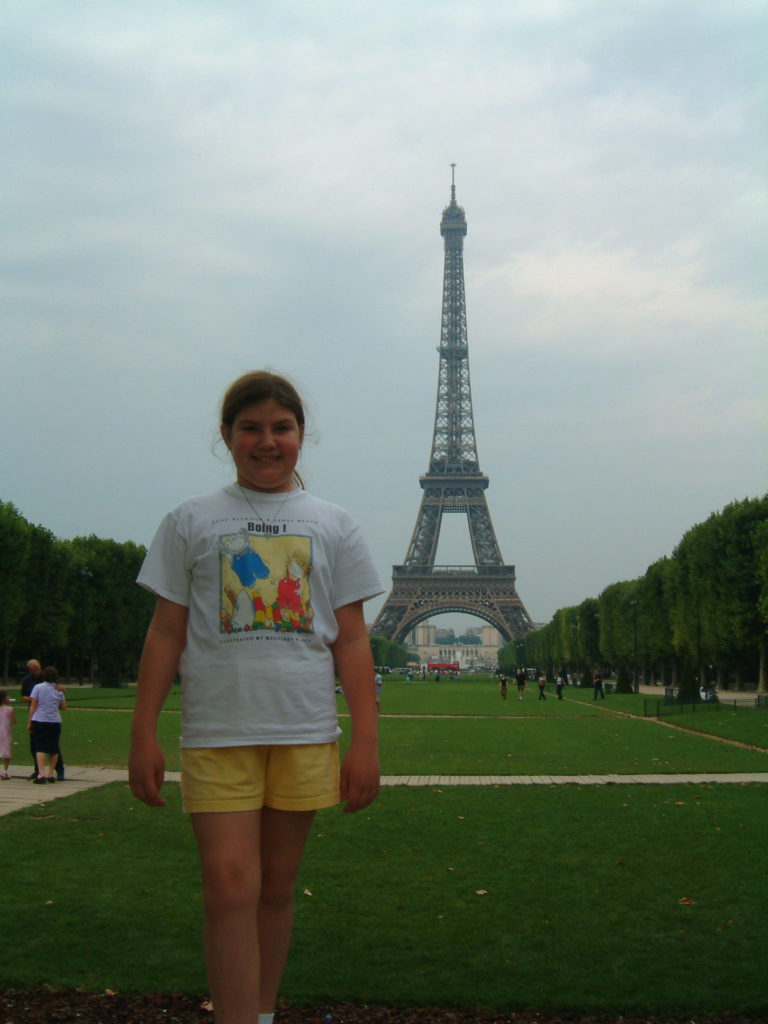
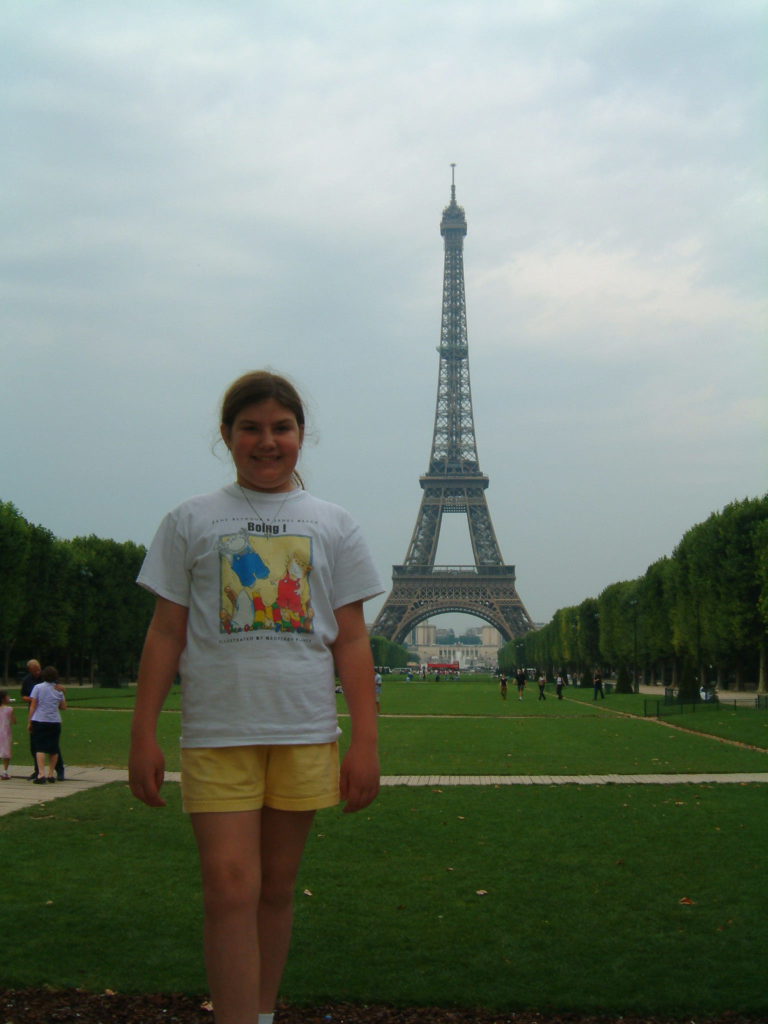
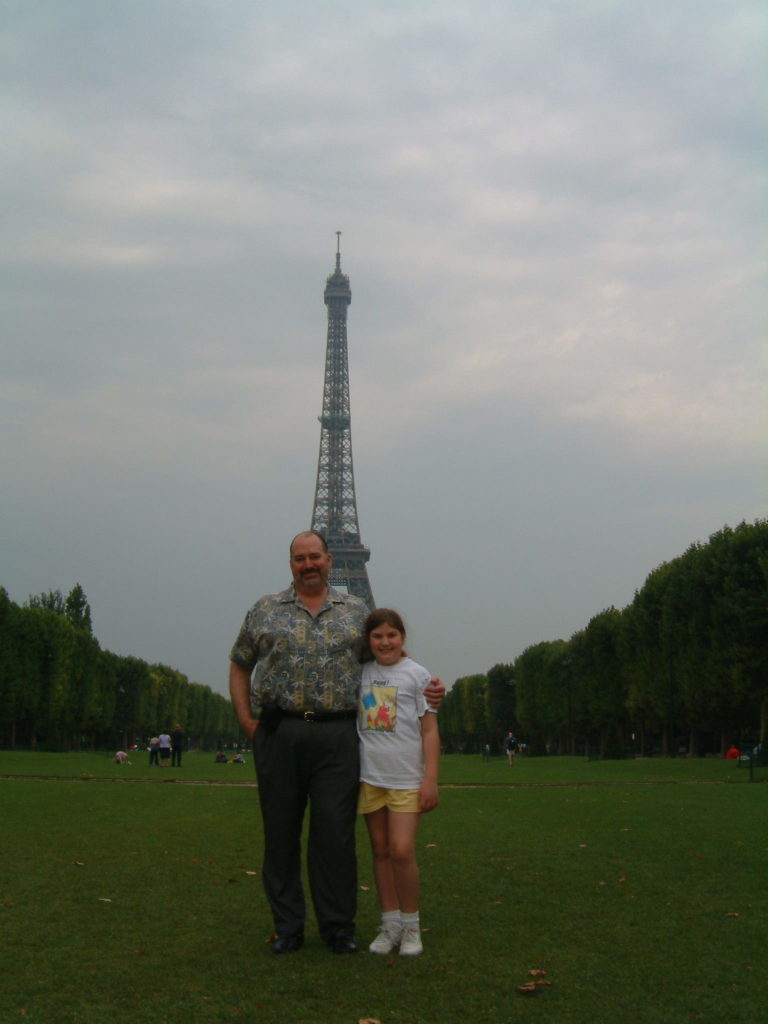
Our city tour took us down the Champs Elysee, stopped at the Eiffel Tower for photos, and then took us to Notre Dame. The cathedral is impressive, but I think we’re both cathedralled out. More impressive to us was the food from the sidewalk cafes. Danielle says it was the best hot dog she ever tasted, and the brie was even better.
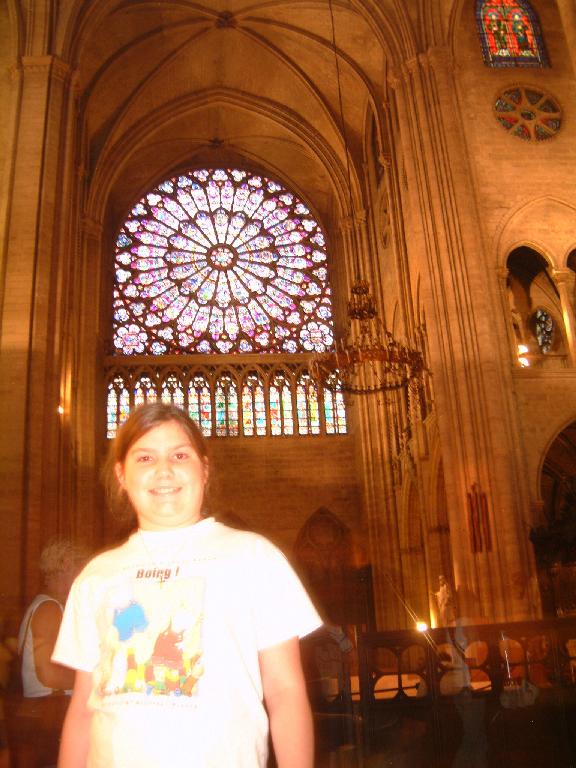
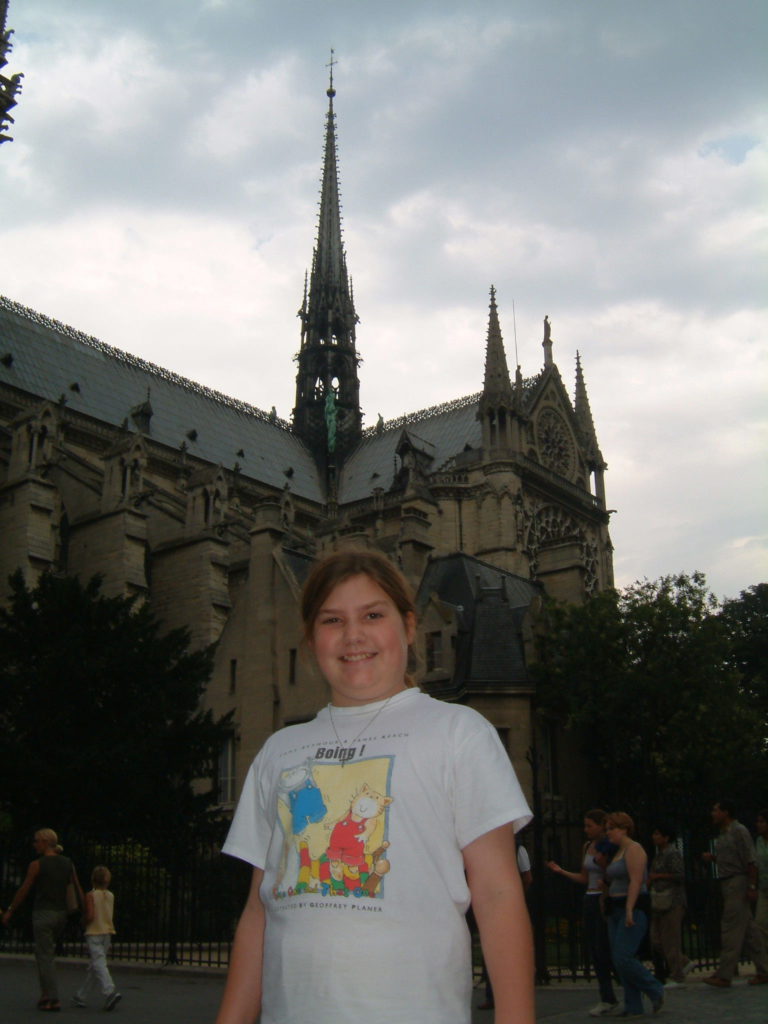
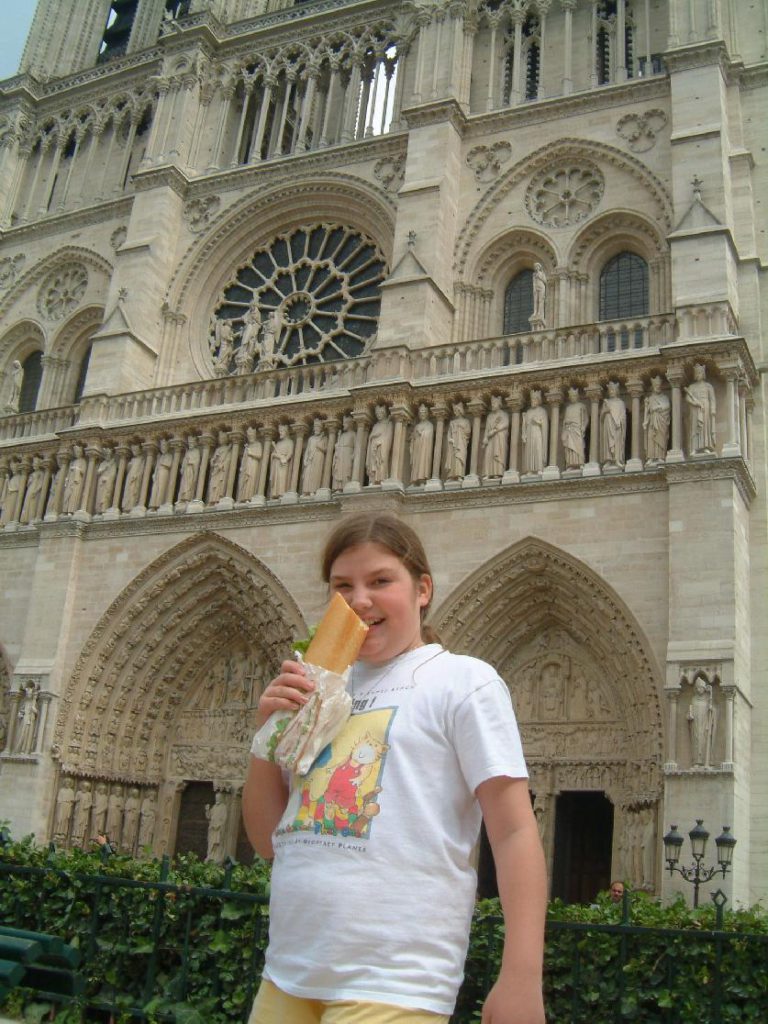
We checked into our hotel at 4:00 pm, and arranged to meet Henry at 7:00 pm for dinner at Quay Oest, his favorite riverfront restaurant, out on the west side.
Friday, August 3, 2001
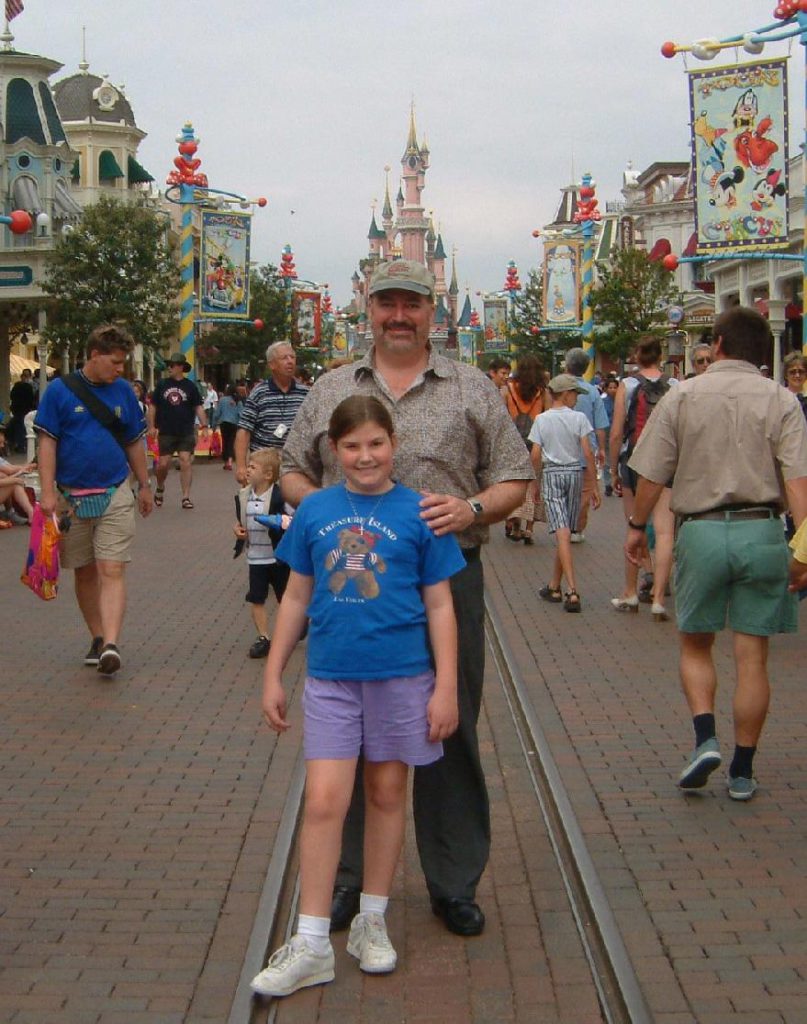
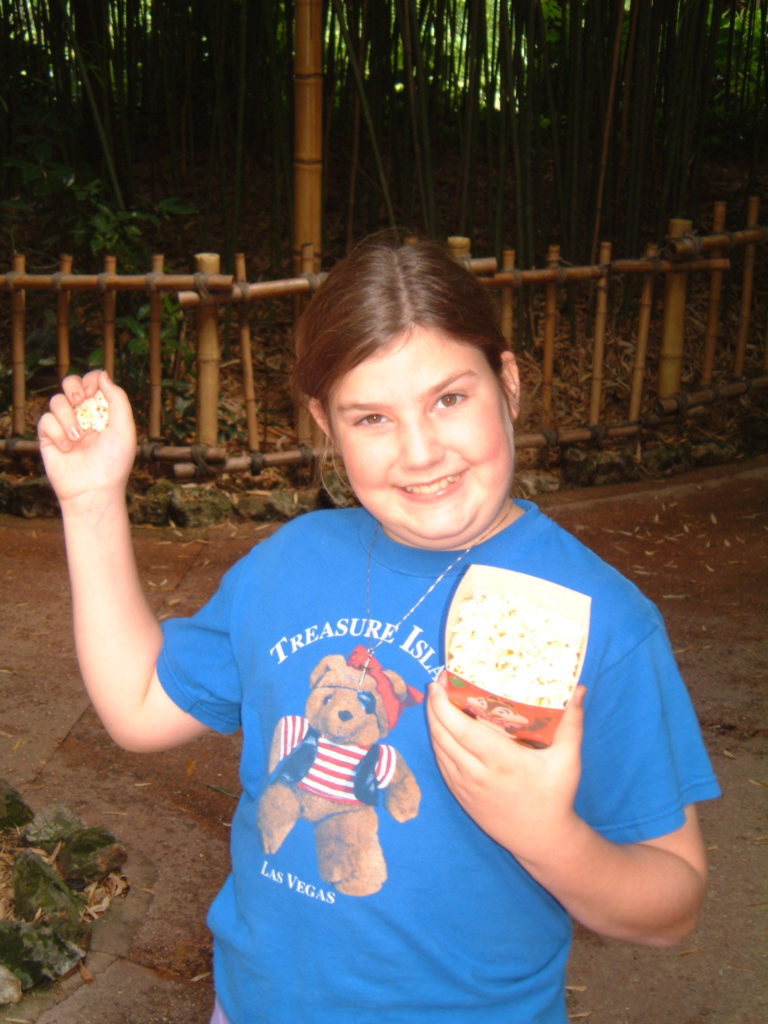
Henry picked us up at 9:00 am and we had breakfast at La Duree, near the Place Madeleine. Now Danielle understands what a croissant is. Wow.We reached Paris Disneyland shortly before noon, where we went on Space Mountain — which Danielle loathed — and then met Jean Claude Boyer and Frederic Sauthier at Walt’s on Main Street for lunch. Afterwards, we did mostly Frontier land, which is a lot different than Magic Kingdom.For dinner we stopped at the mall in Serris to buy food, and then had a nice evening, dining on the table in Henry’s backyard in nearby Chalifert.
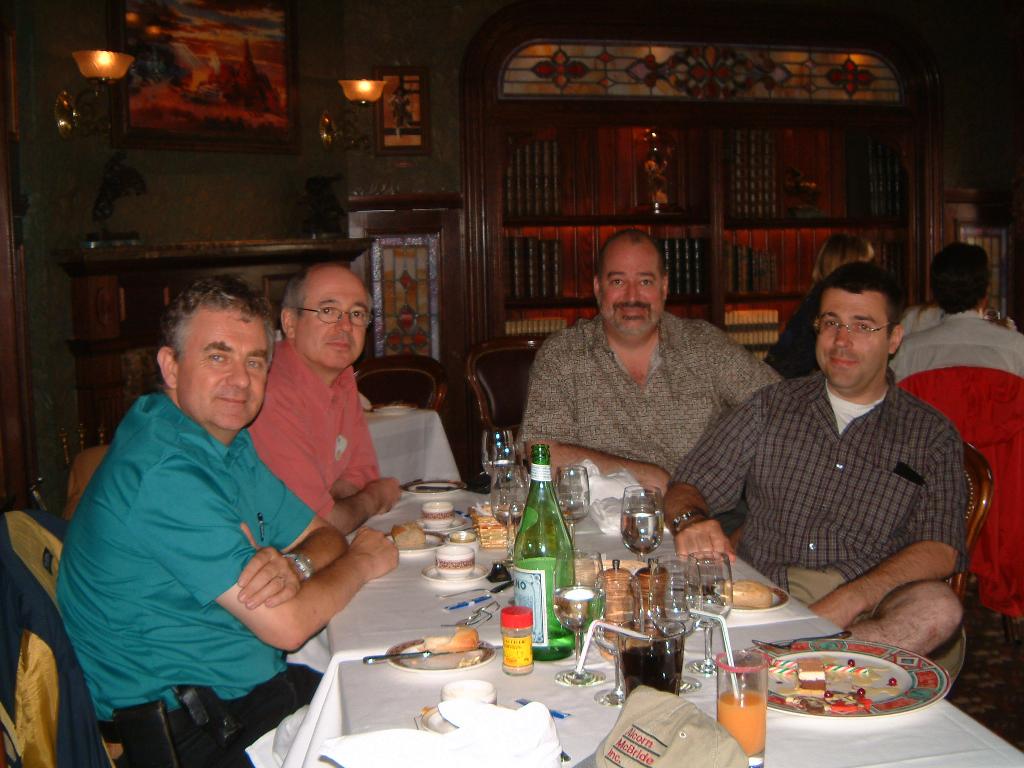
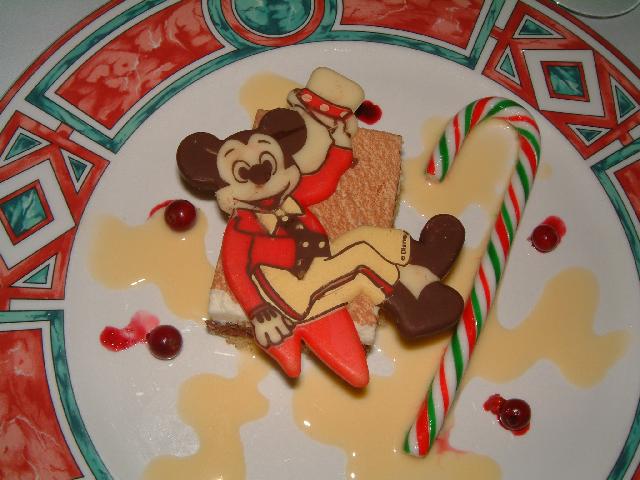
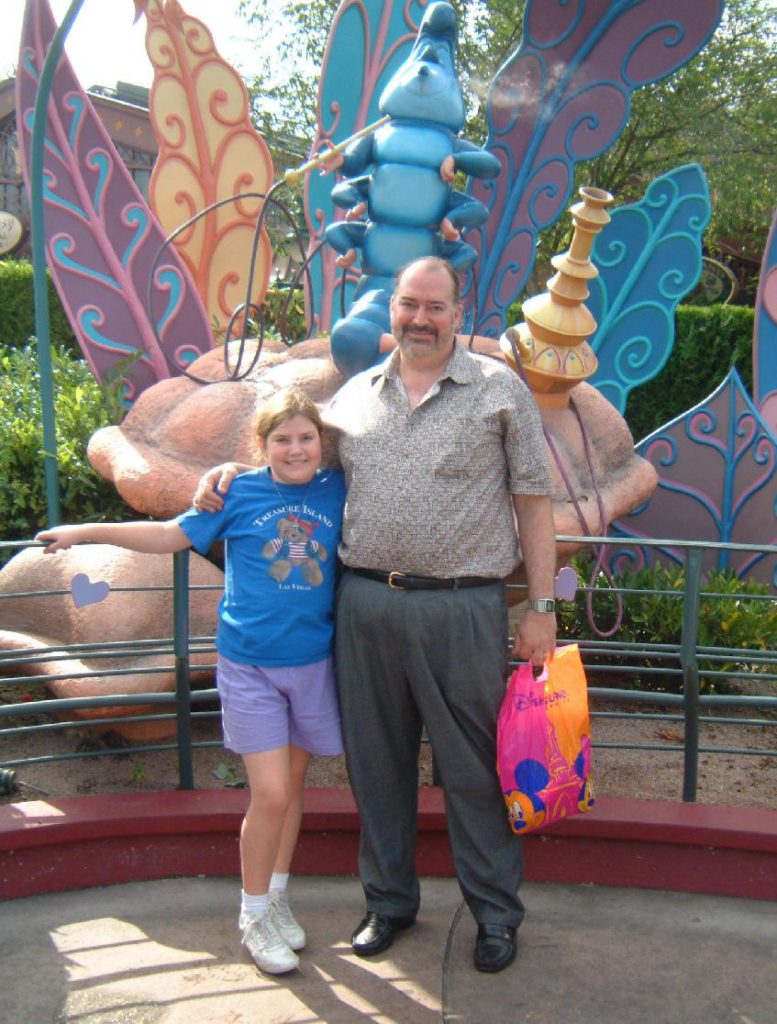
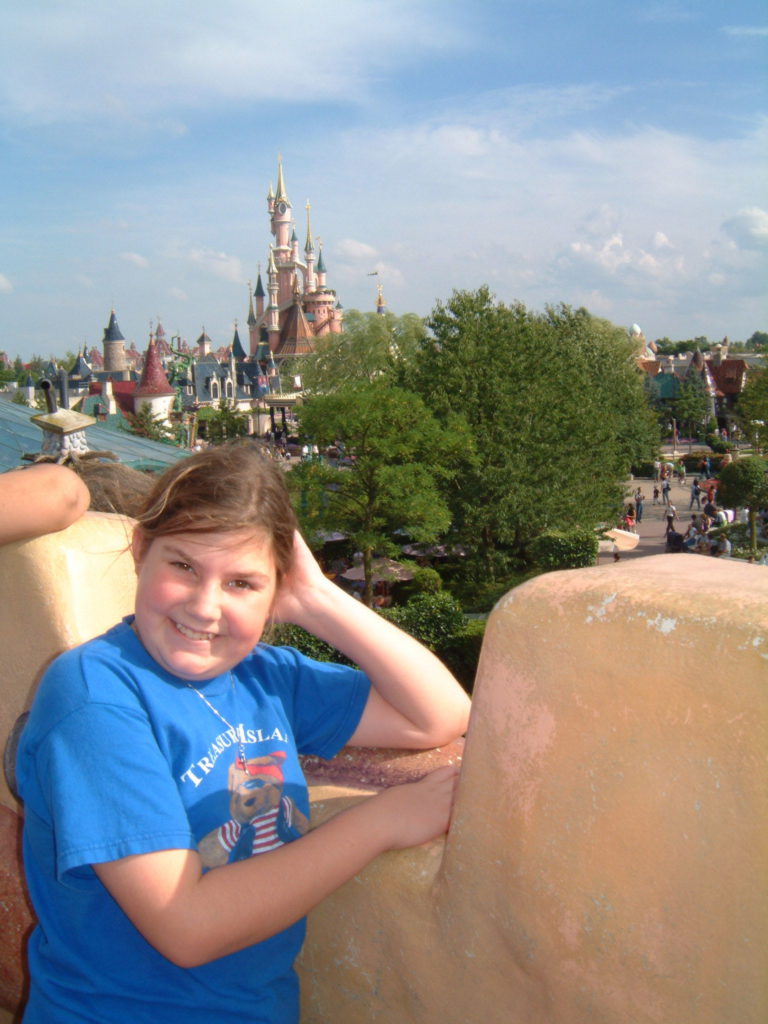
Saturday, August 4, 2001
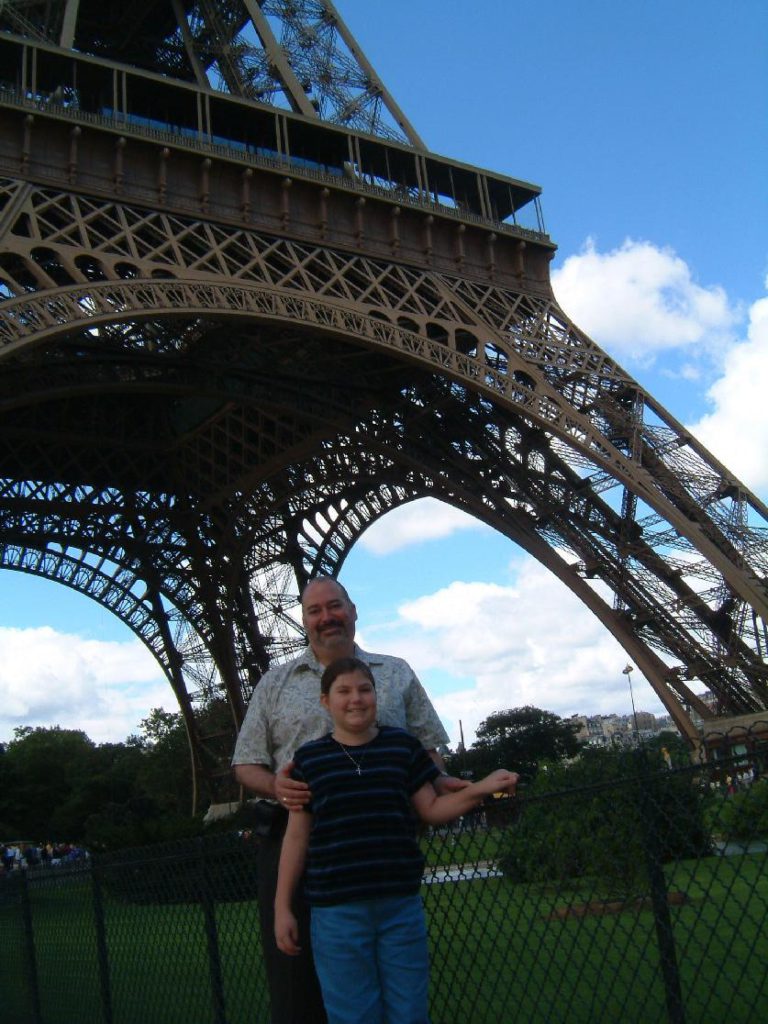
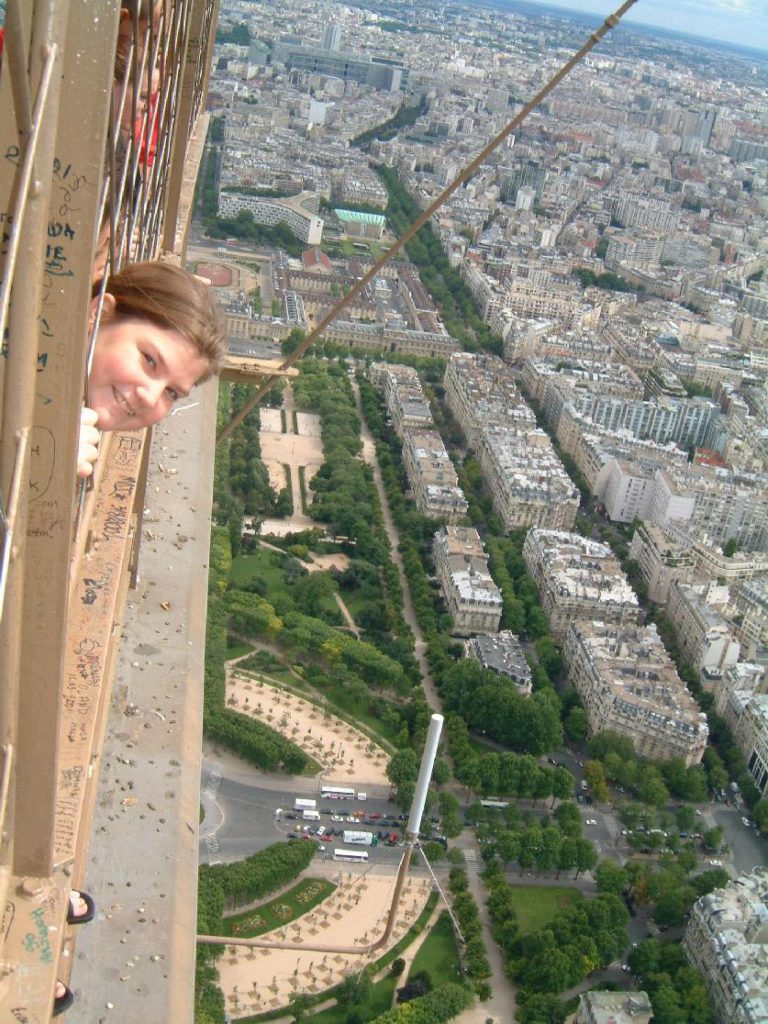
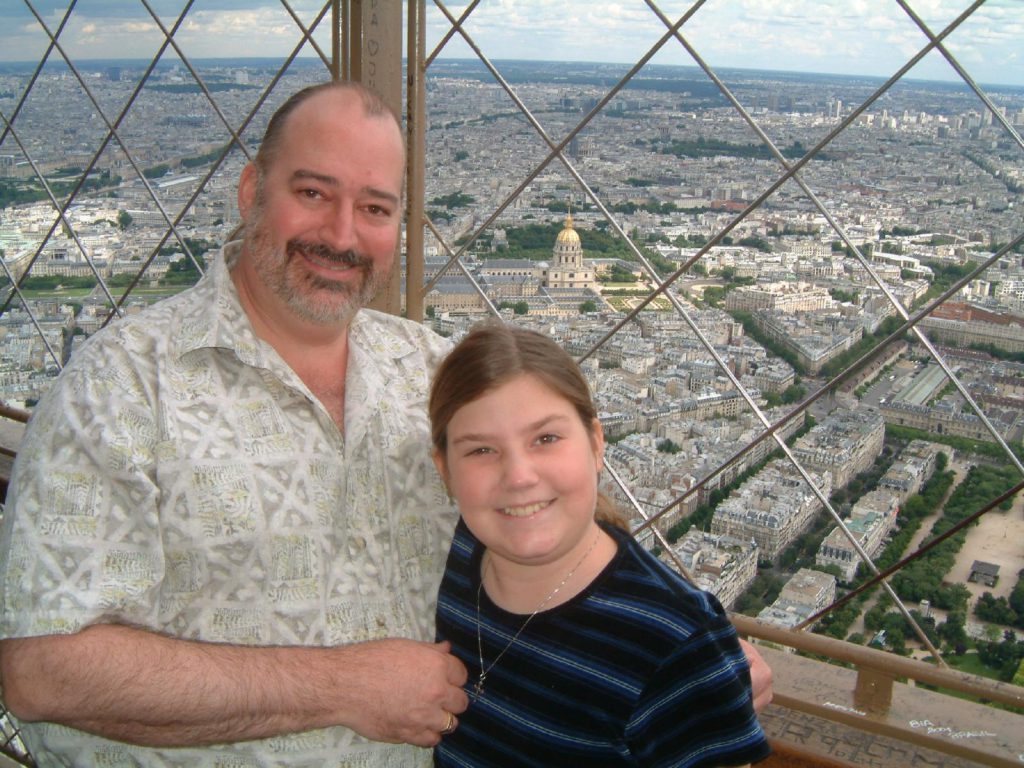
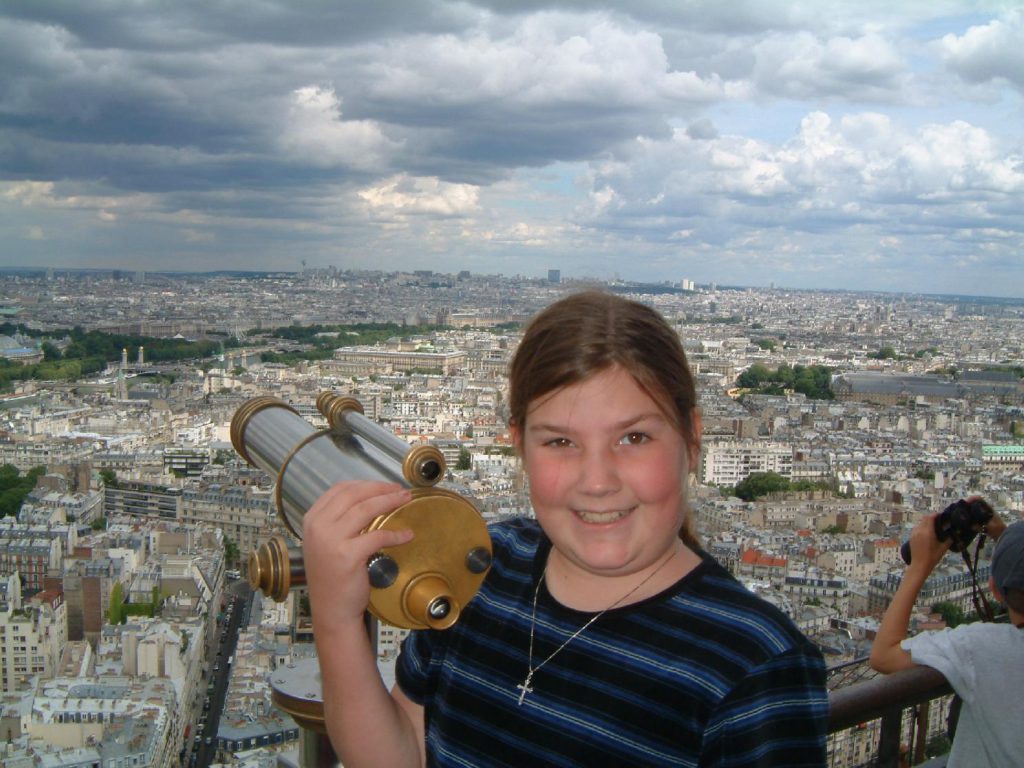
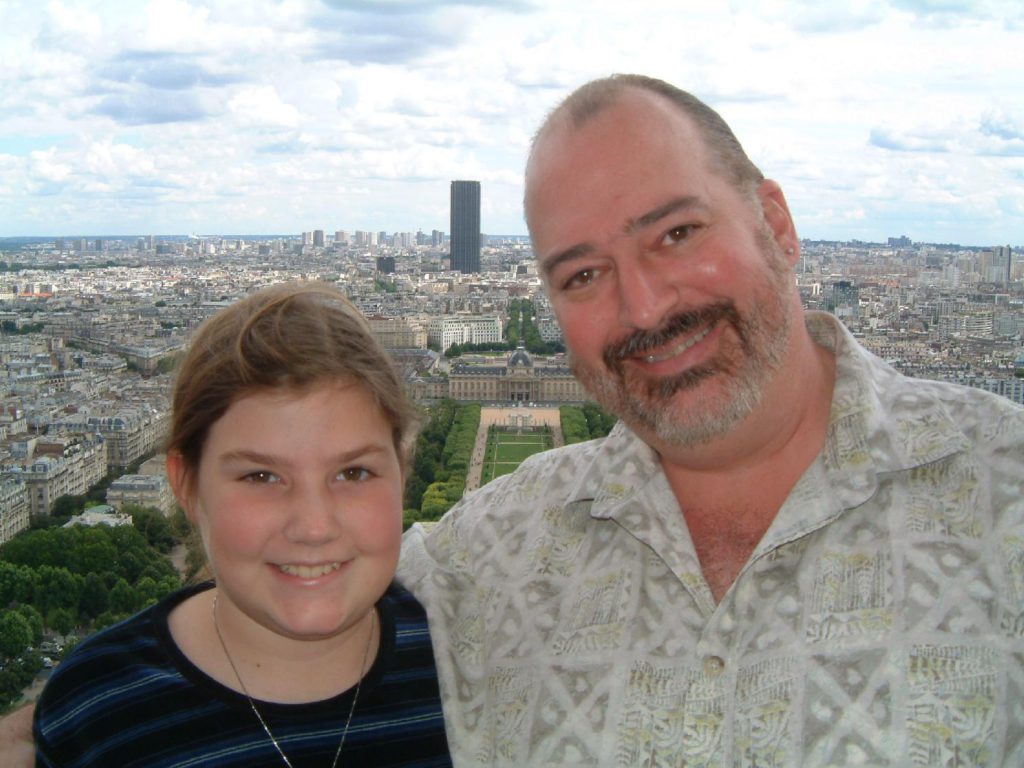
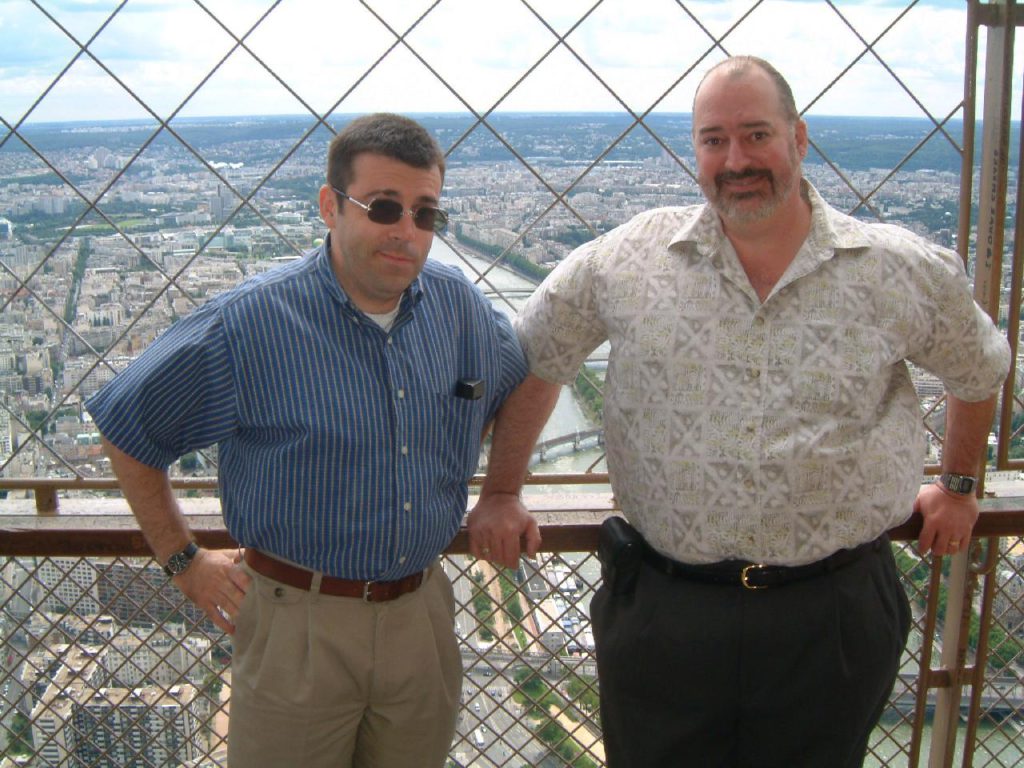
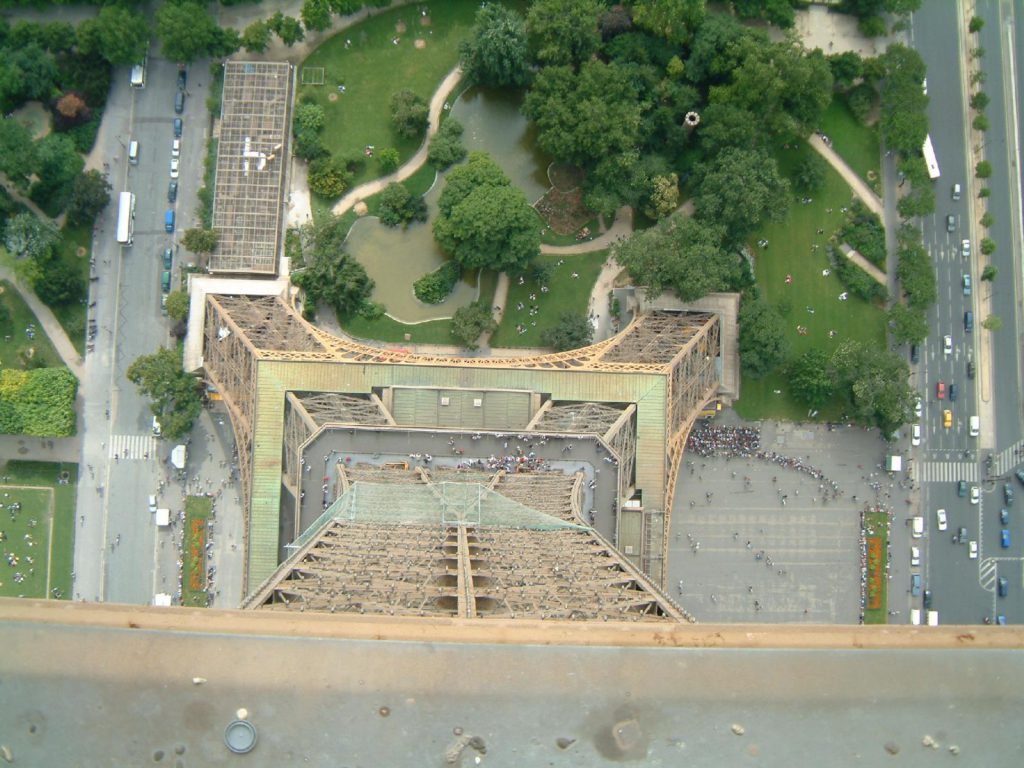
Today was Eiffel Tower day. Henry picked us up at 11:30am for our lunch at Jules Vernes, the restaurant on the second level, 270 feet above the Seine. Lunch was fabulous. Particular highlights were the butter(!), foie gras and the incredibly complex flavor of the chocolate truffles. Better bring money, though — even the appetizers were $40 each (yeow!) At least it satisfied Danielle’s request for a fine dining experience in Paris, and it could have been worse — it could have been dinner pricing.
After lunch we took the elevator to the top of the tower to experience the view of all of Paris from about 1000 feet. Spectacular. We took the elevator back to the second level and then climbed down the 649 stairs to street level.
On the way back to the hotel we stopped at Le Bon Marche, a fancy food store in the 7th Arondissment and bought some gourmet foods to bring home with us.
After relaxing for a few hours, we decided that since it was our last chance, we’d venture out onto the Place de la Republique in search of the true Paris bistro experience. The neighborhood was one that seemed to specialize in mussels and other shellfish, which wasn’t quite what Danielle had in mind.
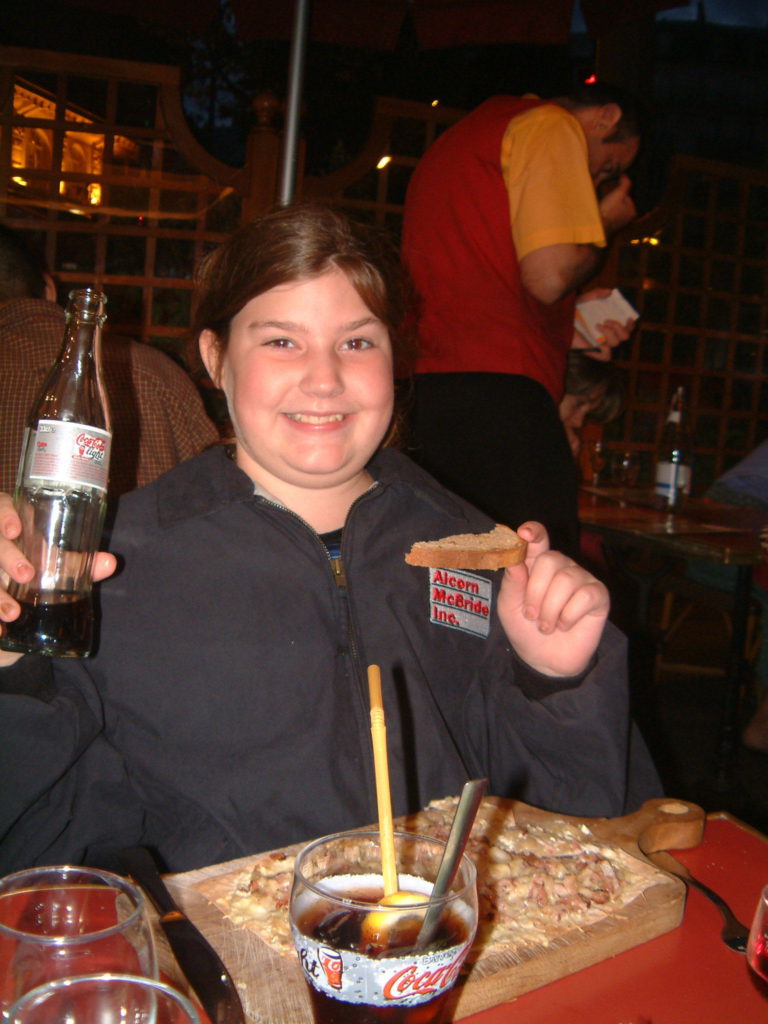
We settled on the brasserie Maitre Kanter because they had duck. It was decent food, but the ambience was great, sitting at a table out on the sidewalk and dining late into the evening. Before desert it started to rain lightly and they moved us inside, where we enjoyed watching the crabs try to climb out of their large rock aquarium. By the end of dinner the skies had cleared, and we headed back to the hotel.
Sunday, August 5, 2001
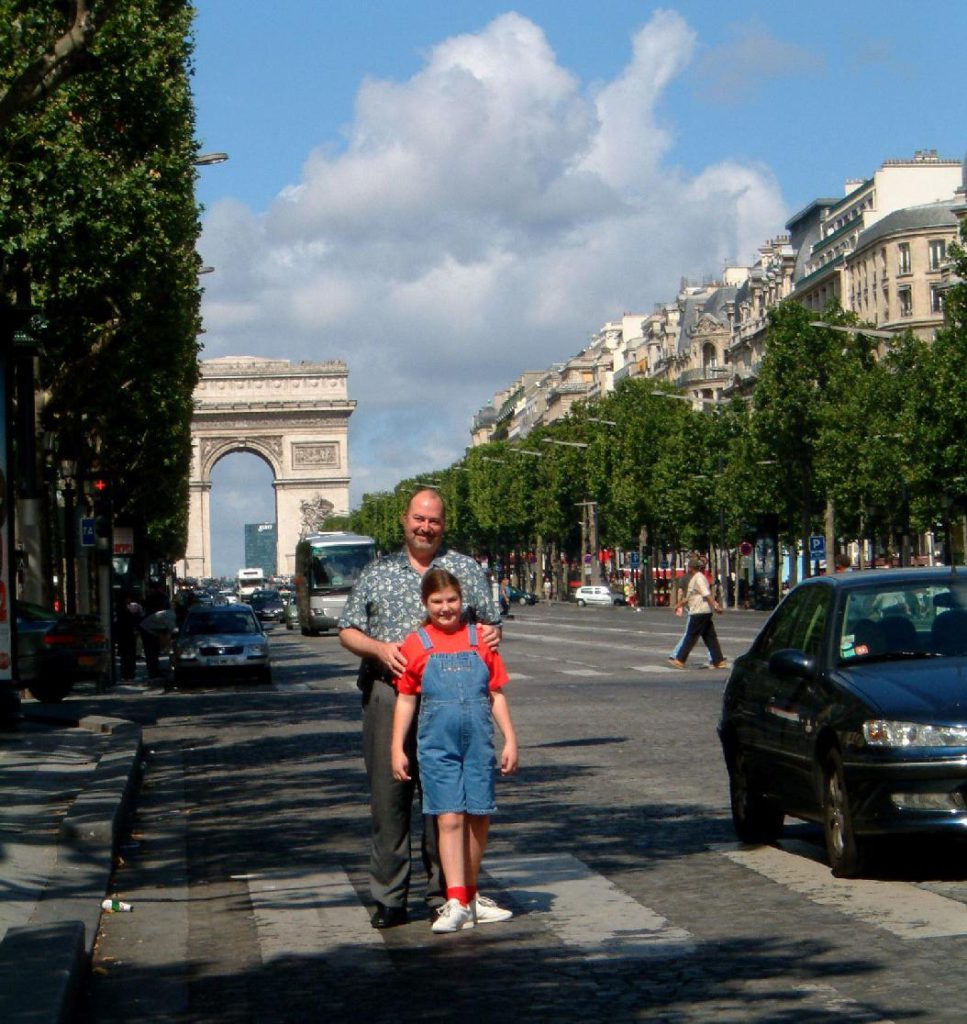
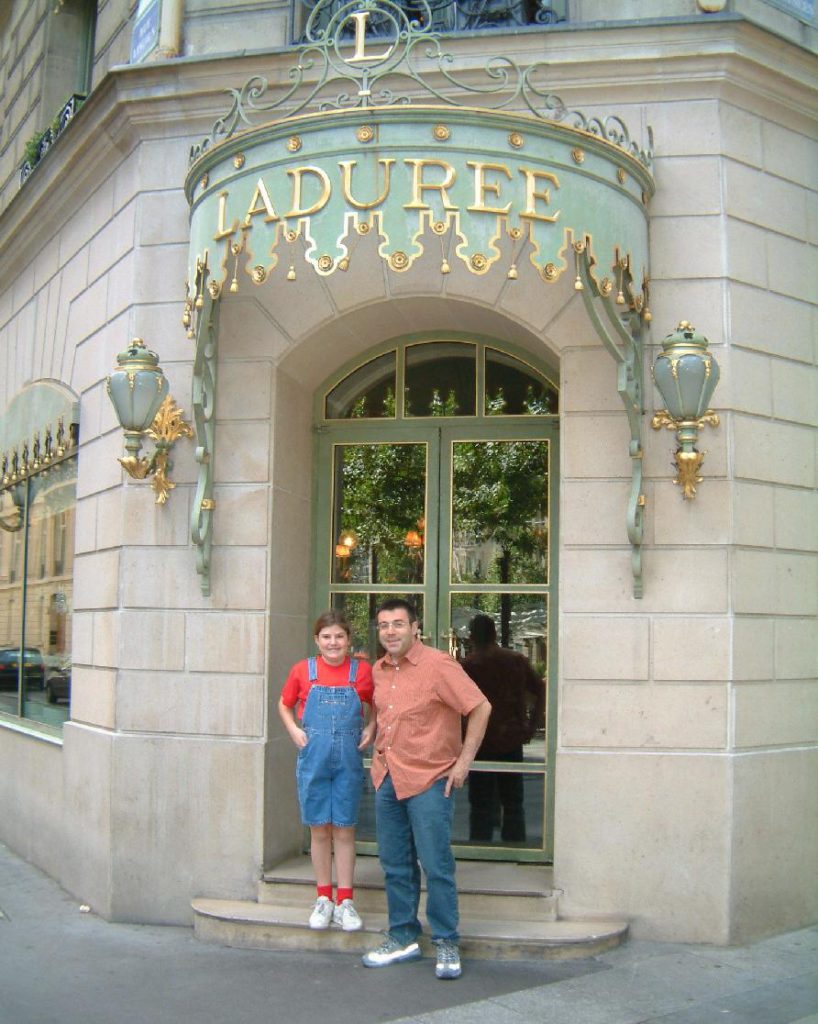
We slept late again this morning; Henry picked us up at 11:30 and we drove to the Champs Elysee for lunch at the other La Duree. This one serves a complete menu, not just pastries. Mmm.
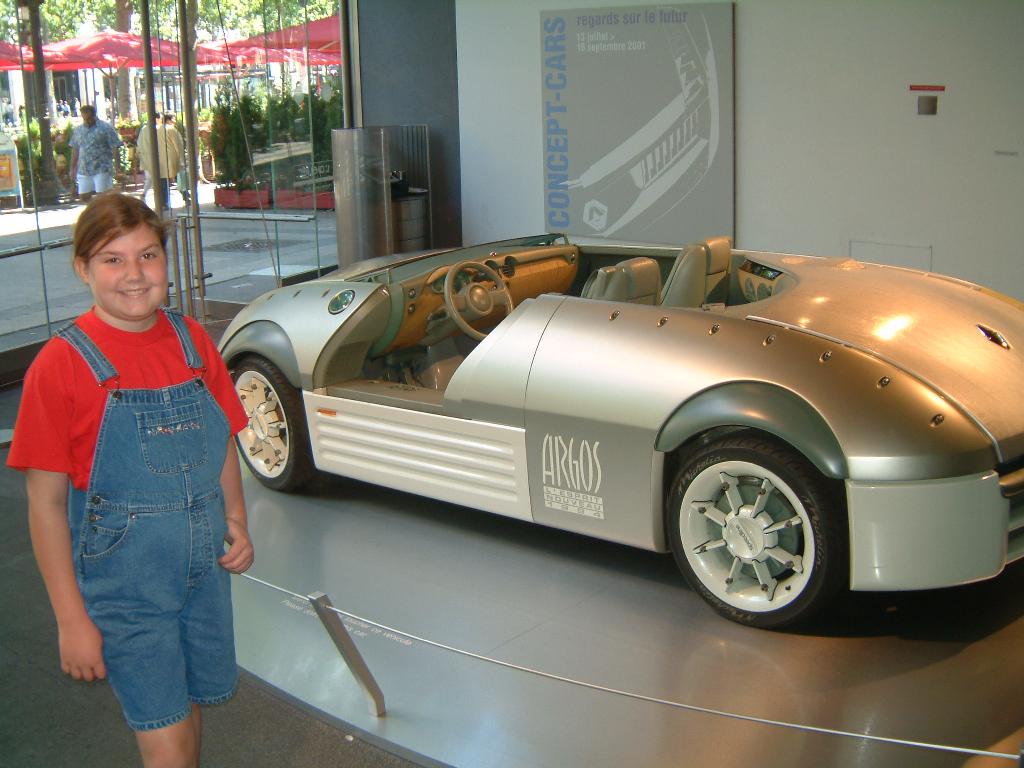

Next stop the Louvre. The Louvre is really, really, really big. In three hours we walked through perhaps 10% of the collection, pretty much without stopping. There were more Egyptian antiquities there than I remembered, and that area was less crowded than the painting section. The Mona Lisa (La Jaconde, the French call her) is mandatory, of course, but getting to it is another matter. Danielle finally squirmed through the crowd to get a glimpse. It is true that her eyes always seem to be looking at you, wherever you stand, a feature not apparent in the reproductions. It’s just a shame it’s impossible to really appreciate it because of the crowds. After visiting my favorites — the Flemish paintings — we headed back to the hotel for showers, fancy clothes, and a meeting with our tour group — the first in three days. Many thanks to Henry for entertaining us for our entire Paris visit; it was great.
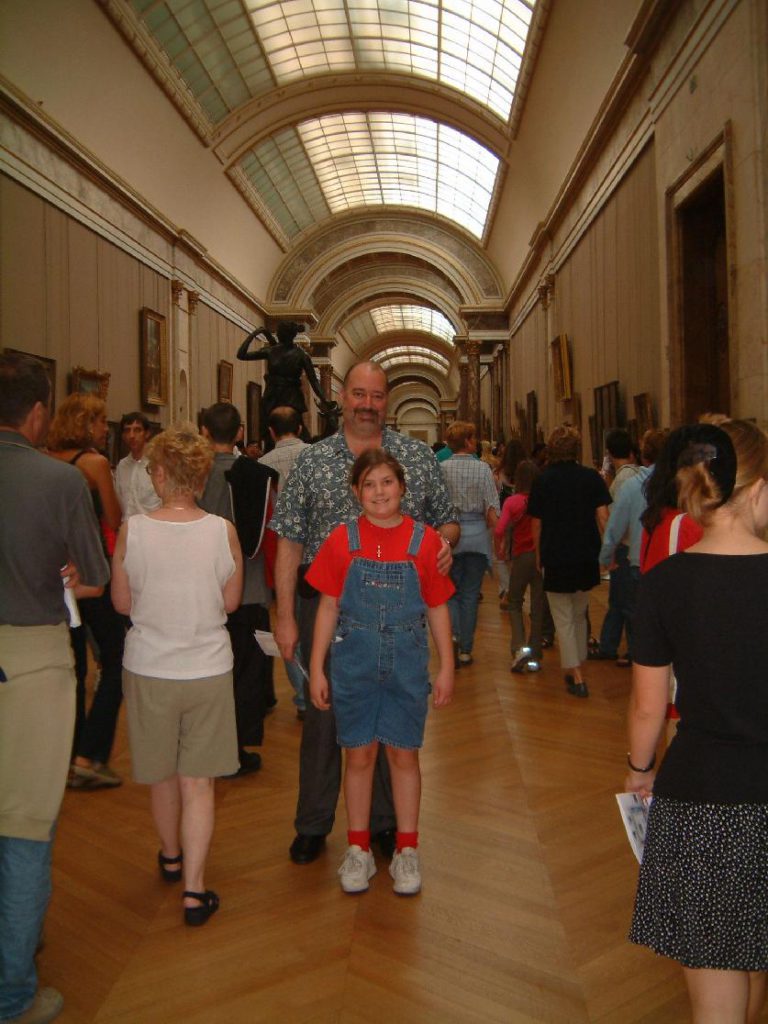
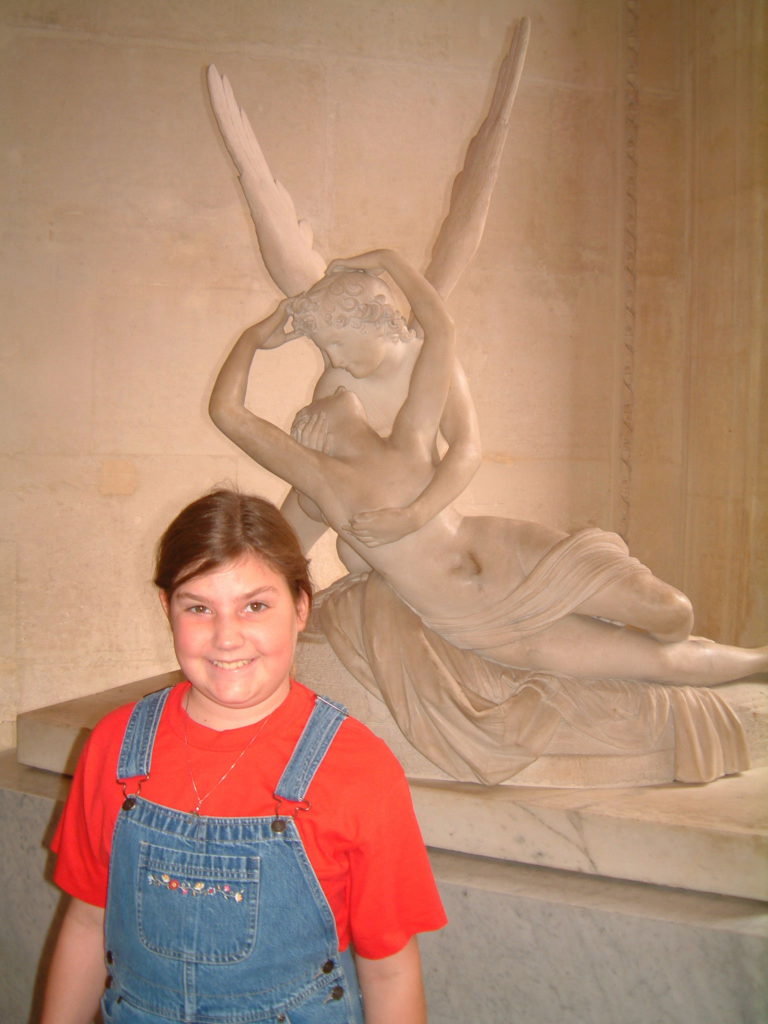
We all boarded the bus at 7:00pm looking very different, in our jackets and ties. The group had obviously grown together during their Paris stay (many had taken up to four optional trips together). Several mentioned that they’d missed us. I guess Danielle tends to liven things up a bit. She enjoys talking to both the teenagers and the older people. I particularly like the Chinese family from San Francisco, the Midwesterners who now live in Marin, and Gloria, our tour guide. At 8:00 we boarded the Batteau Mouches for a dinner cruise on the Seine. Champagne was followed by a four course dinner of surprisingly good food. There were no complaints about the wine, either — a 1998 St. Emilion Grand Cru. It flowed freely, a fact that I’m sure was regretted by a few the next morning.
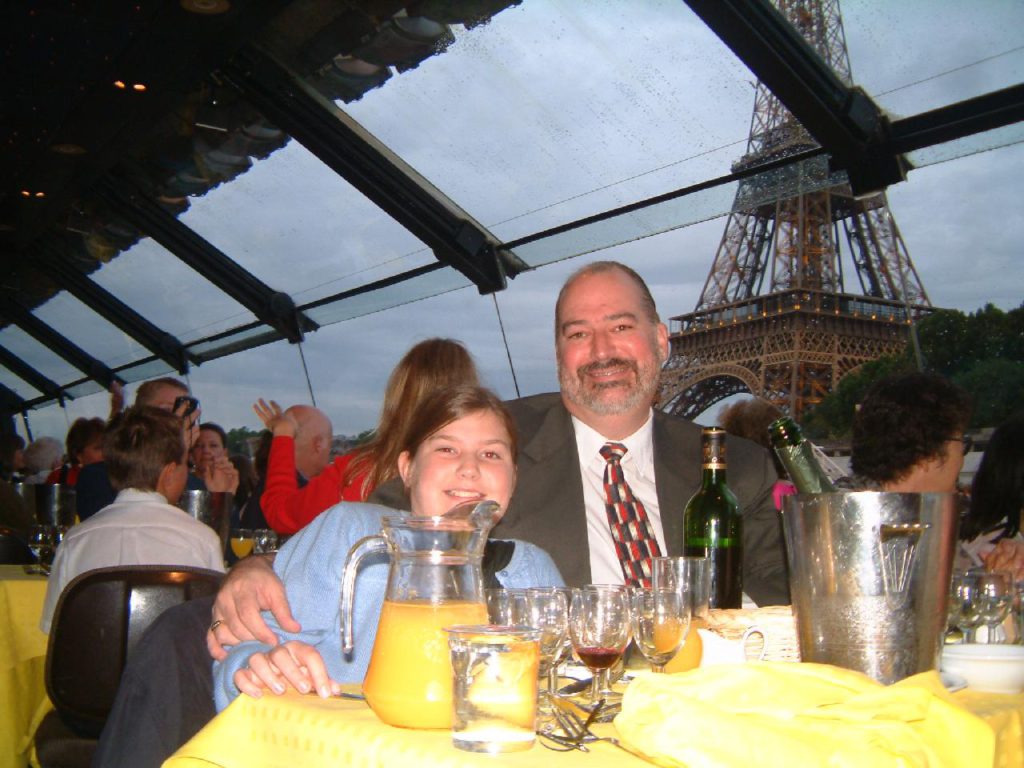
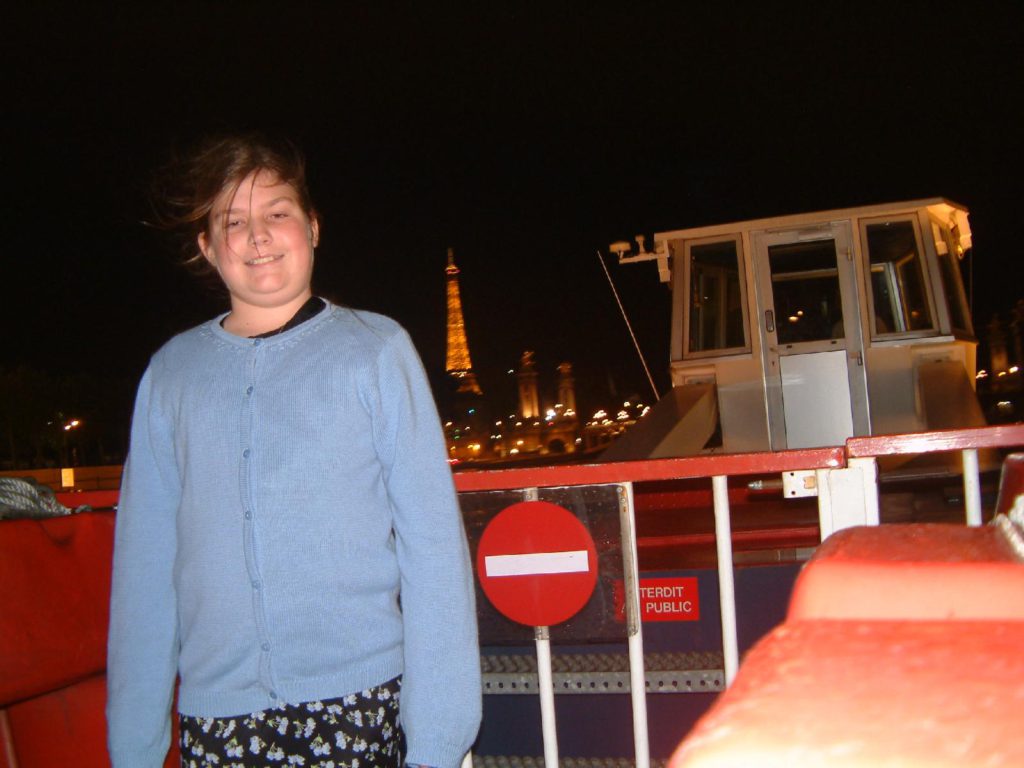
As the boat rounded the Isle de la Cite and Isle St. Louis, a band began to play dance music, and Gloria coaxed quite a few of us out onto the dance floor — Danielle and I included. A light rain outside, floating down almost like snow in the bright lights of the boat just added to the atmosphere. I was nearly midnight before we got back to the hotel; all in all a very pleasant evening, one I recommend to all Paris visitors.
Monday, August 6, 2001
Rome
Our wakeup call wasn’t until 7:45, but I was up at 7:15 to shower and pack. After breakfast we piled onto the bus and headed for Charles De Gaulle airport. I think everyone was reluctant to leave Paris, as always.The flight was only about 90 minutes, and Air France food was good, as usual. But with the logistics at both ends figured in, it was 5:00pm before we checked into the Mediterraneo in Rome.
Coming into Rome we passed though many mid-20th century buildings, most of which were marked with graffiti. Gloria explained that it could be expensive to clean your building, because it might attract the attention of the tax assessor! As we passed through the ancient Roman wall surrounding the old city there began to be many more ornate and Renaissance buildings.
Our hotel is located near Termini, the main train station, which the guide book says is not the greatest neighborhood, although it looks nice enough. The hotel appears to be about 100 years old, but is in good repair. The floors are marble, and there are rare woods throughout. Our room is large by European standards, with a nicely remodeled bathroom, including a bidet (“If It’s Tuesday This Must Be Belgium” comes to mind). The beds are twin size, though.
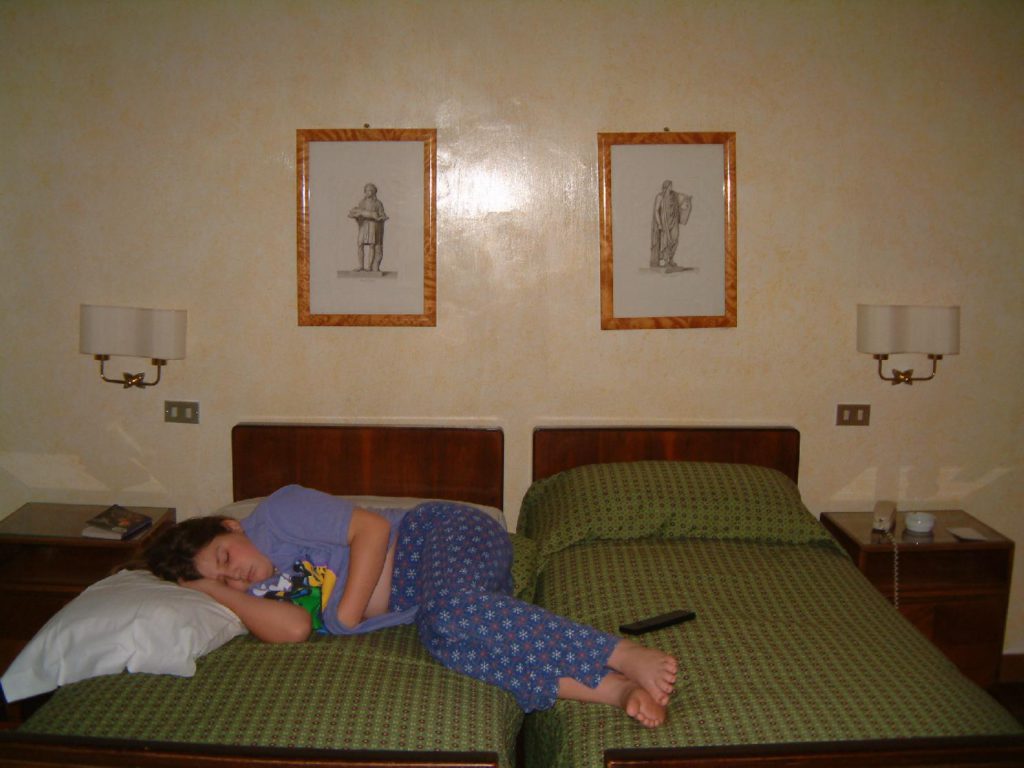
Danielle walked through the door and fell asleep. We decided to skip the evening’s walking tour, including the Trevi fountain (of “Three Coins” fame) and the group’s many course Italian dinner, because we had a 6:00am call for the city tour on Tuesday. I went out to a small local market for some water and snacks and scoped out the neighborhood while Danielle slept, then caught a nap myself until 9:00pm.
When Danielle awoke she was ready for dinner, so we walked up to the Piazza di Republica and had pizza and pasta (yes, that’s really what they eat) in a sidewalk Tratorria overlooking the square. For dessert she had a fantastically rich chocolate gelato.
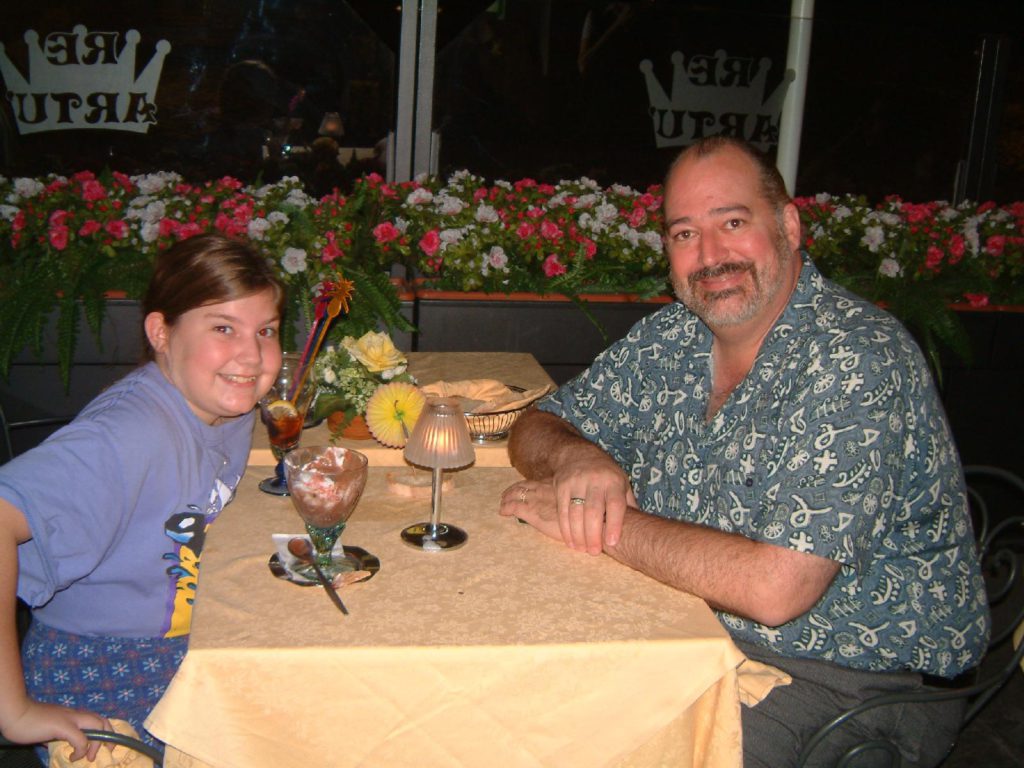
Tuesday, August 7, 2001
Rome is busy, but not like in the movies. We’re told that it’s “empty” because it’s August and everyone is out of town. It’s not empty, but our guide, Gloria, was surprised at how early we got to the Vatican: about a half hour before opening. We were the second or third group in. Our local guide, Amelia, was informative, but not as interesting as Gloria. We visited a single corridor of the Vatican Museum, then entered the Sistine Chapel.
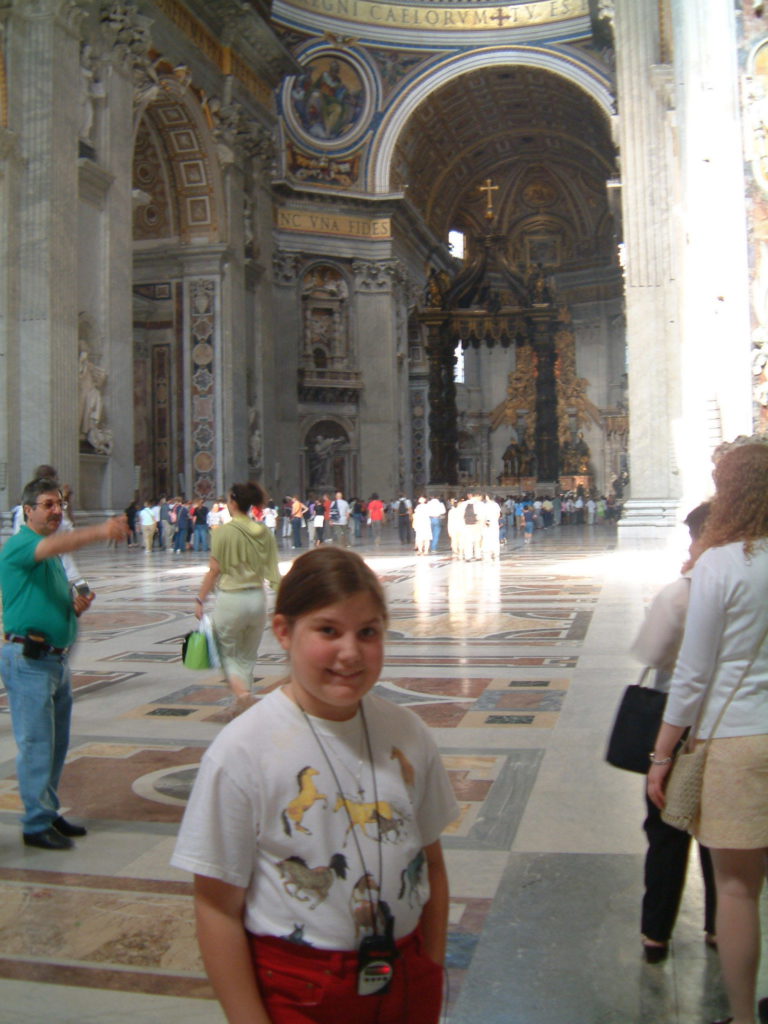
It’s amazingly colorful since the cleaning of a few years ago. I had read some descriptions of the different sections in the excellent Dorling Kindersley Rome travel guide (don’t leave home without it), so it was more interesting than I was anticipating. Gloria rented personal radio headsets for us for the entire day. These were fantastic, as they allowed Amelia to speak in a whisper, even from 100 feet away, and we could all hear her. It made it very easy to collect the group as we moved from area to area, and saved us a lot of time throughout the day.
The Sistine Chapel empties into St. Peter’s square, where we made a U-turn and entered St. Peter’s Basilica. This is the largest of the cathedrals on the trip; the tallest building in Orlando would easily fit under the 448 foot high dome. Inside is the Pieta, now behind bullet proof glass, and many works by Bernini, who shared architectural credit with Michelangelo. Unlike the other cathedrals we’ve visited, this one is a work in progress, with many new mosaics honoring recent popes and parishes around the world. The large “paintings” in the various shrines are actually mosaic copies of famous paintings in the Vatican painting gallery; when examined extremely closely it becomes apparent that they are made of millions of colored glass beads.
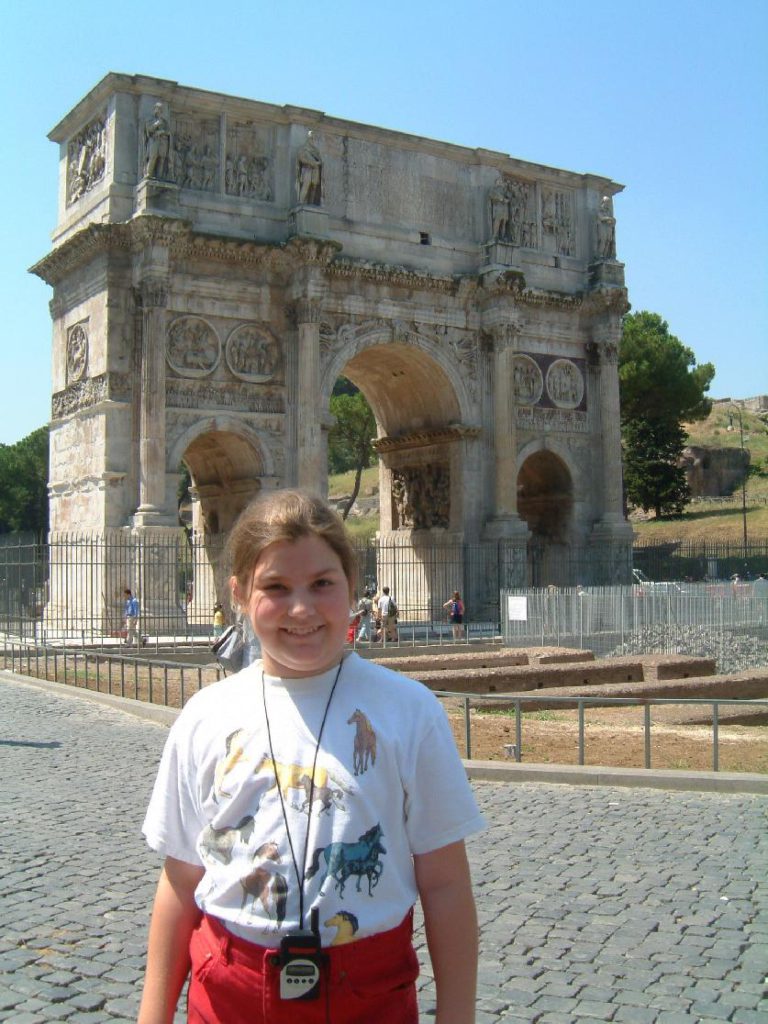
After St. Peter’s we took a break so that Danielle could get fleeced in a tourist shop, and then wound our way through the historic part of the city to the Colosseum. On the way we saw many sights in the forum and surrounding area. While it would have been nice to walk, it was over 90 degrees, and the bus’ air conditioning felt great. I was a little surprised to discover that the forum is not only surrounded by modern highways, but is actually bisected by one. Those postcard photos must be shot very carefully.
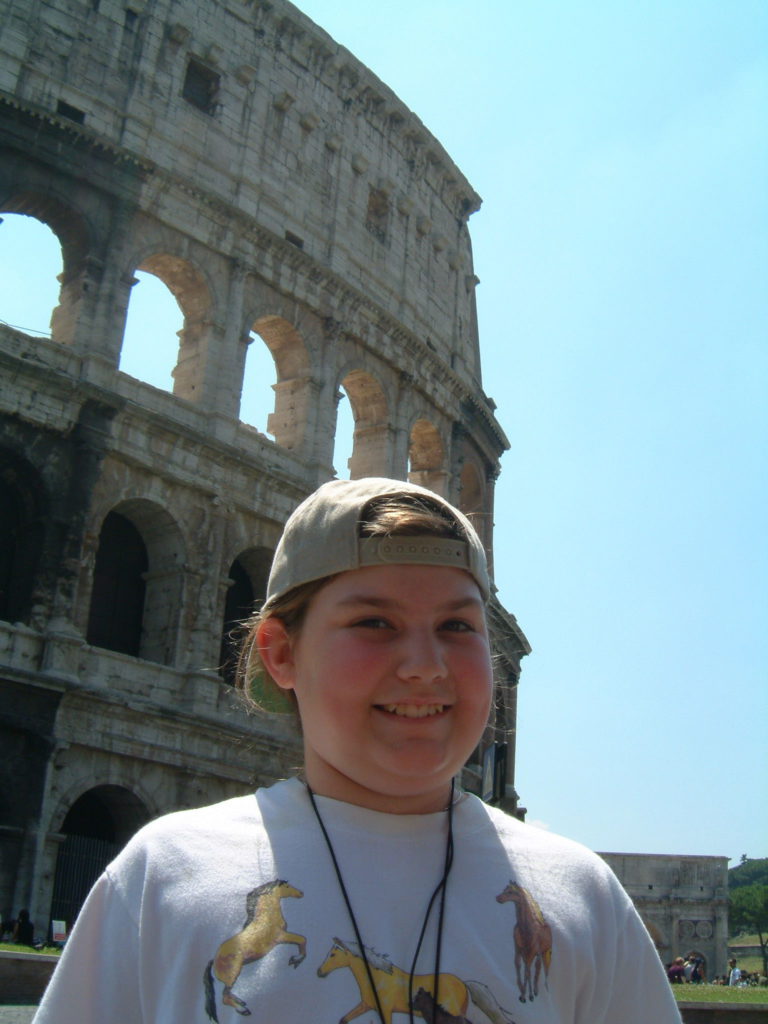
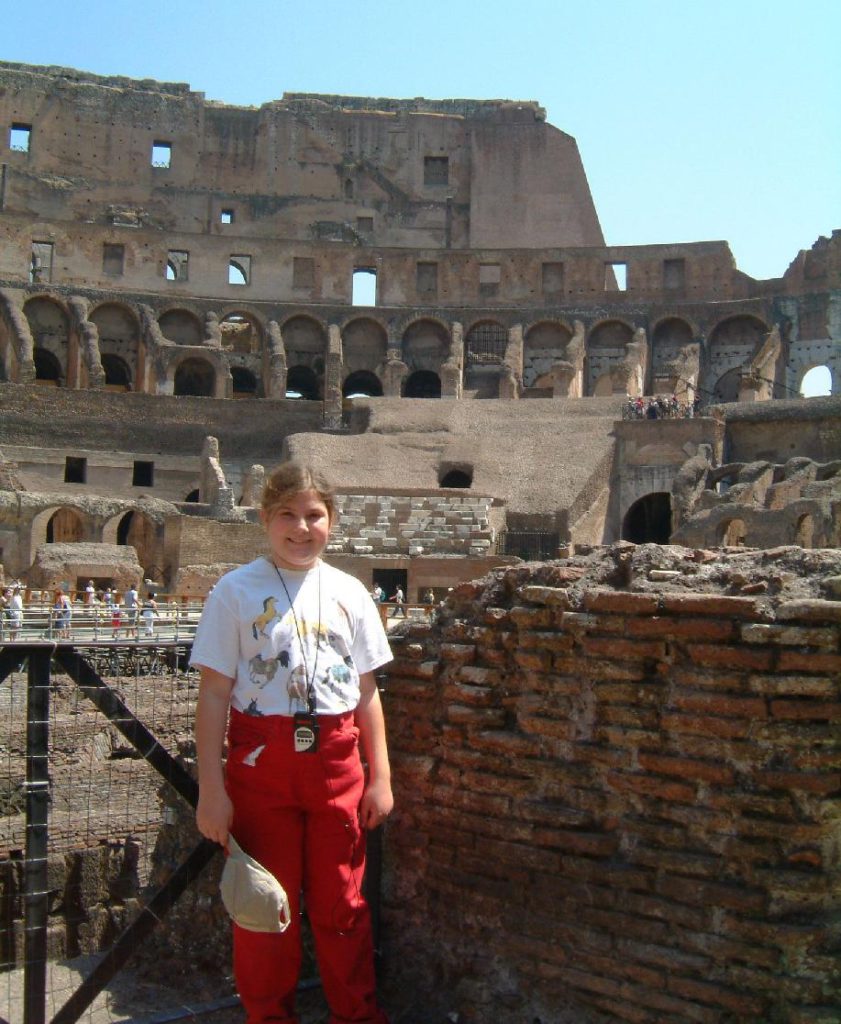
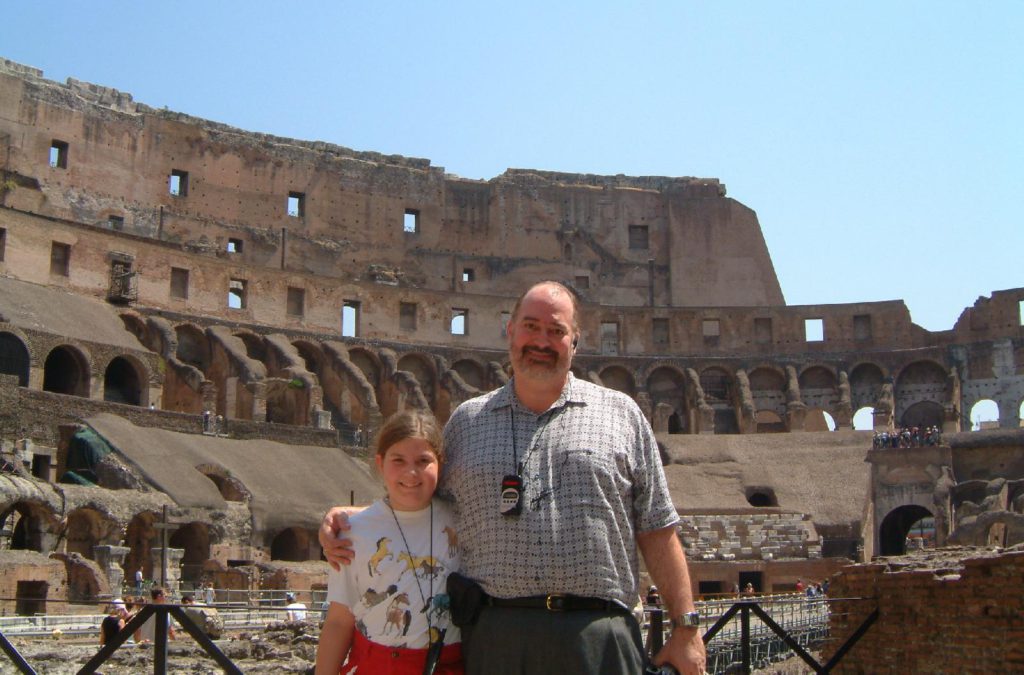
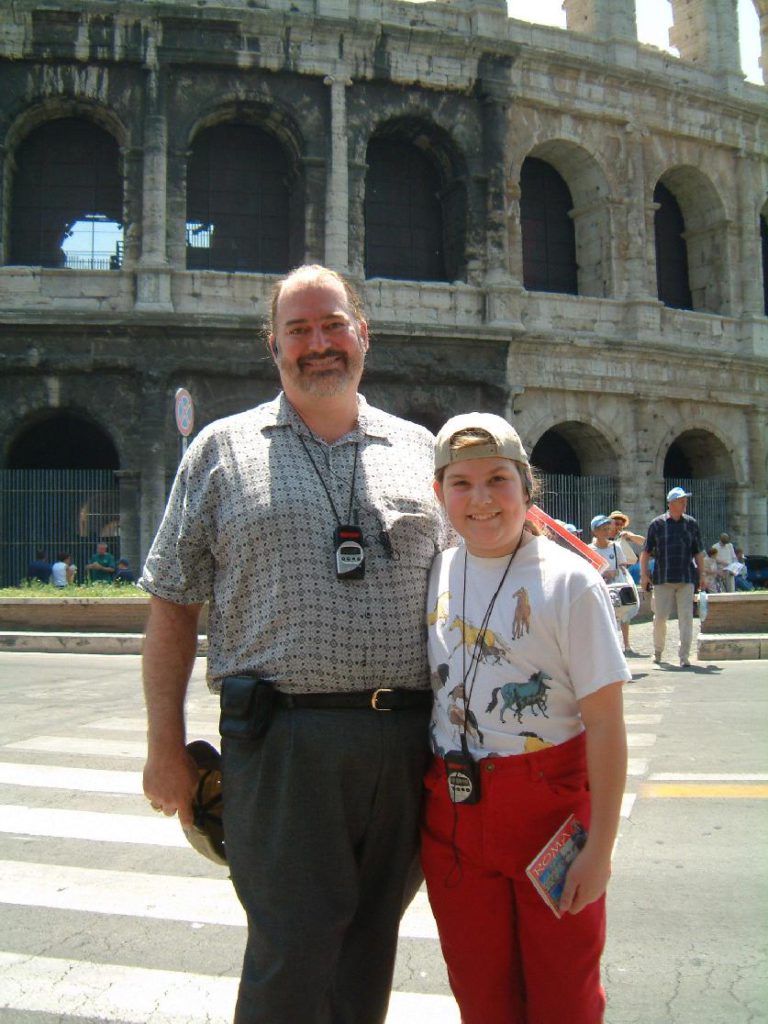
Inside the Colosseum Amelia led us around the edge of the main floor, describing how the area beneath the floor was used to store live animals. Their cages were winched through trap doors to provide a dramatic entrance at the proper moment. Then they were slaughtered. Fun.
Because of the light crowds, we finished our tour by 1:30, a couple of hours early, and decided to have a quiet afternoon. (We have a 4:30 am wake-up call tomorrow… groan.)
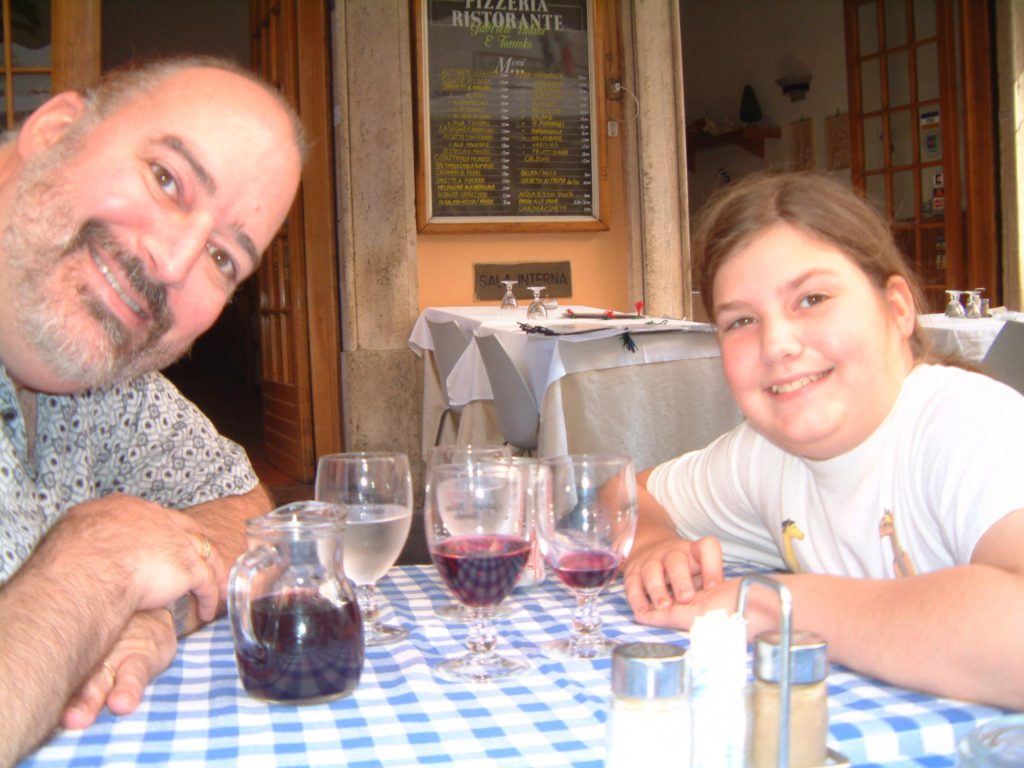
We had dinner in a trattoria on a small street near the hotel. When I say “on”, I mean on — our table was almost in the middle of the pavement. Oddly, it was run by a Japanese man, but the food was strictly Italian, and better than last night’s. I had fettuccine Bolognese and we shared a ham pizza; this flatbread pizza style, reminiscent of what I fix on the barbecue, is apparently the true Italian style, invented in Naples.
Wednesday, August 8, 2001
This was the big day of the trip: Naples (Napoli), Capri and Pompeii. We were on the bus by 5:00am, but I think we were all comatose for the first ninety minutes until we hit a rest stop with a coffee bar.
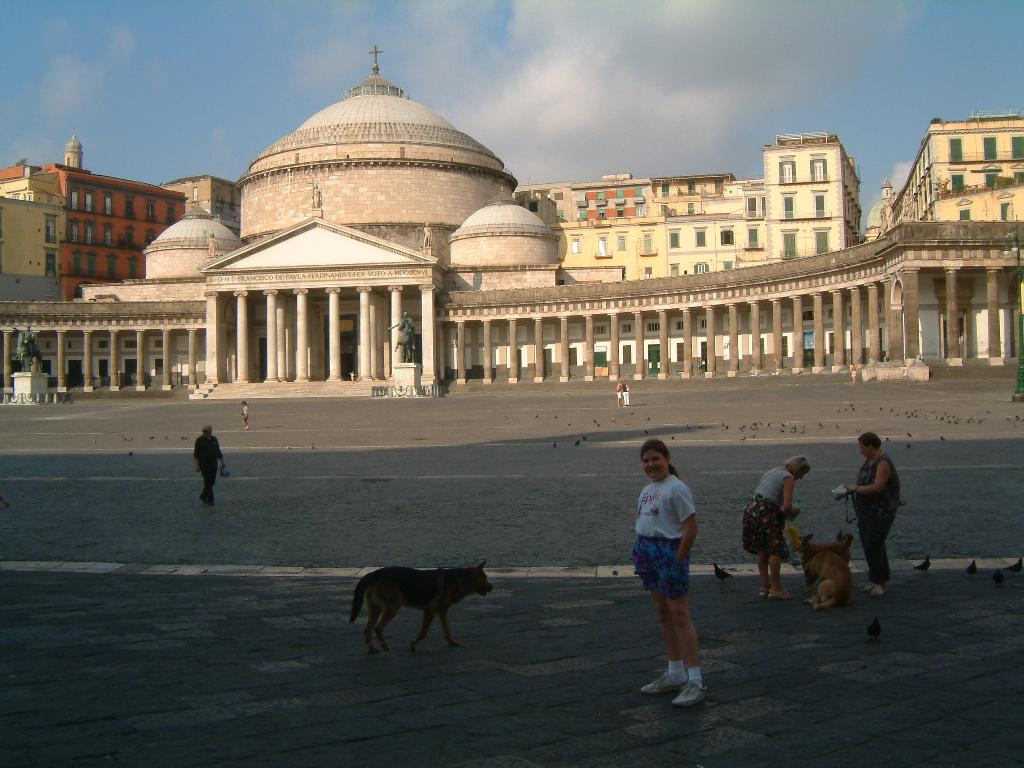
At 9:30 we reached Naples, a big, unattractive city on a large bay. The culture is different in southern Italy, and the activities of the mafia and the underground economy have hurt the southern cities, which lag the north in prosperity. We were early, as the roads were empty, so we killed a bit of time in a square in front of what was the palace of a southern king. An interesting note is that stray dogs here are not rounded up, they are fed by the citizens.
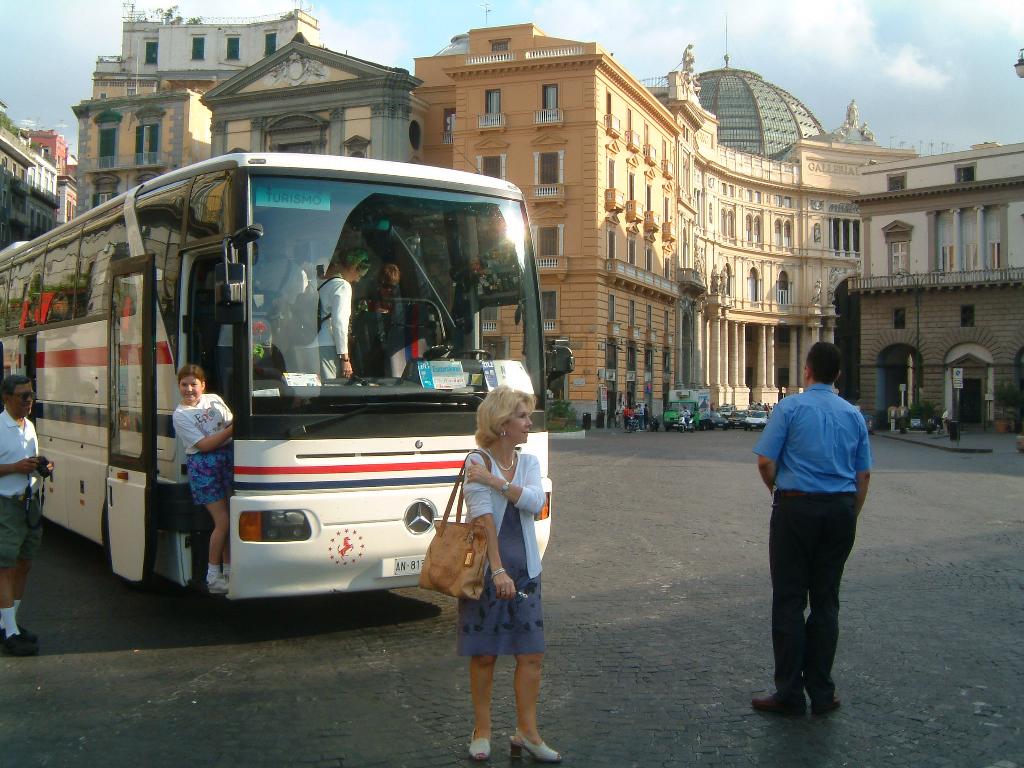
At the docks we met Marco, our local guide for the day. He was a handsome and charming Italian, but fairly worthless as a guide. During our visits to Capri and Sorrento he was invisible most of the time, and did little more than point out good places to take photos. We emerged knowing nothing of those two places.
In Pompeii he was more informative, but spent much of his time making sure we bought books from his friend. But I digress.We took a hydrofoil to Capri, a 45-minute trip diagonally across the bay. The water was smooth, almost glassy, even as we ventured out into the edge of the Mediterranean. Seagulls floated on it all the way across.
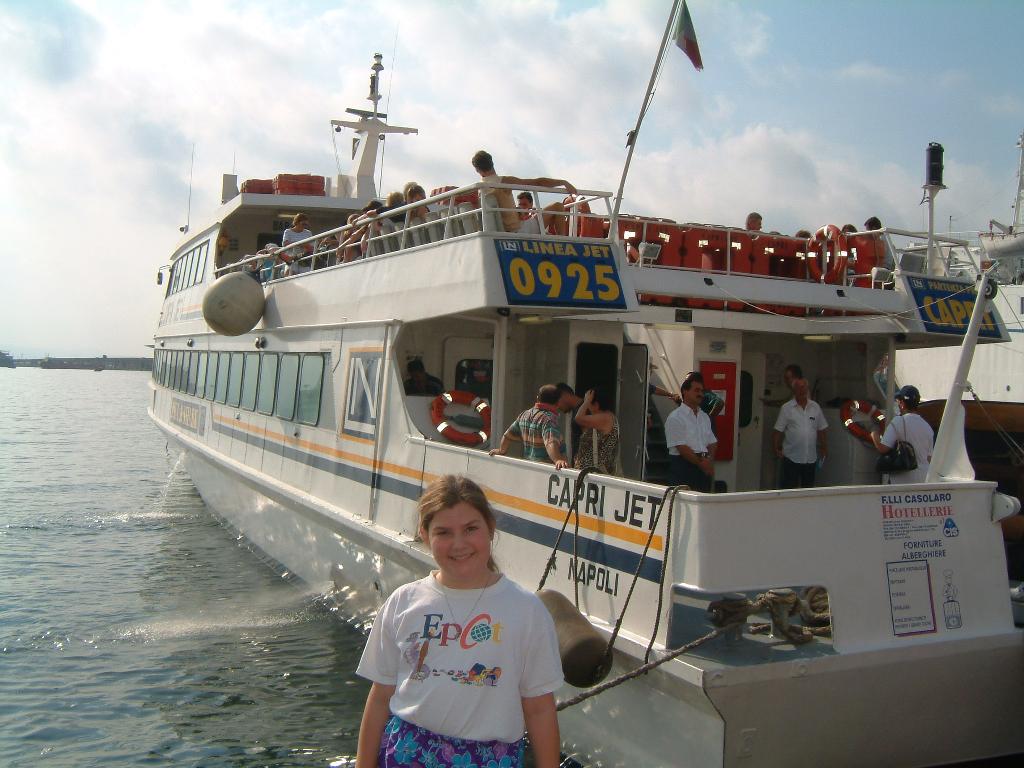
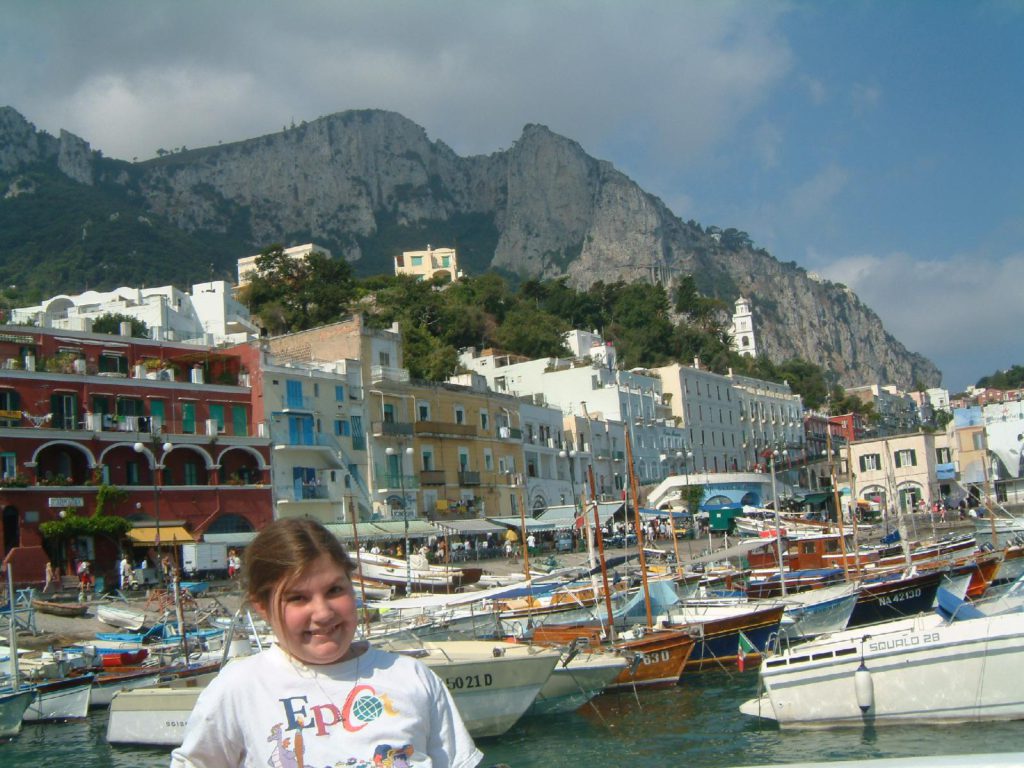
Capri is a dramatic saddle of limestone jutting over 1000 feet upwards out of the bay. There is almost no level ground, but thousands of narrow terraces have been cut into the stone, and are planted with trees, shrubs or vines. A road switchbacks its was up the saddle and then across the vertical cliff face of the northern end. Wherever possible, it is lined with narrow houses squeezed against the cliff face and each other. There are few spots wide enough for even the tiny minibuses to pass, and scooters are the preferred method of transport. Our minibus ride was reminiscent of Mr. Toad’s Wild Ride; at one point we had to negotiate a complete 360 in order to make a sharp right turn. We drove though three of the four villages on the five-square-mile island, starting from Marina Grande and proceeding through Capri to Anacapri, perched atop the northern end. Even with the early morning fog still shrouding much of the island, the views were spectacular: deep blue water dotted with dozens of sailboats and yachts, rocky limestone cliffs plunging to the sea, and everywhere colorful bursts of bougainvillea.
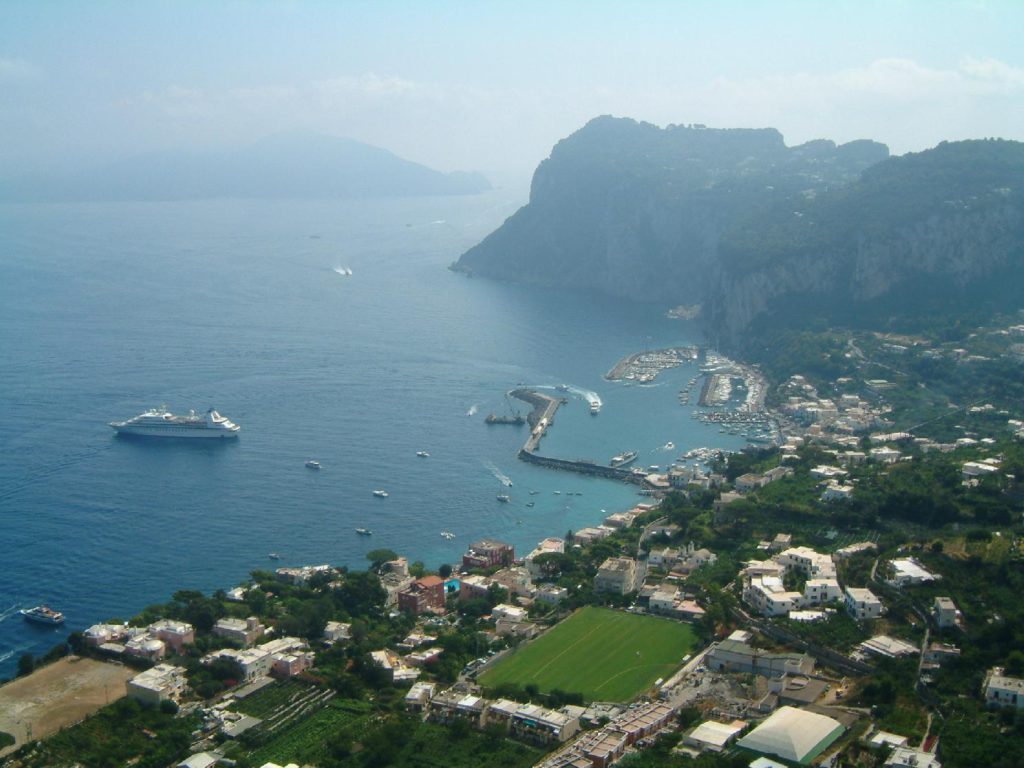
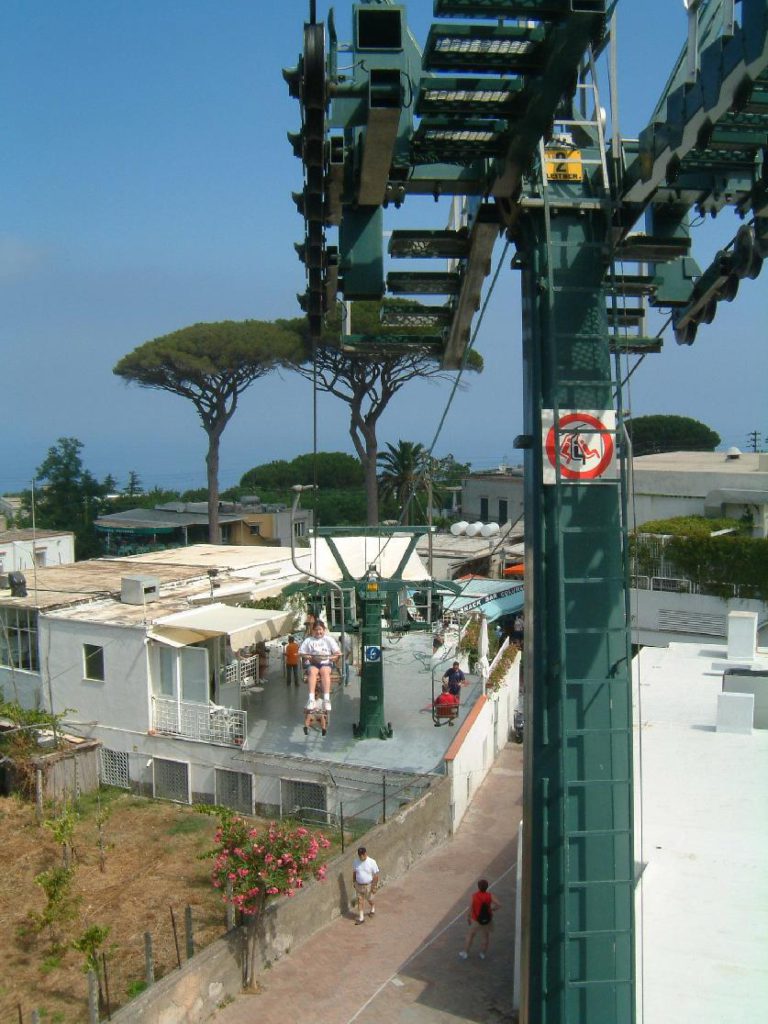
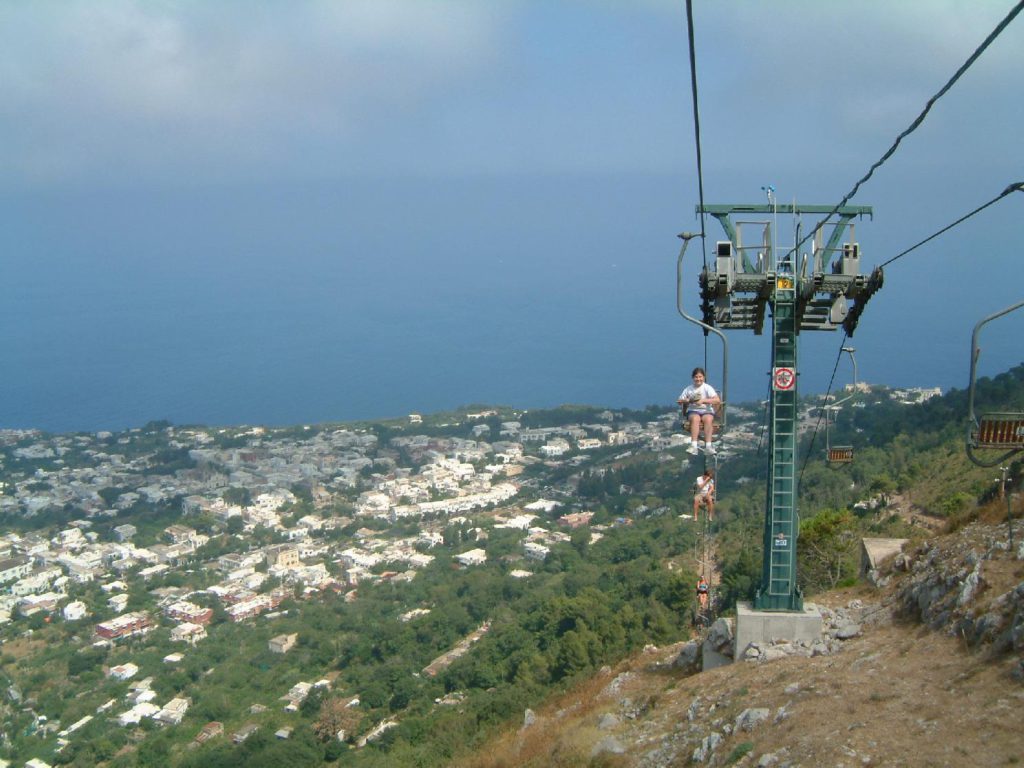
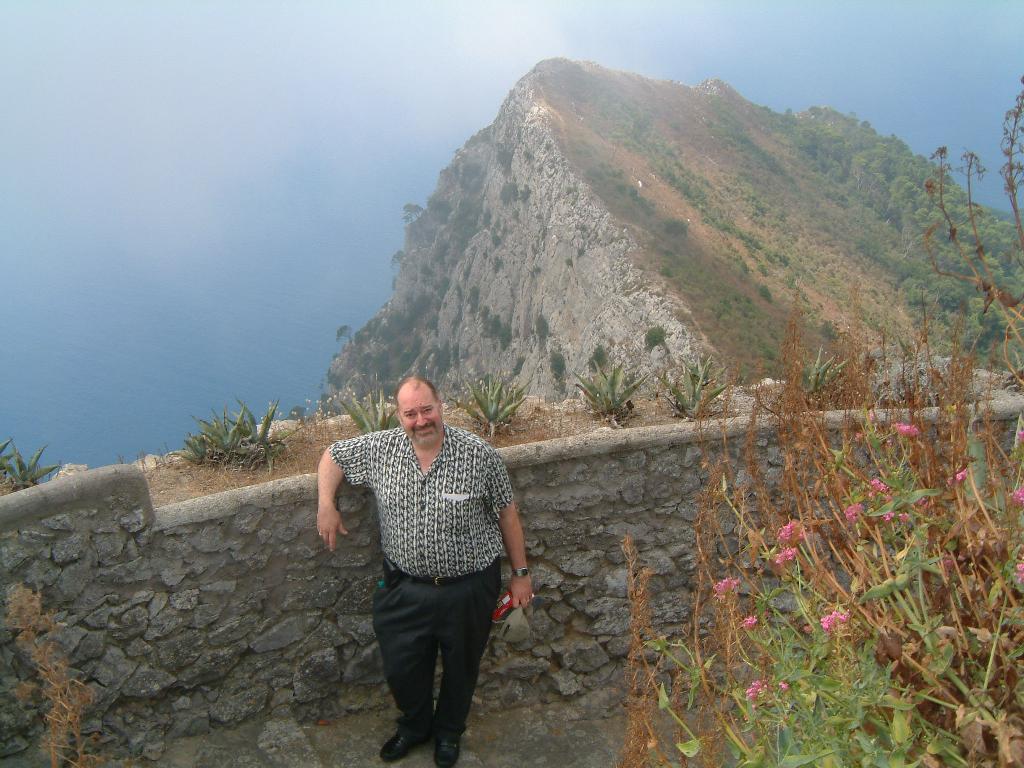
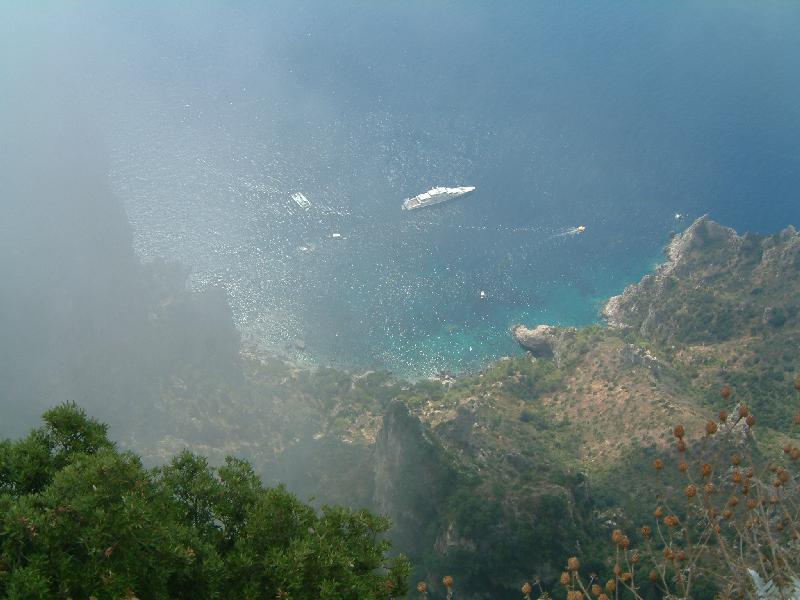
In Anacapri we boarded a skyride to the very highest point of the island. This was pretty exciting, as the seats were individual ski lift chairs, so our feet dangled above the scenery as we climbed almost another 1000 feet to the highest point on the island. On the way up our feet nearly grazed the tops of some of the trees, and we passed over many vineyards, gardens, and a backyard filled with what appeared to be shrines made from Barbie doll parts, plastic toys and seashells. From the top of the mountain we looked down another steep cliff to the small grotto where mermaids lured the Greek sailors in the Odyssey.
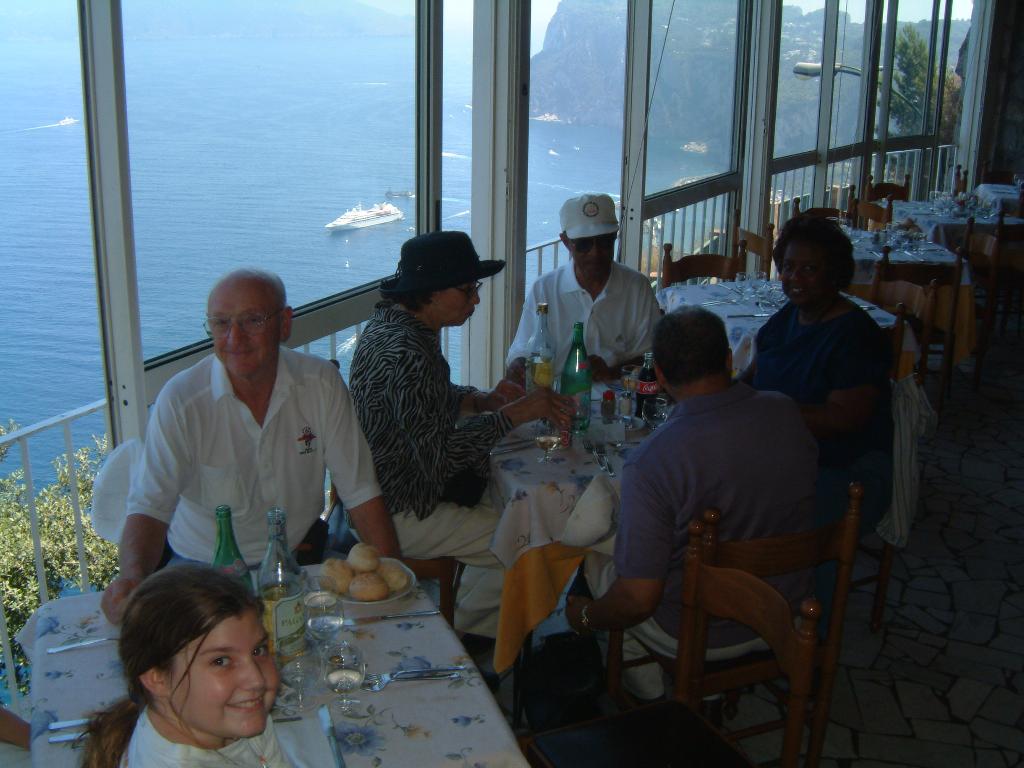
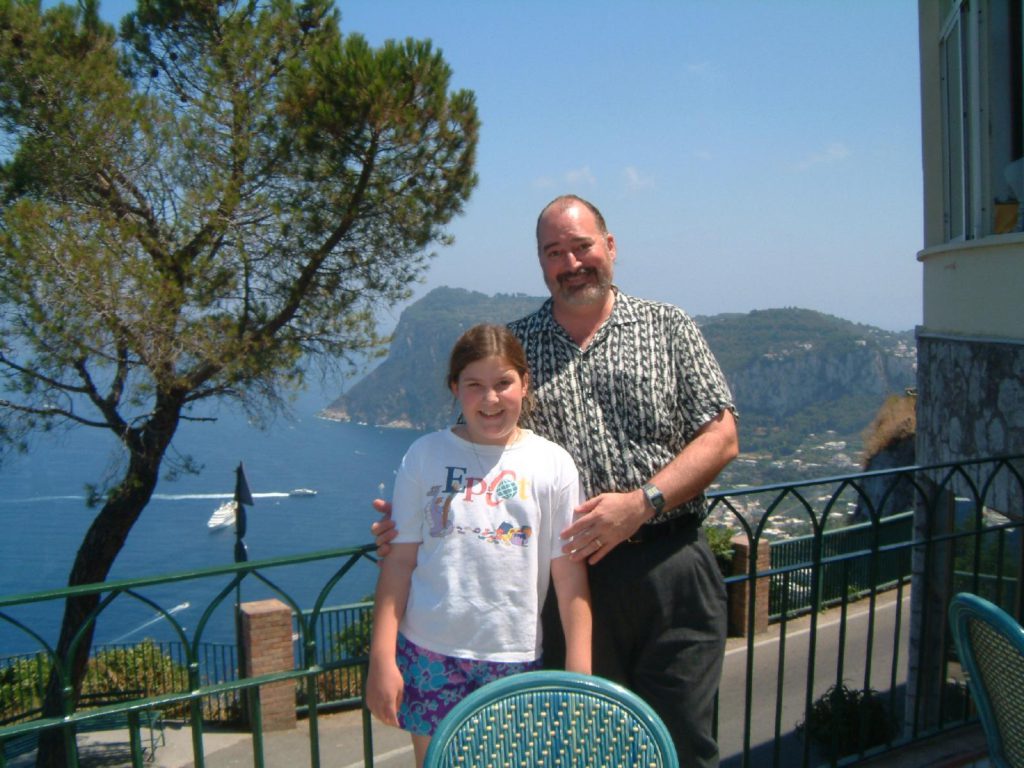
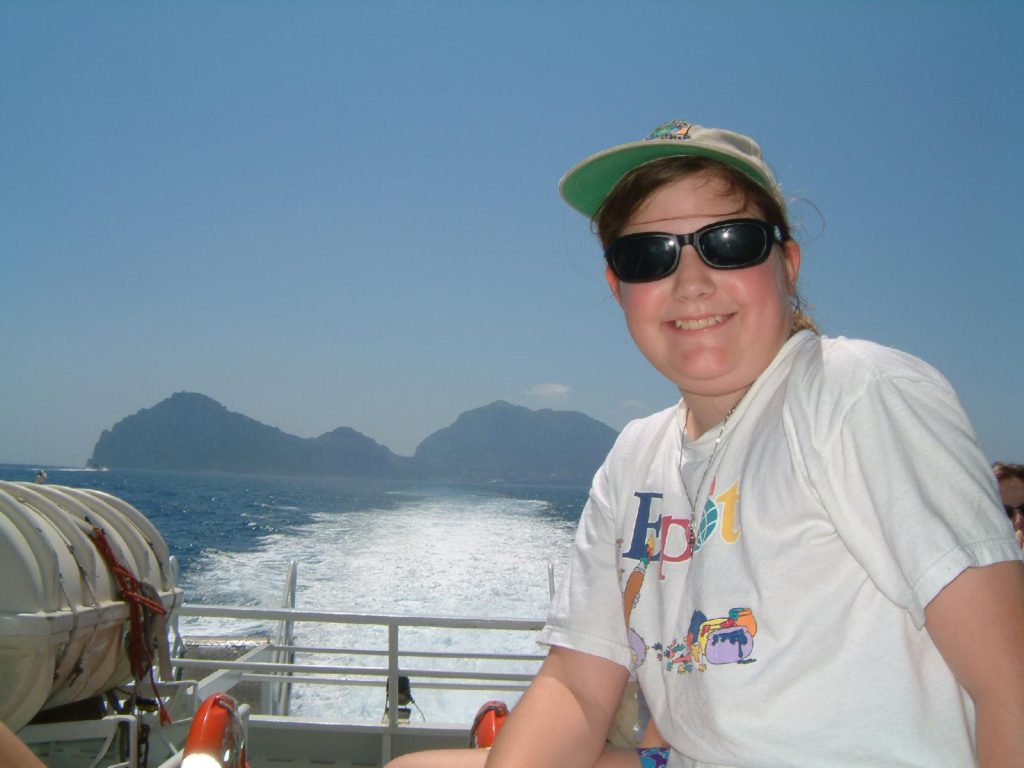
Back at the base of the lift we walked through the narrow shopping bazaar to the Hotel Saint Michele, an attractive white complex on the ridge, overlooking the harbor. We had a pleasant lunch, sharing a table with the Drumms, then retraced our minibus journey back to the hydrofoil for the shorter trip to Sorrento, at the southern end of the bay.
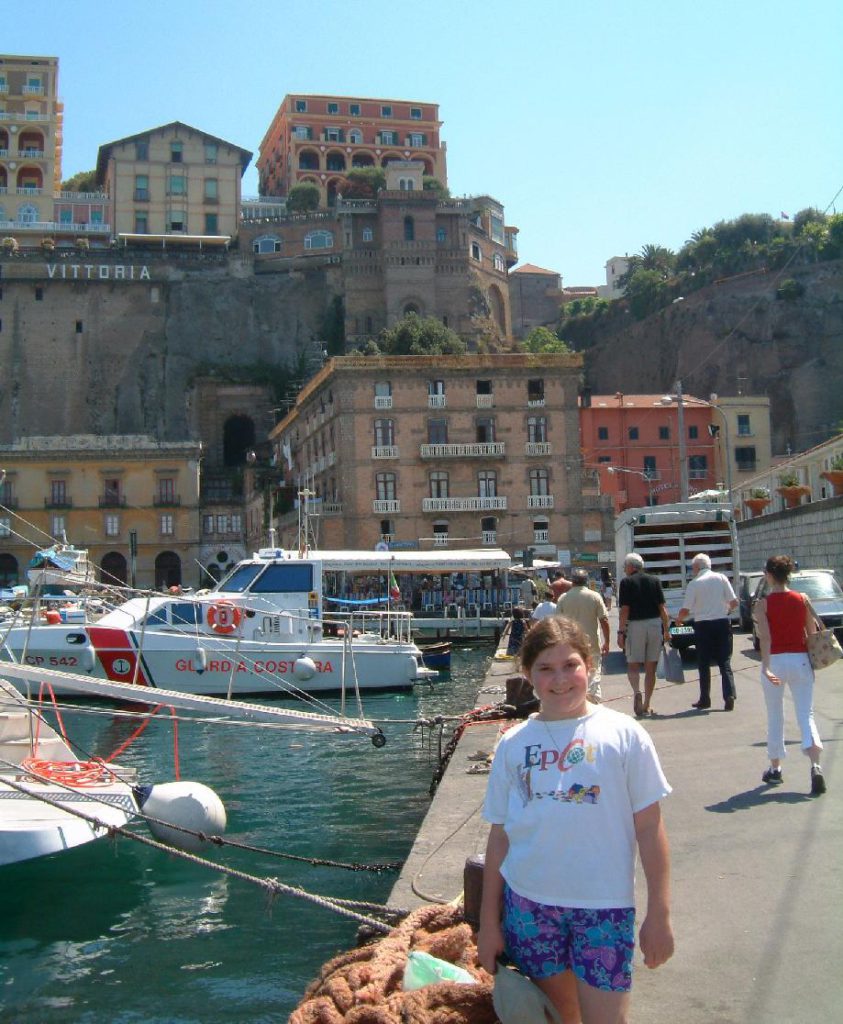
Sorrento is as charming as Naples is homely. Beautiful old buildings cling to the cliff tops, and the public squares are lined with interesting restaurants and shops. Unfortunately we were just passing through, taking a bus back to our tour bus, but this town definitely merits an extended stay.
The road from Sorrento back to Naples definitely tested the skill of Daniele (accent on the final ‘e’), our tour bus driver for the Italian portion of our trip. It clings to the rocky cliff top, skirting many volcanic beaches, and plunging through long, winding tunnels at several spots. The beaches were crowded with sunbathers and swimmers, but traffic was light.I was surprised to discover that Pompeii is surrounded by a suburb of Naples; I had imagined it in some secluded spot. But unlike the forum in Rome, which is bisected by a major highway, Pompeii is isolated by its size and the local topology, a lot of which is volcanic ash and pumice. Incidentally, Vesuvius erupts about every 50 years. The last time was in 1944. You do the math. There are 500,000 people in the immediate vicinity, and a single lane road leading in and out.
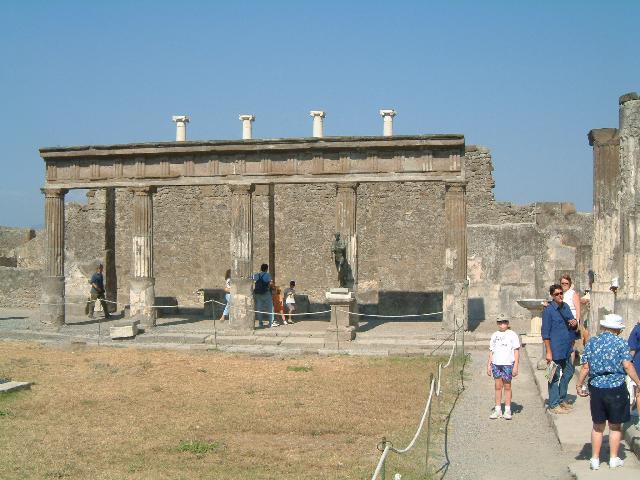
Pompeii is a city. Yes, I knew that, but somehow I was thinking four square blocks. In fact it’s huge, stretching in all directions as far as you can see. The second floors of most buildings are gone, but the first floors, including mosaics, frescoes, and even plumbing survive.

Buried by the eruption of Mount Vesuvius in A.D. 79, Pompeii was only discovered in the 19th century, and excavation still continues. Delicate objects such as amphorae and wooden things have been gathered up and placed in storage areas or museums, but most of the structures are open for you to walk through.
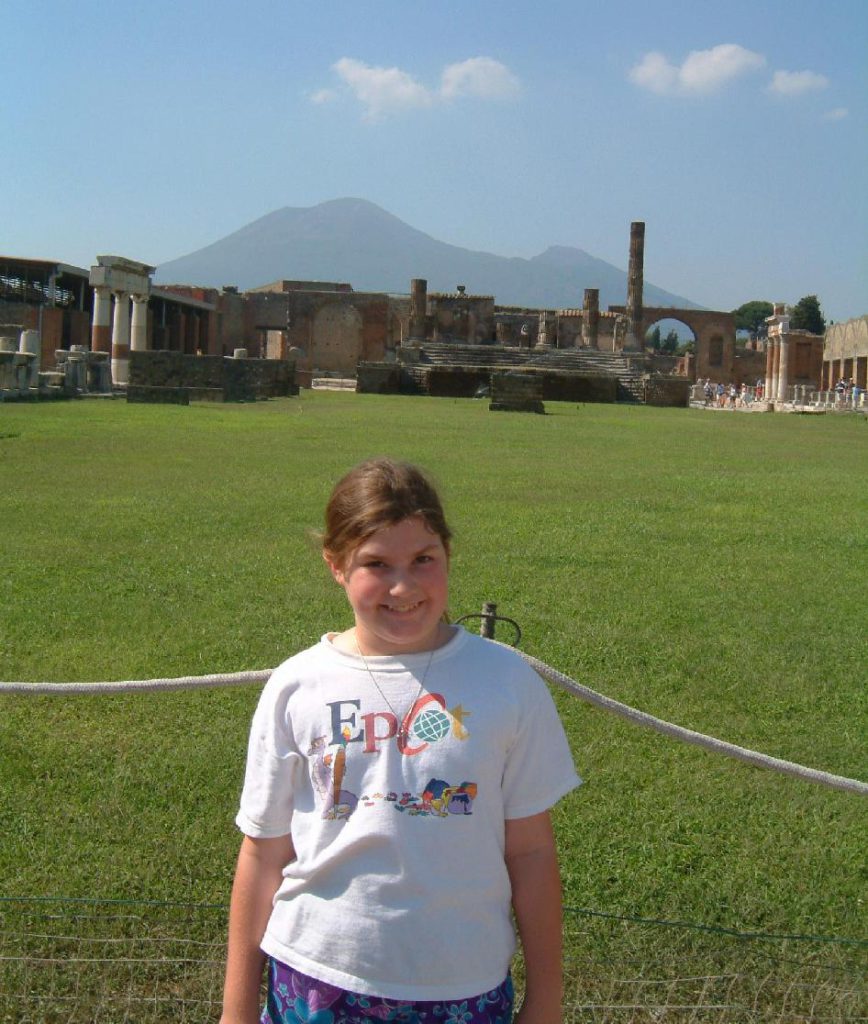
Marco seemed to be fascinated by anything that was a penis, so we got what amounted to the erotic tour of Pompeii. There were penis stools, frescoes with giant penises, penises carved into the pavement to point you to the brothels, and penises mounted above the apothecary where you got treated for the clap you caught at the brothel. Inside the brothel were detailed paintings of the “menu”. I guess Danielle won’t be needing any sex ed classes.

We also toured some of the baths (which were much more interesting than the complex in Bath), an ornate private home, a bar and casino, and the public square. The level of detail in Pompeii is amazing, and we left with many unanswered questions about mysterious objects that we passed on the way through. Two hours is not enough. I’m not sure two days would have been. We will definitely want to return.
It was another three hours on the bus back to Rome, but the time went quickly, as Gloria told us stories on the way, including the history of the Hapsburgs, the gossip on the British royal family, and a hilarious tale about her vacation in a “camping machine”.We arrived at the hotel about 9:00pm and received sad news. Danielle’s Grandpa Dean passed away today. He was the kindest man I’ve ever known, and we’ll miss him very much. We’ll fly to Los Angeles on Saturday to join Linda at her mother’s.
Thursday, August 9, 2001
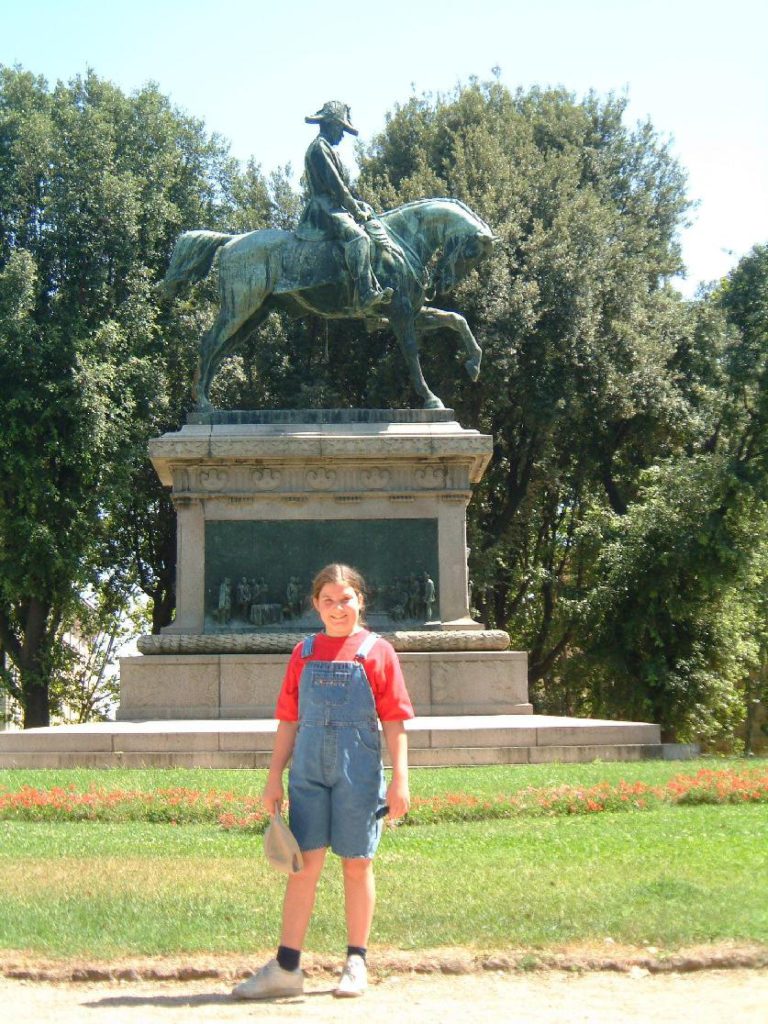
A late morning. While much of the rest of the group headed out at 6:00 am for the optional Florence tour, we hedonistically spent the morning in bed. We didn’t actually make it out of the room until after 1:00, but we had an energetic afternoon, walking halfway across the old city, through the Quirinal district, one of the original seven hills of Rome.

We lunched at a charming trattoria in a narrow alleyway, then spent the better part of an hour wandering around looking for the Trevi fountain. In retrospect, I think we missed it by one block three times, but the sightseeing was interesting; in the maze of twisty little streets there were many upscale shops and restaurants. We passed a bronze guy on a horse, a very ornately carved column, and a brand new water fountain built in 1957 where Danielle discovered that by covering the spigot it would water the top of your head (it was hot). Our map wasn’t good enough to identify any of these.
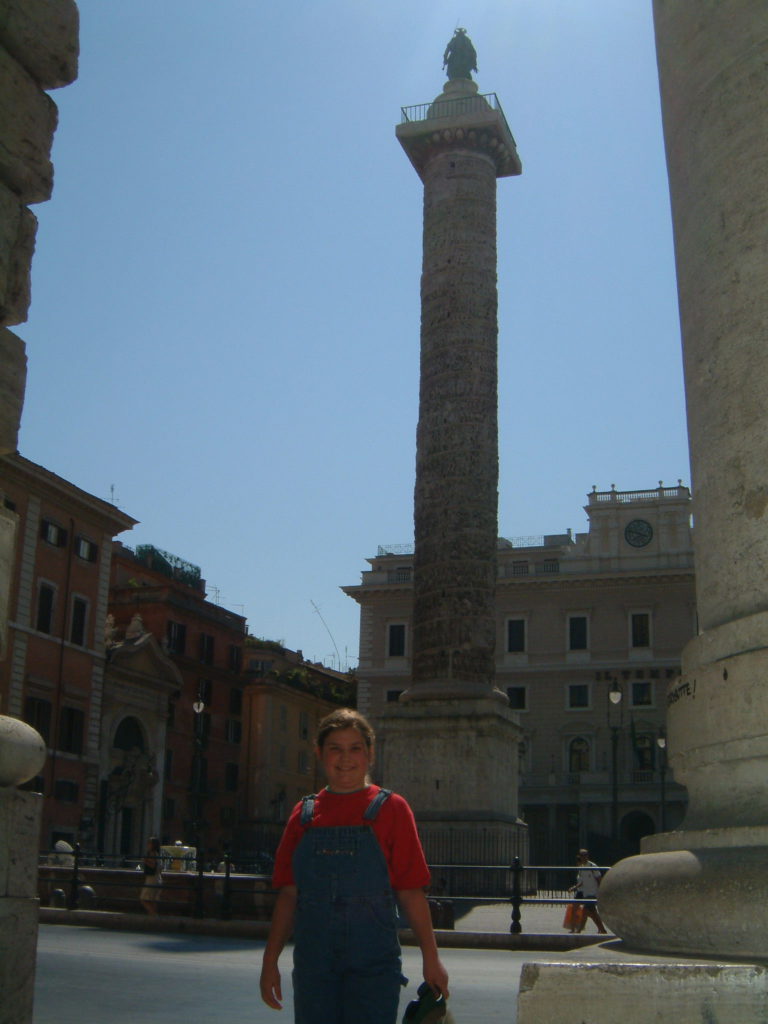

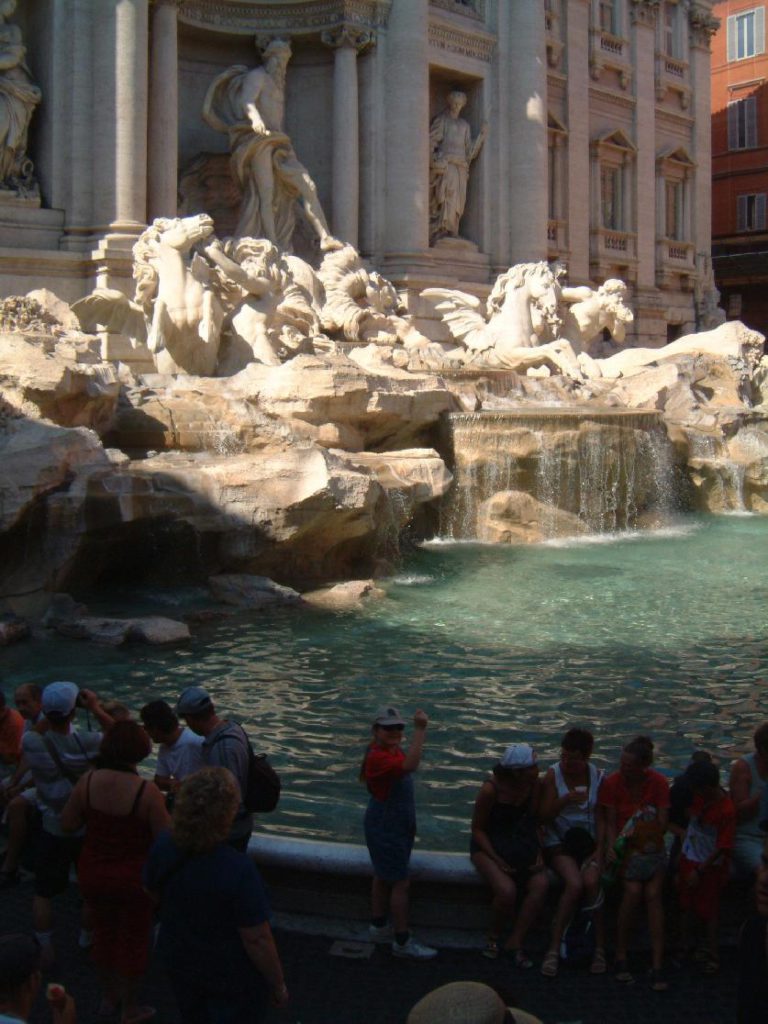
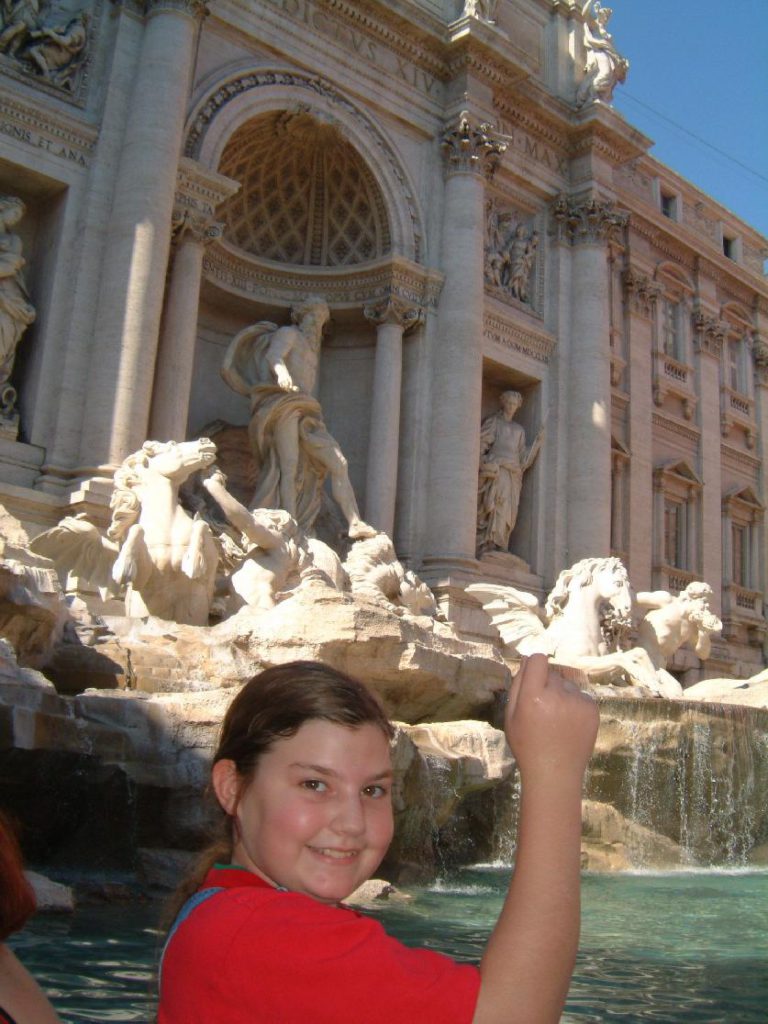
At the Trevi Fountain we threw in three coins: one from England, one from France, and one from Italy. Legend says that if you toss a coin in the fountain you will return to Rome. We’re hoping surrogate tossing works, because our third coin was for Linda.
On the way back, along the Via Nazionale I bought Danielle a gold heart pendant as a remembrance of our trip together.
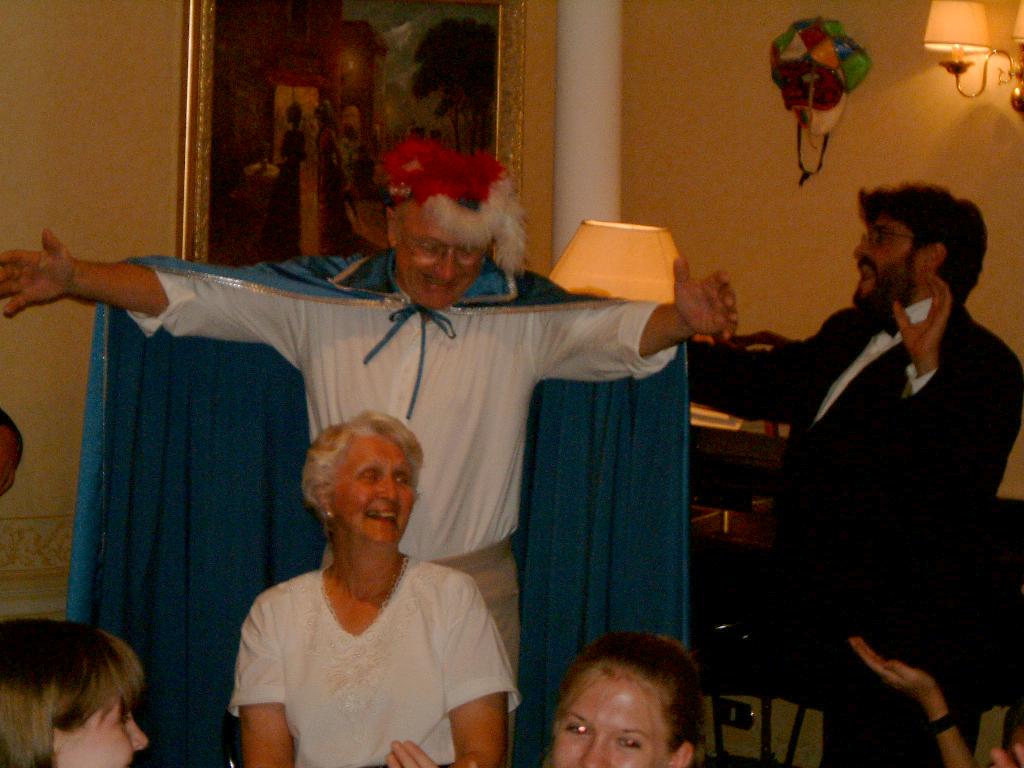
In the evening the entire group went out to an Italian restaurant for our “last supper”. There were opera singers, and they had our frequent dining companions, the Drumms, play Romeo and Juliet in honor of their fiftieth wedding anniversary.
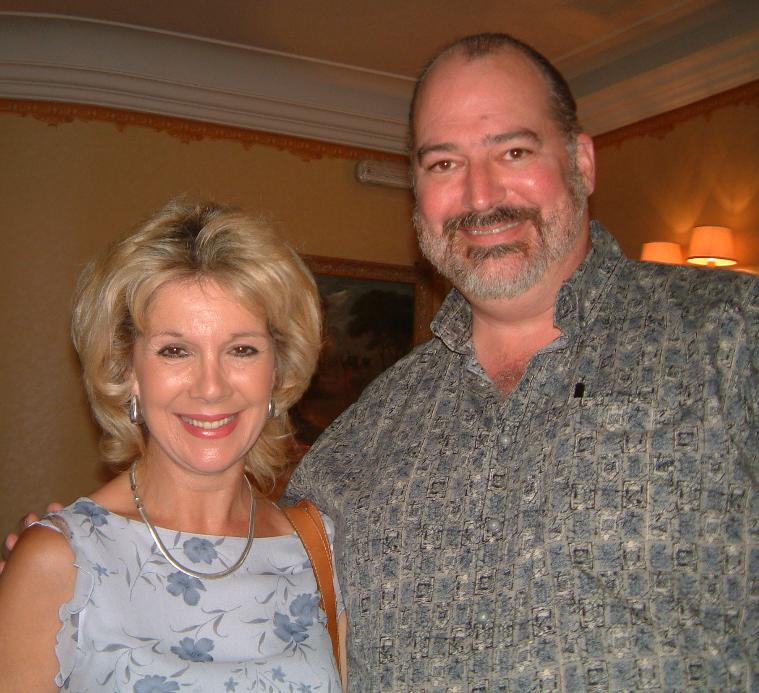
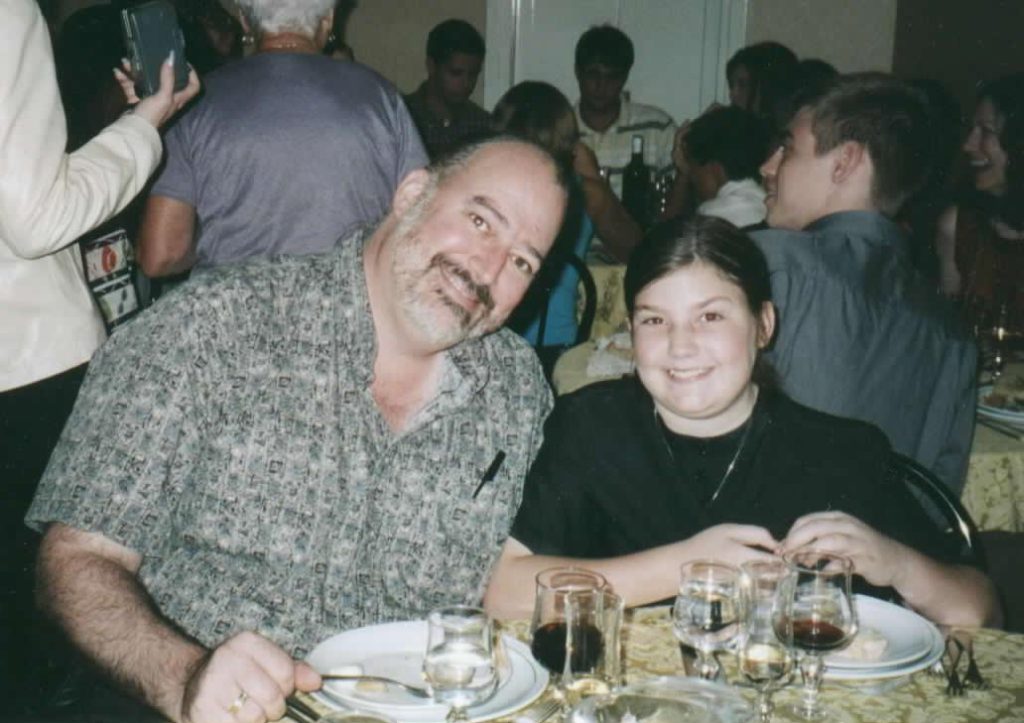
Friday, August 10, 2001
What an expedition we had getting home! It was supposed to be a nine-hour flight from Rome, but we hit a holding pattern over Boston and then had to stop in Baltimore to refuel. Then we spent an hour waiting for clearance to Philly, and an hour sitting on the runway in Philly waiting for a gate. Finally, after 13 hours in the plane, we got off to face an hour line in immigration. After clearing customs there was a three-hour line to rebook, since all the flights had been missed or cancelled. In fact, the soonest flight we could get was 24 hours later.
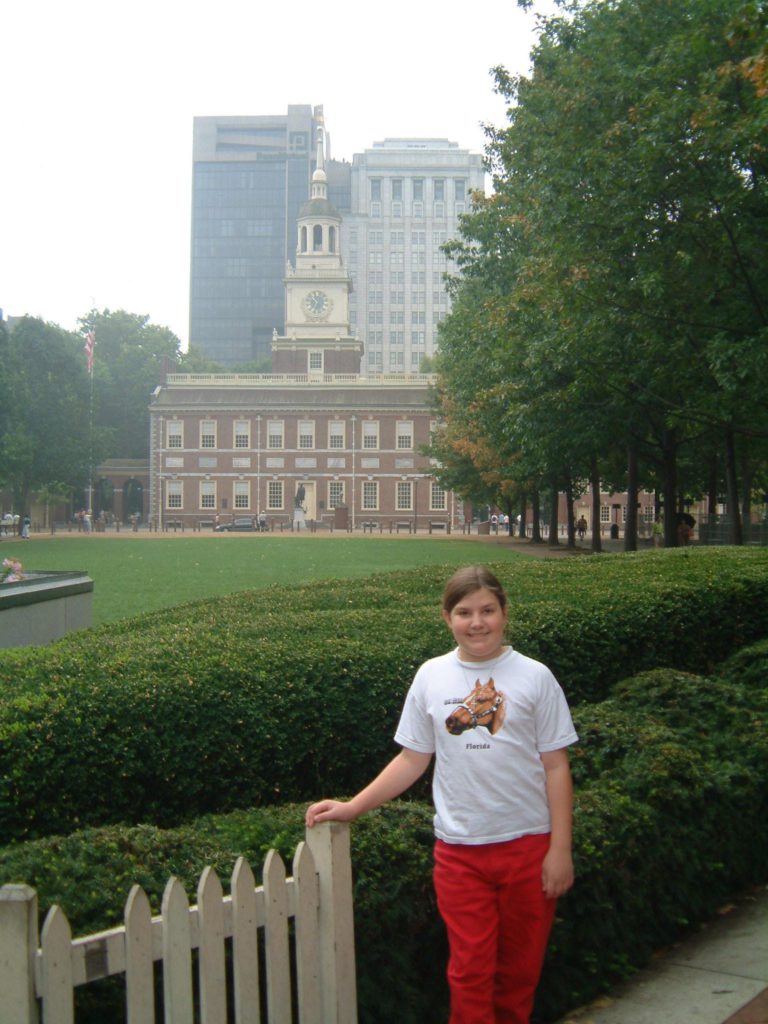
Anyway, we spent the night in Philly, and are rerouting ourselves directly to L.A. on Delta, where we expect to be for the next week.
And so we say “Arrivaderci Roma”, and bid a fond farewell to all of Europe. Thanks to Gloria and all the nice people who traveled with us for making it such a special trip.
